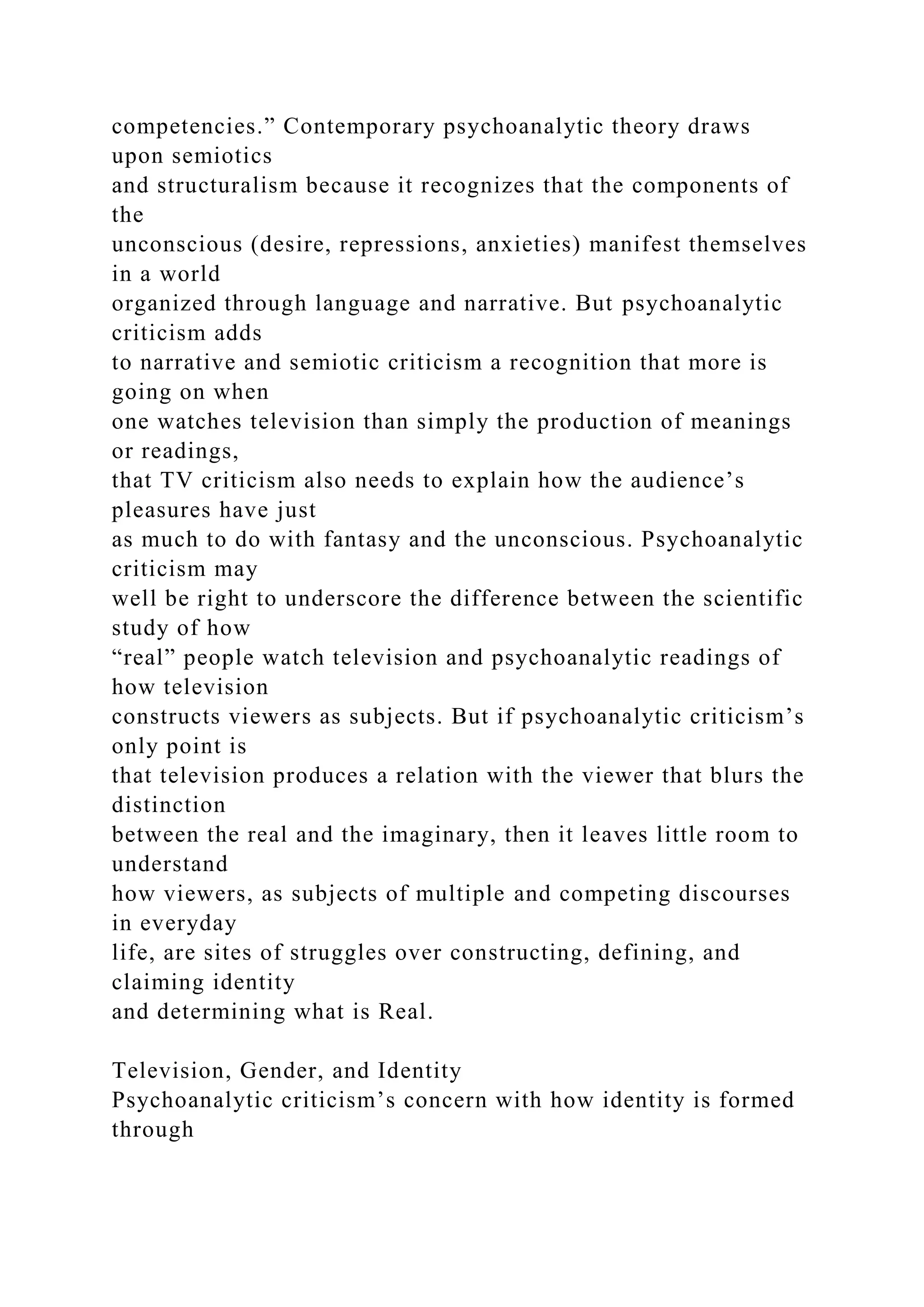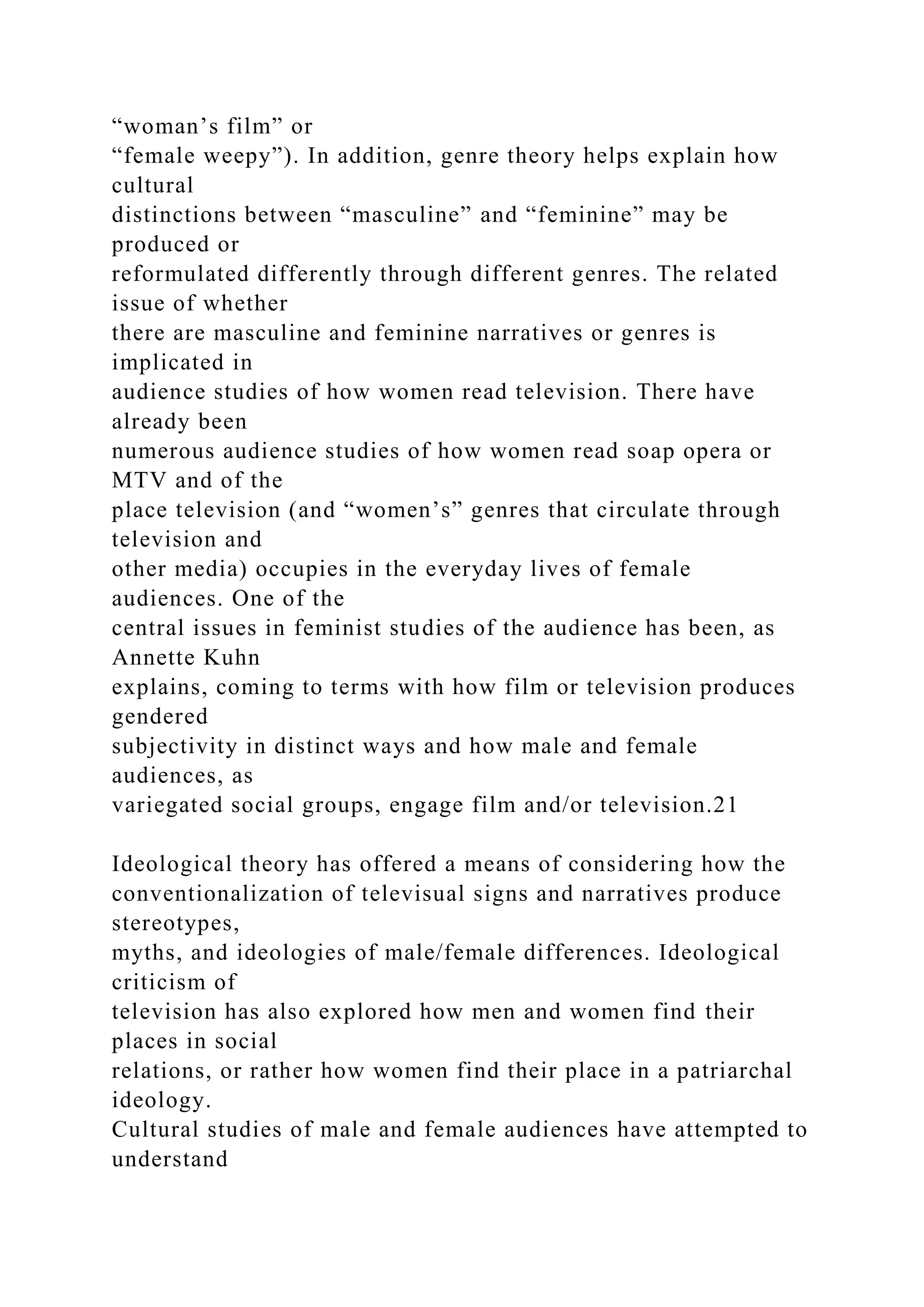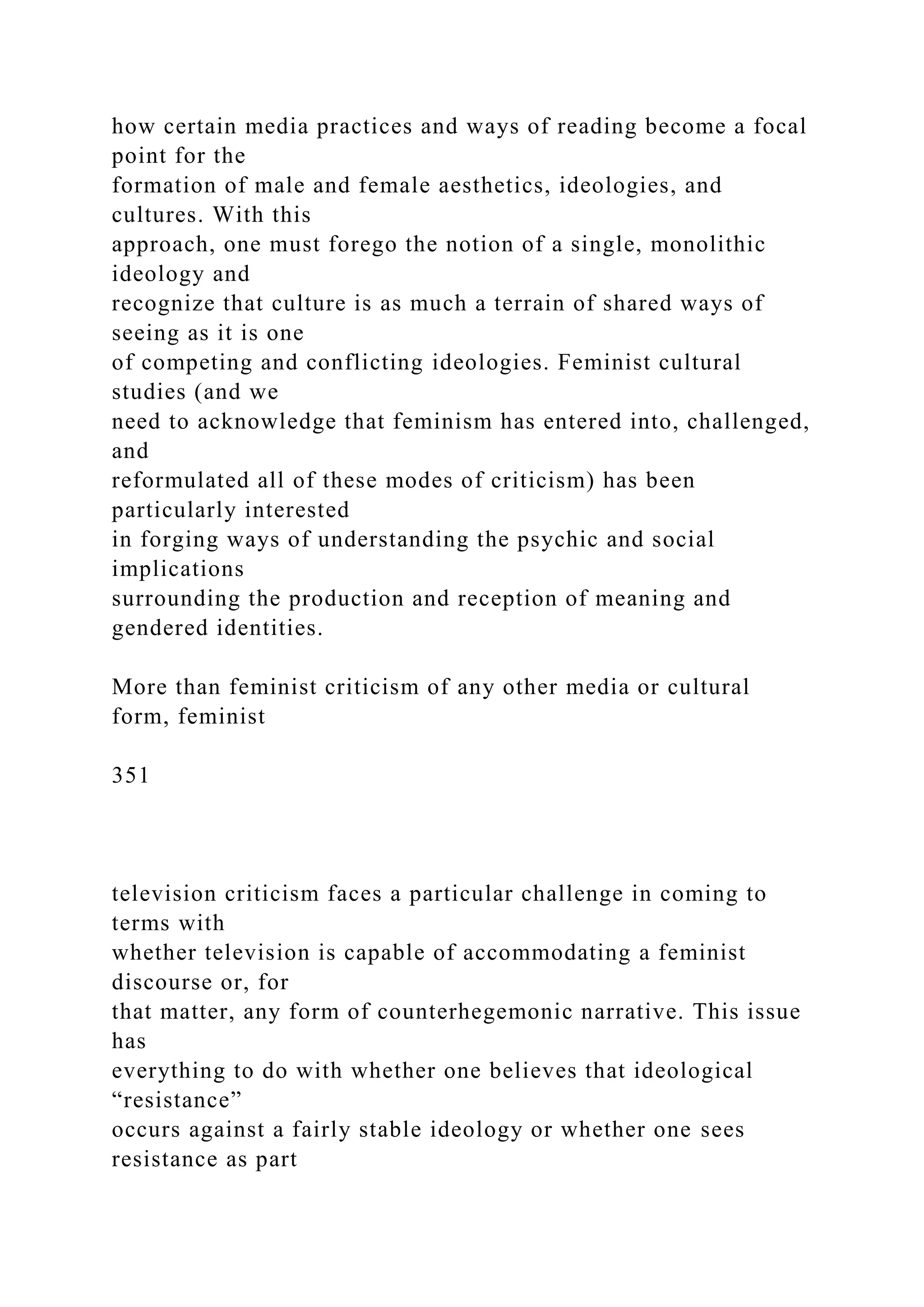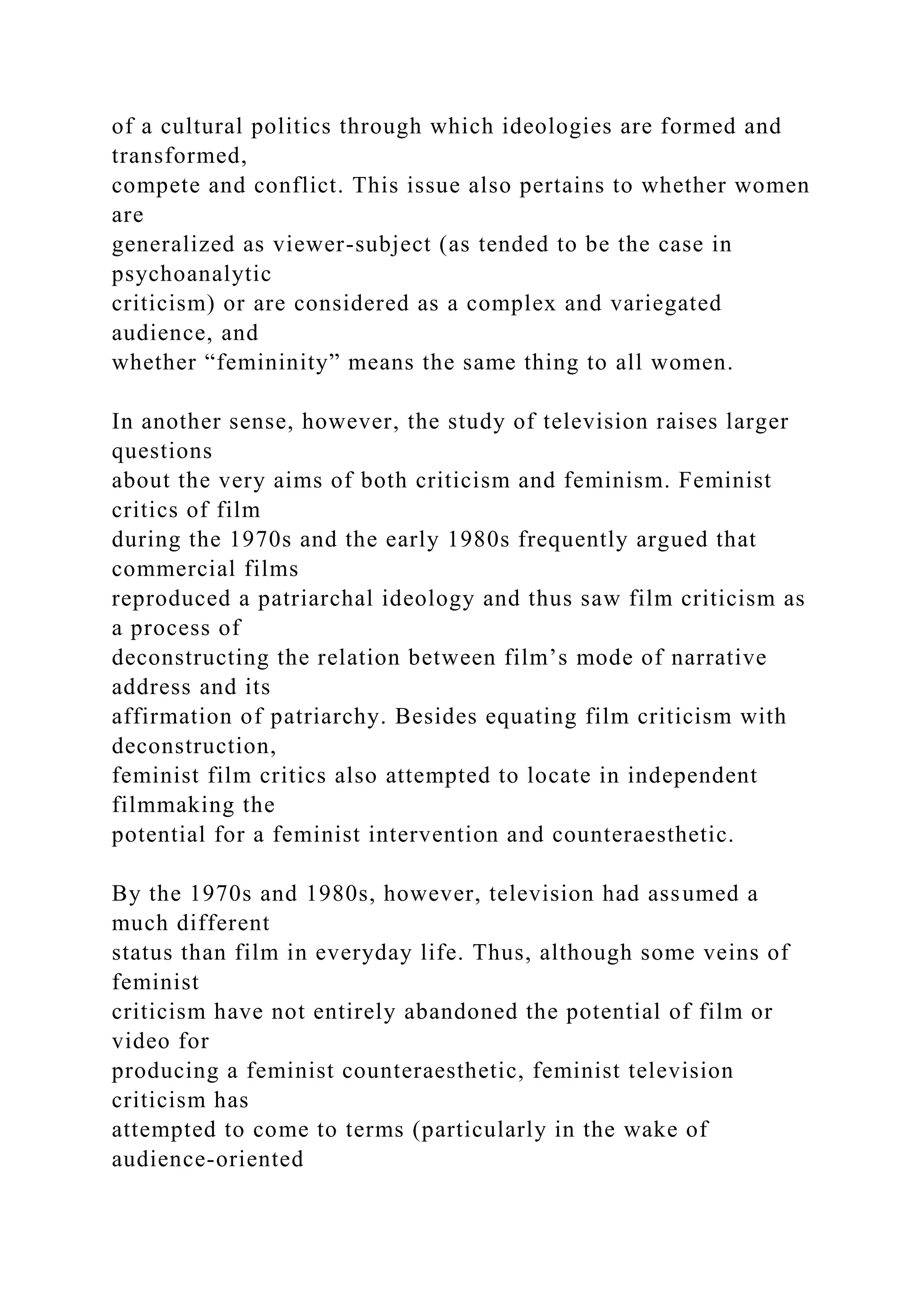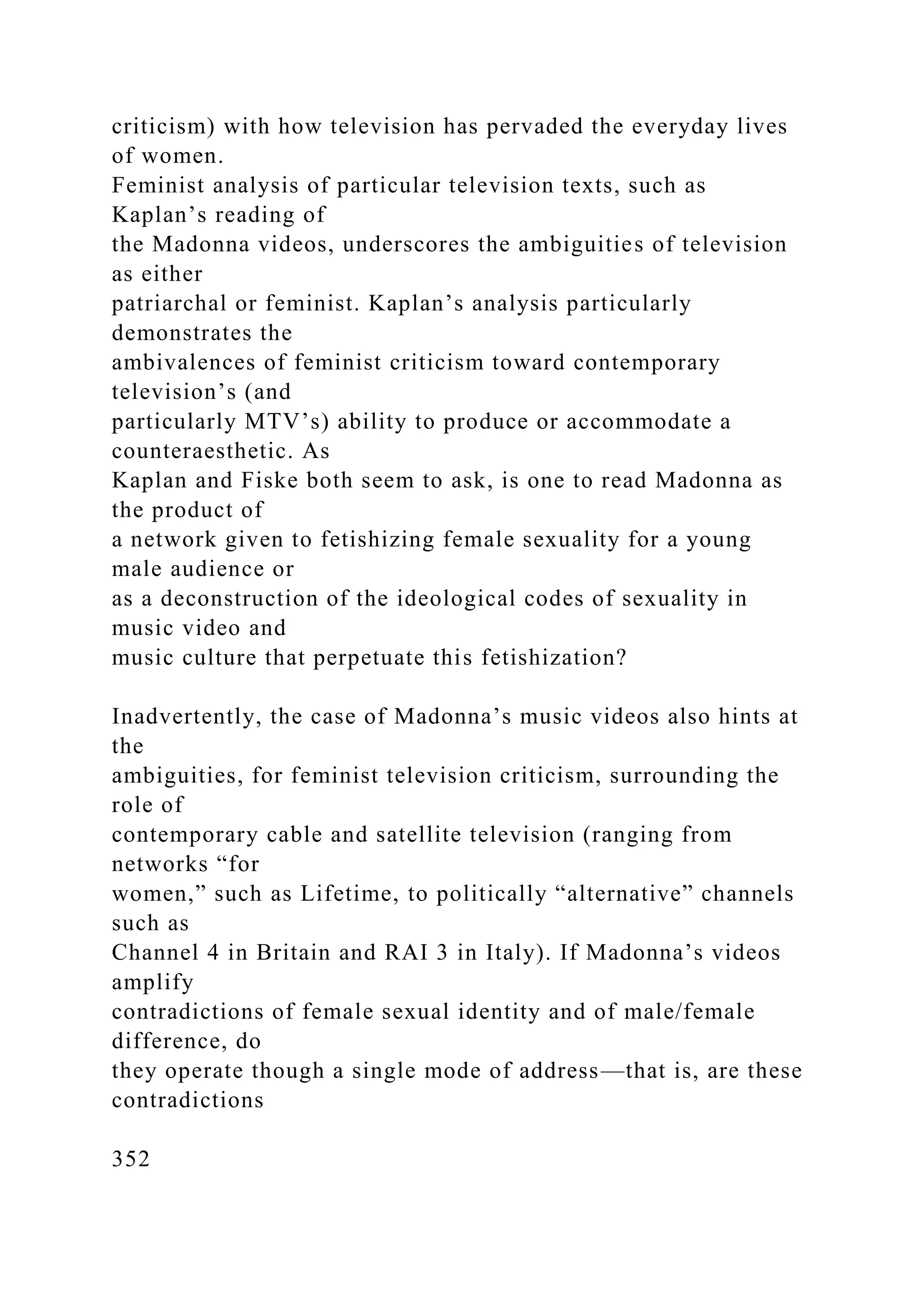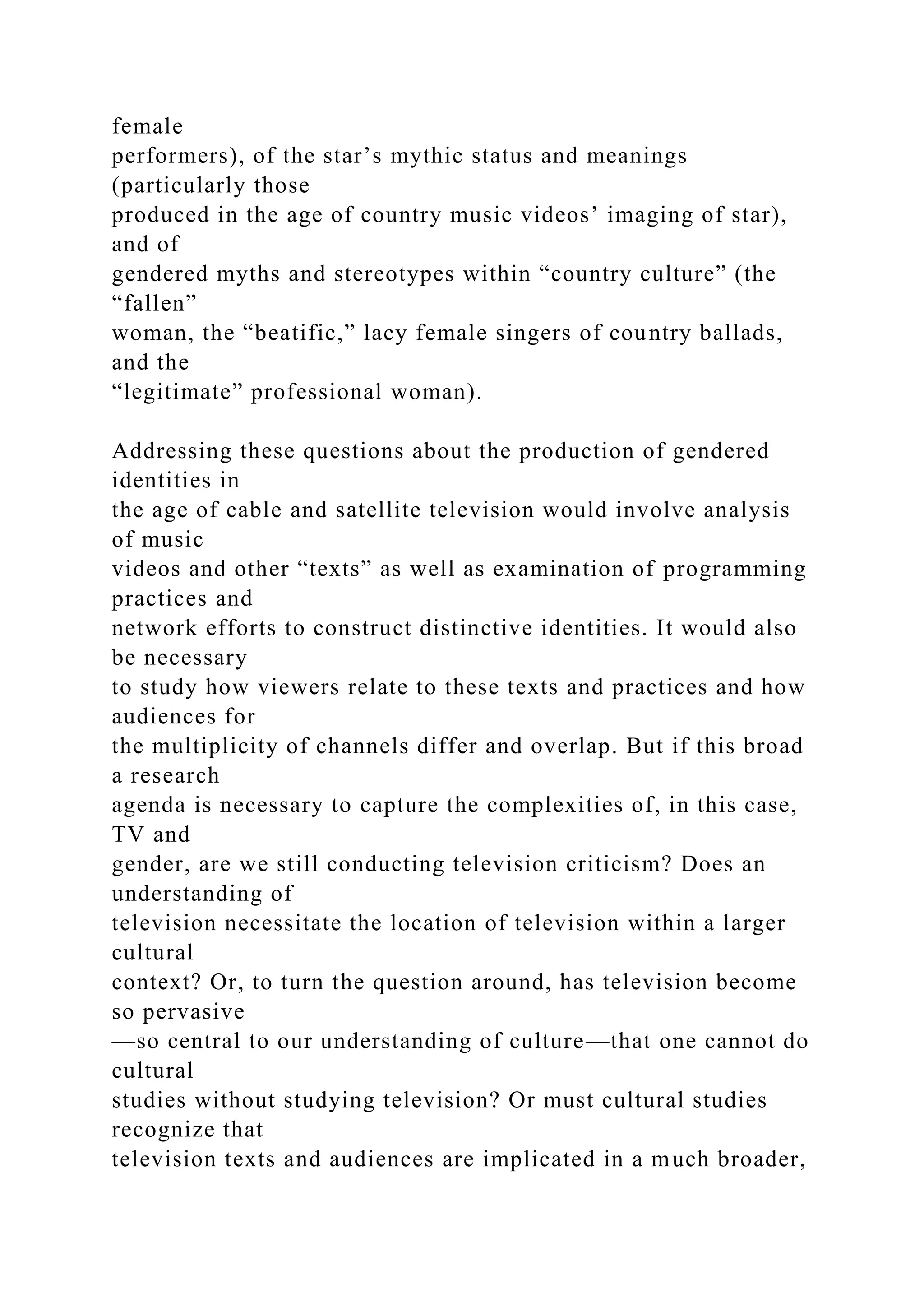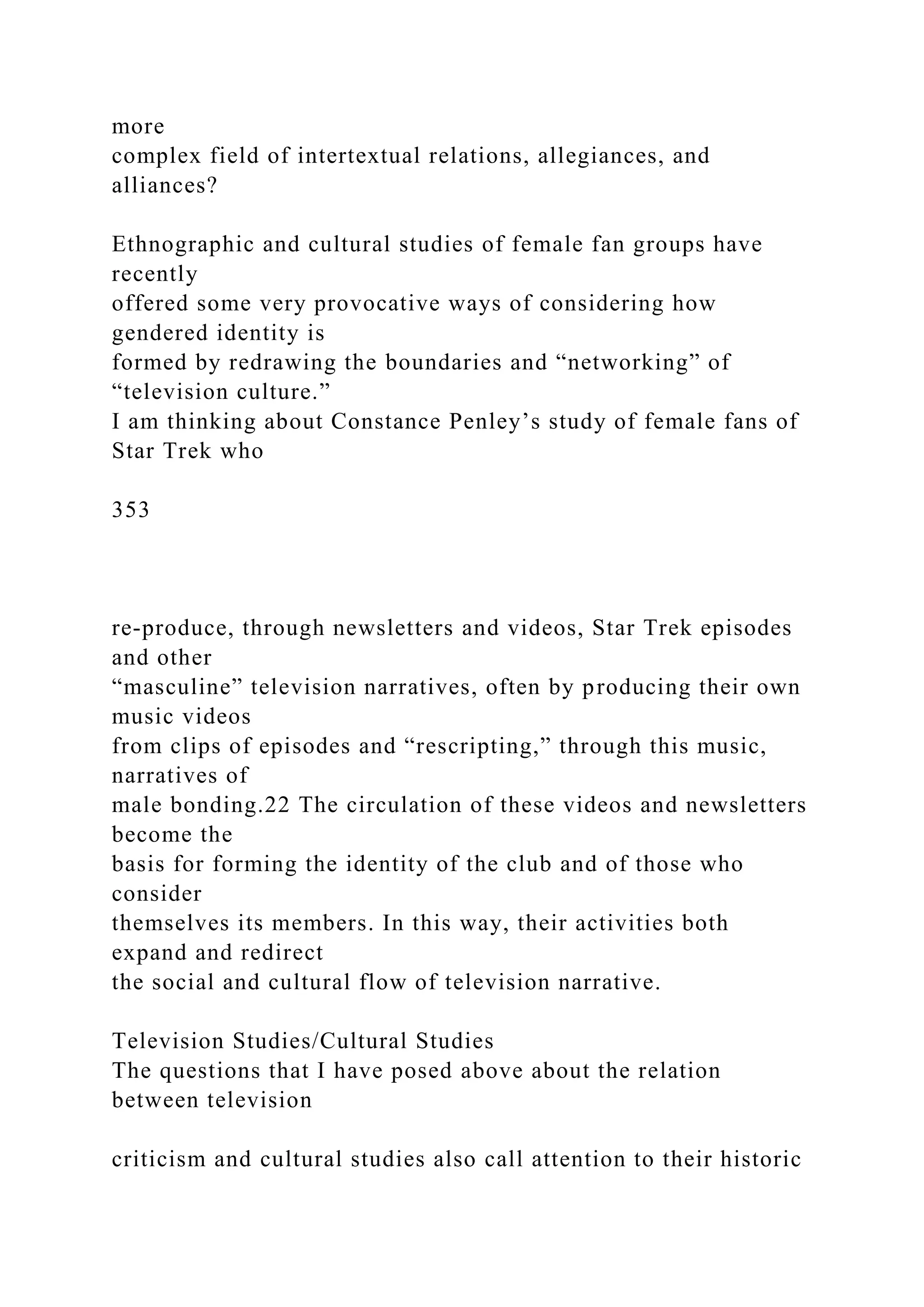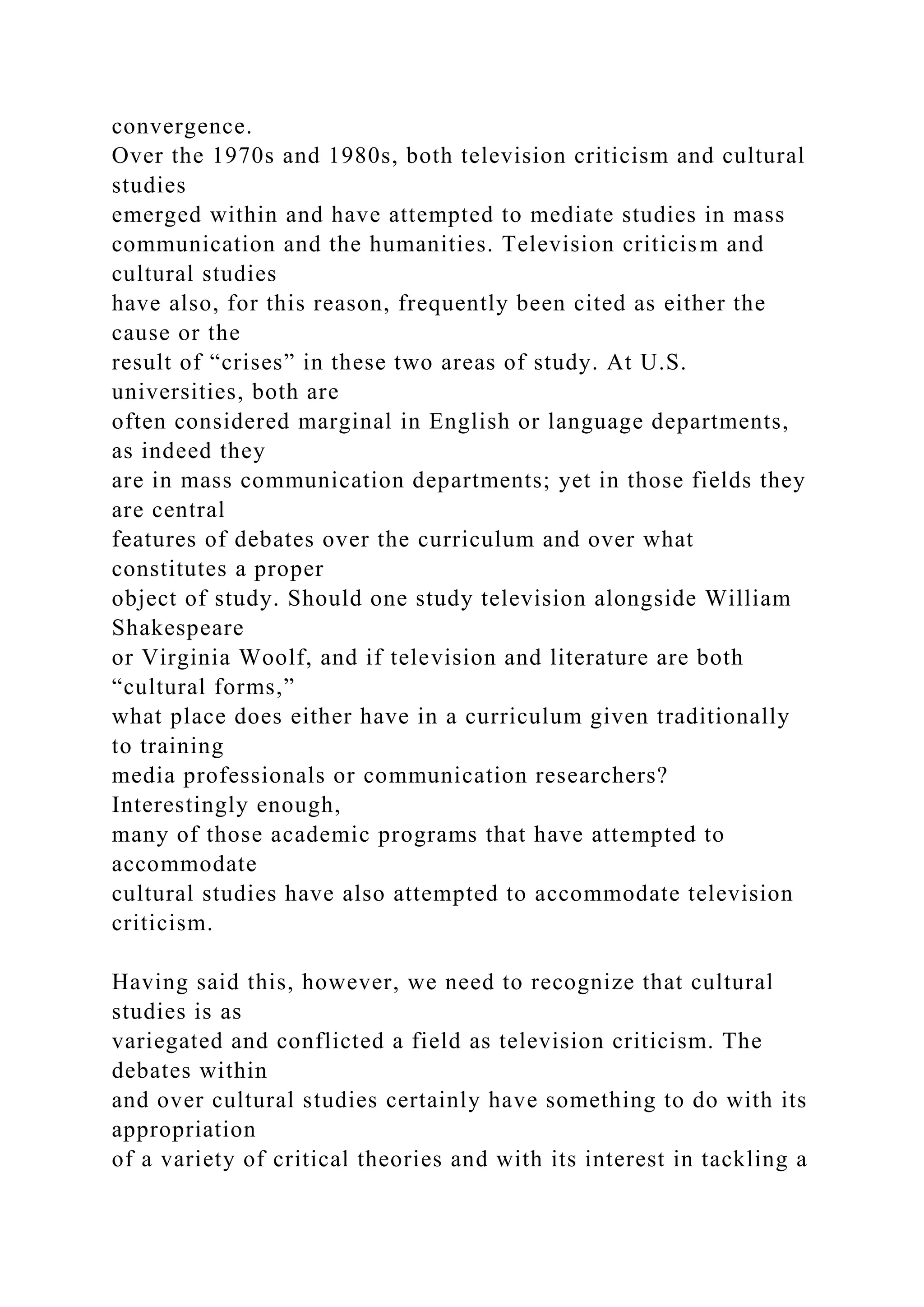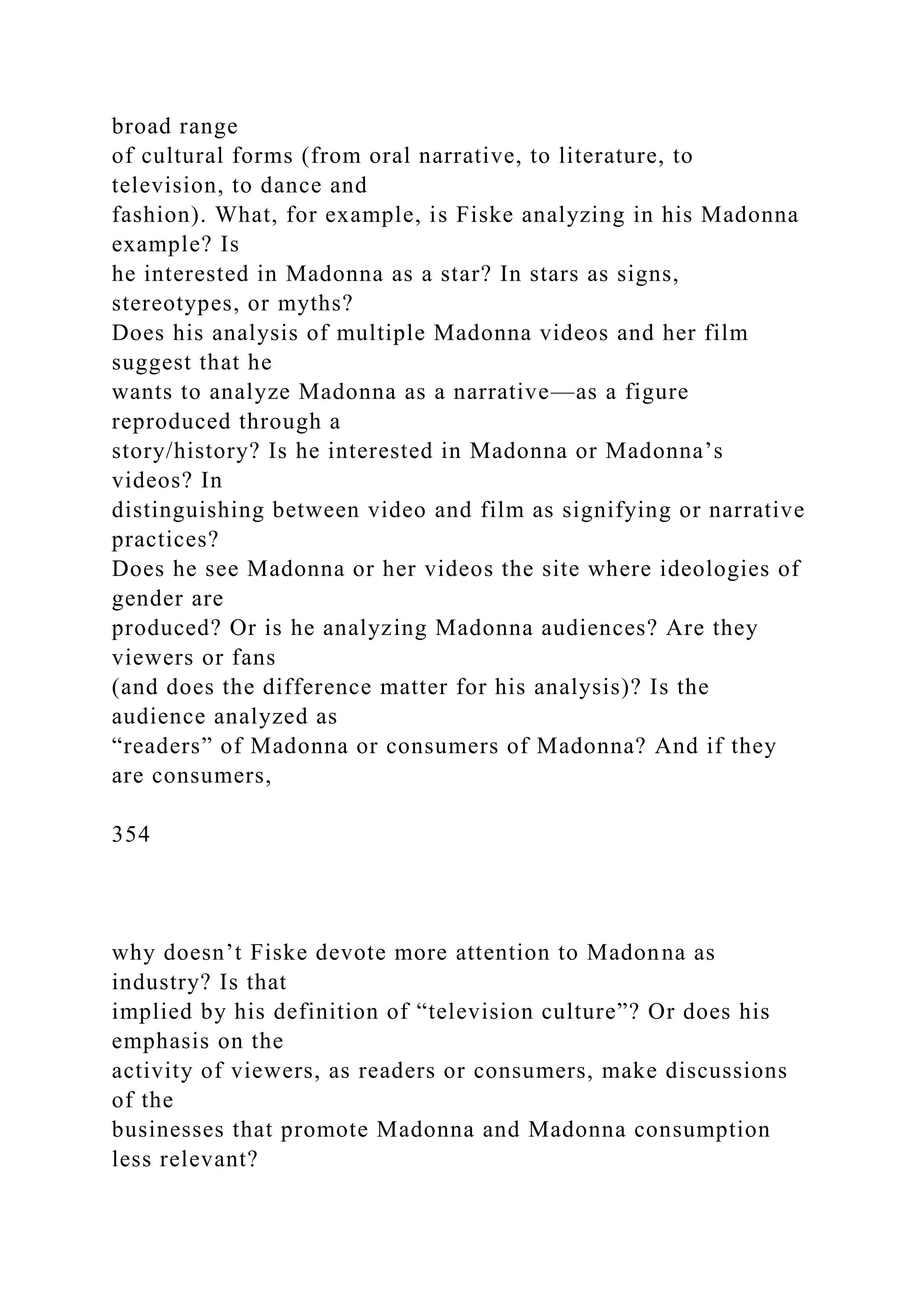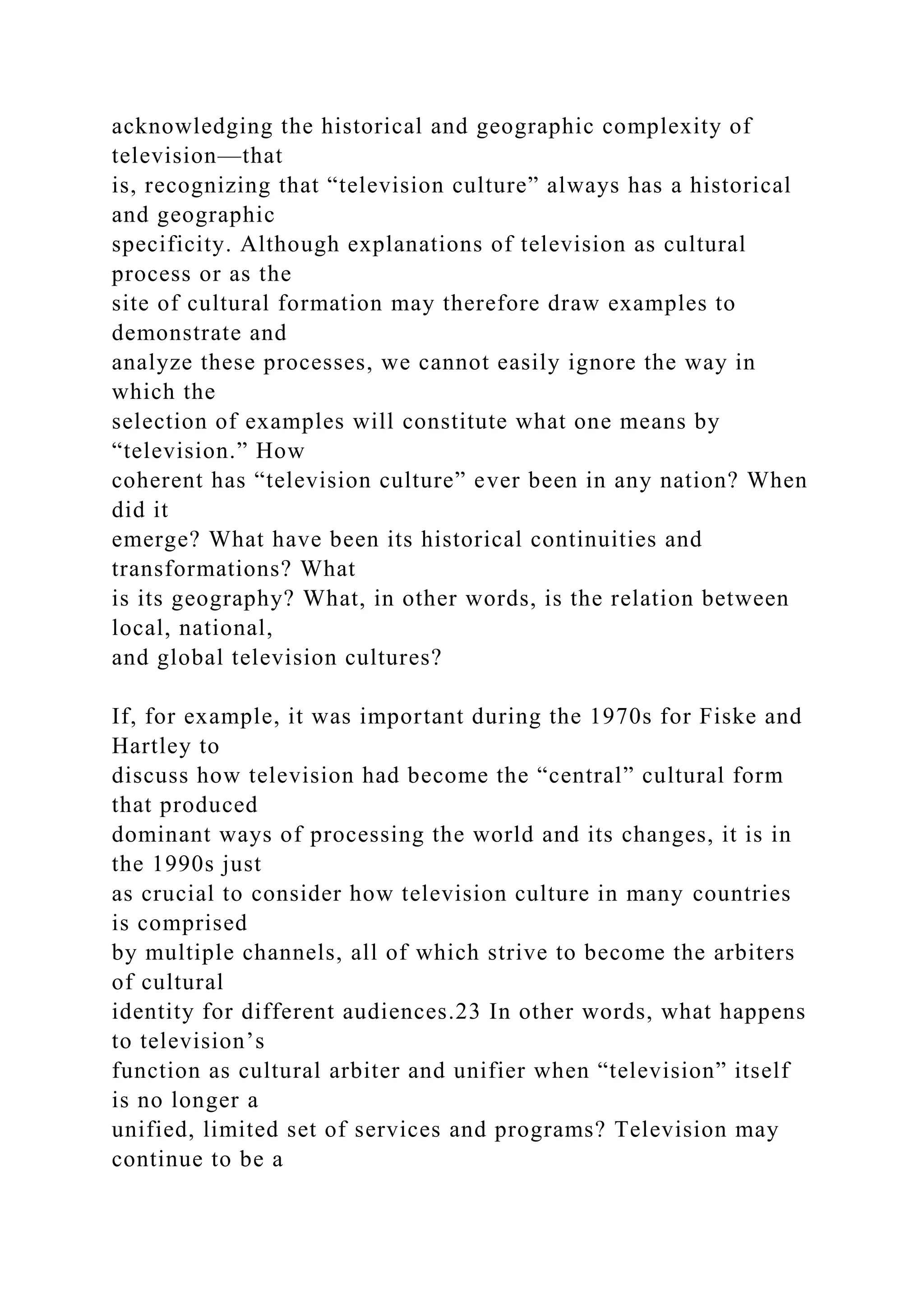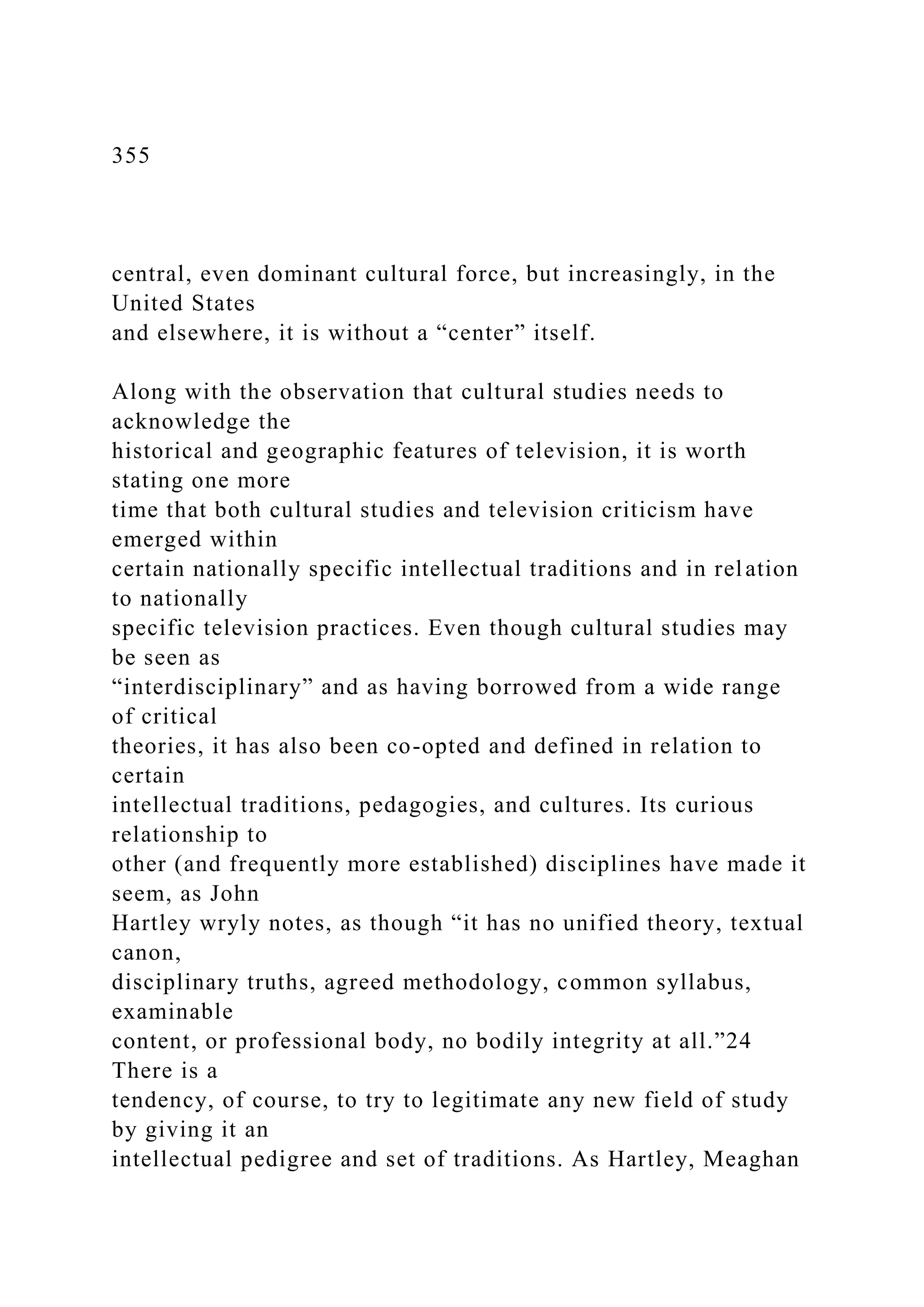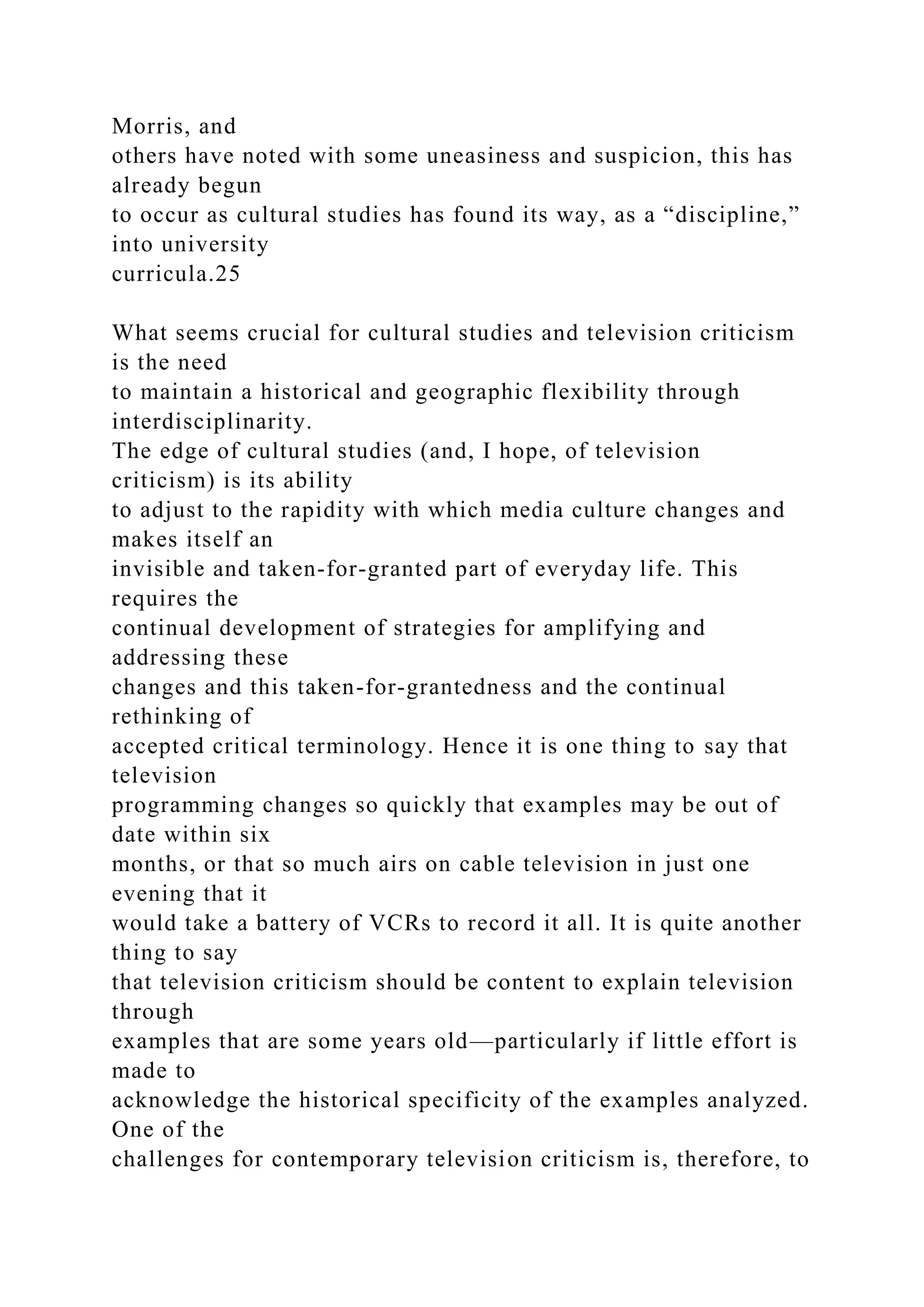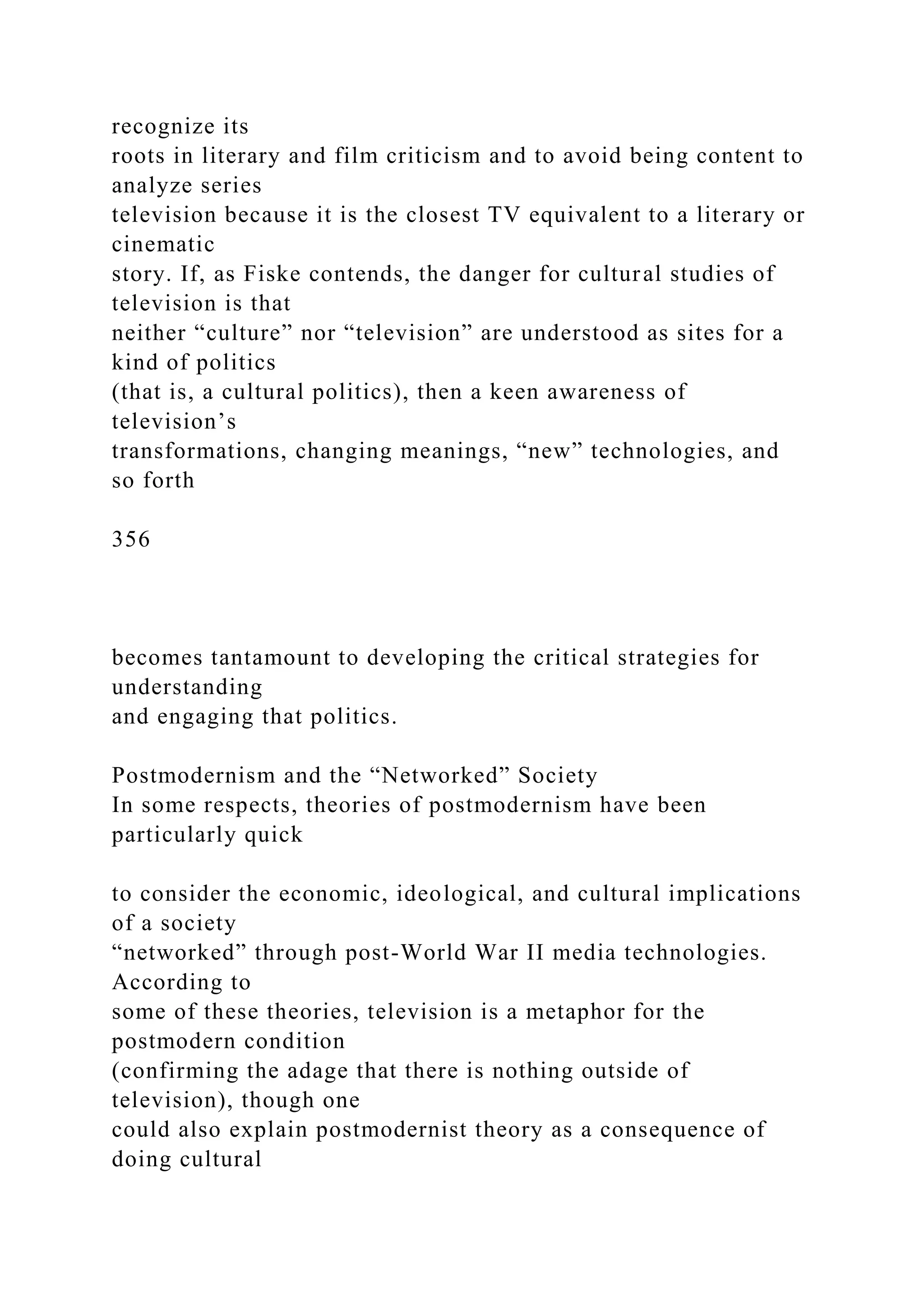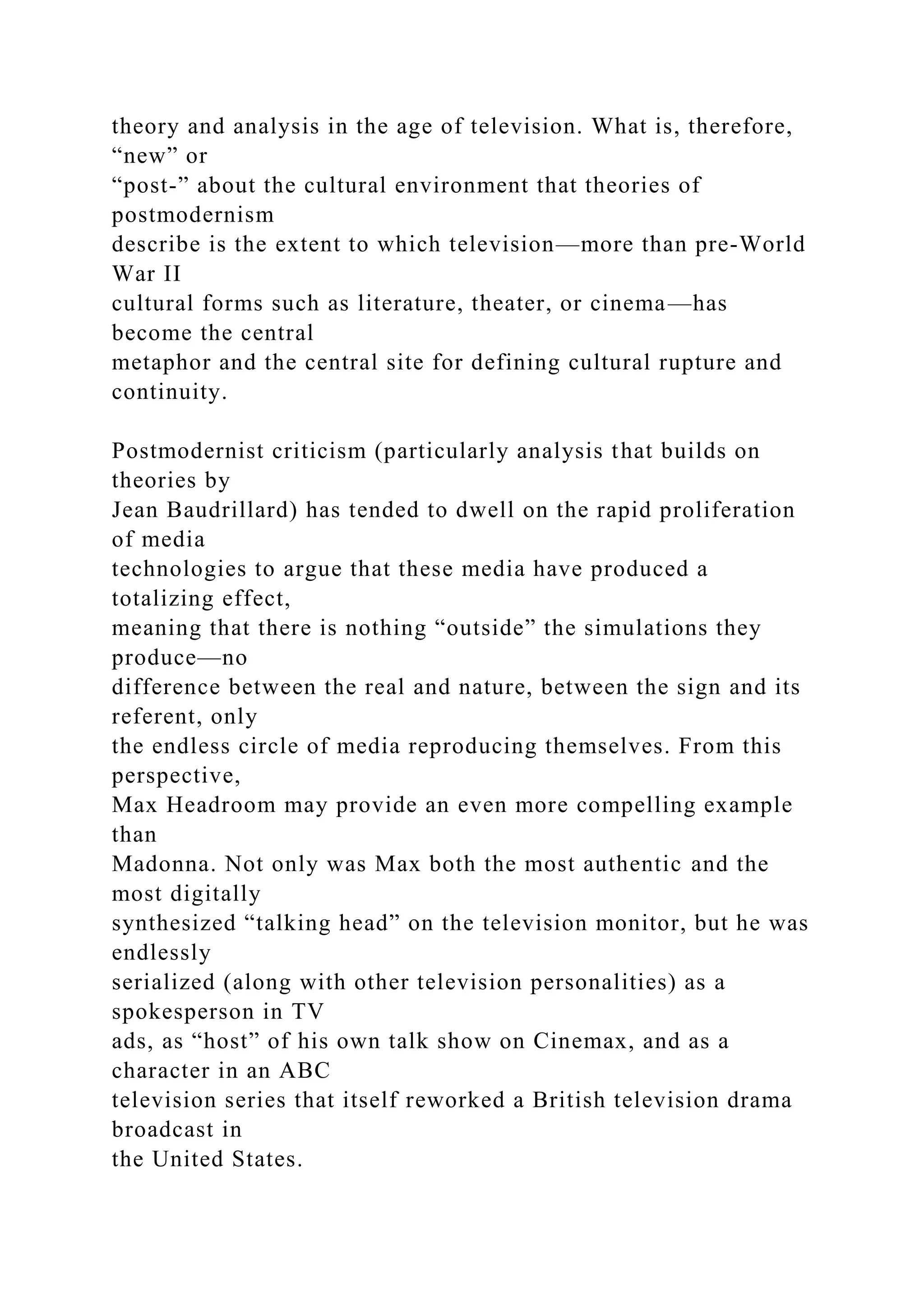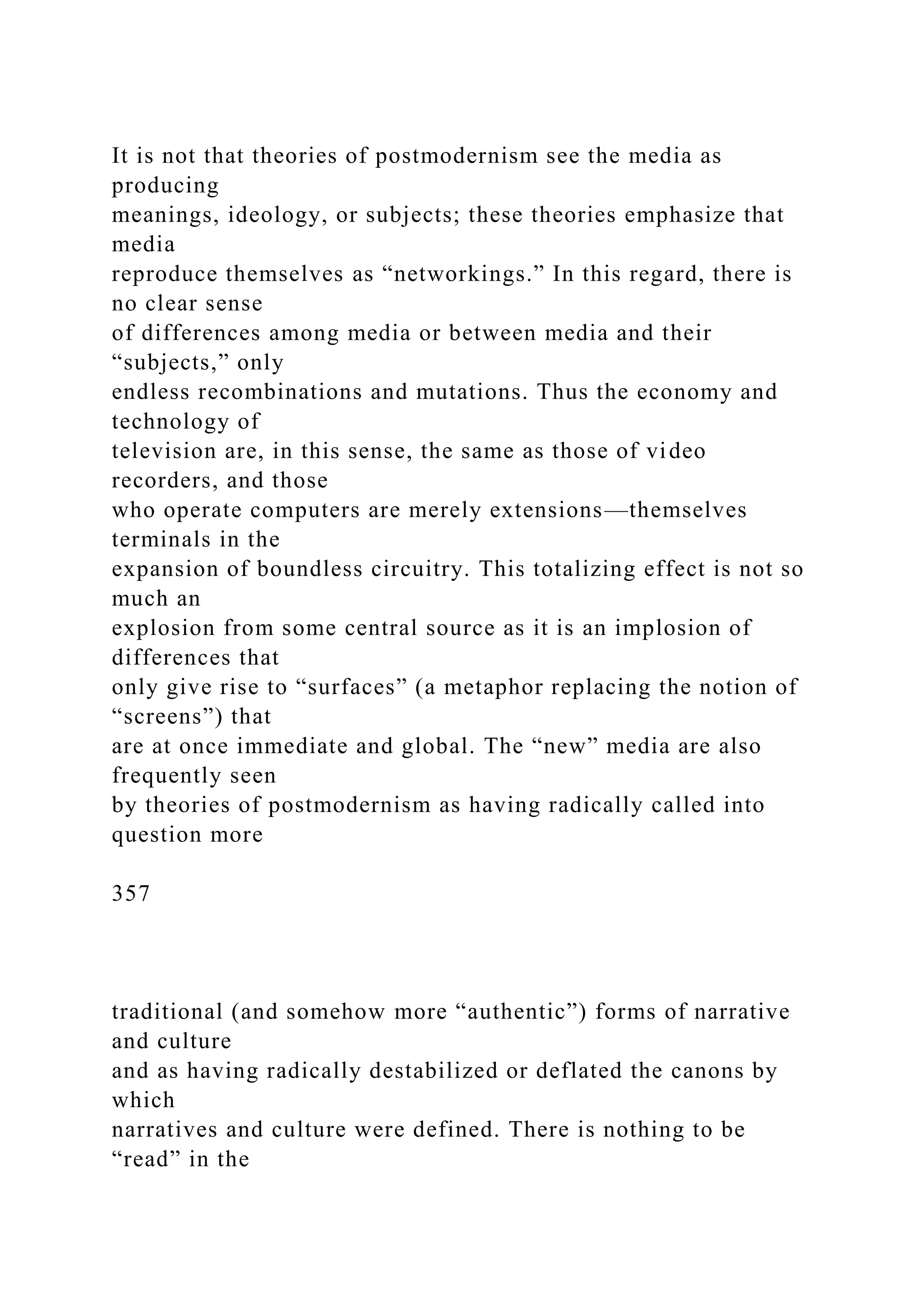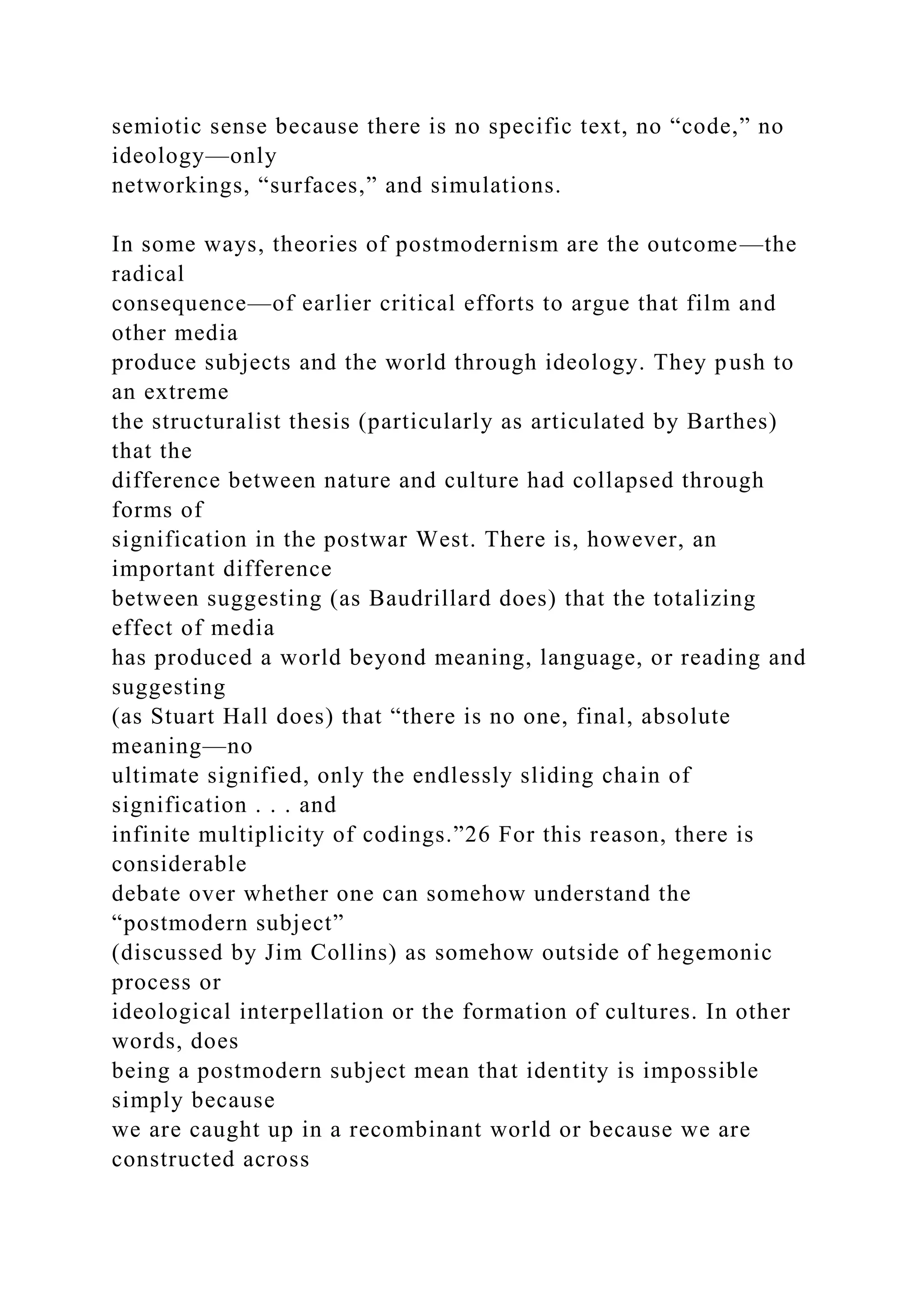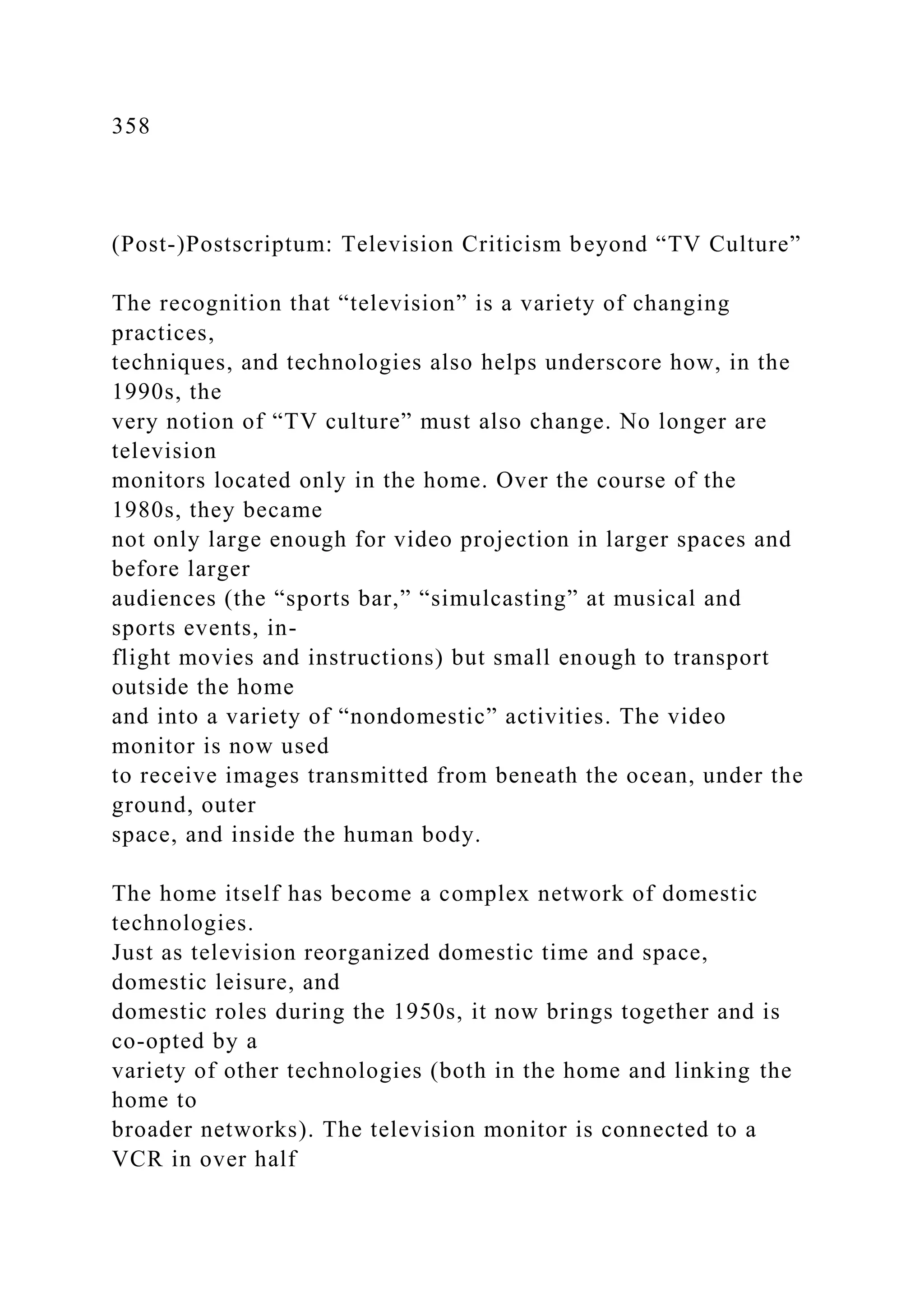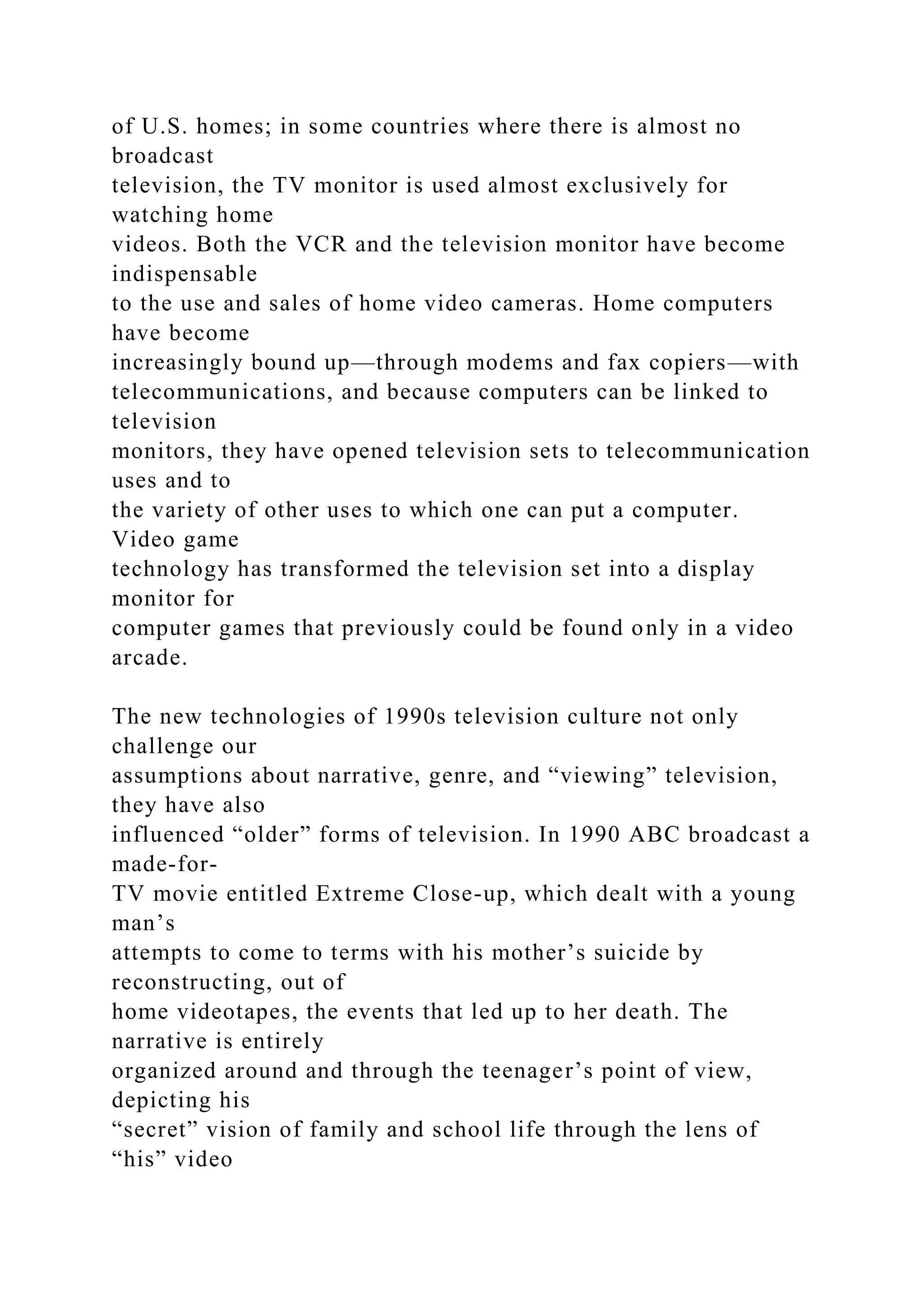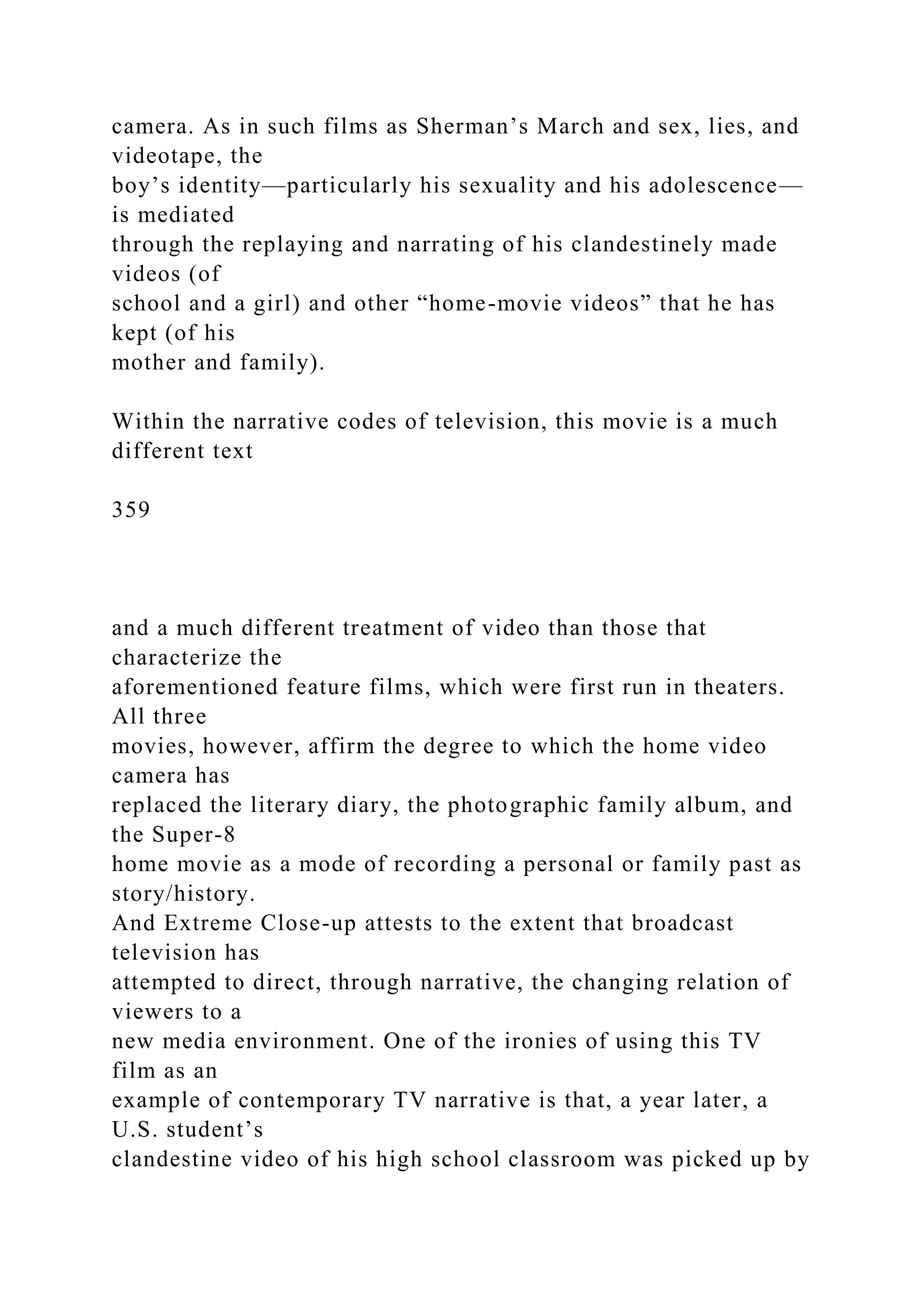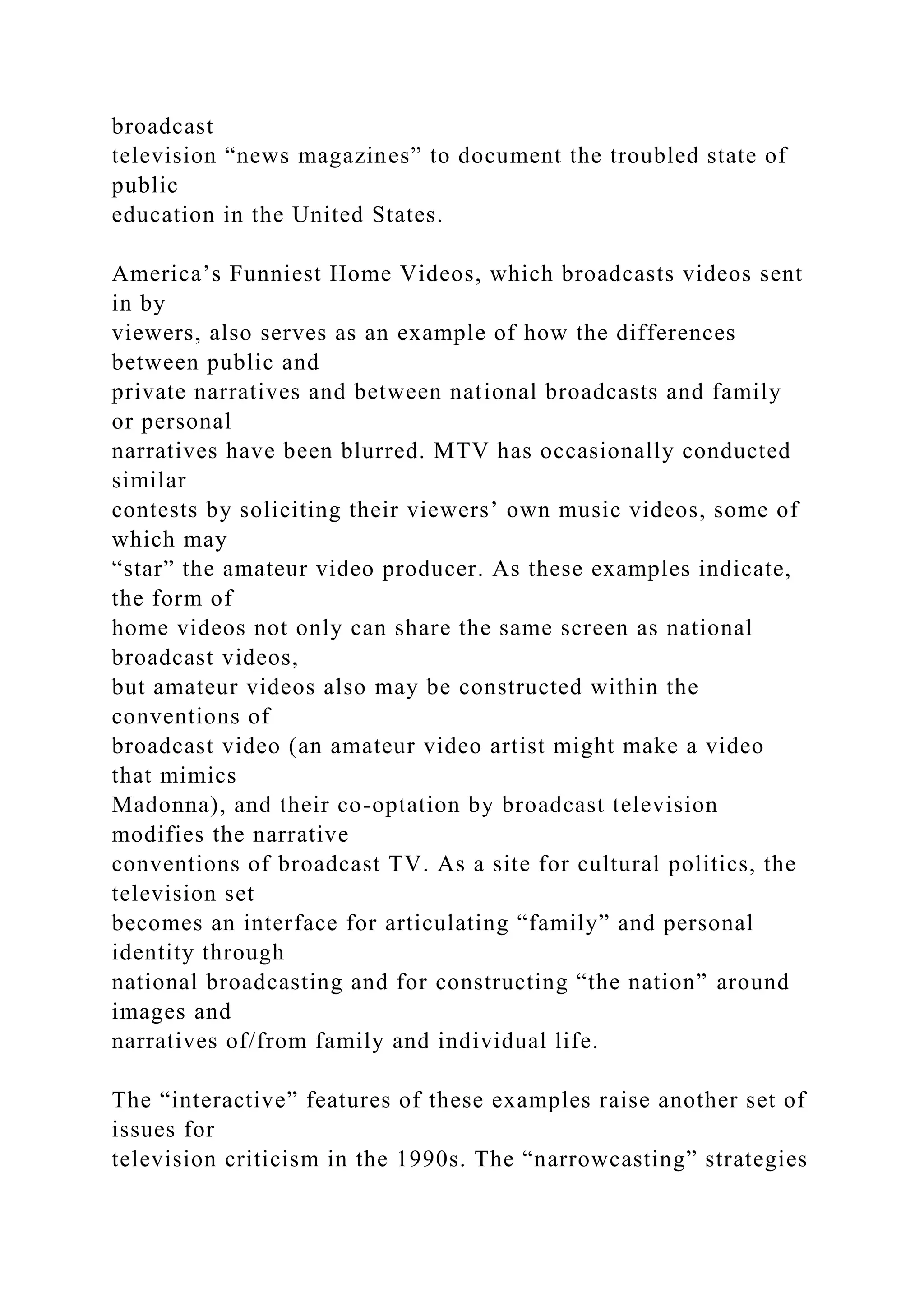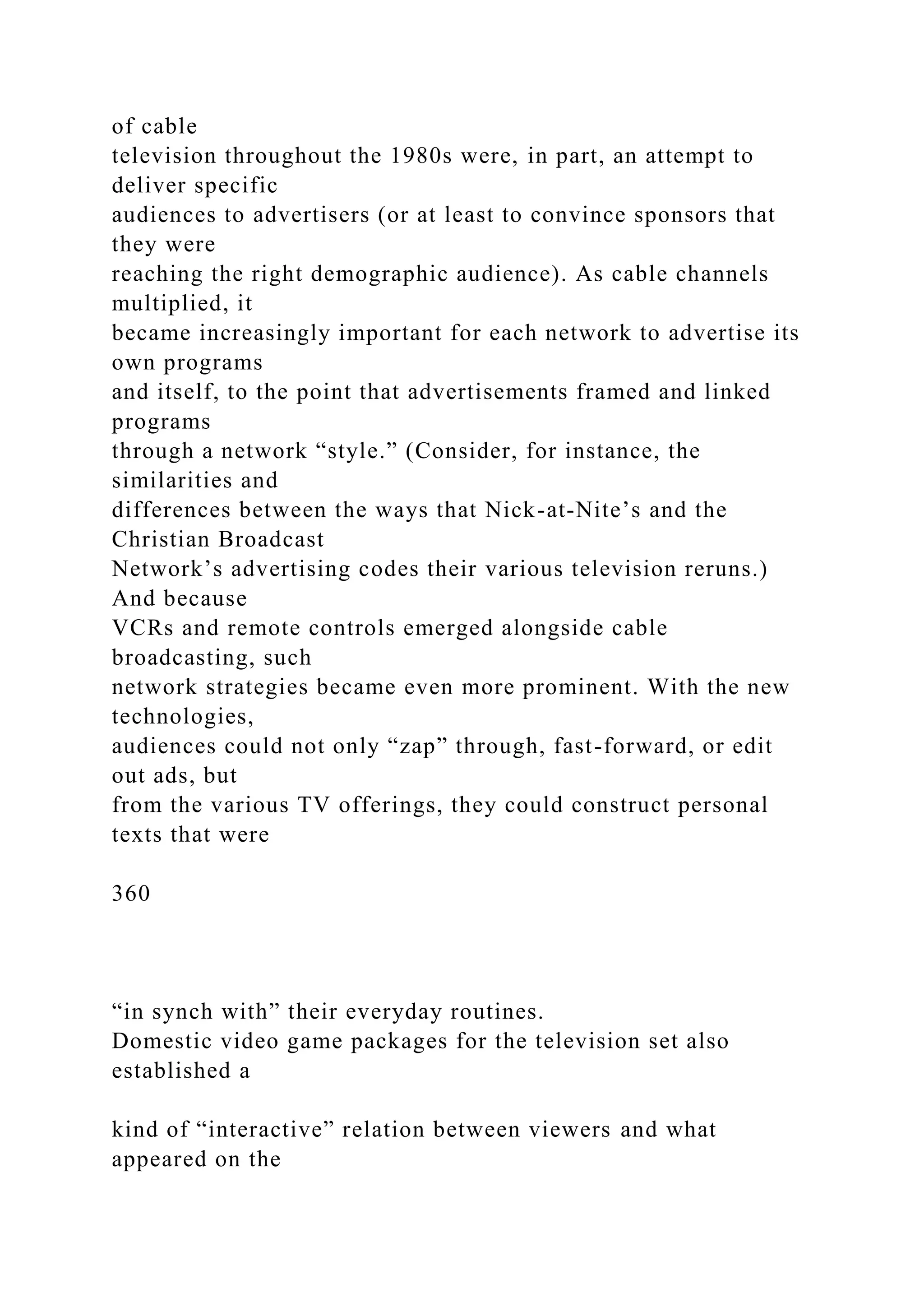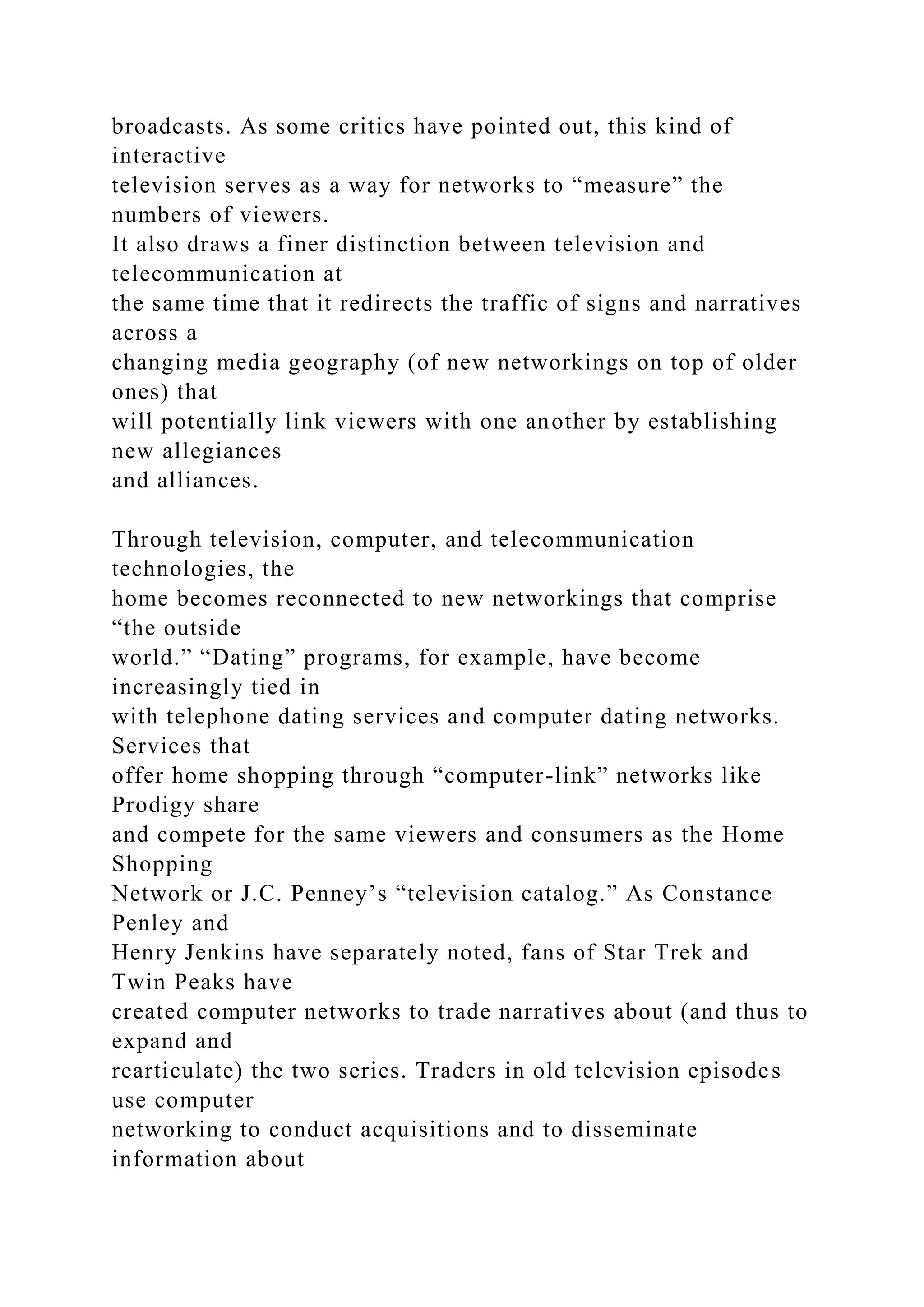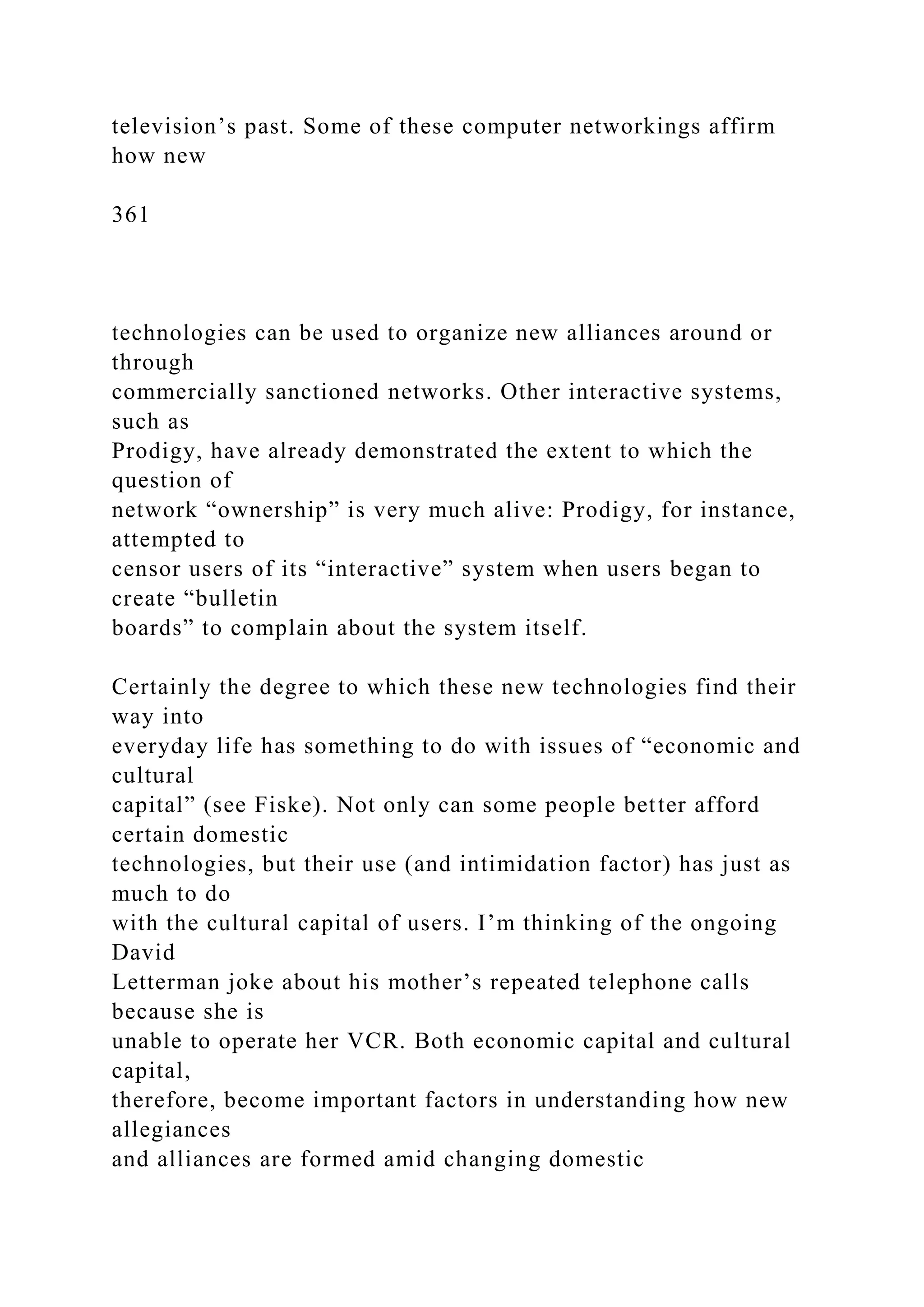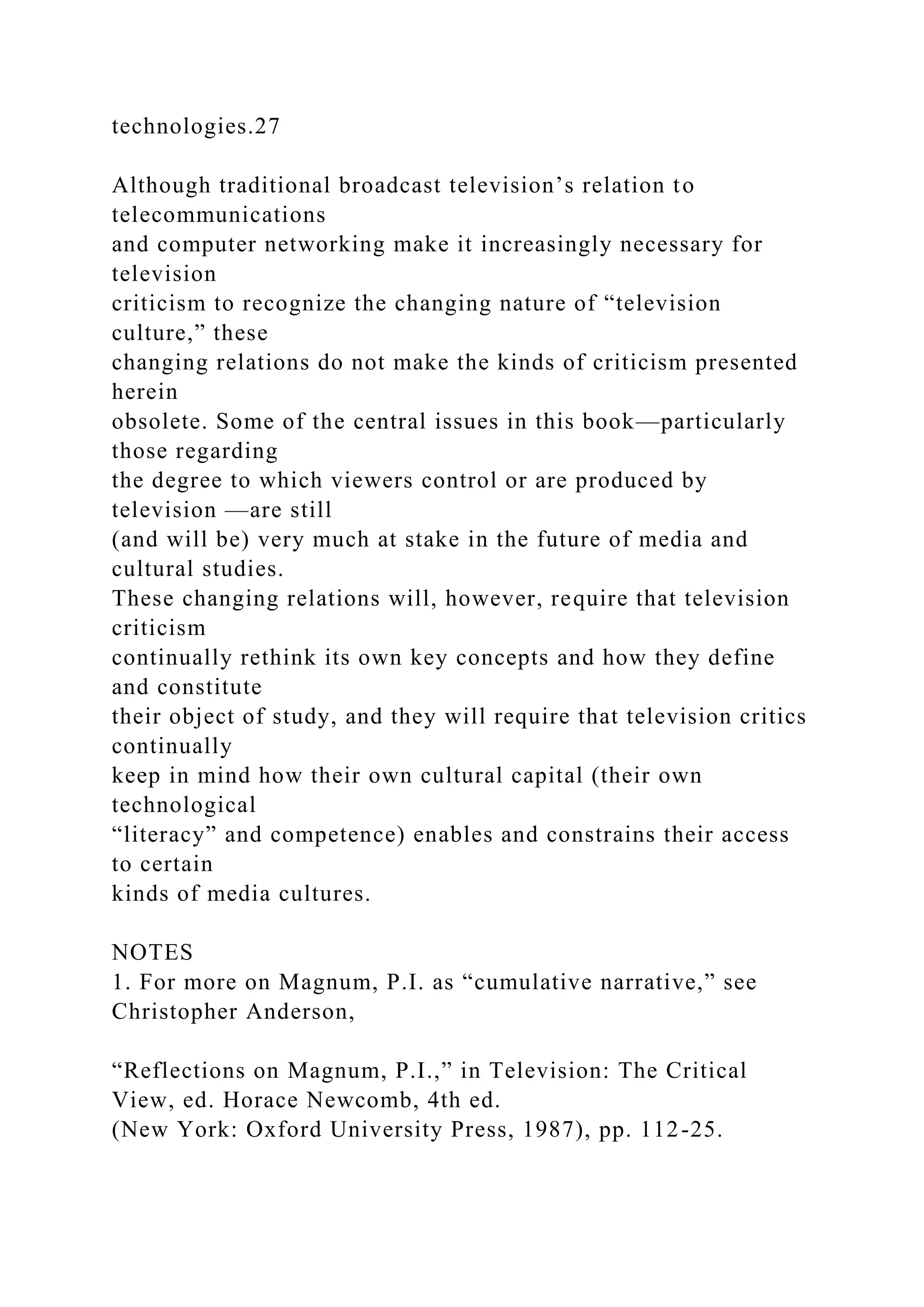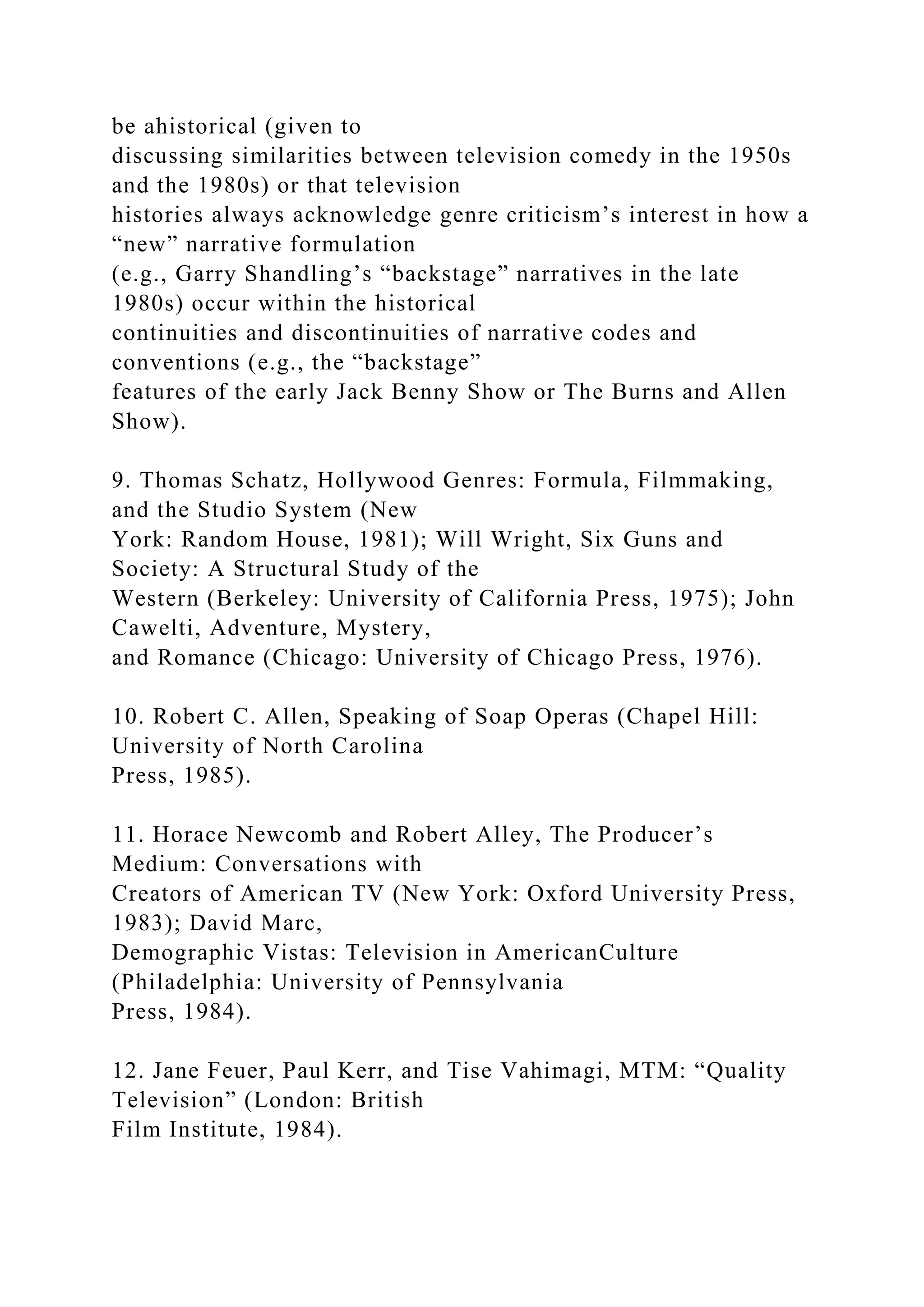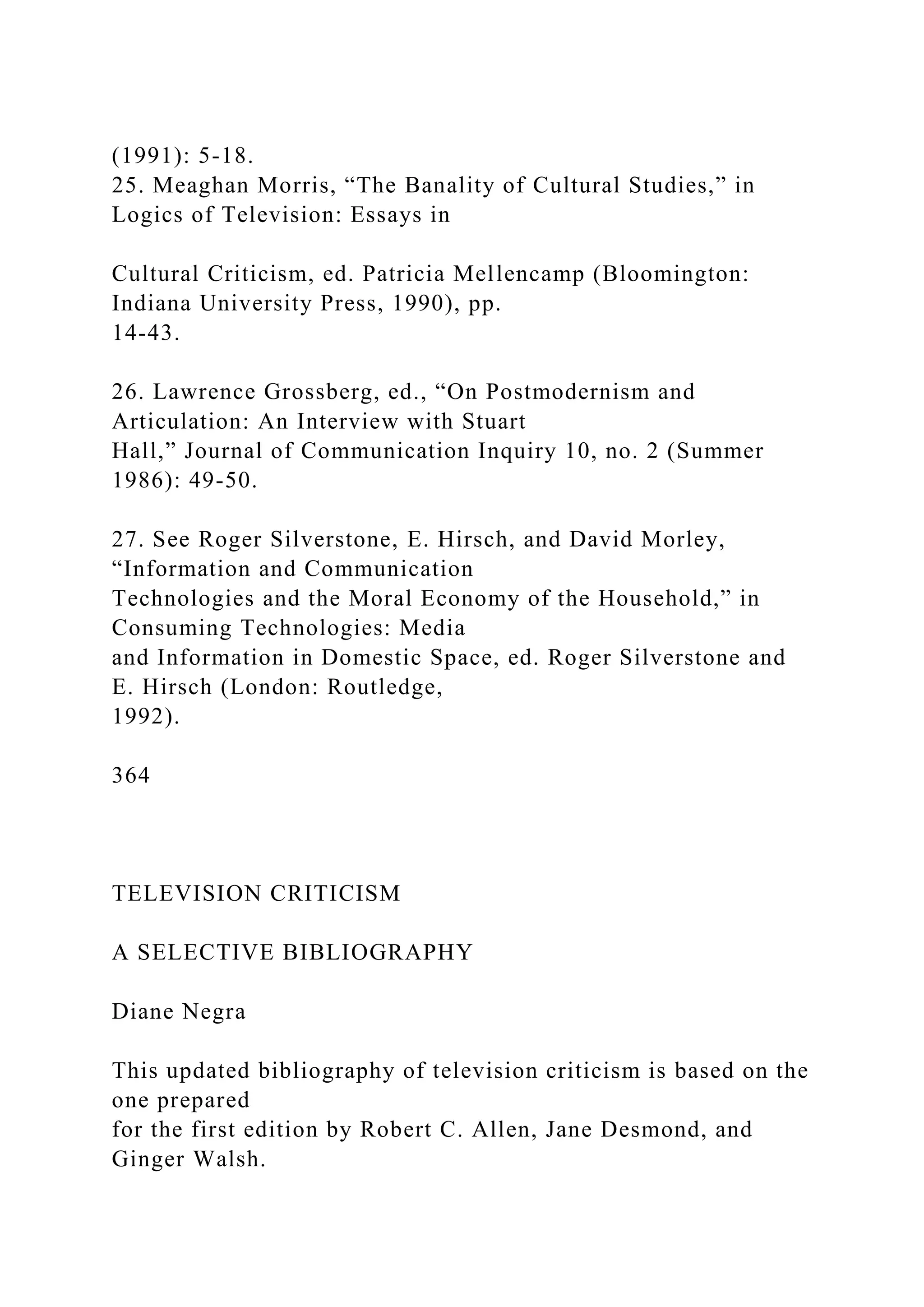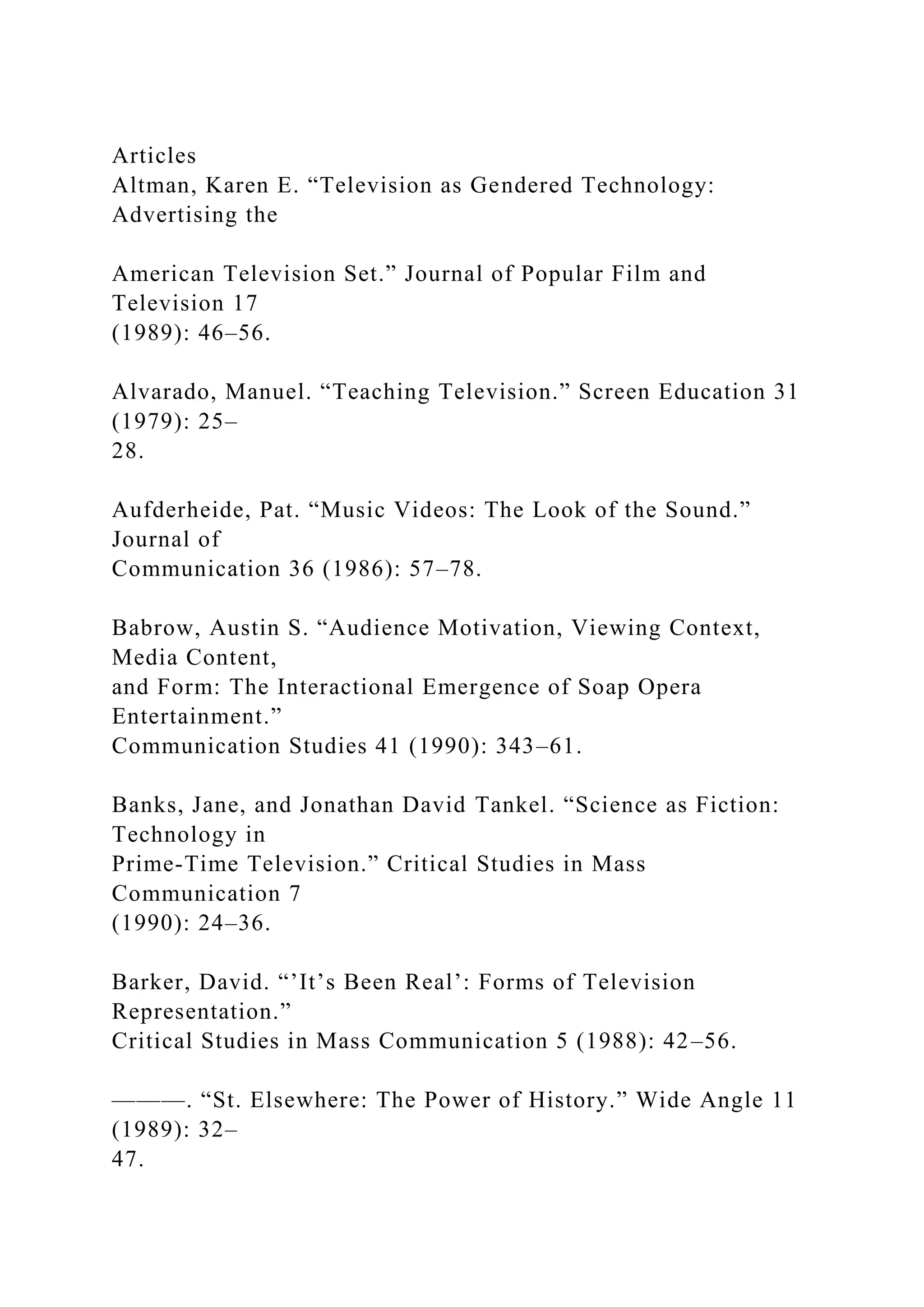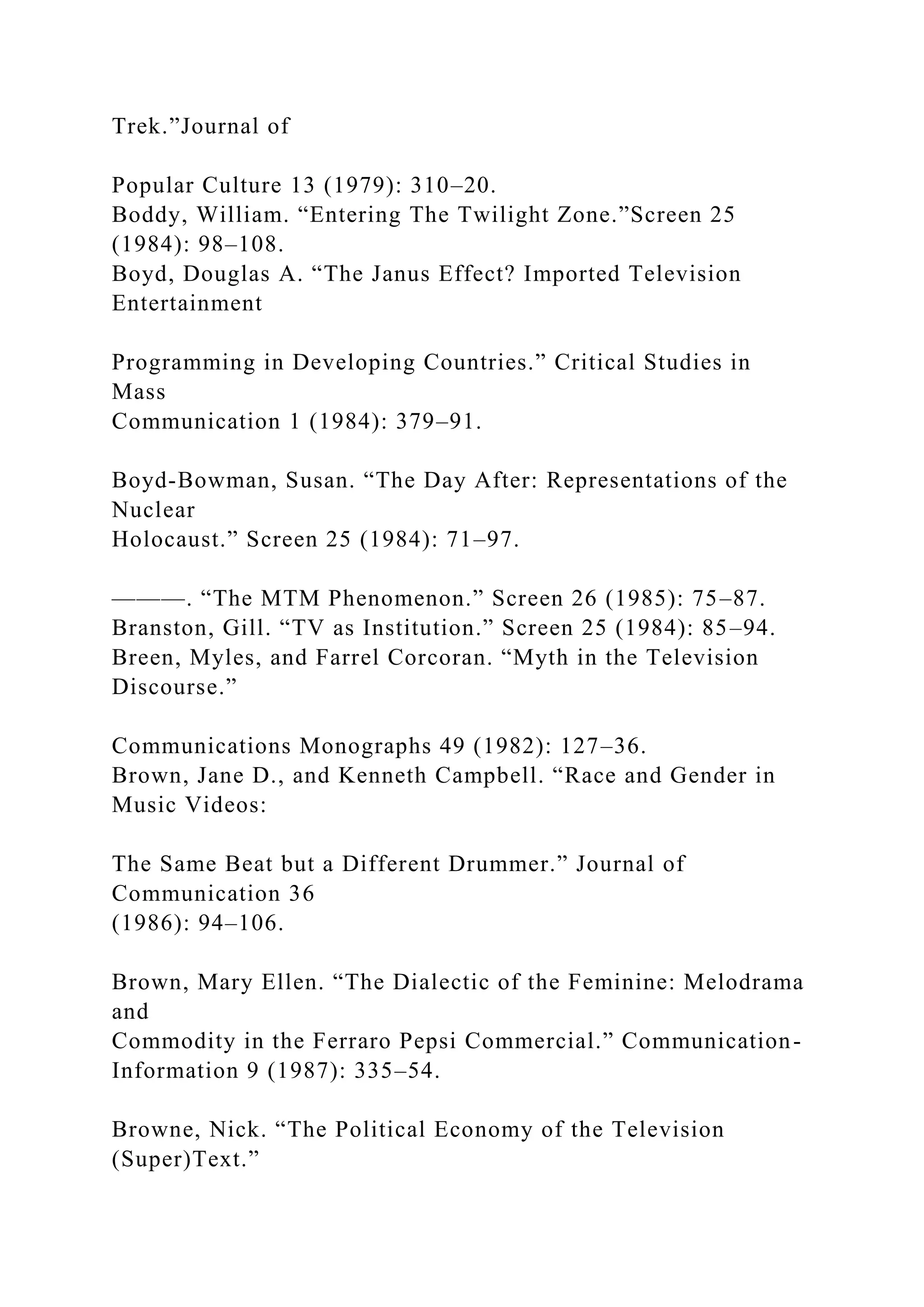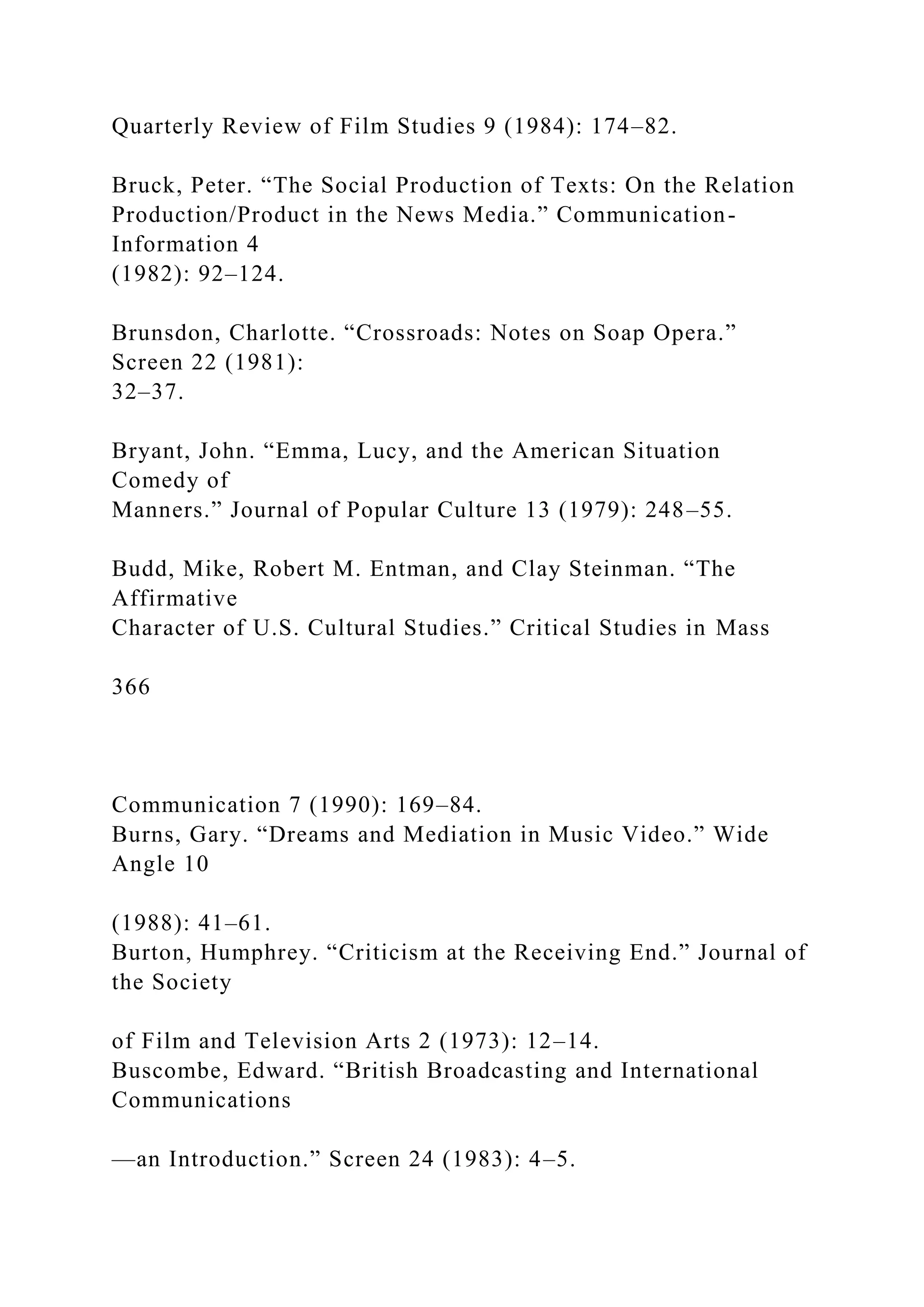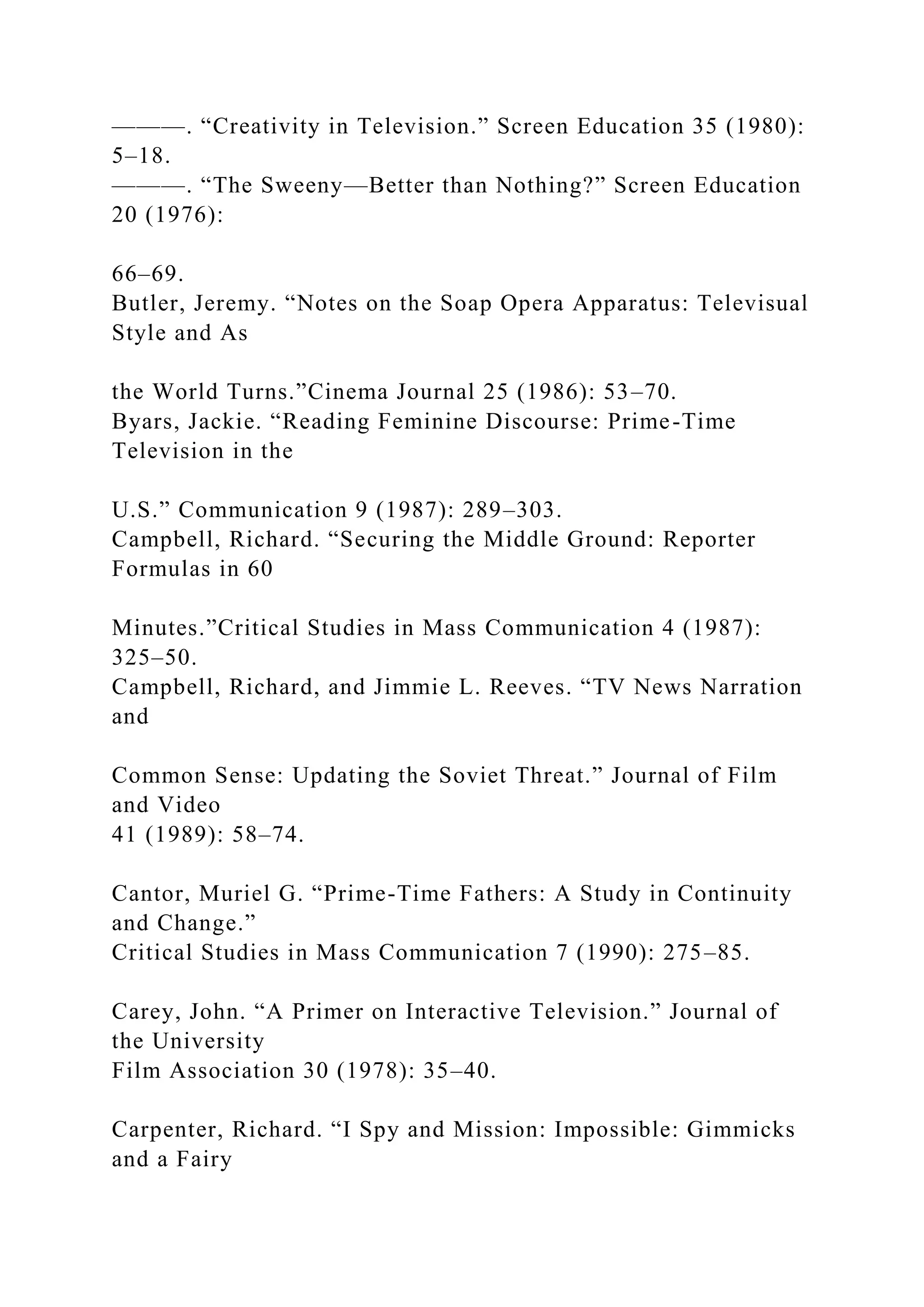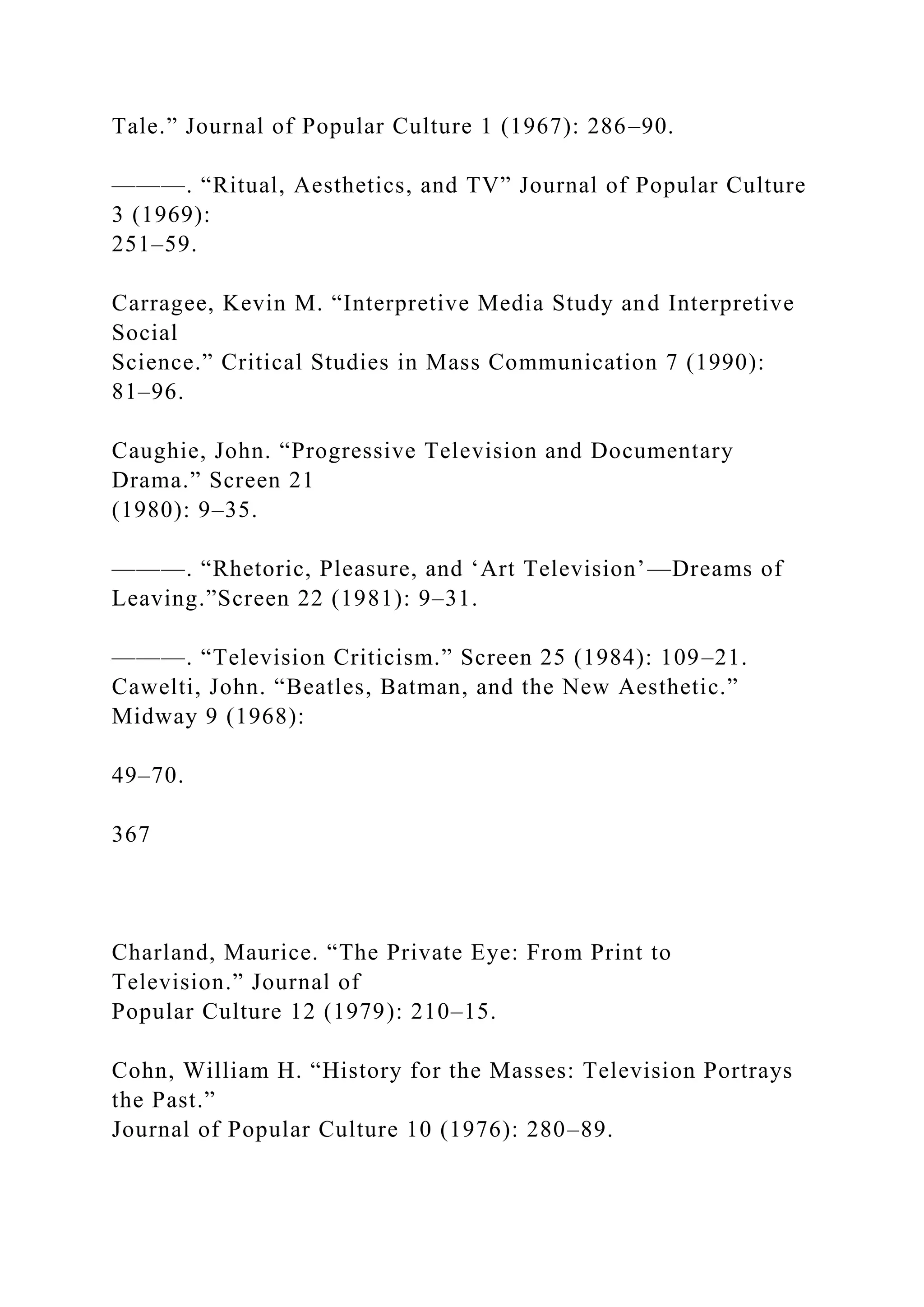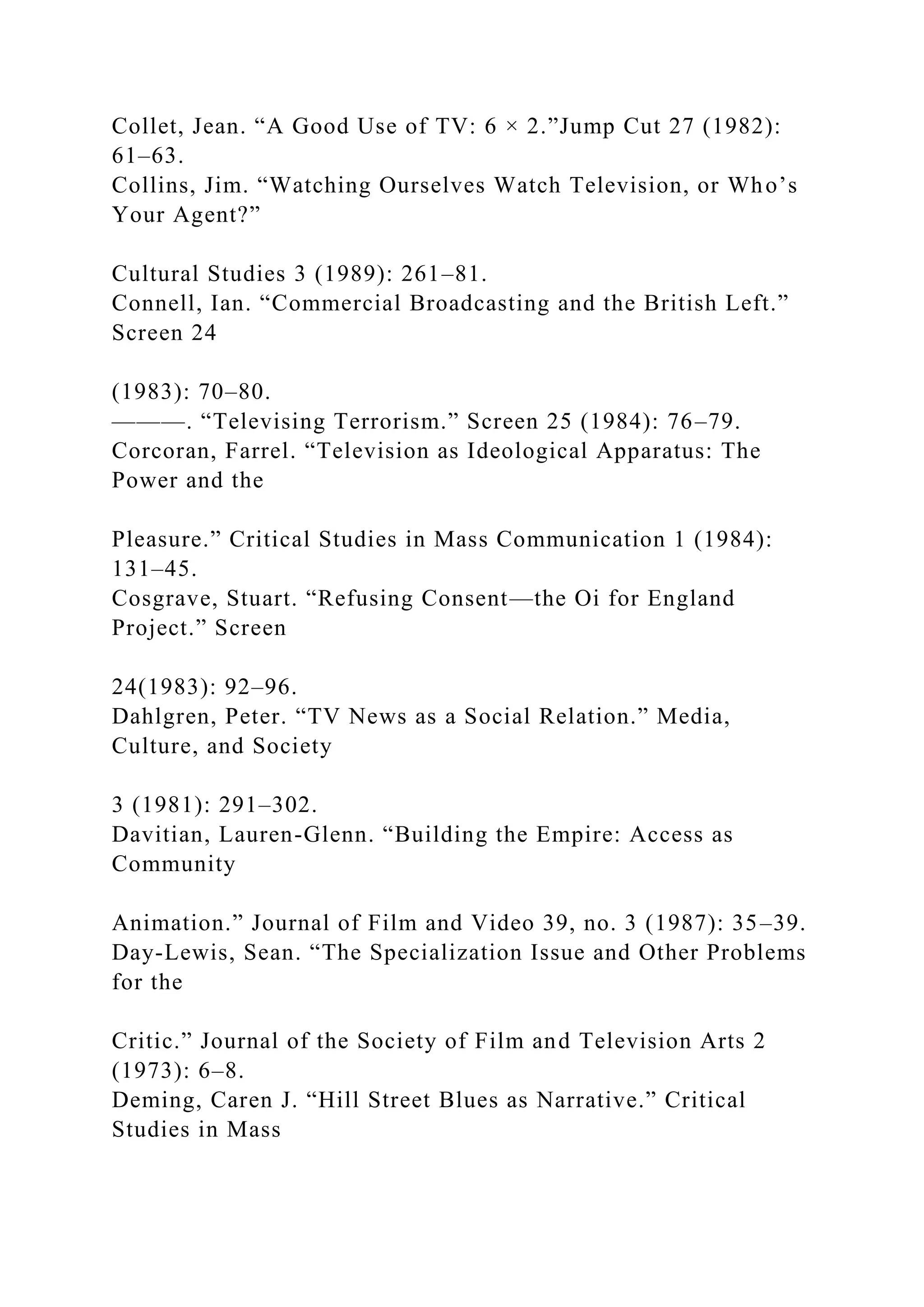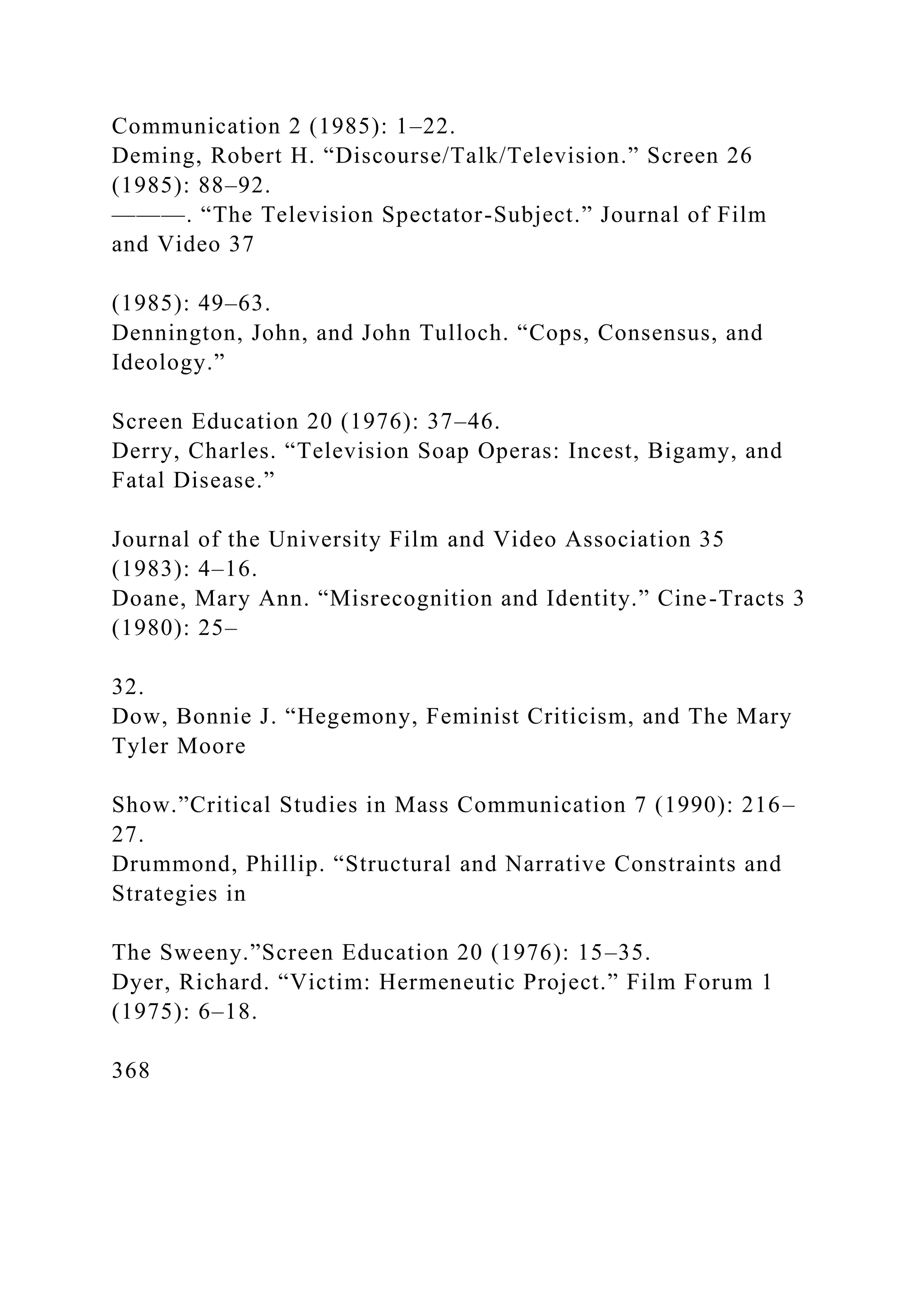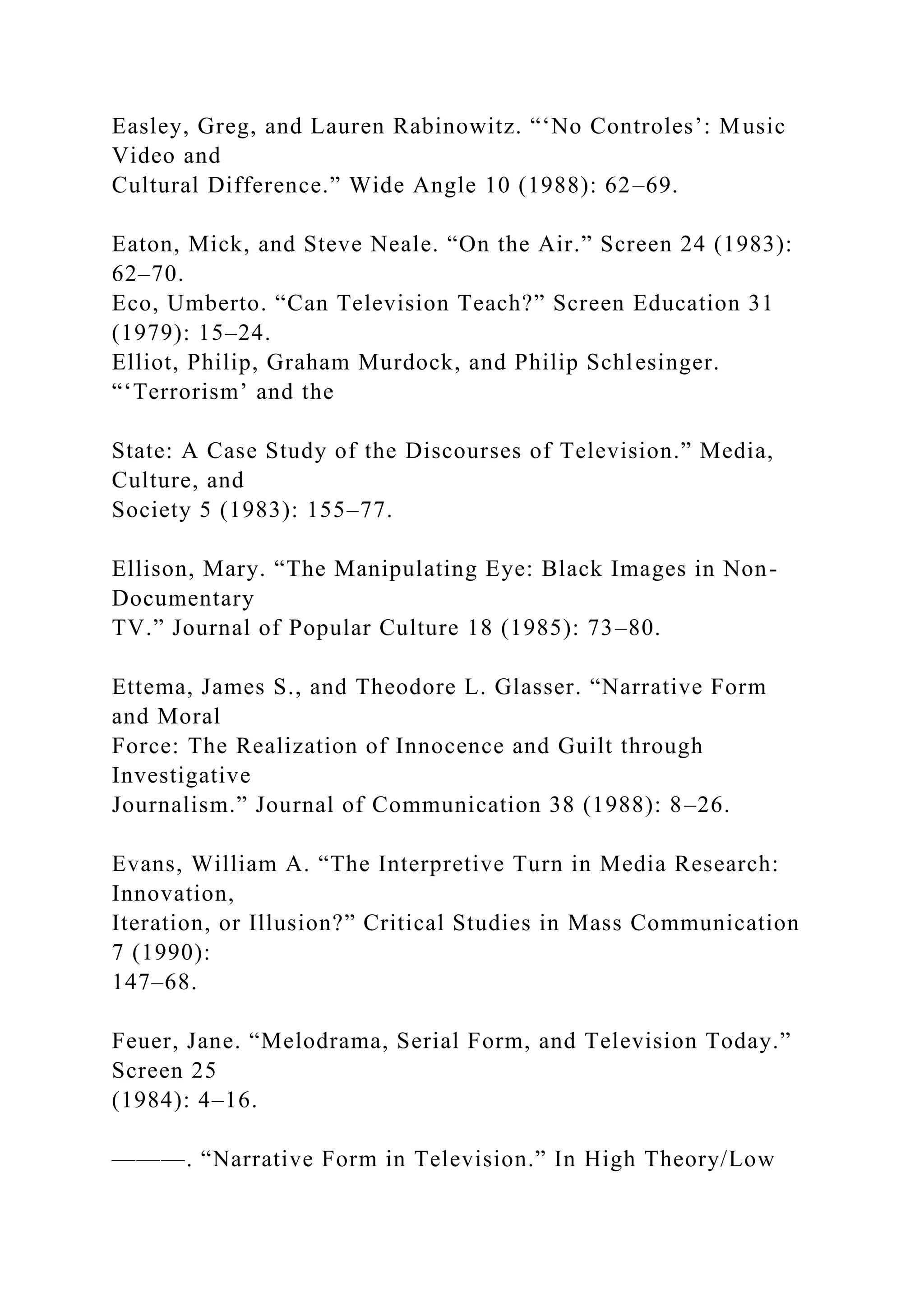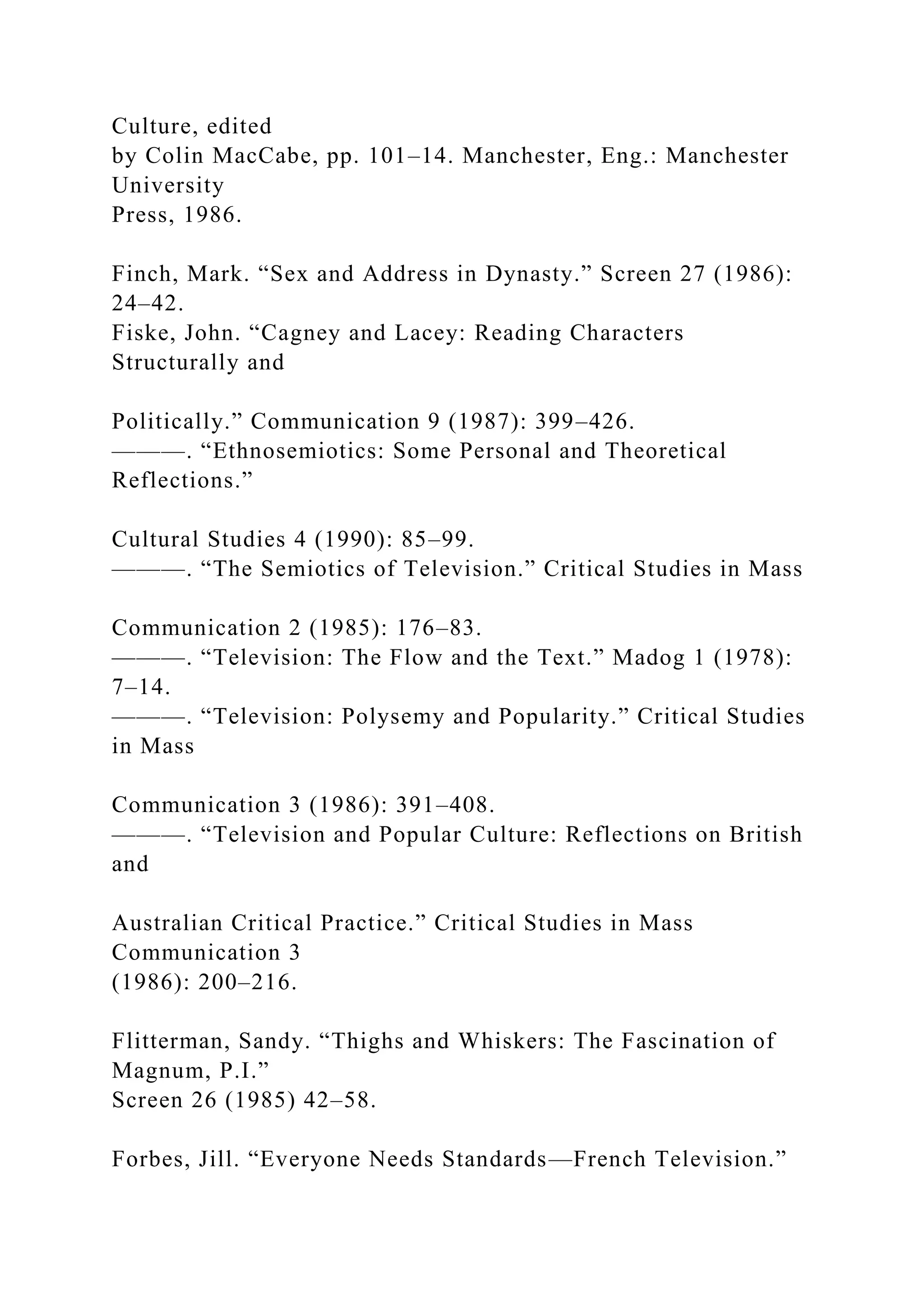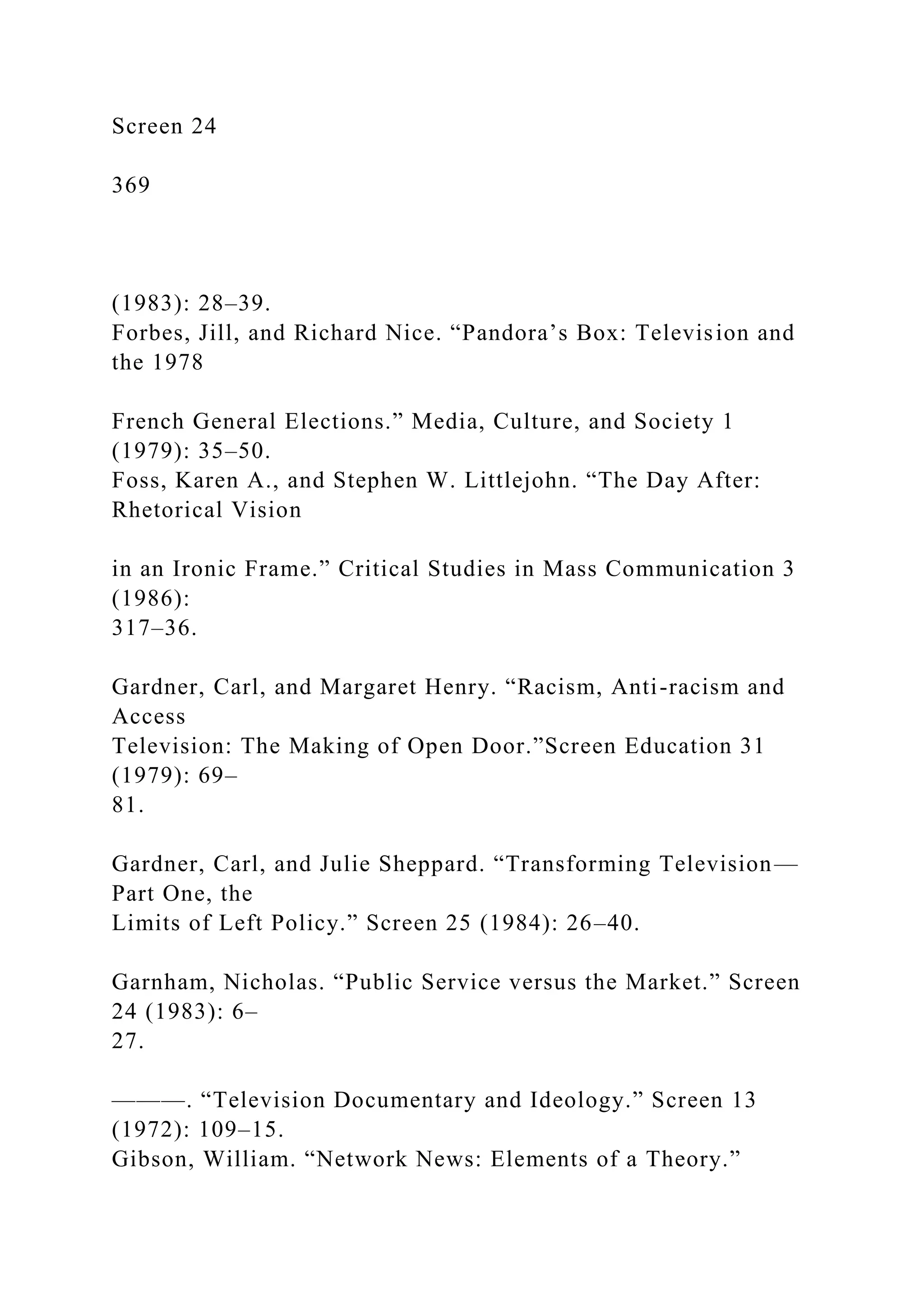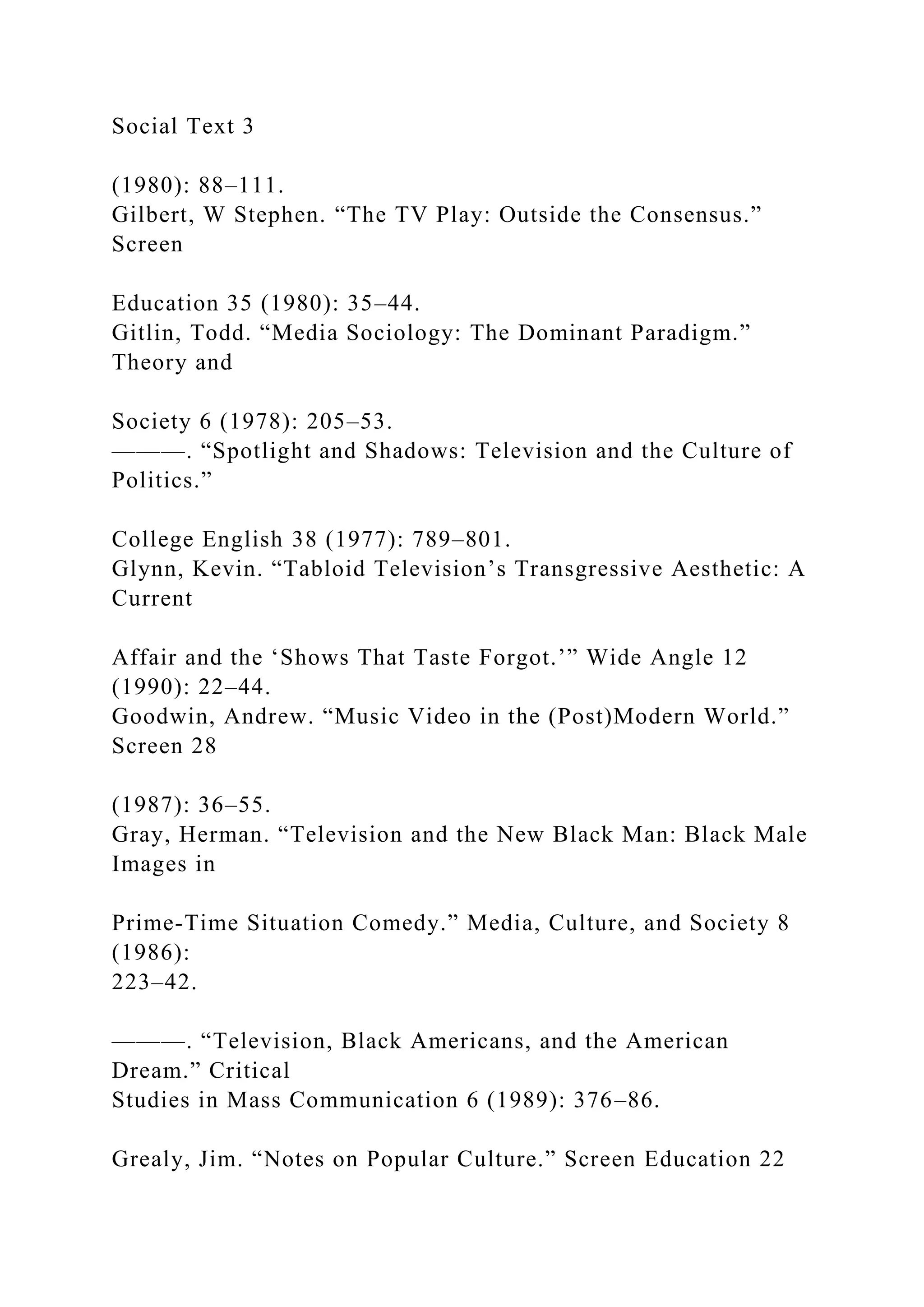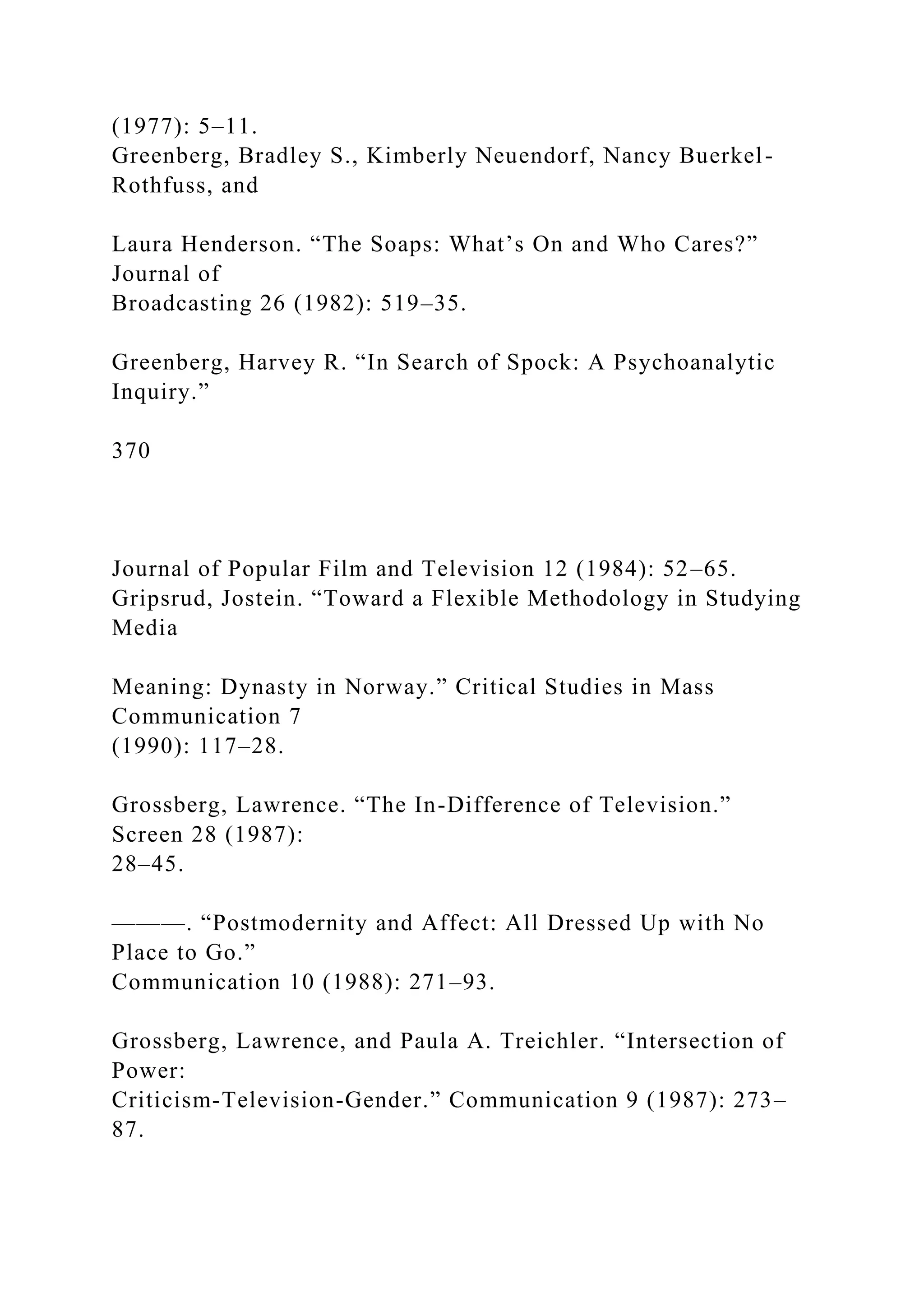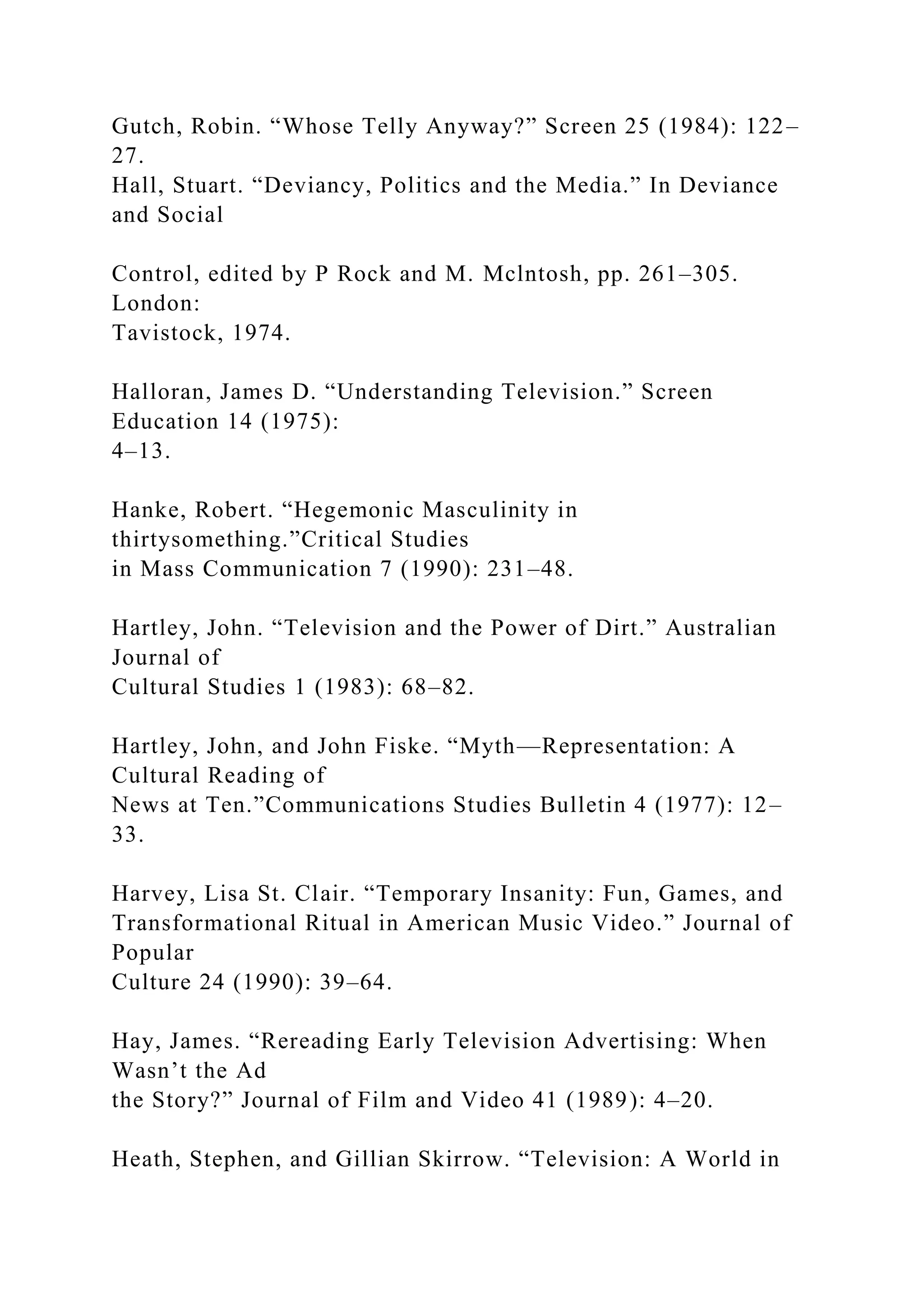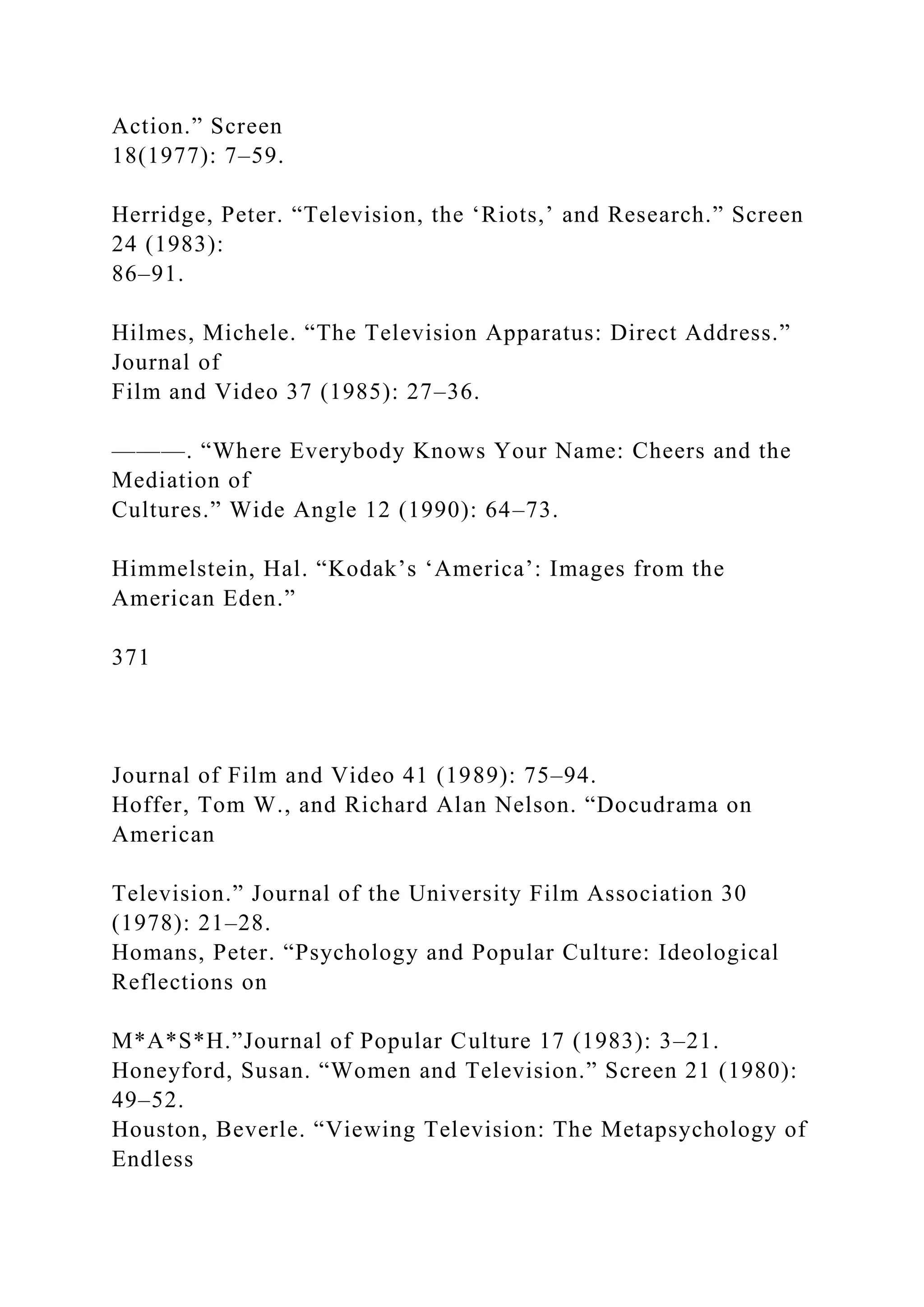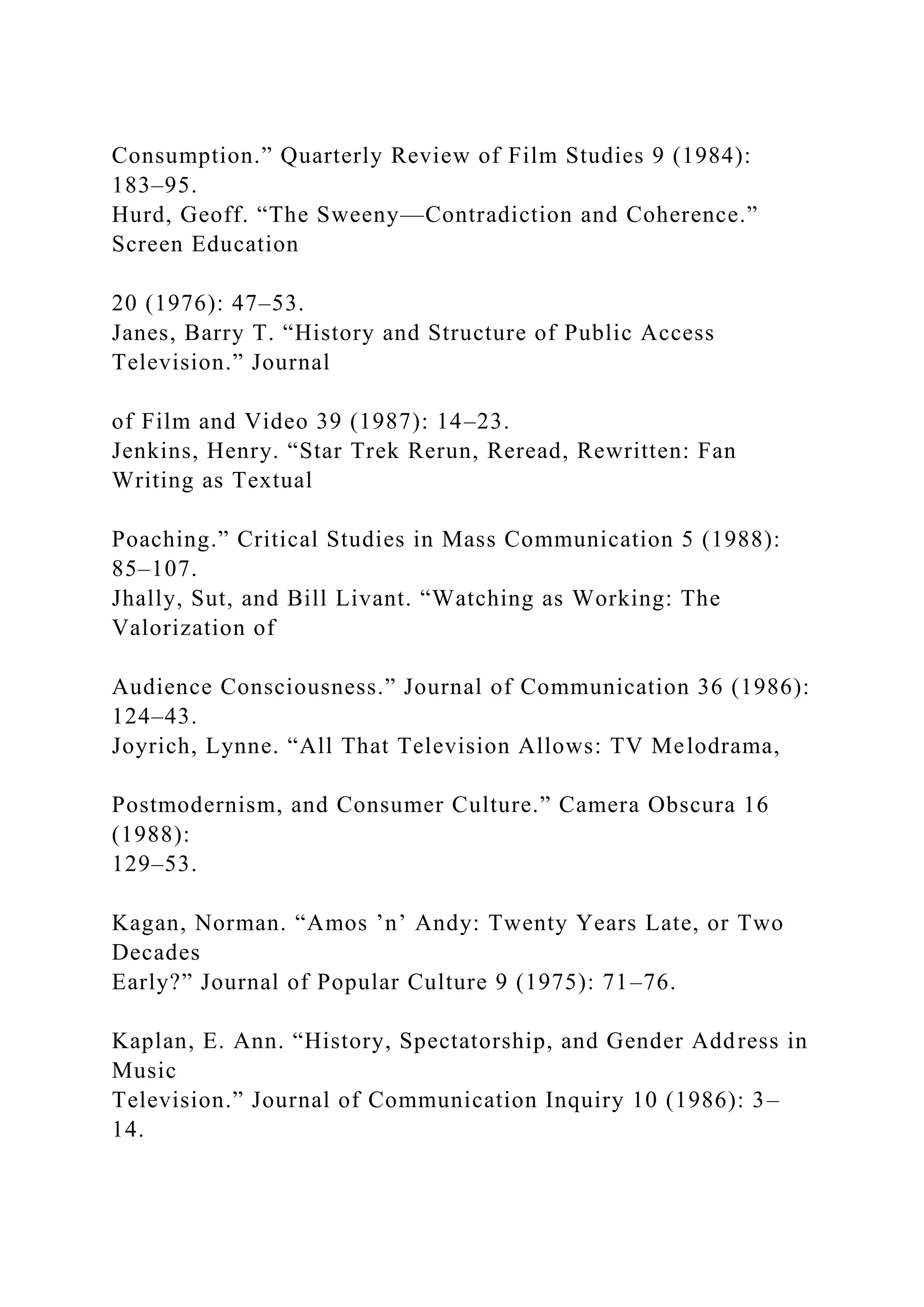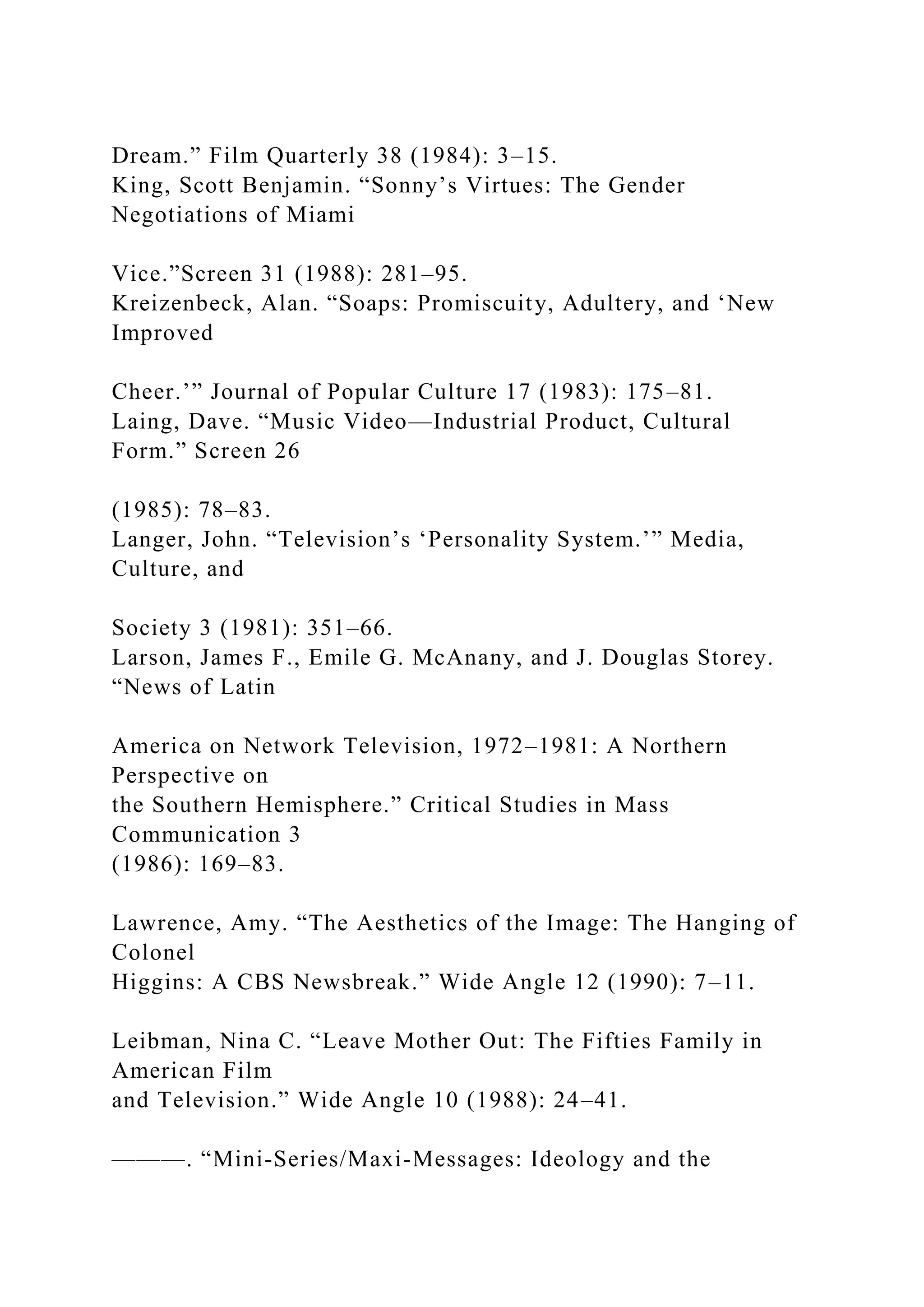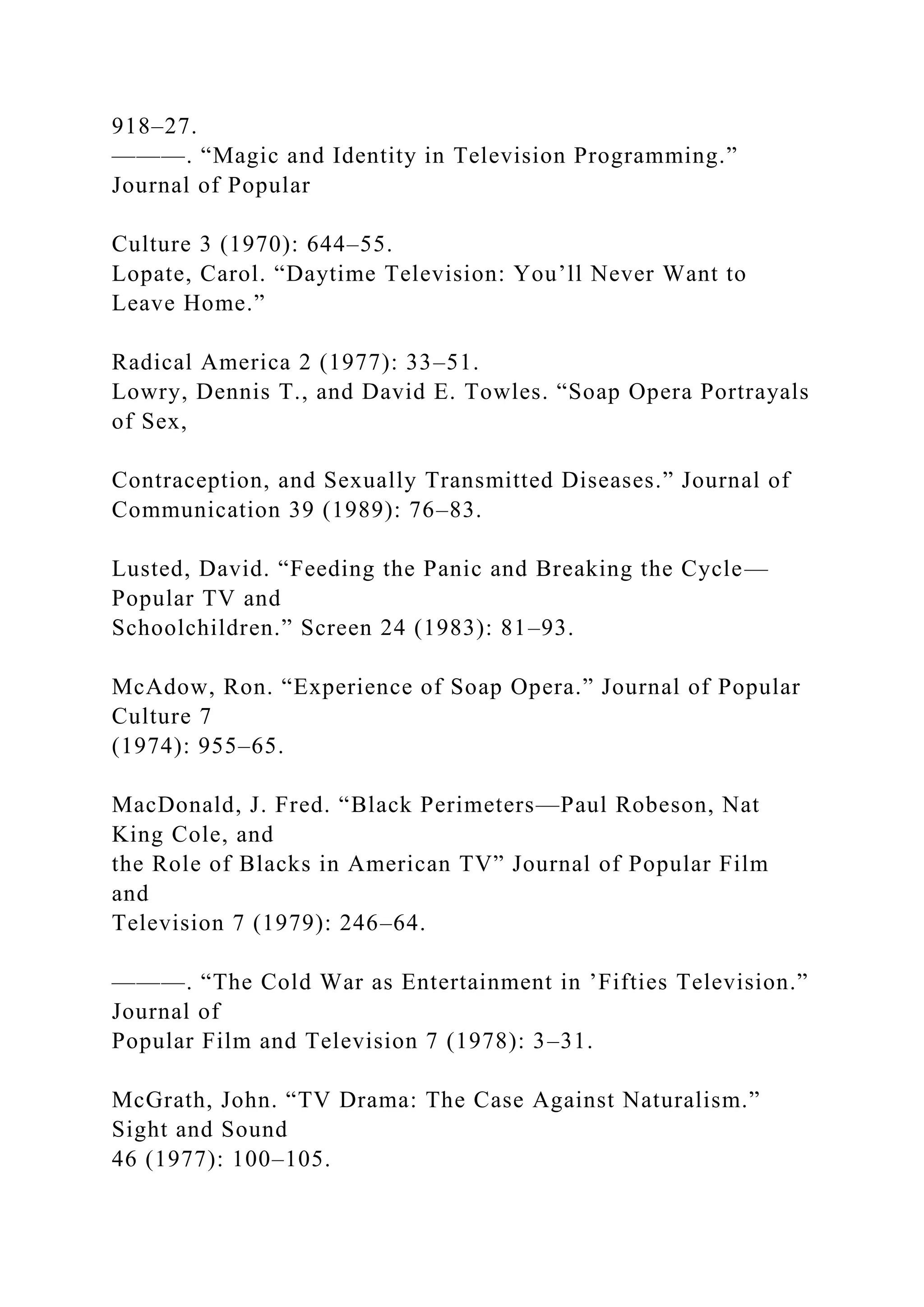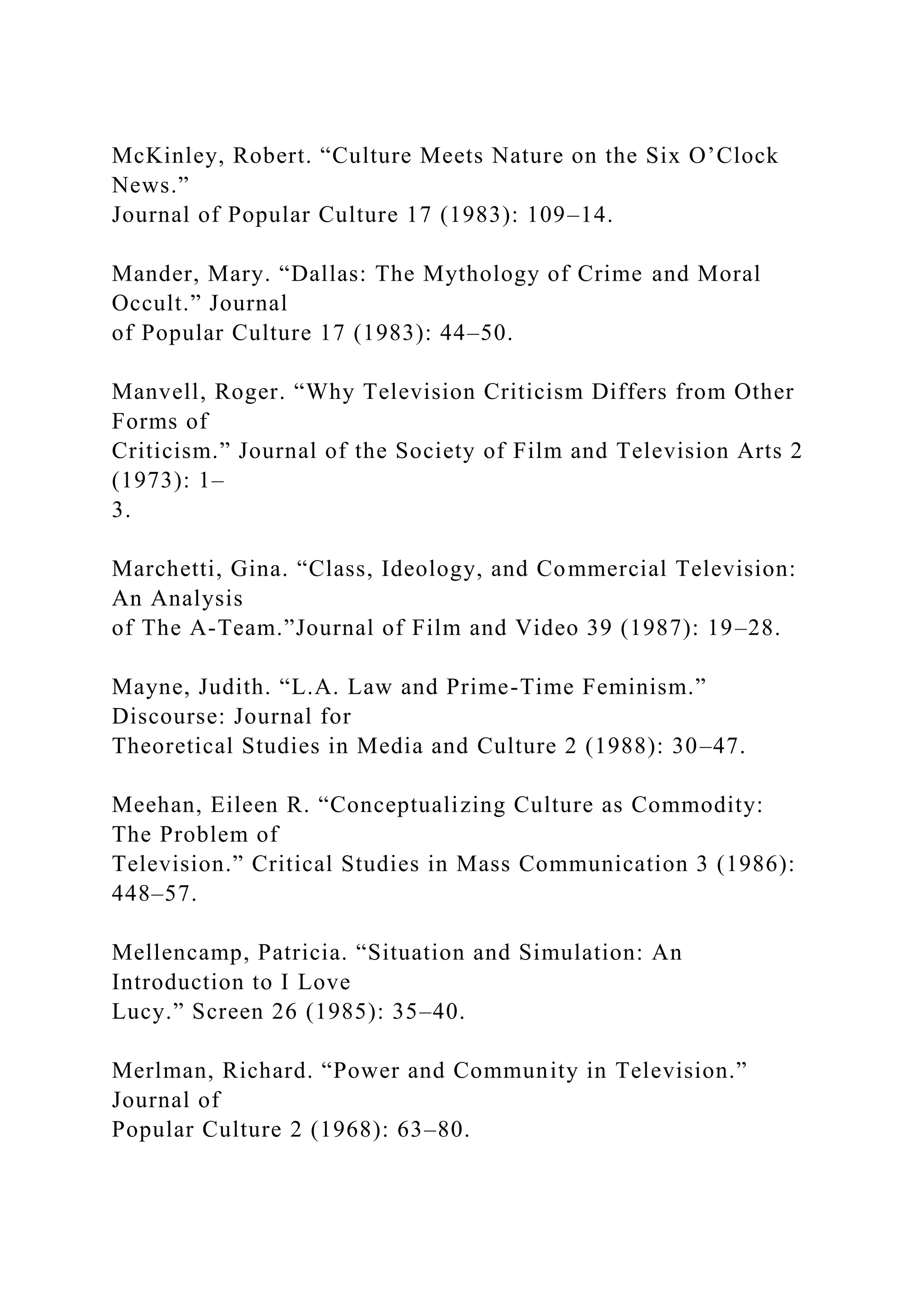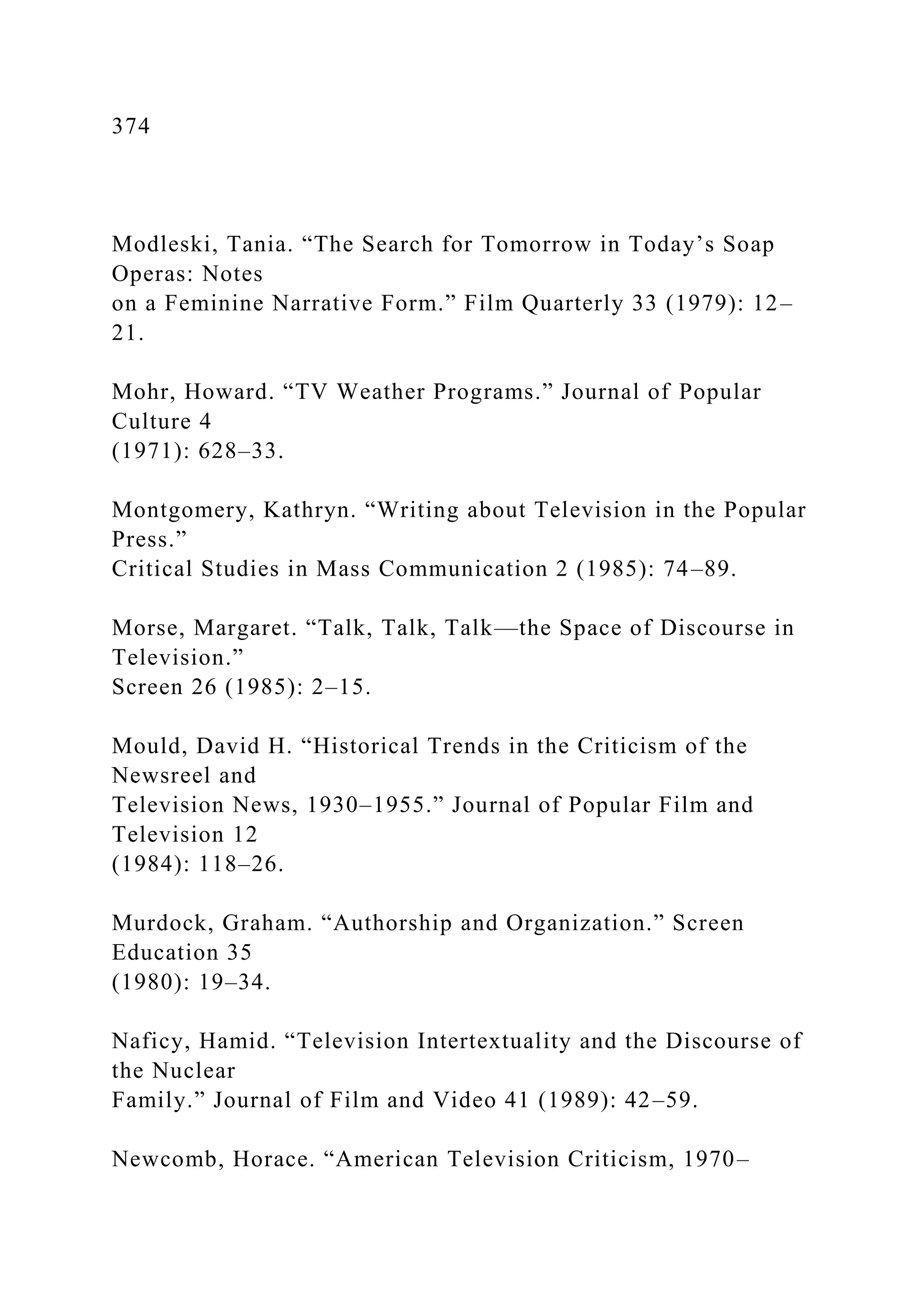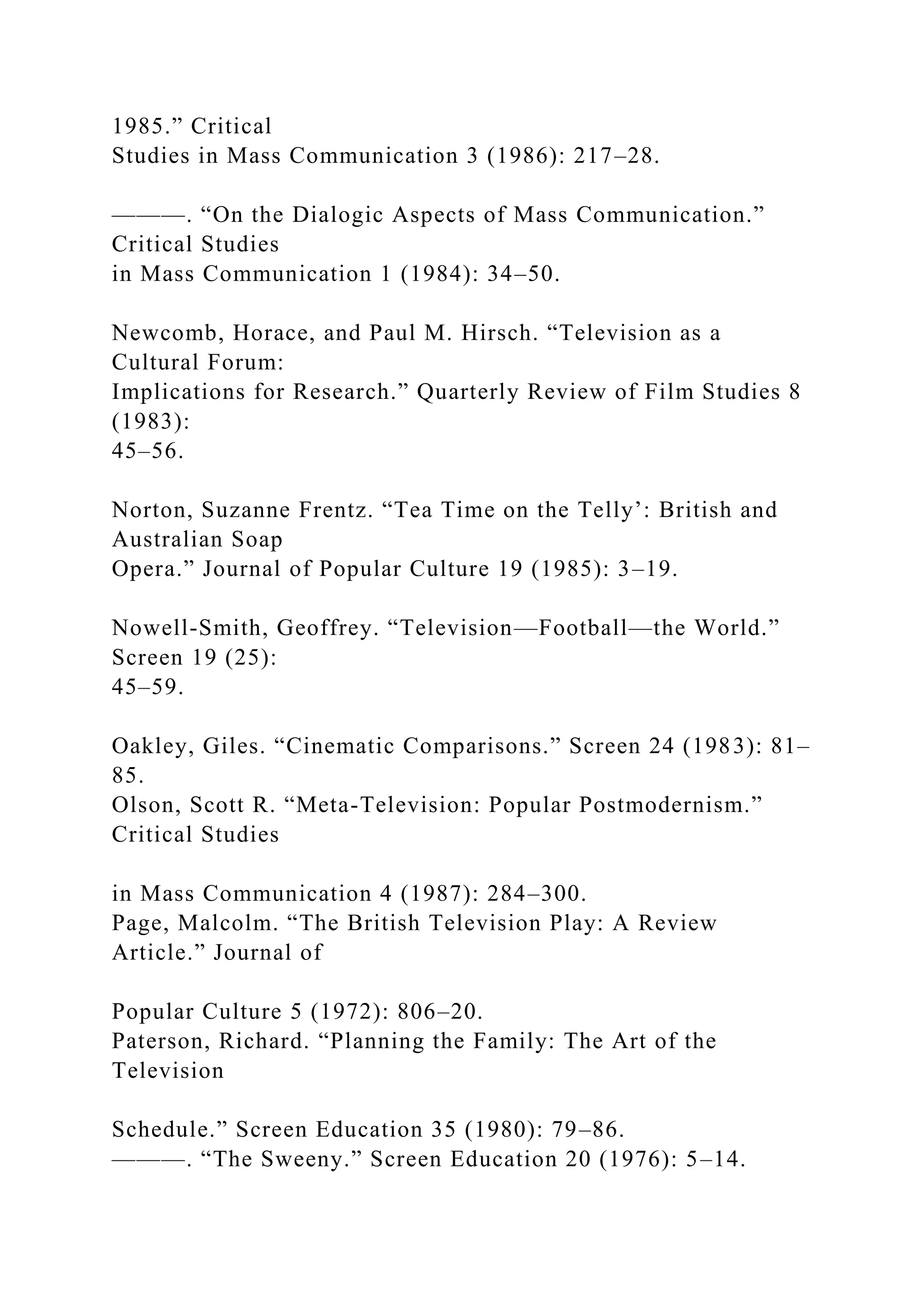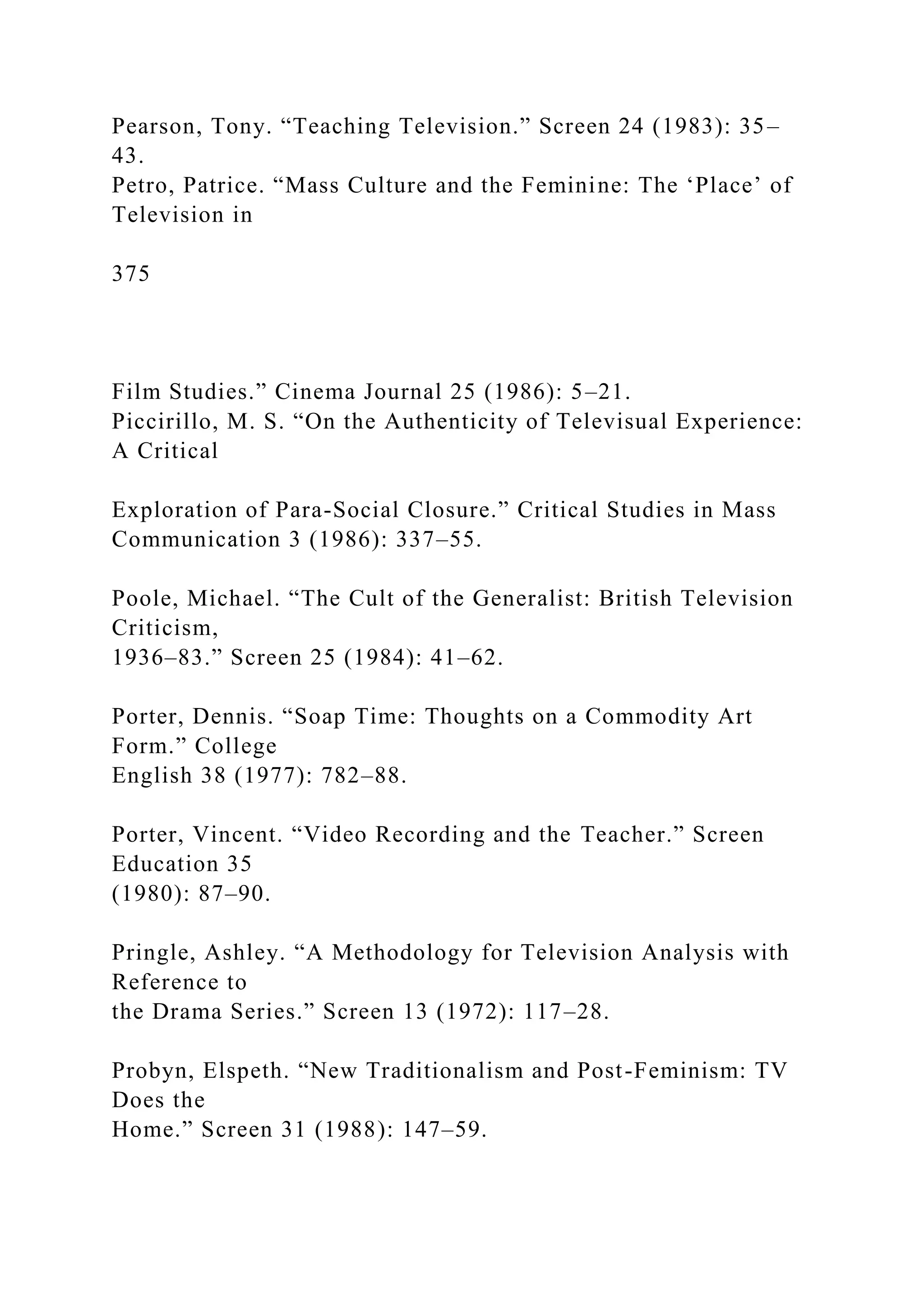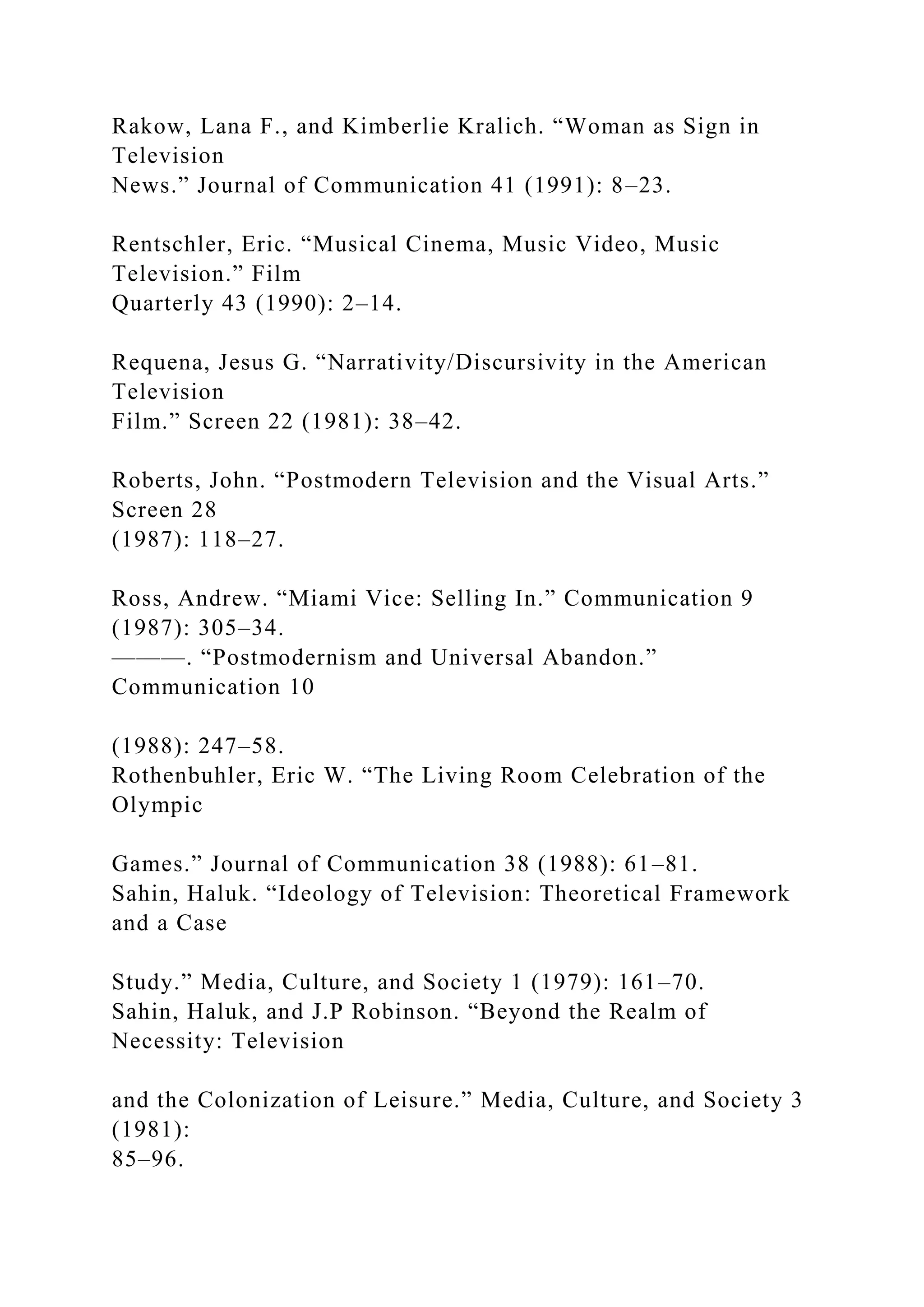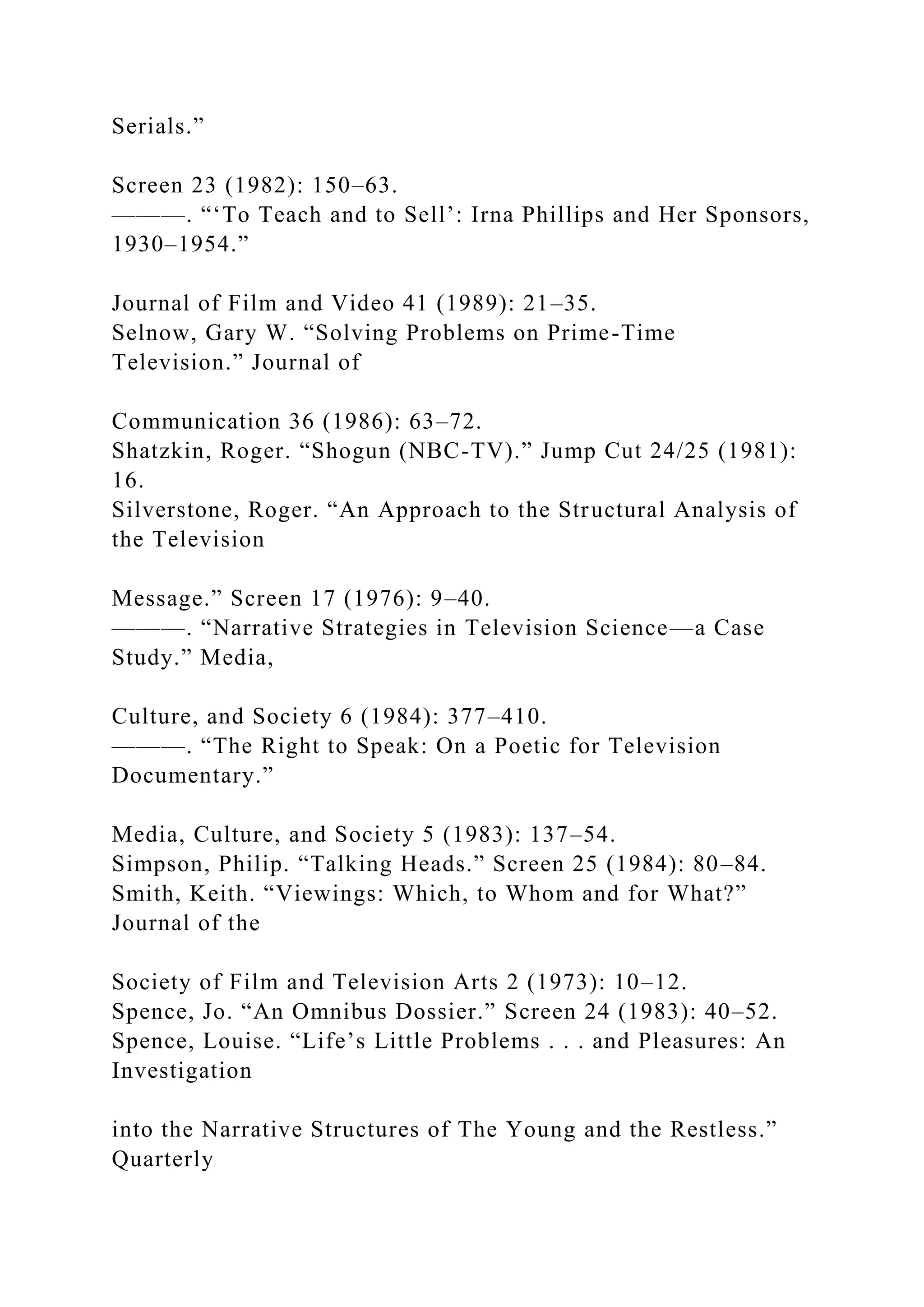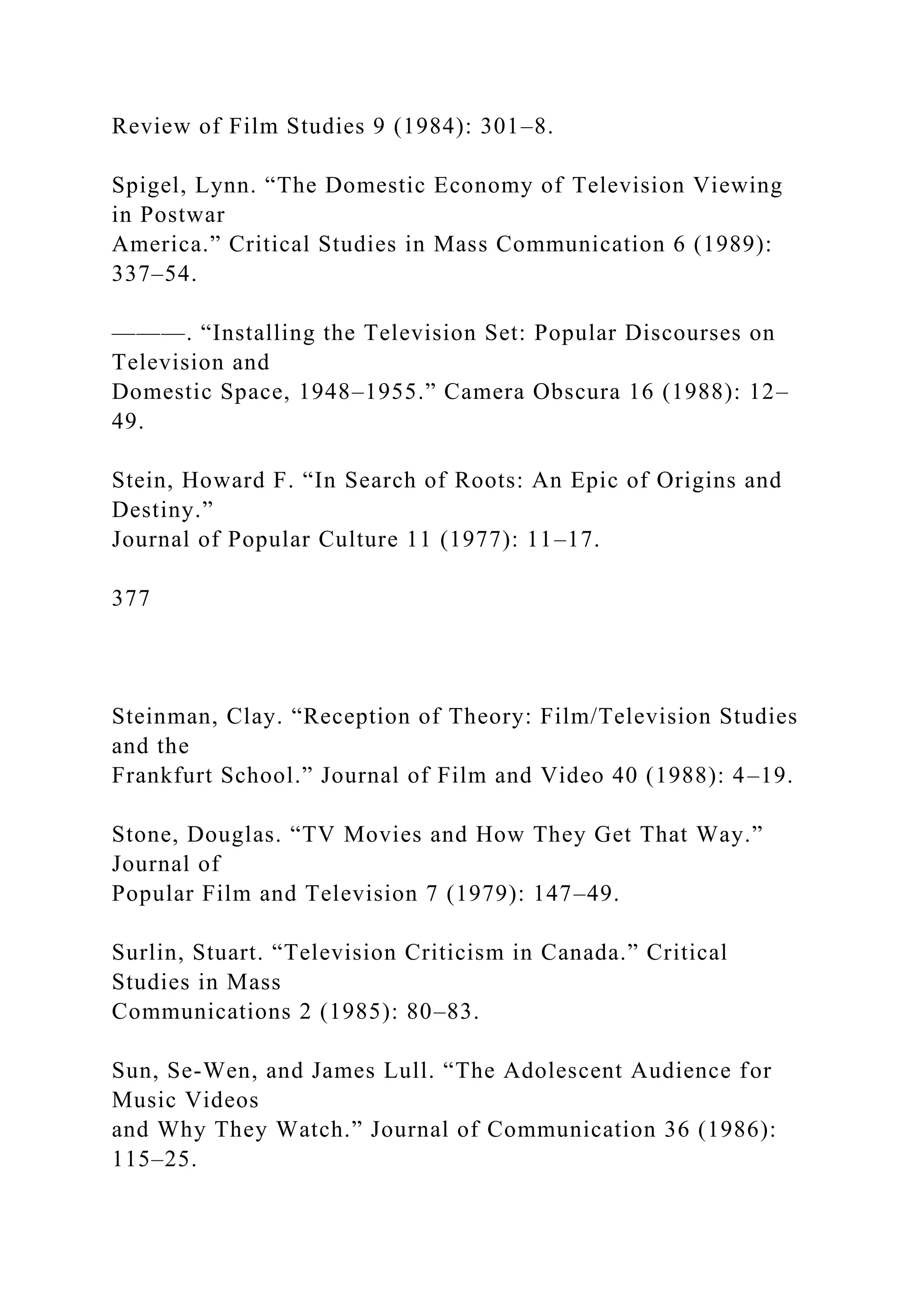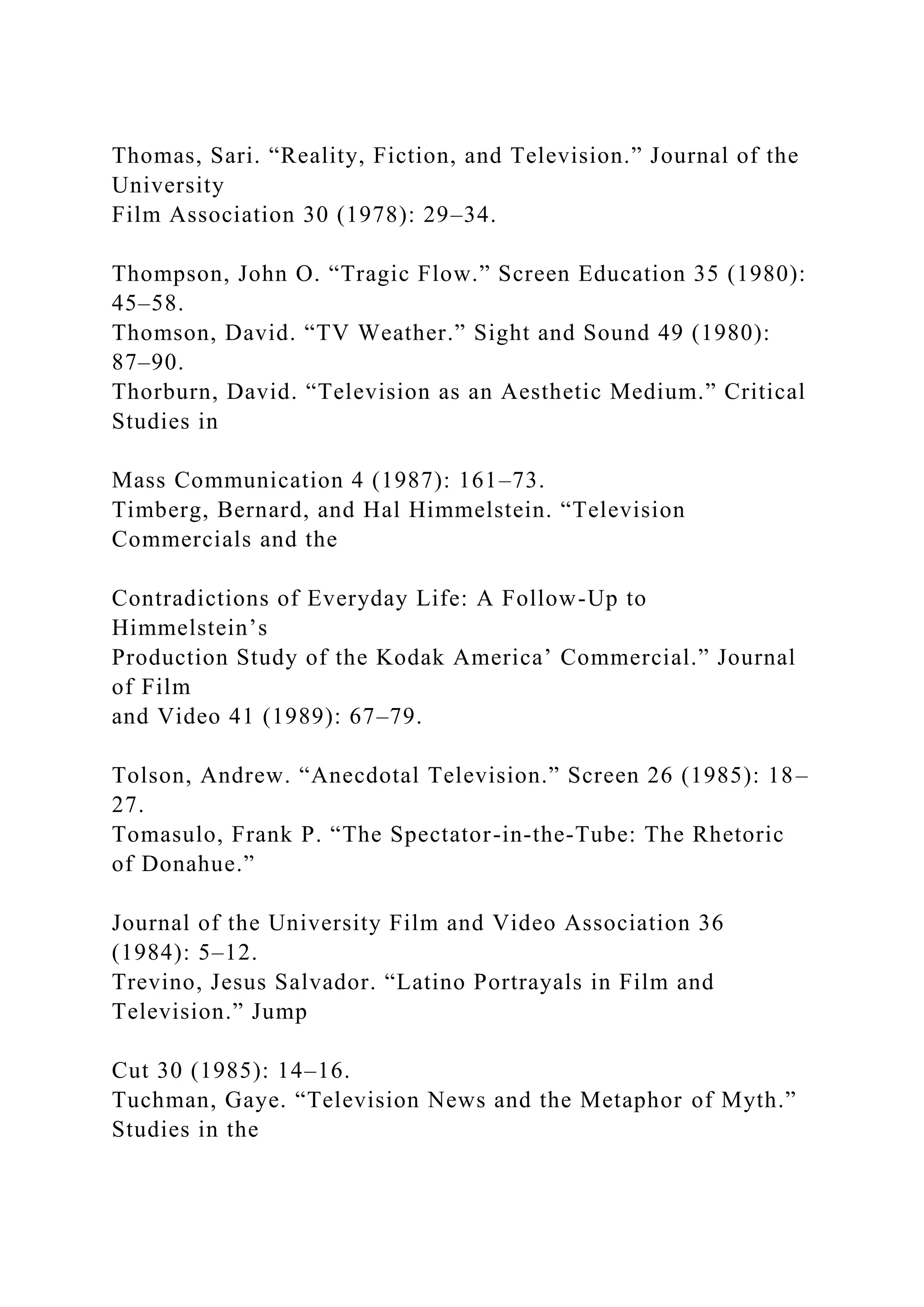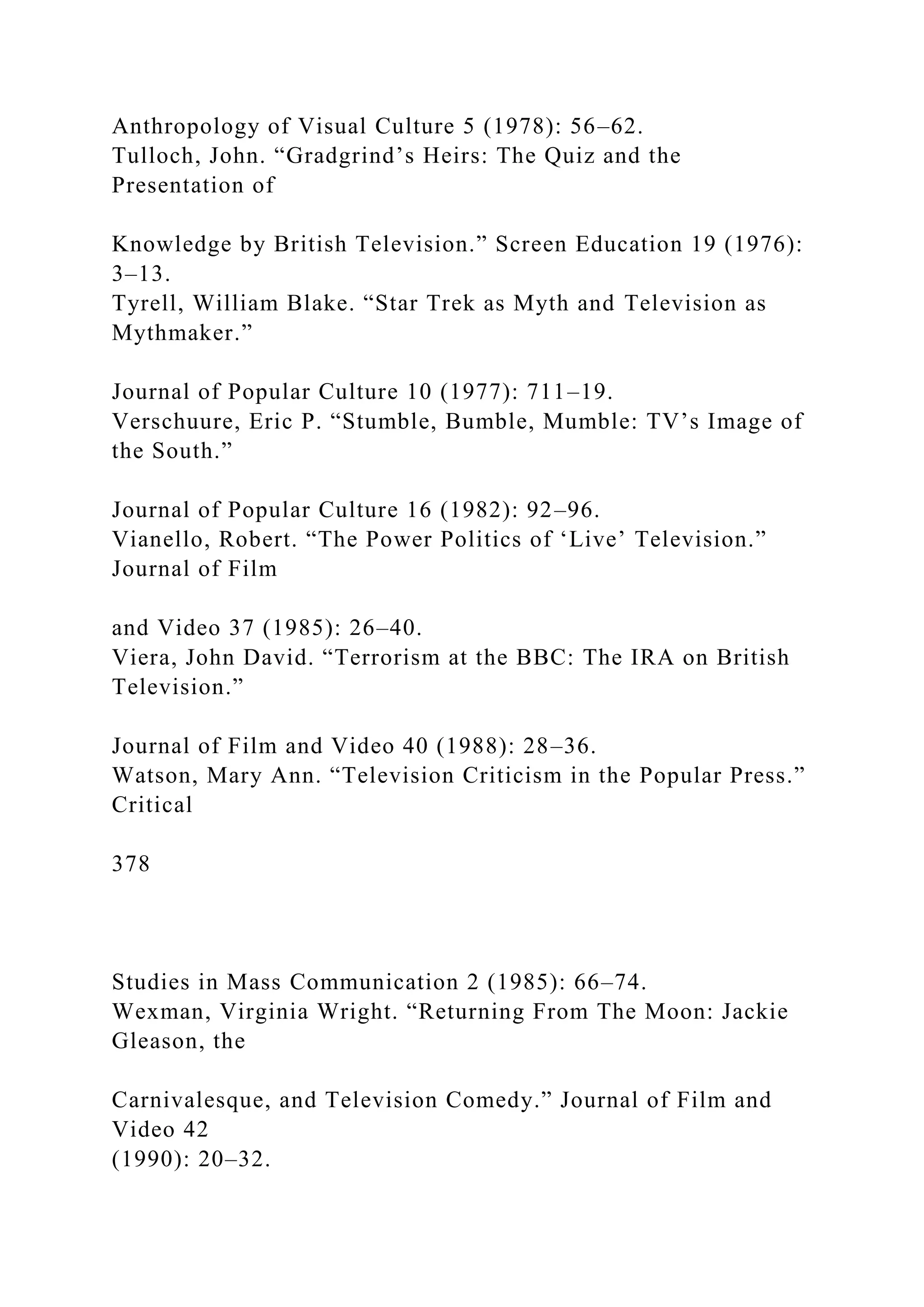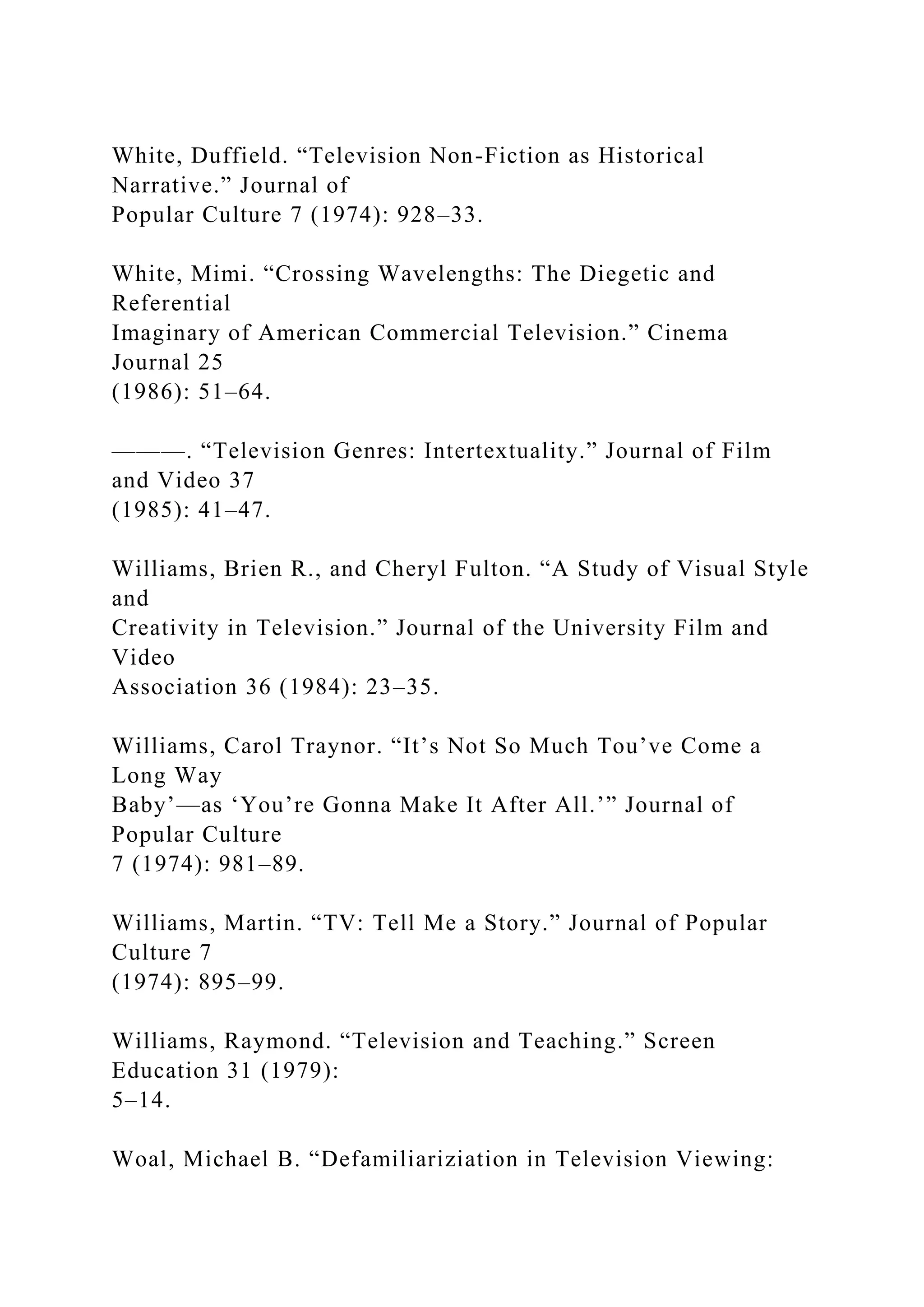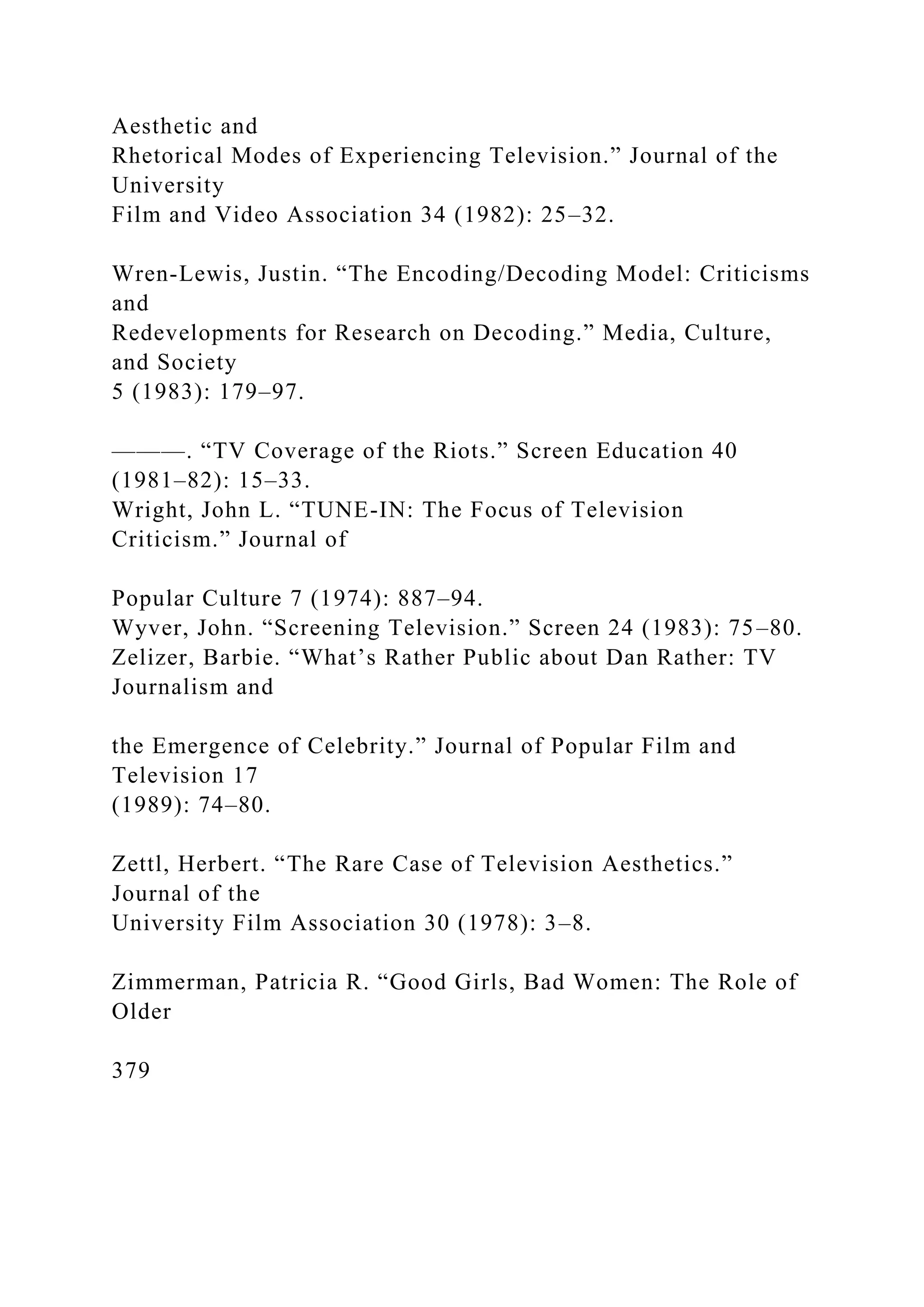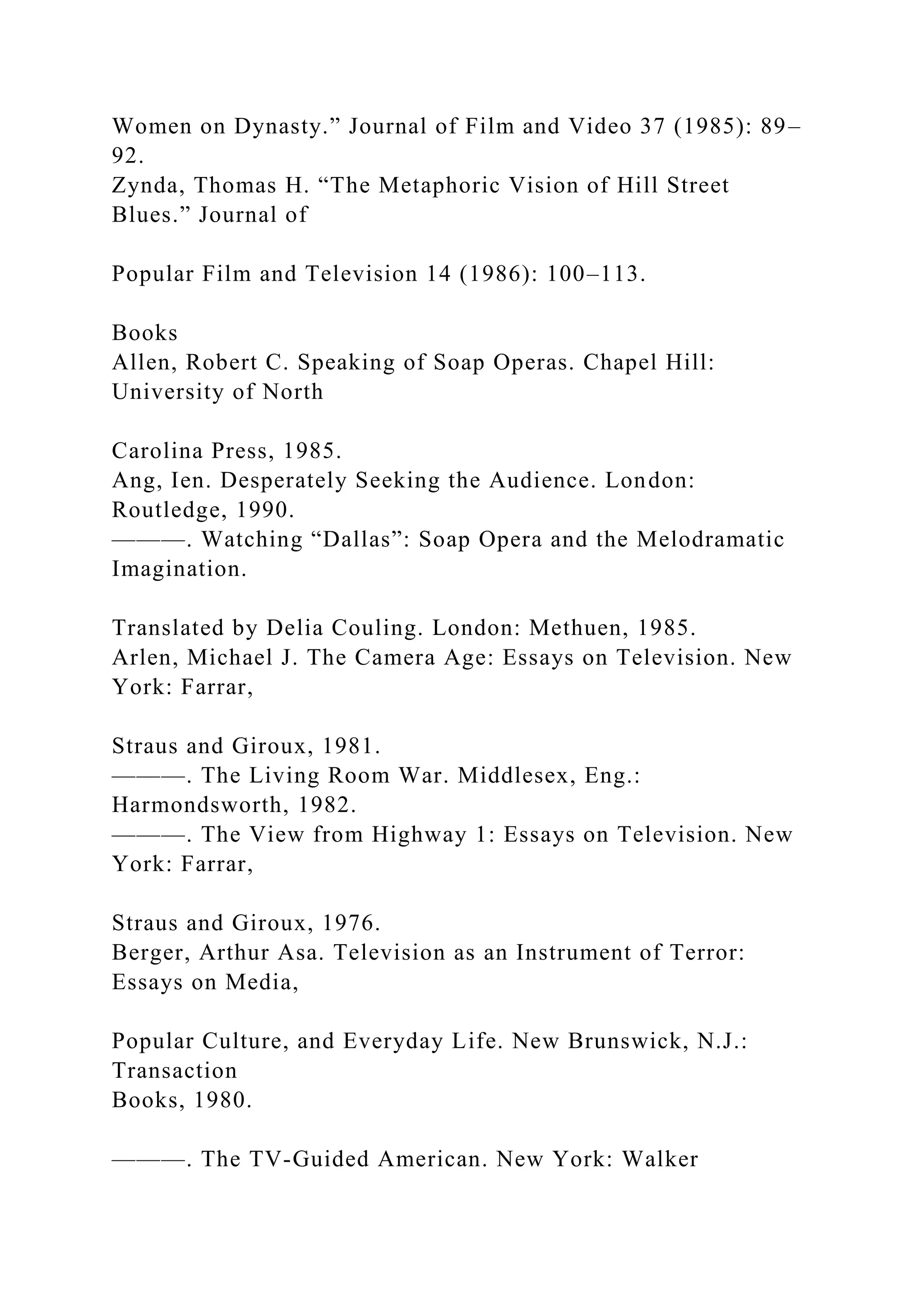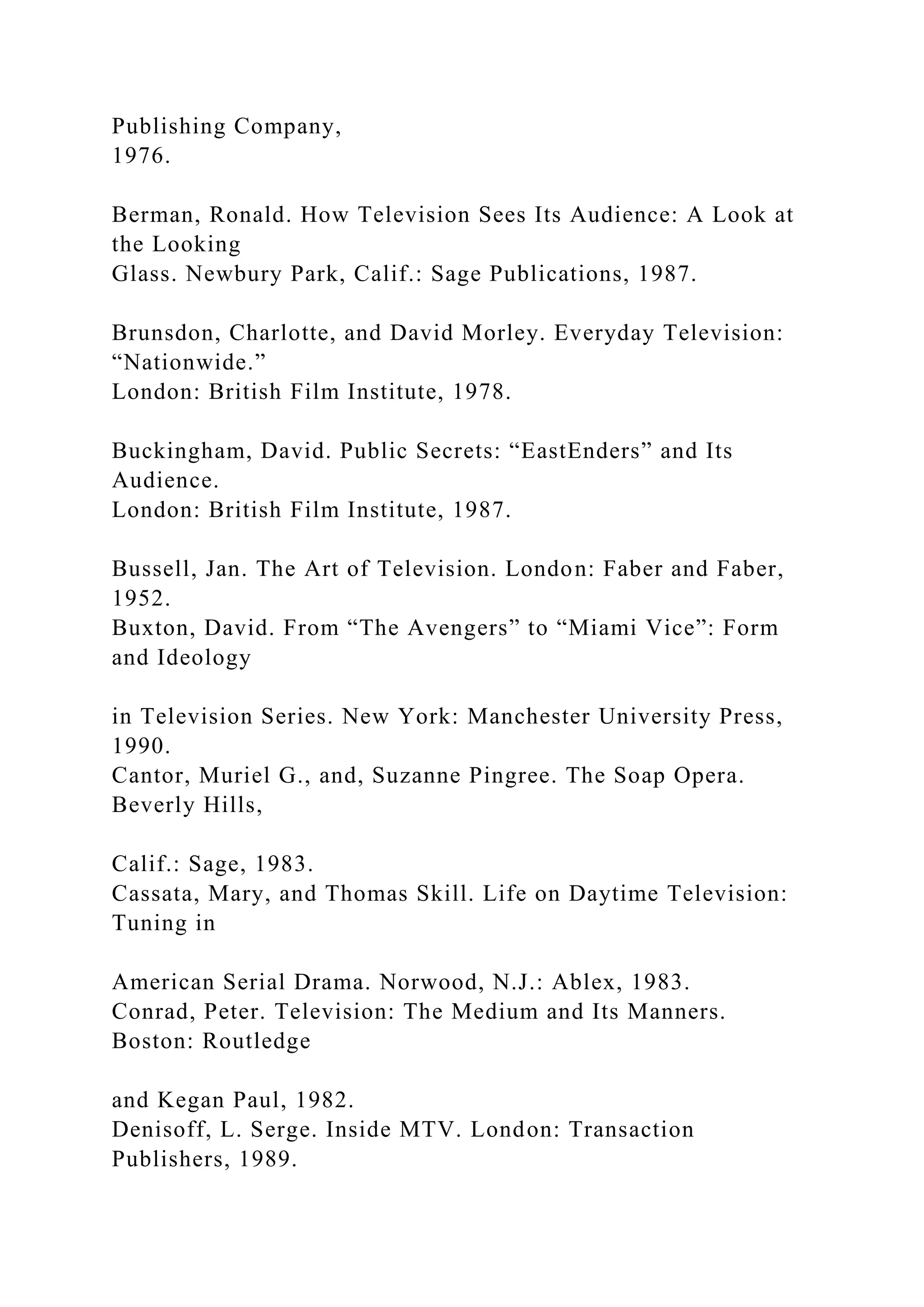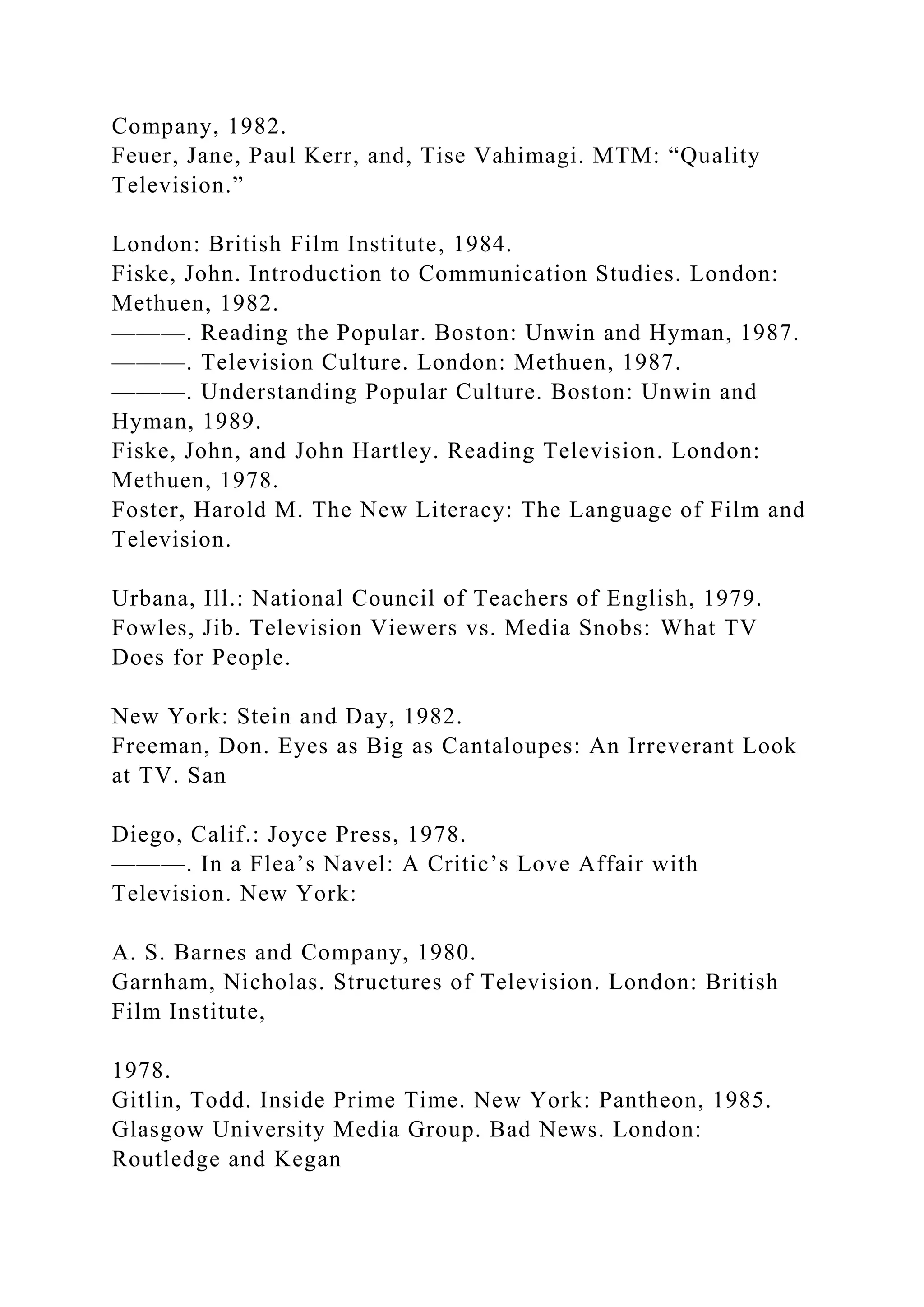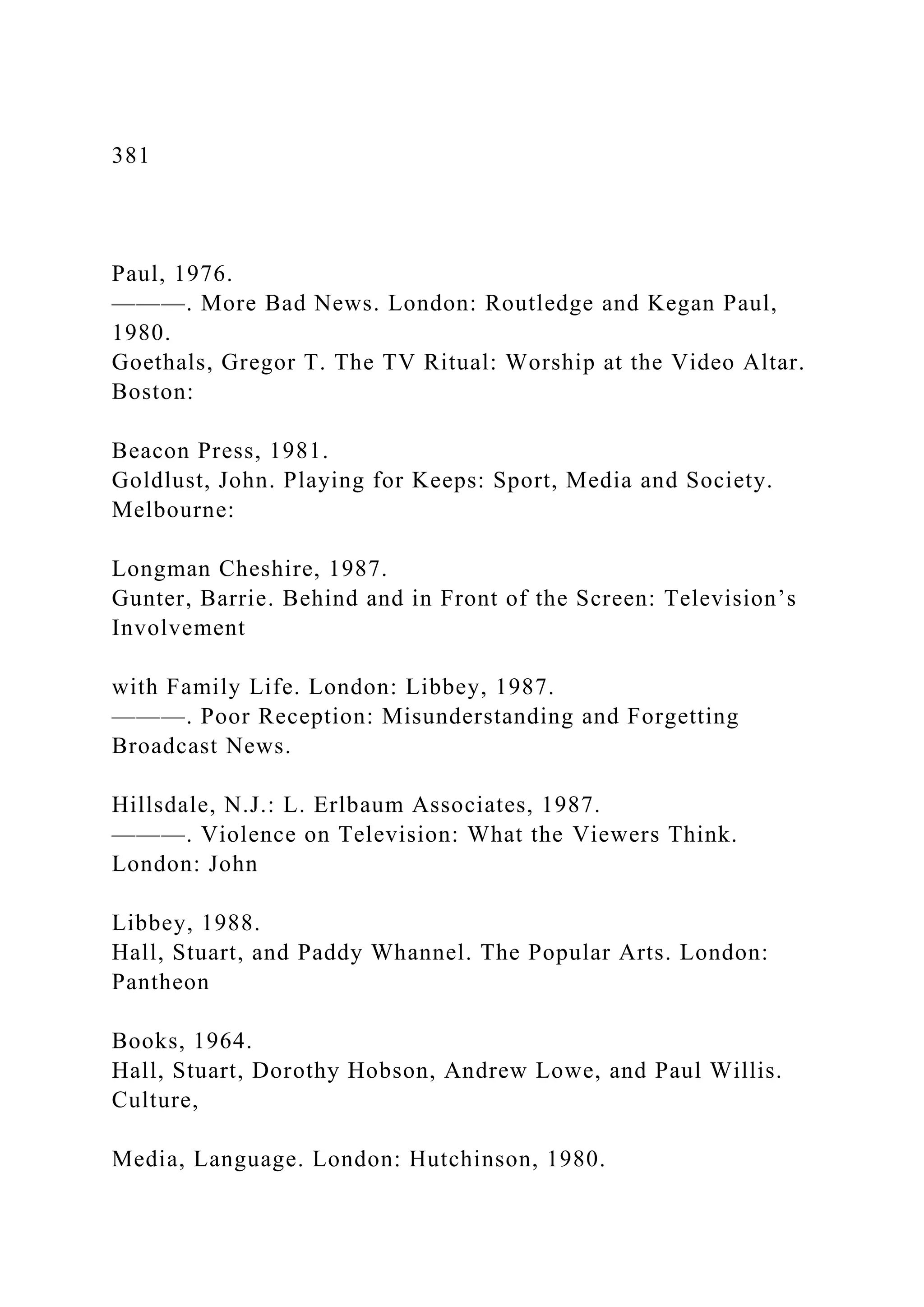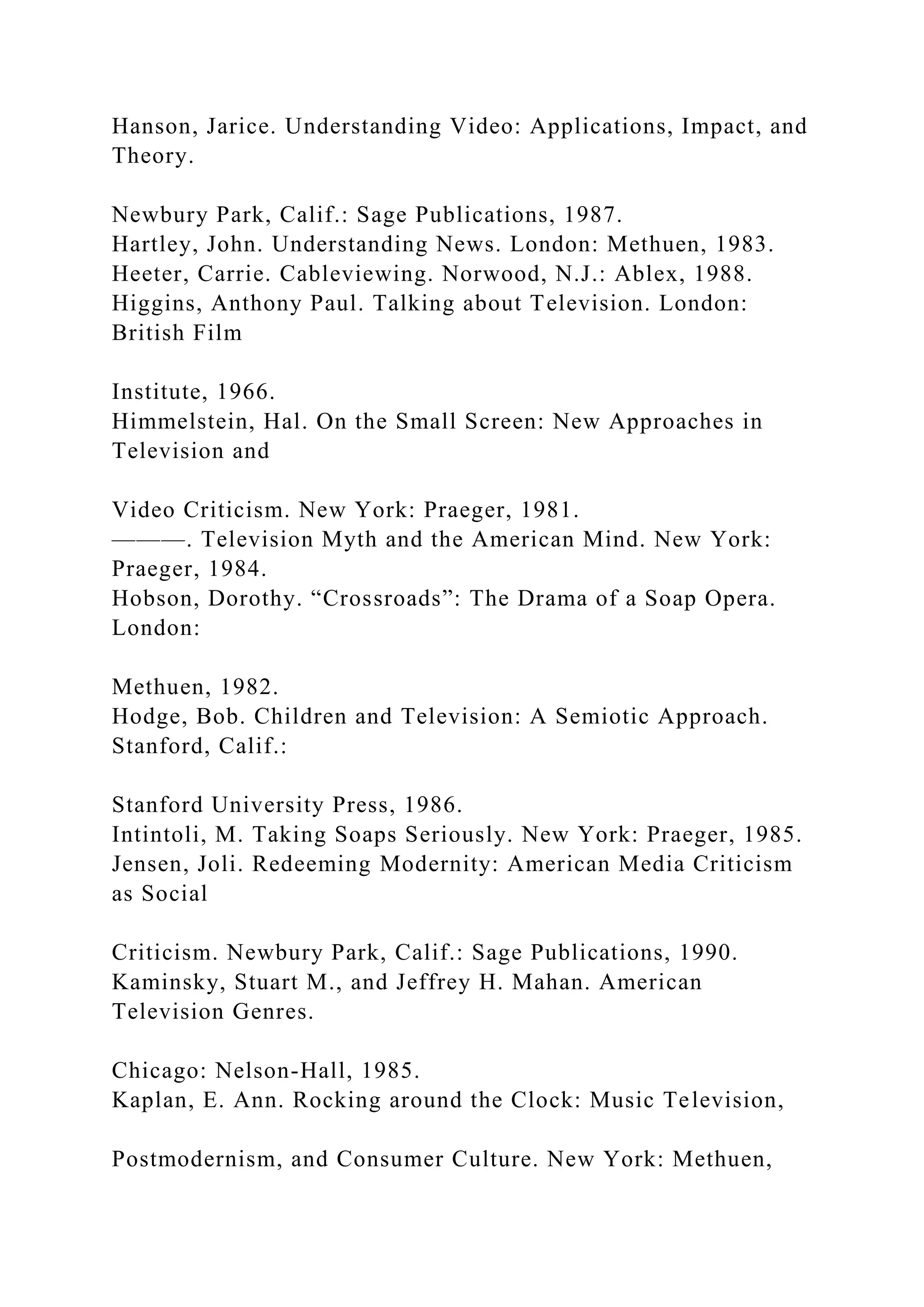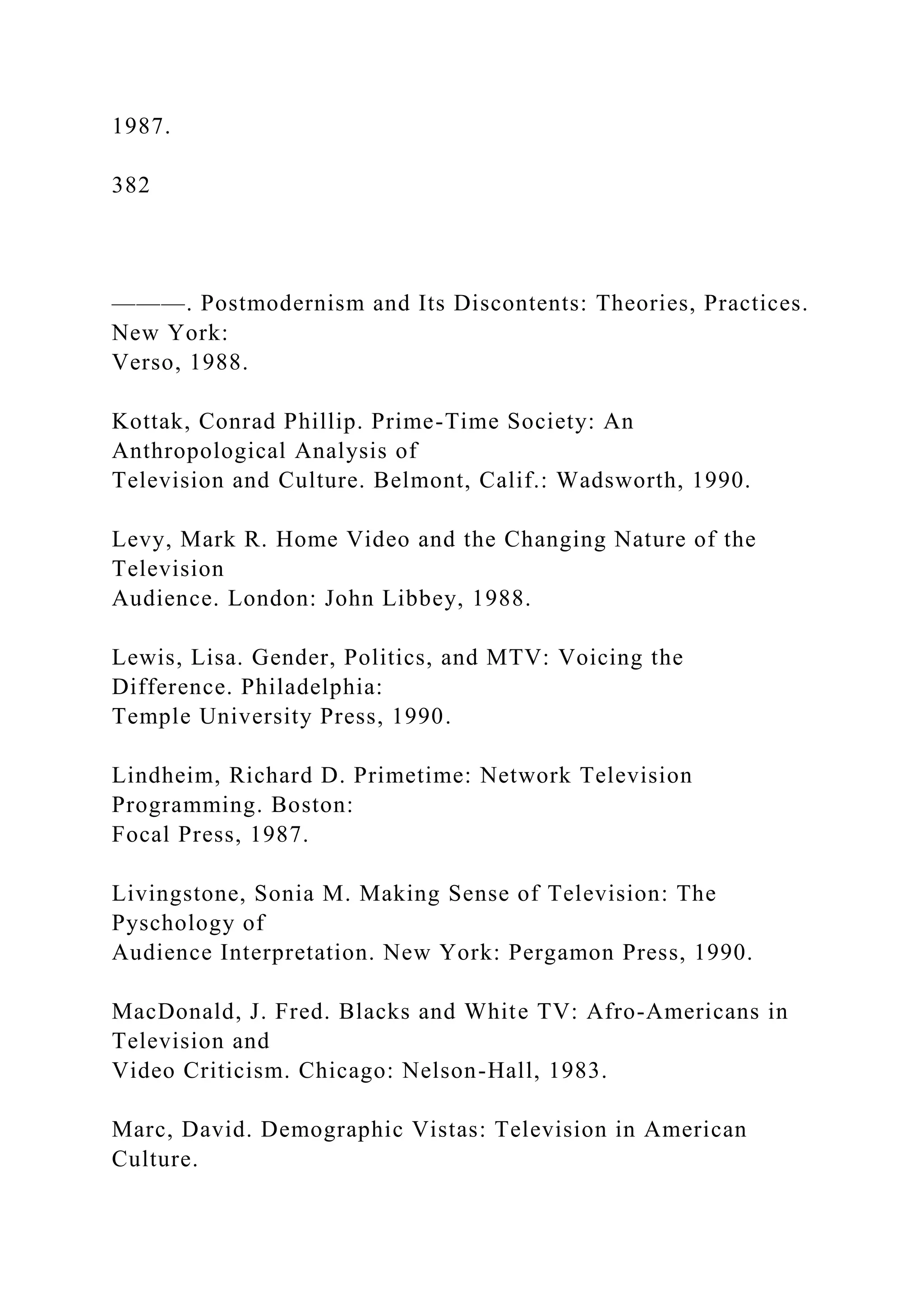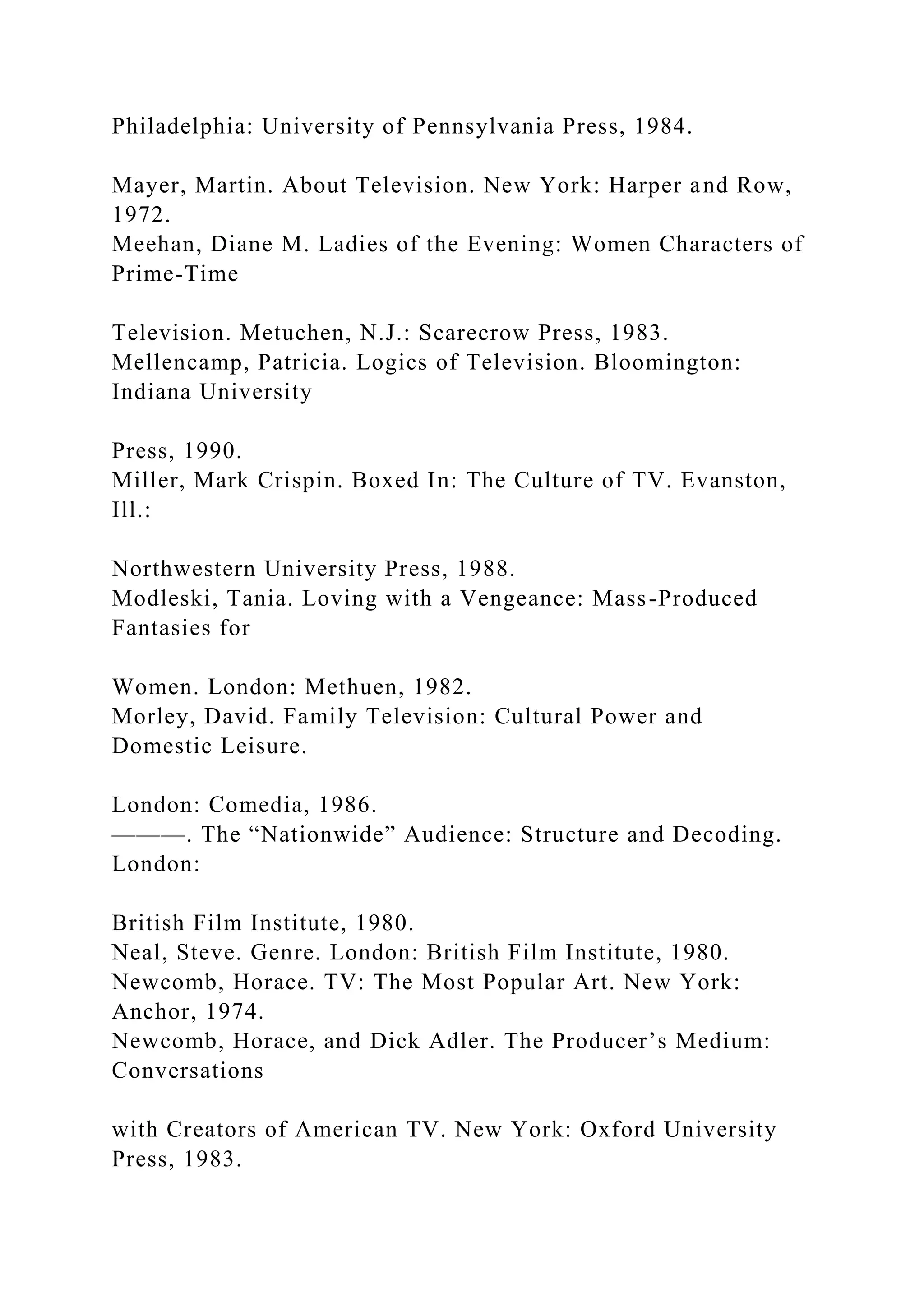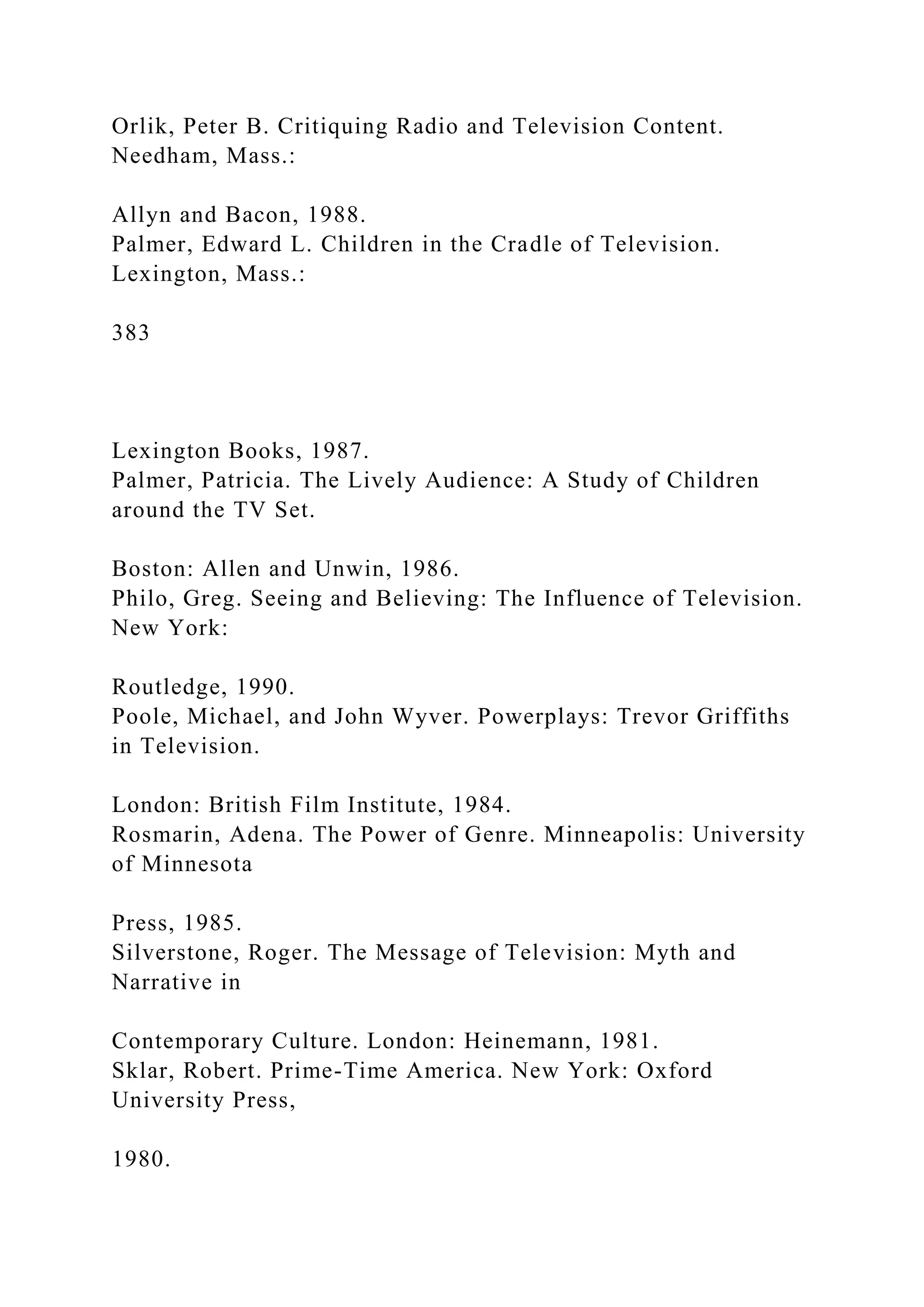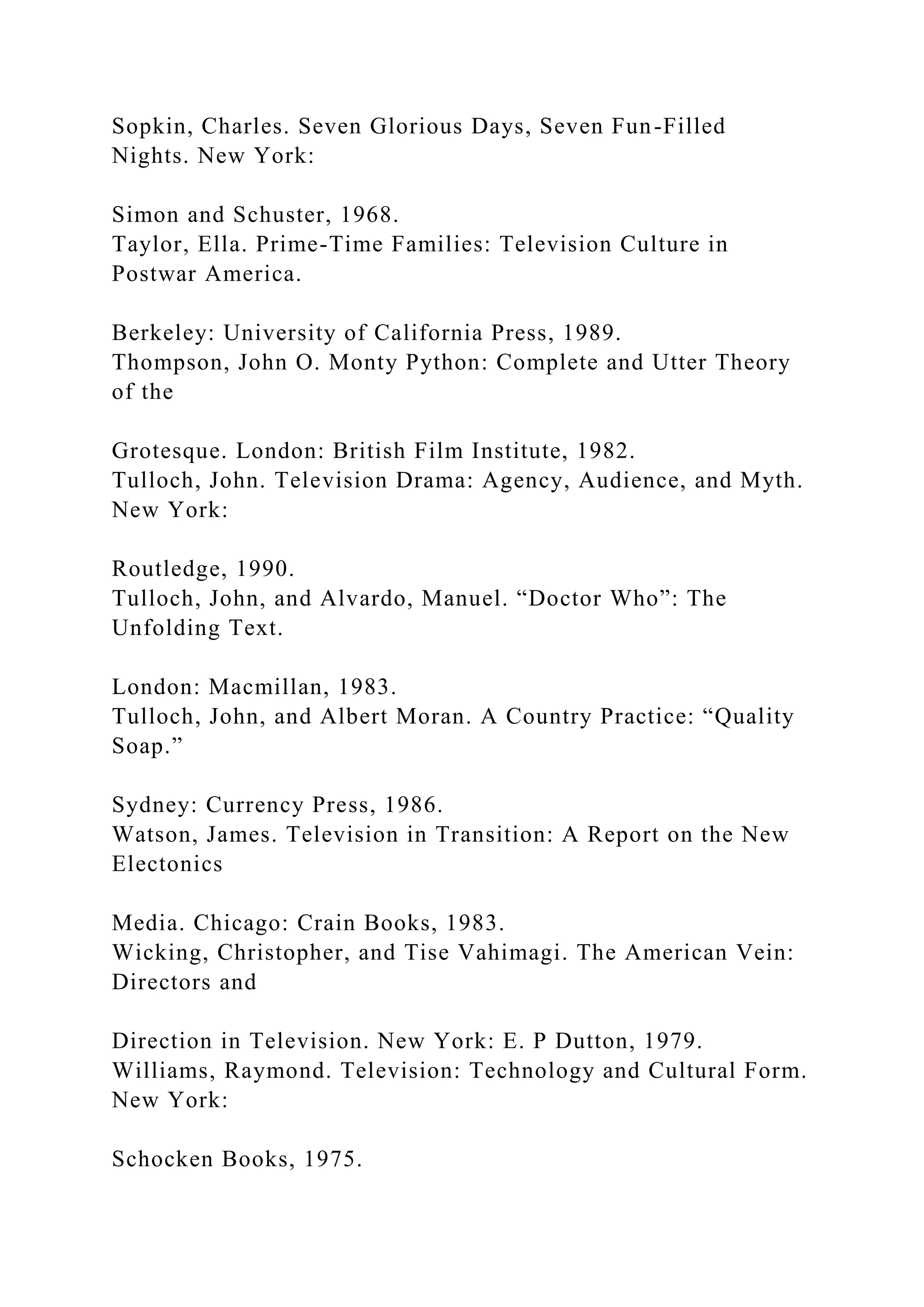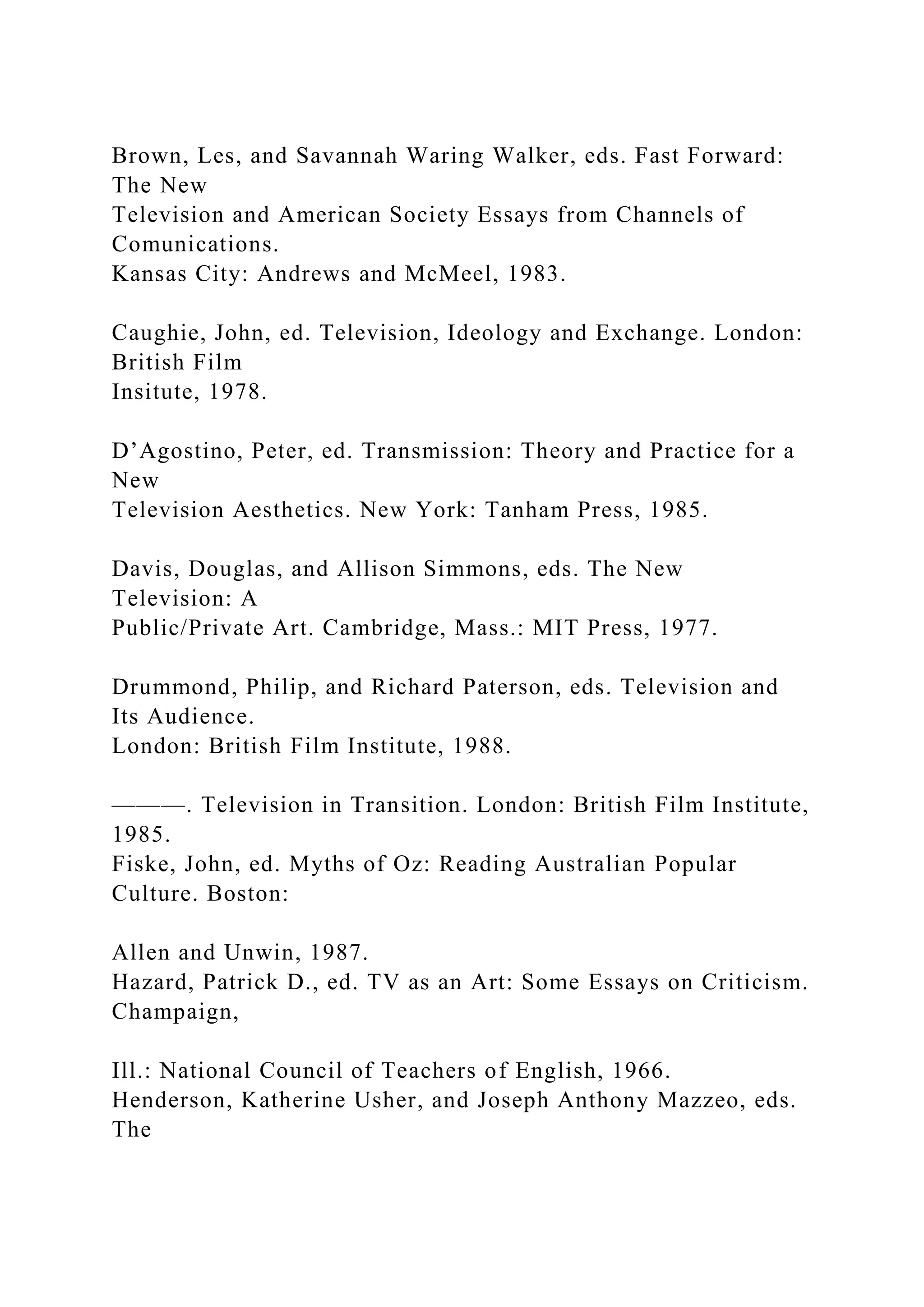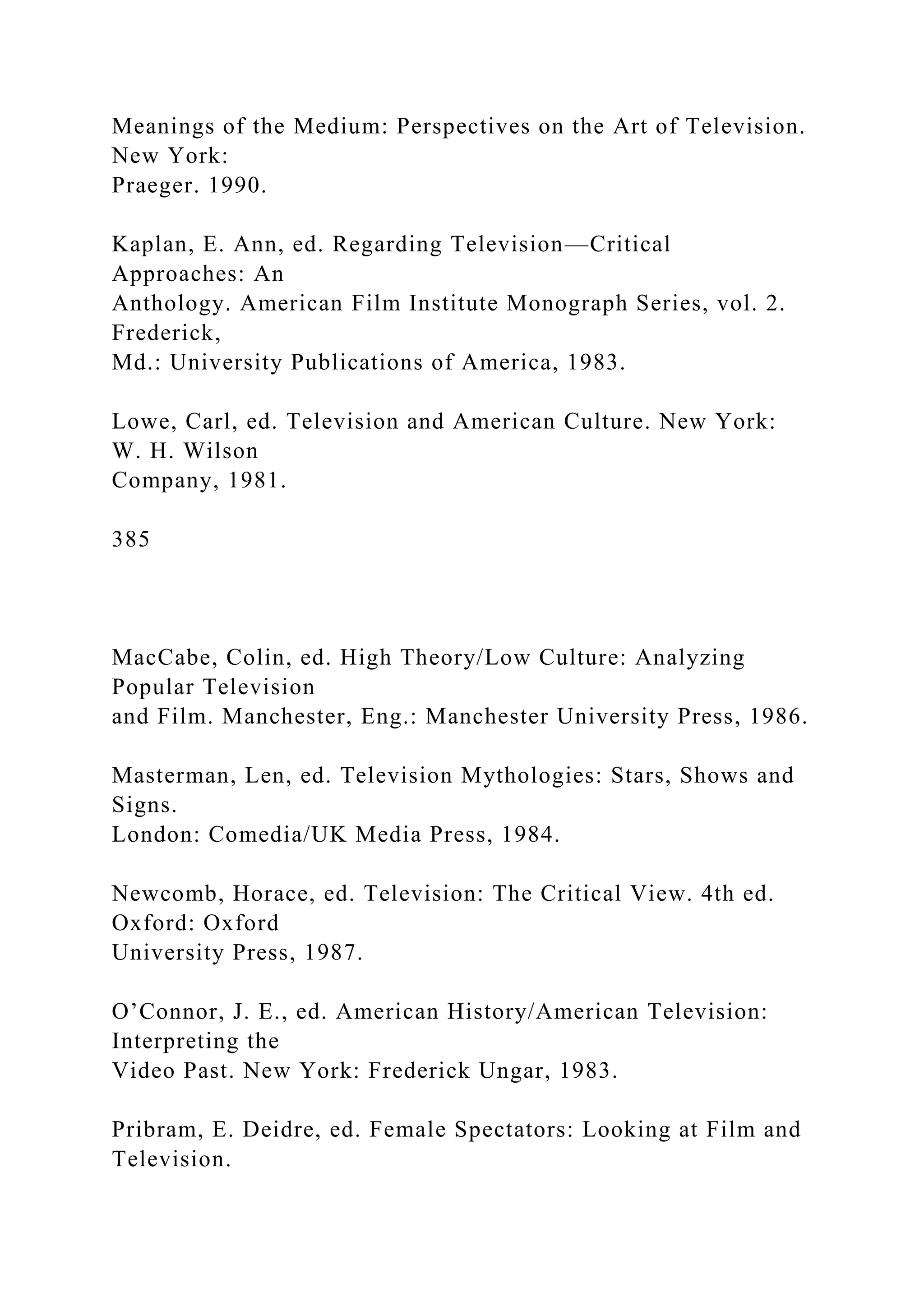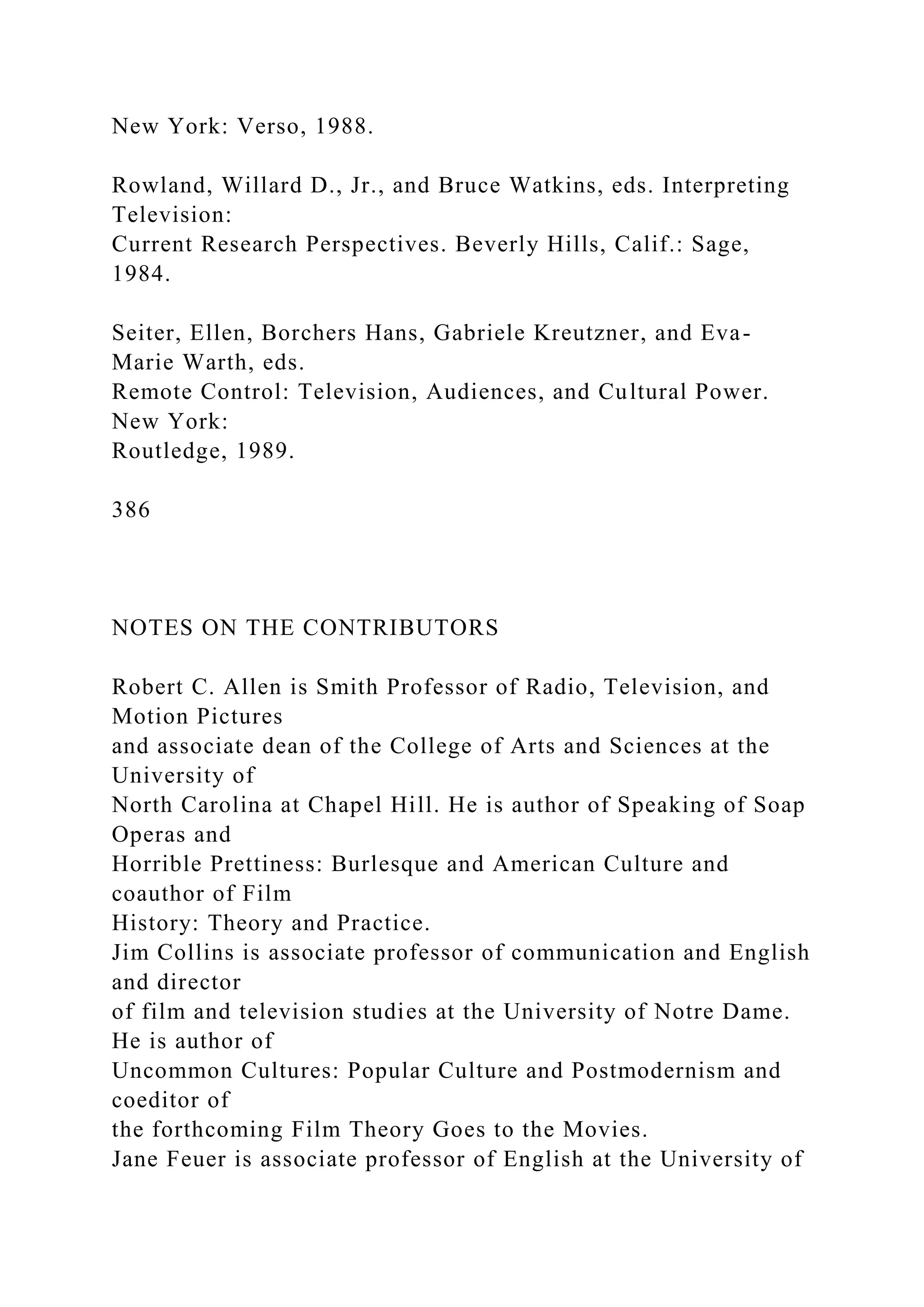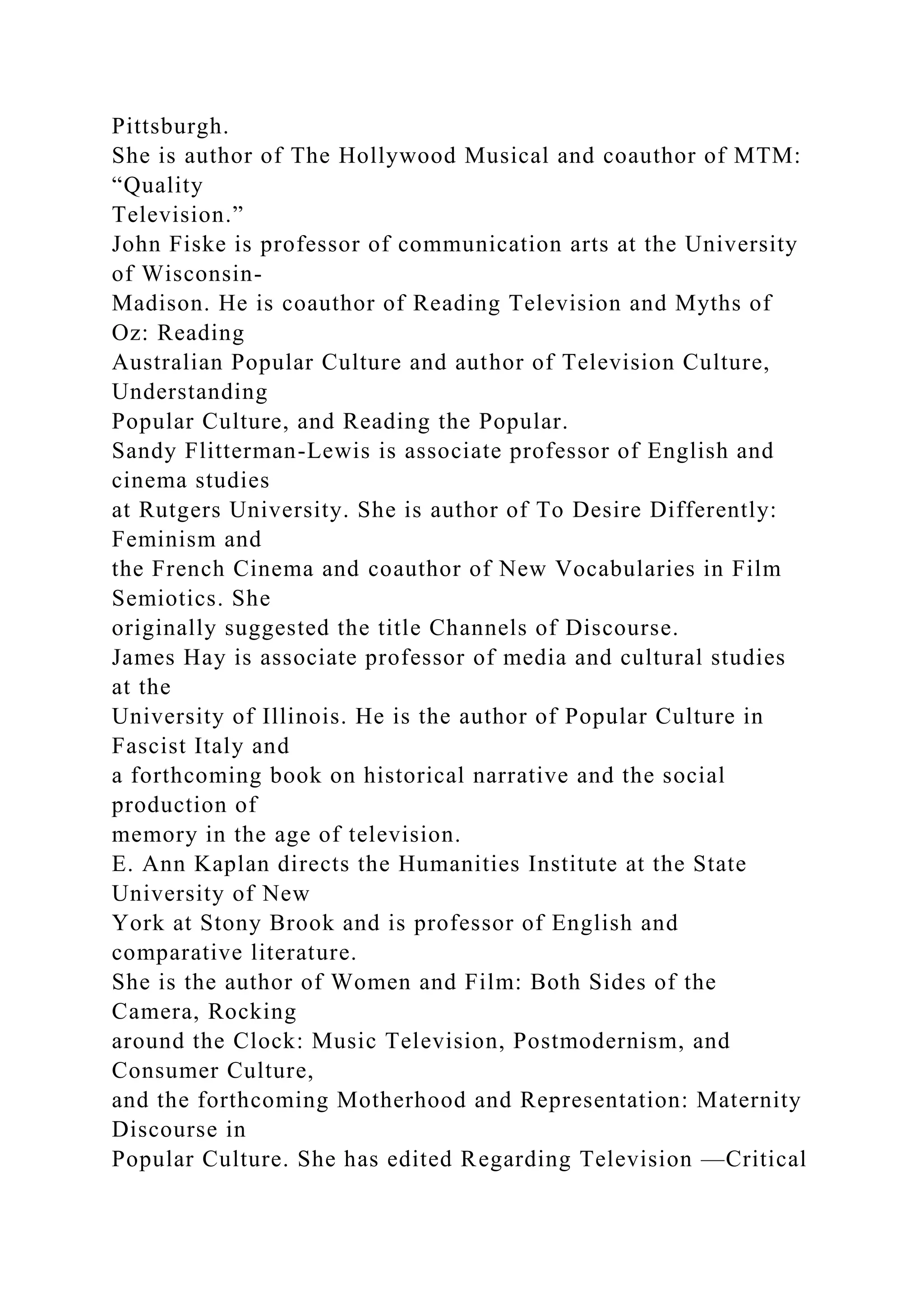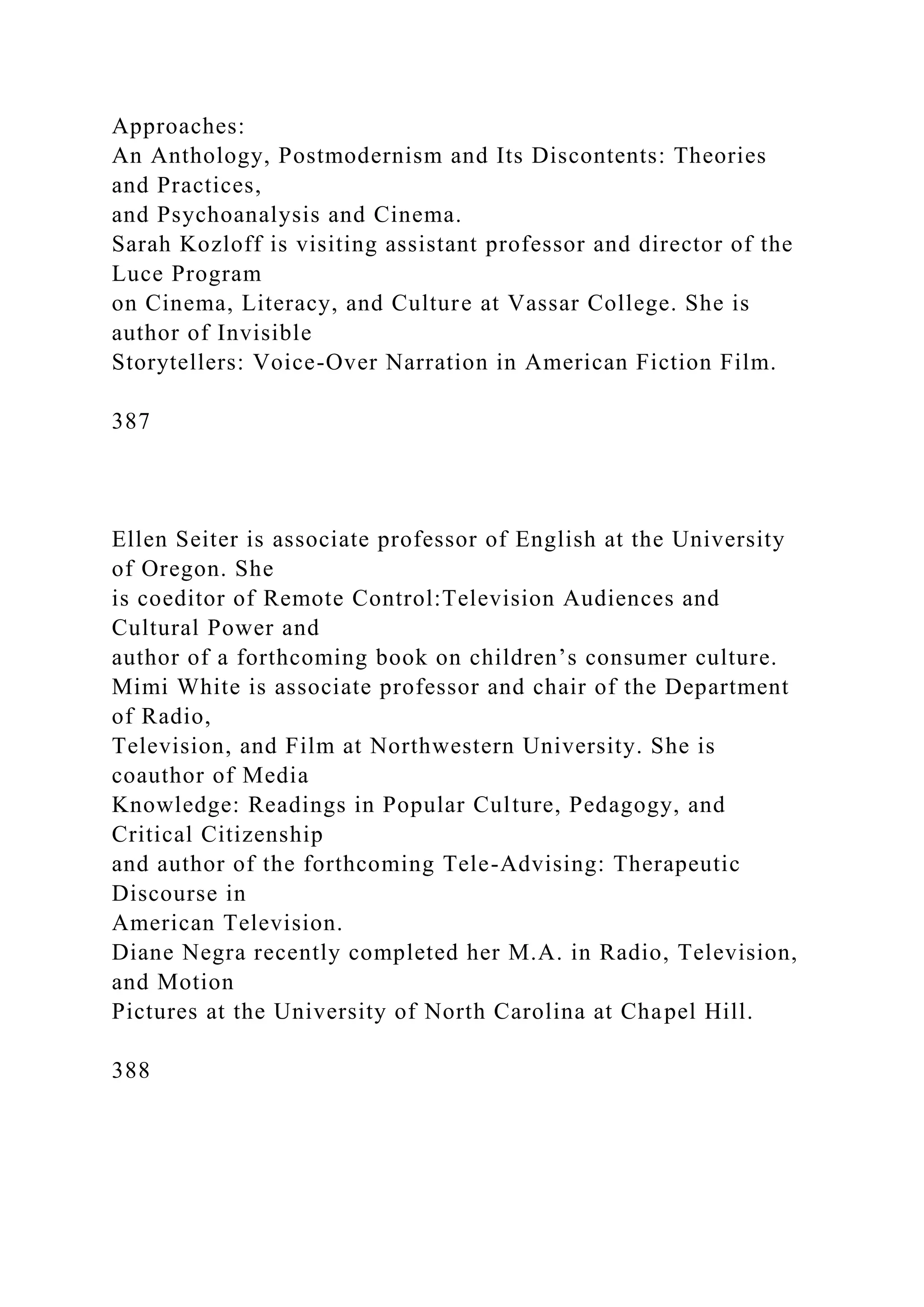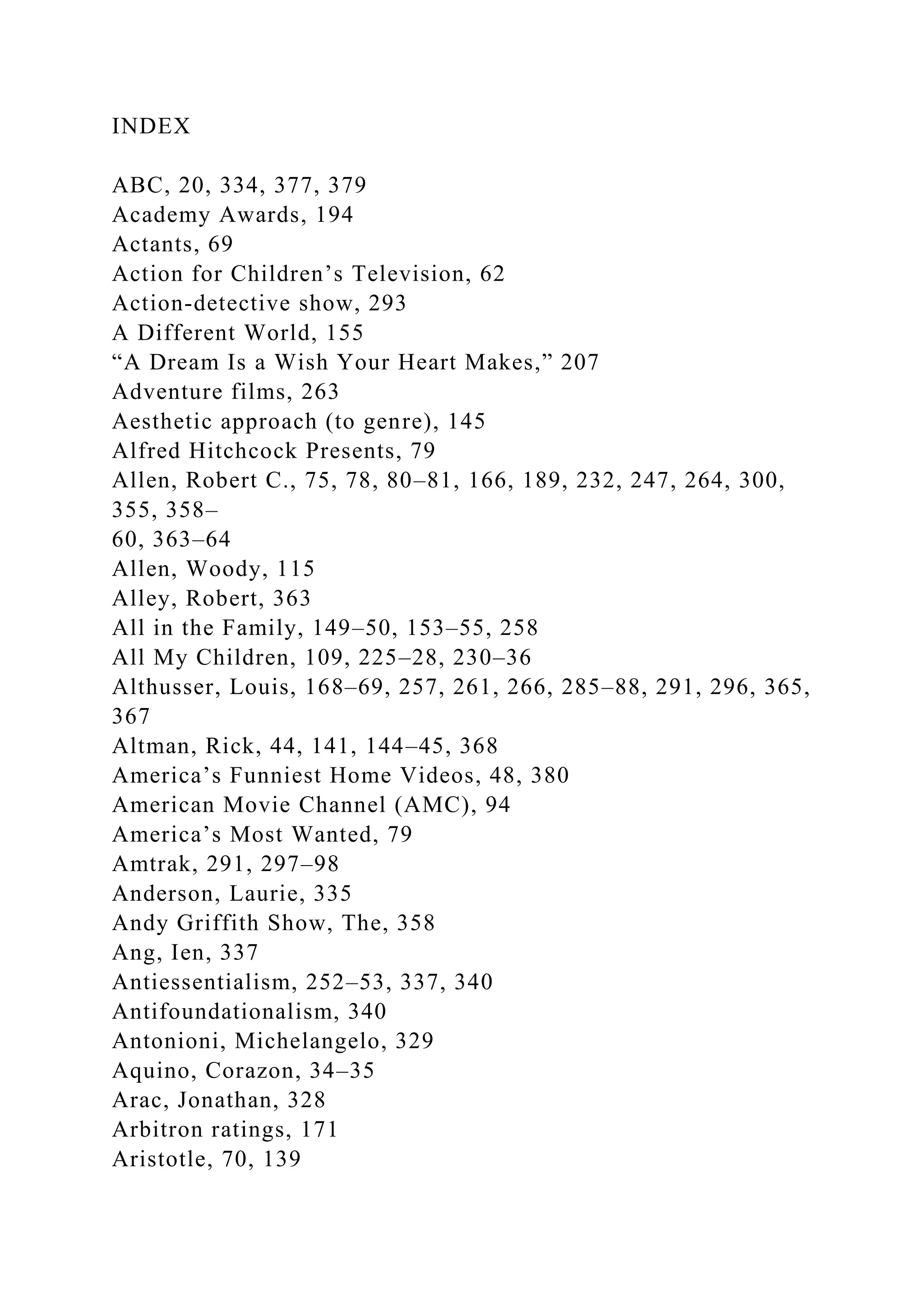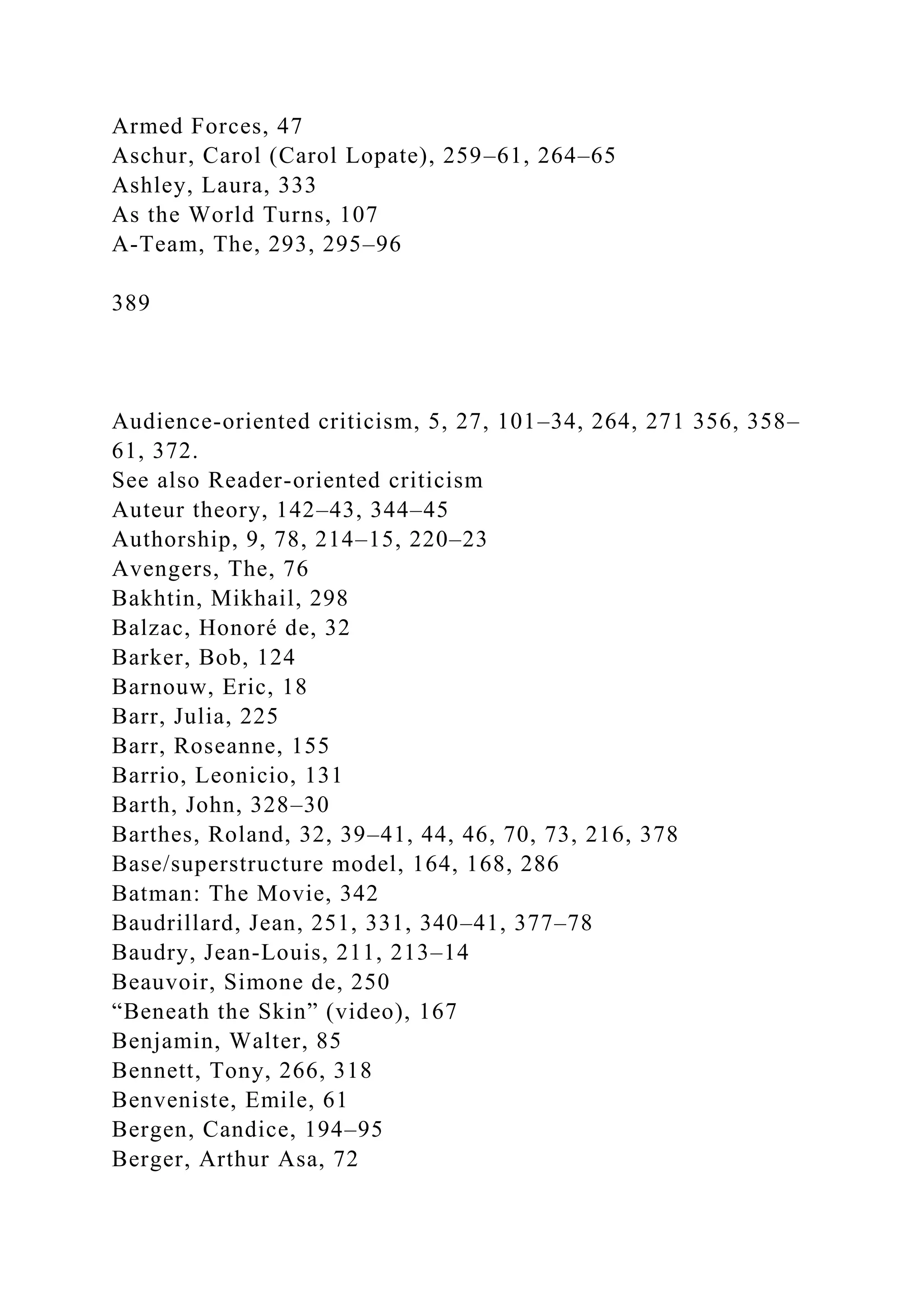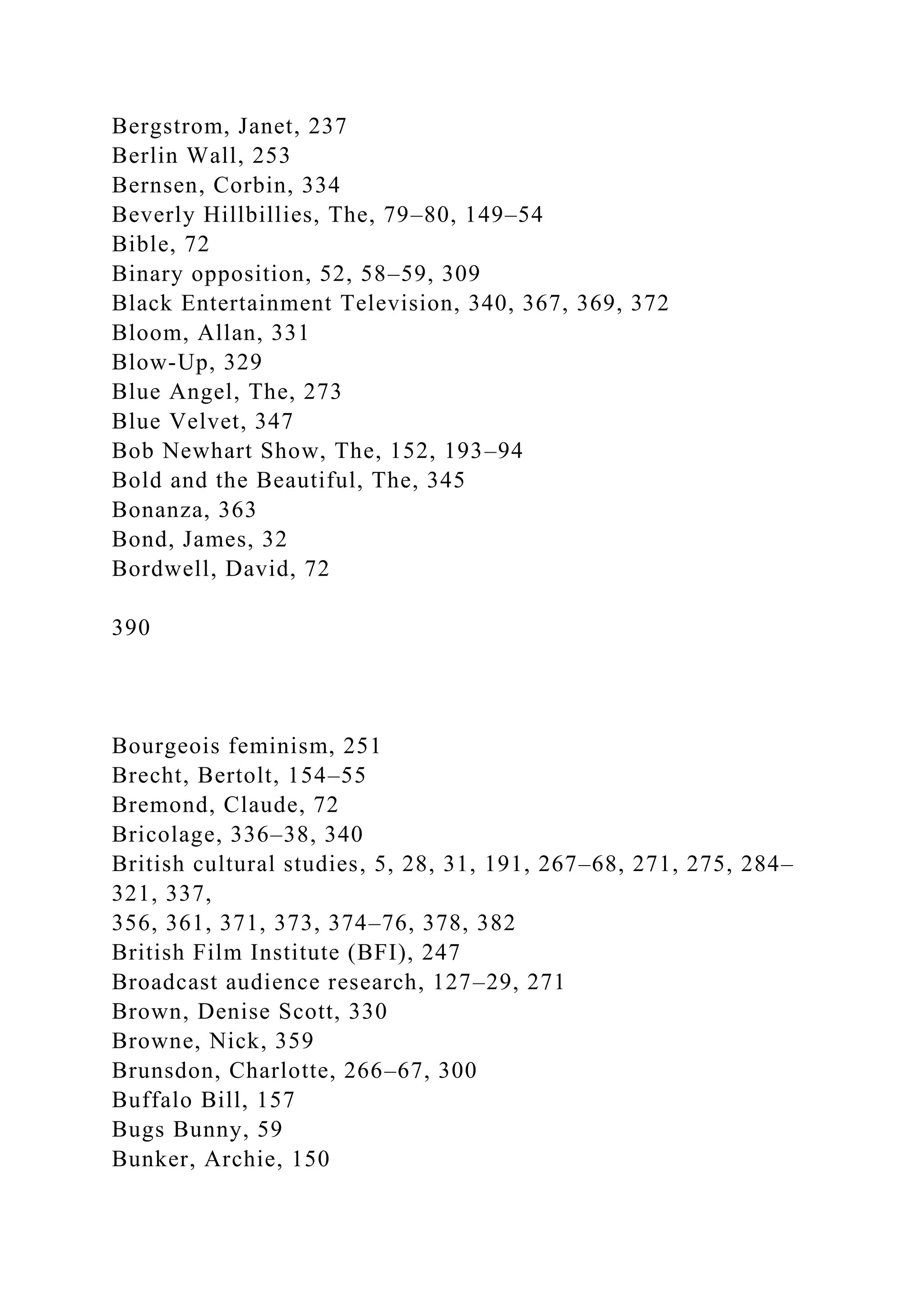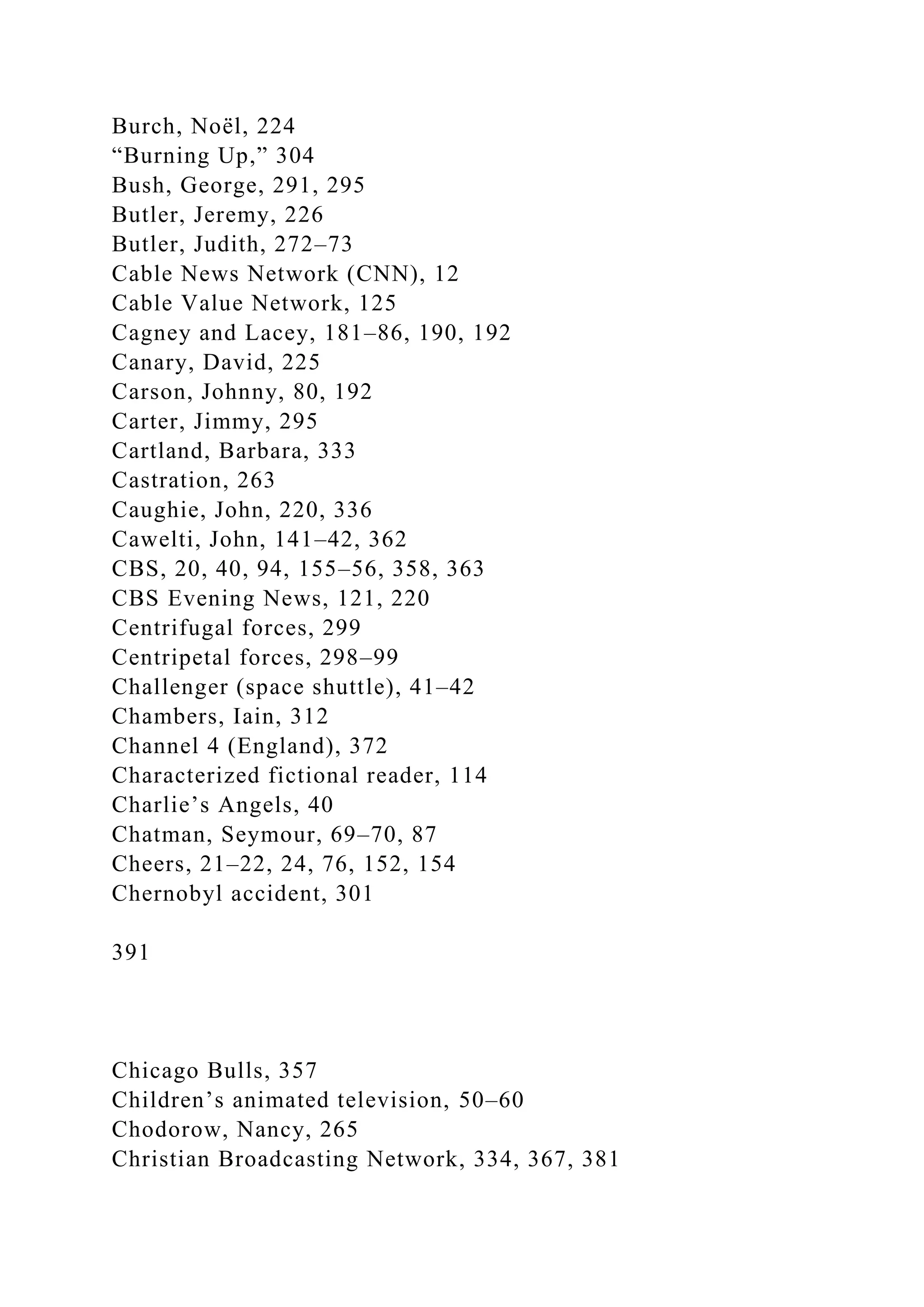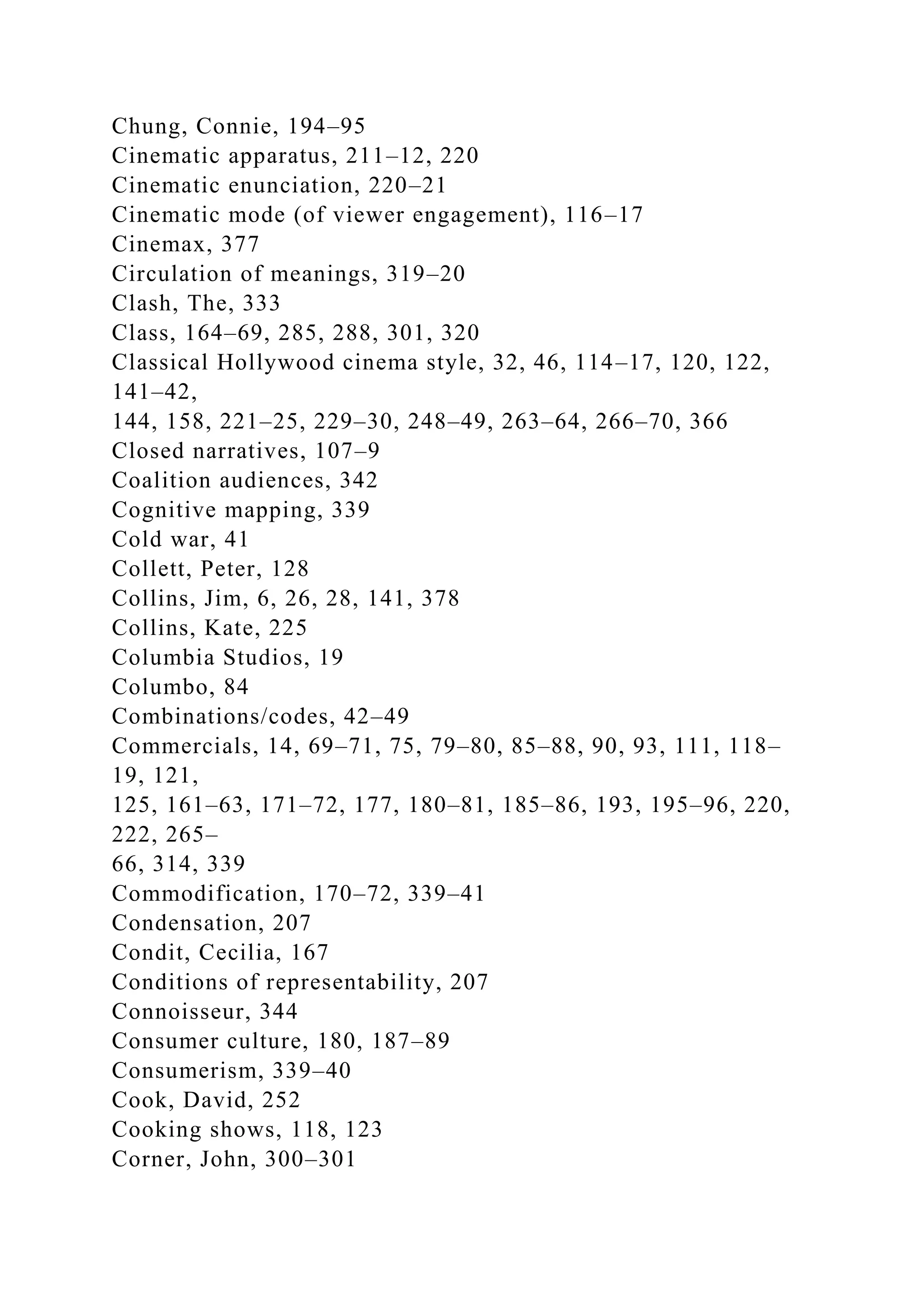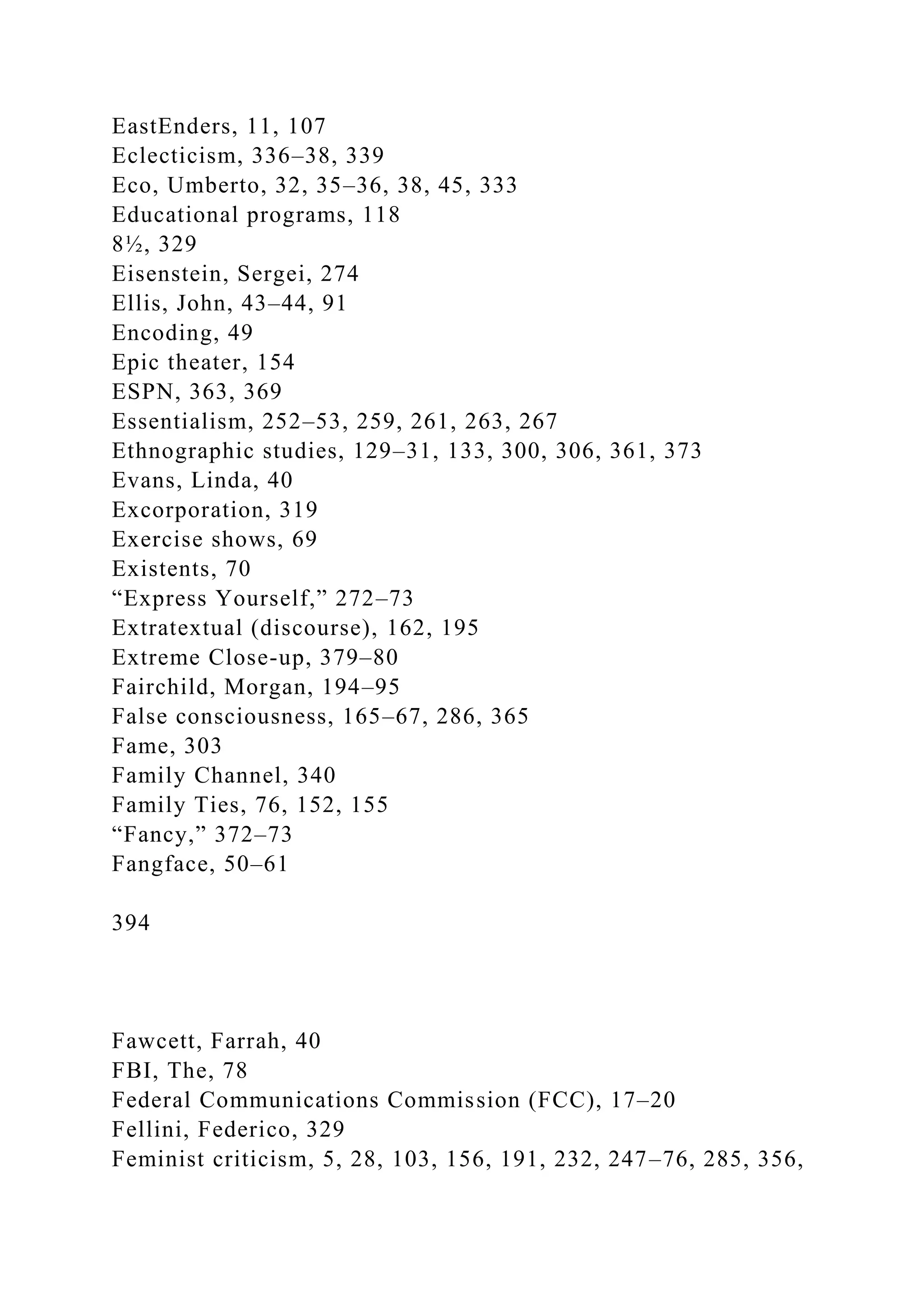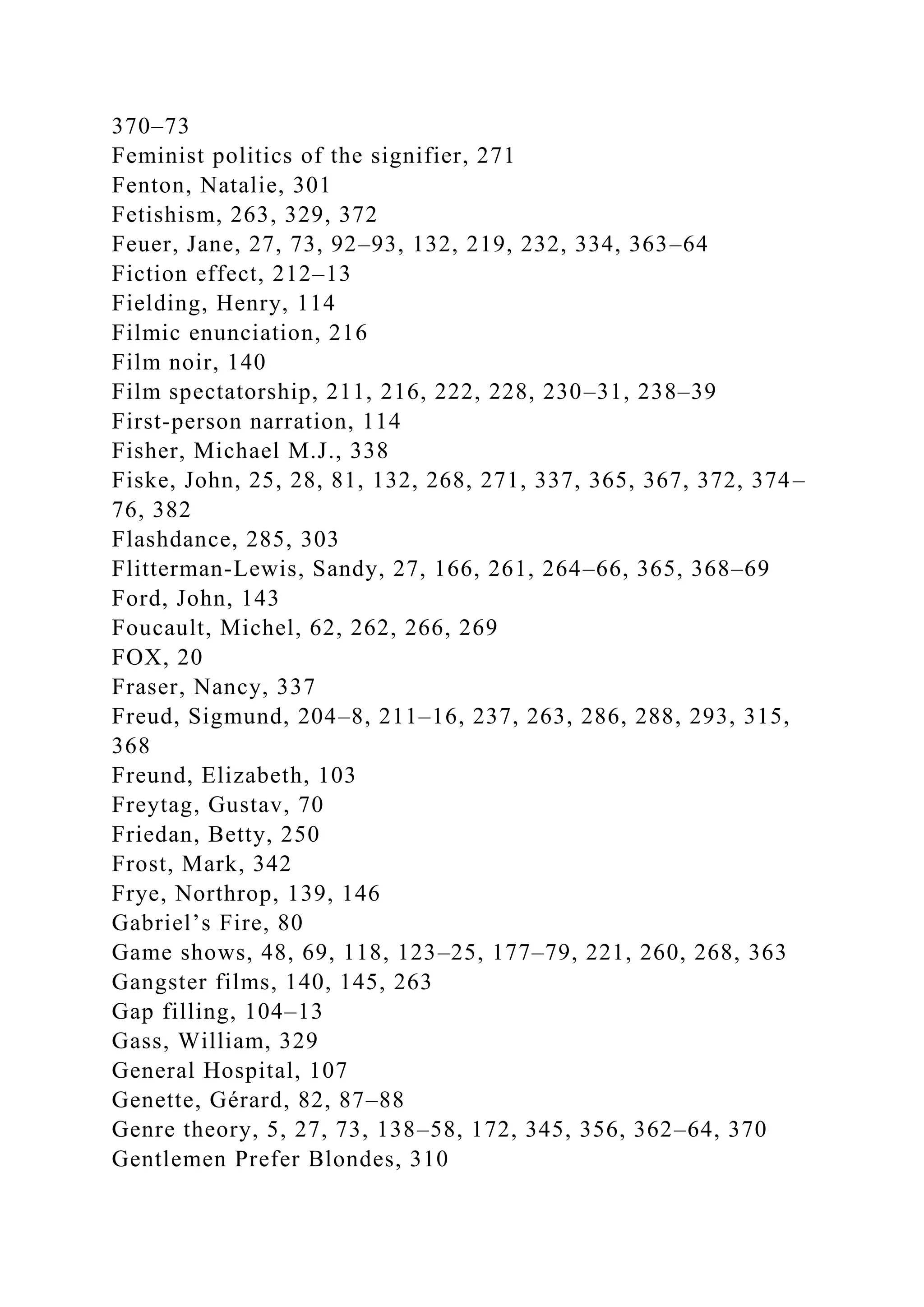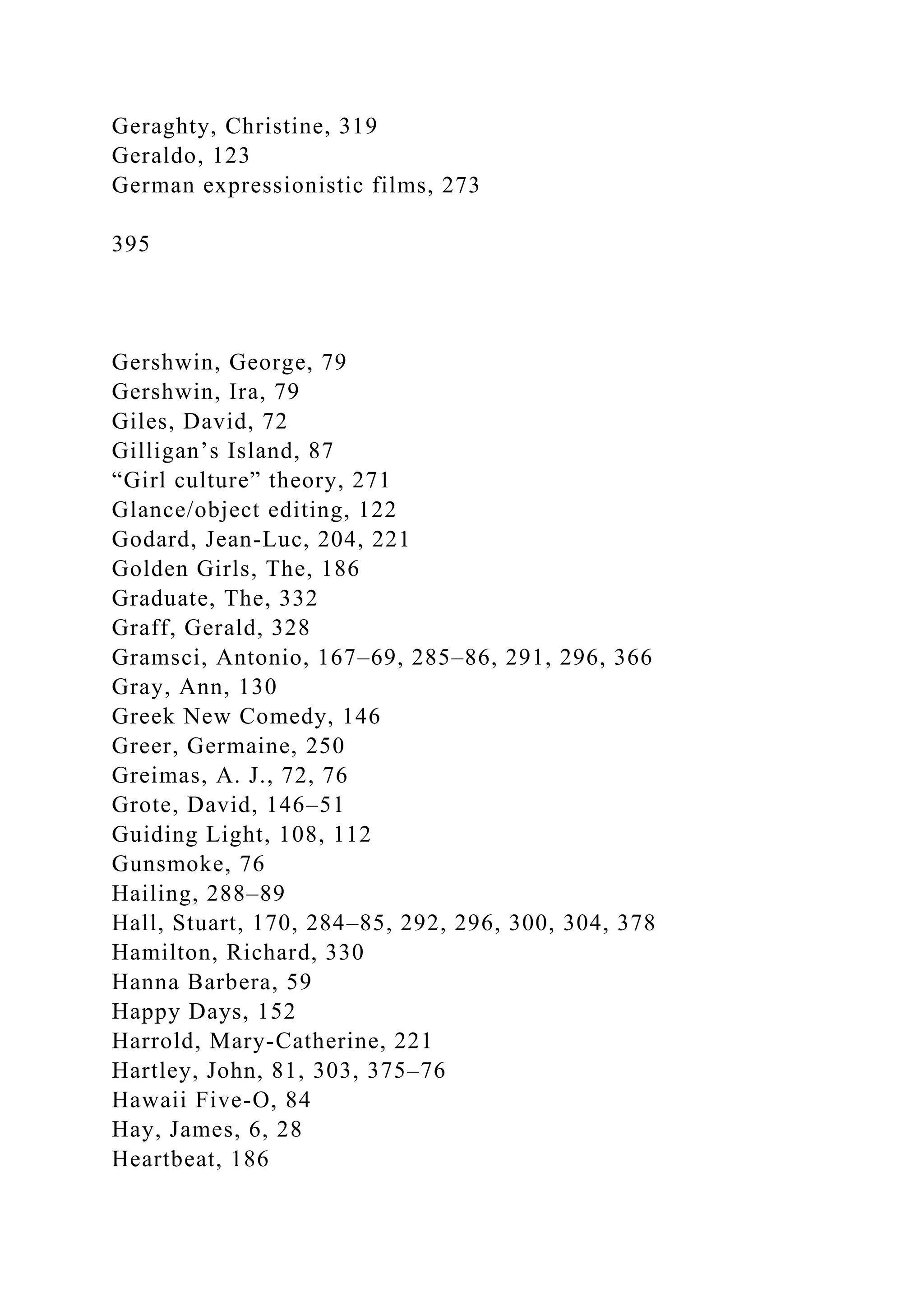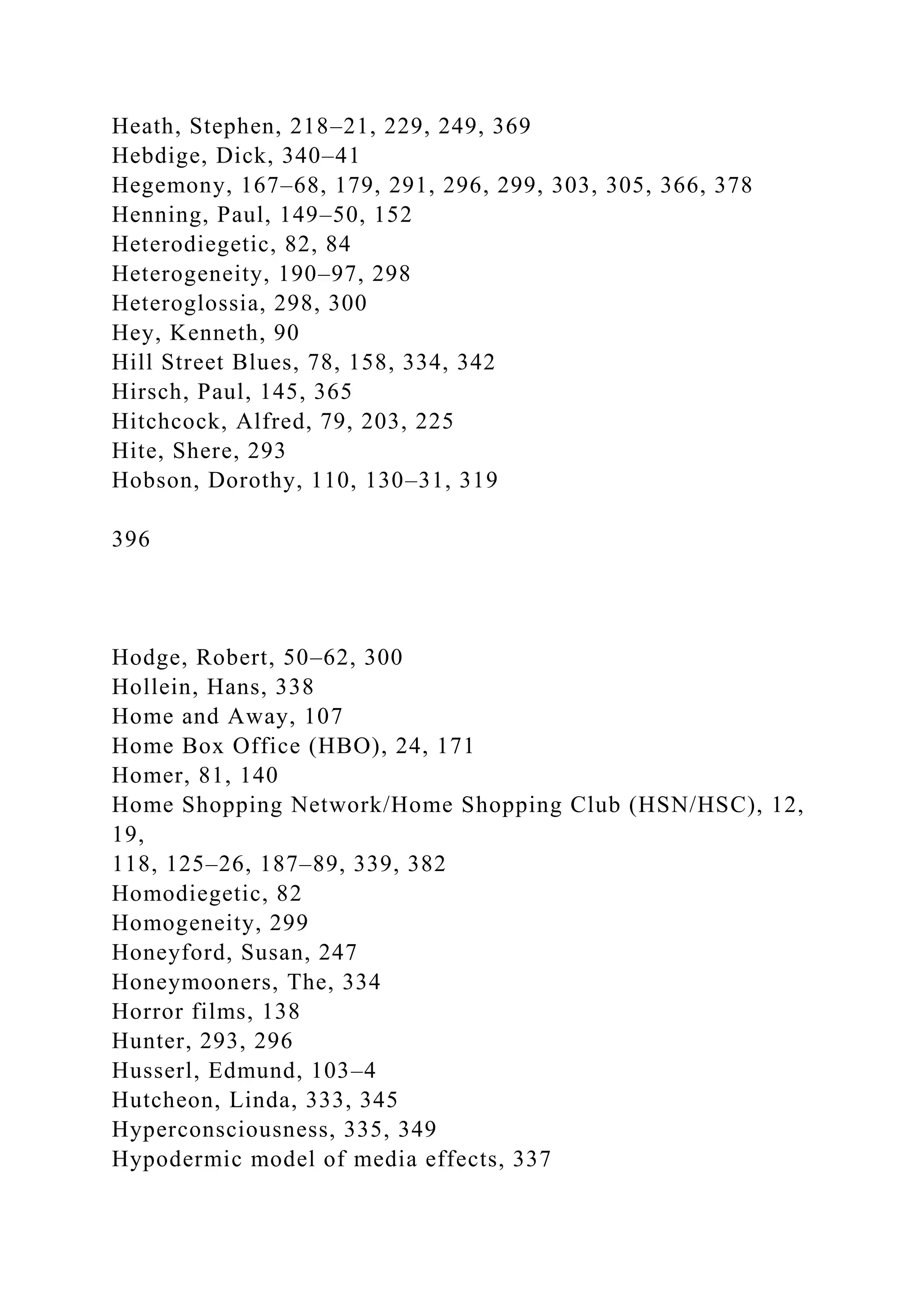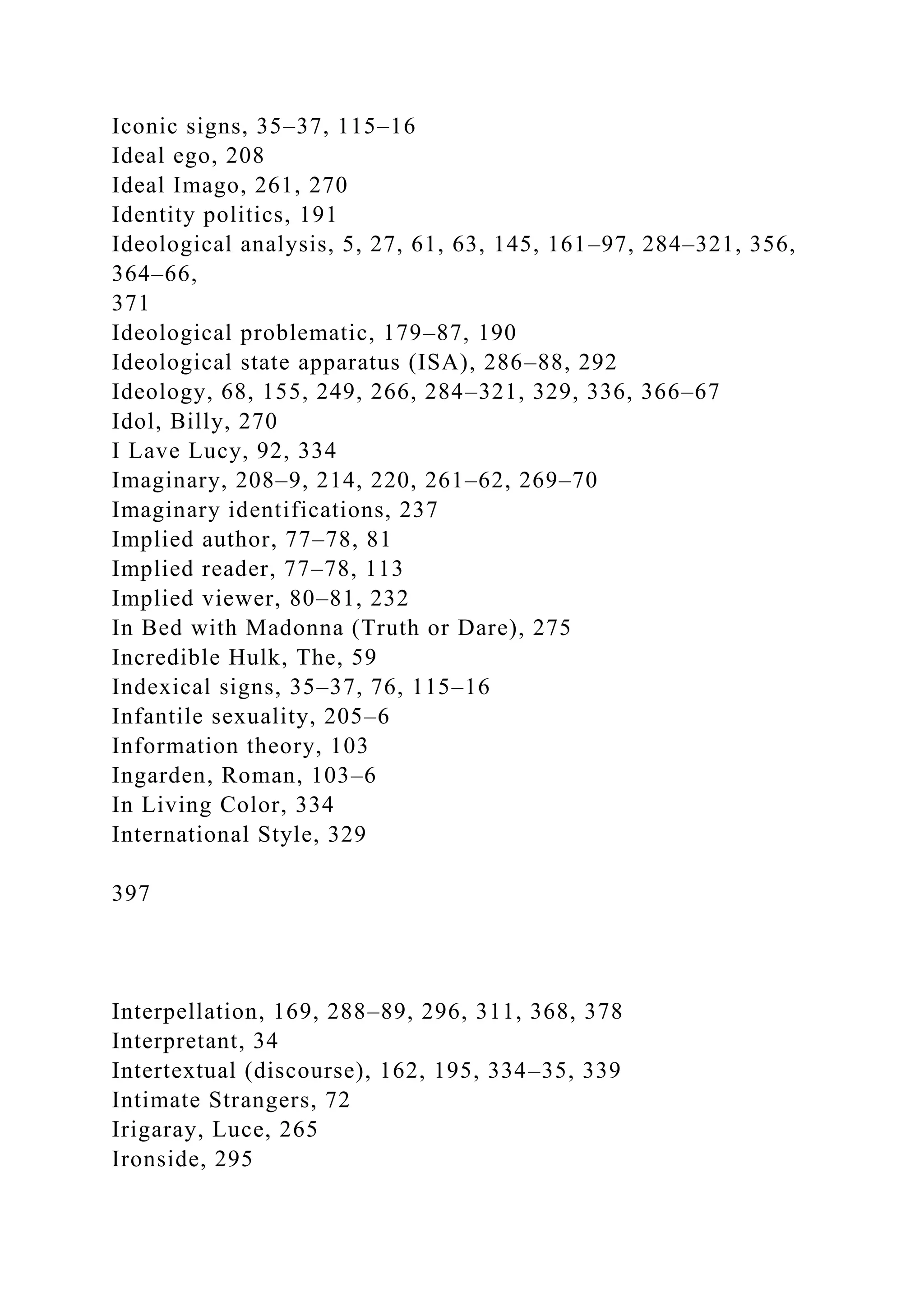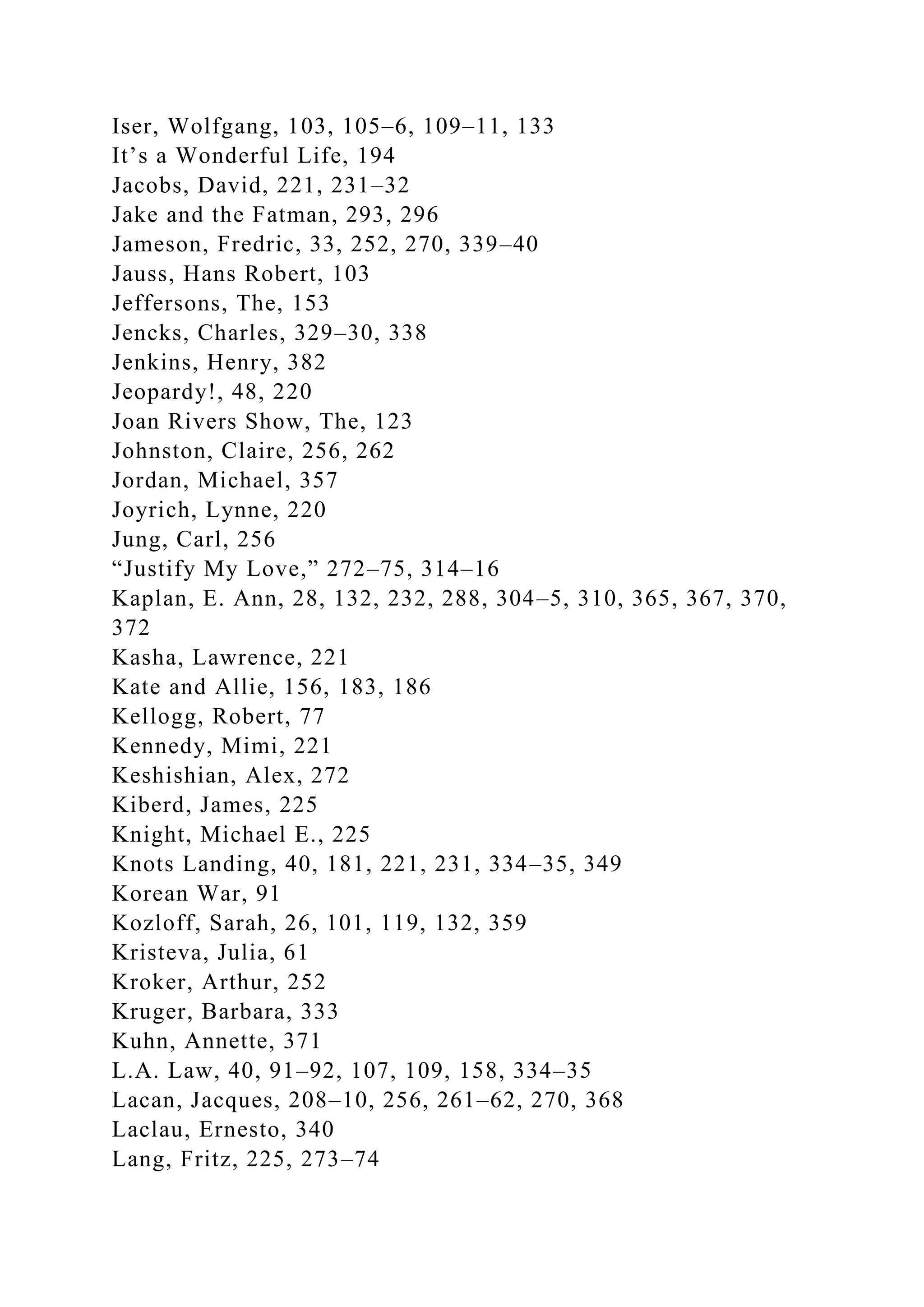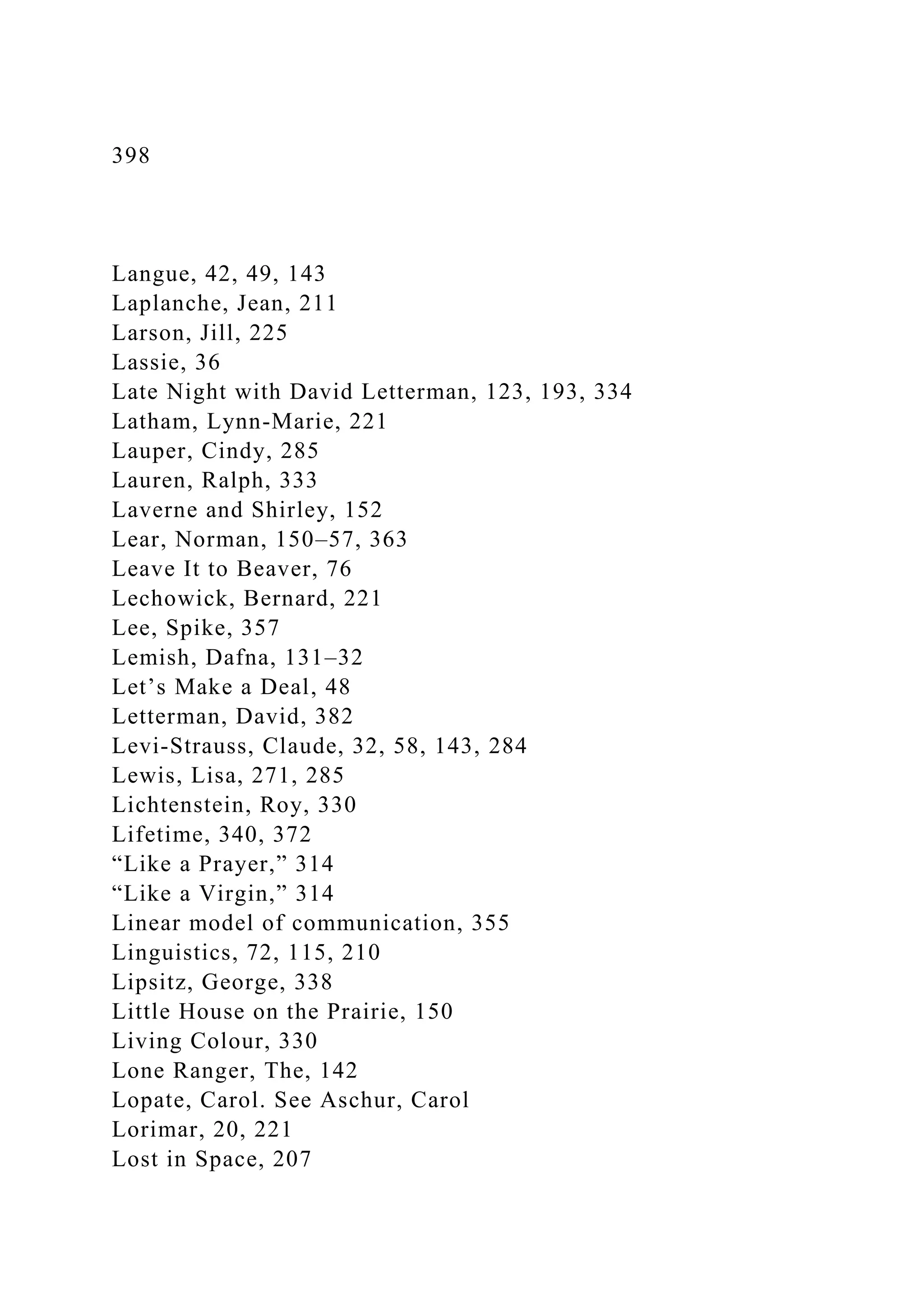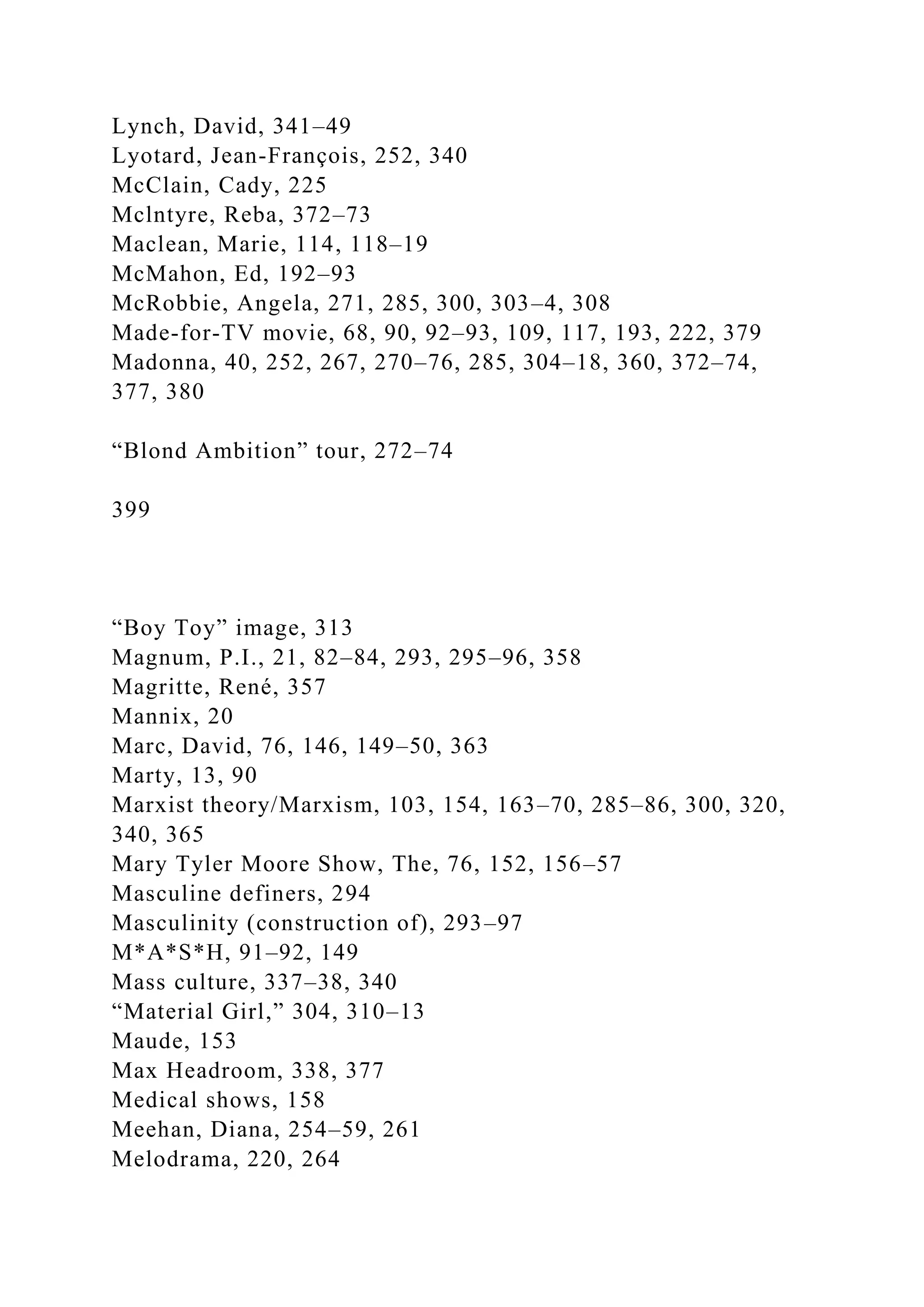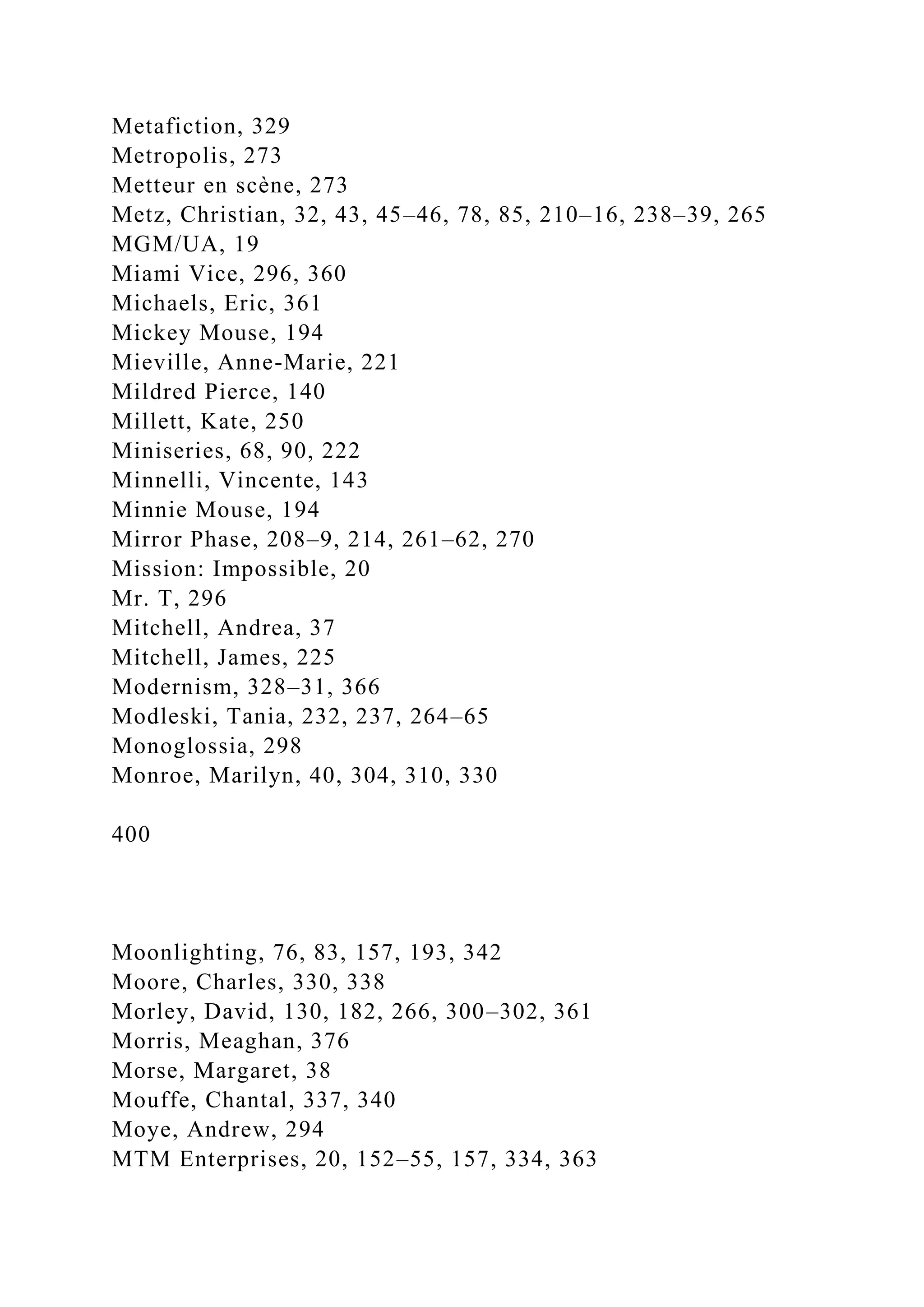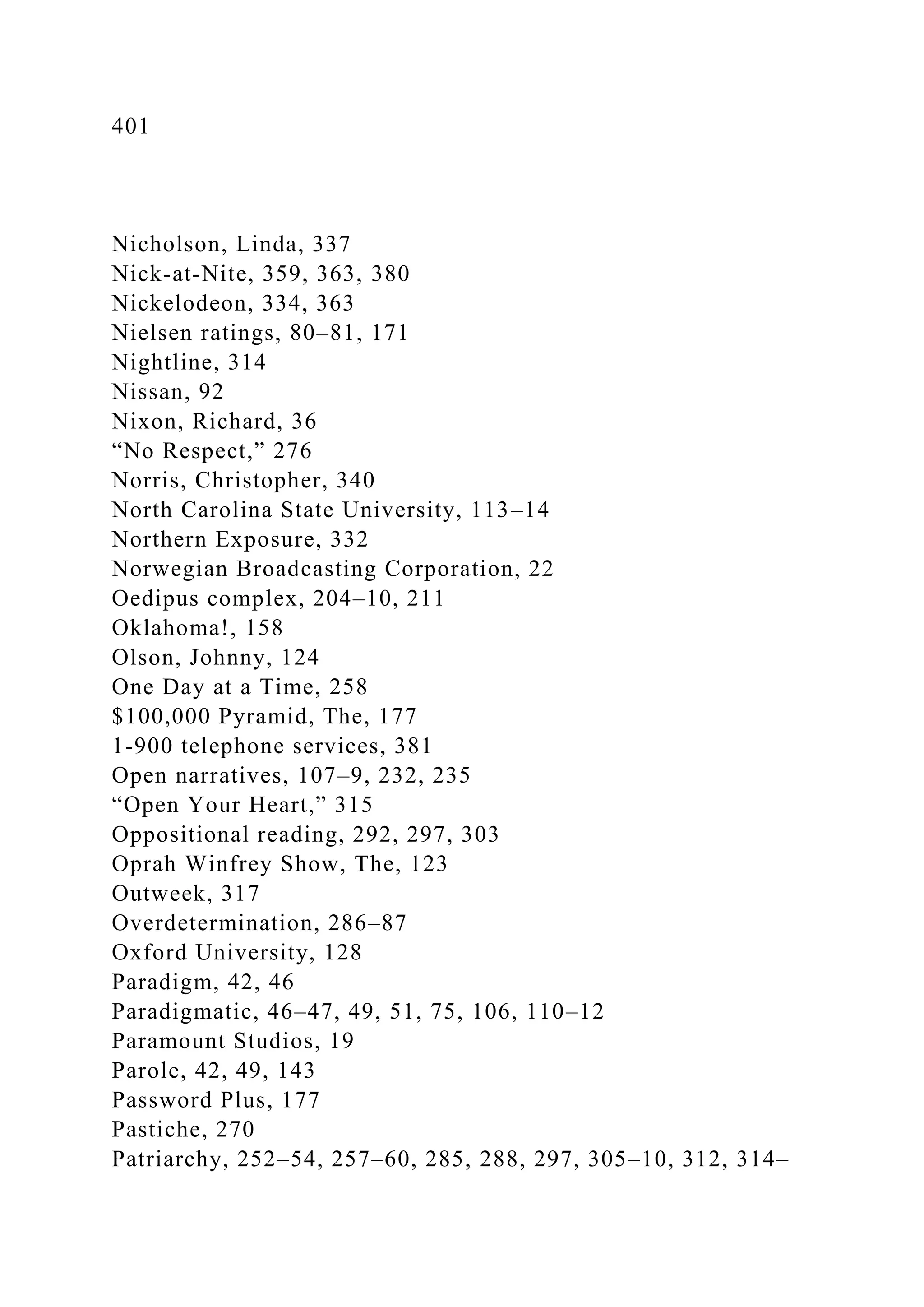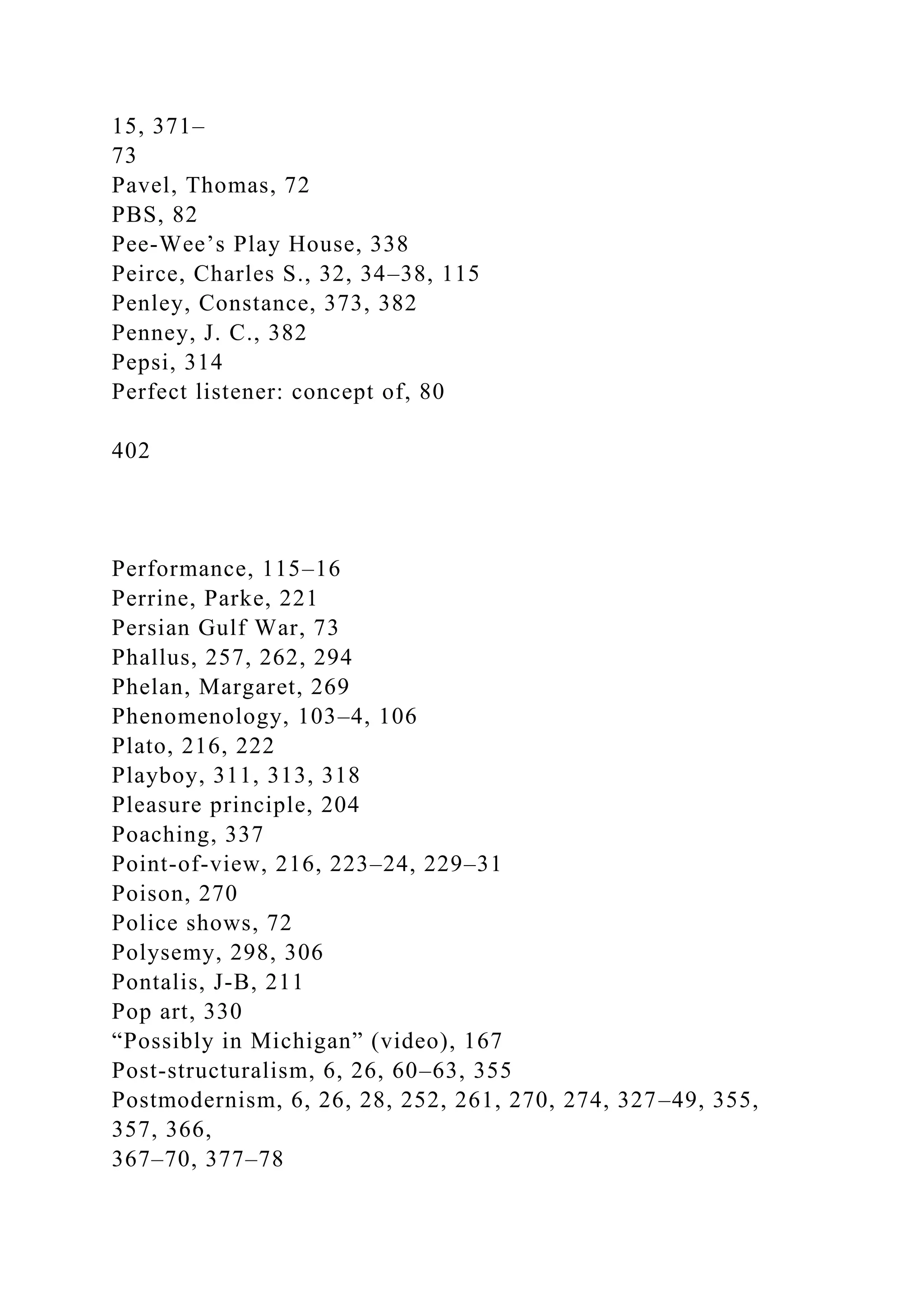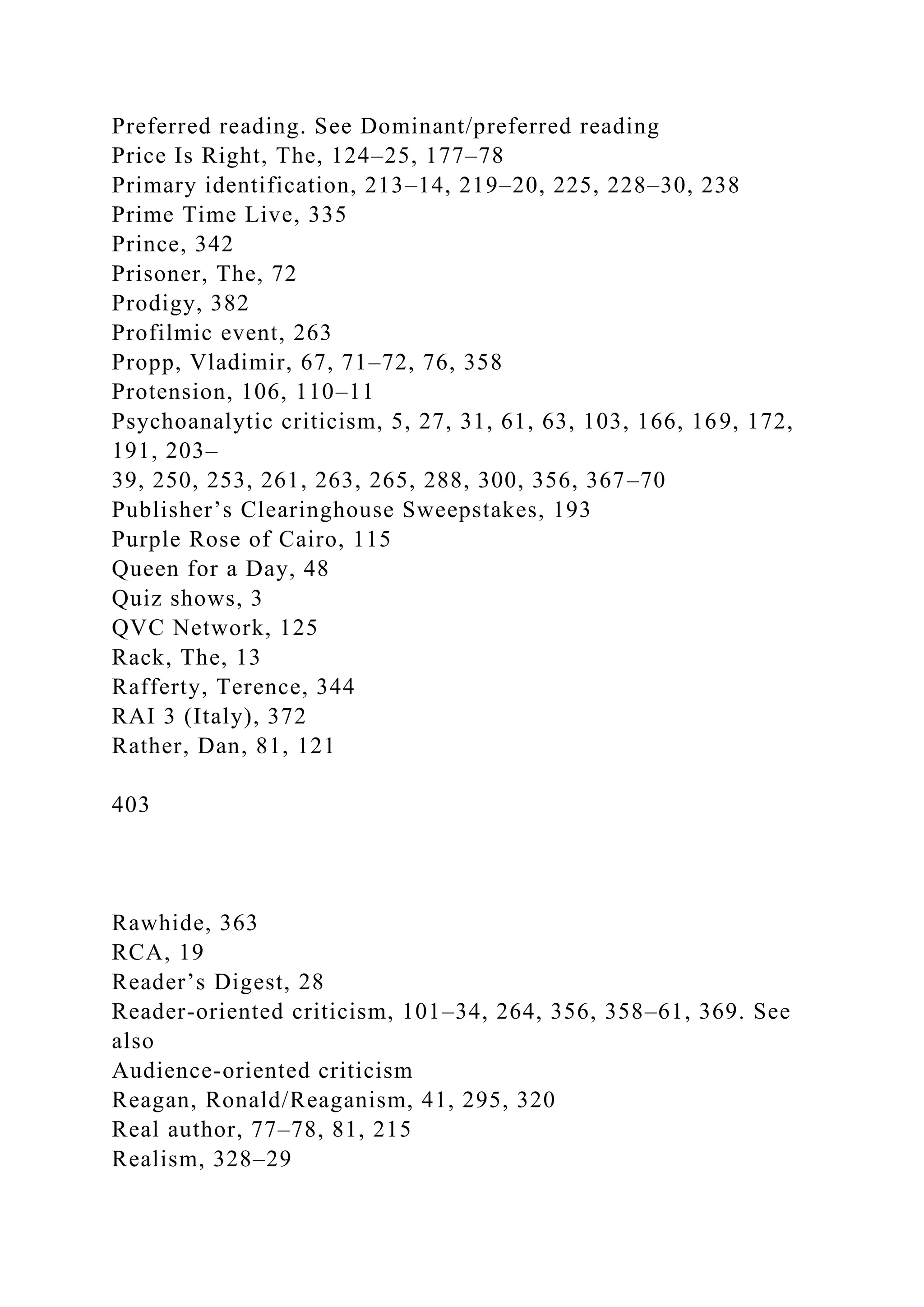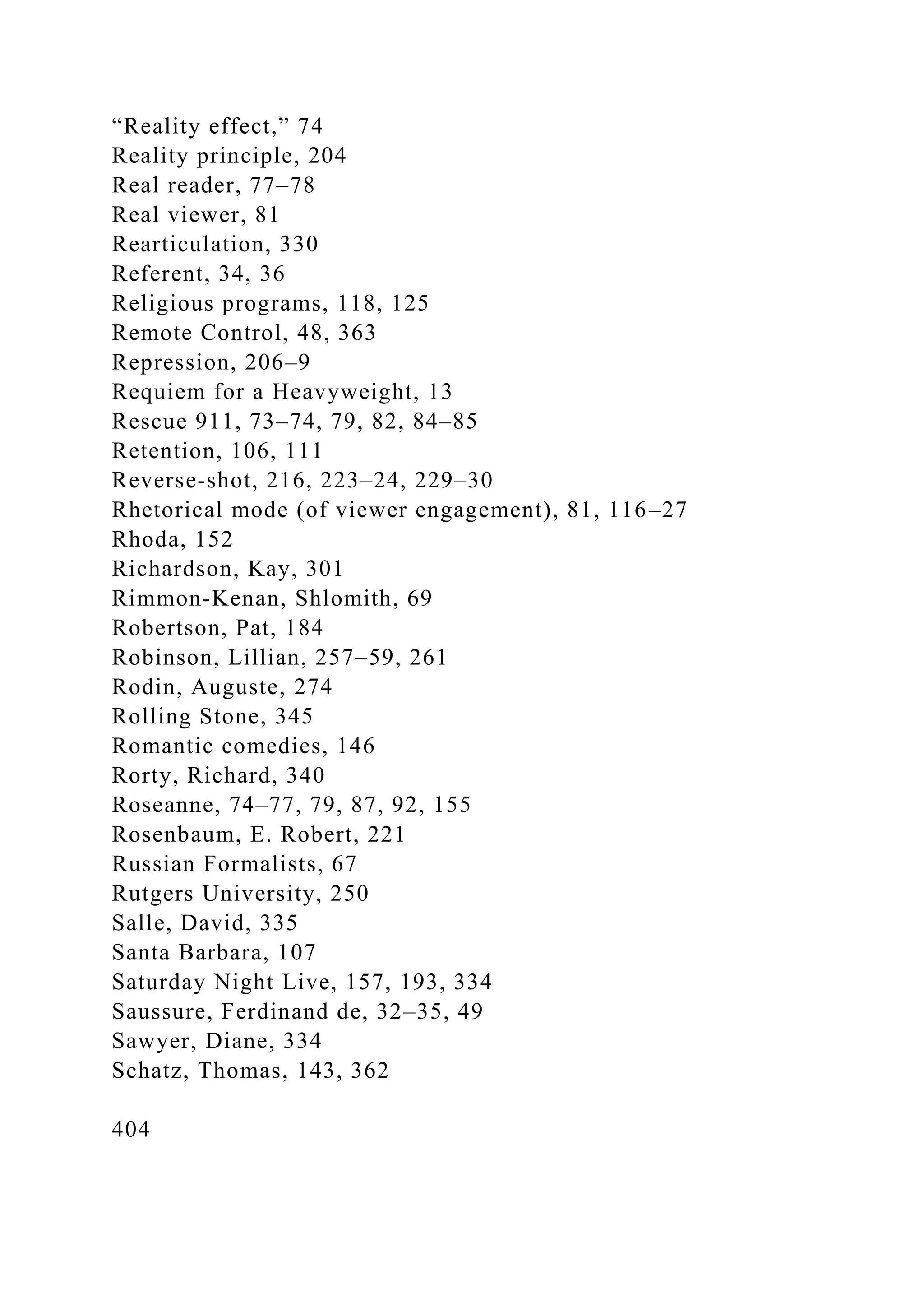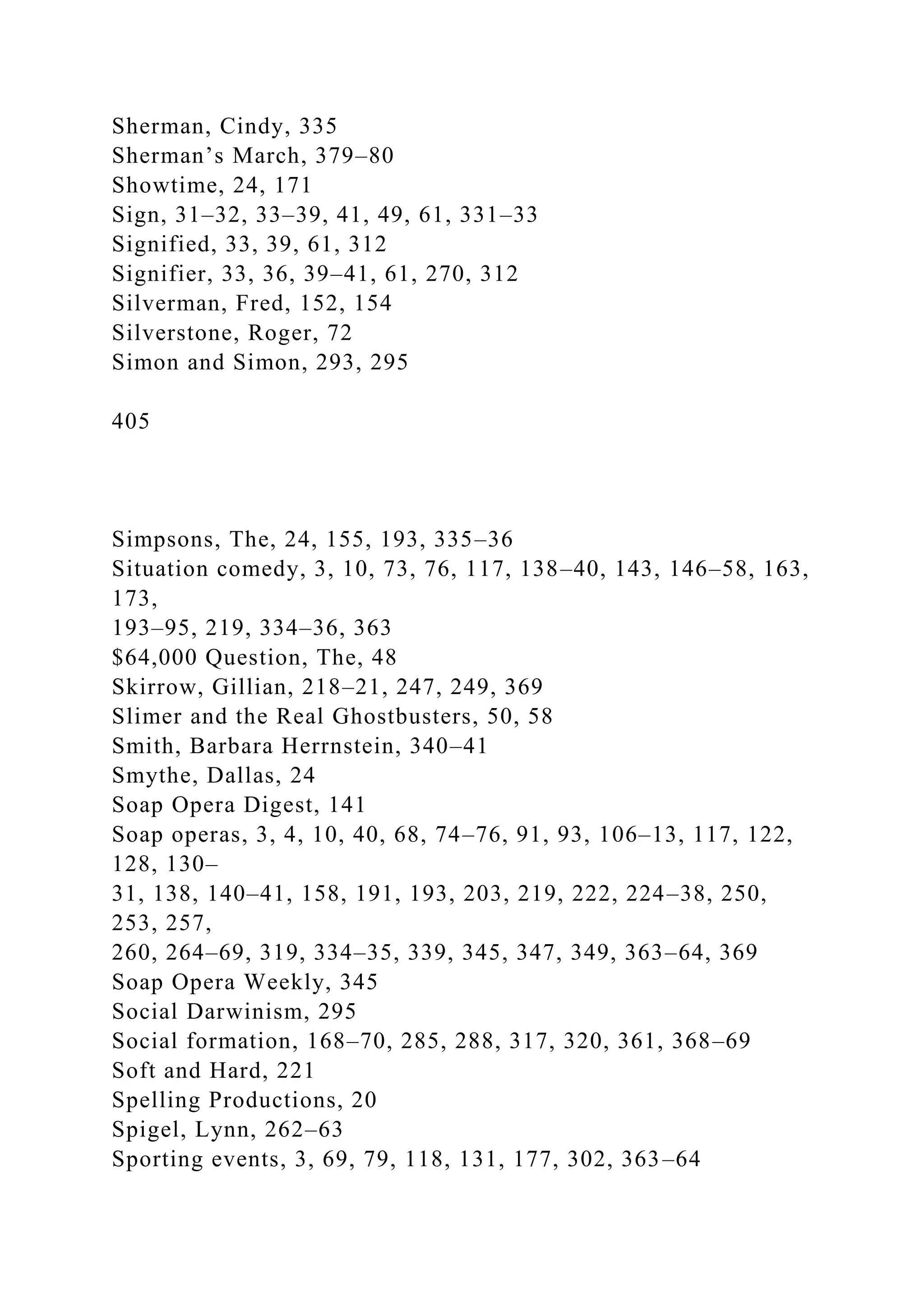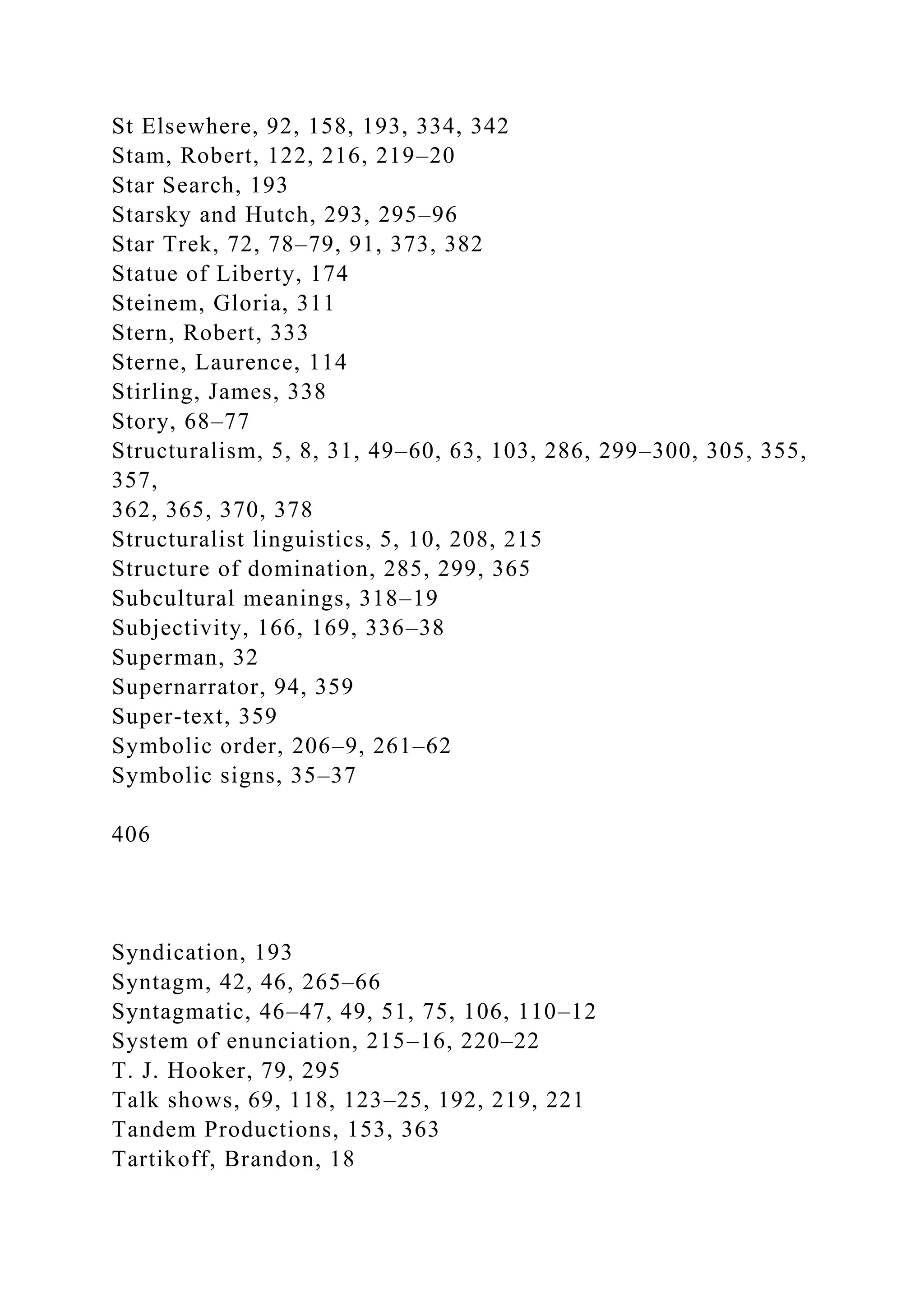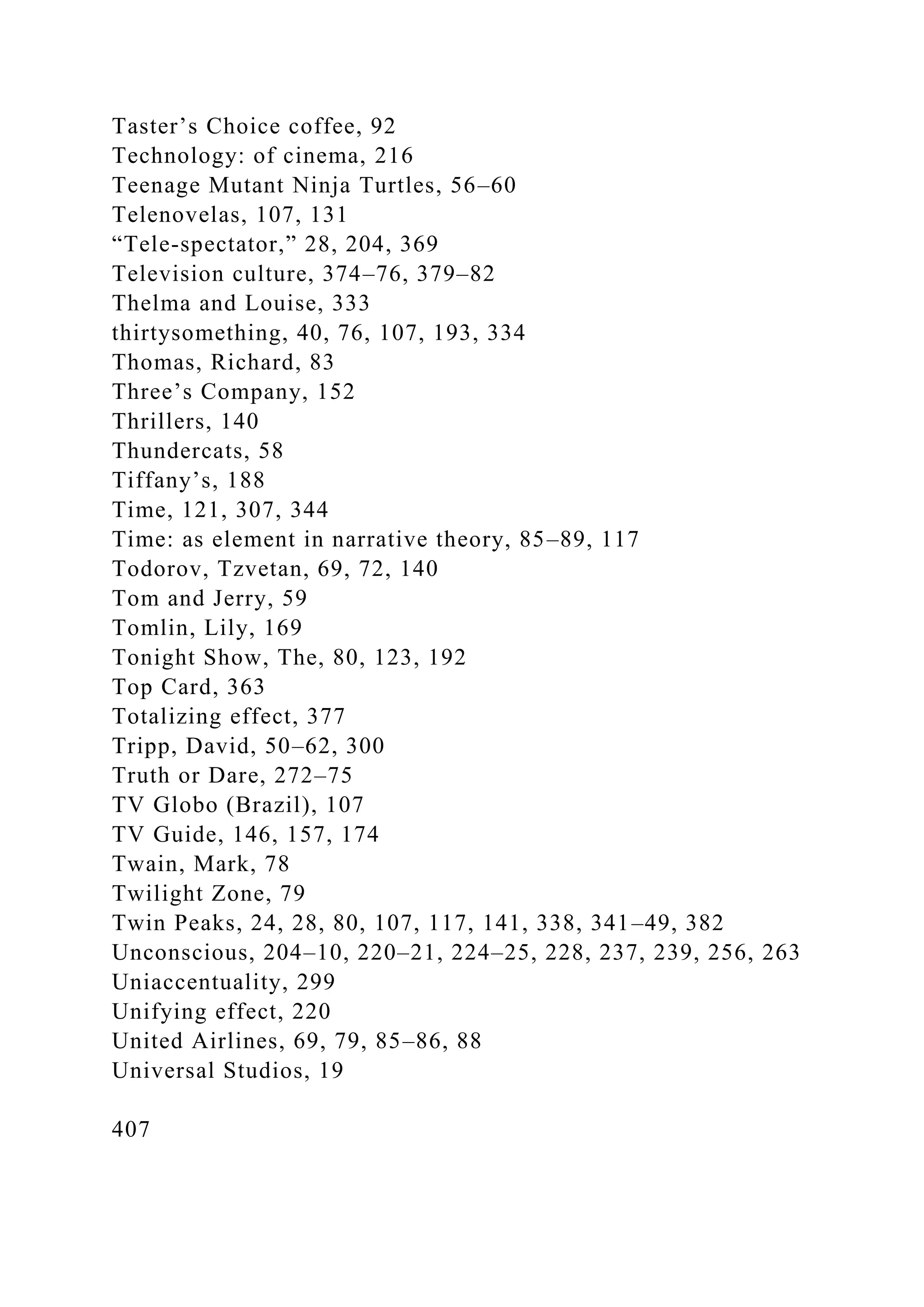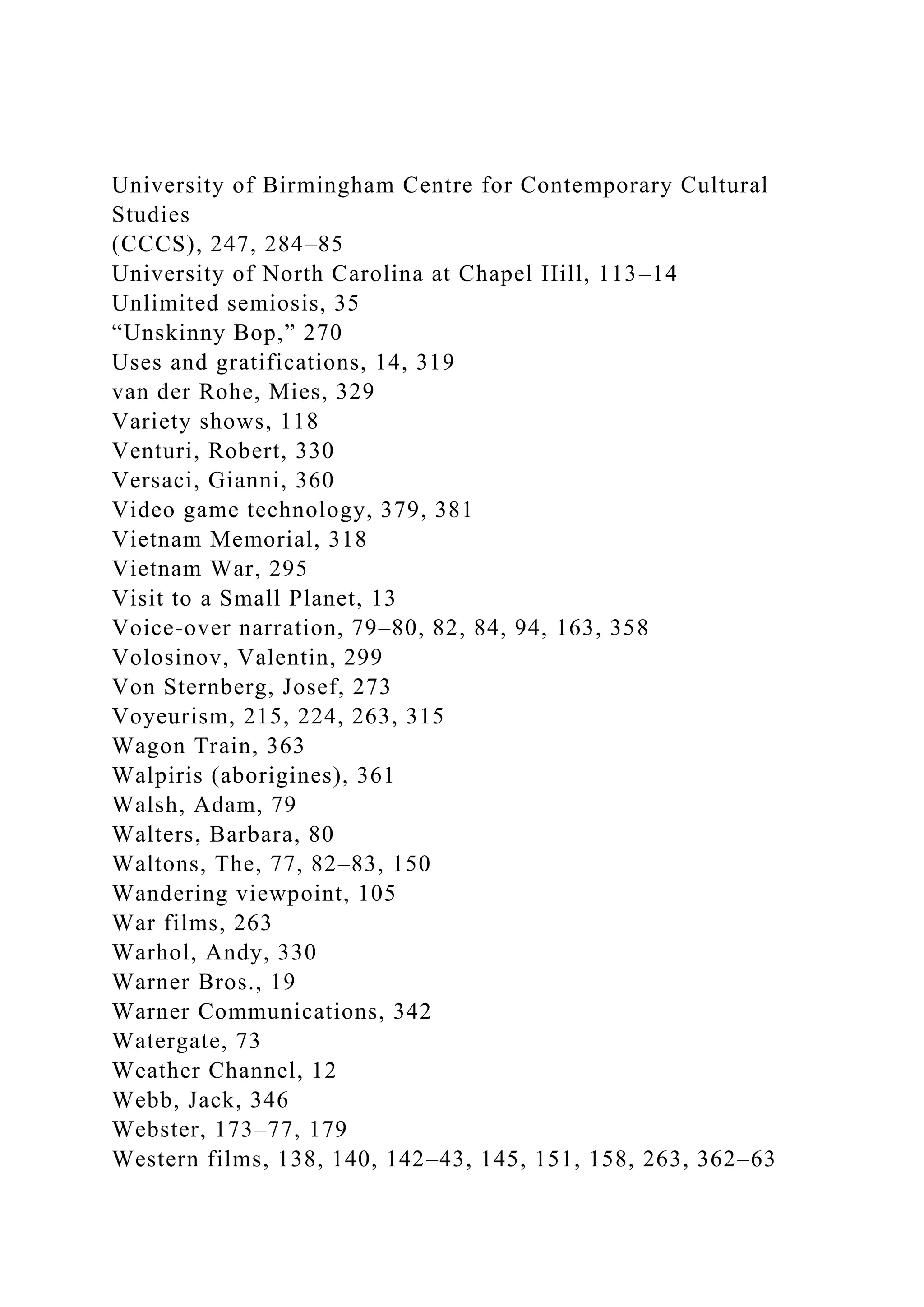The document is a second edition of 'Channels of Discourse, Reassembled,' edited by Robert C. Allen, which explores television and contemporary criticism. It highlights television's pervasive role in everyday life, particularly in the United States, and aims to analyze how people derive meaning and pleasure from television programming through various critical approaches. The book includes essays that provide frameworks for understanding the complexities of television as a cultural and entertainment medium, reflecting on semiotics, narrative theory, and other methodologies emerging in television studies.
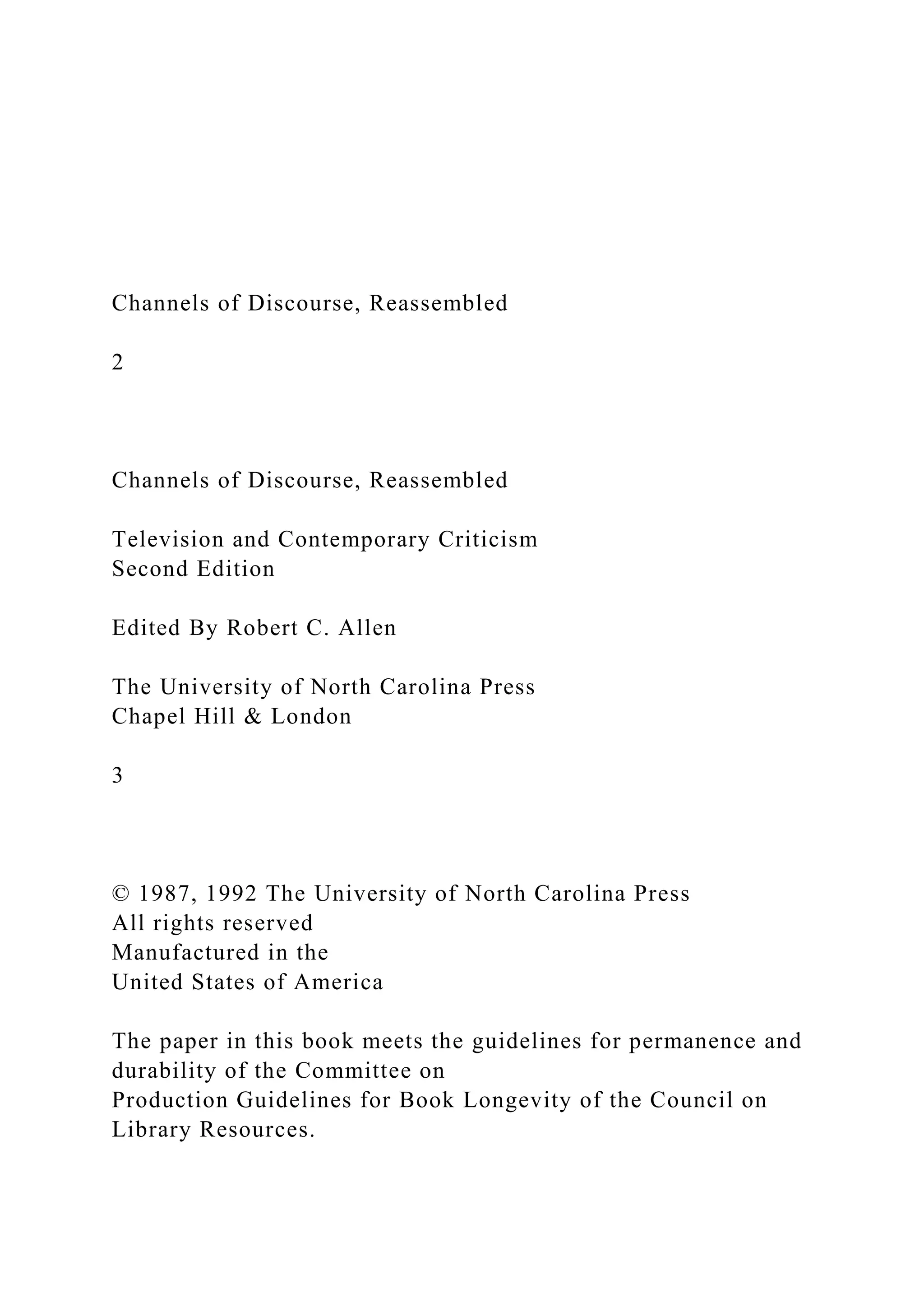
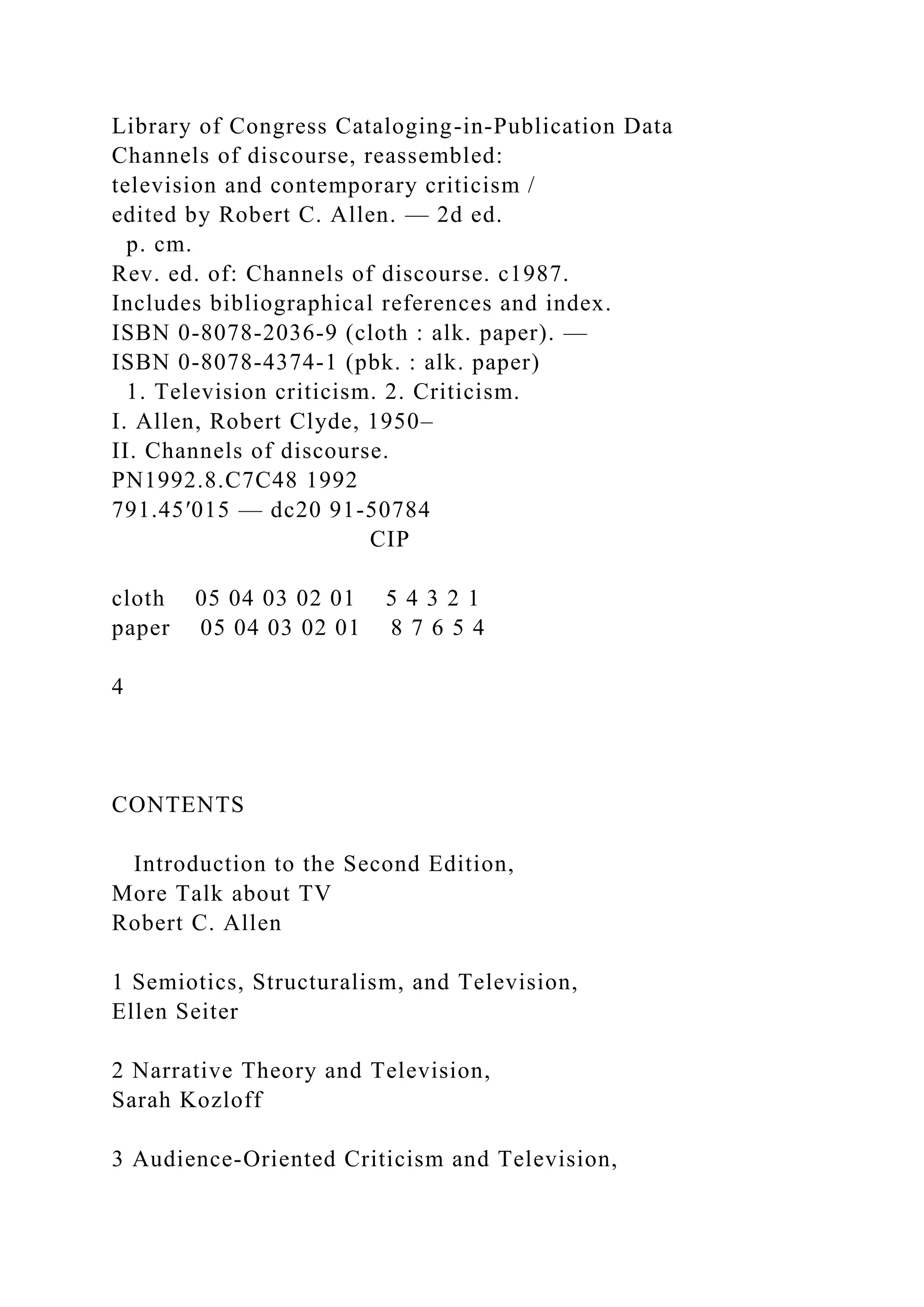
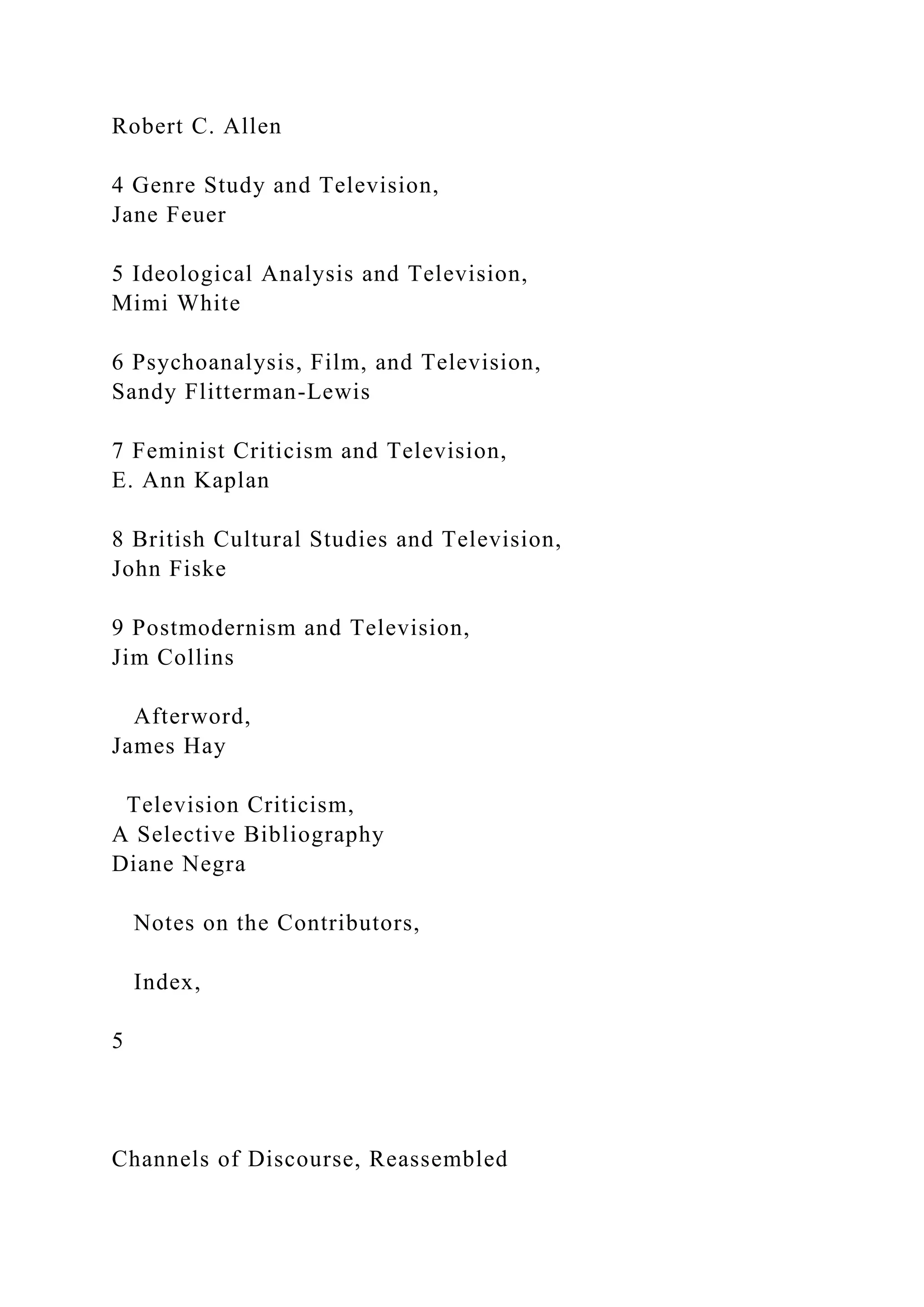
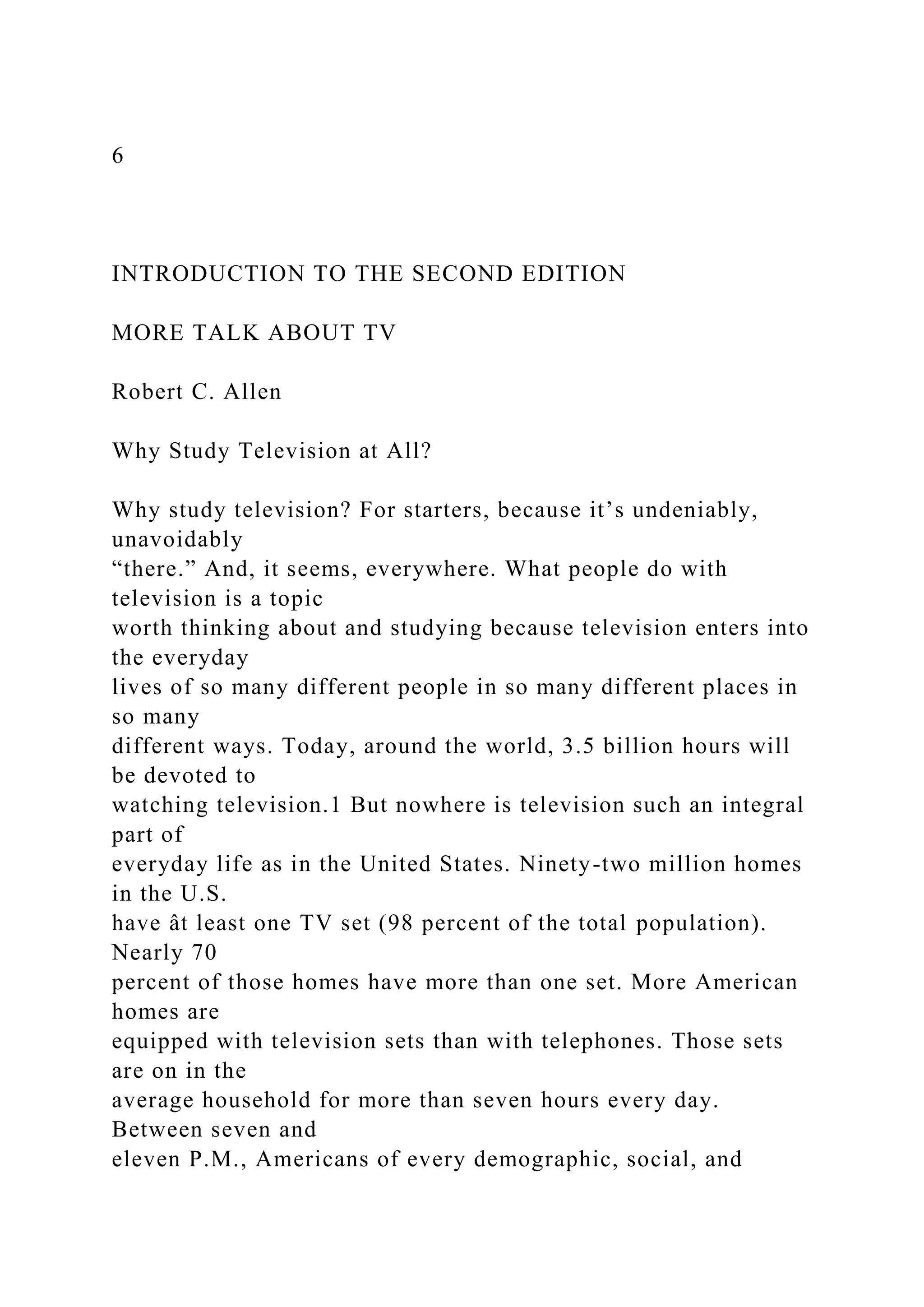
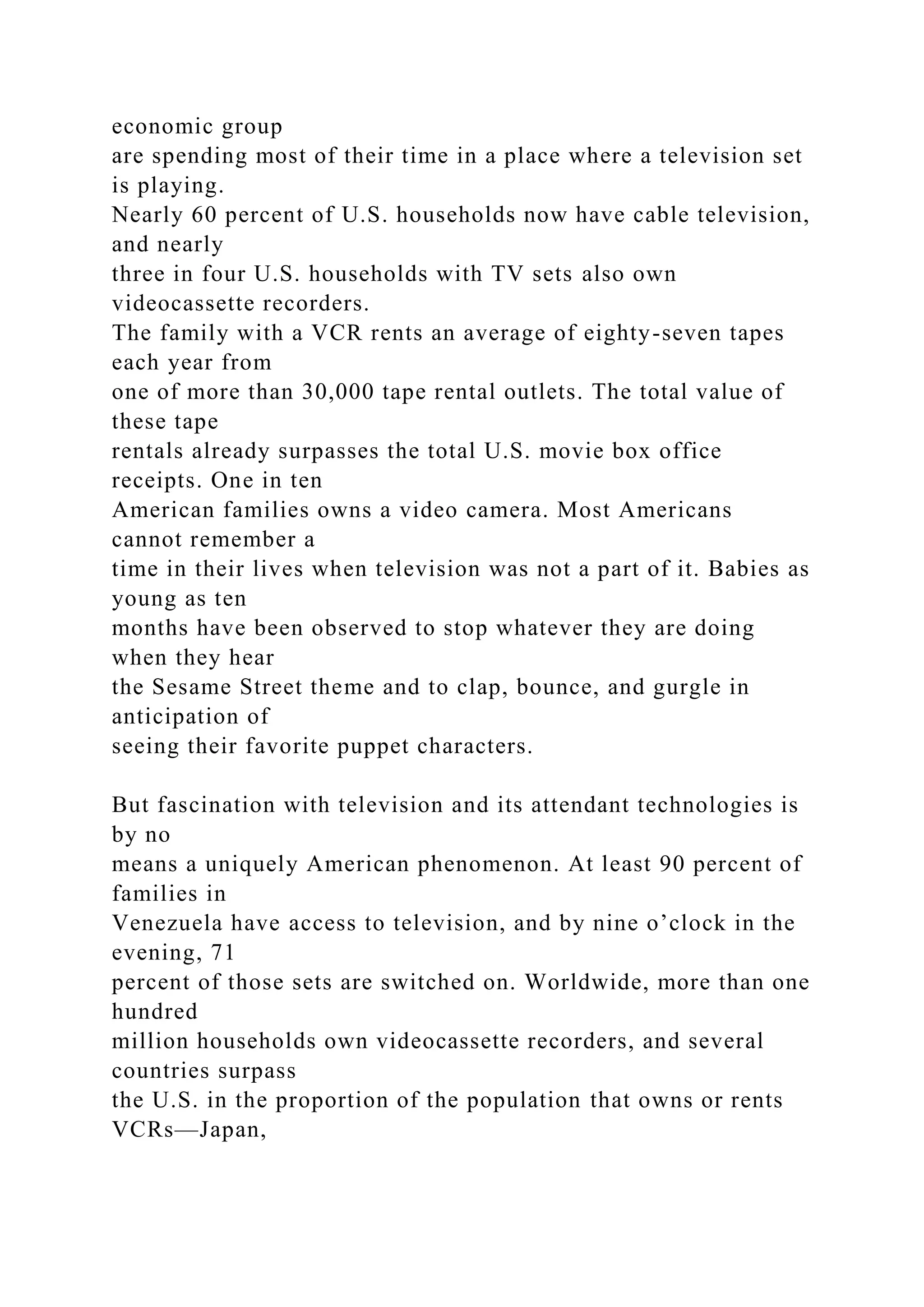
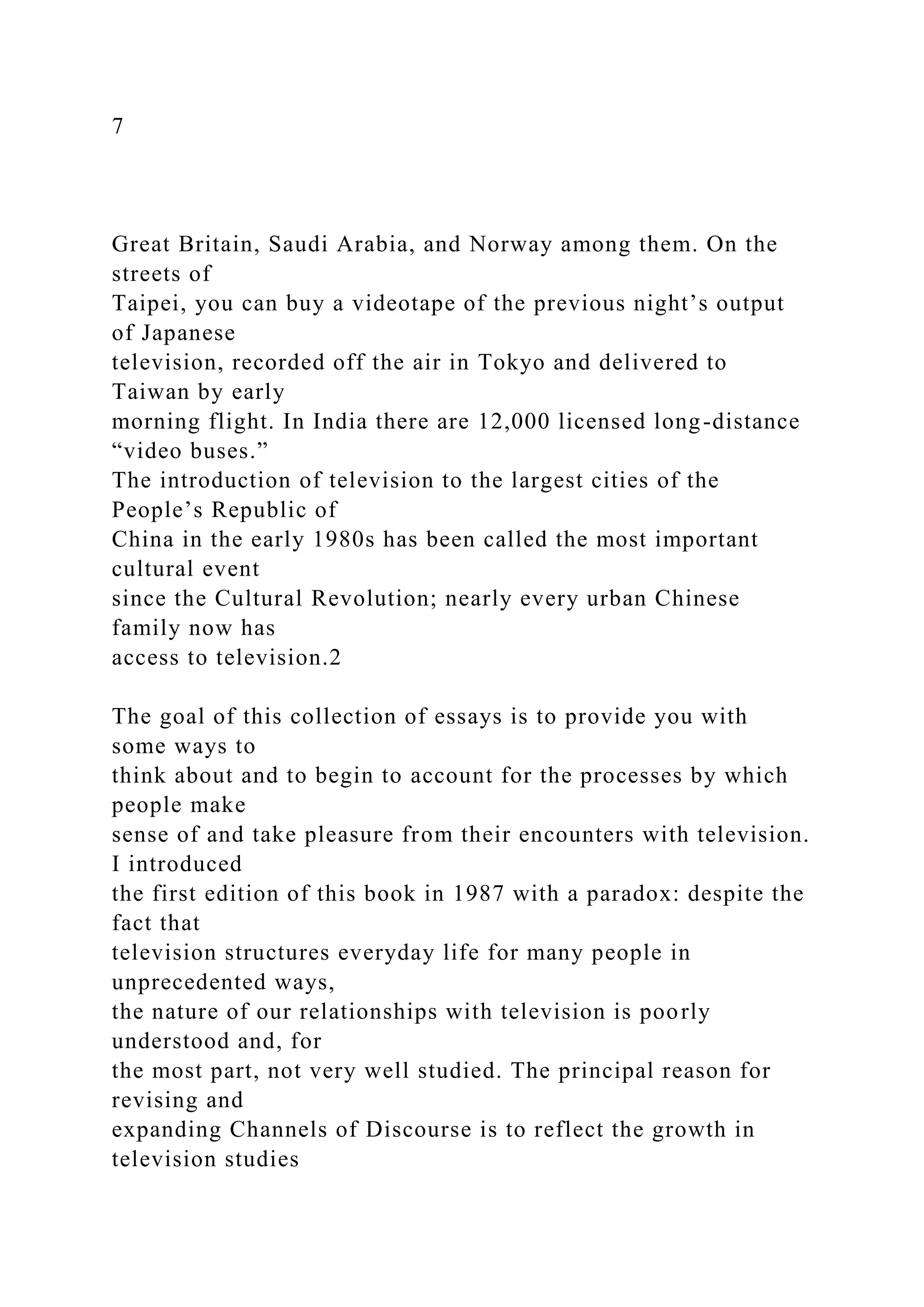
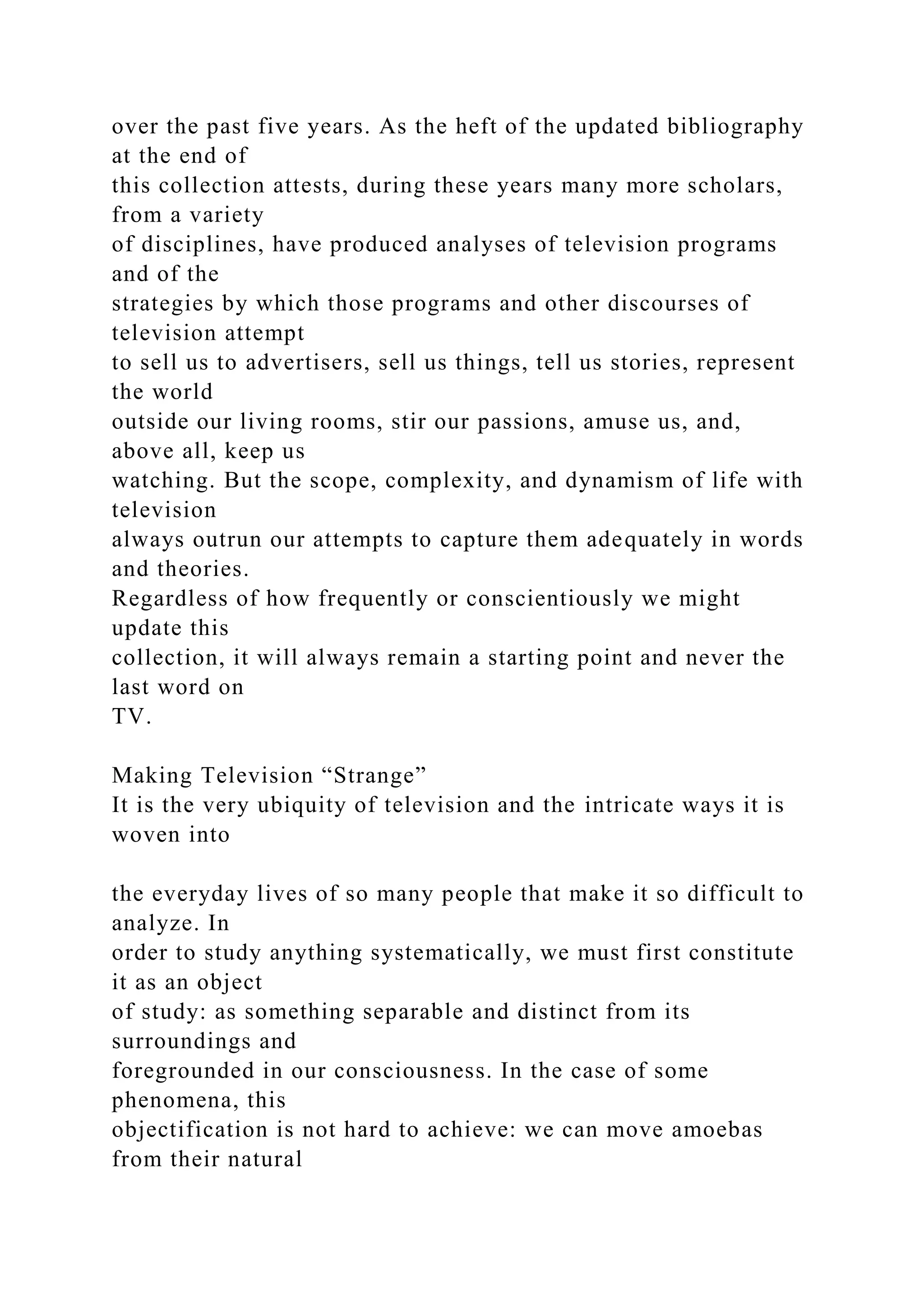
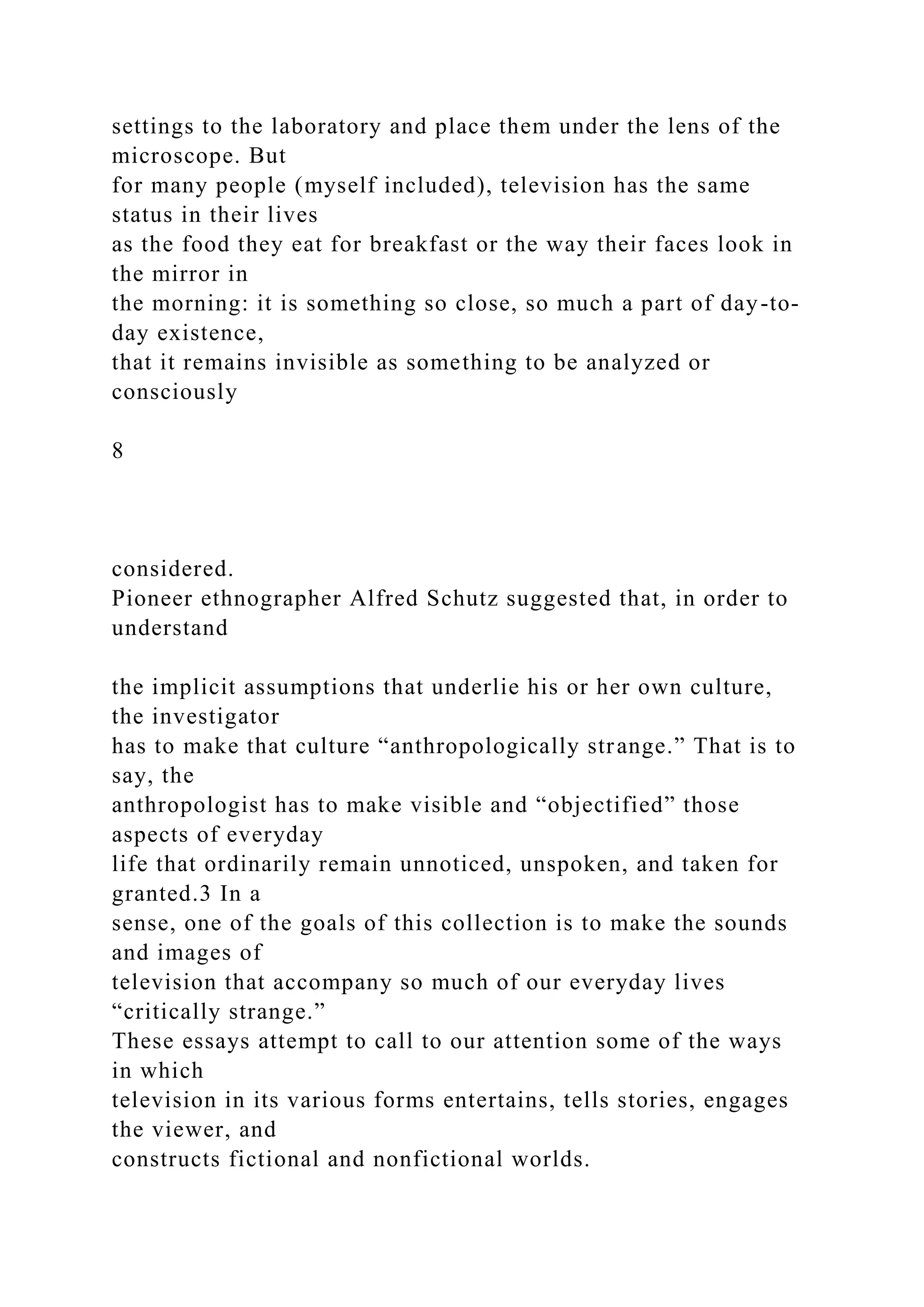
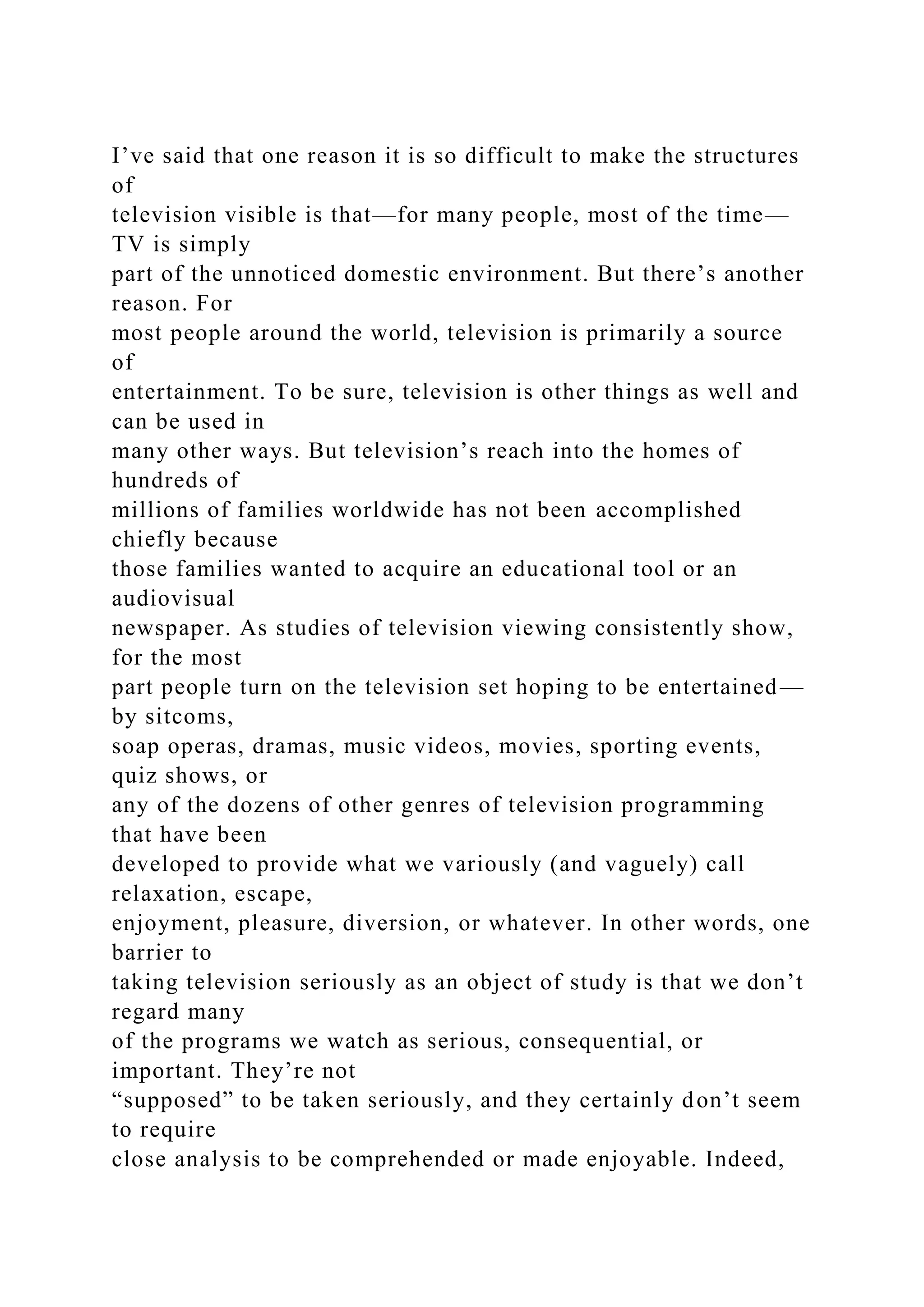
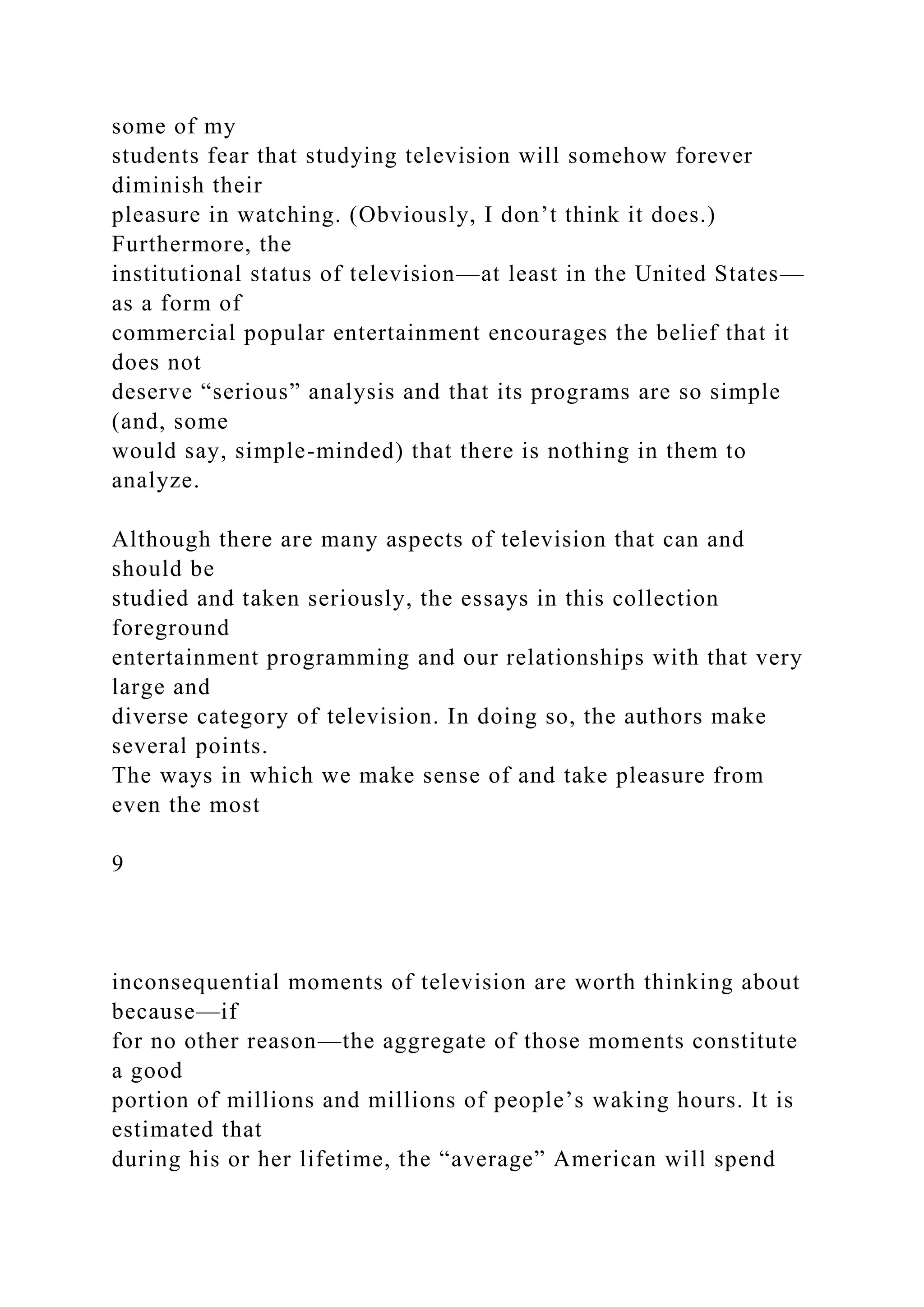
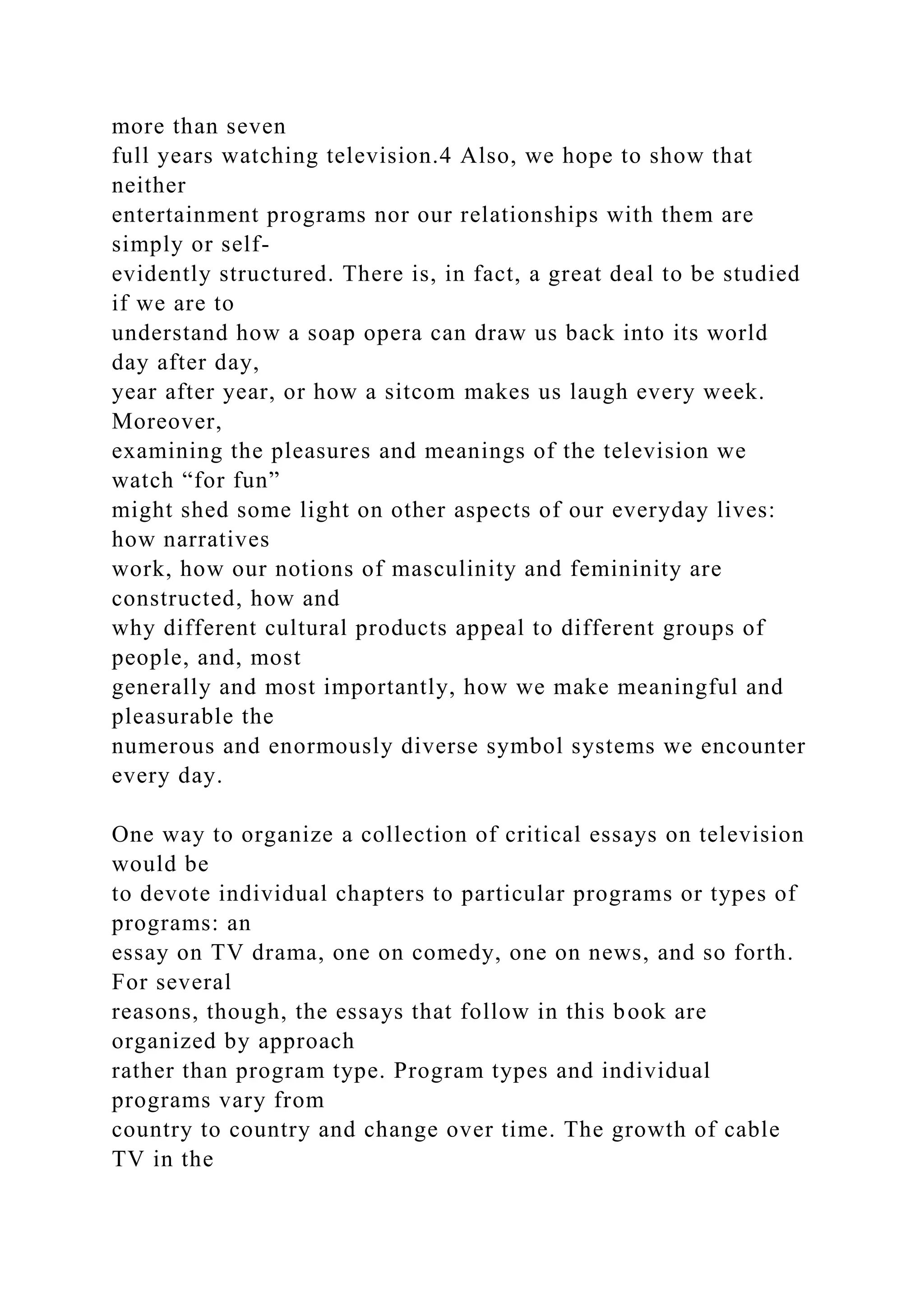
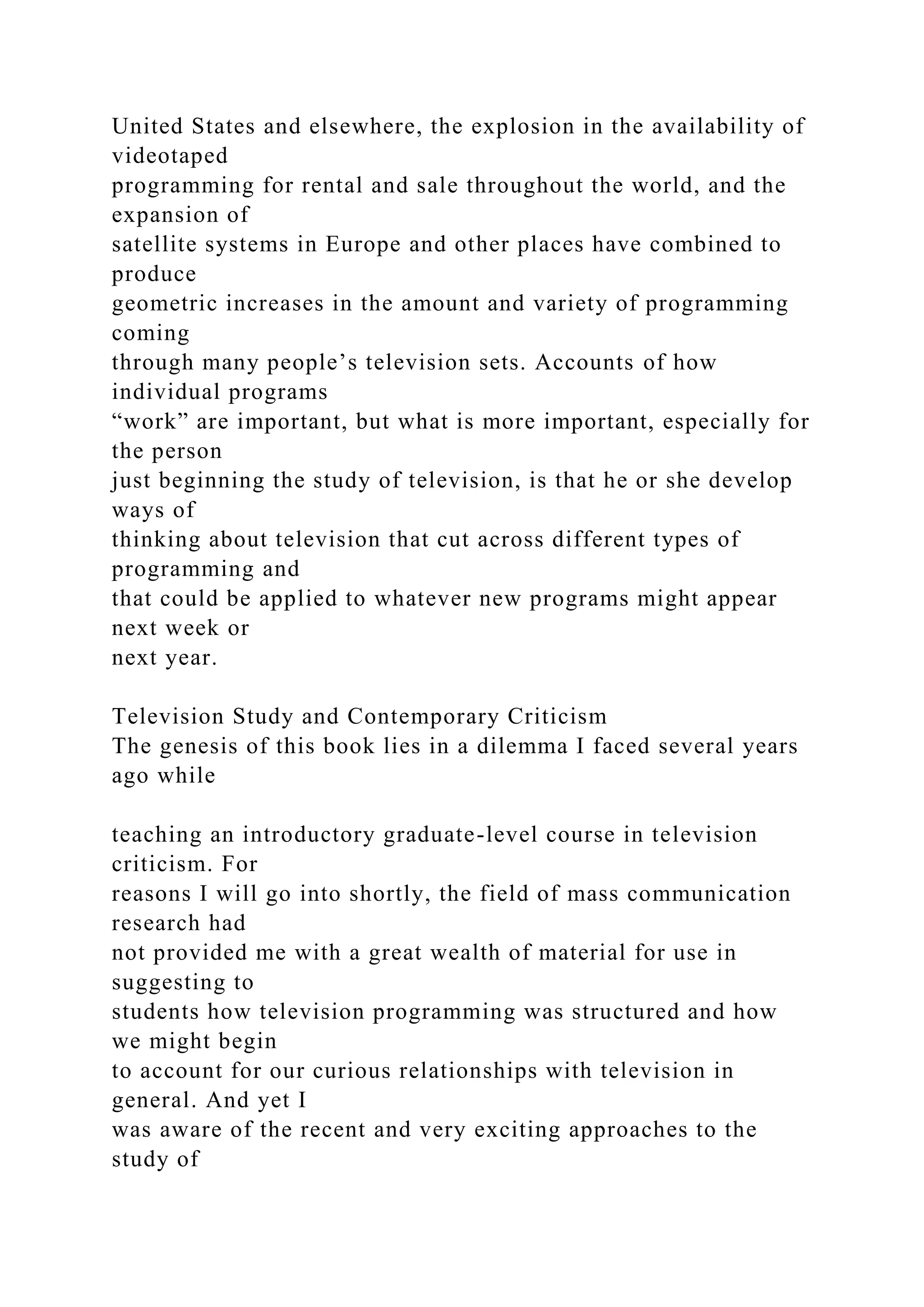
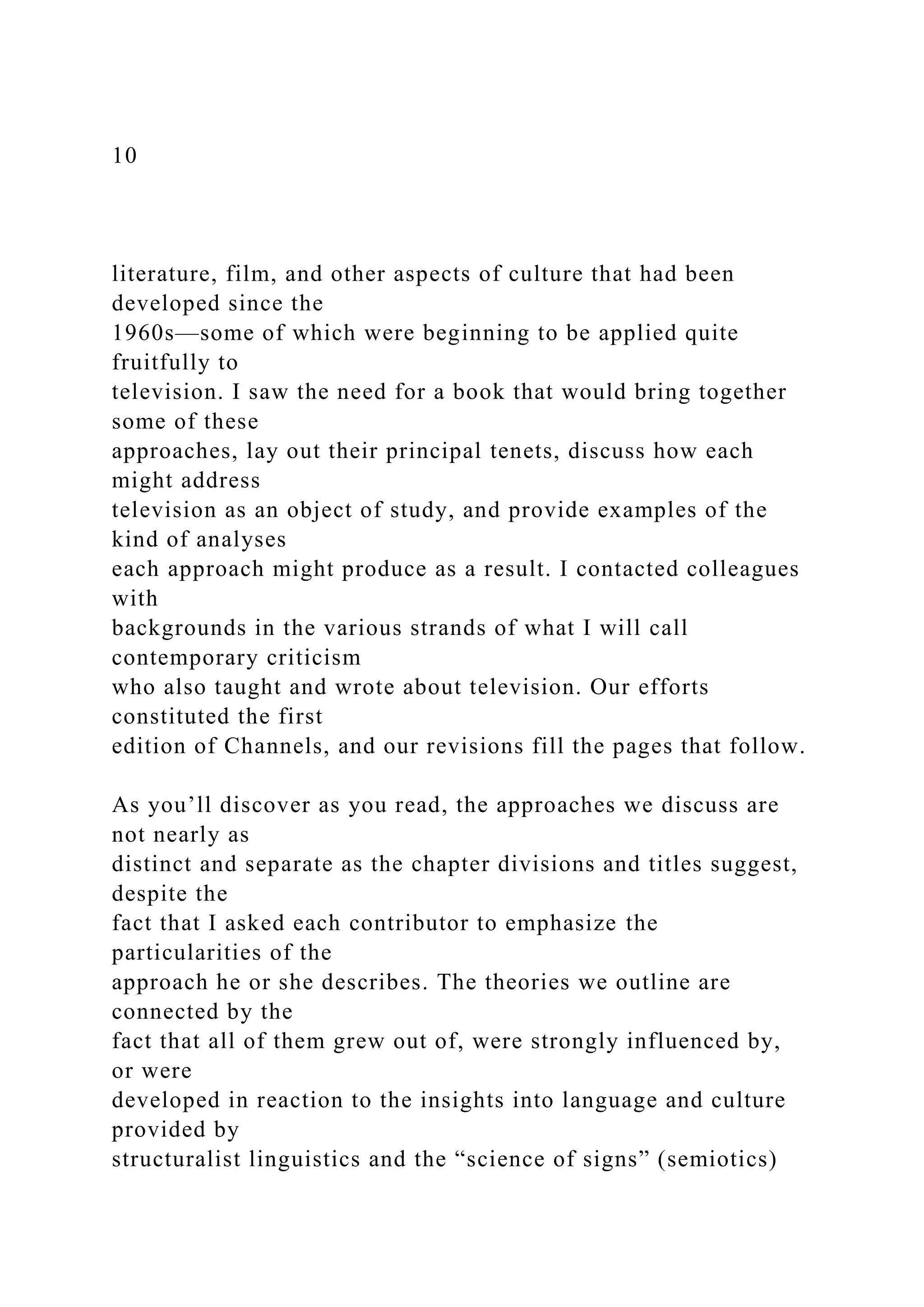
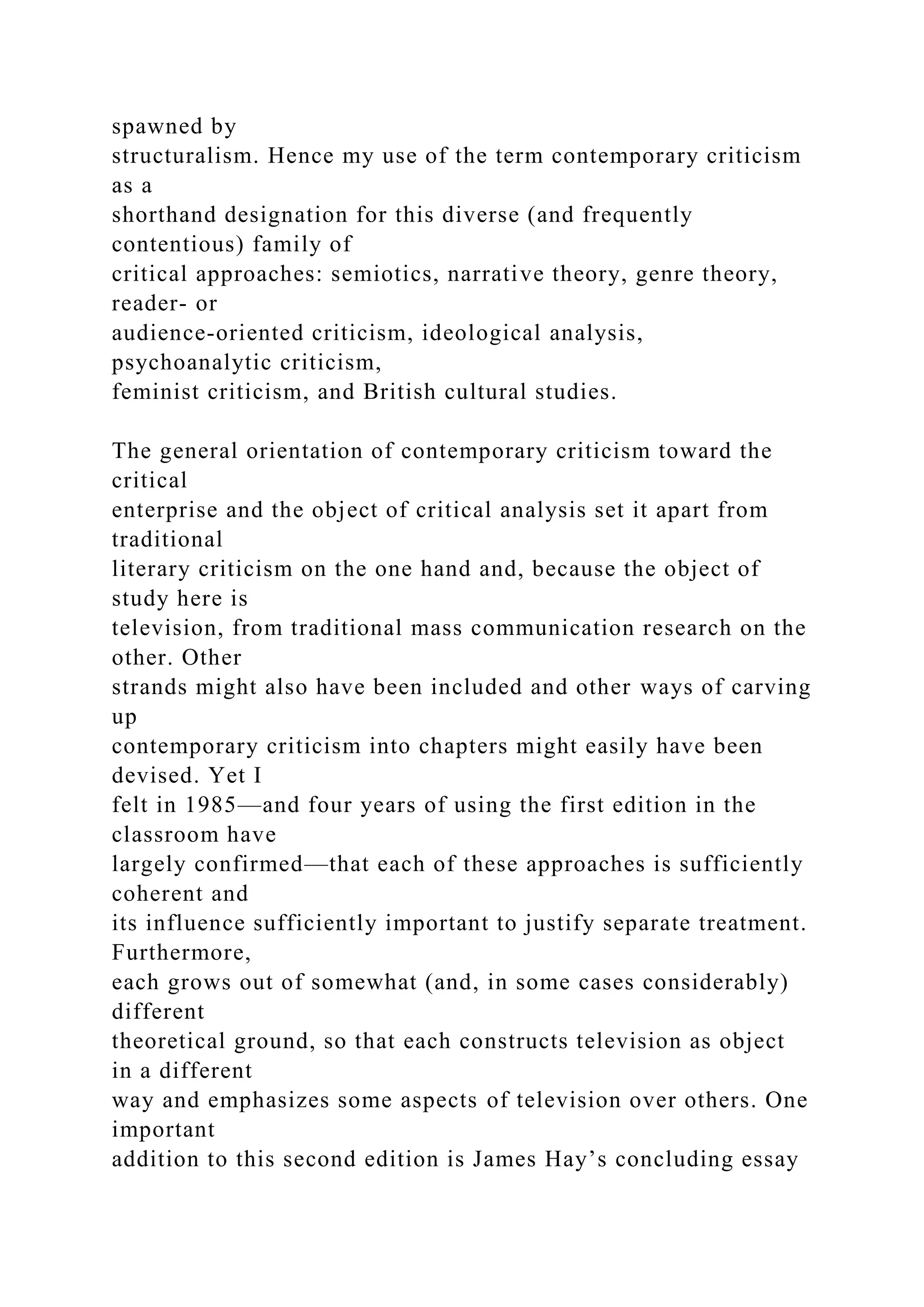
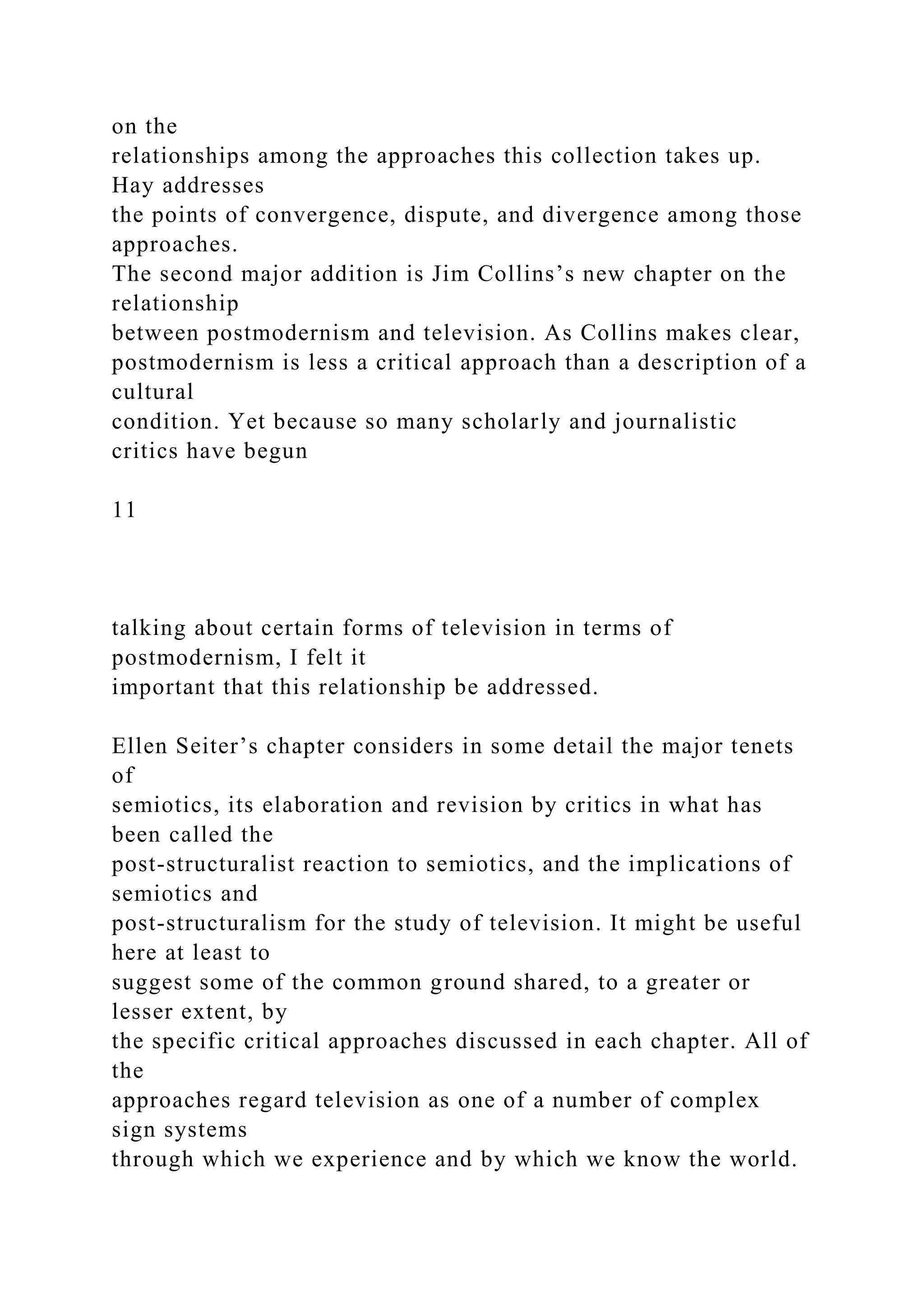
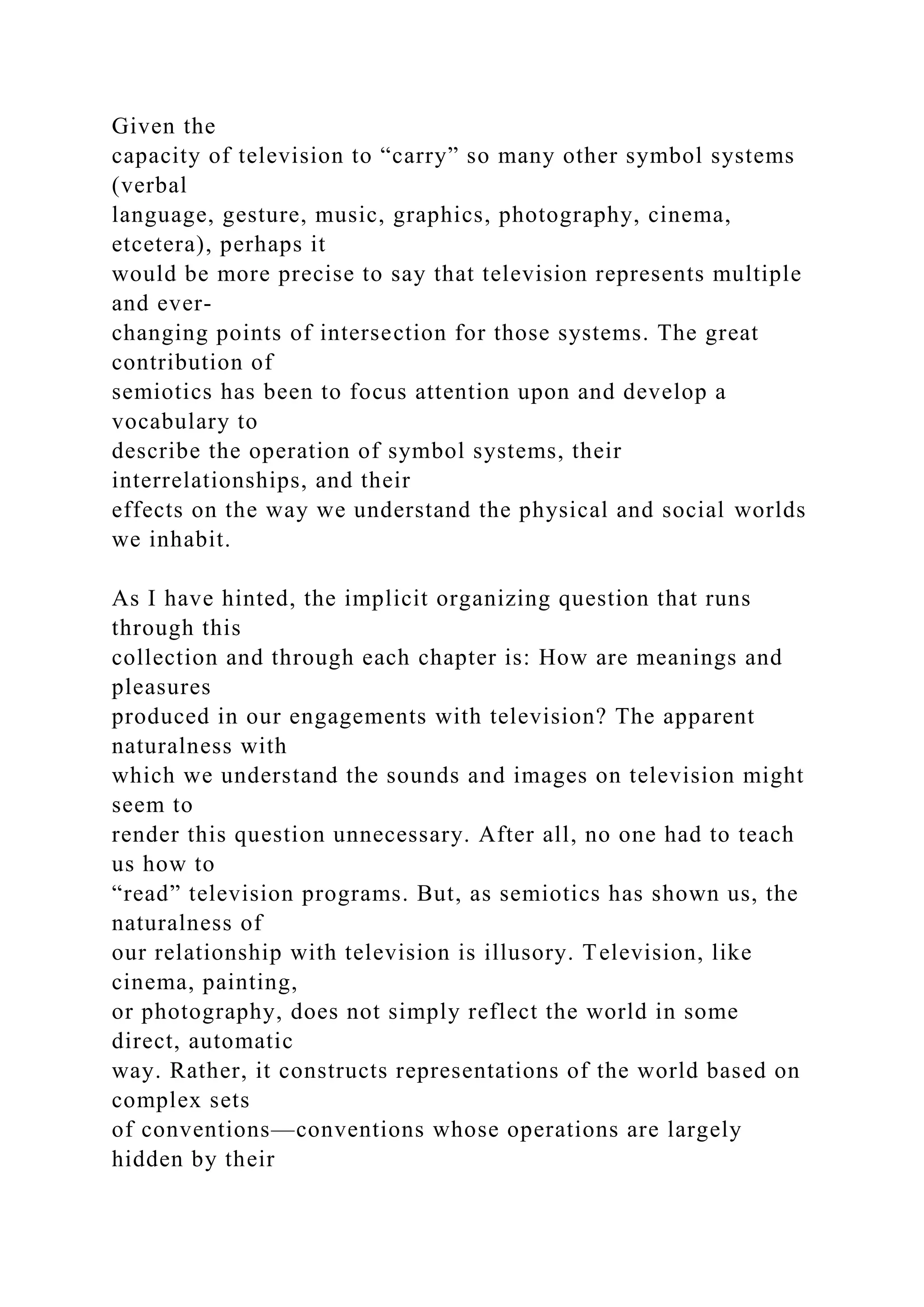
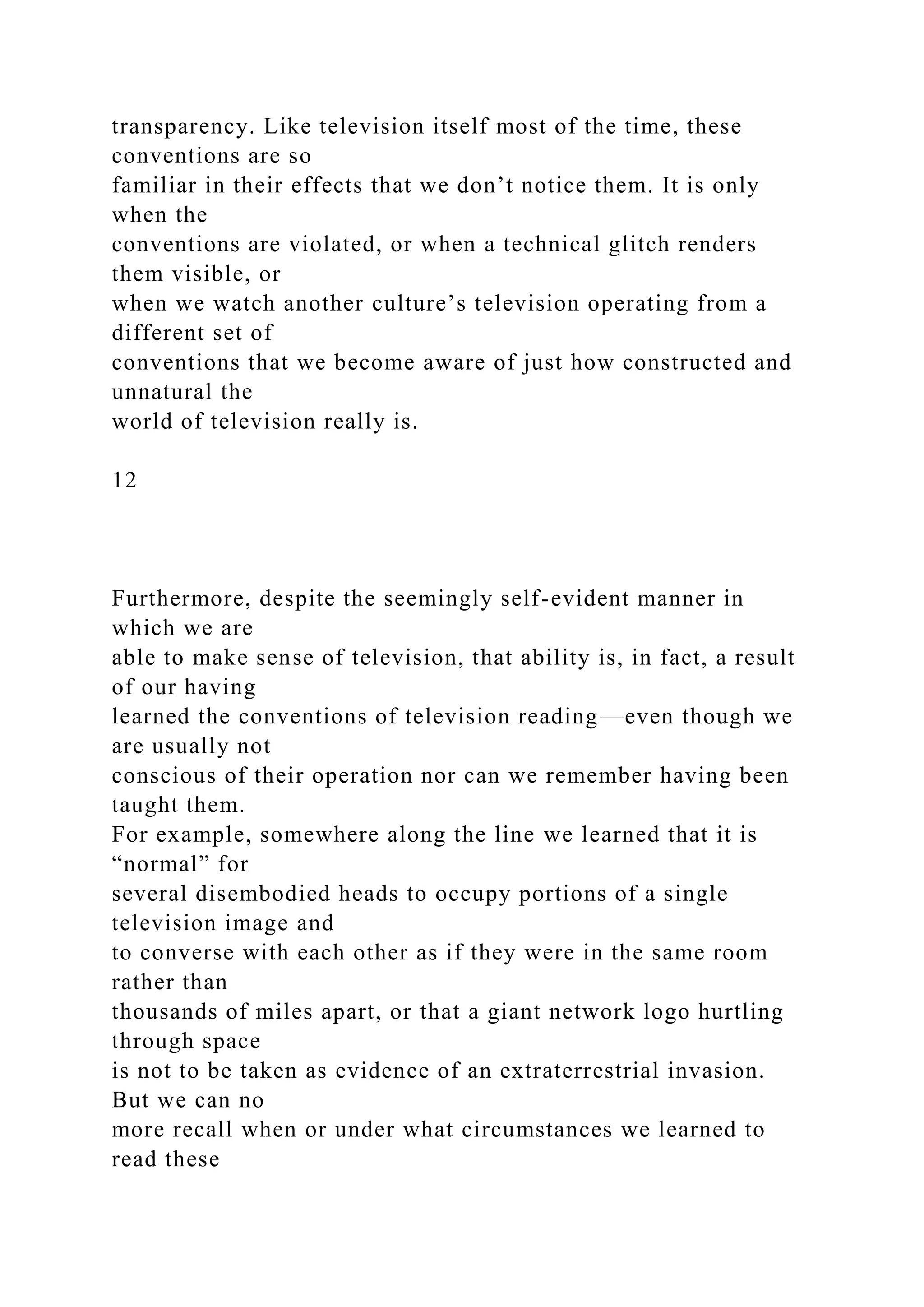
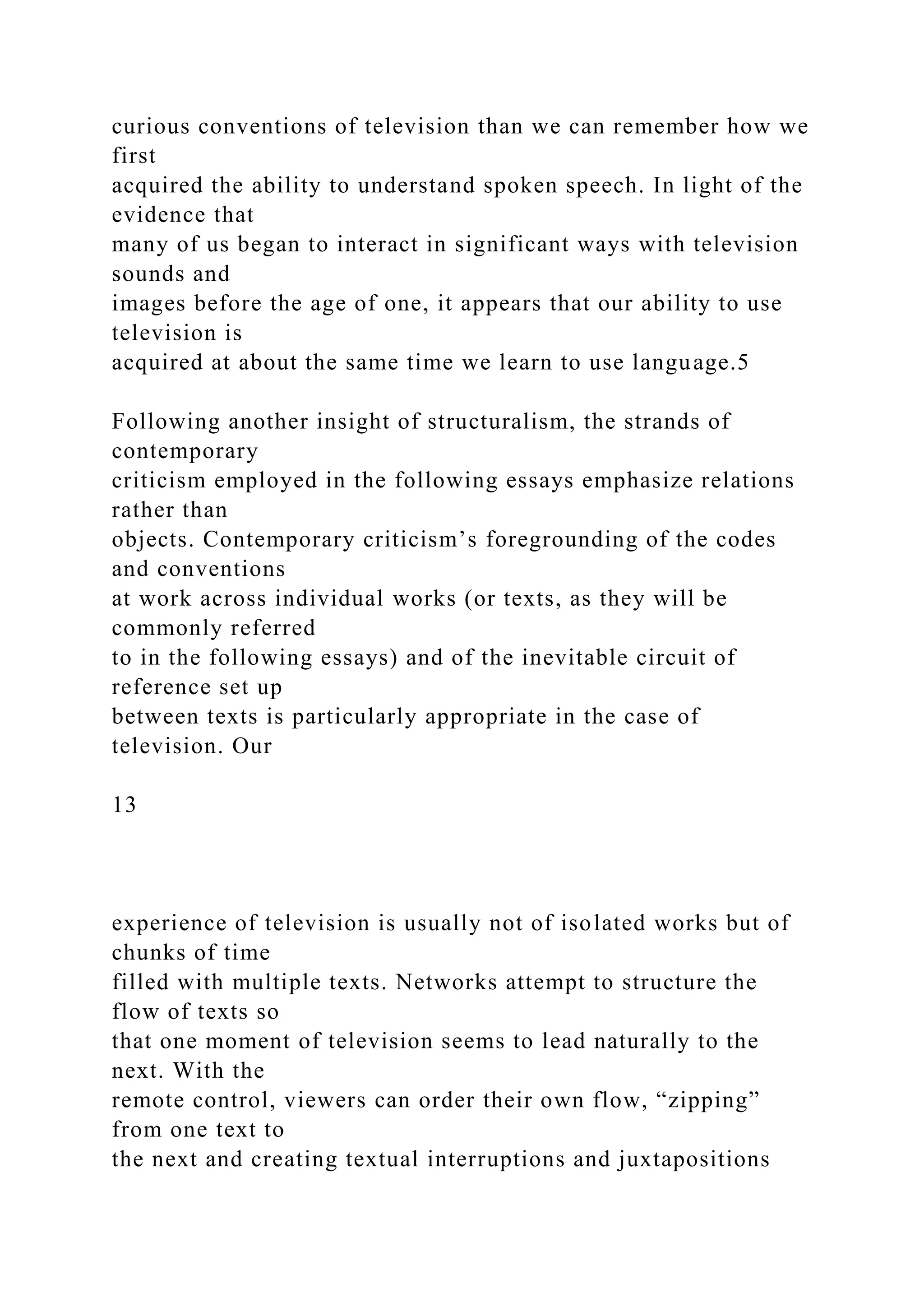
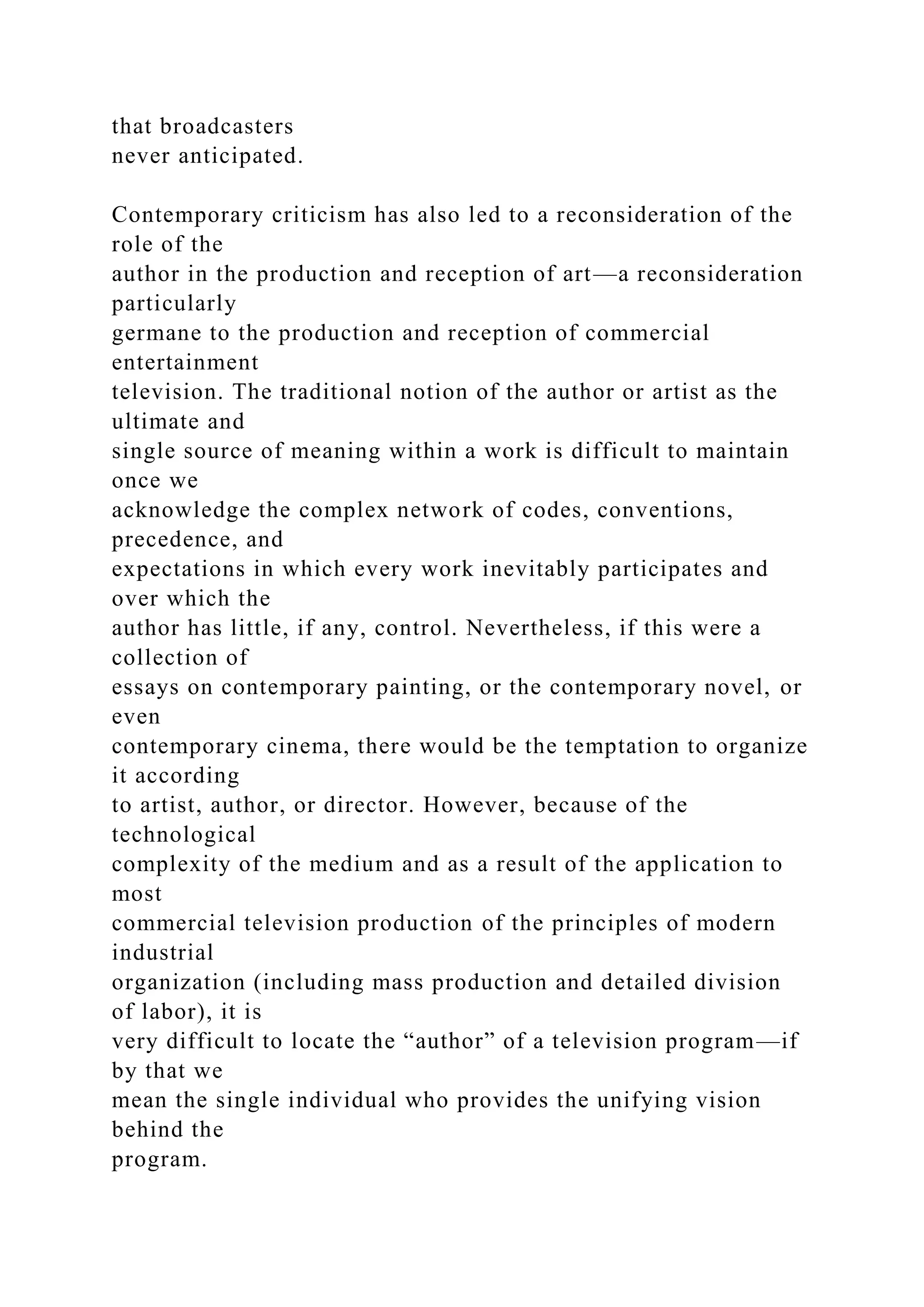
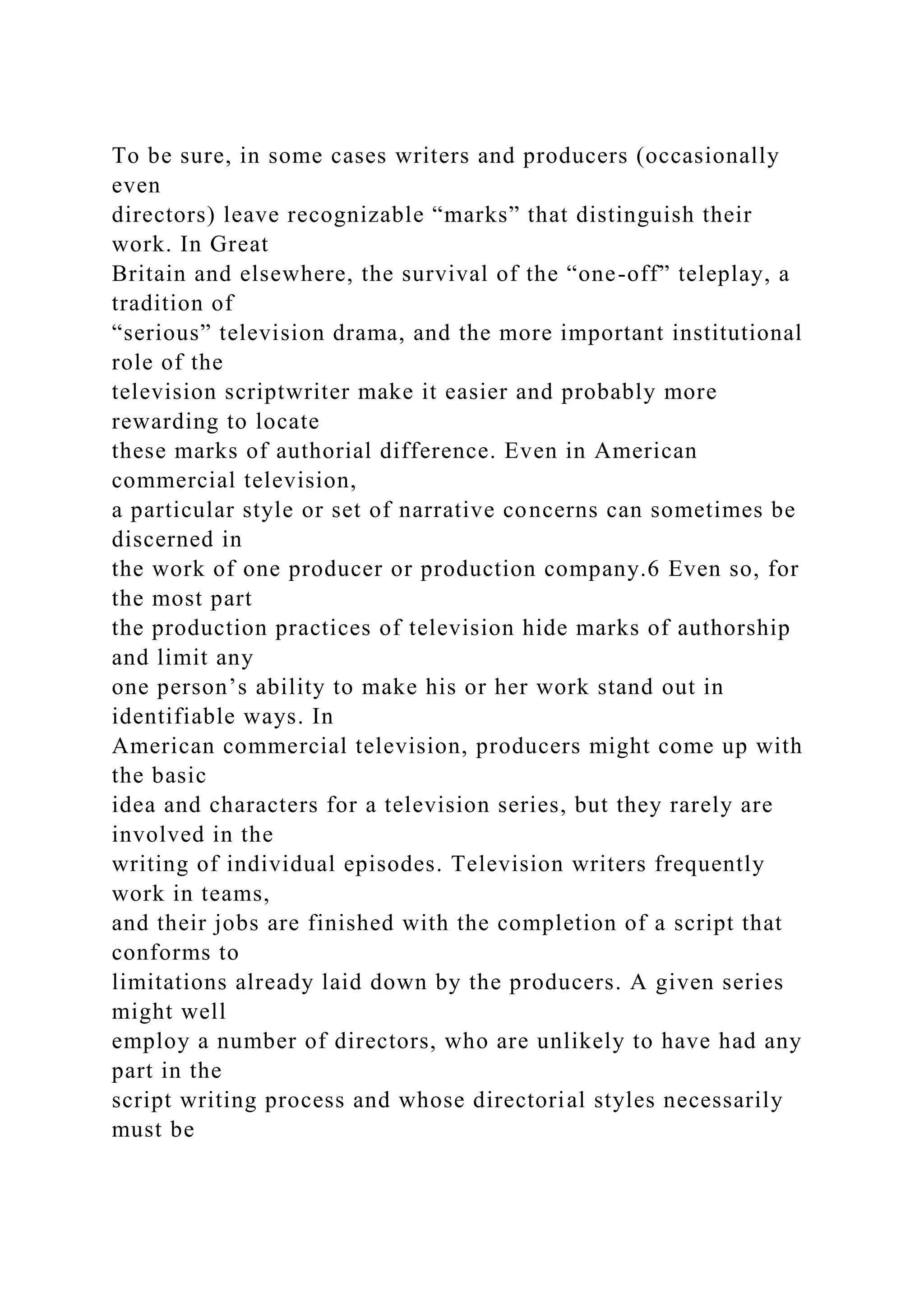
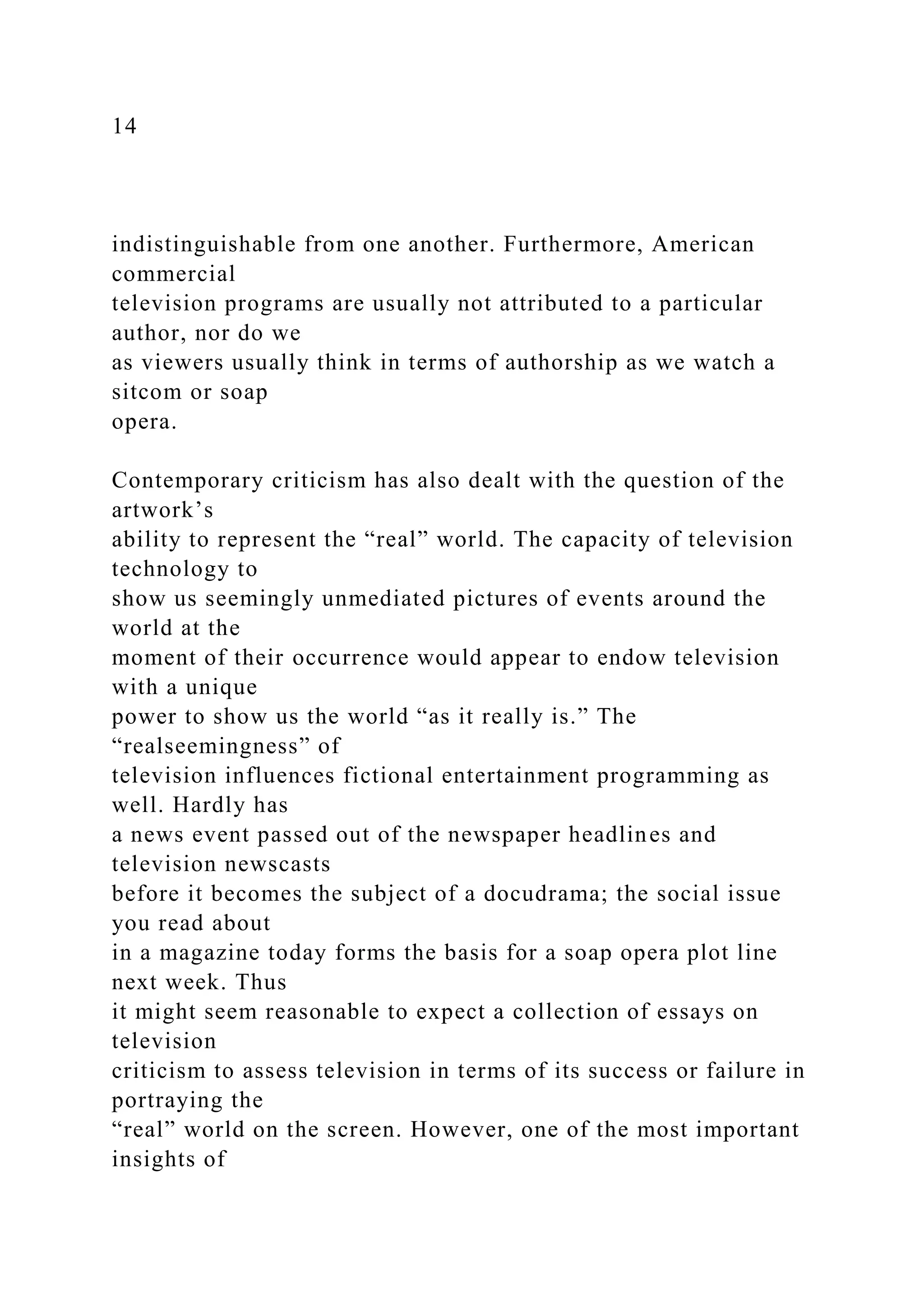
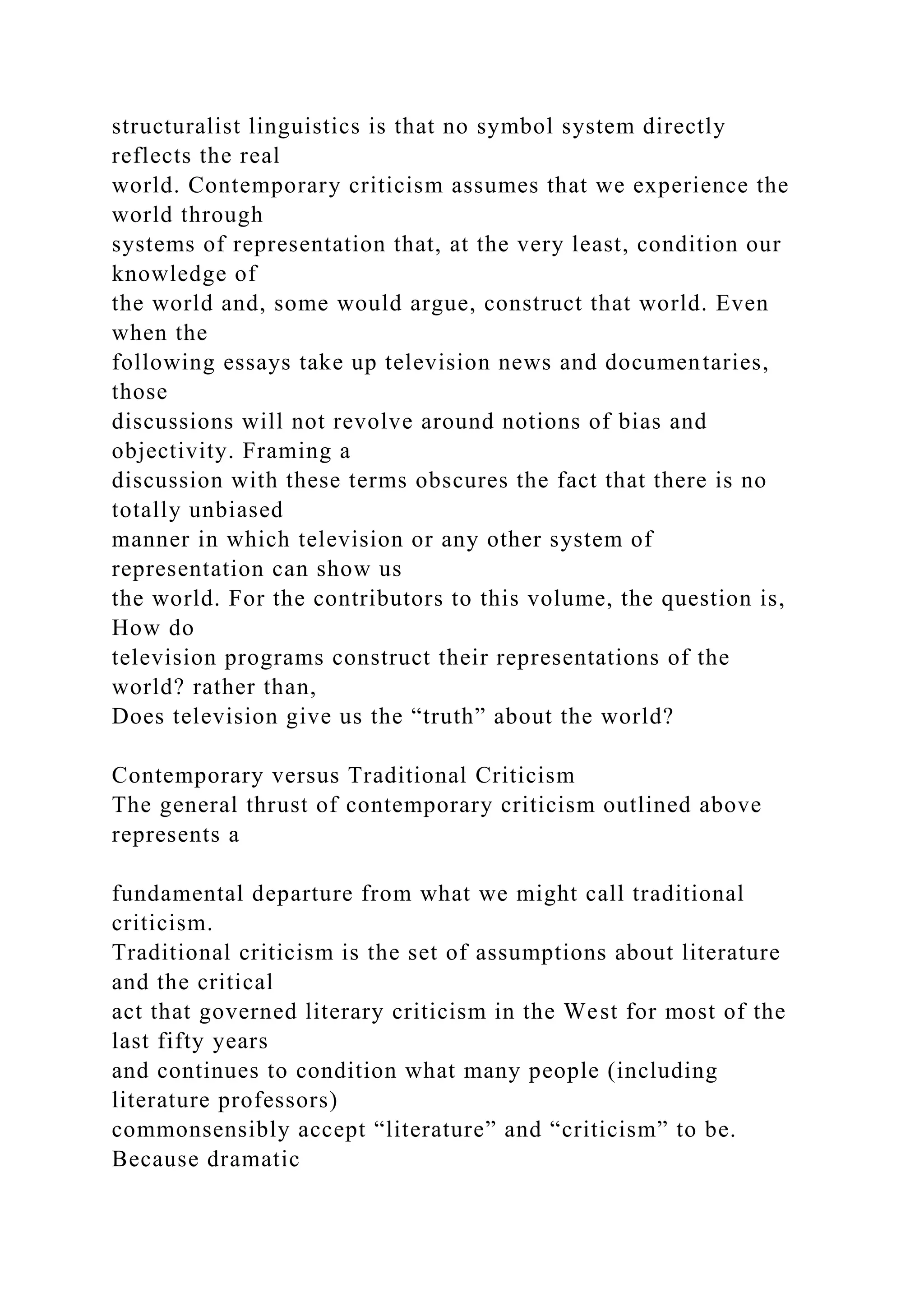
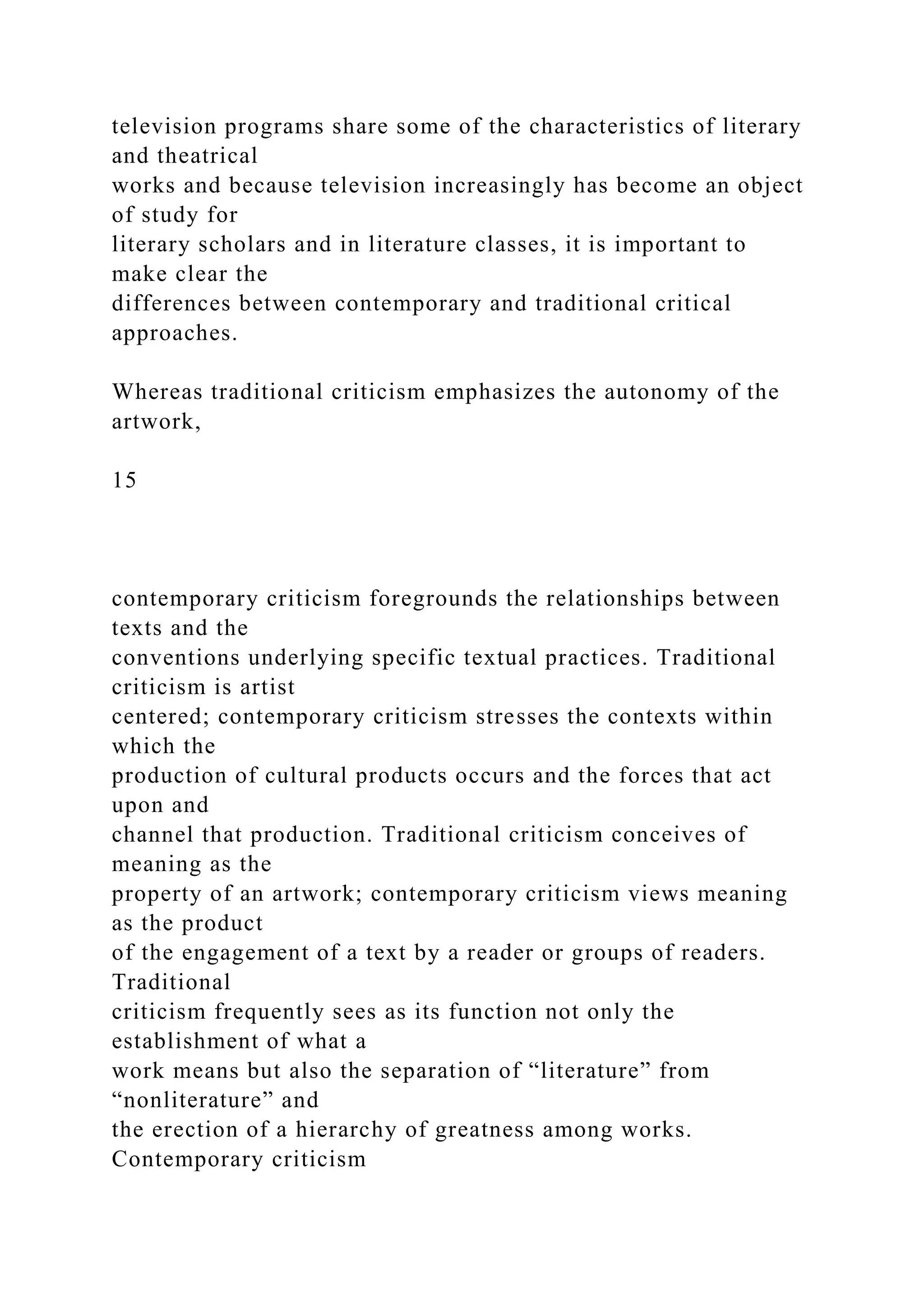
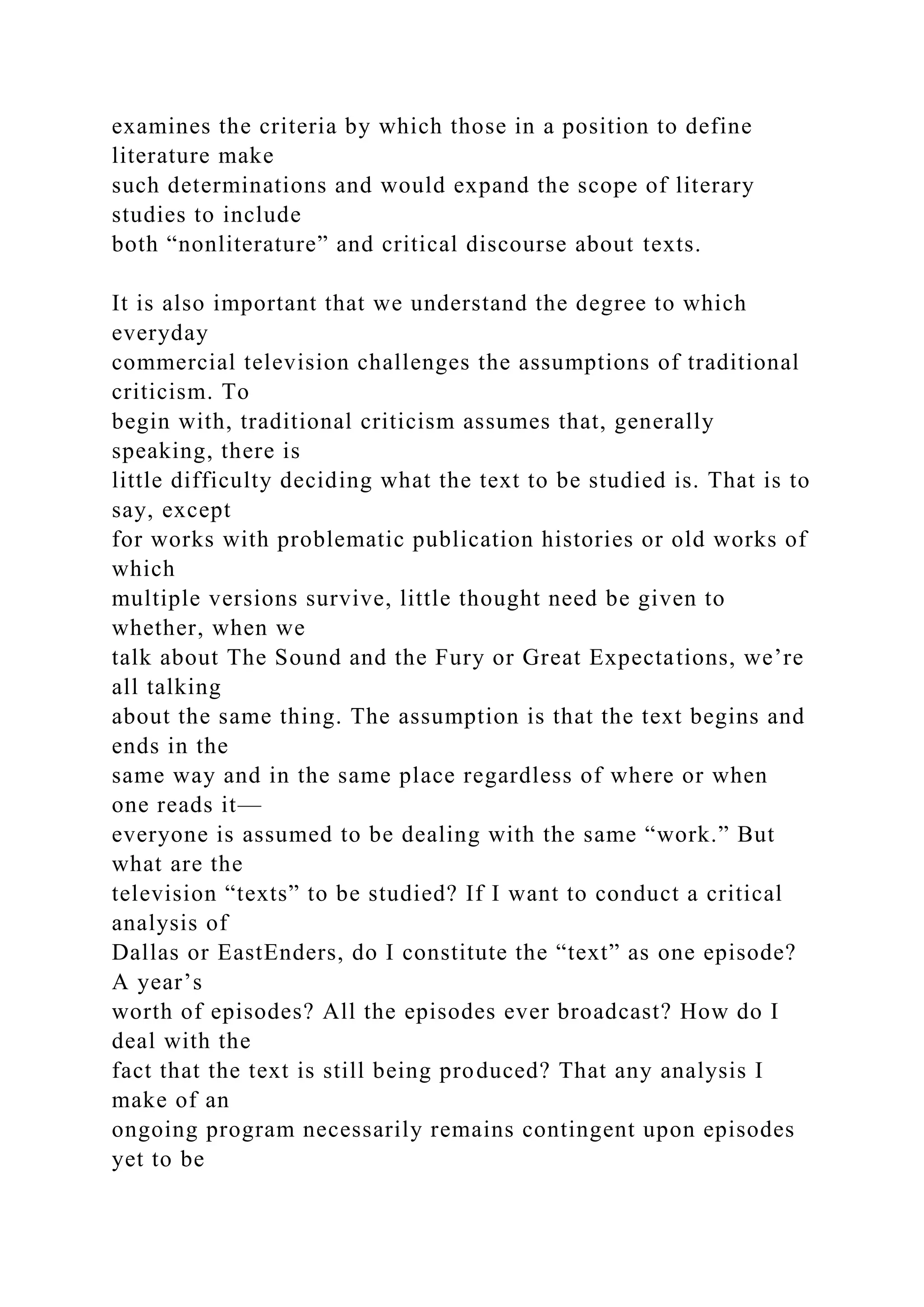
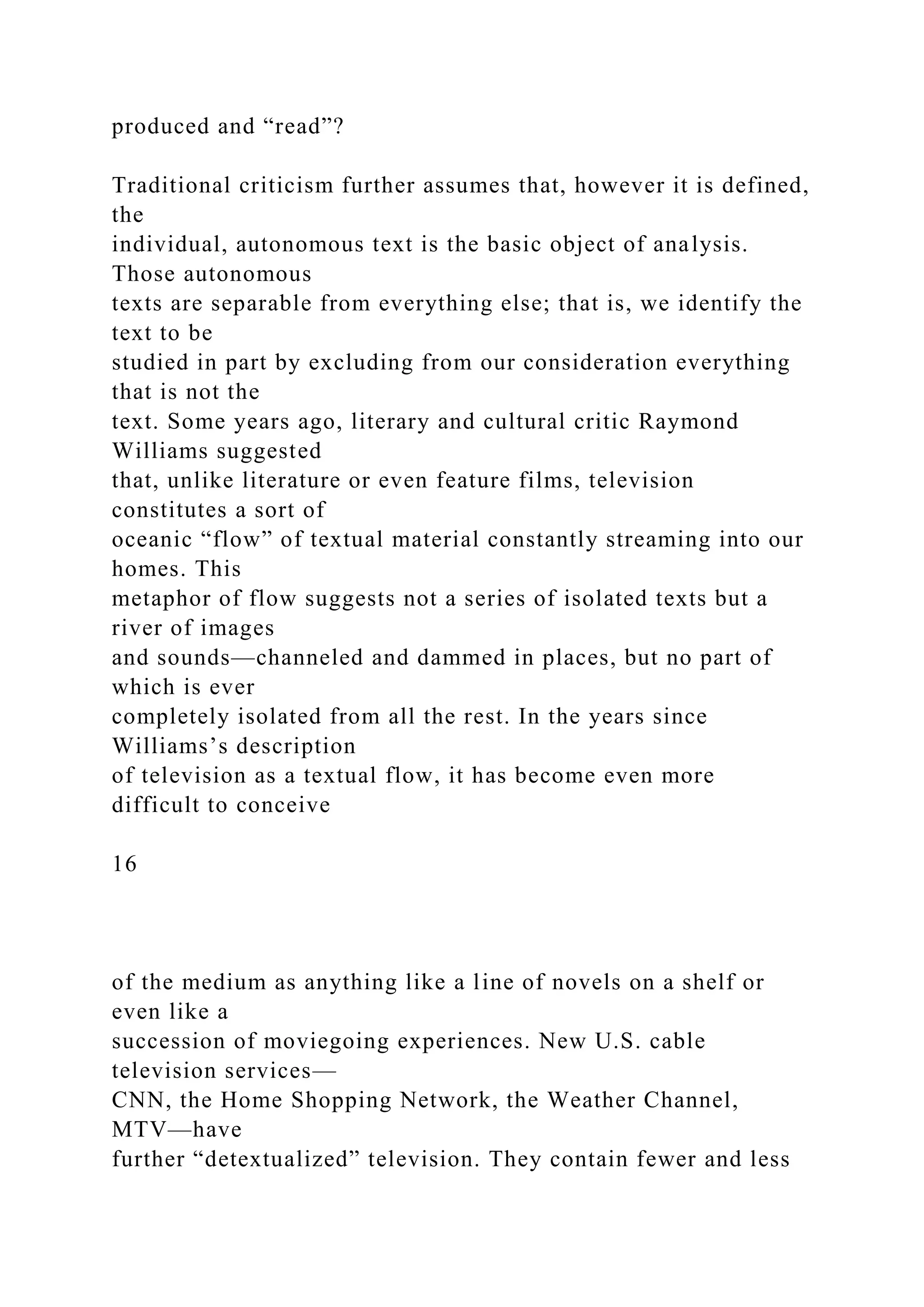
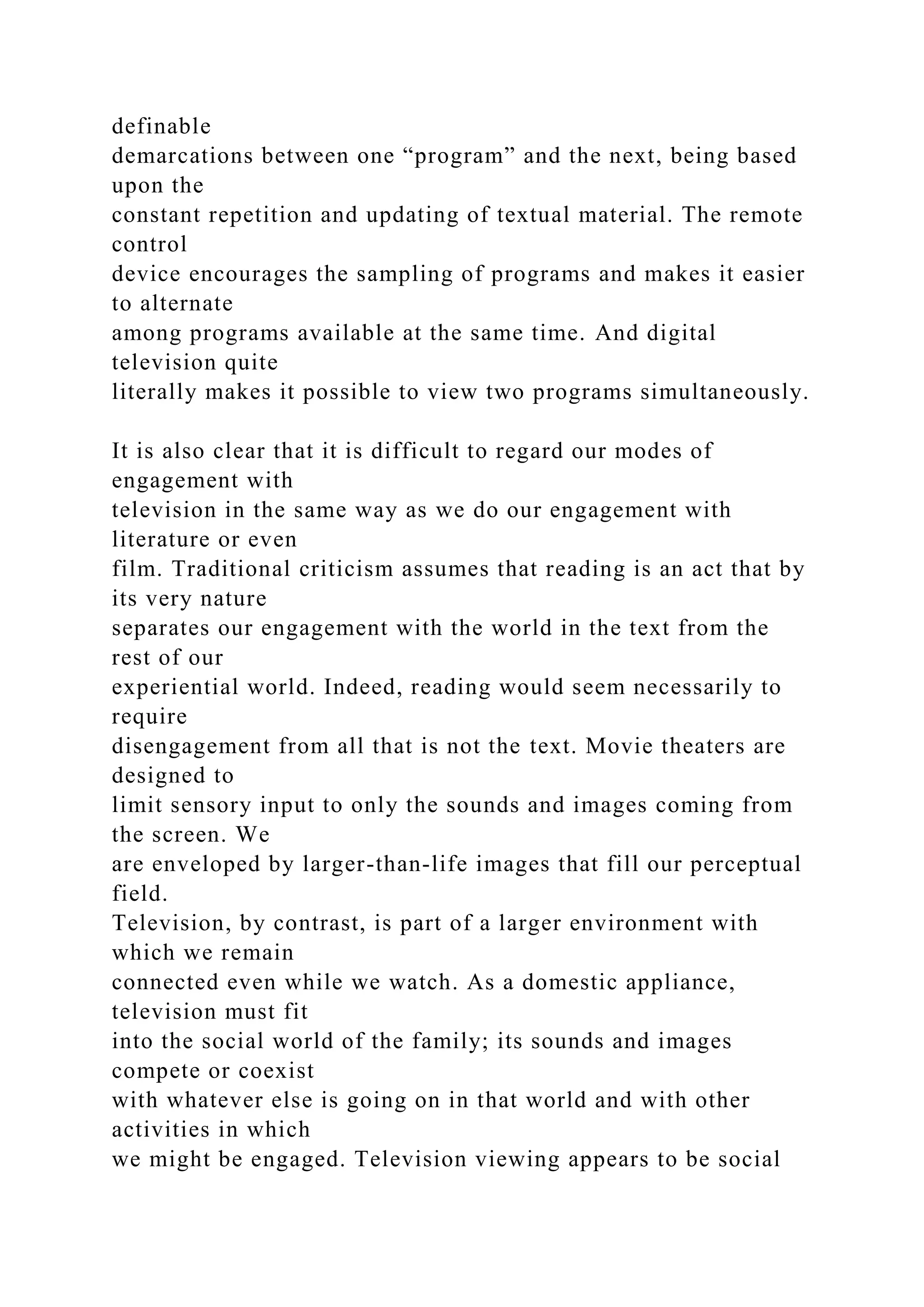
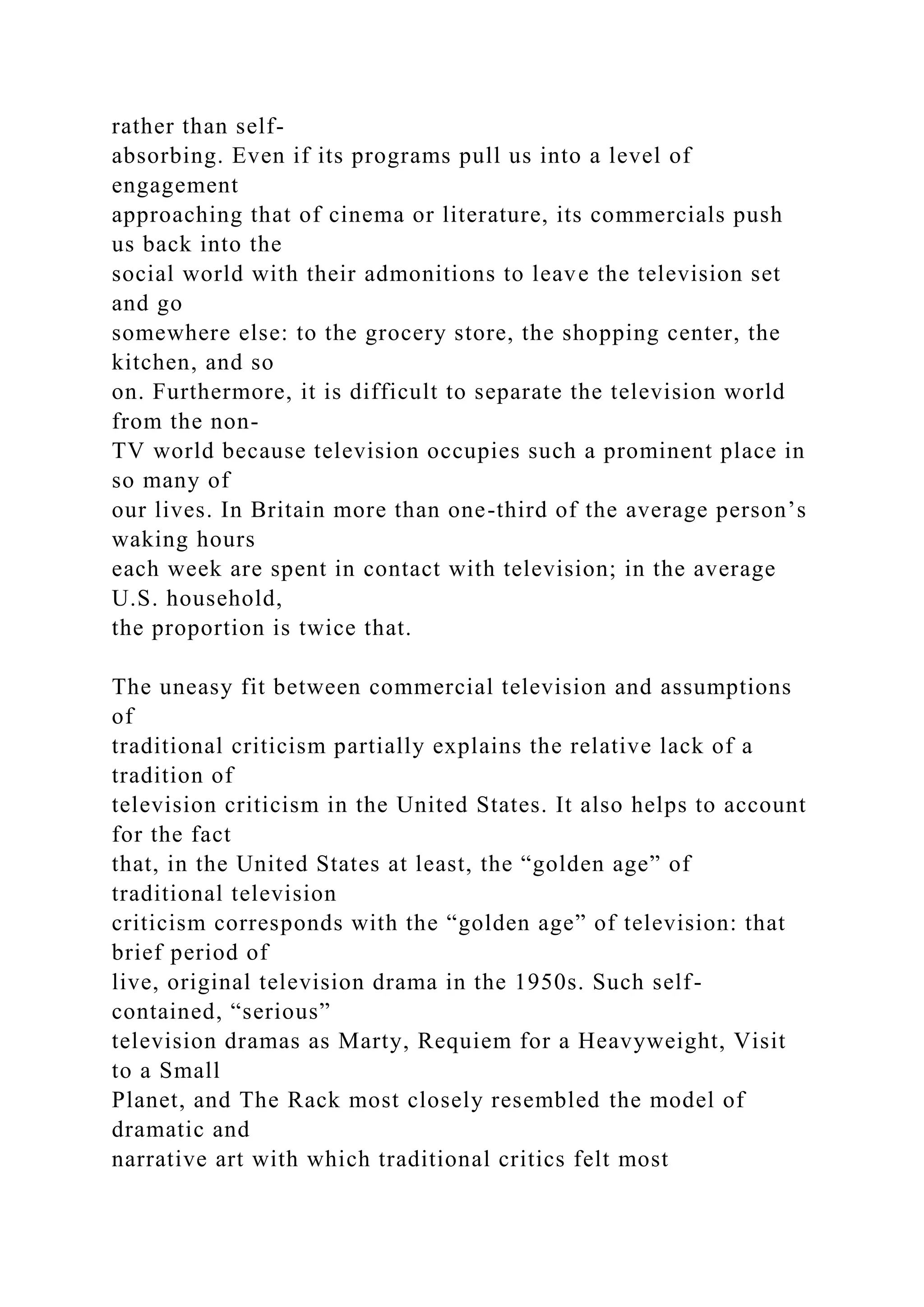
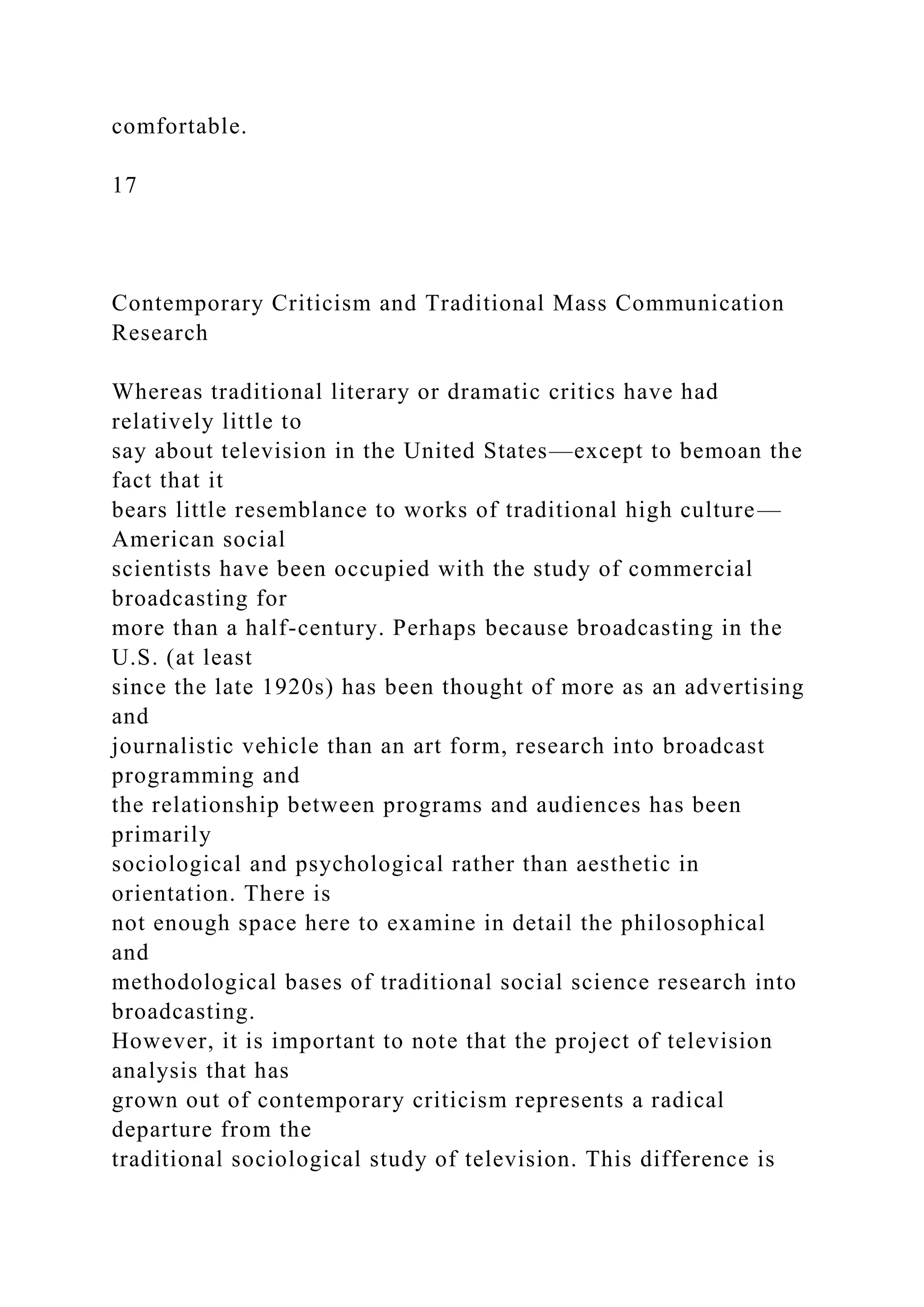
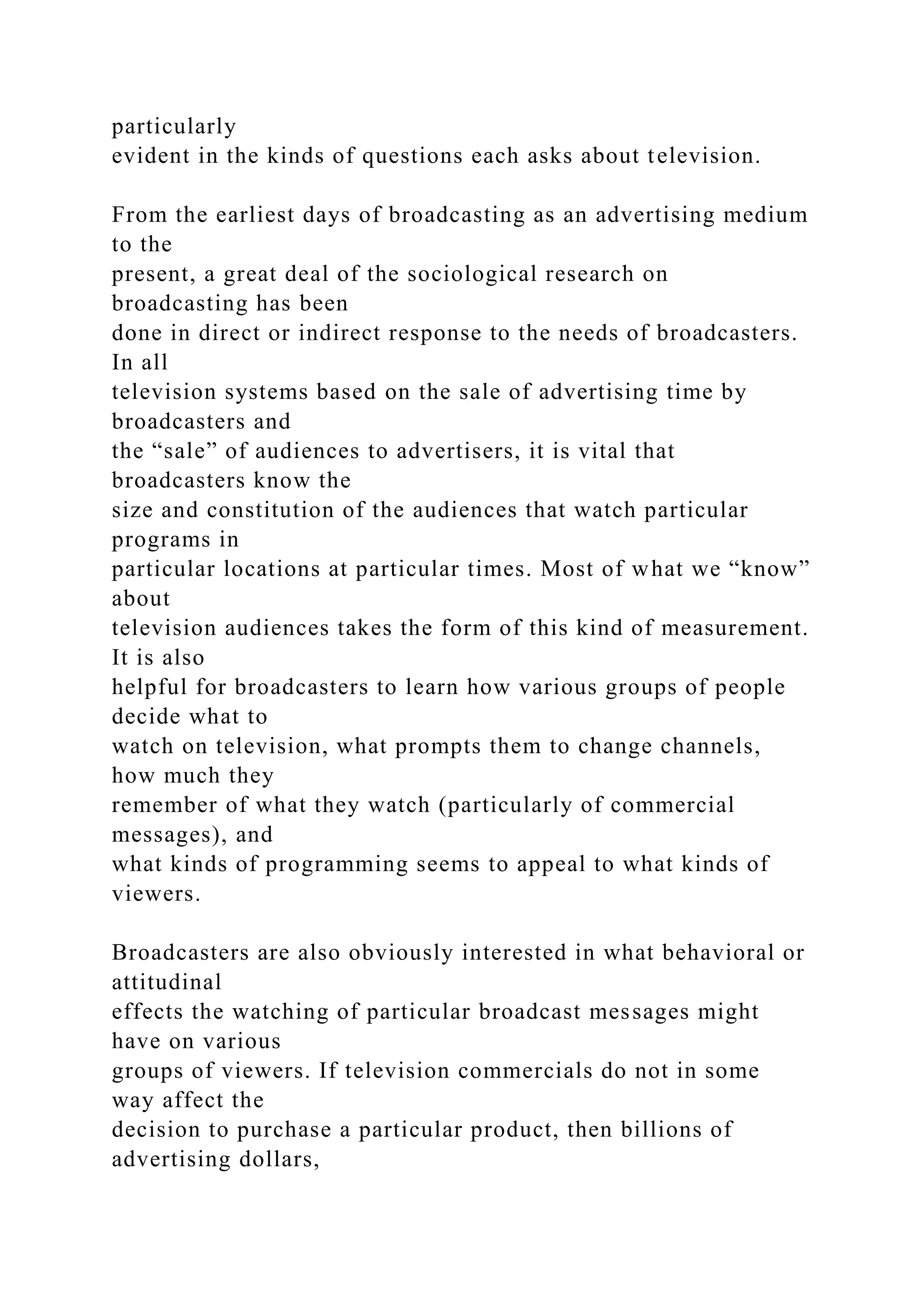
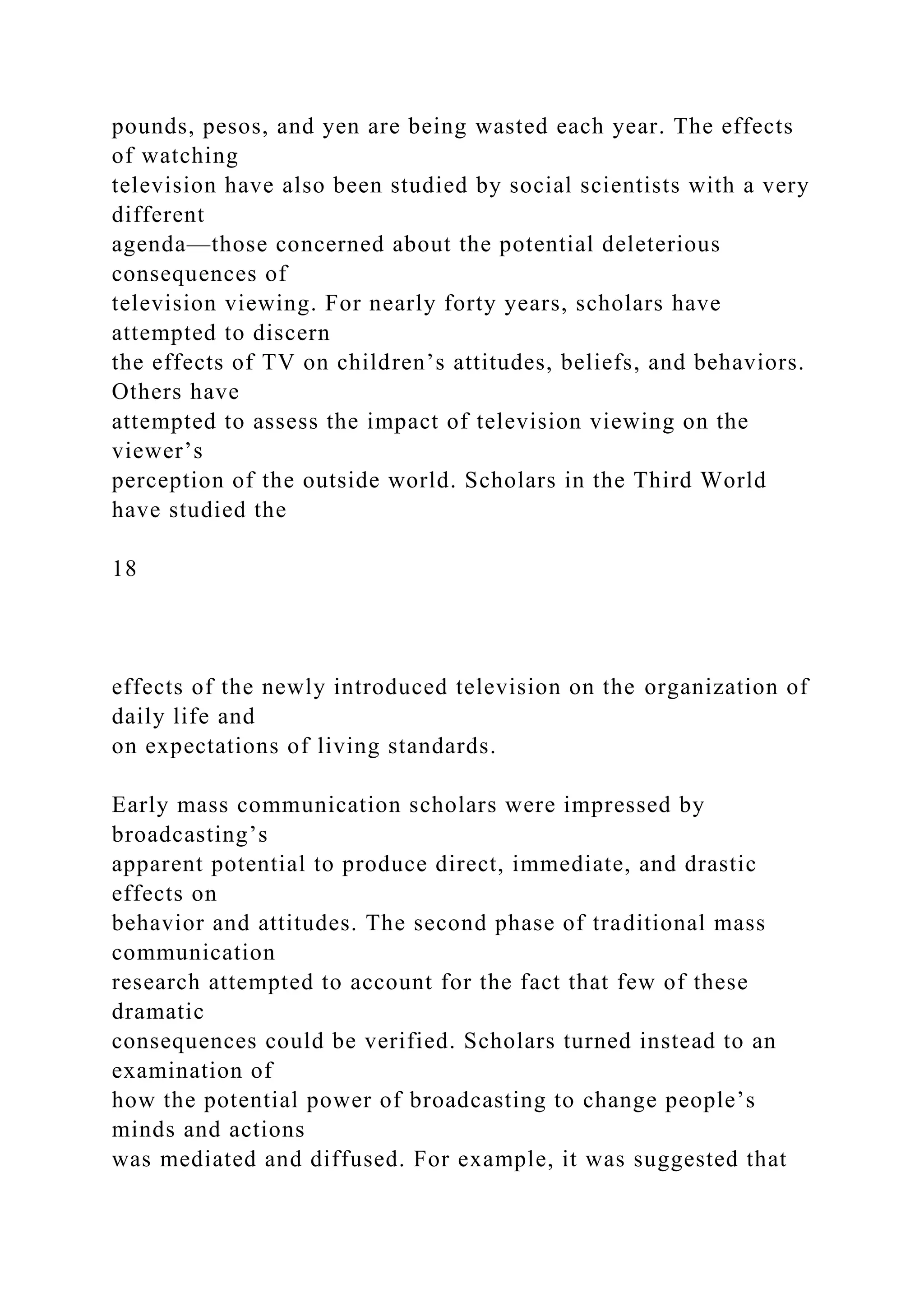

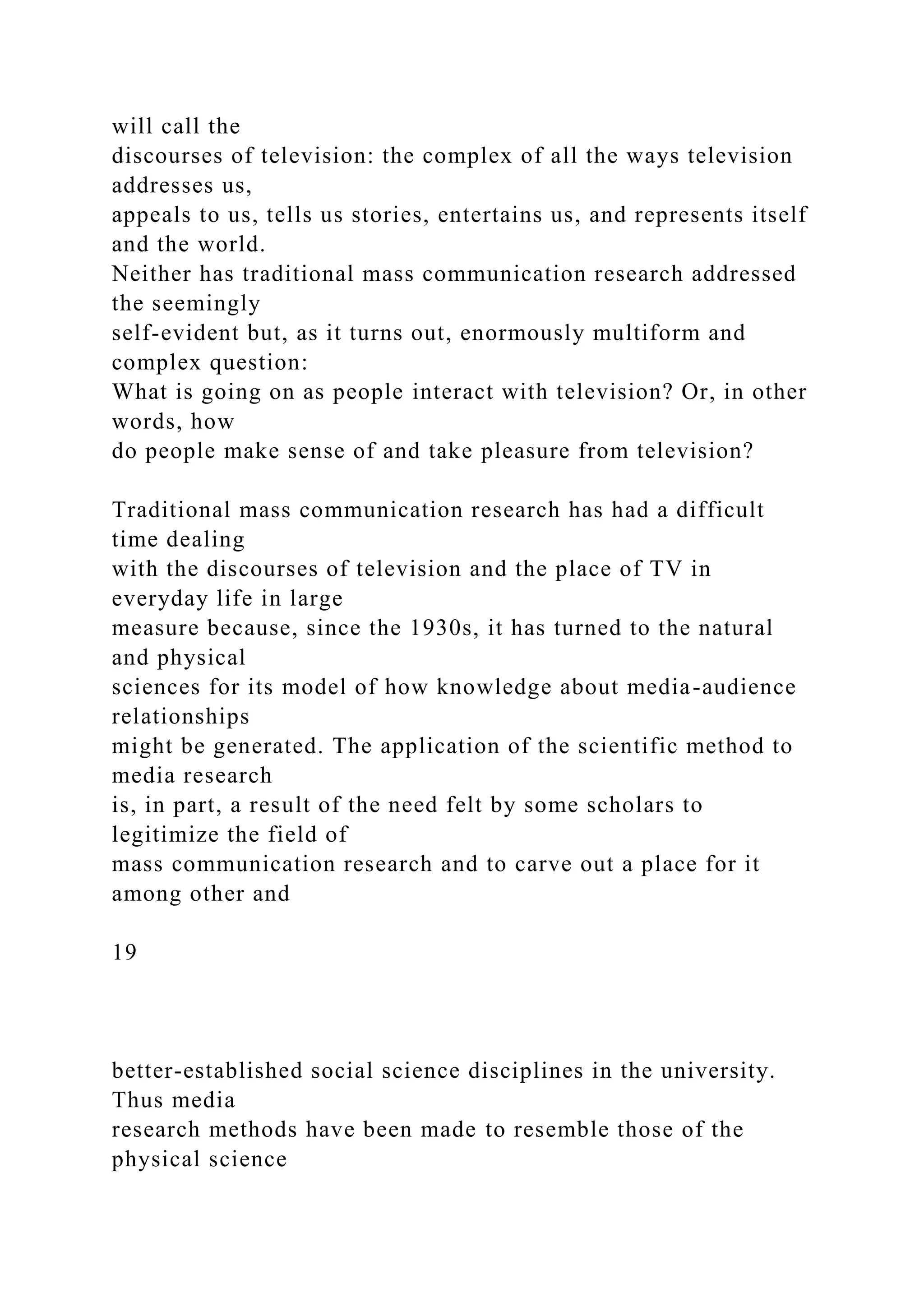
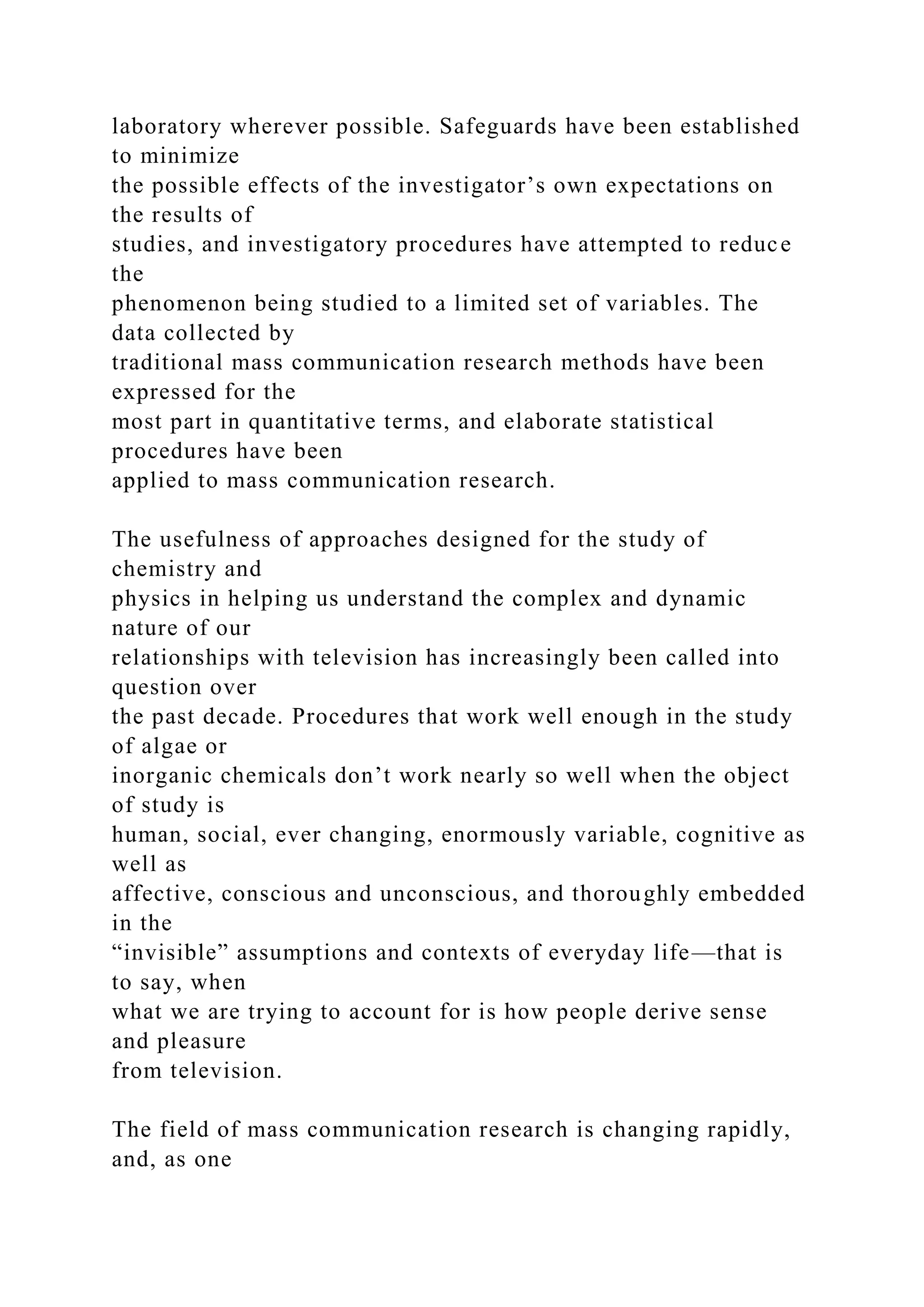
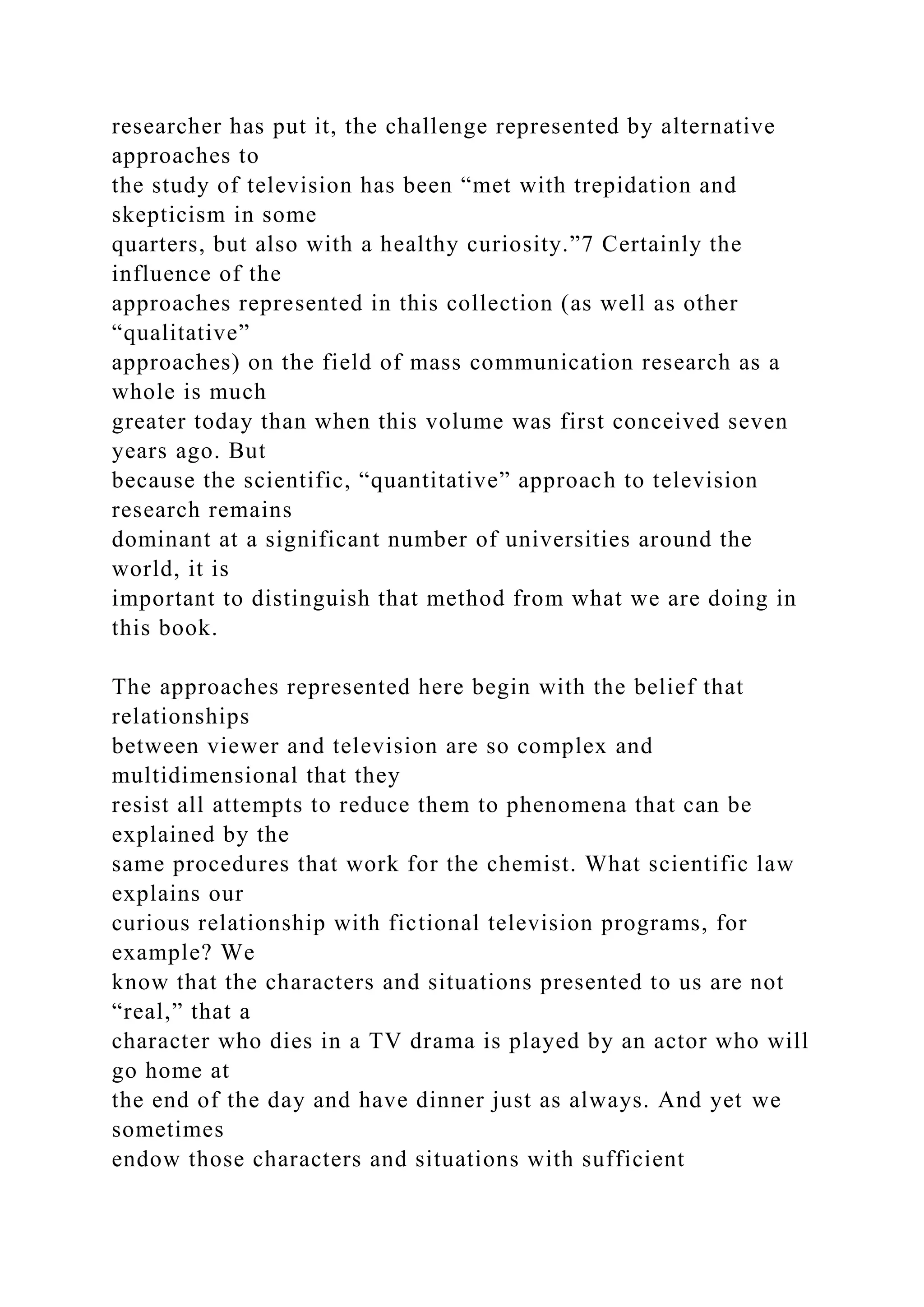
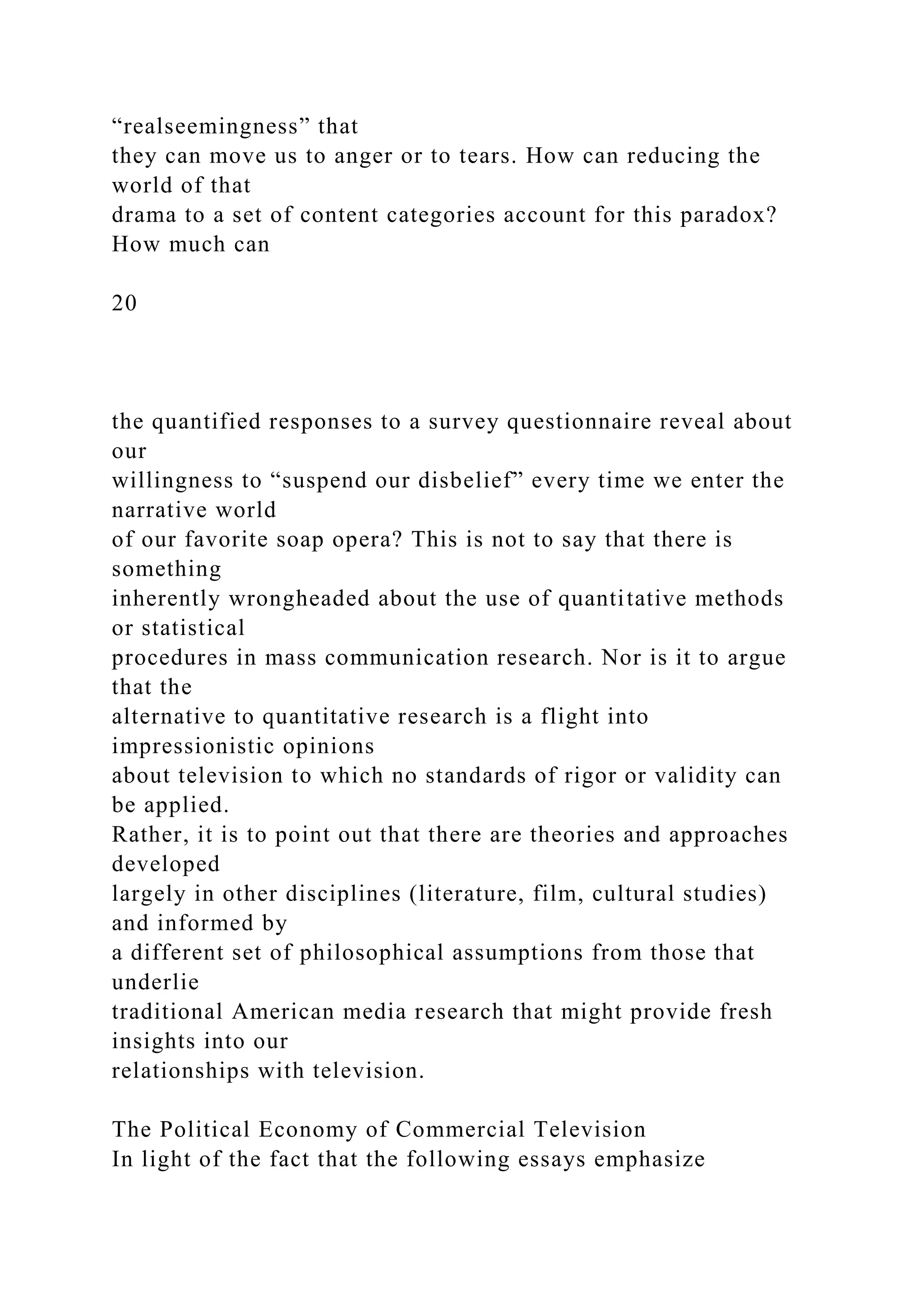
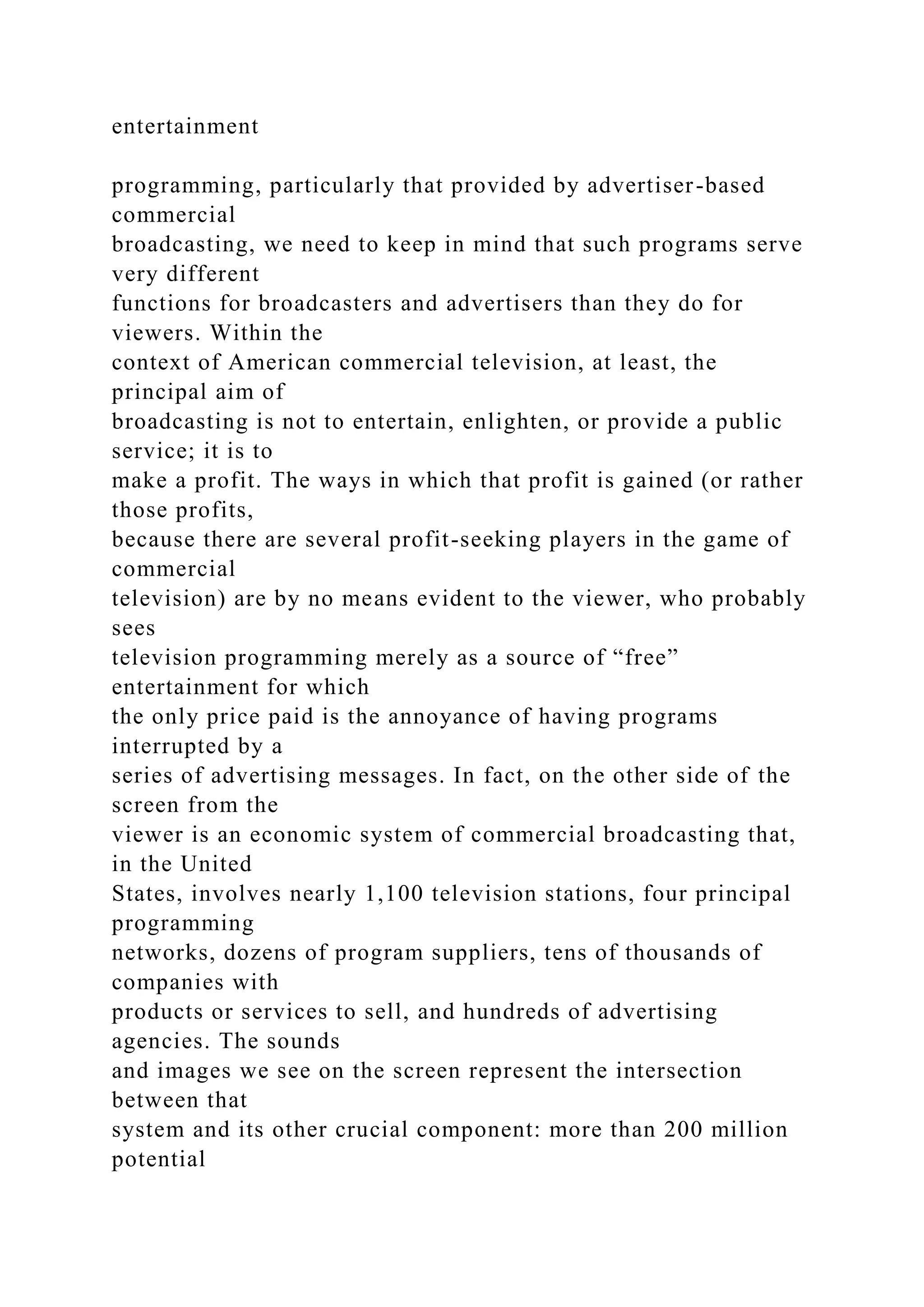
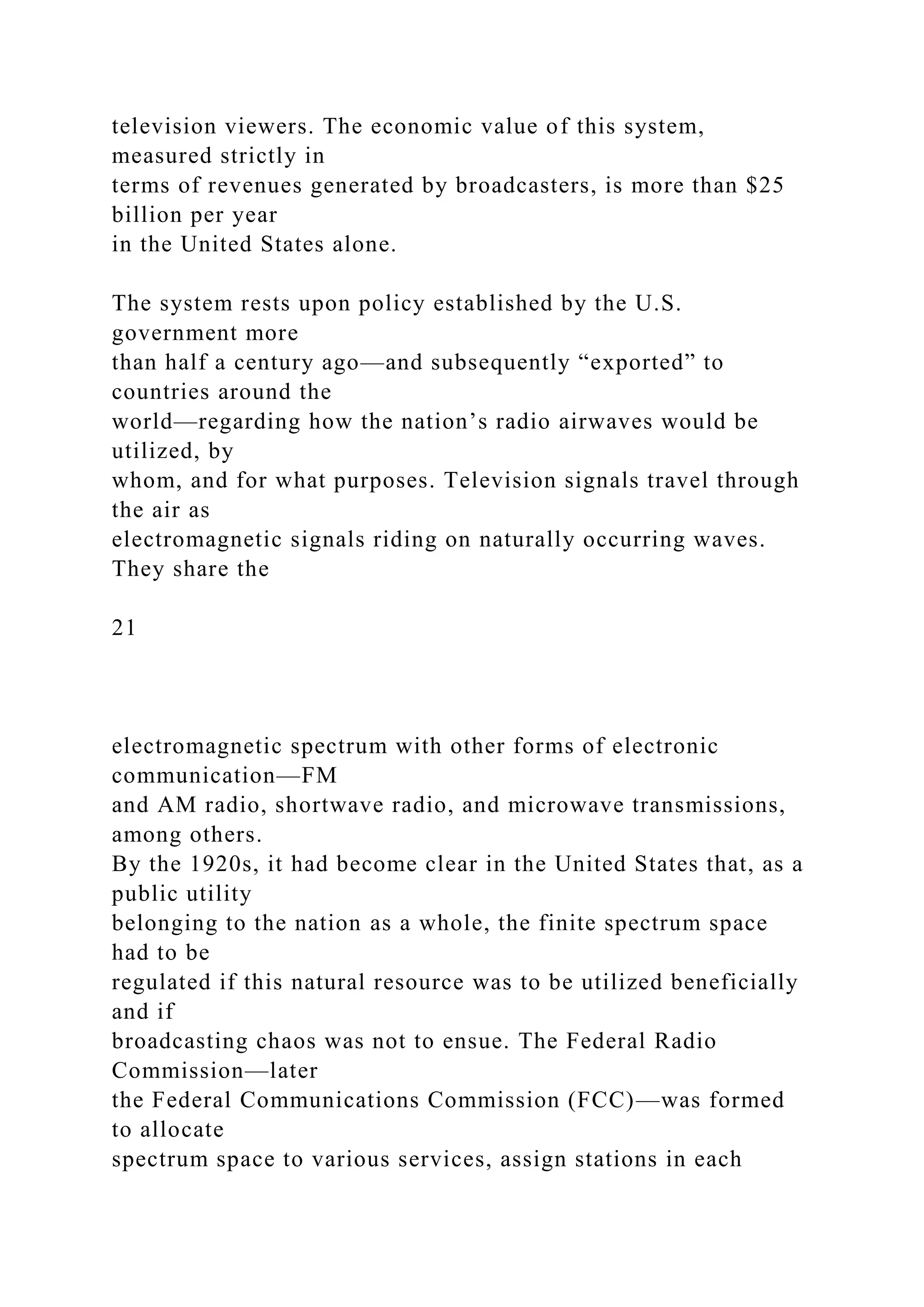
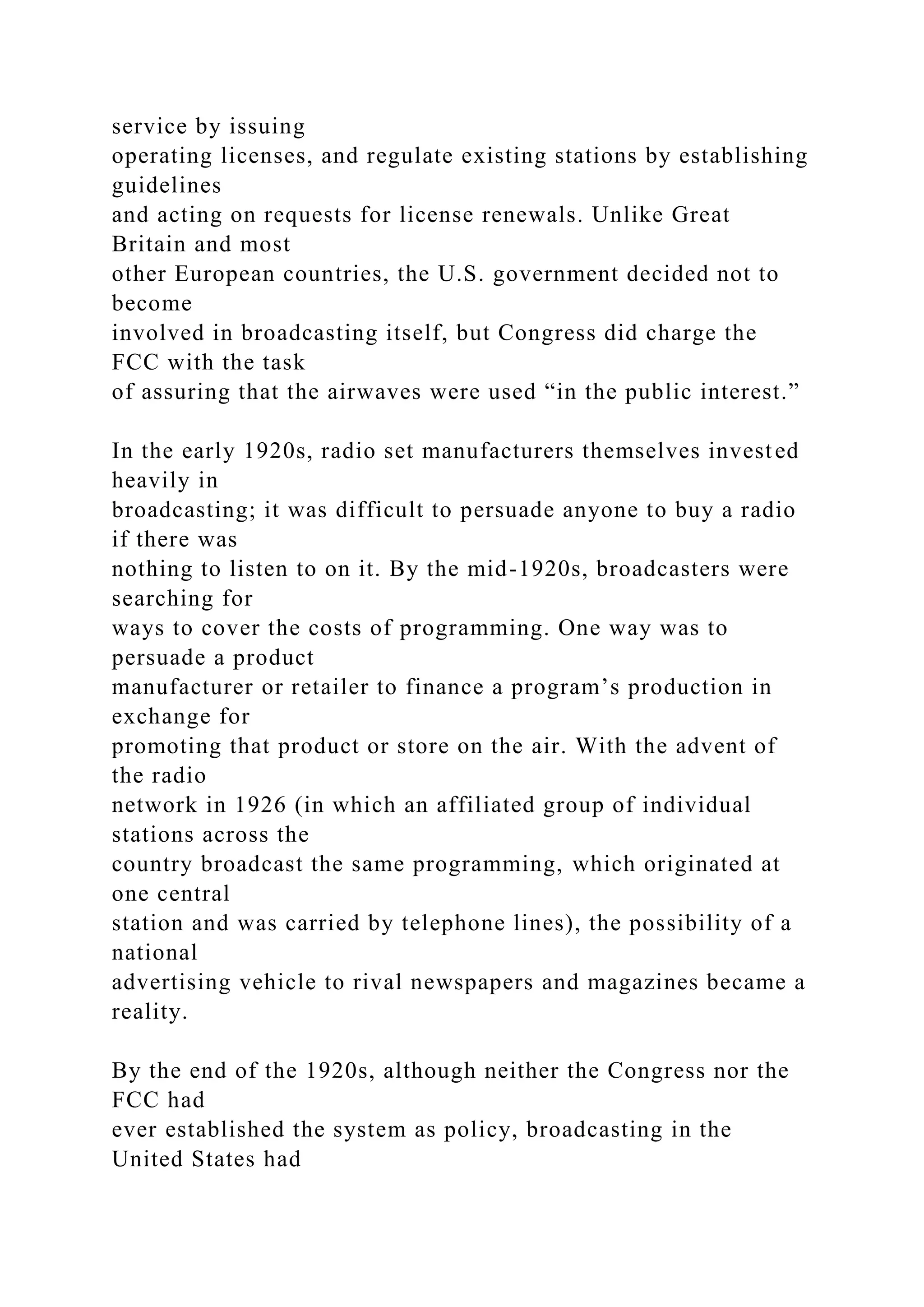
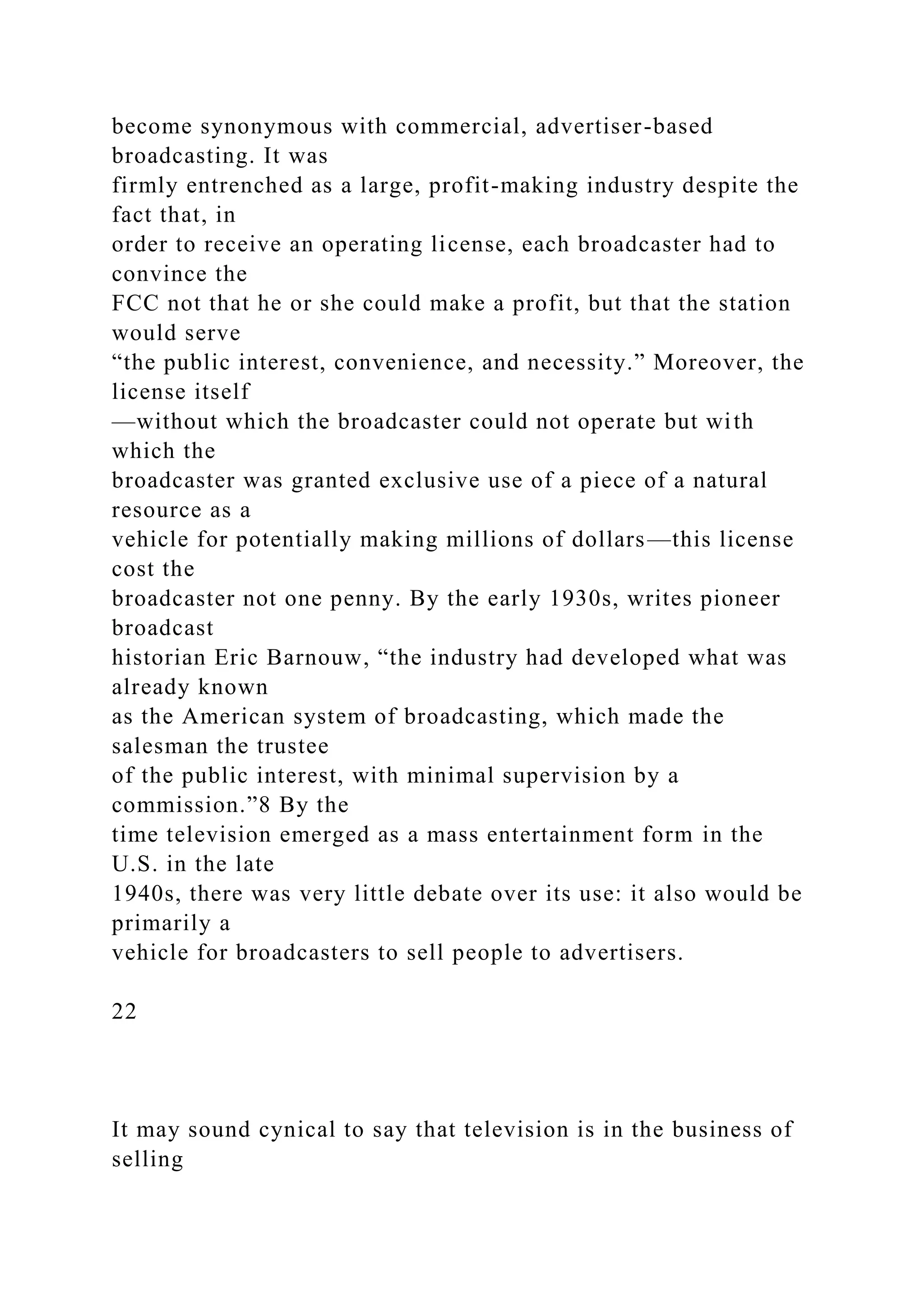
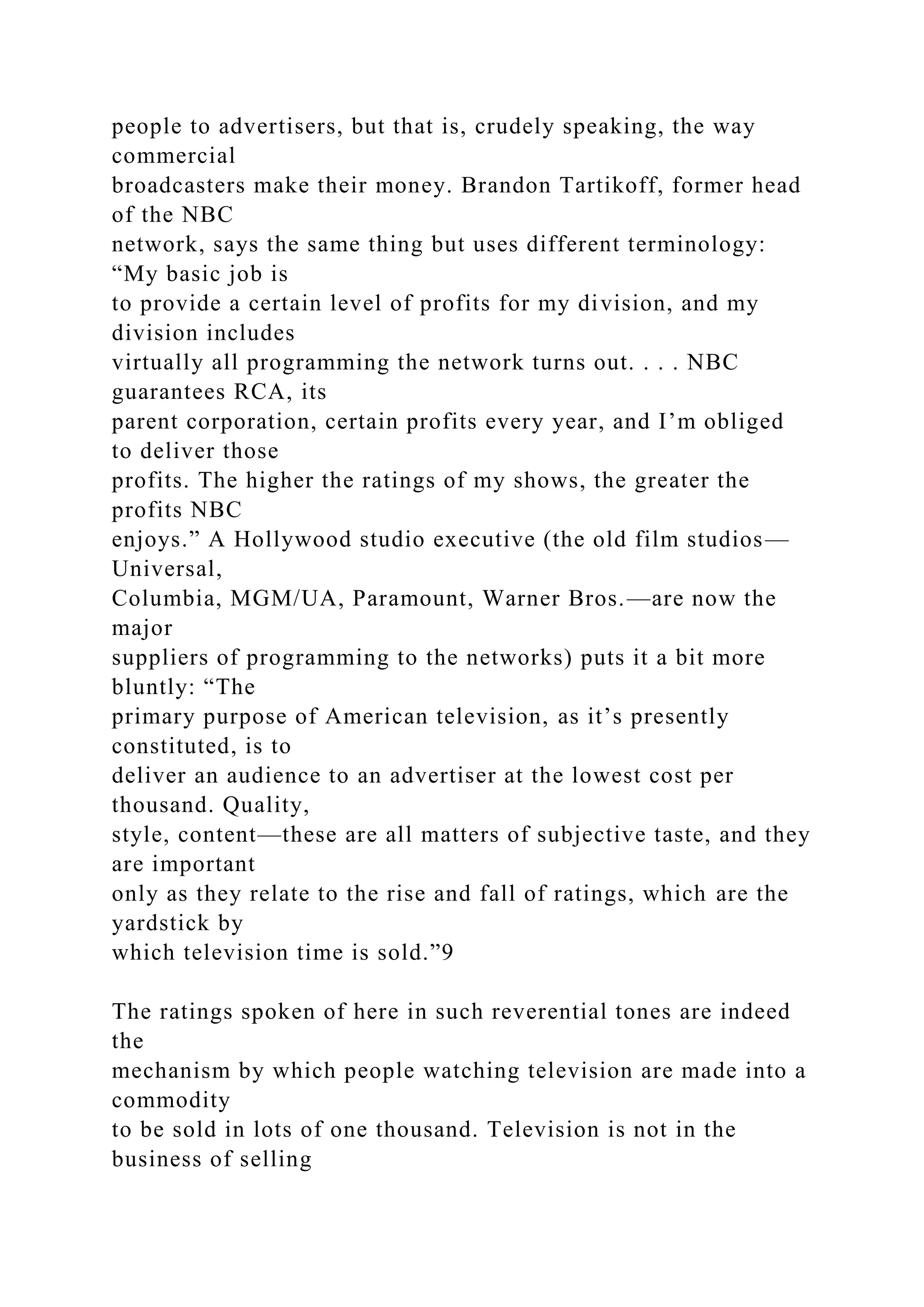
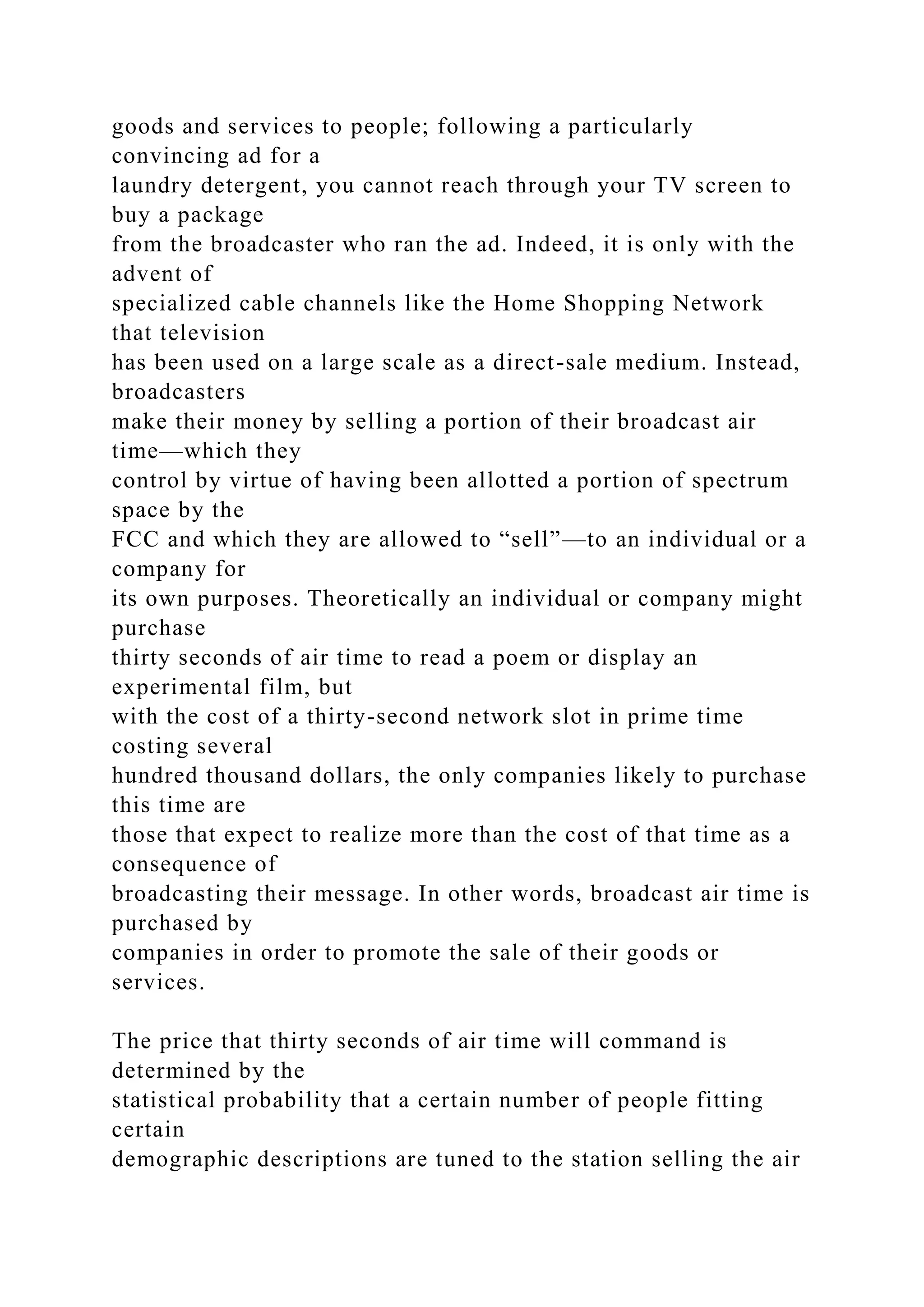
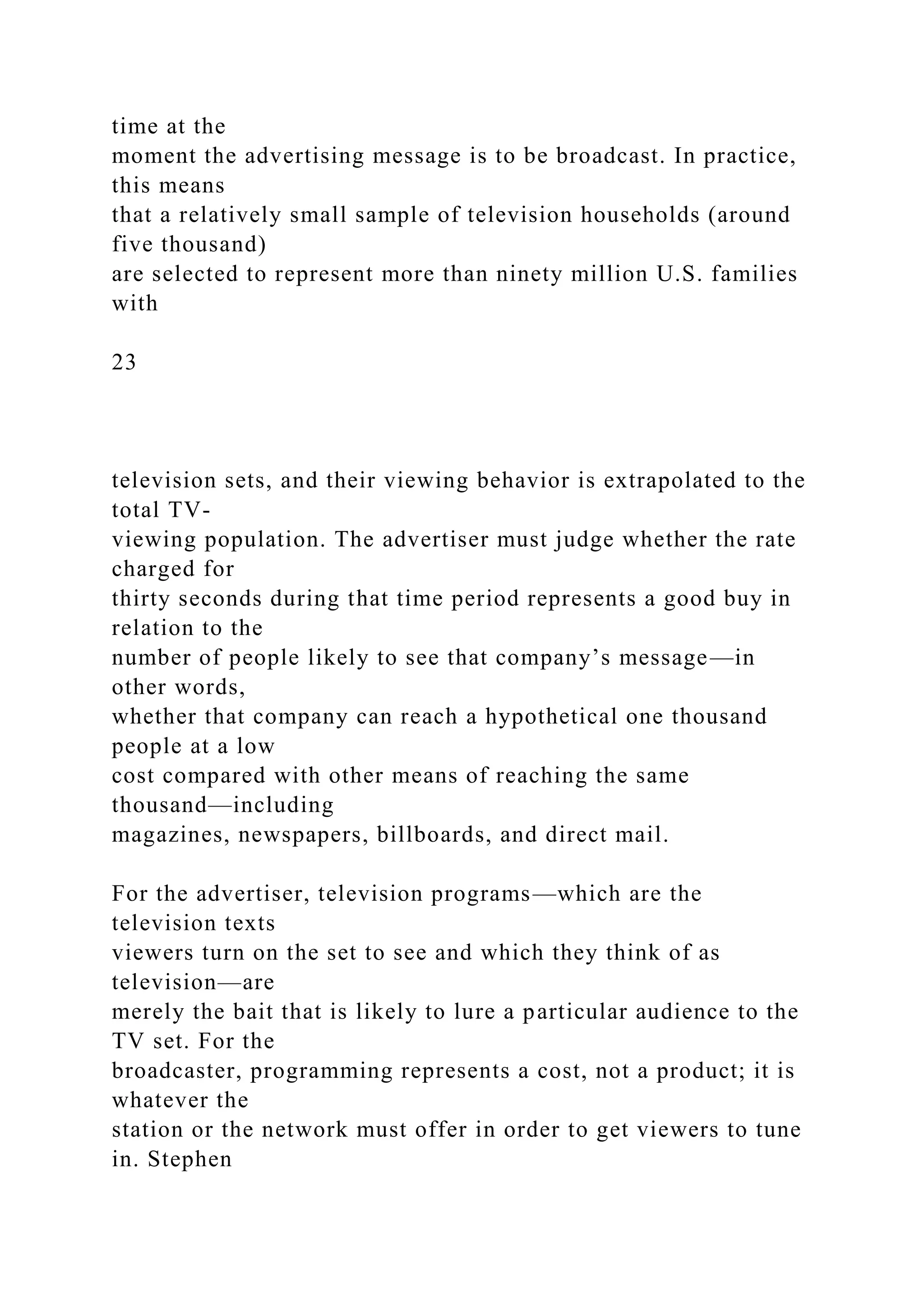
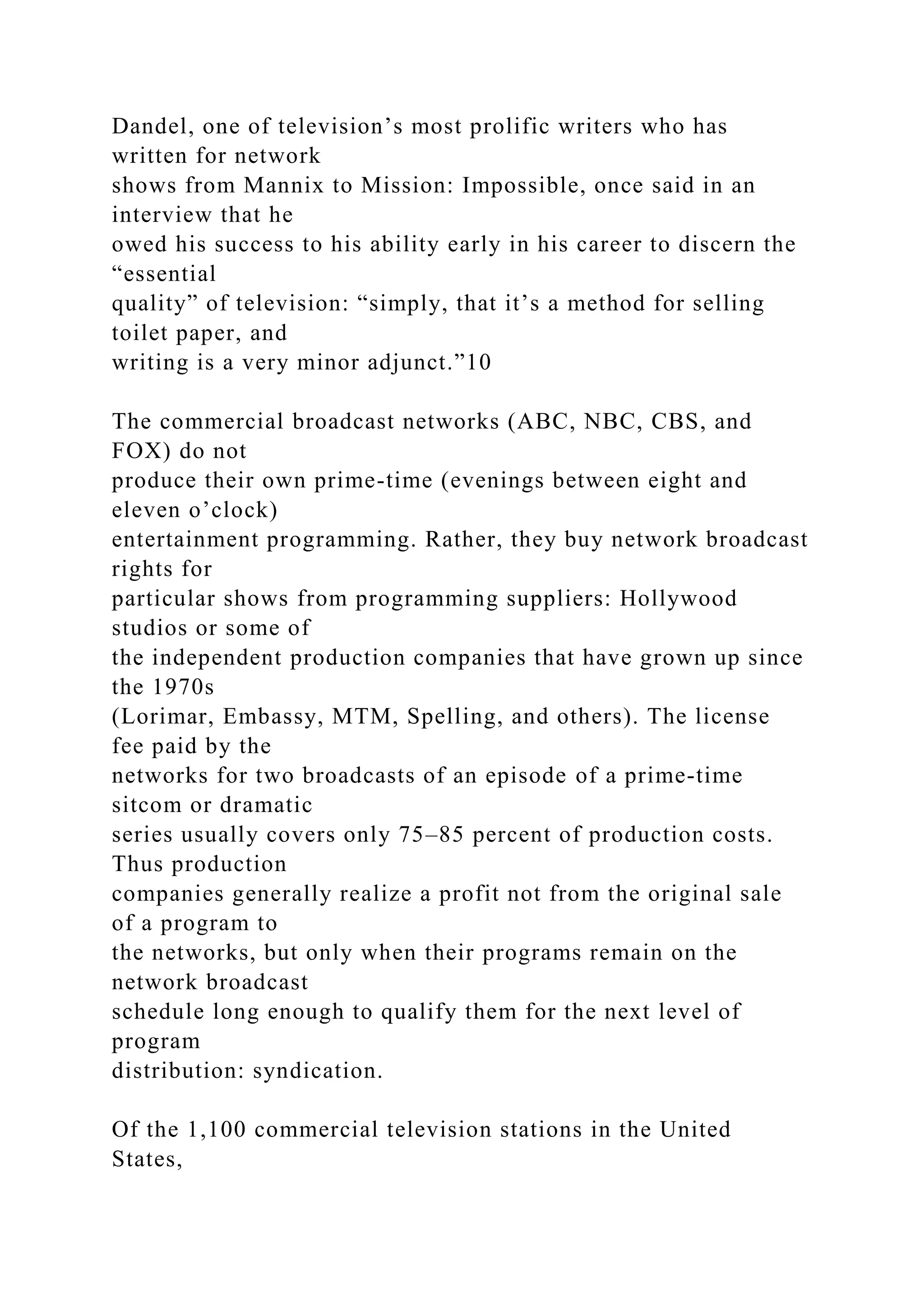
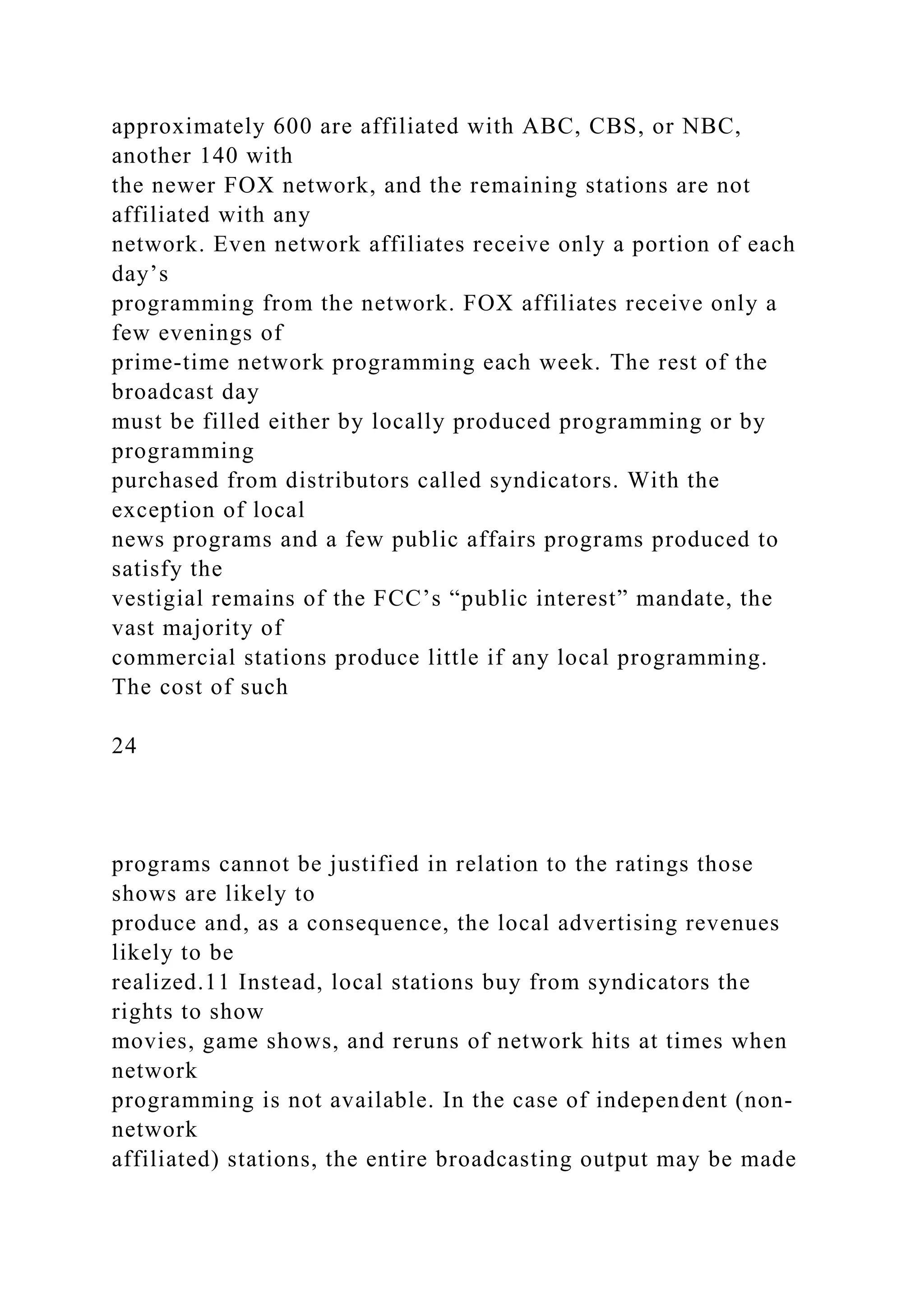
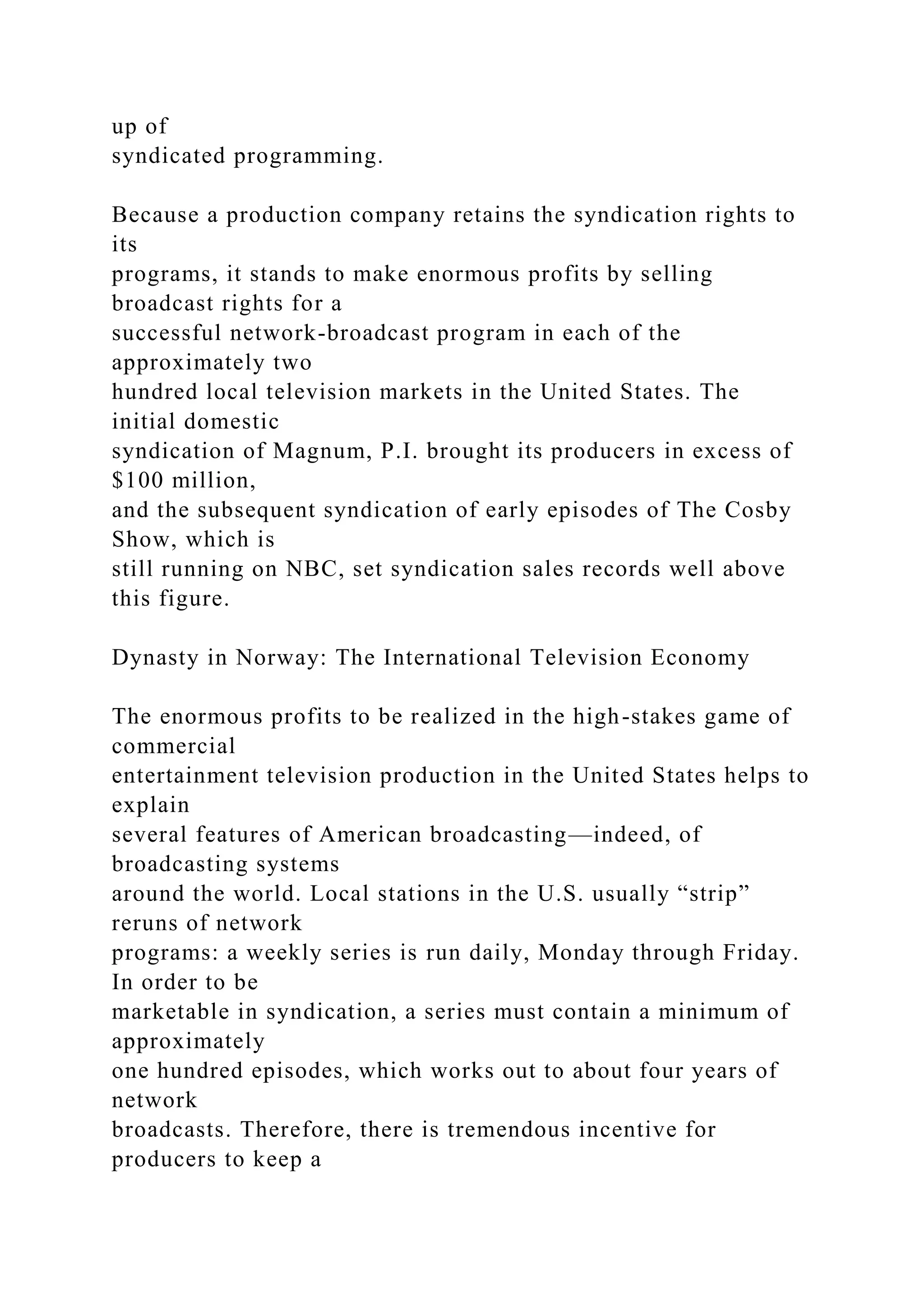


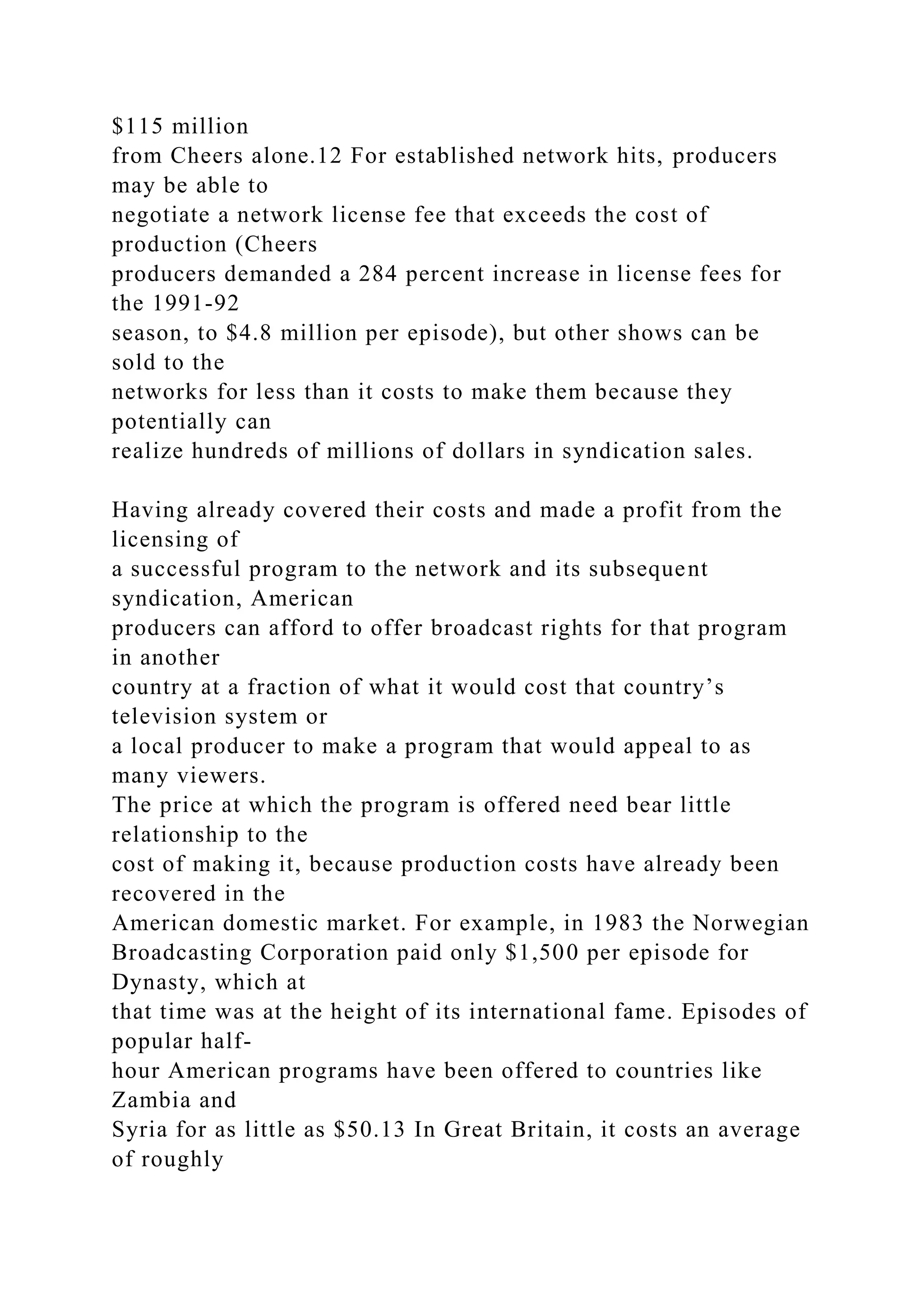
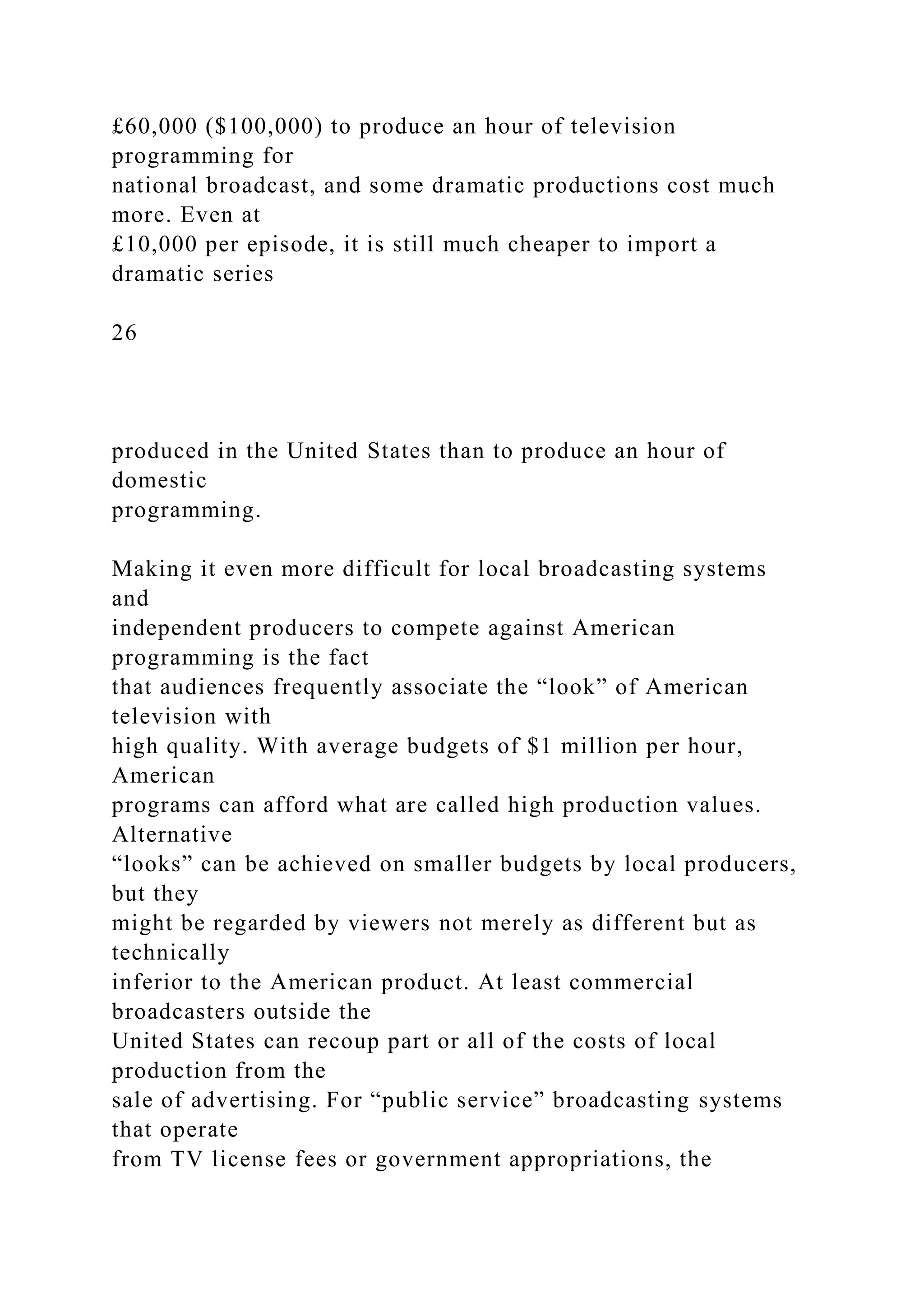
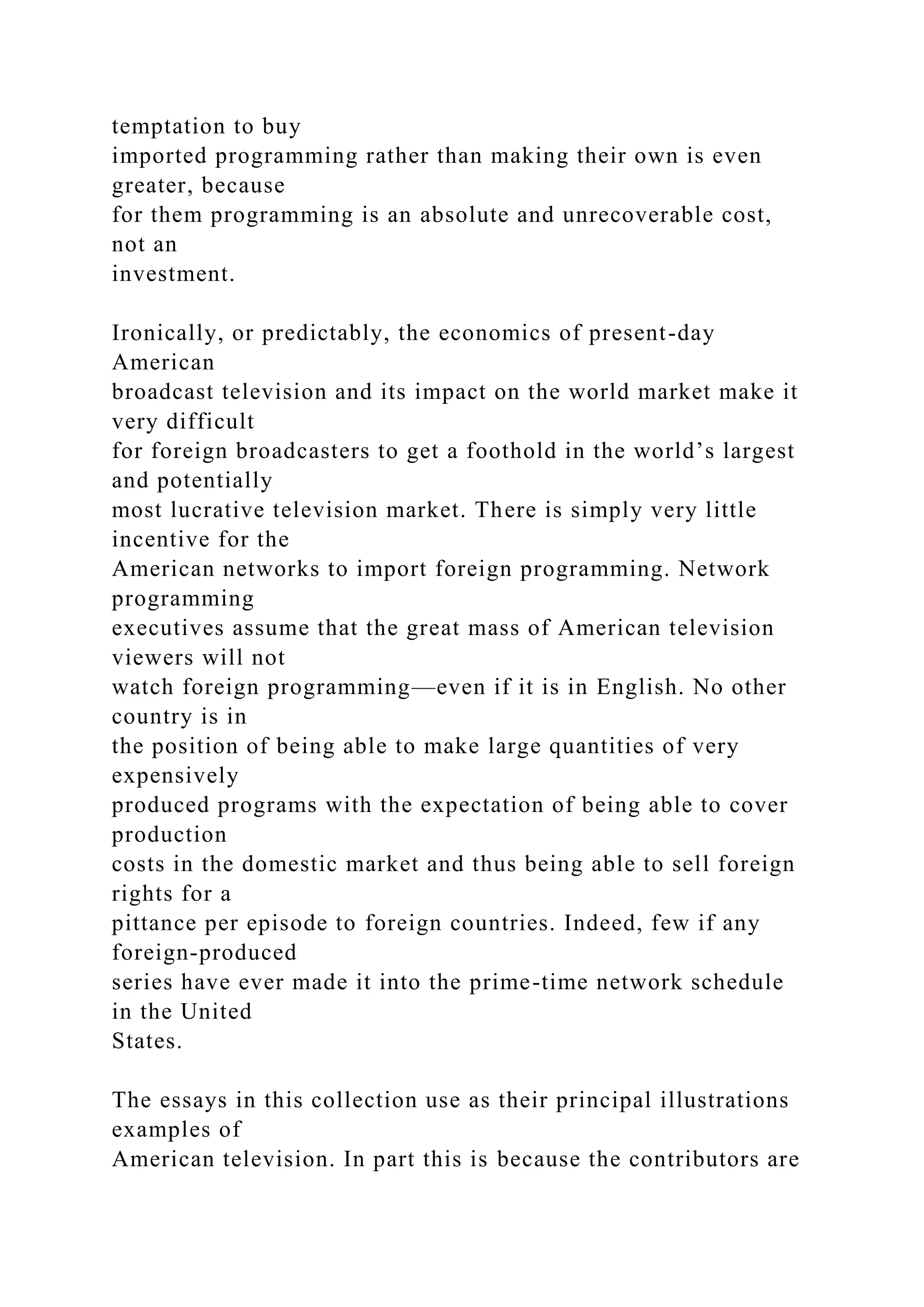
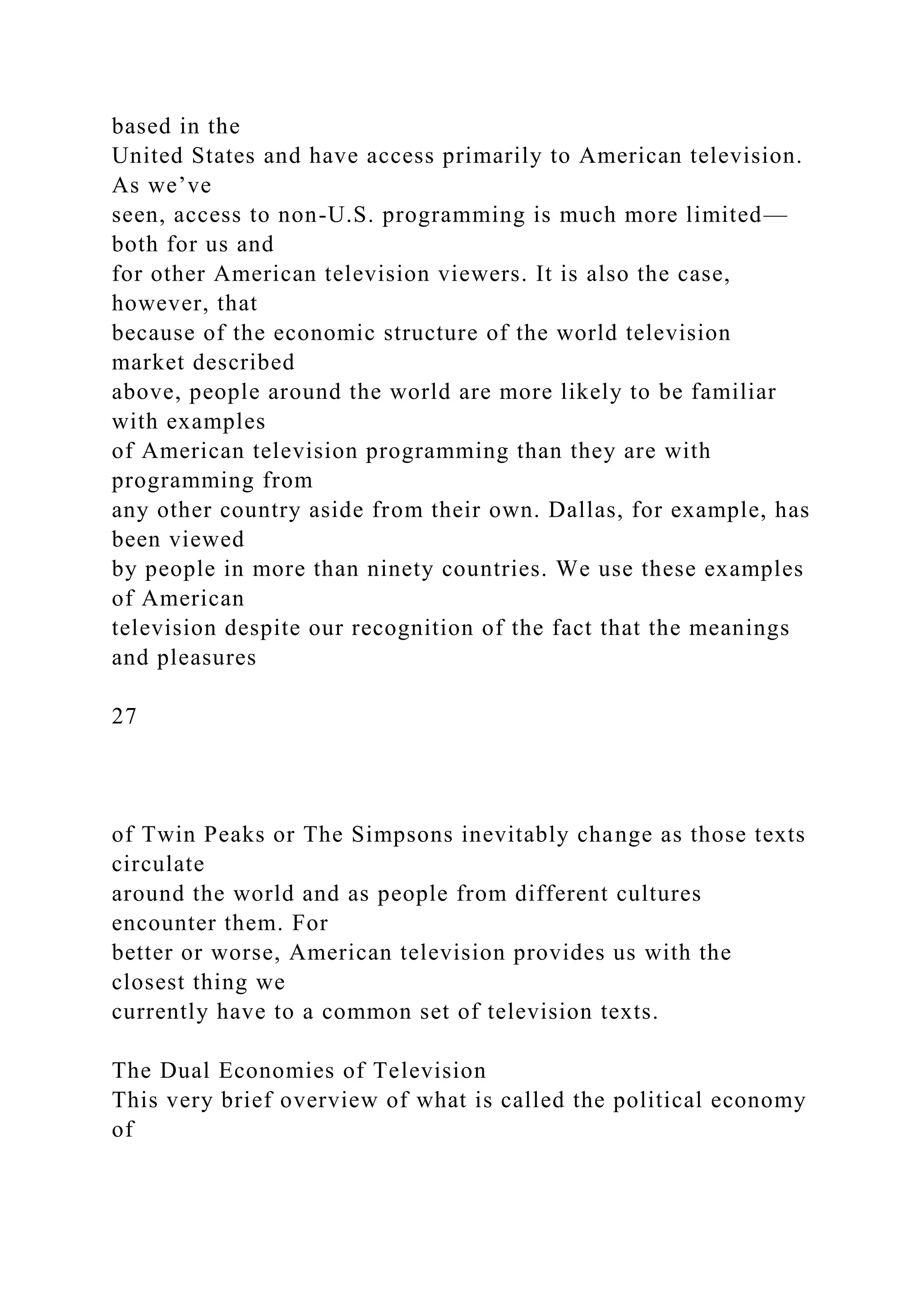


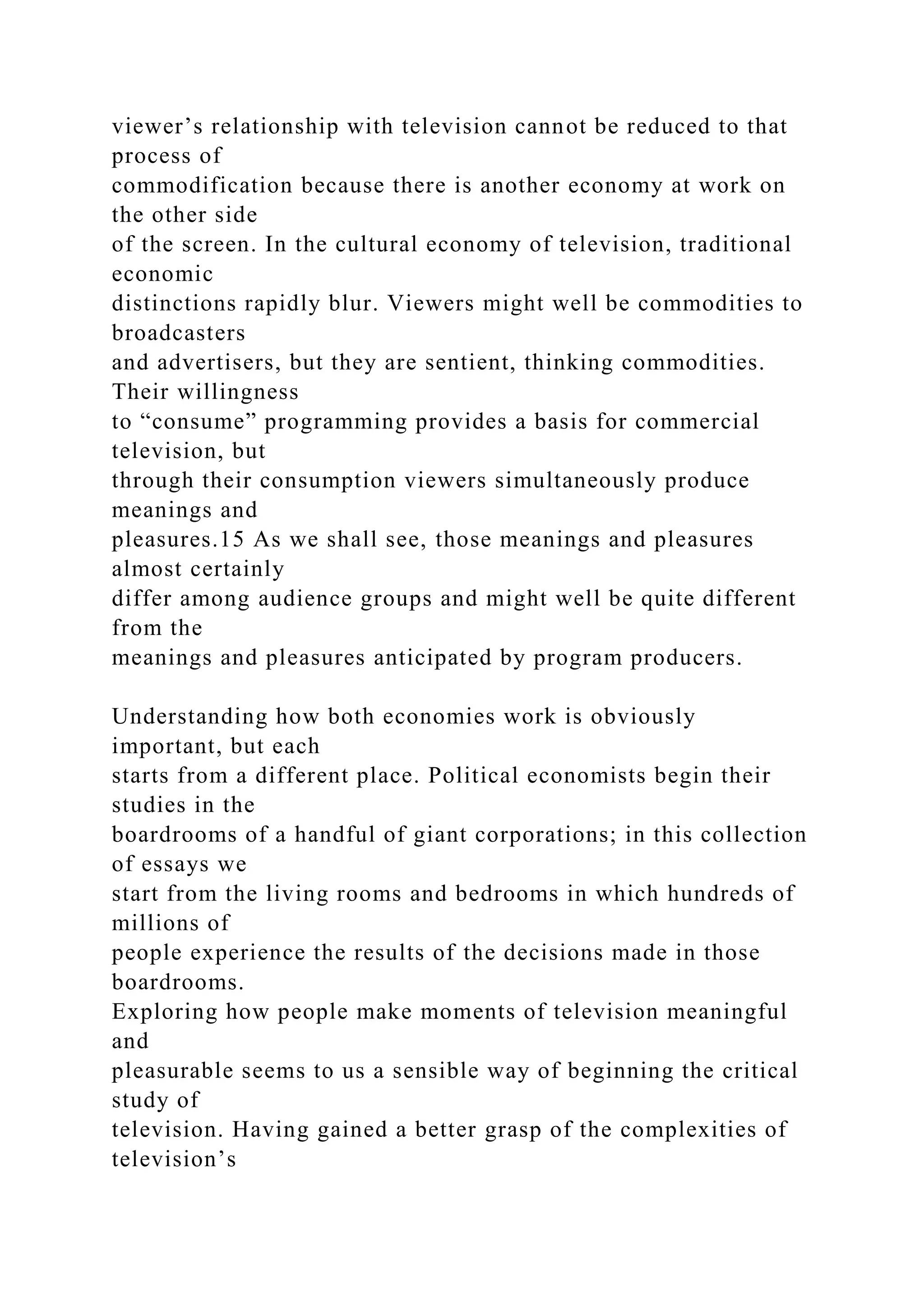

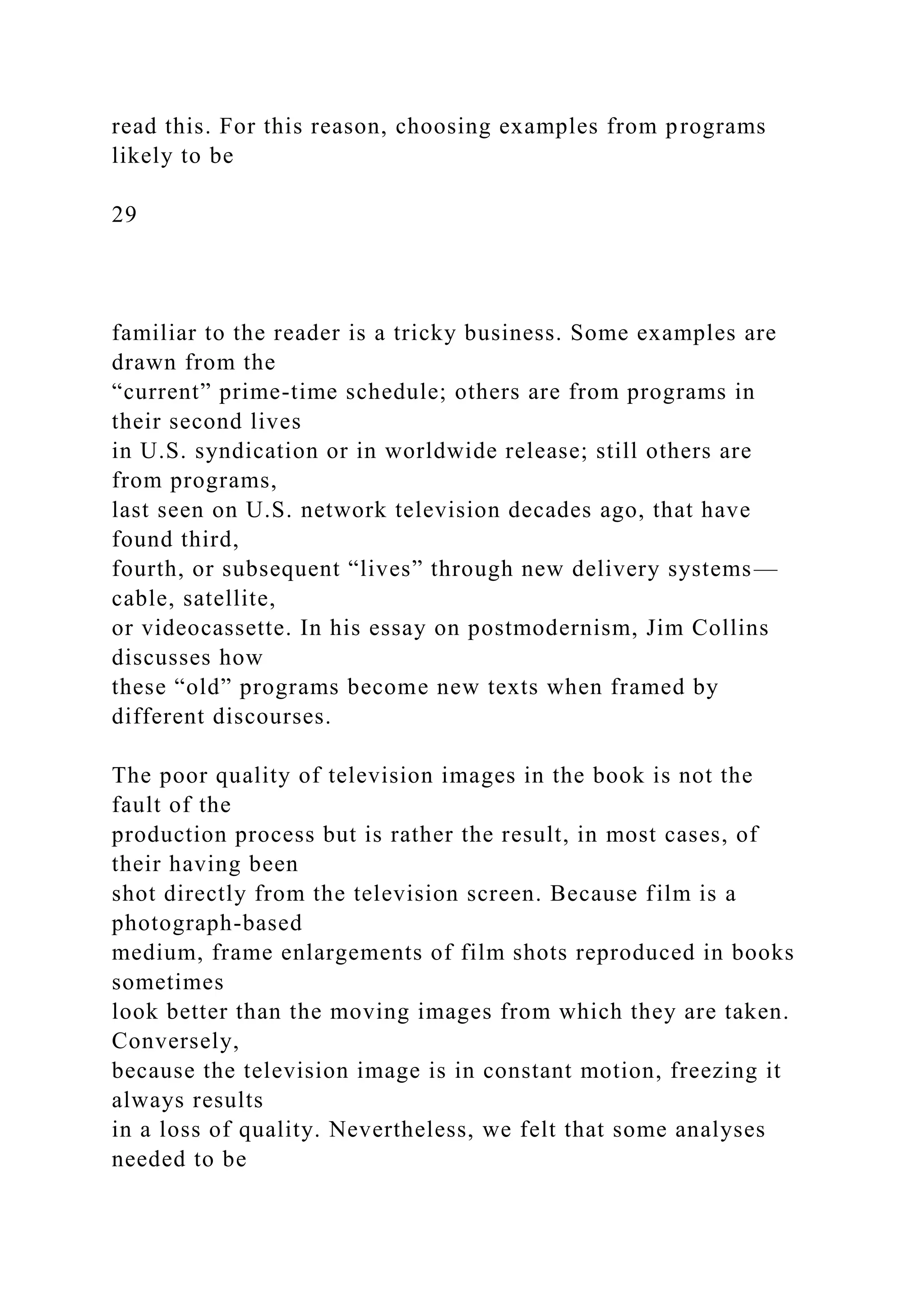
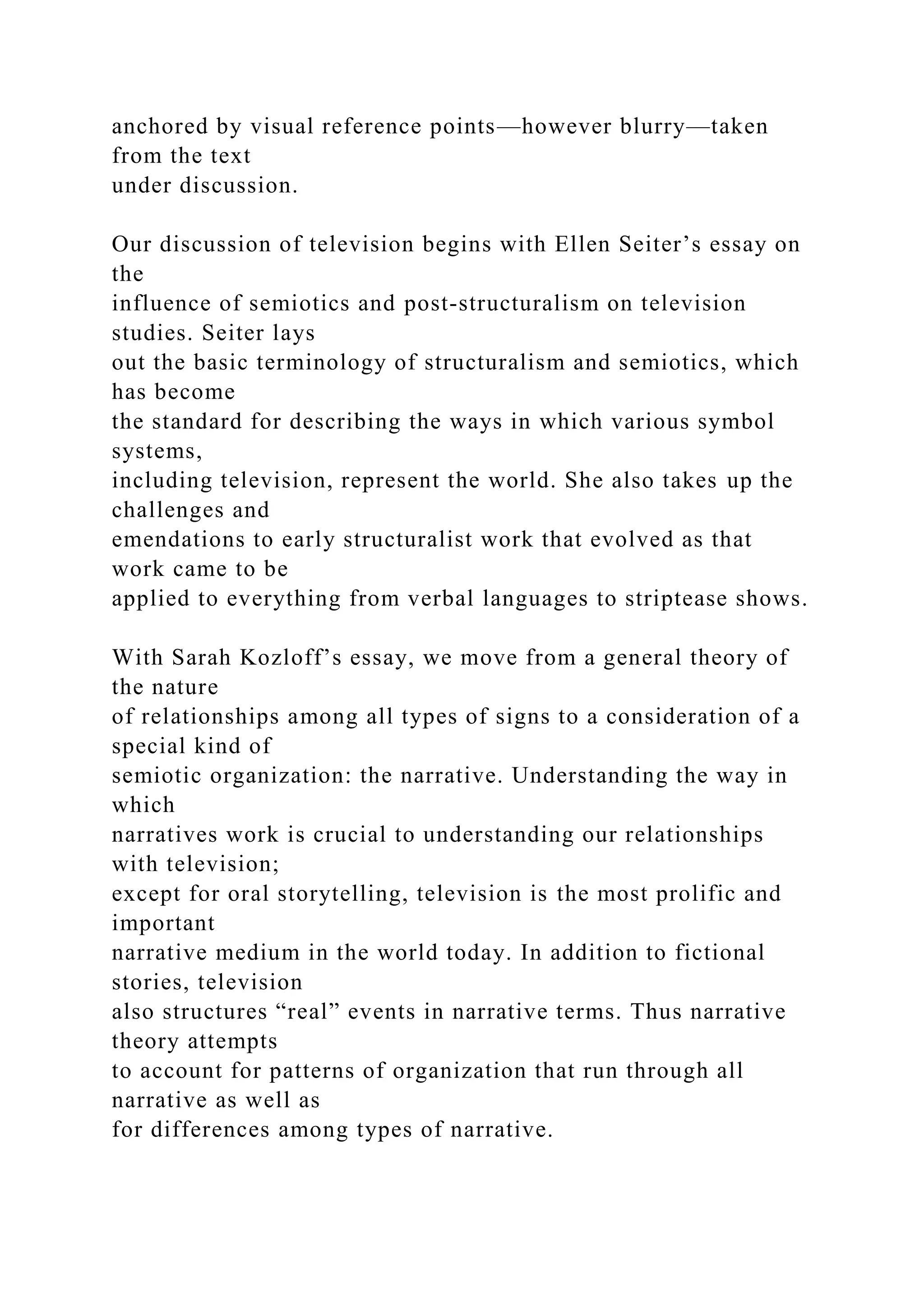
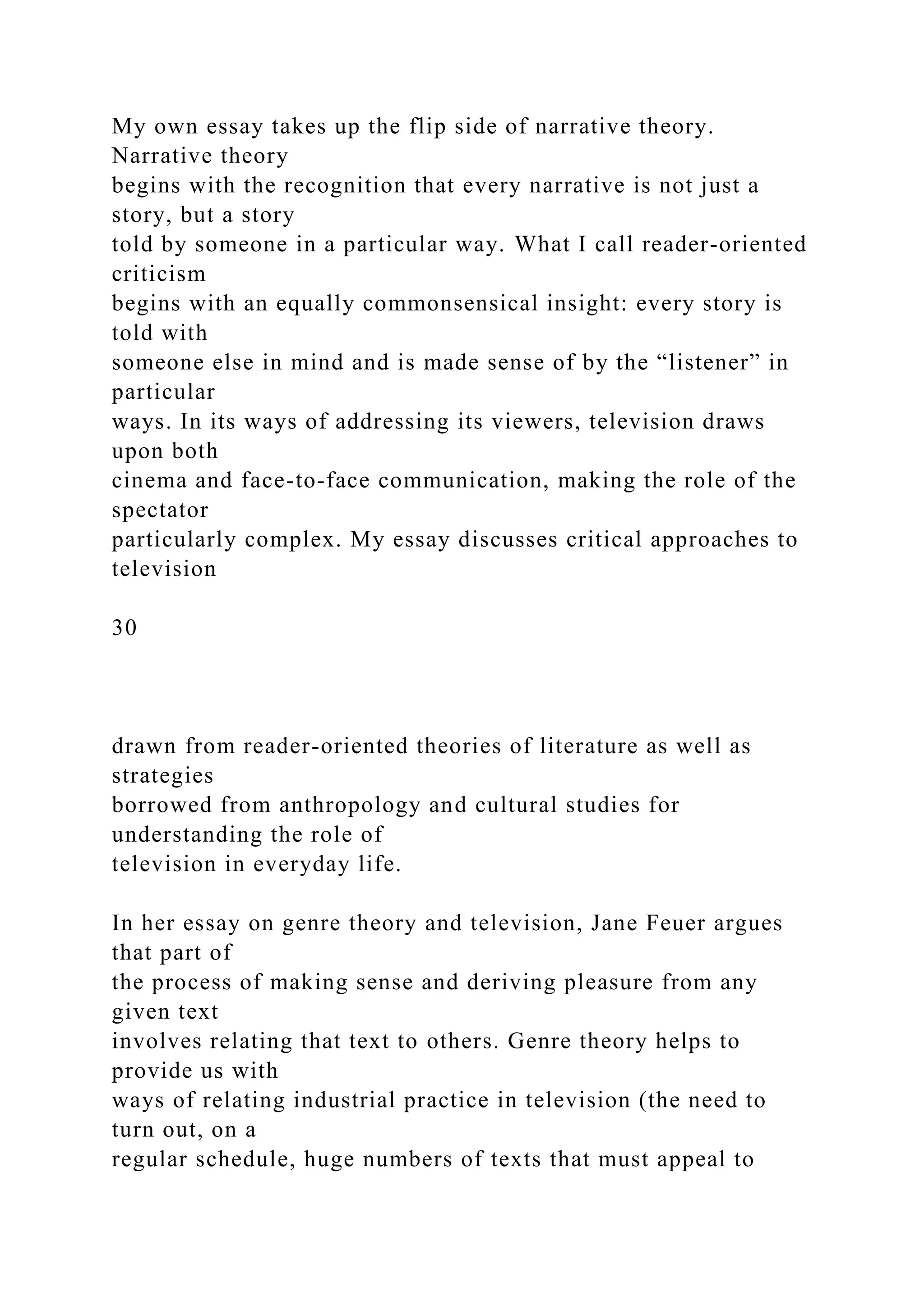

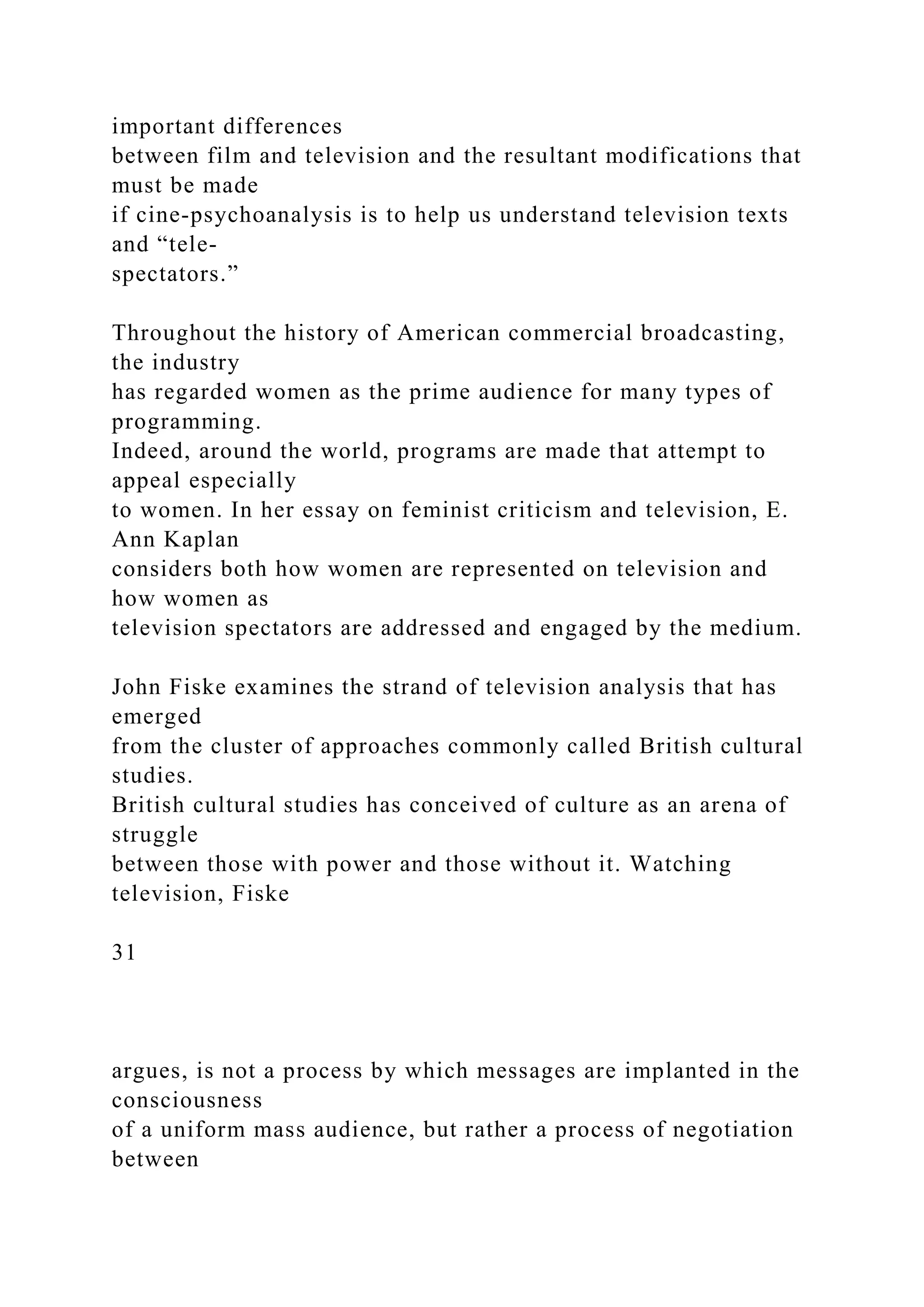
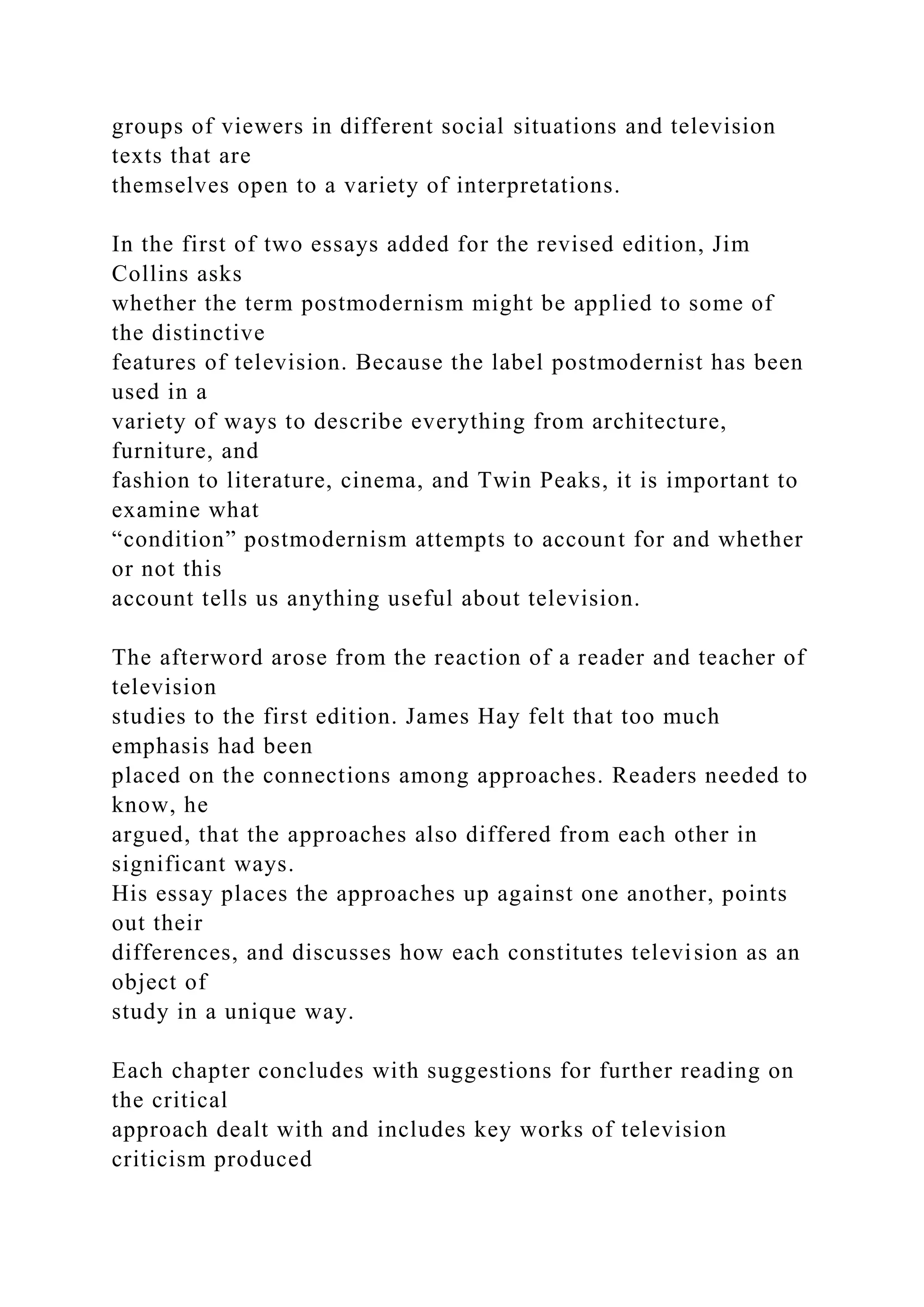
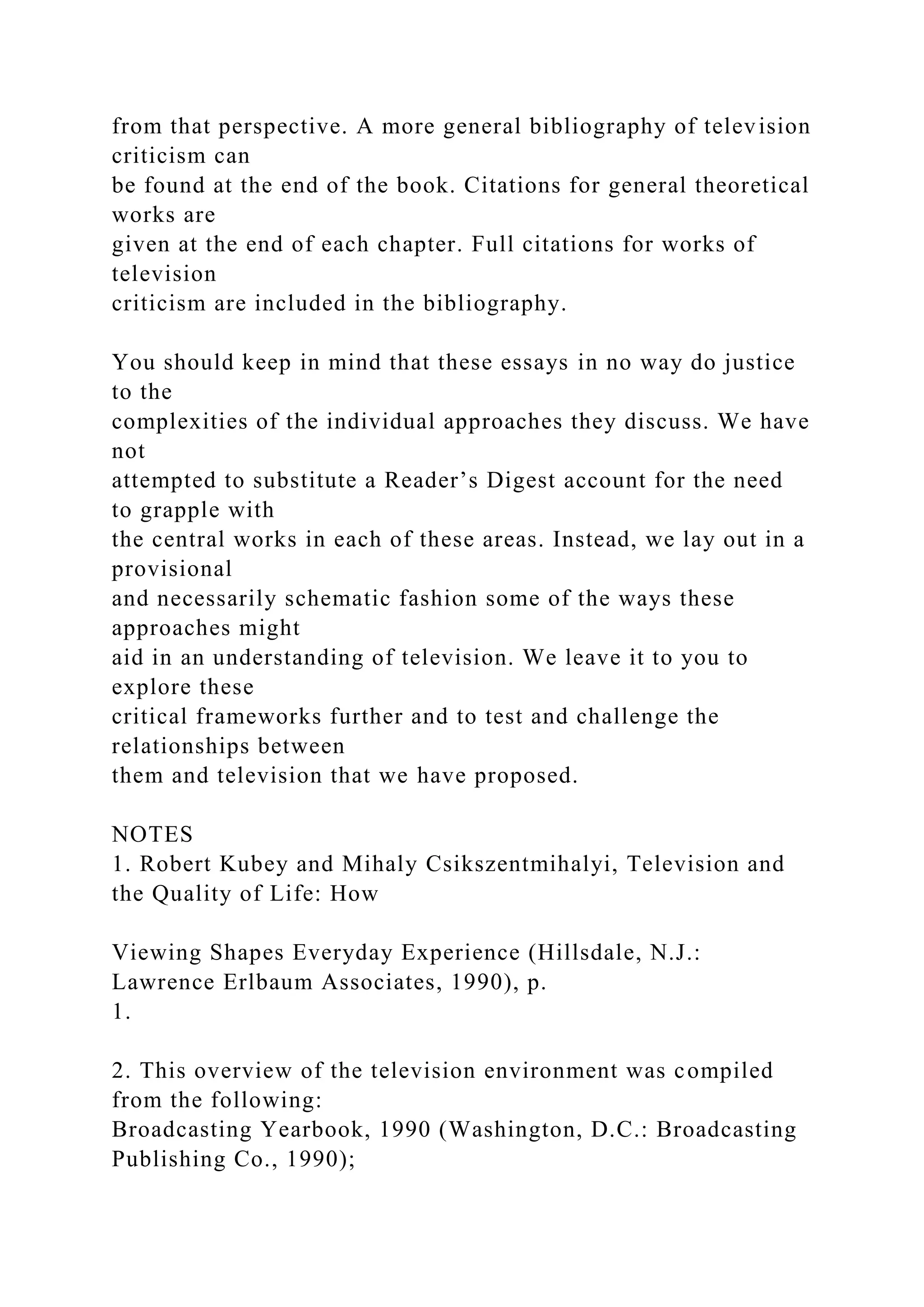
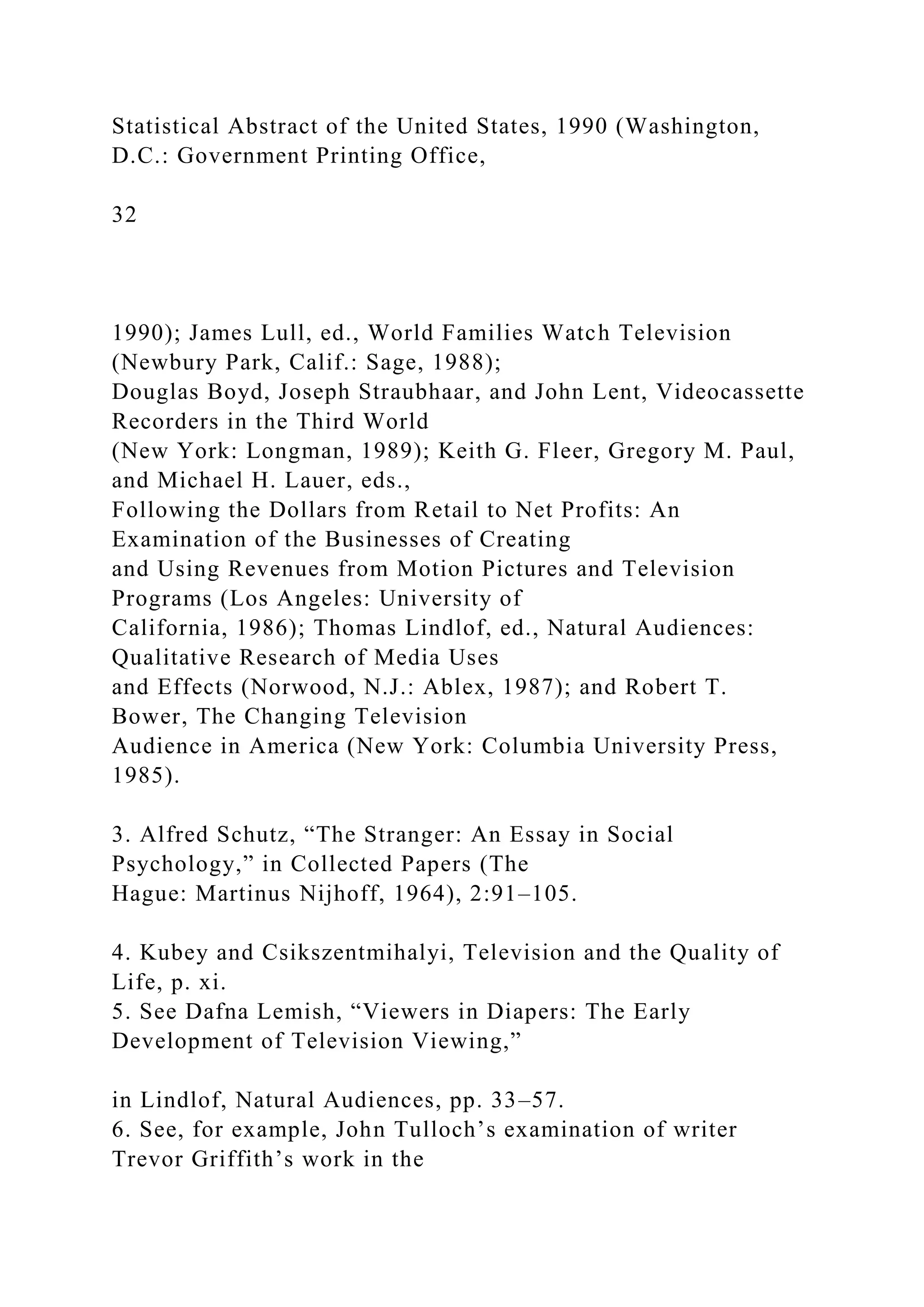
![context of British television (Television Drama: Agency,
Audience, and Myth [London:
Routledge, 1990]); and Jane Feuer, Paul Kerr, and Tise
Vahimagi’s consideration of the MTM
Company in relation to issues of authorship (MTM: “Quality
Television” [London: British Film
Institute, 1984]).
7. Lindlof, Natural Audiences, p. x.
8. Eric Barnouw, A Tower in Babel (New York: Oxford
University Press, 1966), p. 281. By
the time you read this, it is very likely that the fifteen or so
commercial television licenses in
Great Britain will for the first time be awarded to the highest
bidders. License holders (the ITV
companies) also pay a tax on their profits, which helps to
support the alternative commercial
channel, Channel 4. American commercial broadcasters pay no
special tax.
9. Richard Levinson and William Link, Off Camera:
Conversations withthe Makers of Prime-
Time Television (New York: New American Library, 1986), pp.
247–48, 267.
10. Ibid., p. 37. Dandel goes on to illustrate his point with an
incident from his early days as a
writer in Hollywood. While working on a western series called
Tucson Trail, he wrote a moving
story about a Catholic priest who discovers he has strong
homosexual feelings; to test his sexual
orientation, the priest initiates a love affair with a woman.
Much to Dandel’s surprise, the
production company agreed to shoot his script. However, two](https://image.slidesharecdn.com/channelsofdiscoursereassembled2channelsof-221018173716-6fc0655a/75/Channels-of-Discourse-Reassembled2Channels-of-docx-64-2048.jpg)
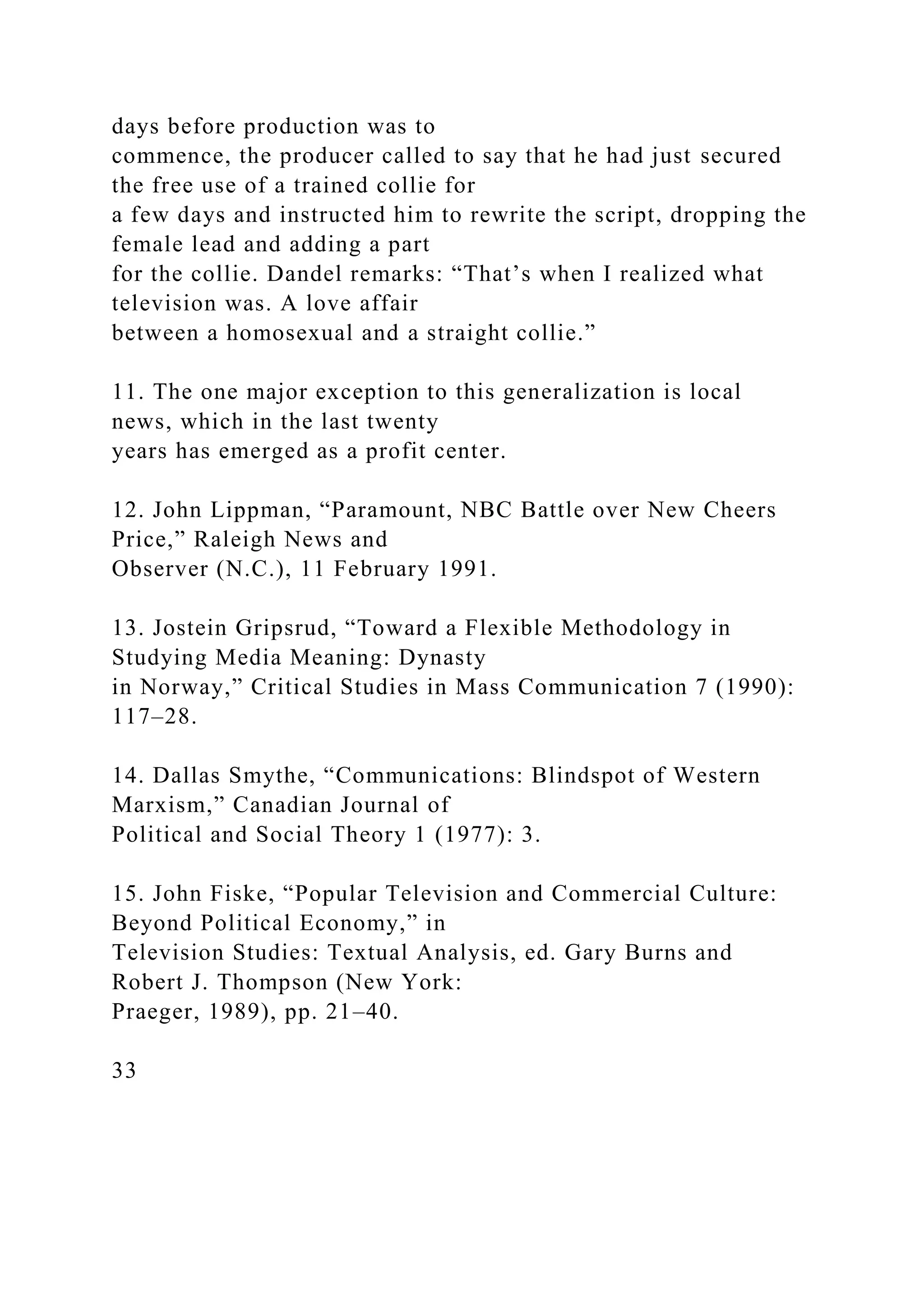
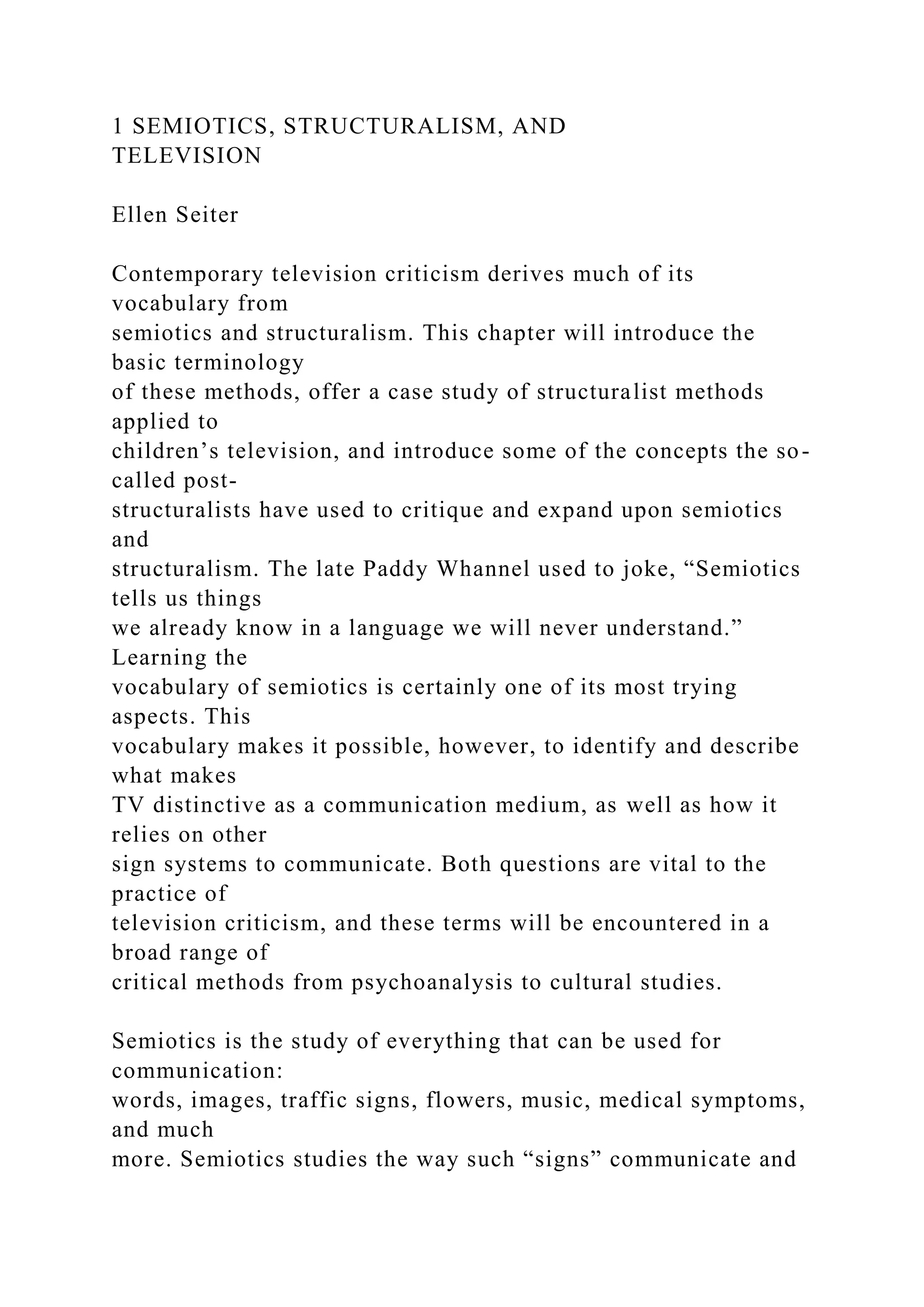

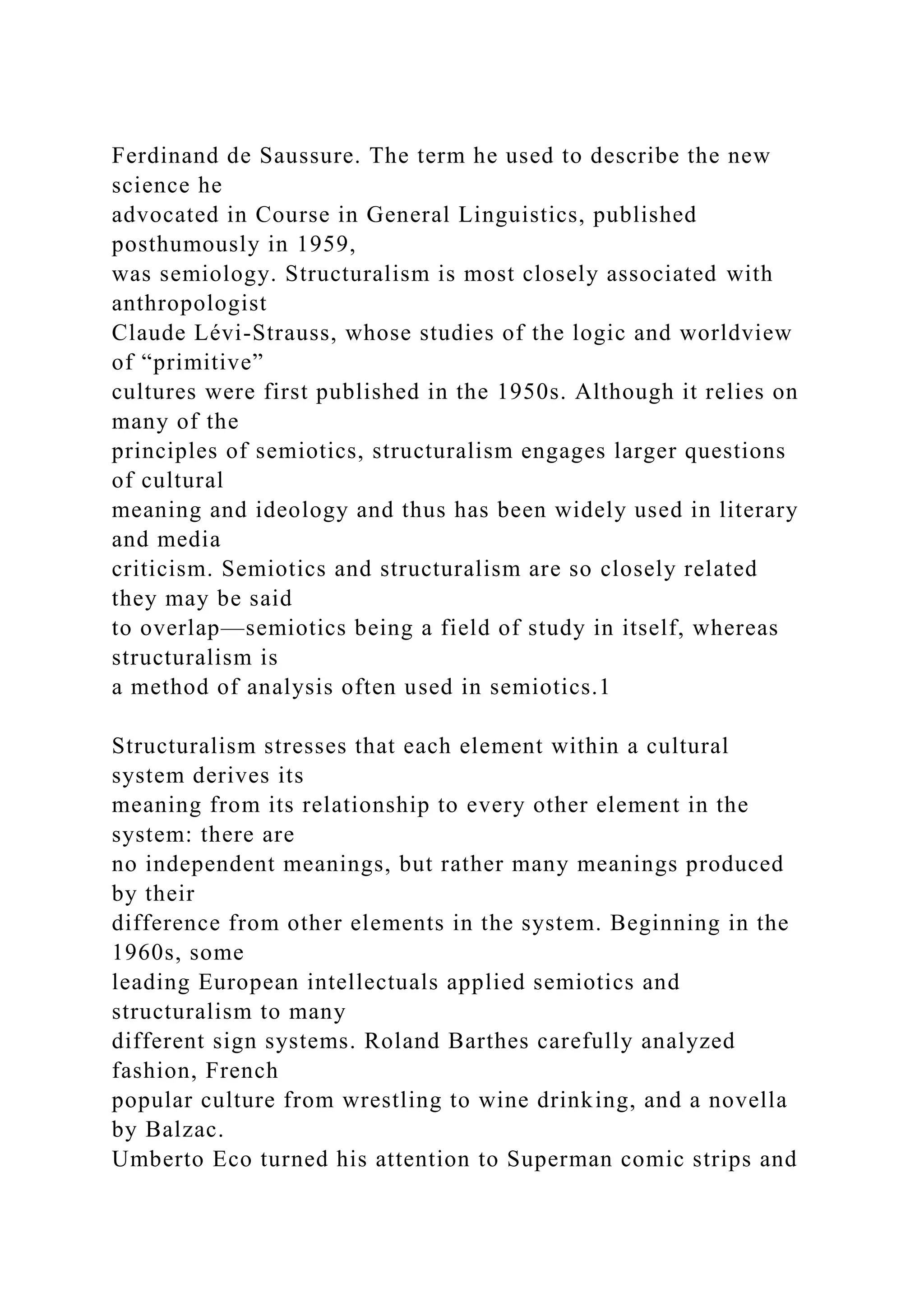

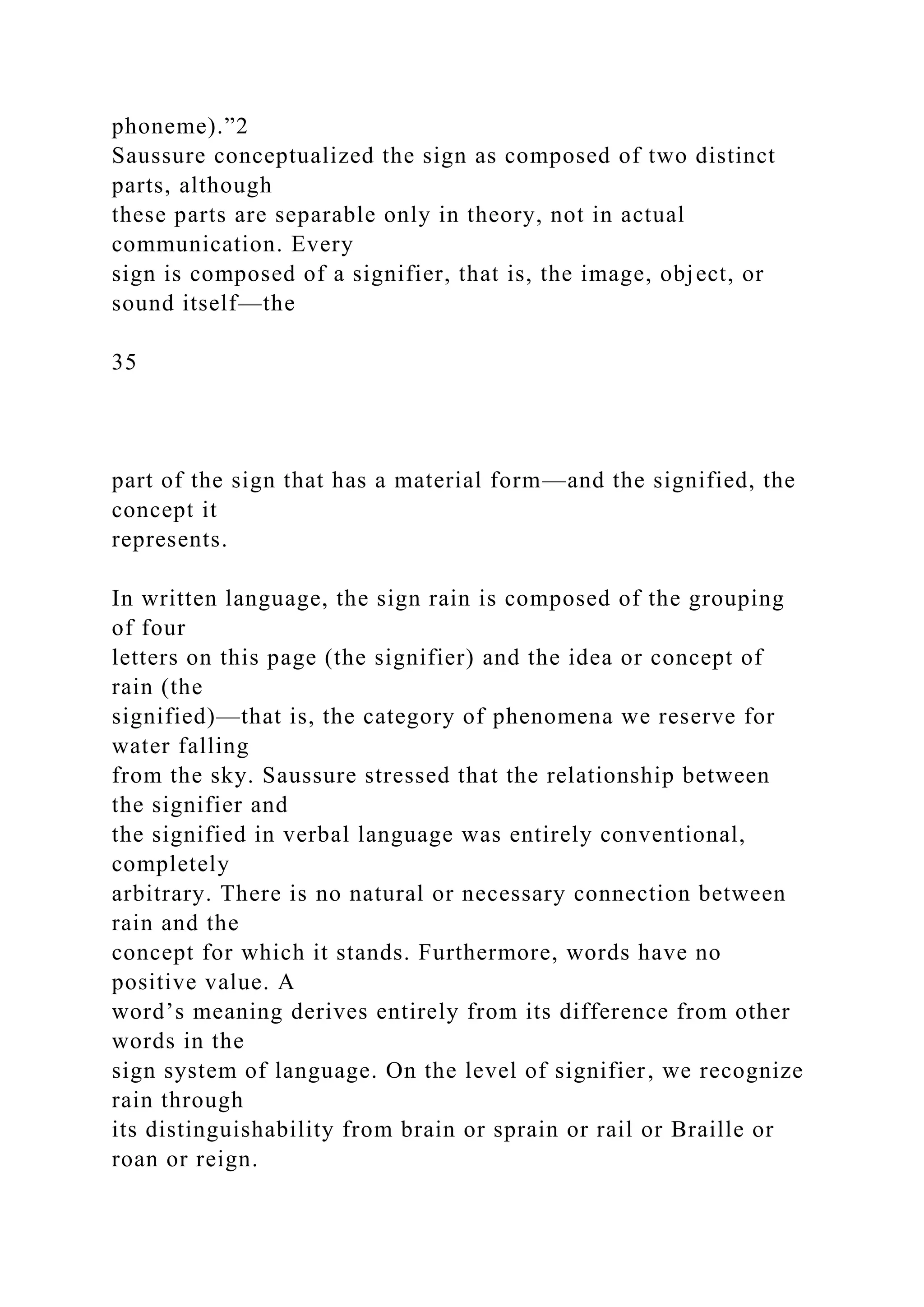
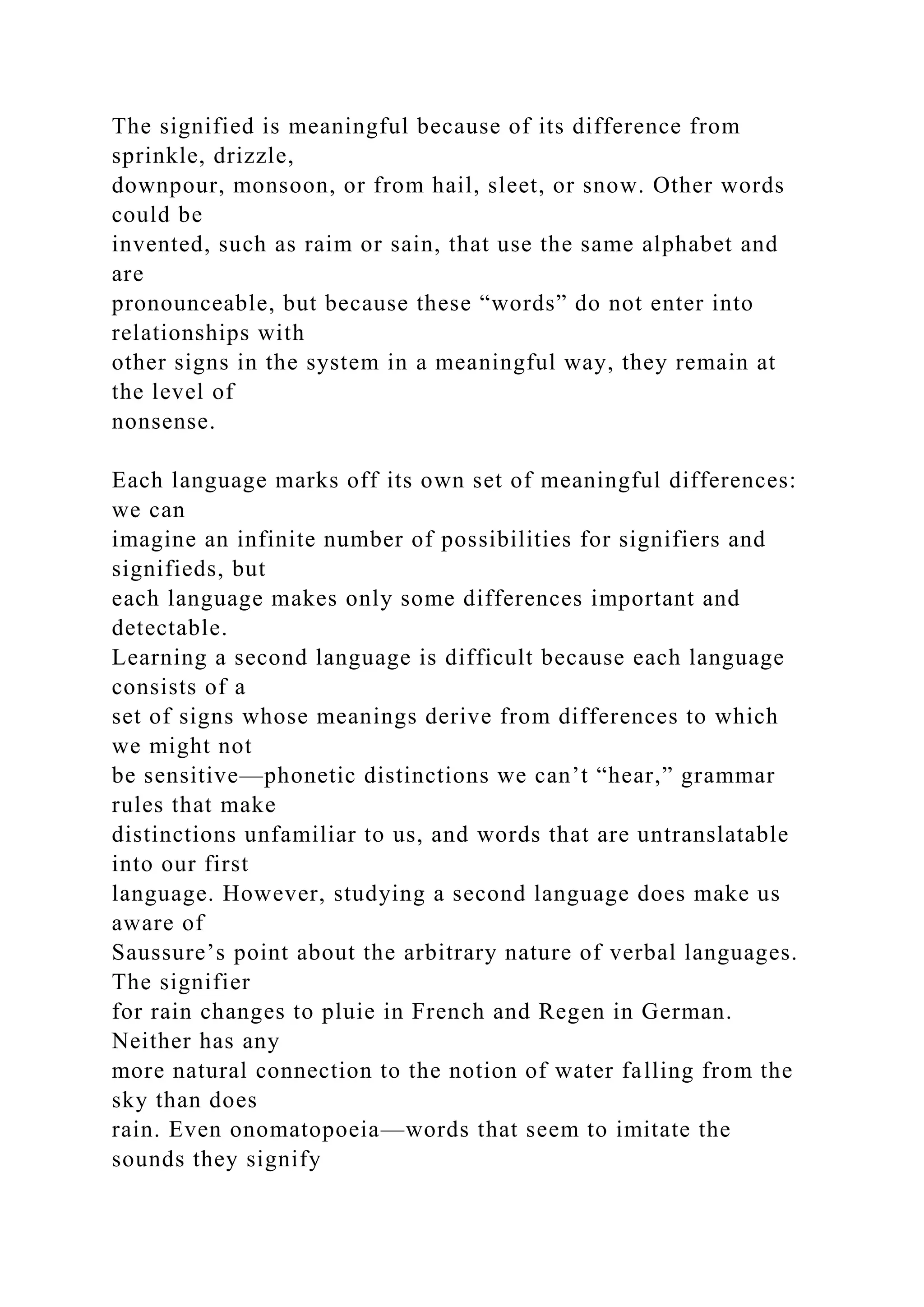
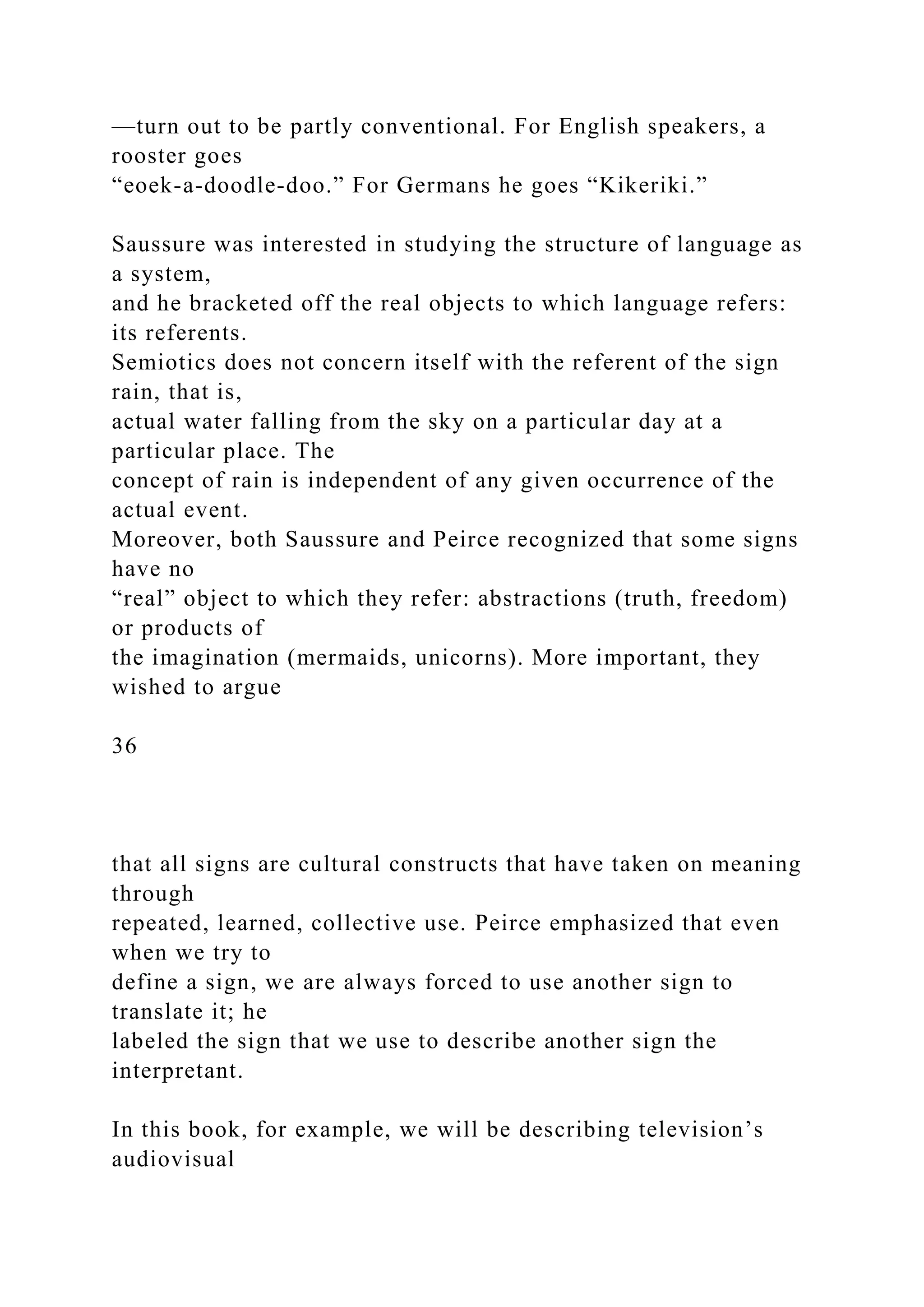

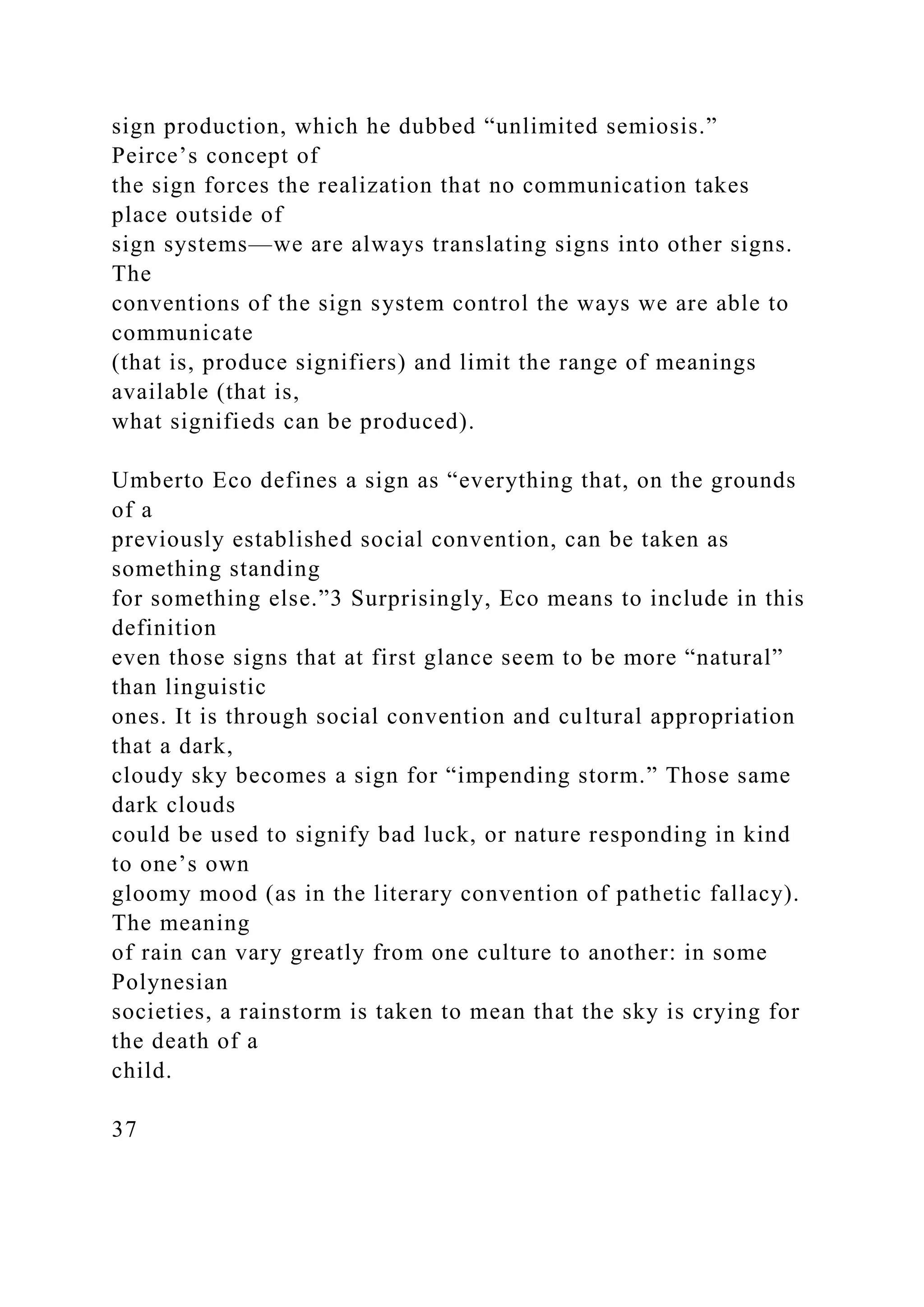
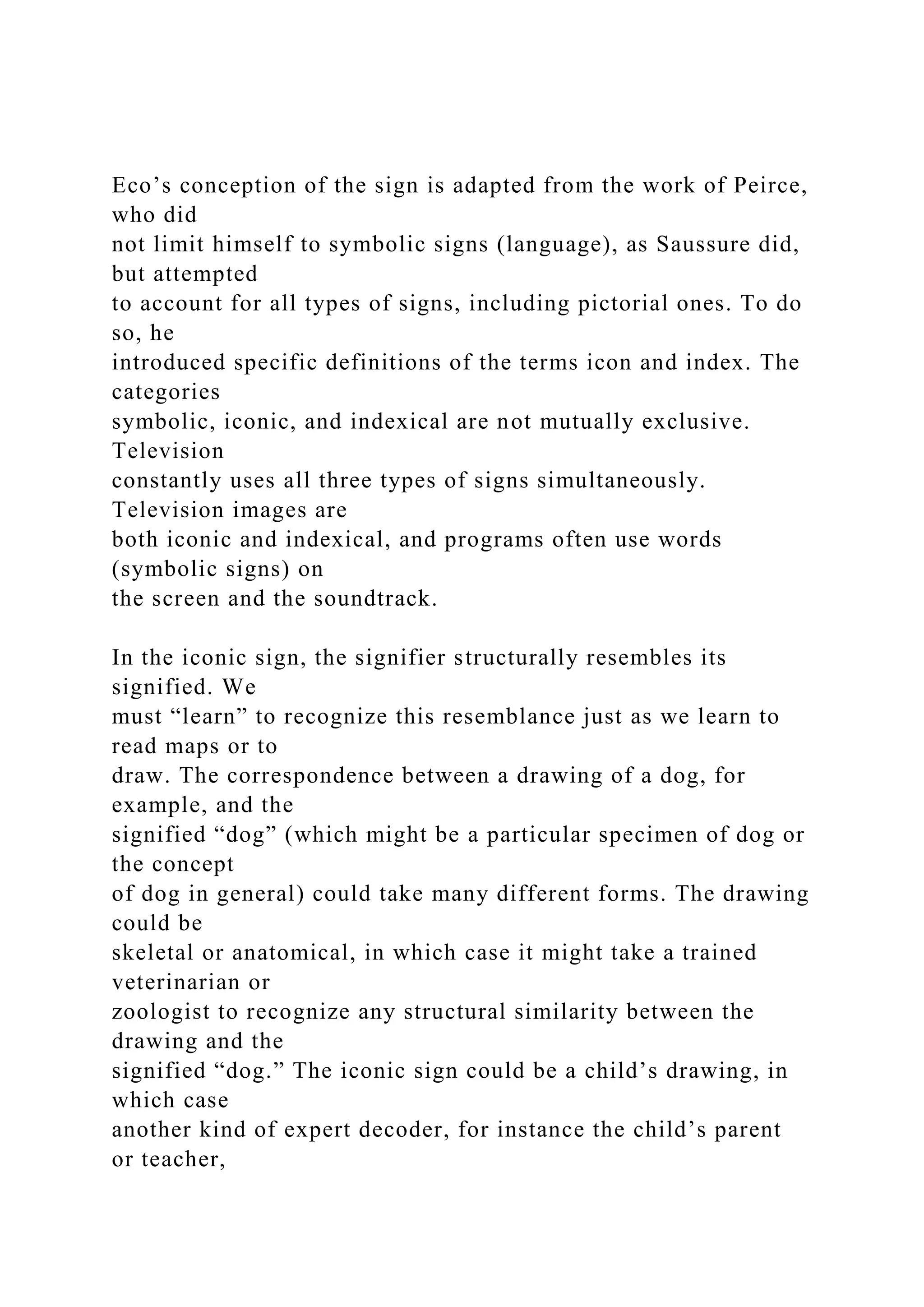

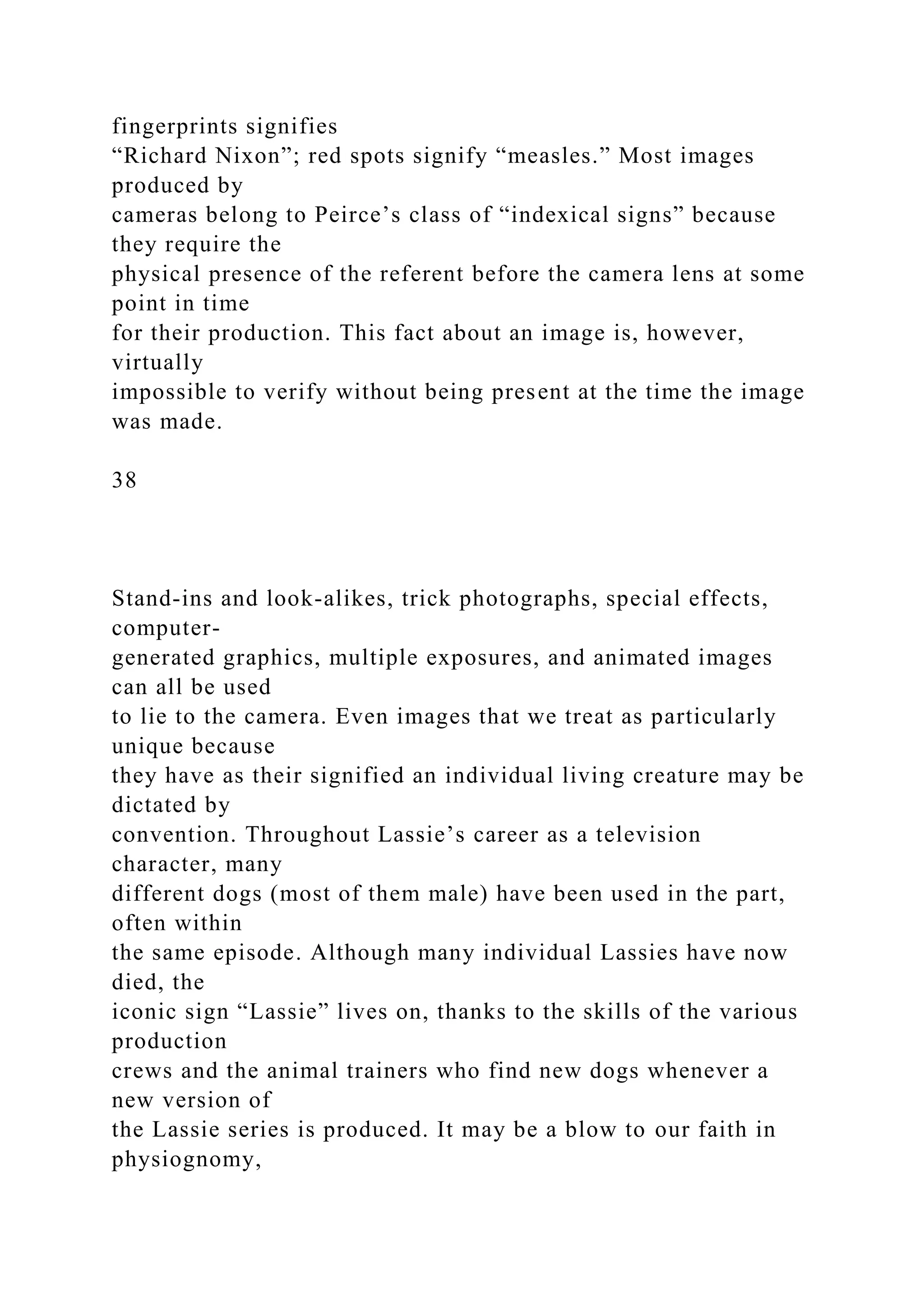
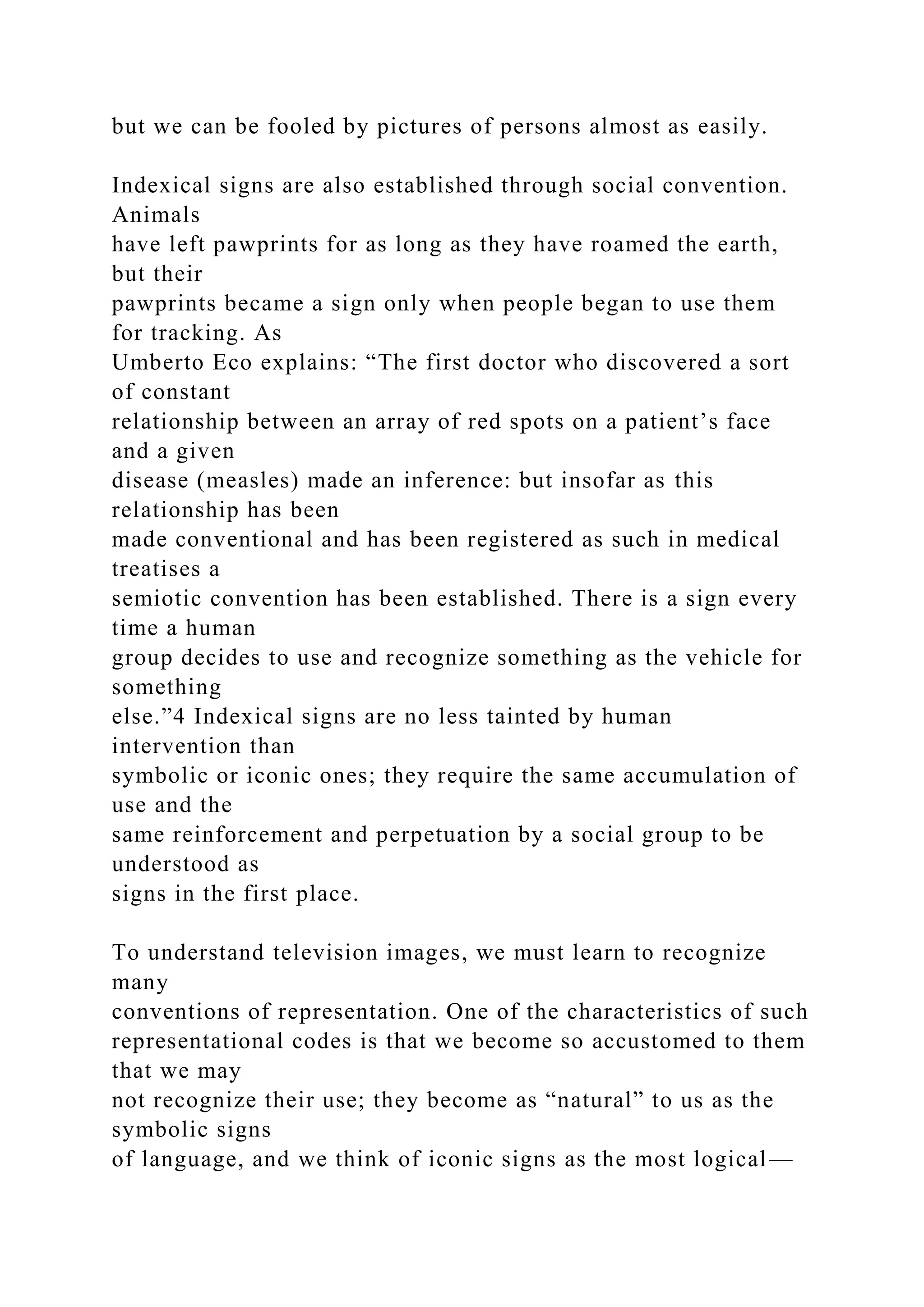
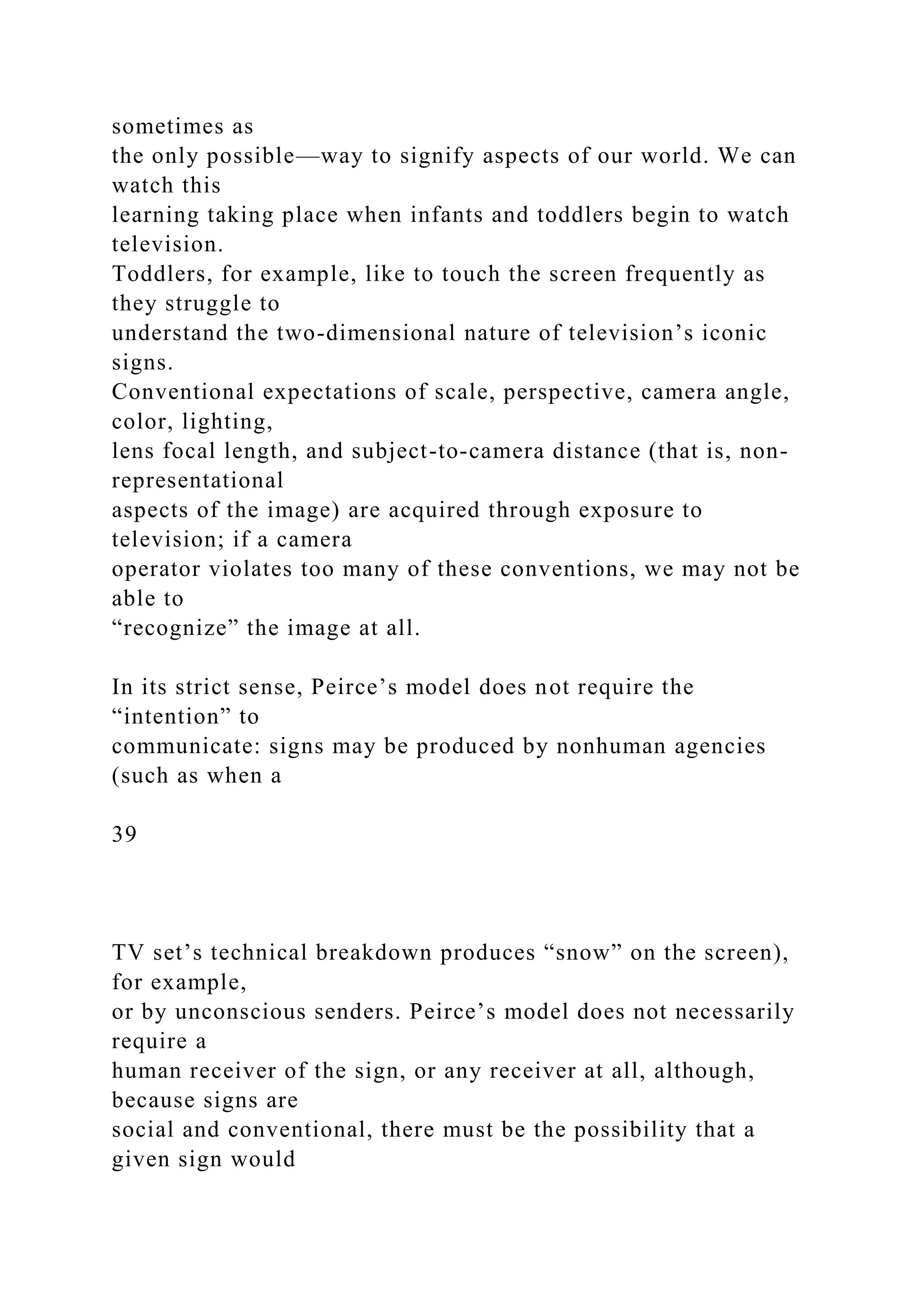
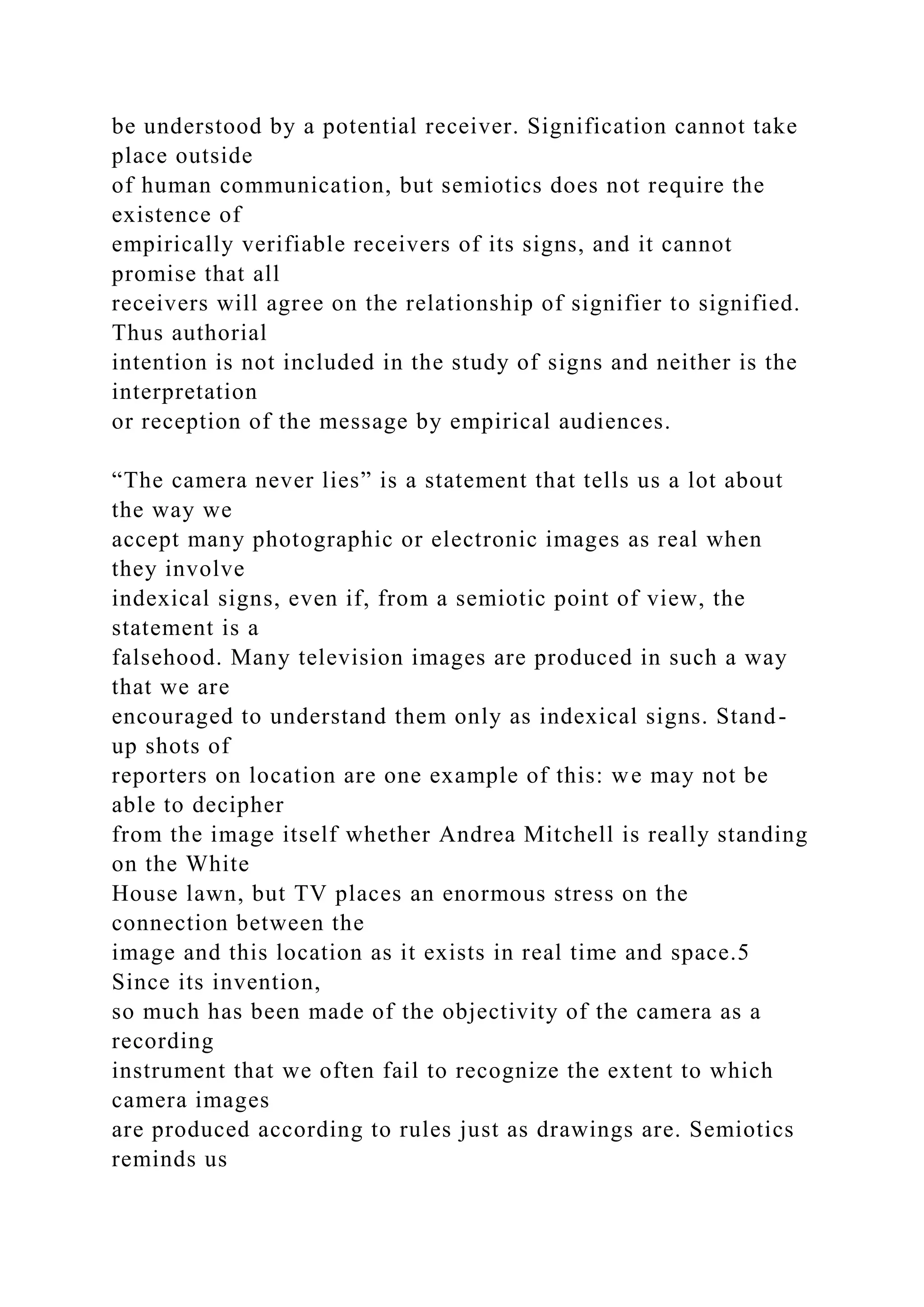
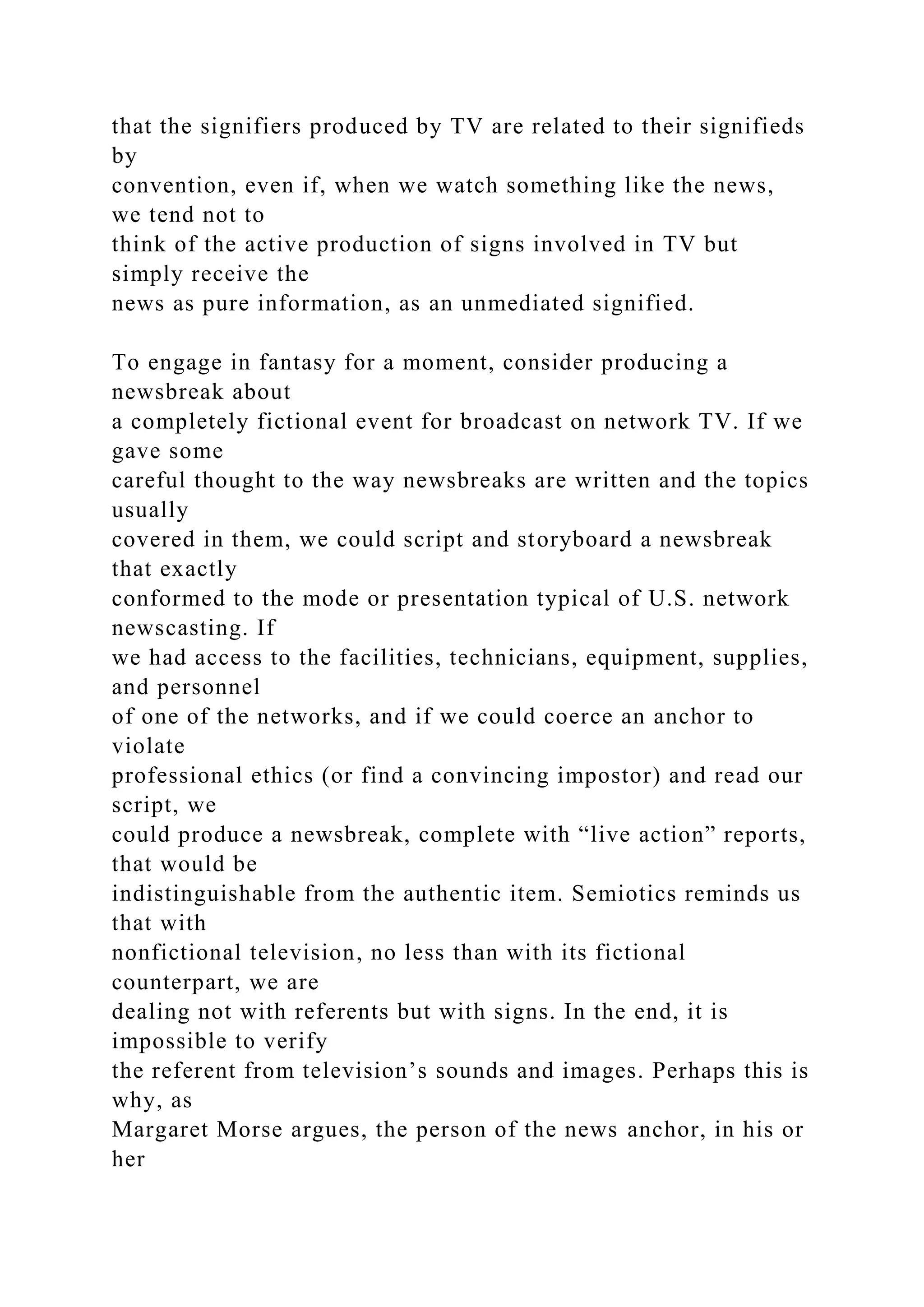
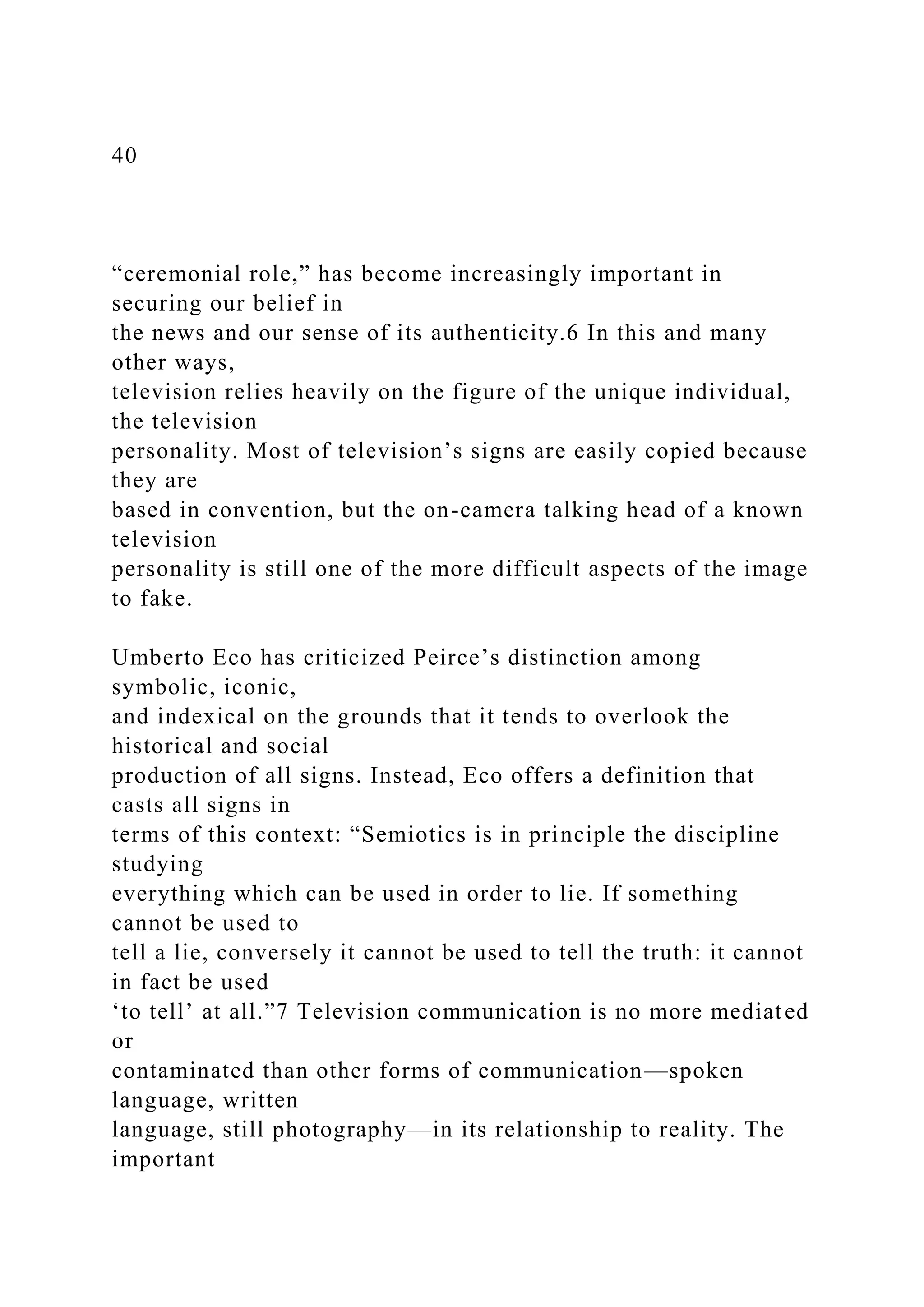

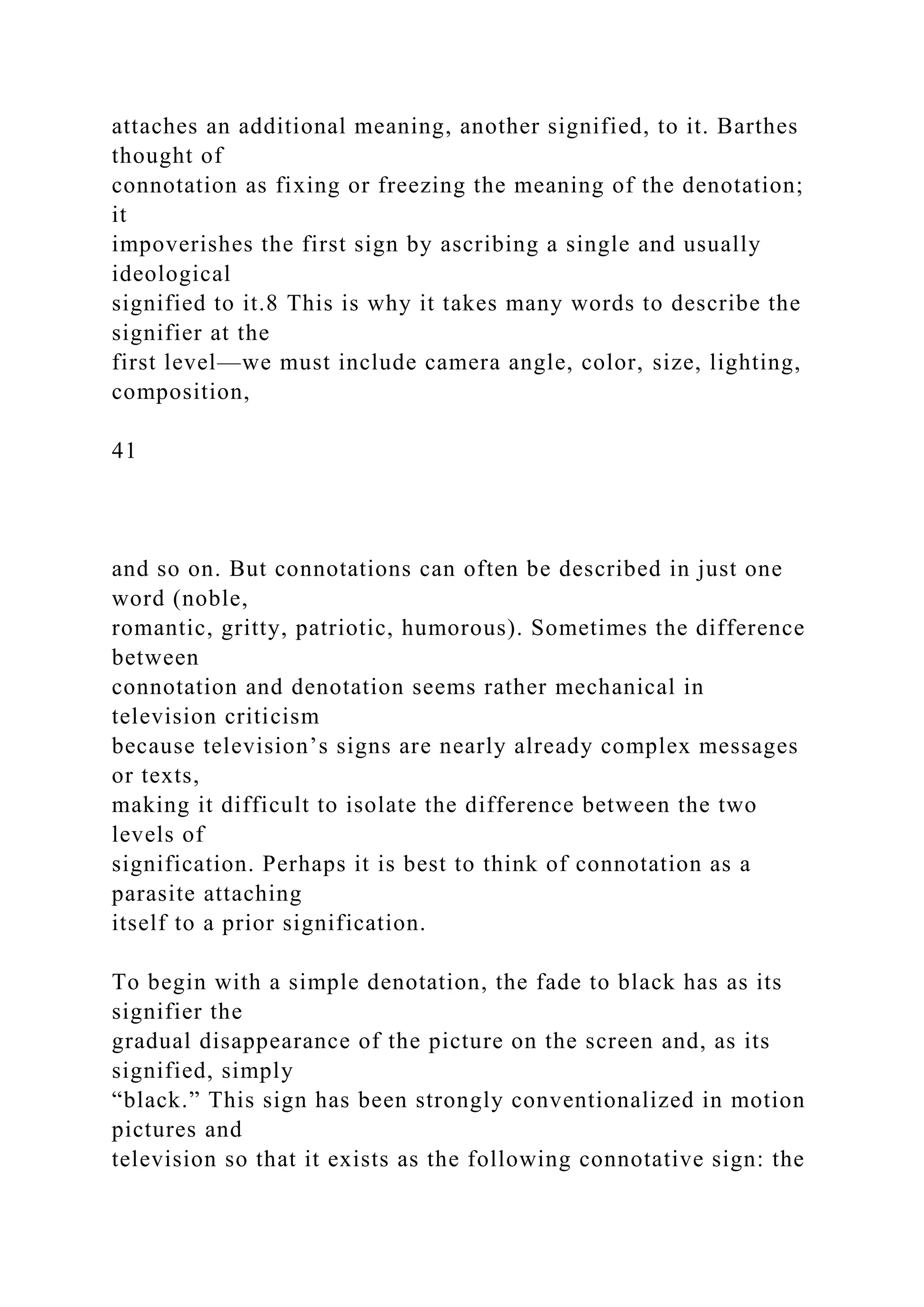
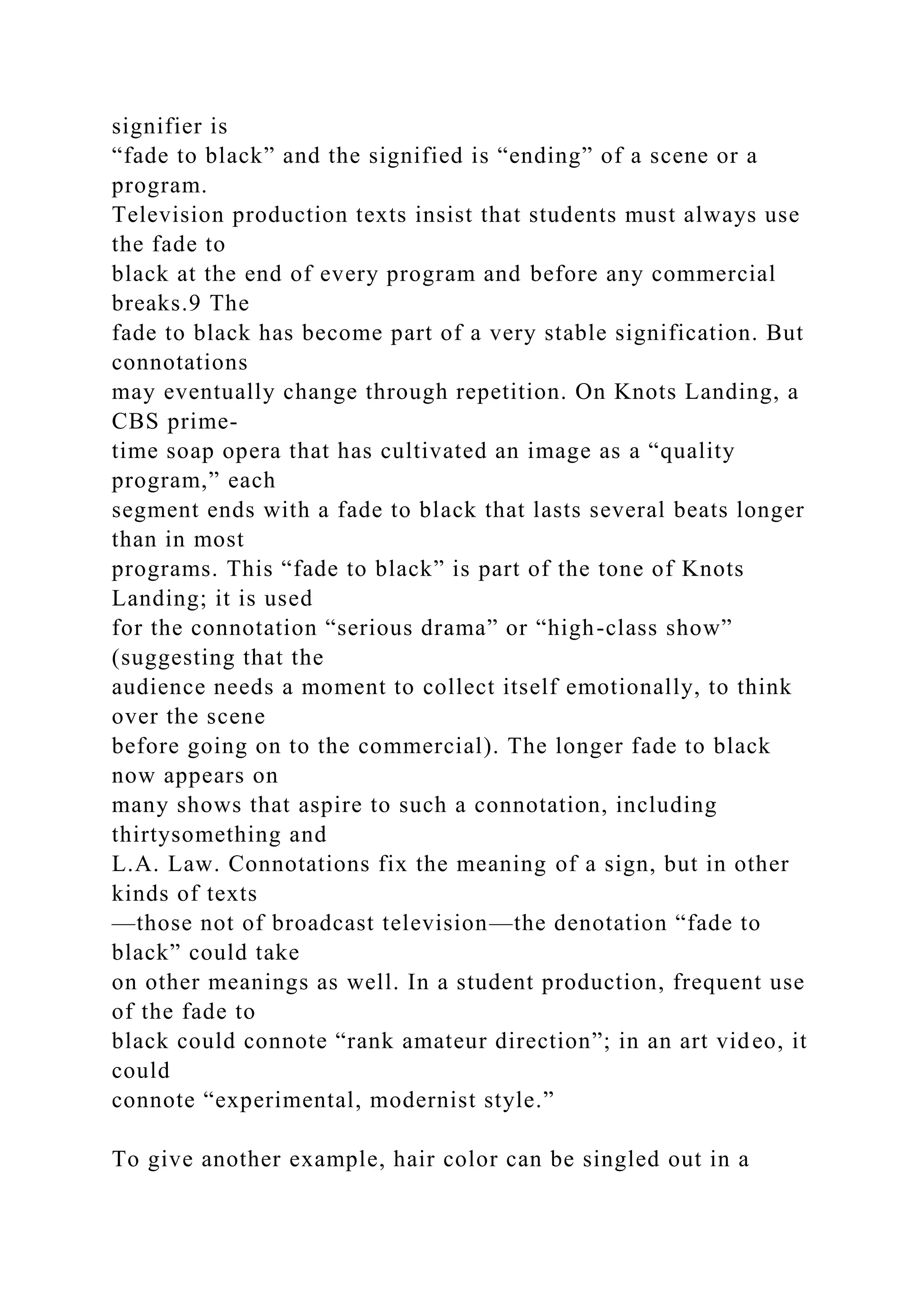
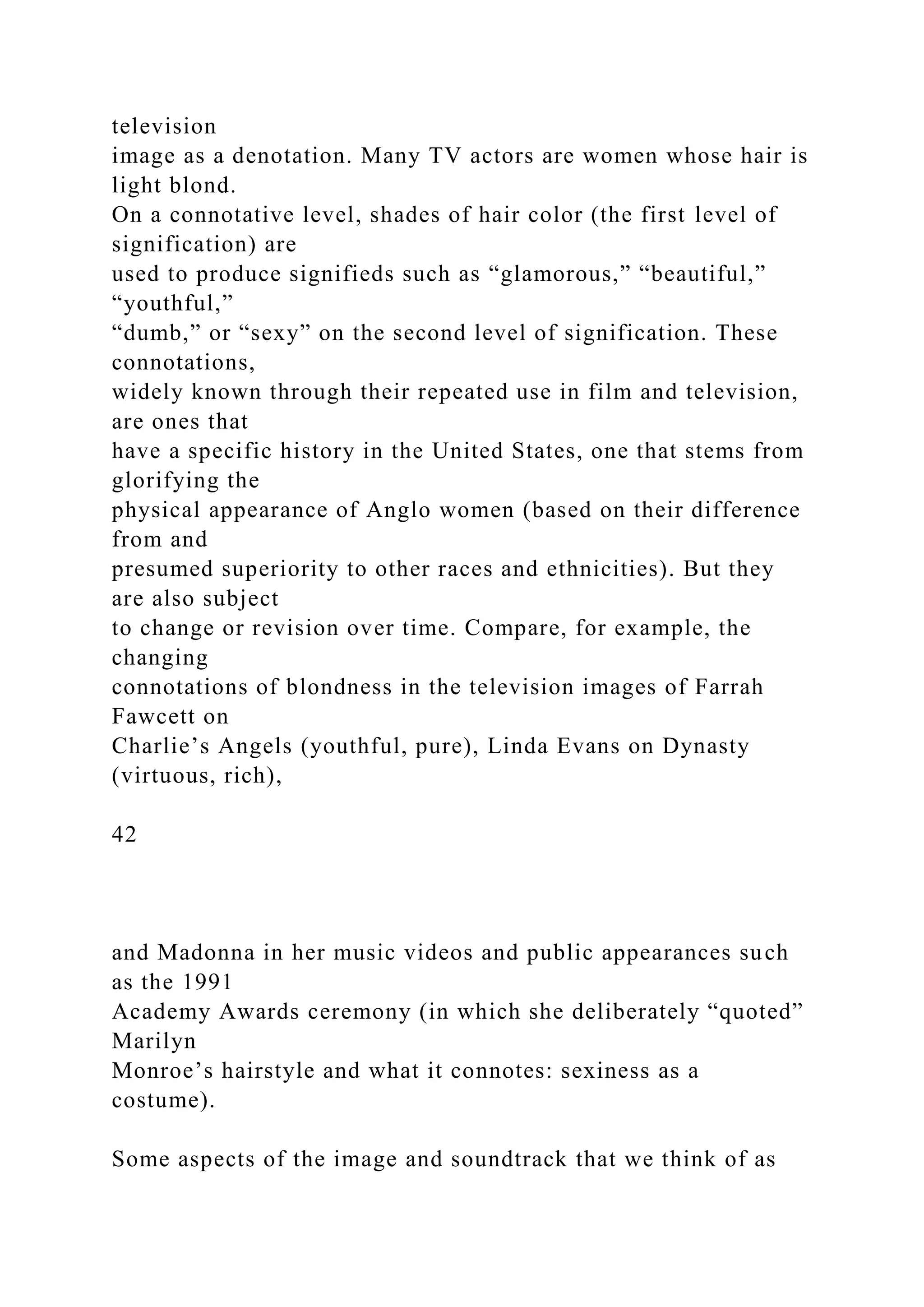
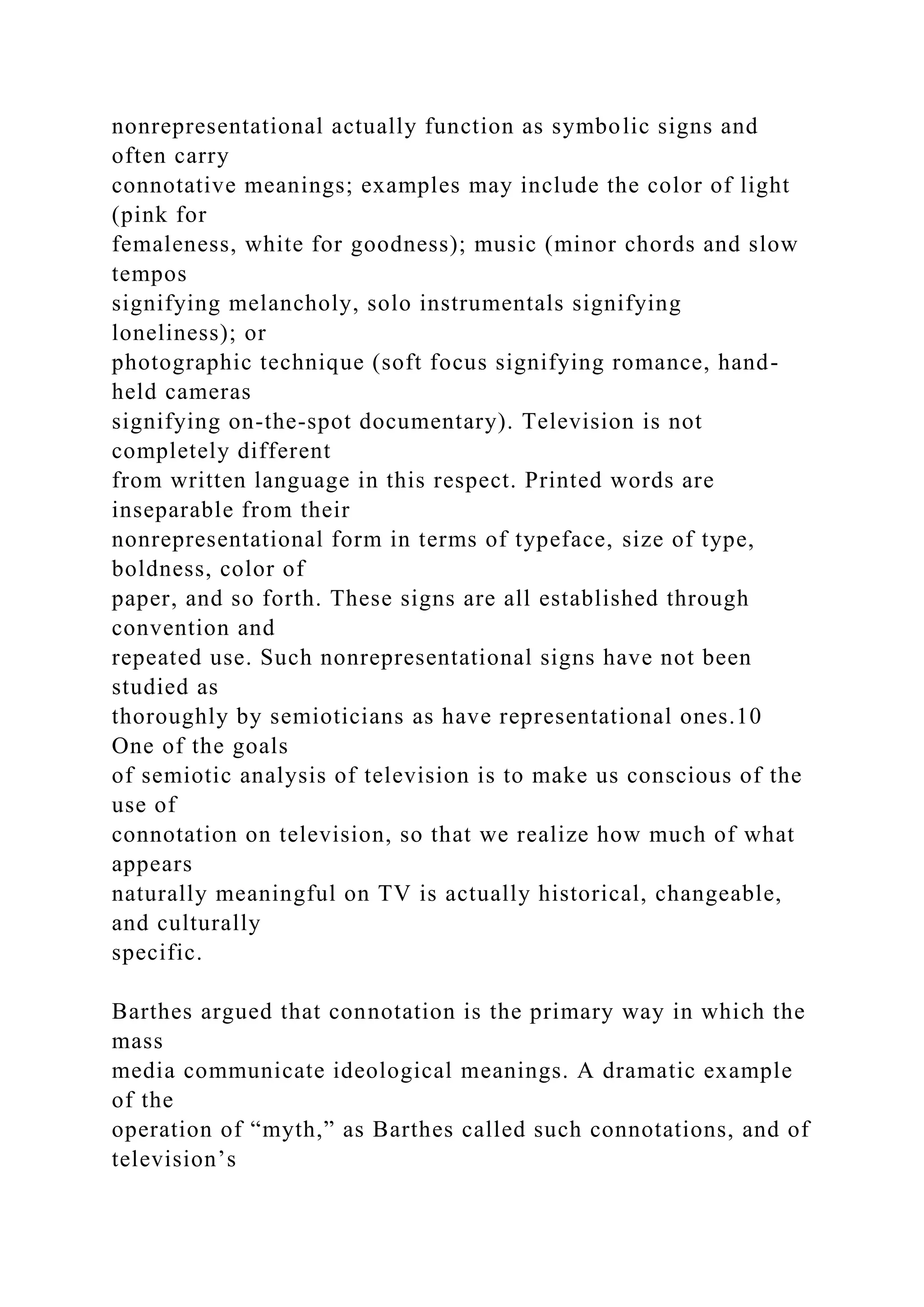
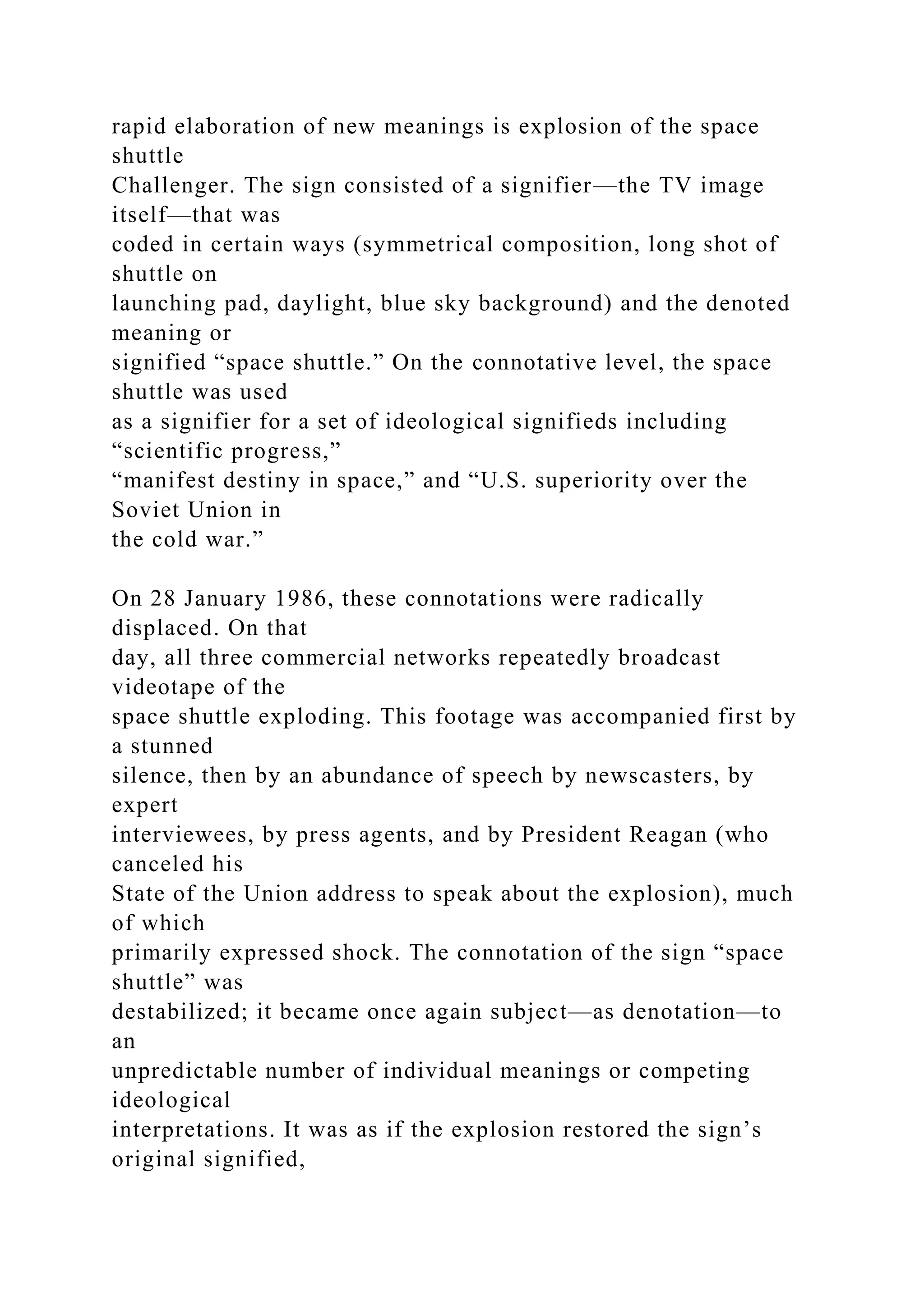
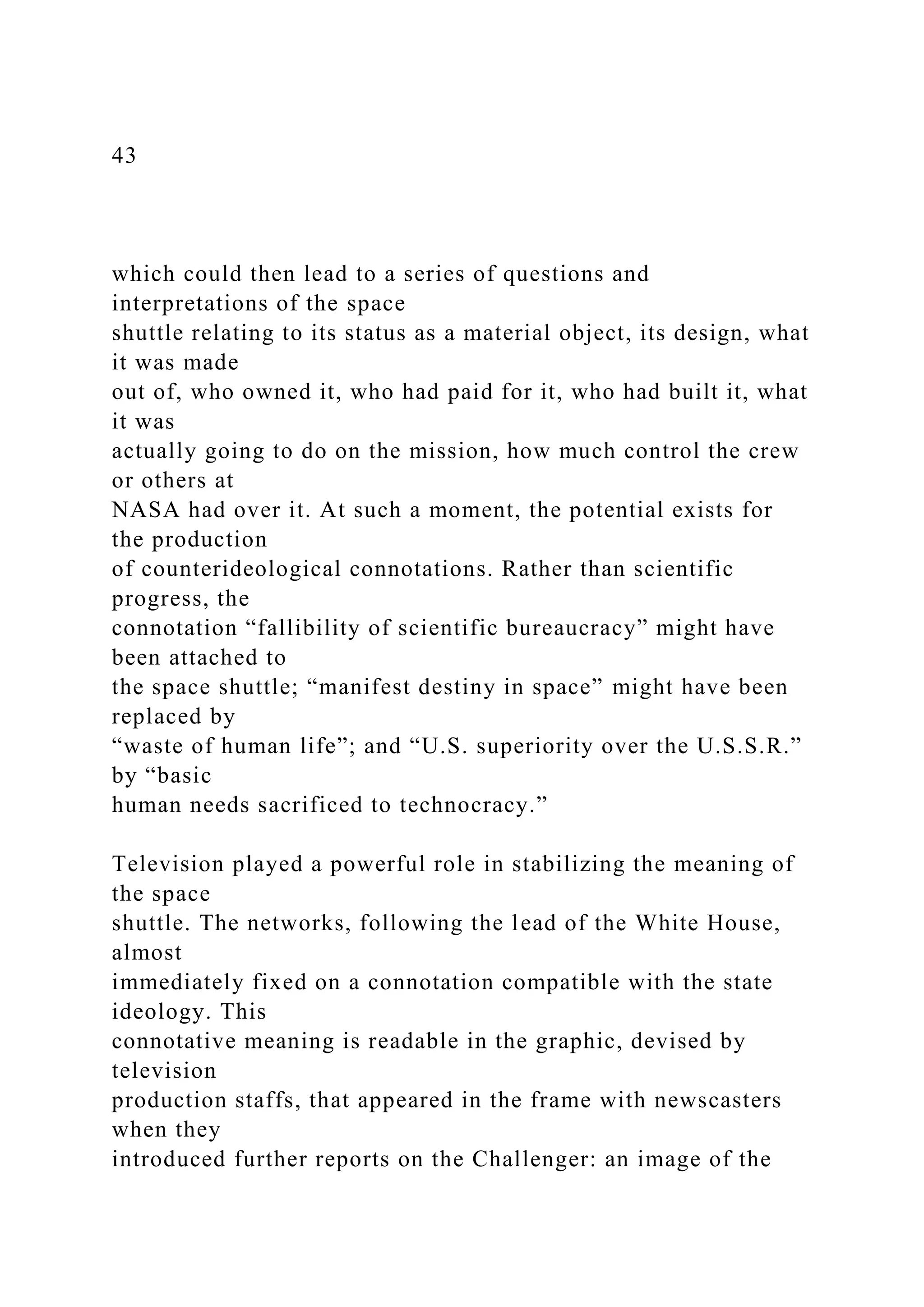

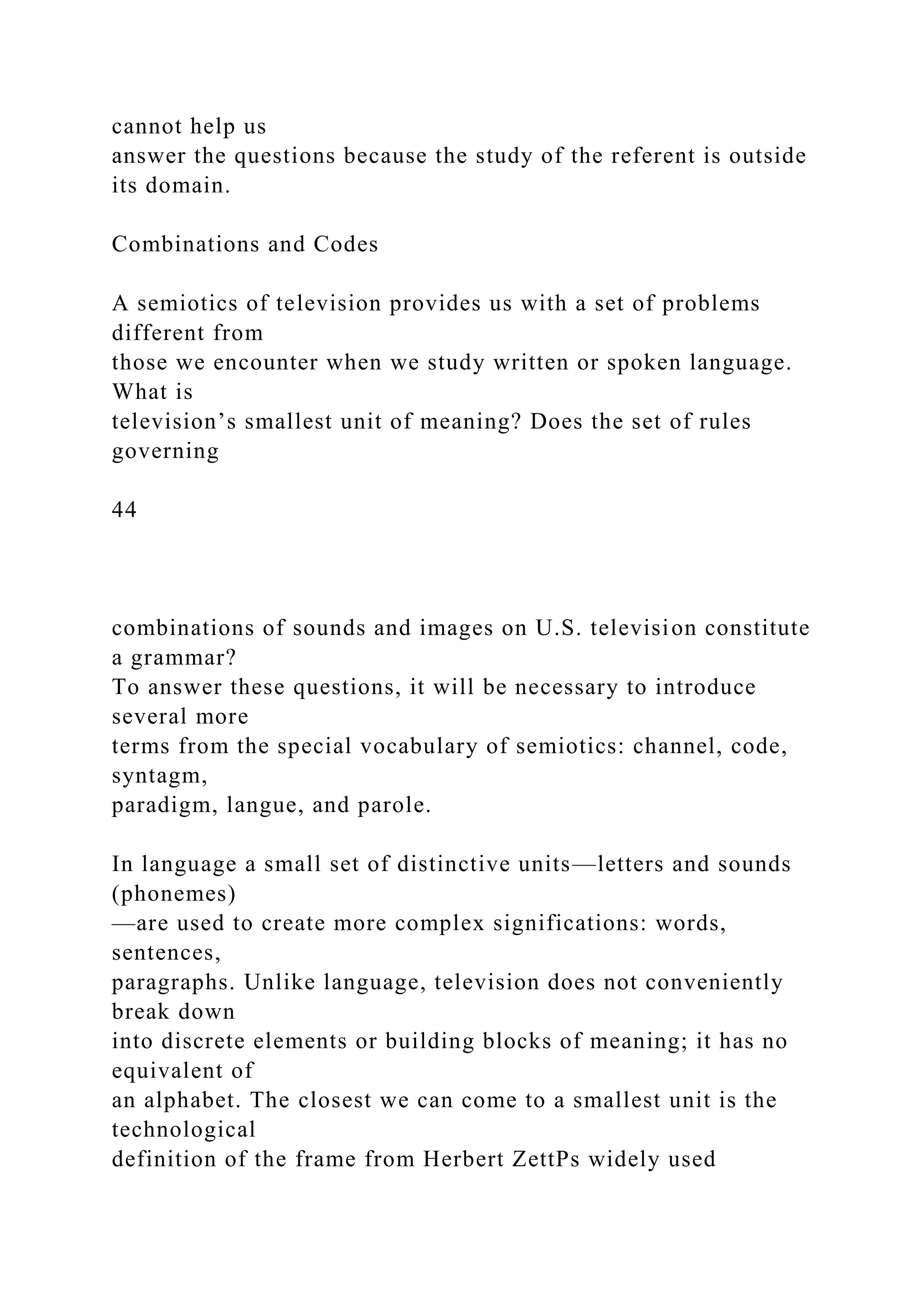
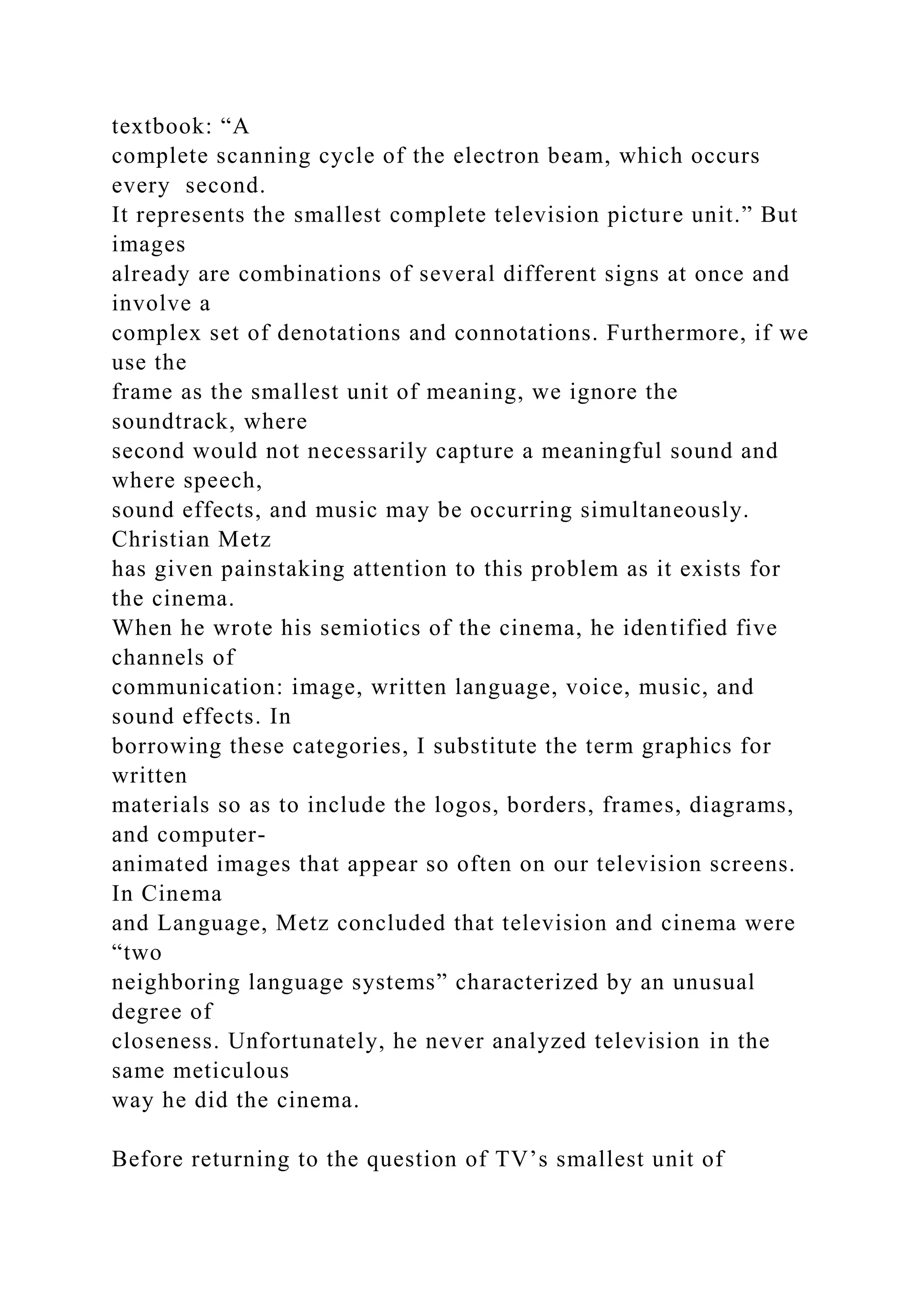


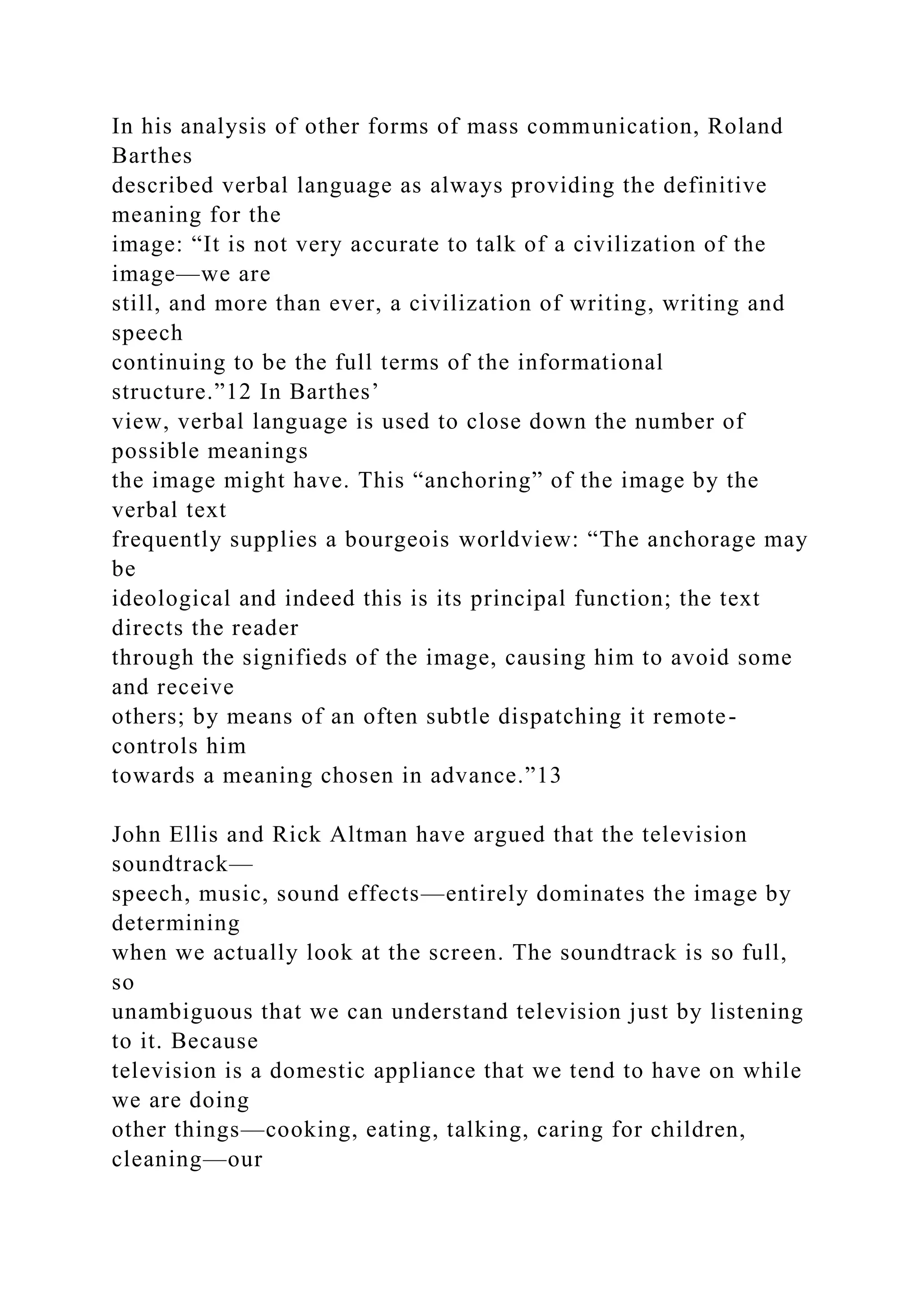
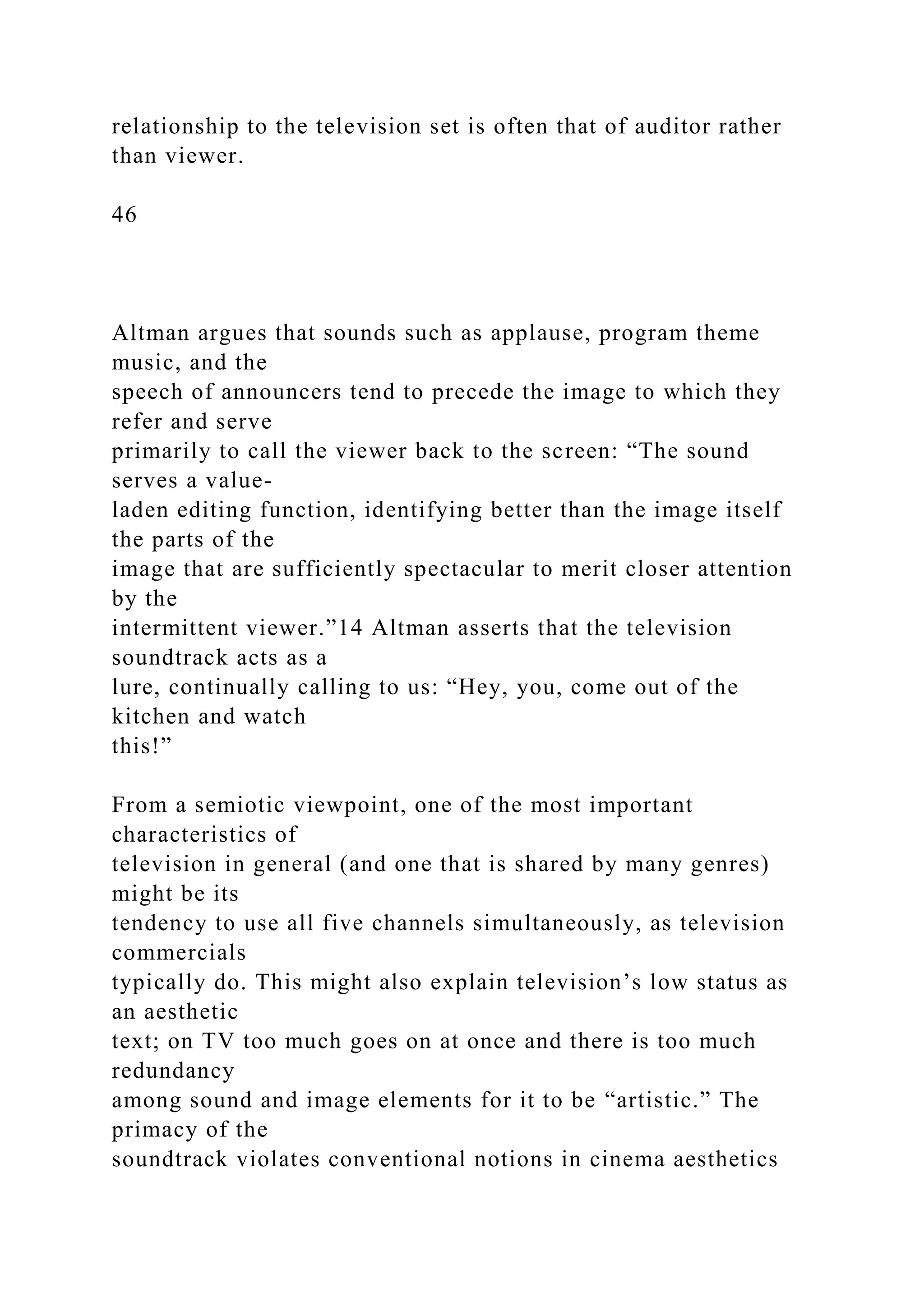
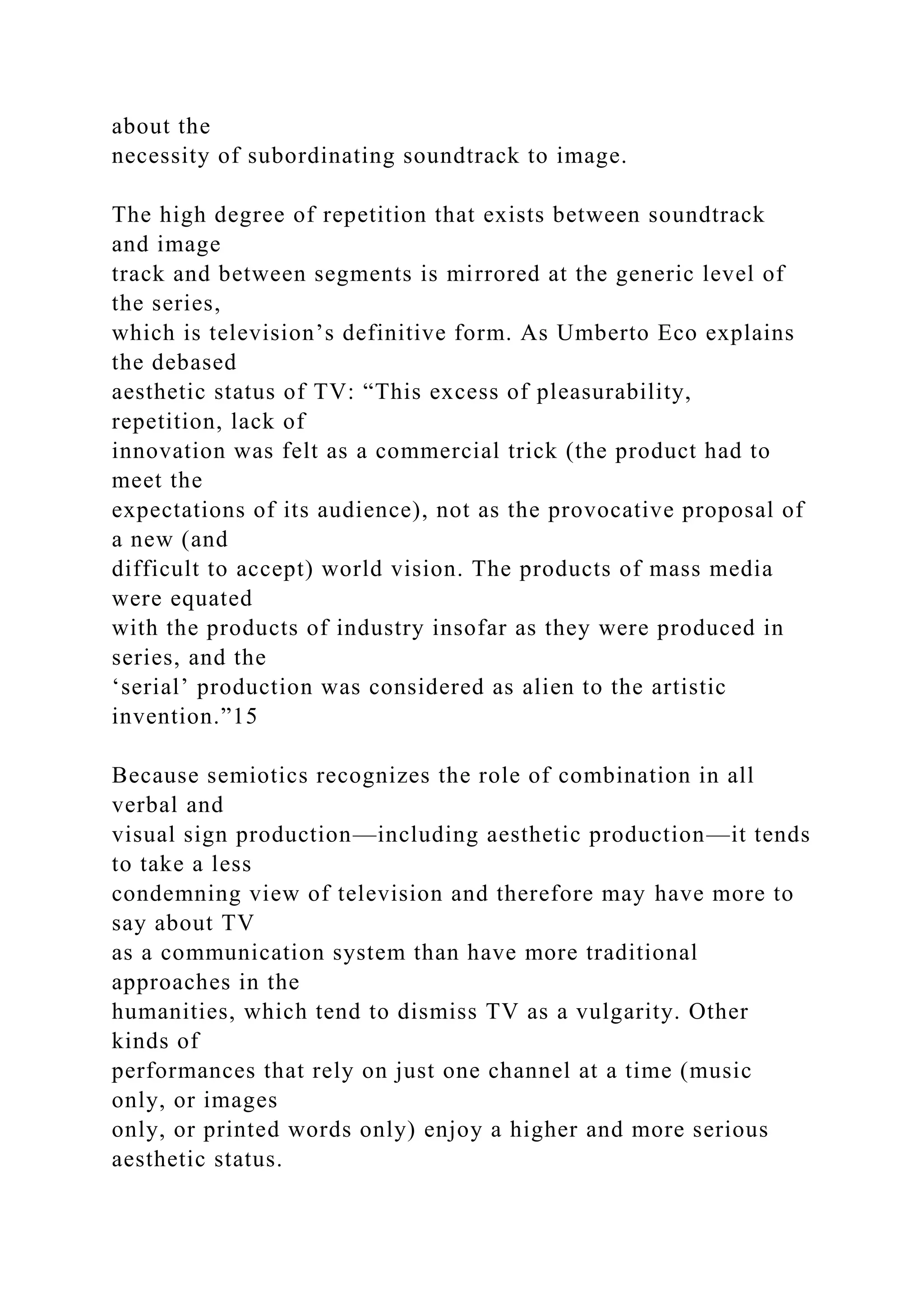
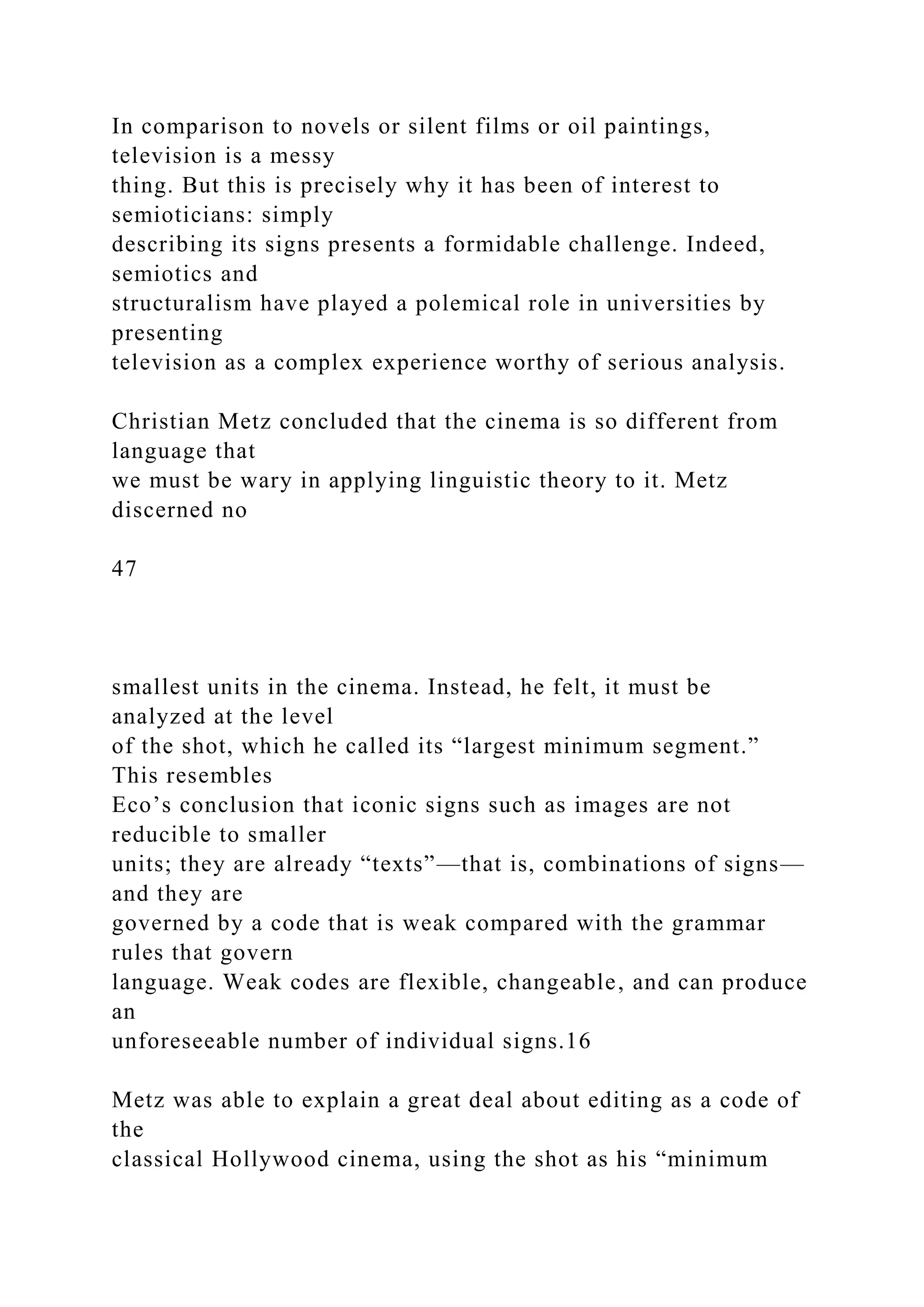
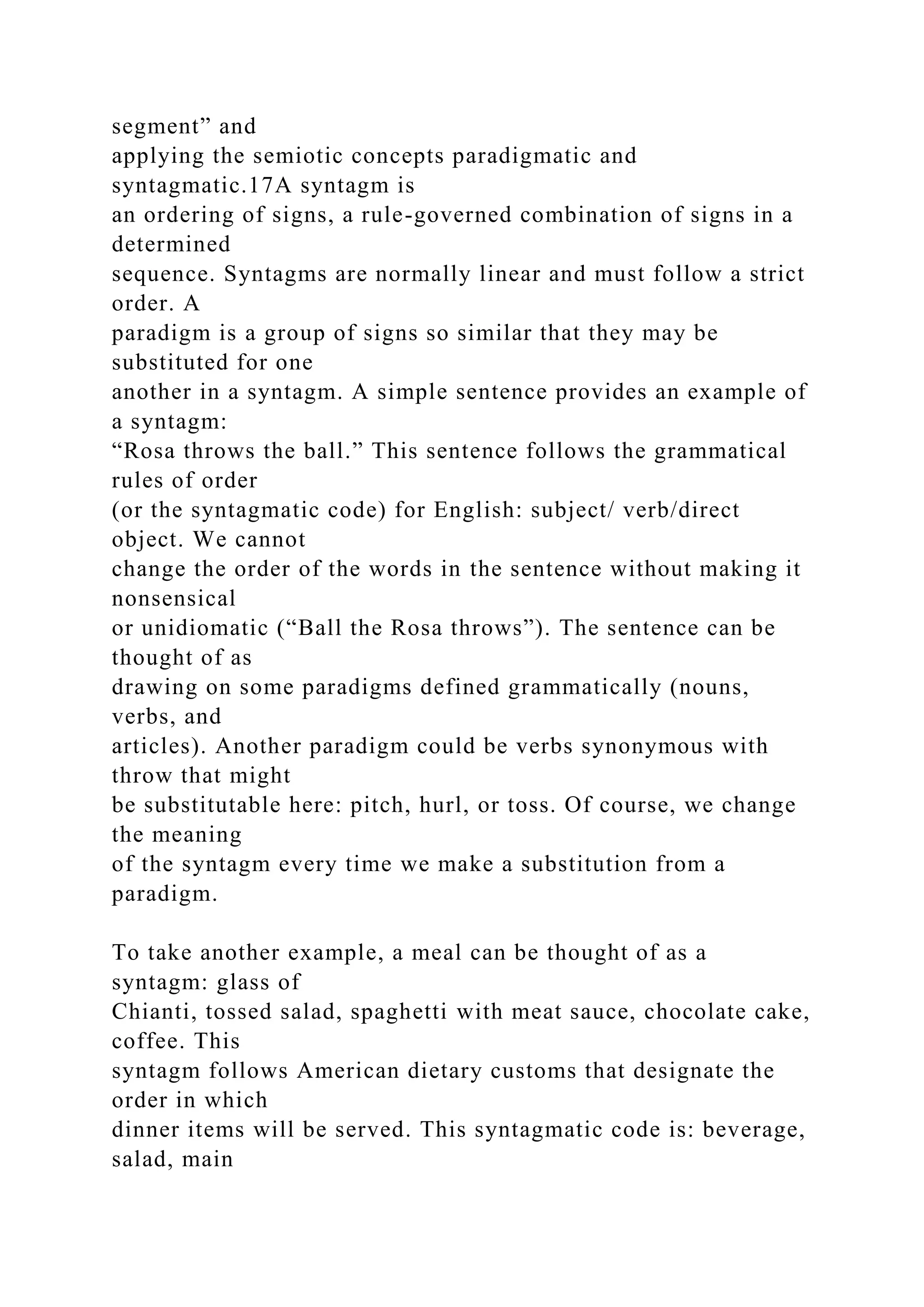

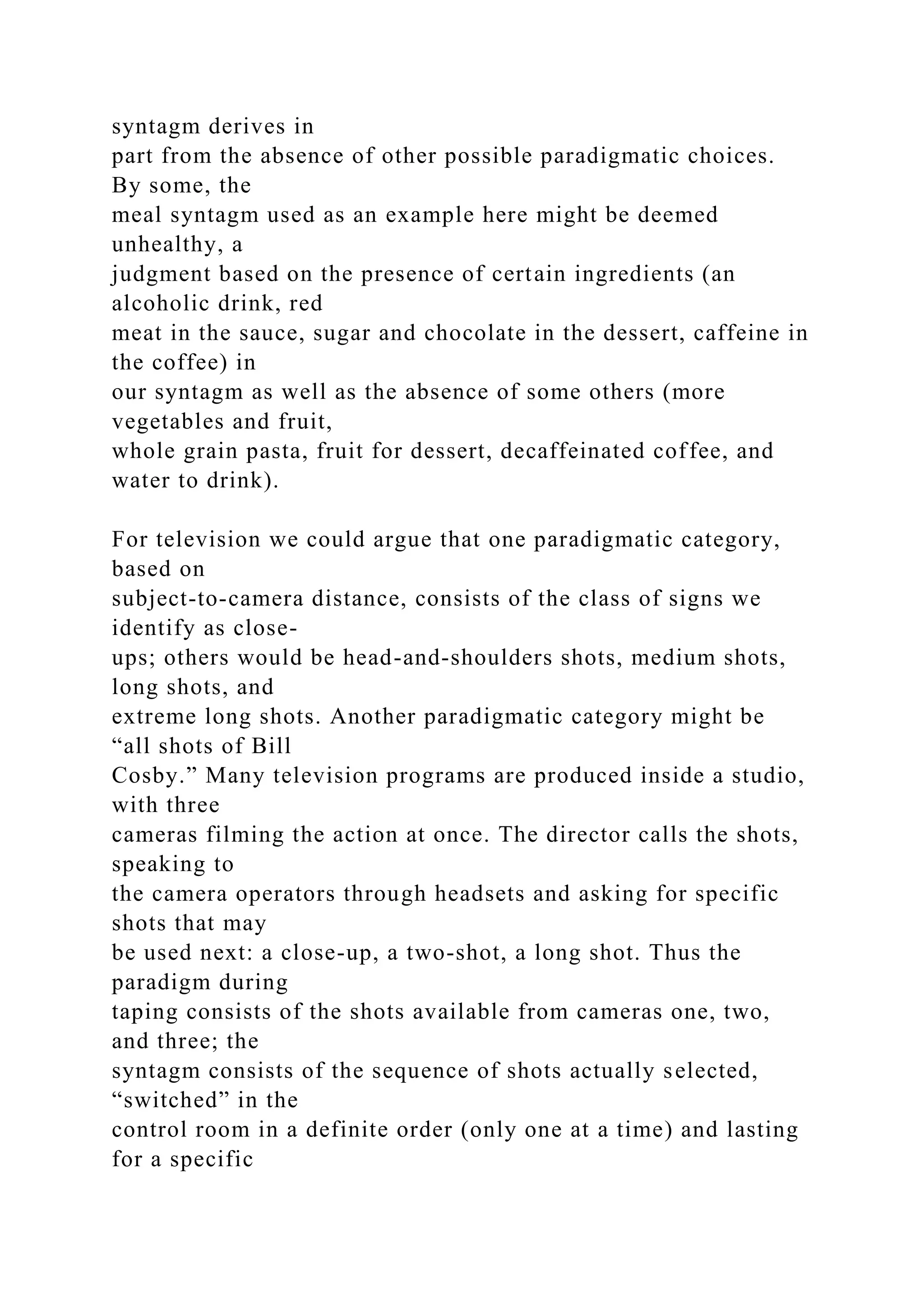

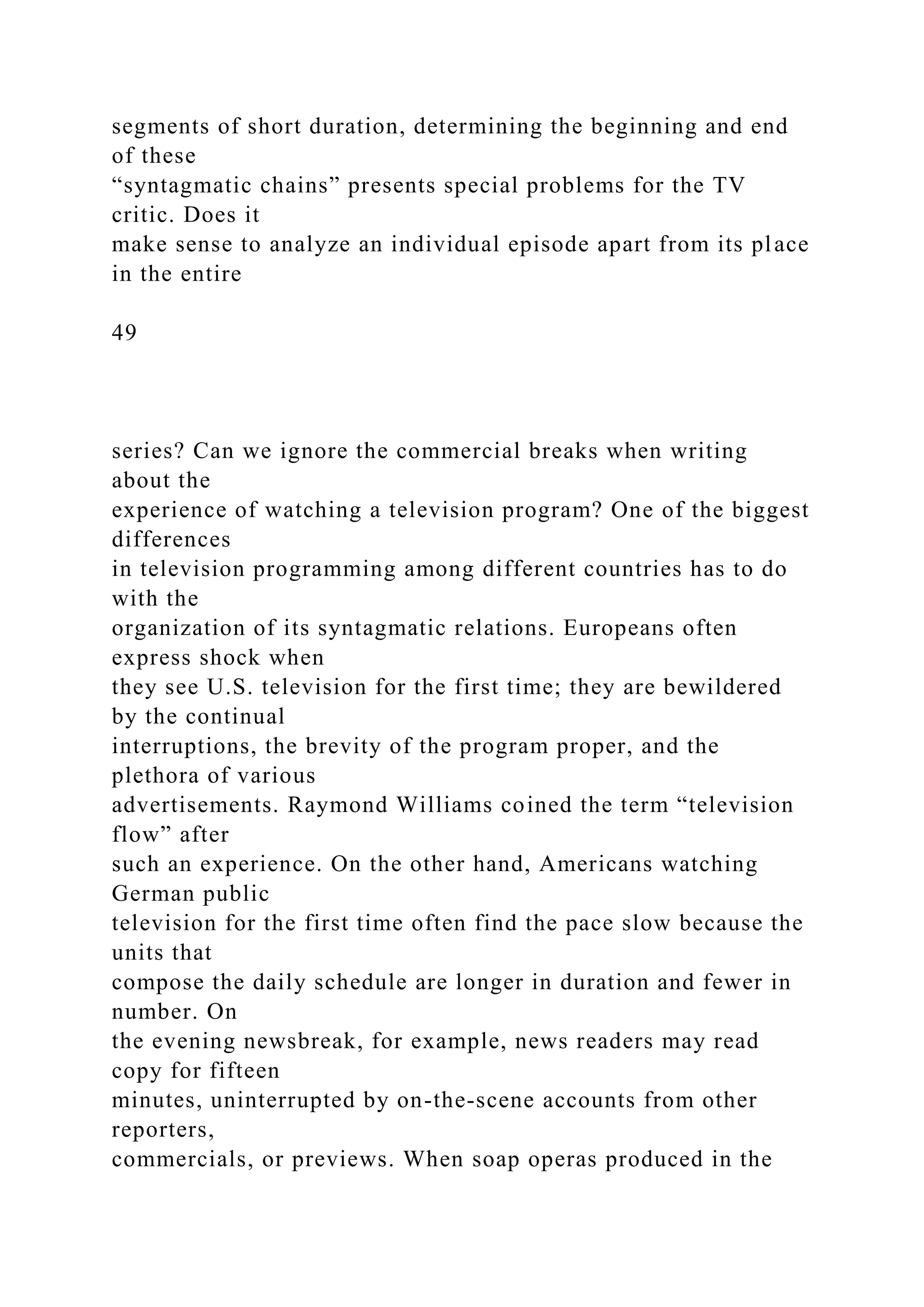
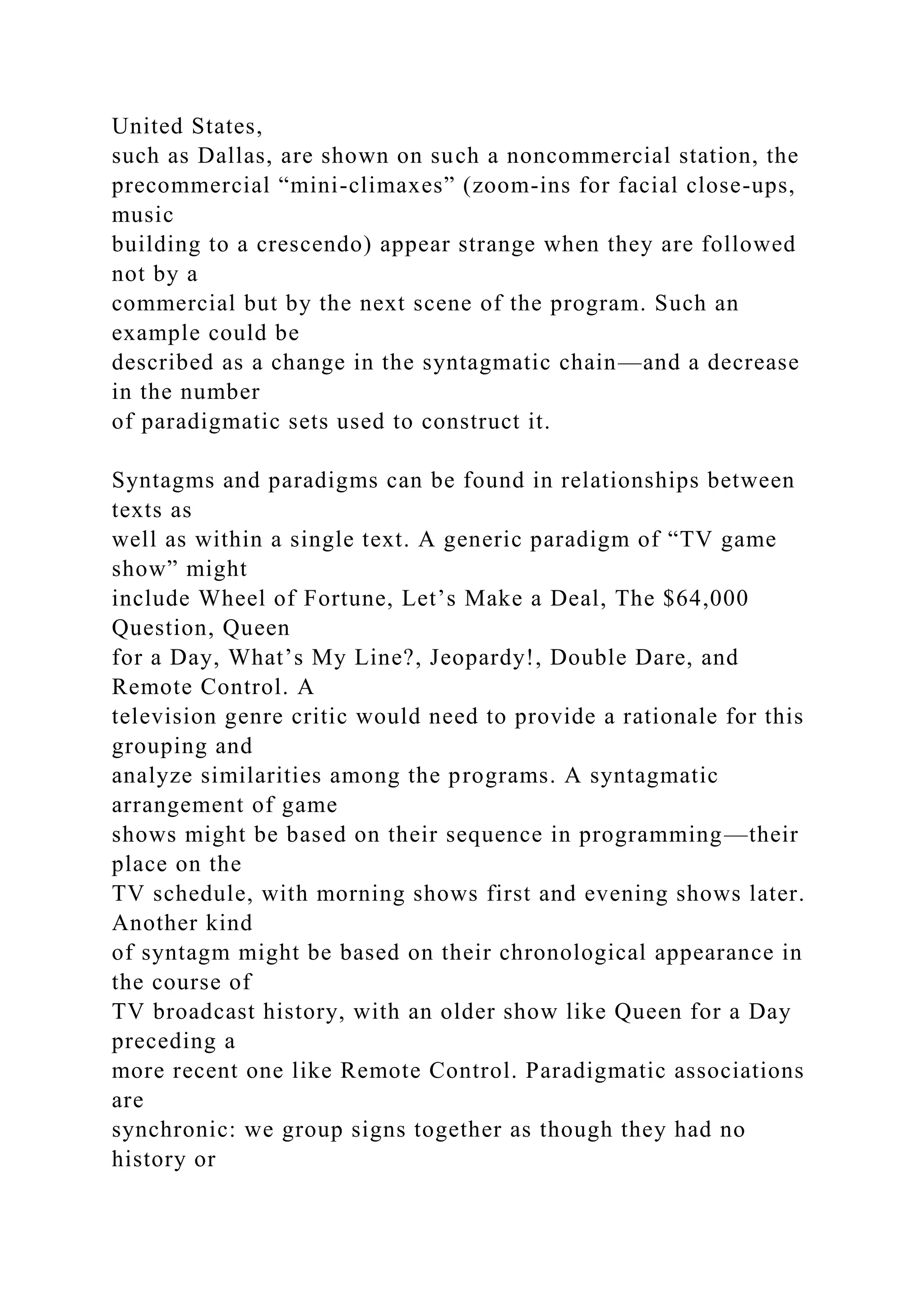
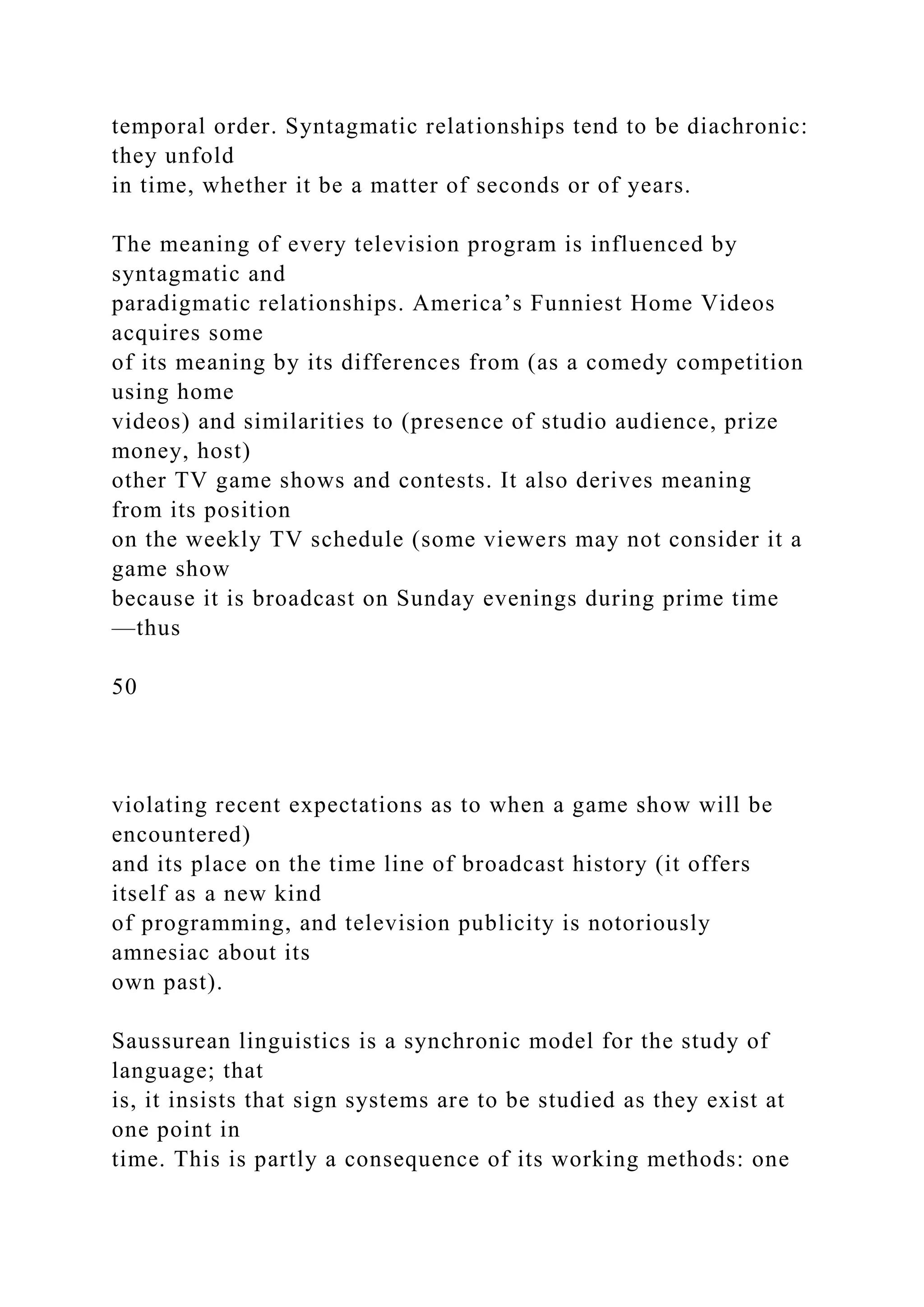
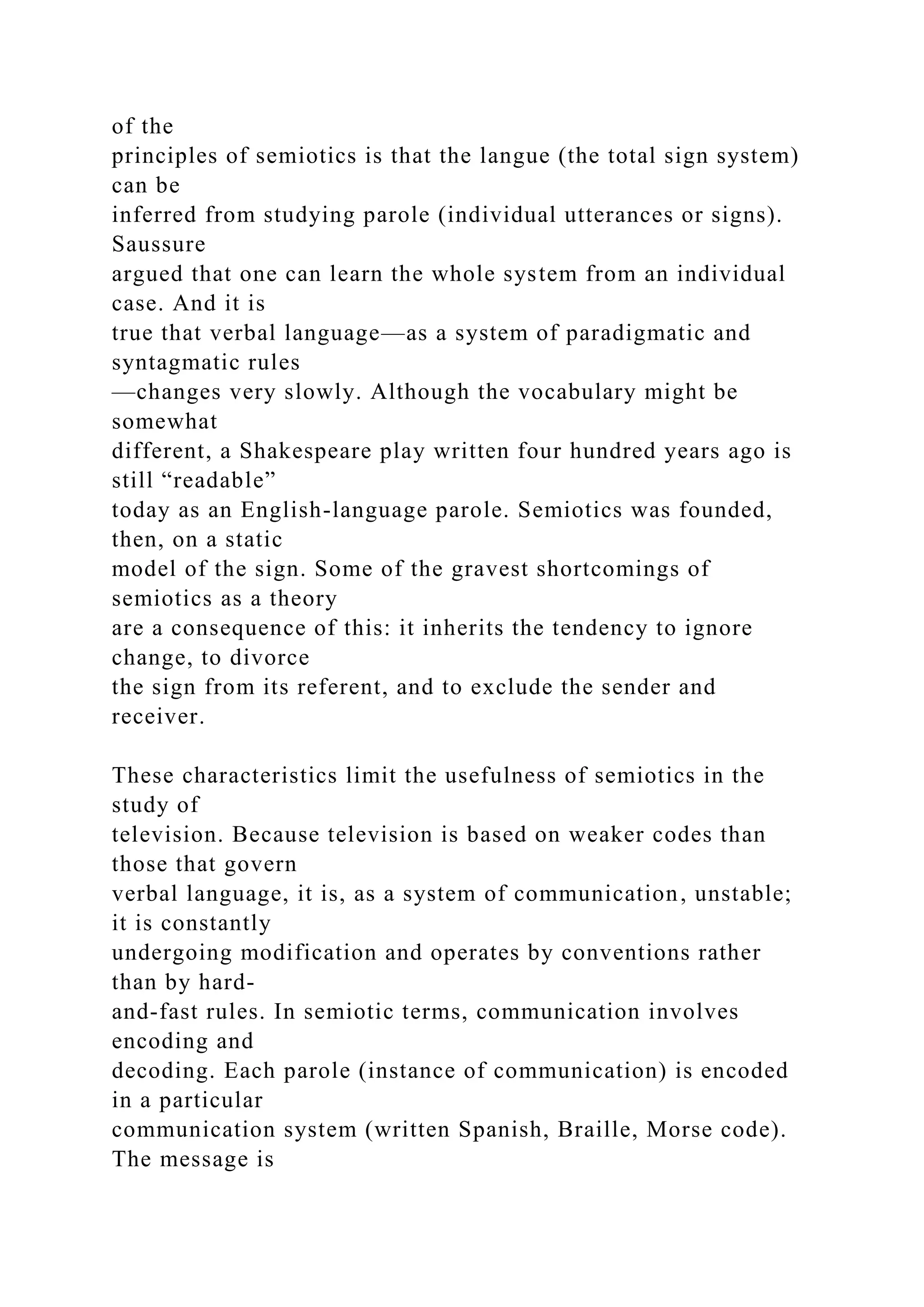
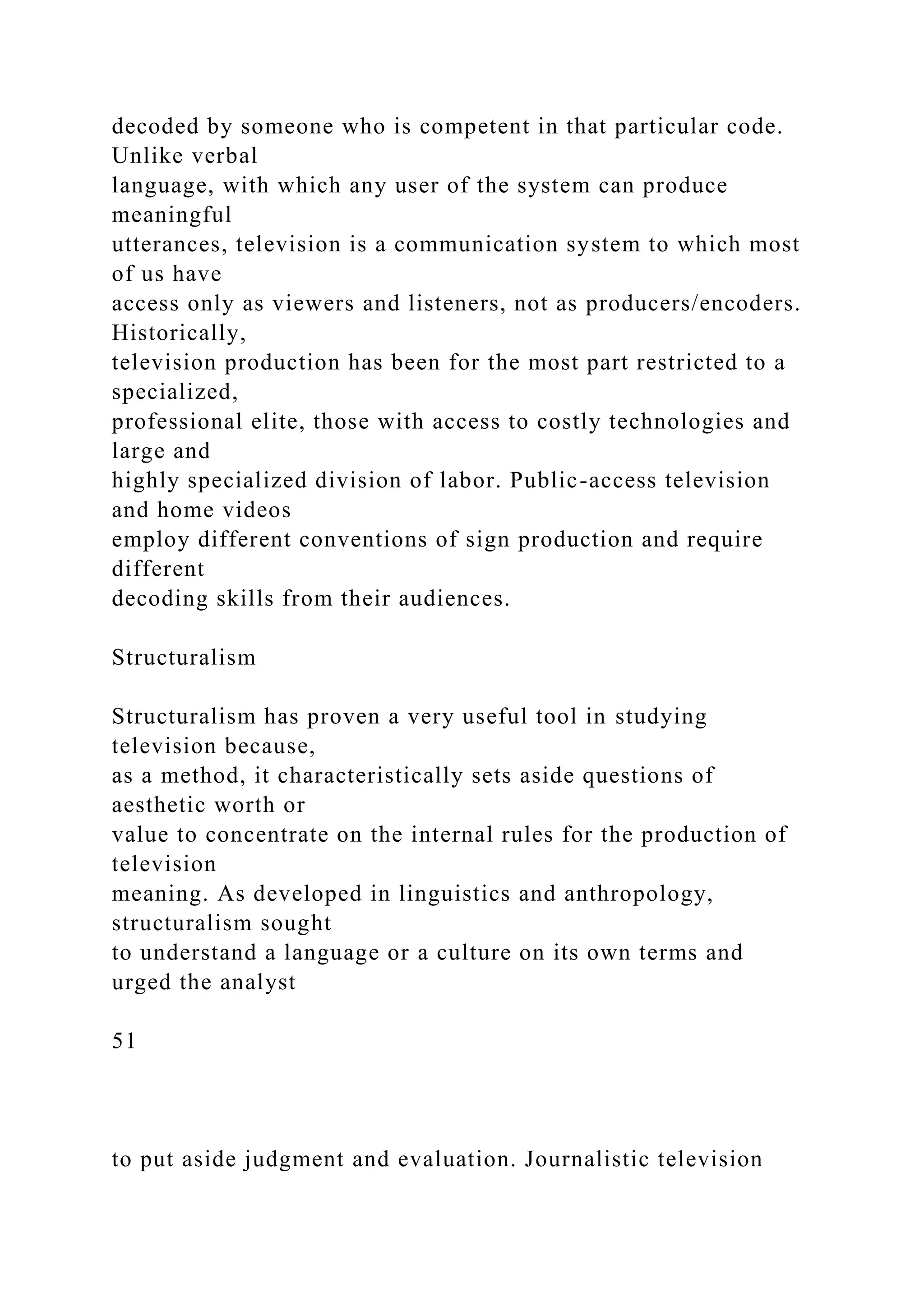
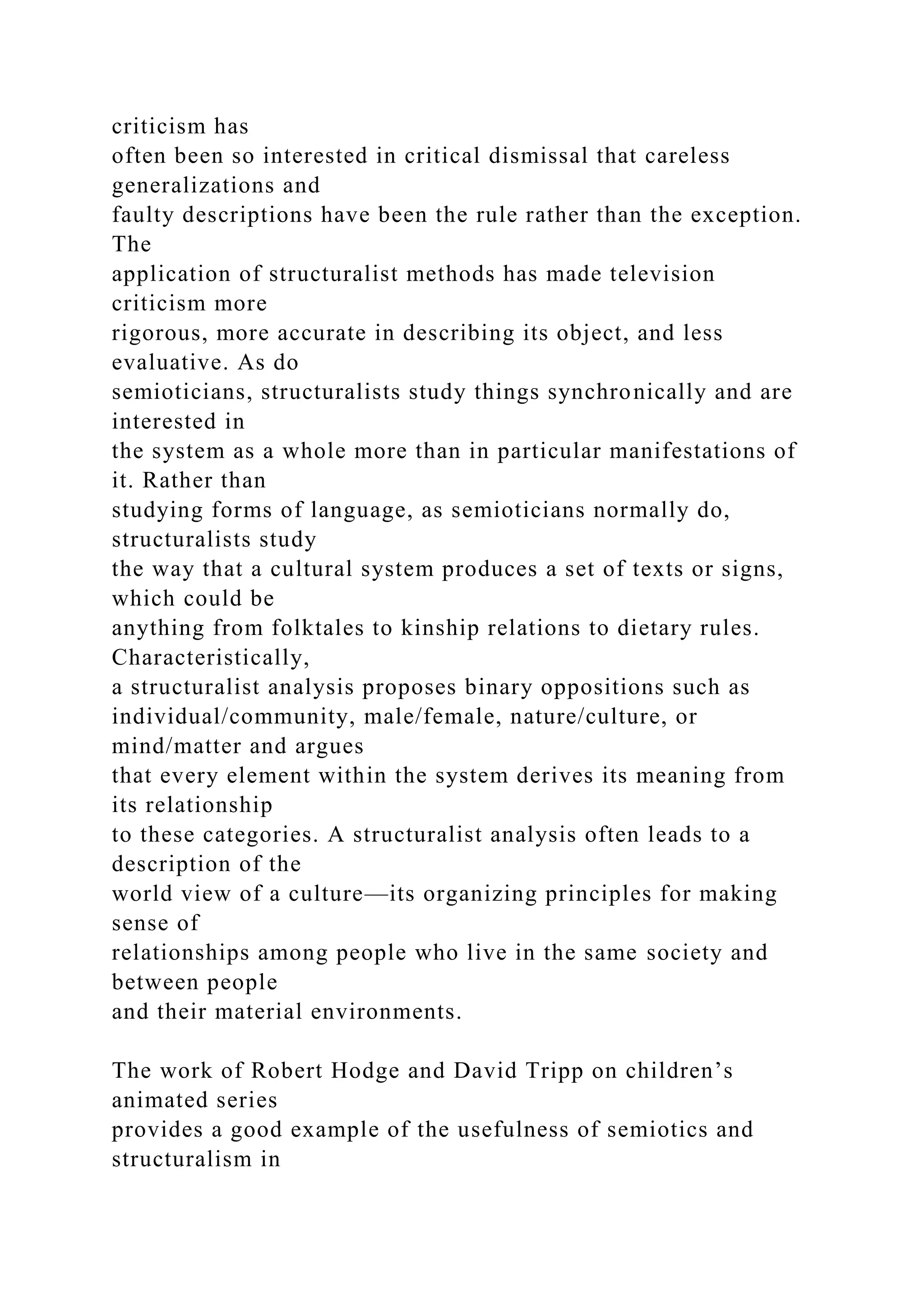
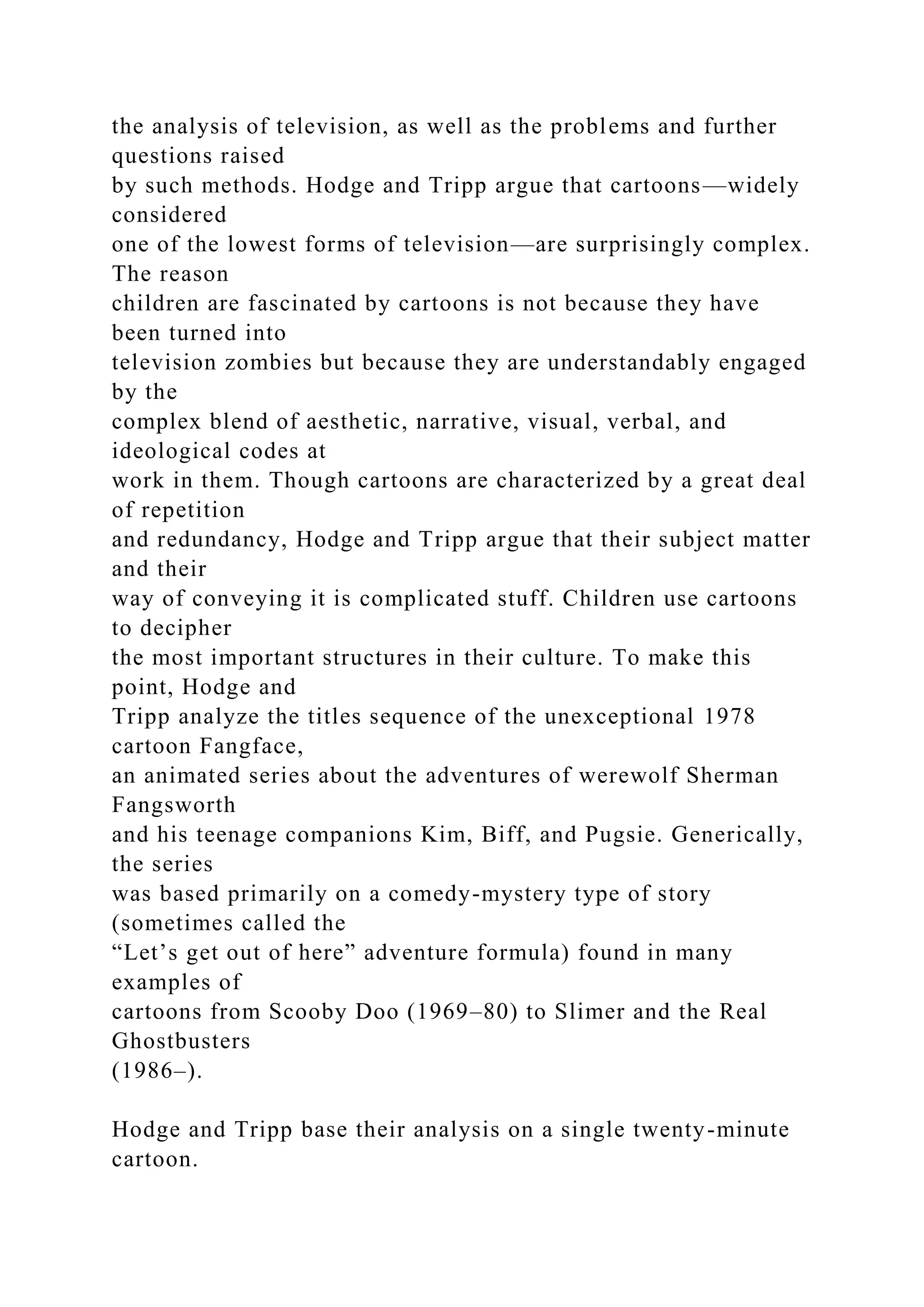
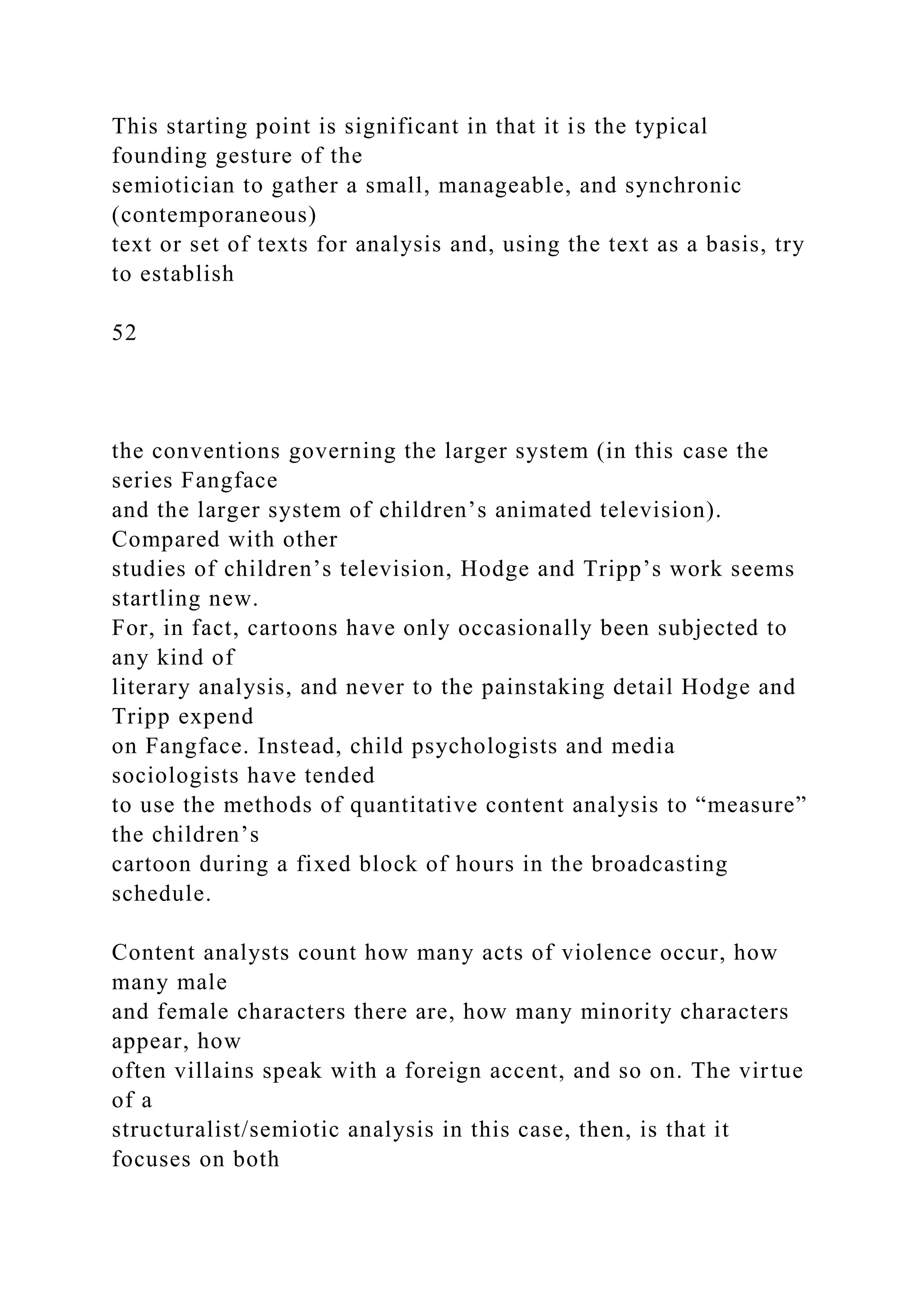
![syntagmatic and paradigmatic relations. These combinations and
structures
are usually lost in content analysis, in which the meanings of
discrete units of
information within a television program are not thought to
depend on the
context in which they appear. This is another important
principle of
structuralism: the meaning of each sign within a text derives
from its
relationship to other signs in the same system. As Terry
Eagleton puts it:
“Structuralism proper contains a distinctive doctrine . . . the
belief that the
individual units of any system have meaning only by virtue of
their relations
to one another. . . . [Y]ou become a card-carrying structuralist
only when you
claim that the meaning of each image is wholly a matter of its
relation to the
other[s].”19
In this essay, I will limit myself to recounting Hodge and
Tripp’s
discussion of the fifty-second opening of Fangface, which they
describe as
“highly compressed, using rapid, small-scale syntagms.” In
most cases, these
openings will be “the most salient memory children will have”
of a program
and its characters. In the first image, Fangface appears wearing
a red hat. He
licks his lips and smiles. Hodge and Tripp analyze the image
this way:
The picture itself is a syntagm, consisting of a face of an animal](https://image.slidesharecdn.com/channelsofdiscoursereassembled2channelsof-221018173716-6fc0655a/75/Channels-of-Discourse-Reassembled2Channels-of-docx-111-2048.jpg)
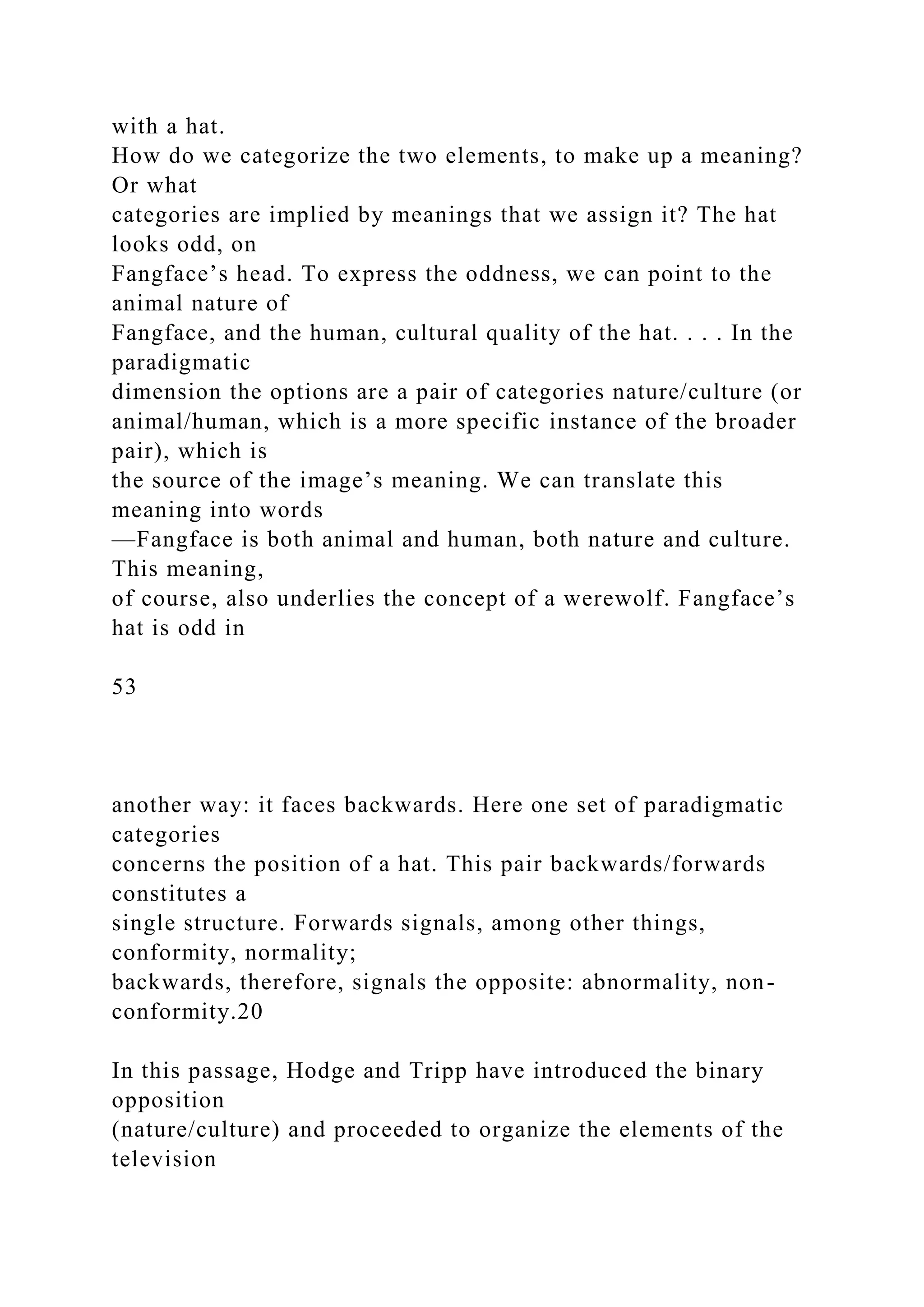

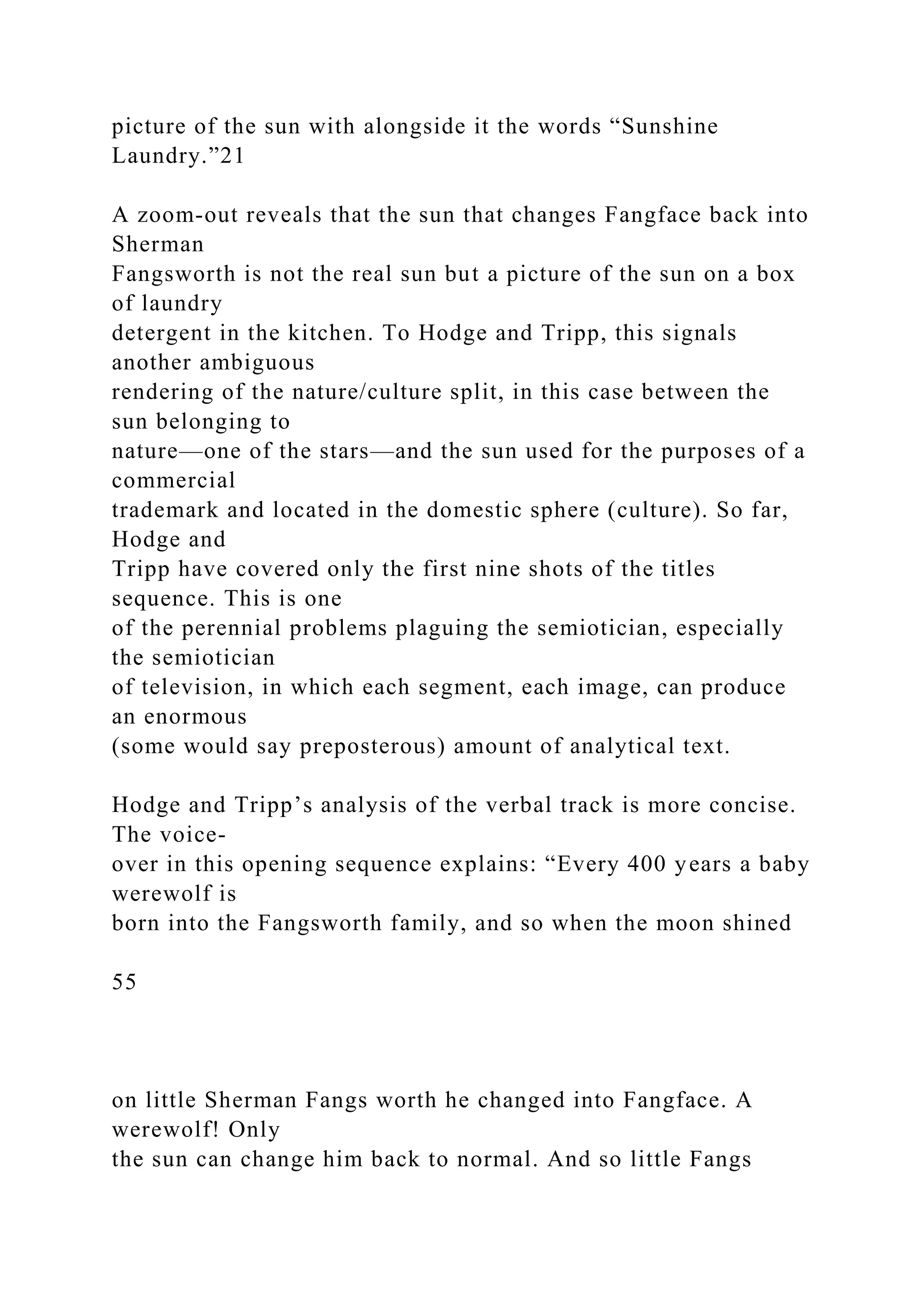
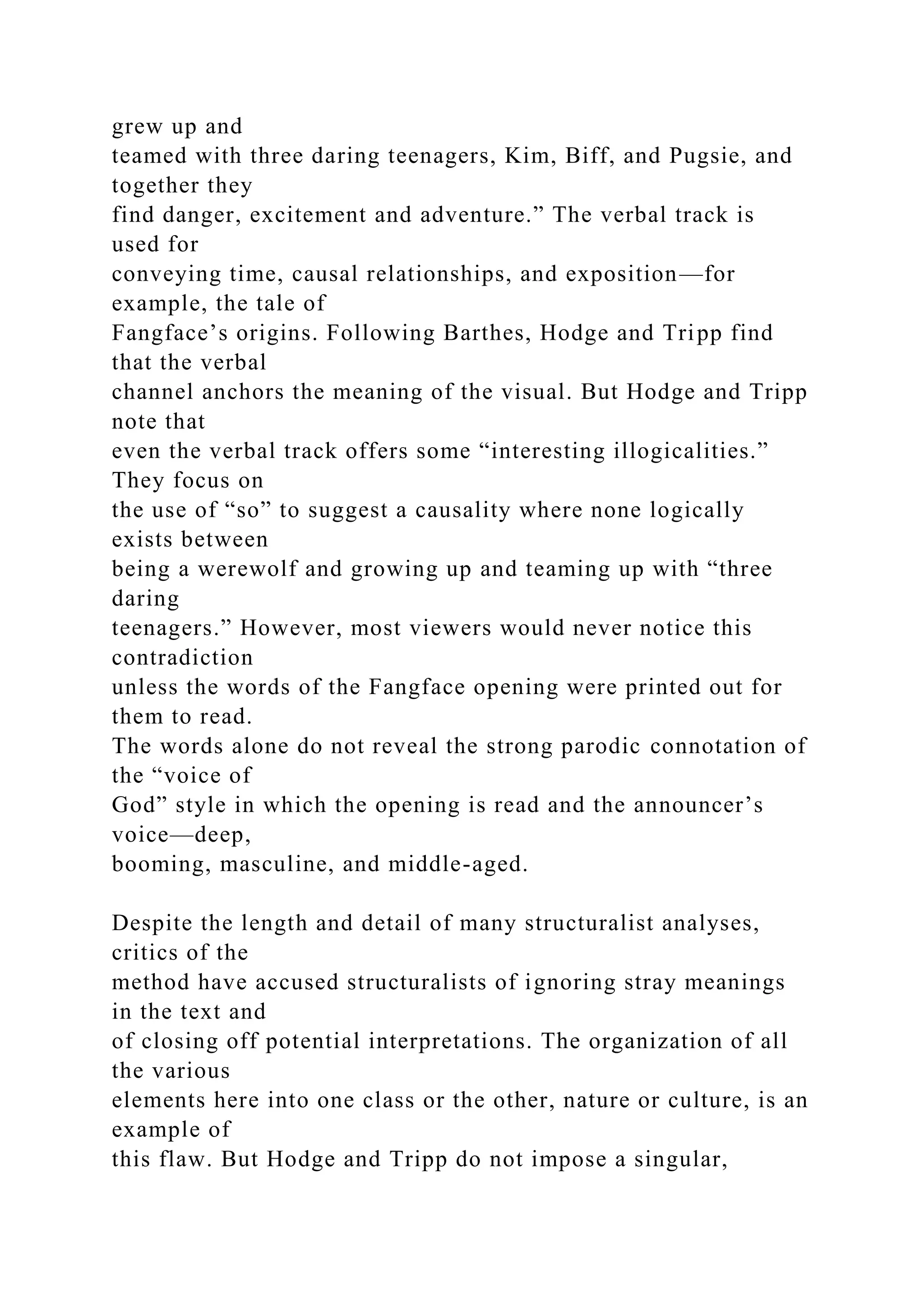
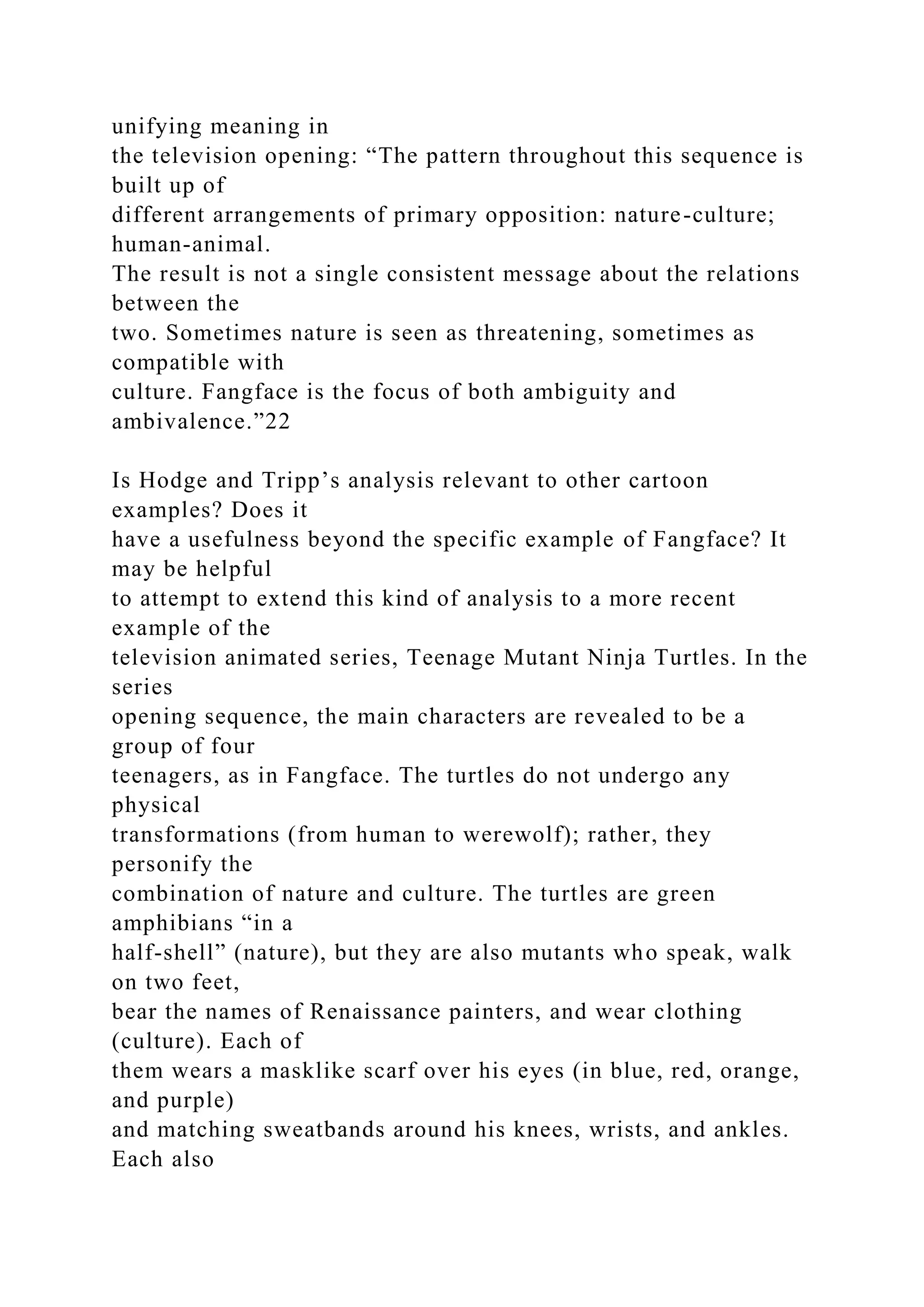
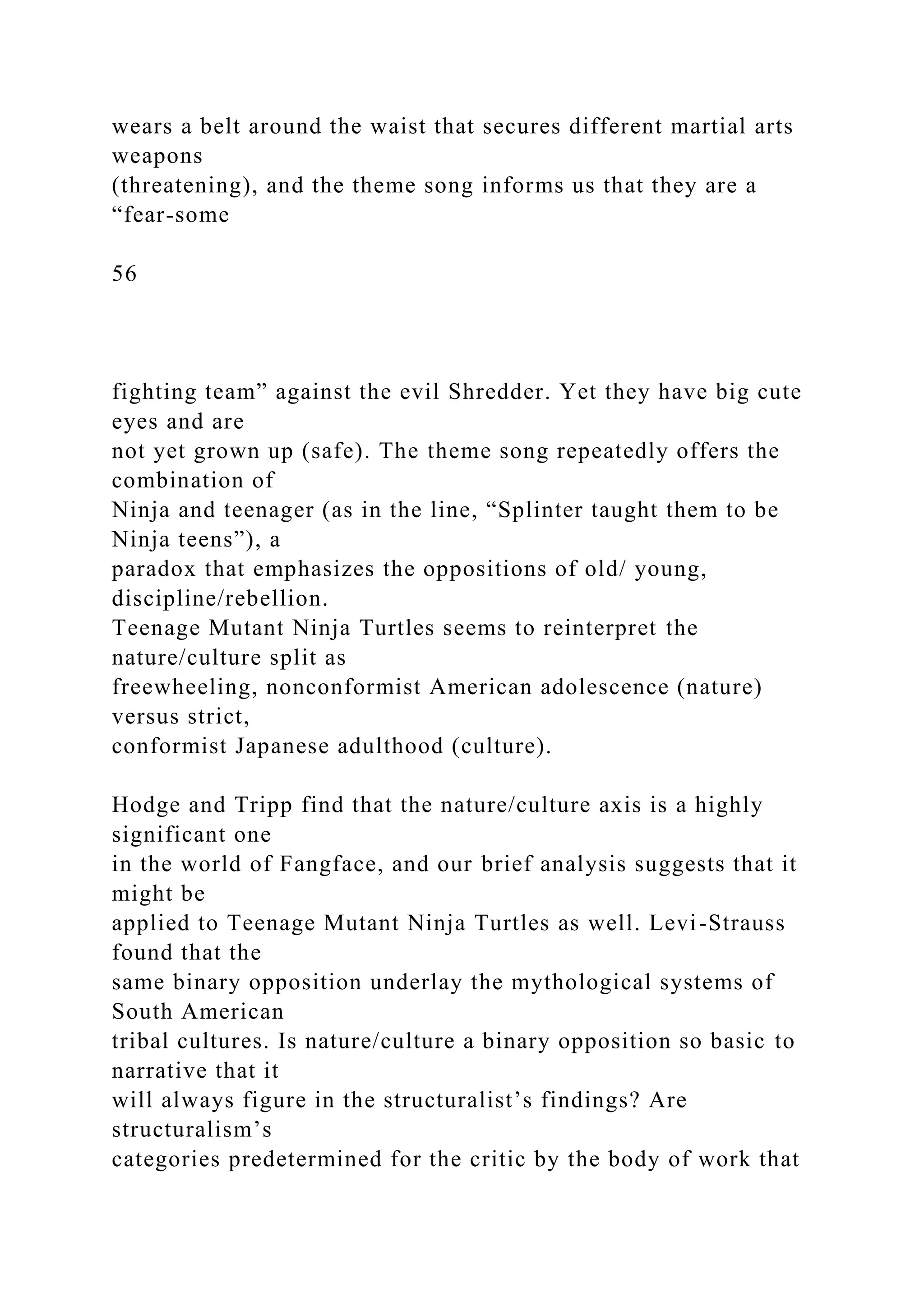
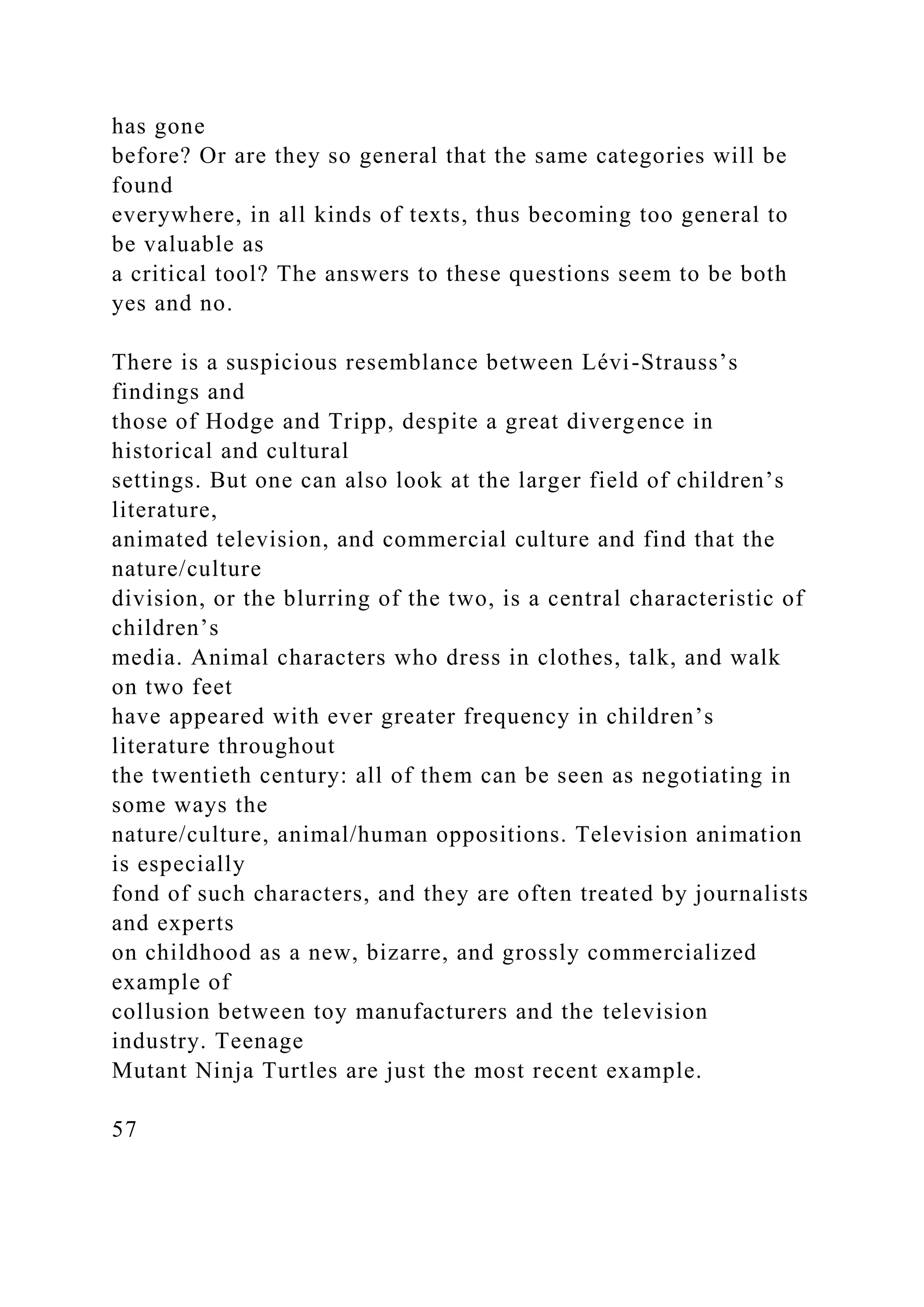


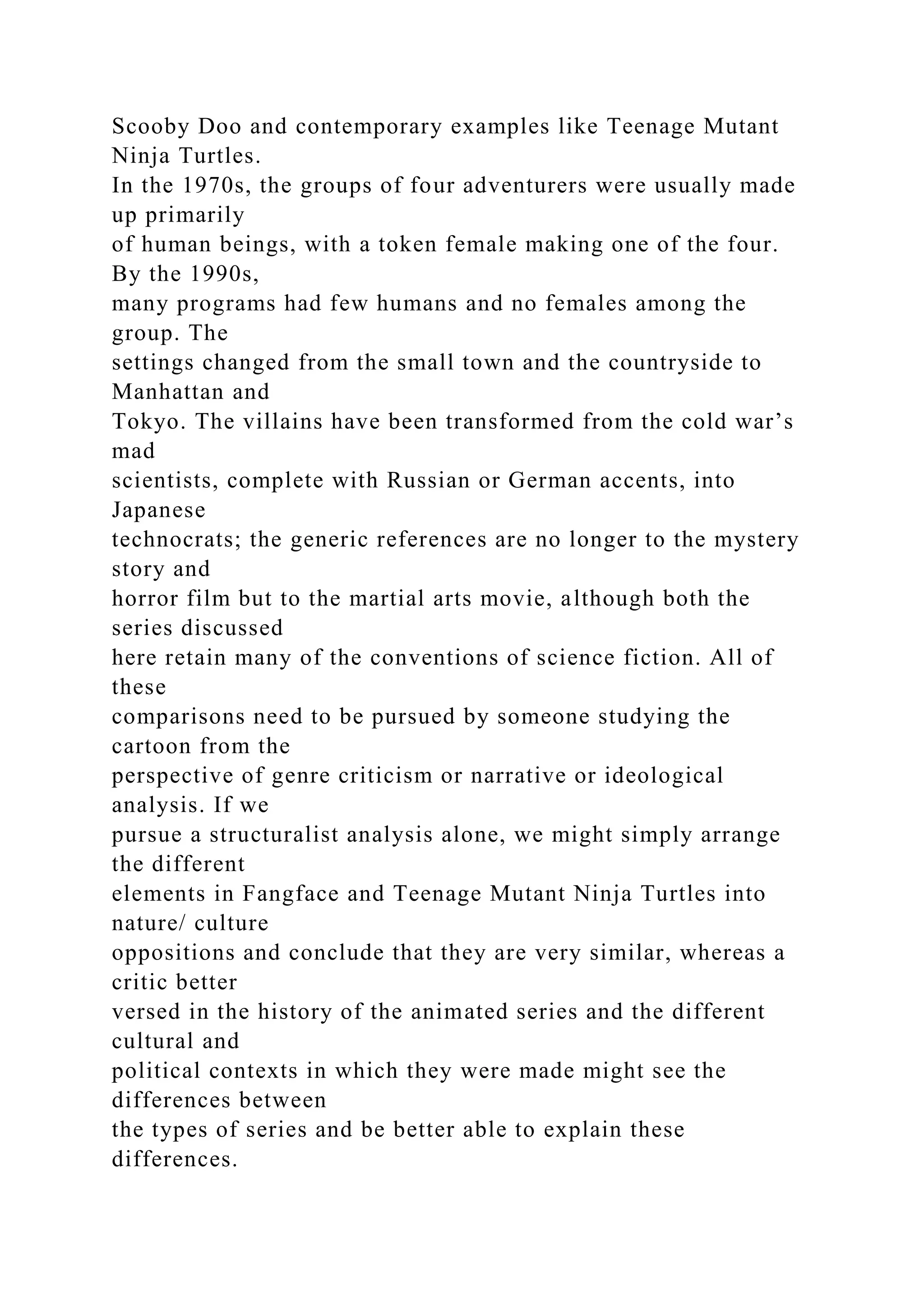
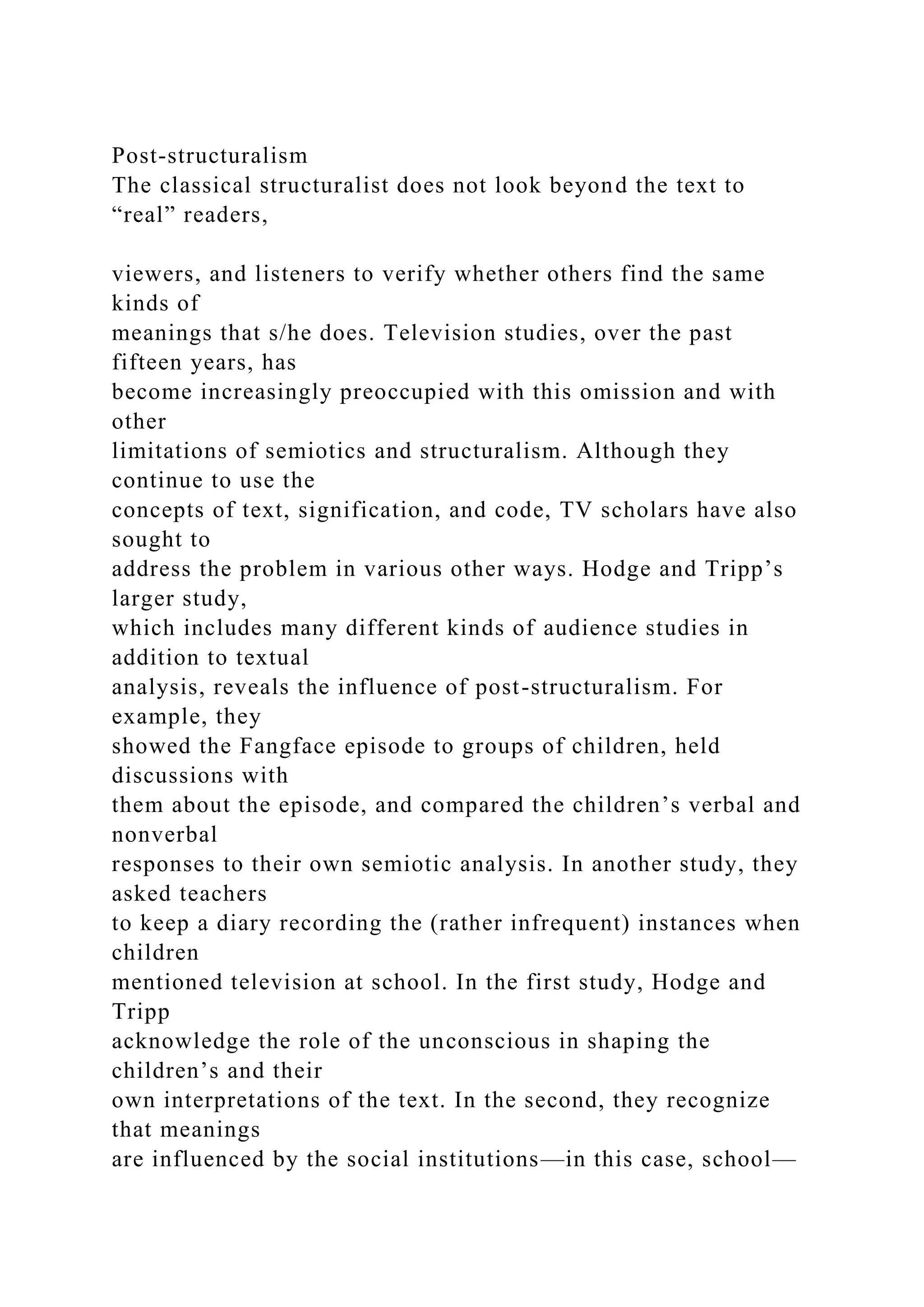

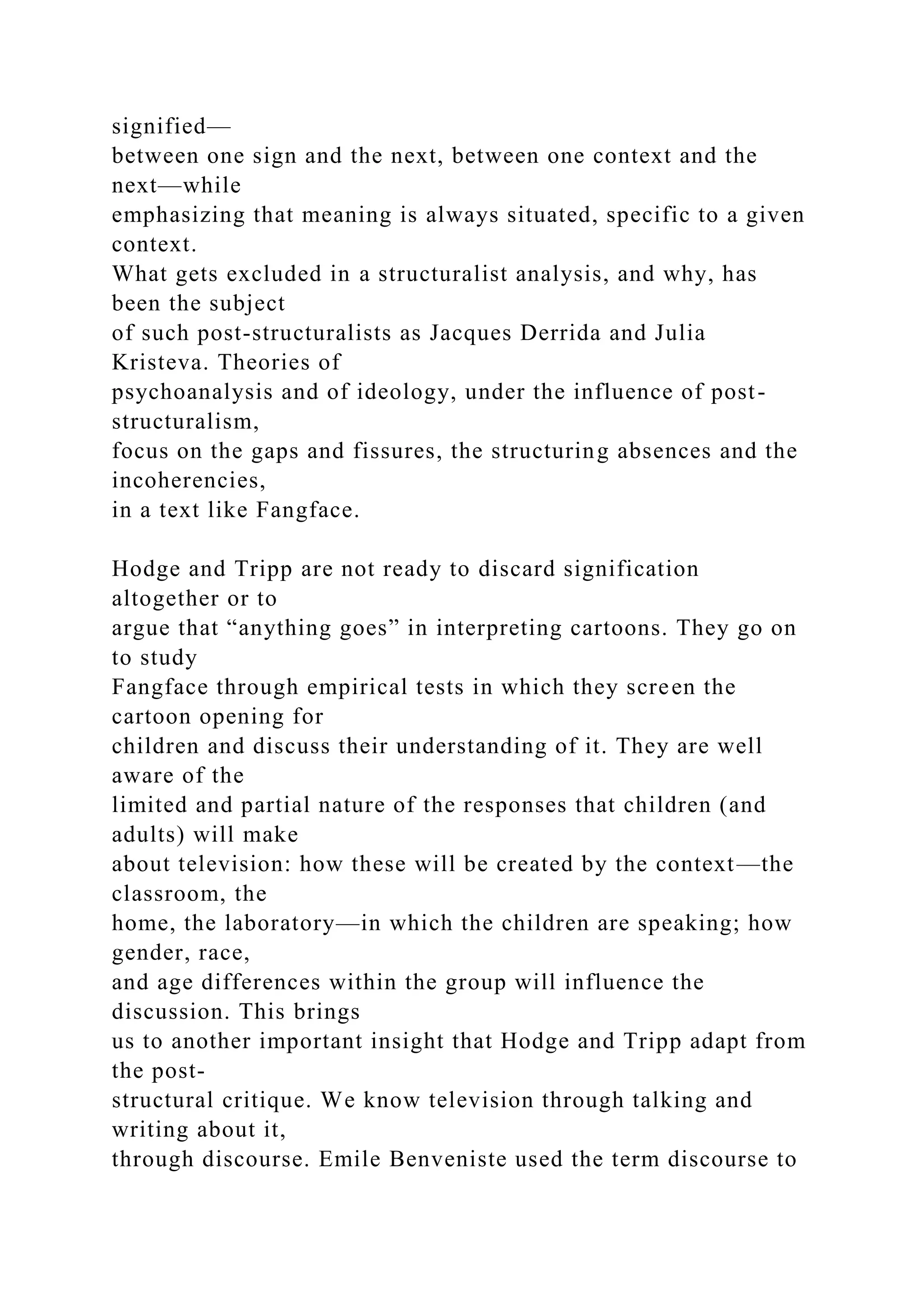
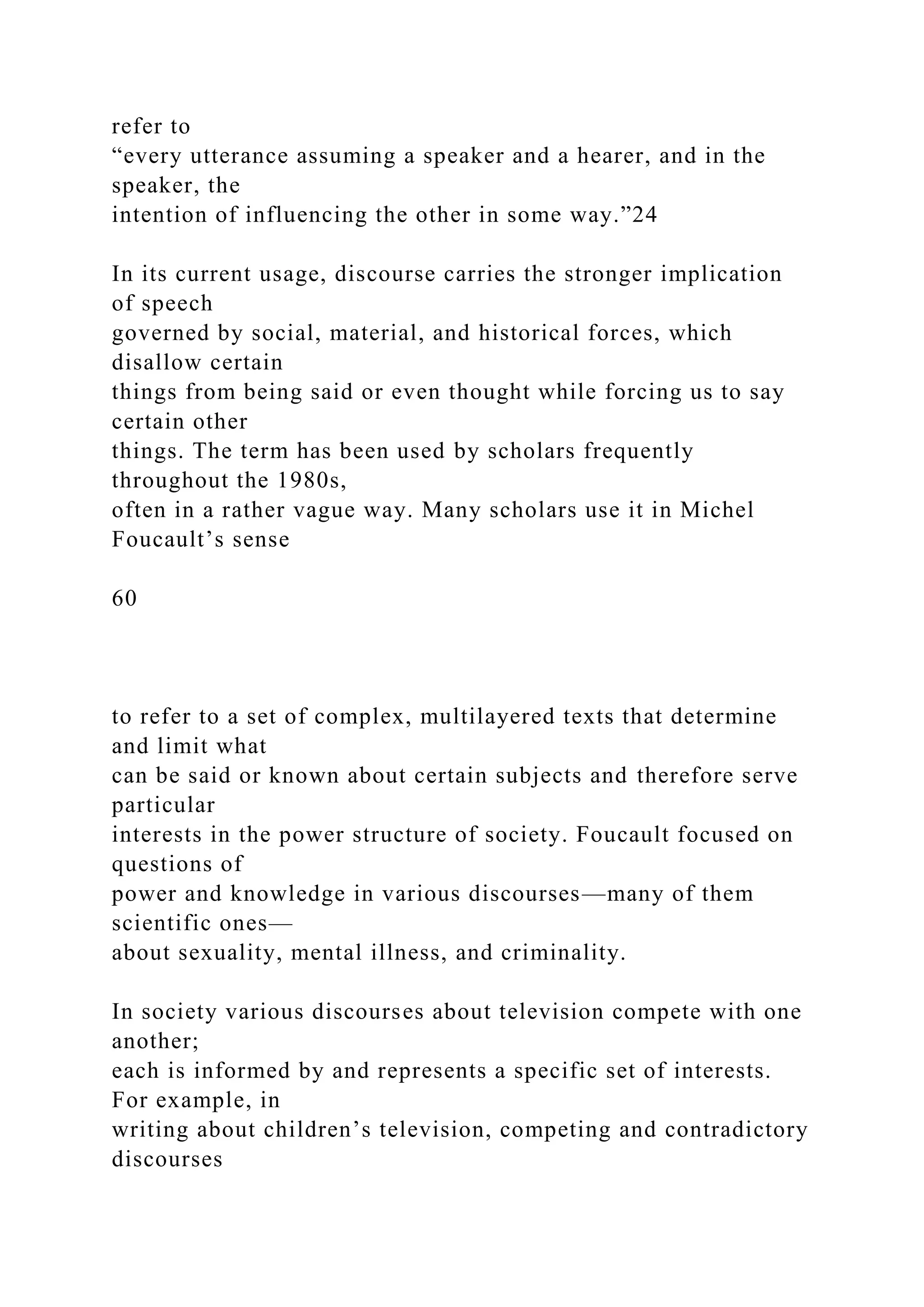
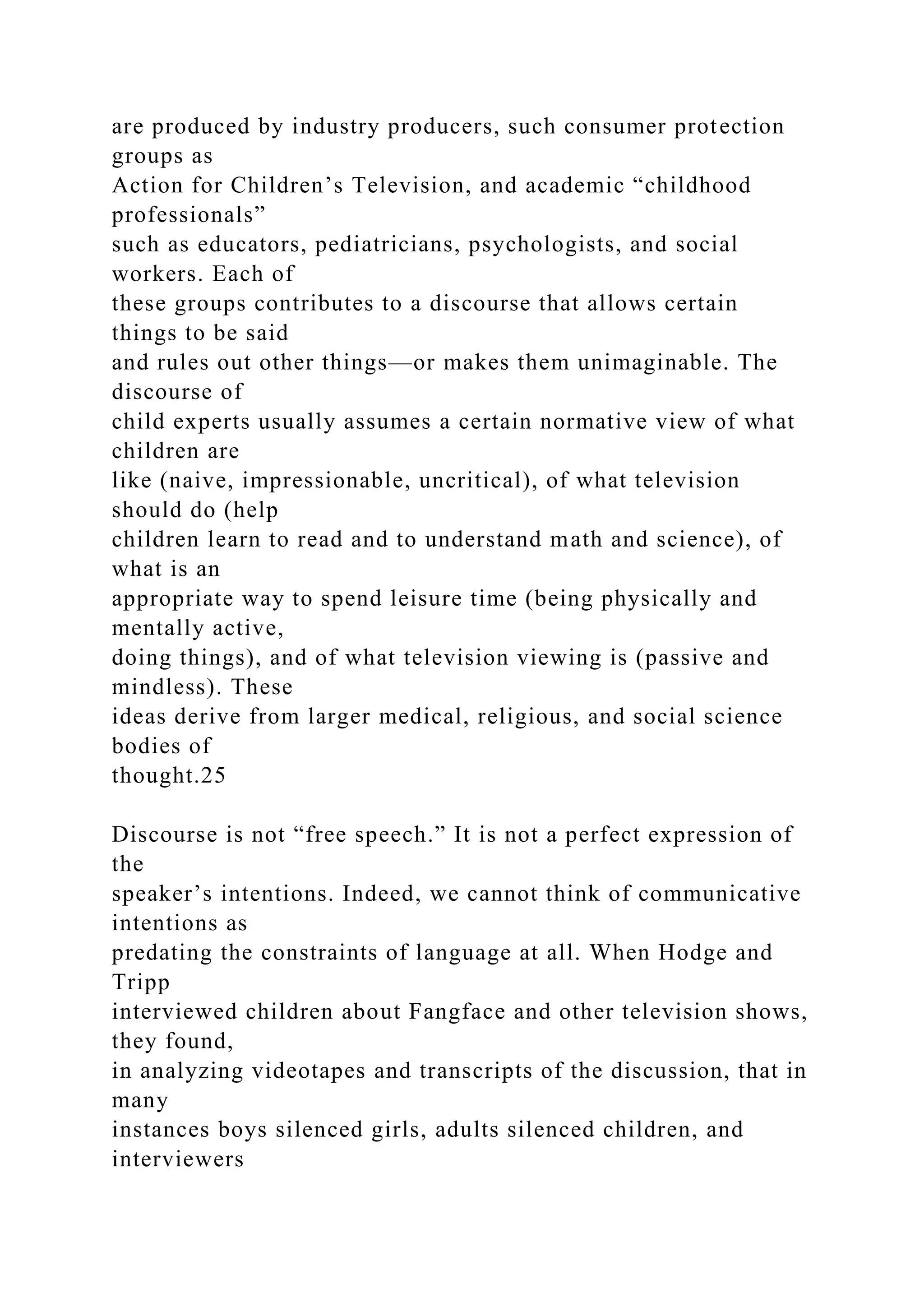
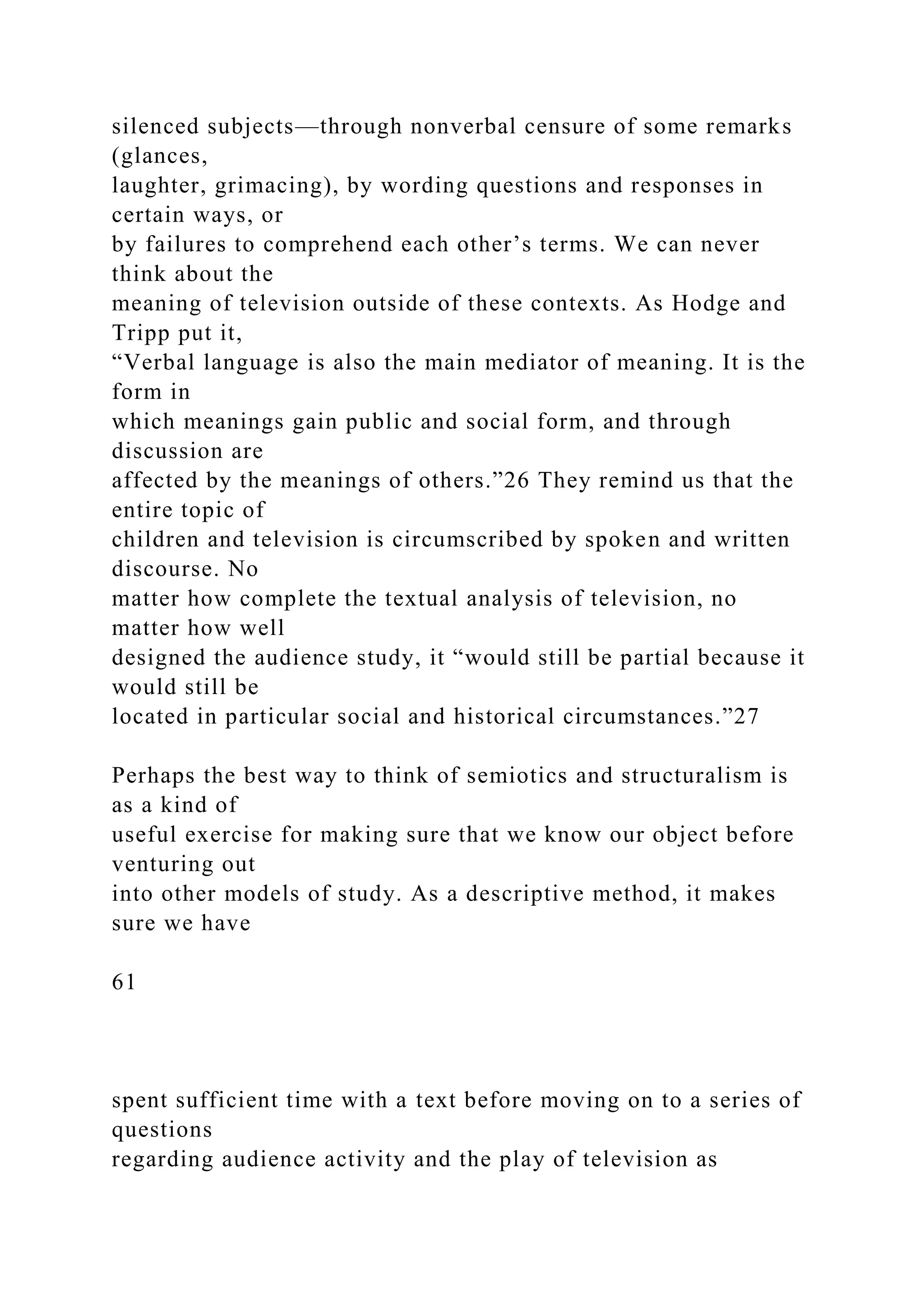
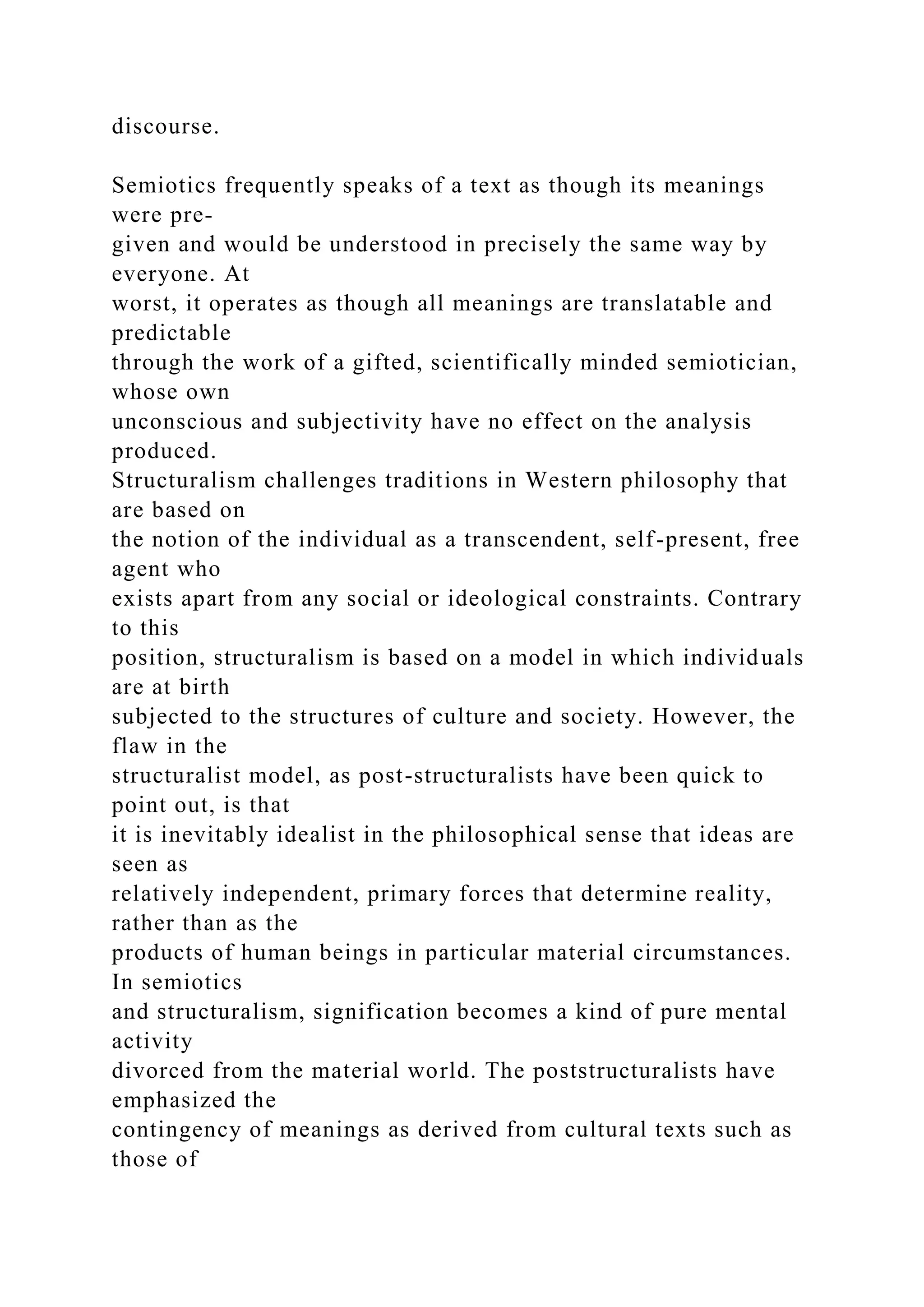
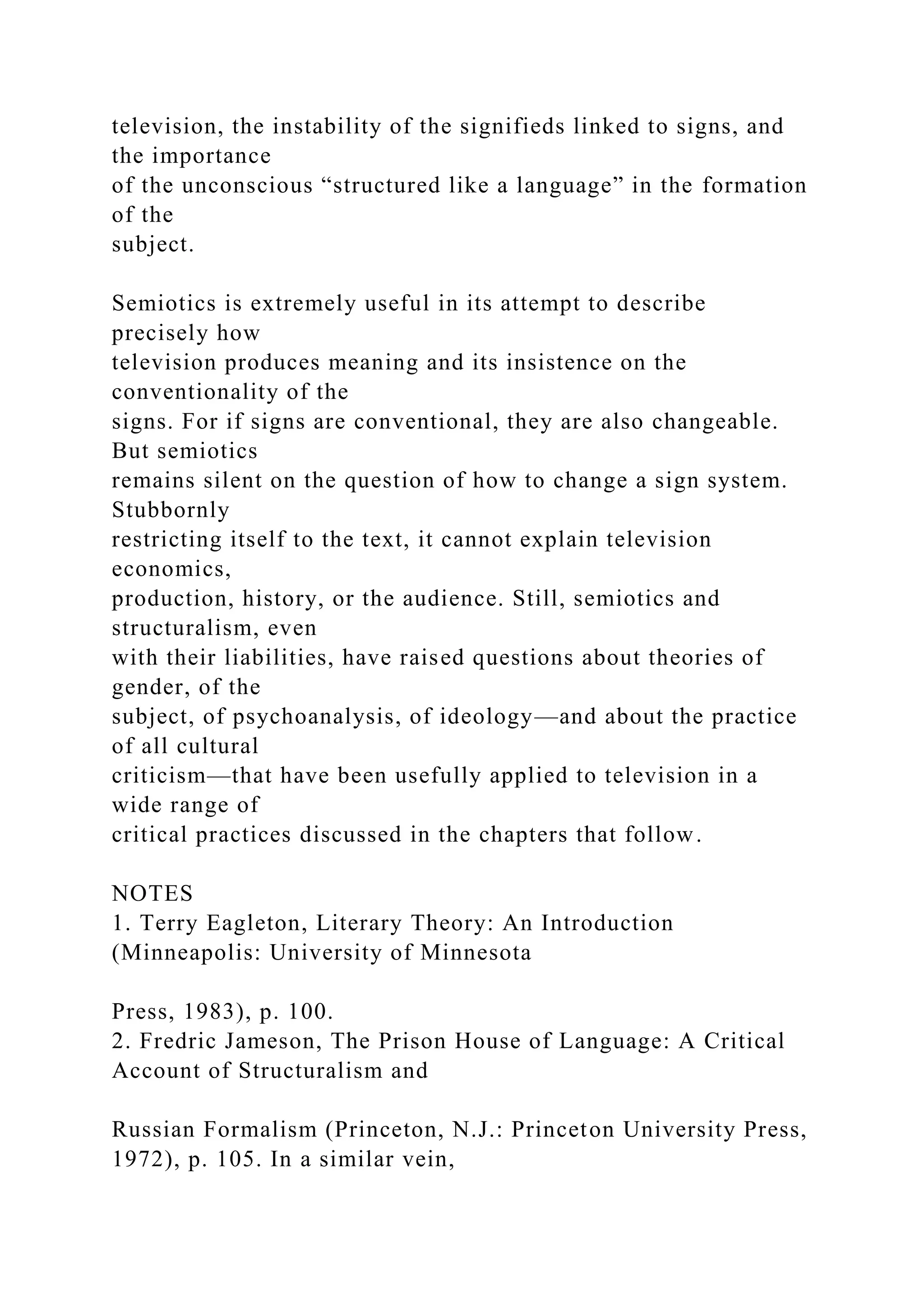
![Raymond Williams discusses the borrowing of the term
structural from the sciences and the
problems this created (Keywords [New York: Oxford University
Press, 1976], pp. 254–55).
62
3. Umberto Eco, A Theory of Semiotics (Bloomington: Indiana
University Press, 1976), p. 16.
4. Ibid., p. 17 (Eco’s italics).
5. See the description of television coverage at the White House
in Thomas Whiteside,
“Standups,” The New Yorker, 2 December 1985, pp. 81–113.
6. Margaret Morse, “The Television News Personality and
Credibility,” in Studies in
Entertainment: Critical Approaches to Mass Culture, ed. Tania
Modleski (Bloomington: Indiana
University Press, 1986), pp. 55–79.
7. Eco, Theory, p. 7.
8. Roland Barthes, “Myth Today,” in The Barthes Reader, ed.
Susan Sontag (New York: Hill
and Wang, 1982), pp. 93–149.
9. Herbert Zettl, Television Production Handbook (Belmont,
Calif.: Wadsworth Publishing
Company, 1984), p. 596.
10. Richard Dyer makes this point in “Entertainment and
Utopia,” in Movies and Methods II,
ed. Bill Nichols (Berkeley: University of California Press,](https://image.slidesharecdn.com/channelsofdiscoursereassembled2channelsof-221018173716-6fc0655a/75/Channels-of-Discourse-Reassembled2Channels-of-docx-130-2048.jpg)
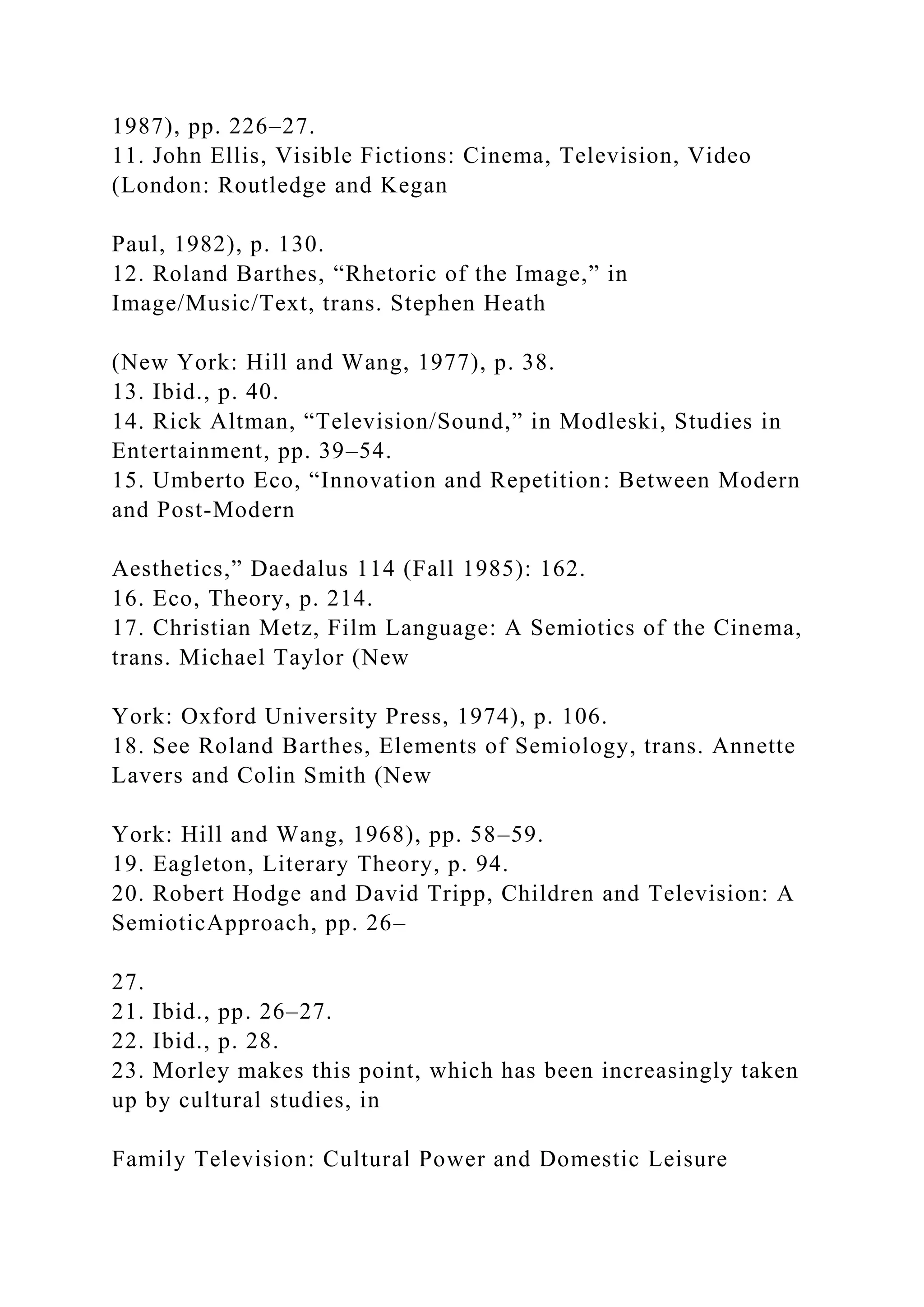
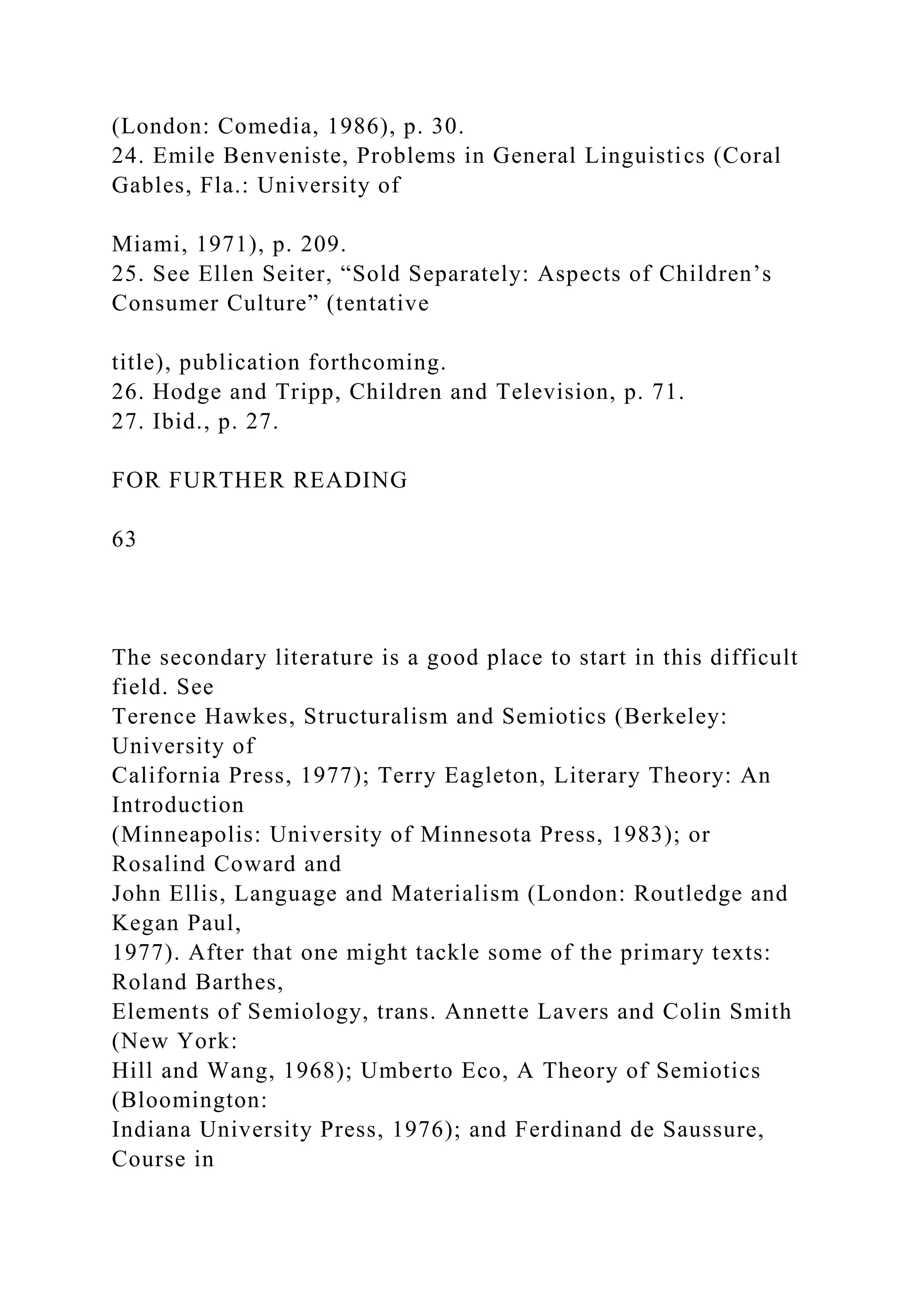
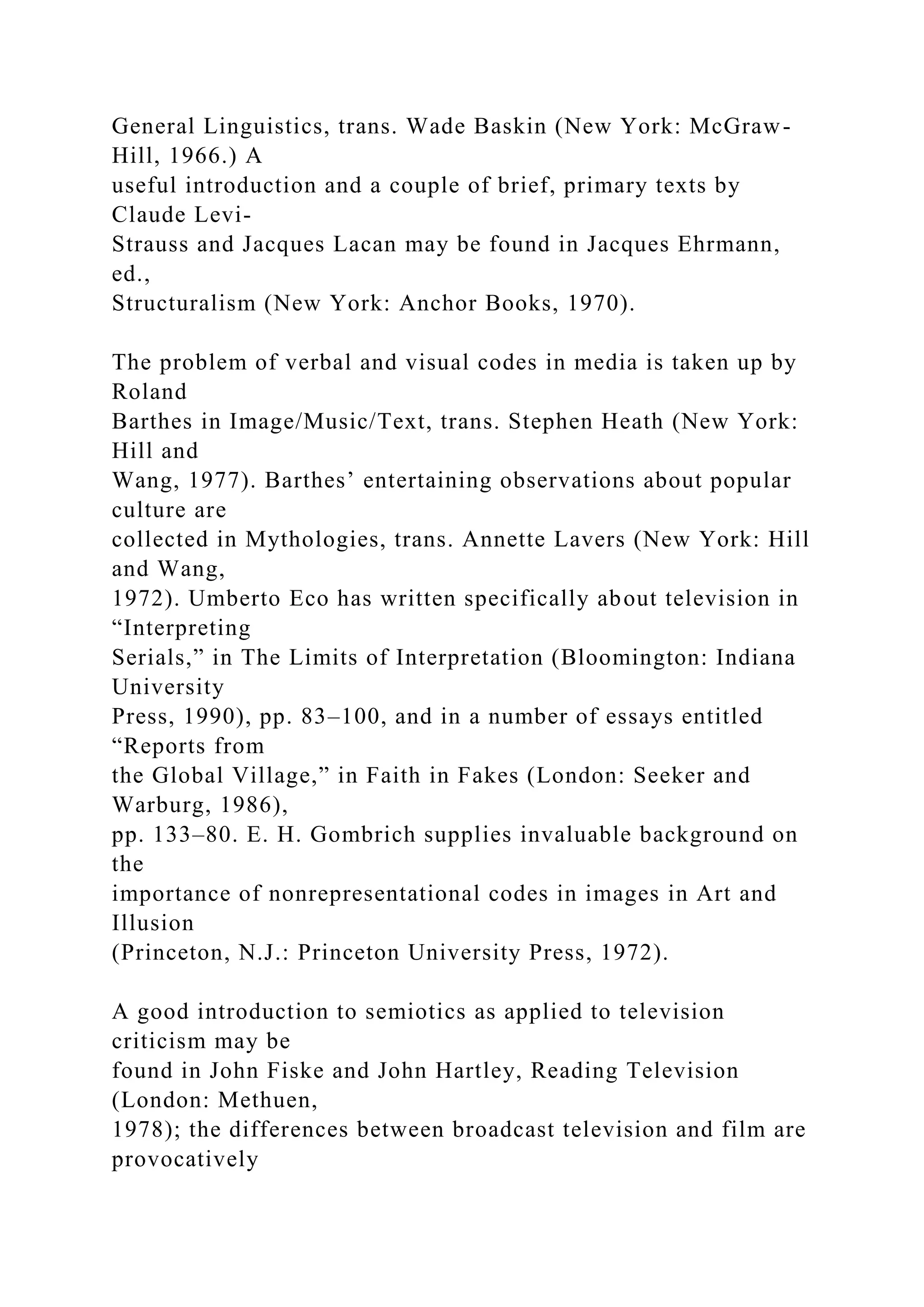
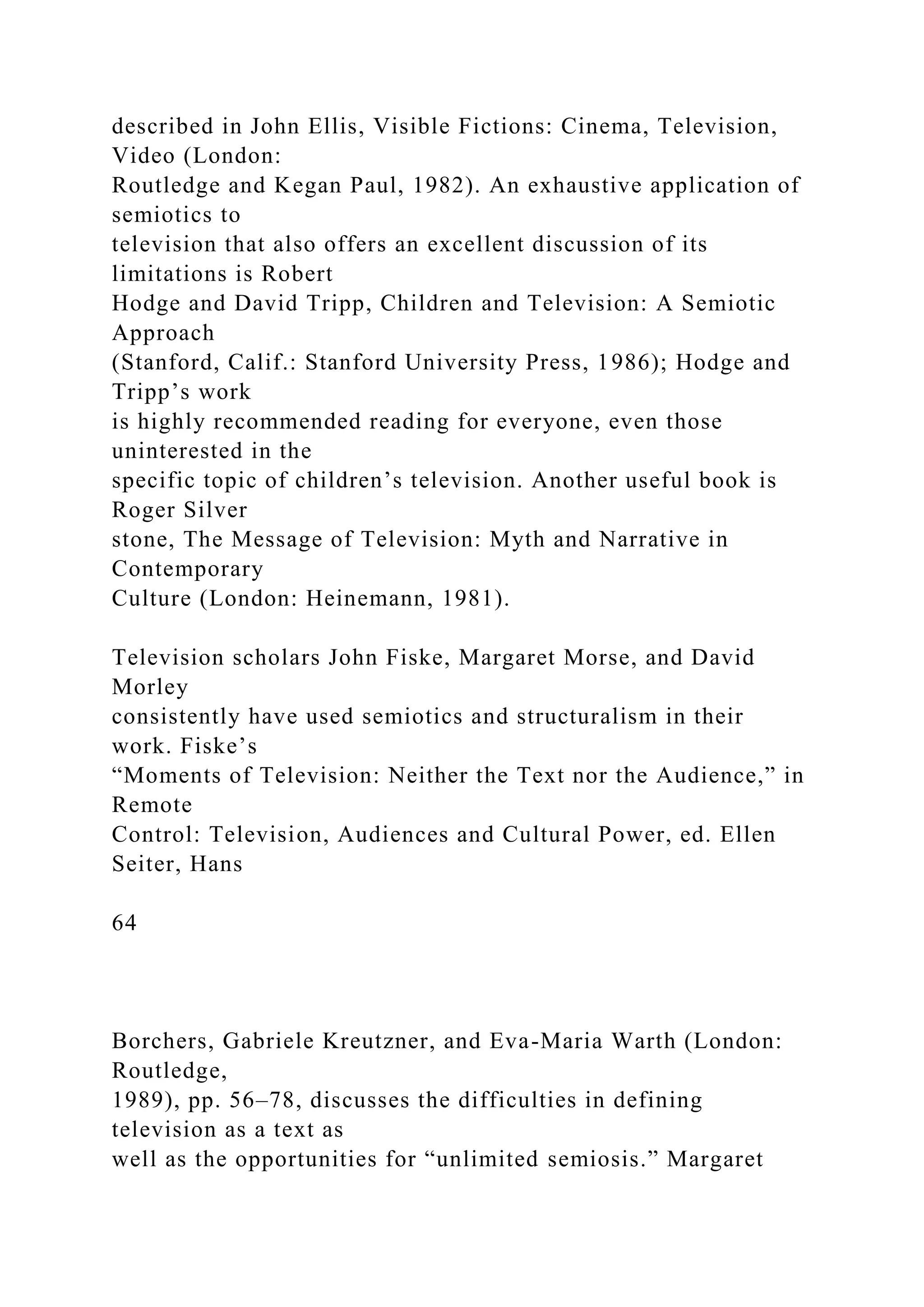
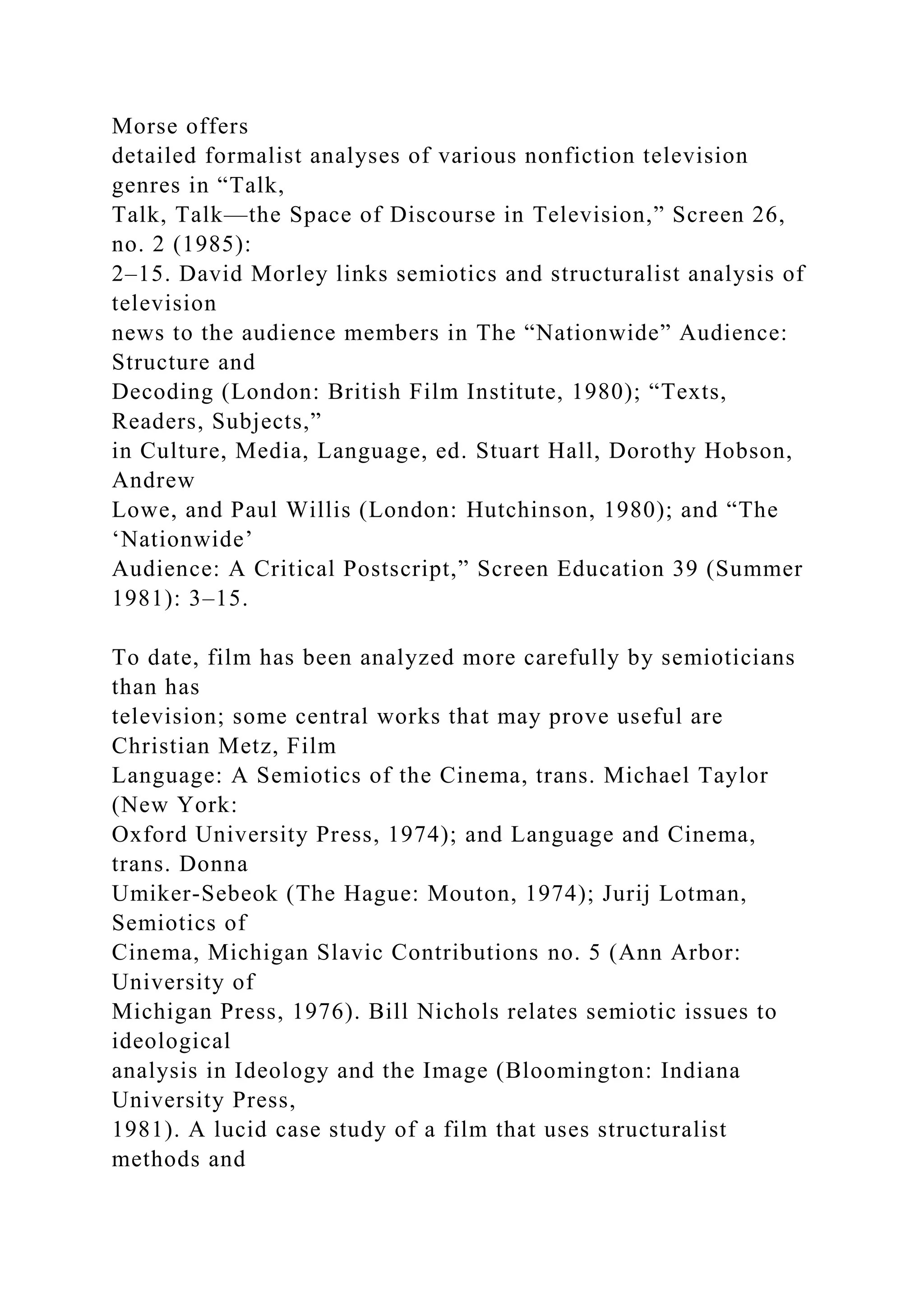
![attempts to combine these with a historical, Marxist, and
psychoanalytic
interpretation is Charles Eckert, “Anatomy of a Proletarian
Film: Warner’s
Marked Woman,” in Movies and Methods II, ed. Bill Nichols
(Berkeley:
University of California Press, 1987). Reading Eckert’s
response to the critics
of this article and his own second thoughts about the method
can give us a
sense of the reception of structuralism by U.S. film scholars in
the 1970s (see
“Shall We Deport Levi-Strauss?” Film Quarterly 17, no. 3
[Spring 1974]: 63–
65).
65
2 NARRATIVE THEORY AND TELEVISION
Sarah Kozloff
Whereas our ancestors used to listen to tall-tale spinners, read
penny
dreadfuls, tune in to radio dramas, or rush to the local bijou
each Saturday,
now we primarily satisfy our ever-constant yearning for stories
by gathering
around the flickering box in the living room. Television is the
principal
storyteller in contemporary American society.
But what kind of storyteller is it? In what ways are stories
presented on](https://image.slidesharecdn.com/channelsofdiscoursereassembled2channelsof-221018173716-6fc0655a/75/Channels-of-Discourse-Reassembled2Channels-of-docx-136-2048.jpg)

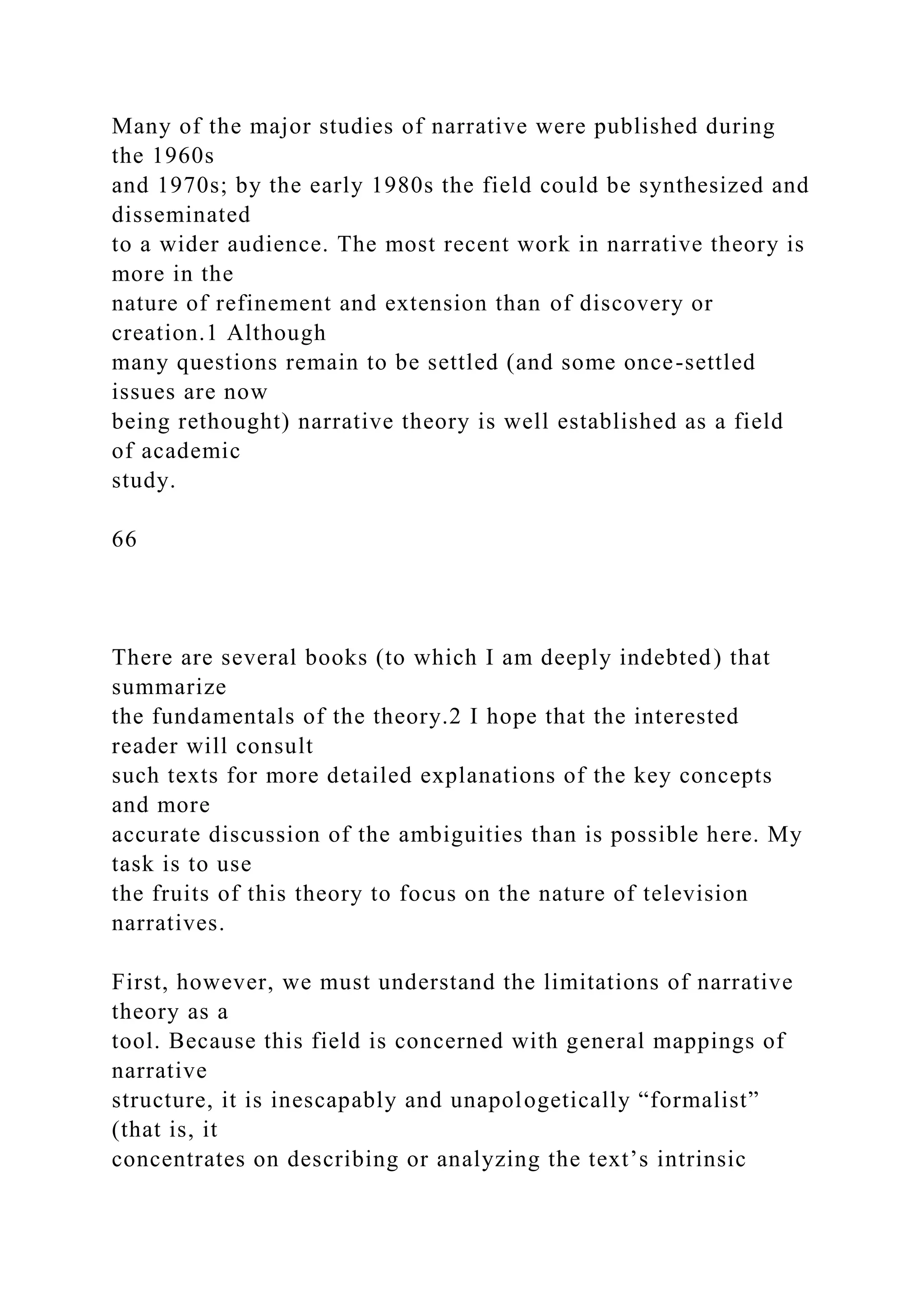

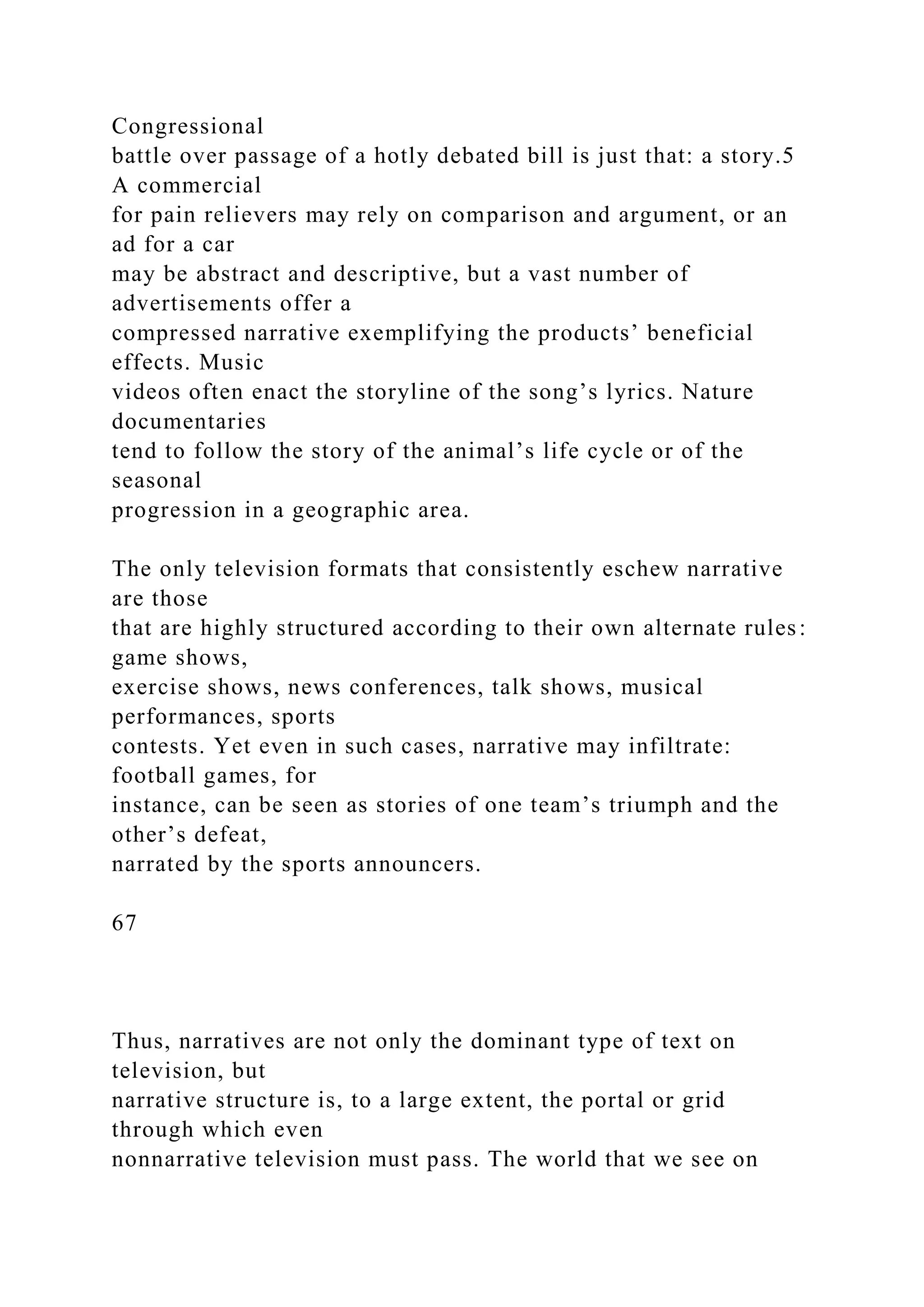
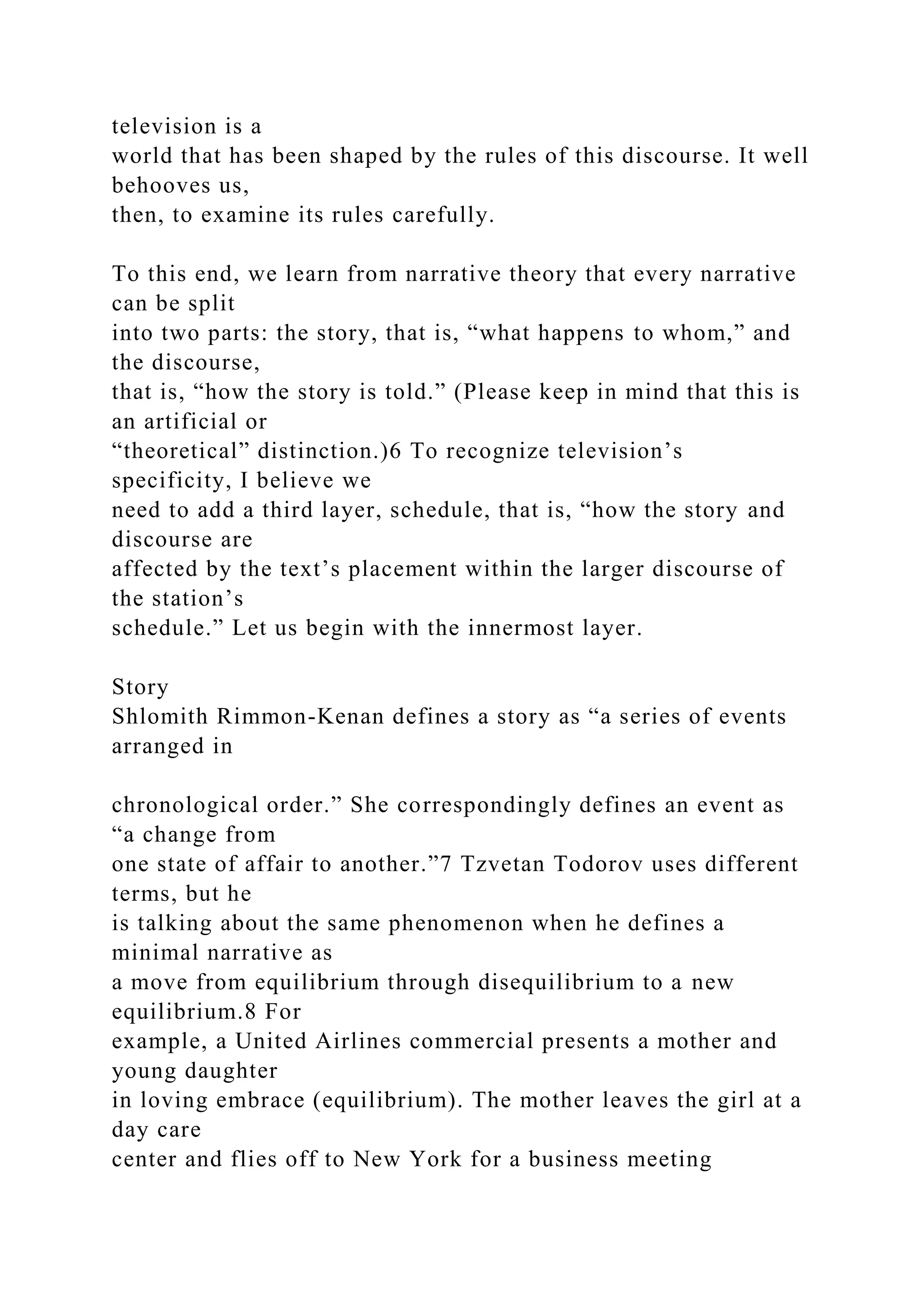
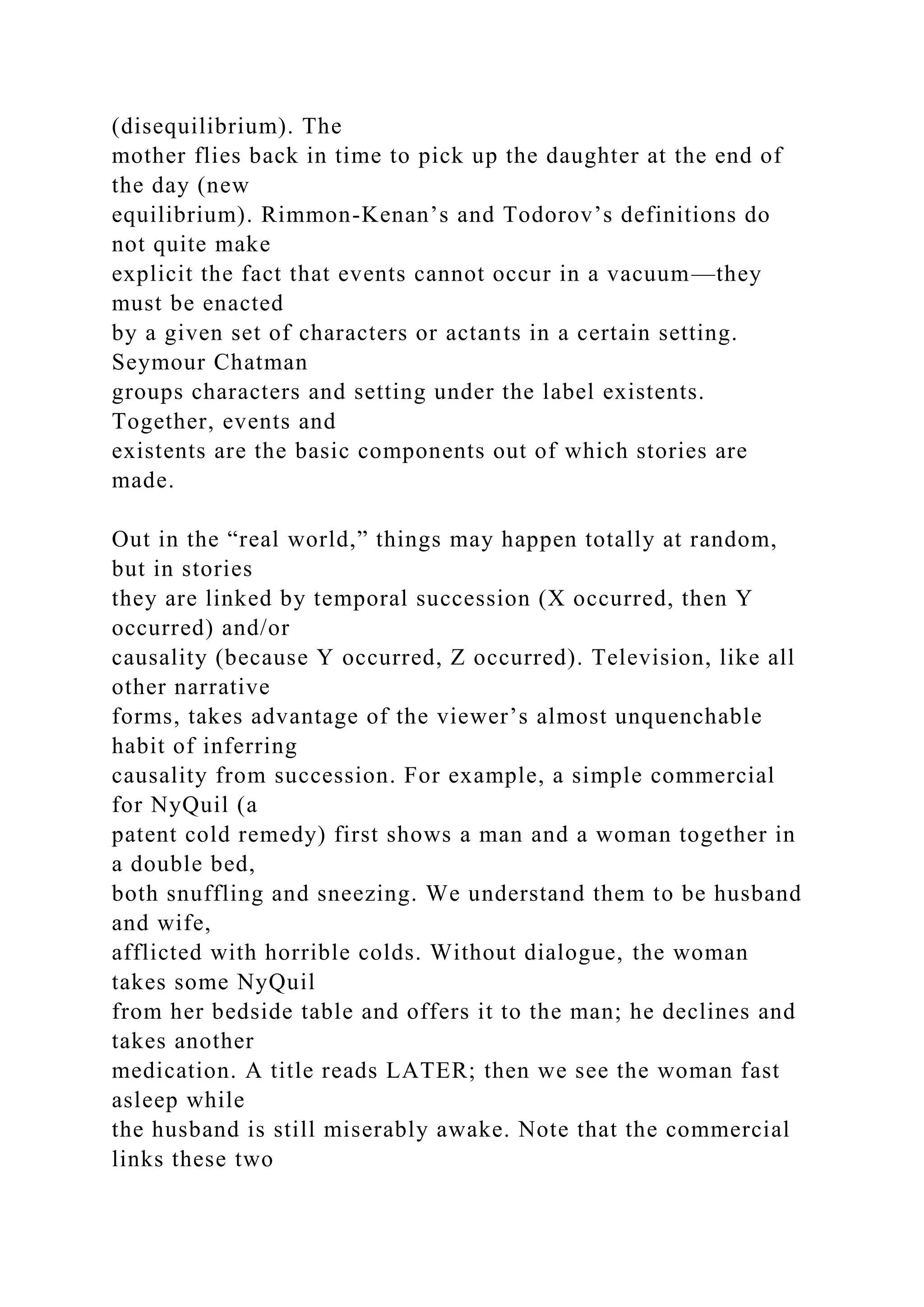

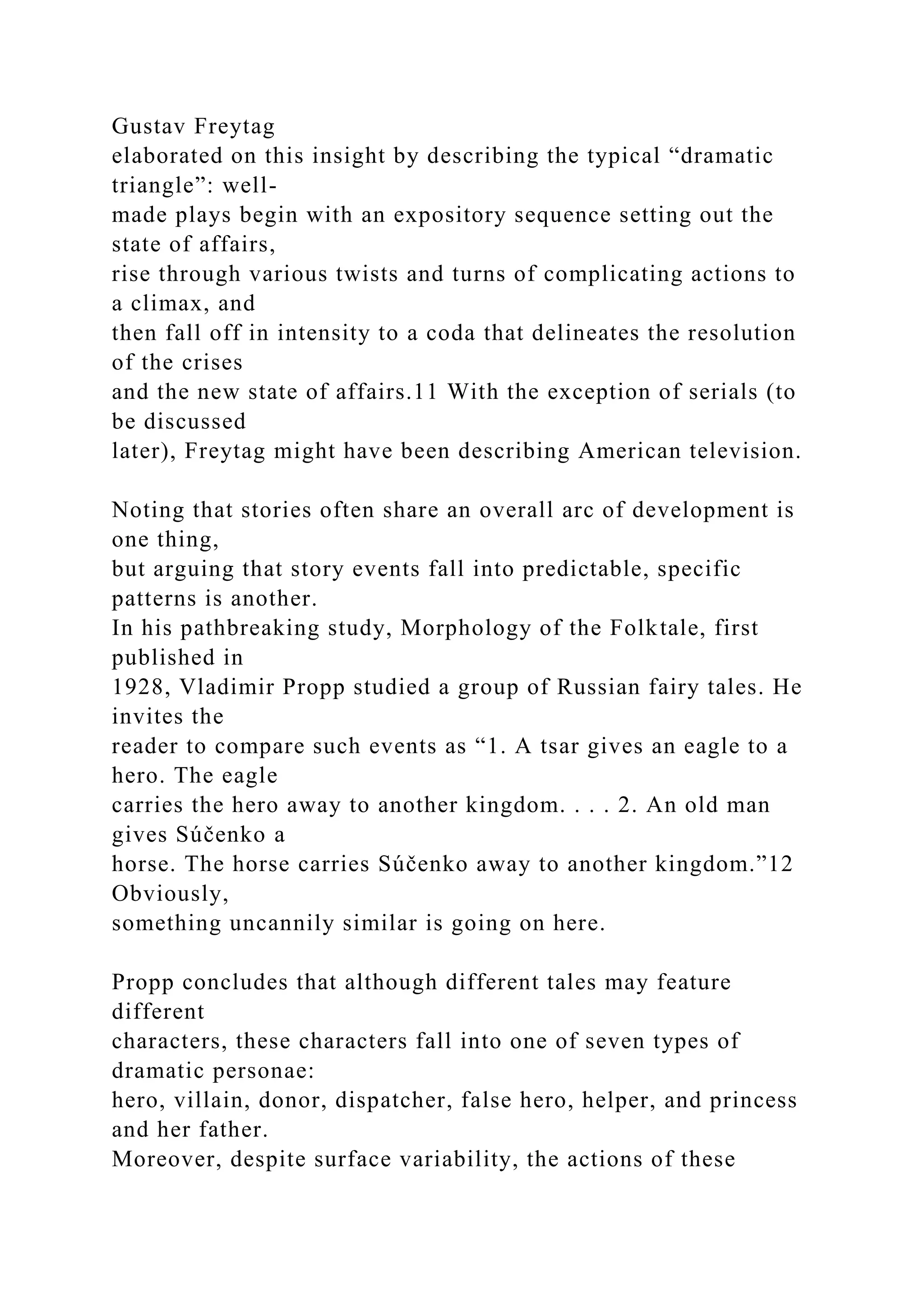


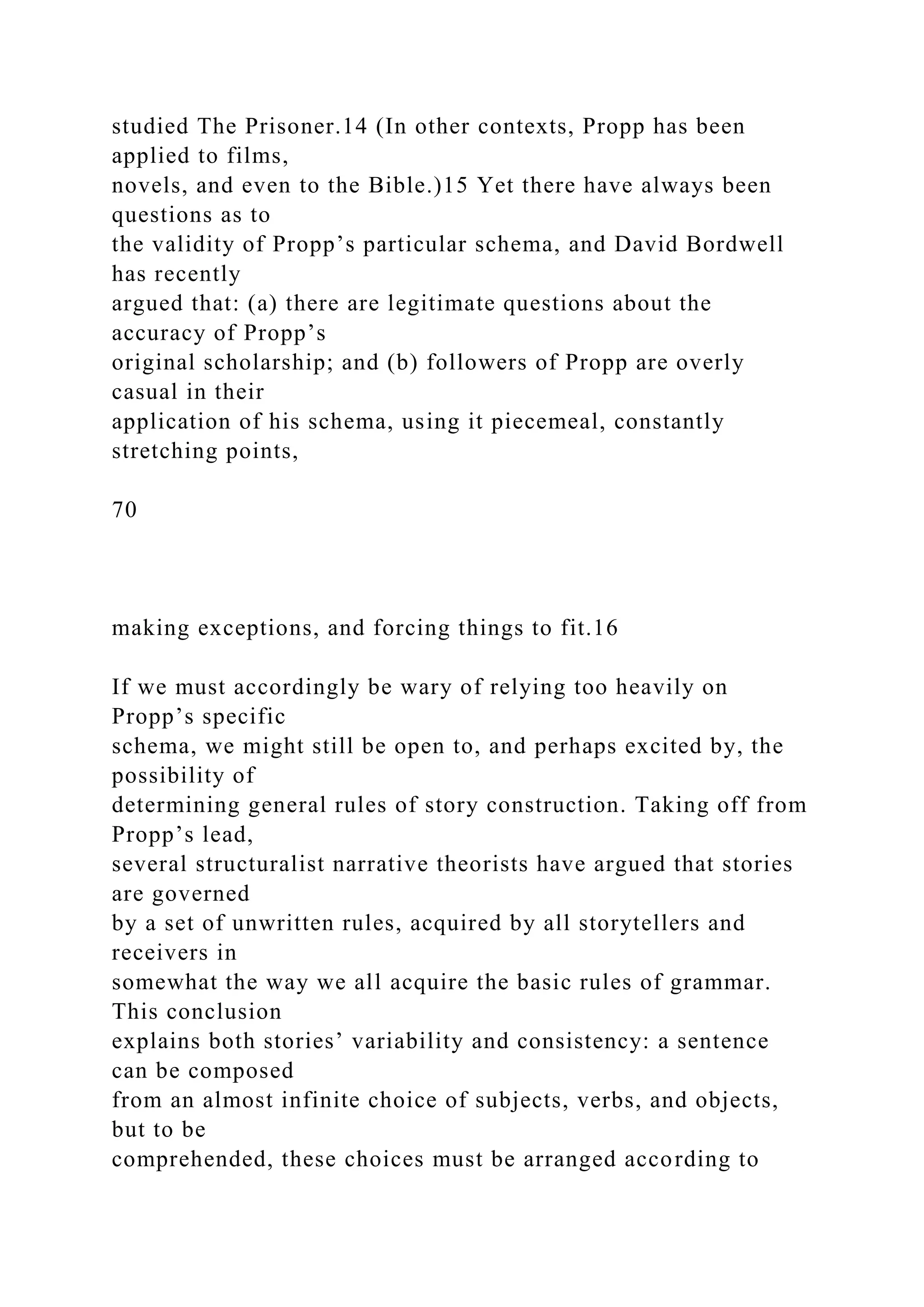
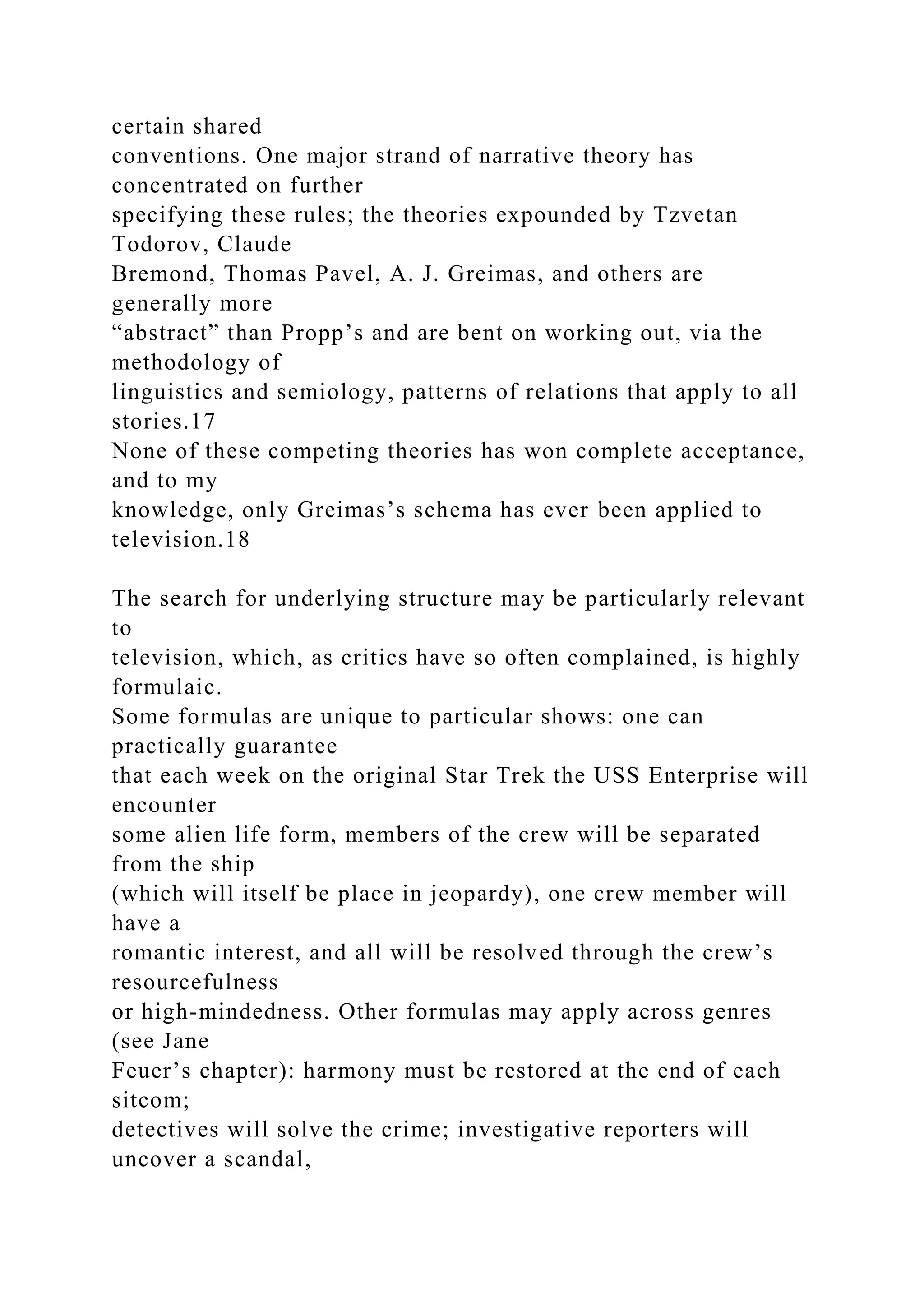
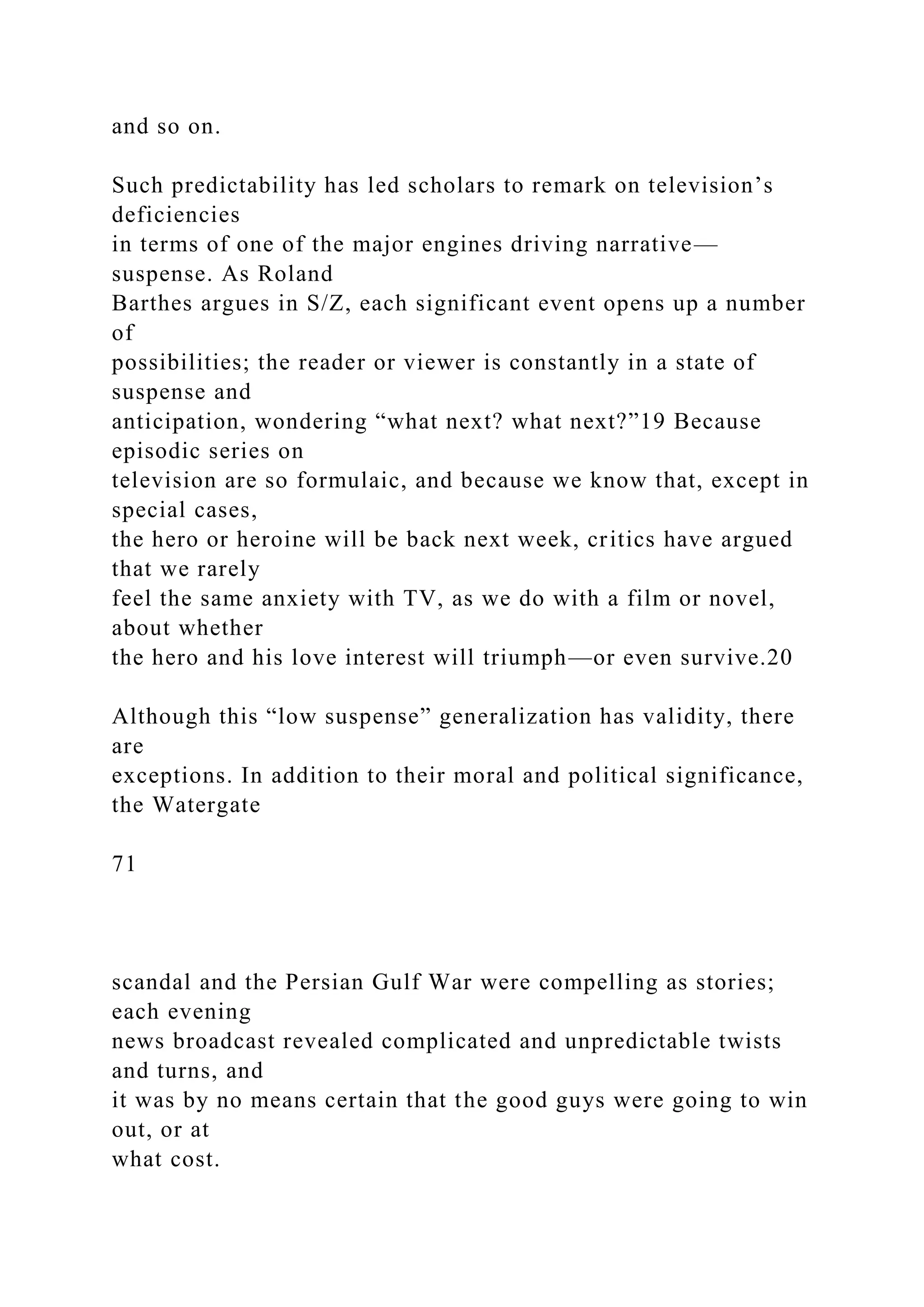
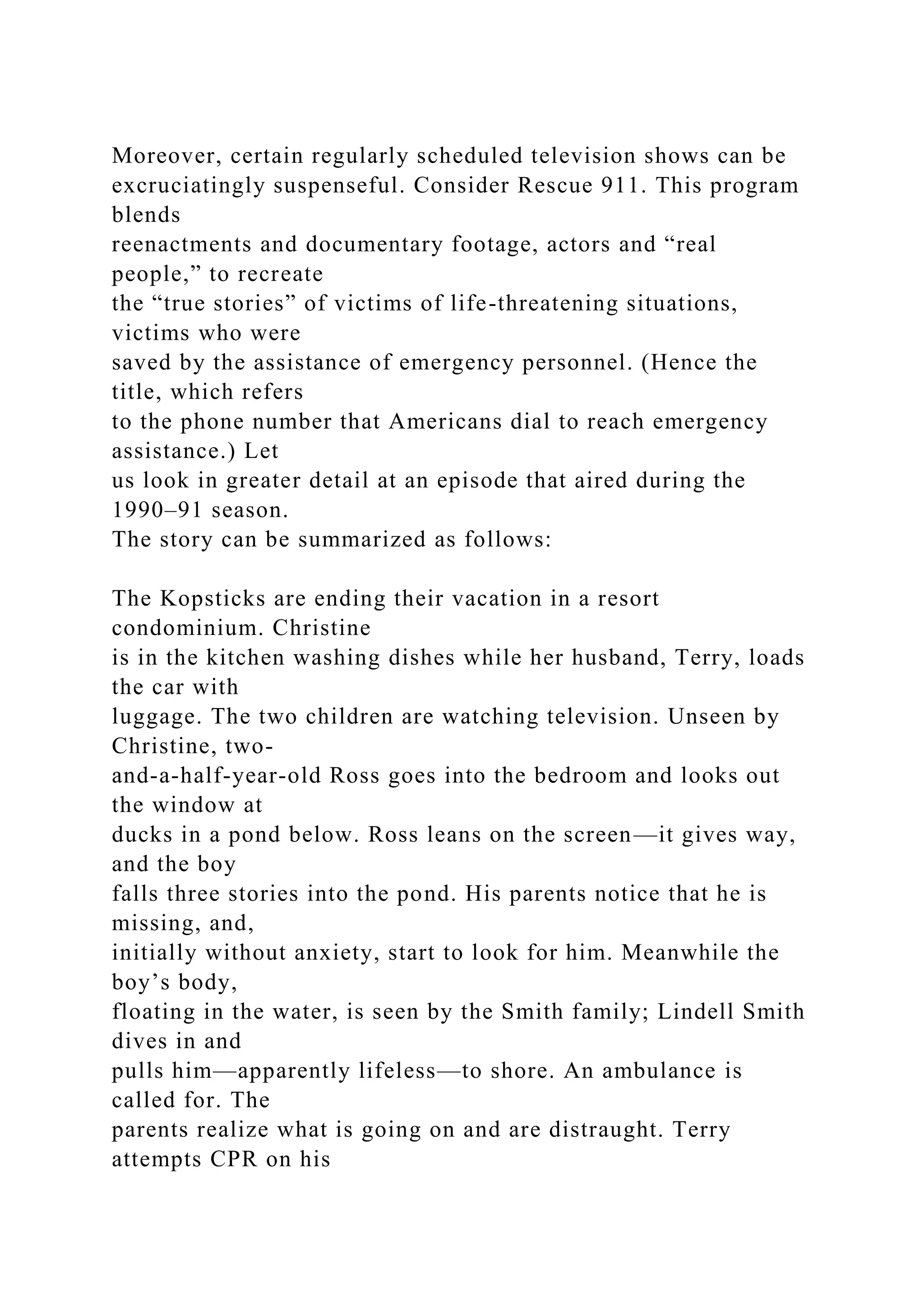

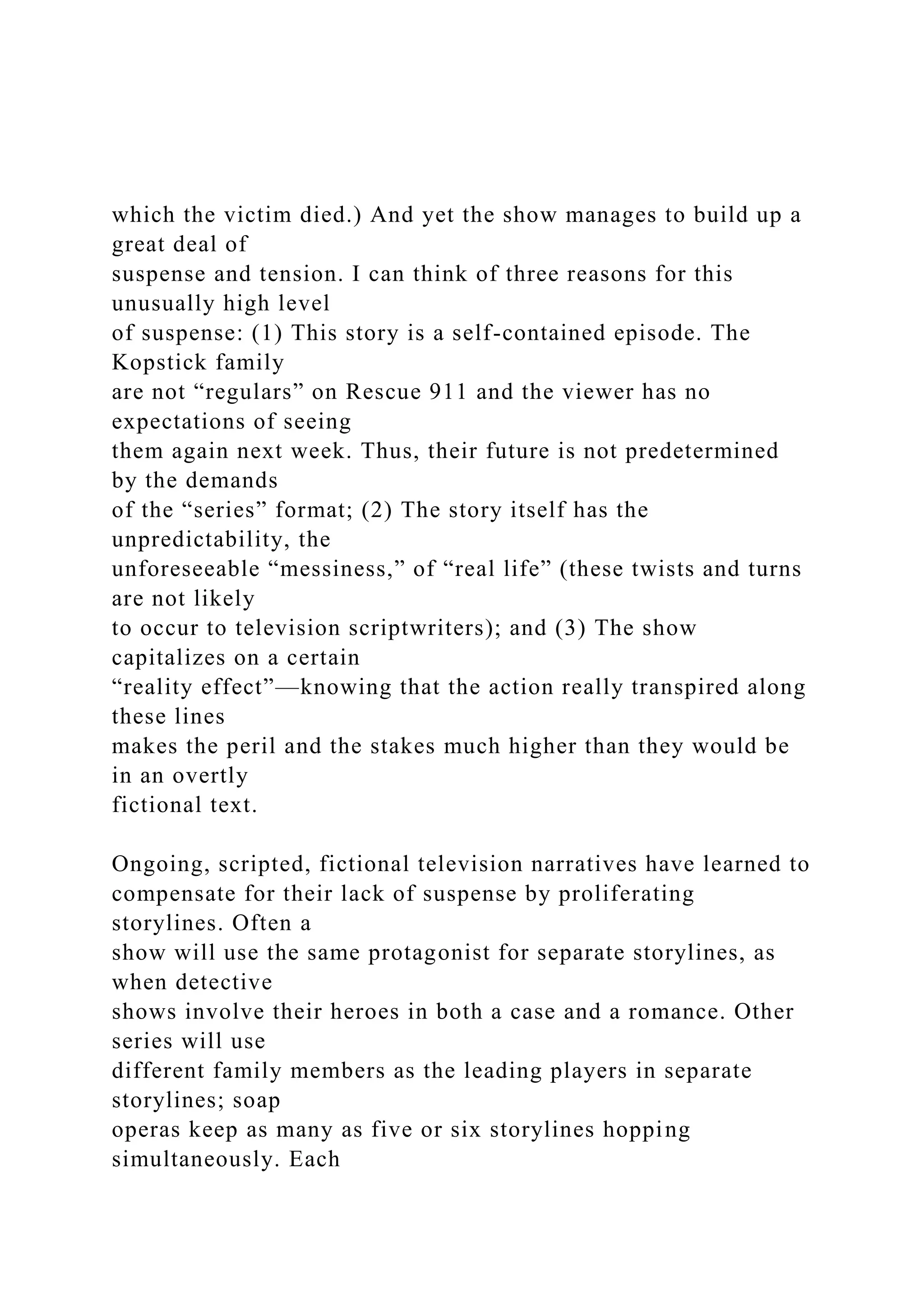
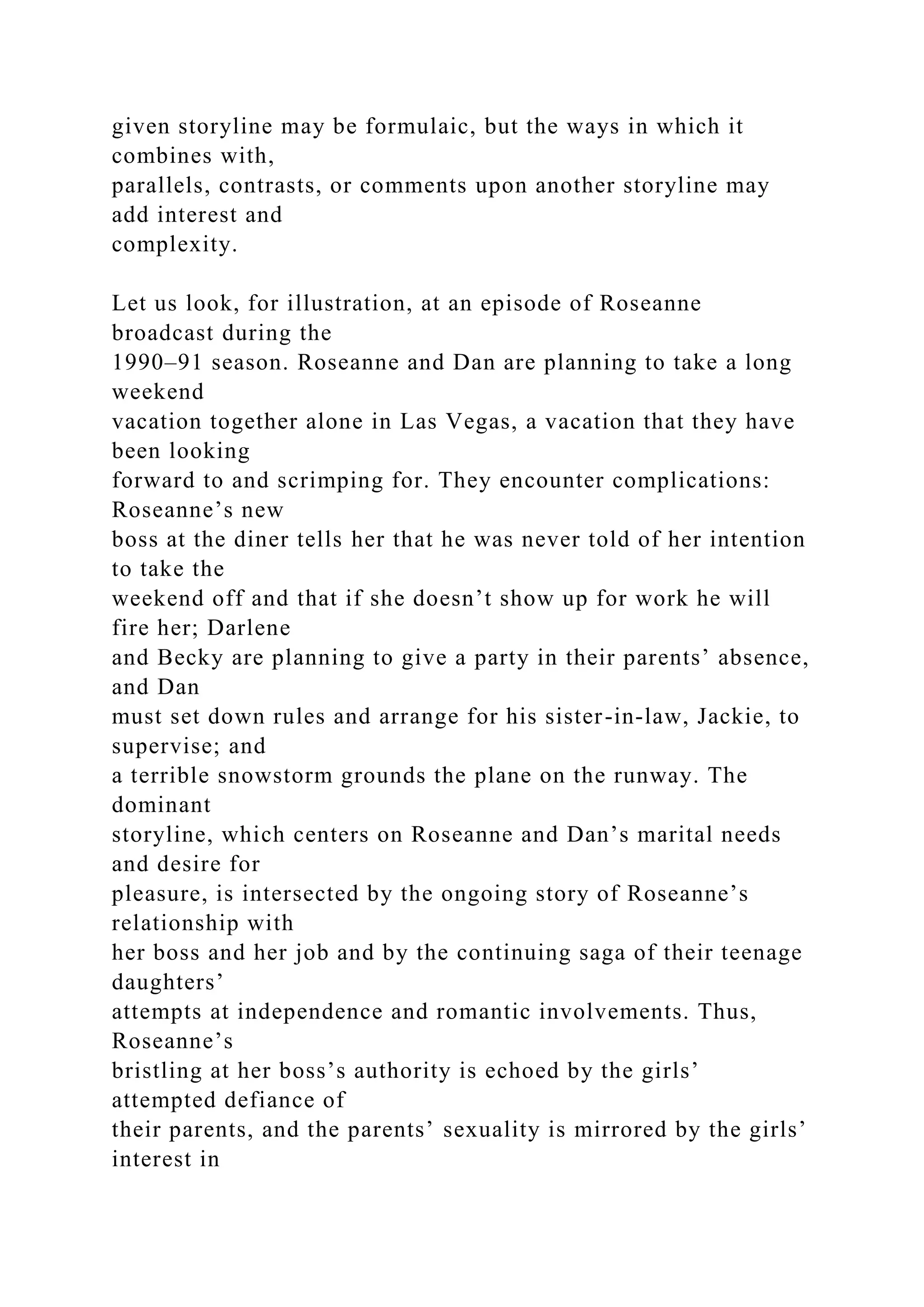
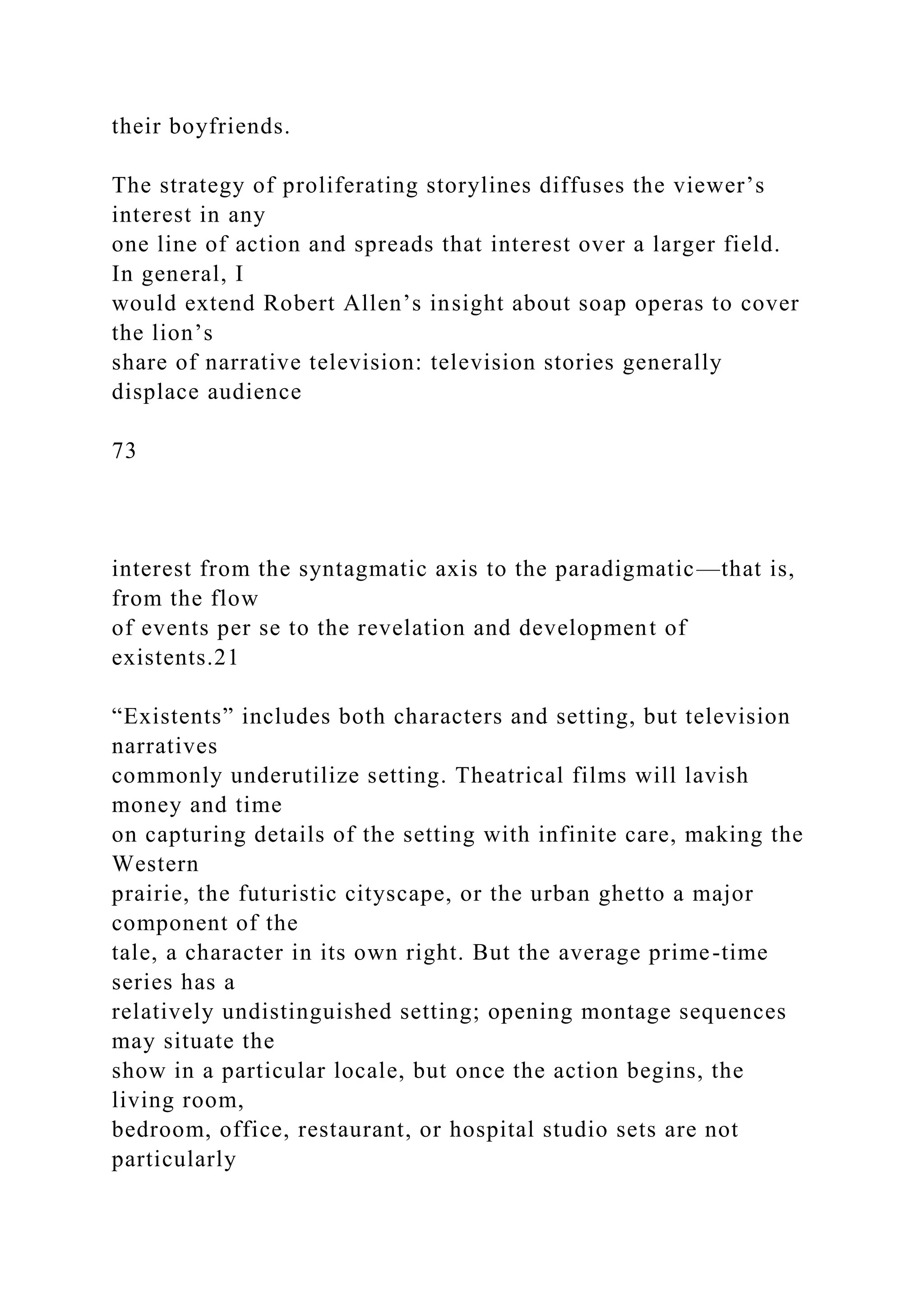
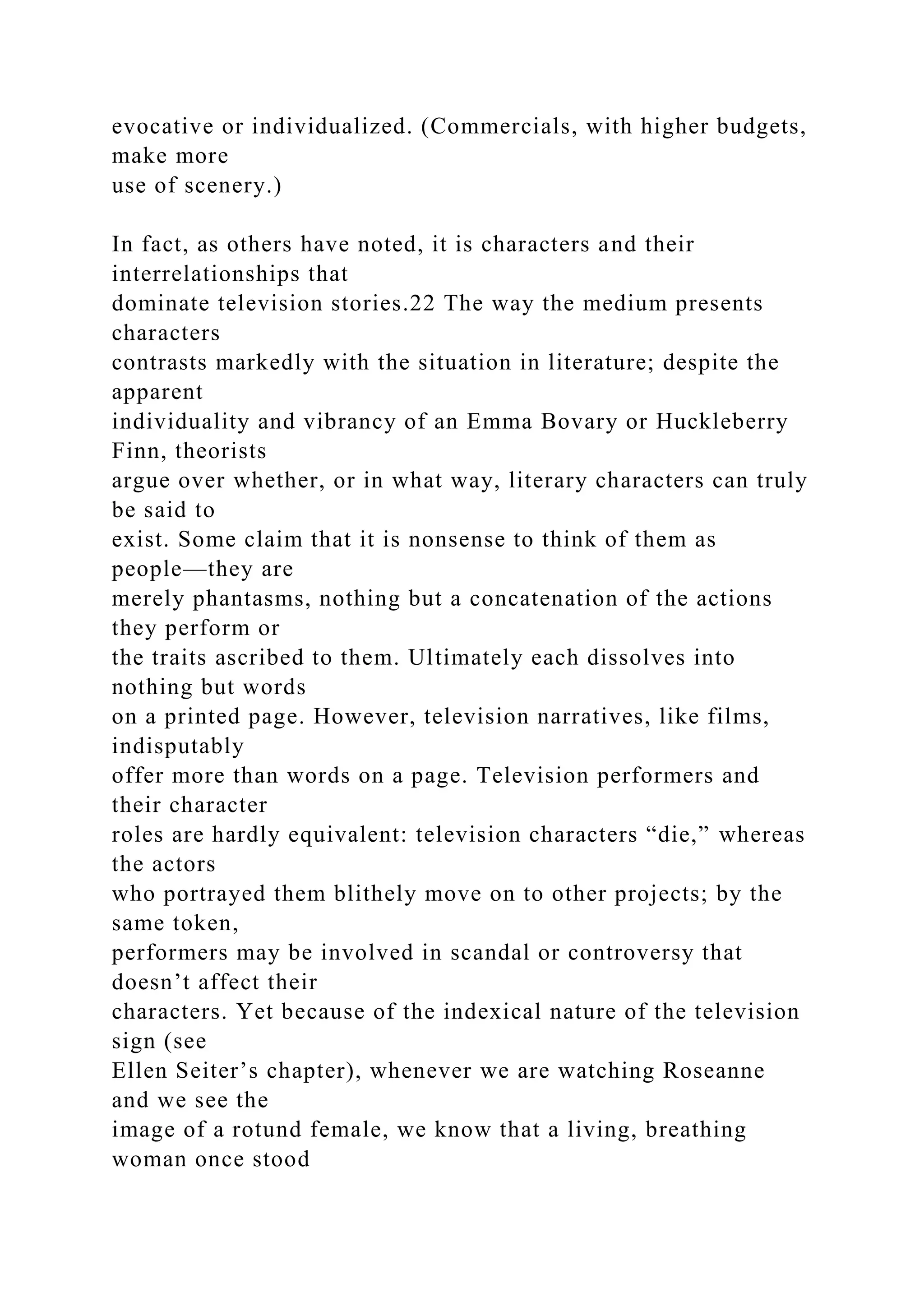
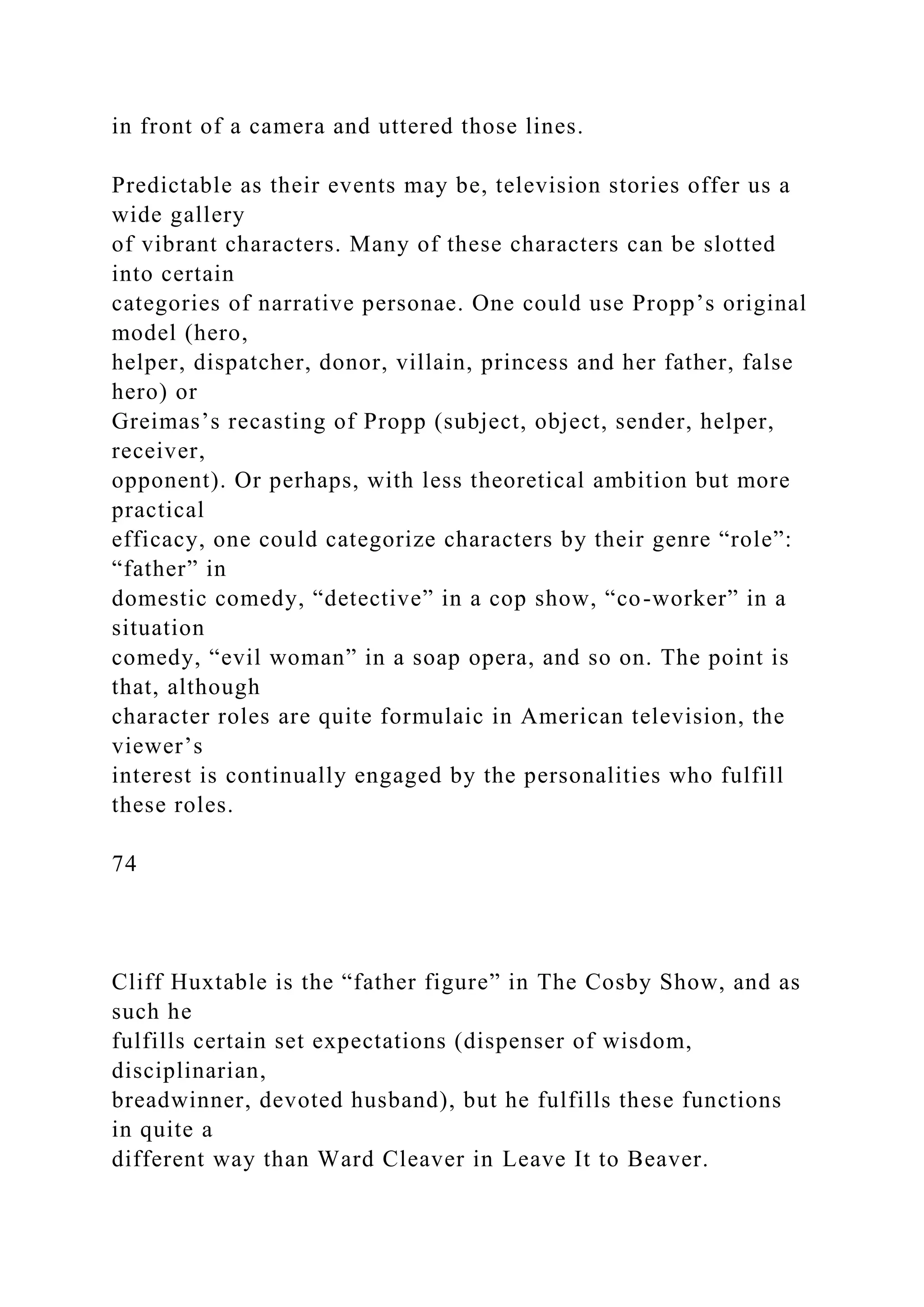
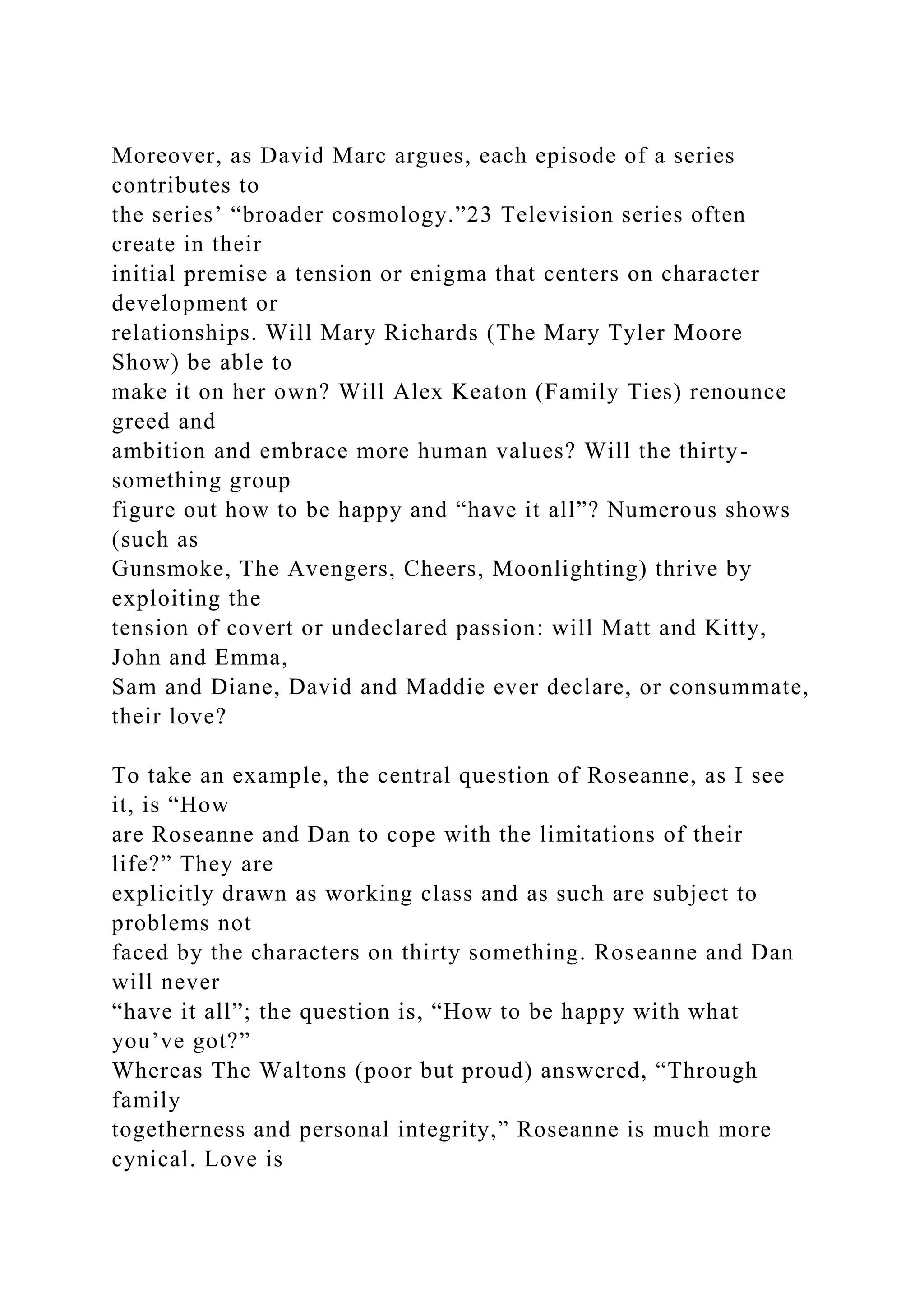

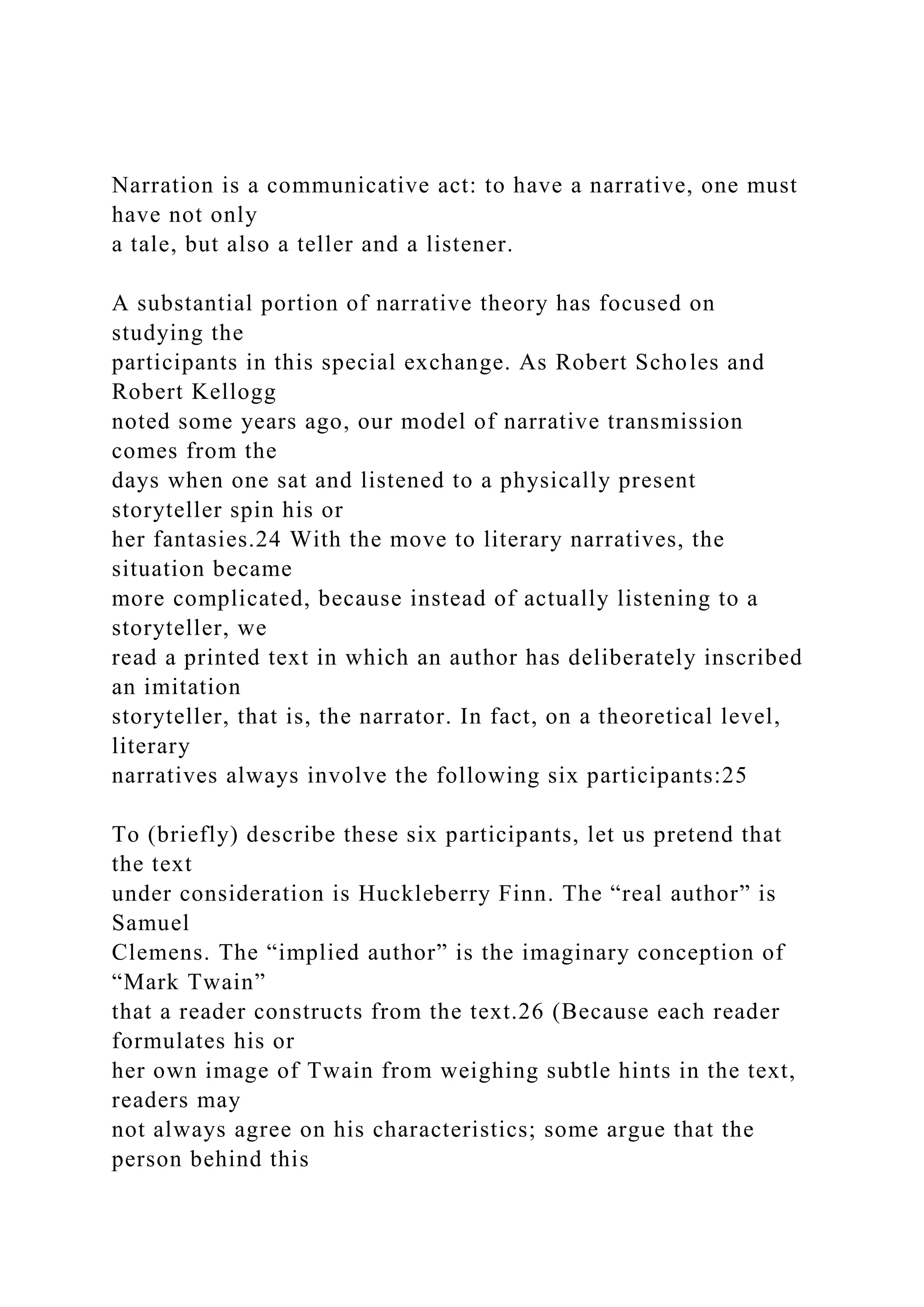
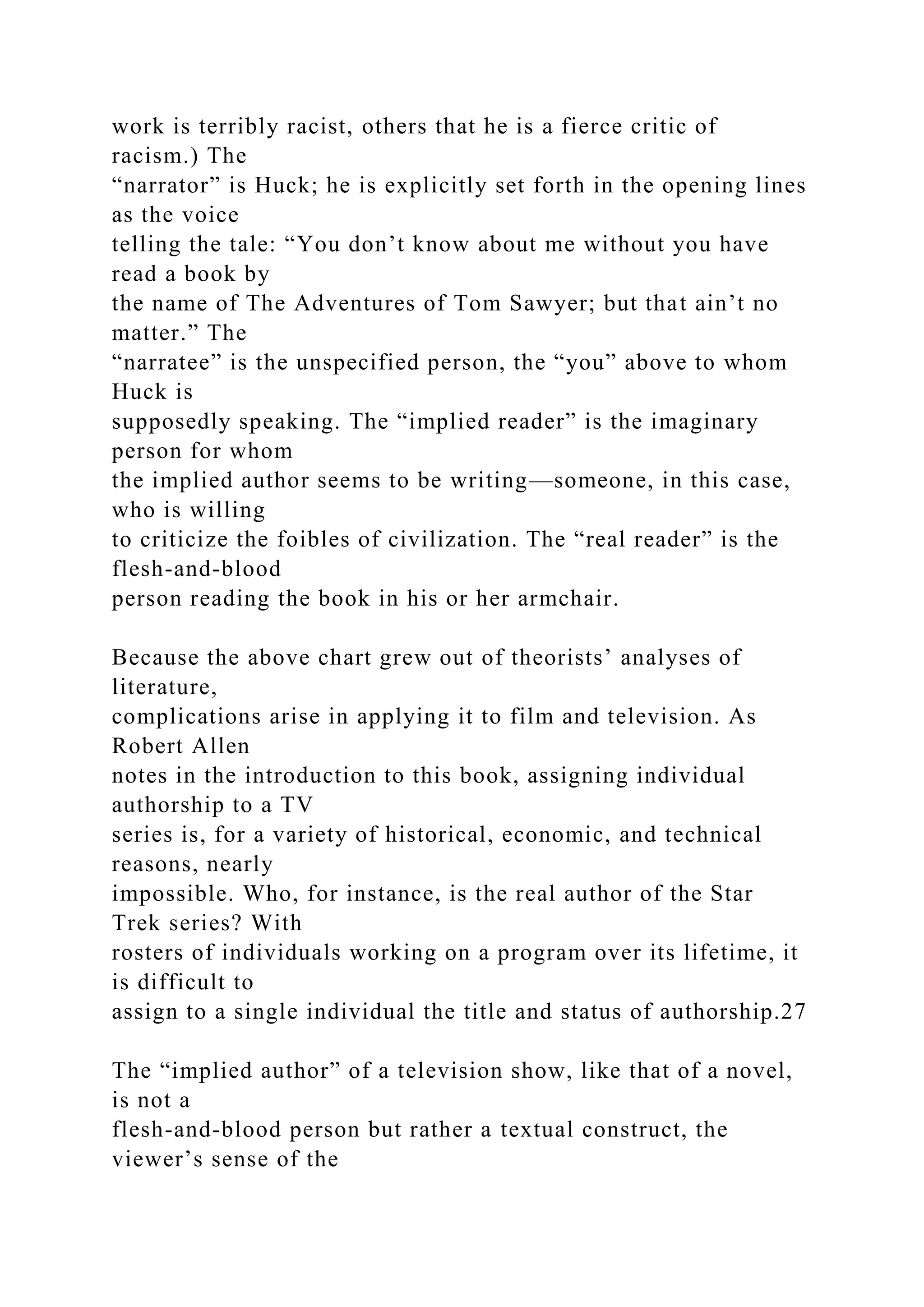
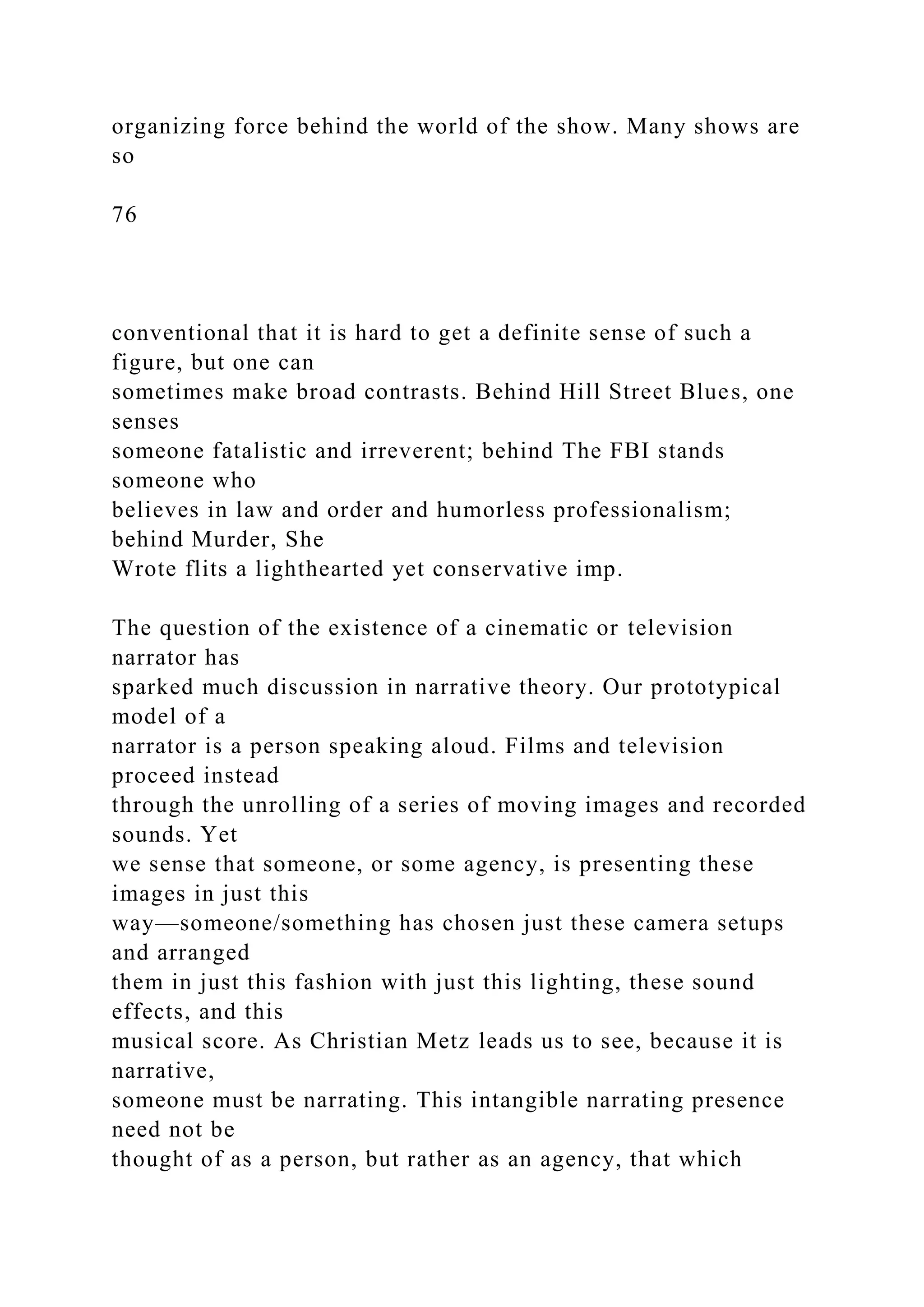

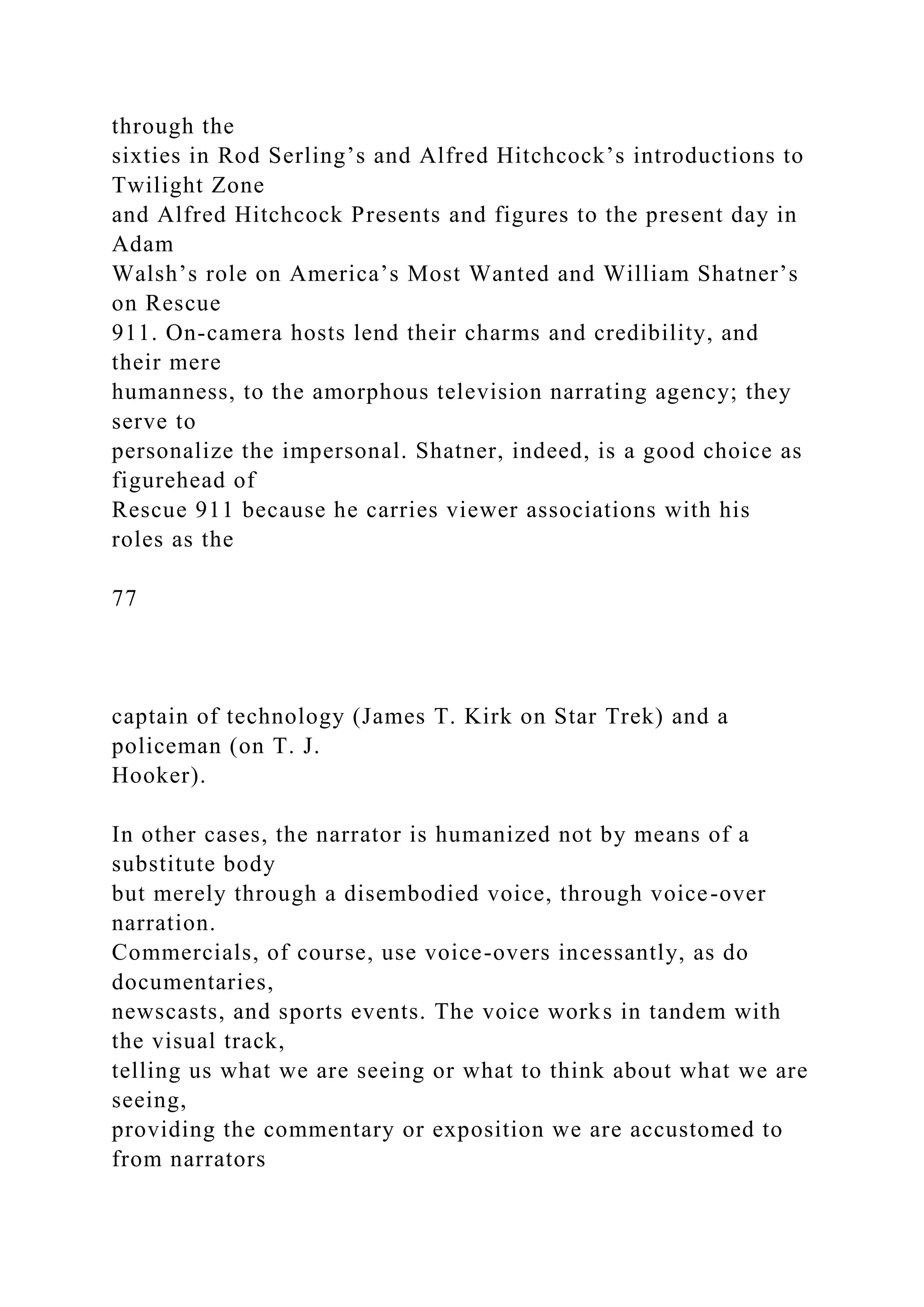
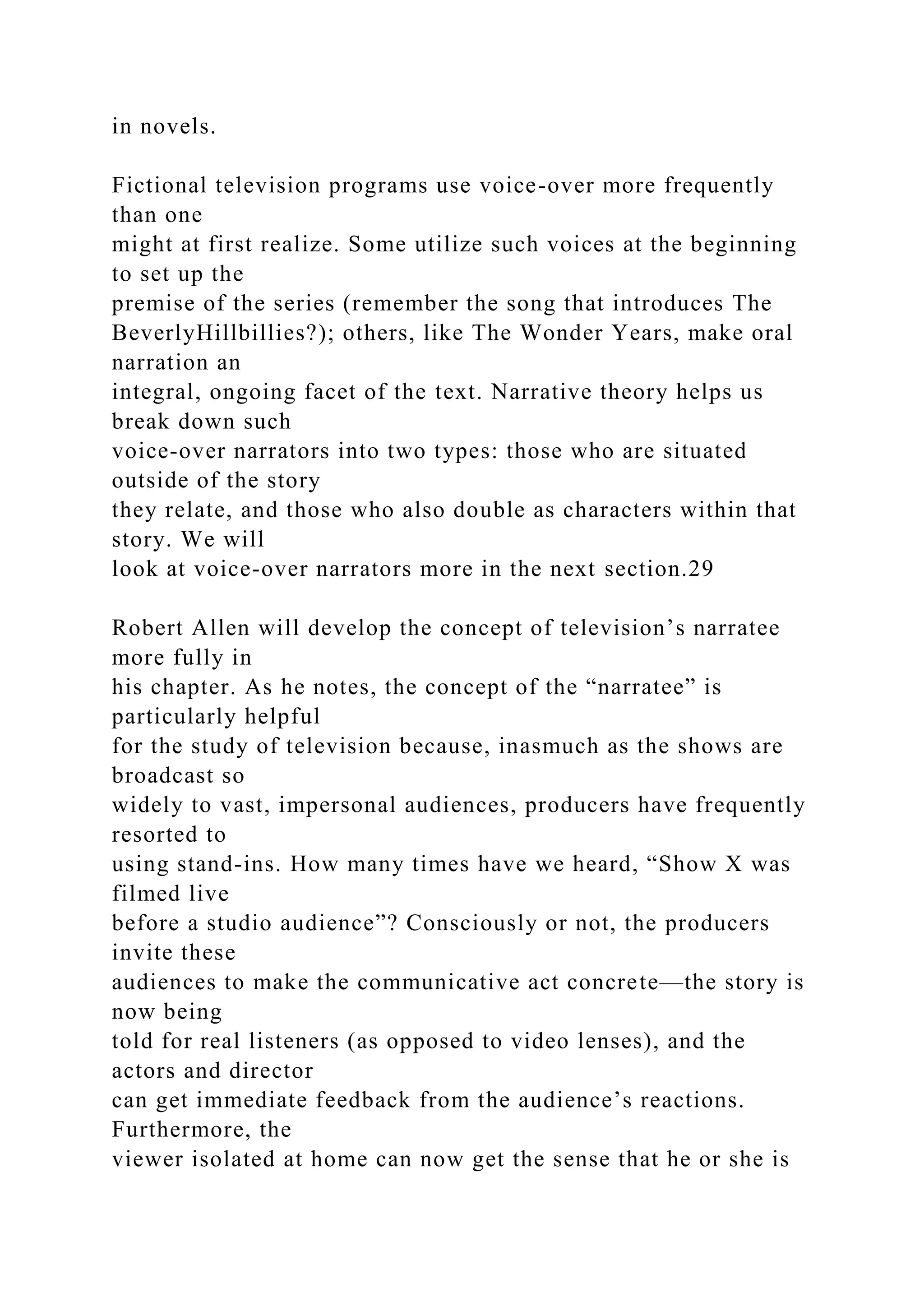
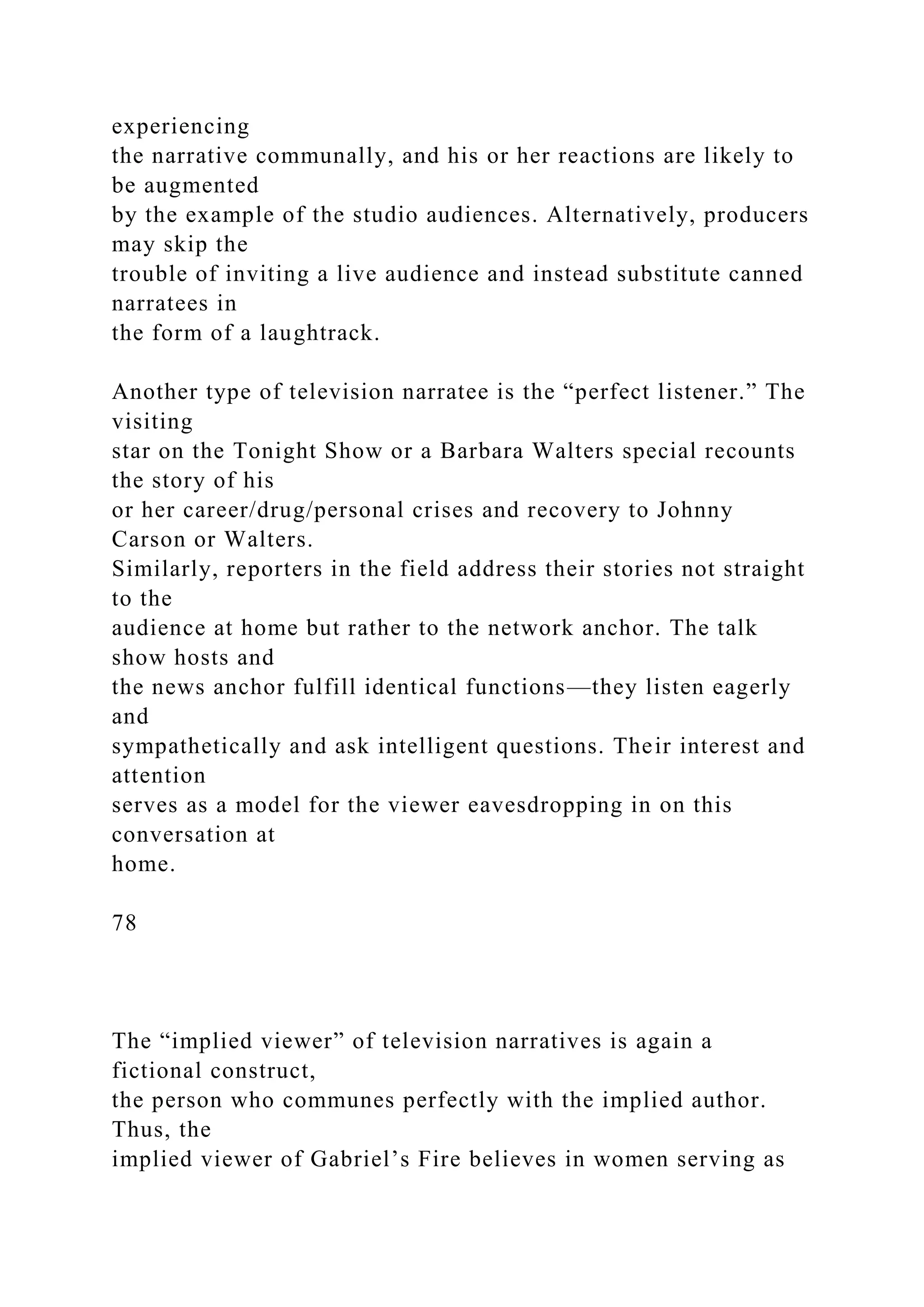
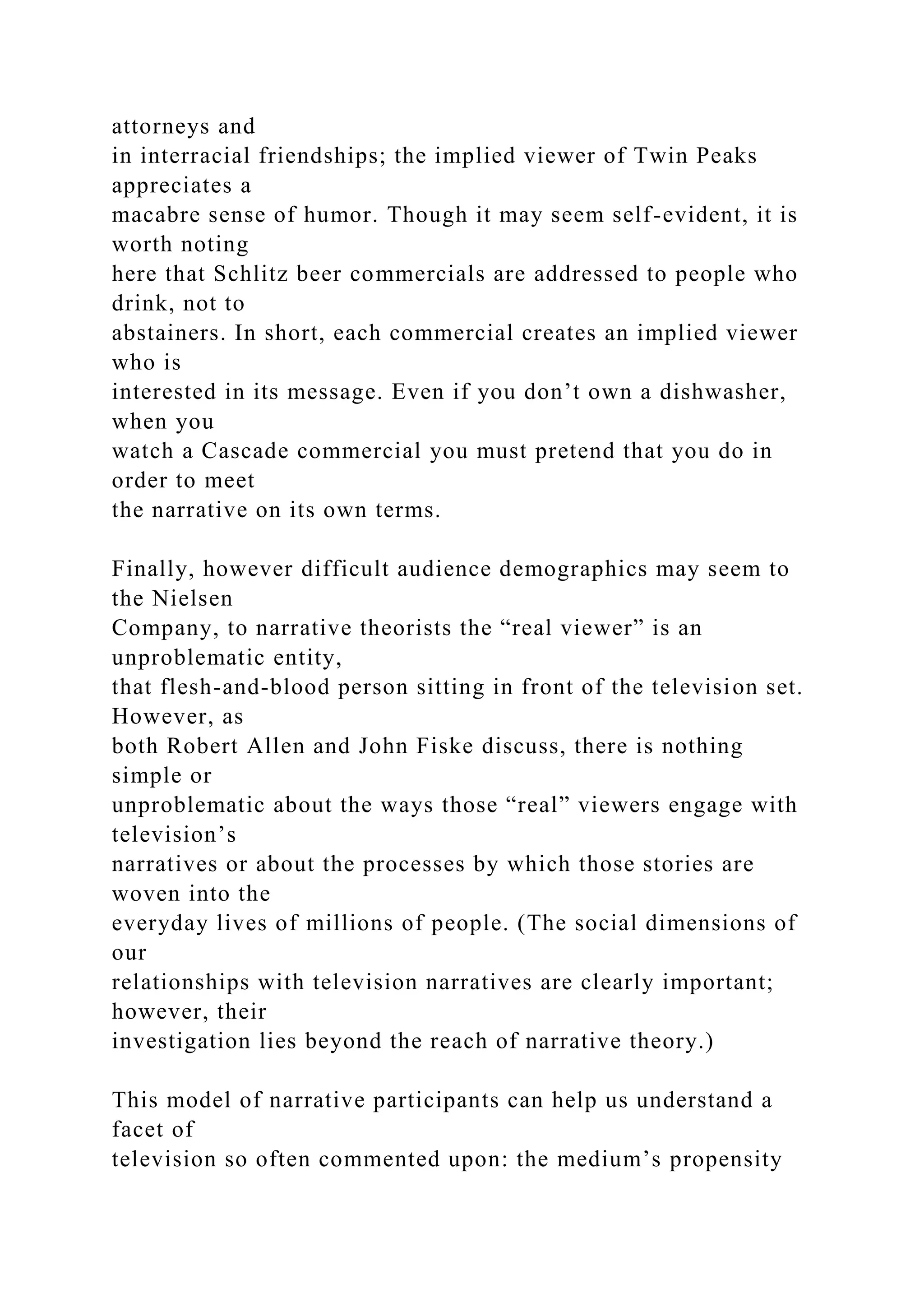
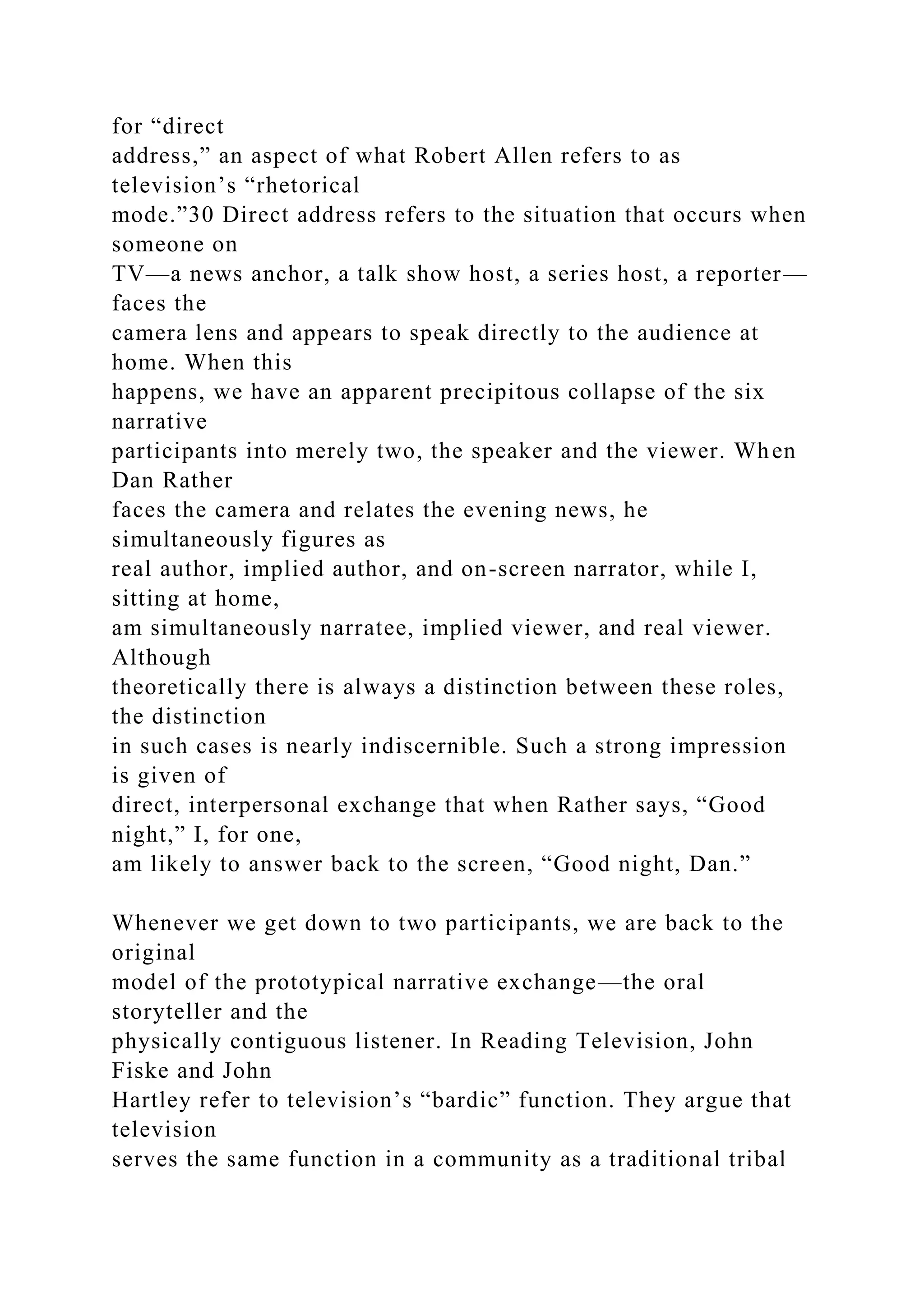

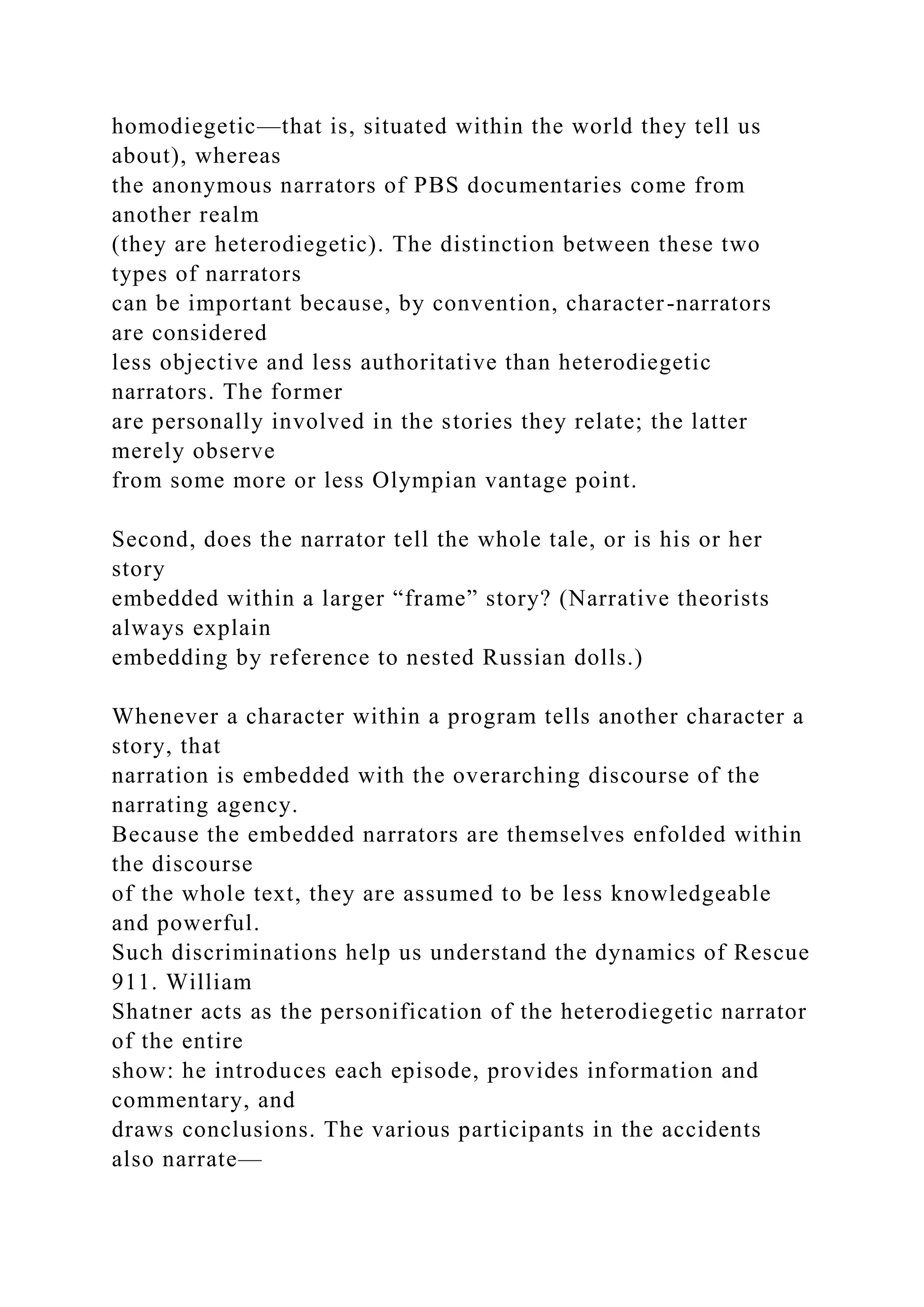
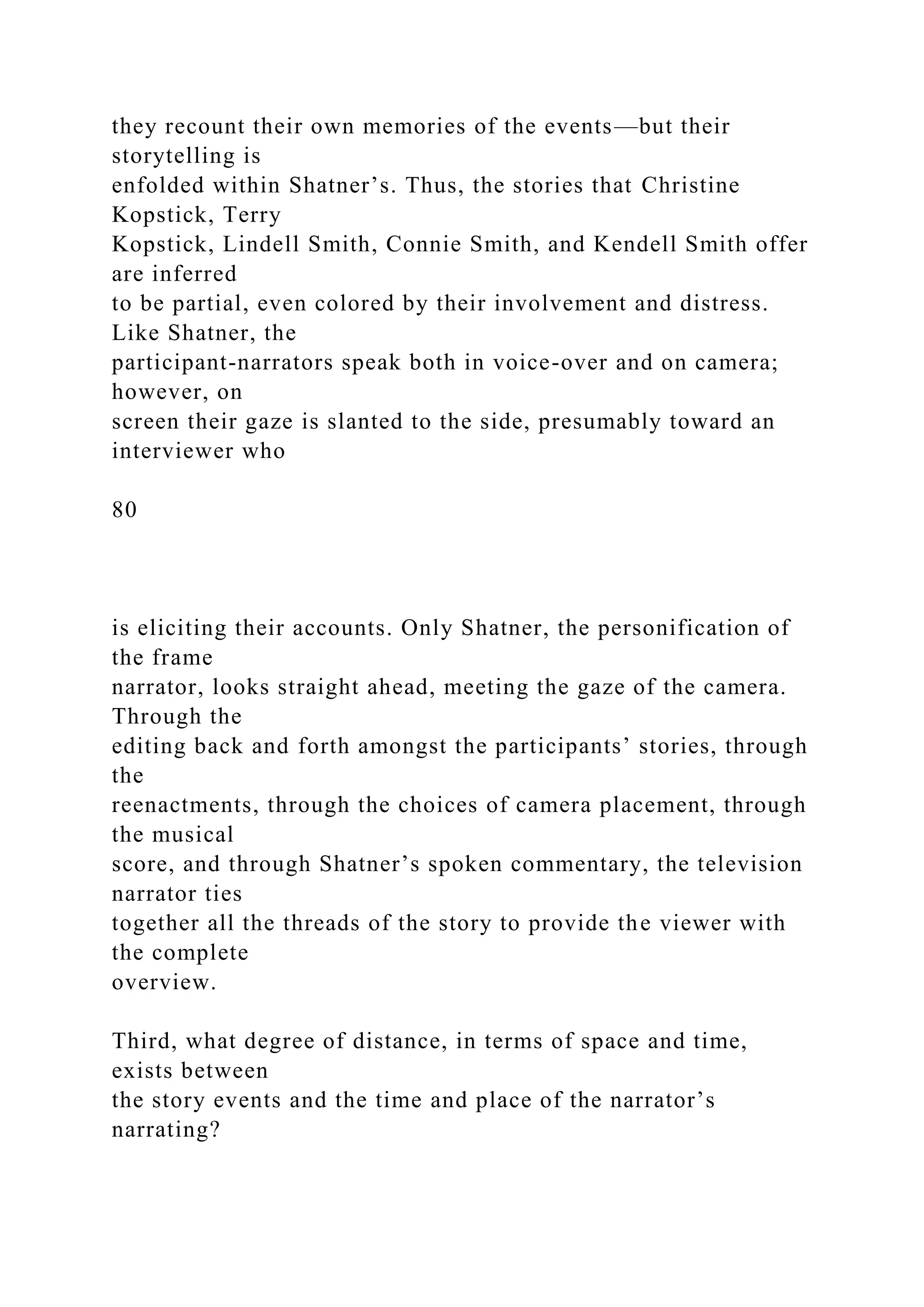
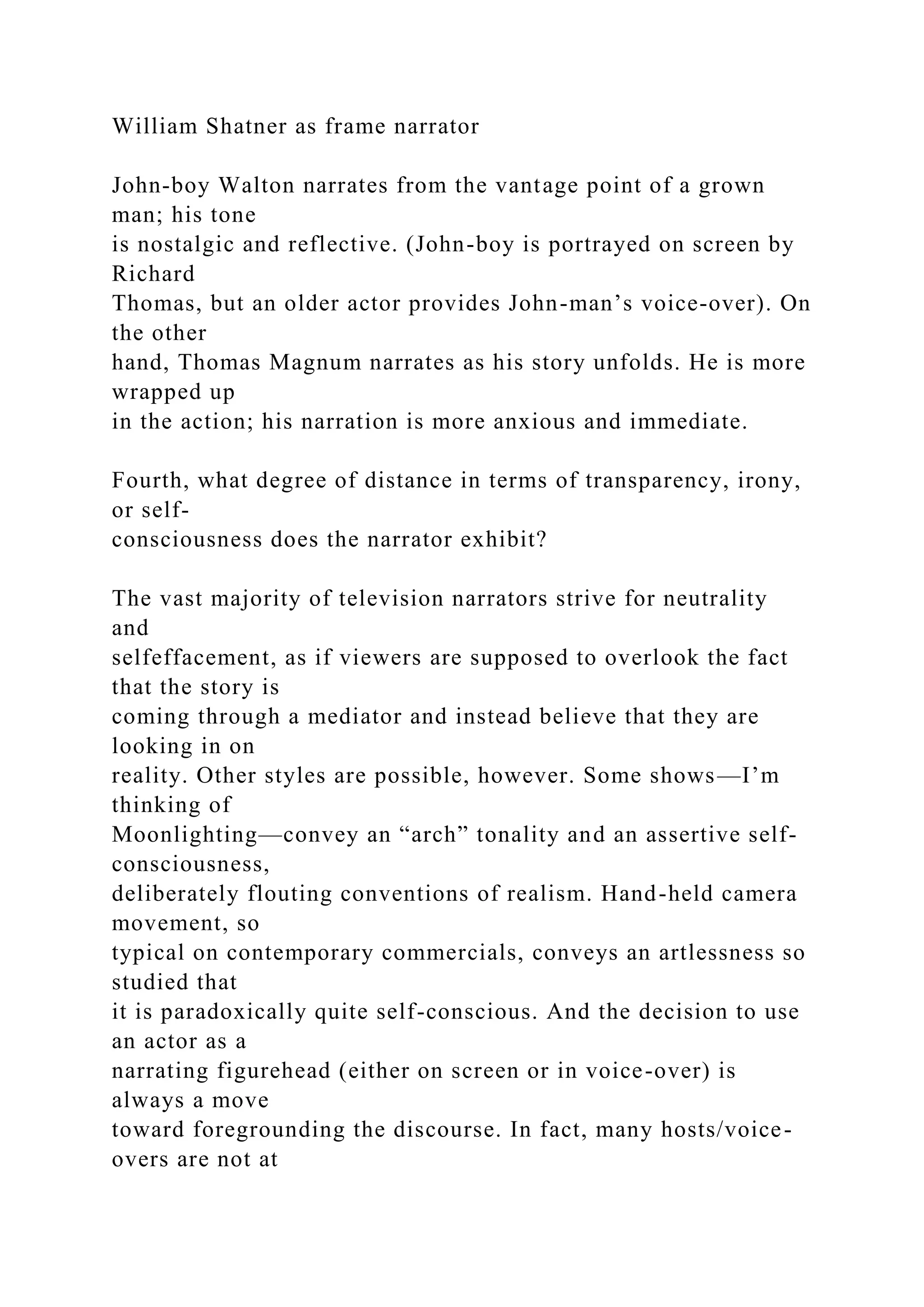
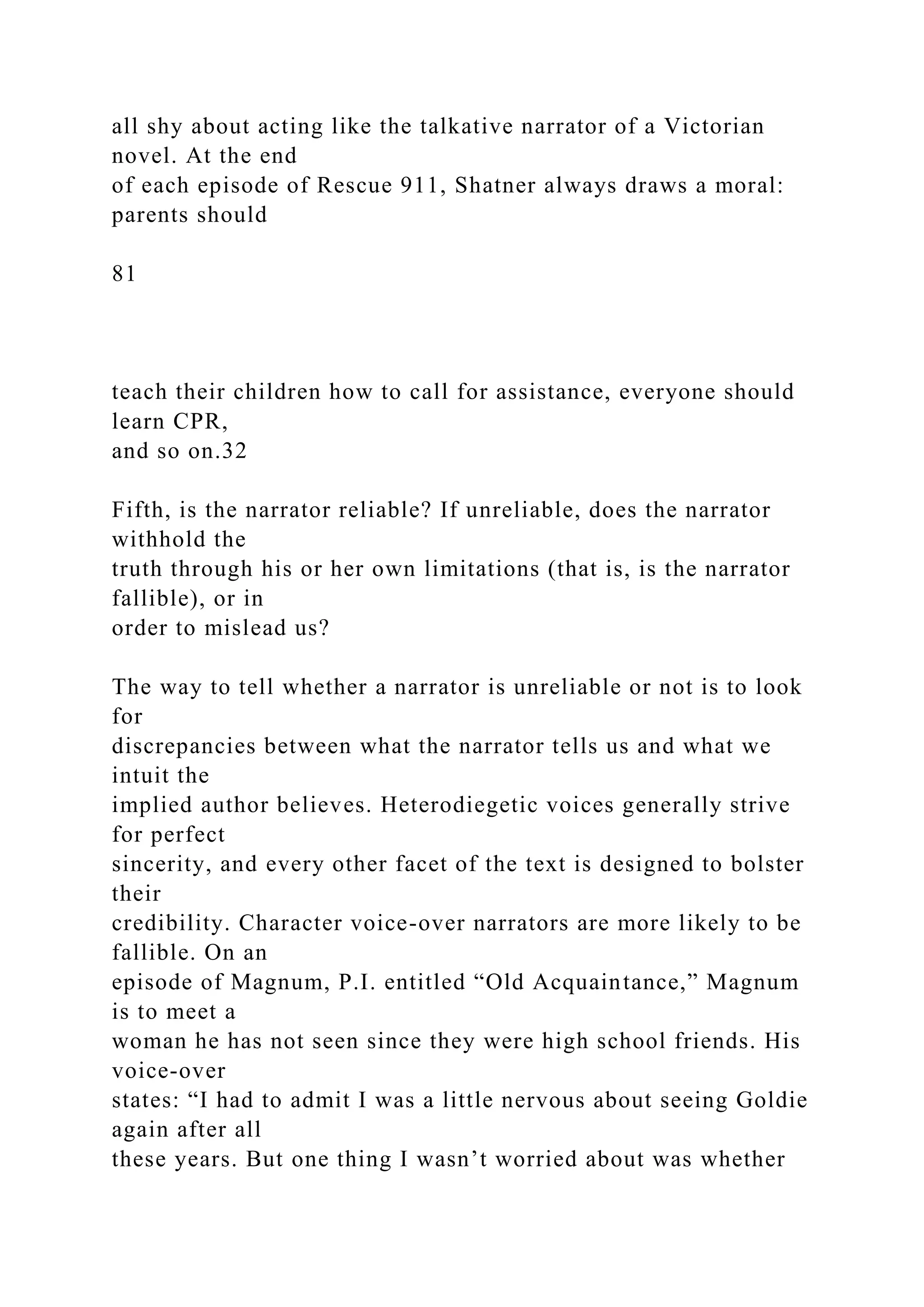

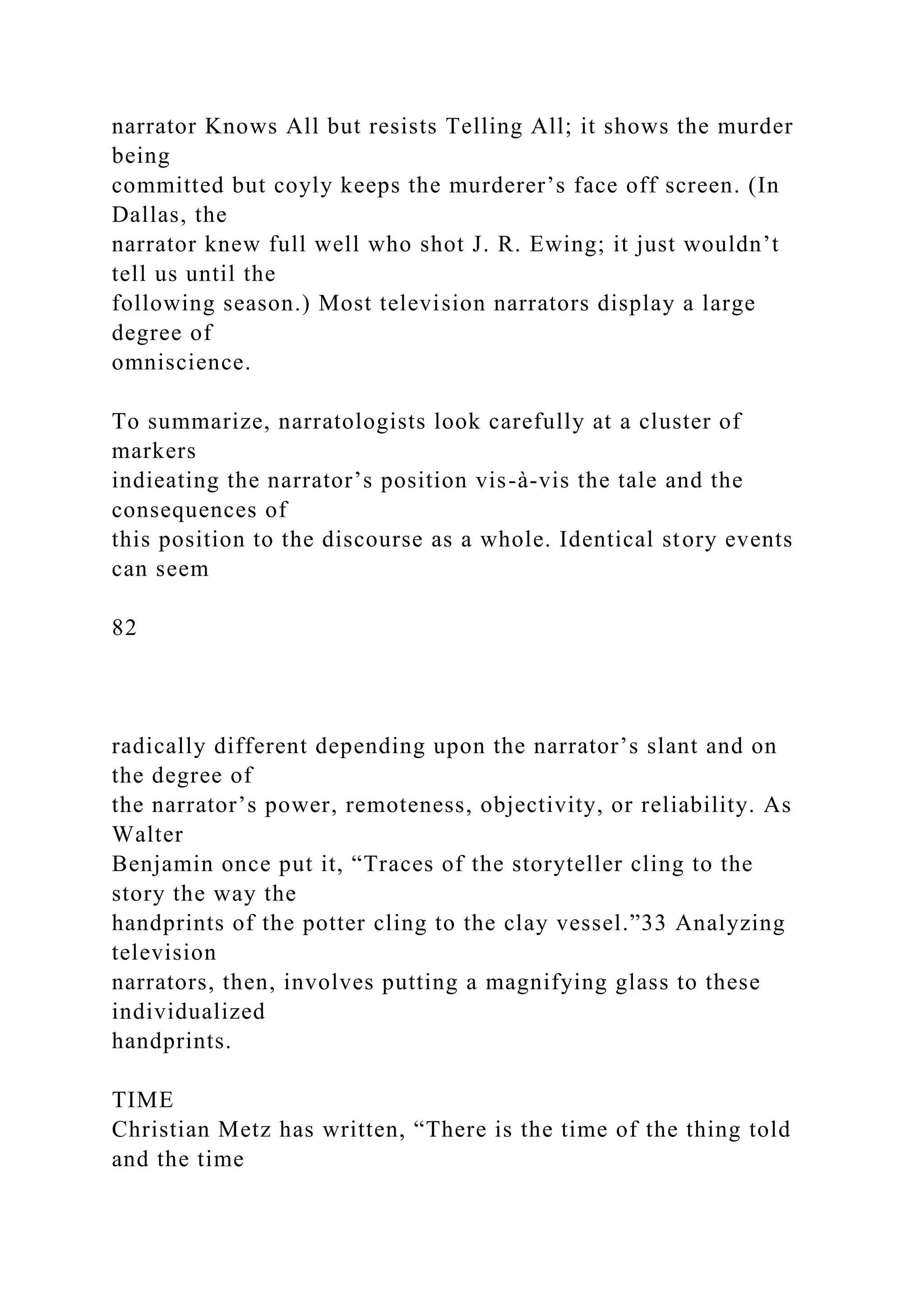
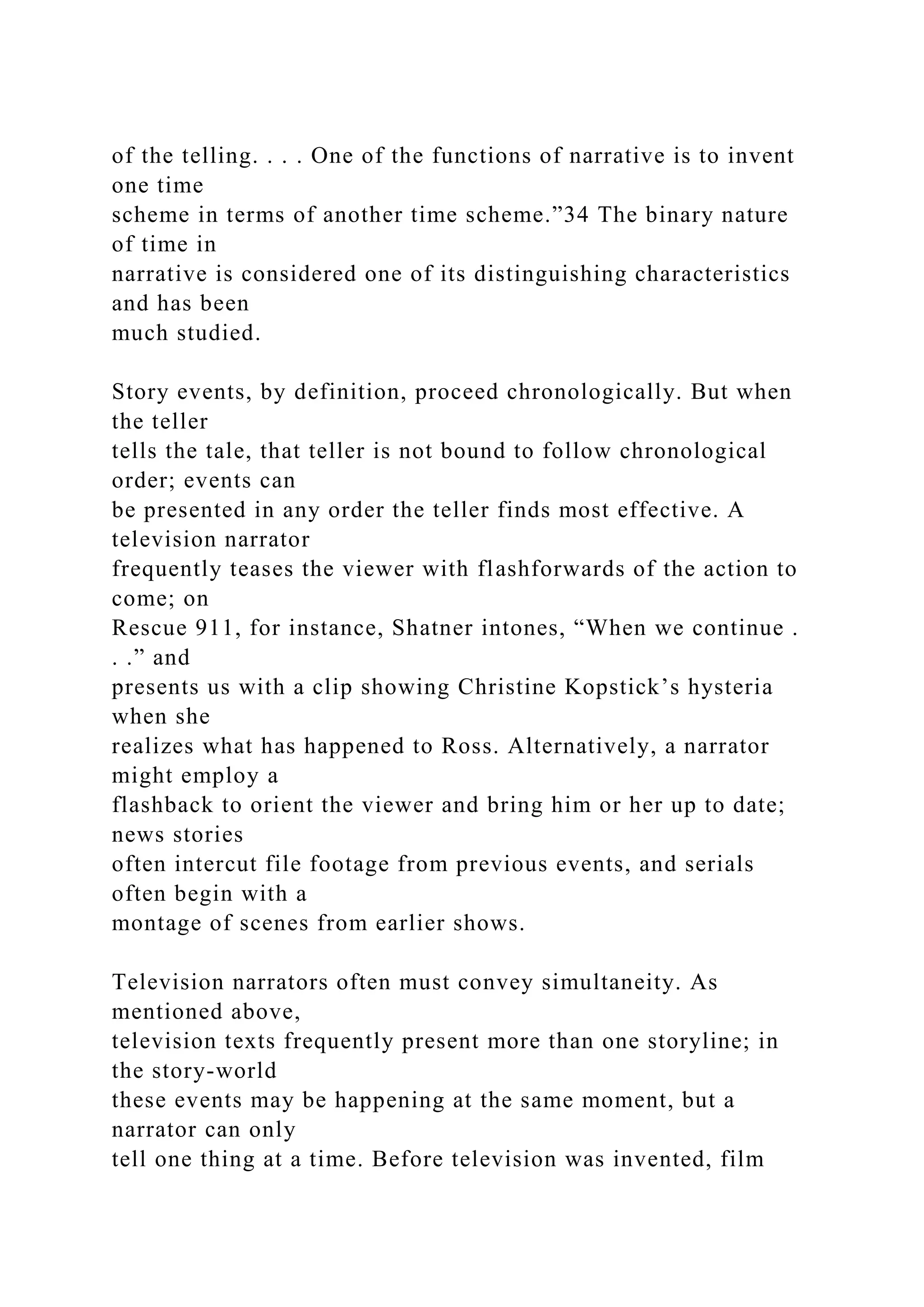
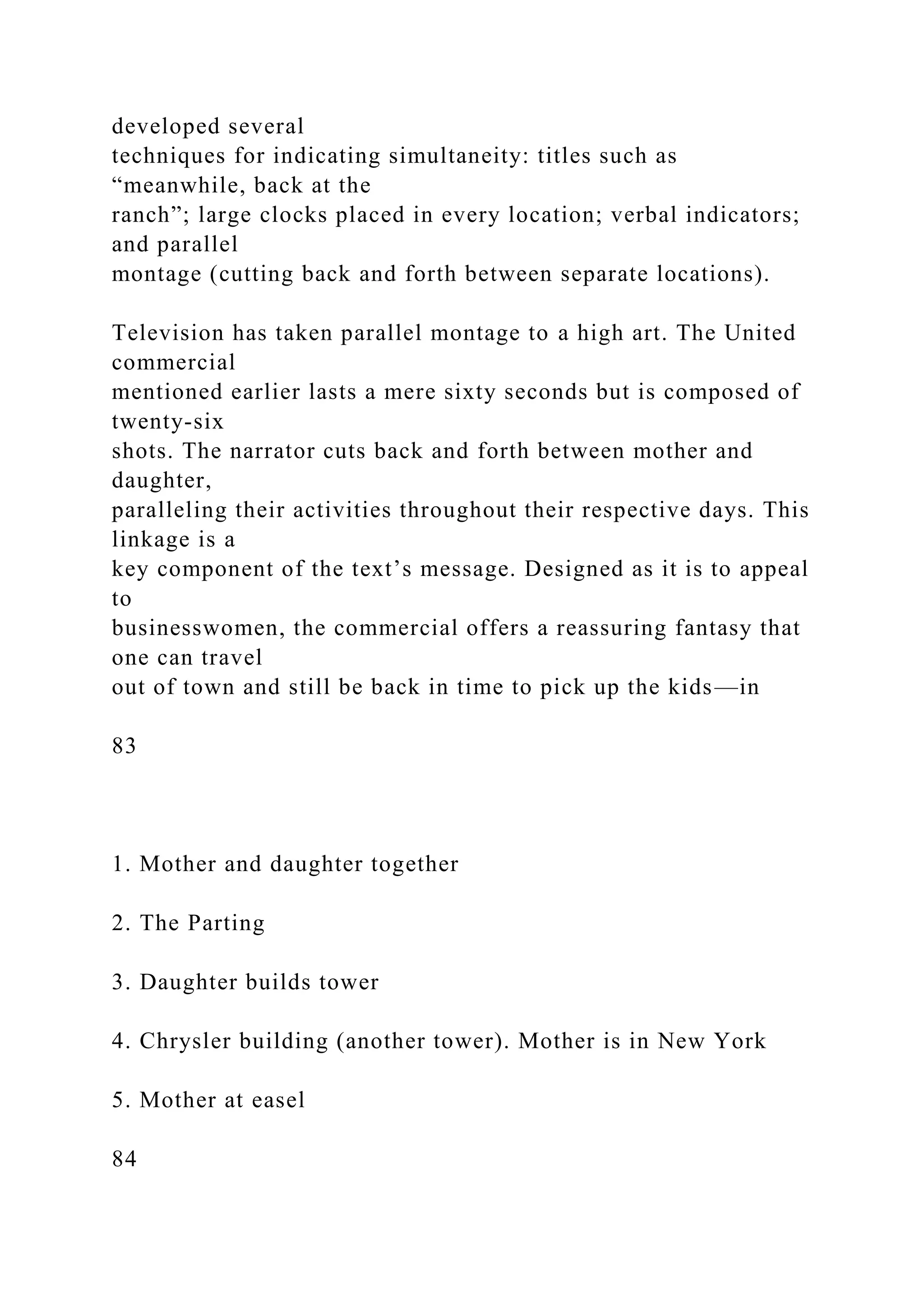

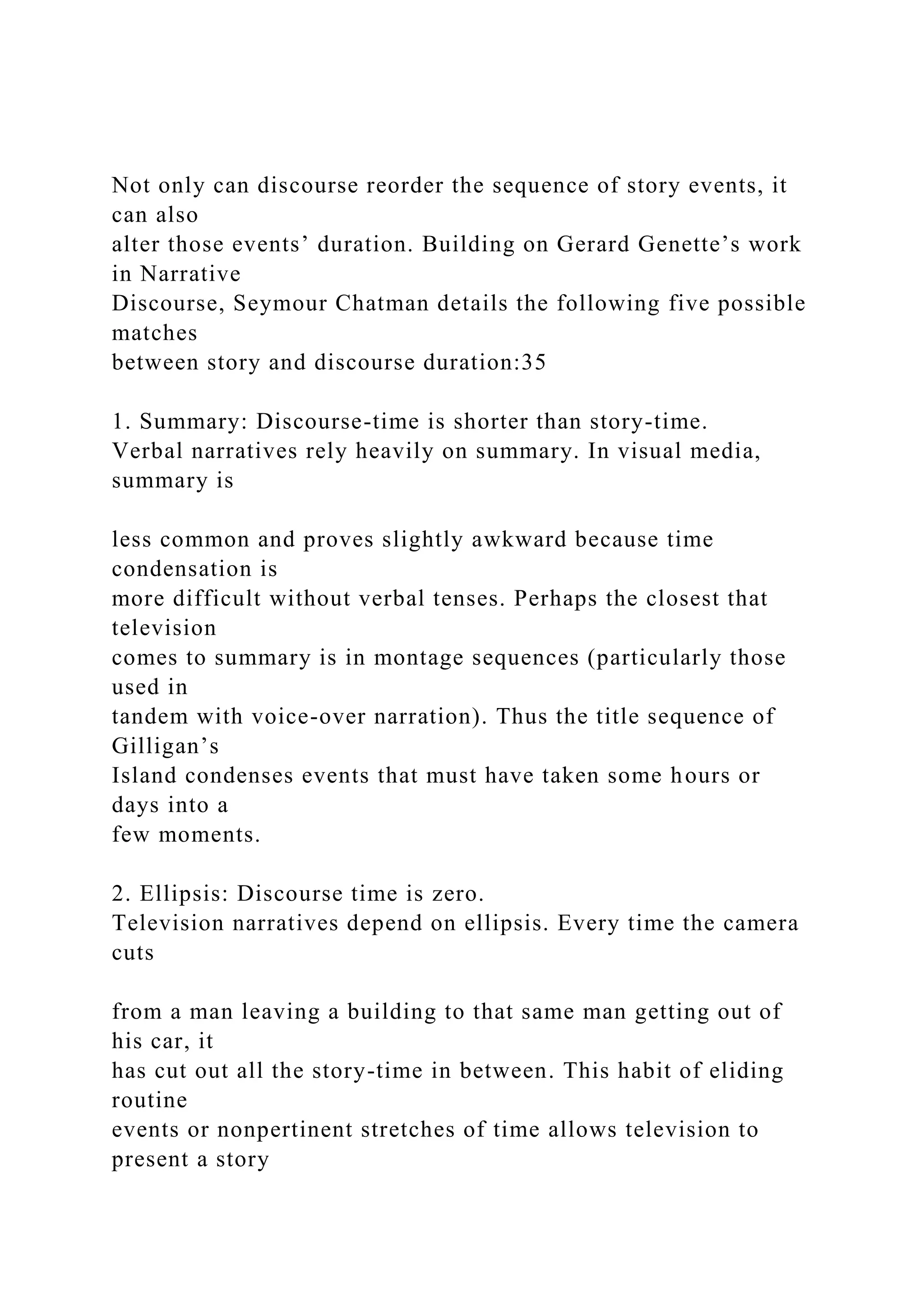
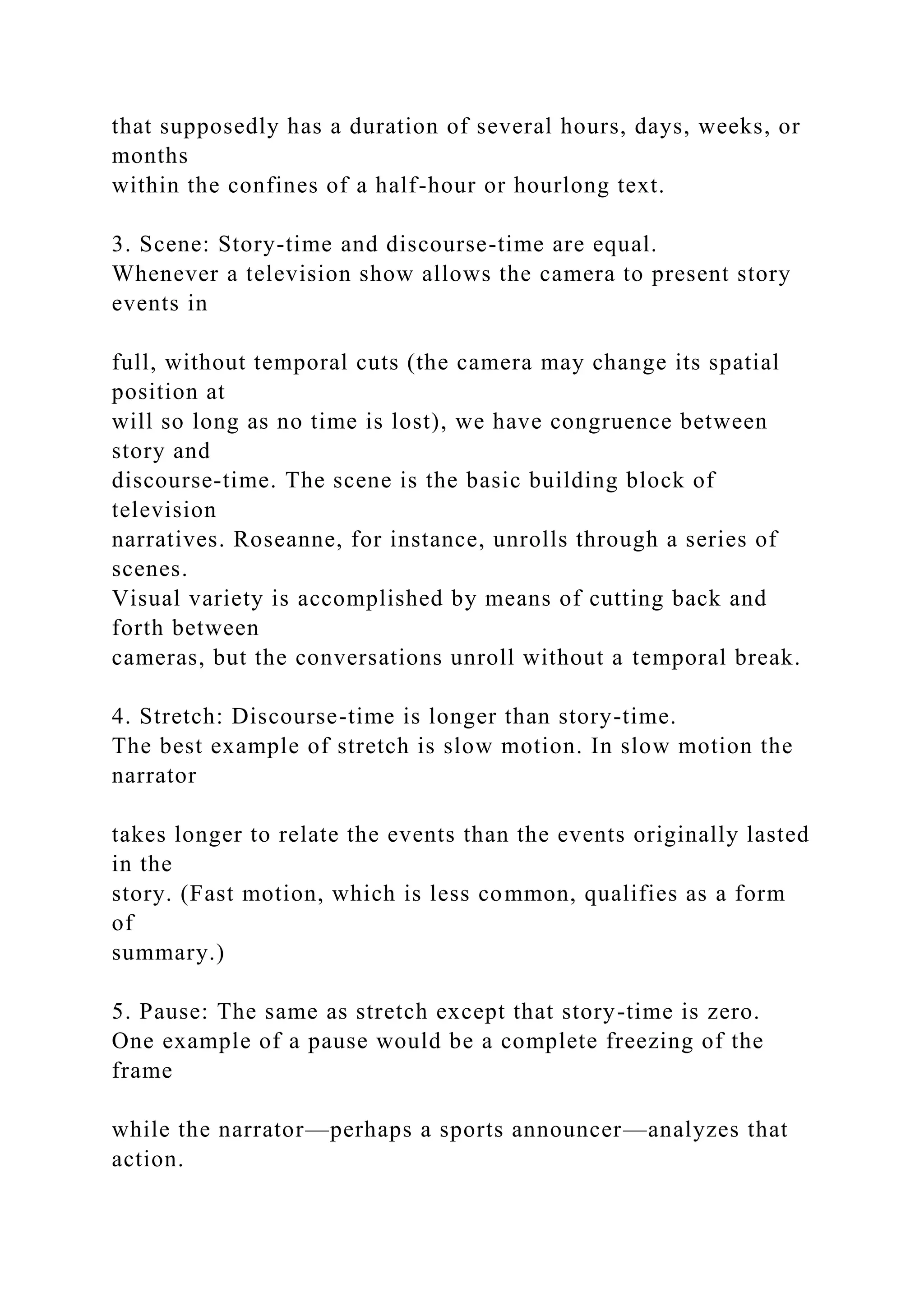
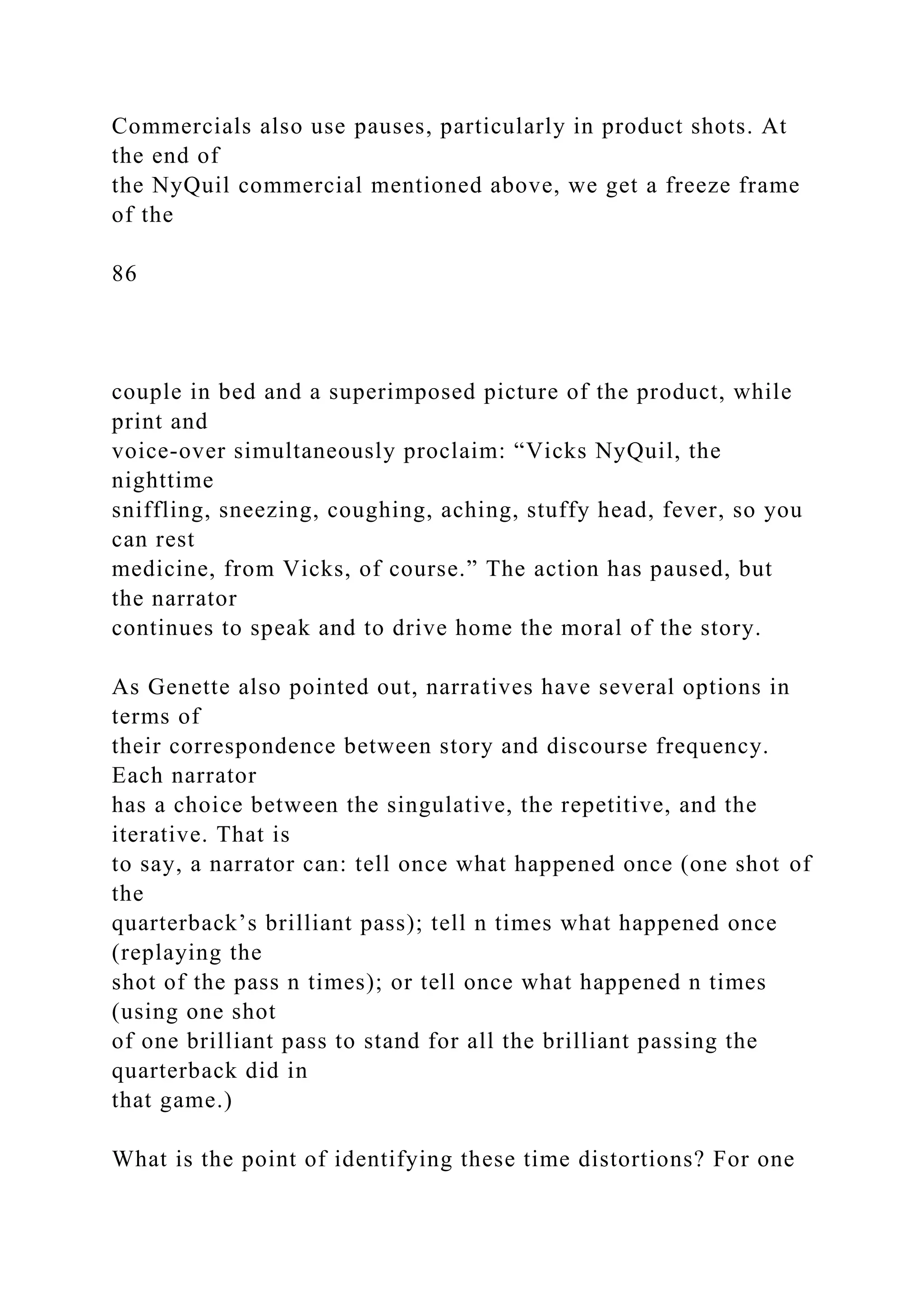

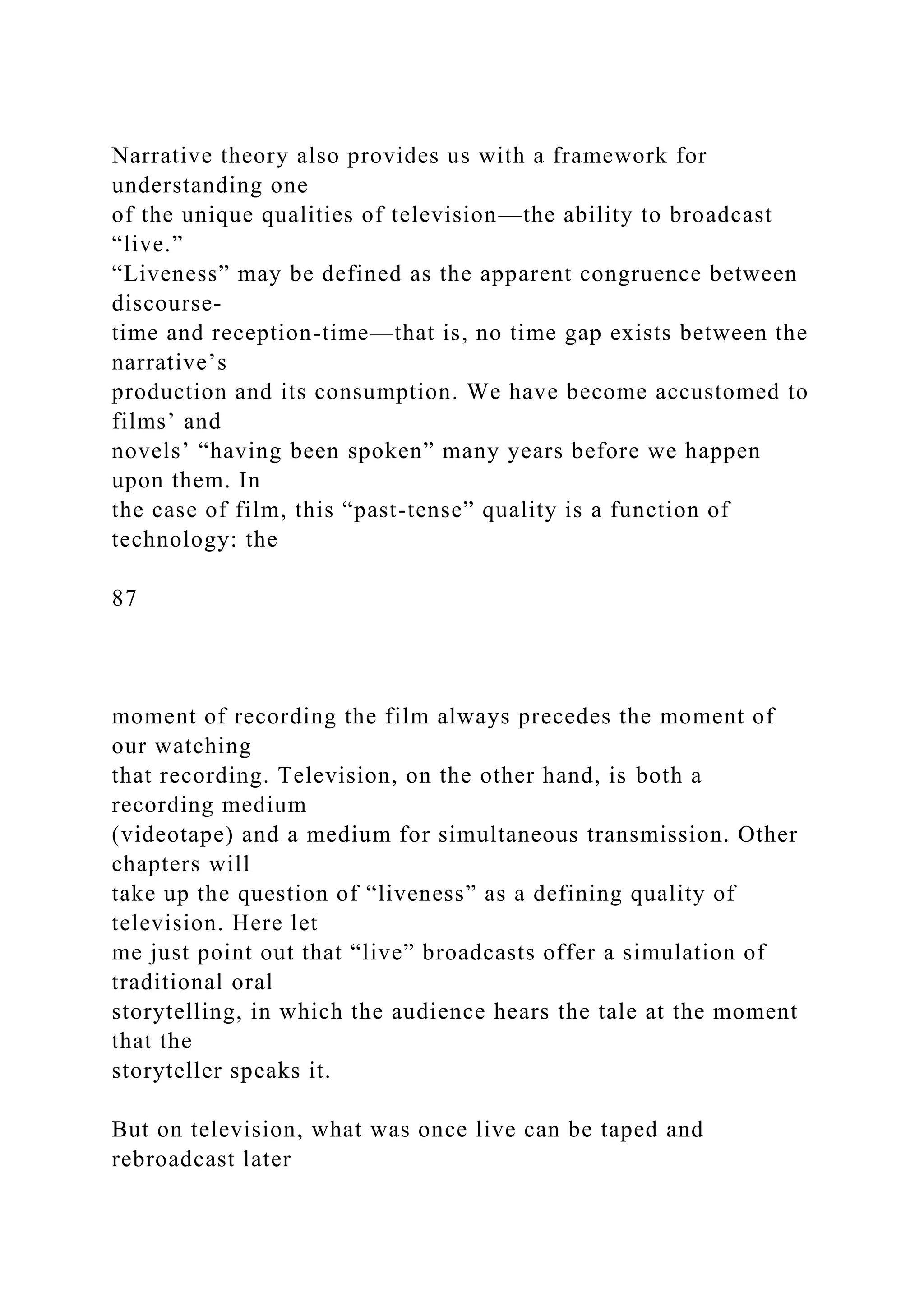
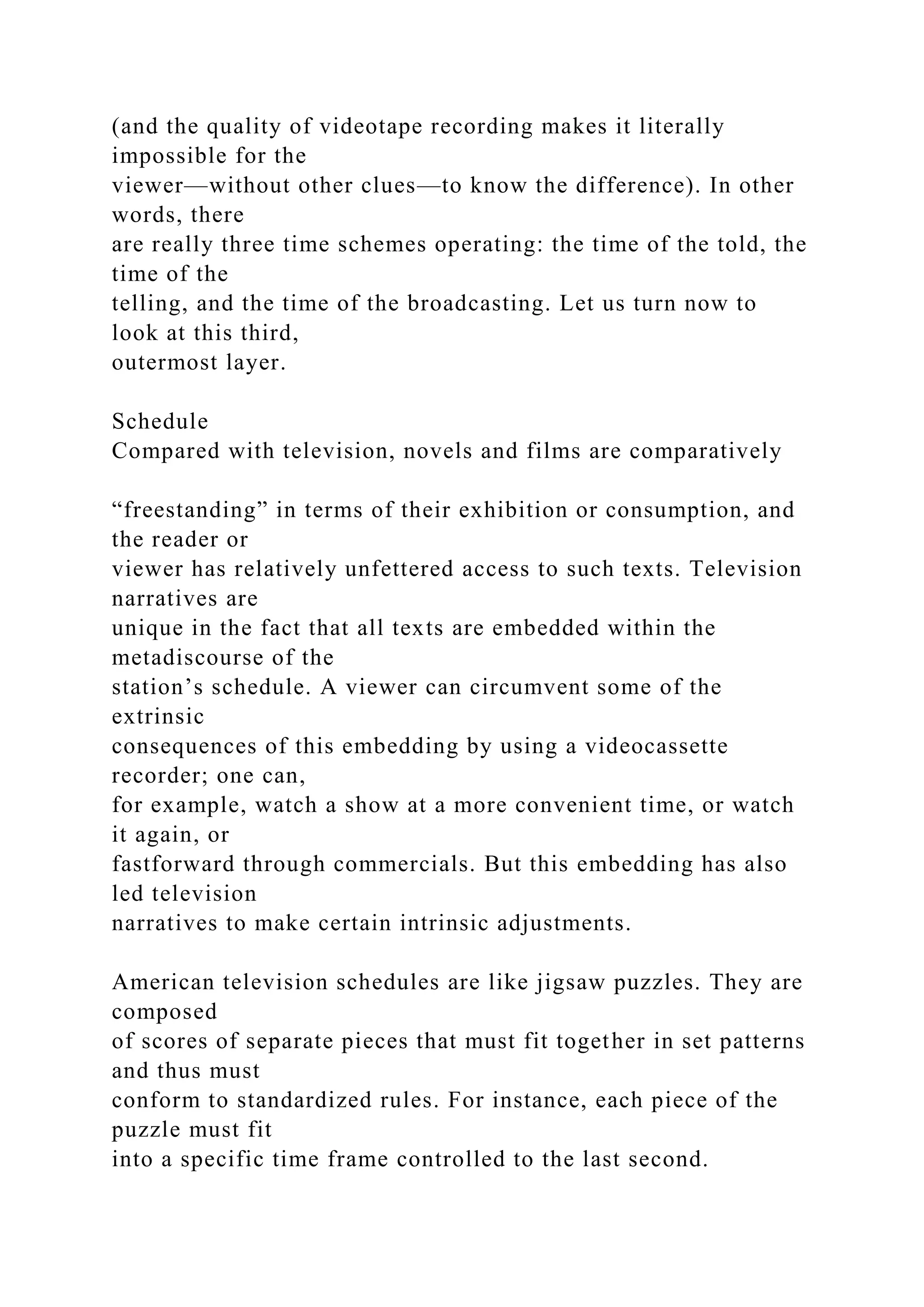
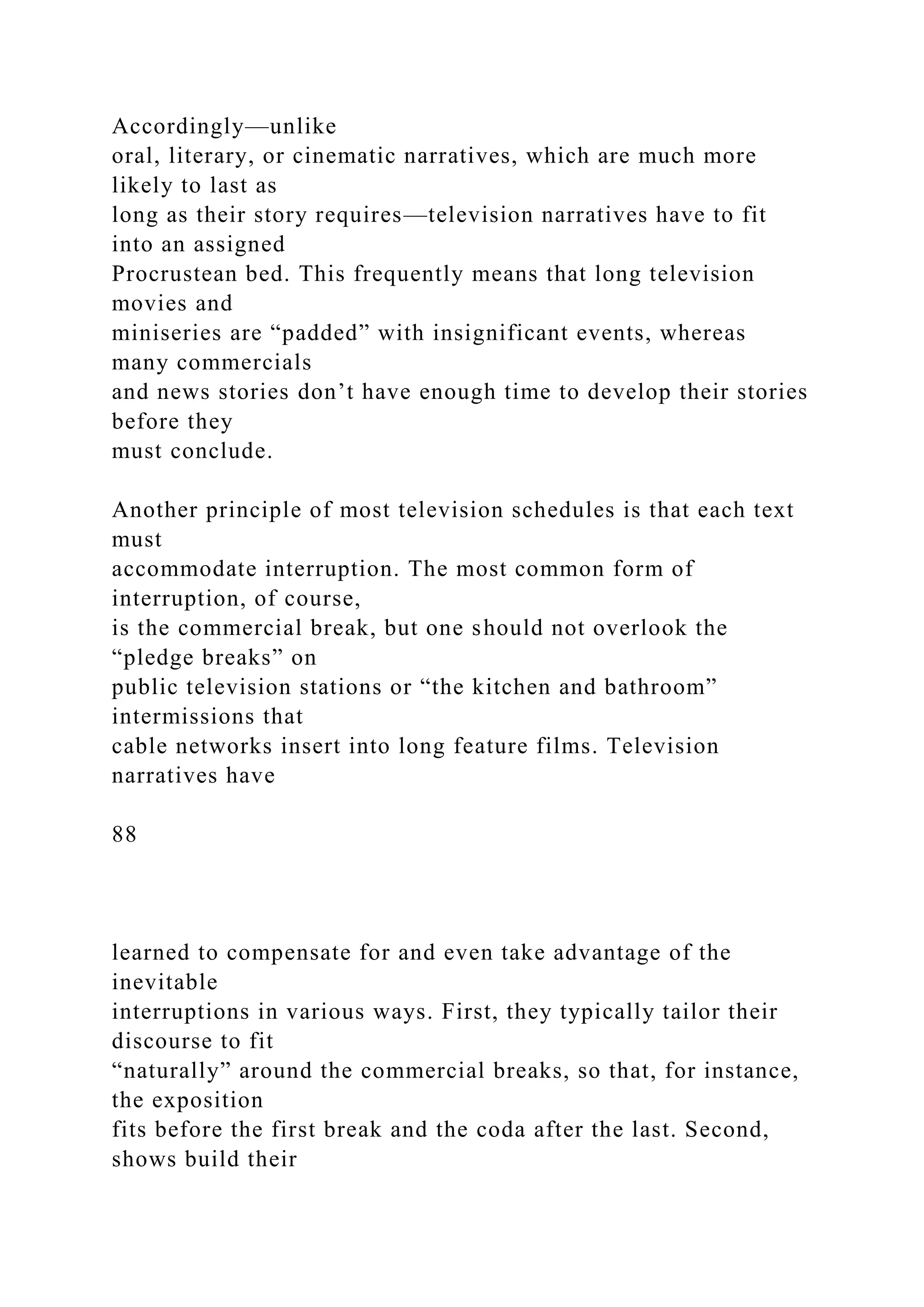
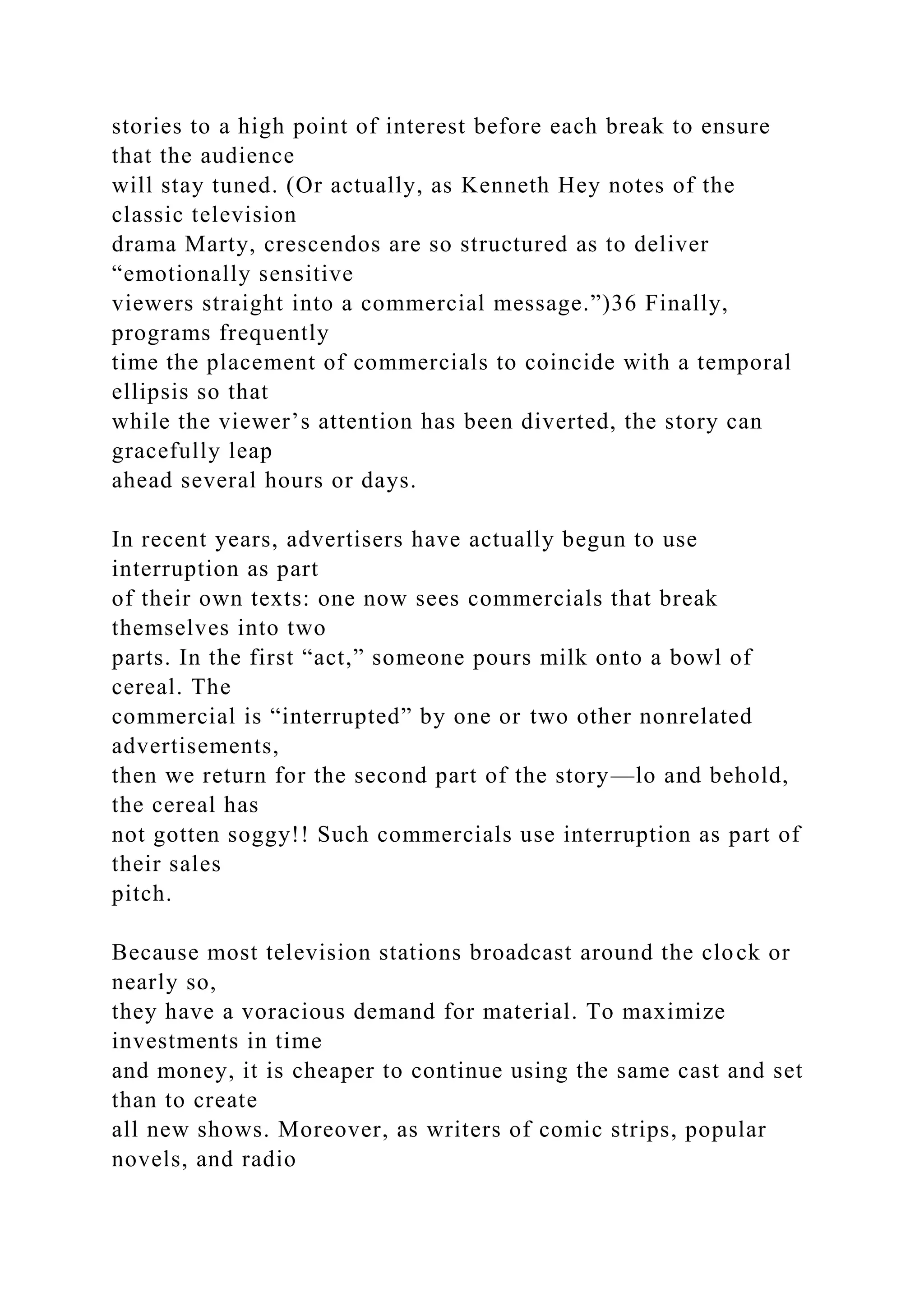
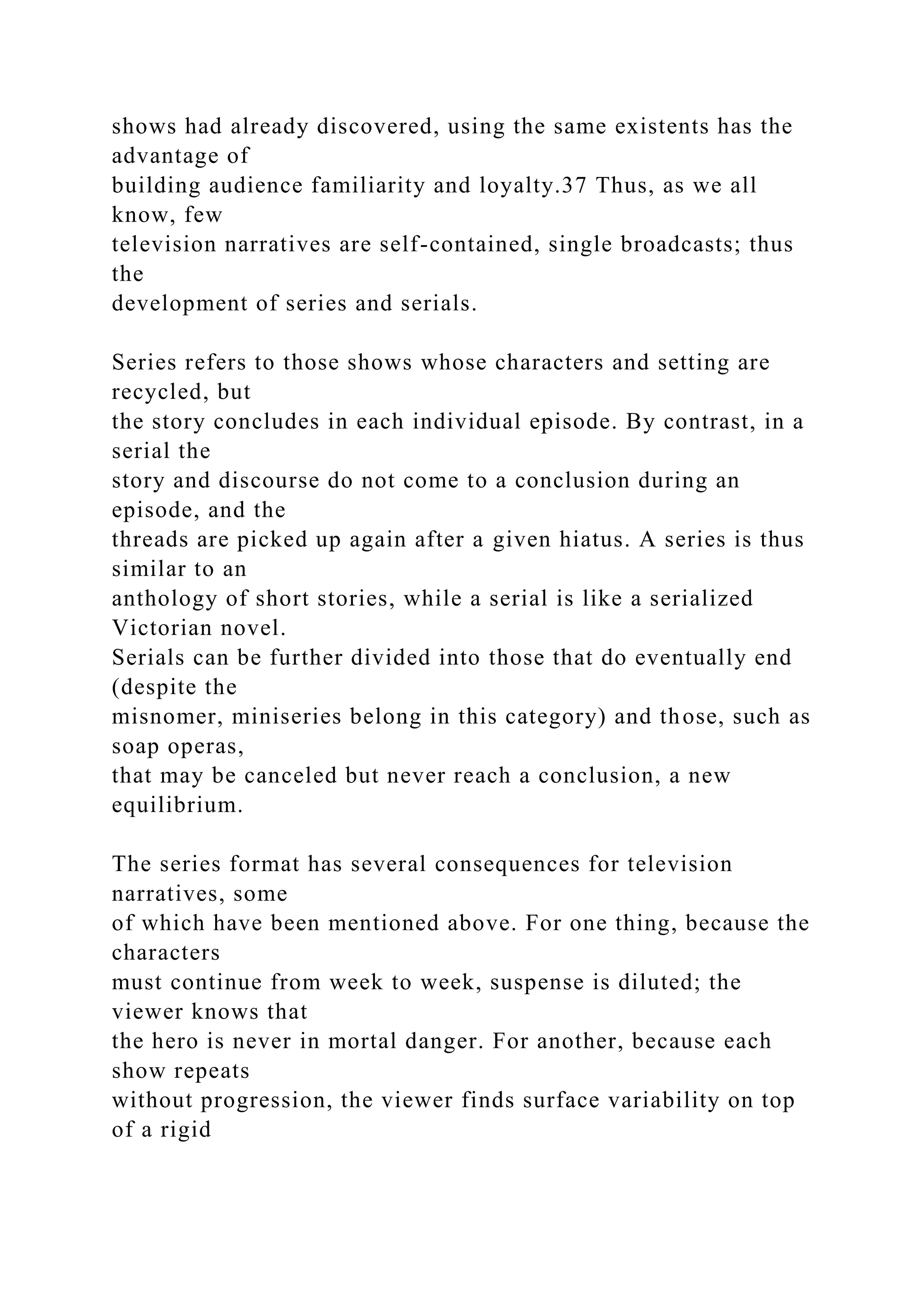
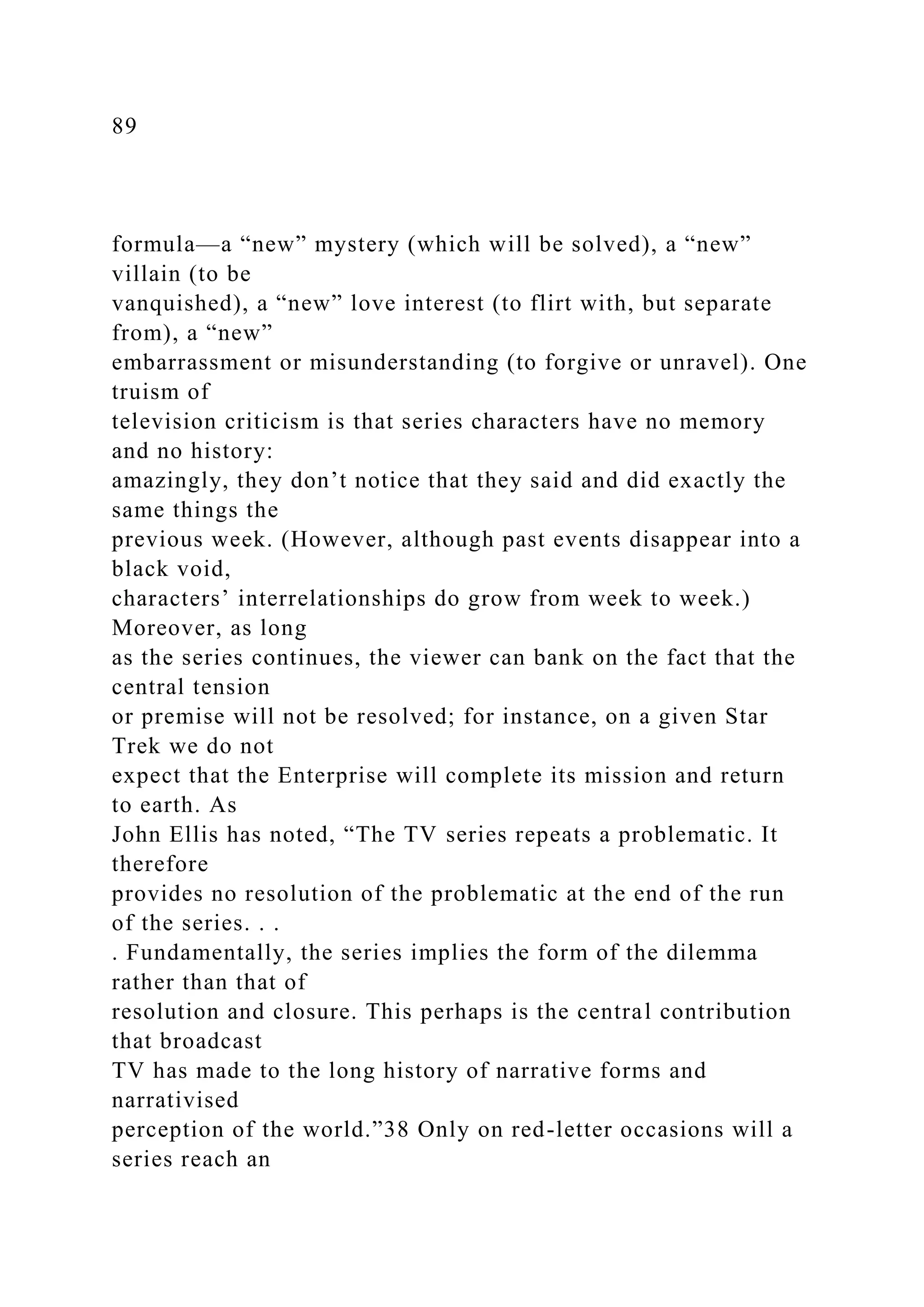
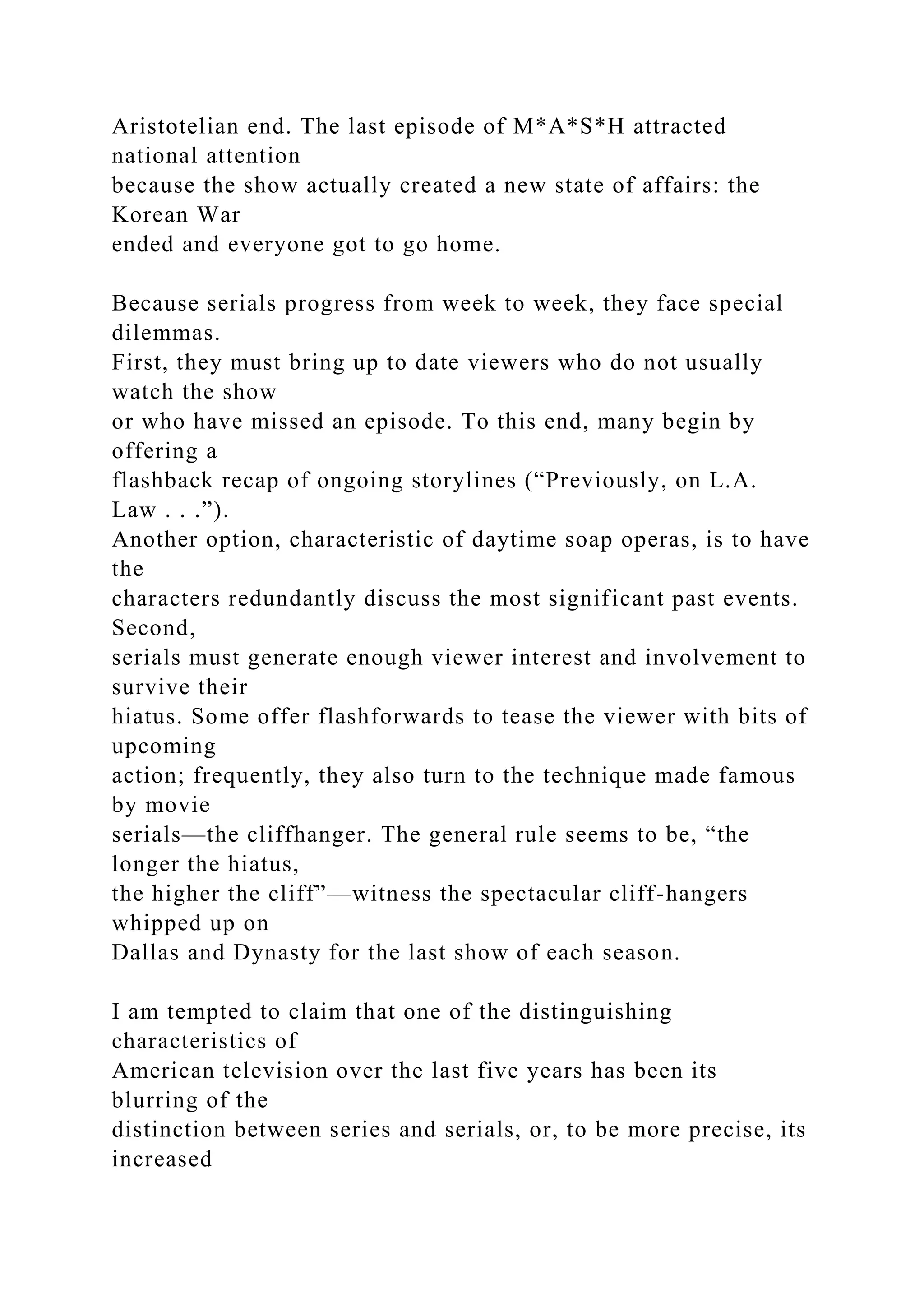

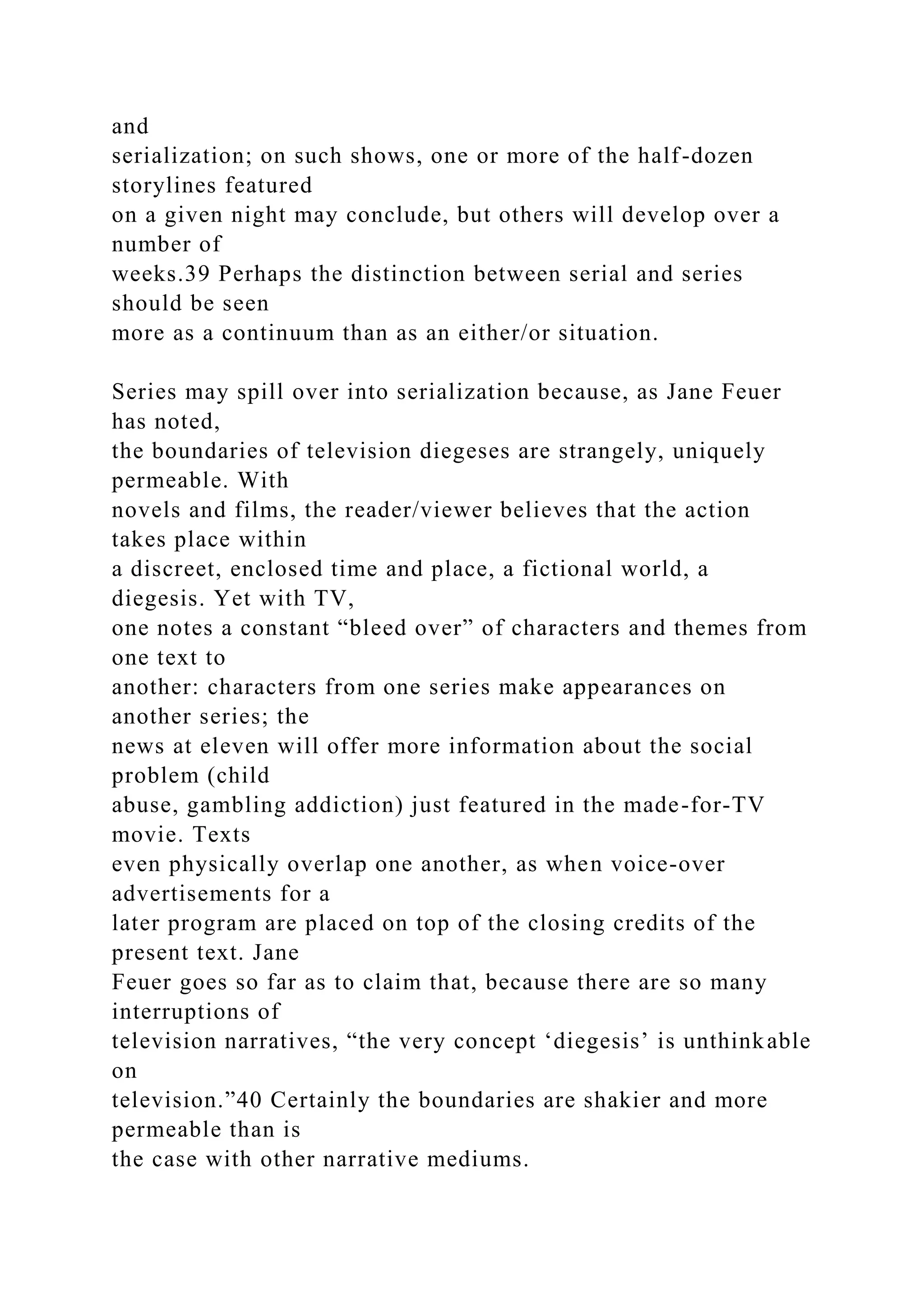
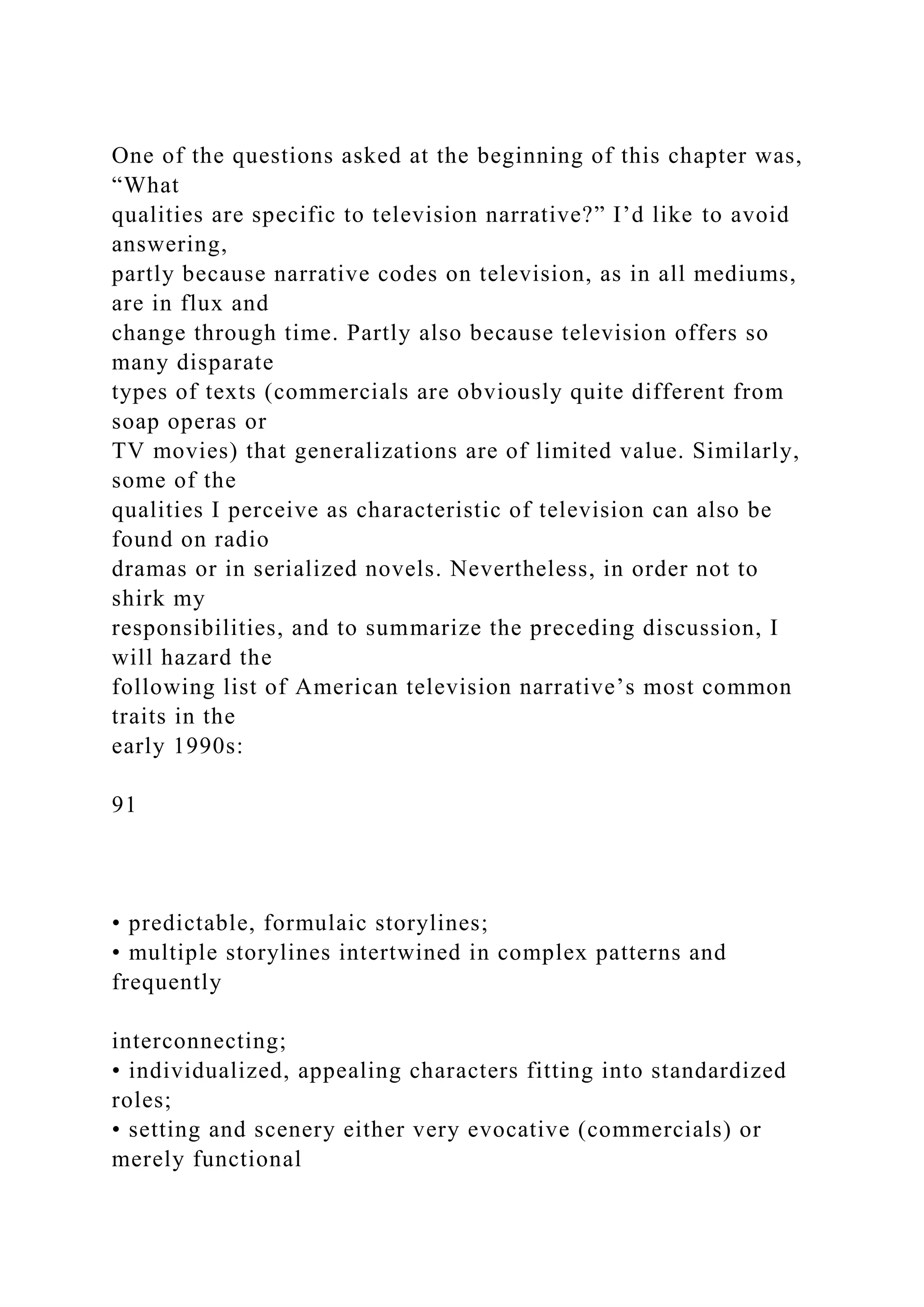
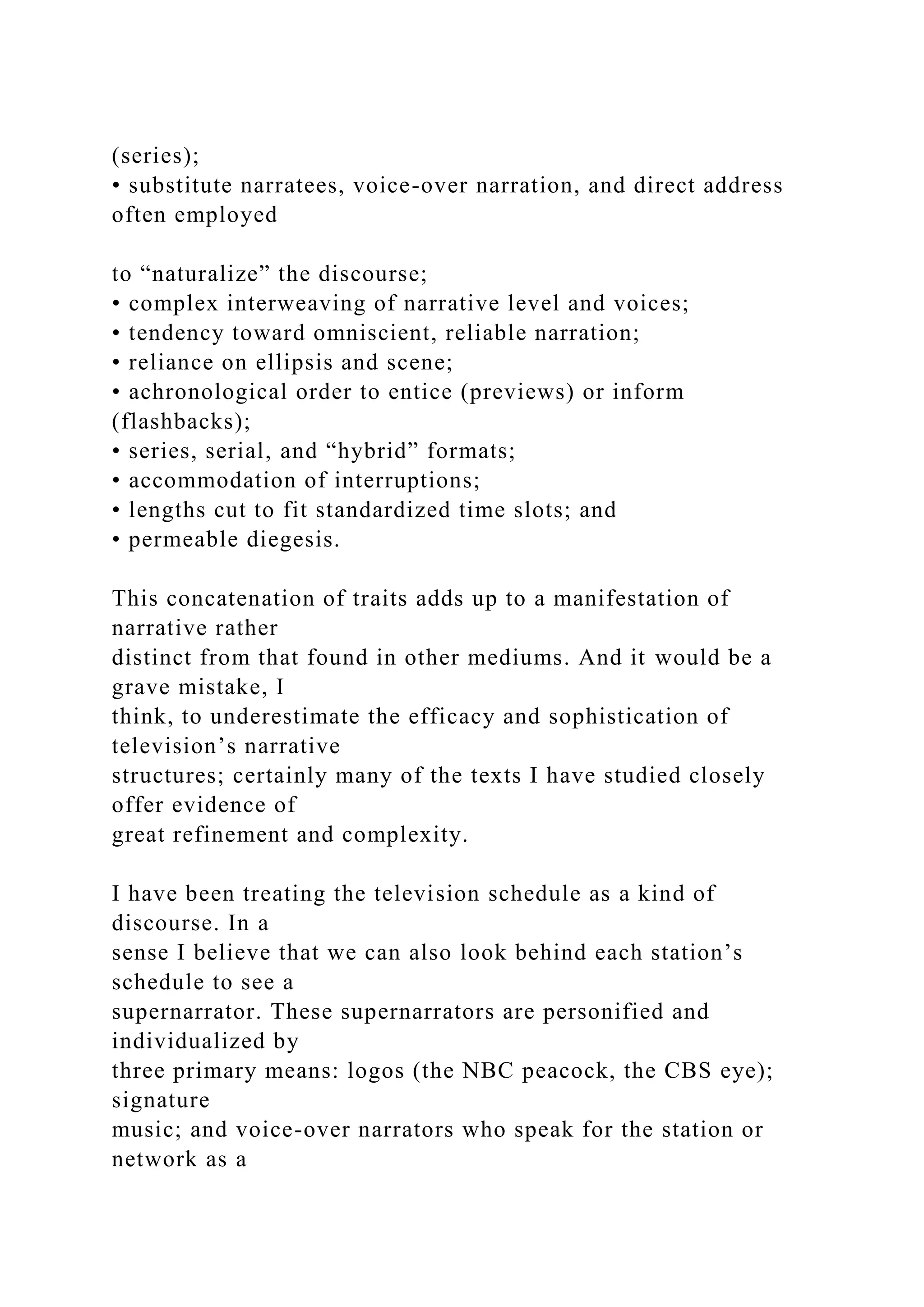
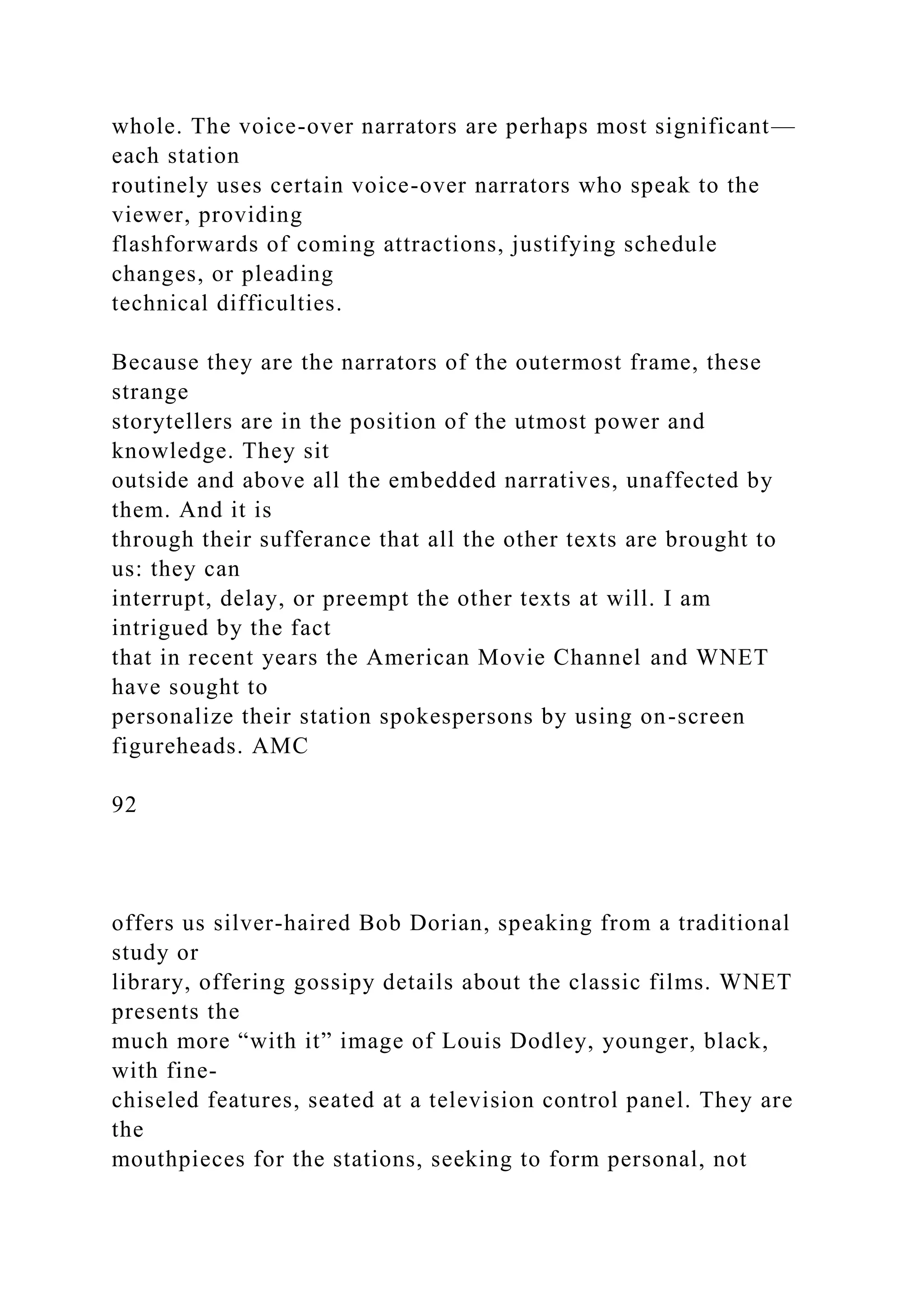
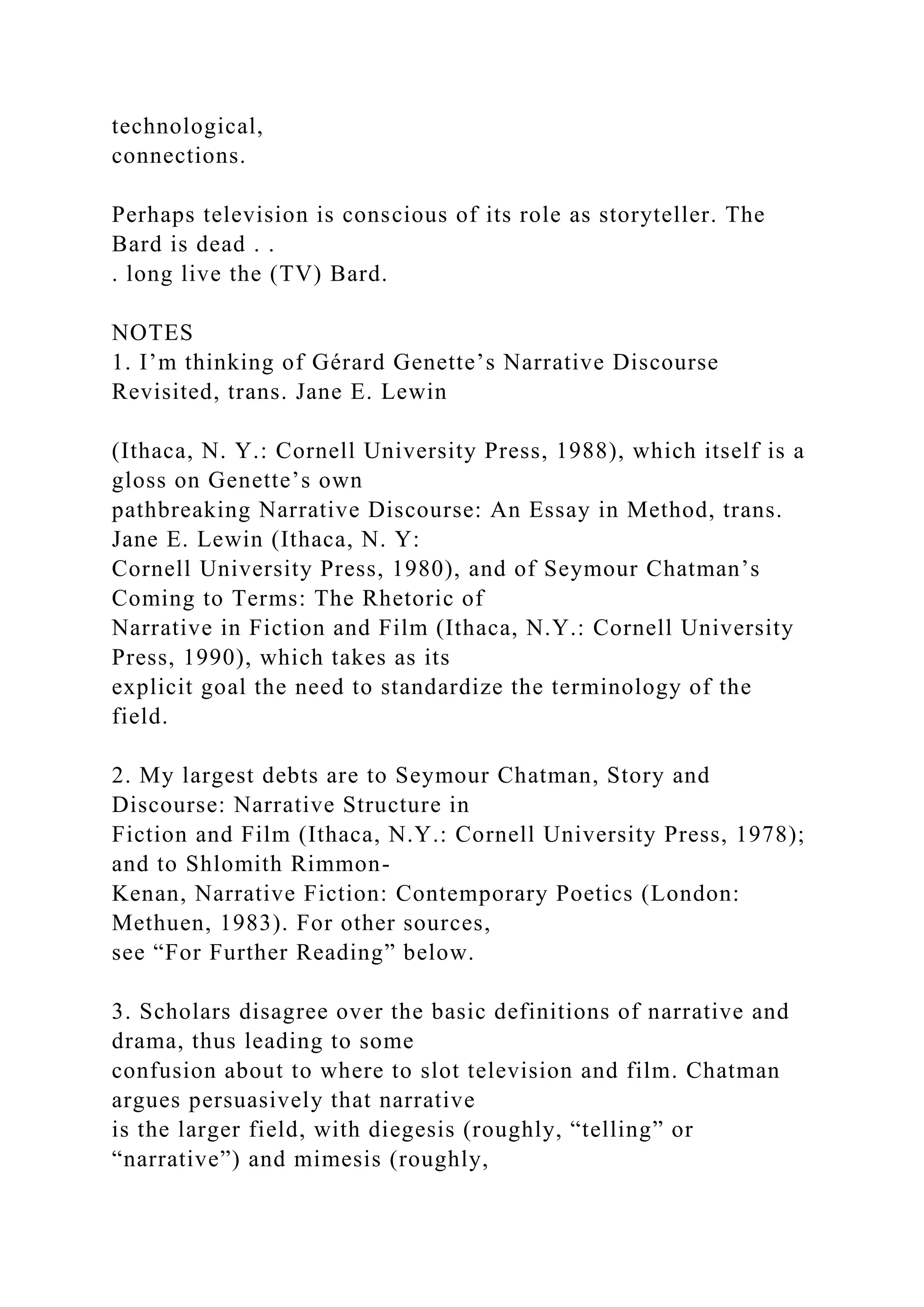
![“showing” or “dramatic”) as subsets (Coming to Terms, pp.
109–15). See my discussion below
on the existence of the television narrator.
4. Chatman speaks of one text-type being at another’s “service”
(Coming to Terms, p. 10).
5. See Sharon Lynn Sperry, “Television News as Narrative,” in
Understanding Television:
Essays on Television as a Social and Cultural Force, ed.
Richard P. Adler (New York: Praeger,
1981), pp. 295–312; and Robert Stam, “Television News and Its
Spectator,” in Regarding
Television—Critical Approaches: An Anthology, ed. E. Ann
Kaplan, American Film Institute
Monograph Series, vol. 2 (Frederick, Md.: University
Publications of America, 1983), pp. 23–
43. For a discussion of narrative strategies in a science
documentary, see Roger Silverstone,
“Narrative Strategies in Television Science—a Case Study,”
Media, Culture, and Society 6
(1984): 377–410.
6. As Wlad Godzich, following Genette, reminds us, “actions do
not exist independently of
their representation” (foreword to The Poetics of Plot, by
Thomas G. Pavel [Minneapolis:
University of Minnesota Press, 1985], p. xix).
7. Rimmon-Kenan, Narrative Fiction, p. 15.
8. Tzvetan Todorov, “The Grammar of Narratives,” in The
Poetics of Prose, trans. Richard
Howard (Ithaca, N.Y.: Cornell University Press, 1977), p. 111.
9. Roland Barthes, “Introduction to the Structural Analysis of
Narratives,” in](https://image.slidesharecdn.com/channelsofdiscoursereassembled2channelsof-221018173716-6fc0655a/75/Channels-of-Discourse-Reassembled2Channels-of-docx-195-2048.jpg)
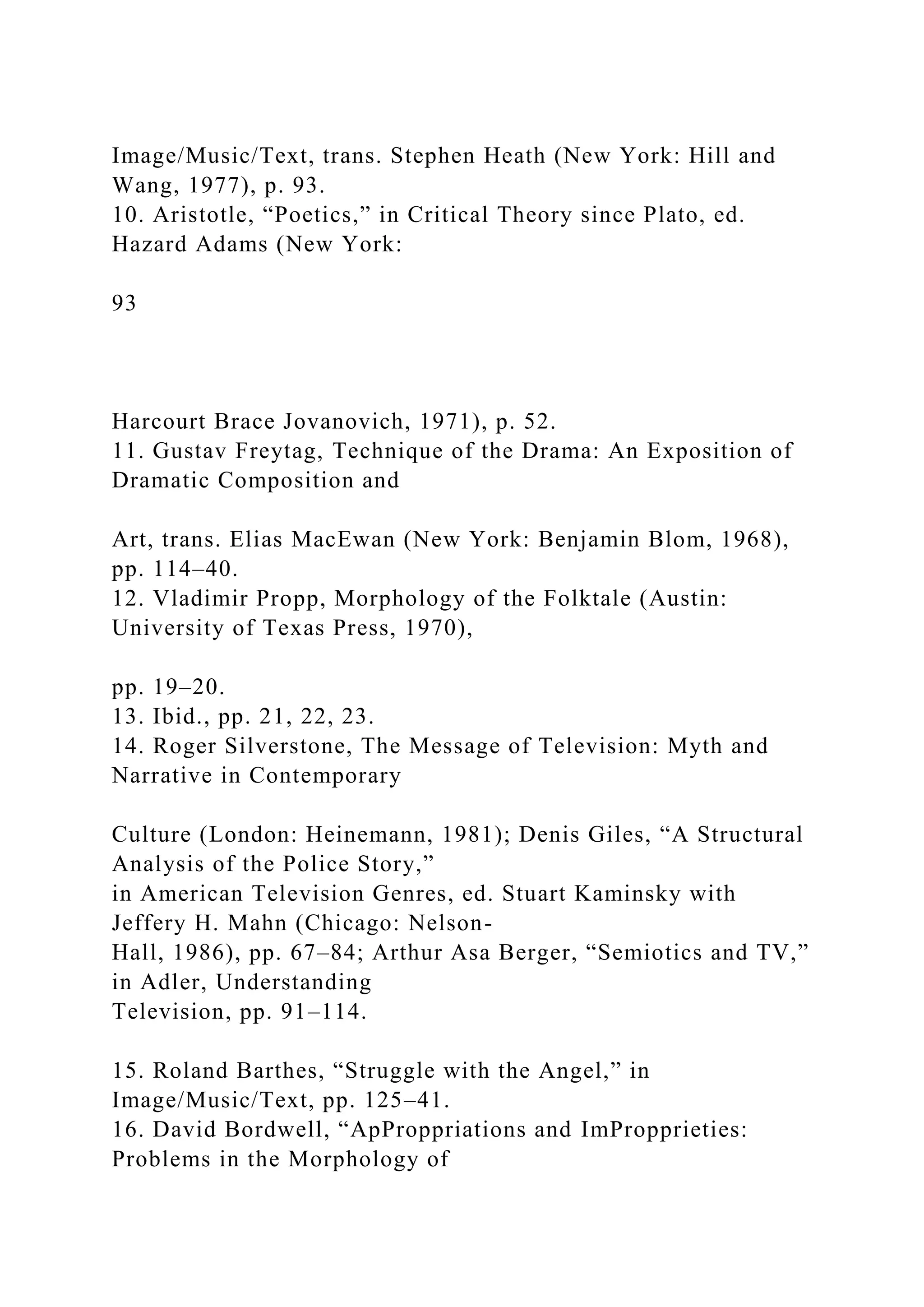
![Film Narrative,” Cinema Journal 27, no. 3 (Spring 1988): 5–20.
17. For descriptions of other “narrative grammars,” see
Rimmon-Kenan, Narrative Fiction,
pp. 22–28, 34–35.
18. Silverstone, Message of Television.
19. Roland Barthes, S/Z, trans. Richard Miller (New York: Hill
and Wang, 1974).
20. David Bordwell helps us see how differently classical
Hollywood films handle suspense.
In particular, such films crank up the tension by creating and
emphasizing deadlines (Narration
in the Fiction Film [Madison: University of Wisconsin Press,
1985], pp. 157–66).
21. Robert C. Allen, “On Reading Soaps: A Semiotic Primer,”
in Kaplan, Regarding
Television, p. 103.
22. “Over and over again, when I asked executives which
factors weighed most heavily in
putting shows on the air, keeping them there, shaping their
content, I heard a standardized list.
At the top, the appeal of actors and characters” (Todd Gitlin,
Inside Prime Time [New York:
Pantheon, 1985], pp. 25–26).
23. David Marc, Demographic Vistas: Television in American
Culture (Philadelphia:
University of Pennsylvania Press, 1984), p. 12.
24. Robert Scholes and Robert Kellogg, The Nature of Narrative
(New York: Oxford
University Press, 1966), pp. 240–82.](https://image.slidesharecdn.com/channelsofdiscoursereassembled2channelsof-221018173716-6fc0655a/75/Channels-of-Discourse-Reassembled2Channels-of-docx-197-2048.jpg)
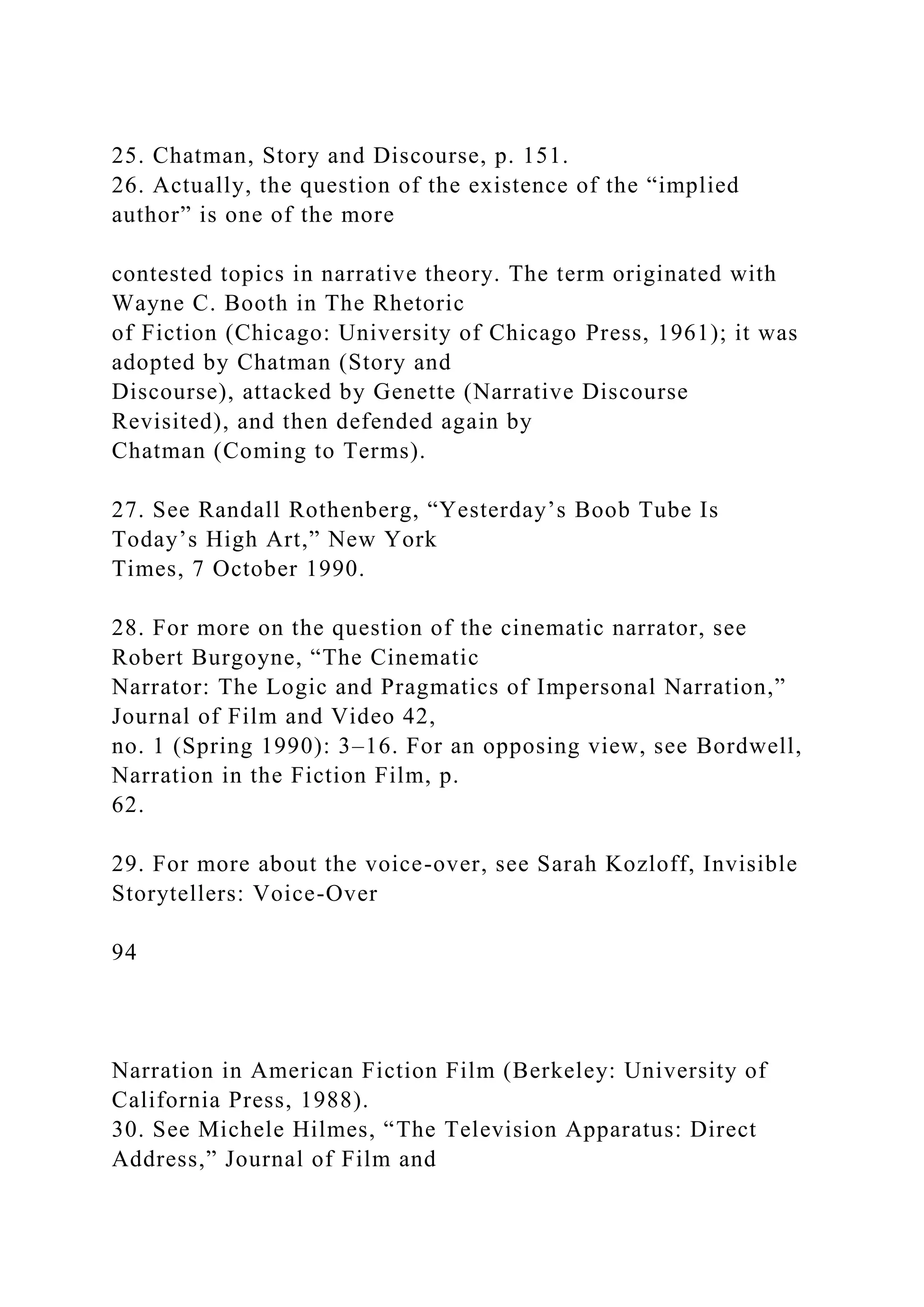
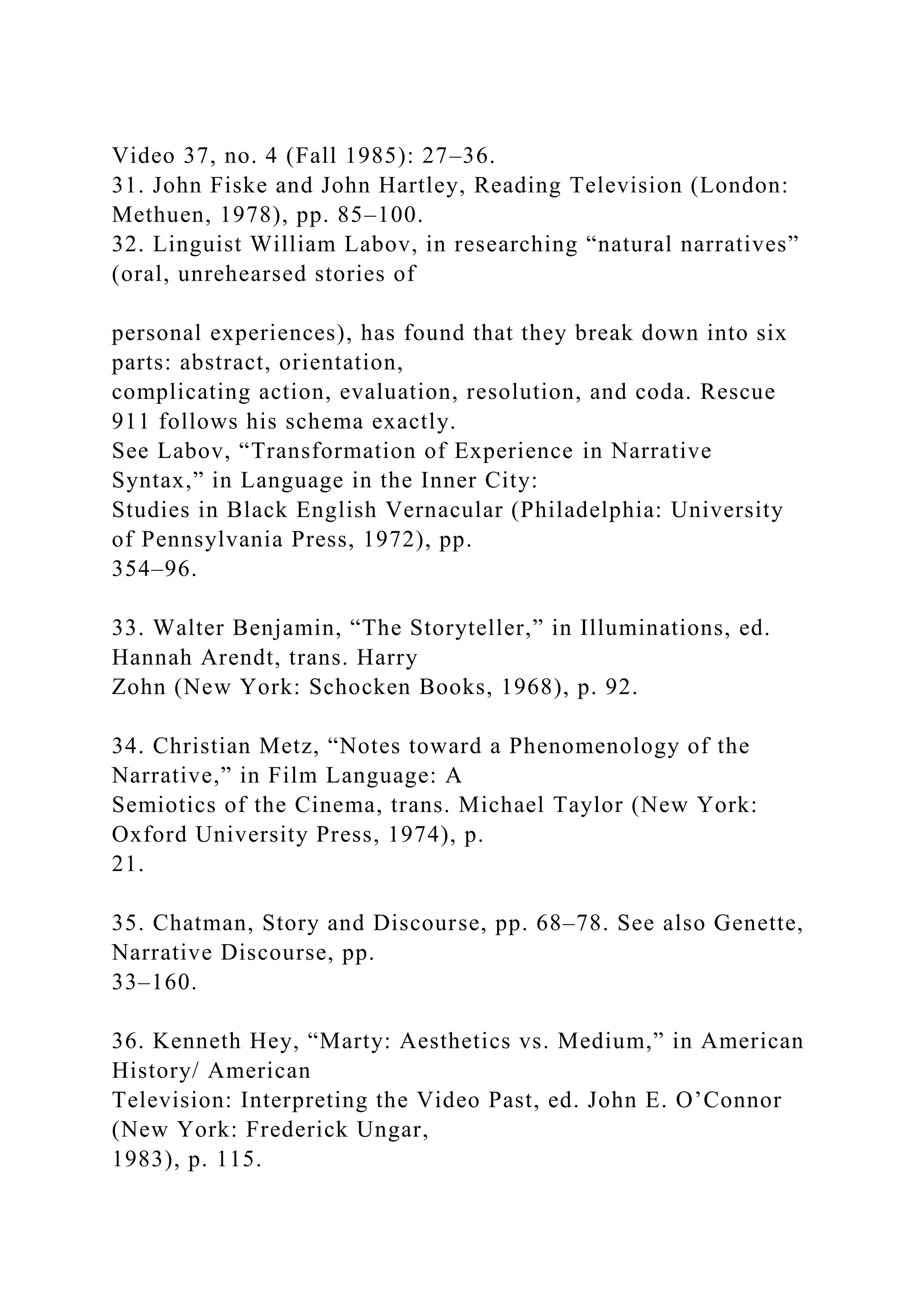
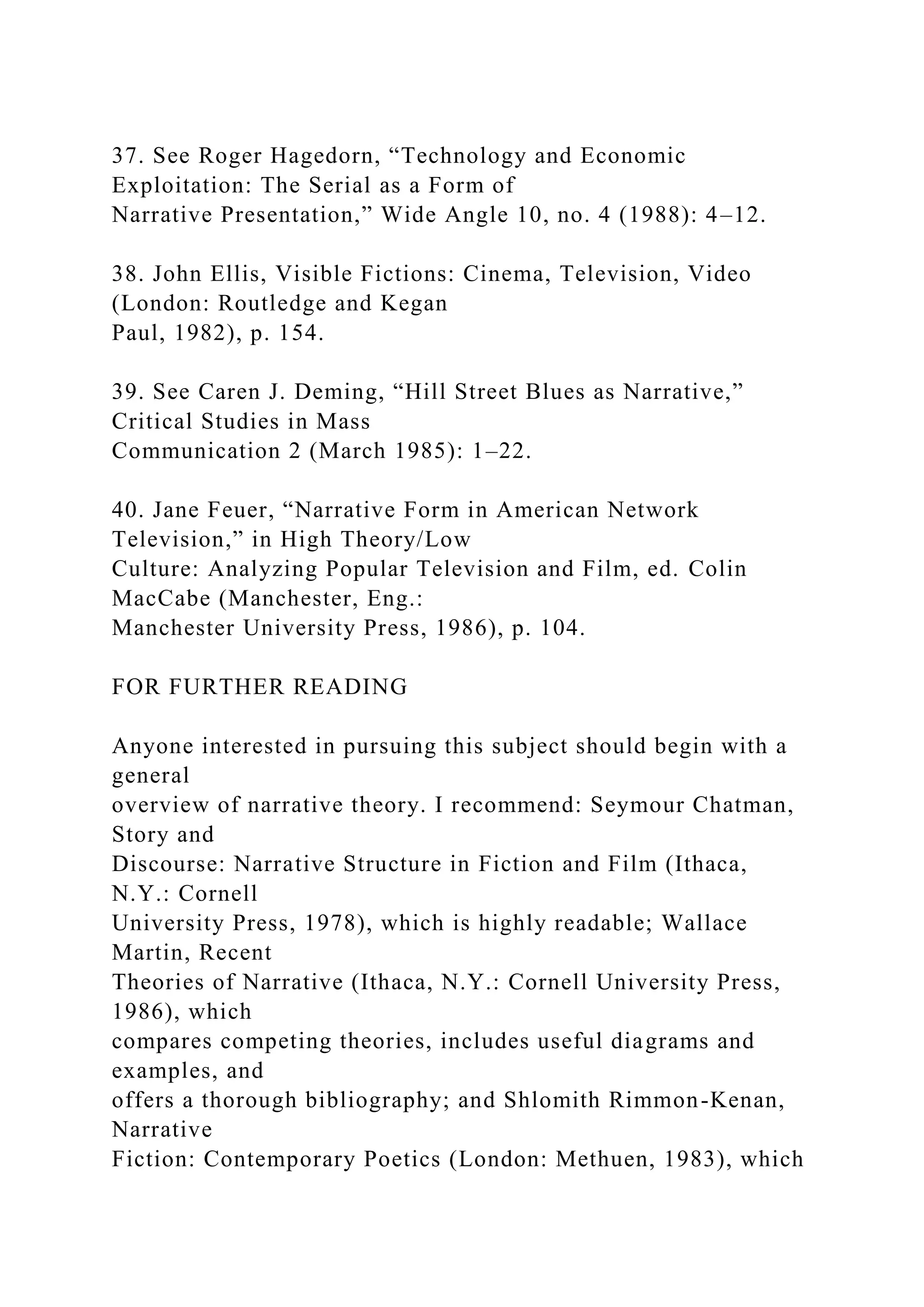
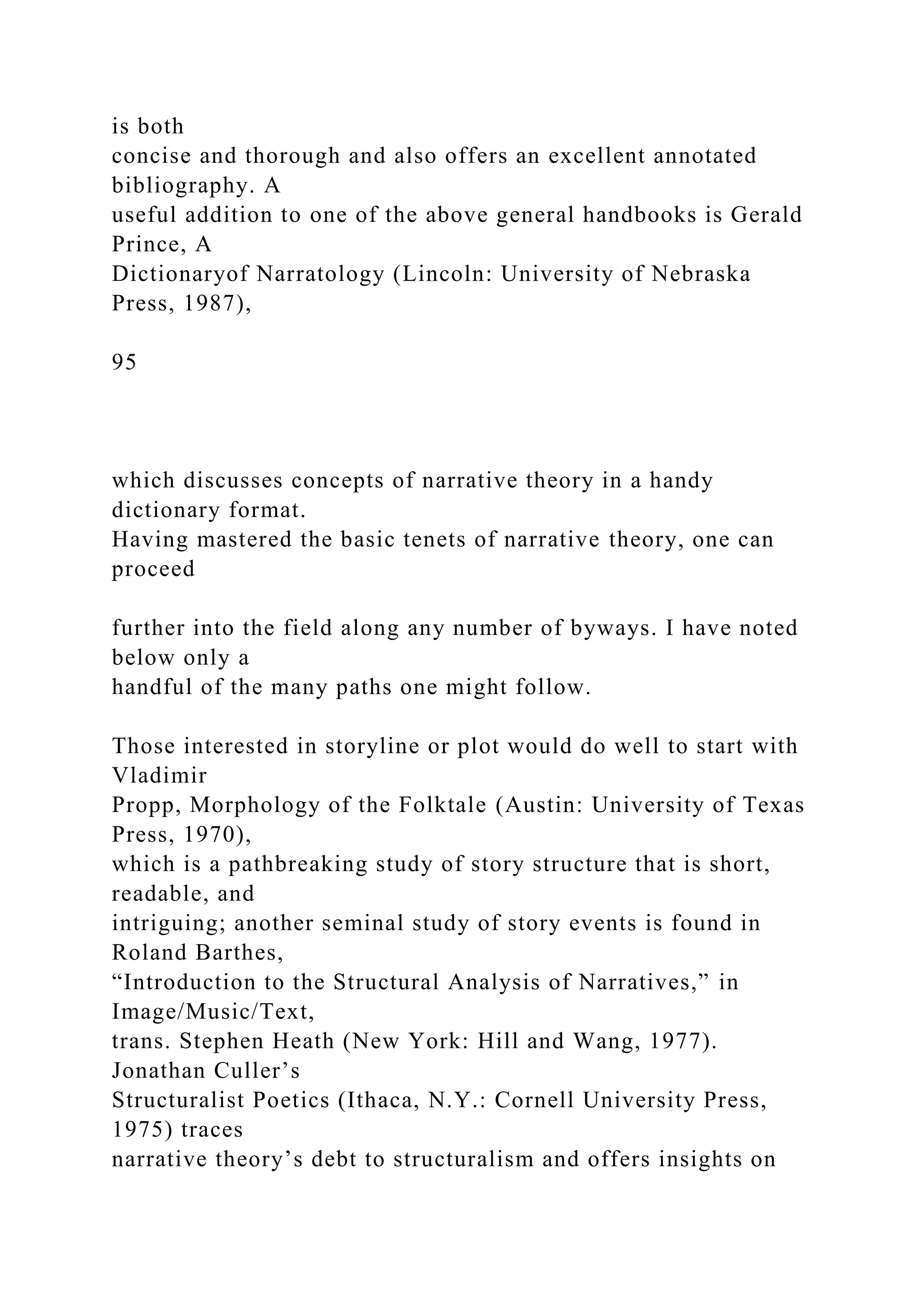
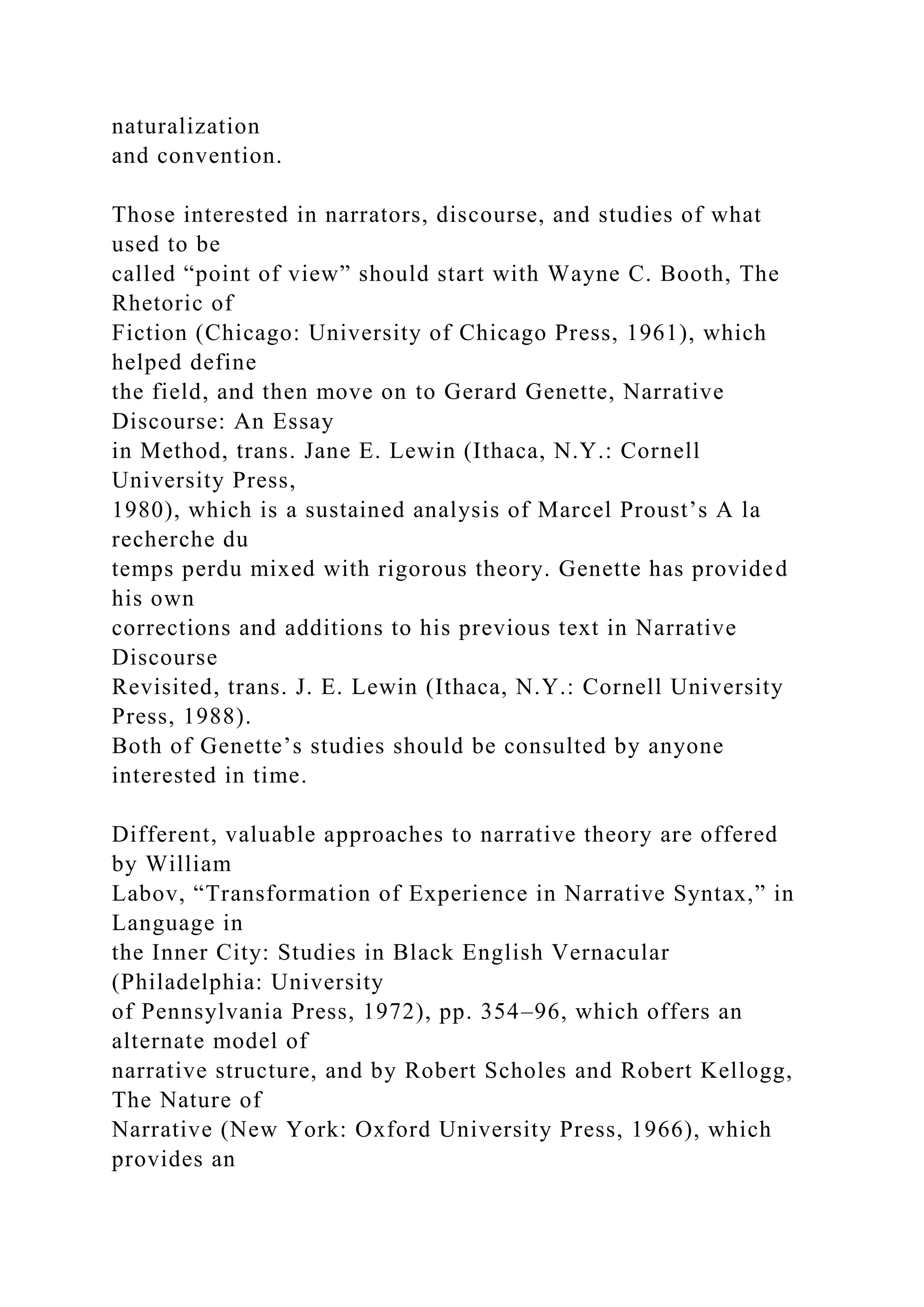
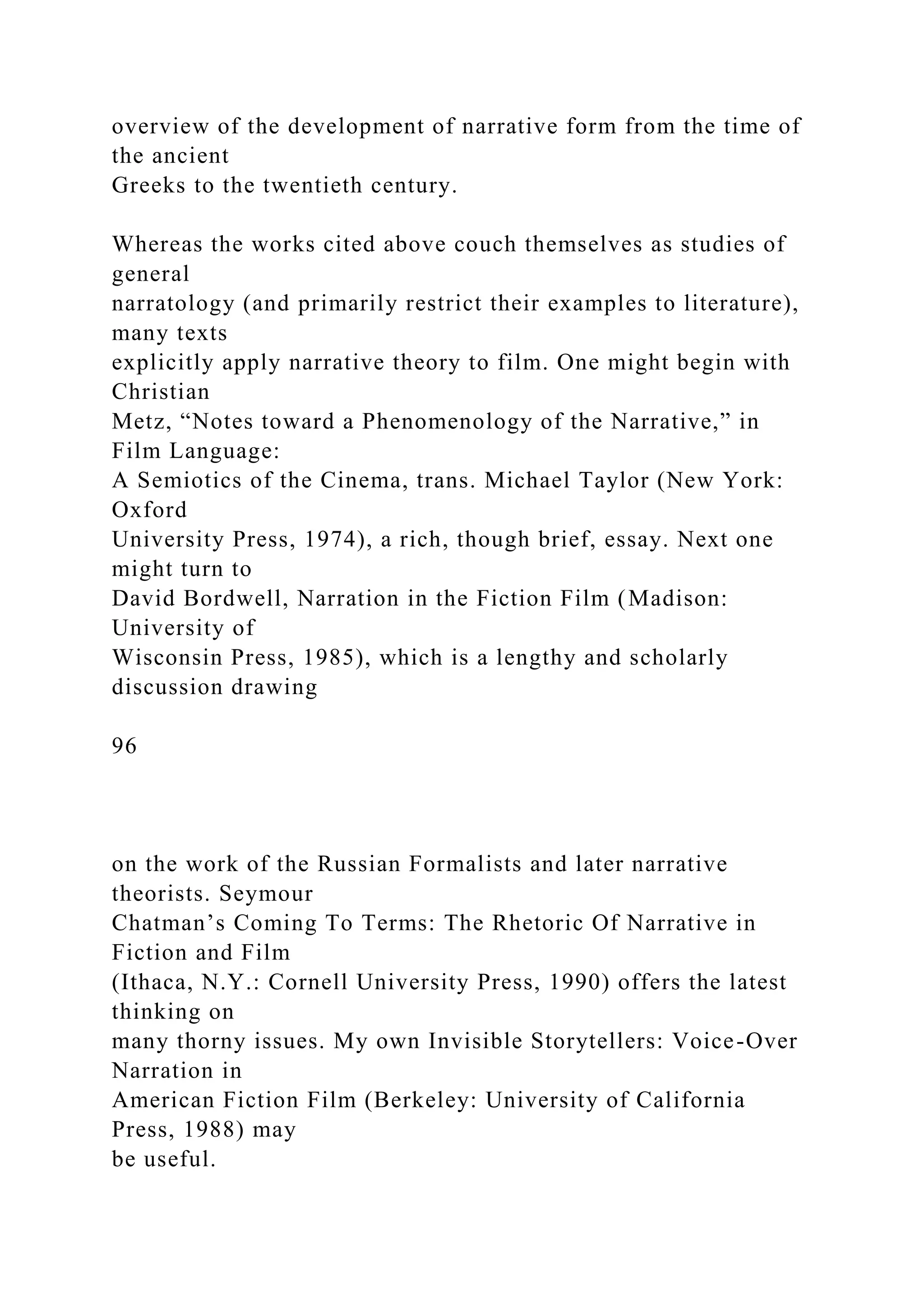


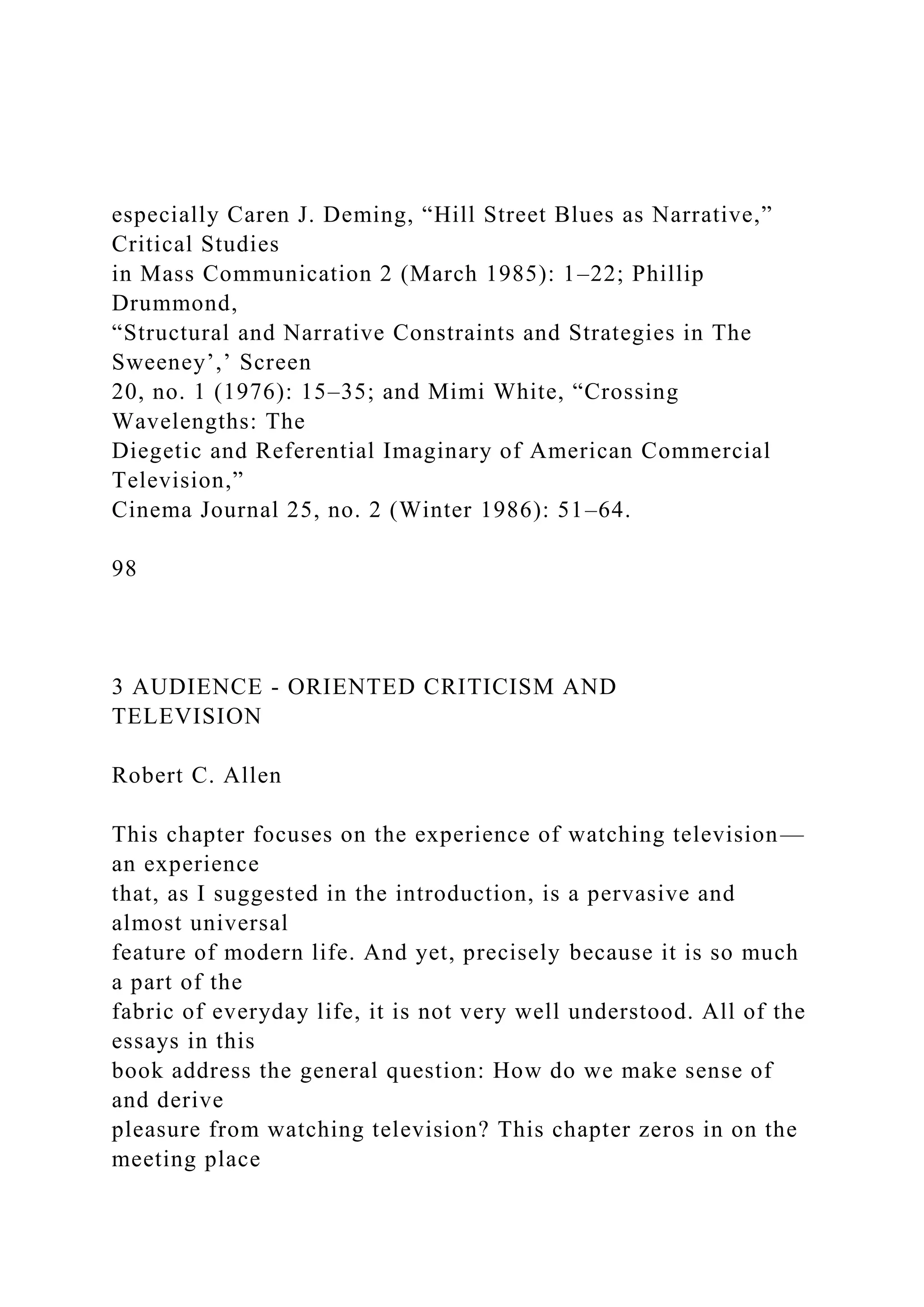
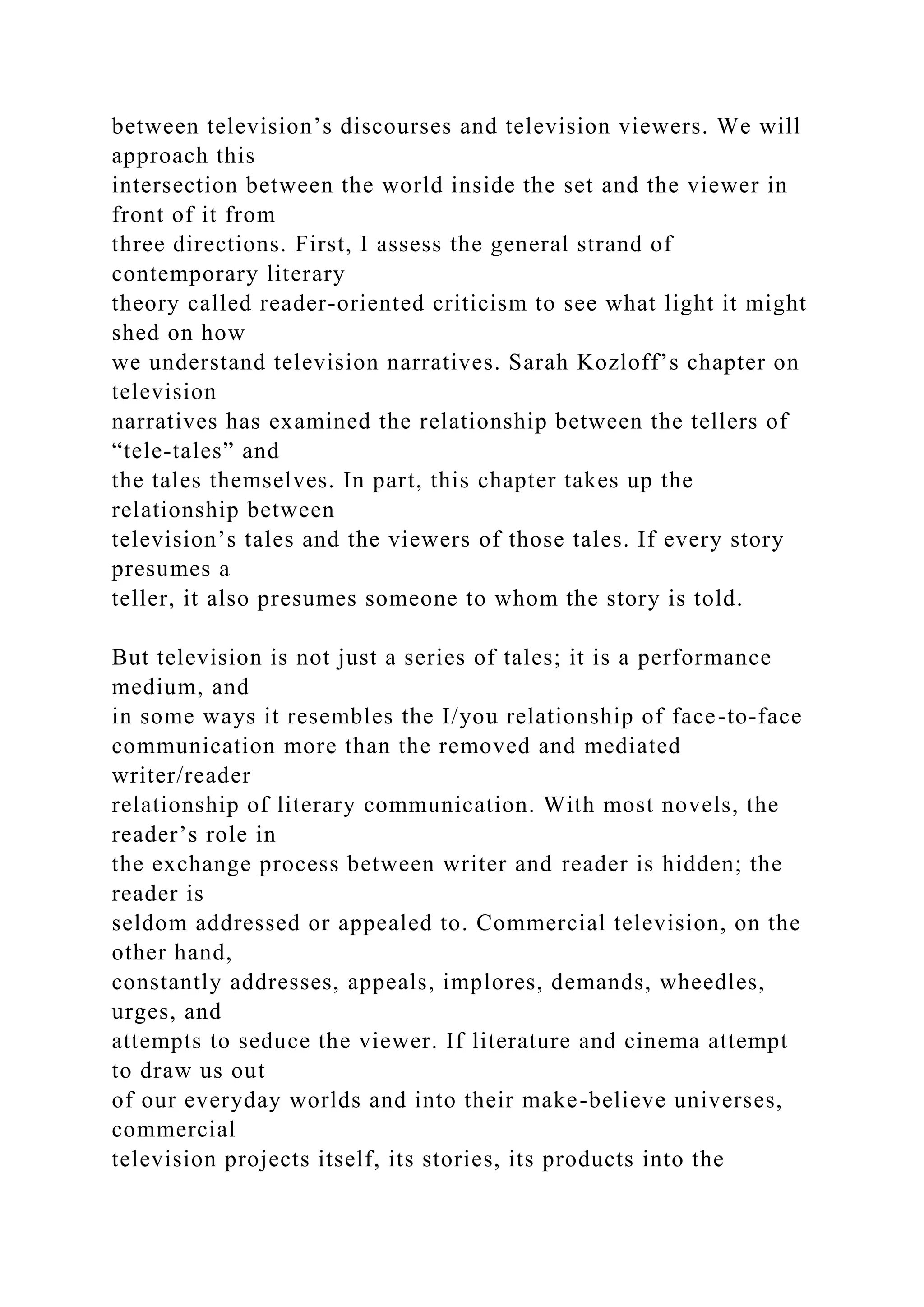

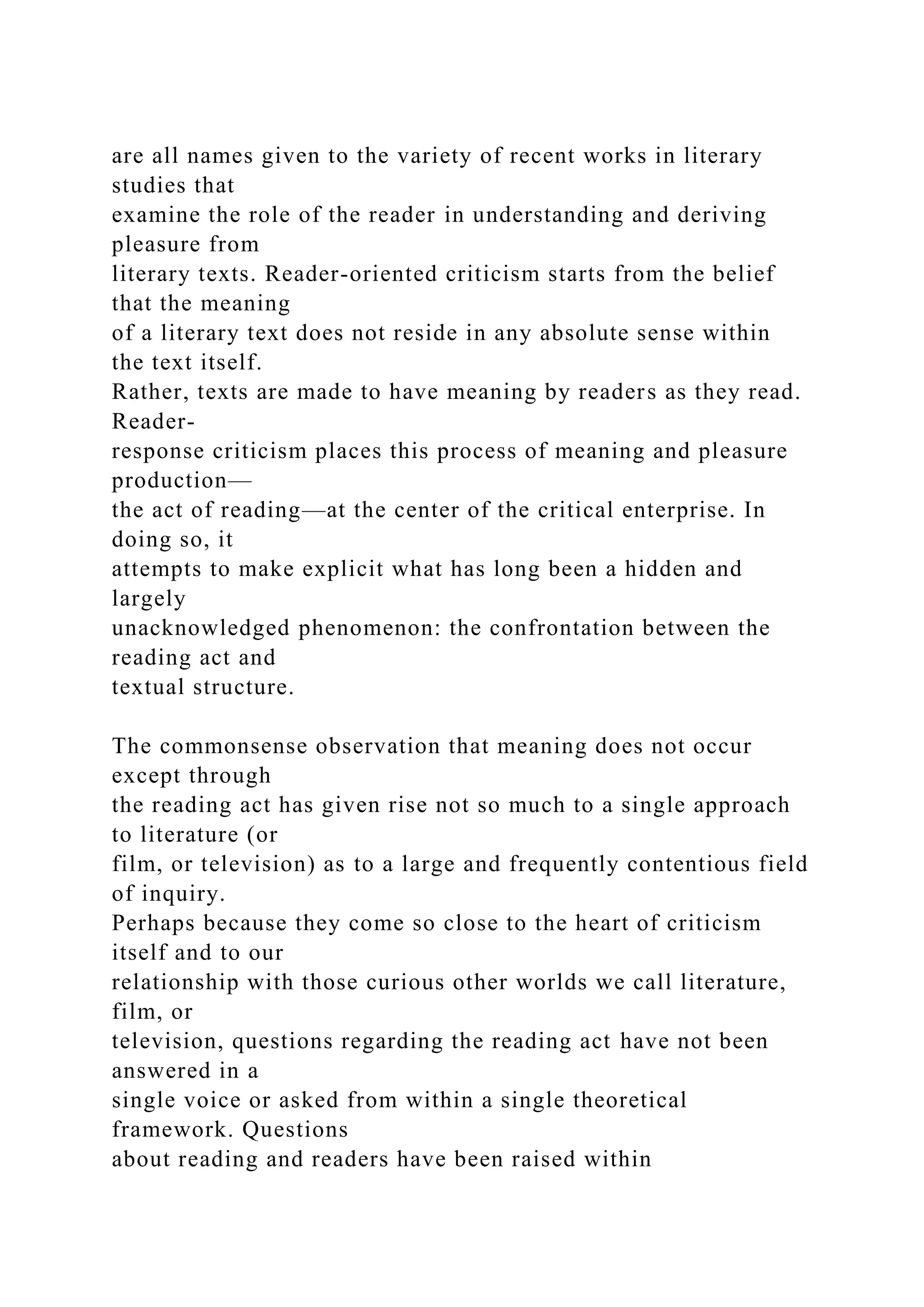
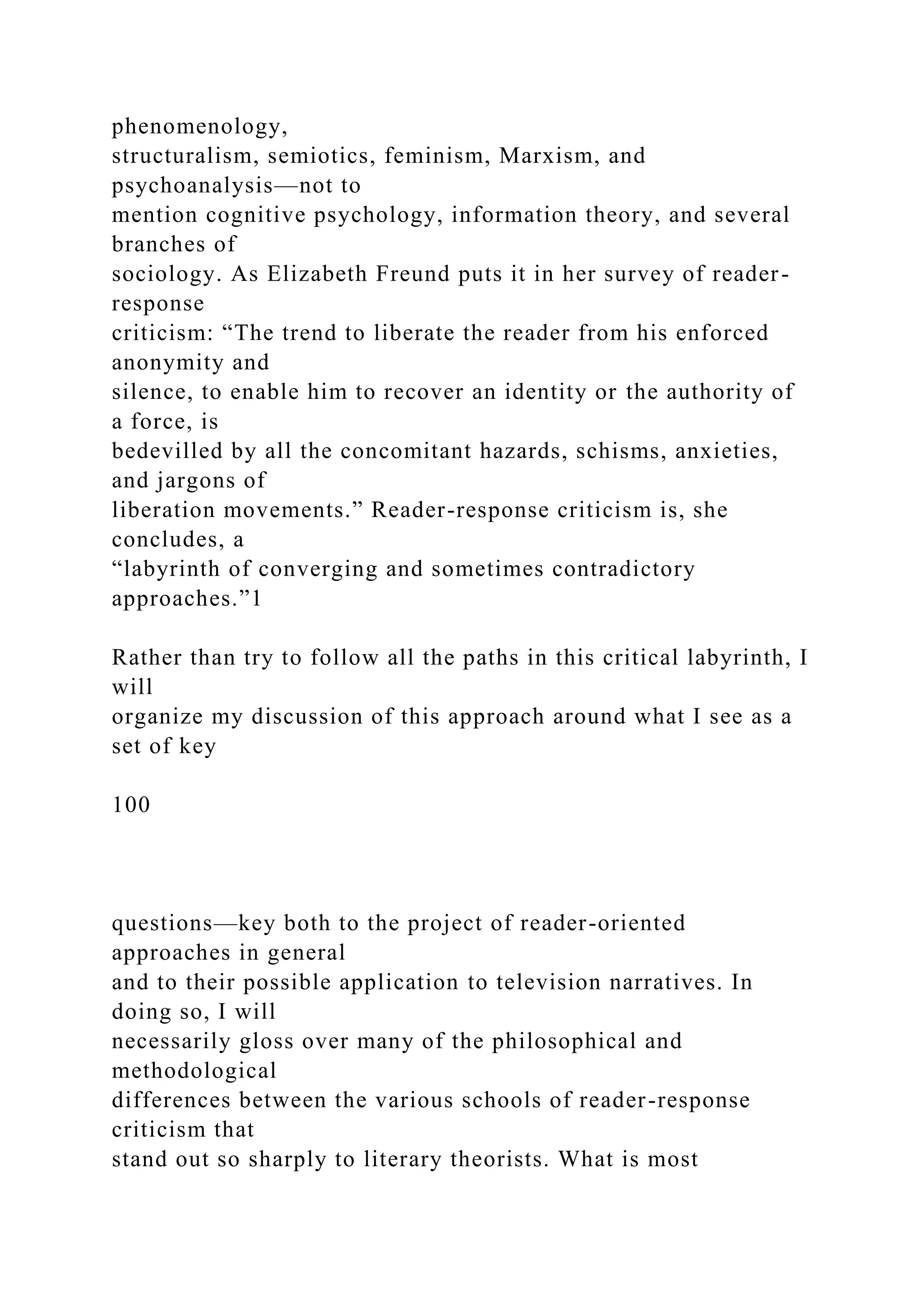

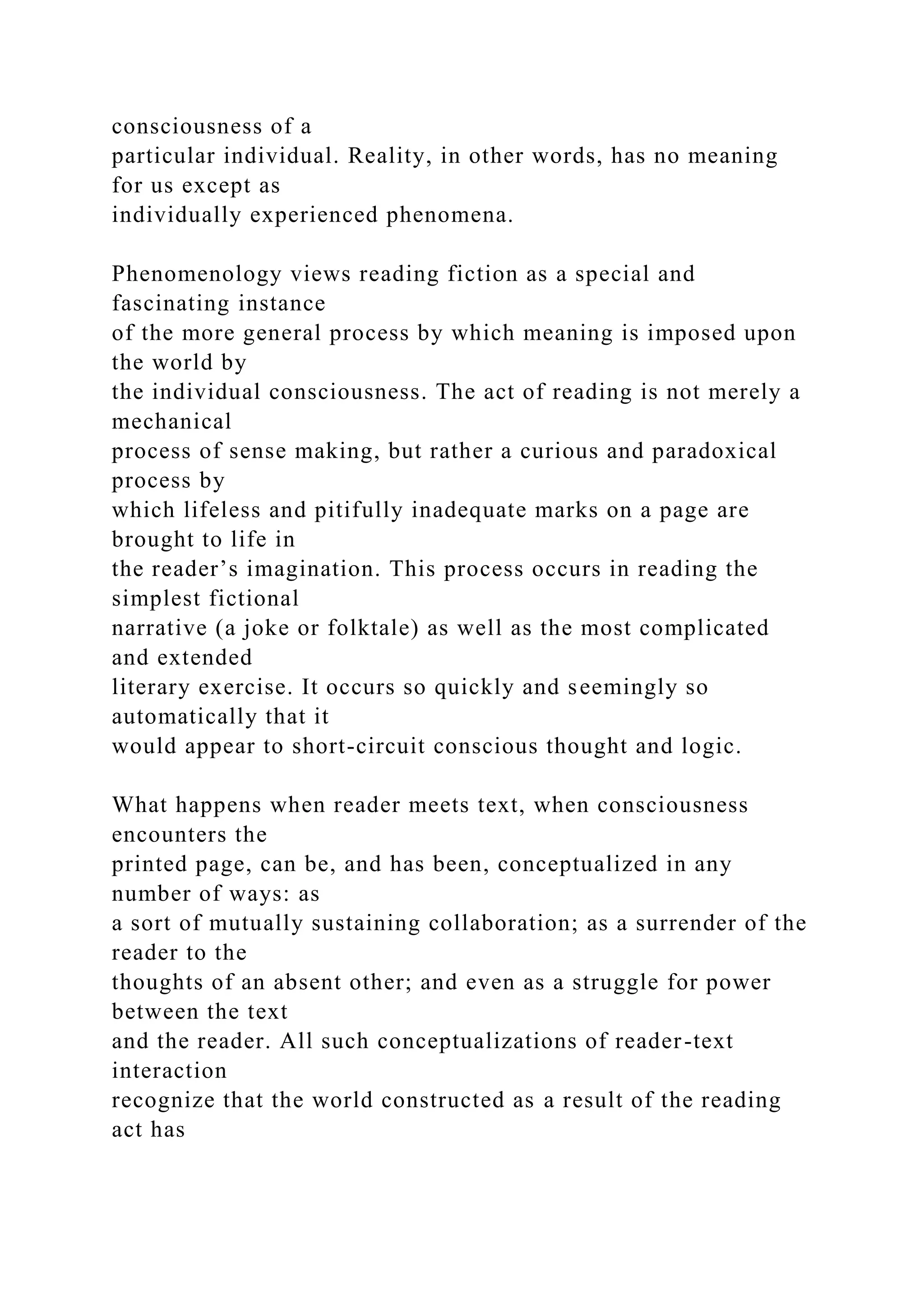
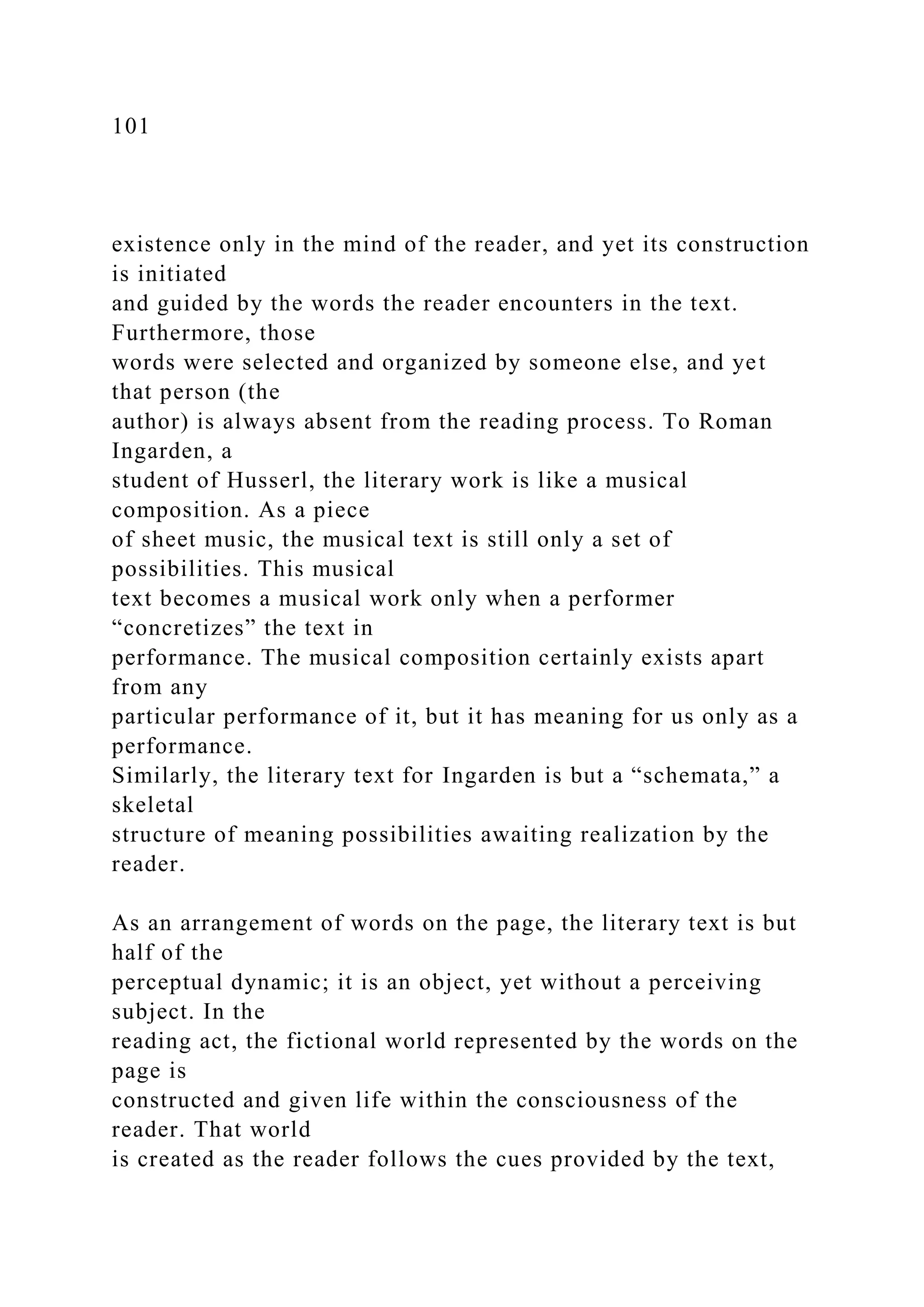
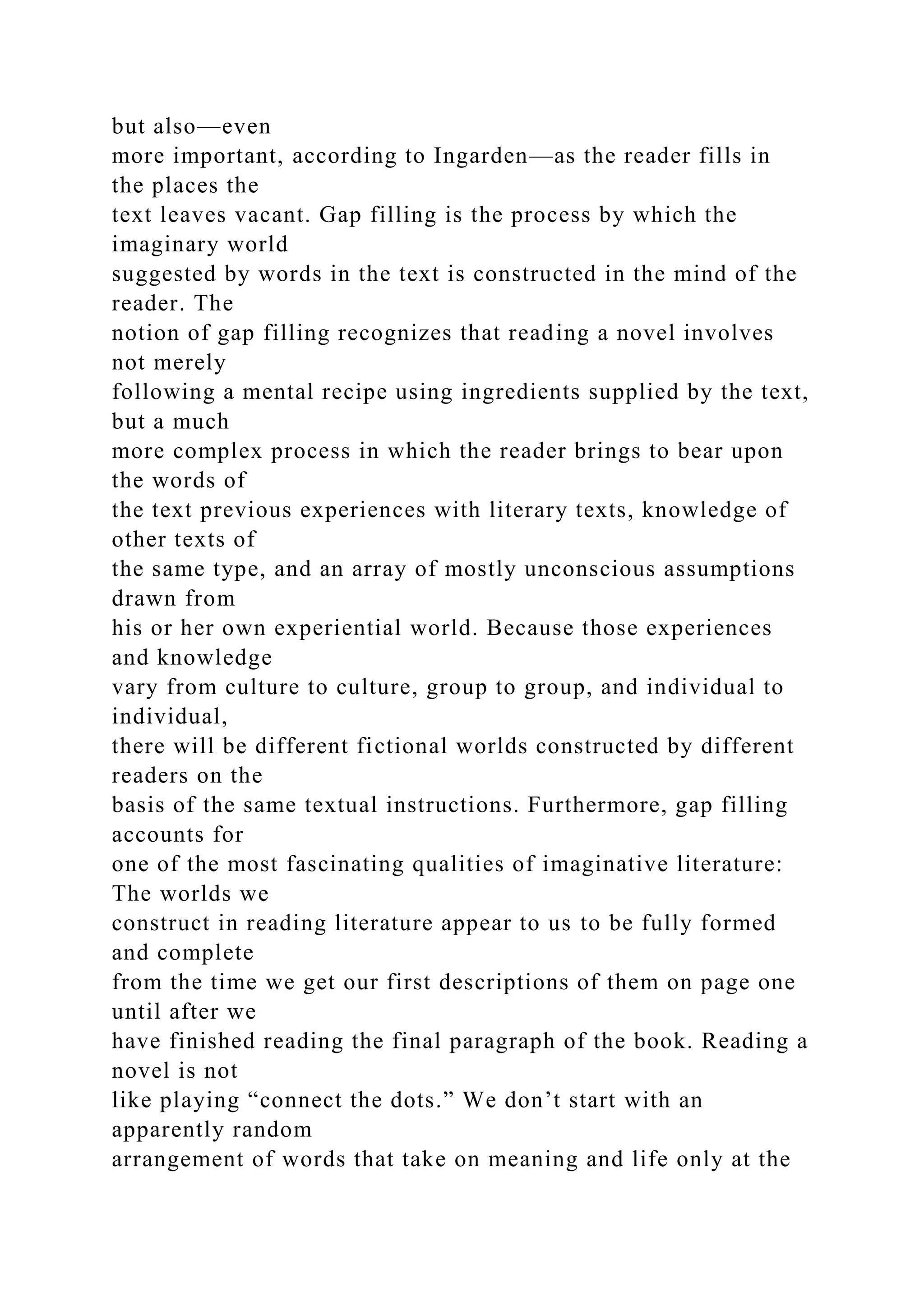
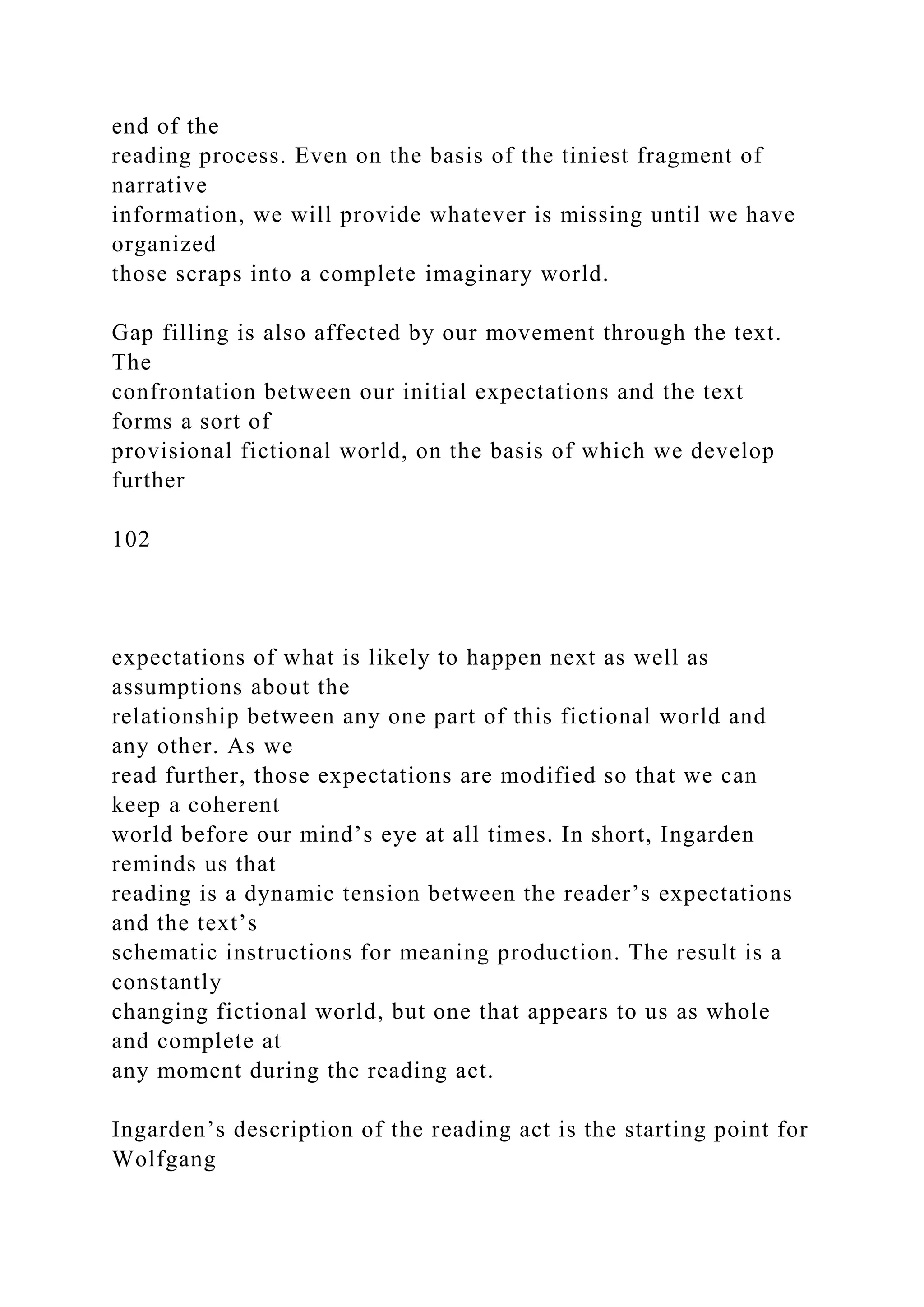
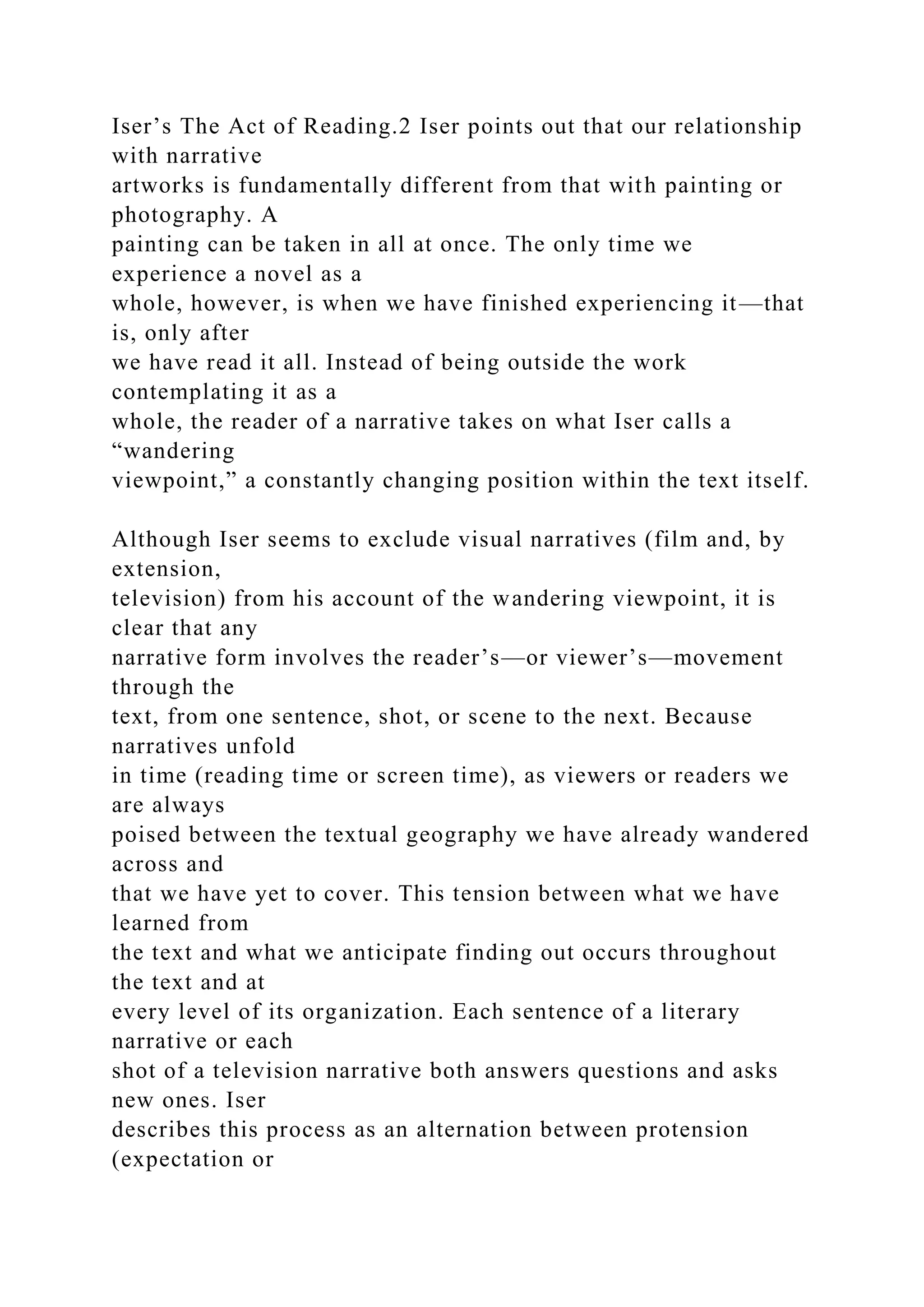
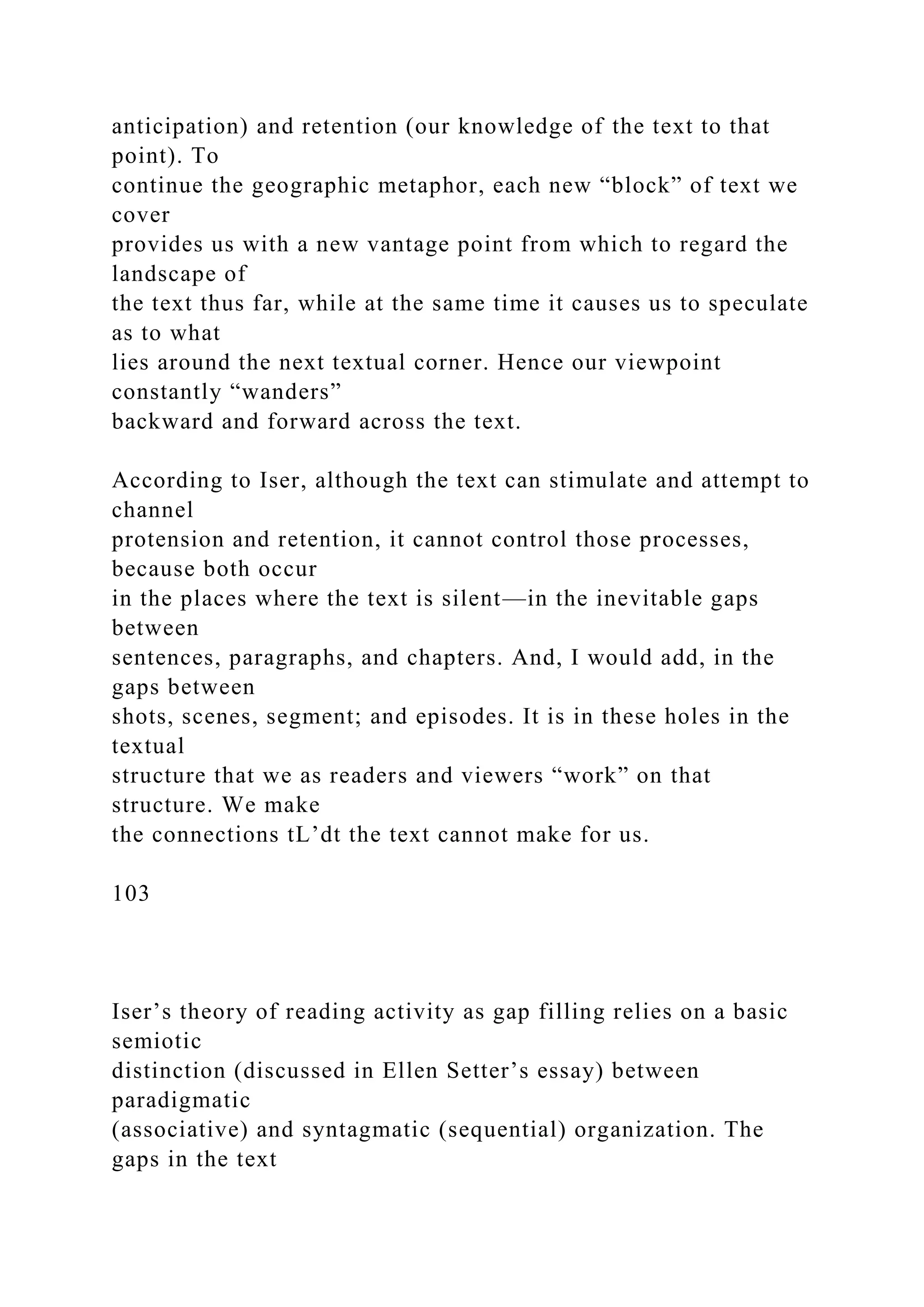
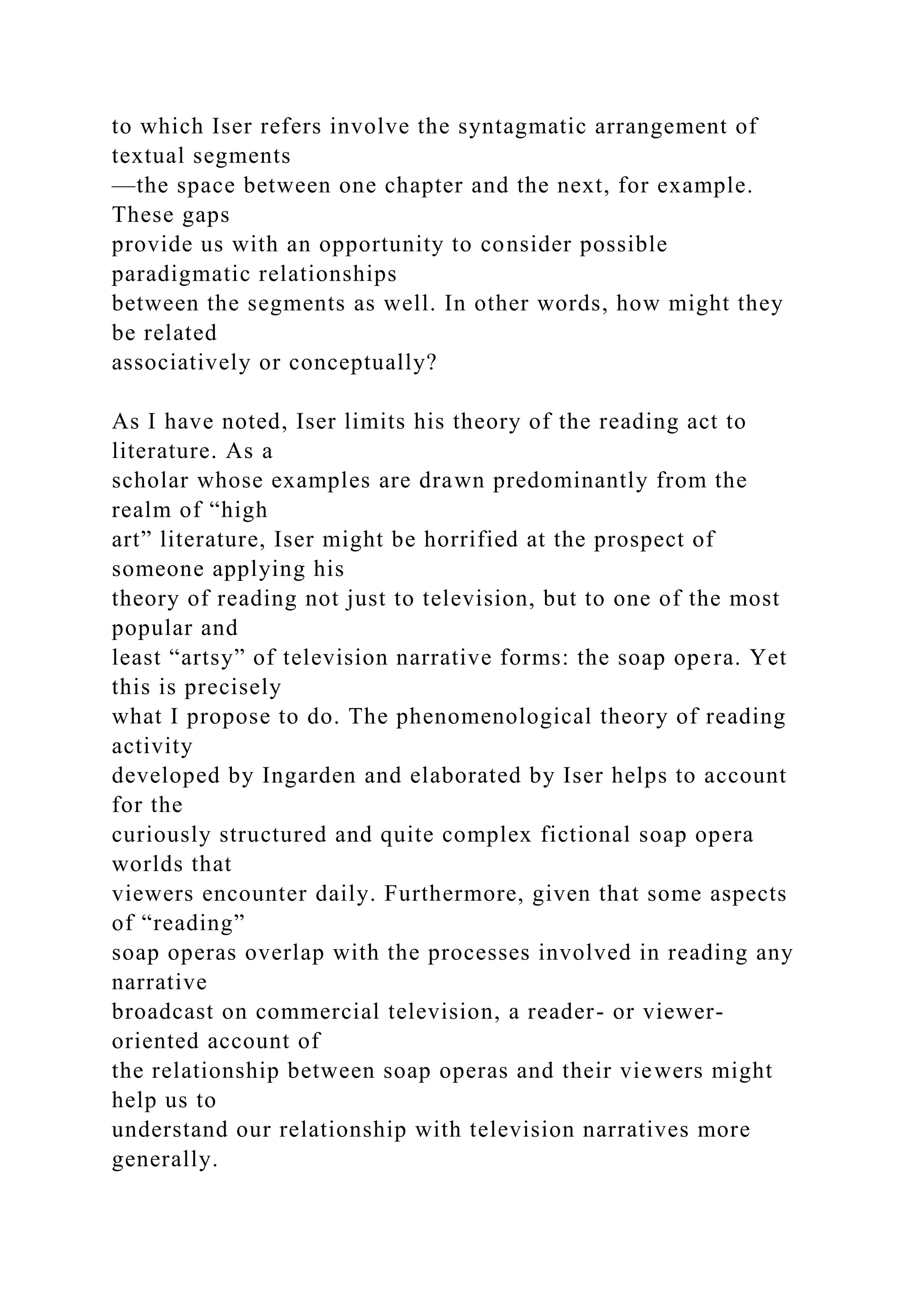
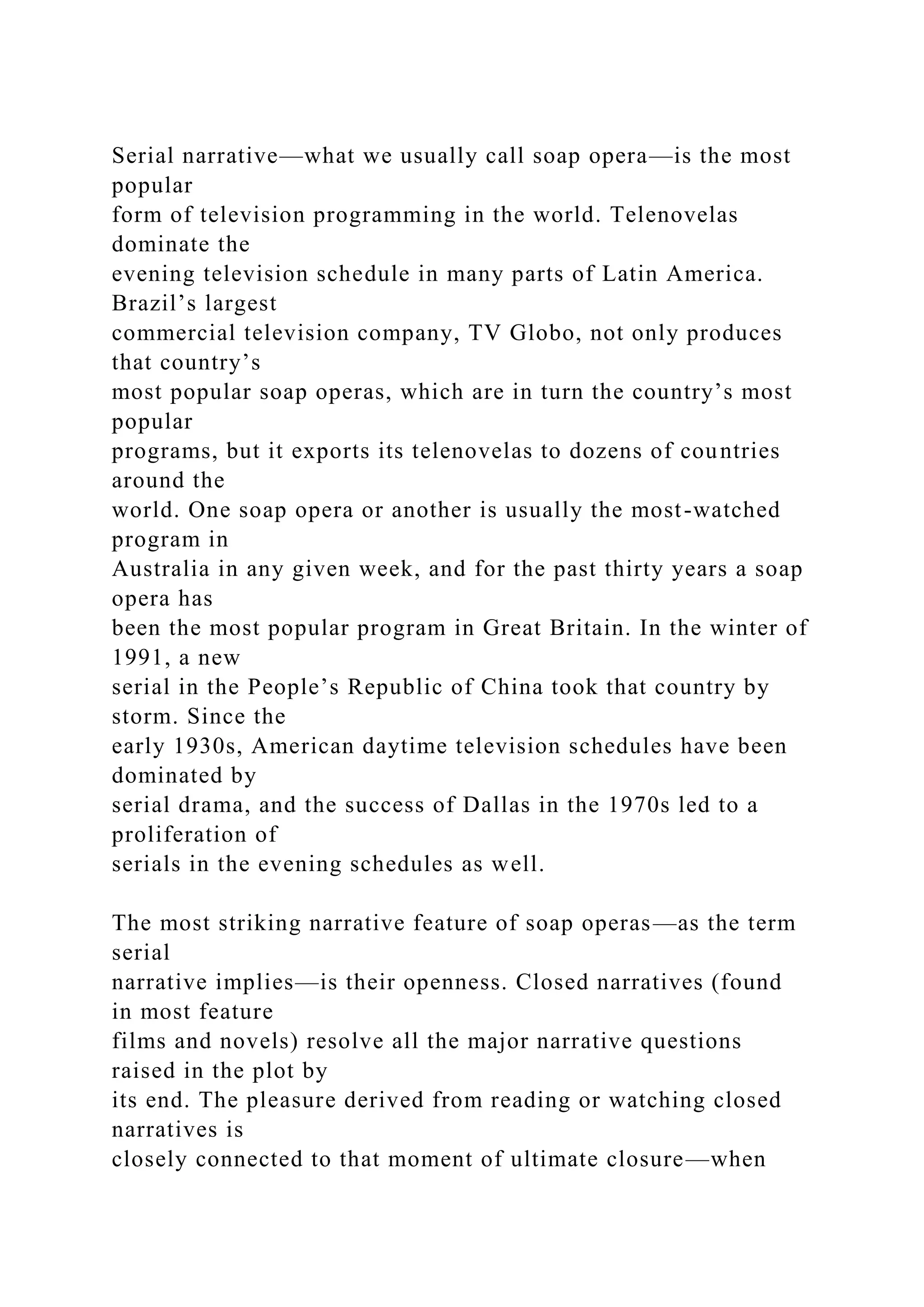
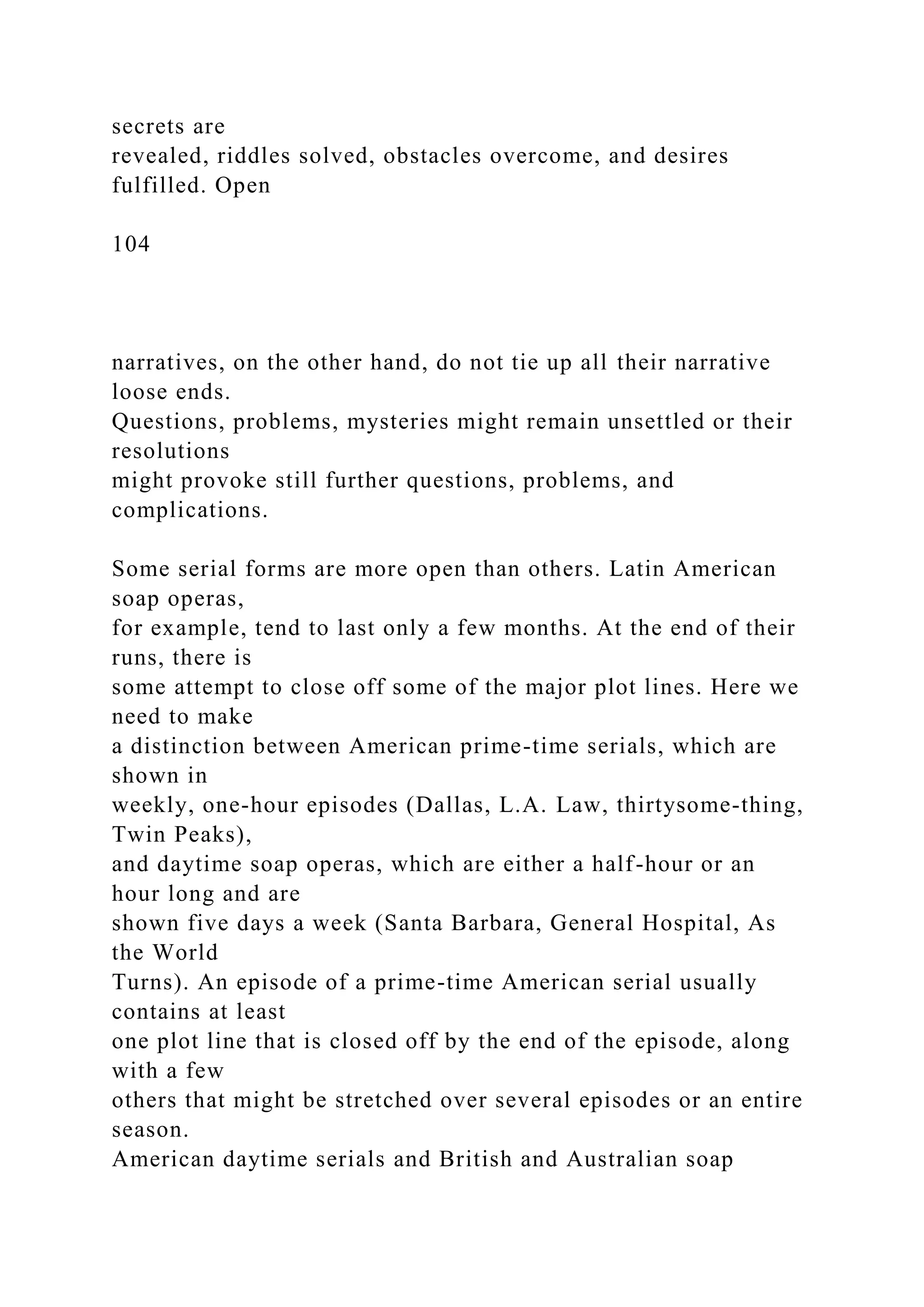
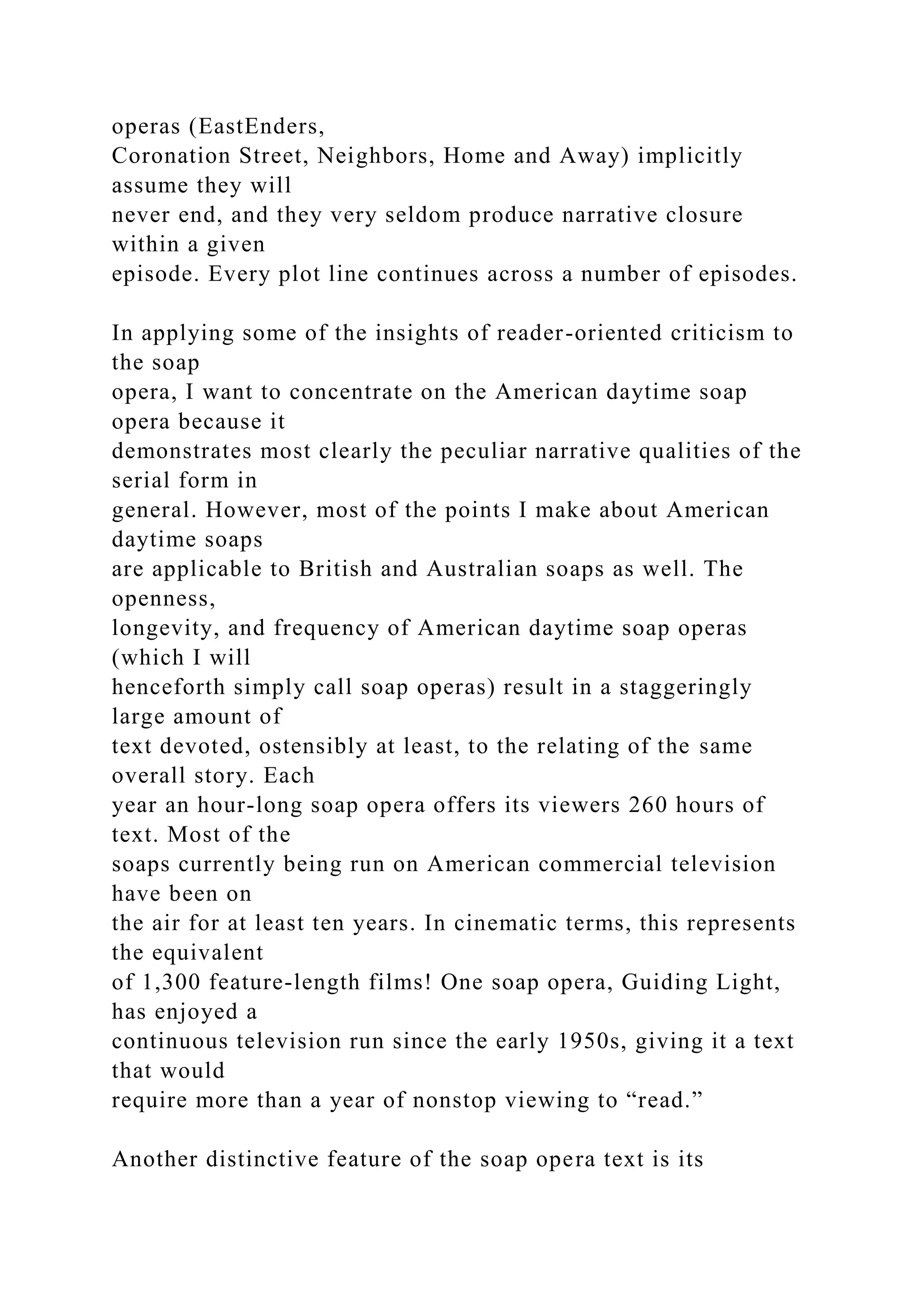
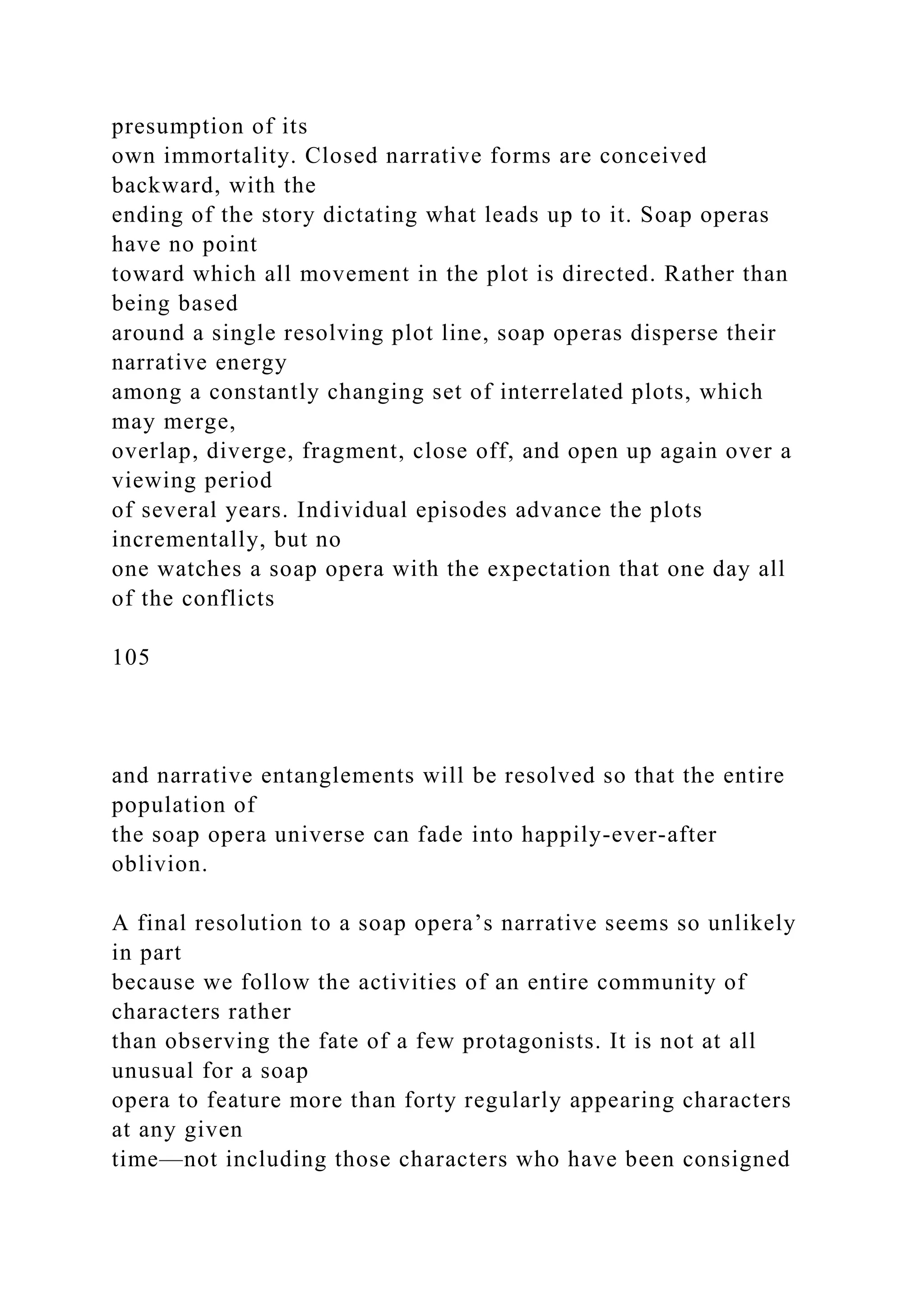
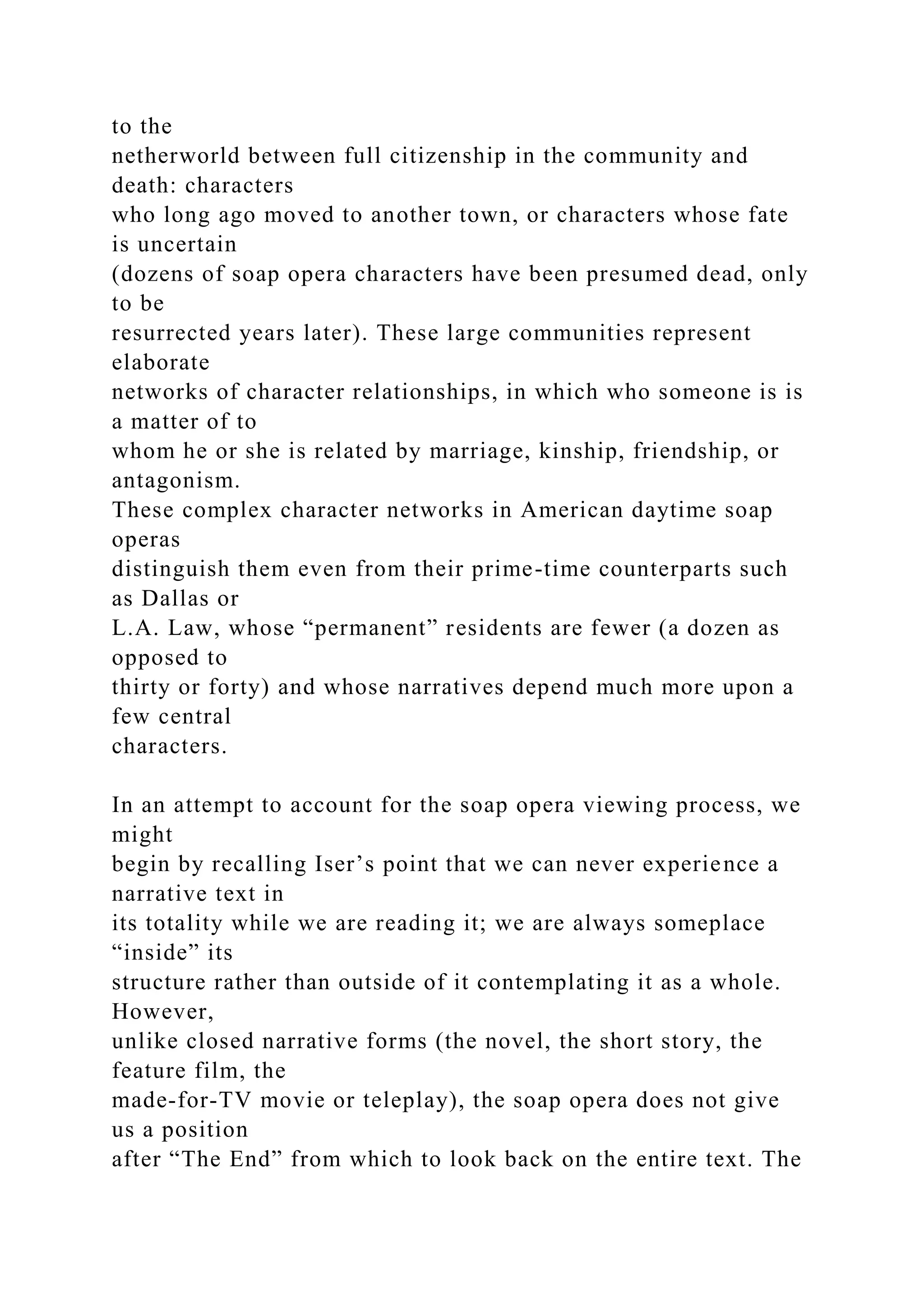


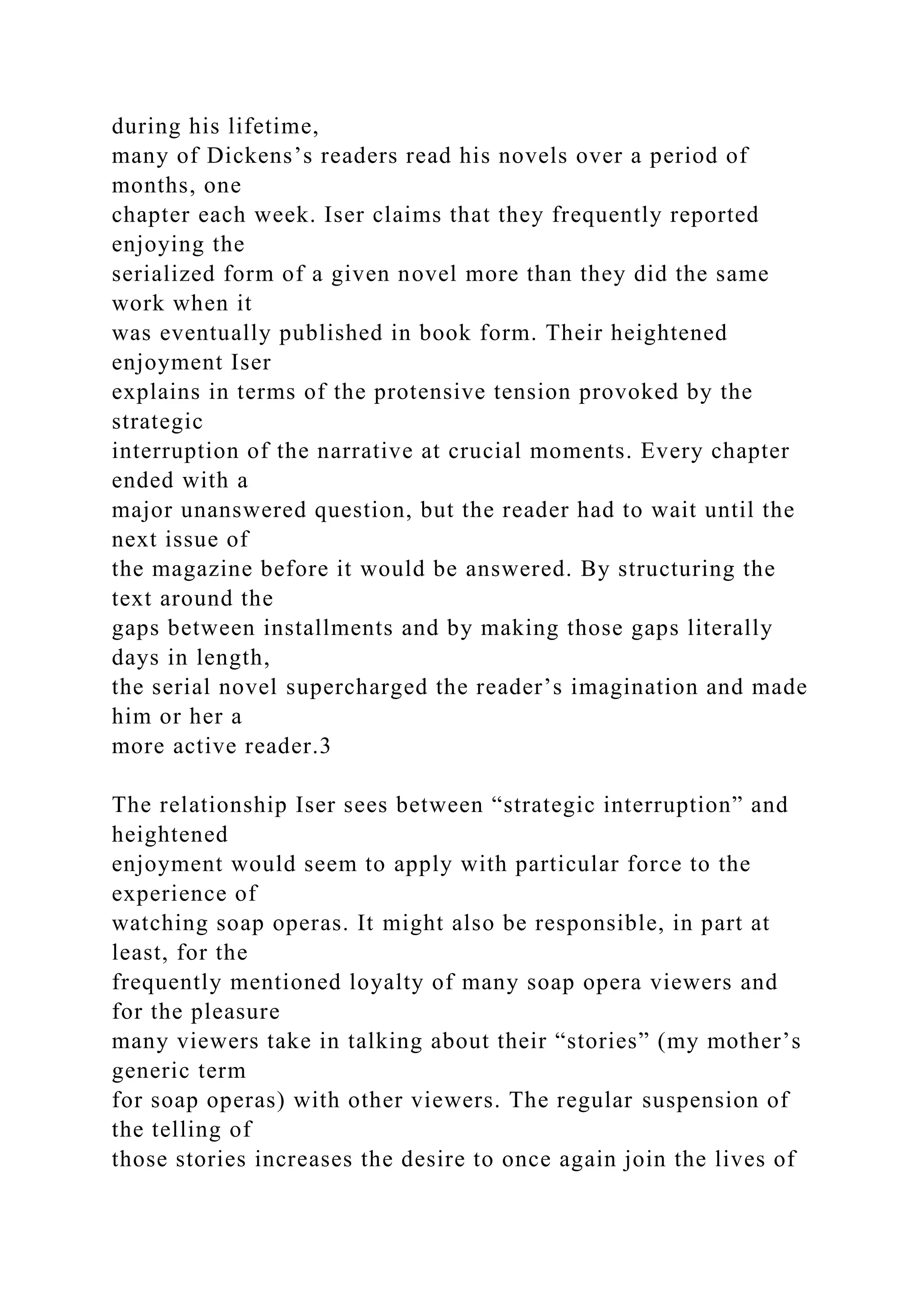
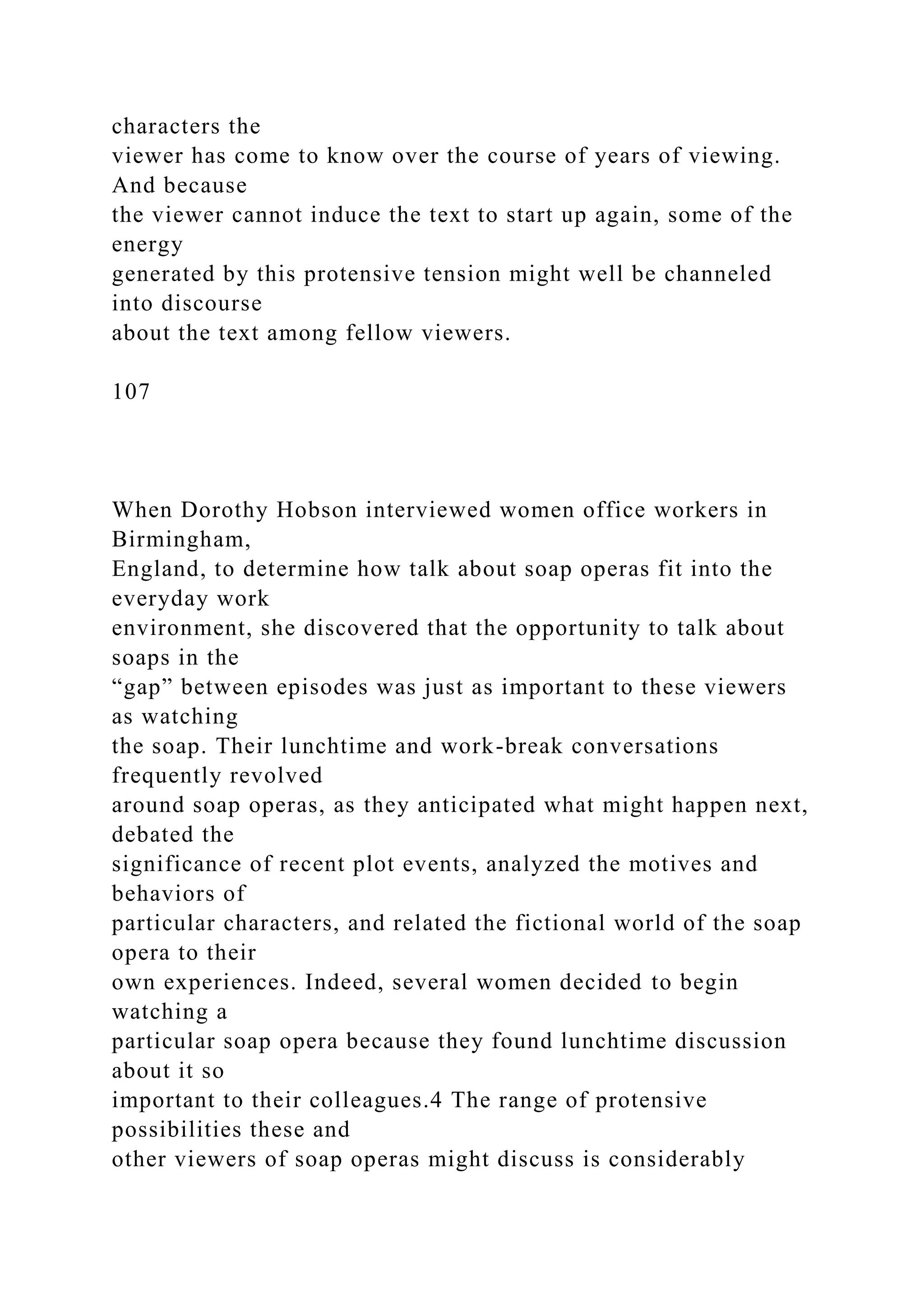
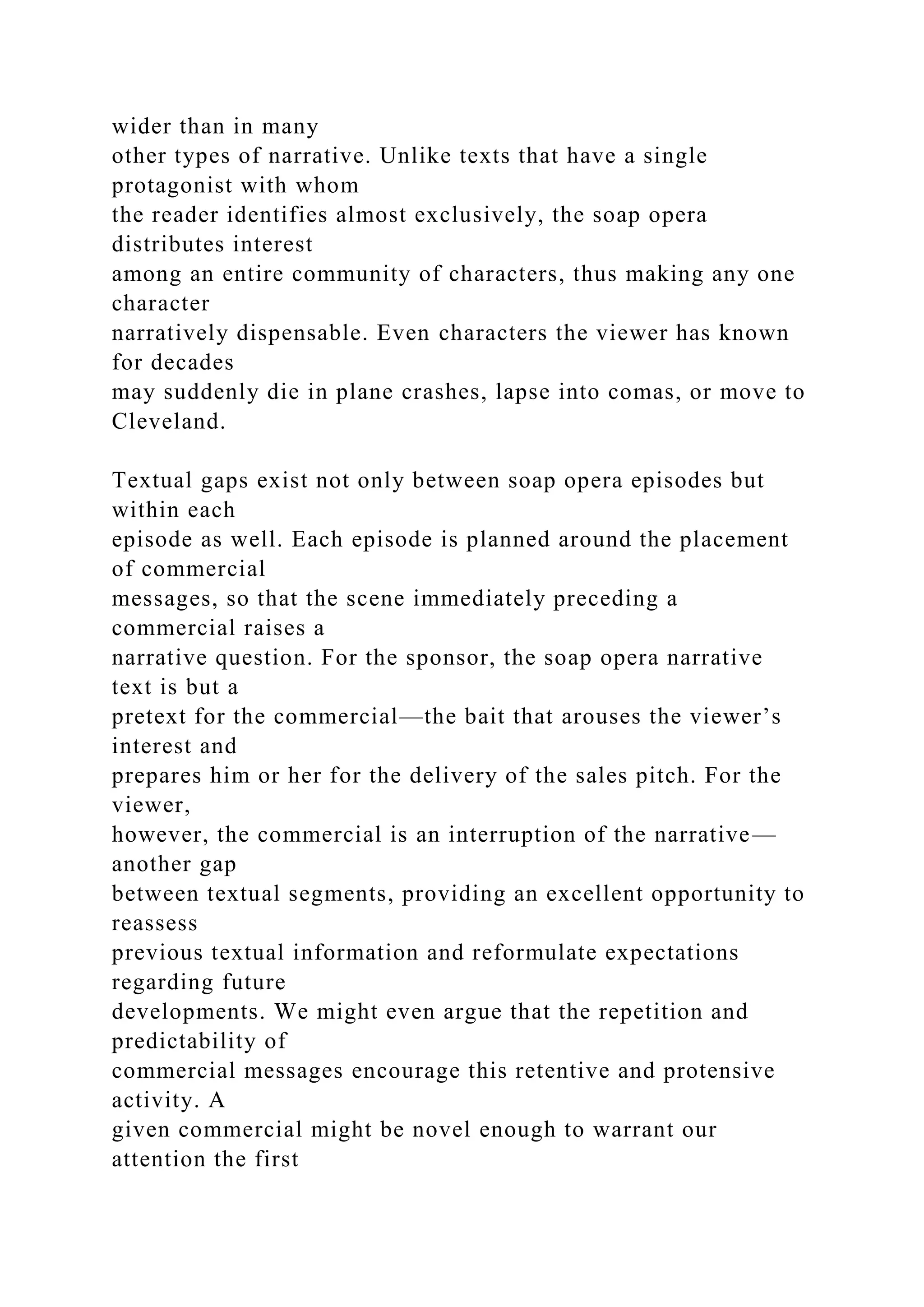

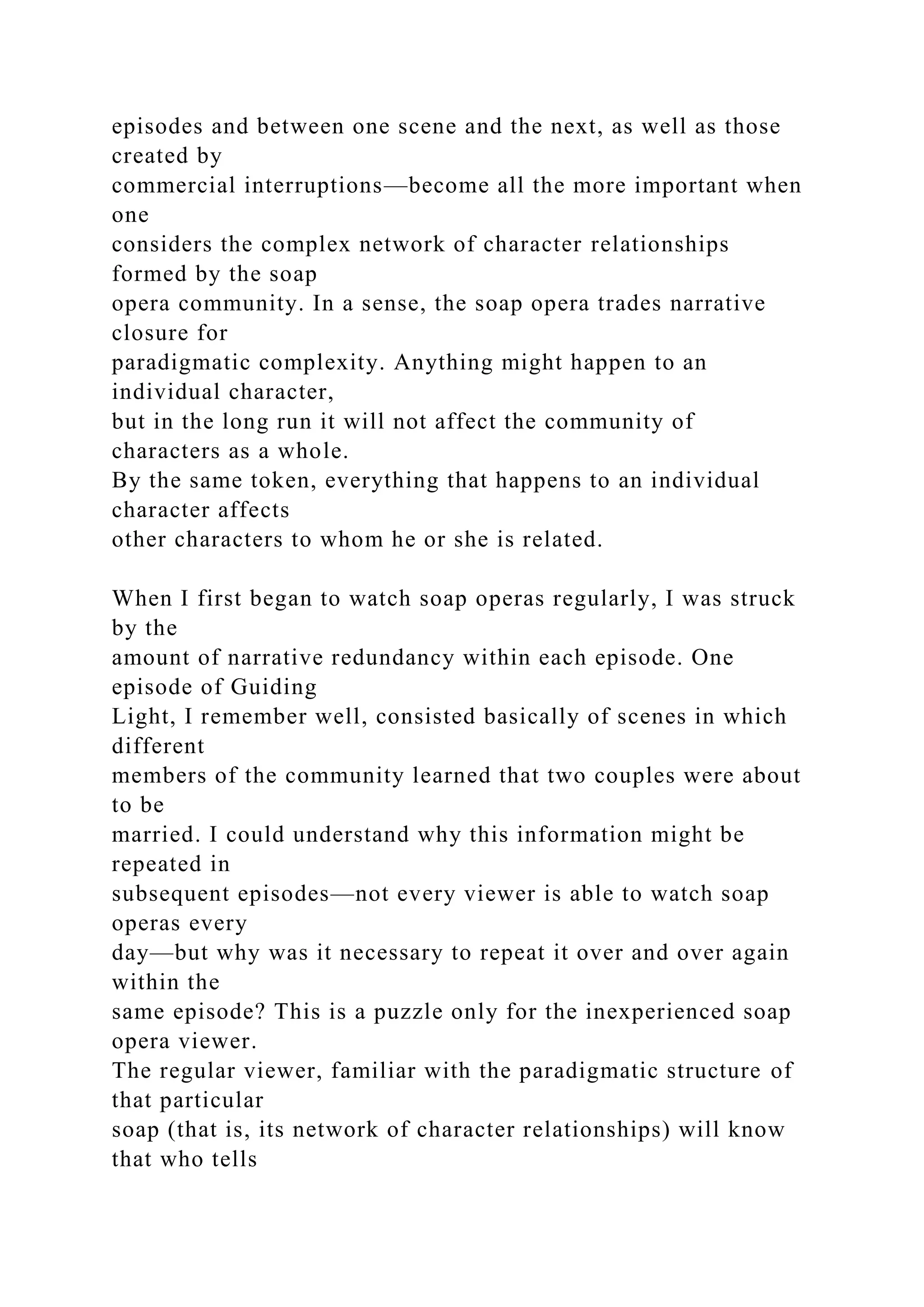
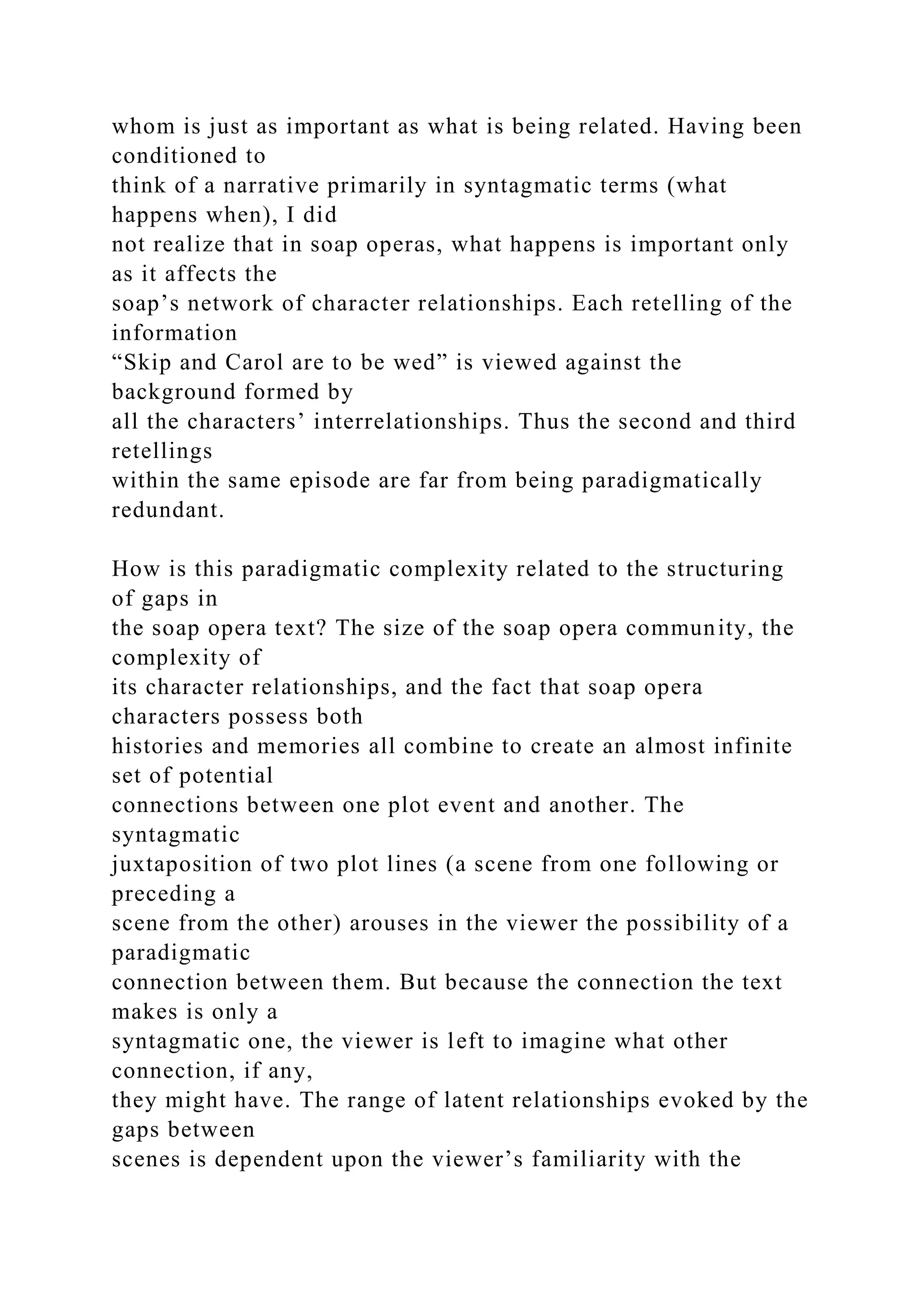
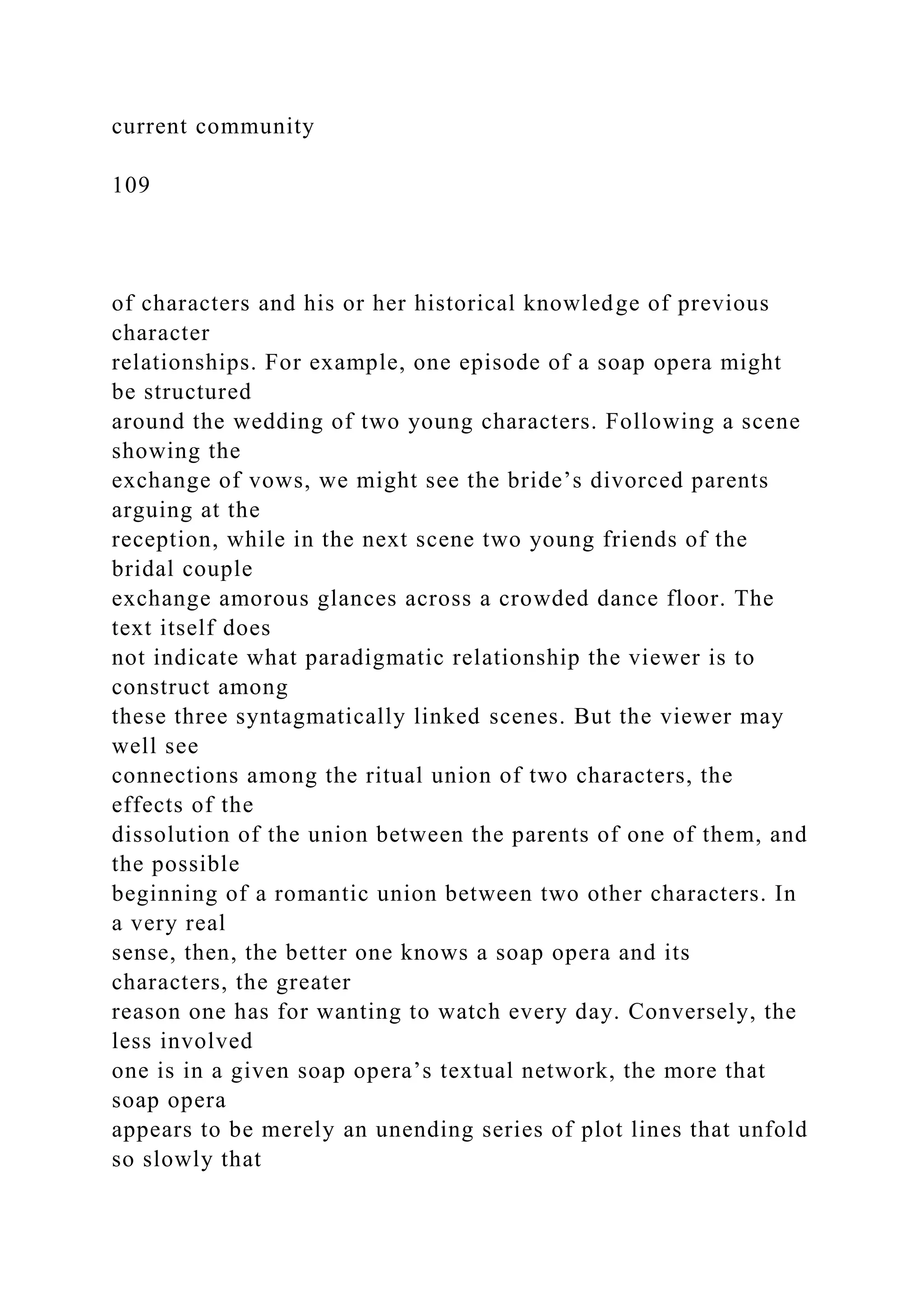
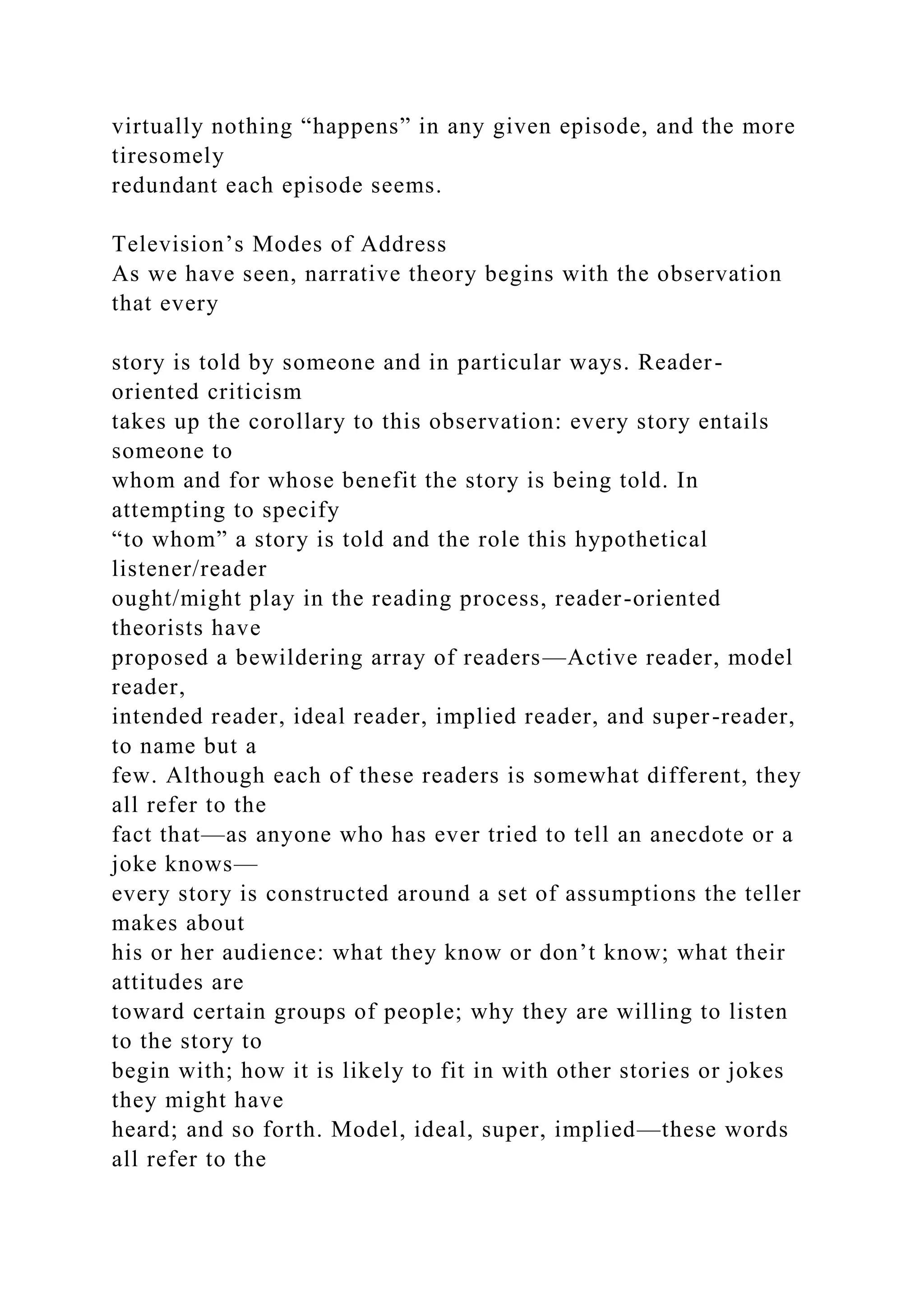
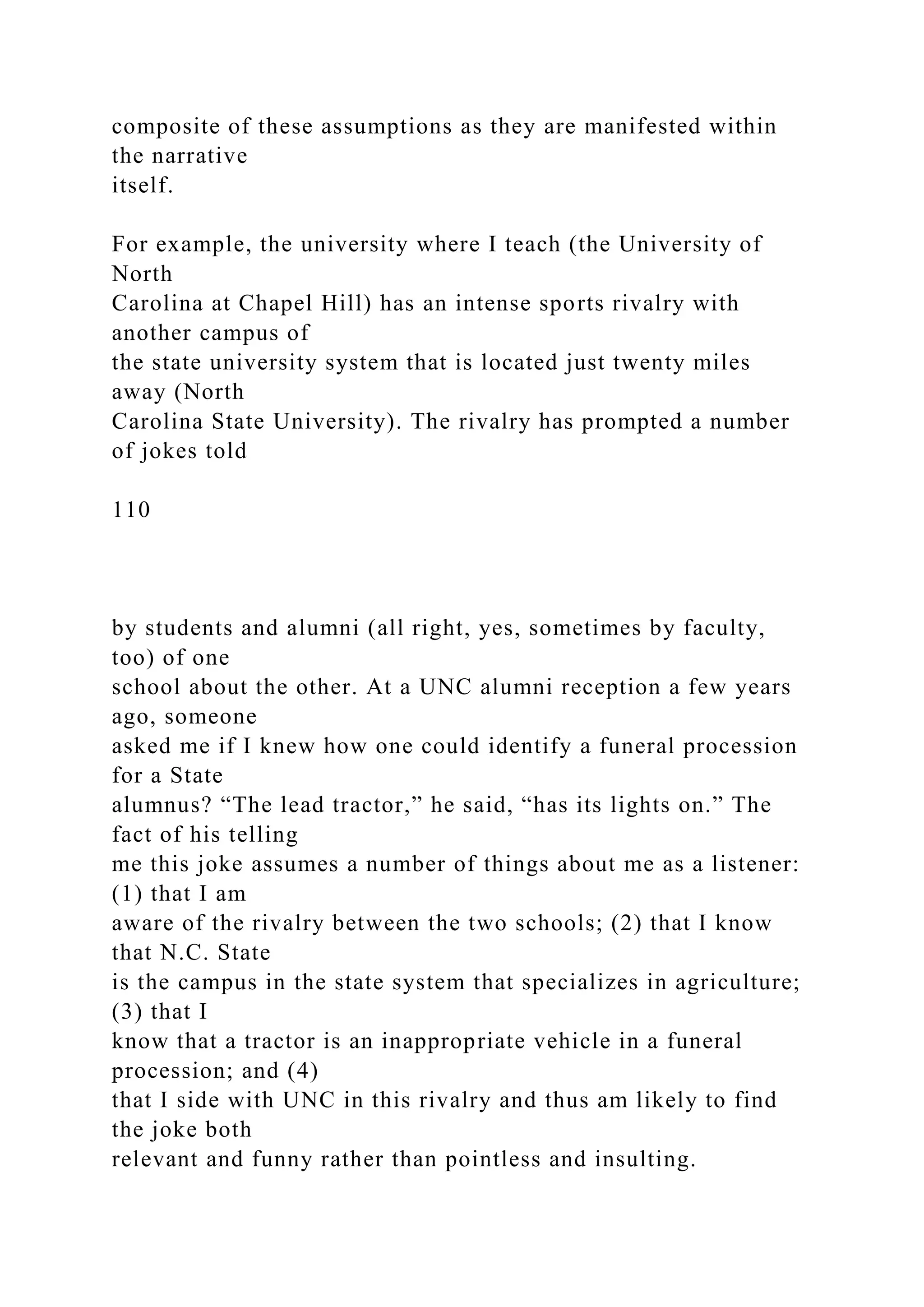
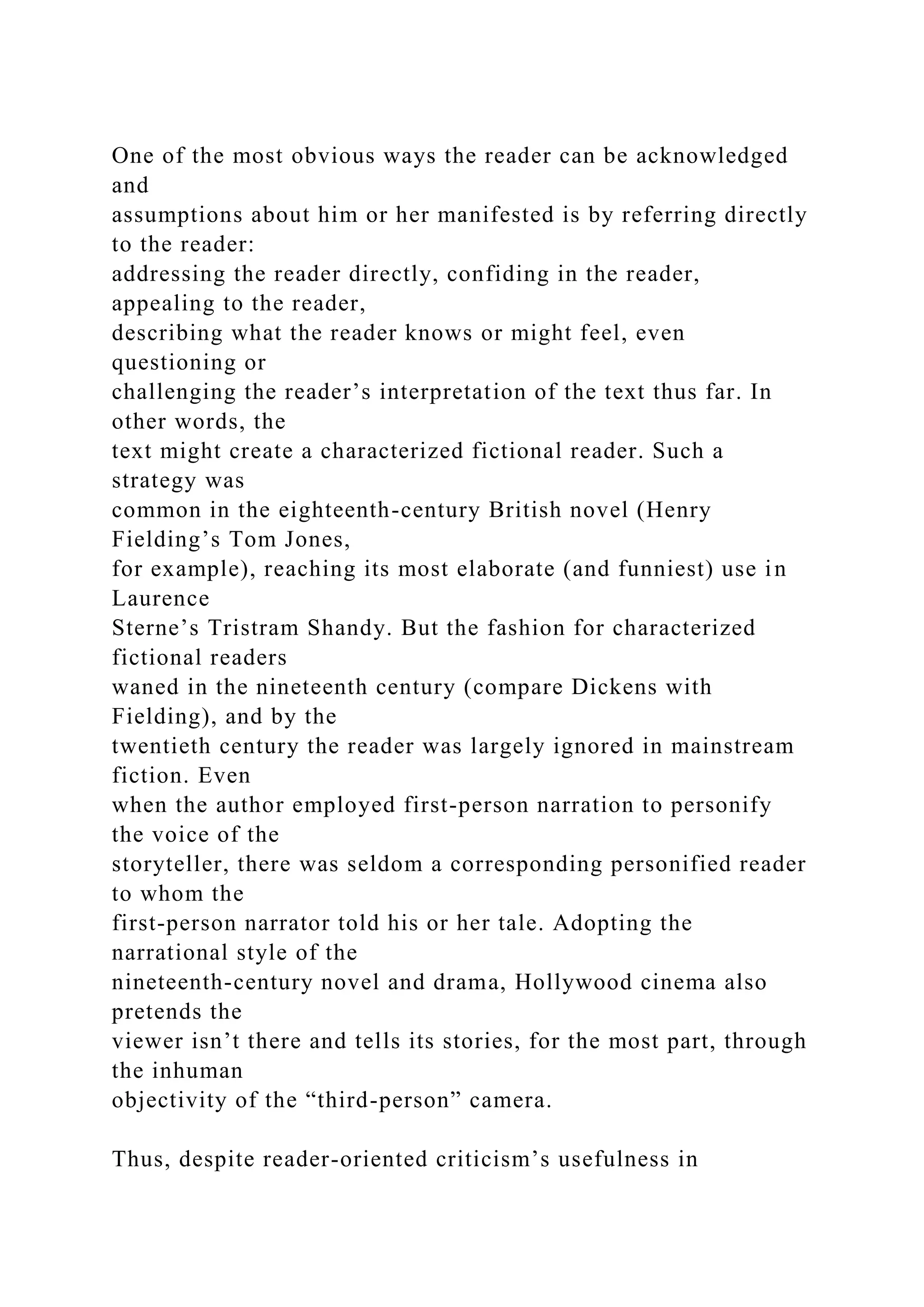
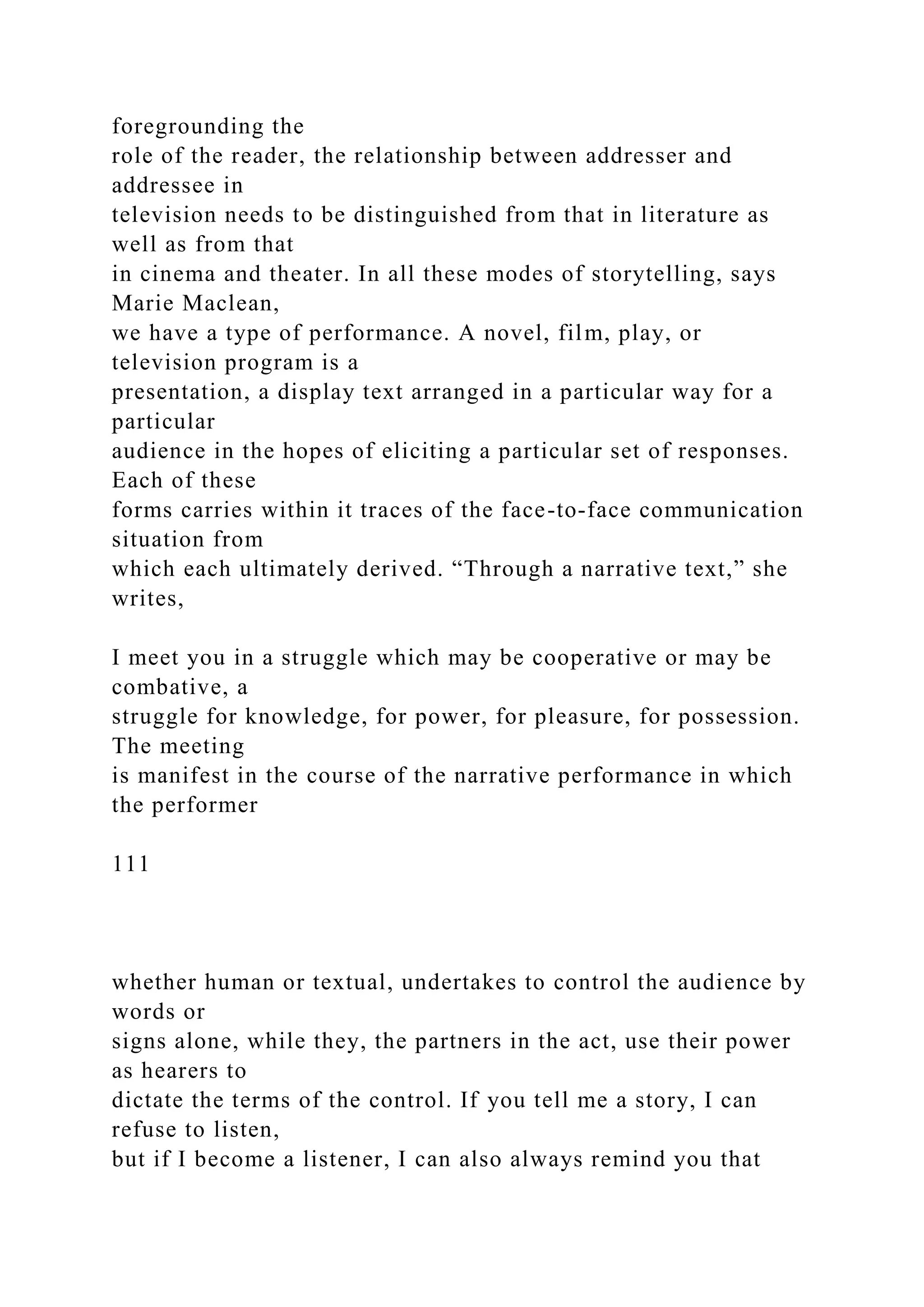

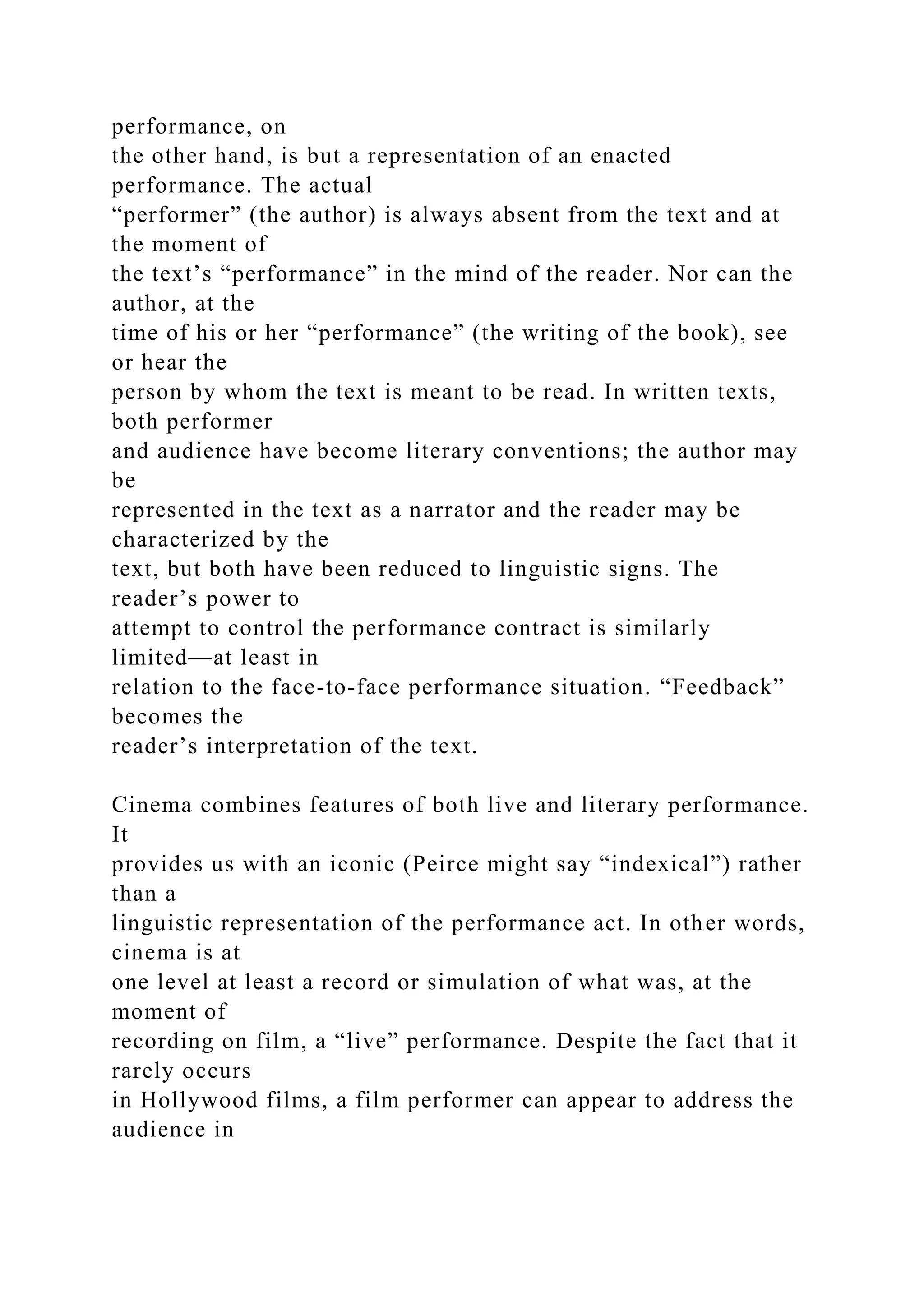
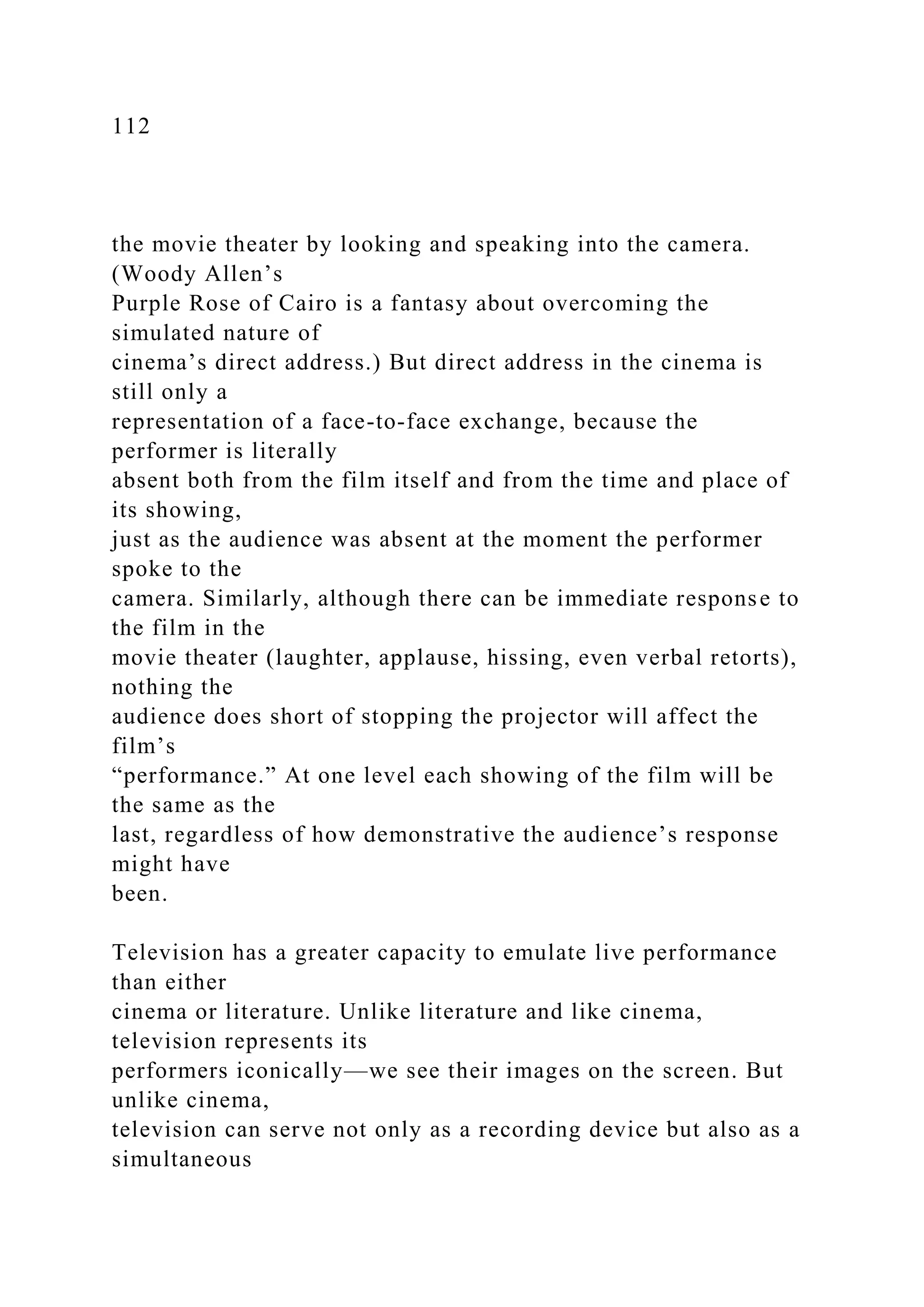
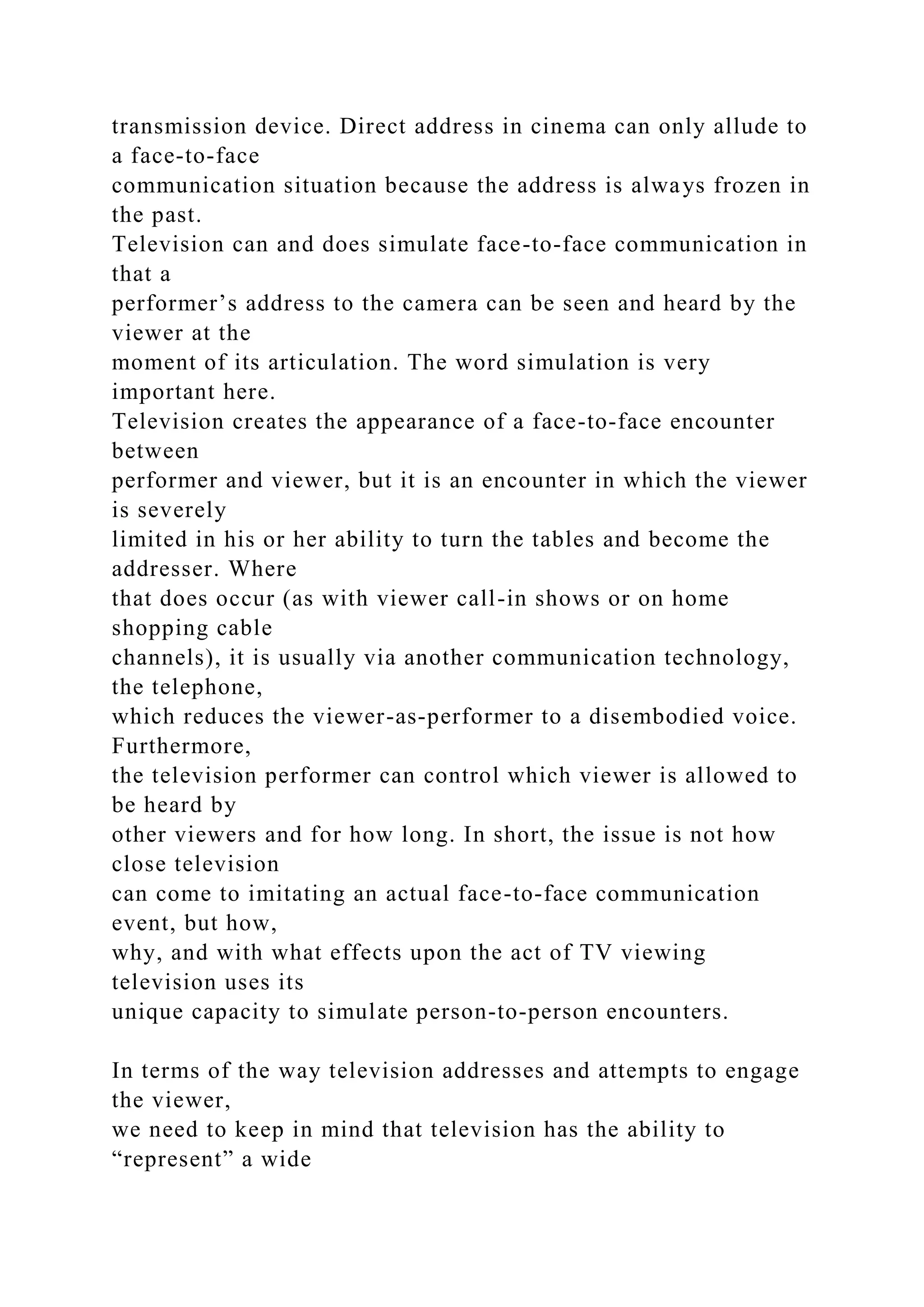
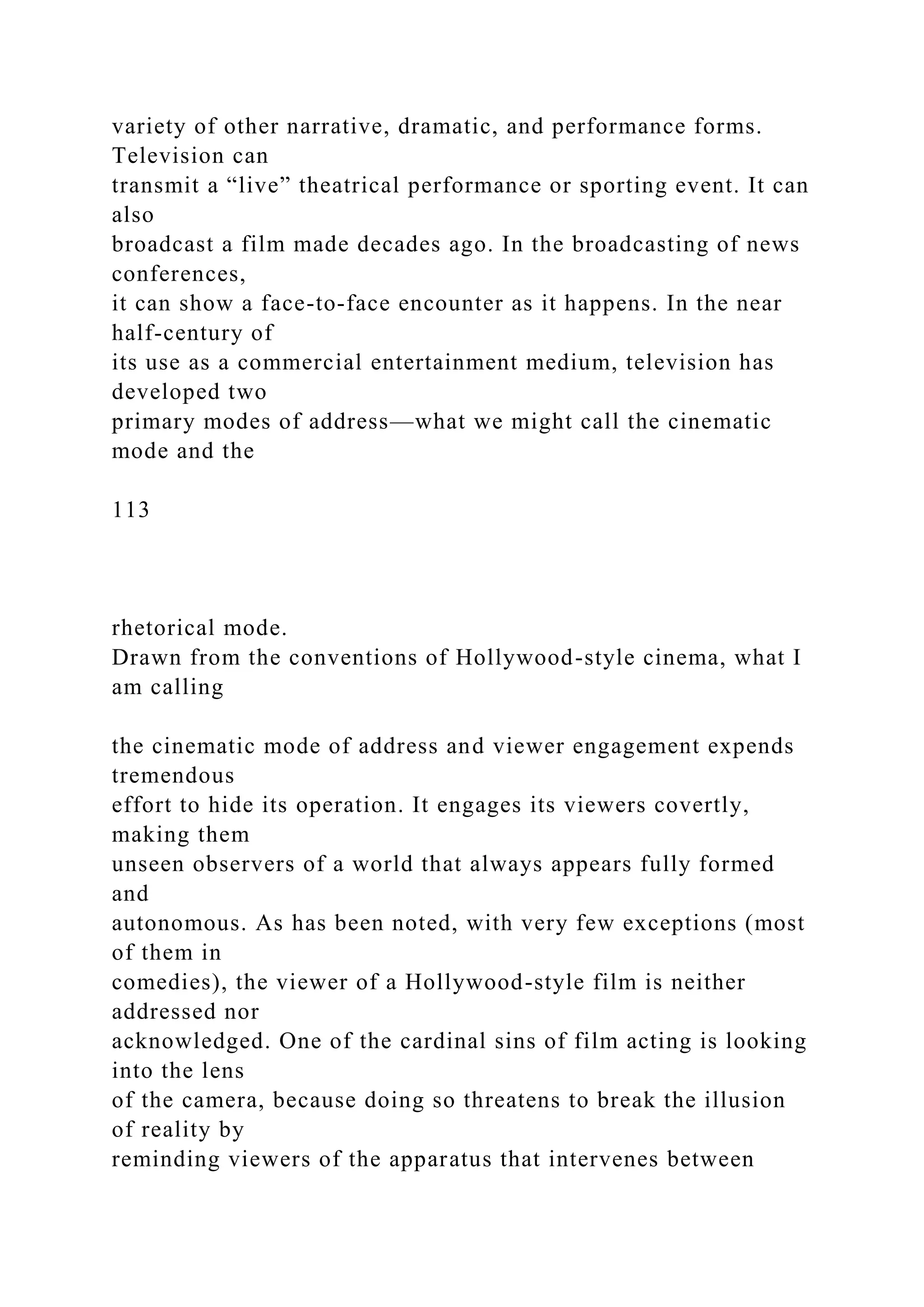
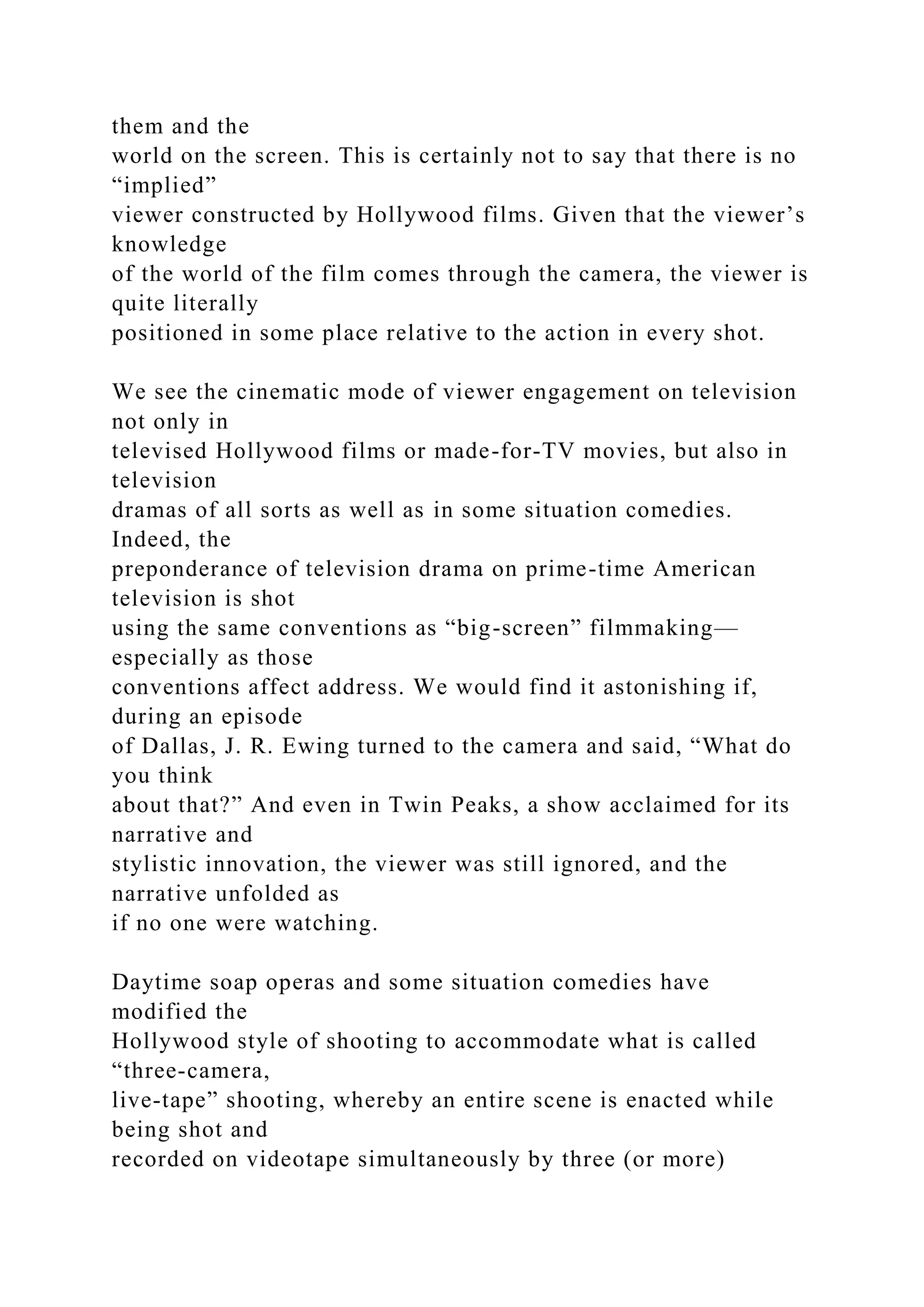
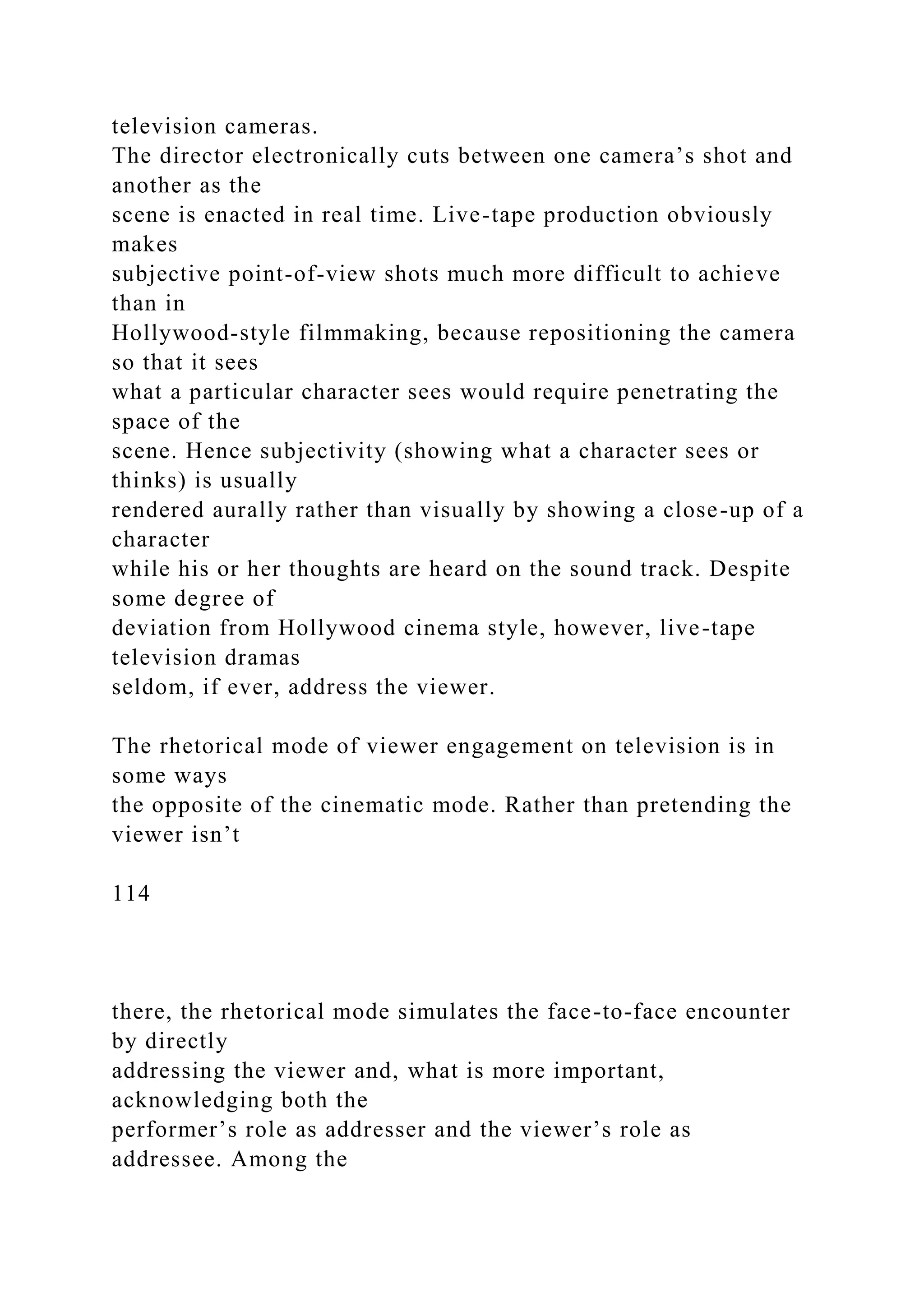
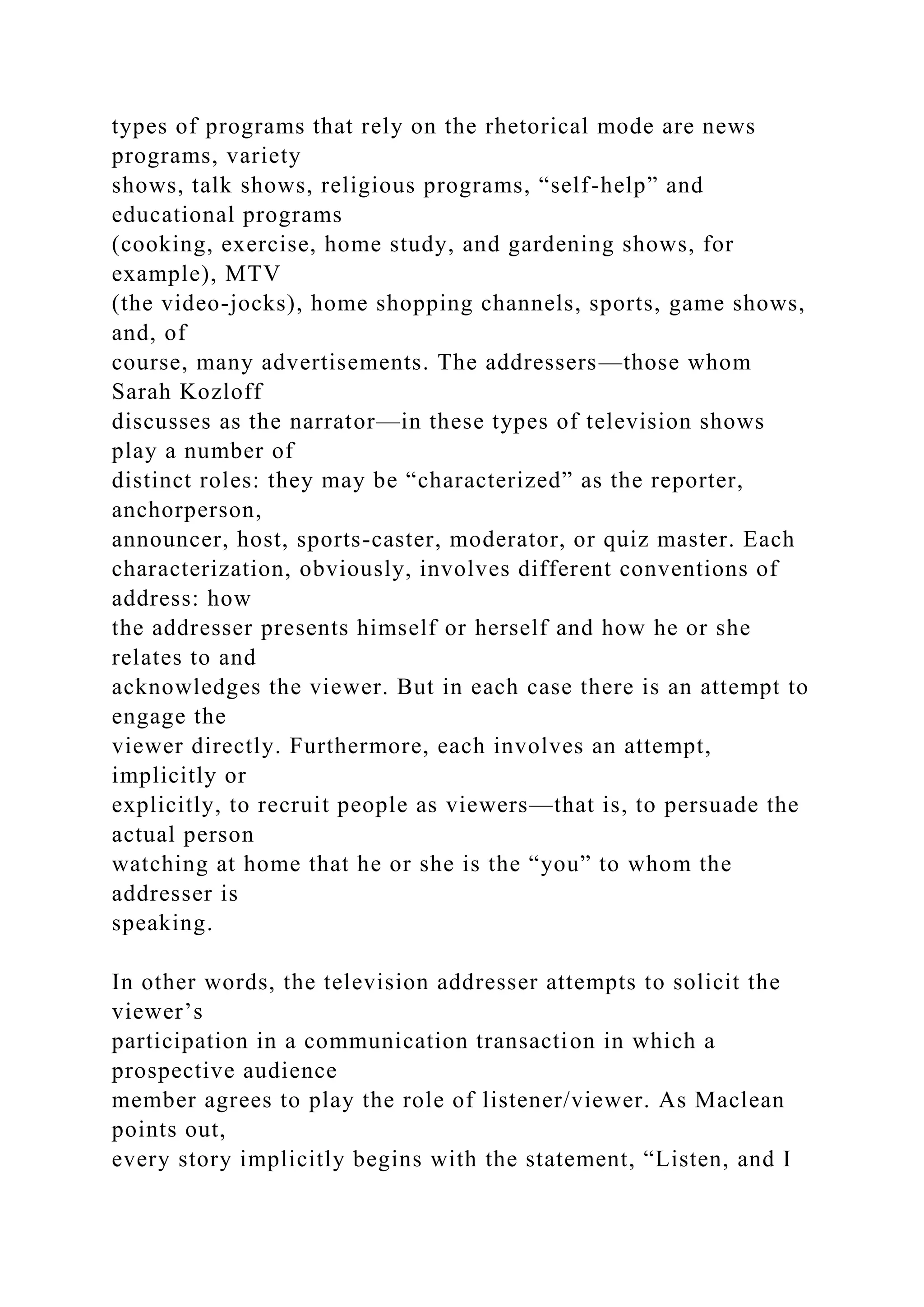
![will tell you
something you will want to hear.” That is, the story teller
attempts to assert
his or her role as storyteller and, at the same time, to convince
the addressee
to accept that role as well as the addressee’s own role as
listener to the story.
Every story—indeed, every face-to-face communication—
involves an
exchange on the basis of a presumed contract: the addresser
offers to tell us
something we haven’t already heard. By agreeing to listen, we
accept the
offer. But the addresser also expects something in return for
telling us a story
or revealing a piece of information: he or she expects some kind
of response.
And as listeners we expect to be able to respond. At a minimum,
the teller
looks for a response indicating that the listener understands the
point of the
story, that he or she now realizes why it was relevant and thus
worth listening
to. This signal of relevance might be as simple as a nod of the
head or a
murmured “hmmm.” In the case of a joke, the desired response
is, of course,
laughter. In all performance situations, says Maclean, the
audience
“experience an obligation to respond and feel cheated if they
cannot do so.
The response may be positive or negative, it may confirm or
contest the
expectations of the teller. . . . [Regardless,] the audience,
whether willing or
unwilling, feel that they have entered into, or sometimes that](https://image.slidesharecdn.com/channelsofdiscoursereassembled2channelsof-221018173716-6fc0655a/75/Channels-of-Discourse-Reassembled2Channels-of-docx-245-2048.jpg)
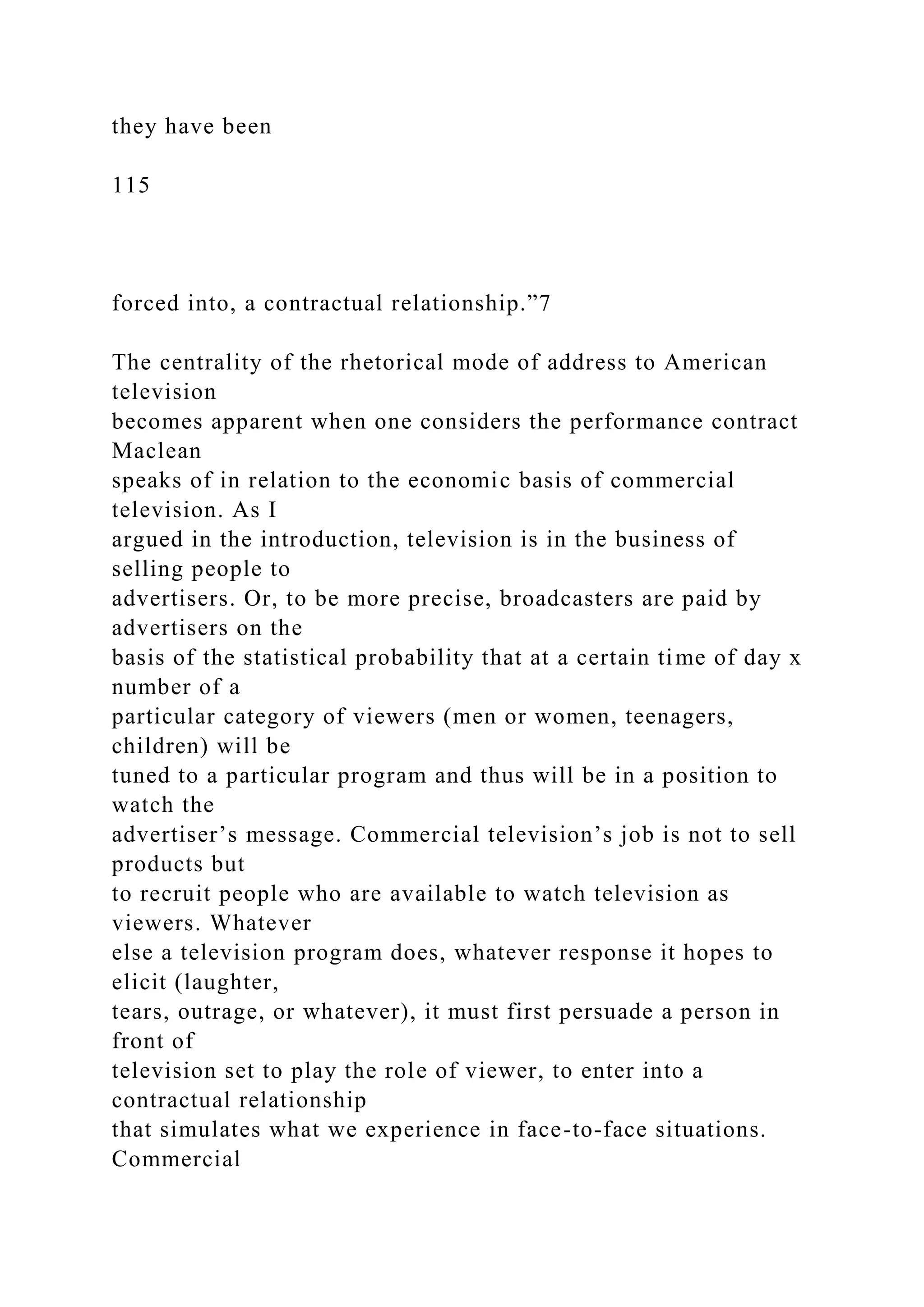
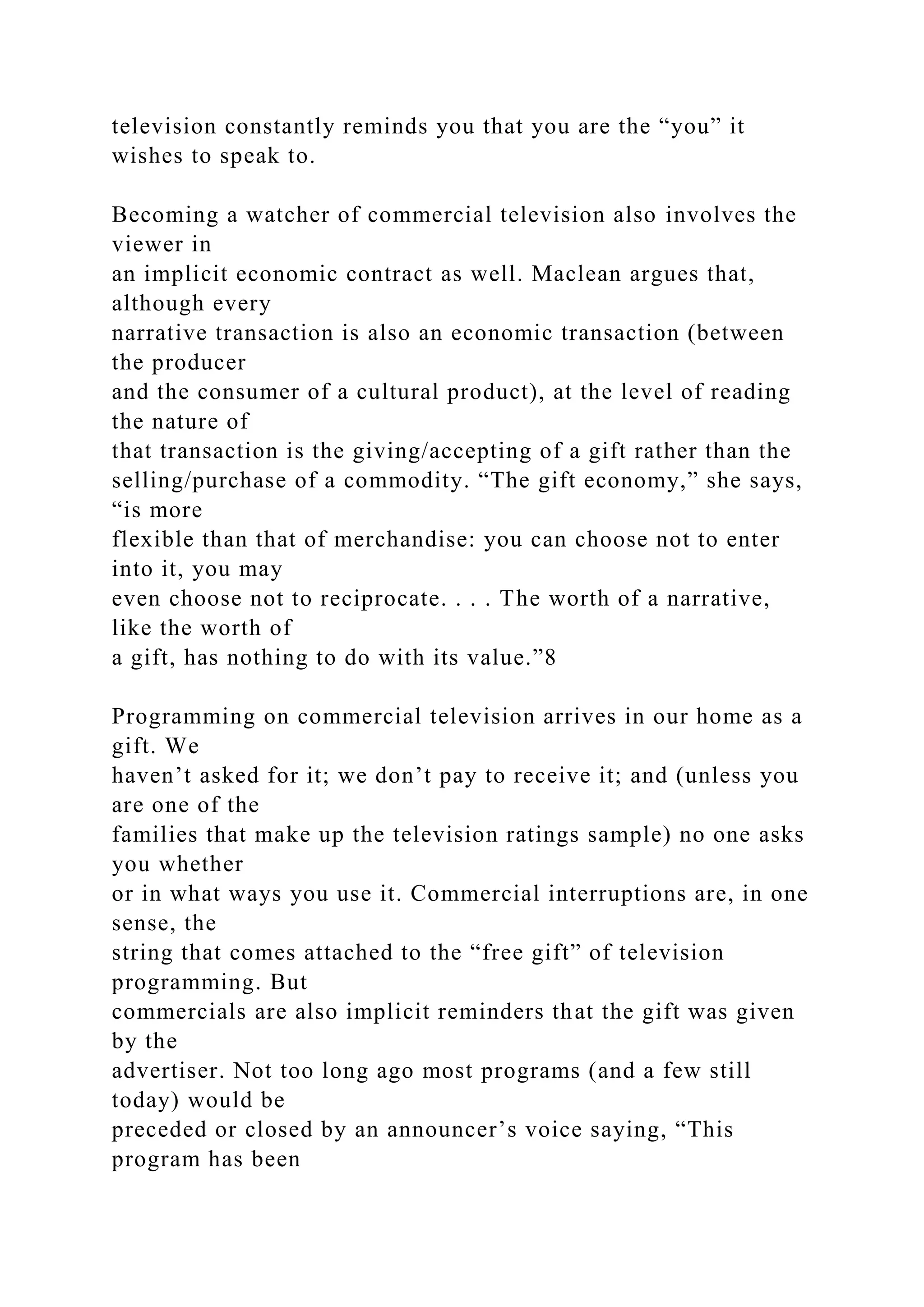

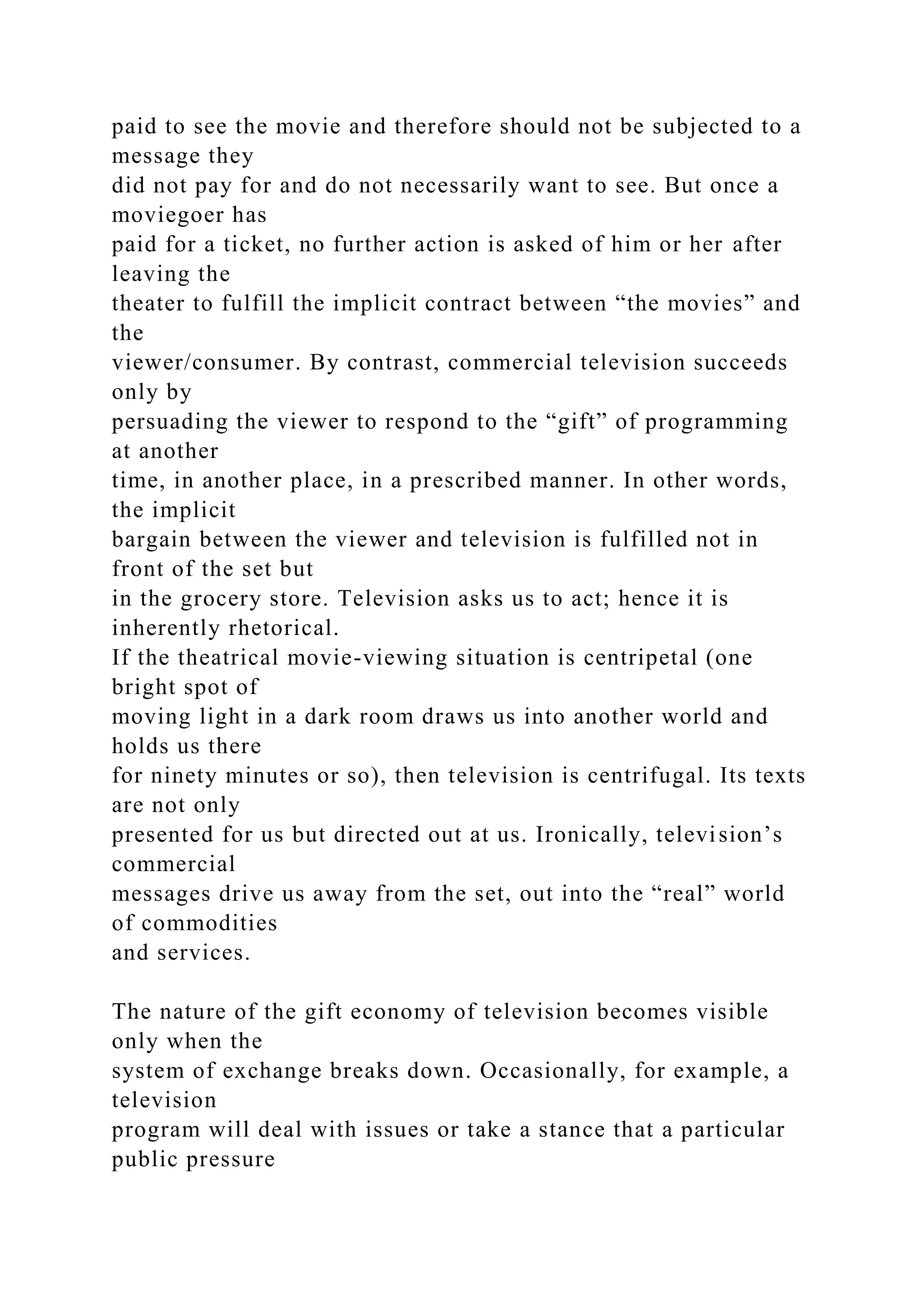
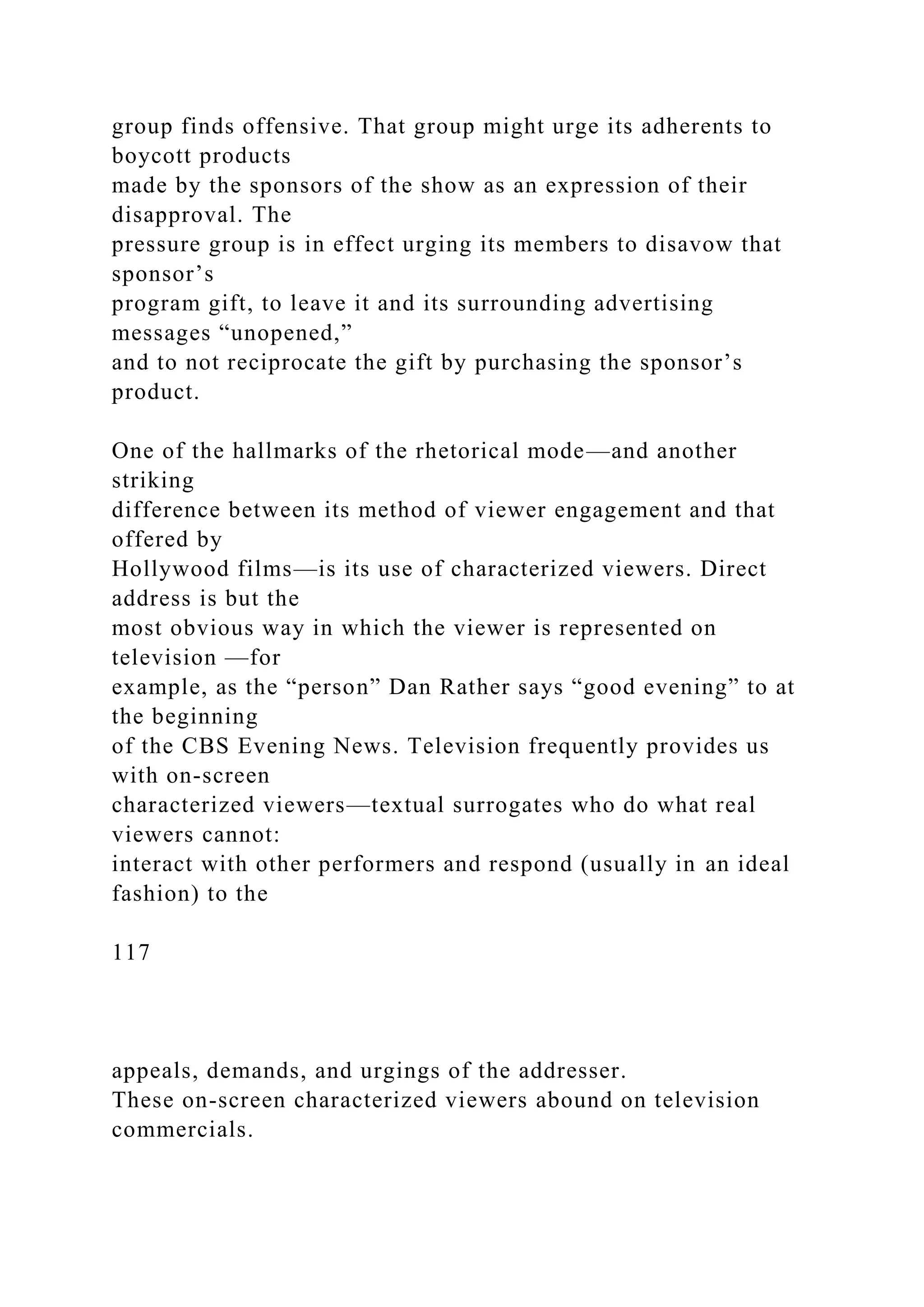

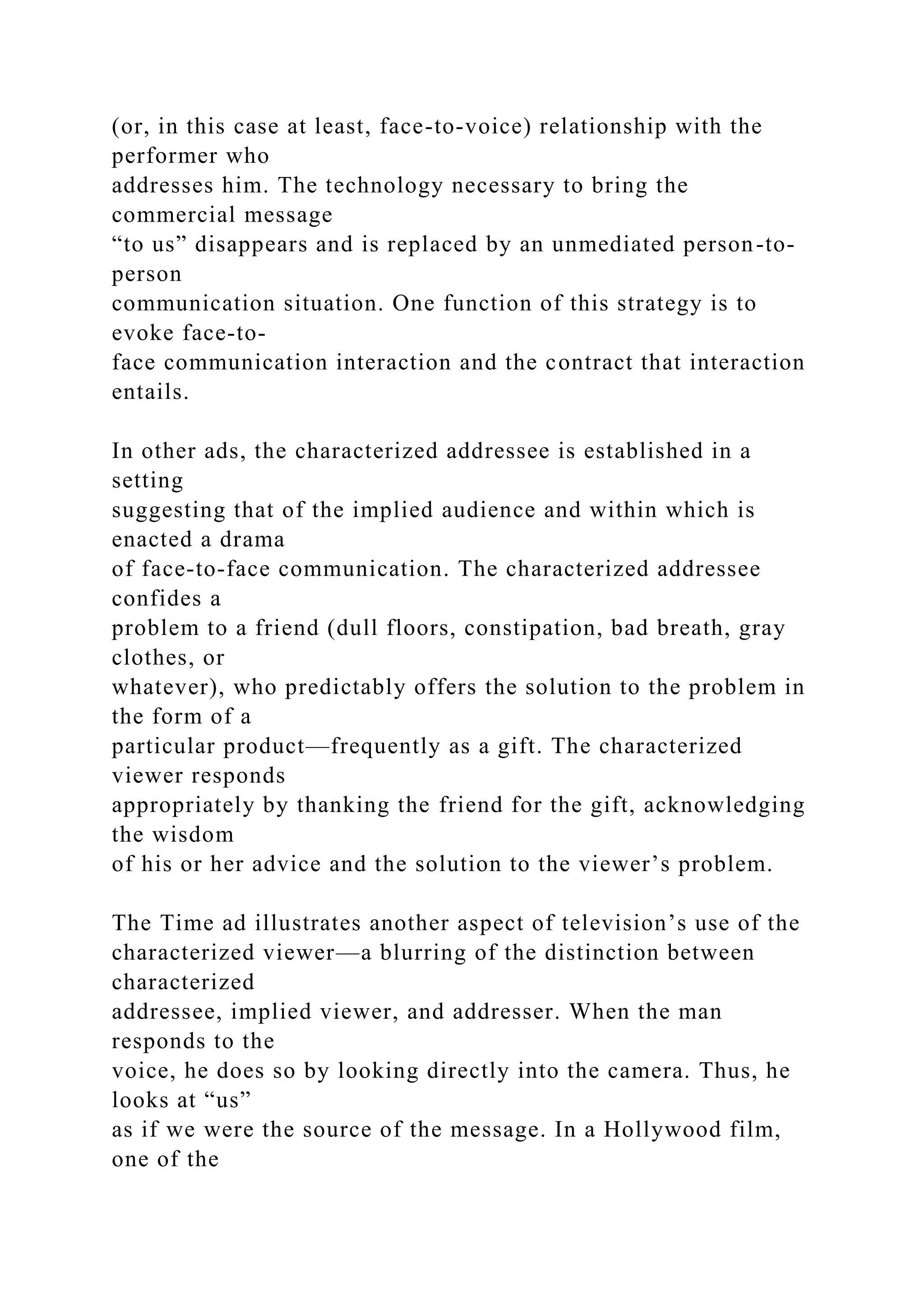
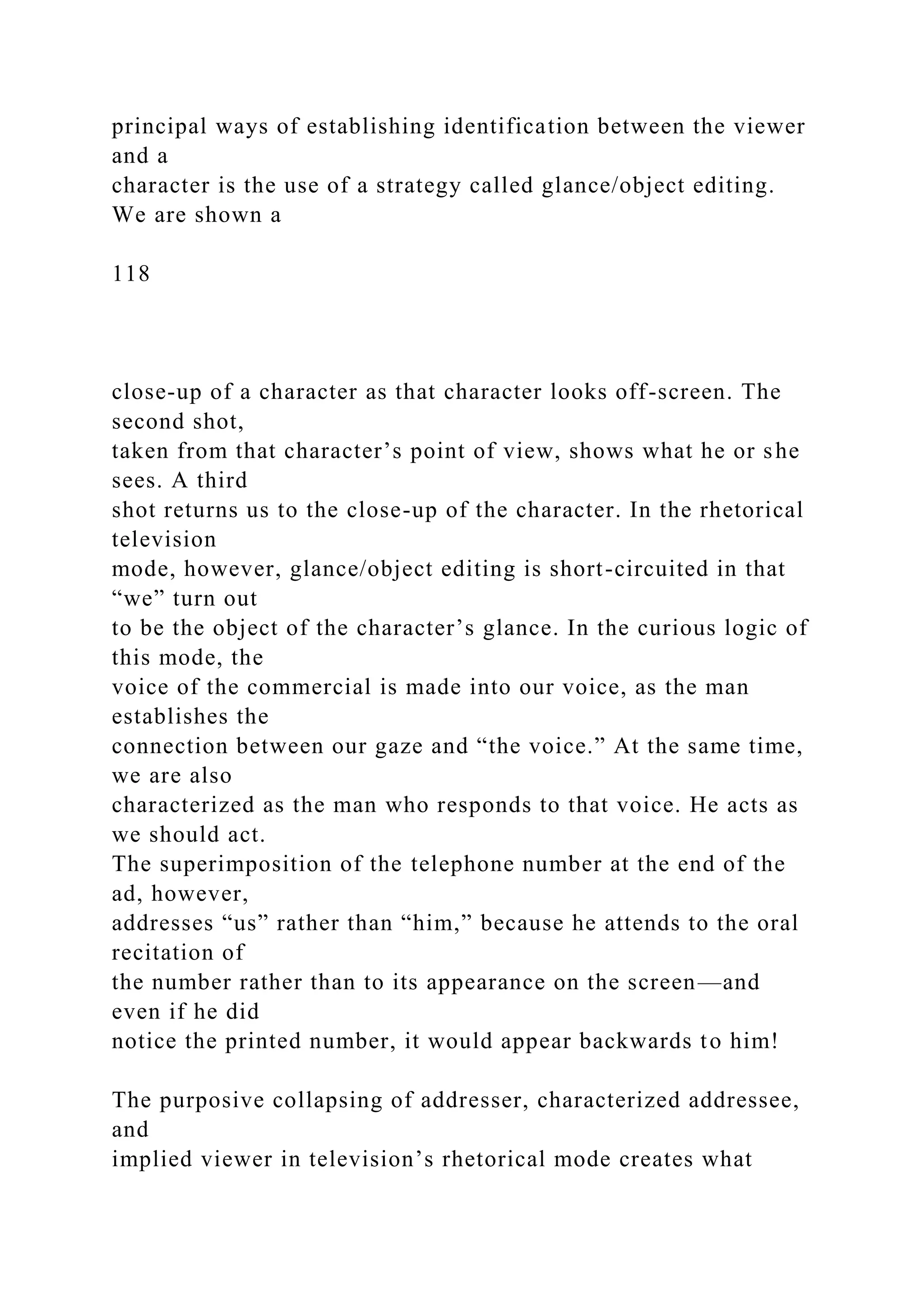

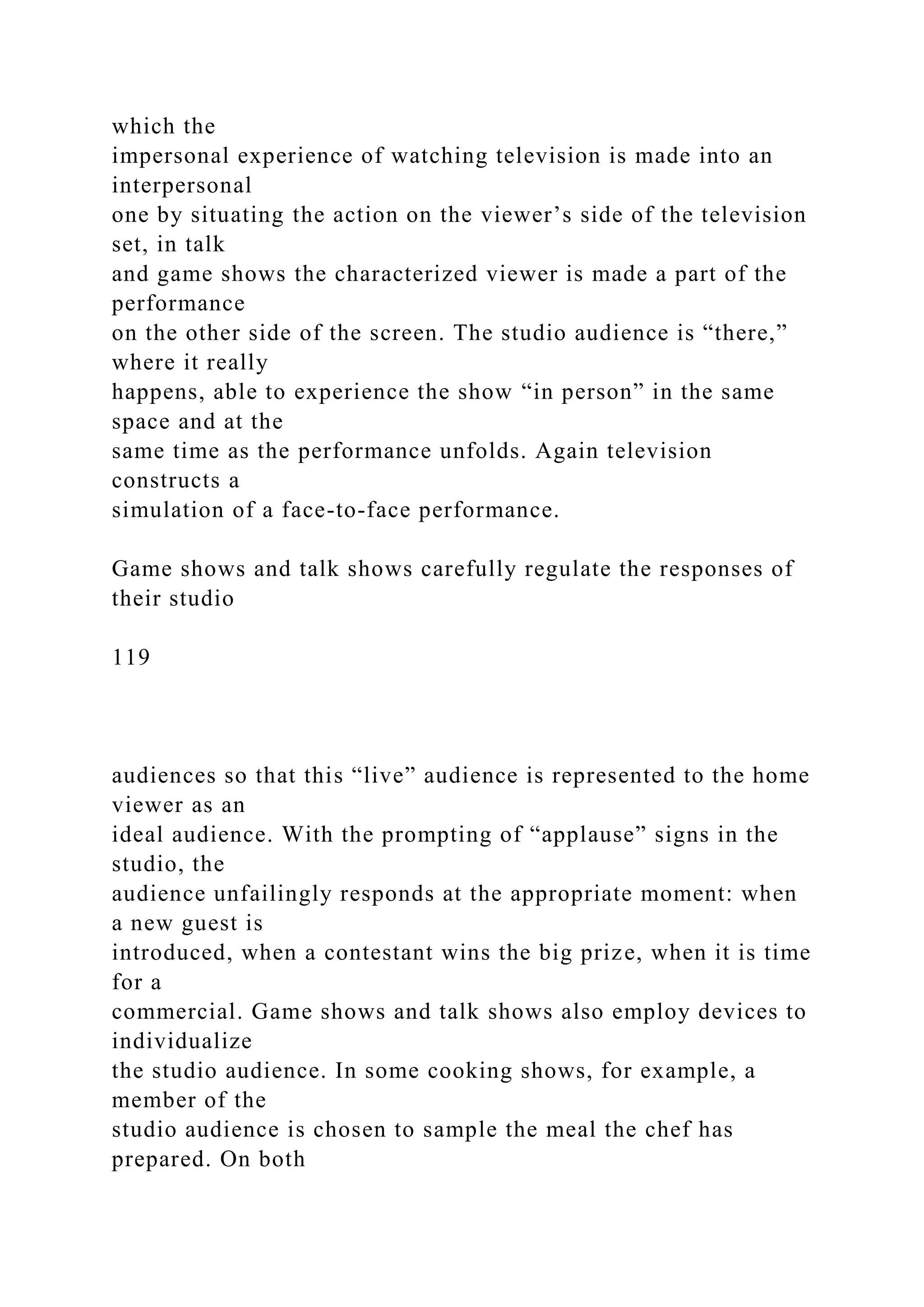
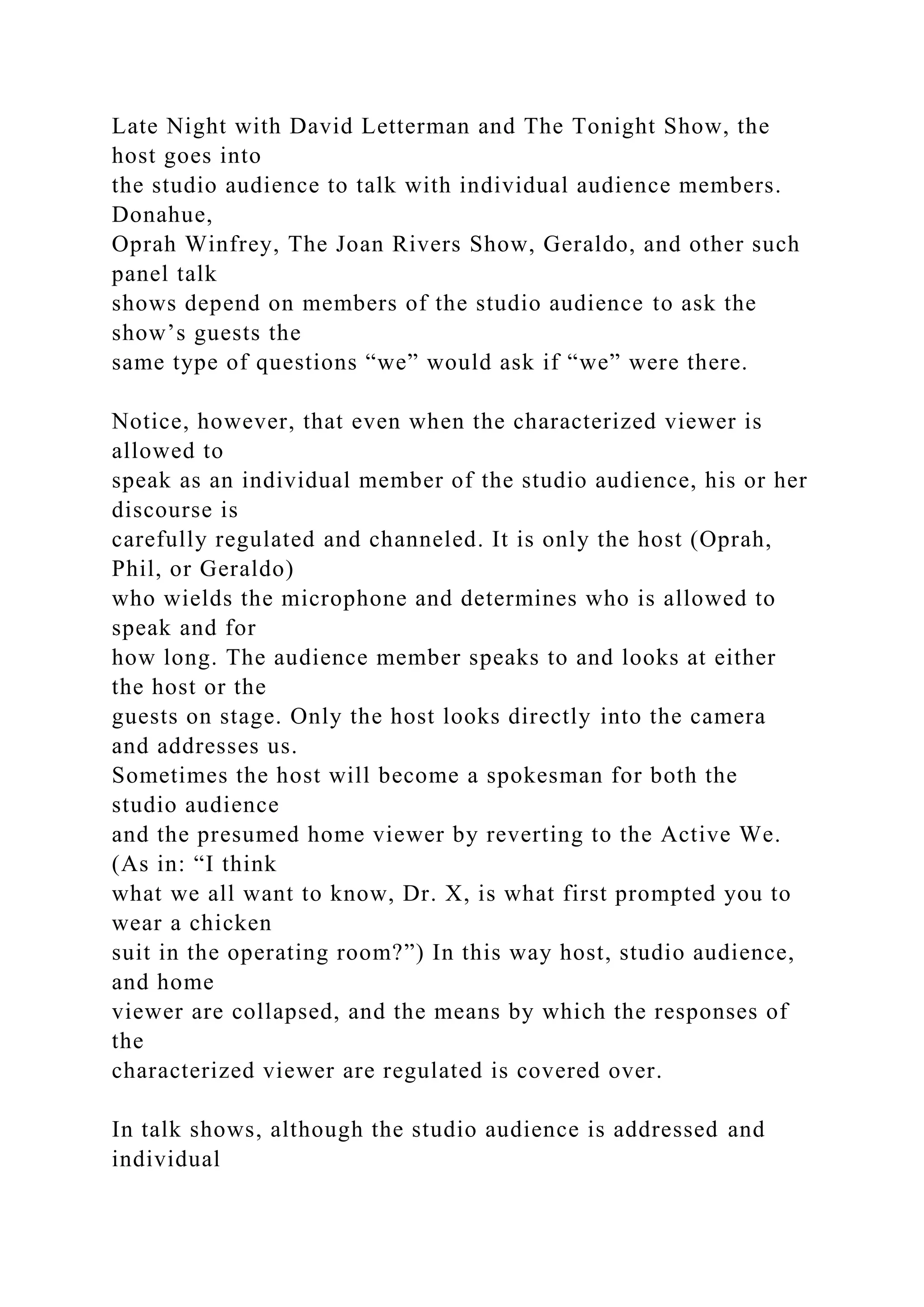
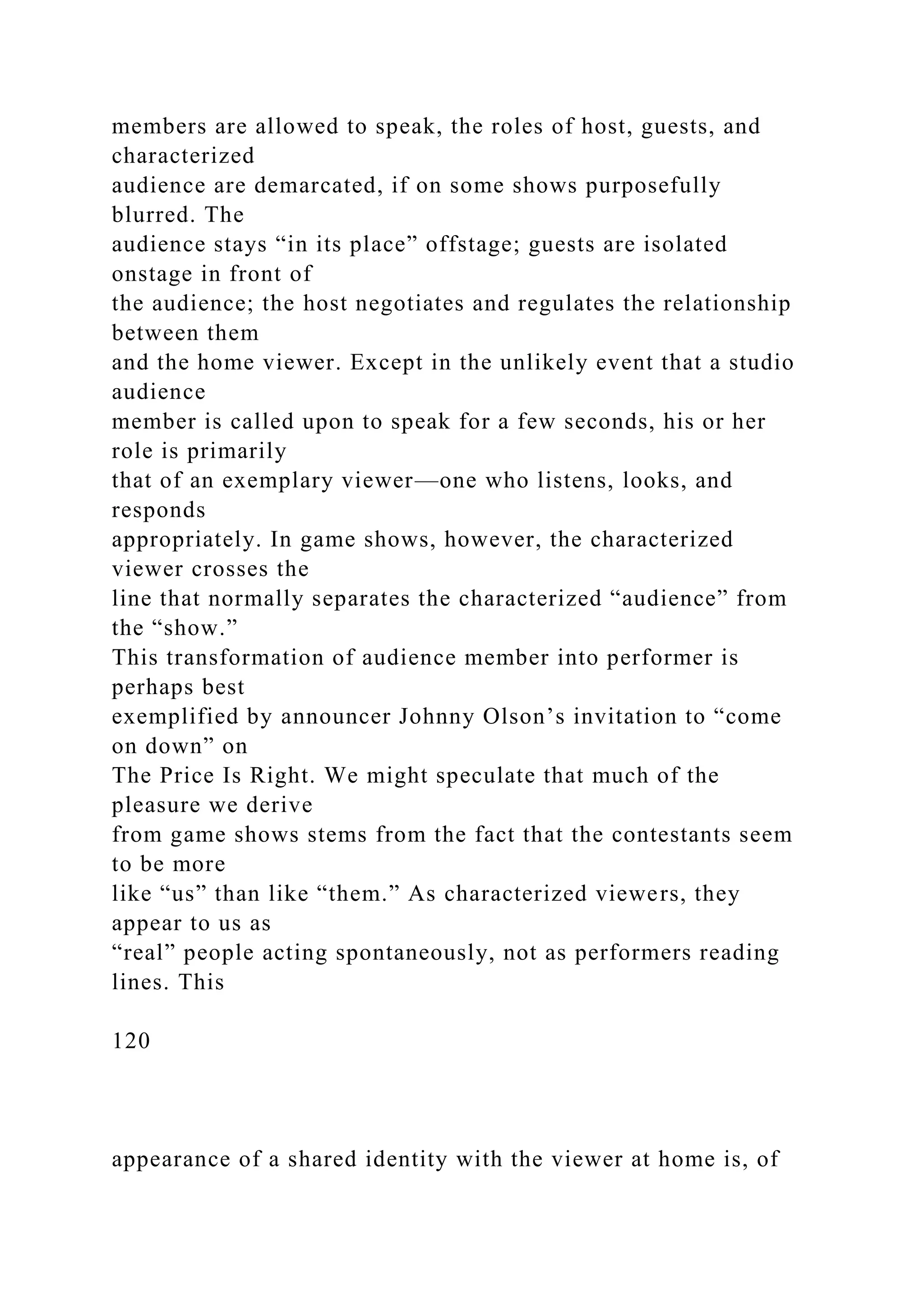
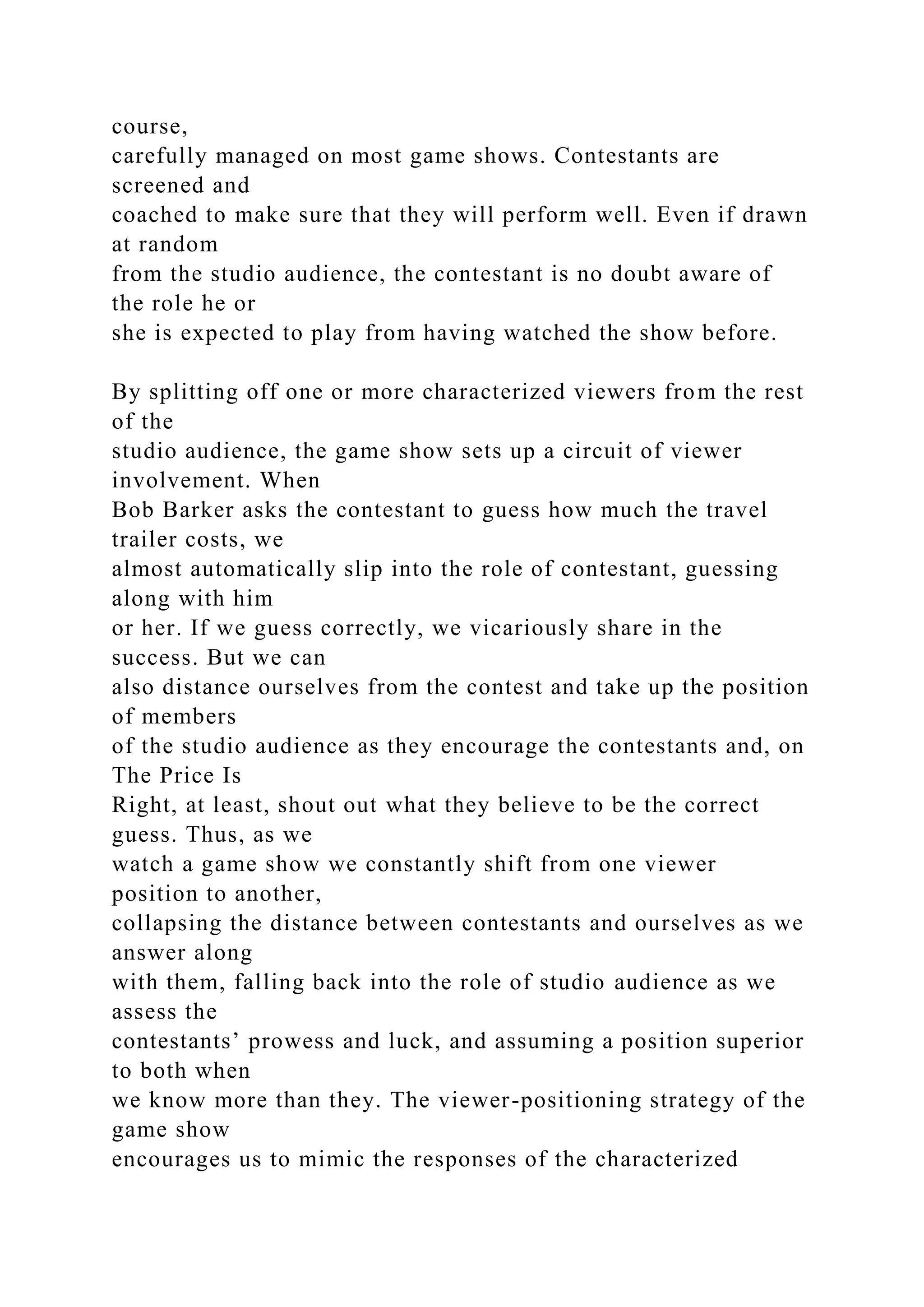
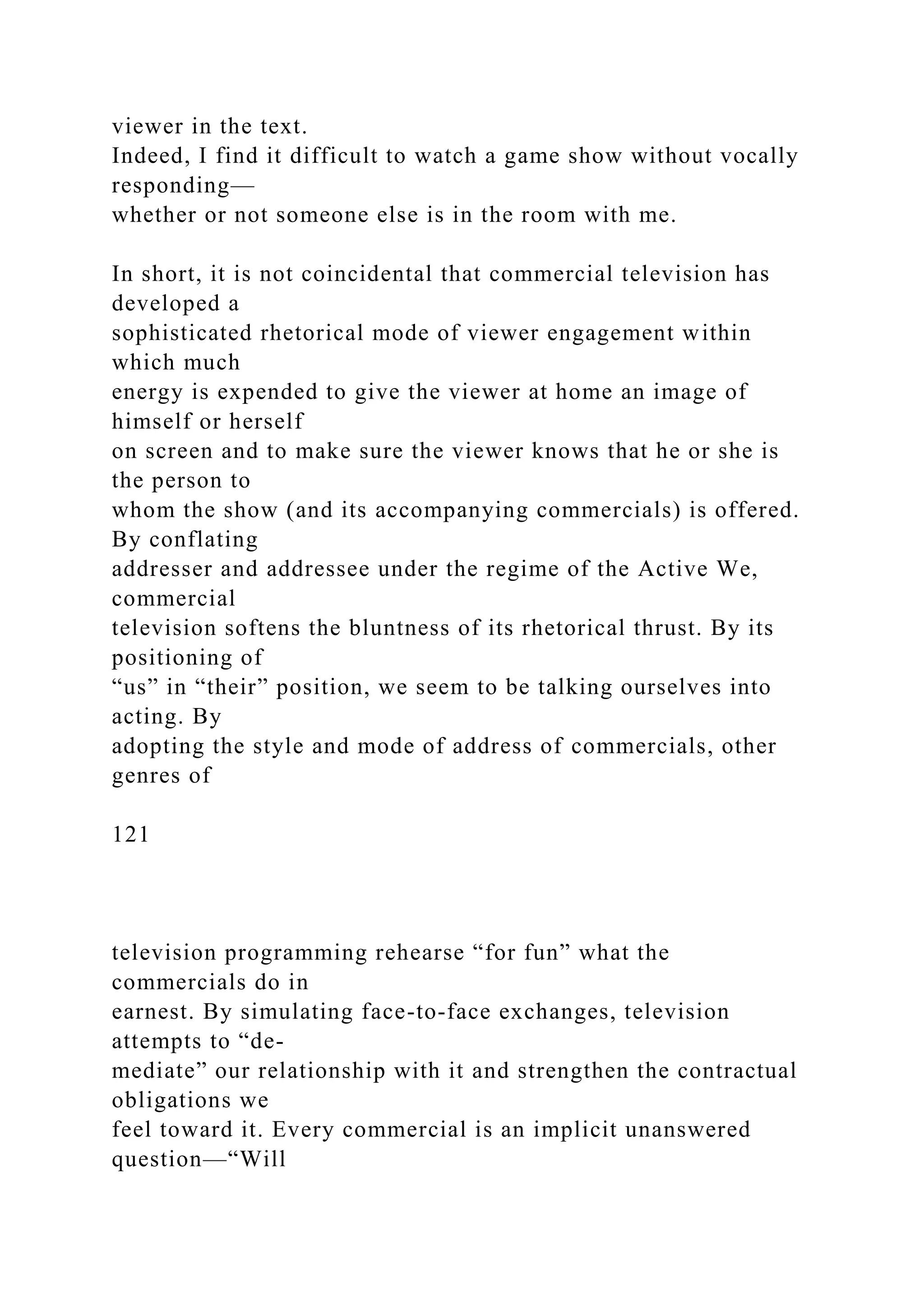
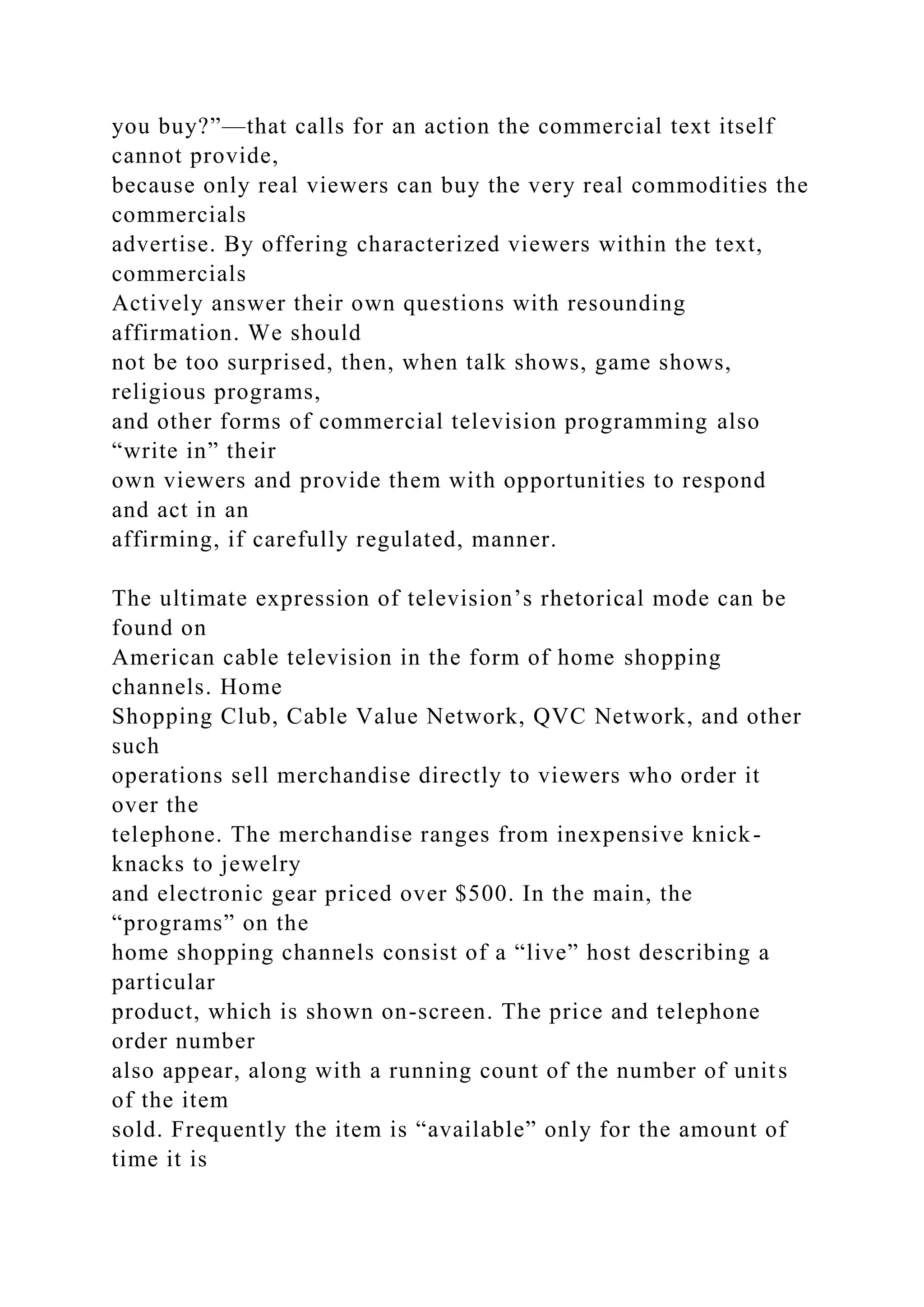
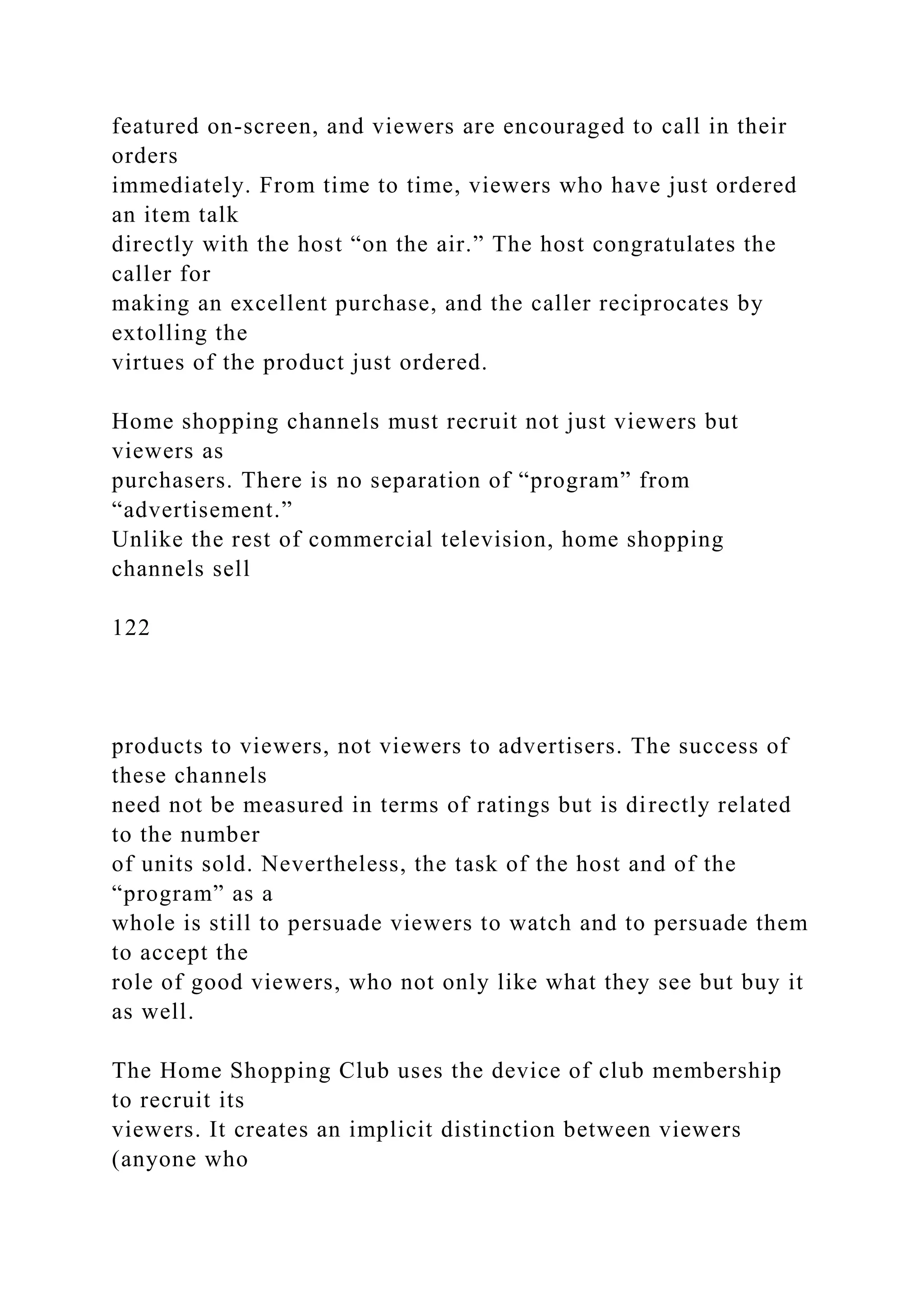
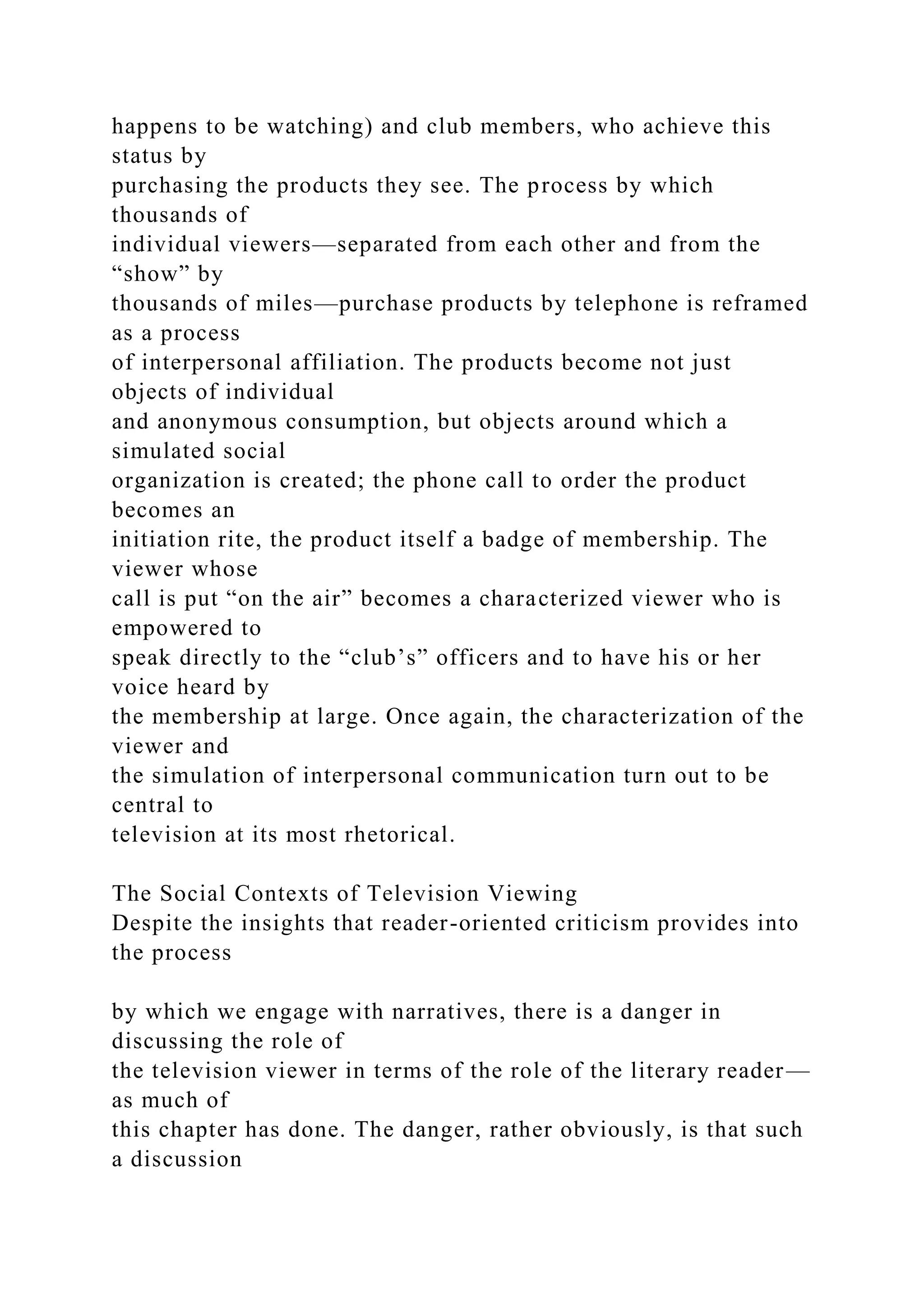
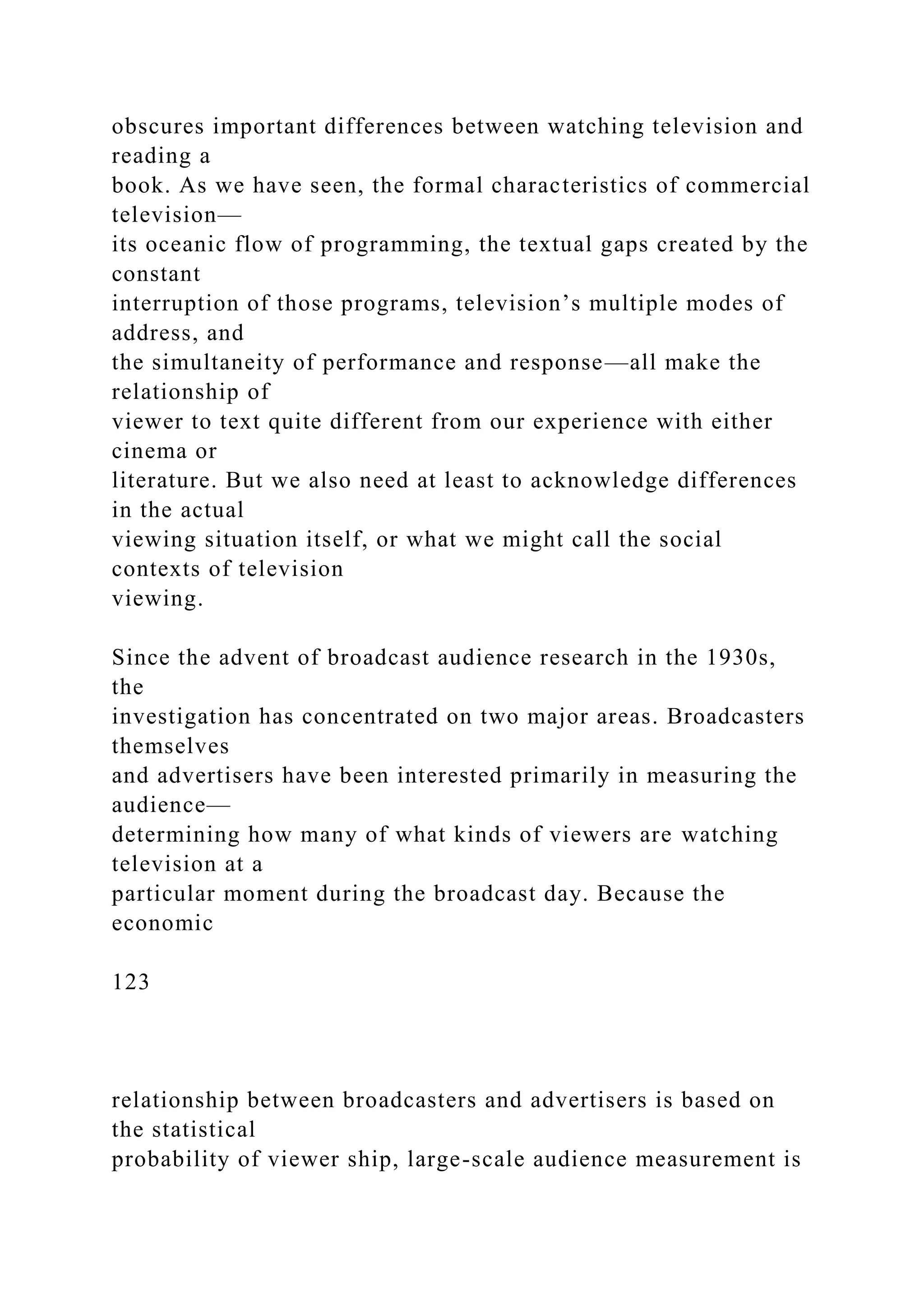
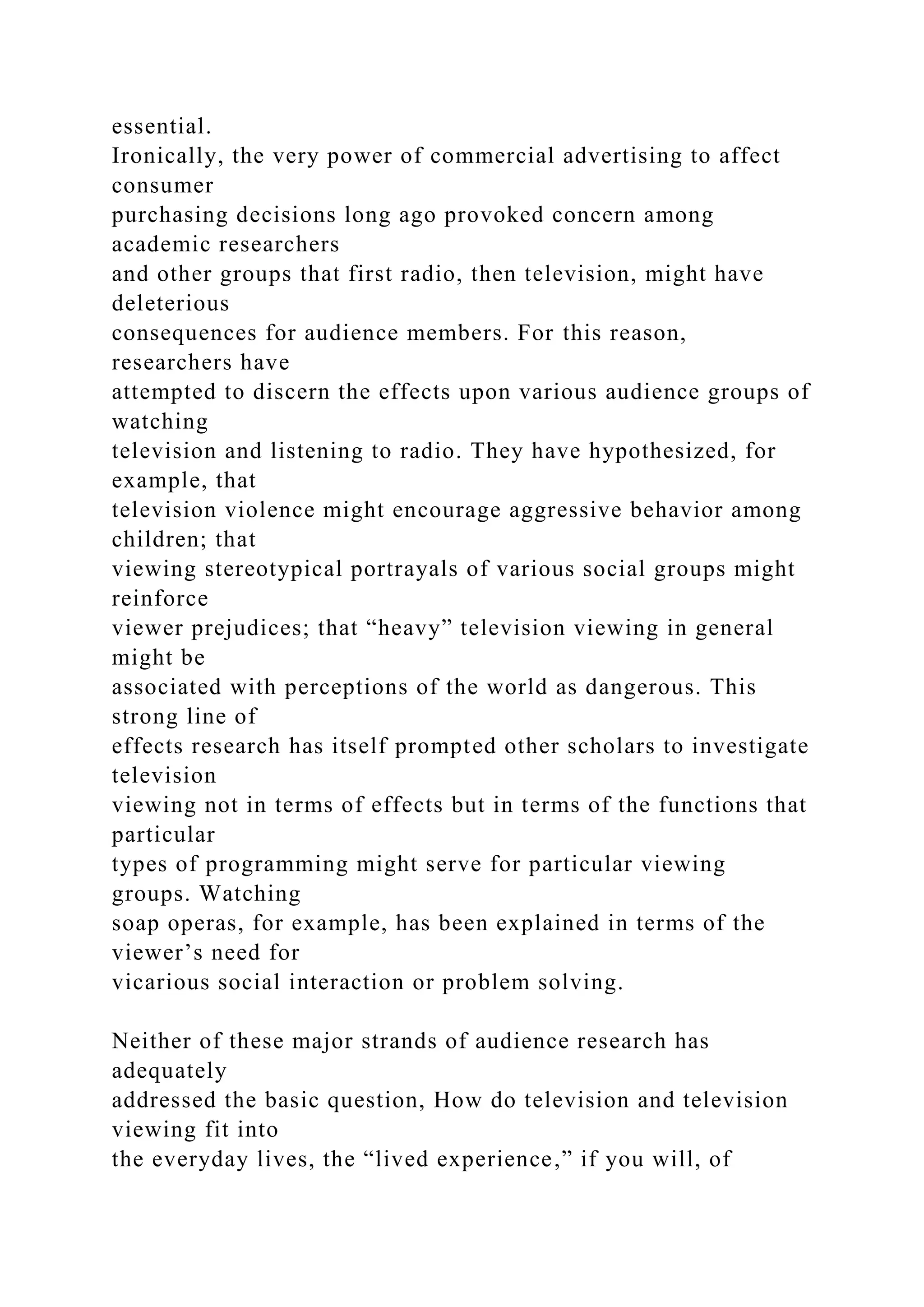

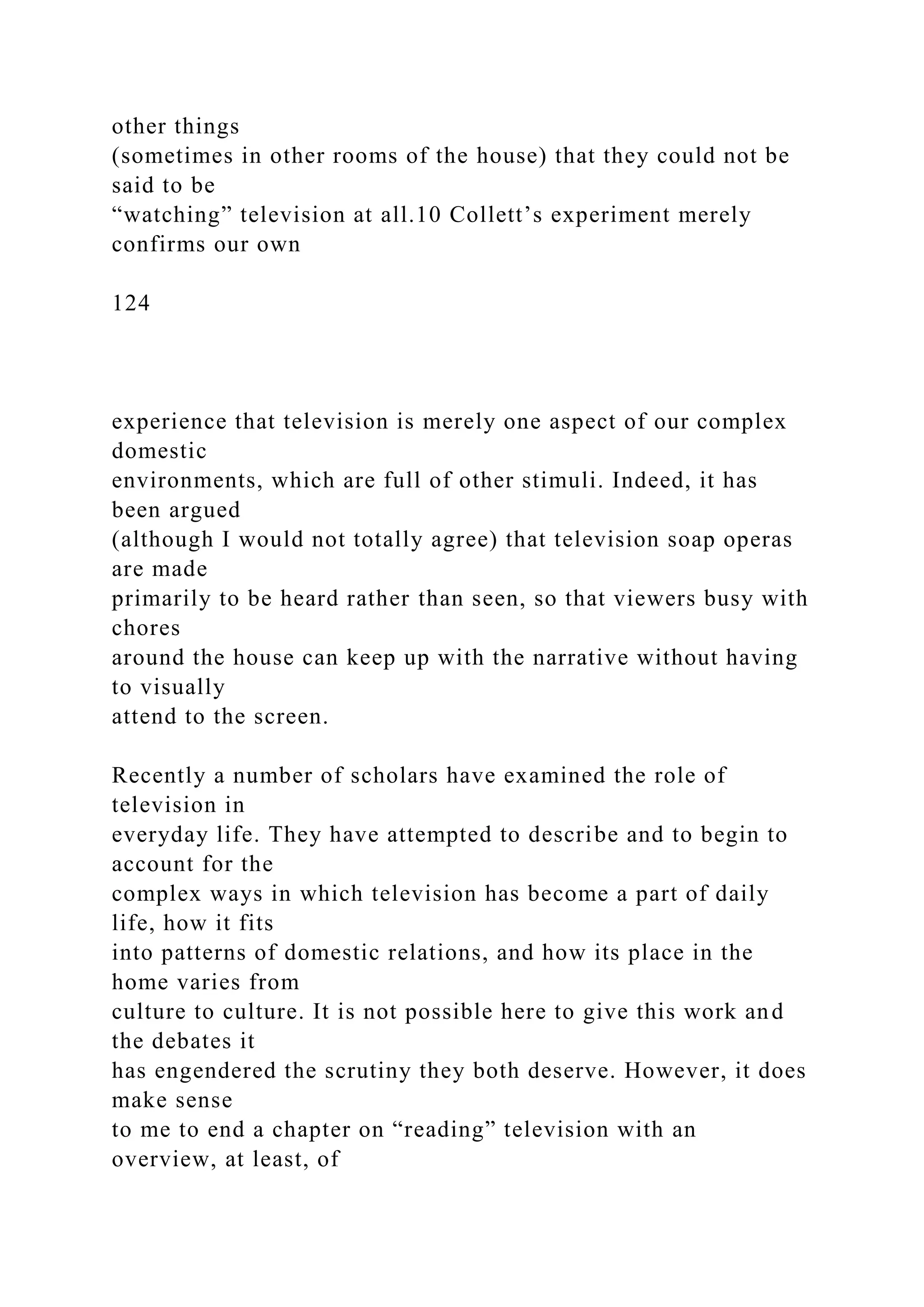
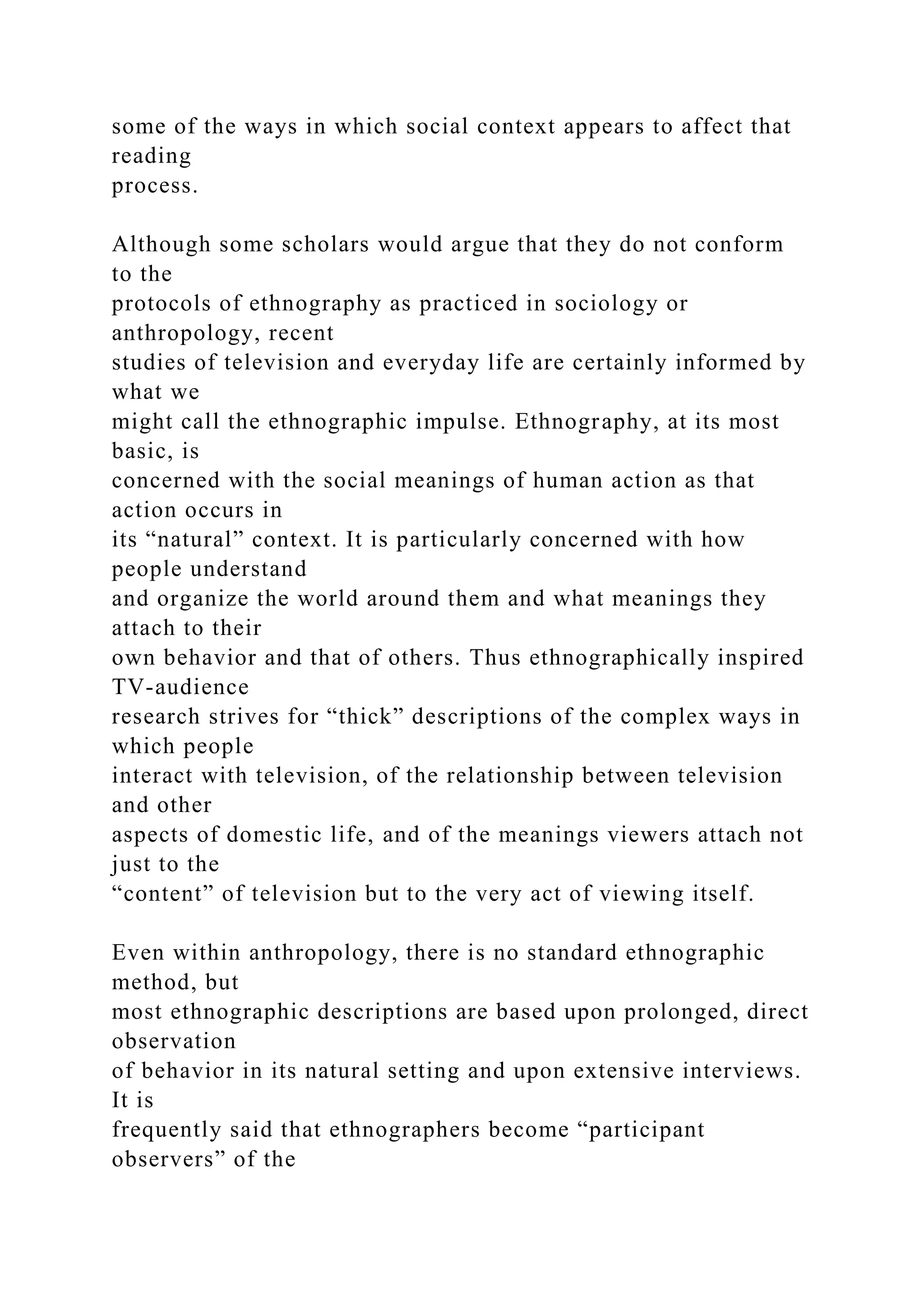

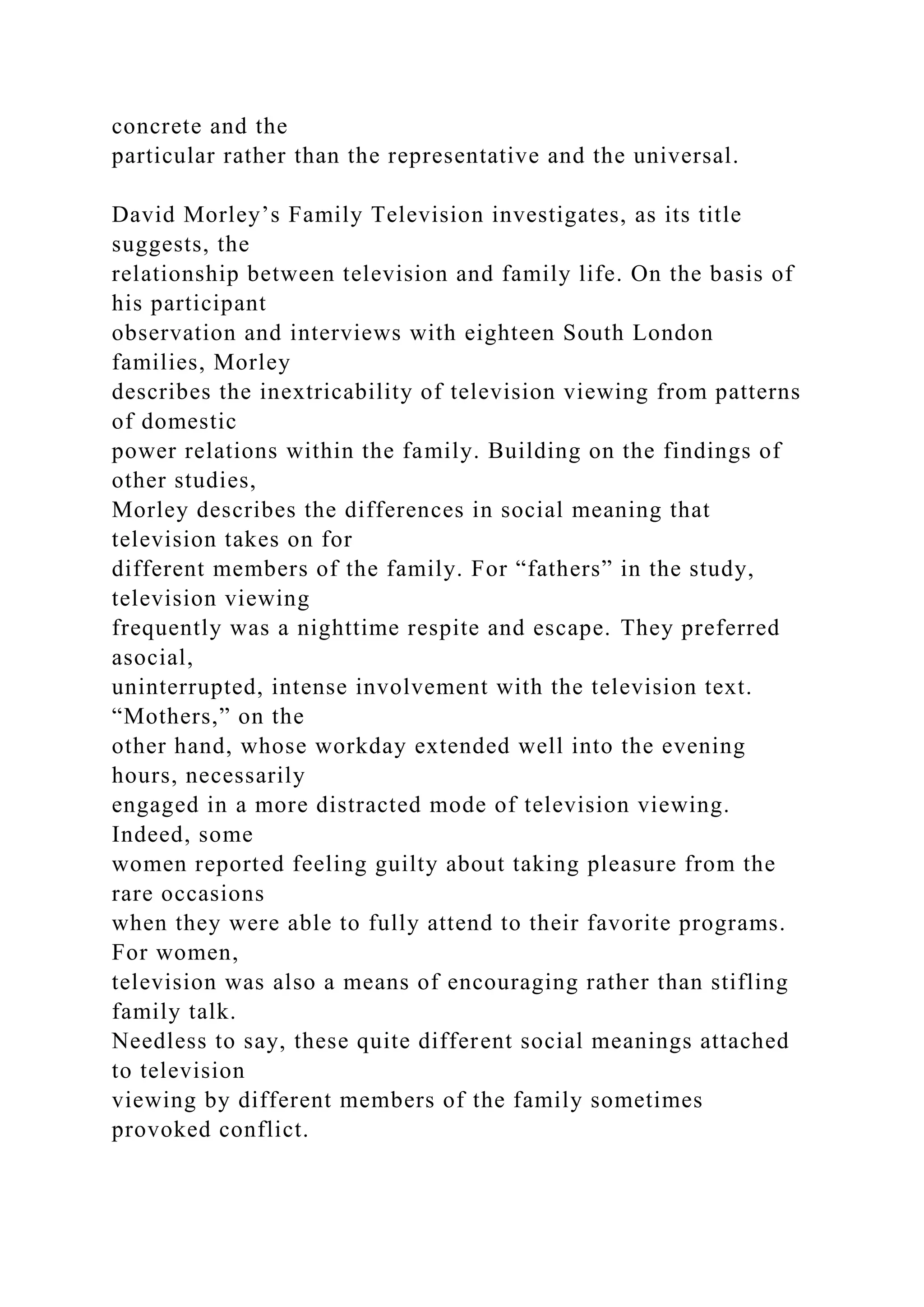

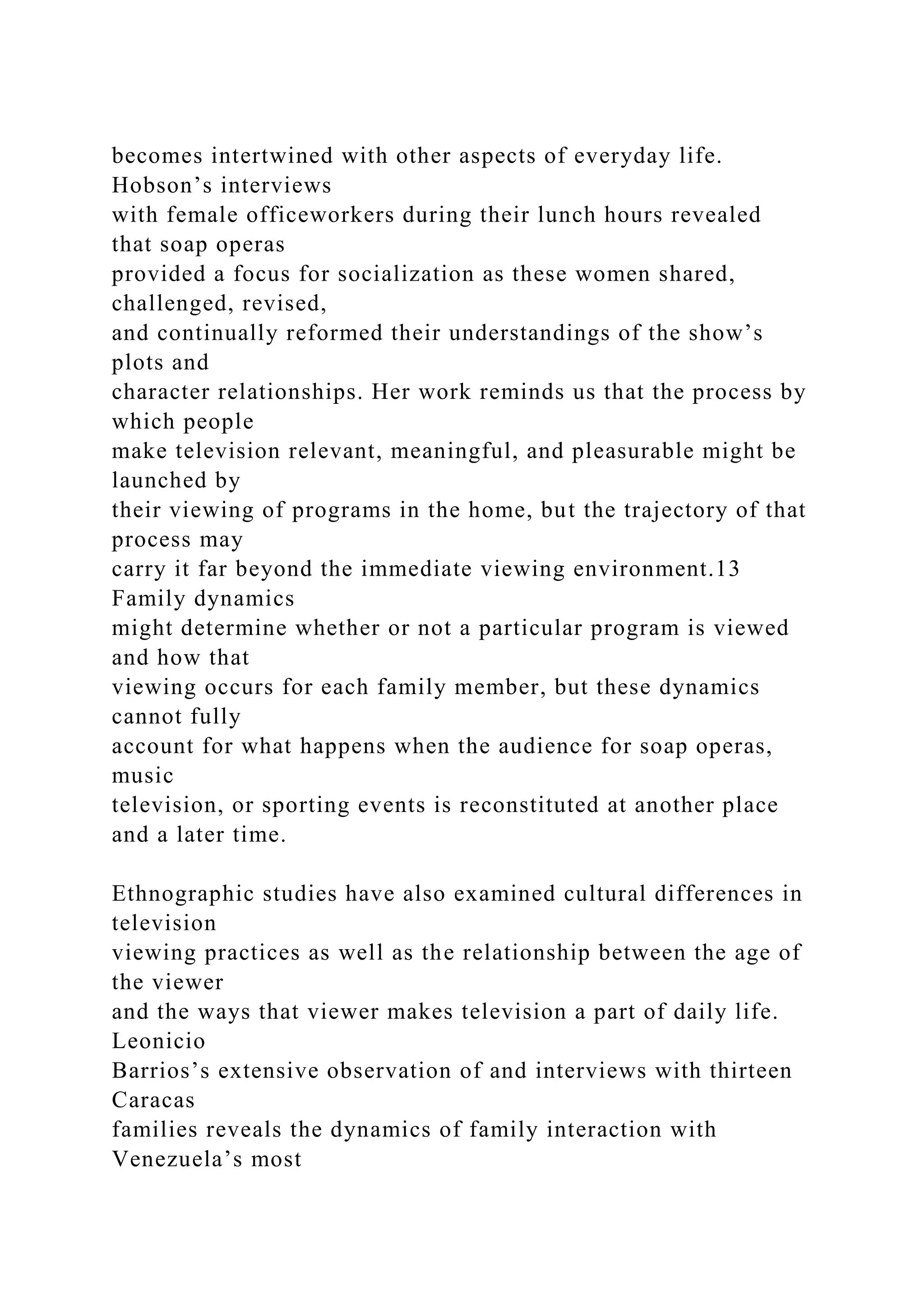
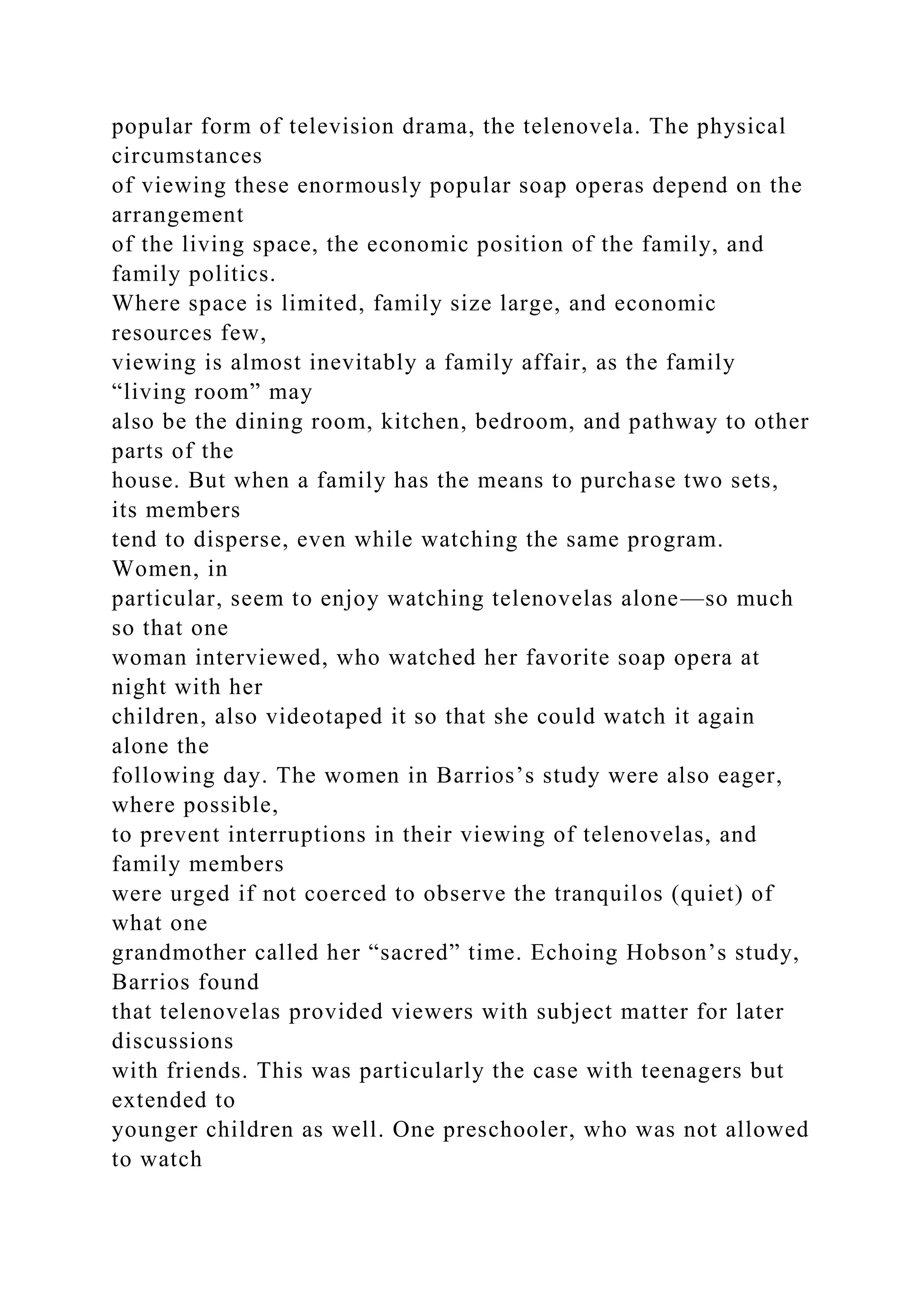
![telenovelas, nevertheless knew the principal characters and plot
lines from her
friends’ conversations at play.14
It is also clear from ethnographic observations of children at
home that
television becomes a part of our daily lives at a very early age.
Dafna Lemish
found that by ten months old, some children were already
fascinated by
127
Sesame Street, and as early as sixteen months, “babies were
turning [the]
television on by instruction, or at will, for the purpose of
actually viewing
television.” Lemish also observed children learning to deal with
the
ambiguous status of television’s images and sounds. Although
the animals,
puppets, and people toddlers get to know on television seem to
be like those
the child experiences on this side of the screen, they cannot be
touched or
kissed; their appearances and disappearances cannot be
controlled by the
child; and once they have gone, no searching strategy can locate
them. This
and other studies of children’s interaction with television
remind us that we
not only must learn how to interpret television’s
representational conventions
(in which dissolve might mean elapsed time, for example),](https://image.slidesharecdn.com/channelsofdiscoursereassembled2channelsof-221018173716-6fc0655a/75/Channels-of-Discourse-Reassembled2Channels-of-docx-273-2048.jpg)
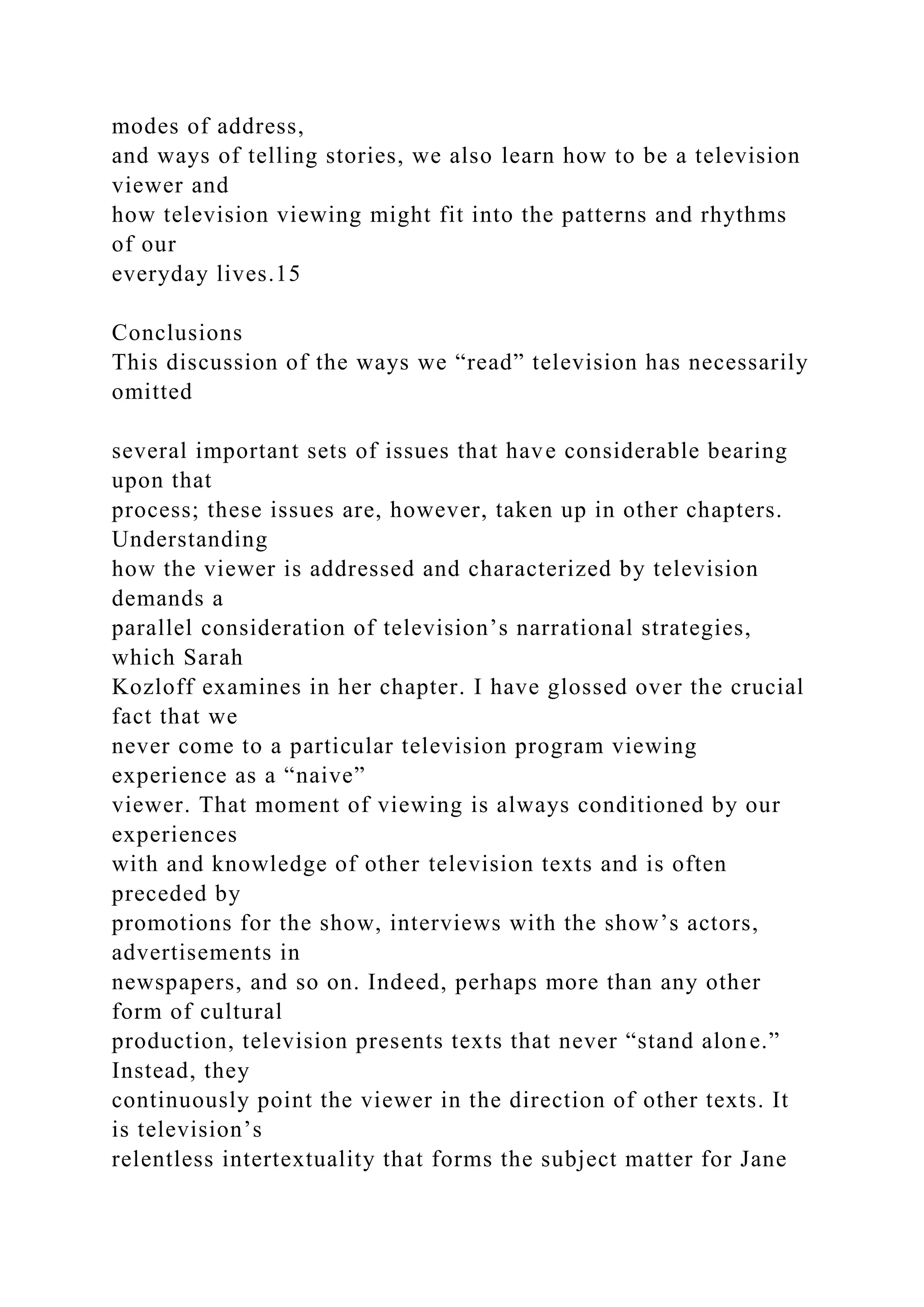
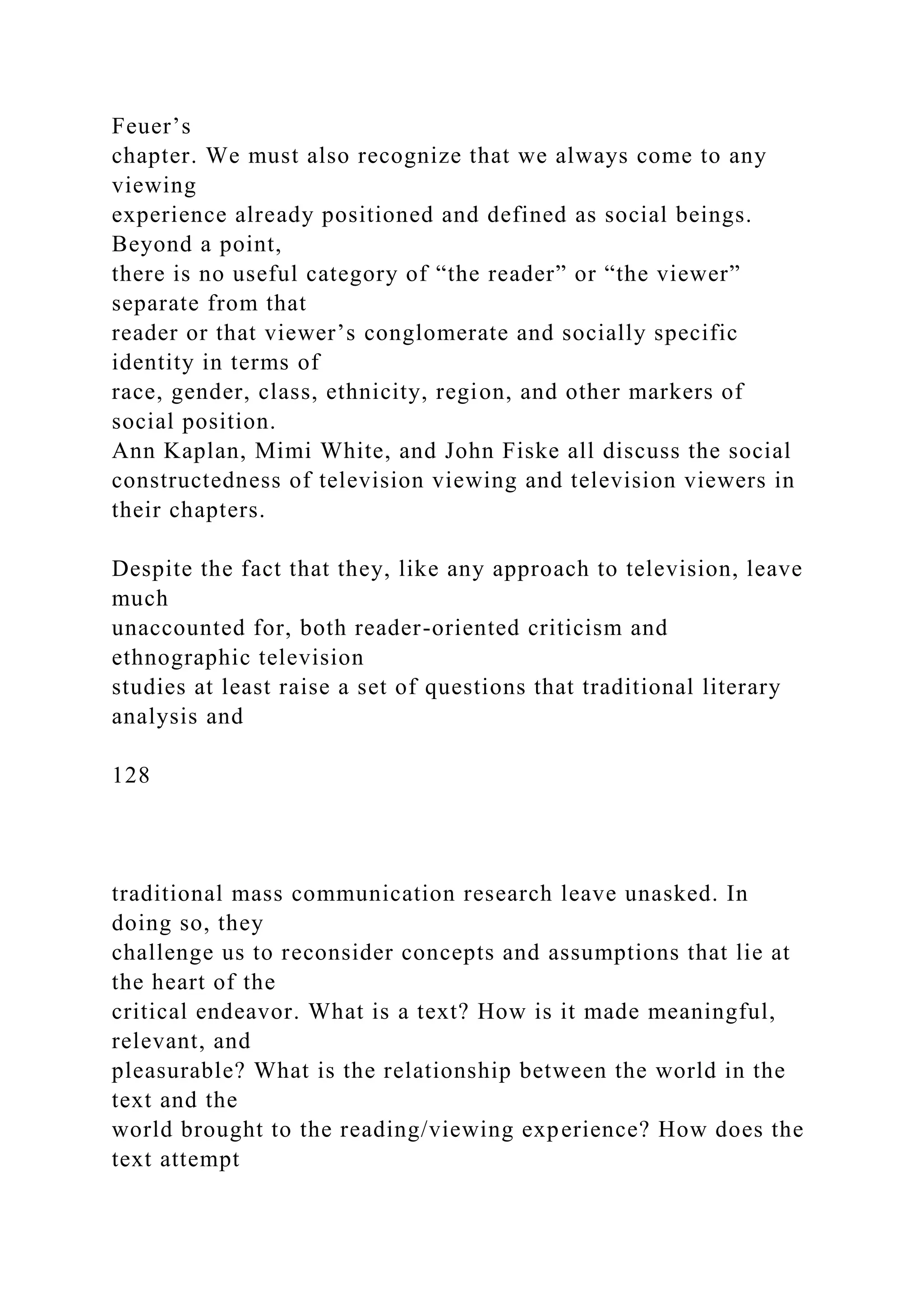
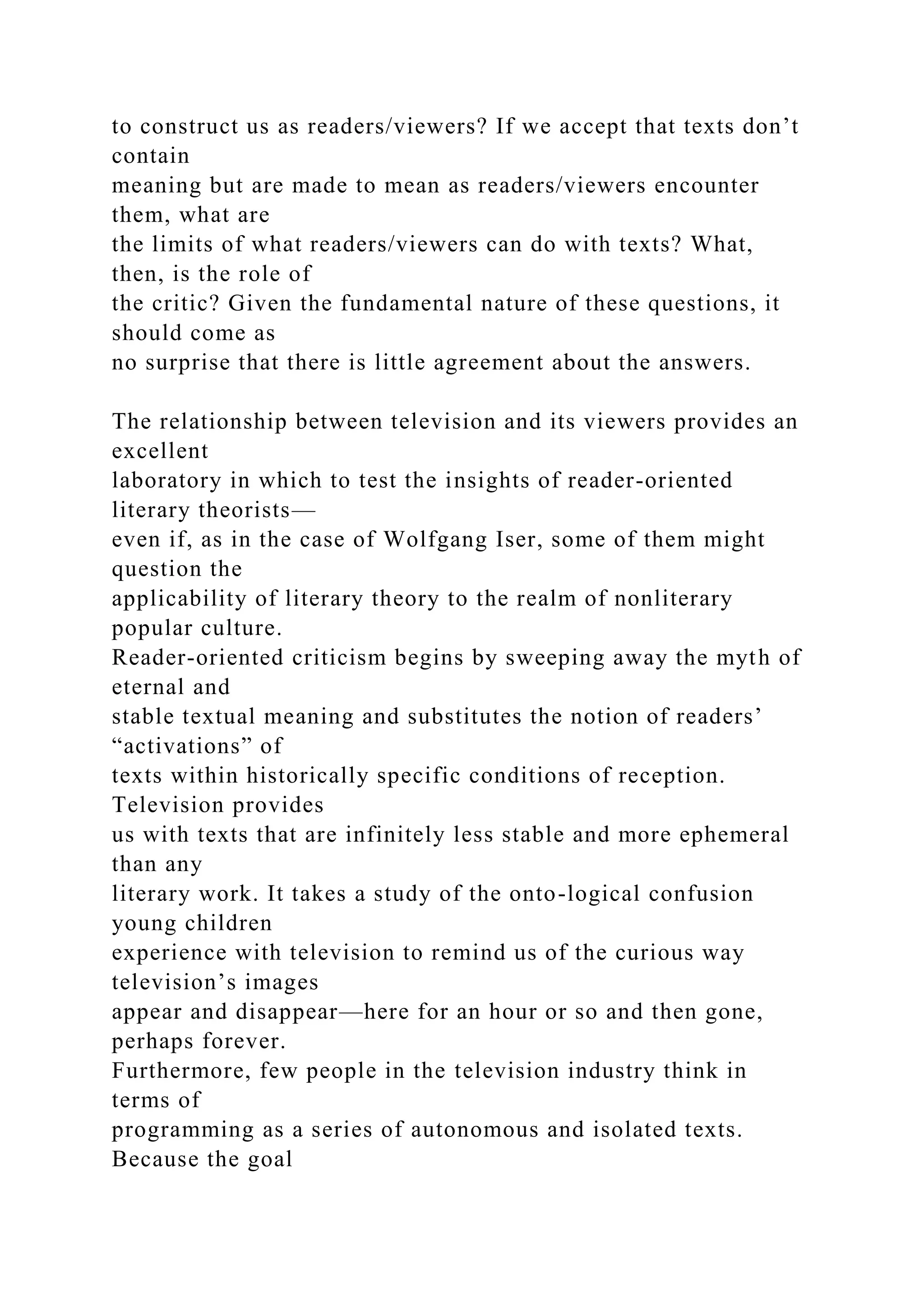
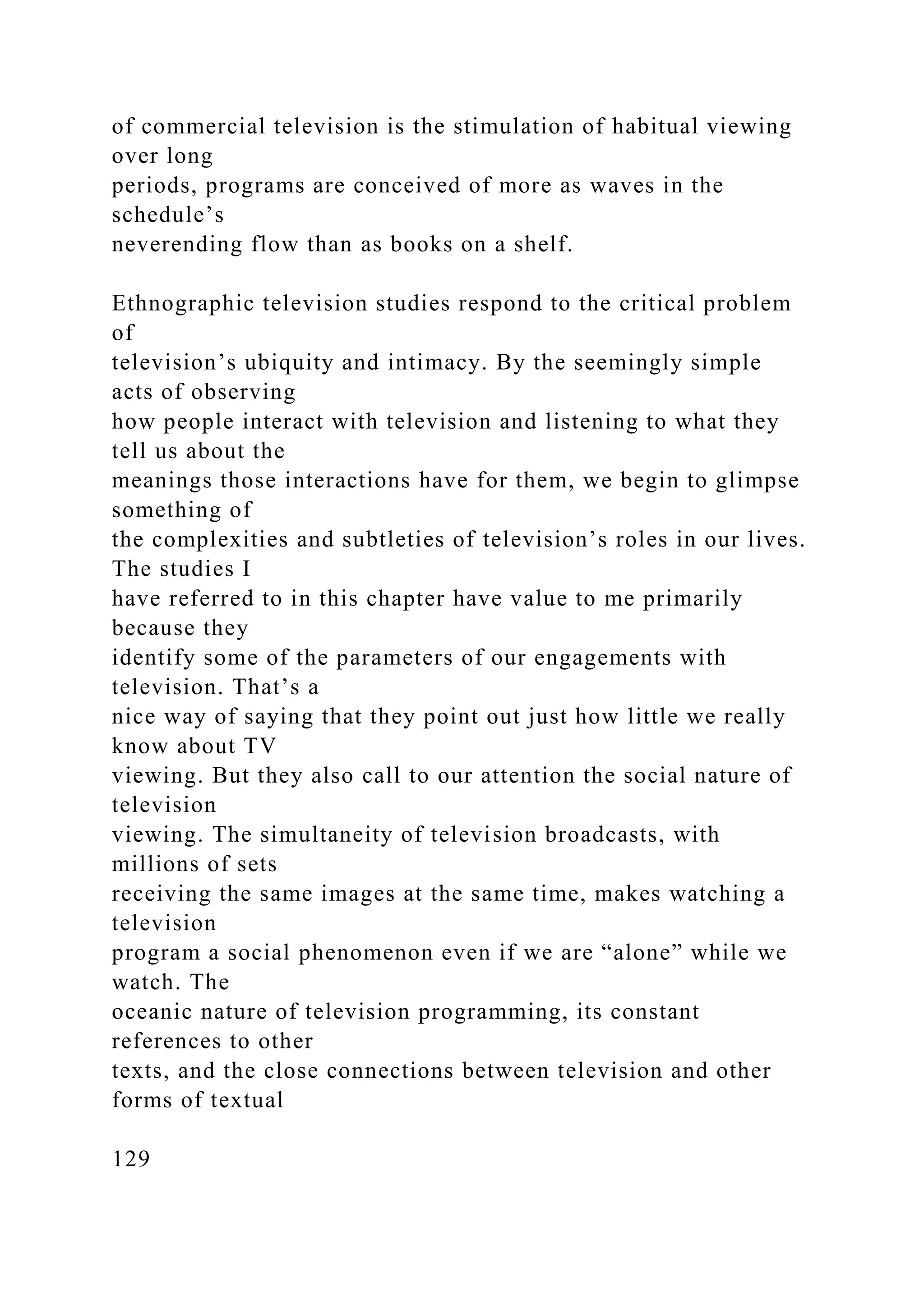
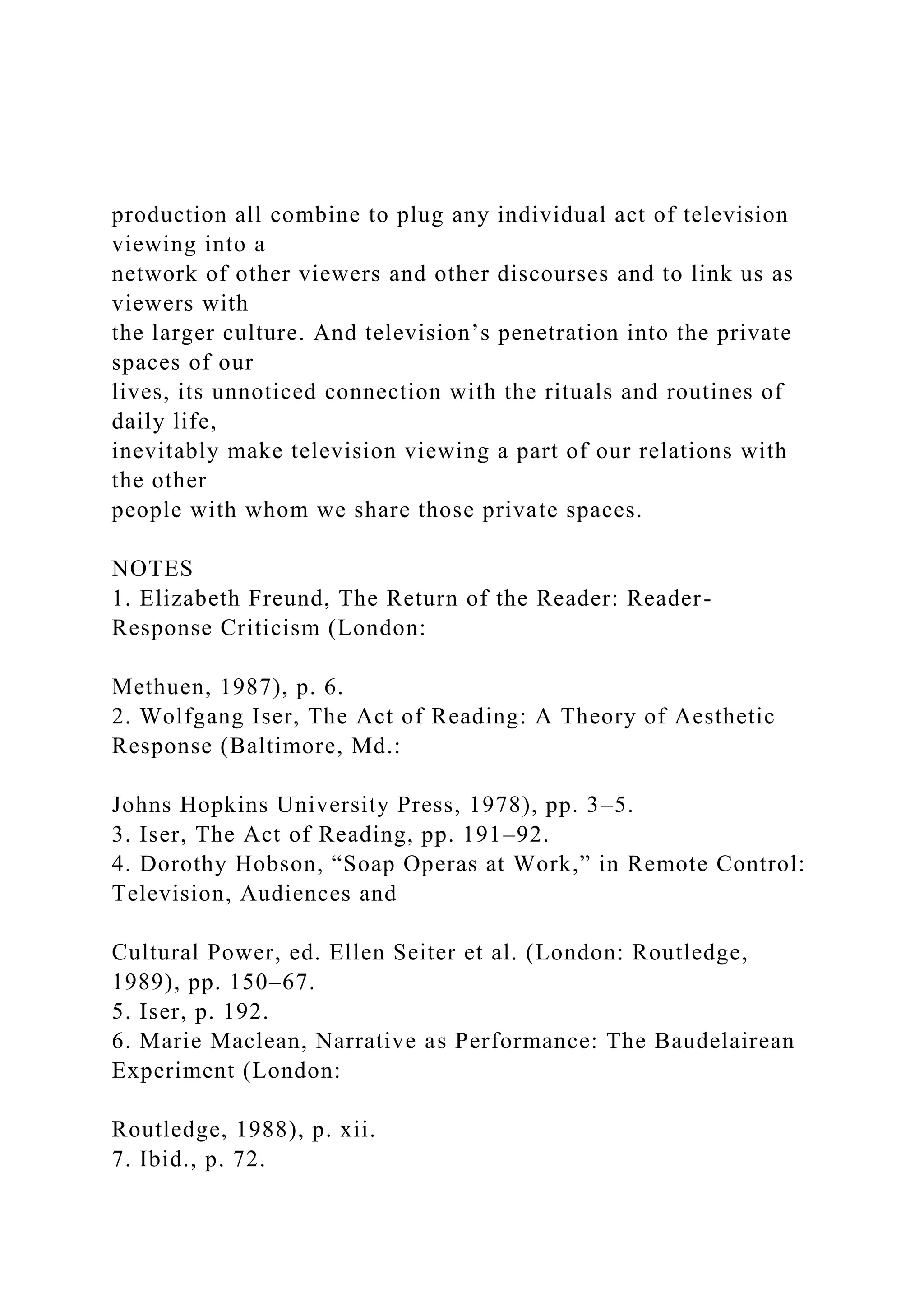
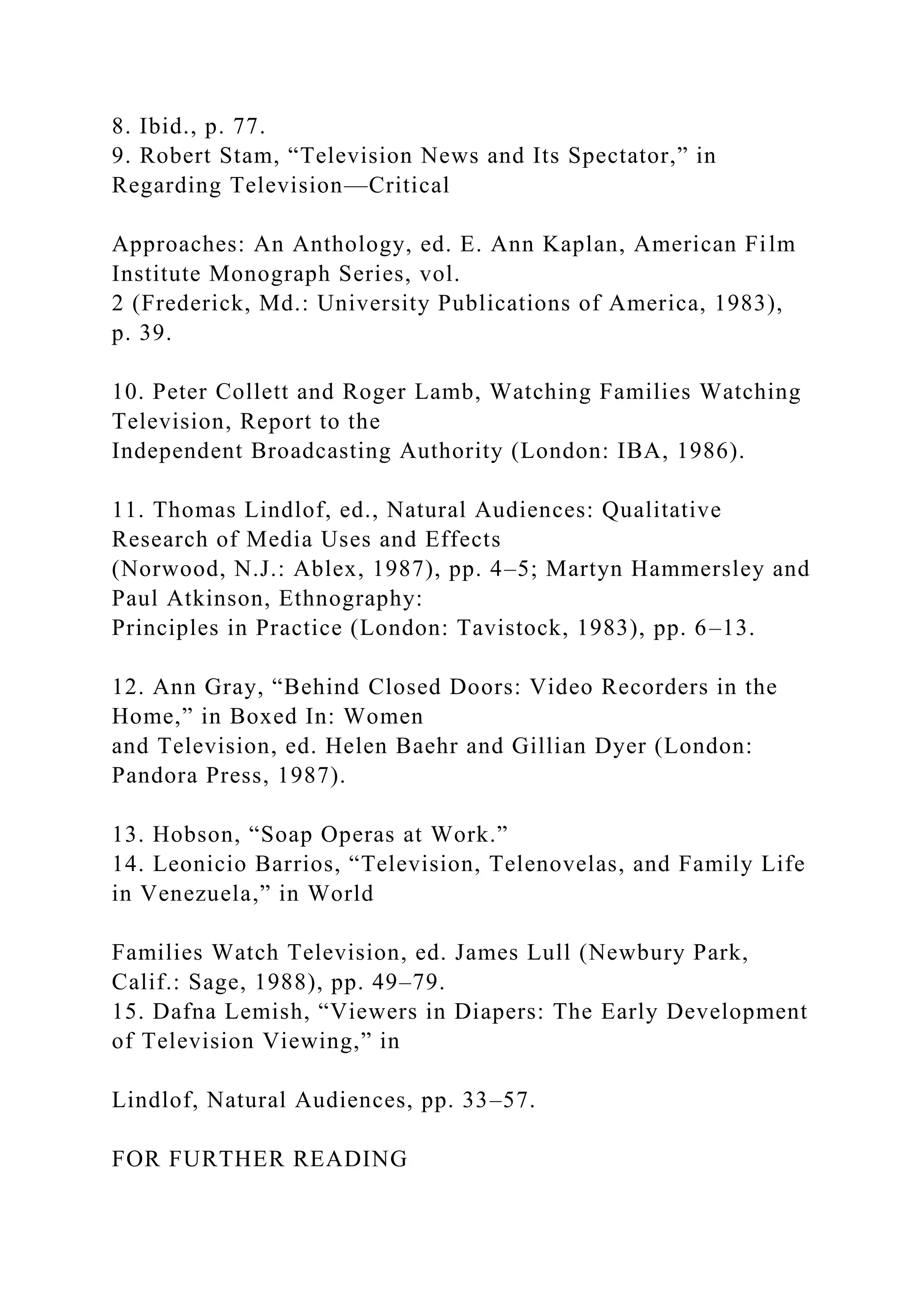
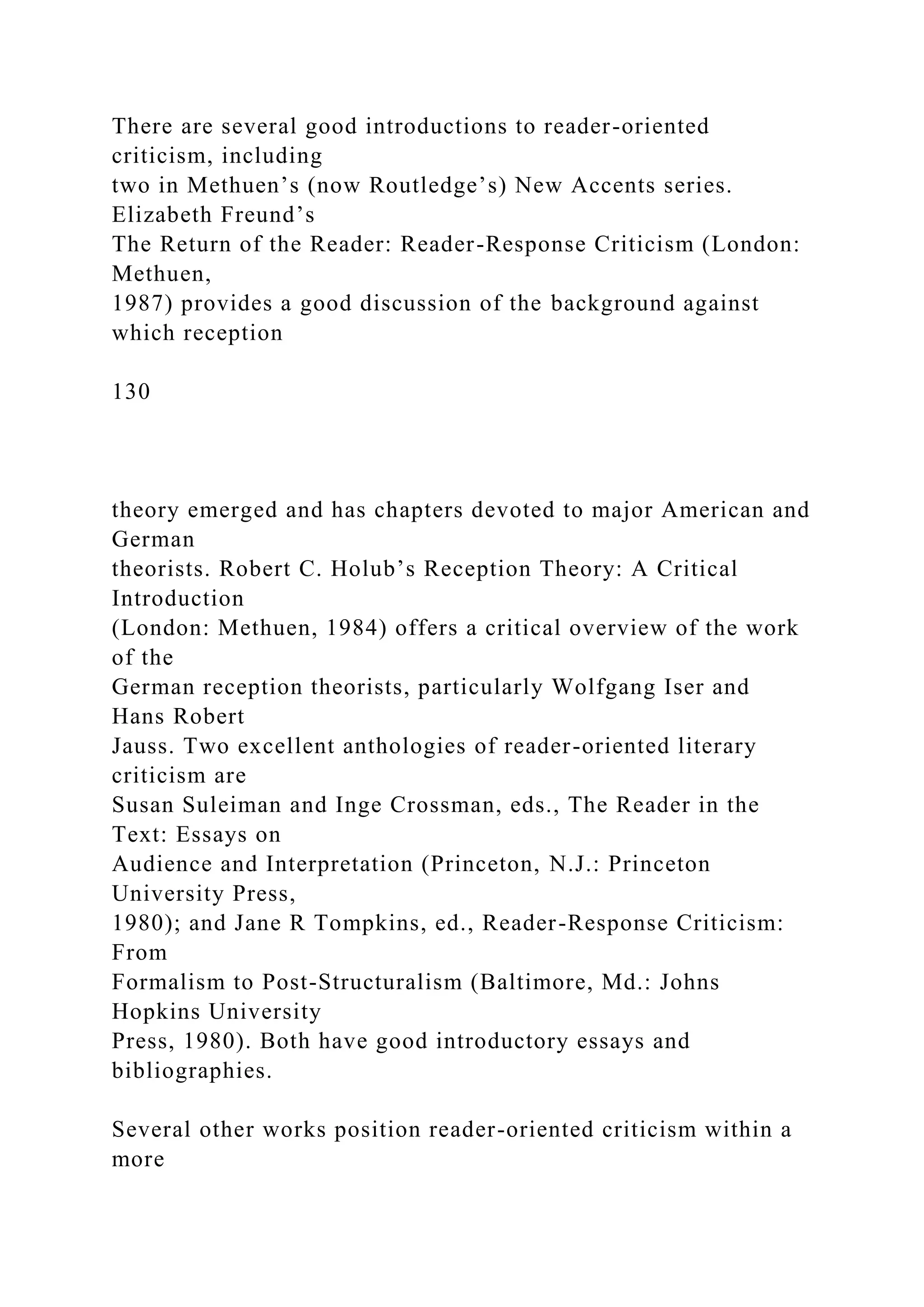
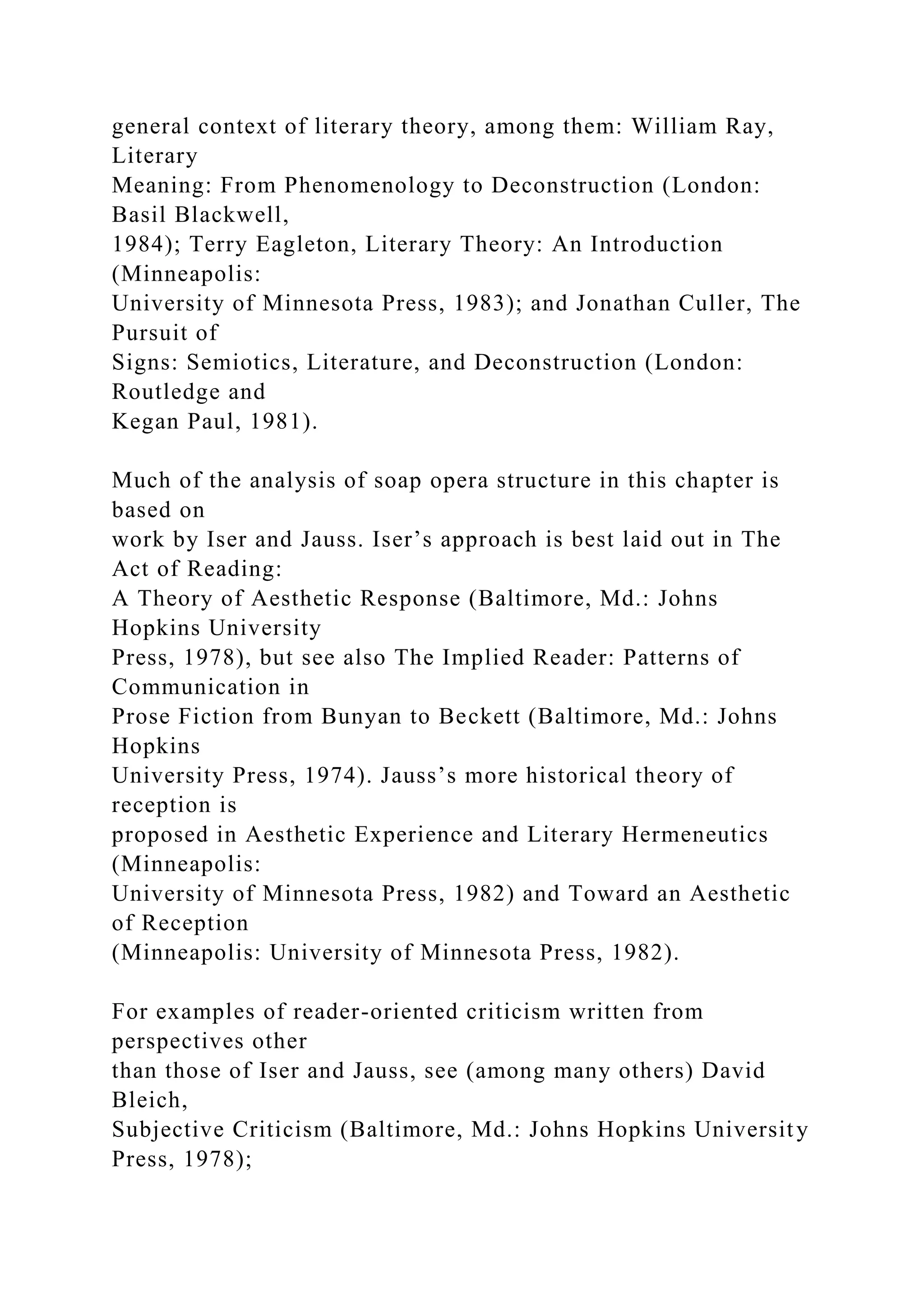

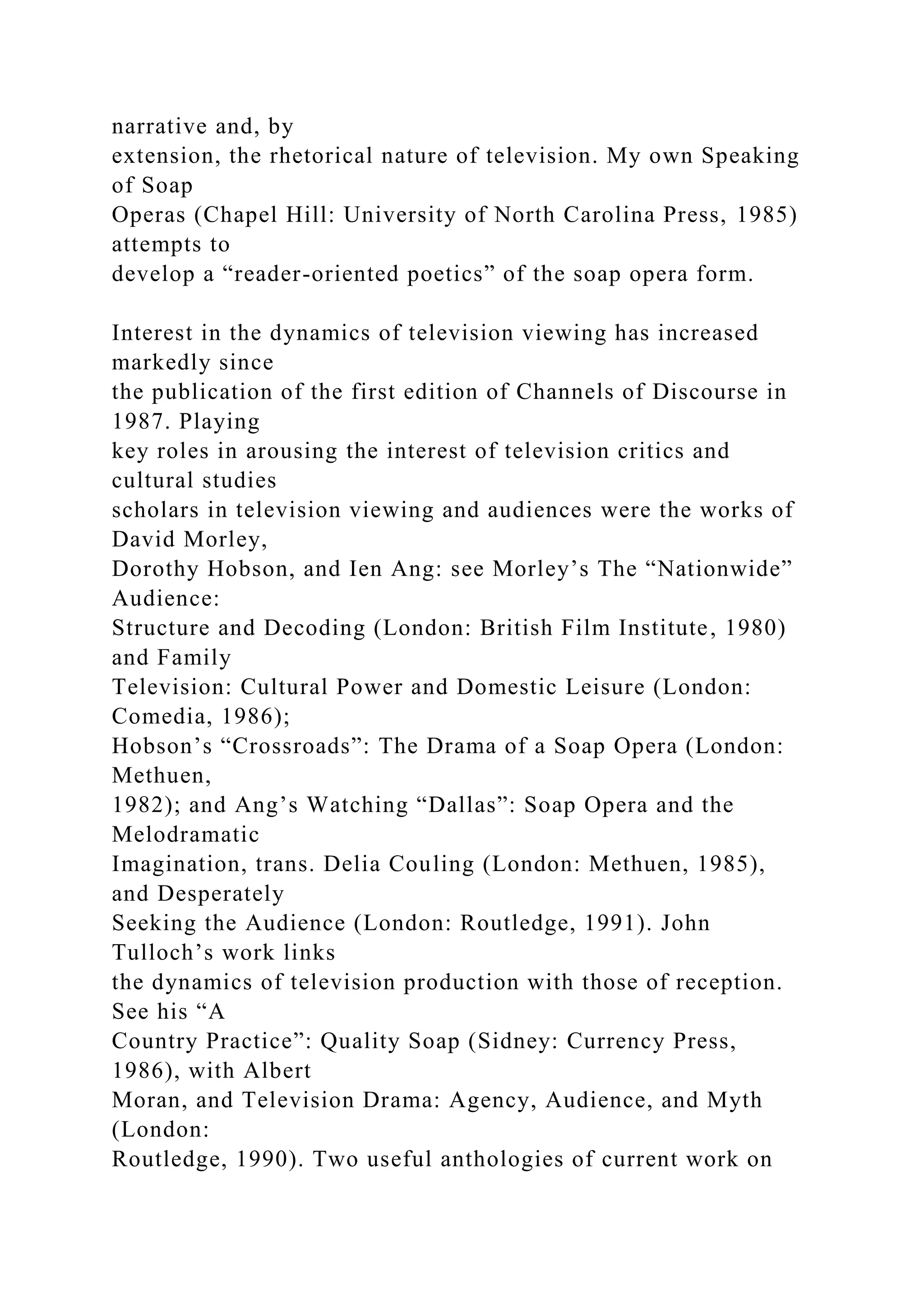
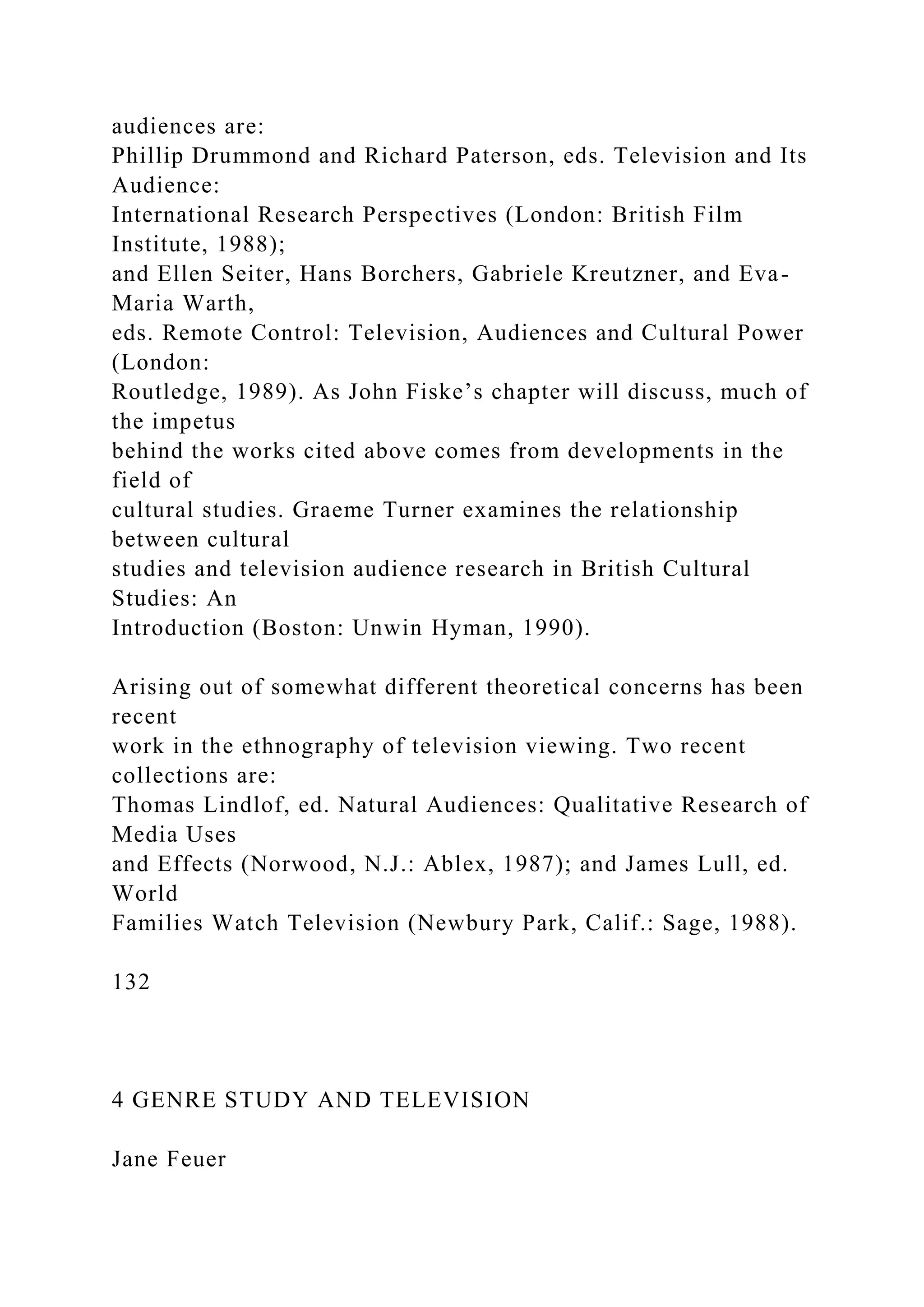
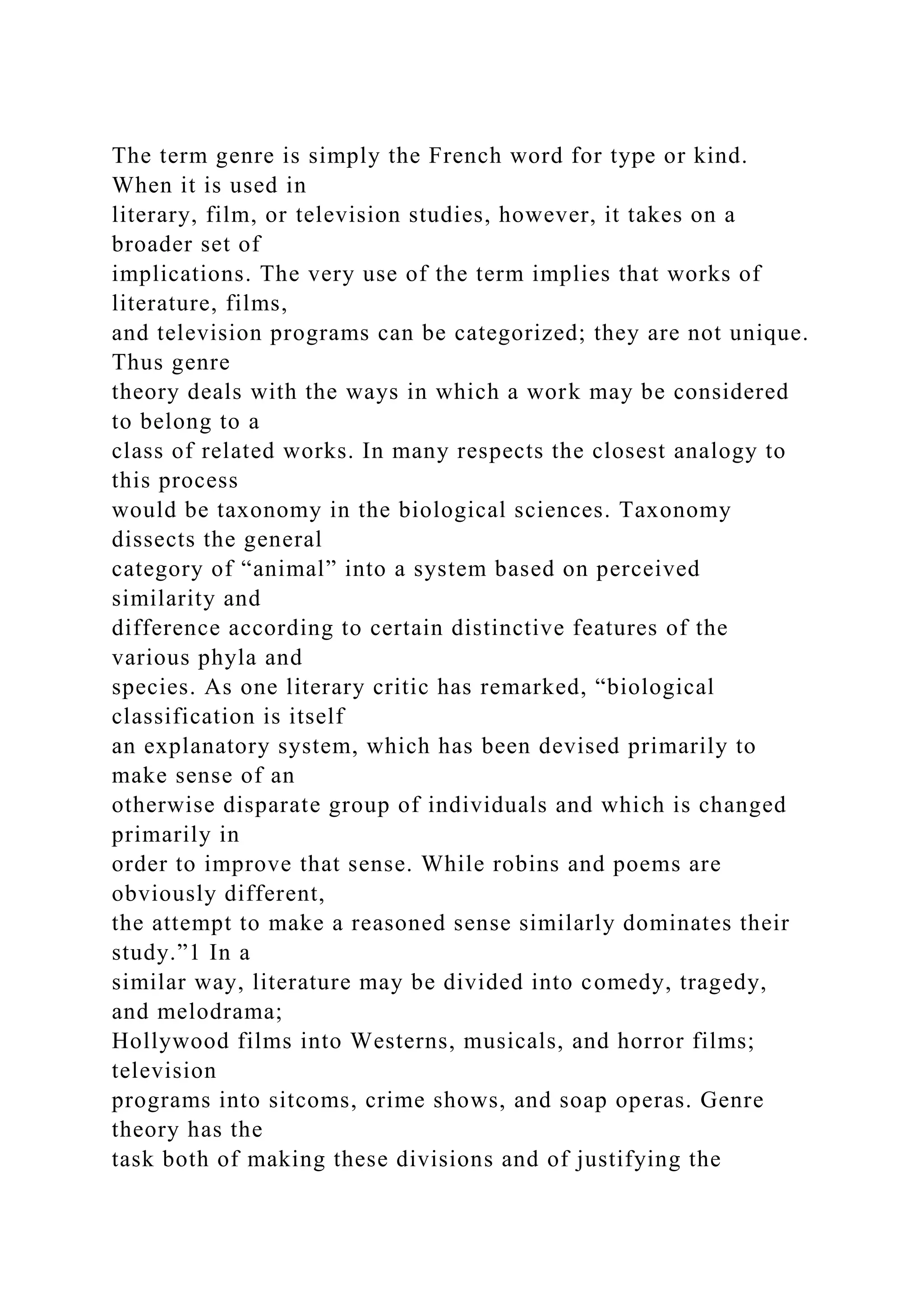
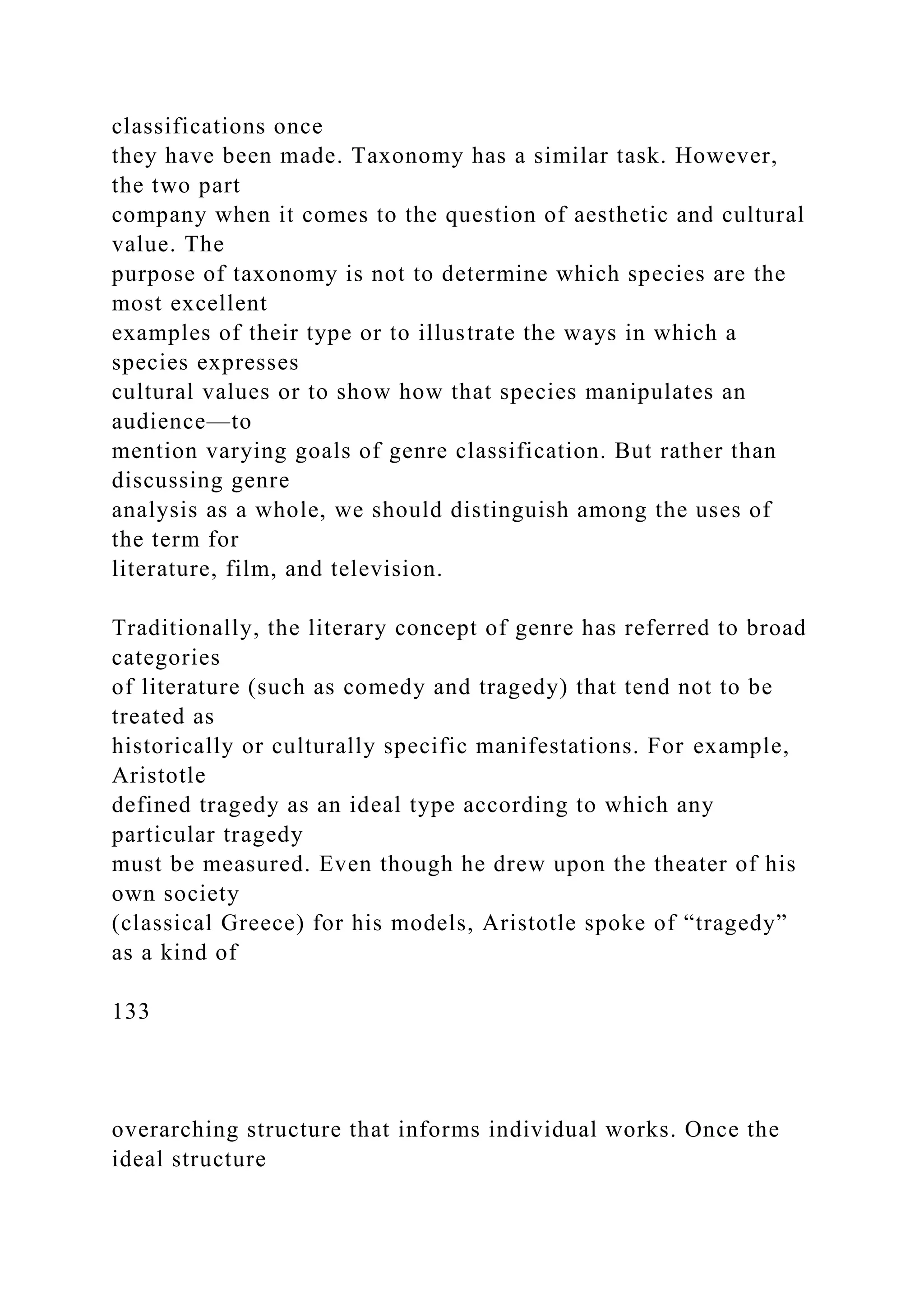
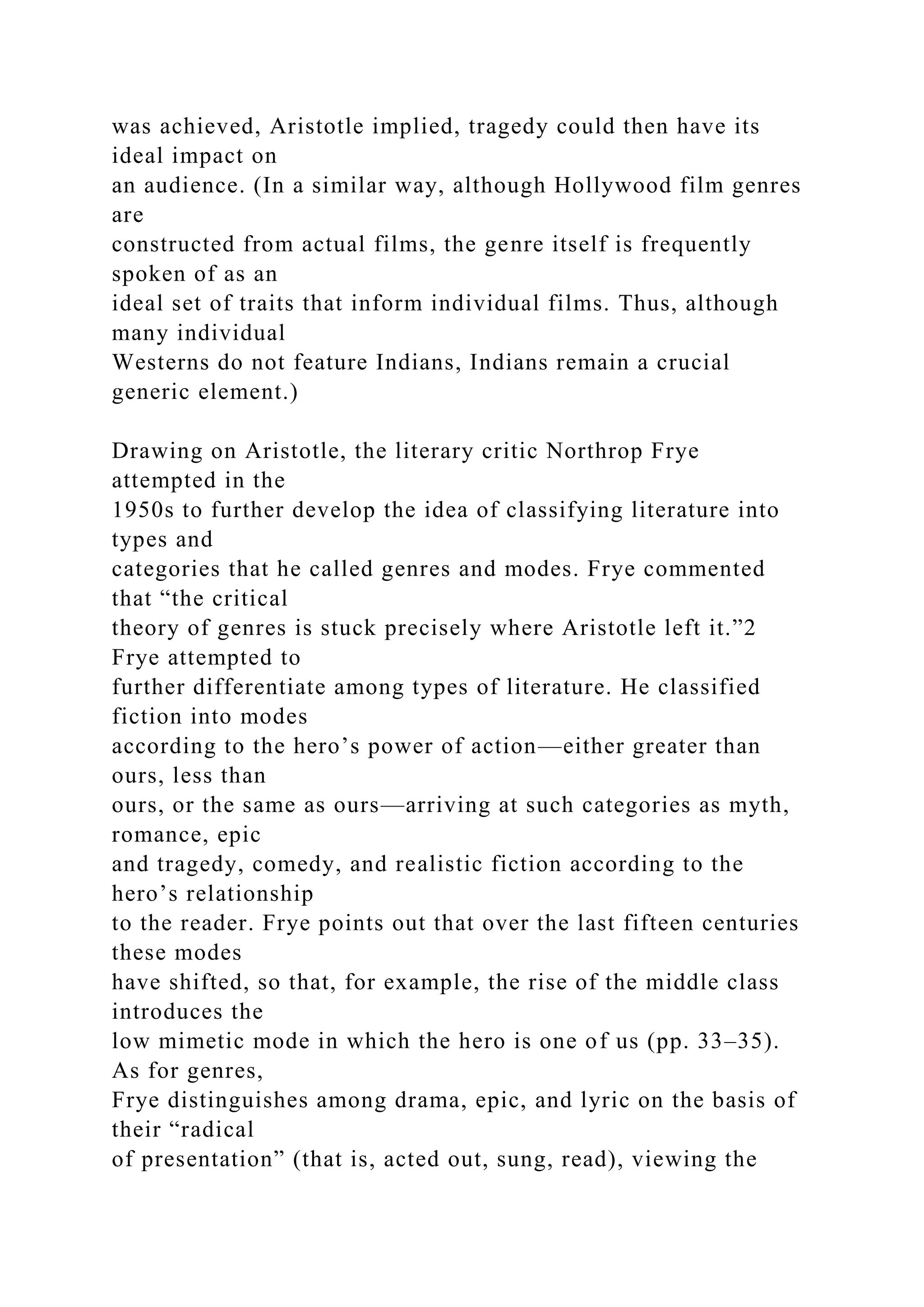
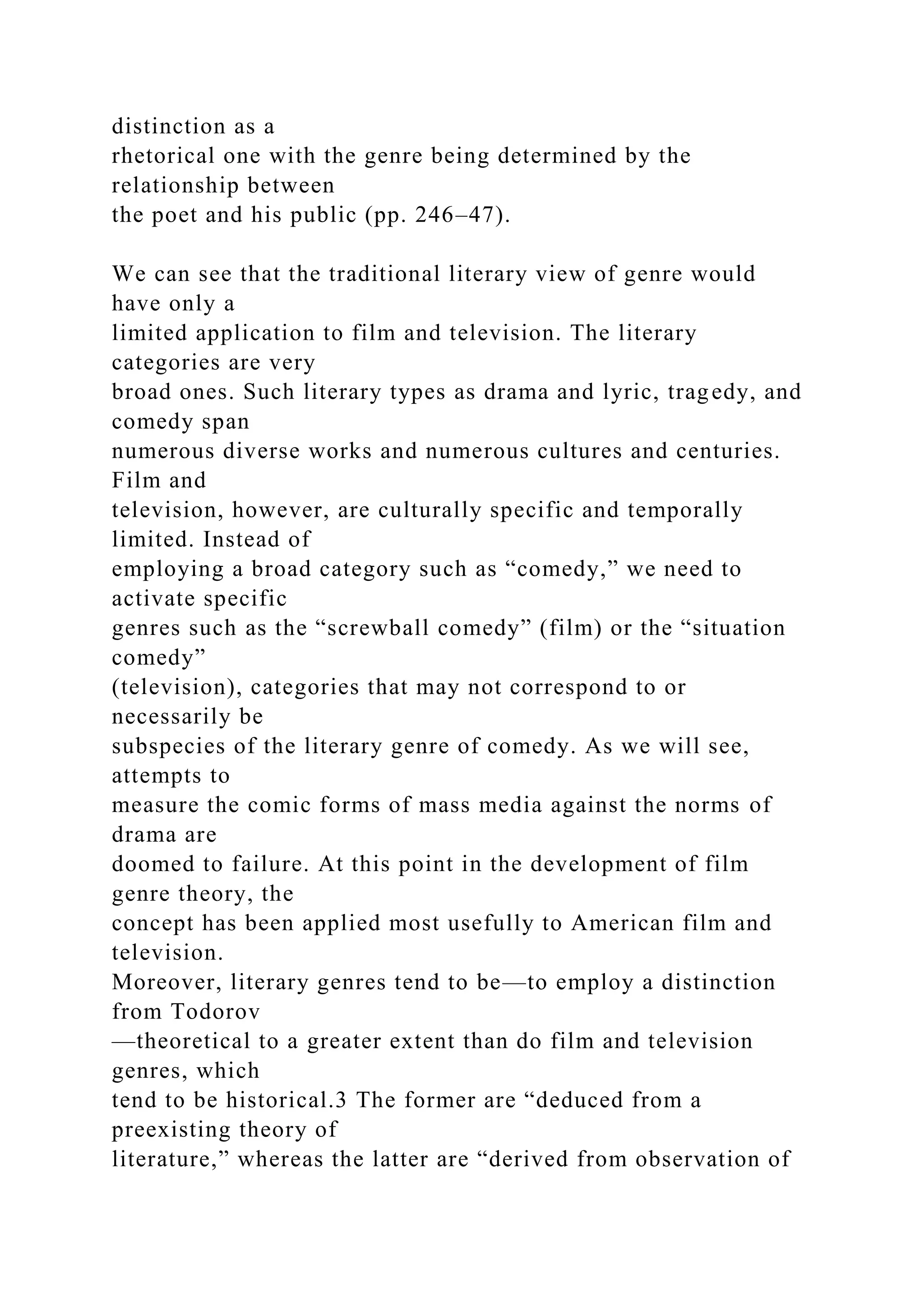
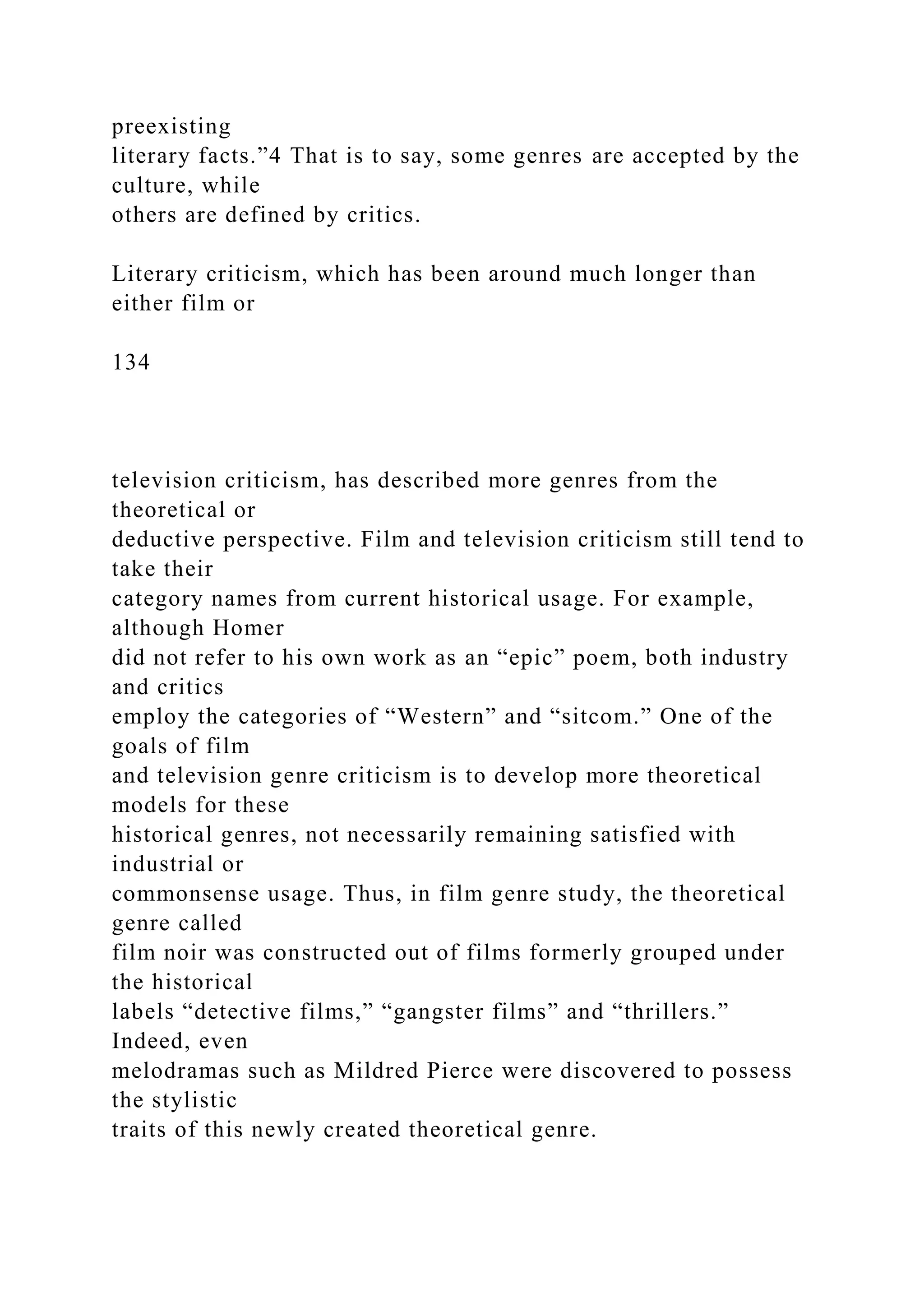
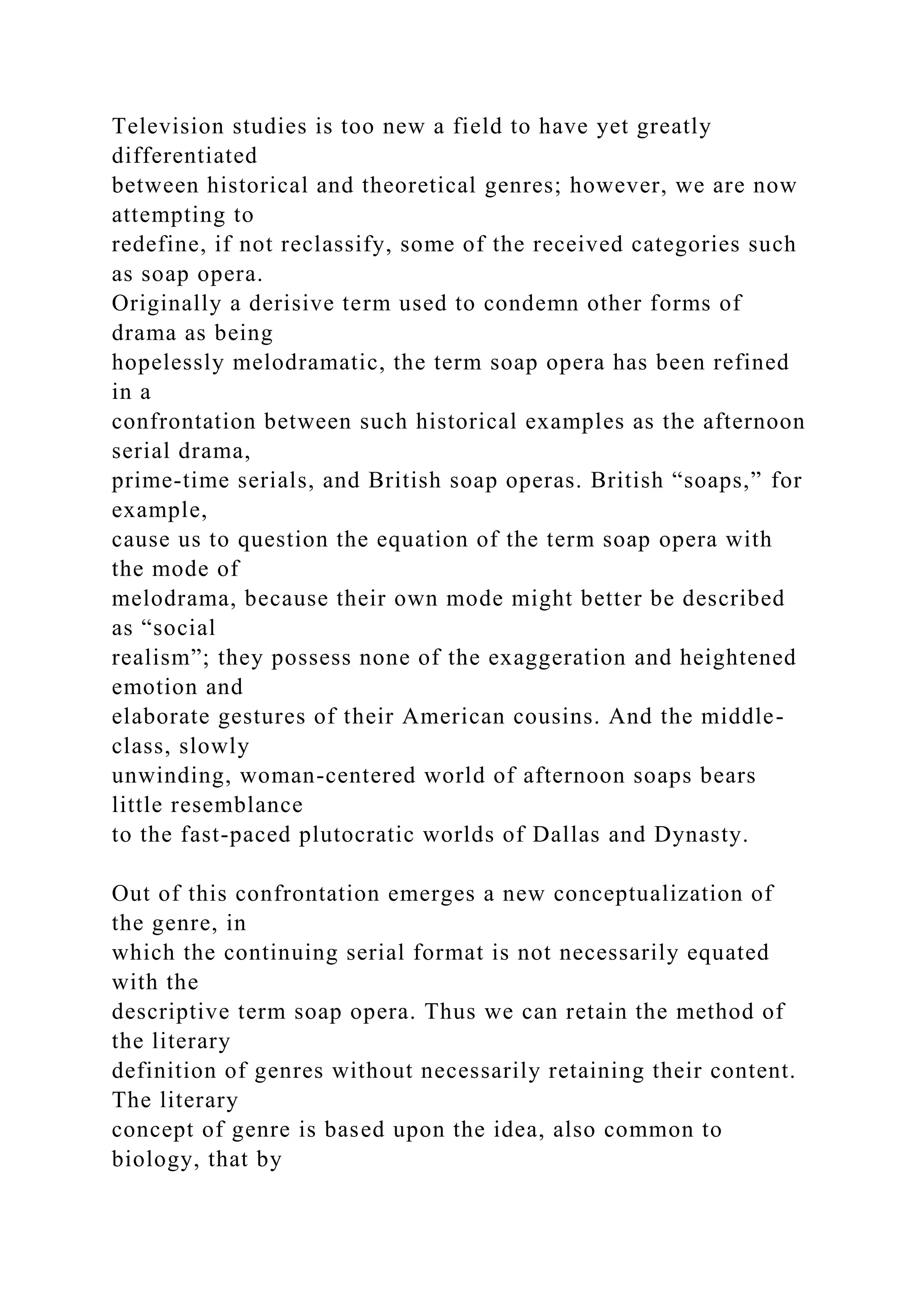

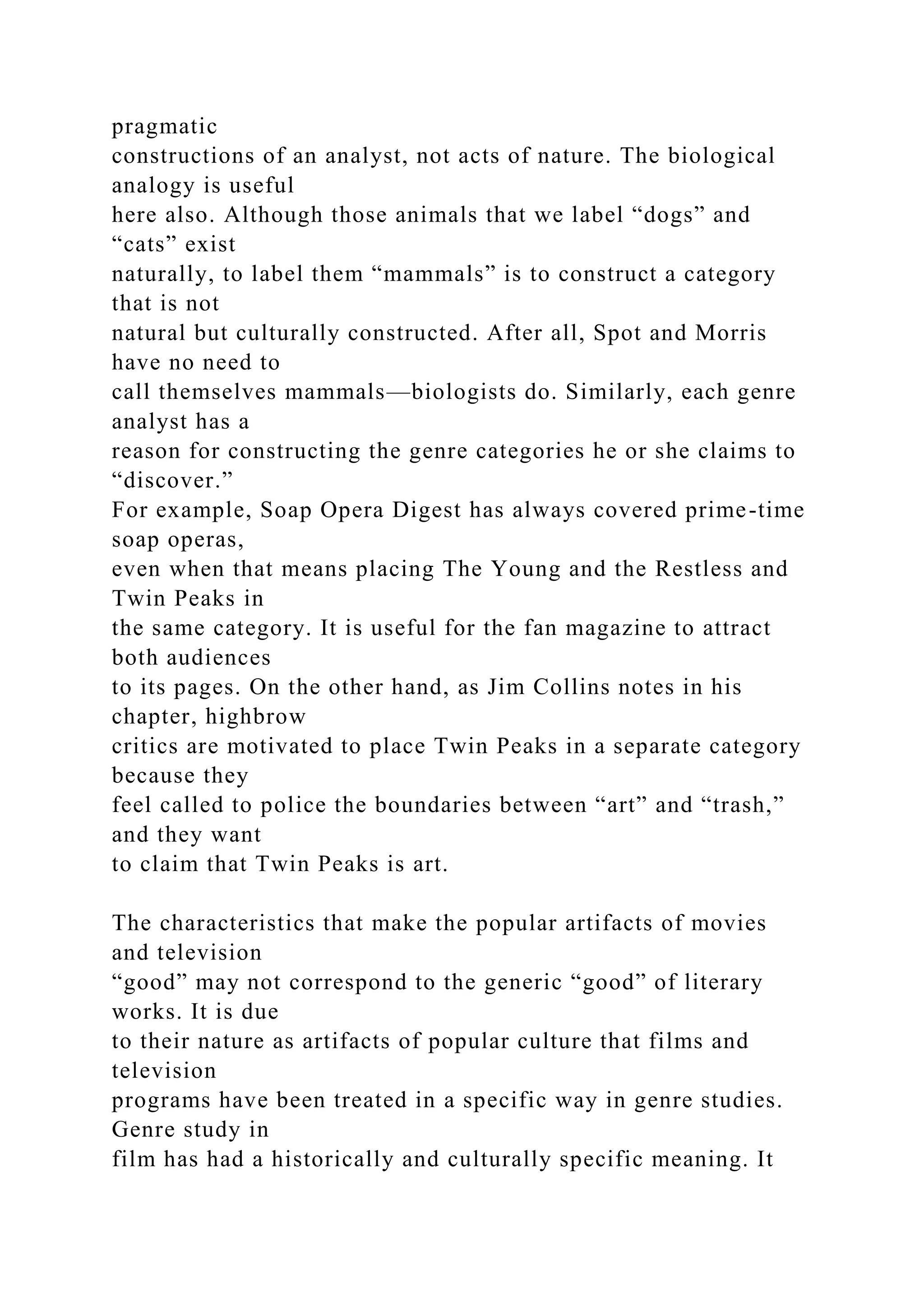
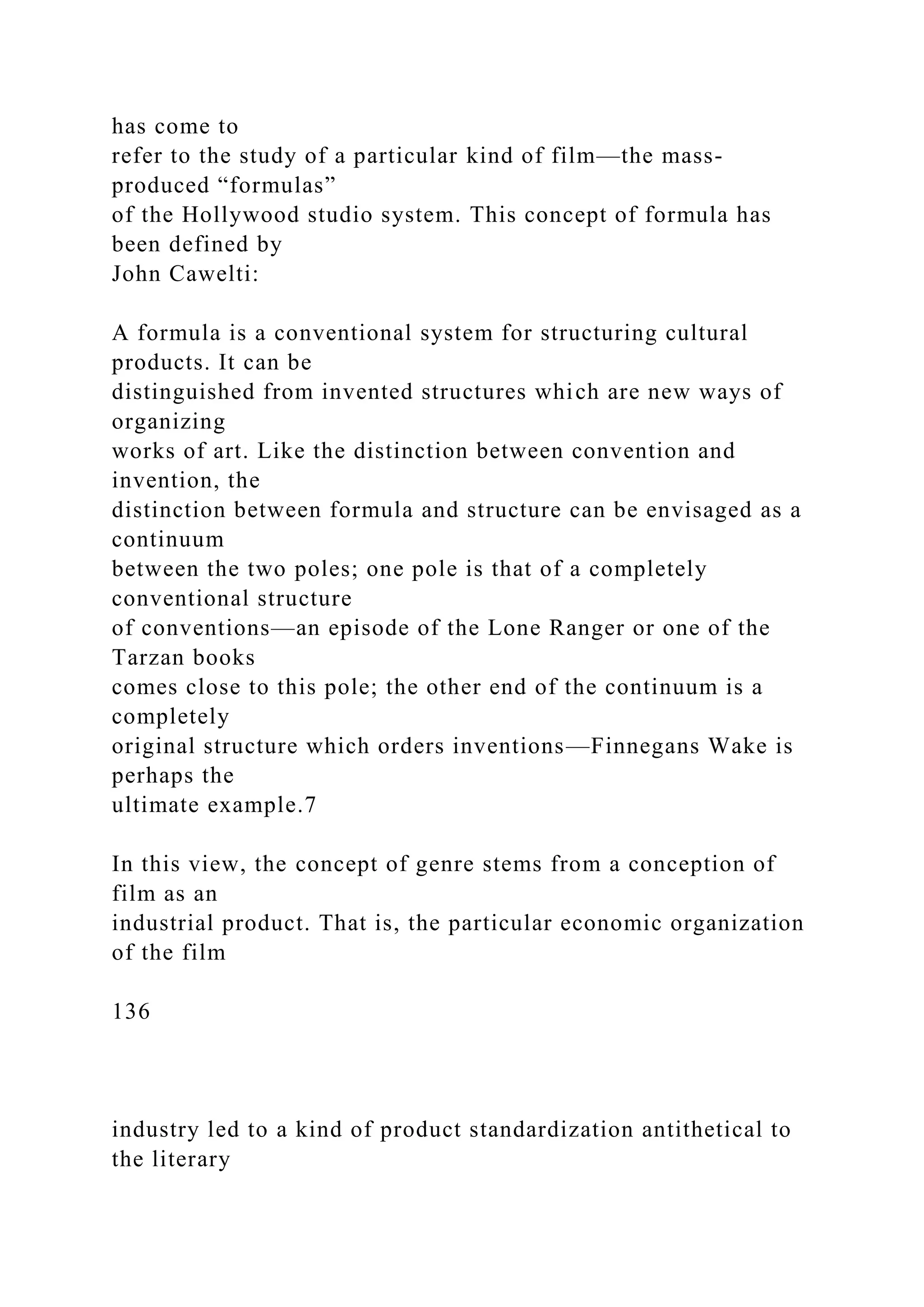
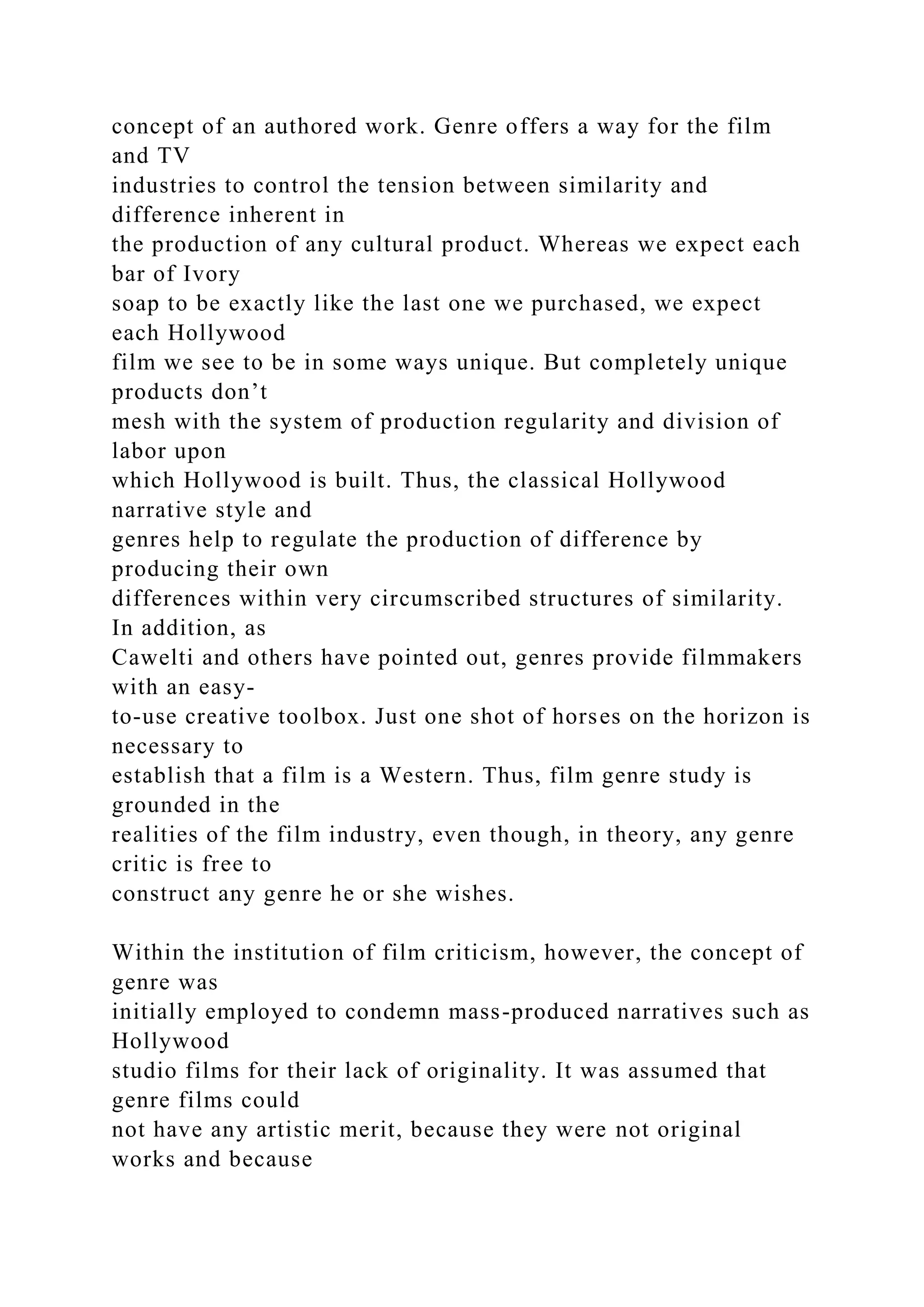
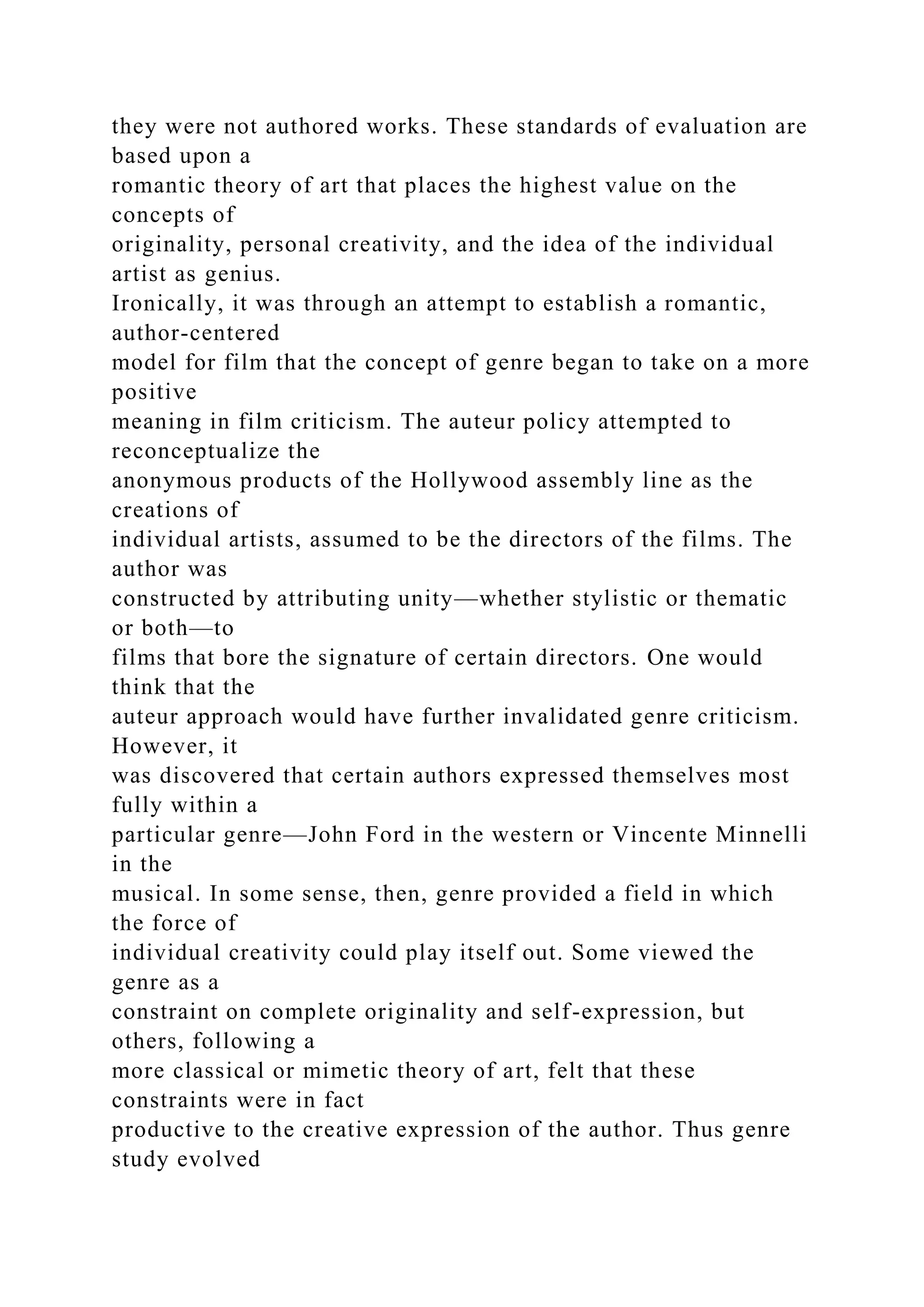
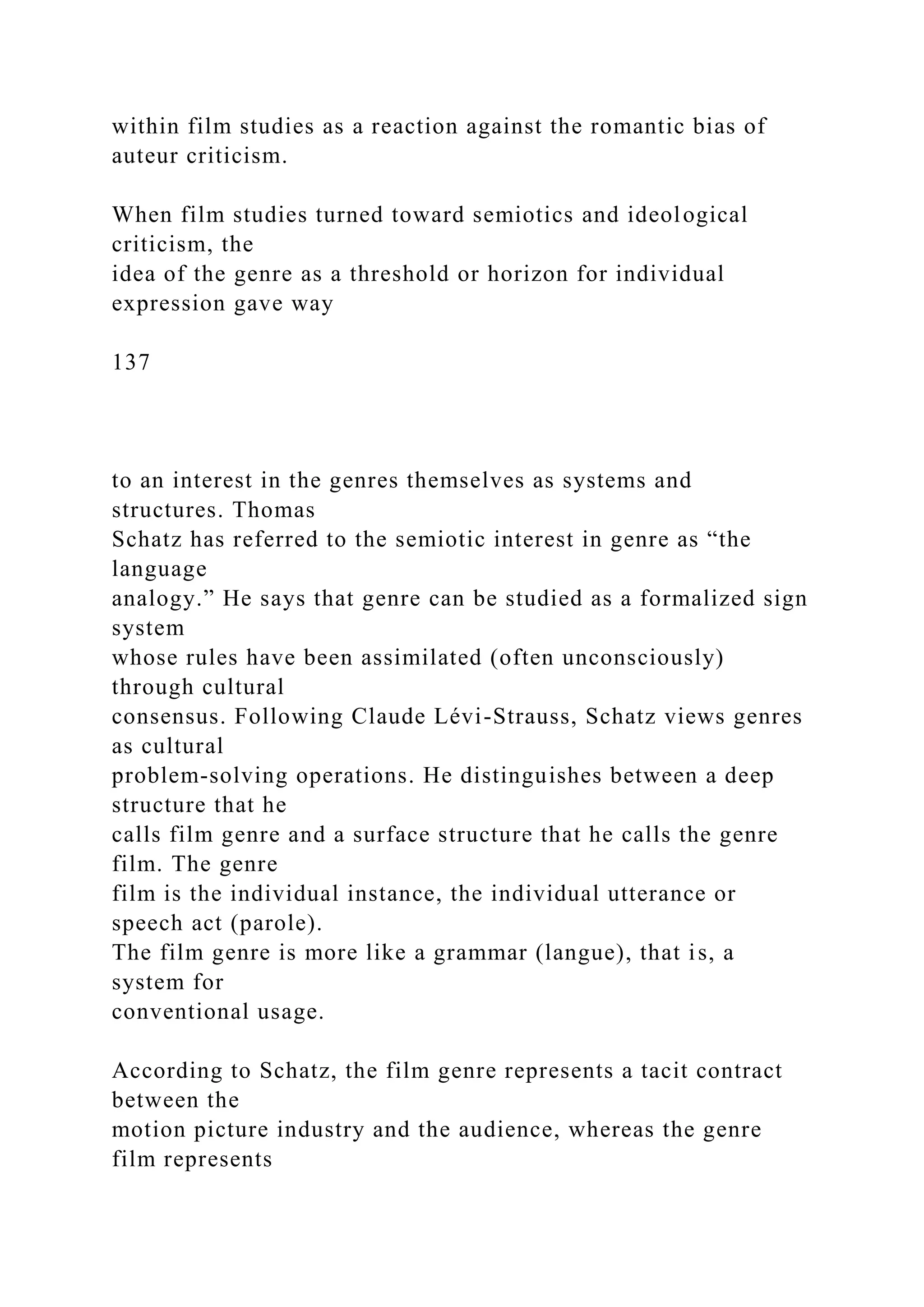
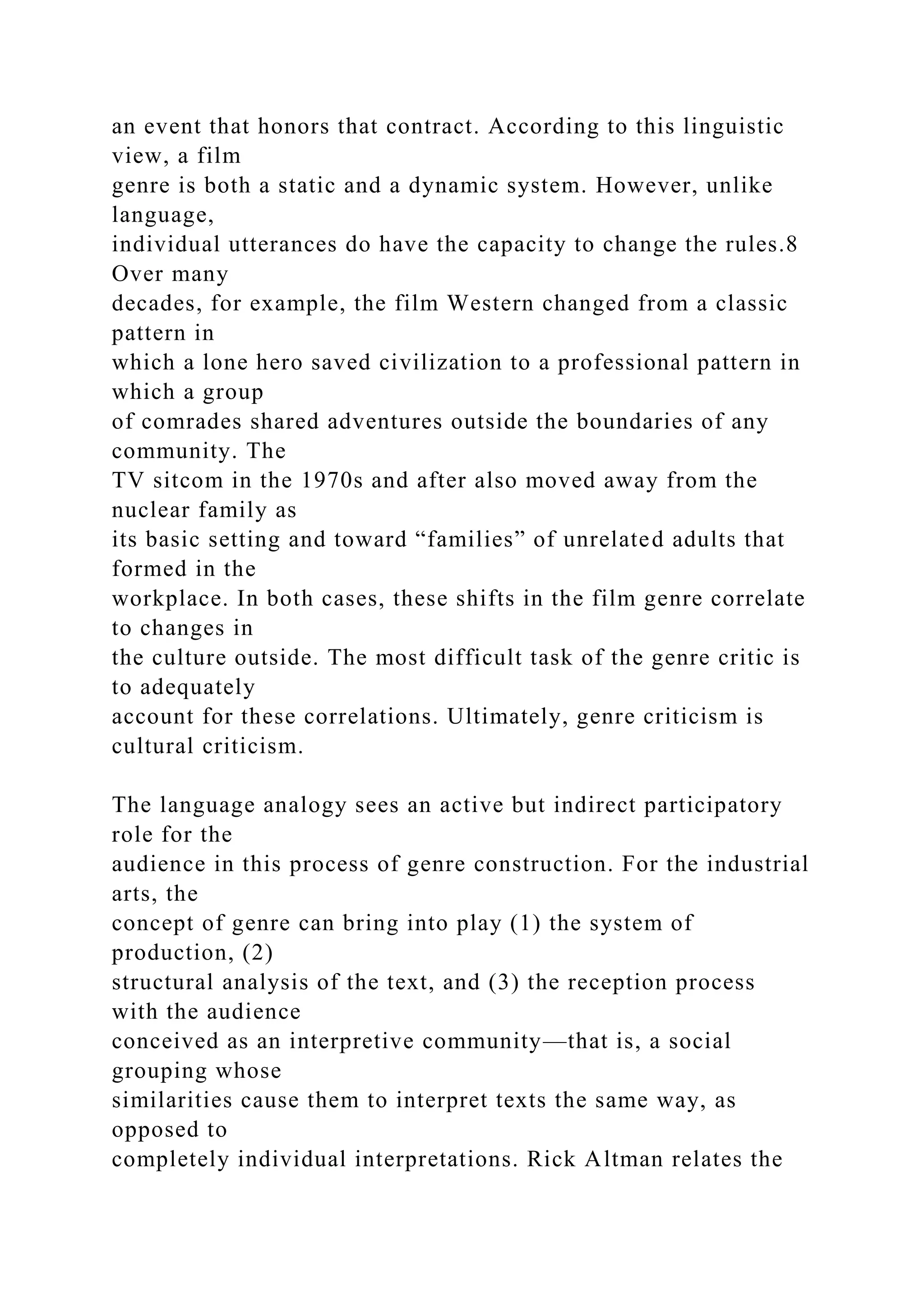
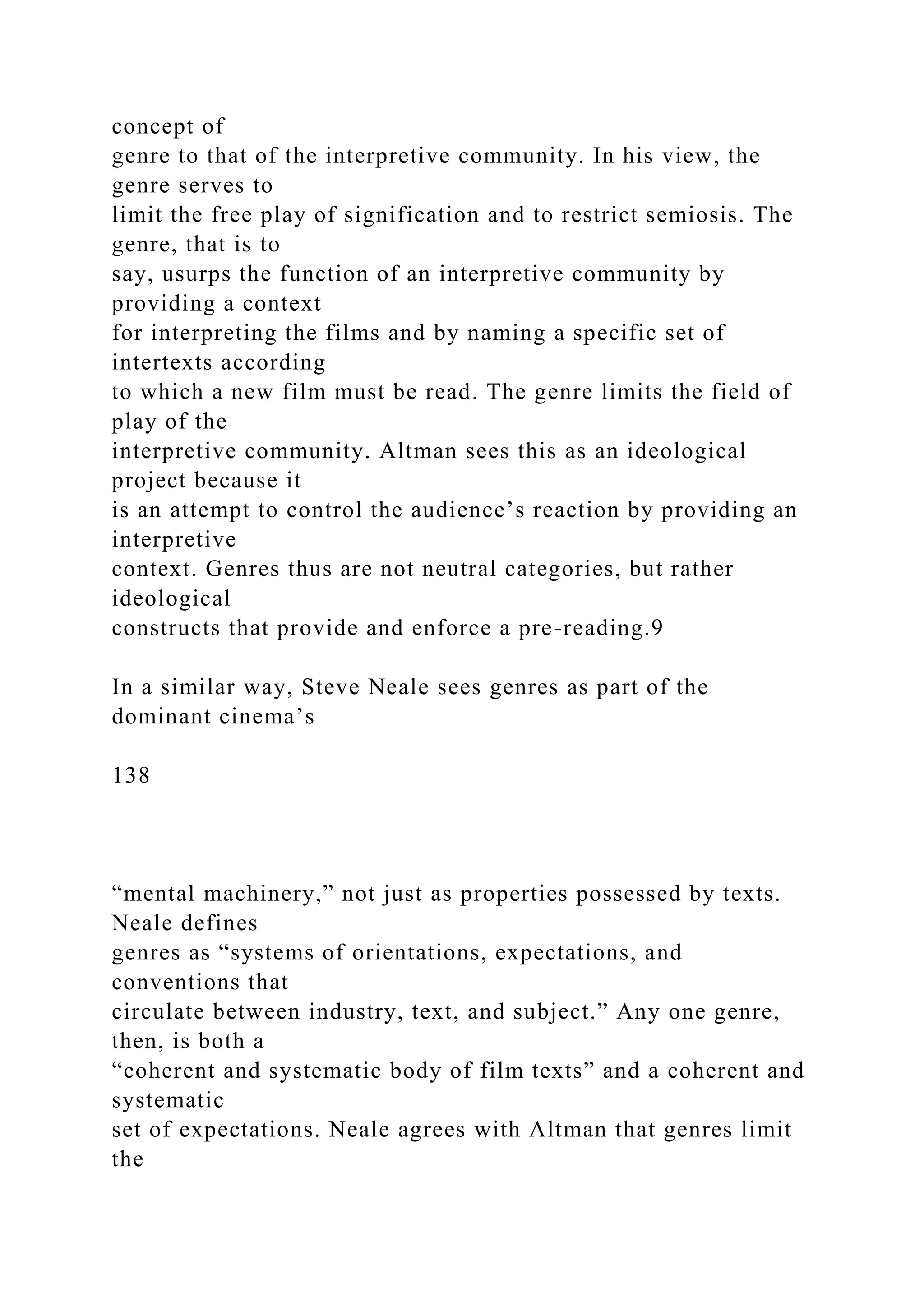
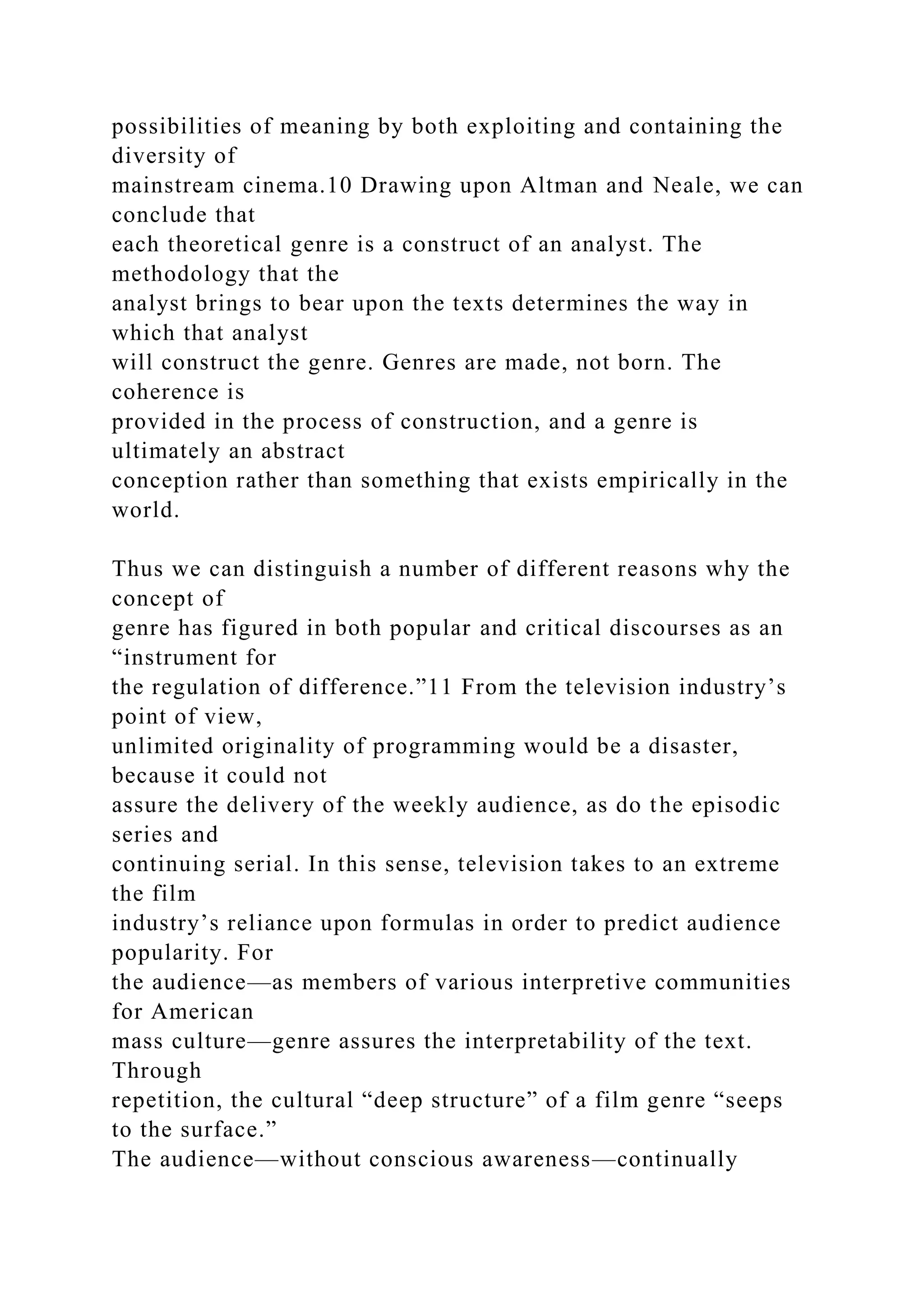
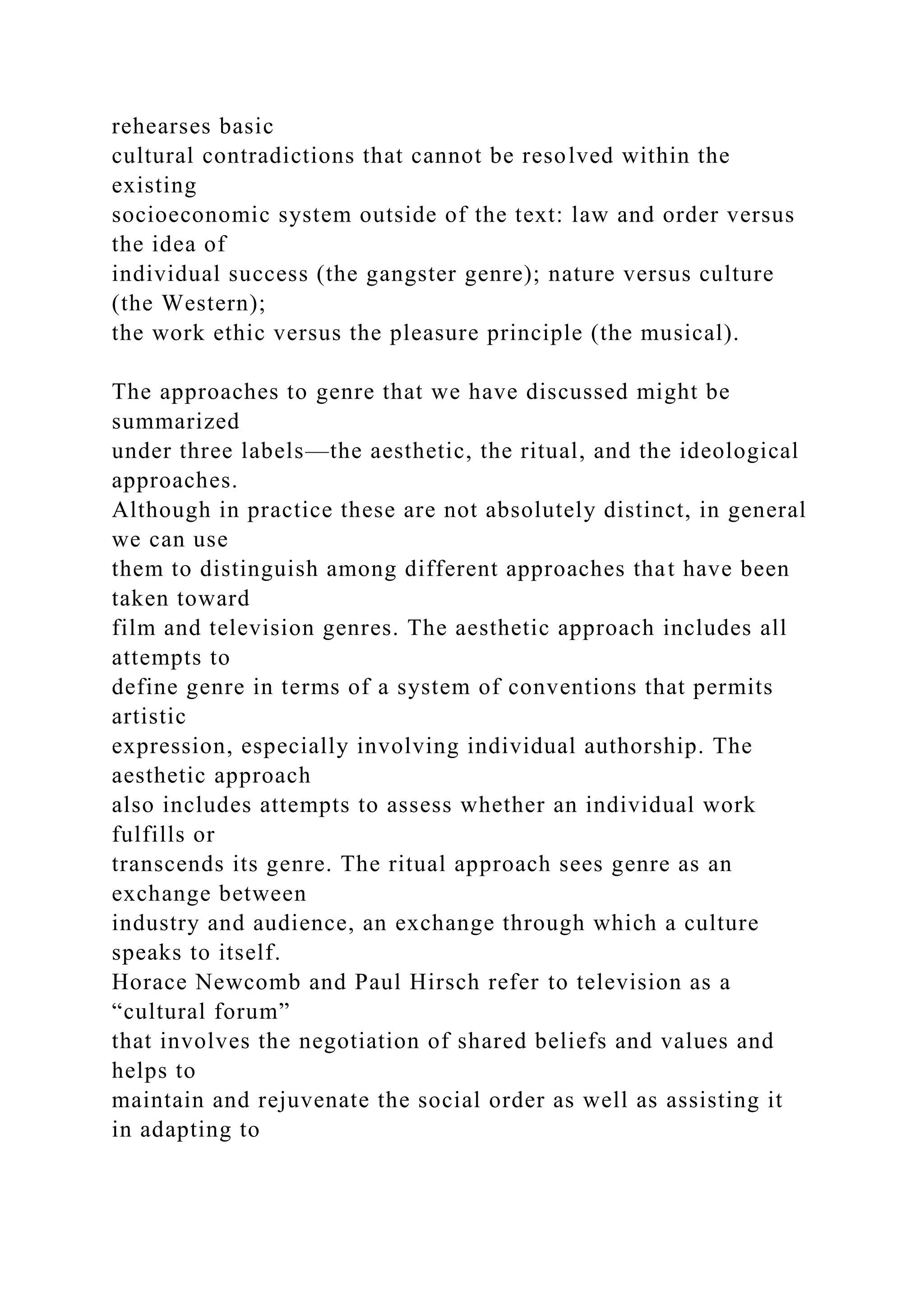
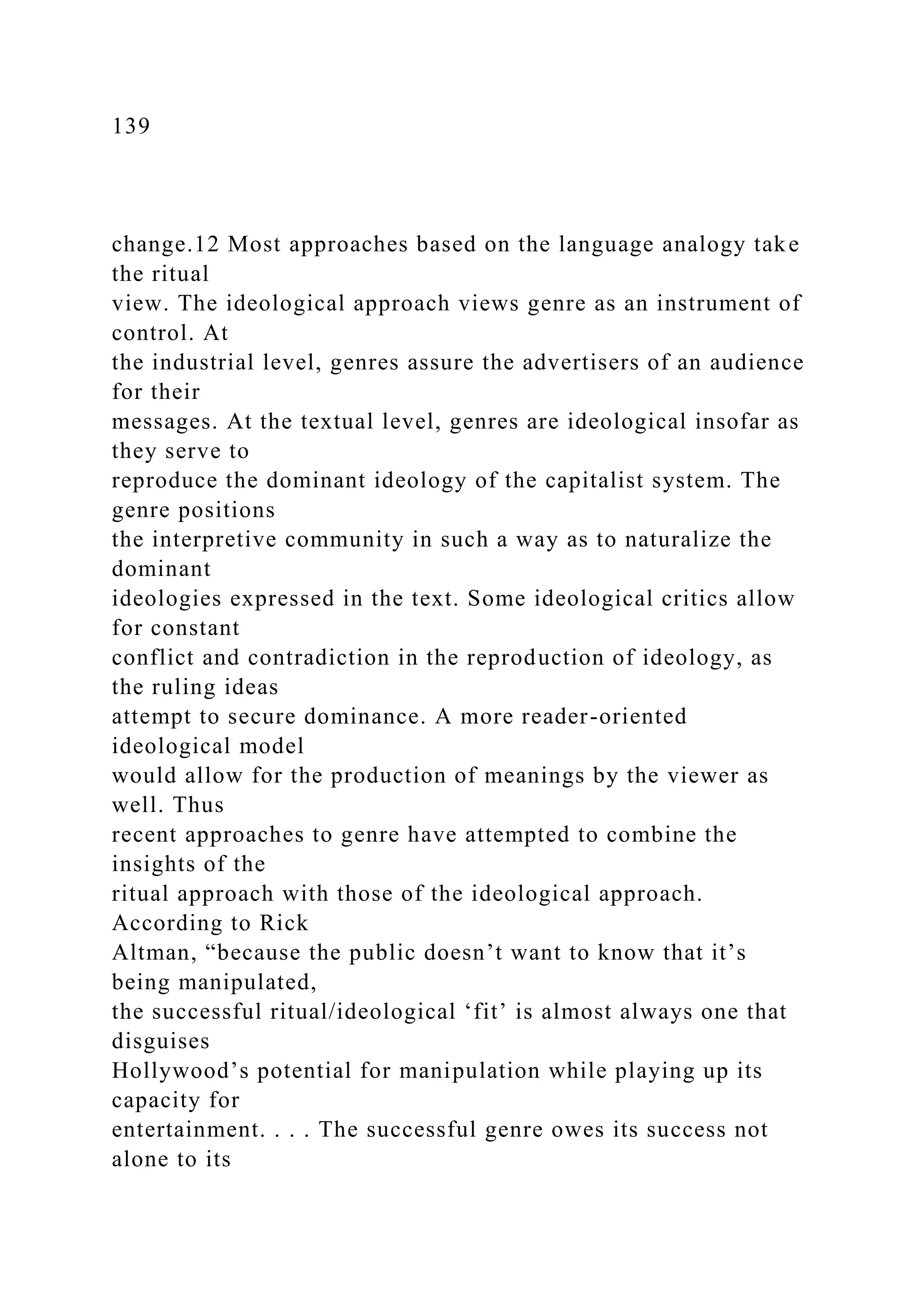
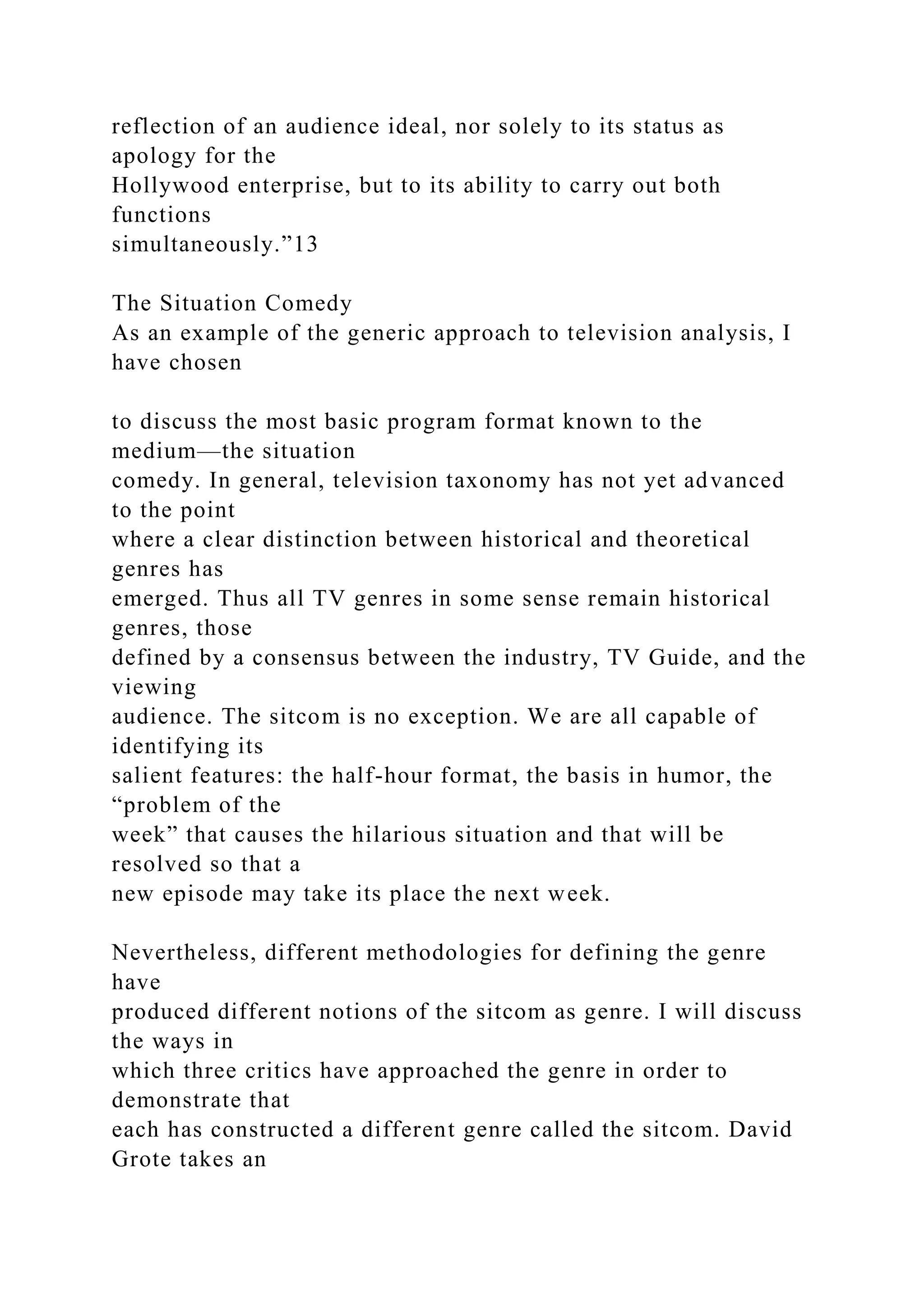
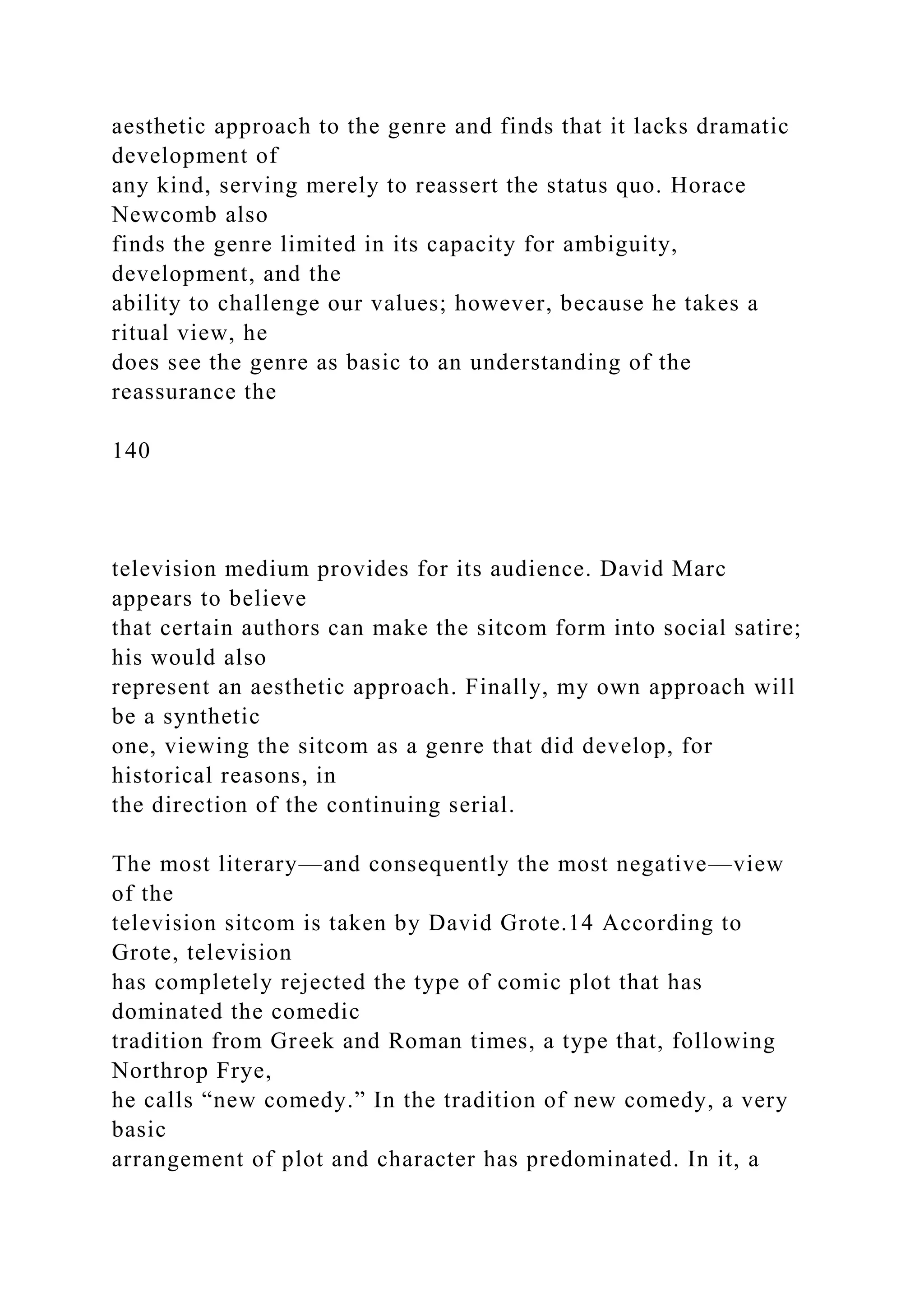
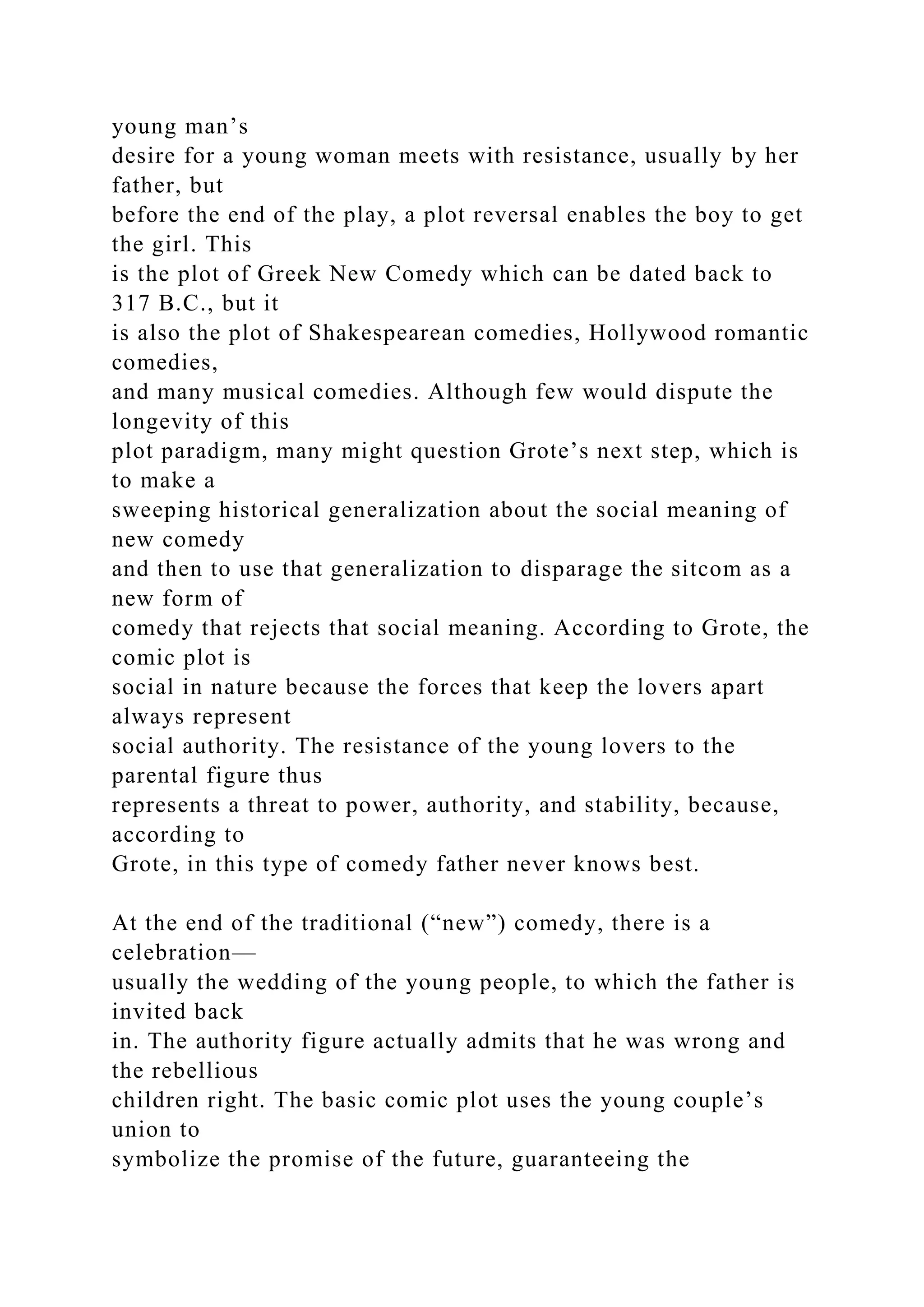
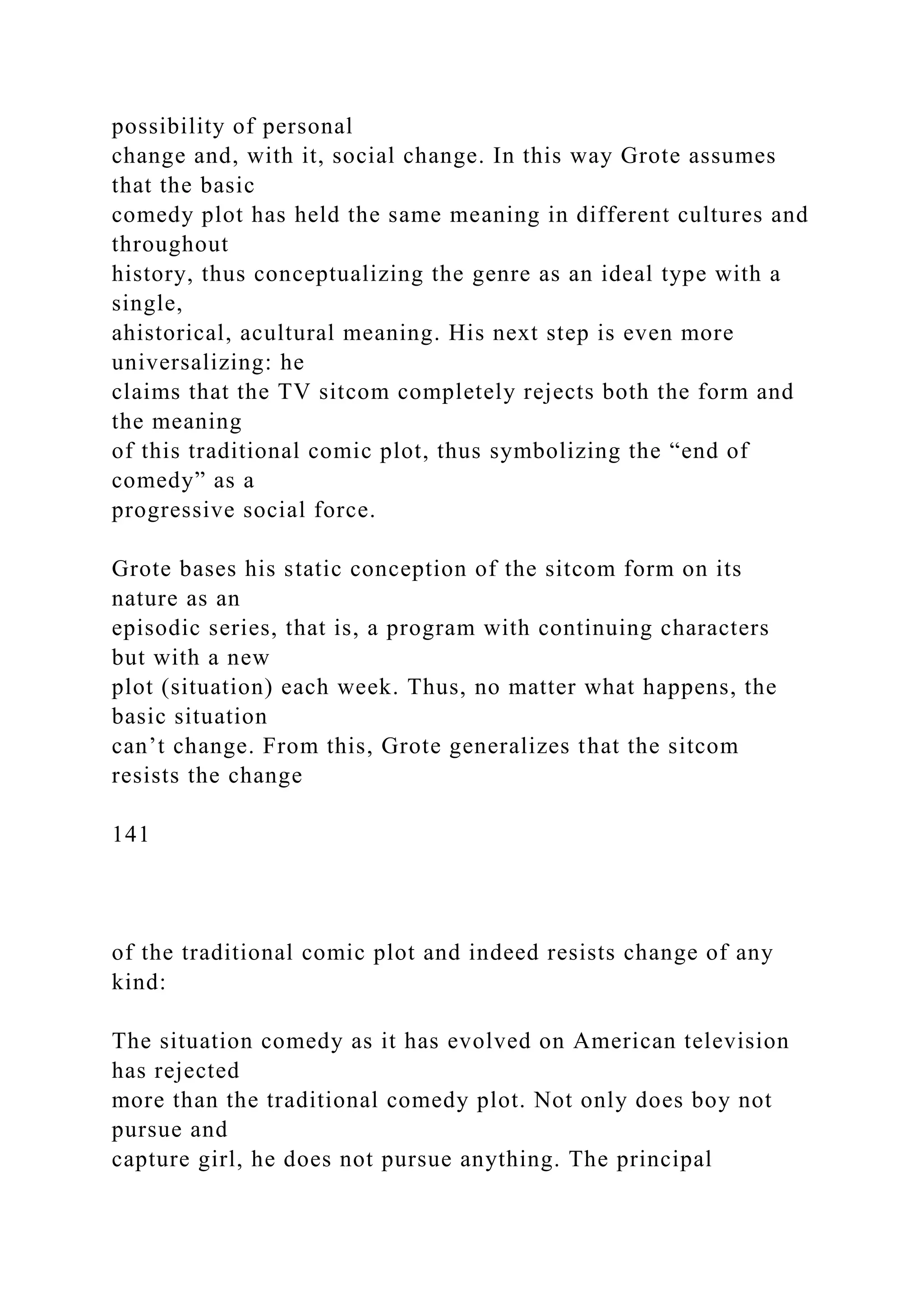
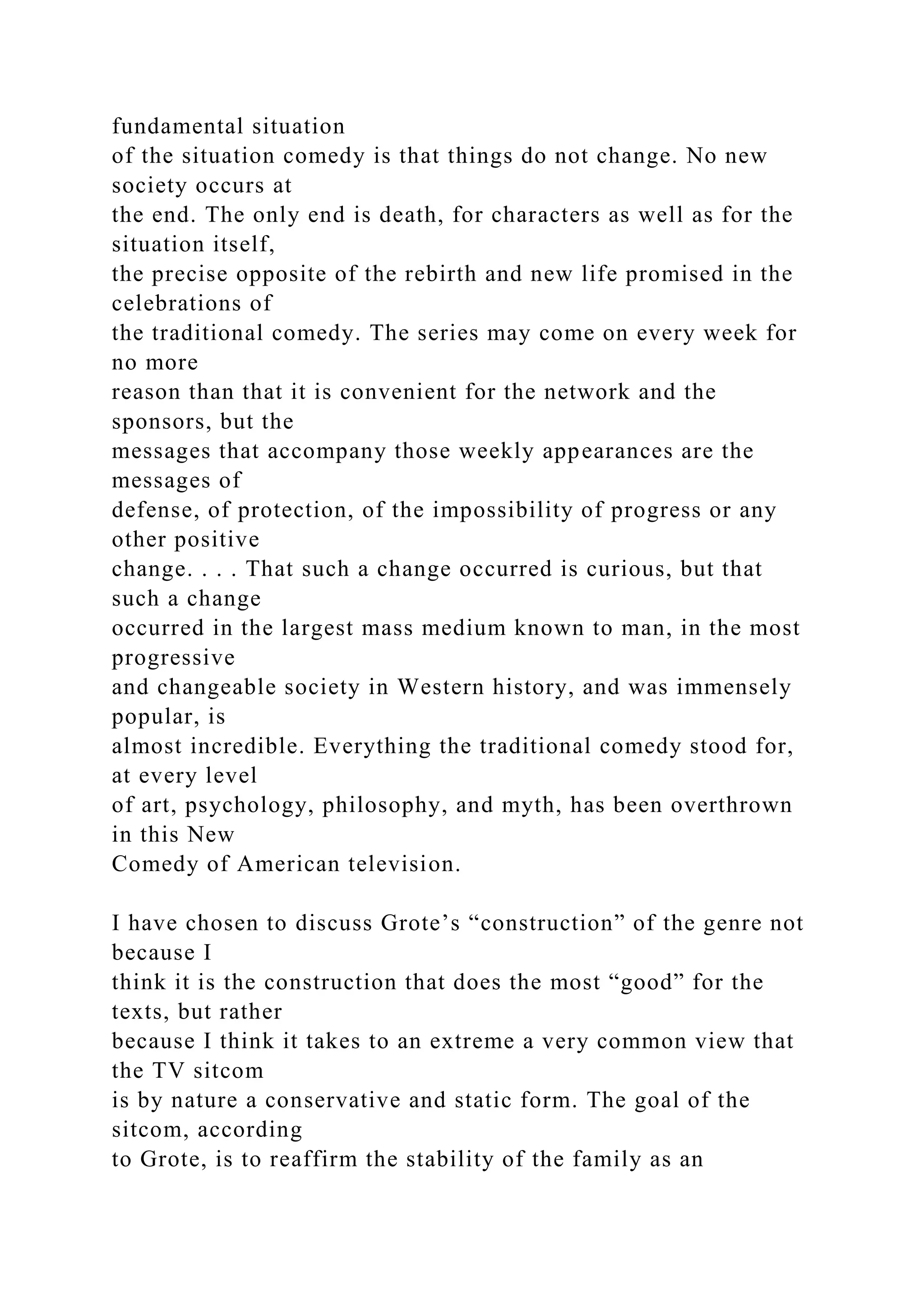

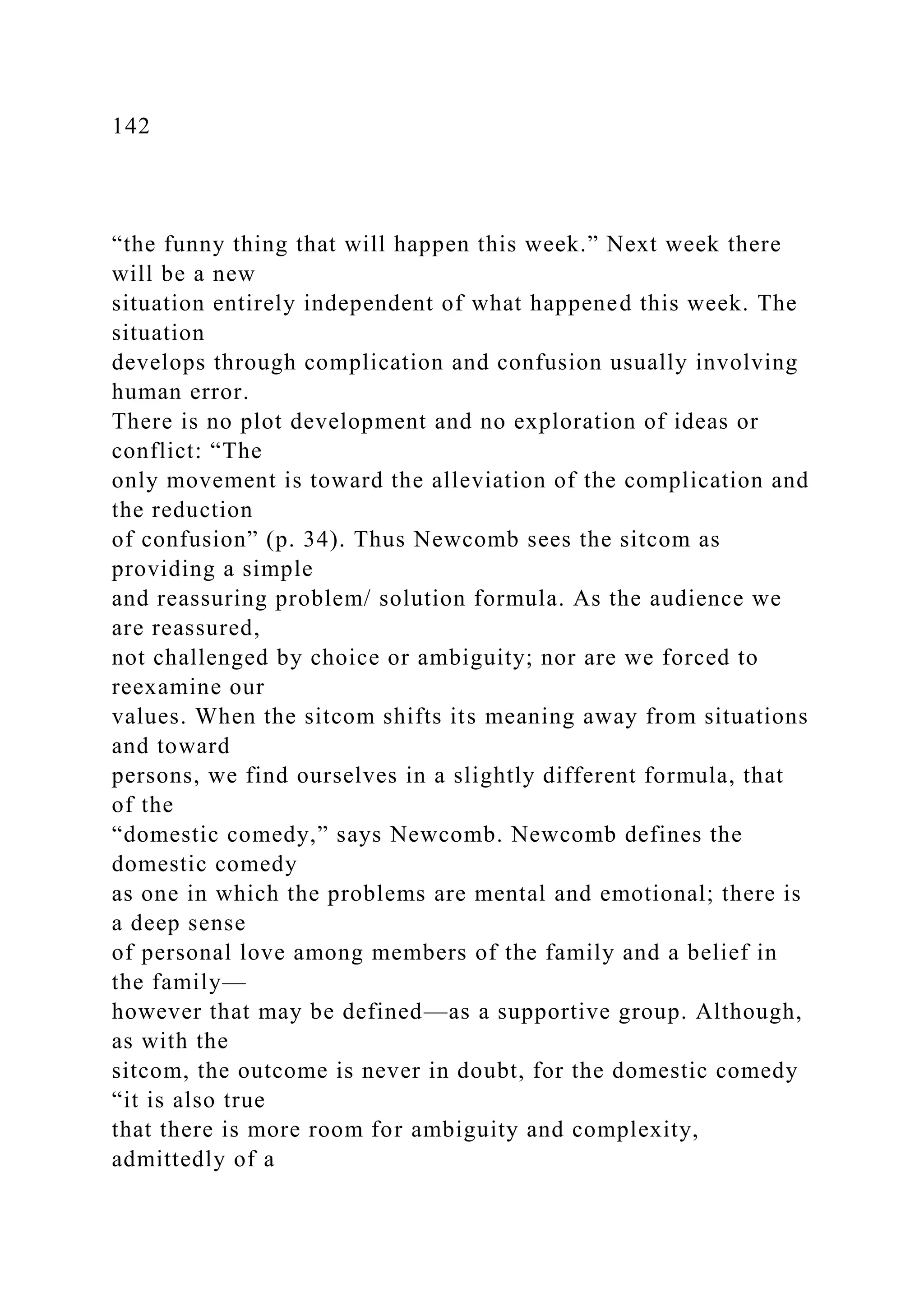

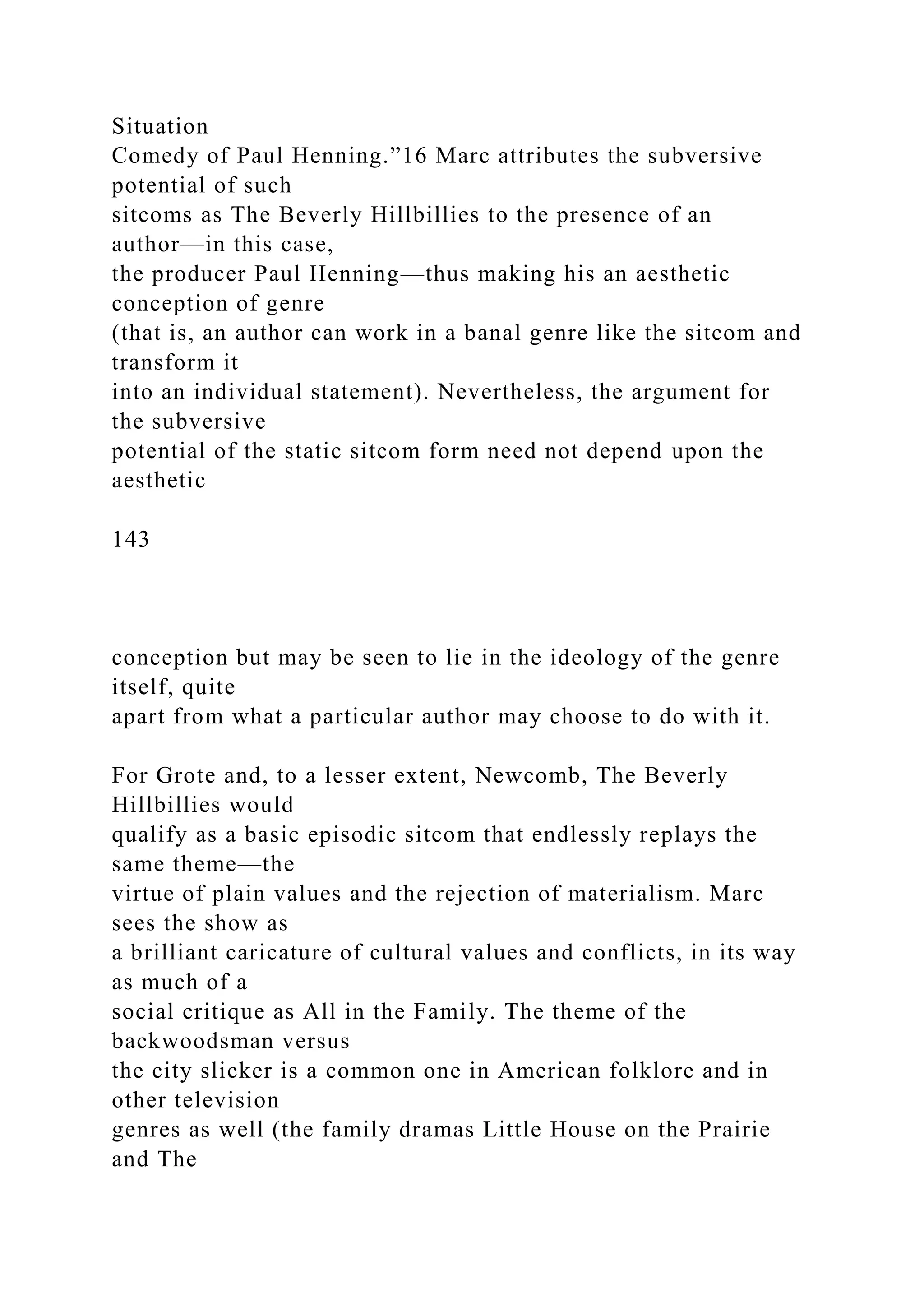

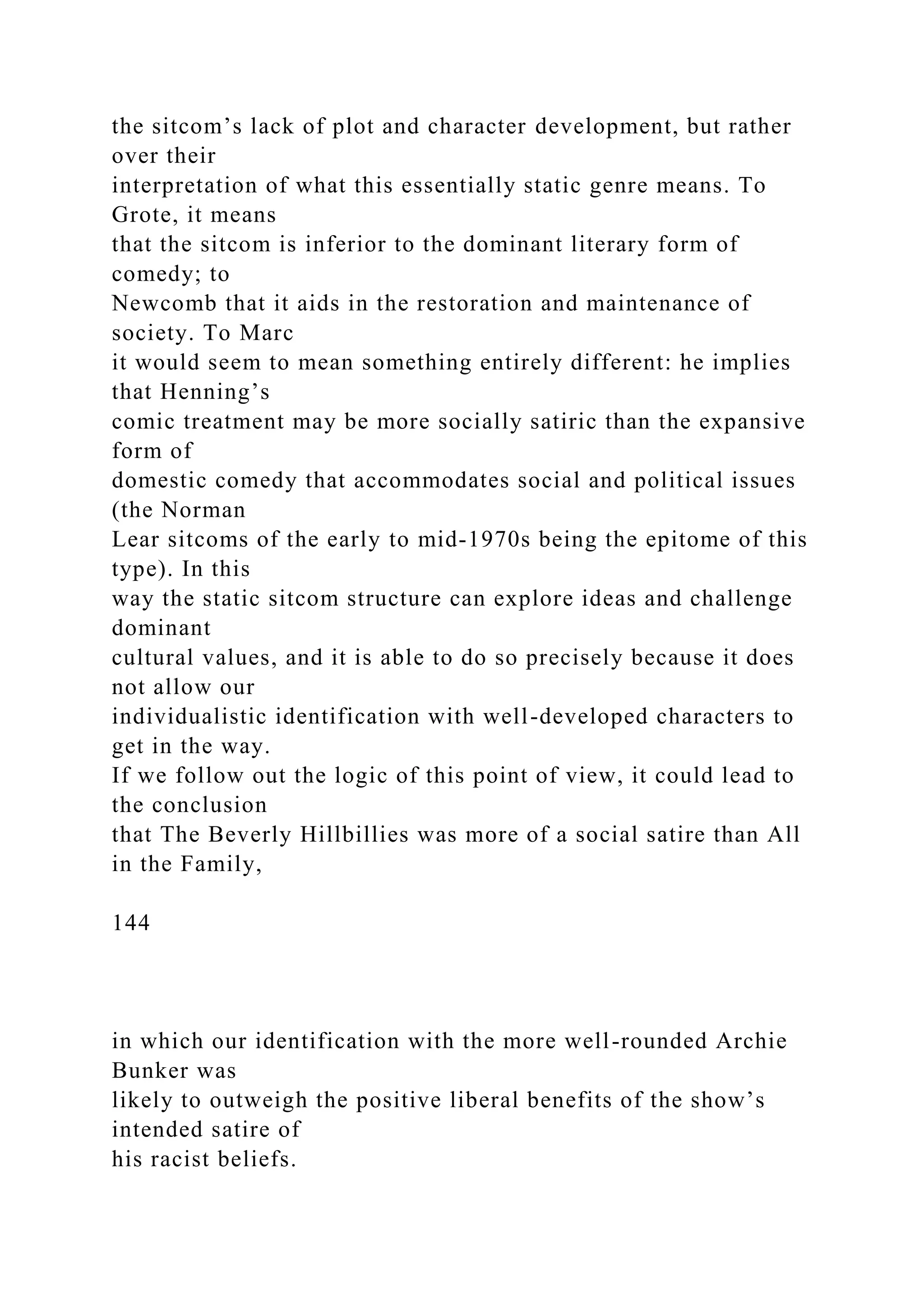
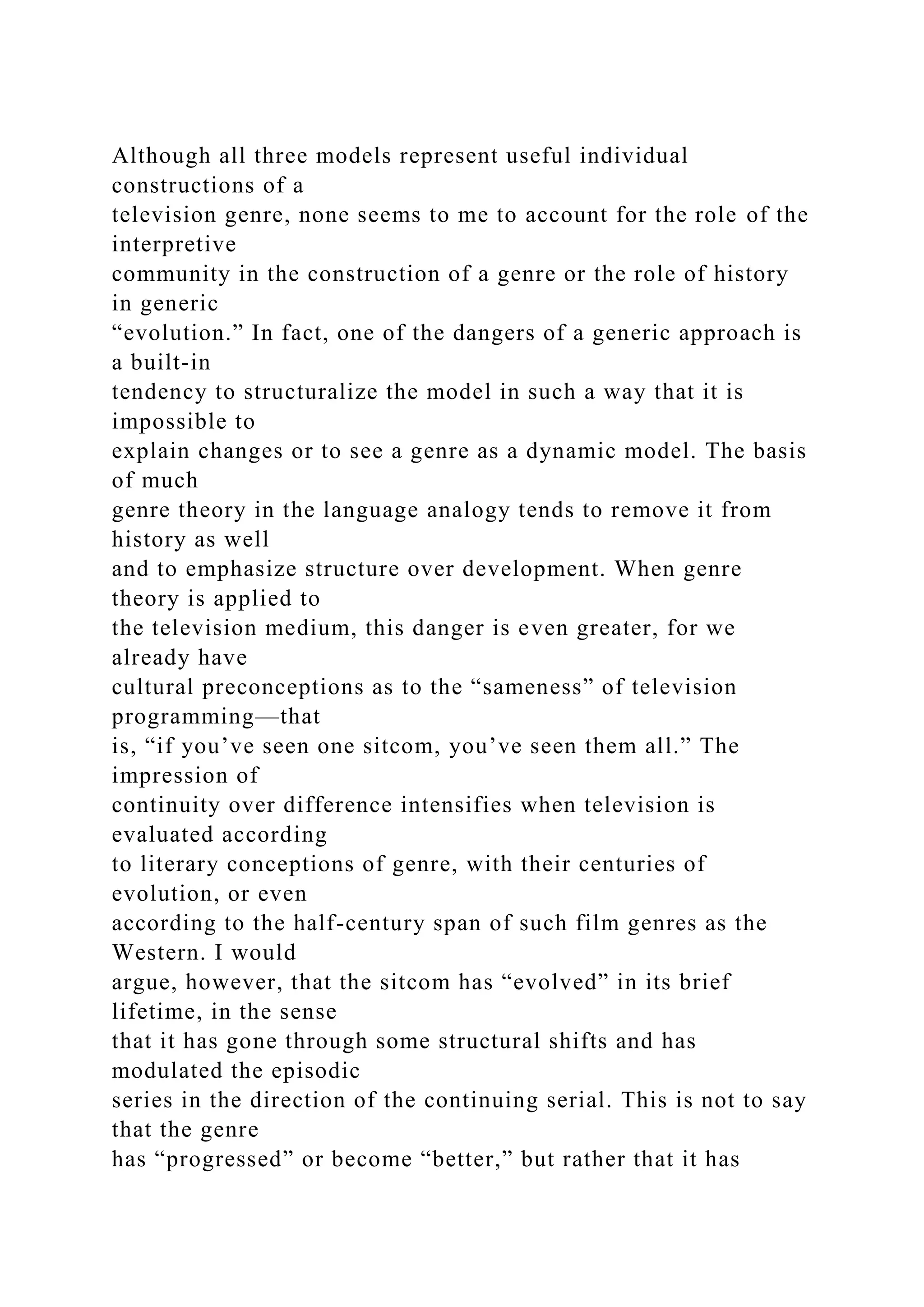
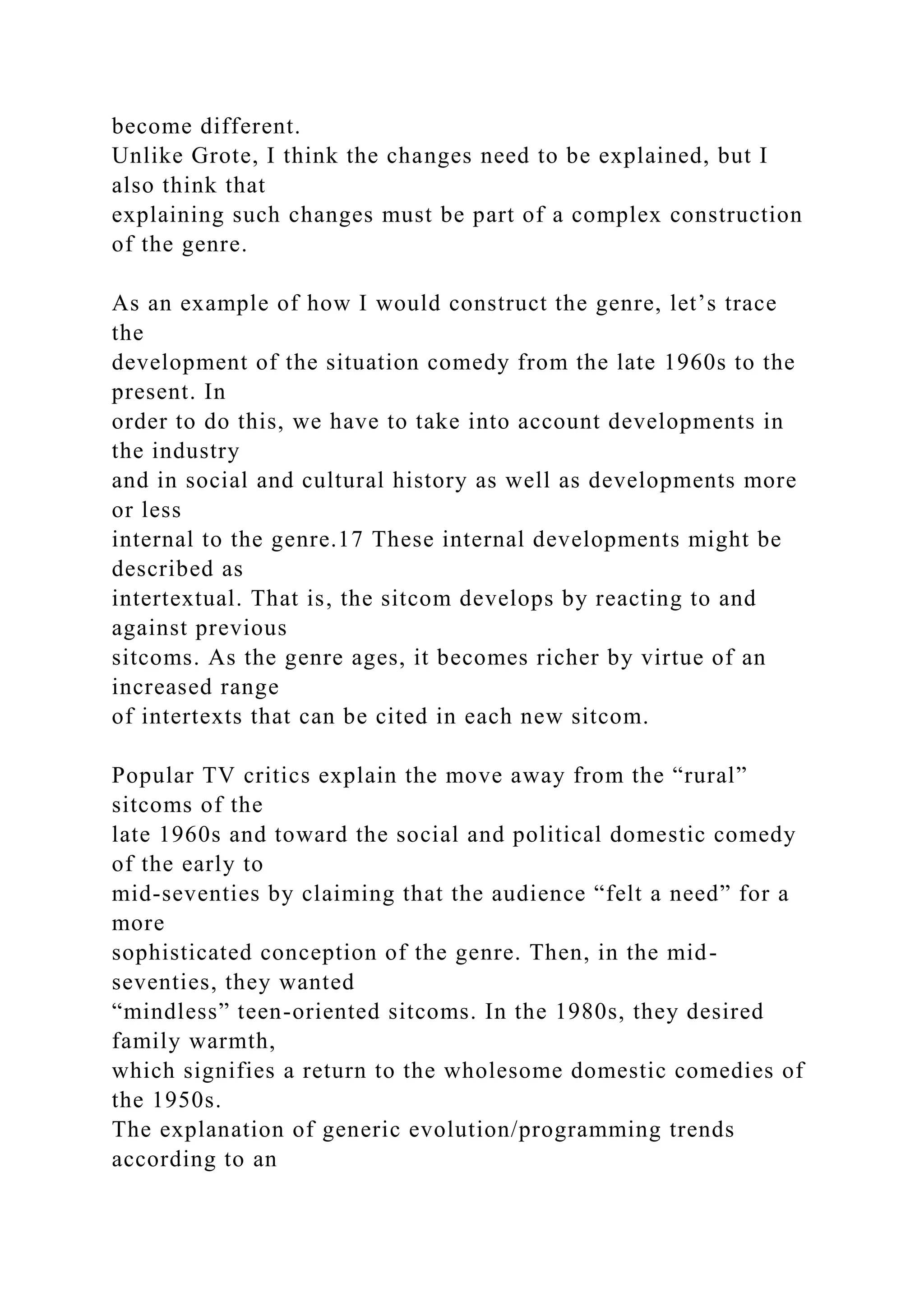
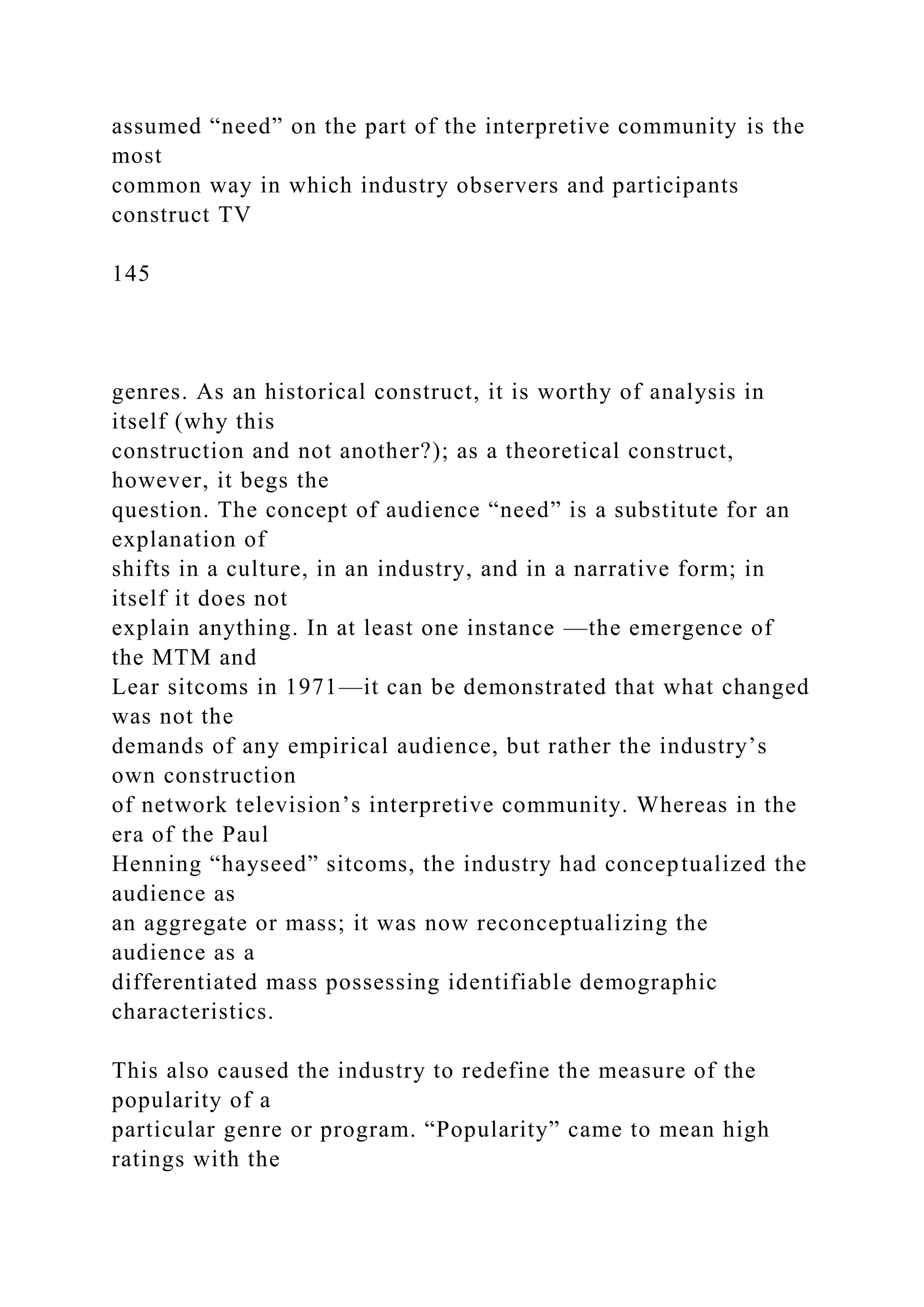
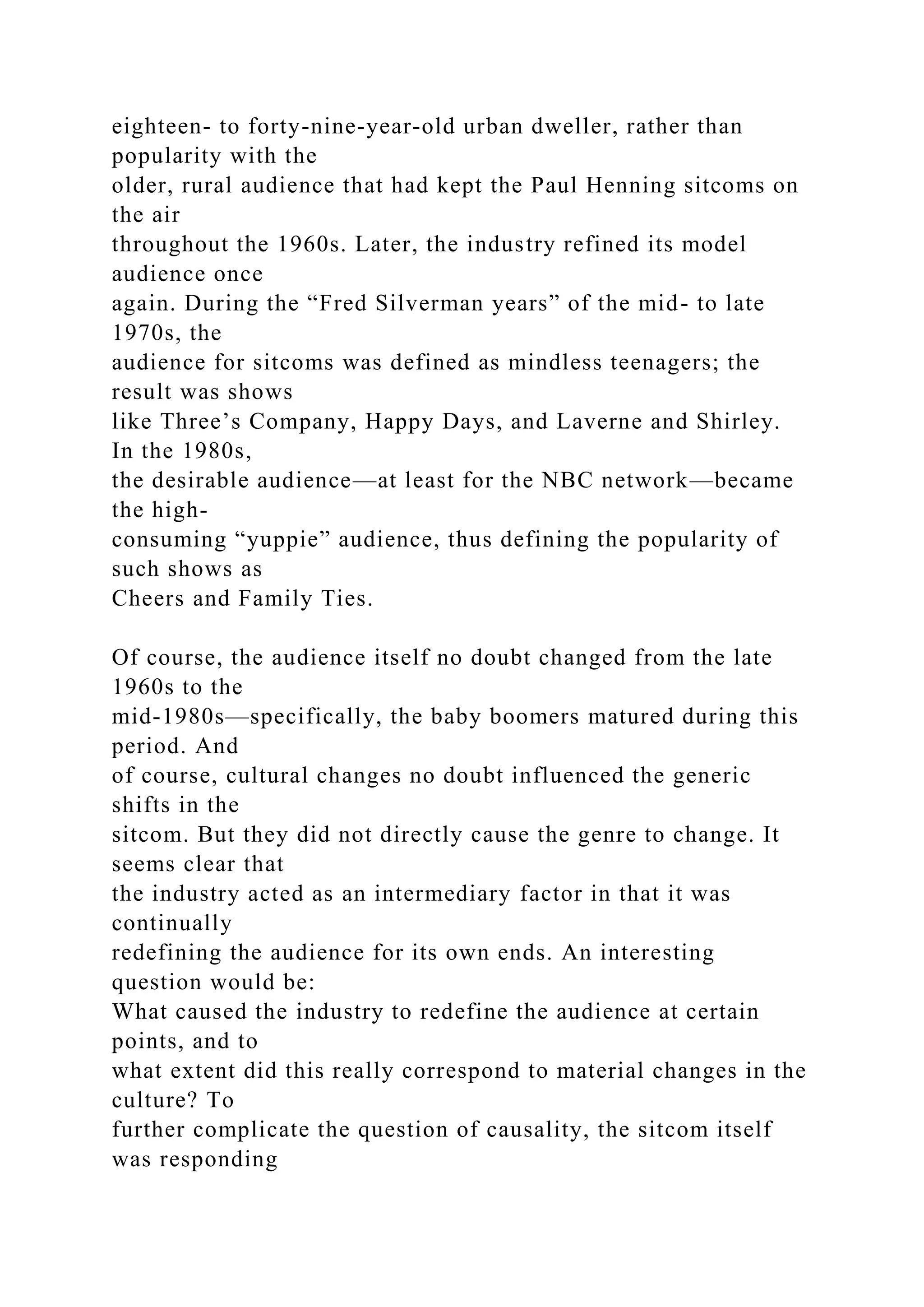
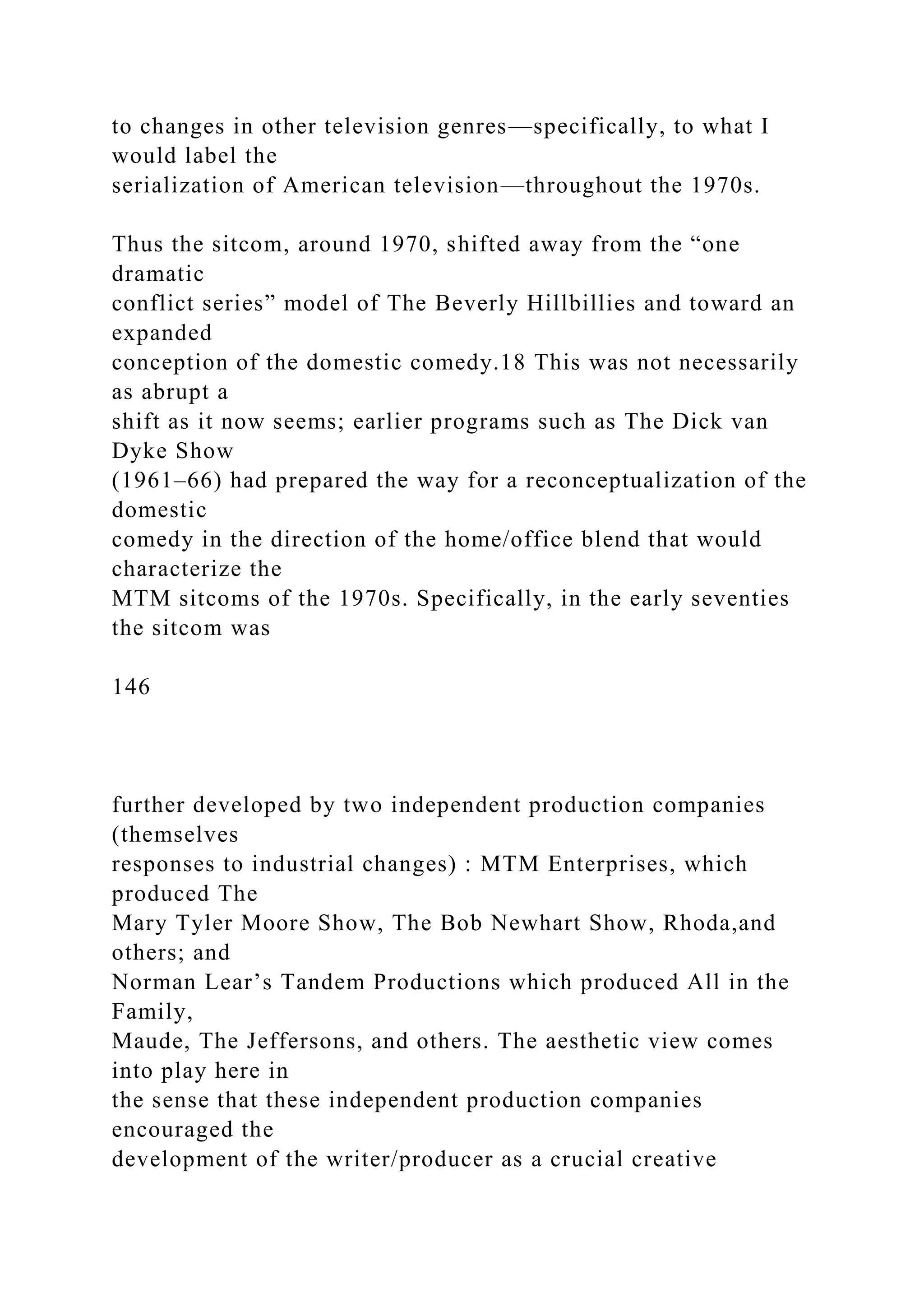
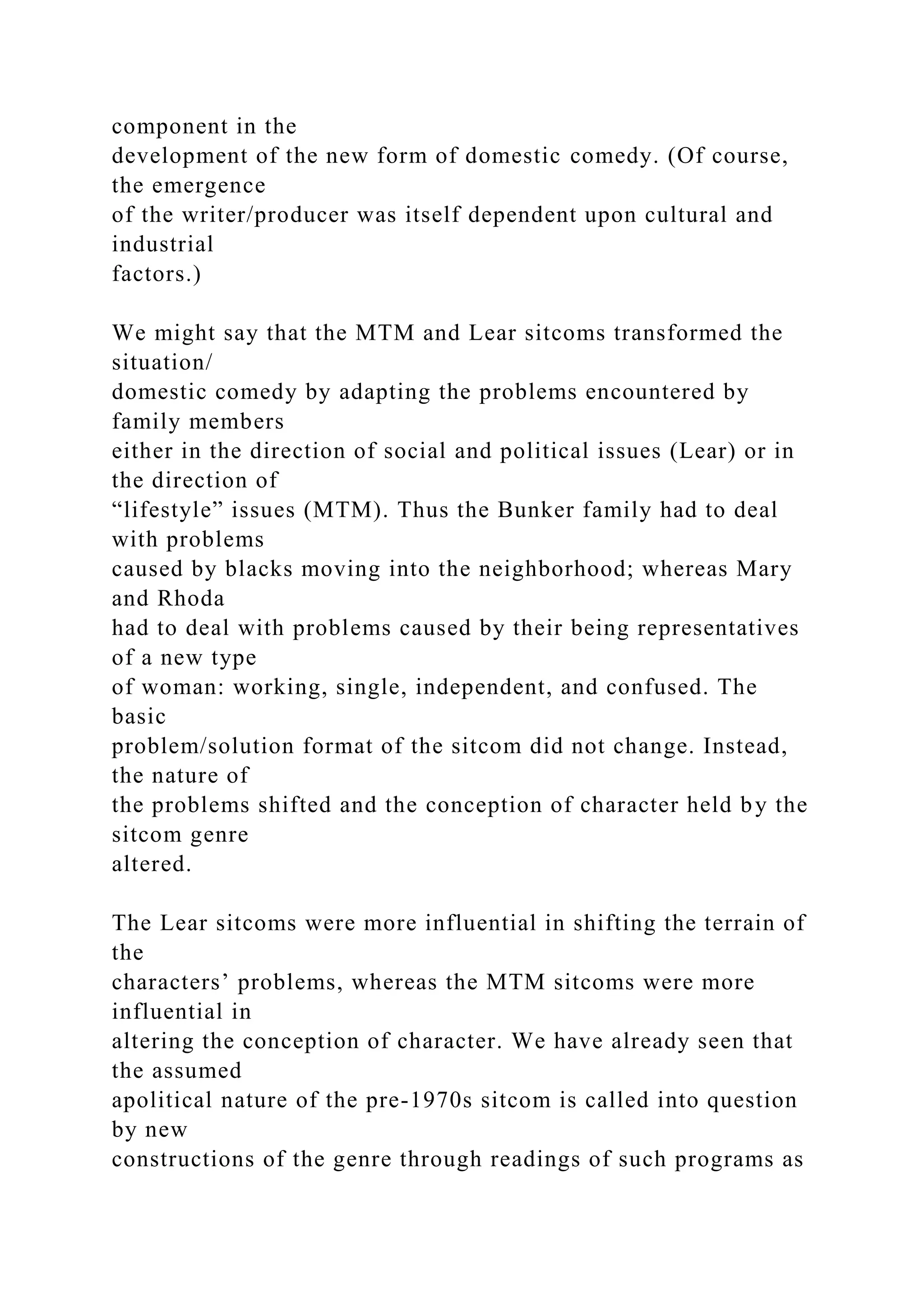

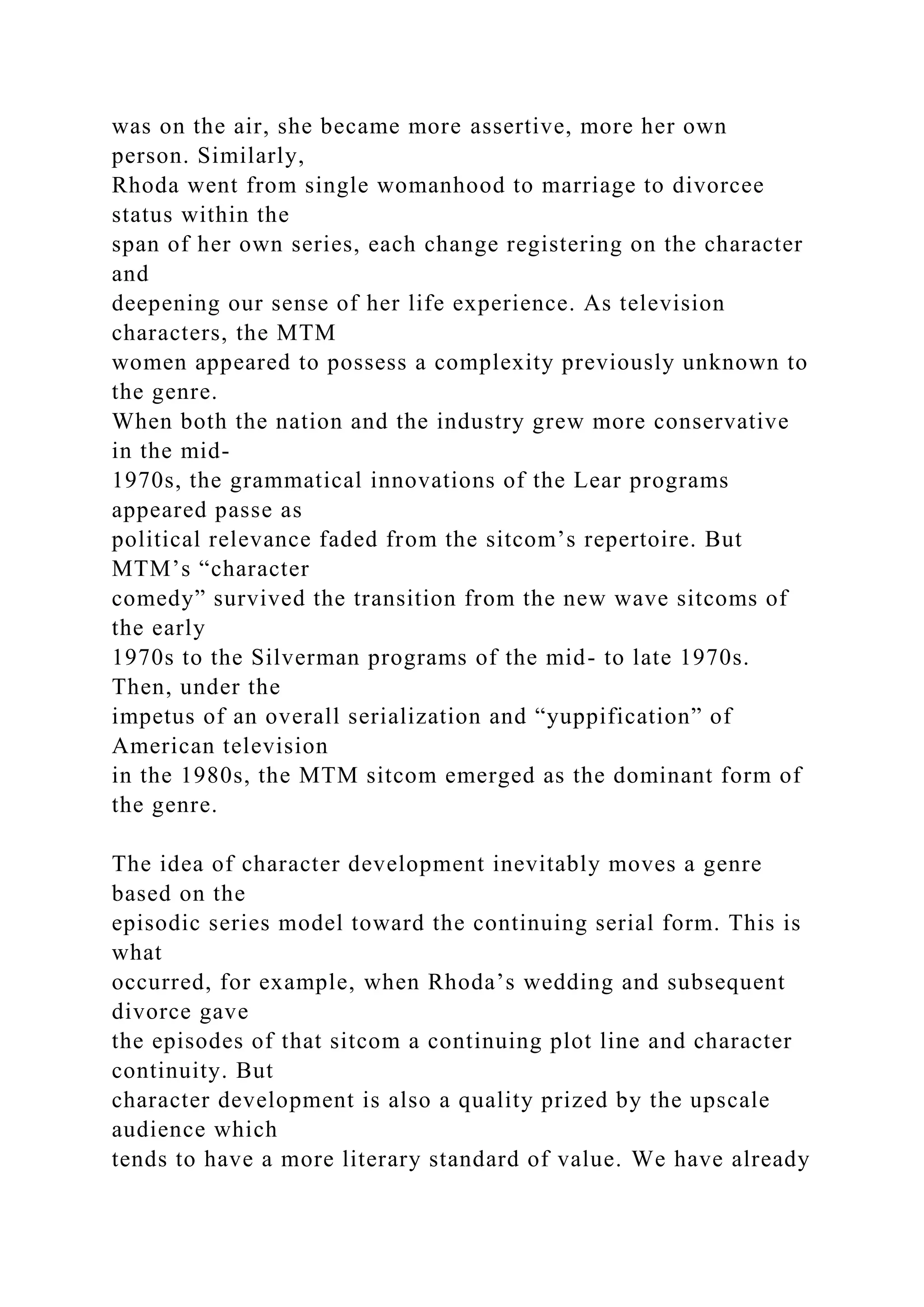
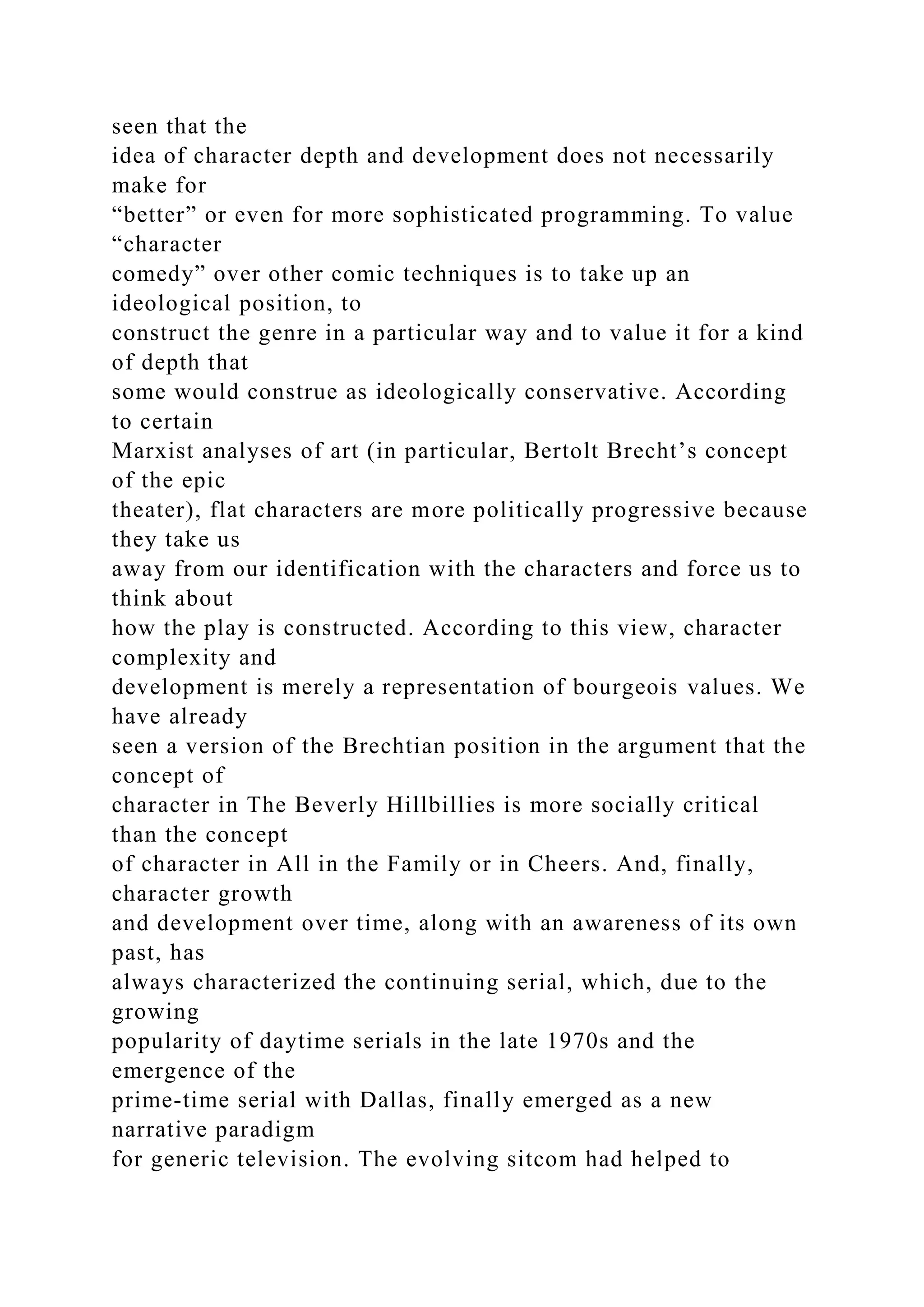

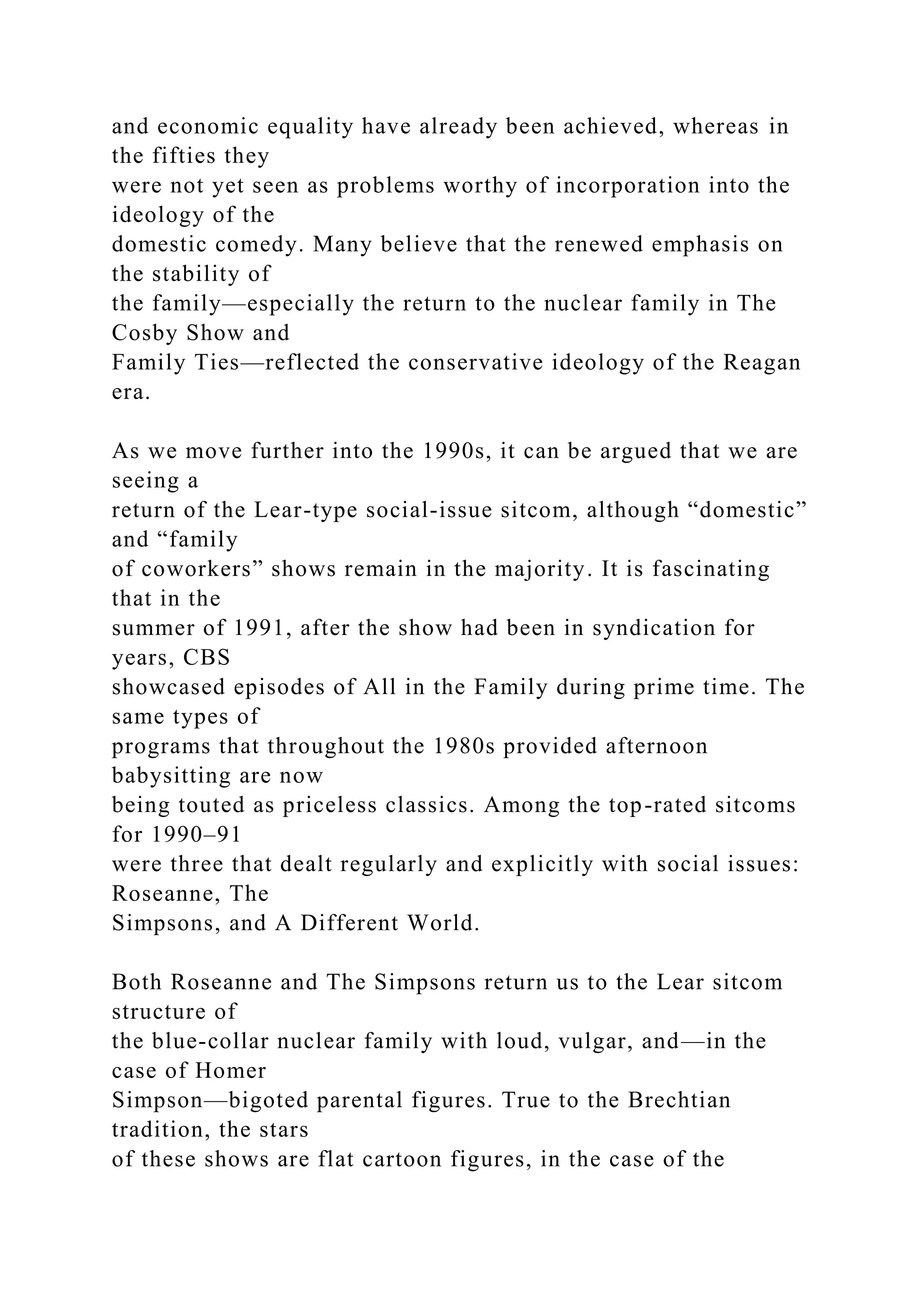
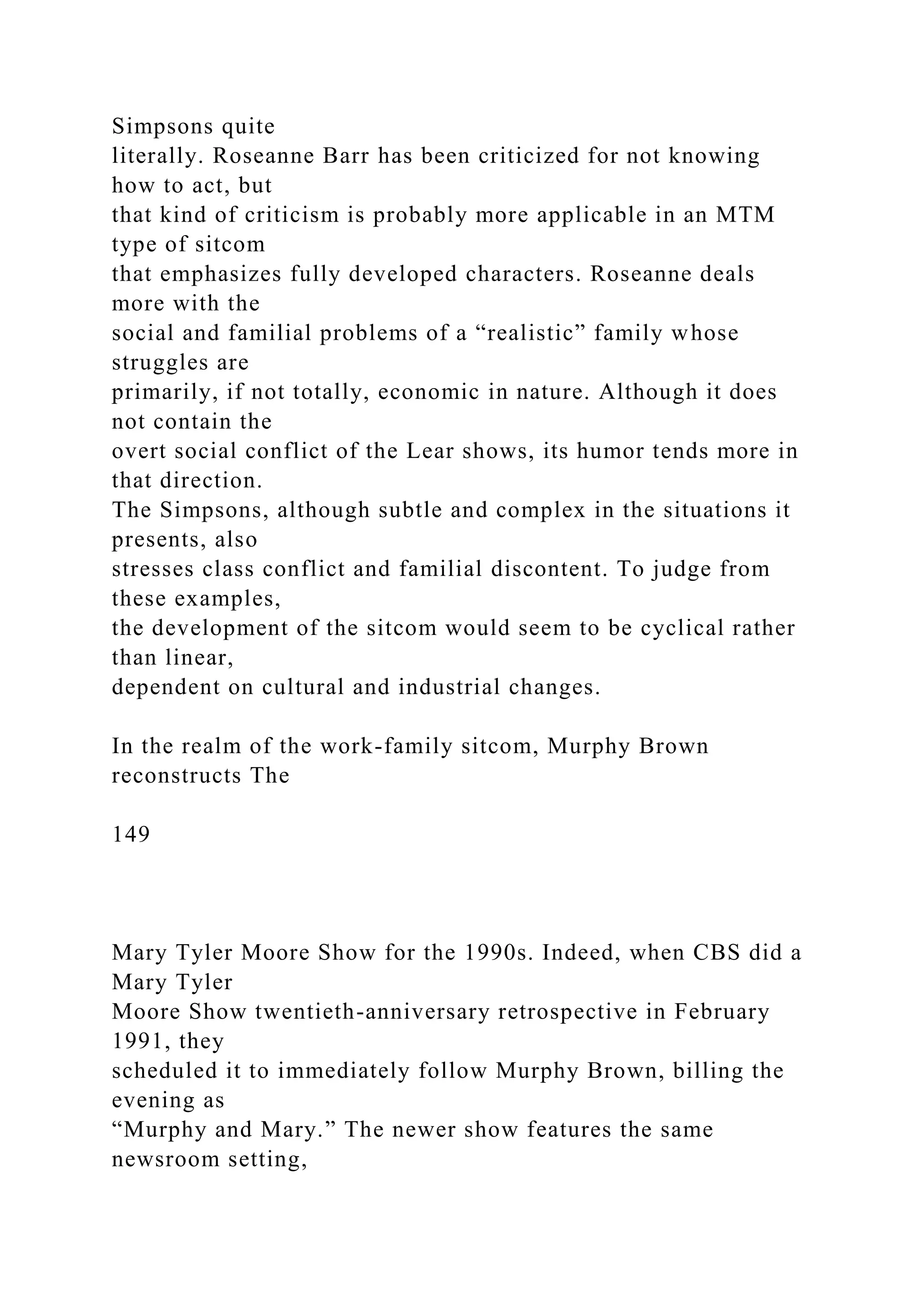
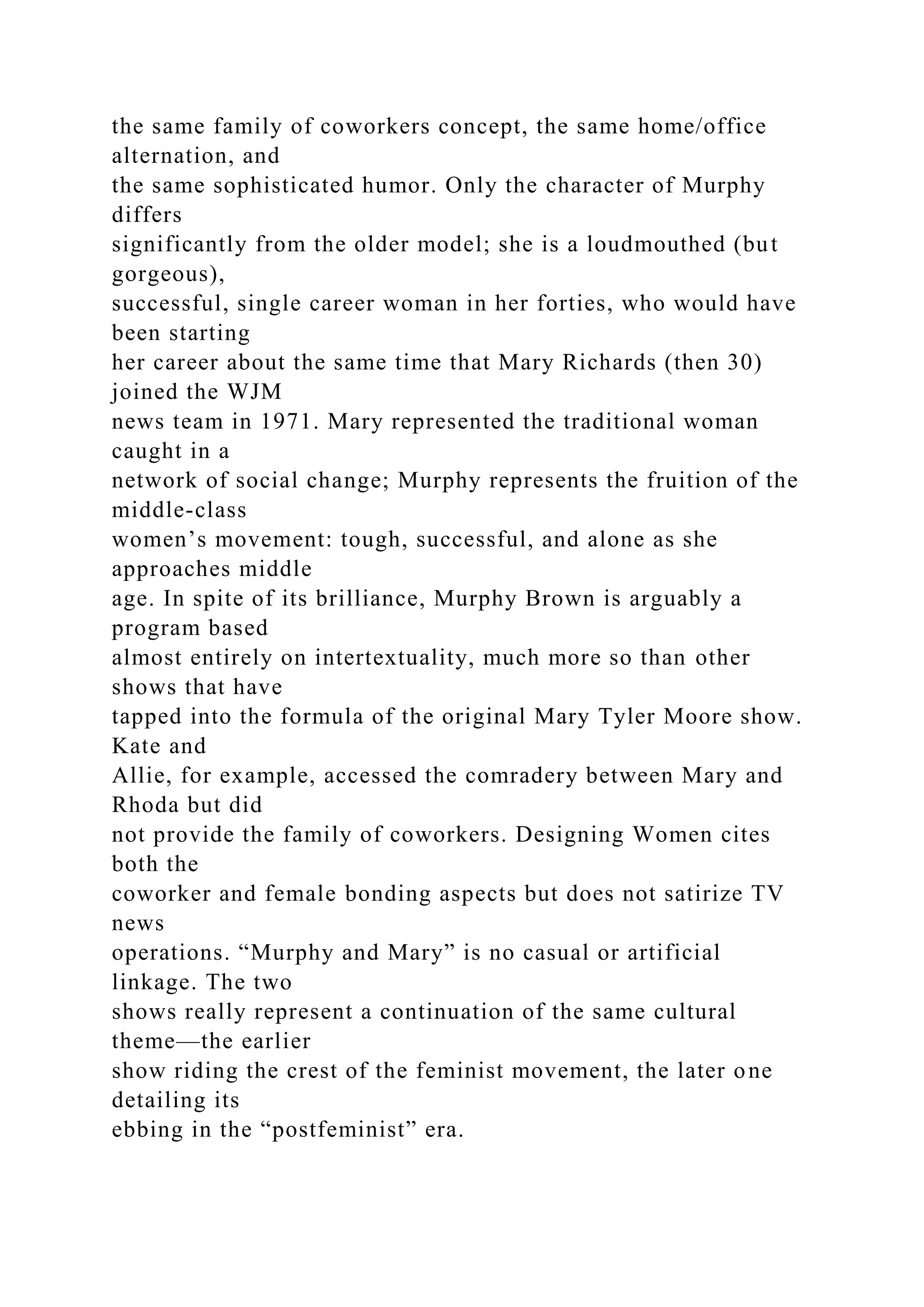
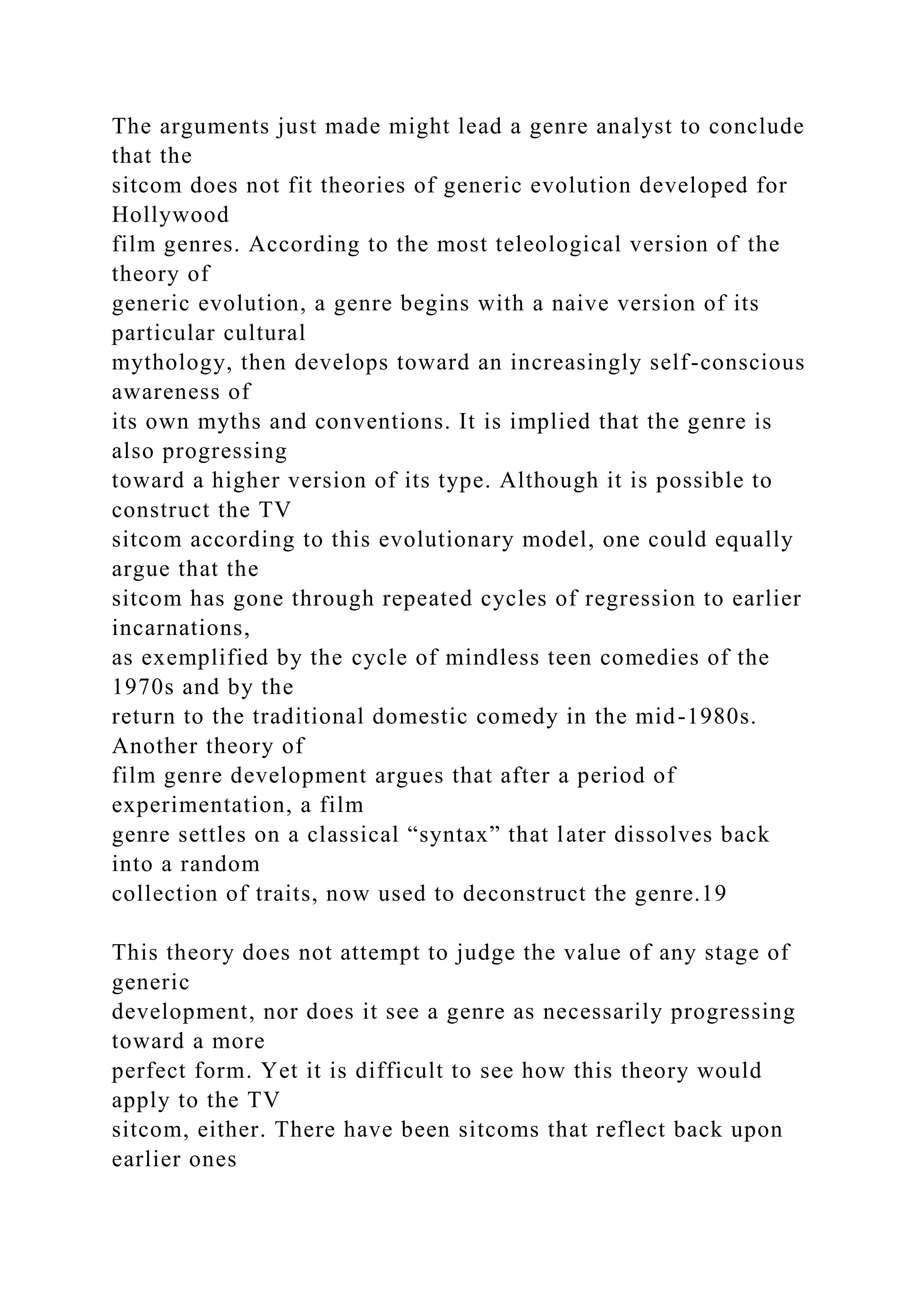
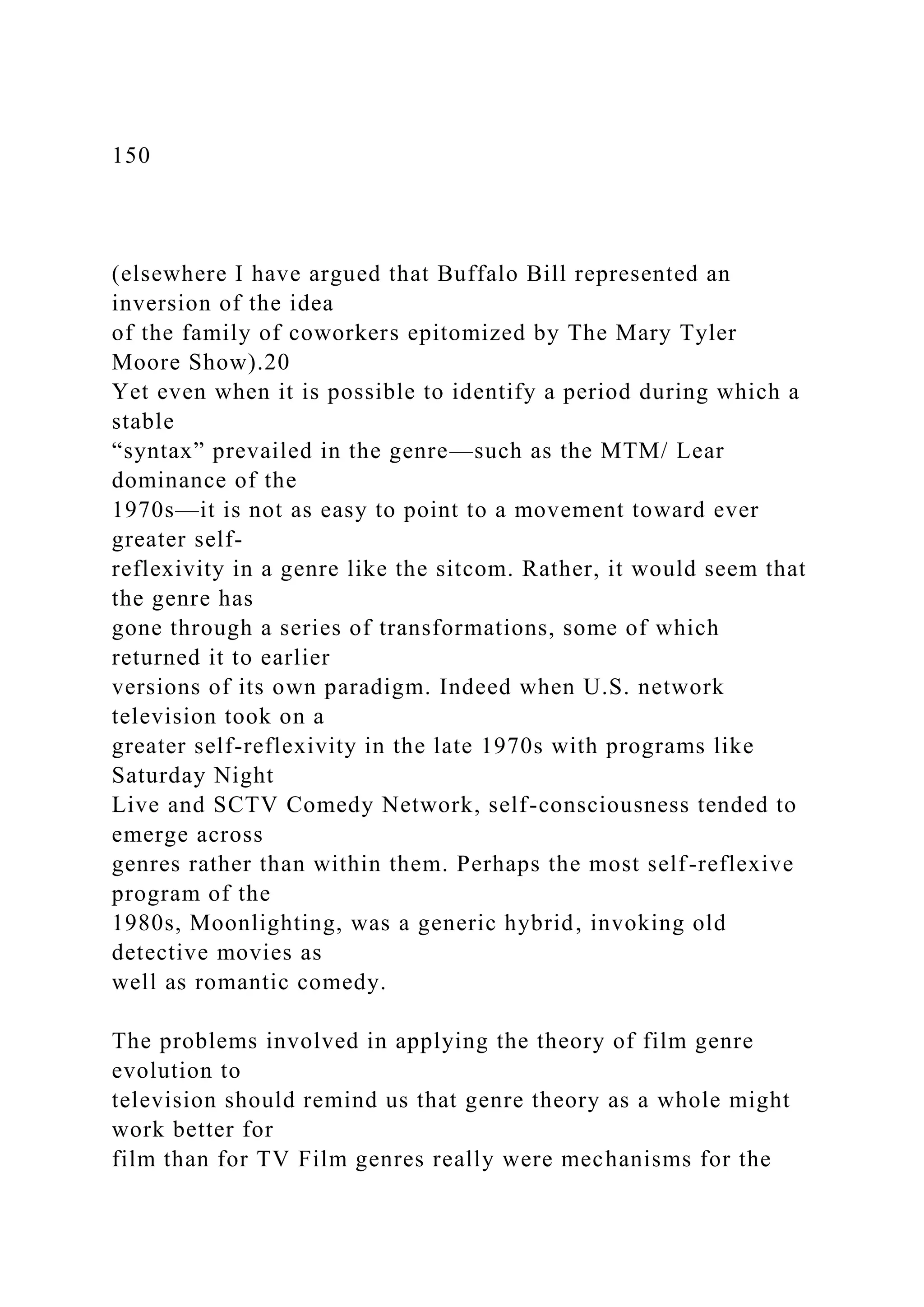
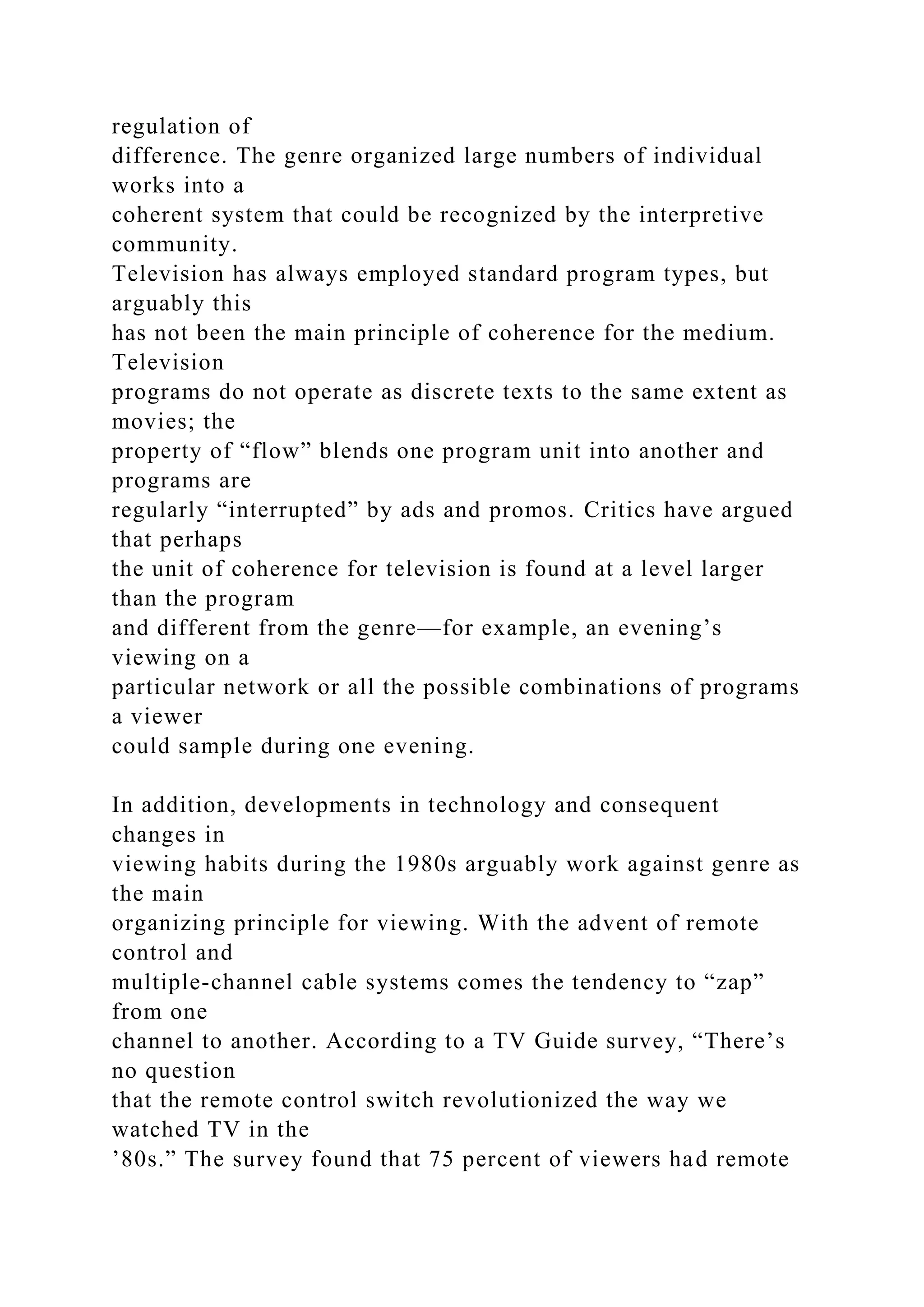
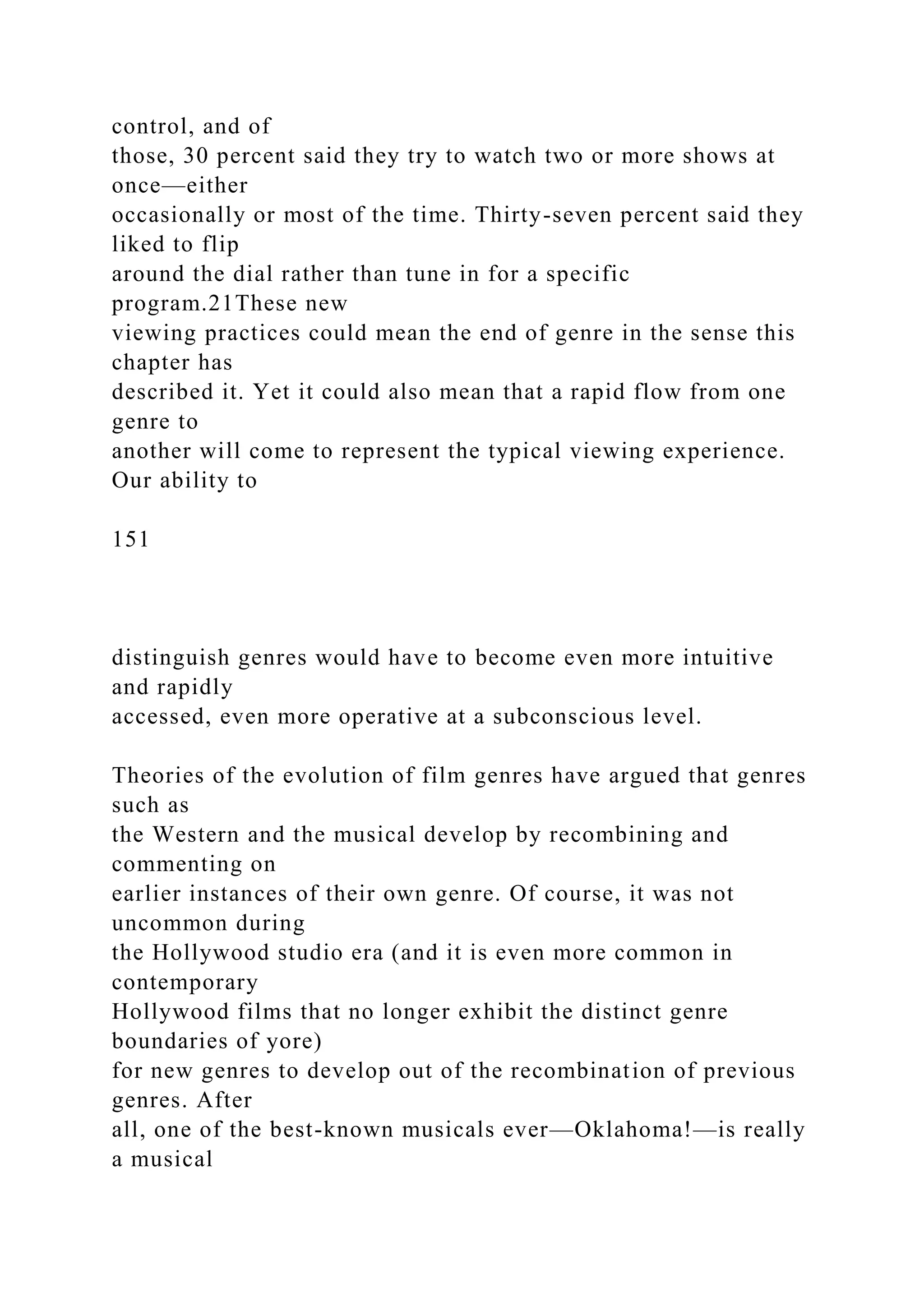

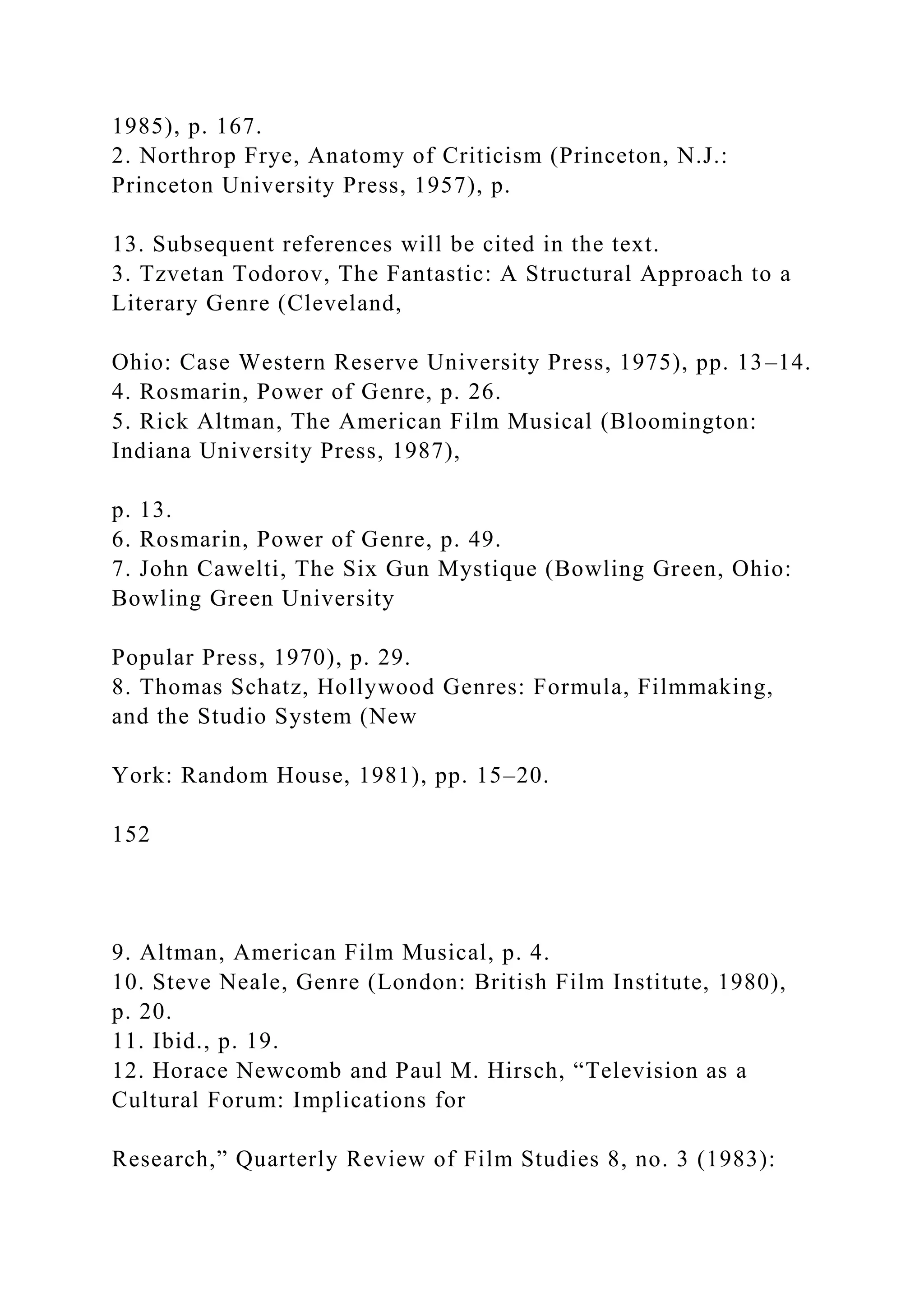
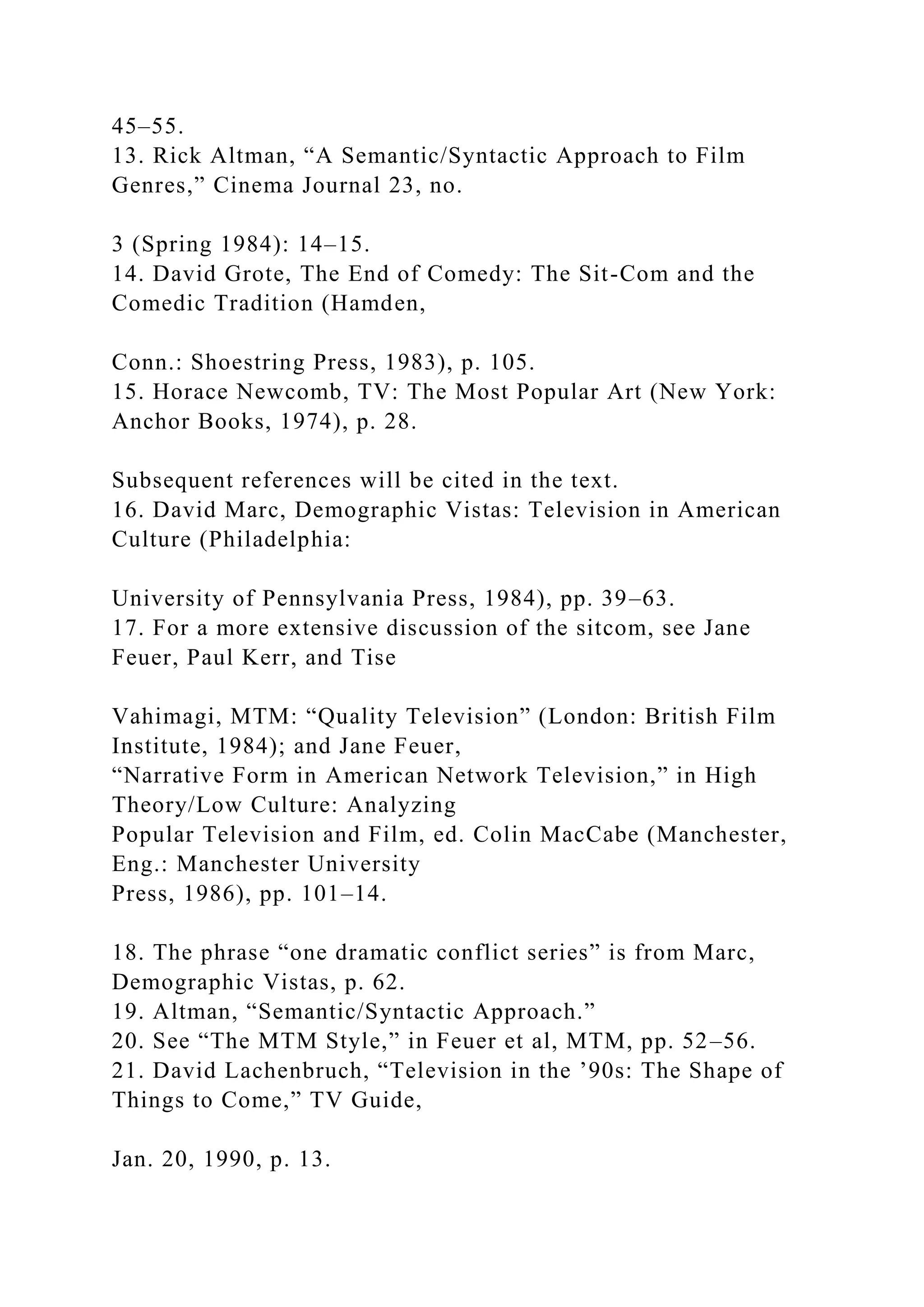

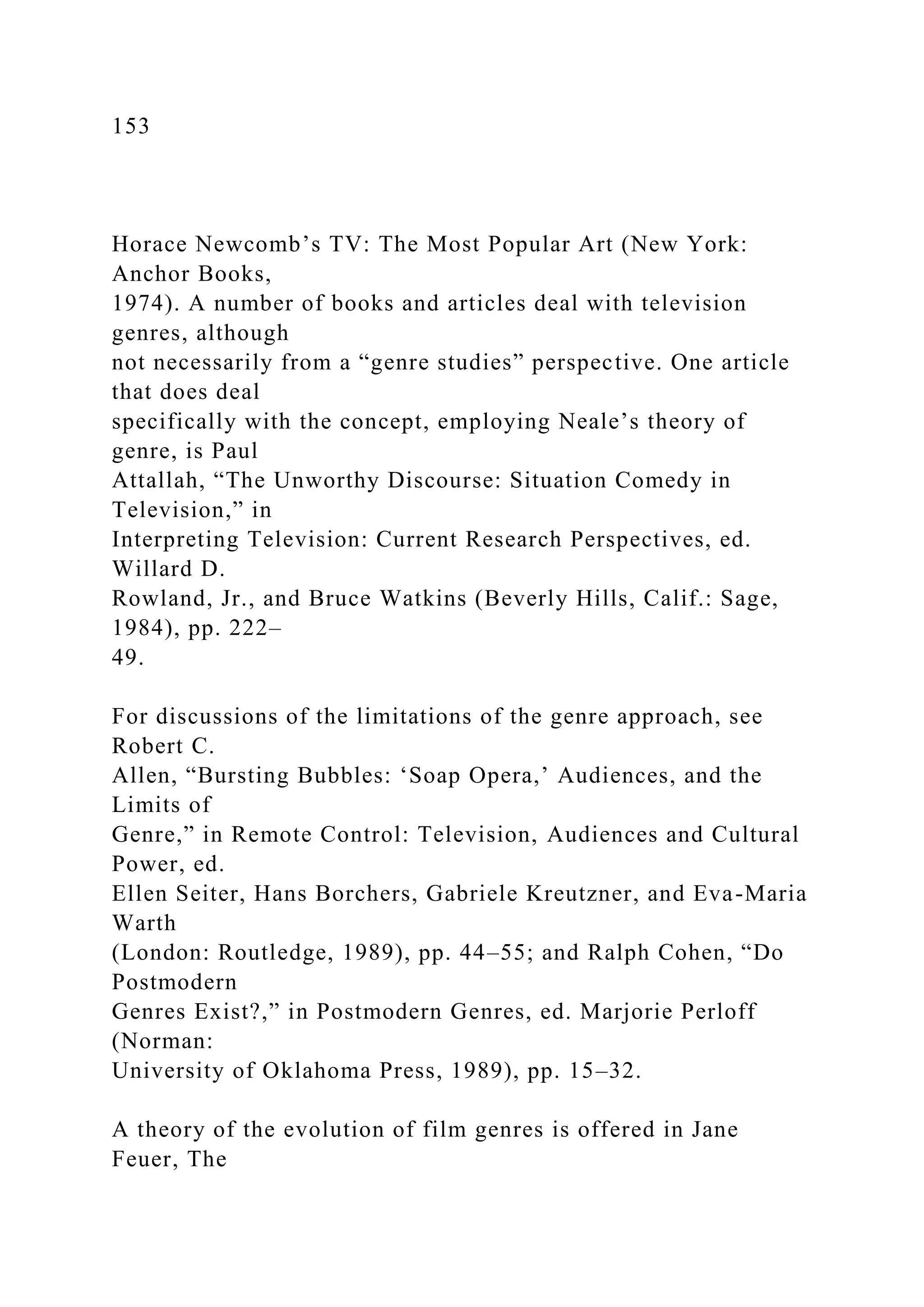
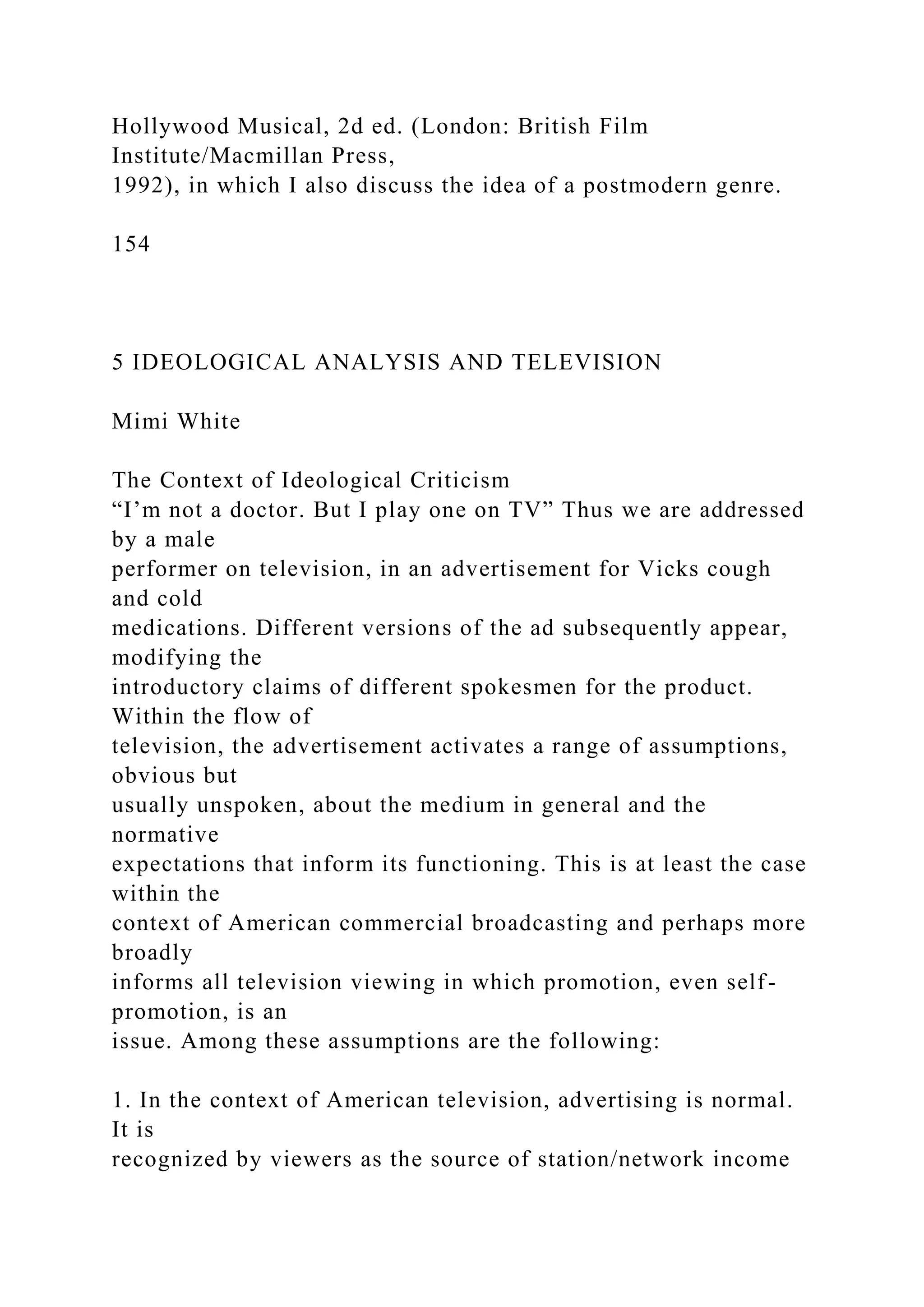
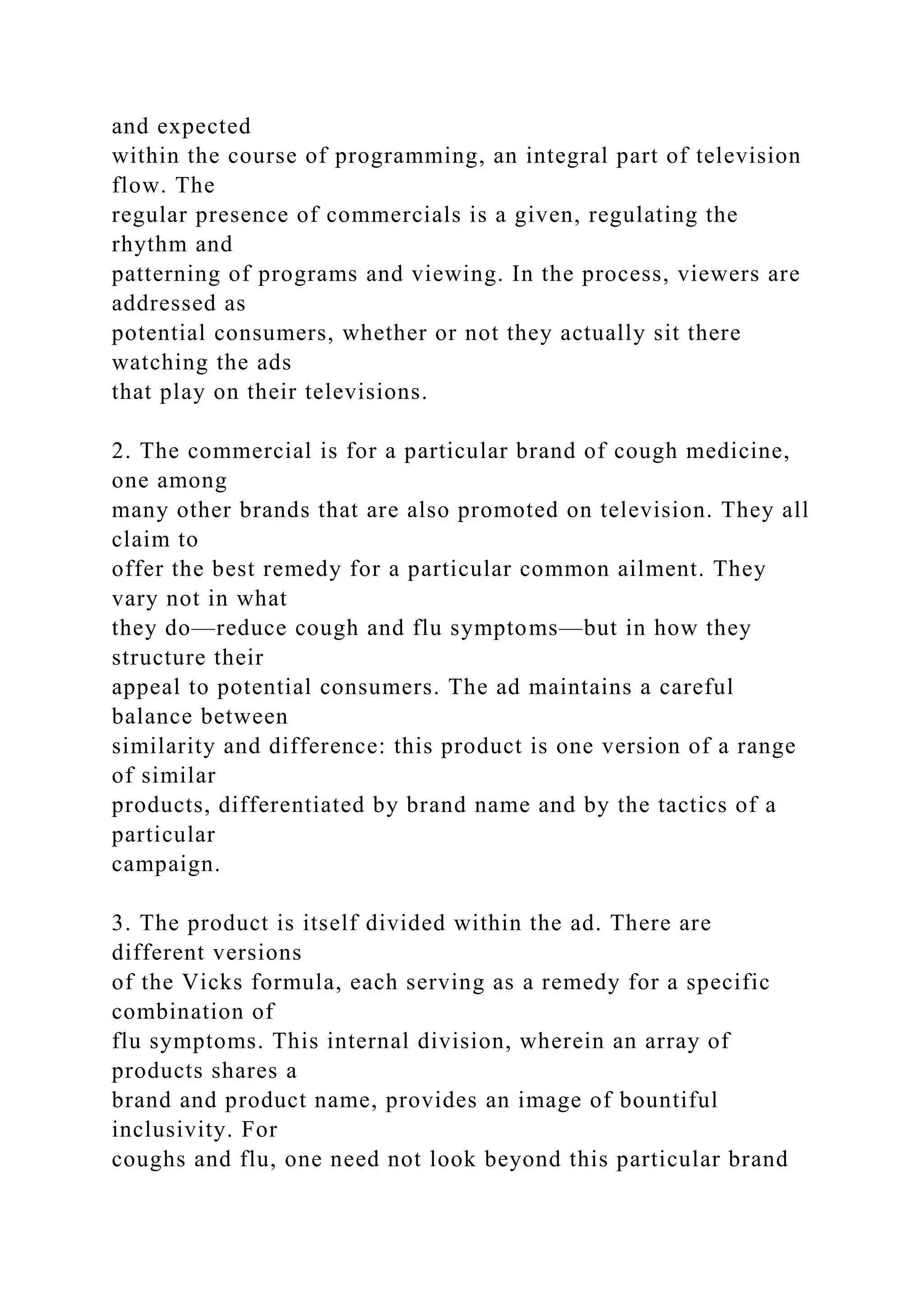
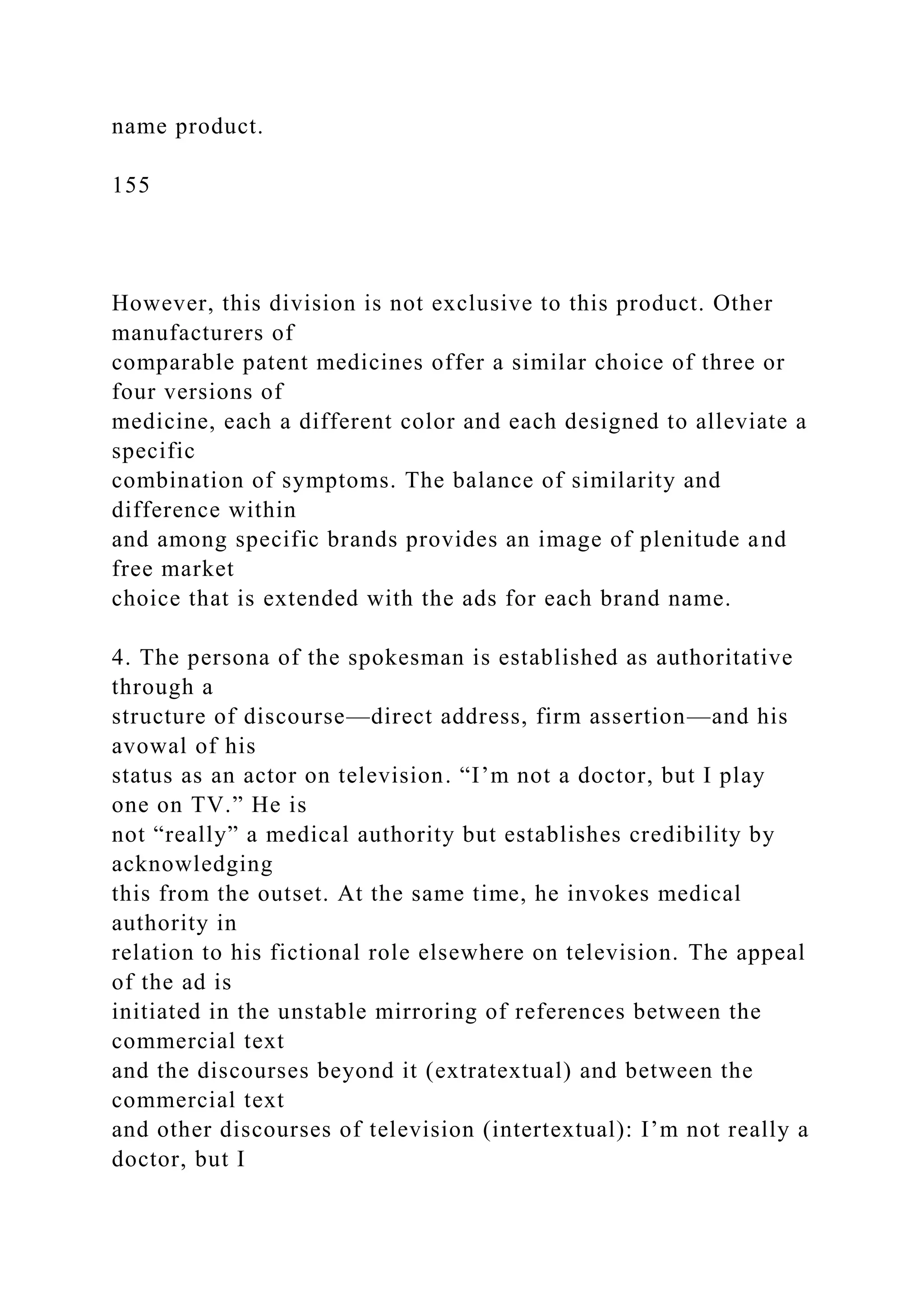
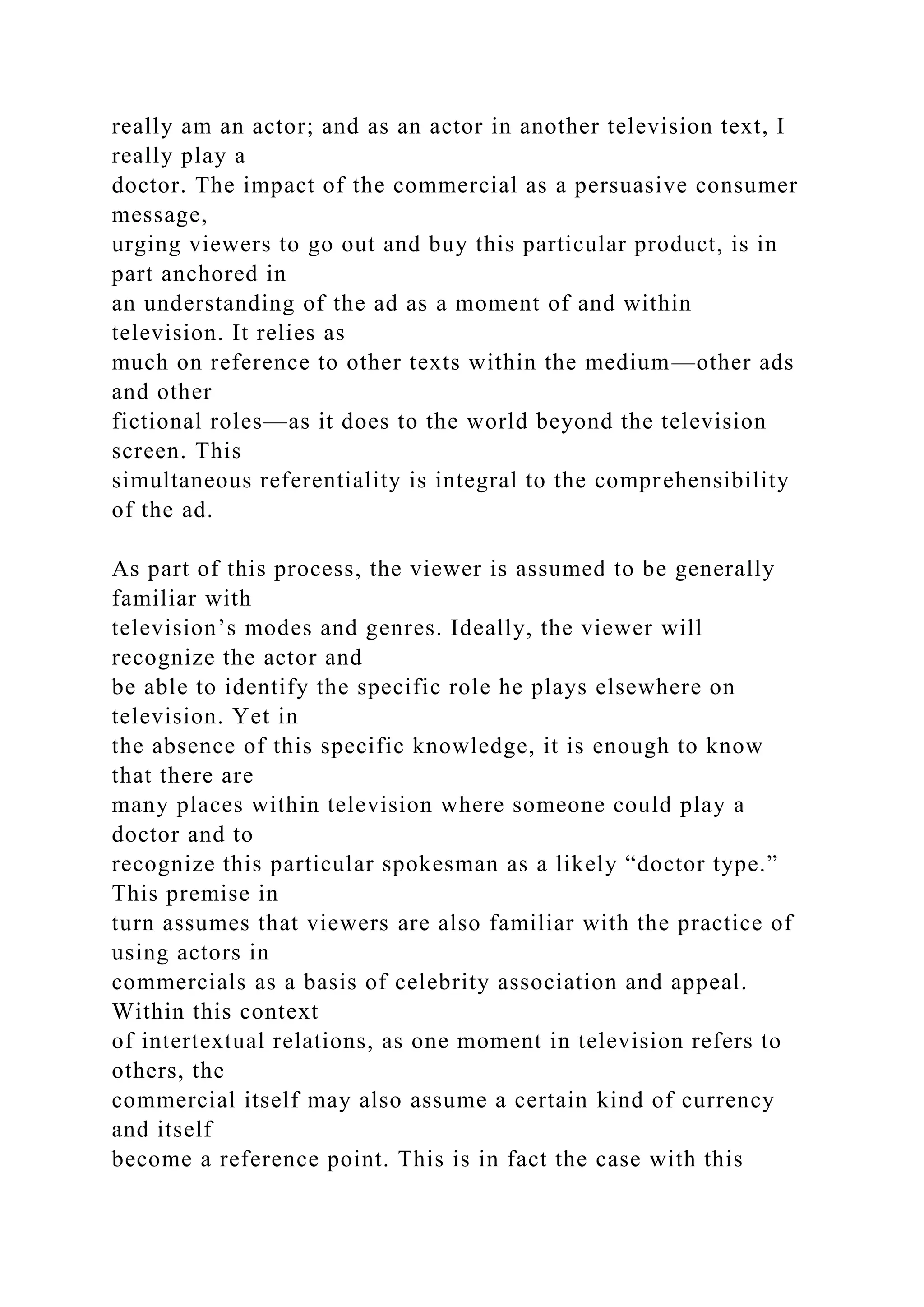
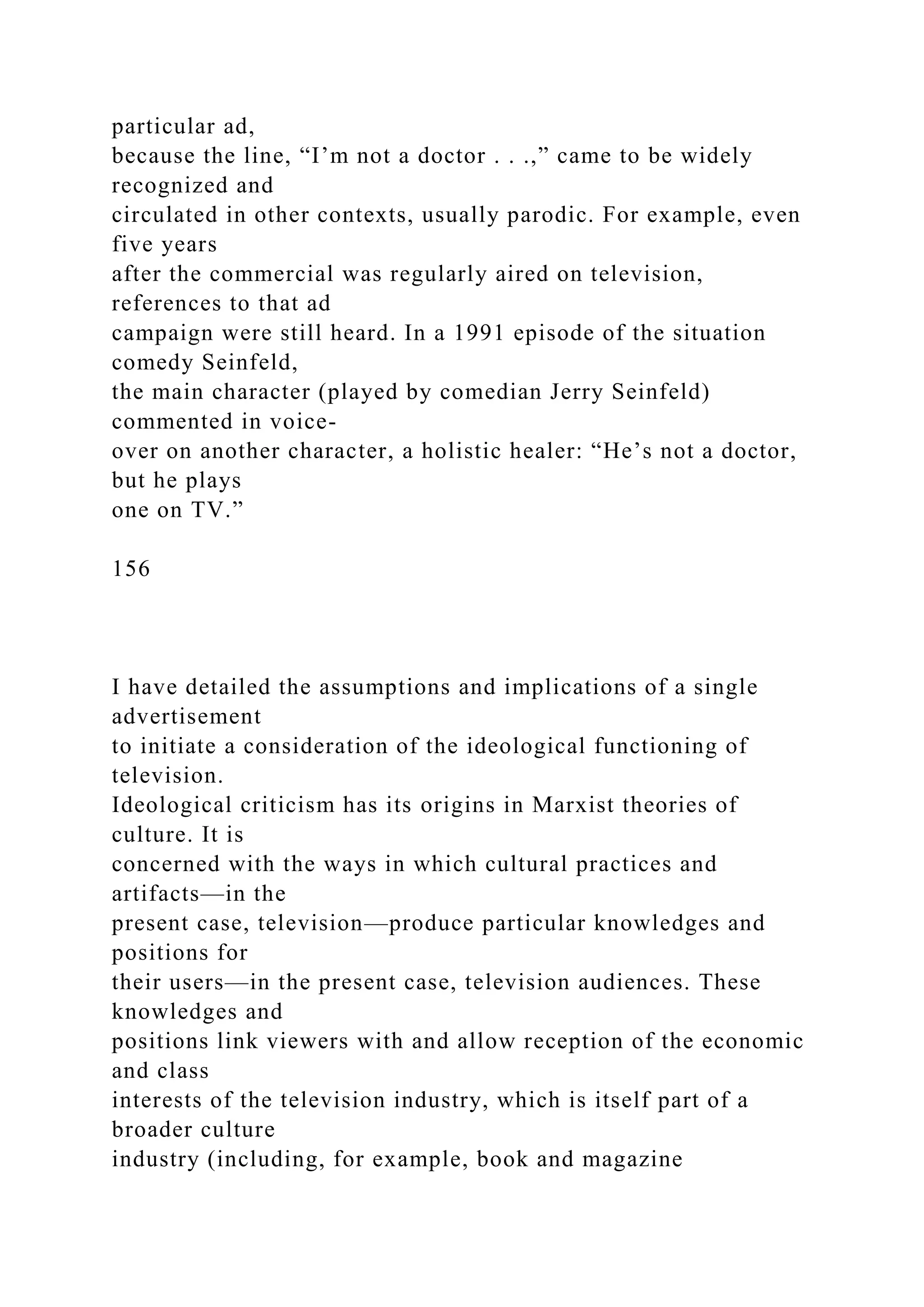
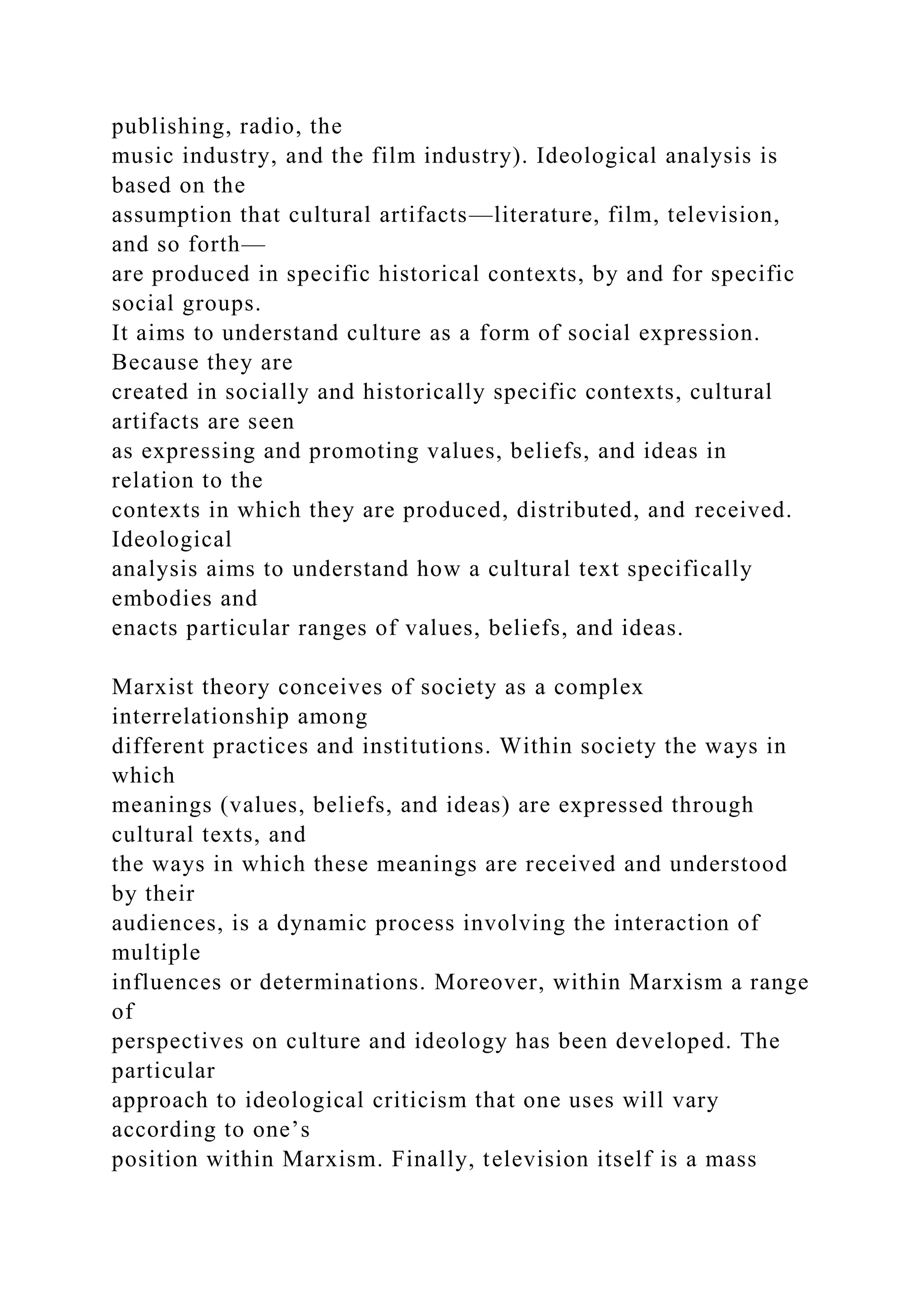
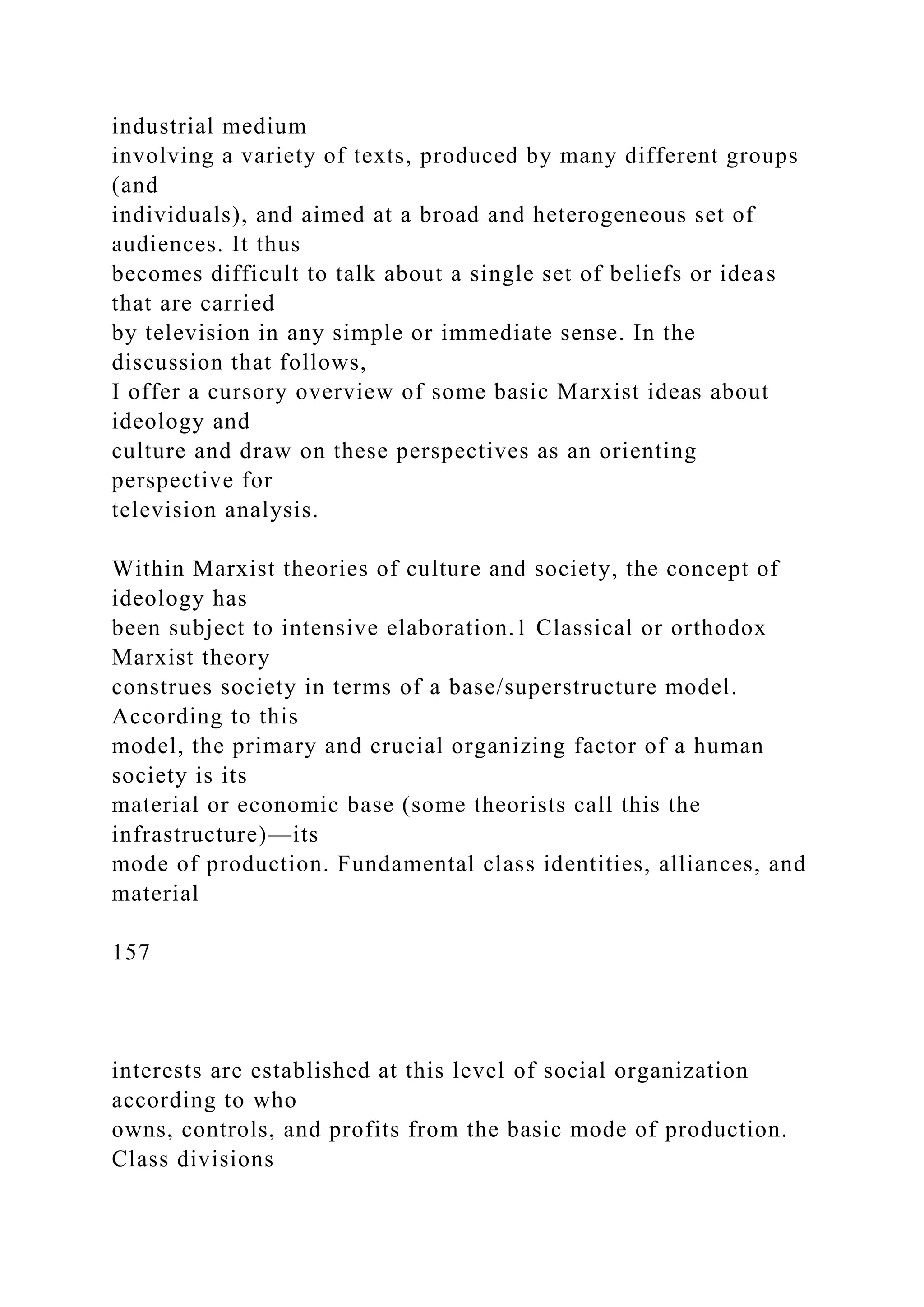

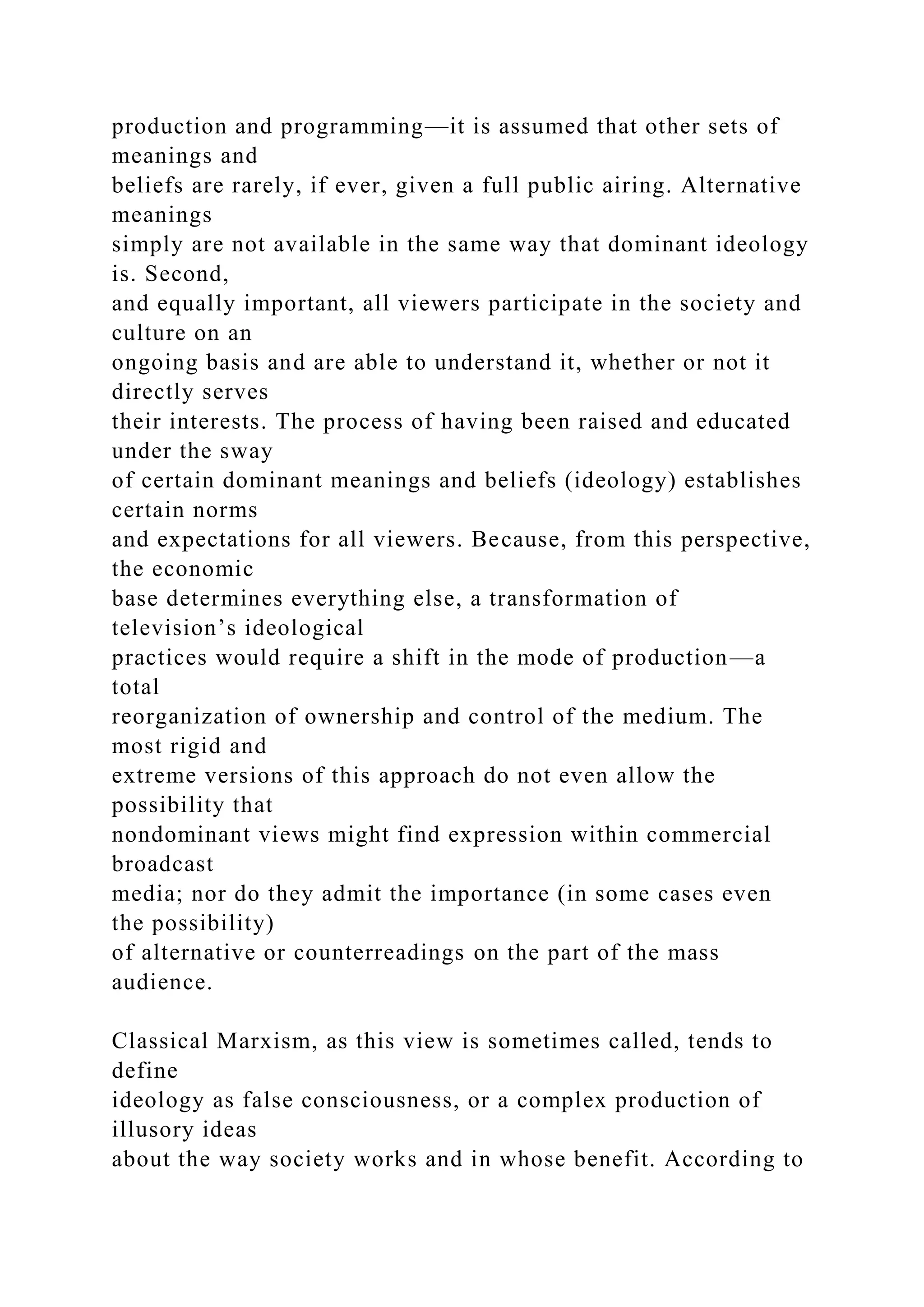
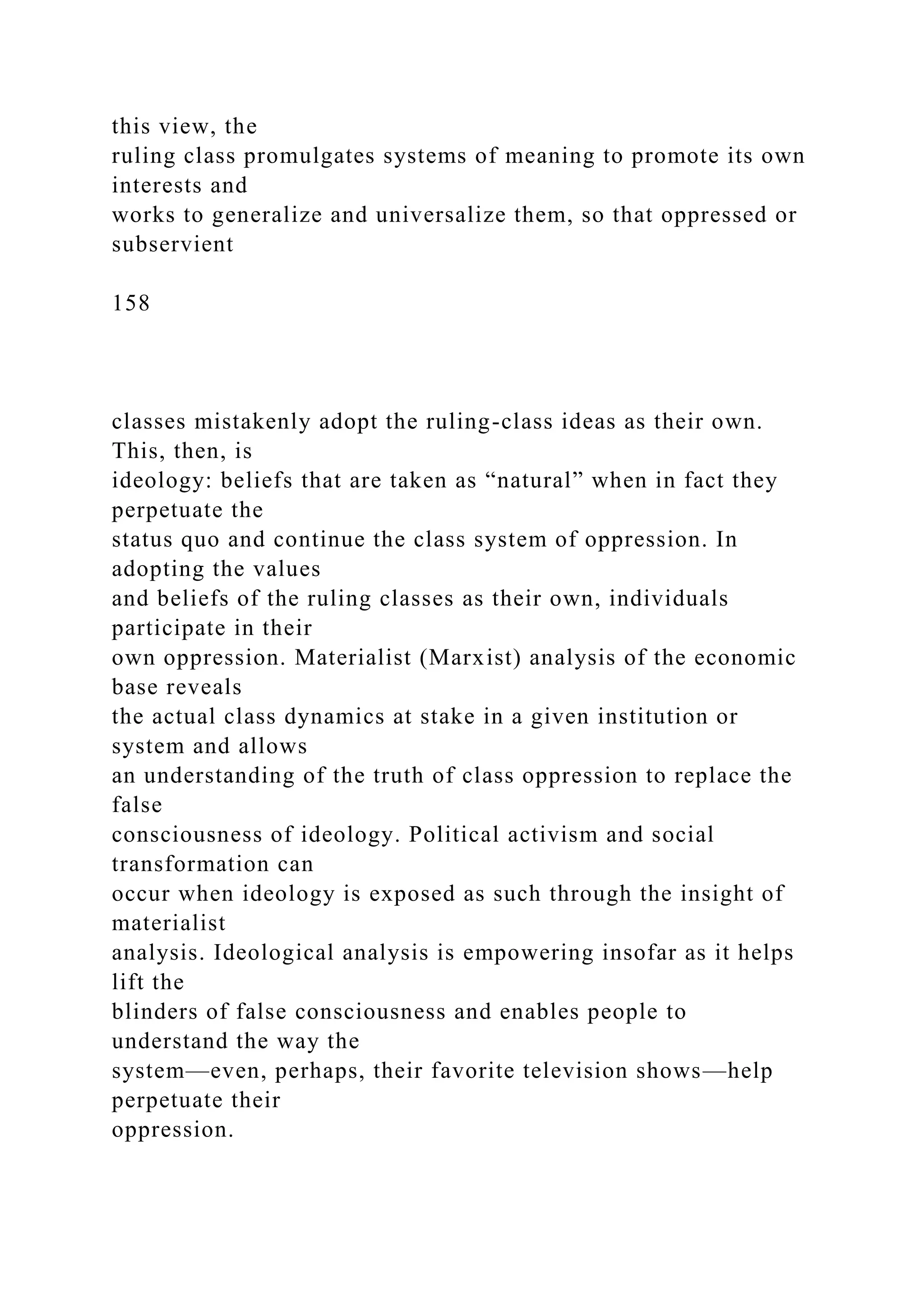
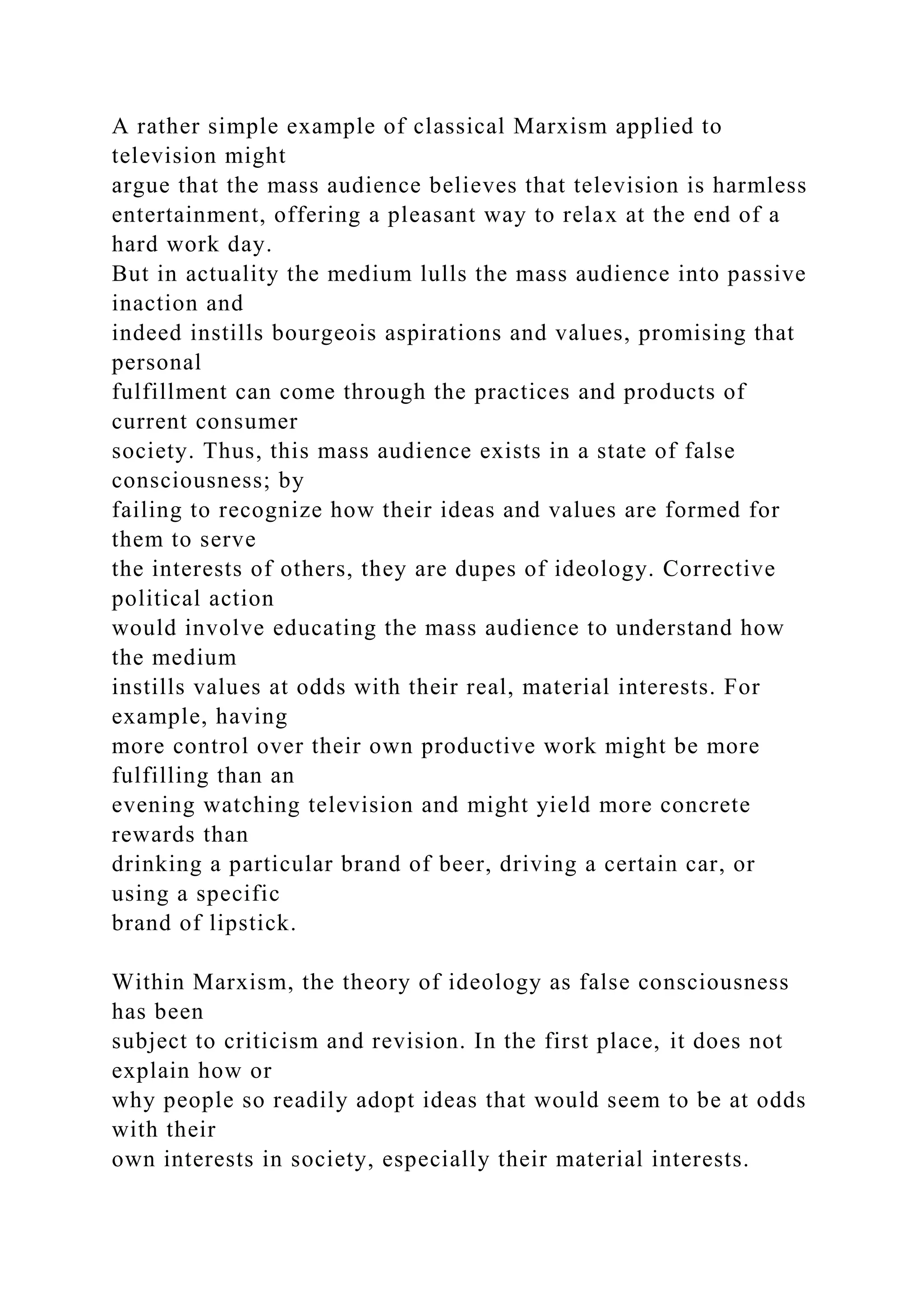
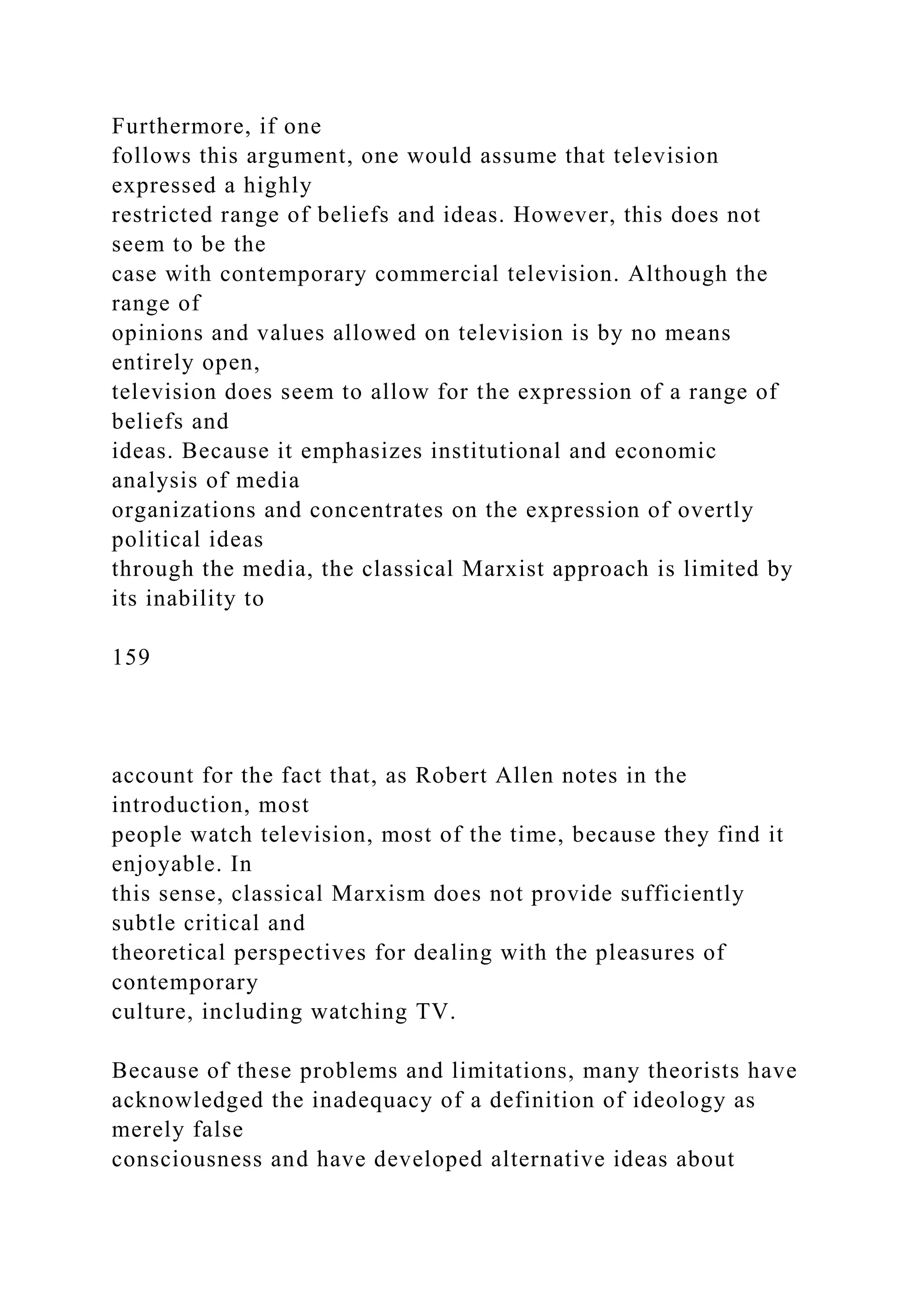
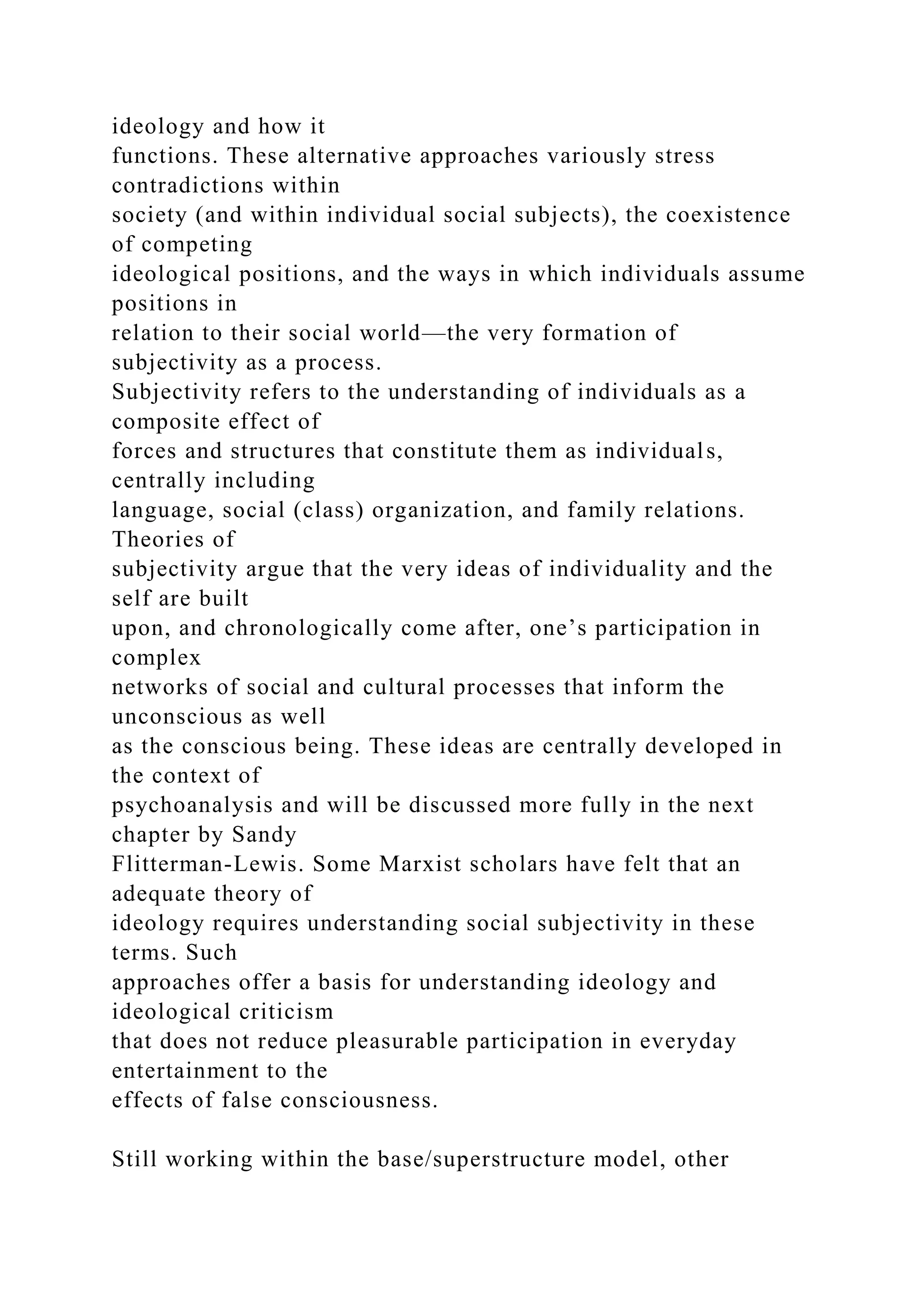
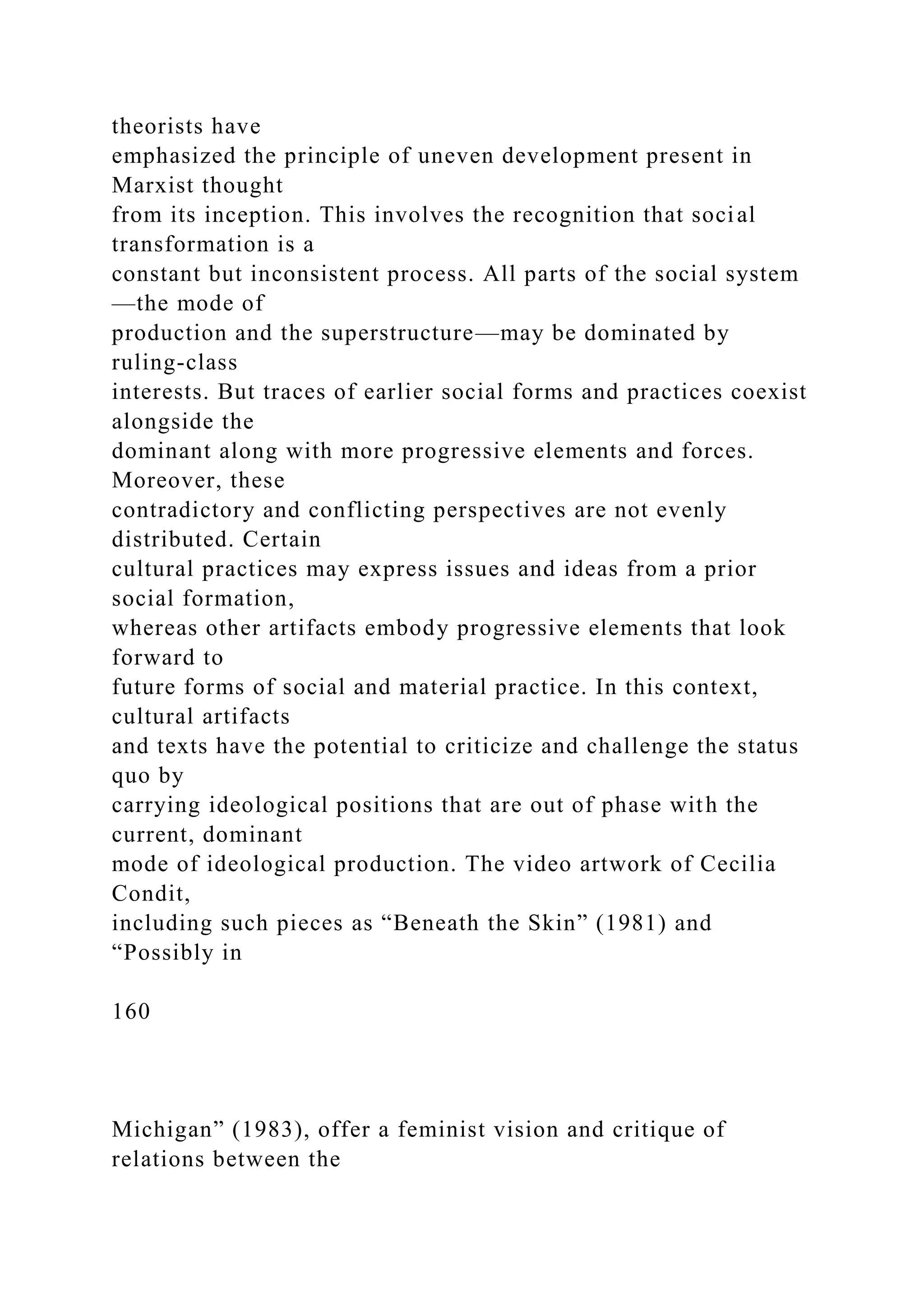
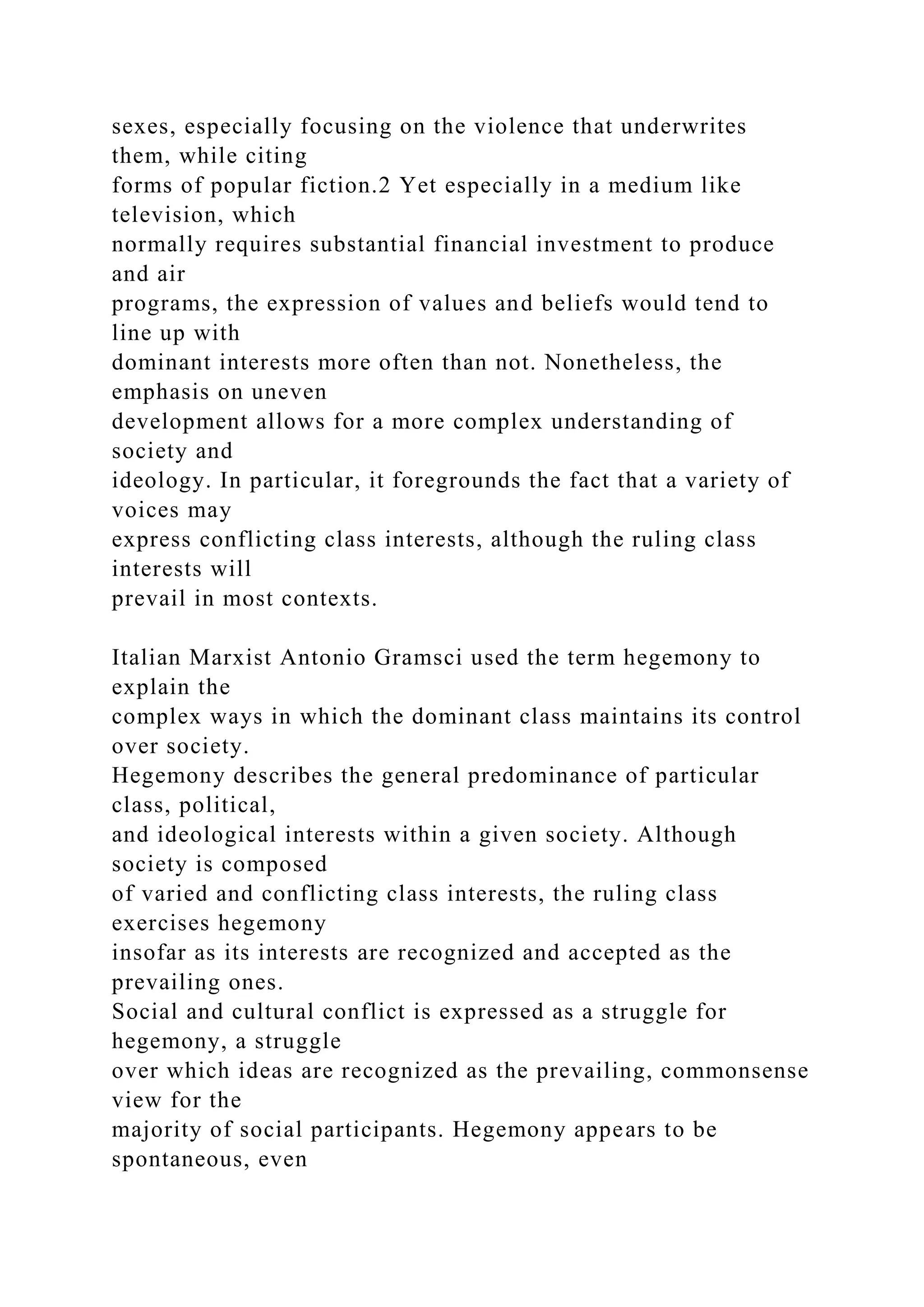
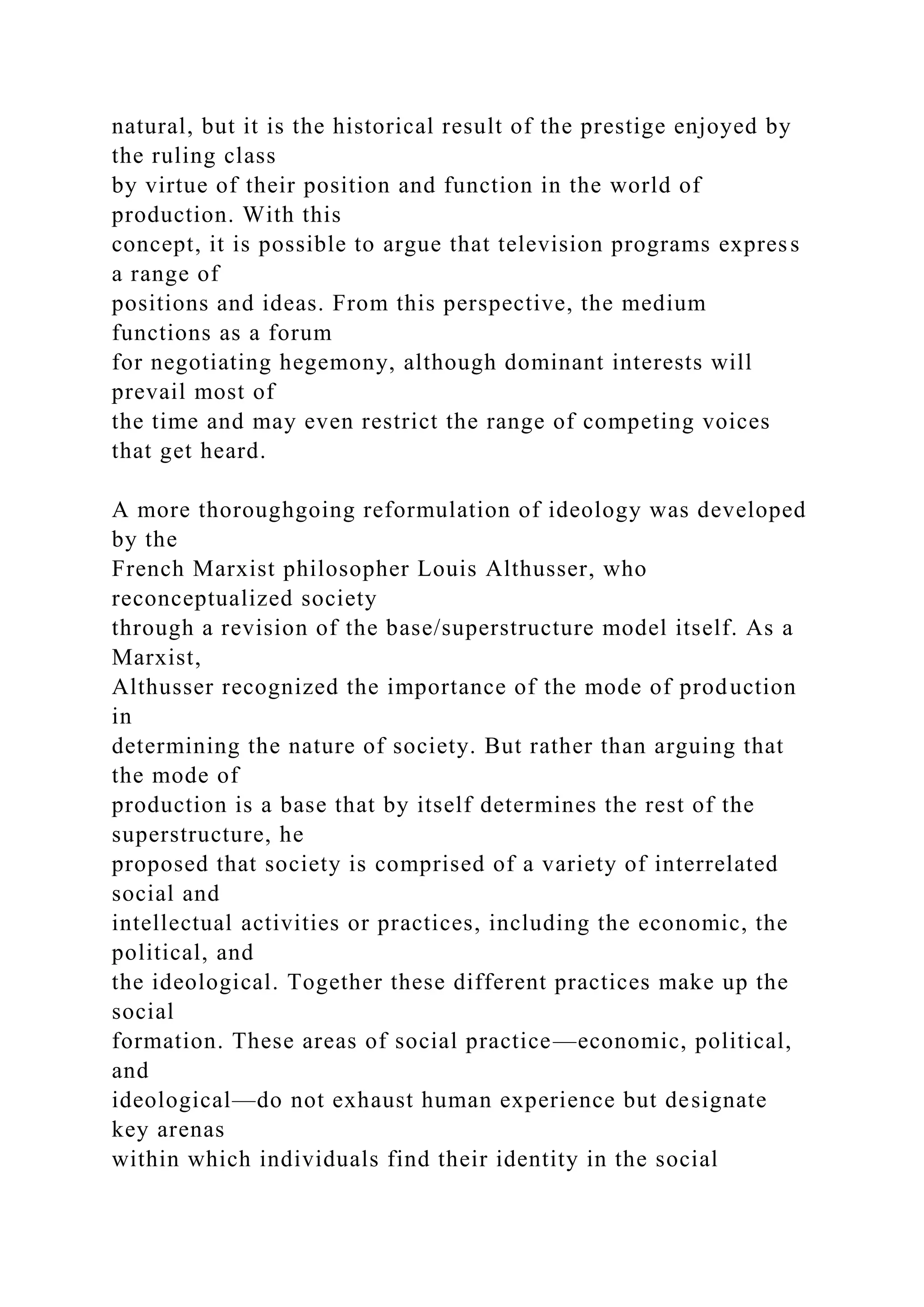
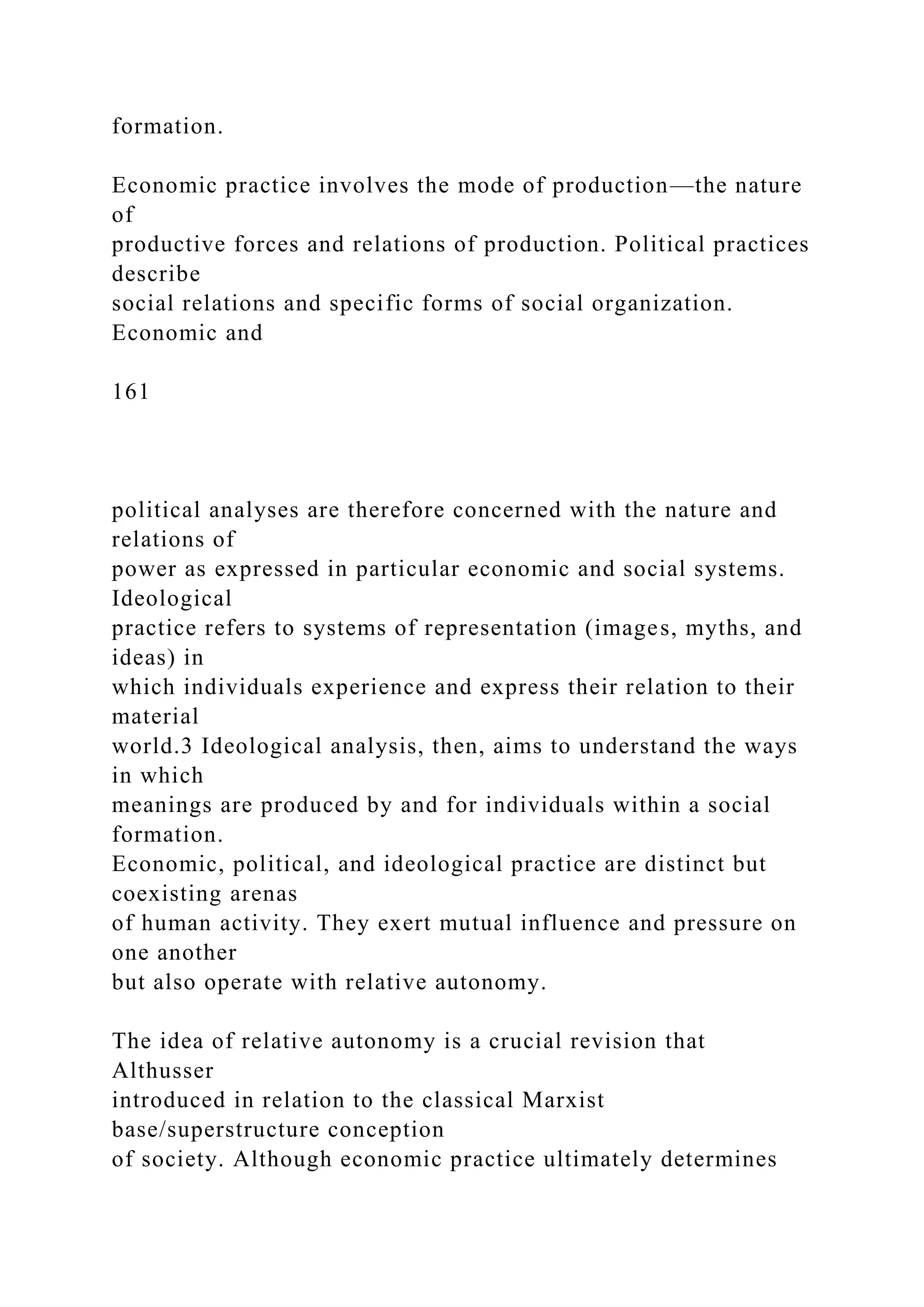

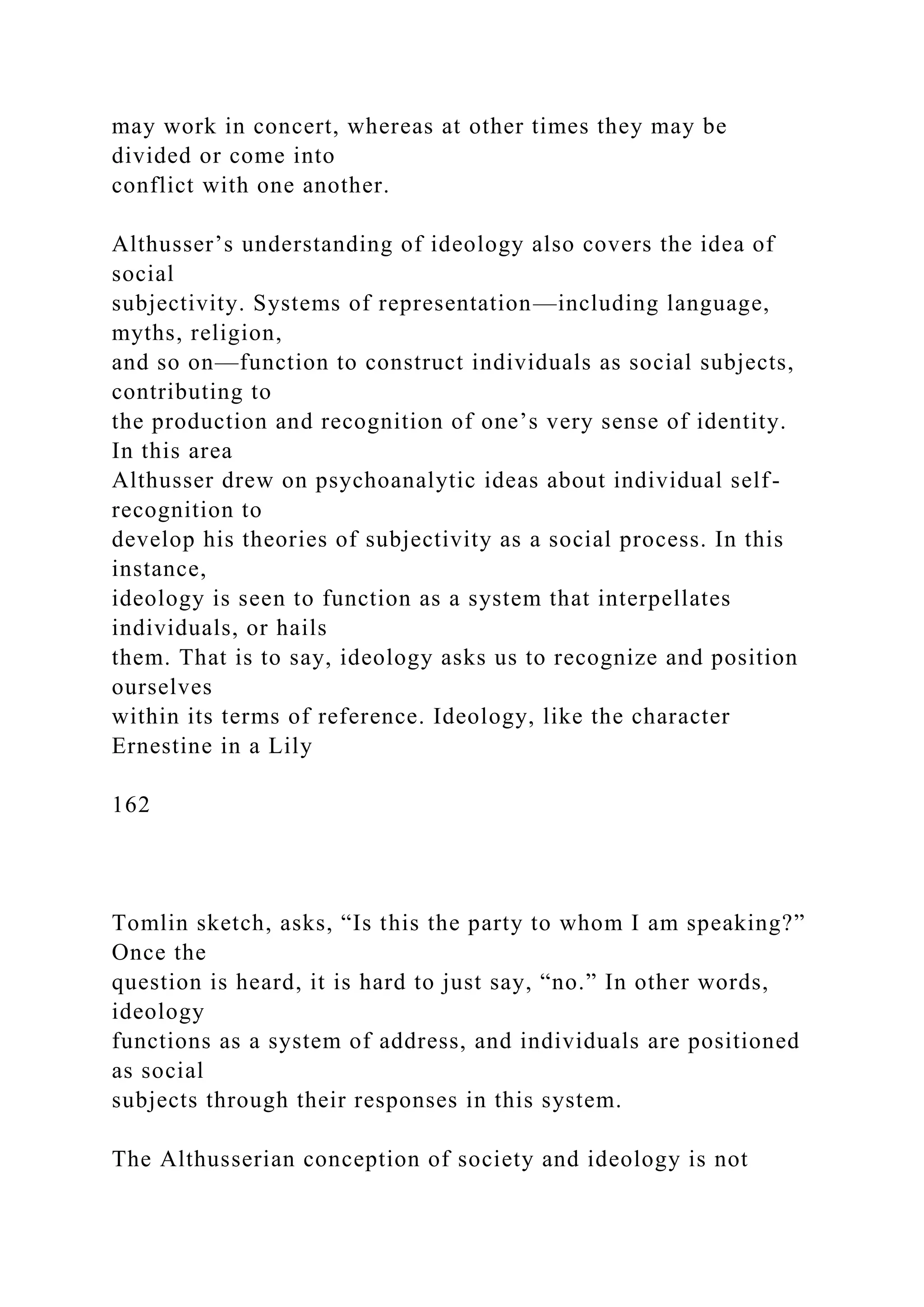
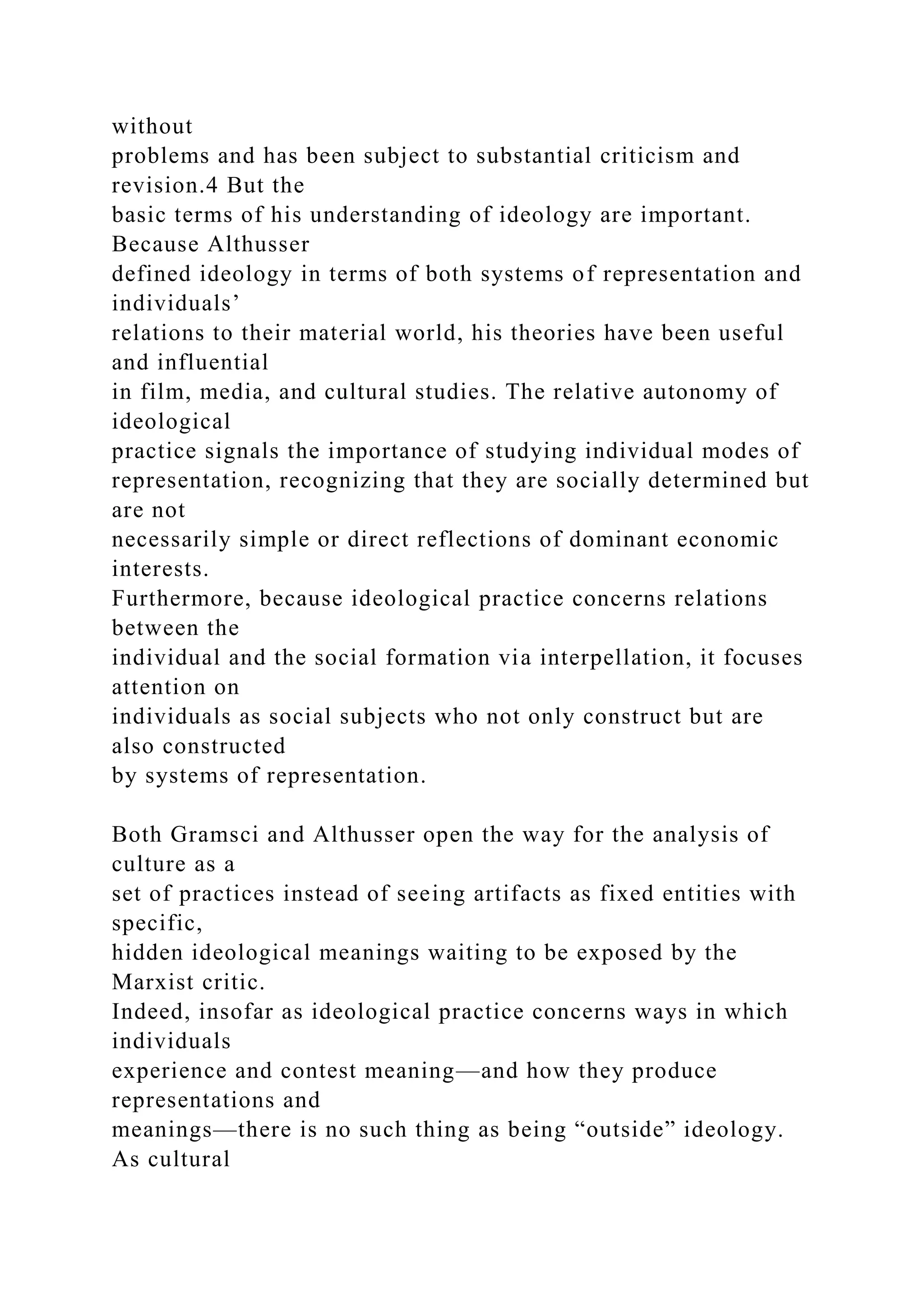
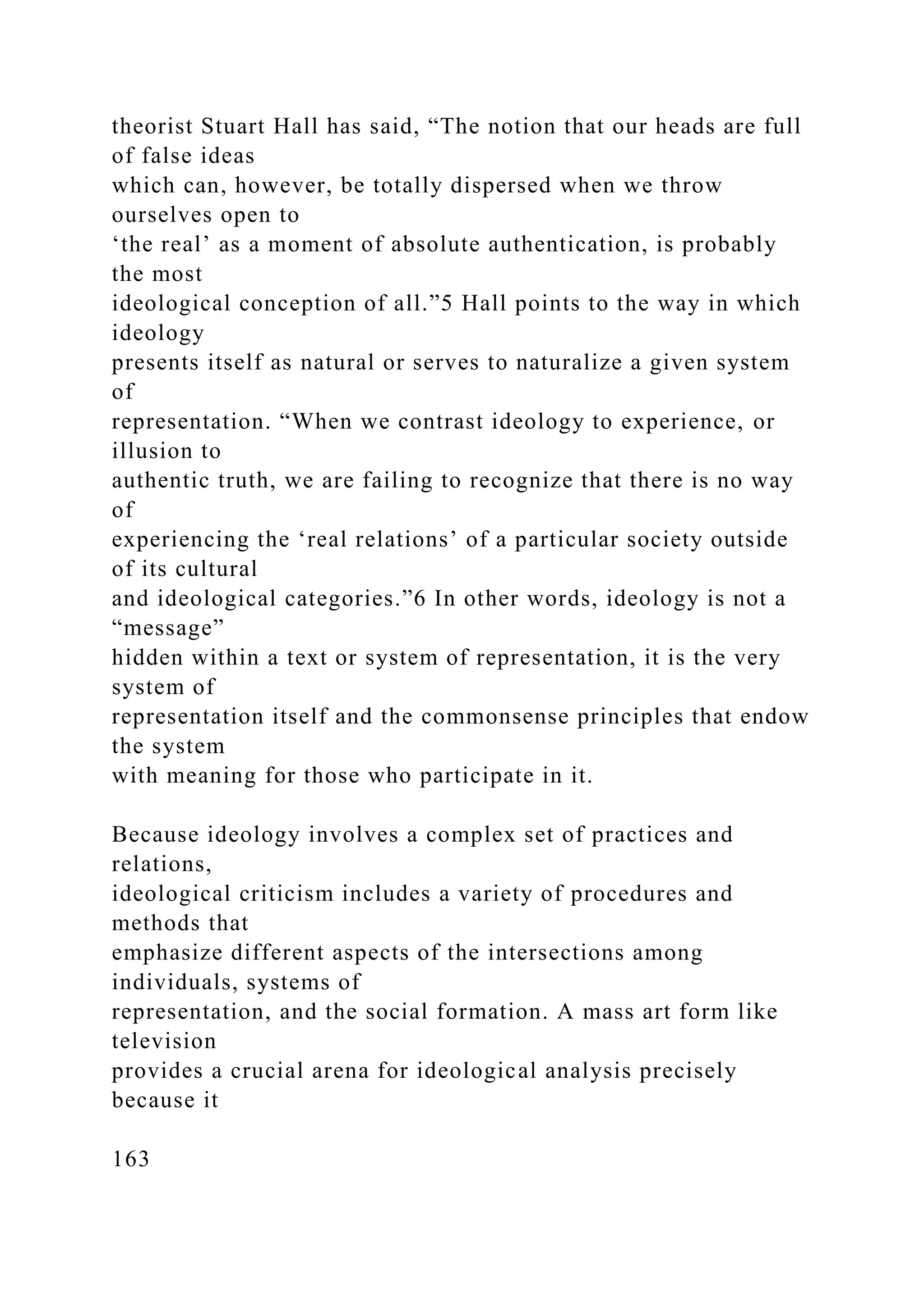

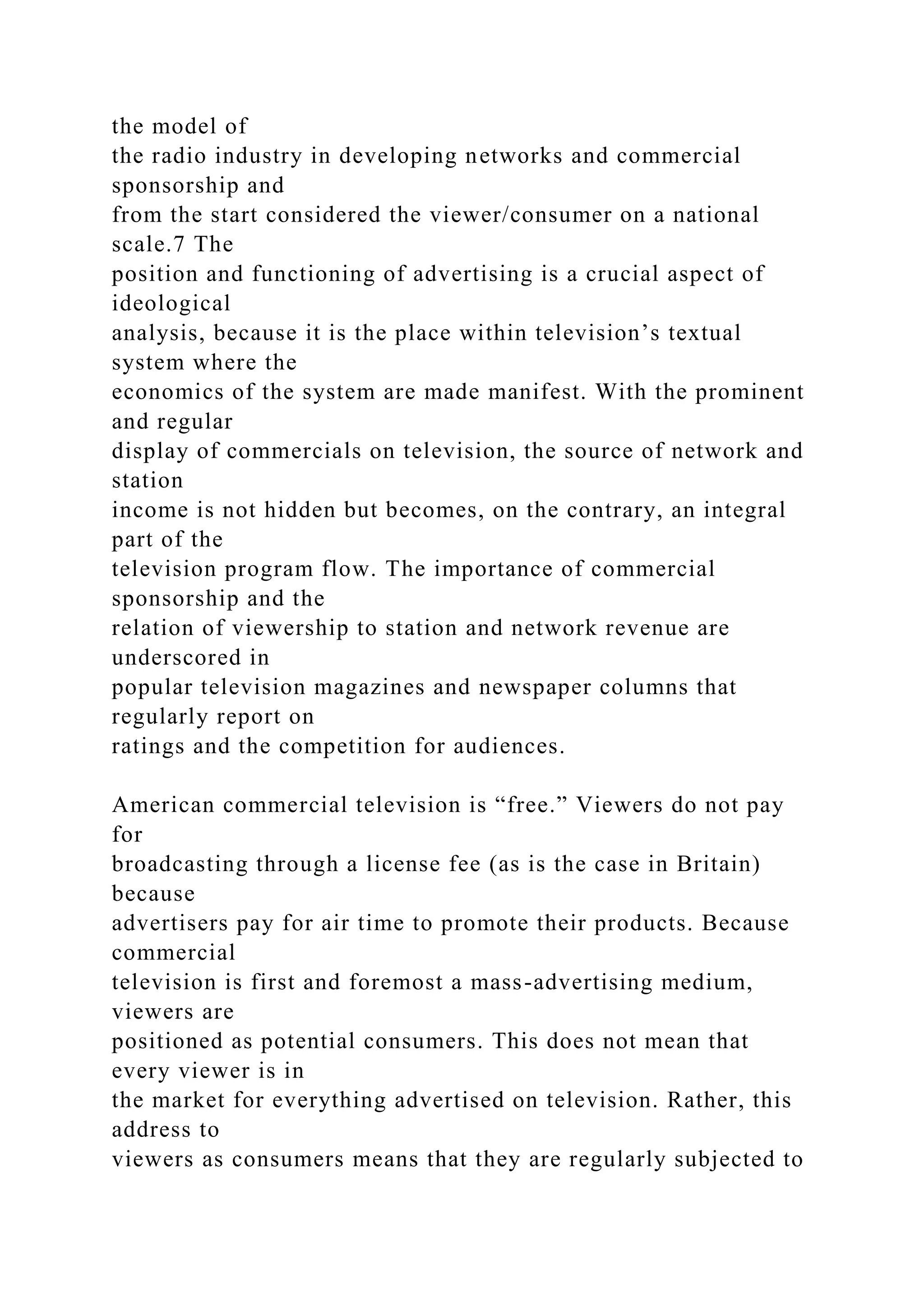
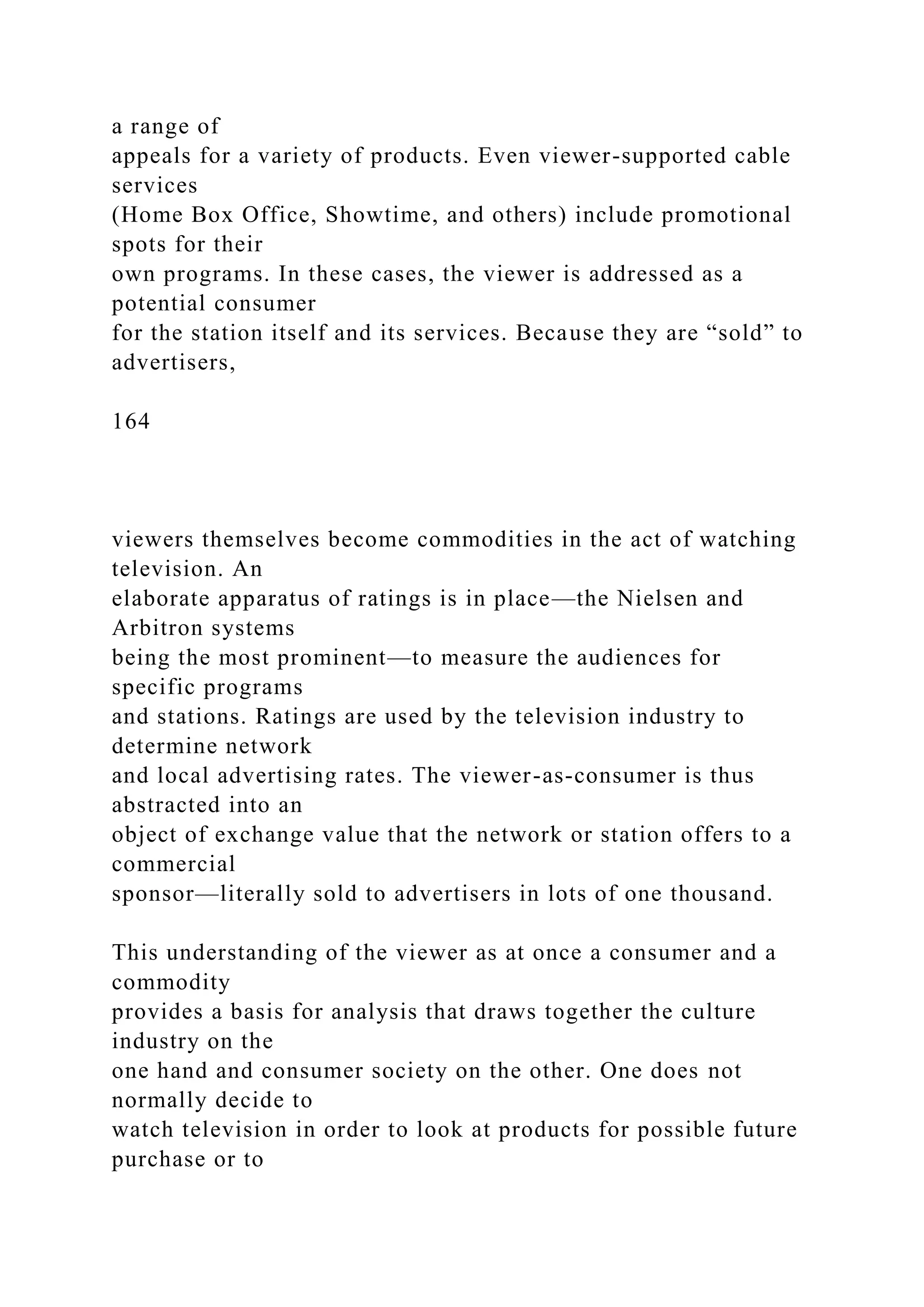
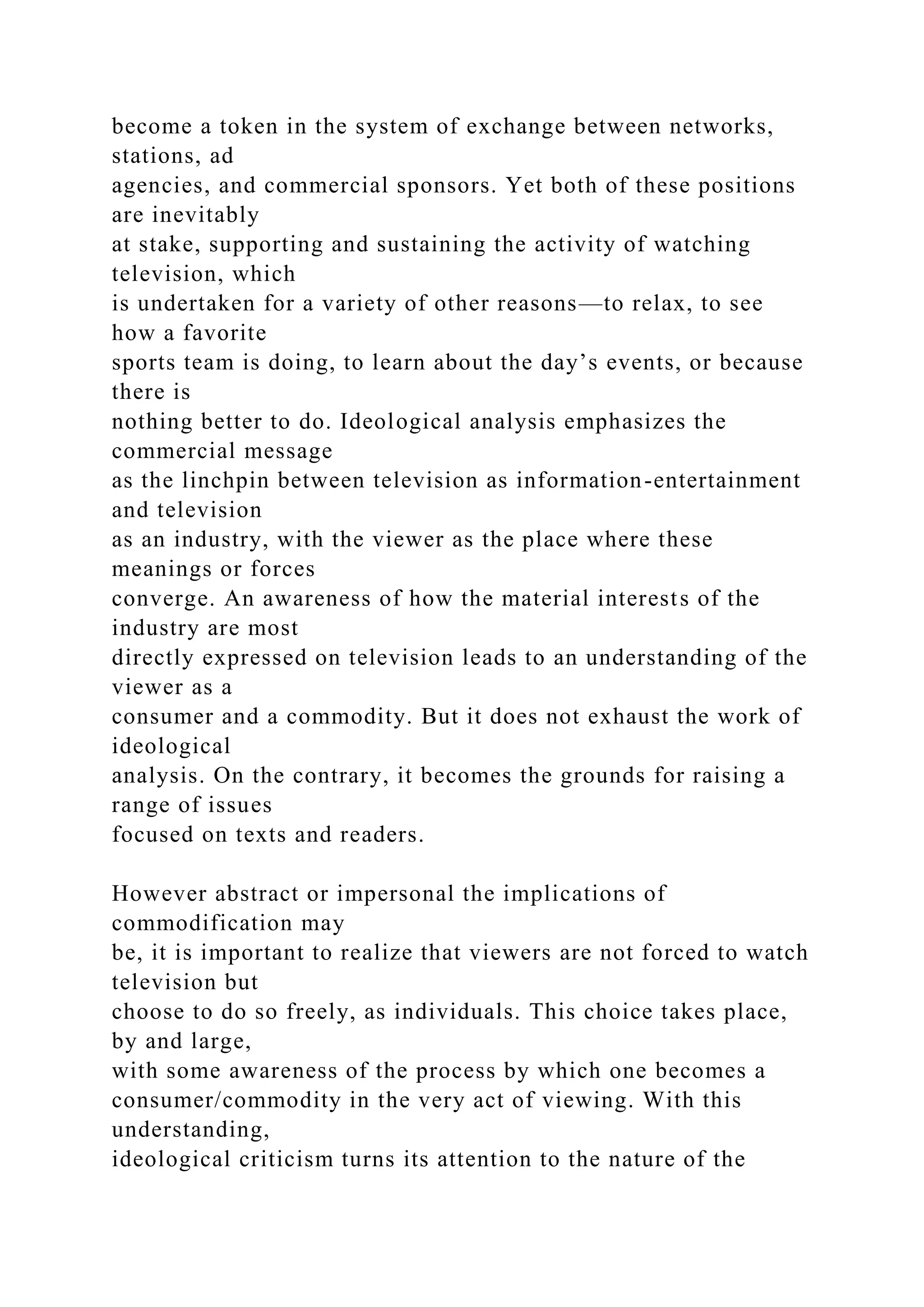
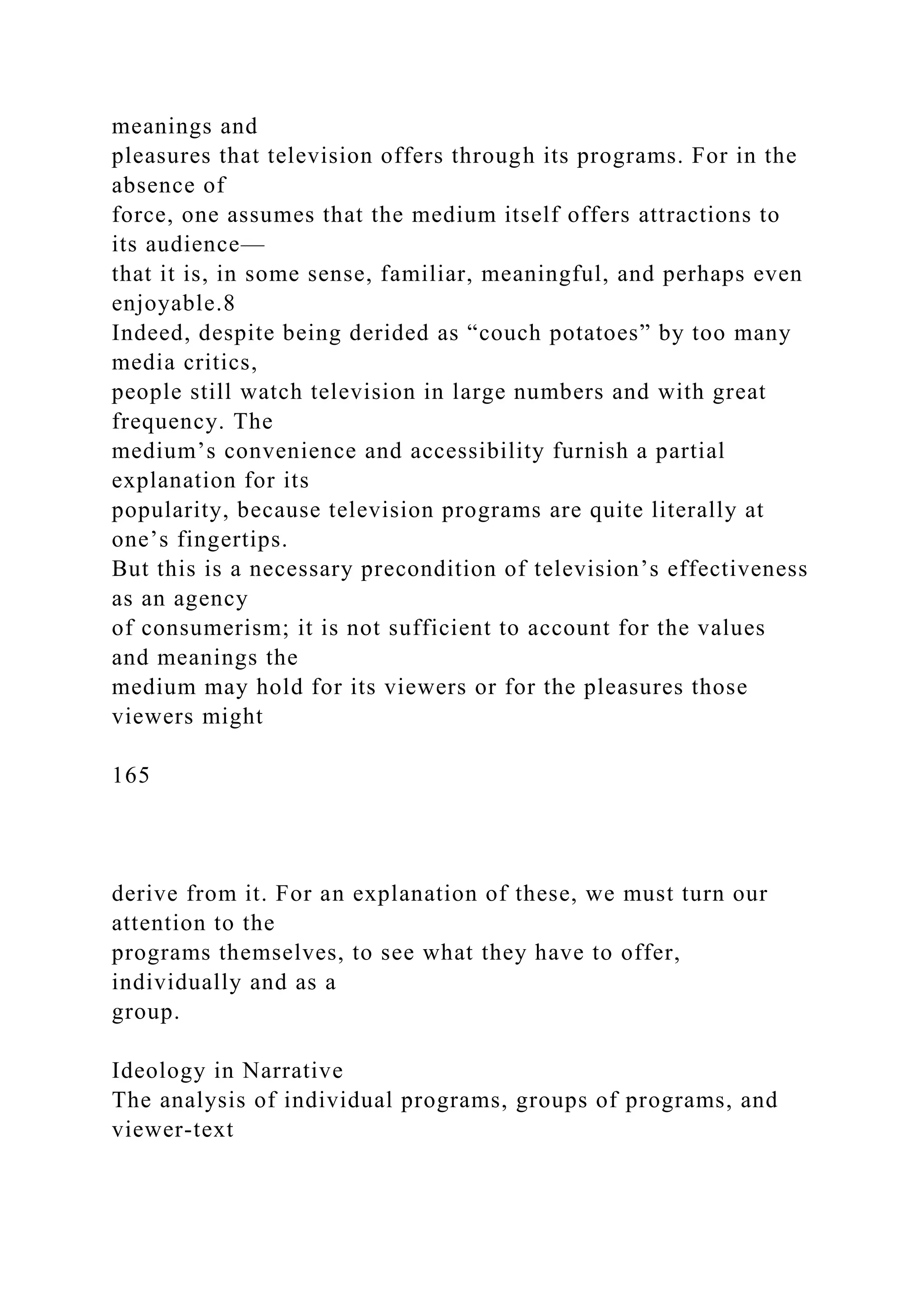
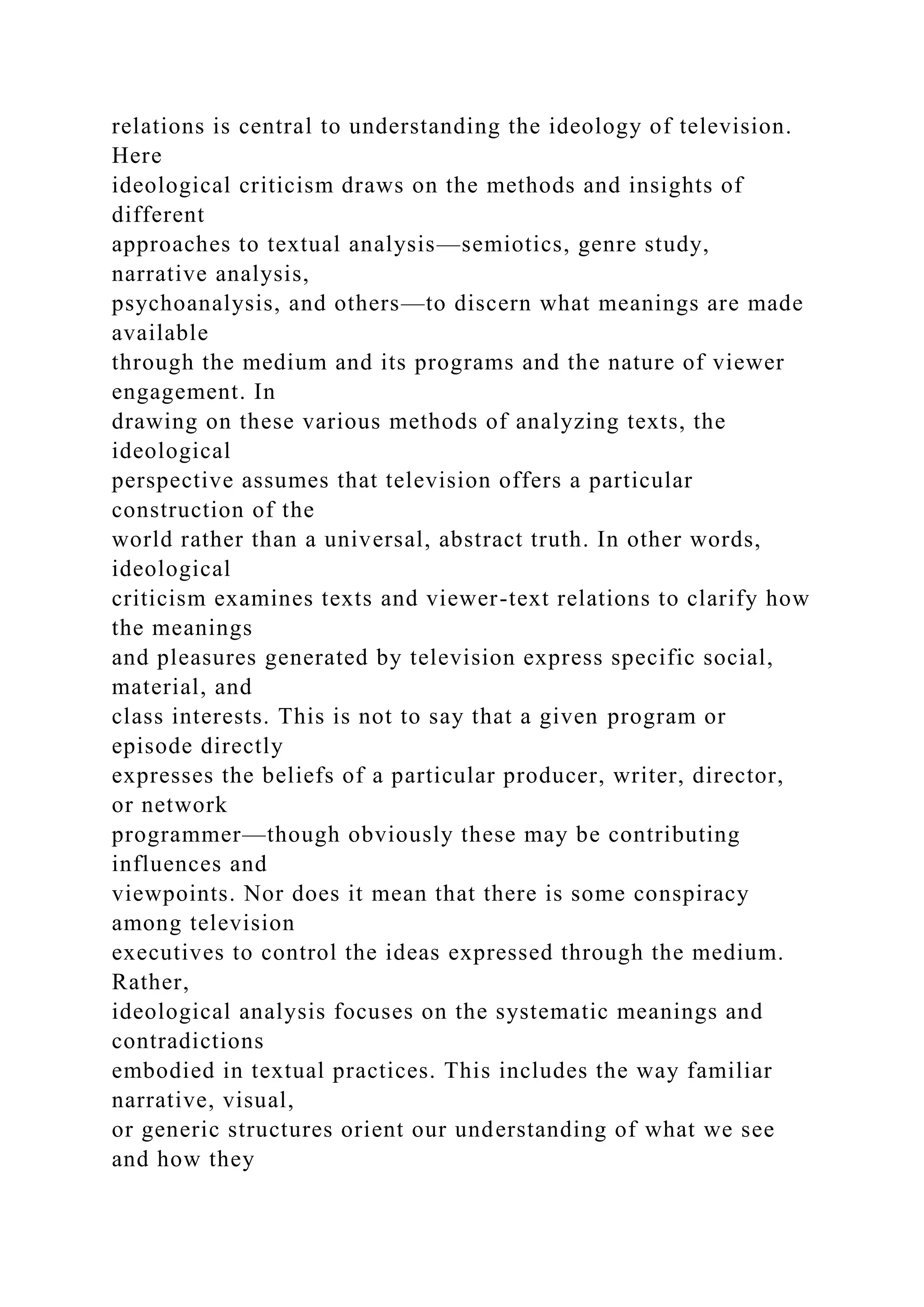
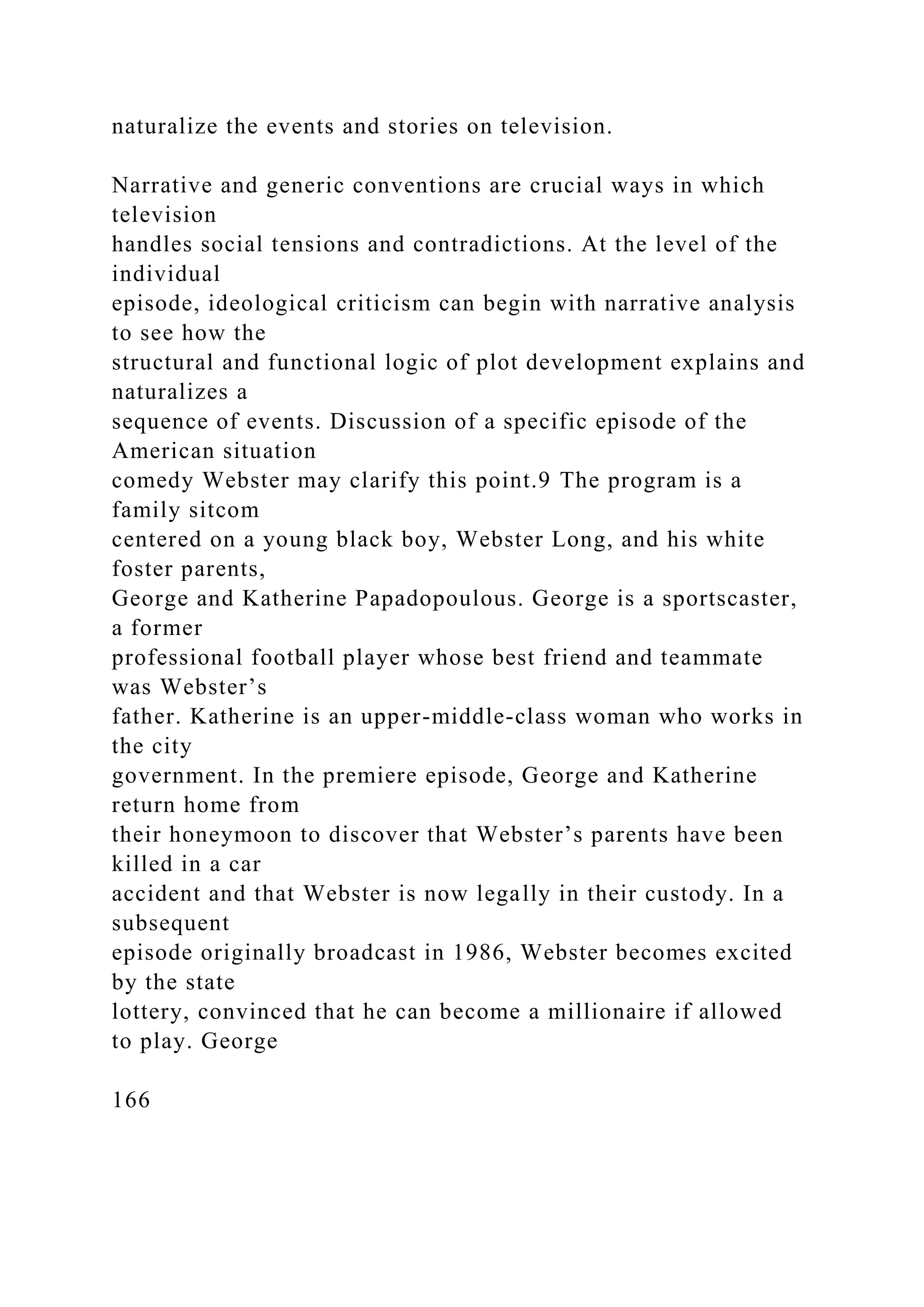
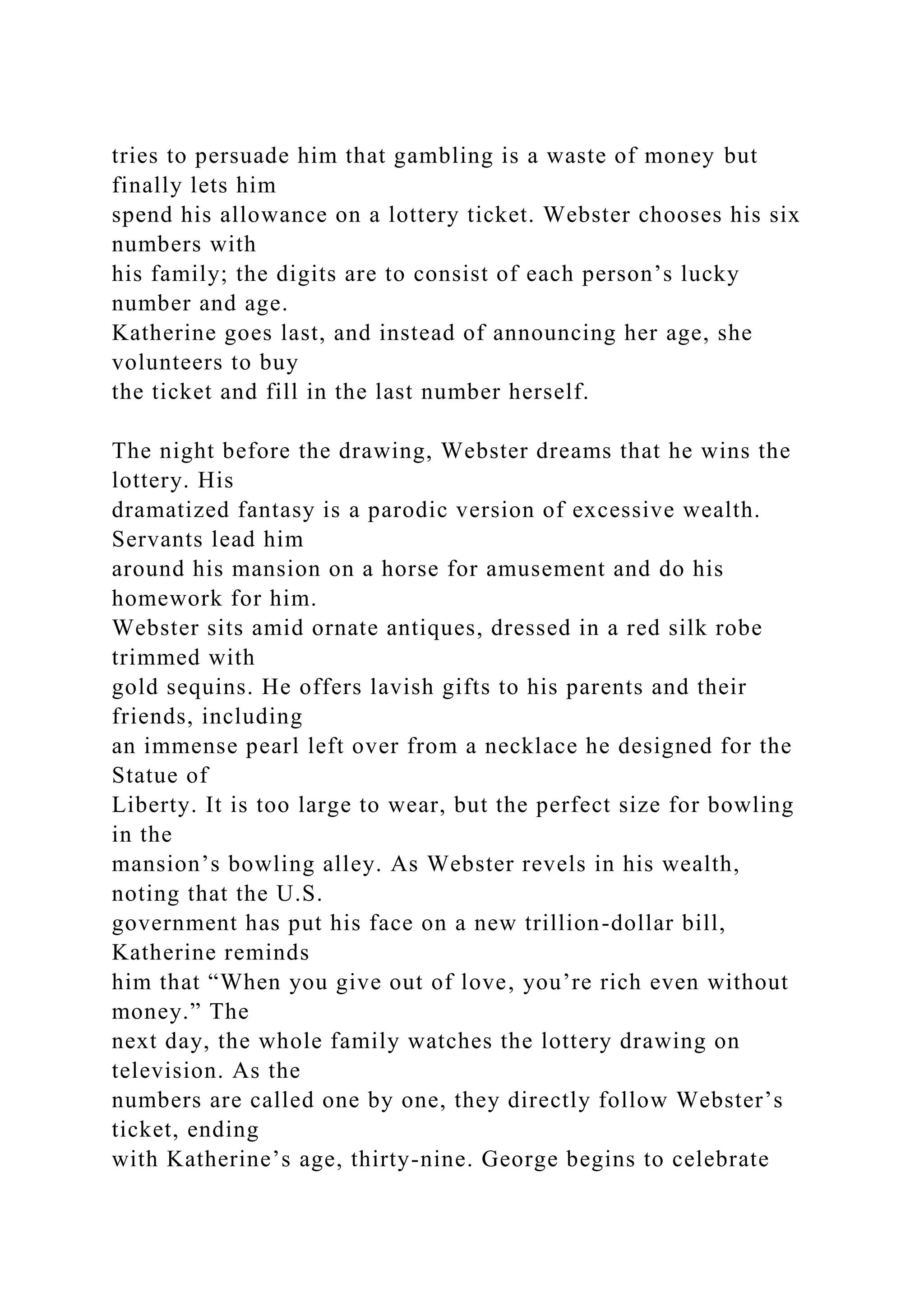

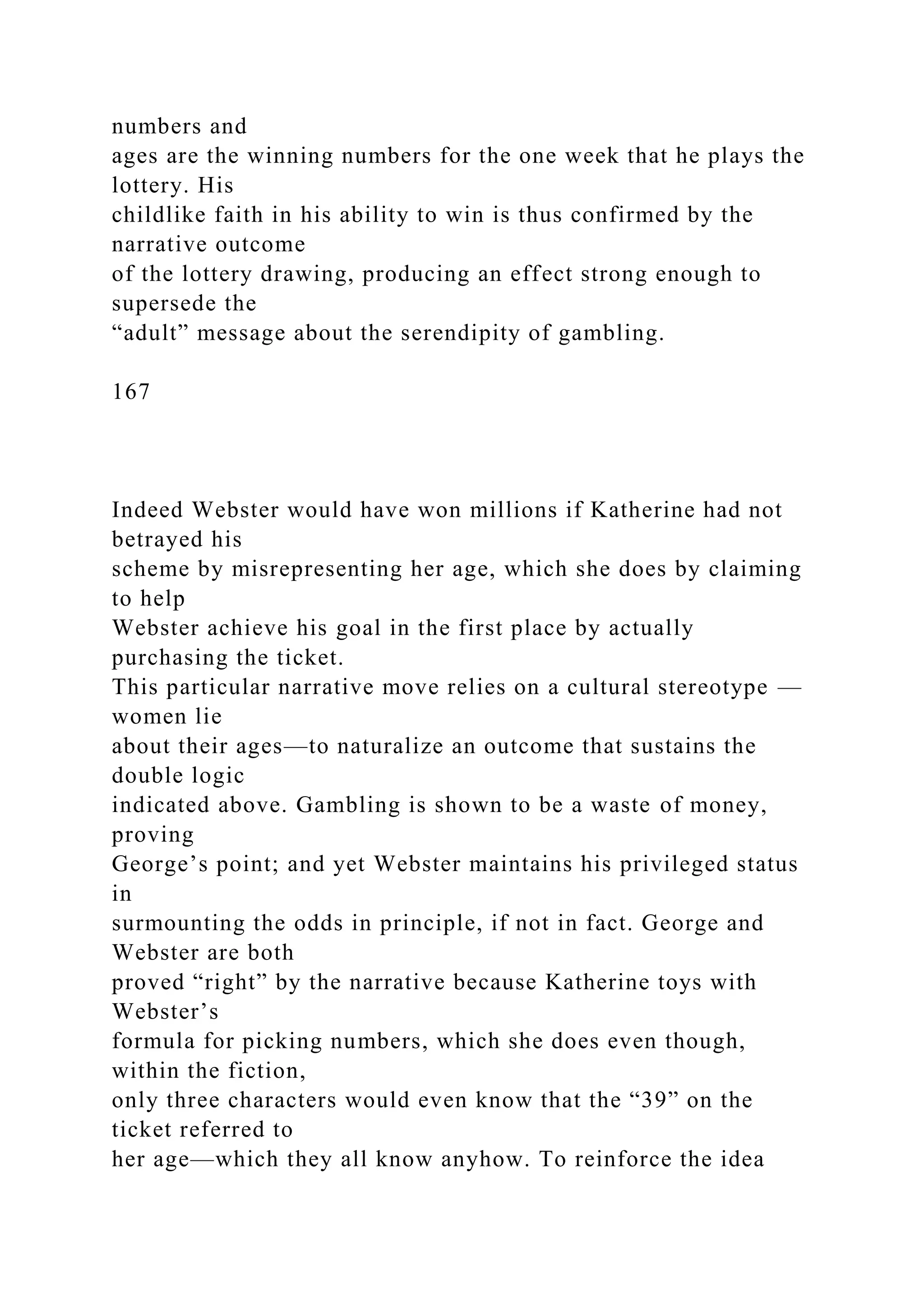

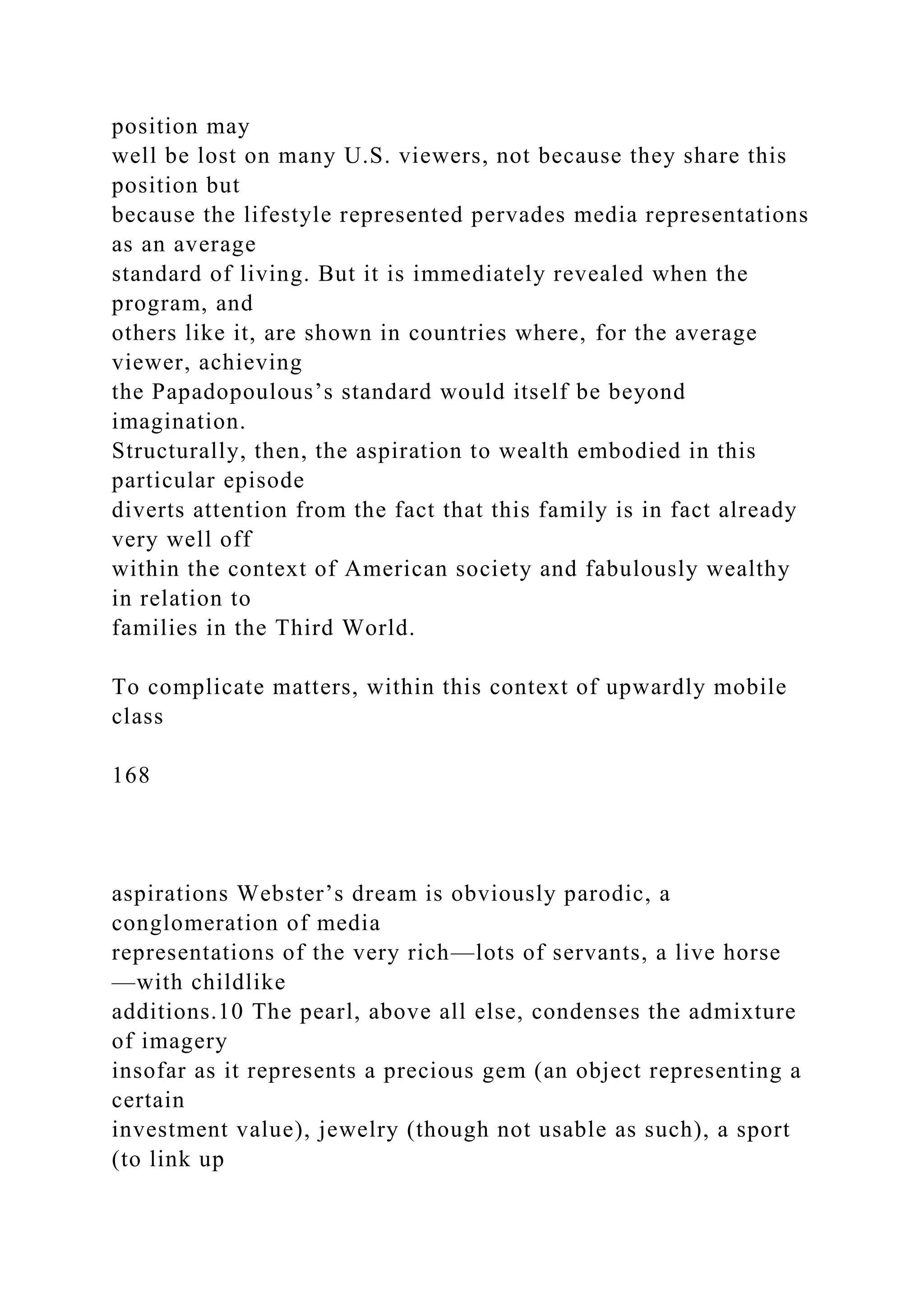
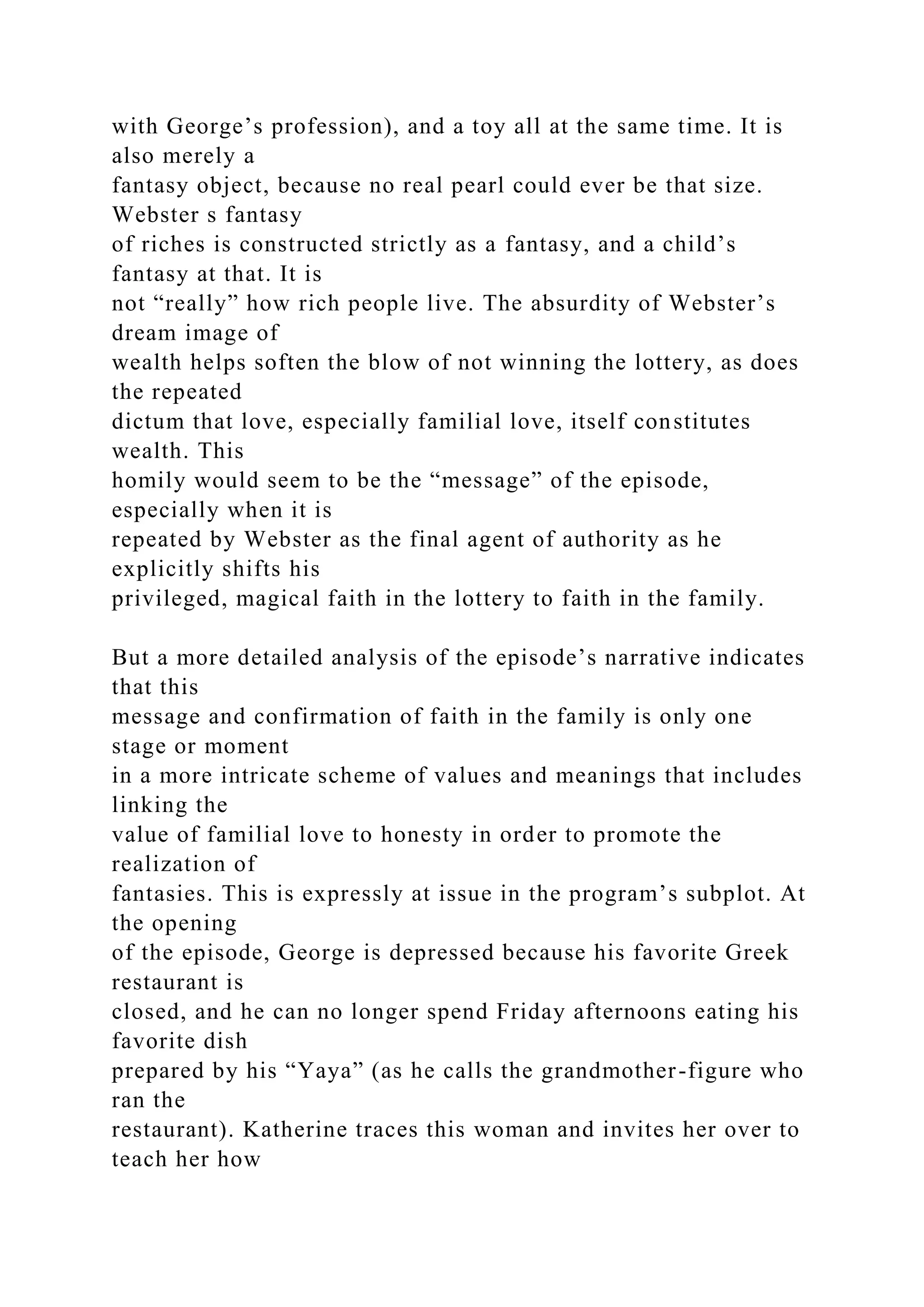
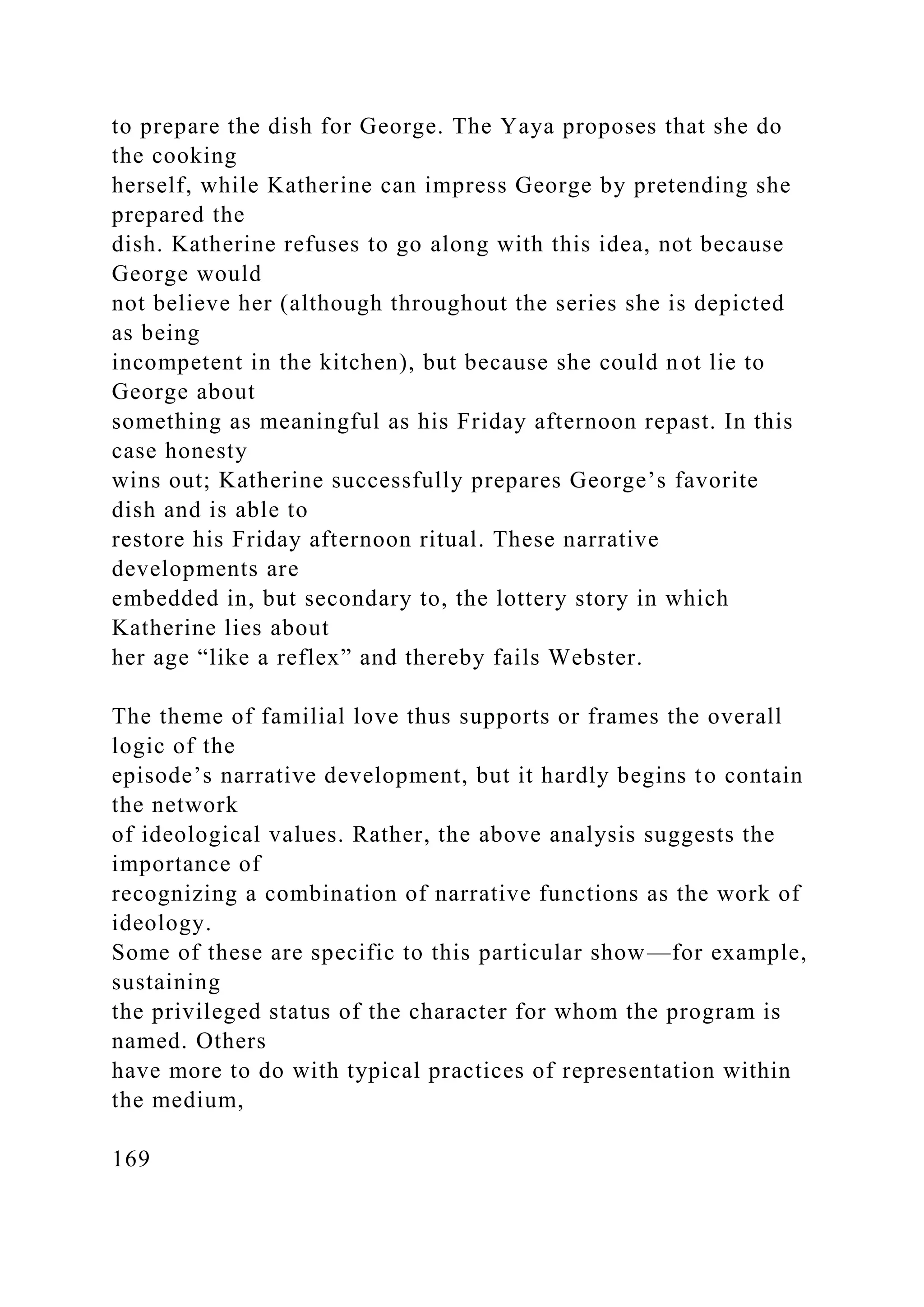
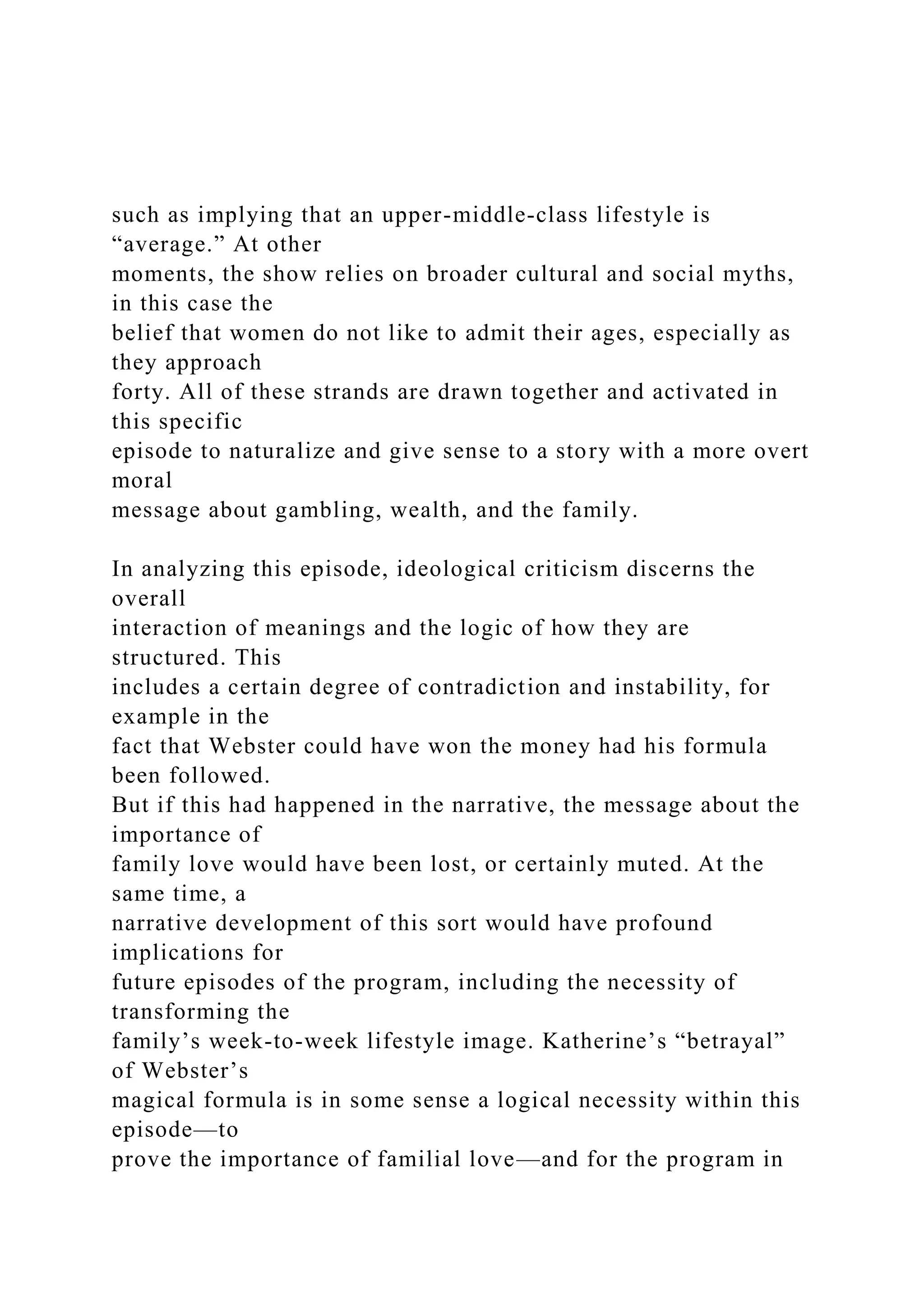
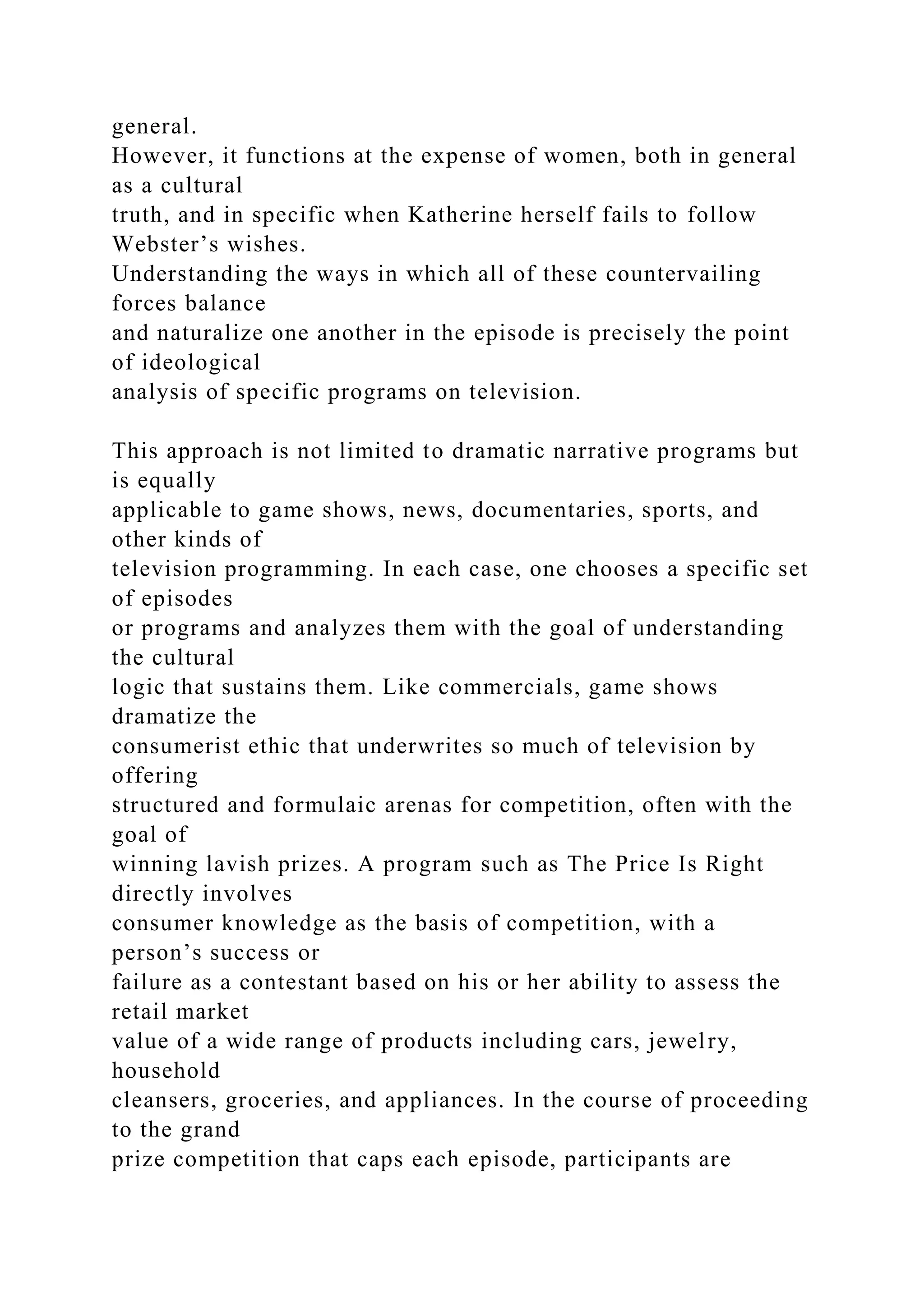
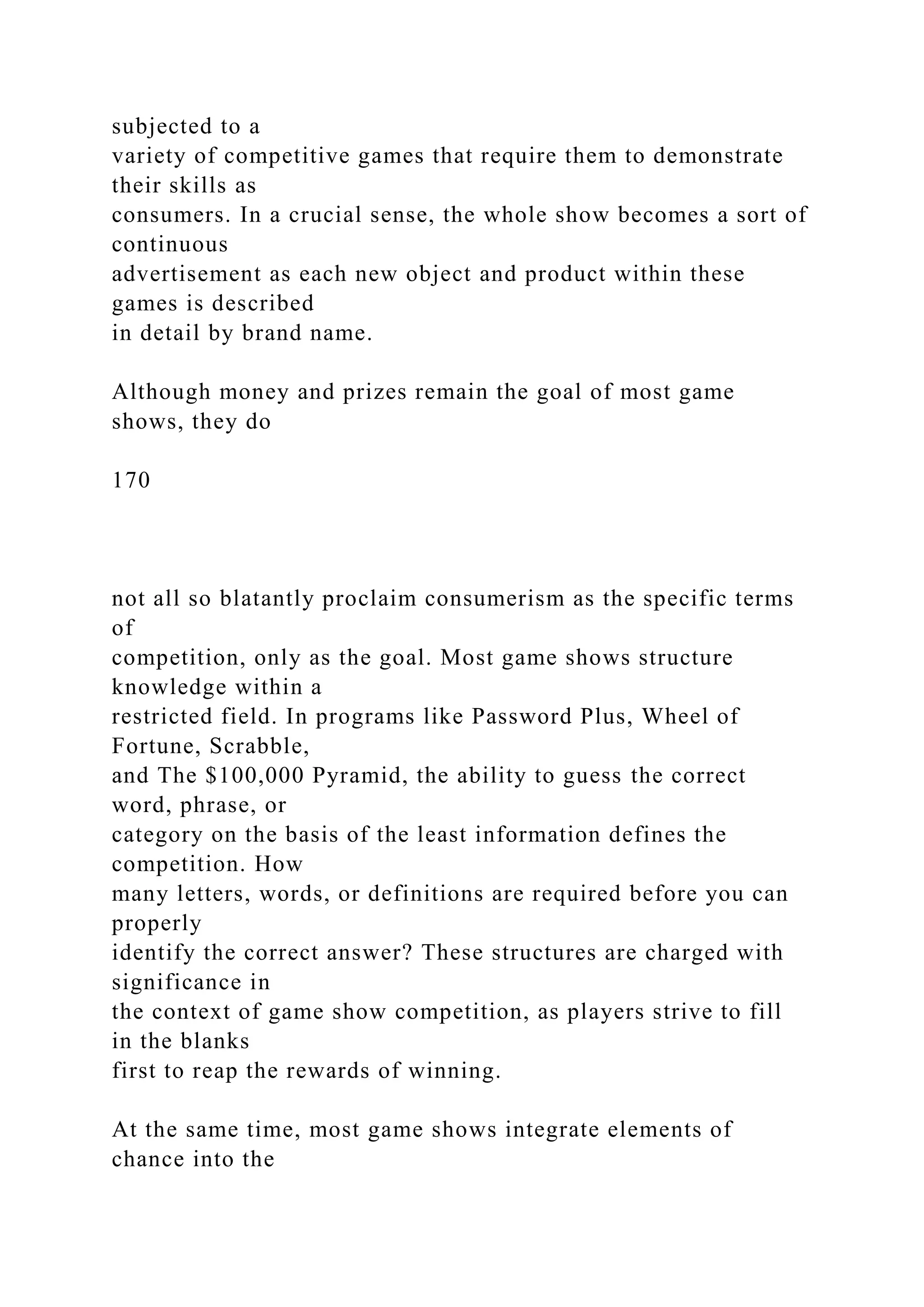
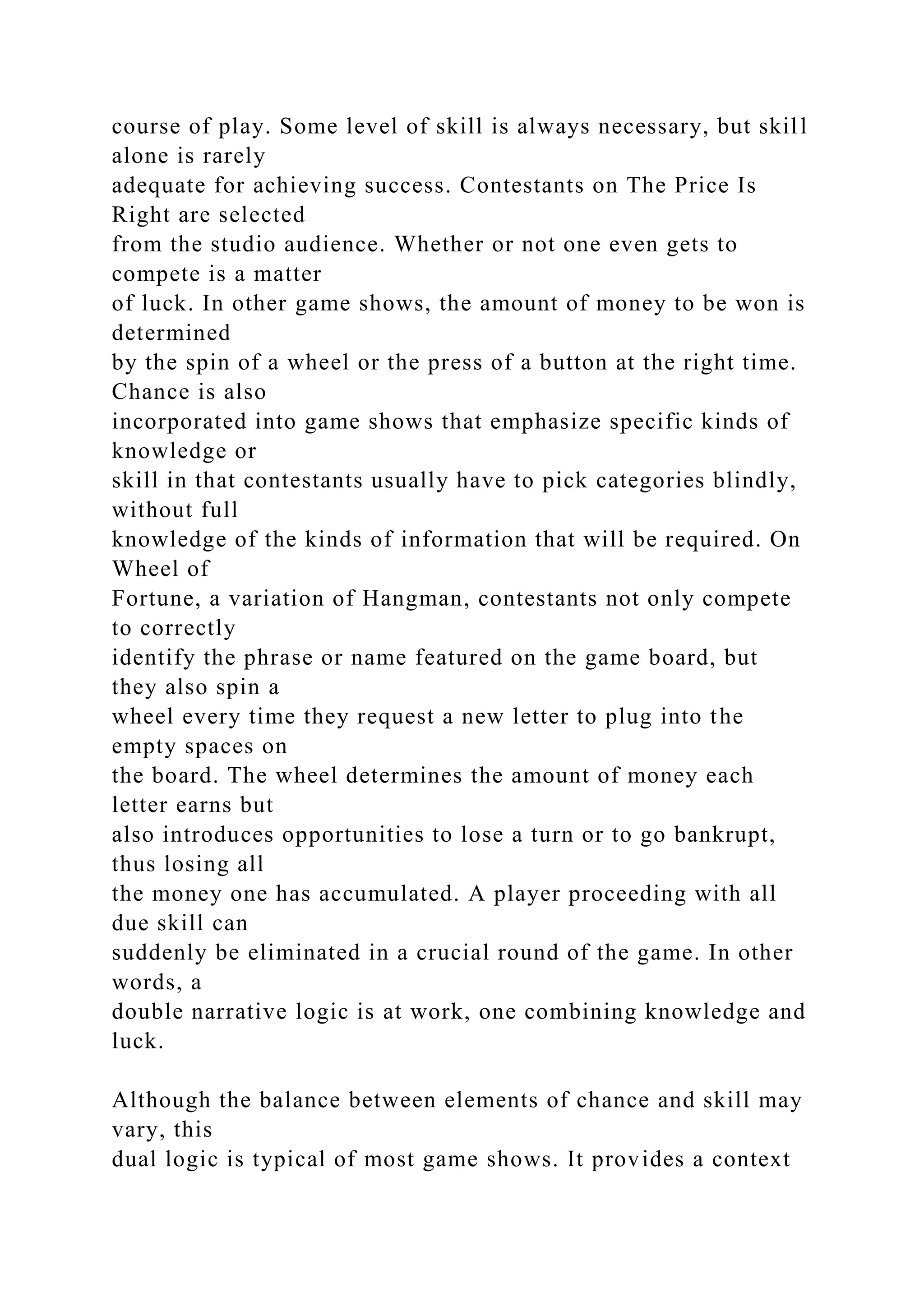
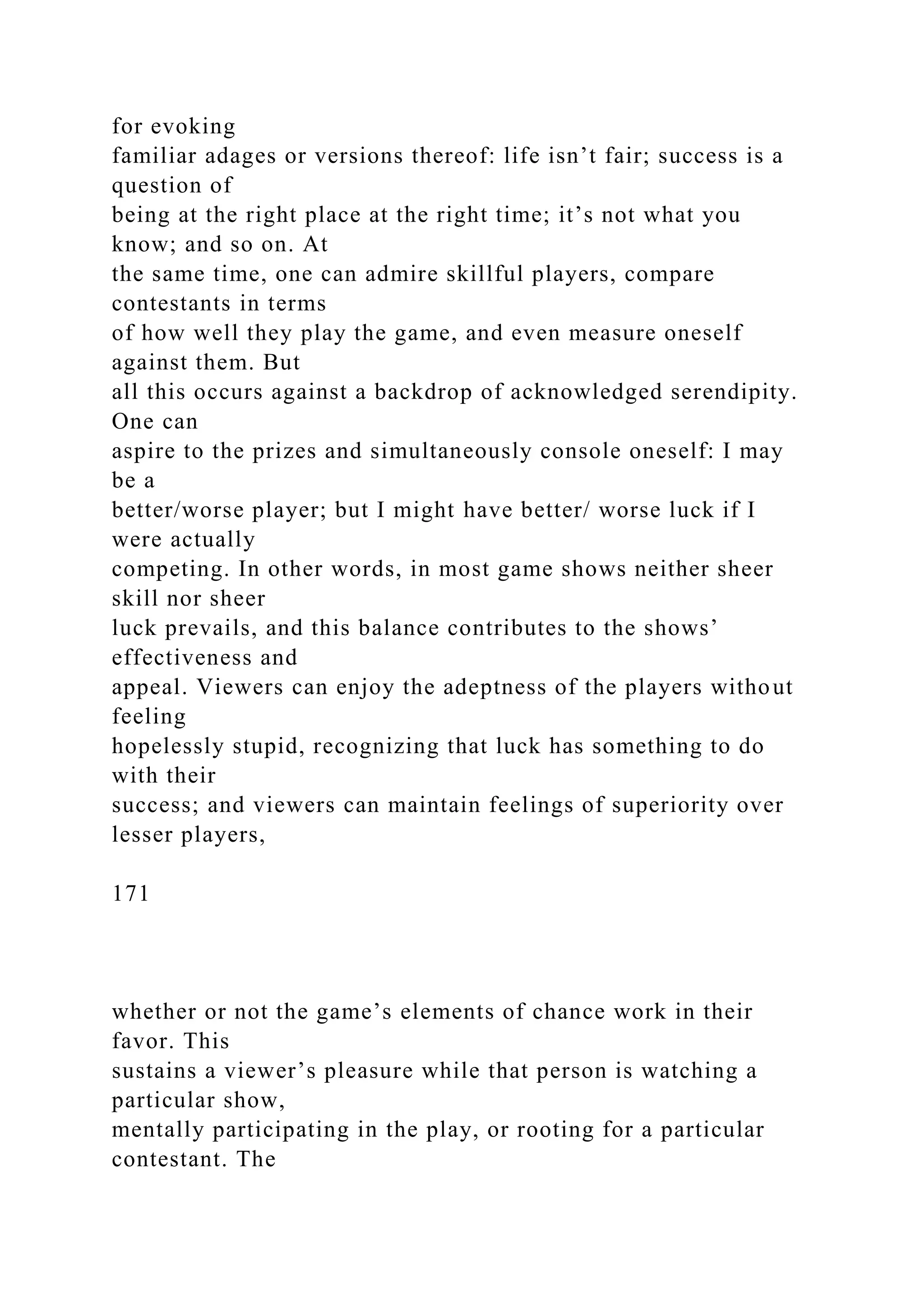

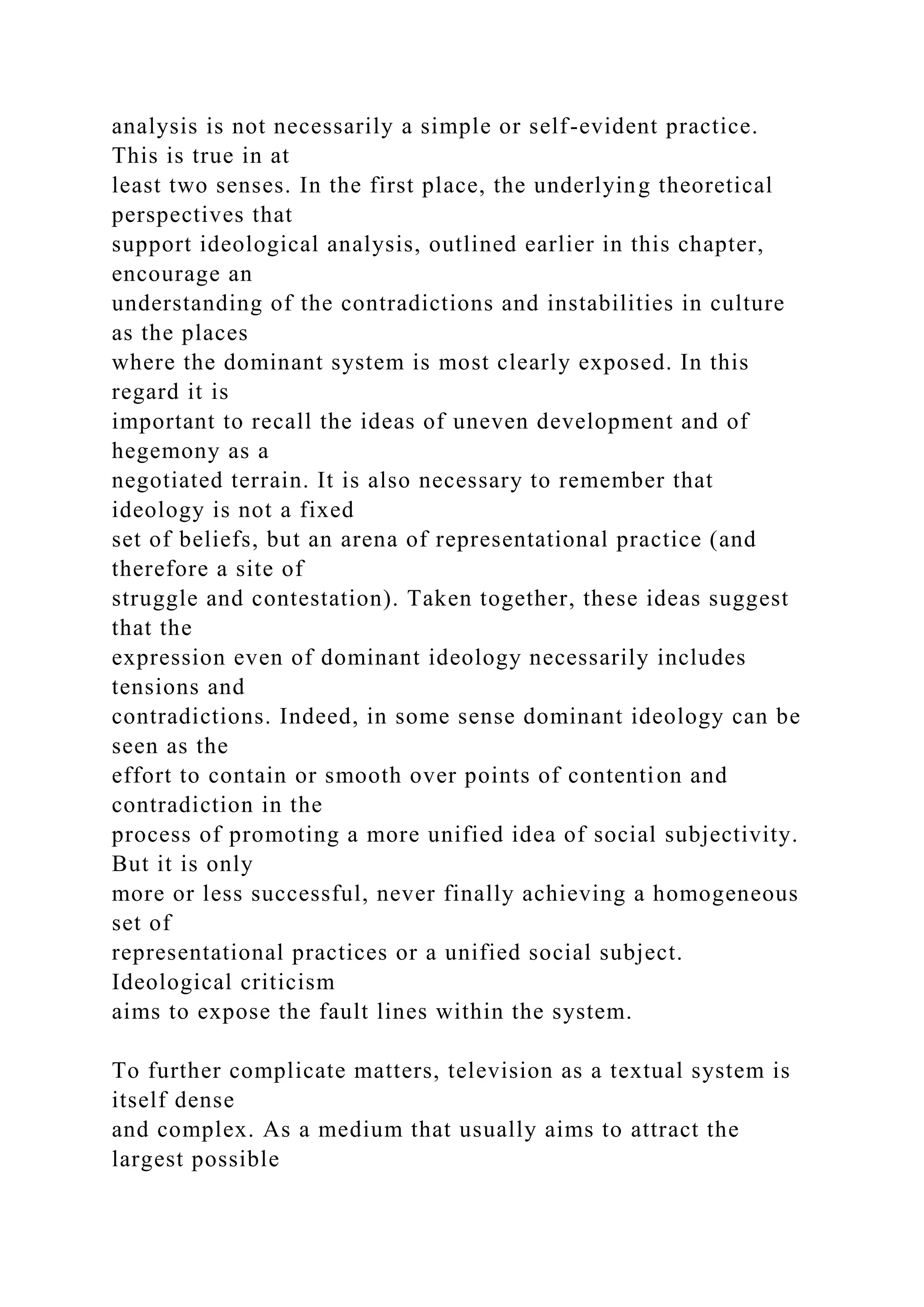
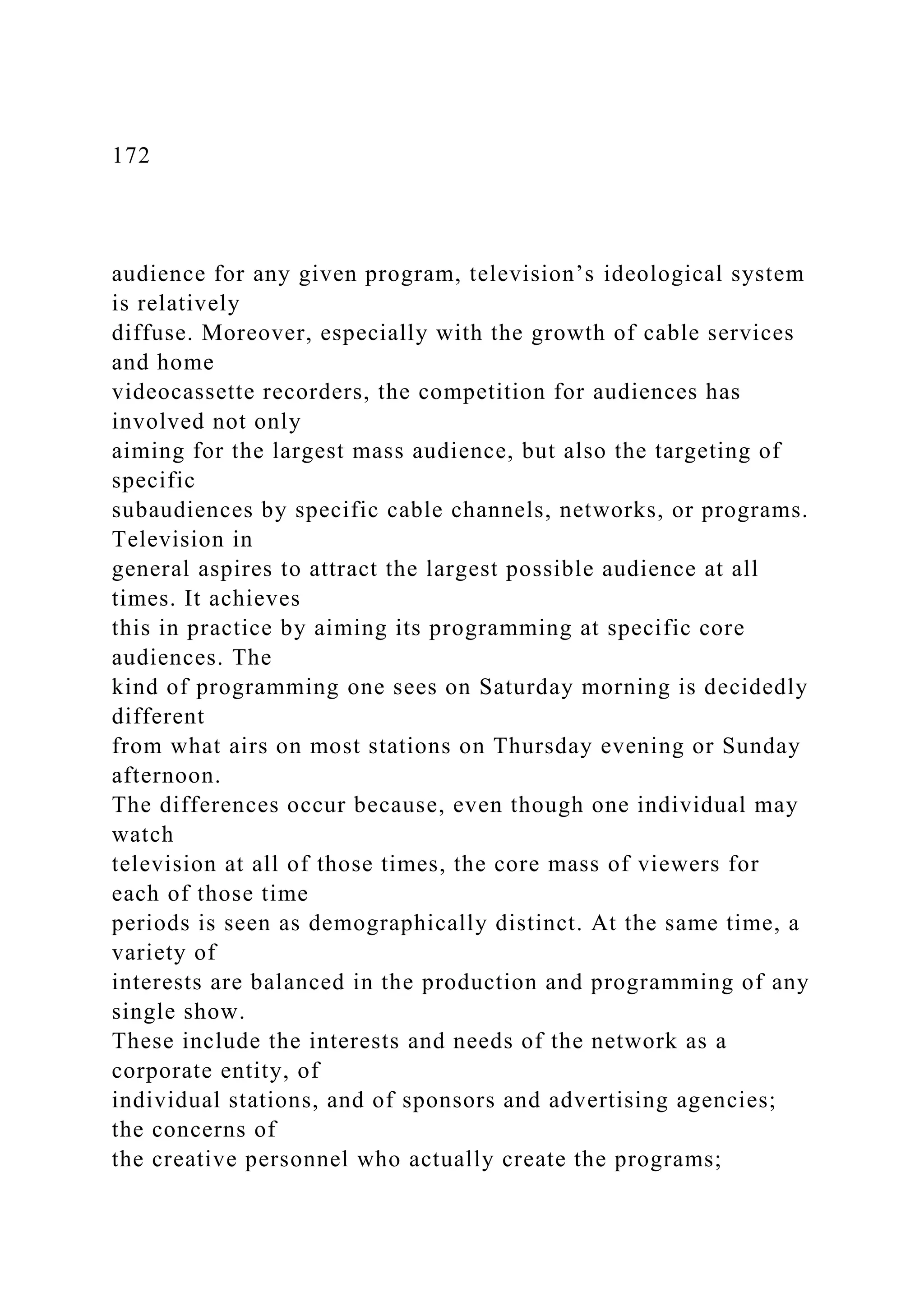
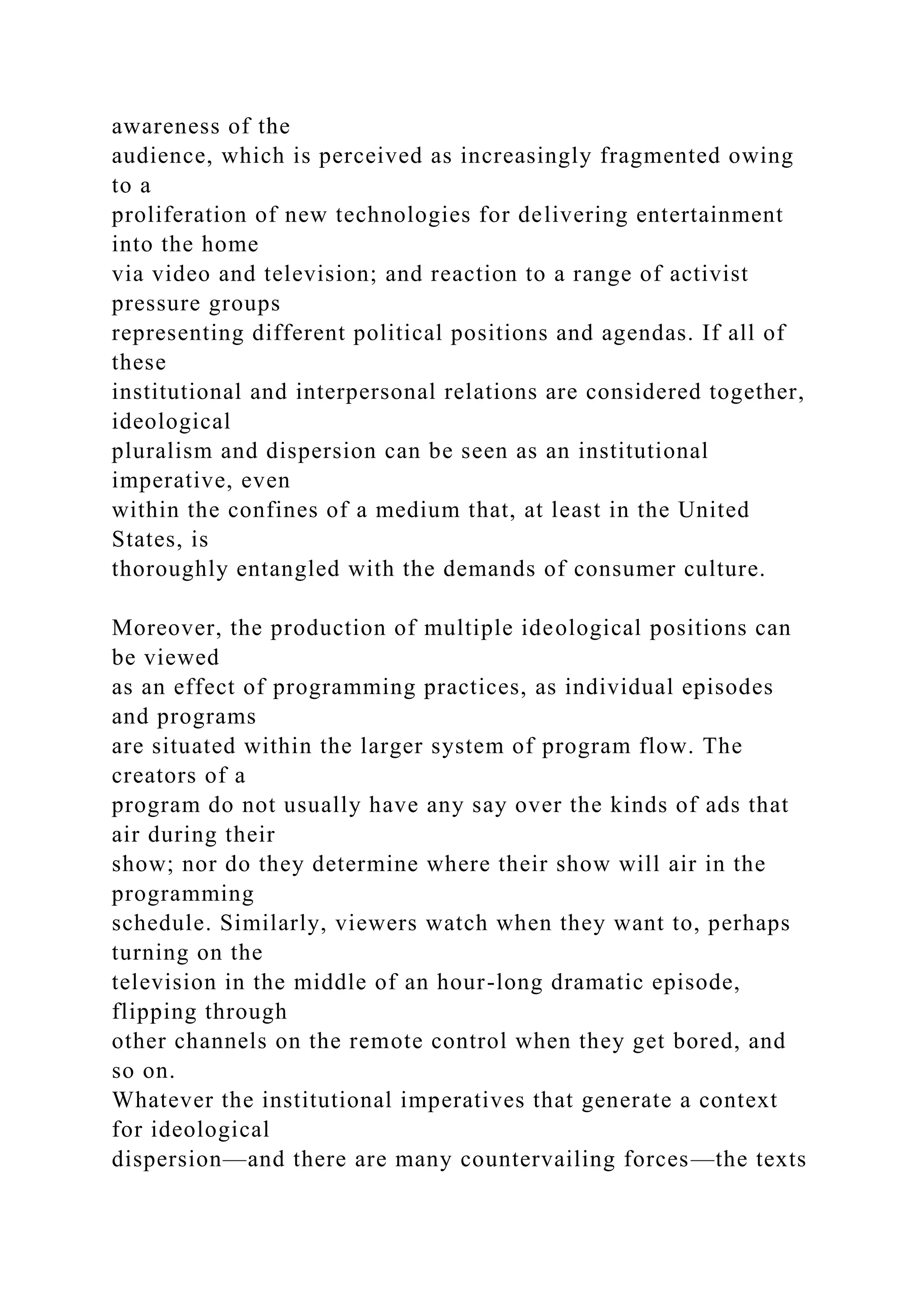
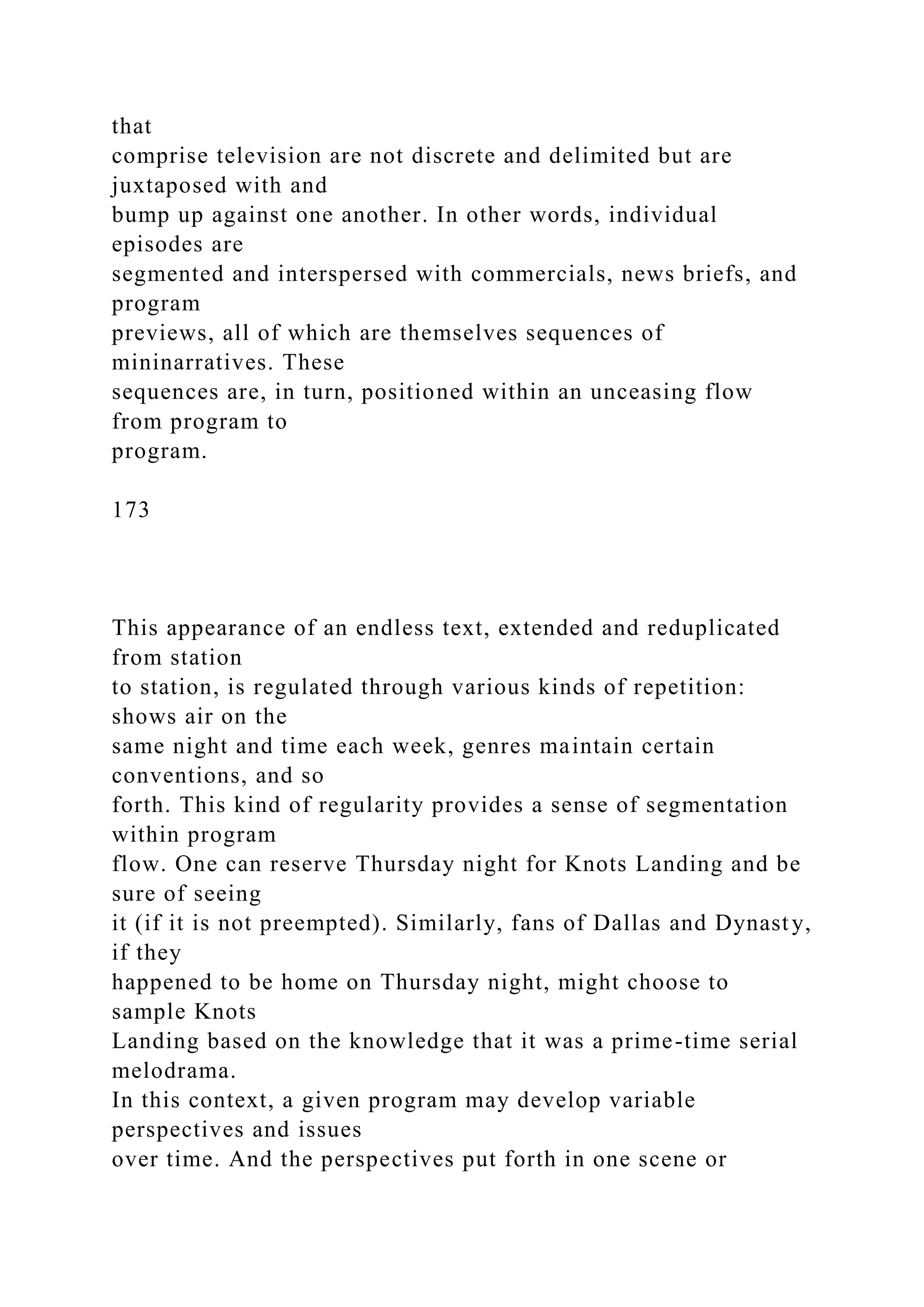

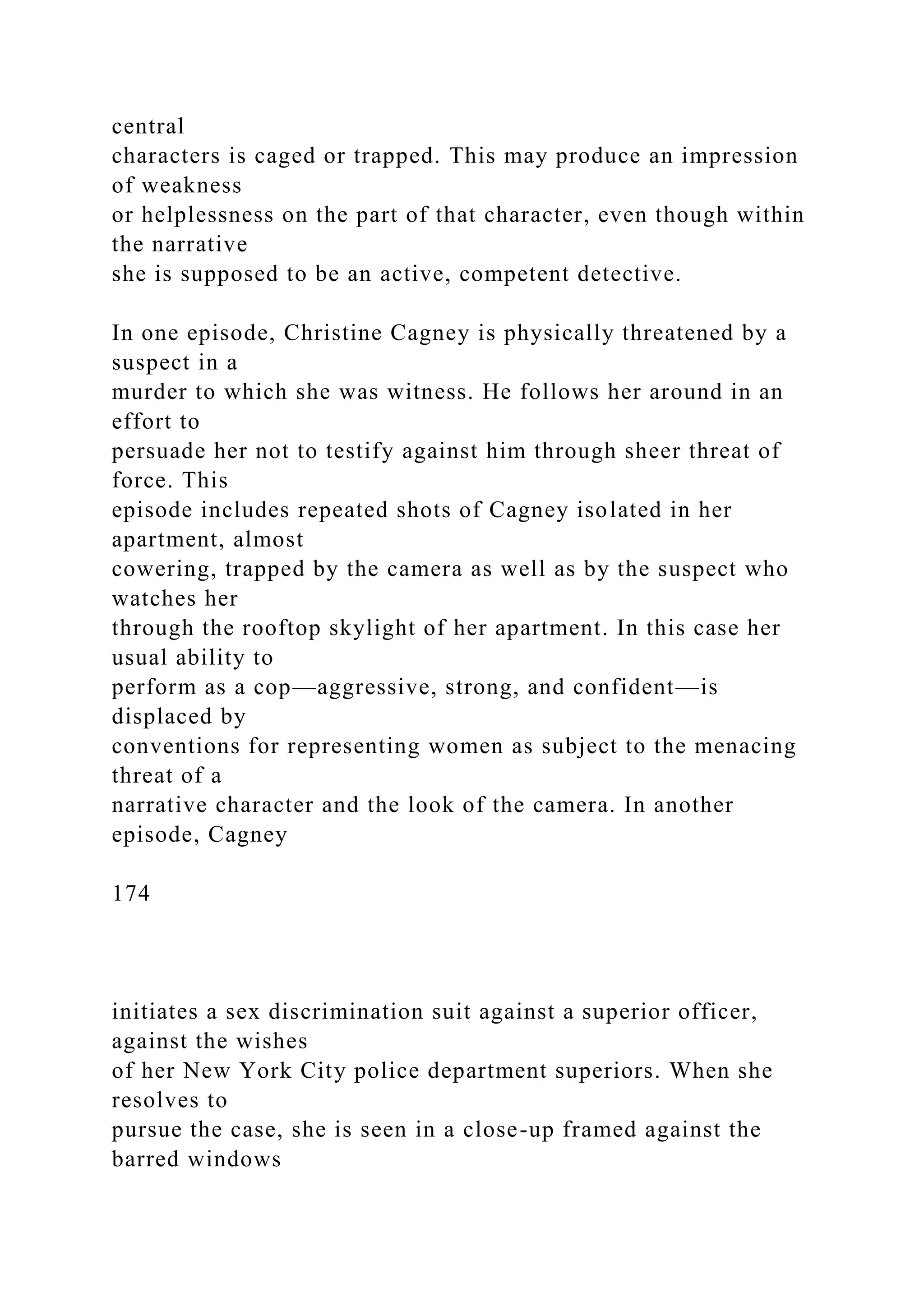
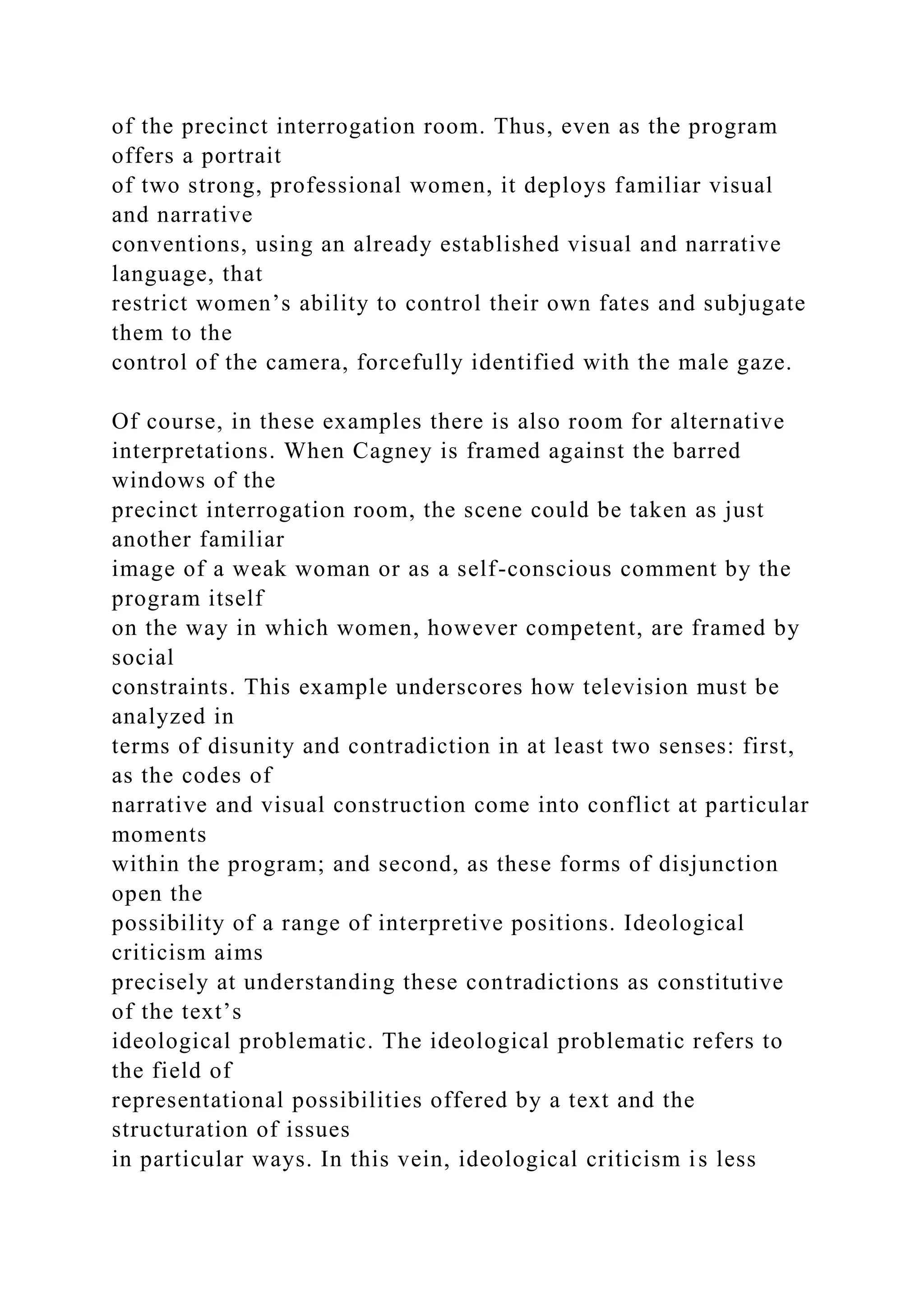
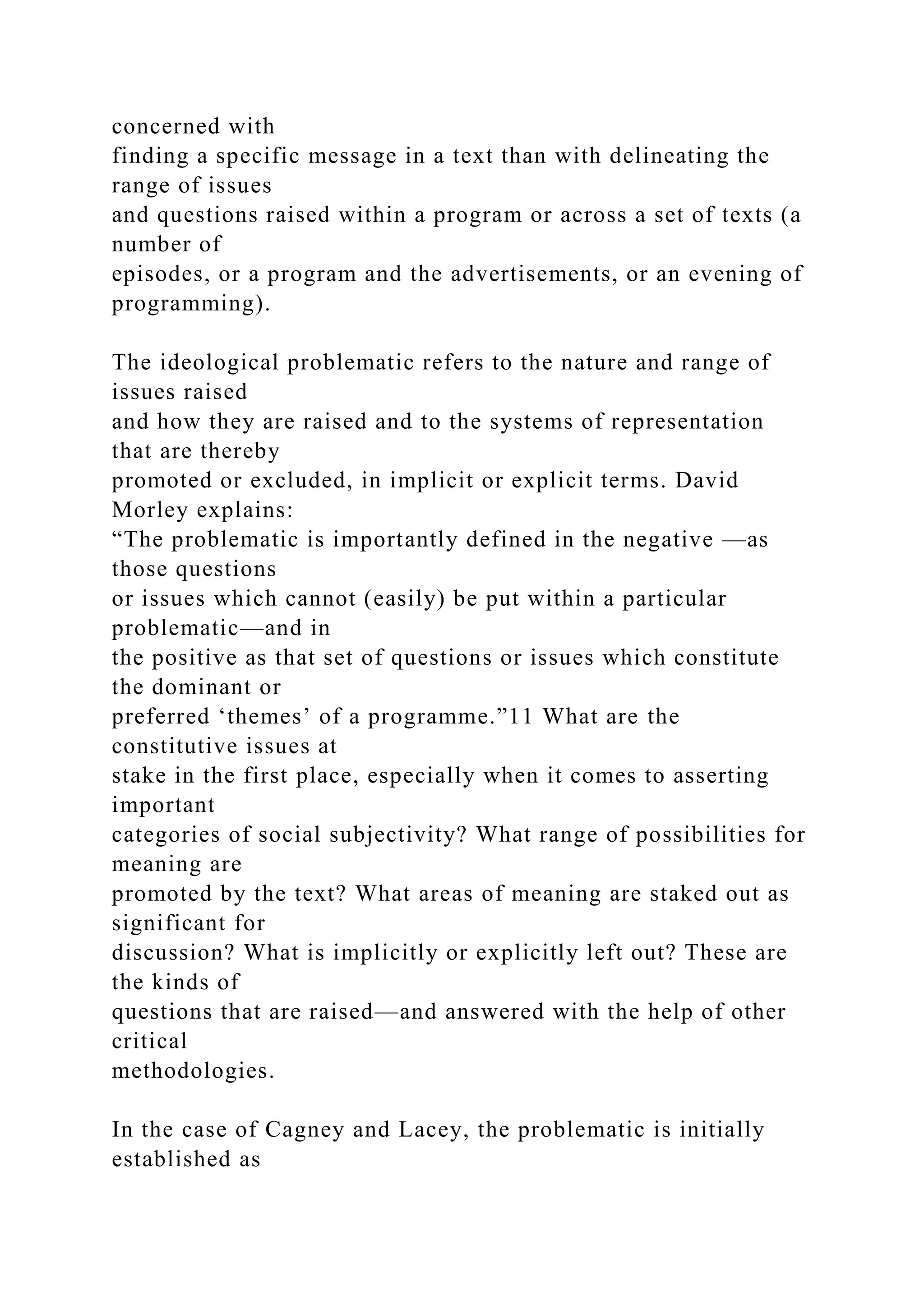



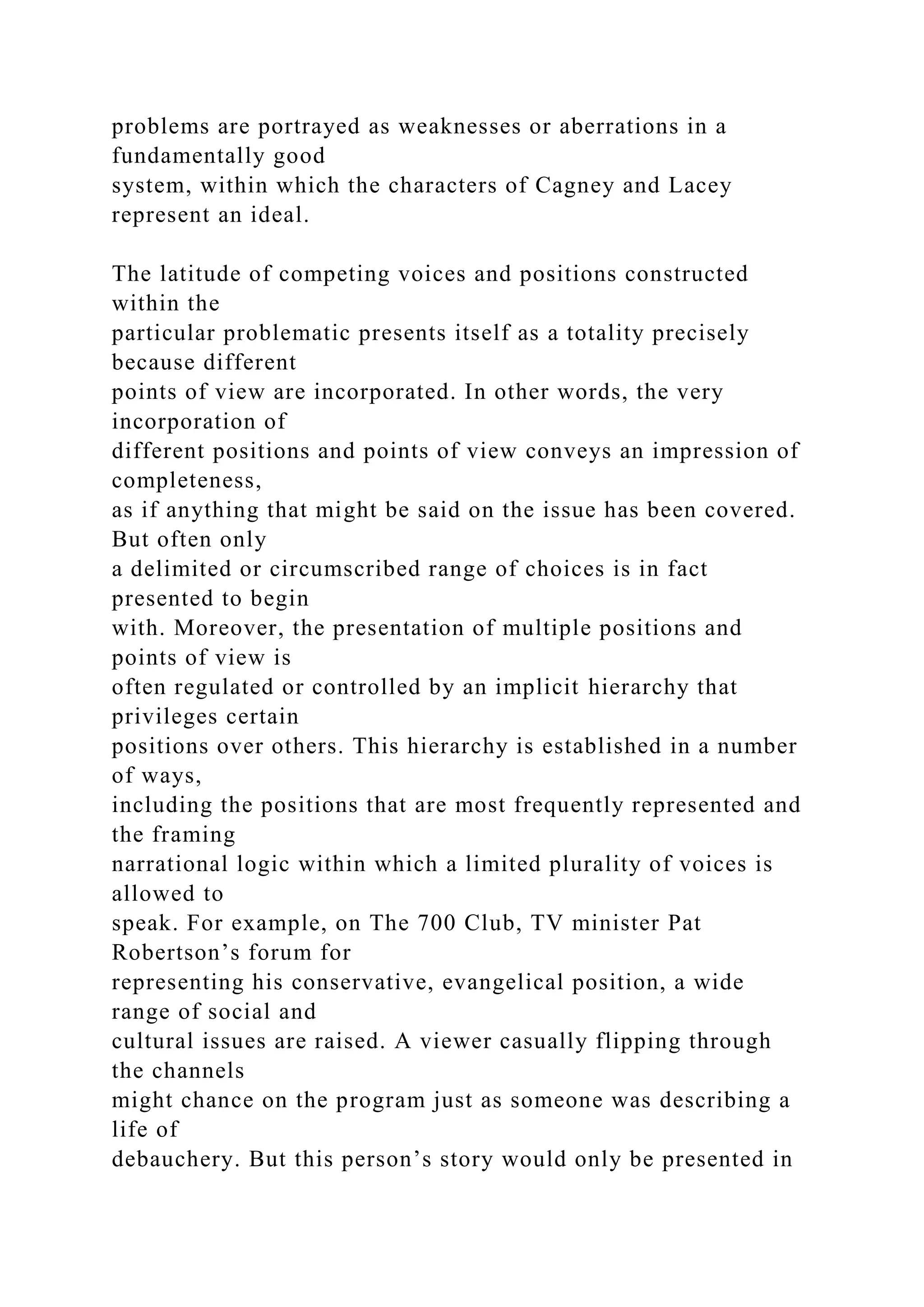
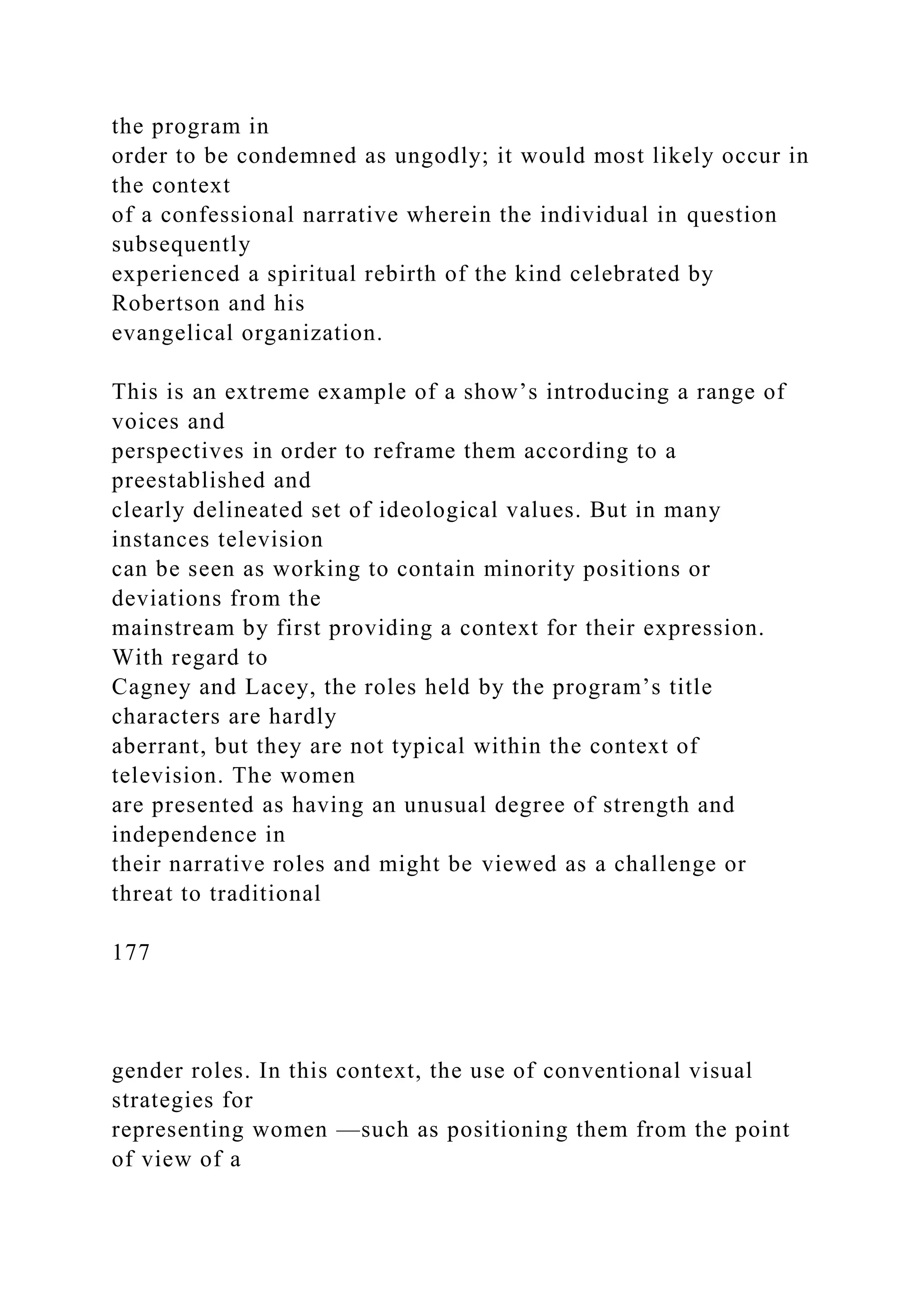
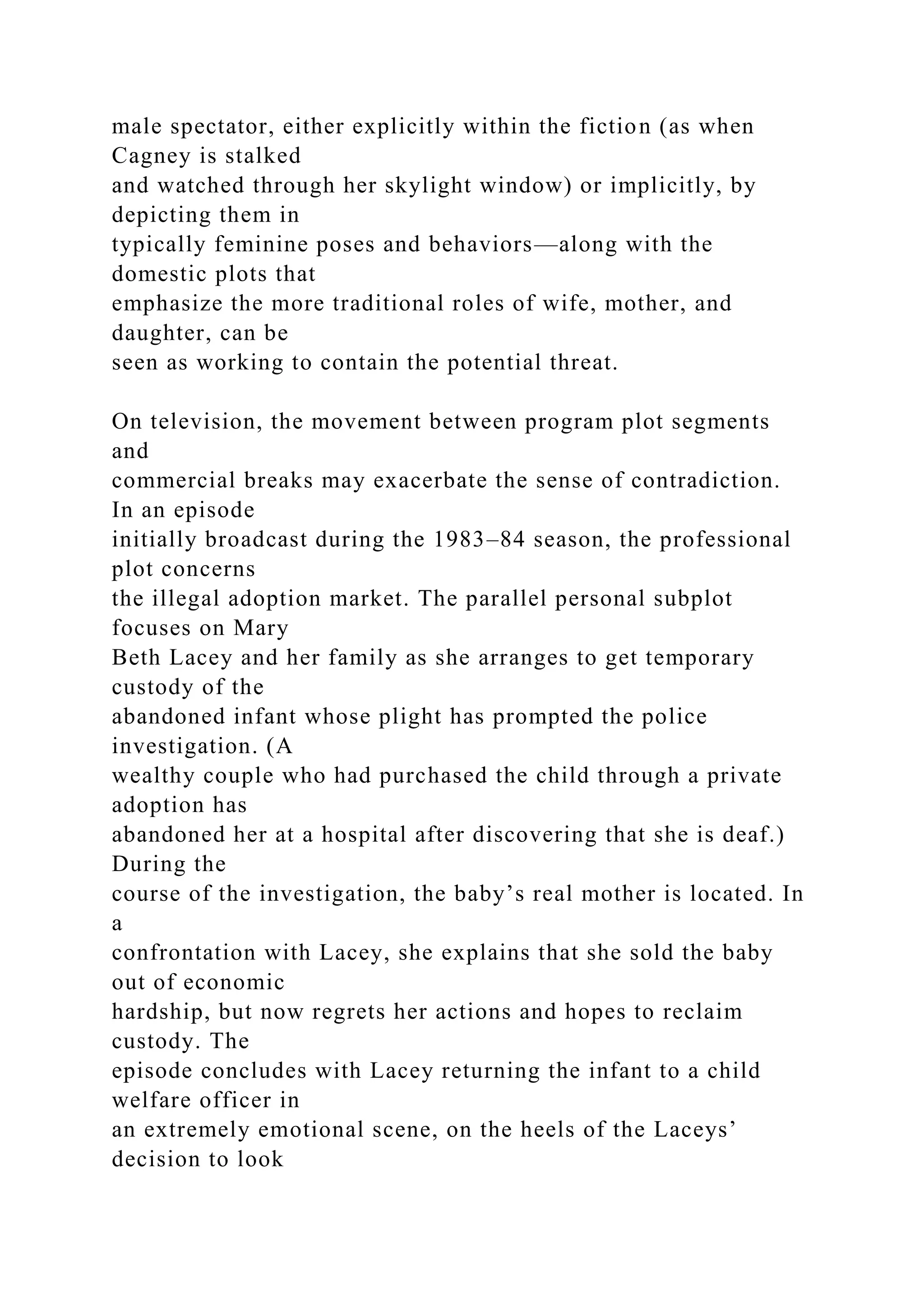
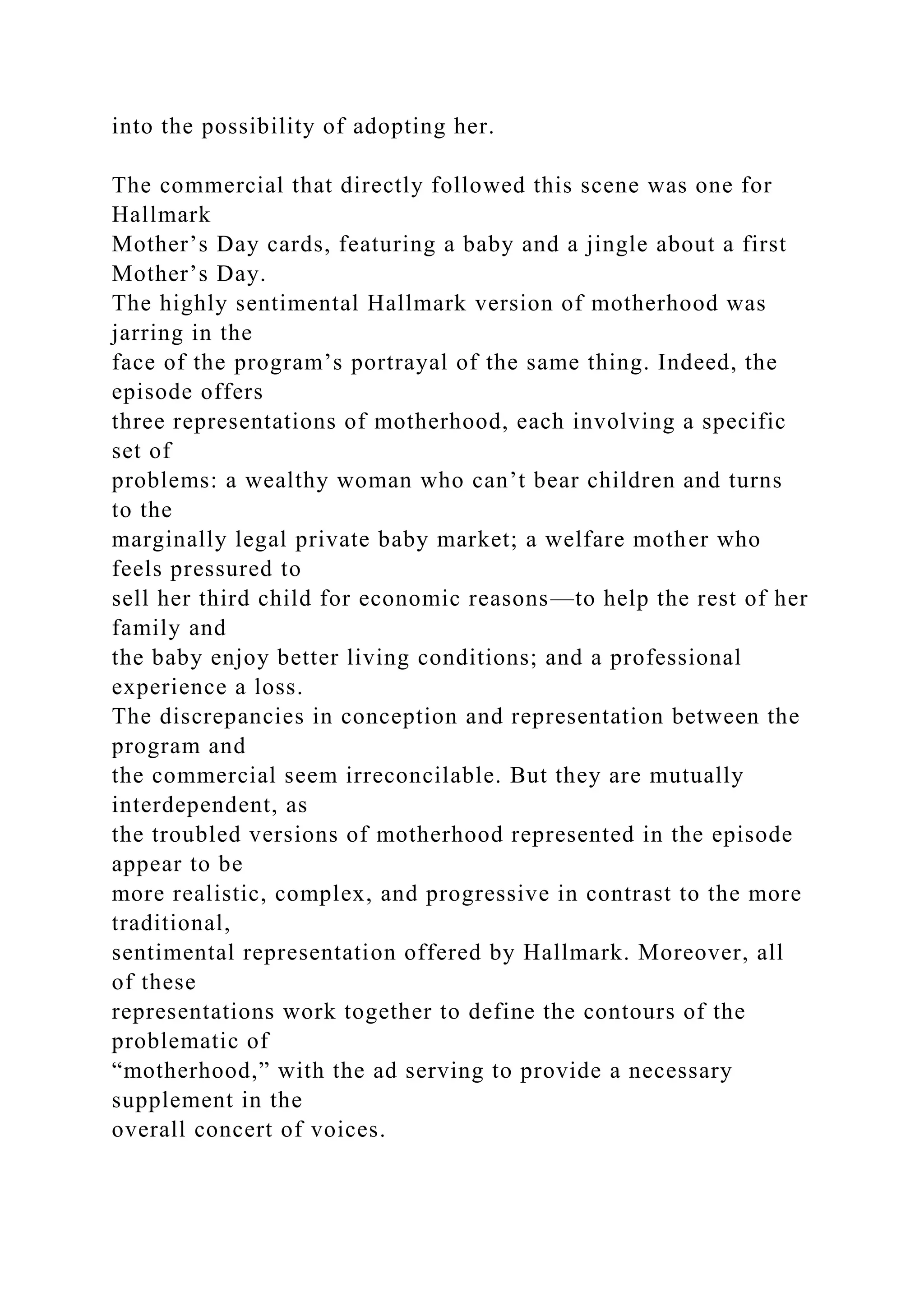
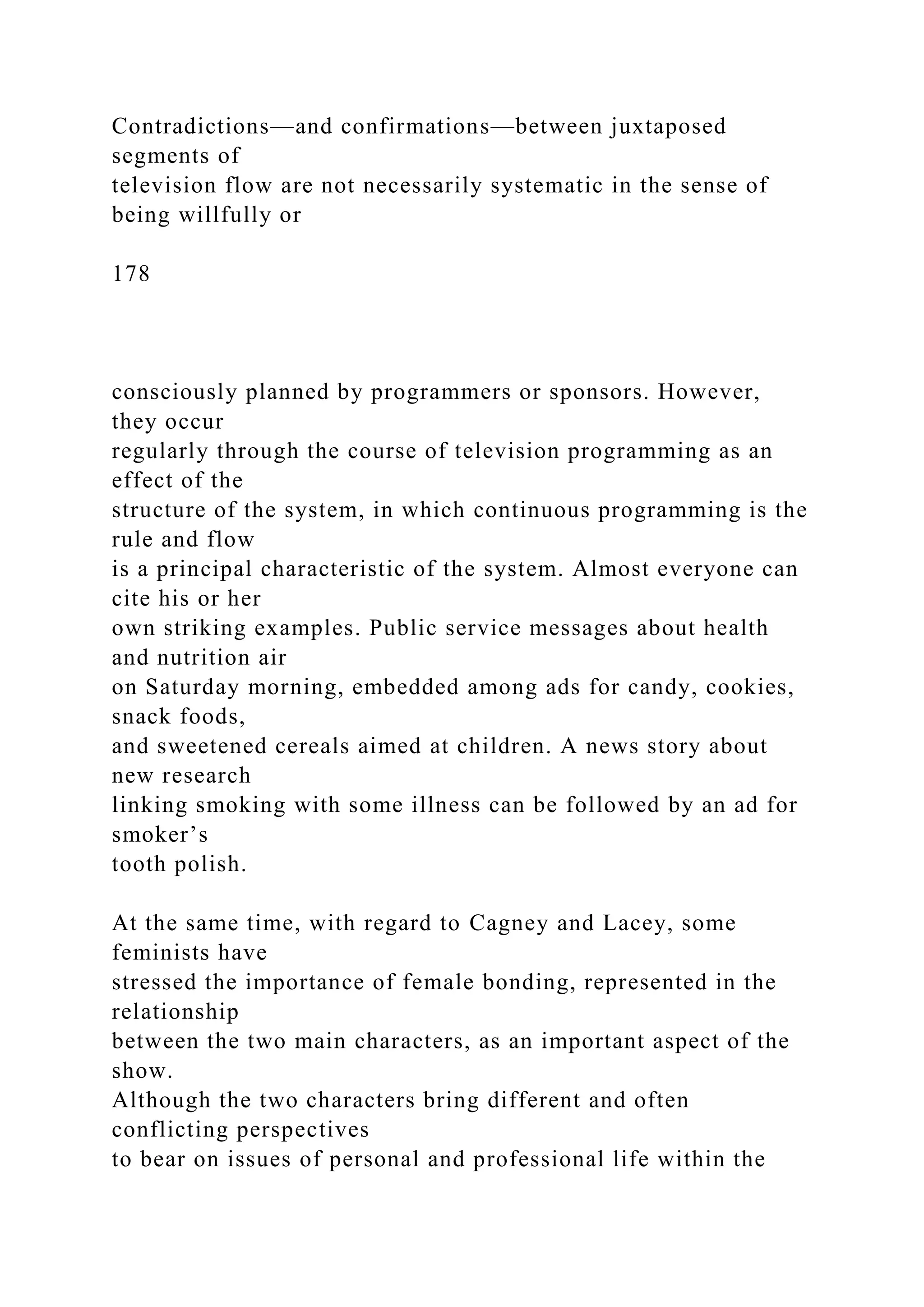
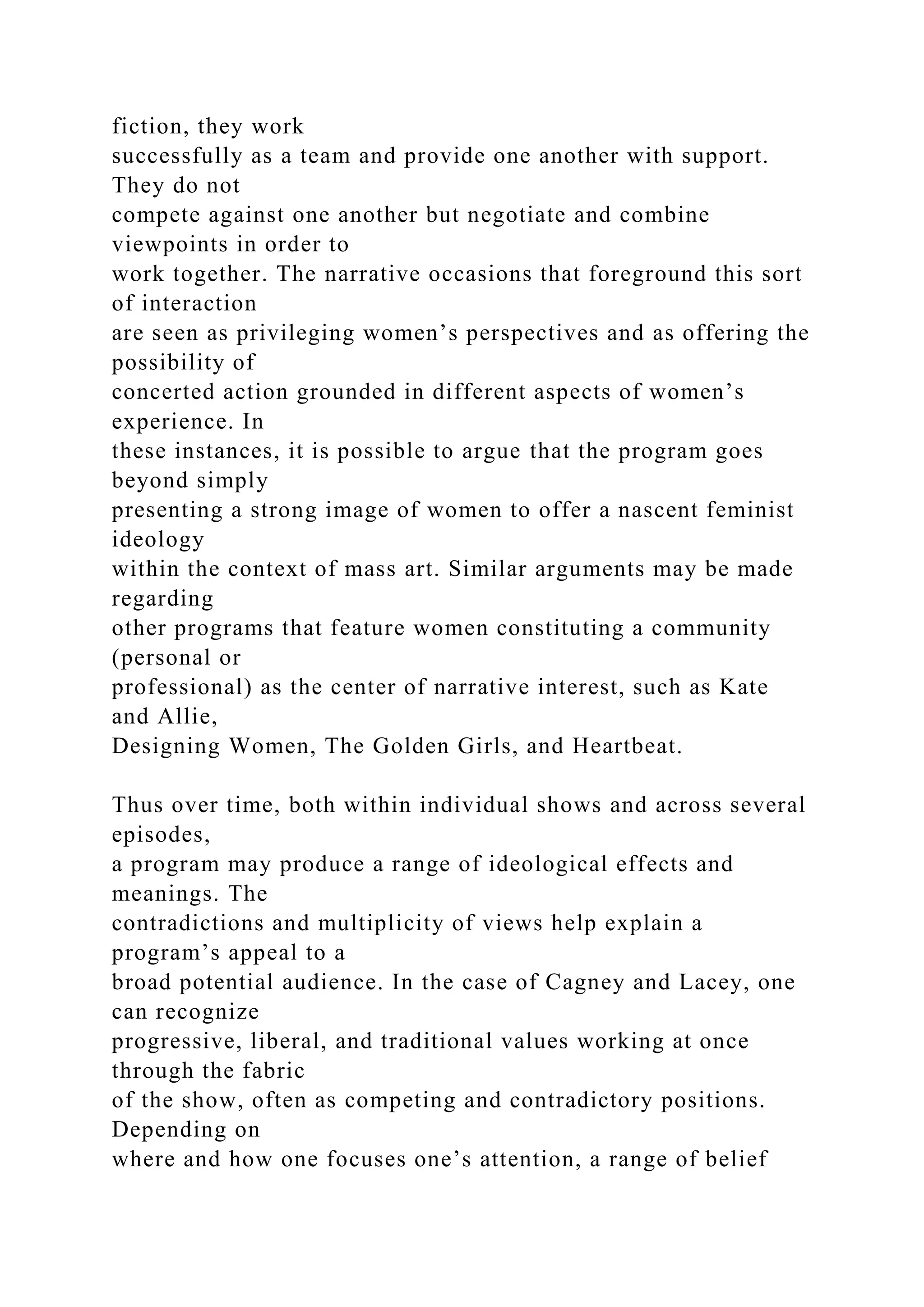
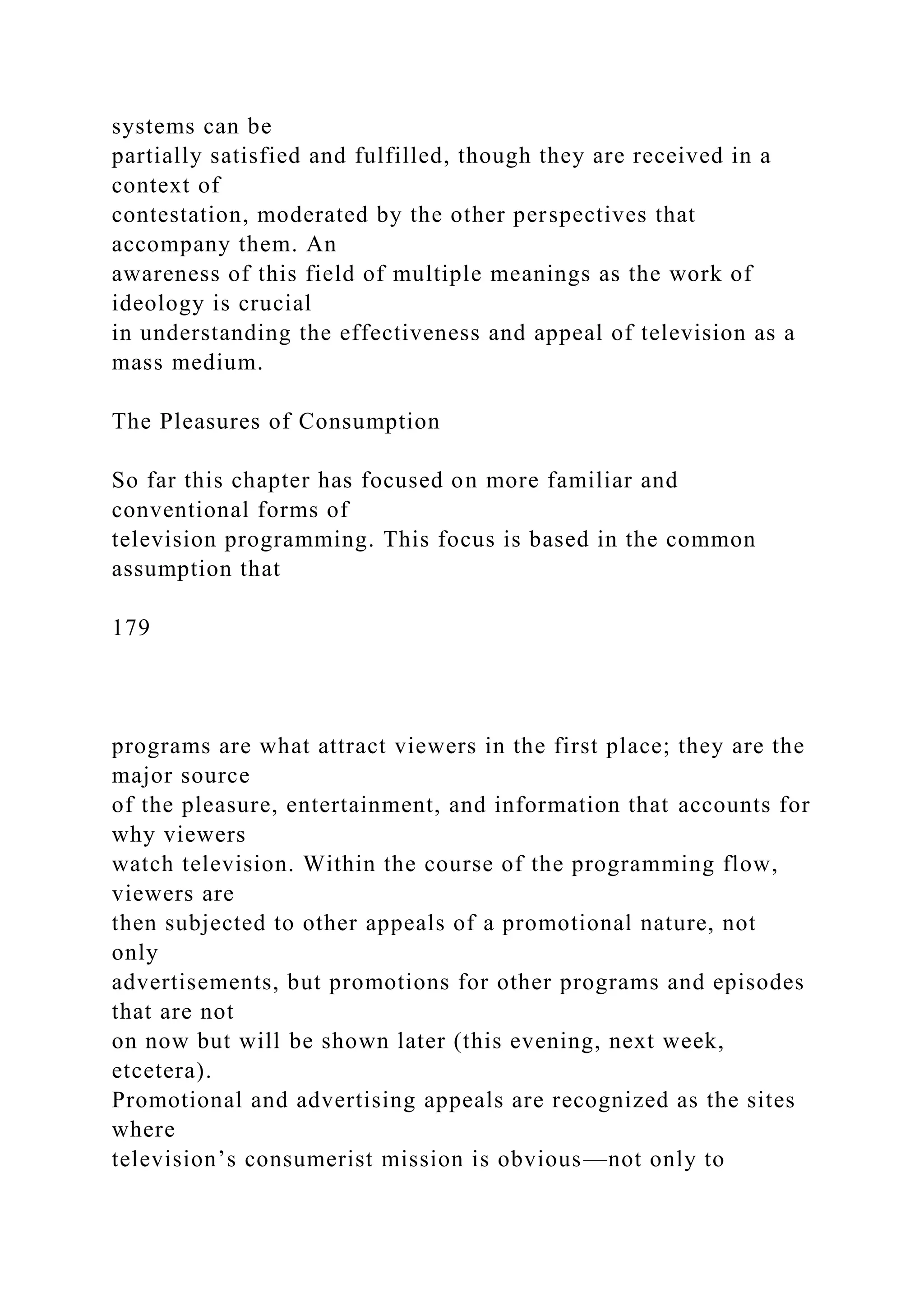
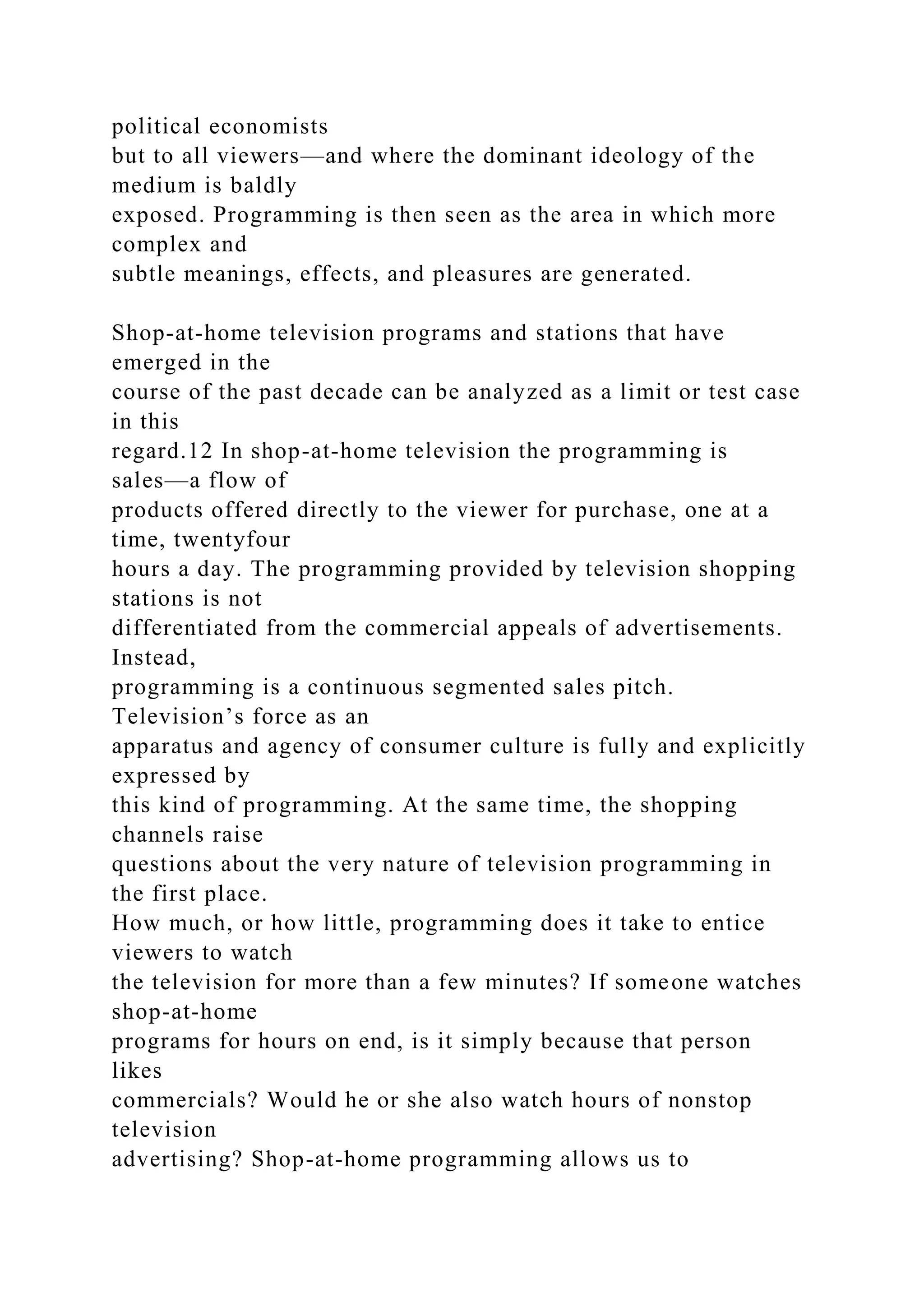
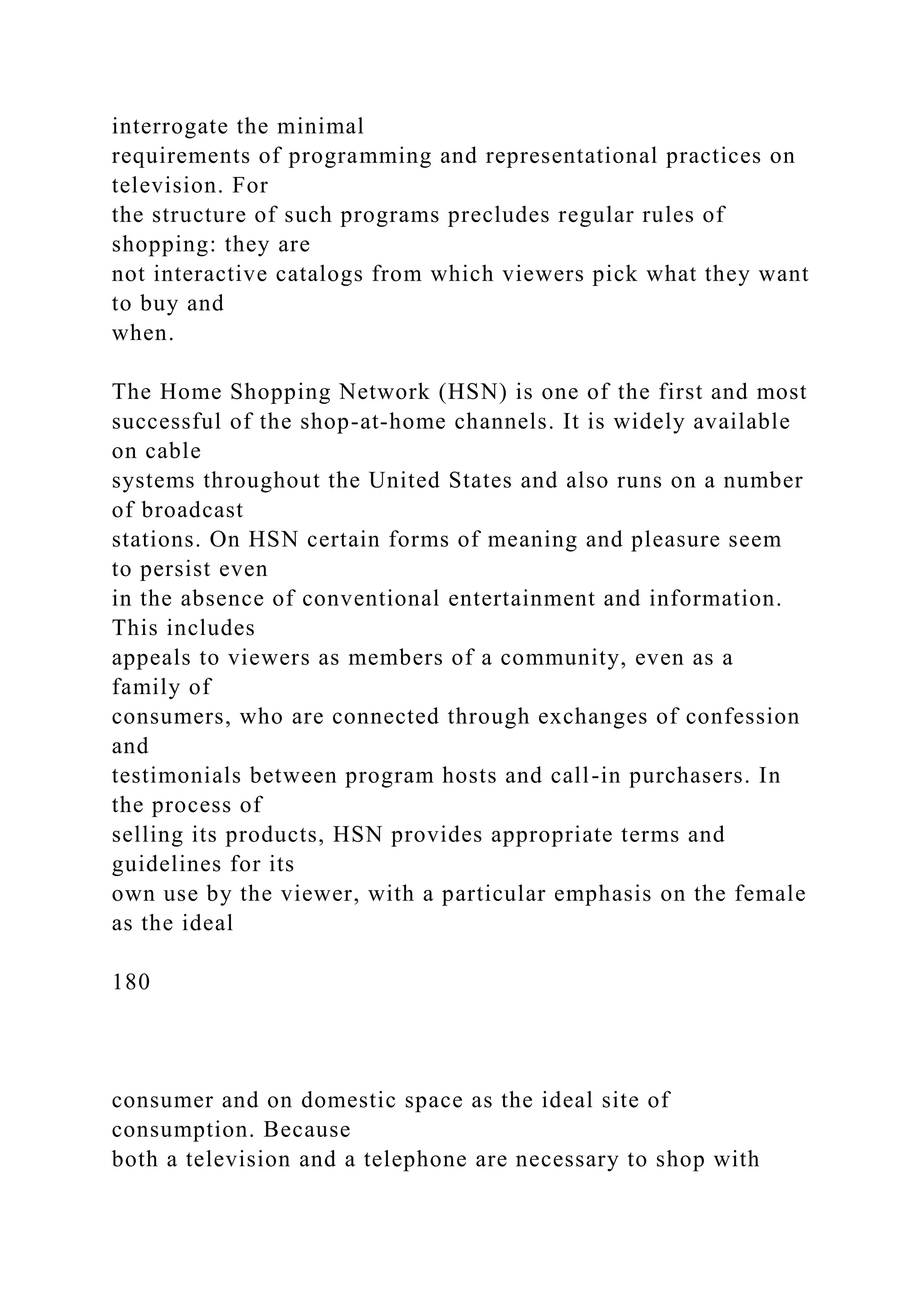
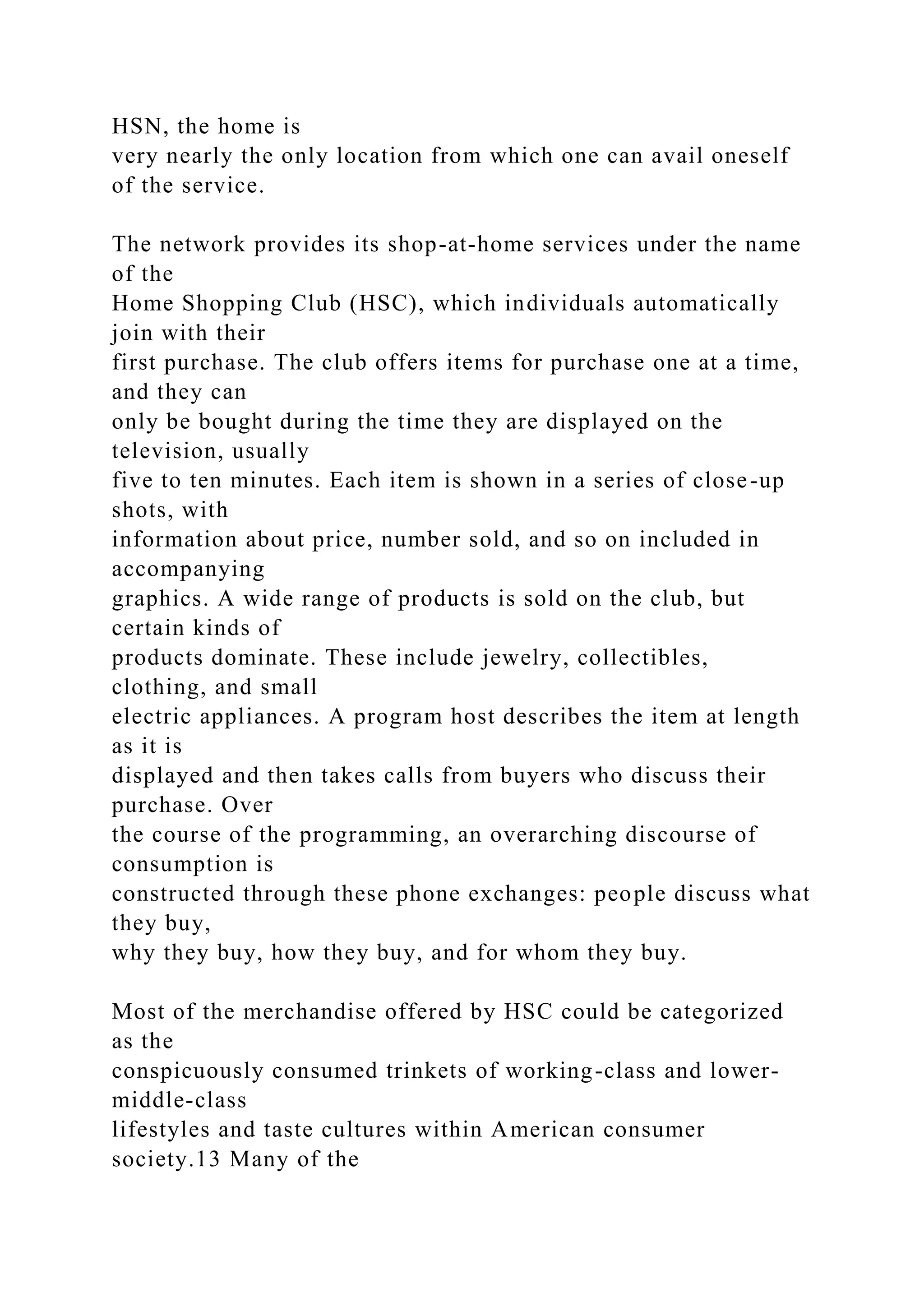
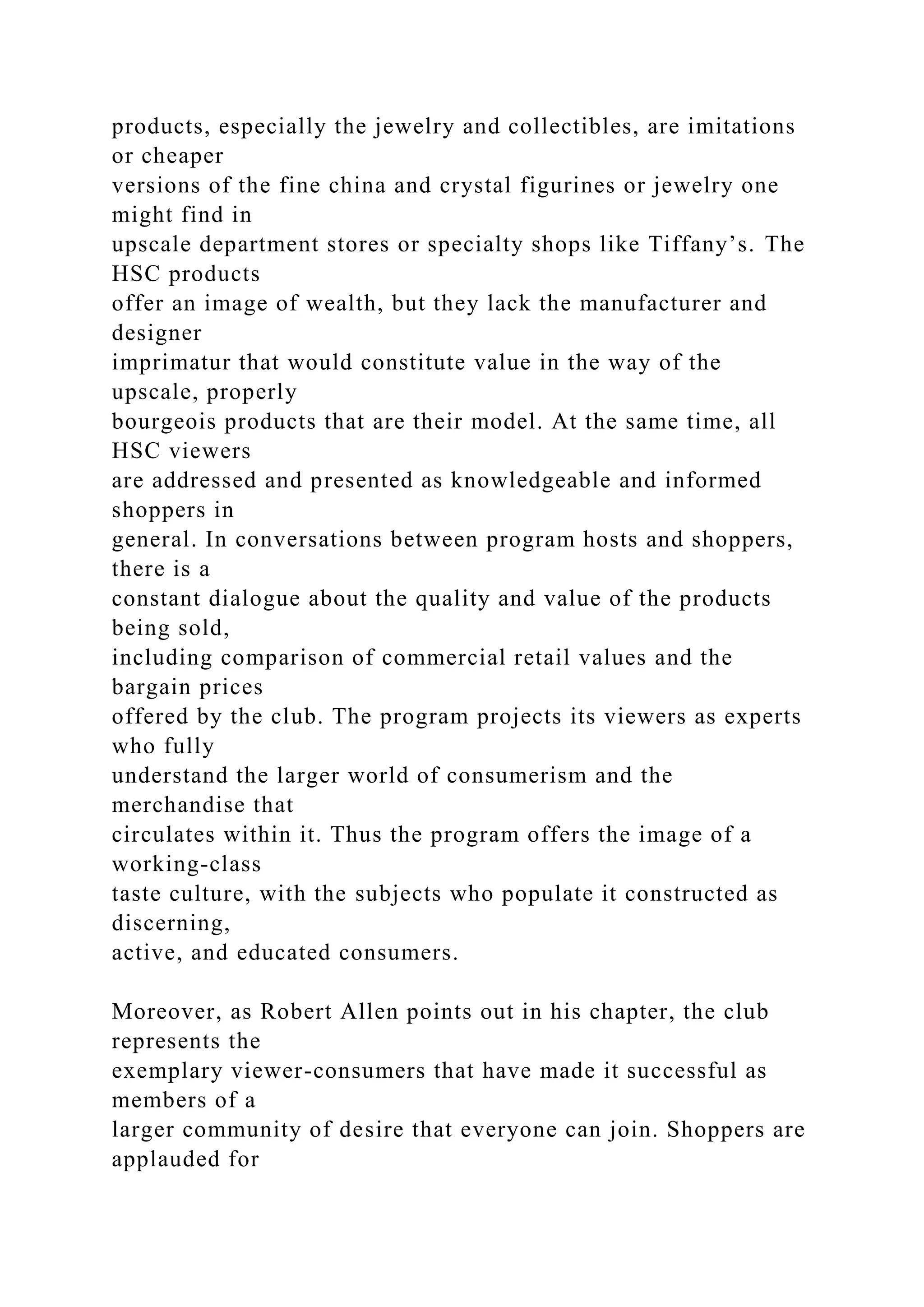
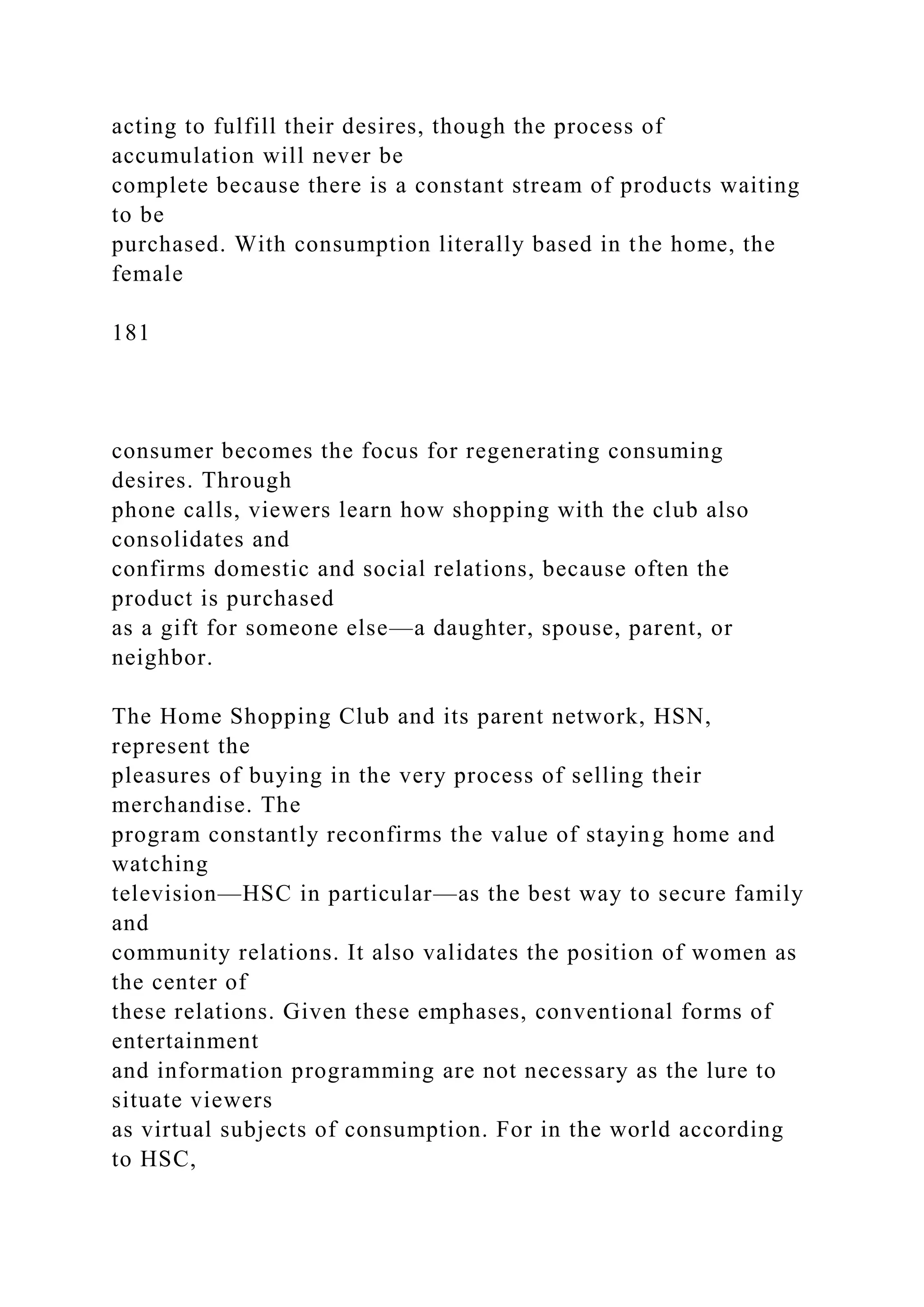

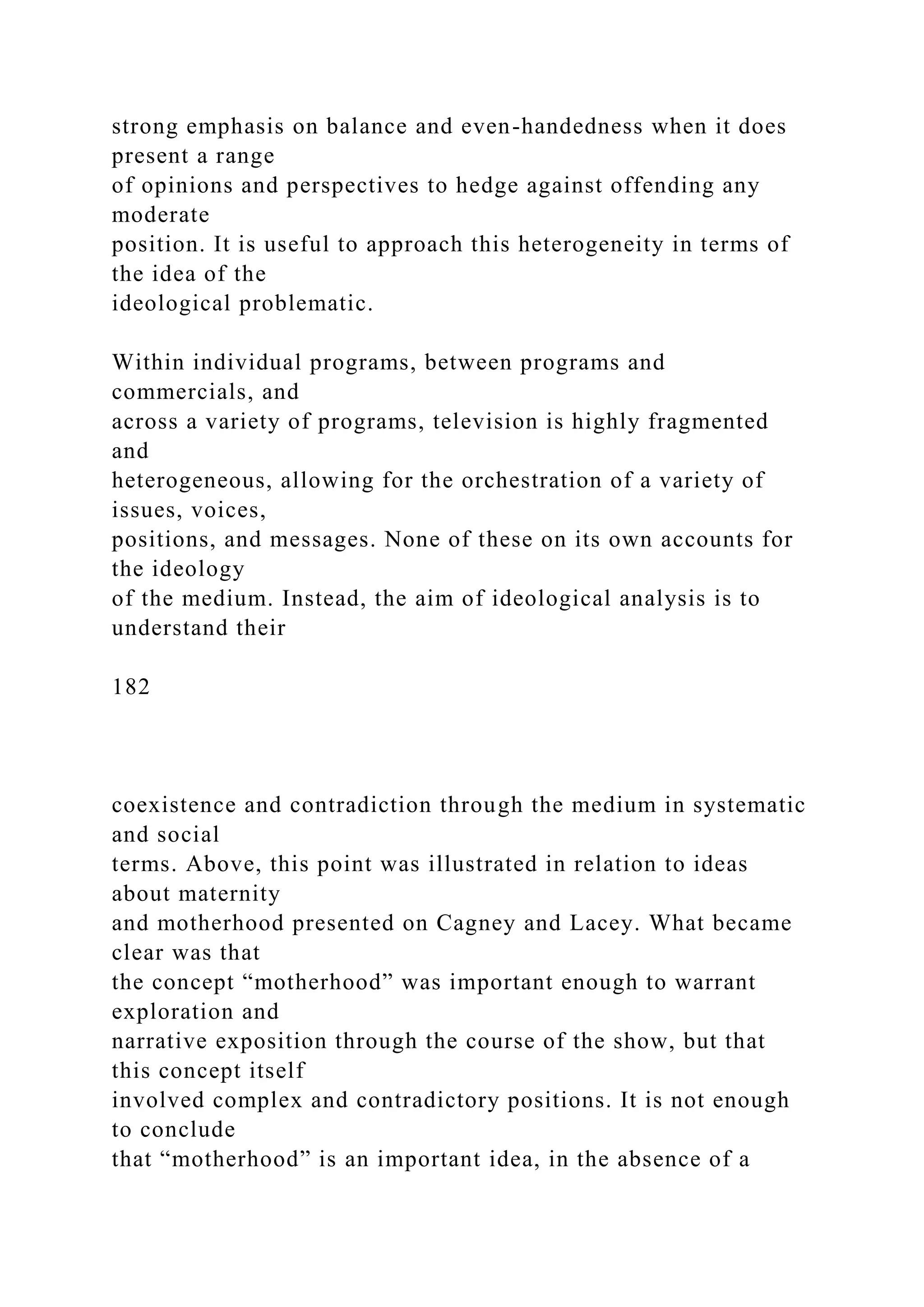
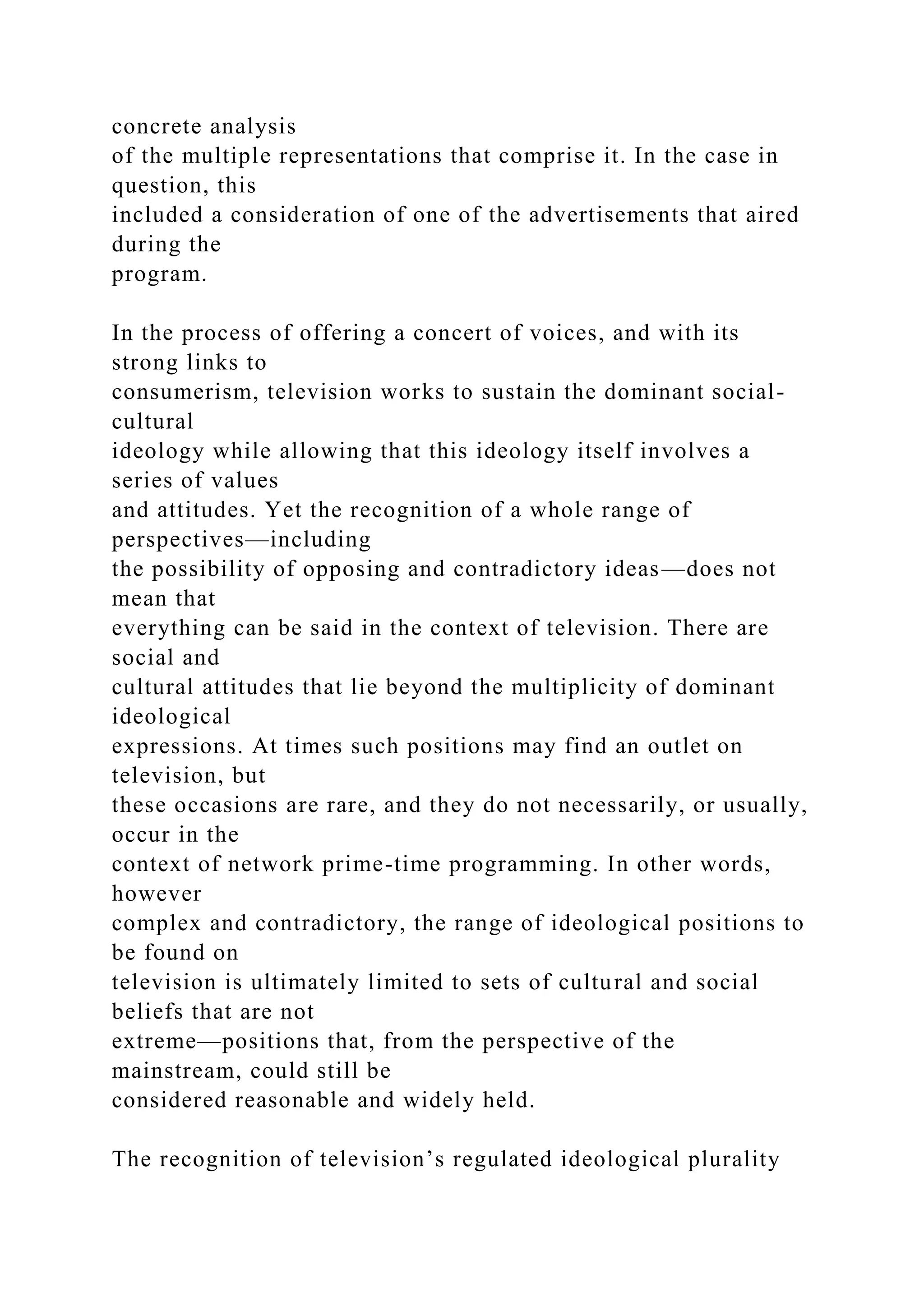
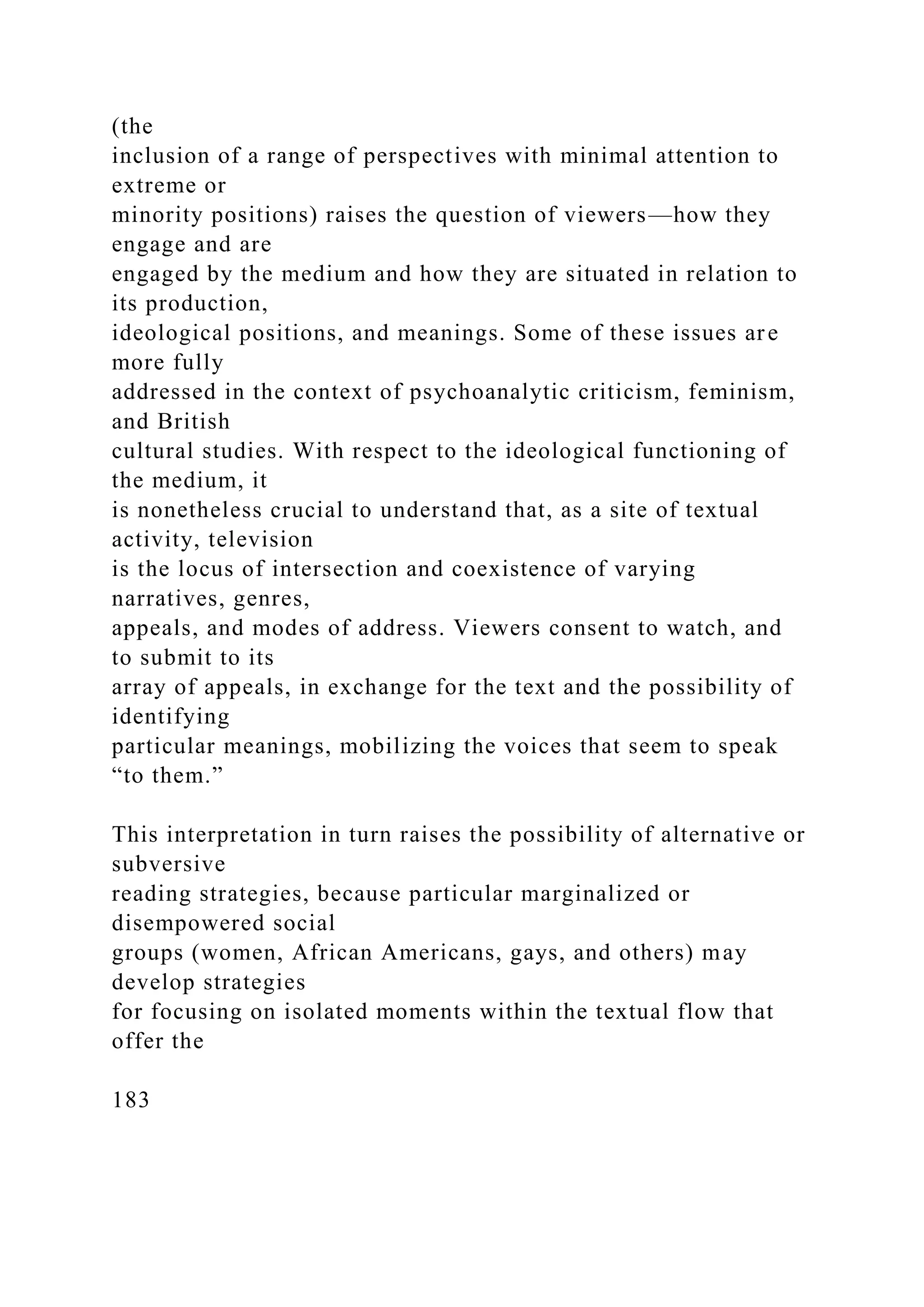

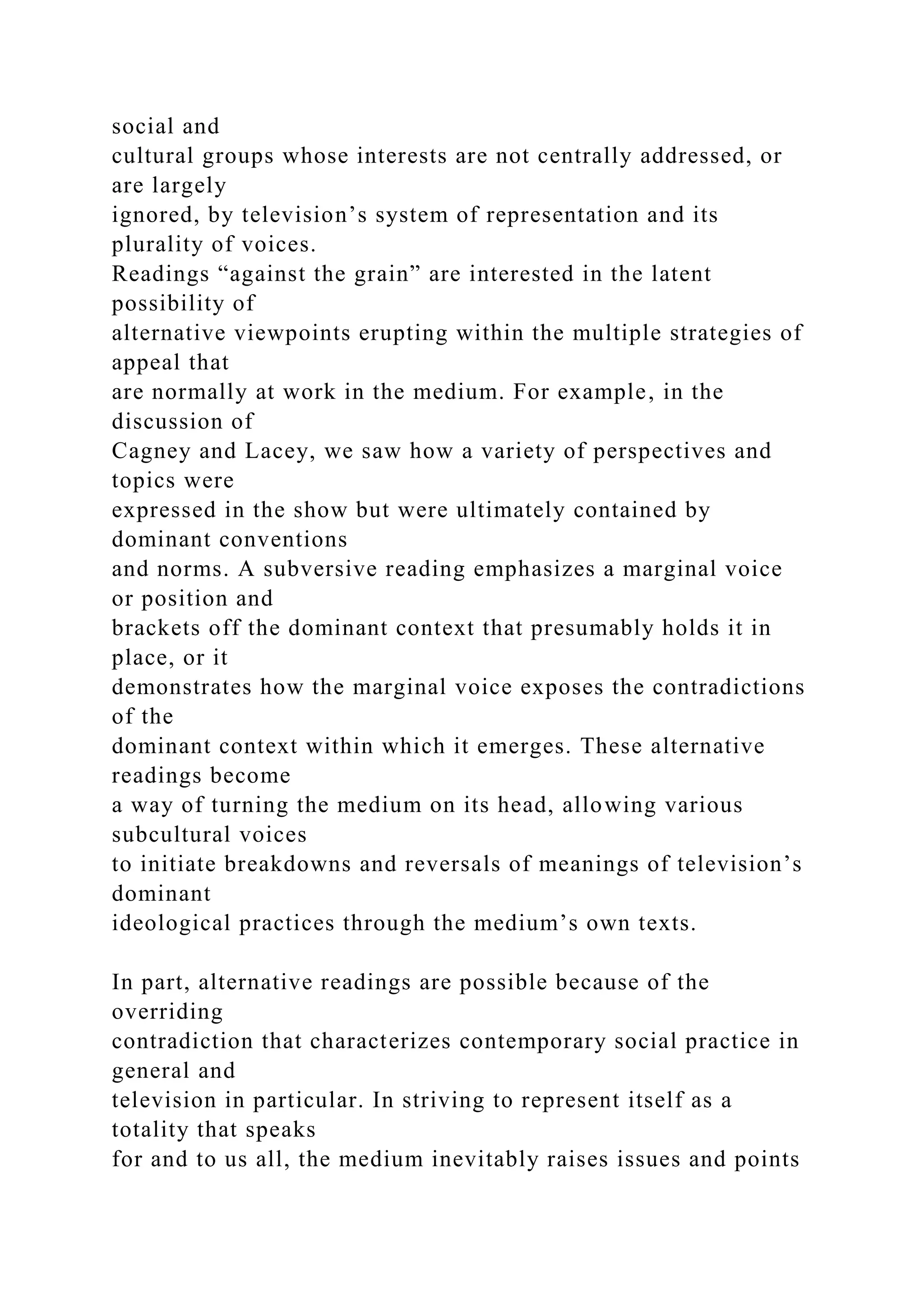

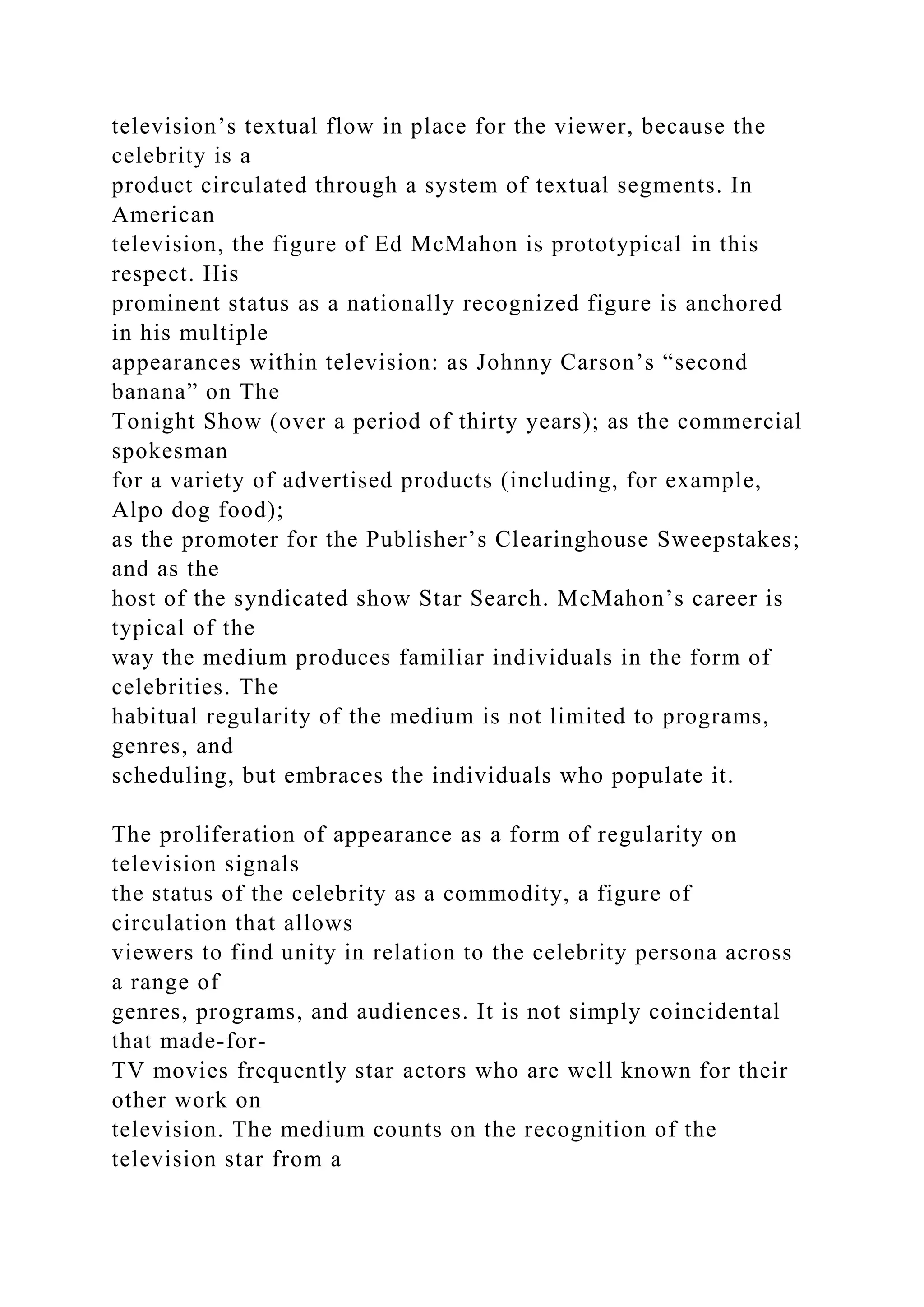
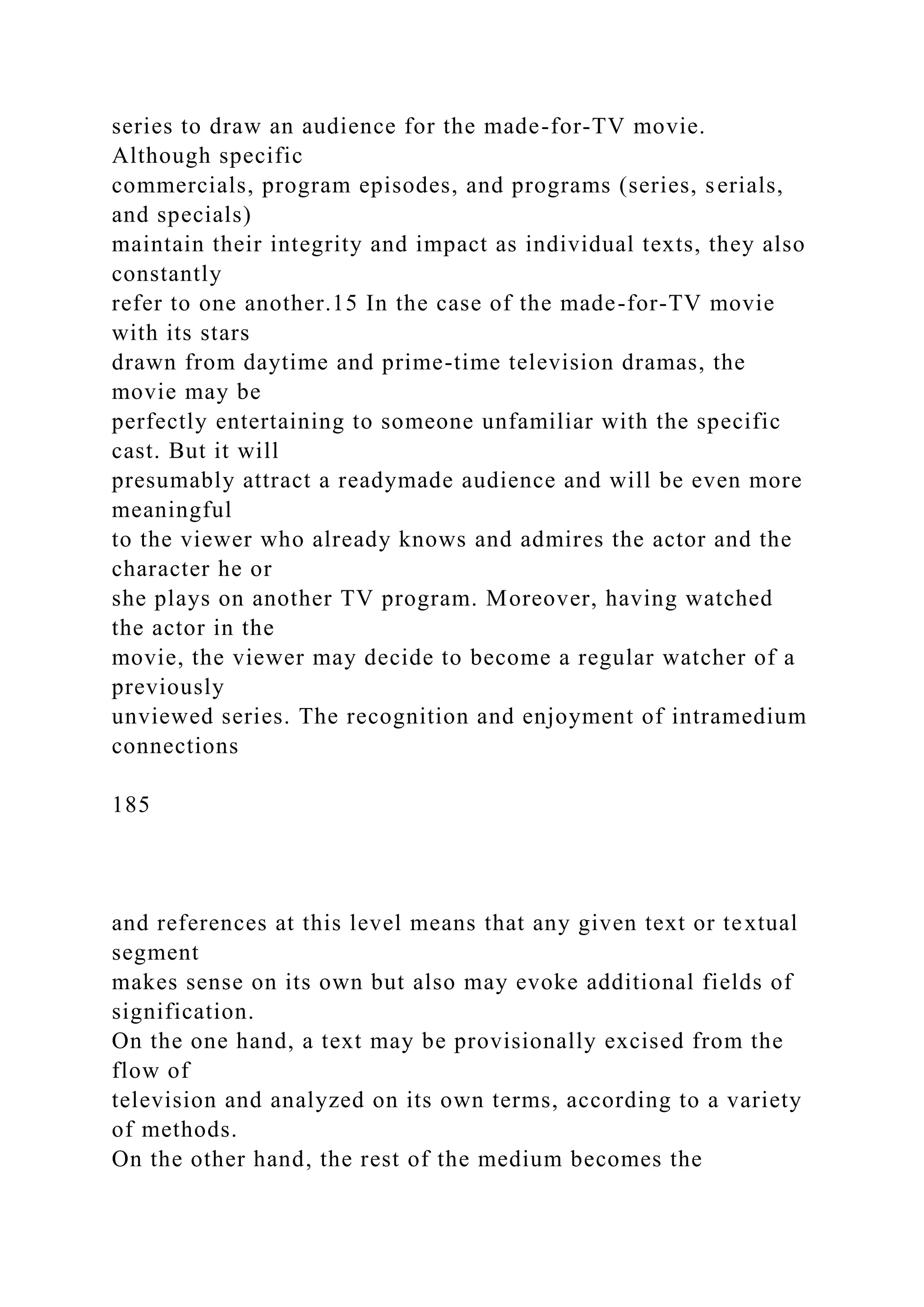


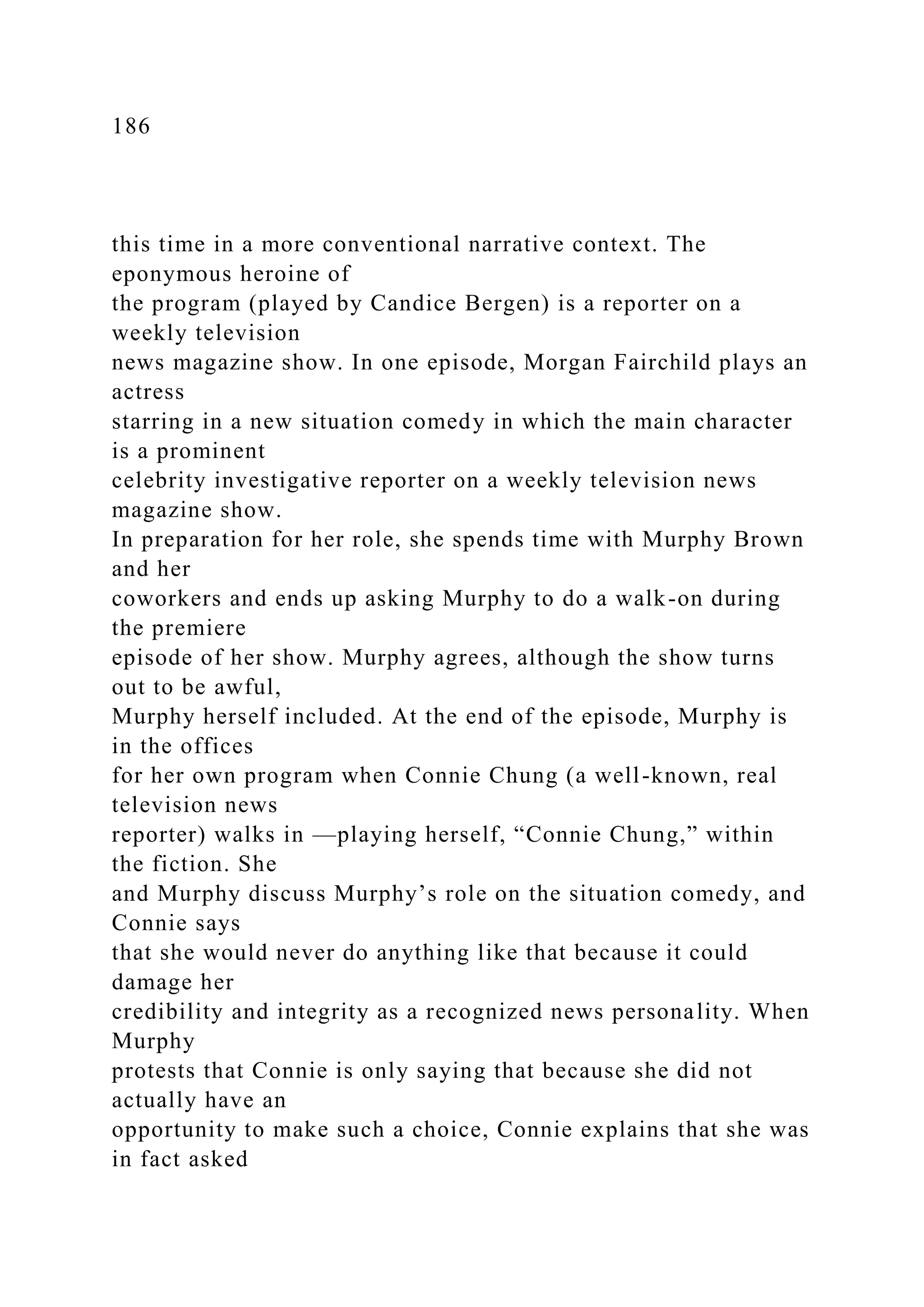
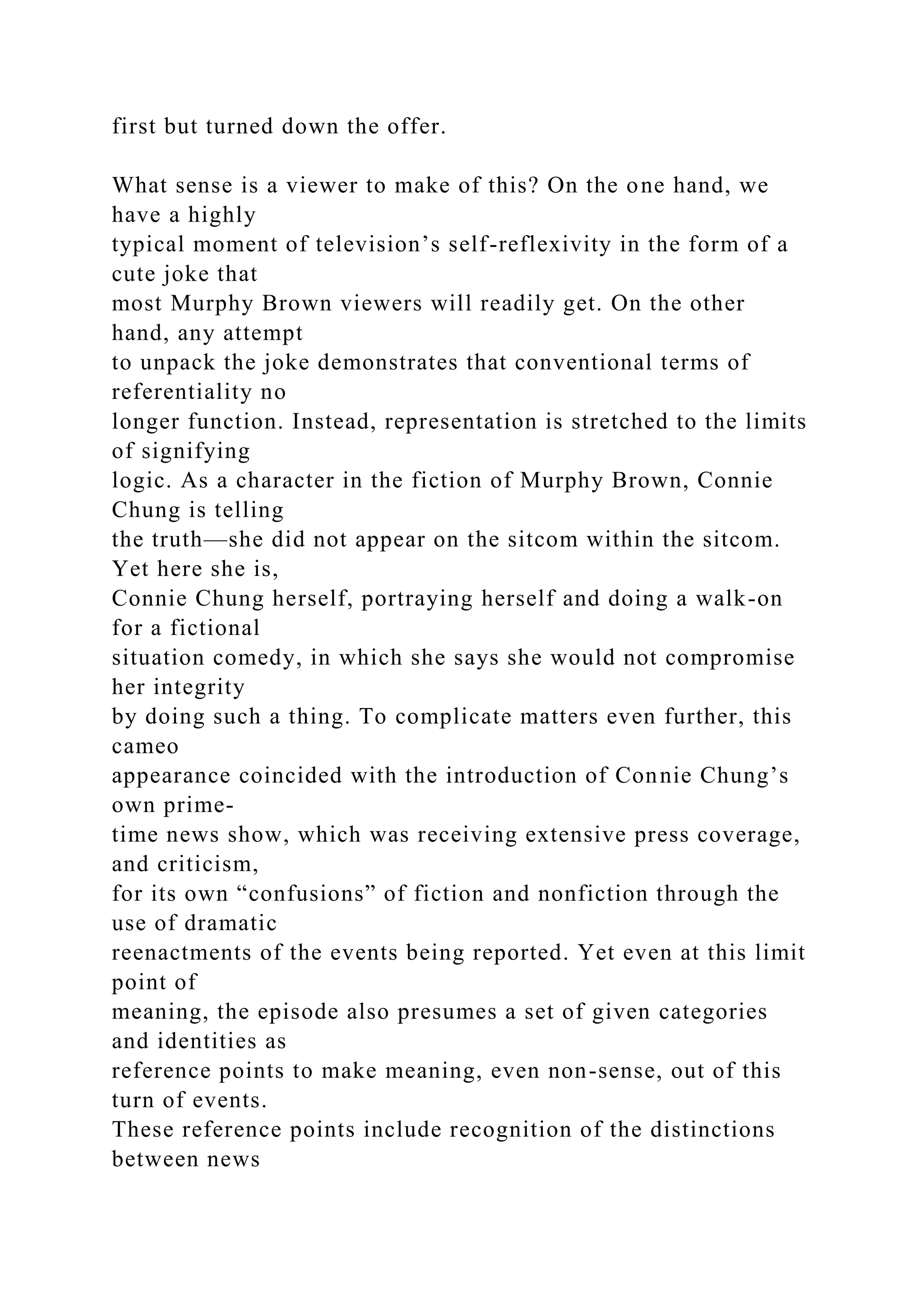
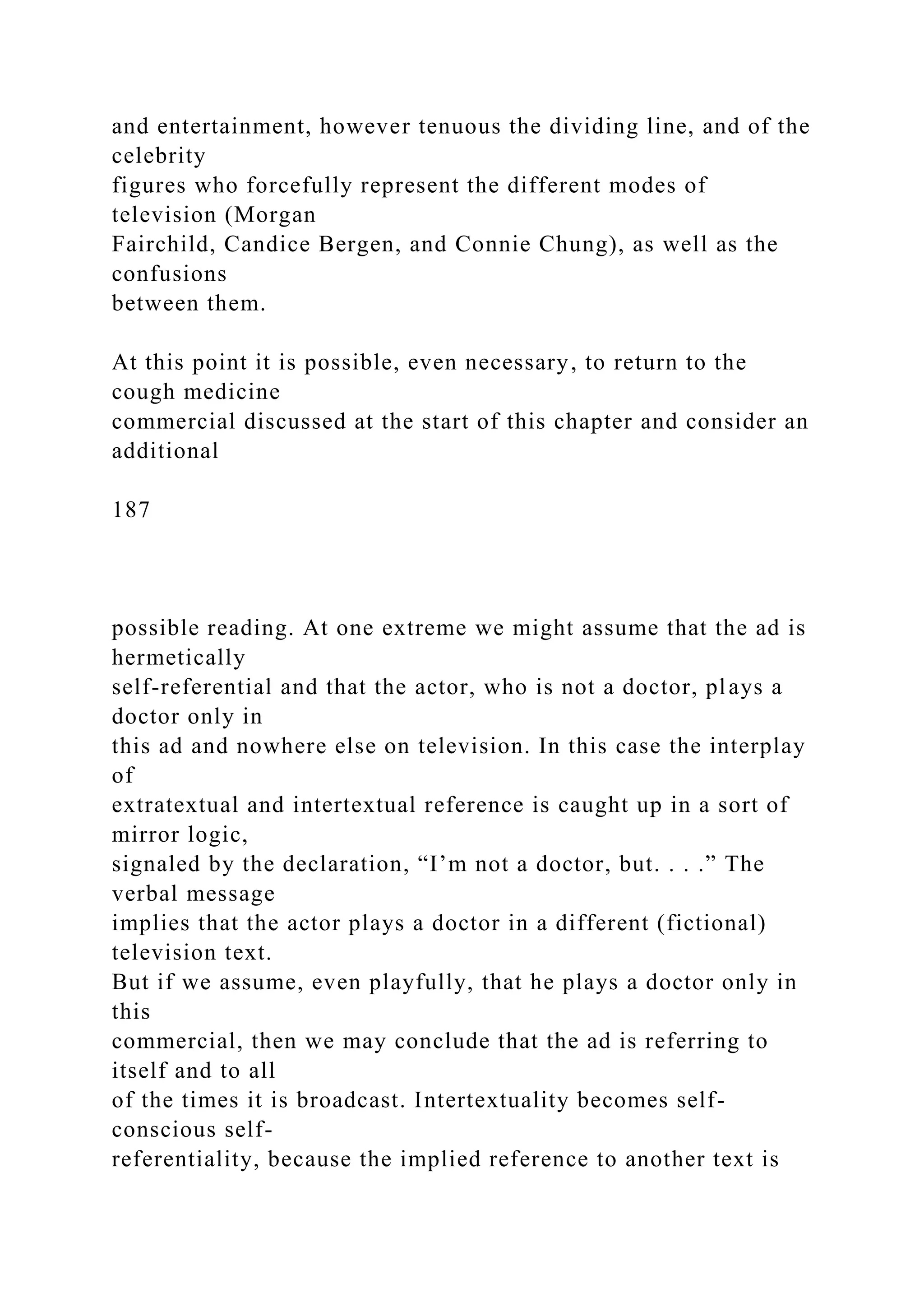
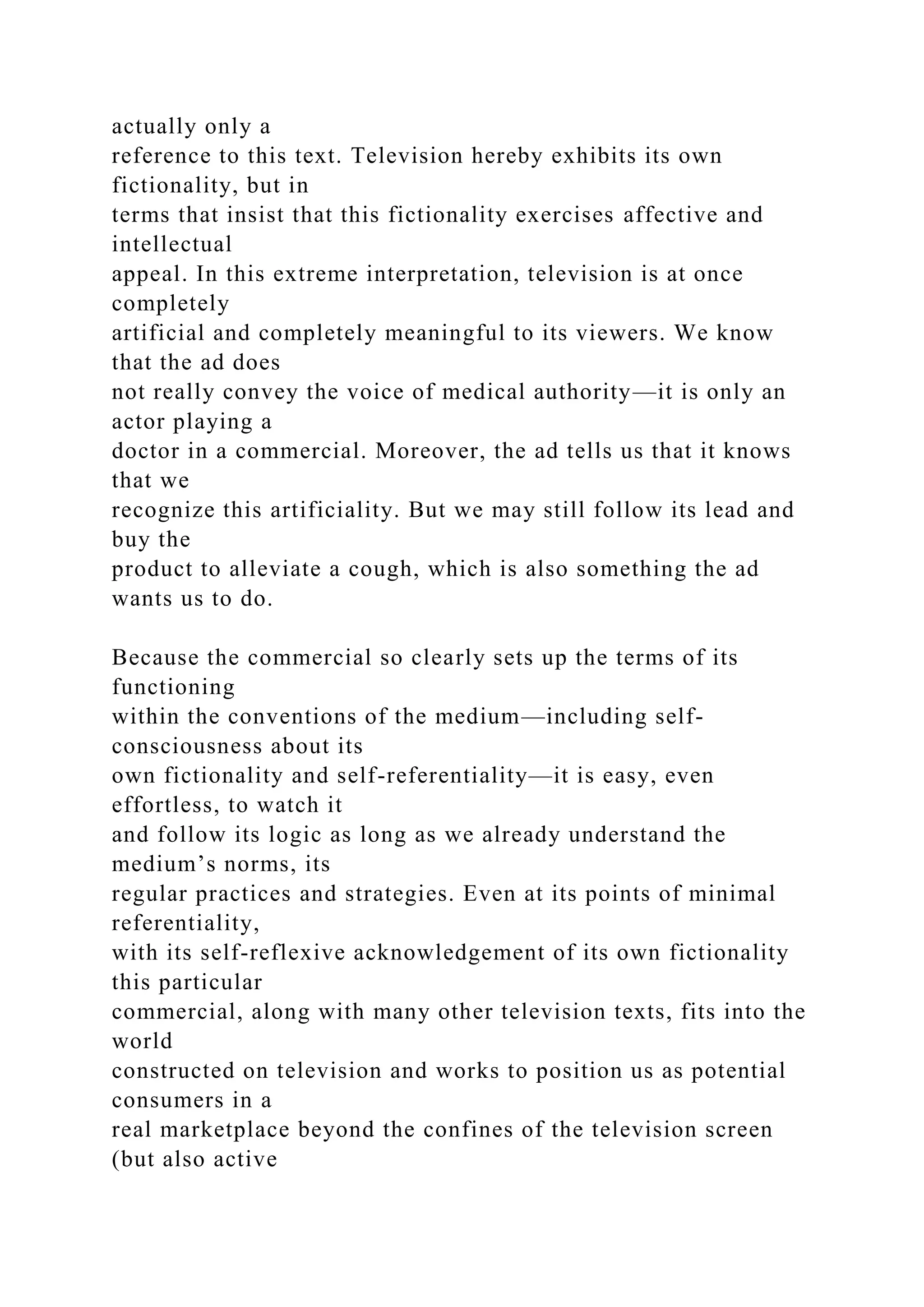

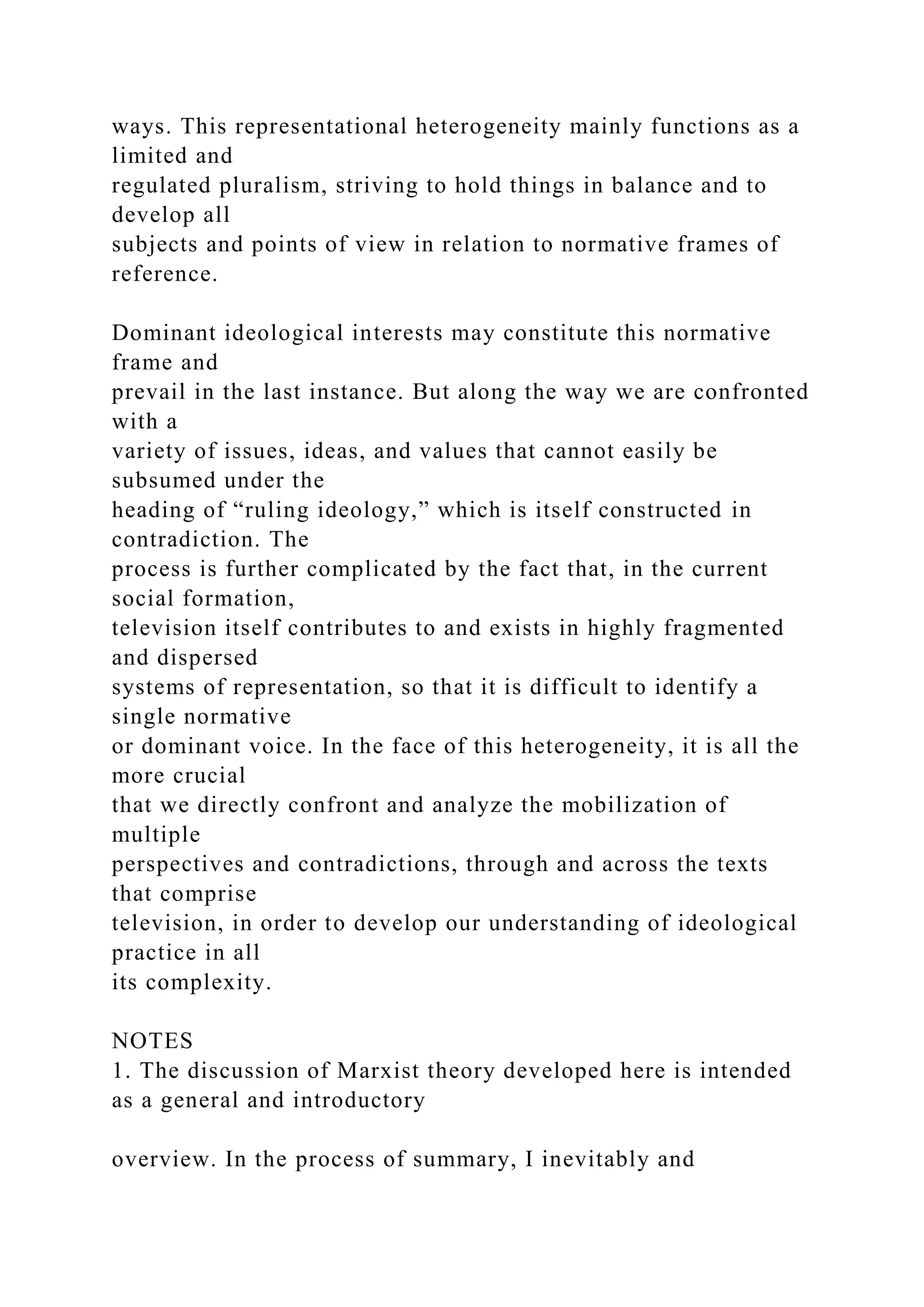
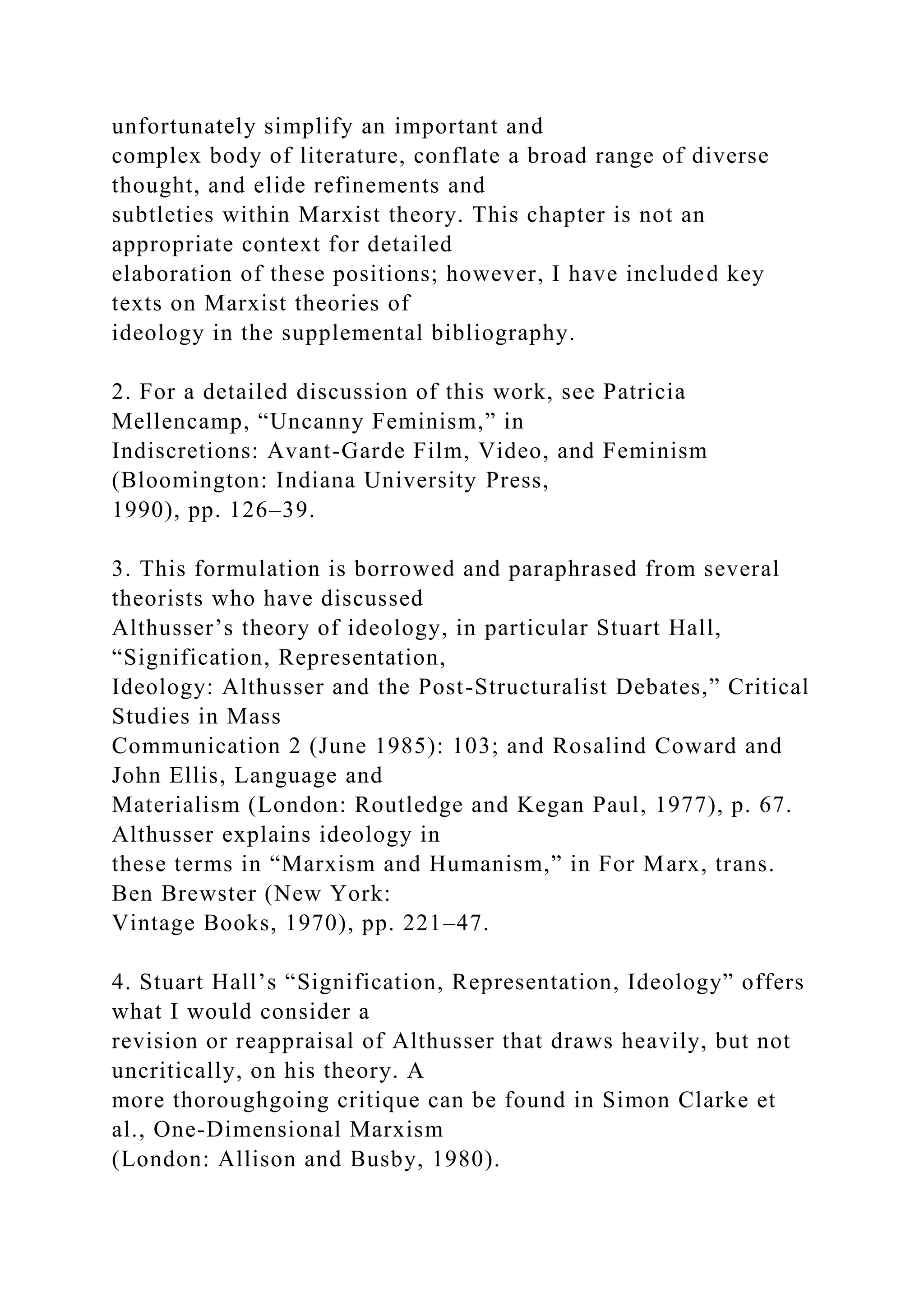
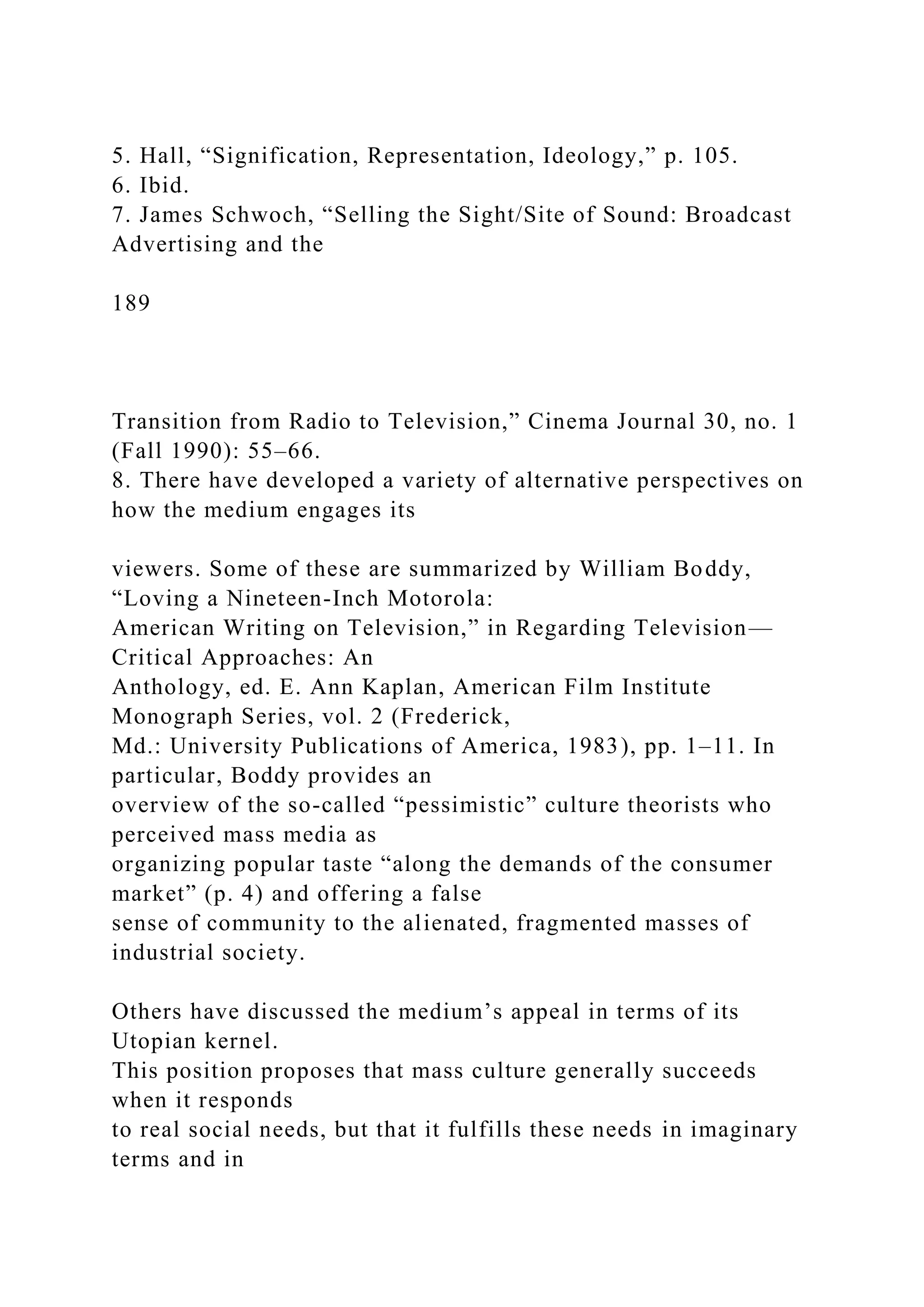
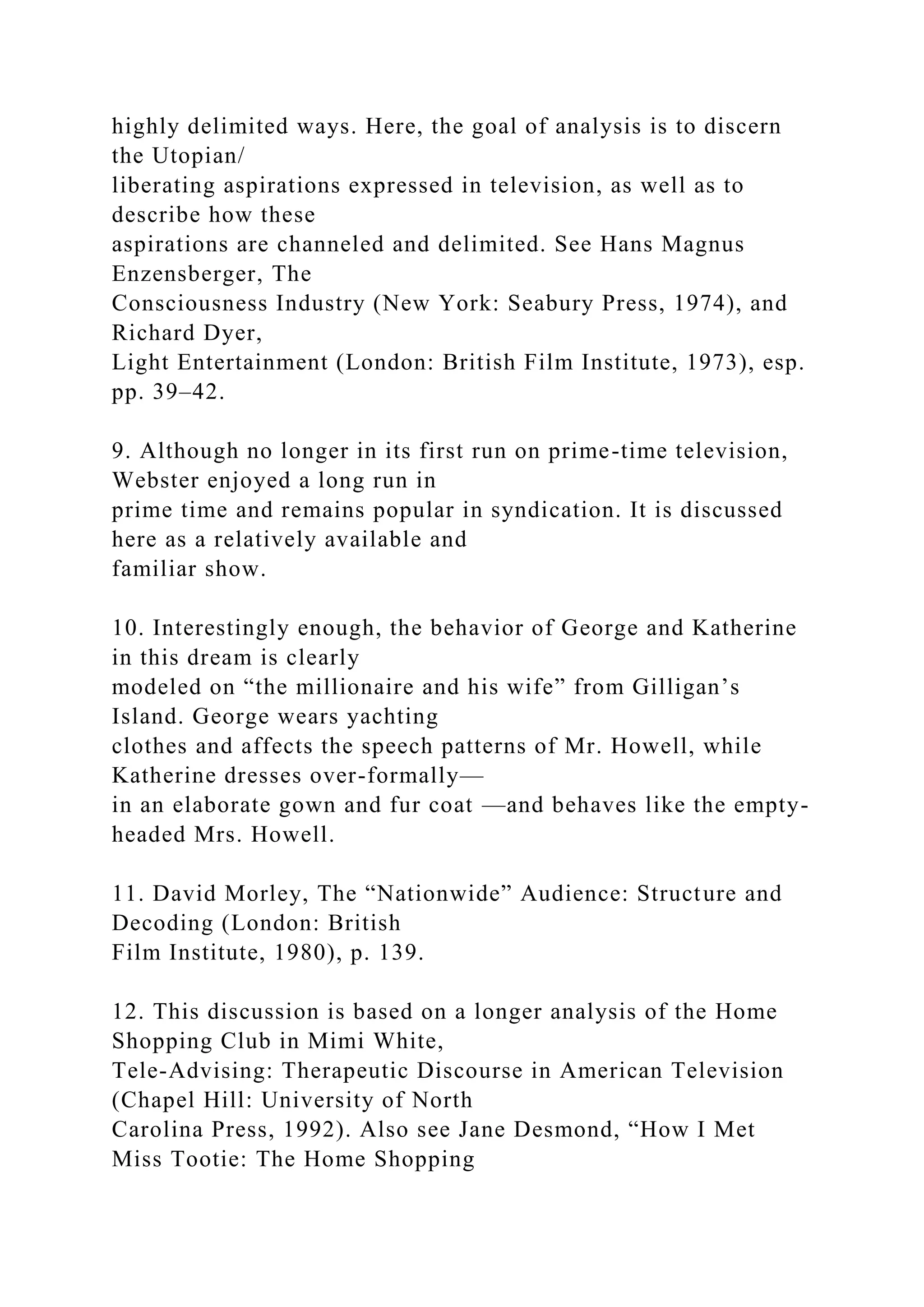
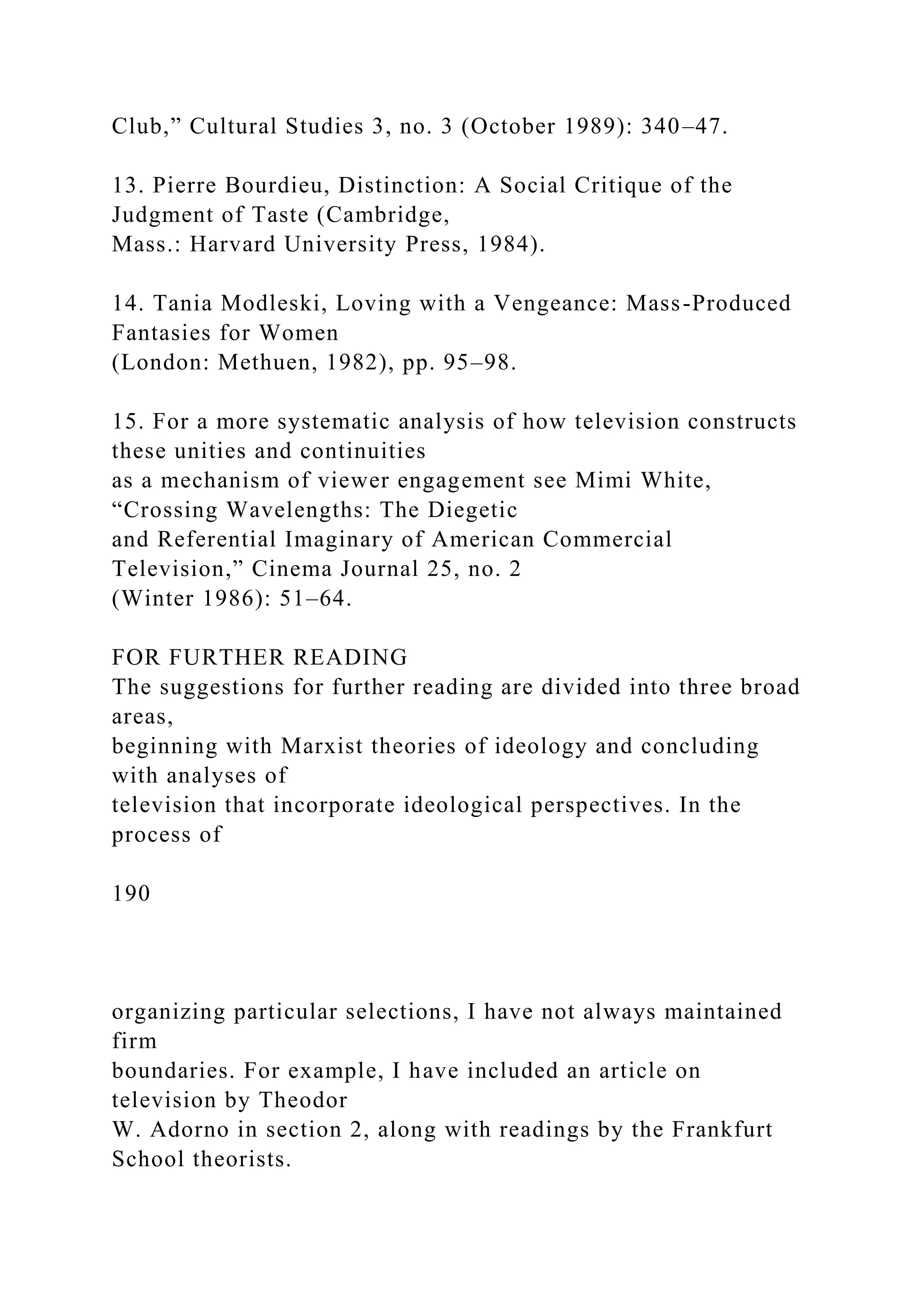
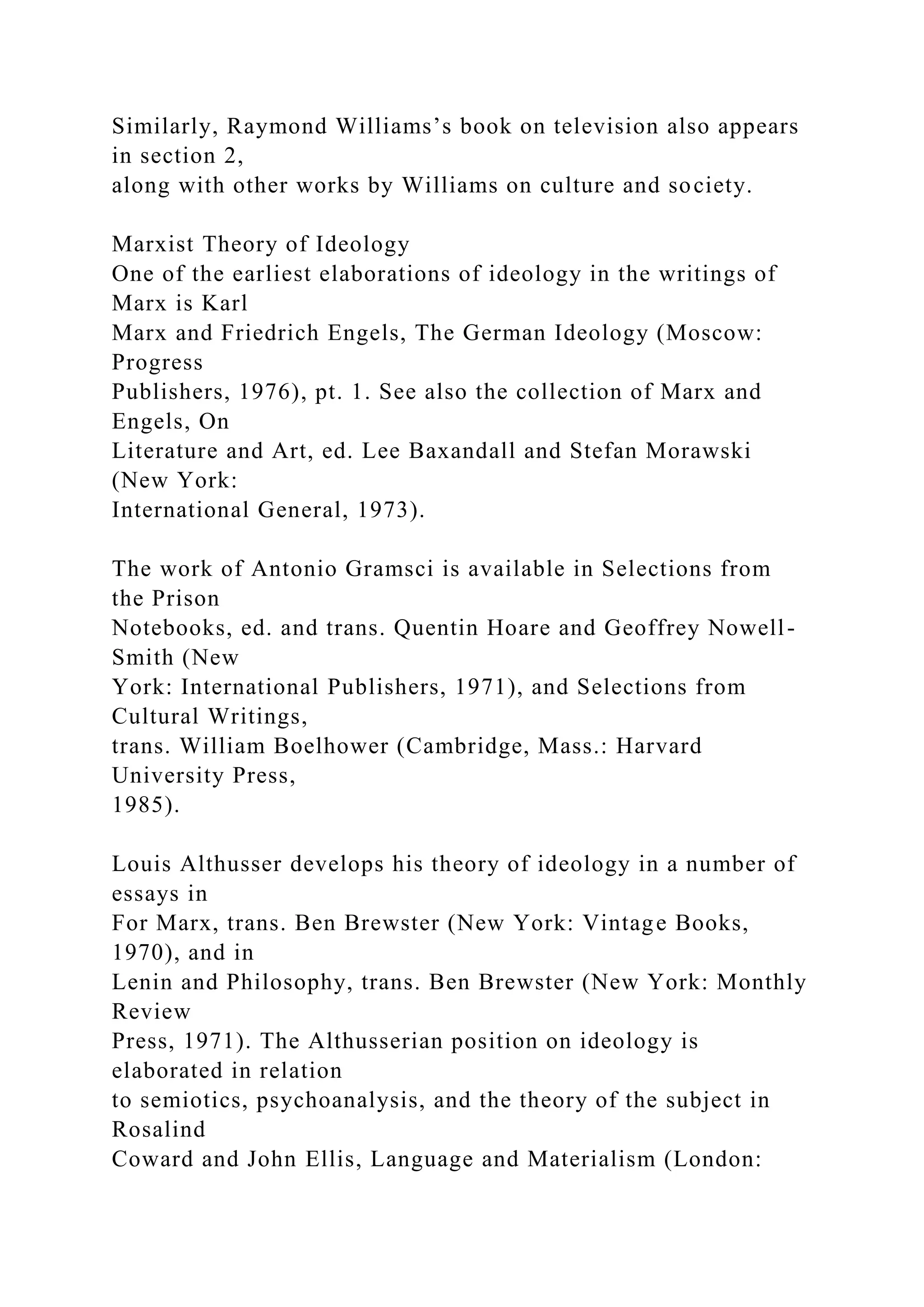
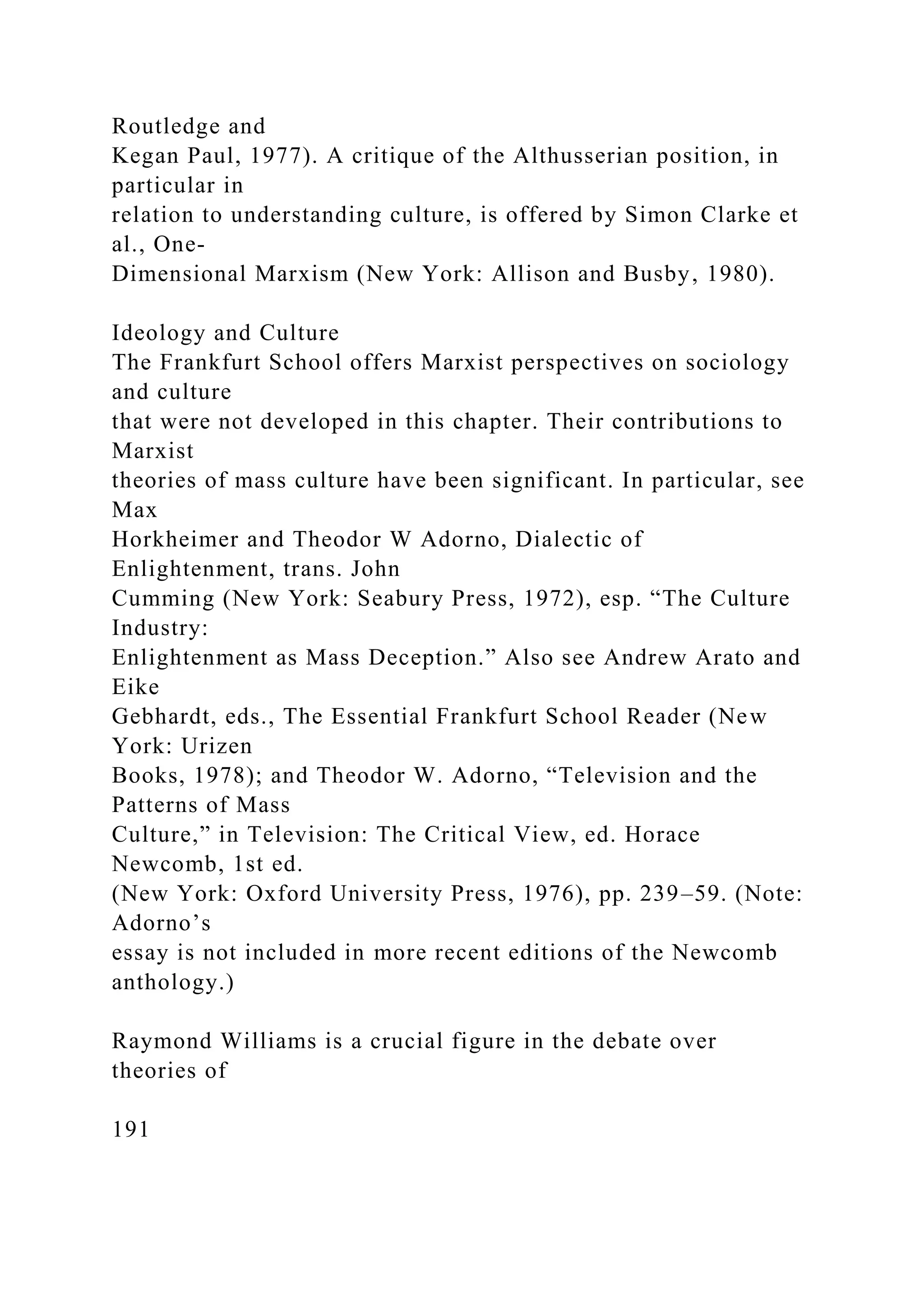
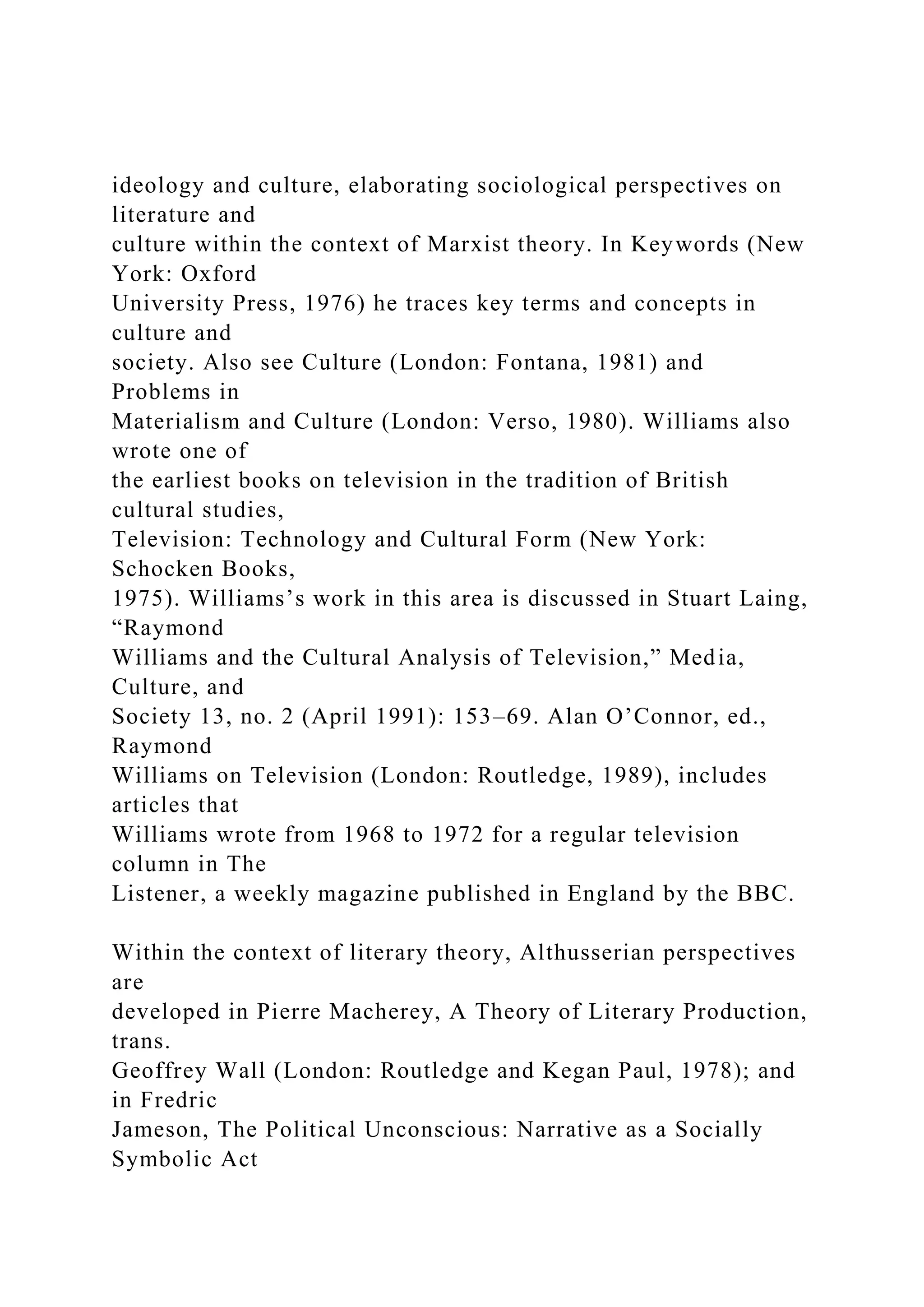
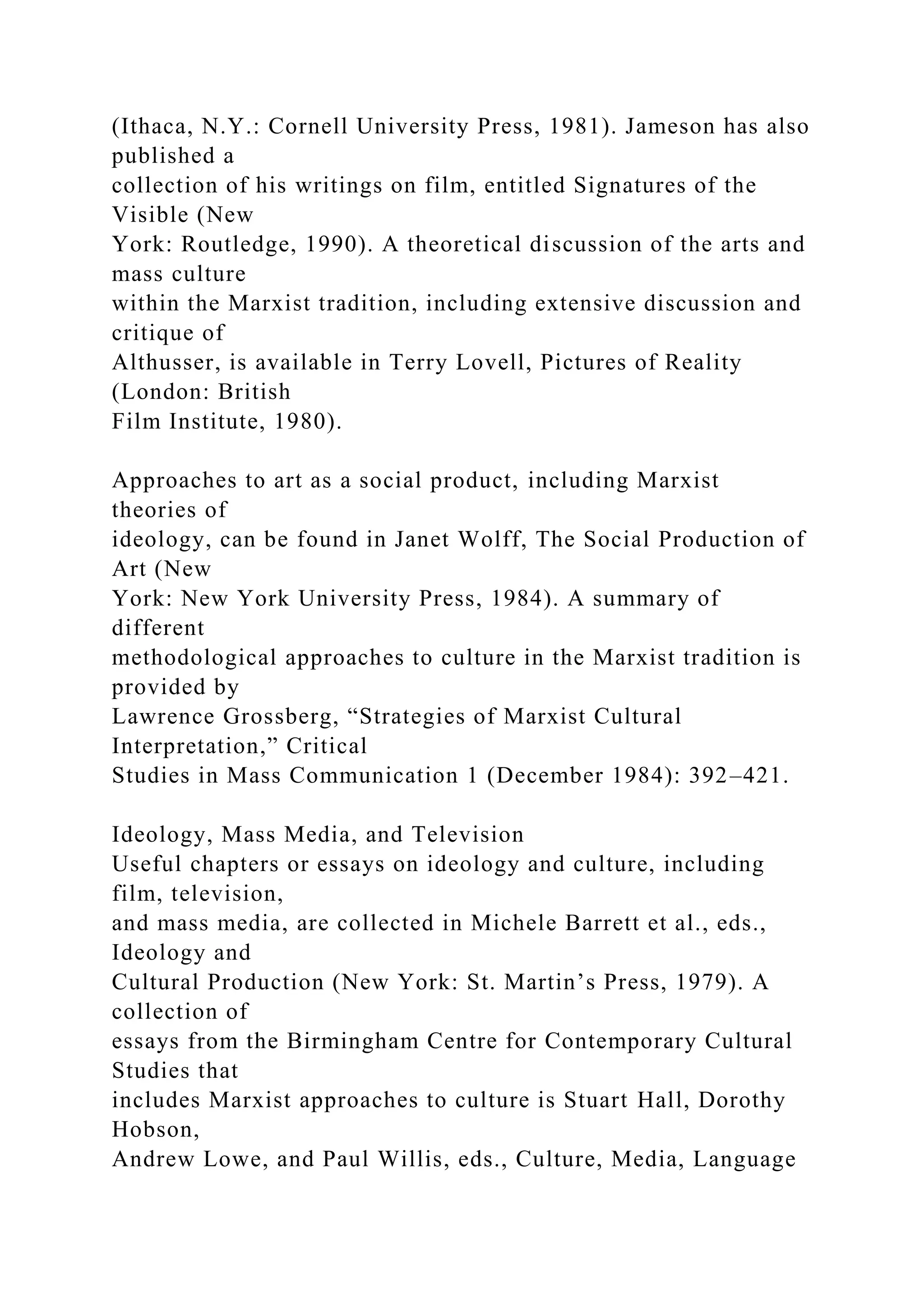
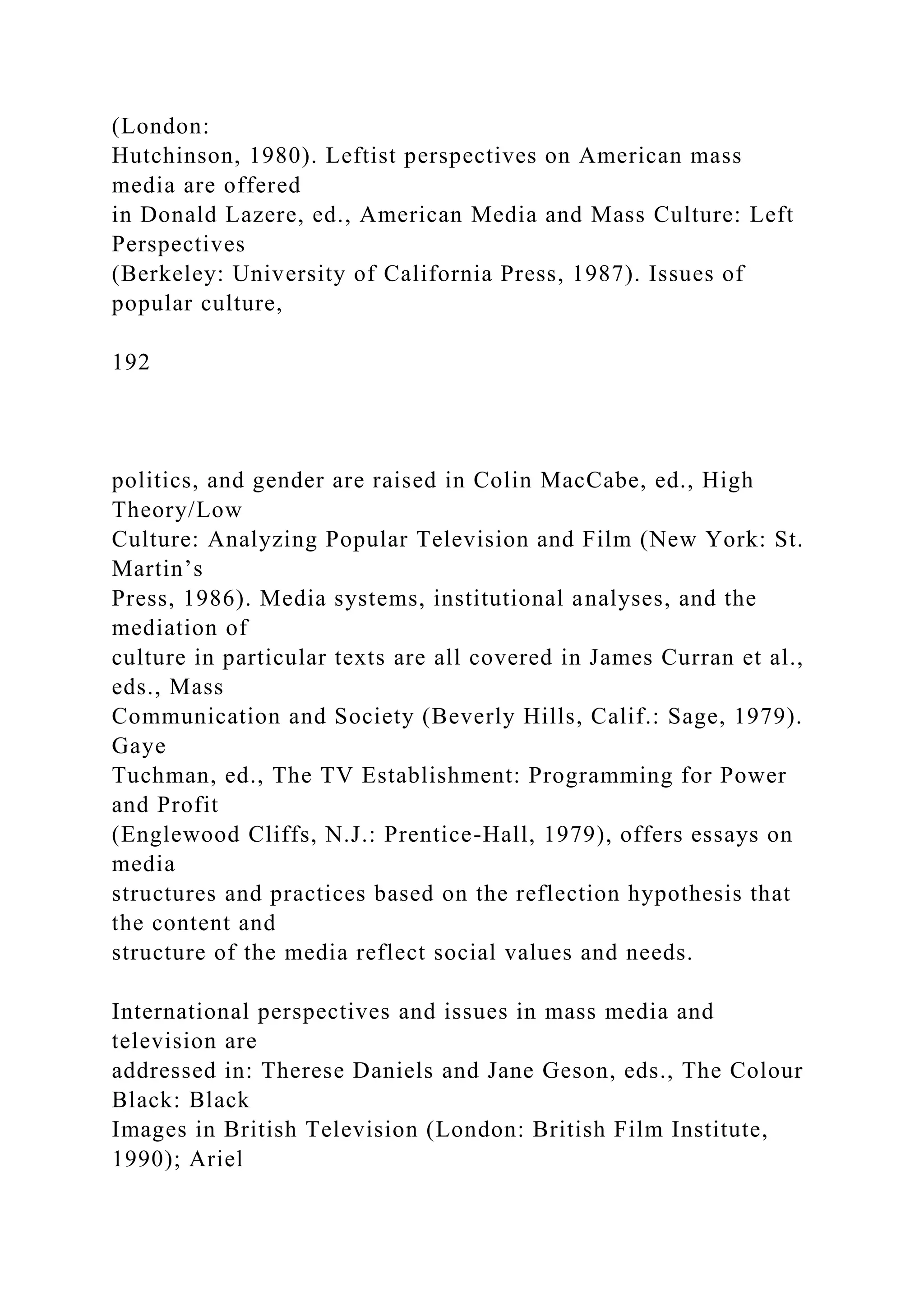
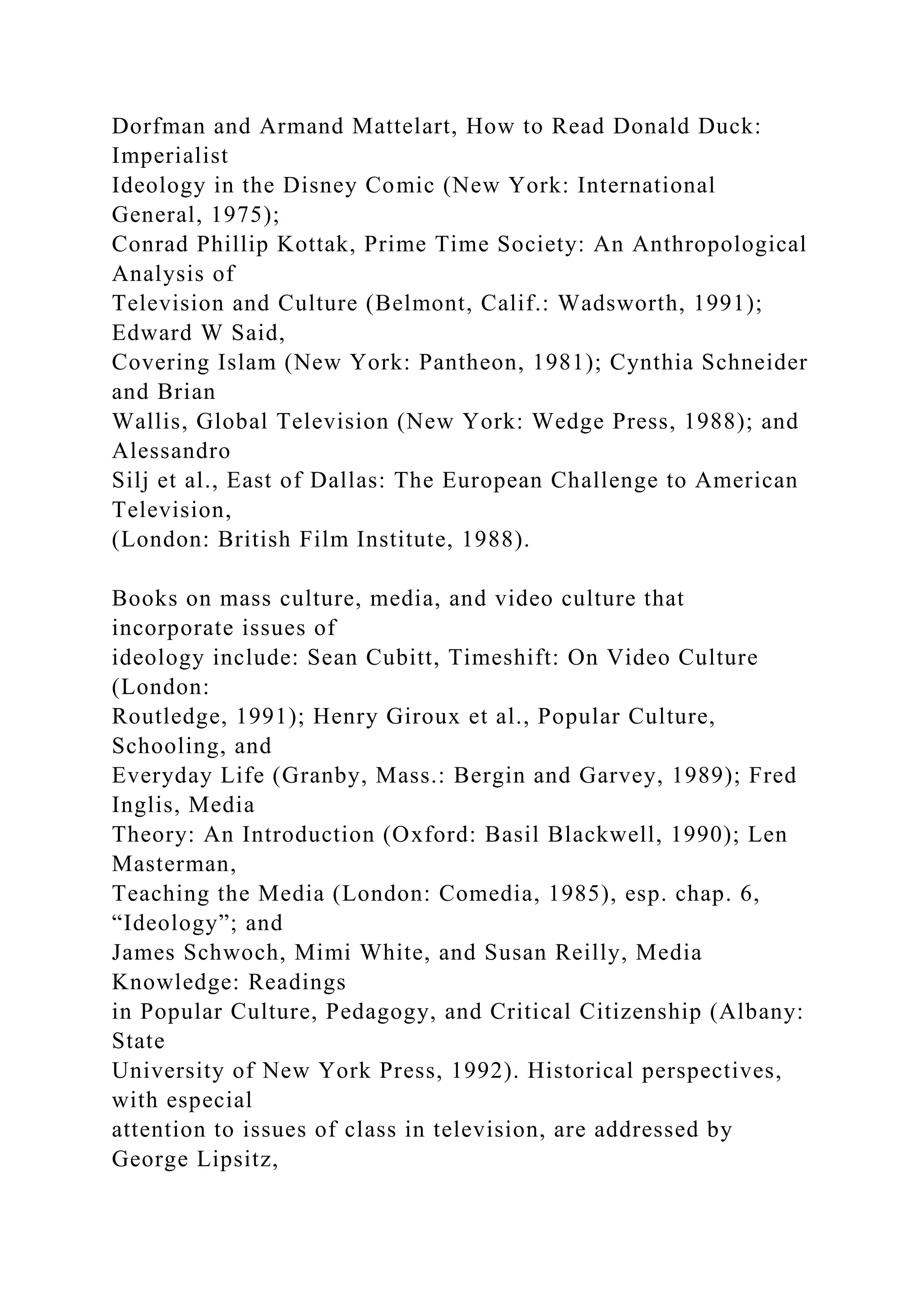


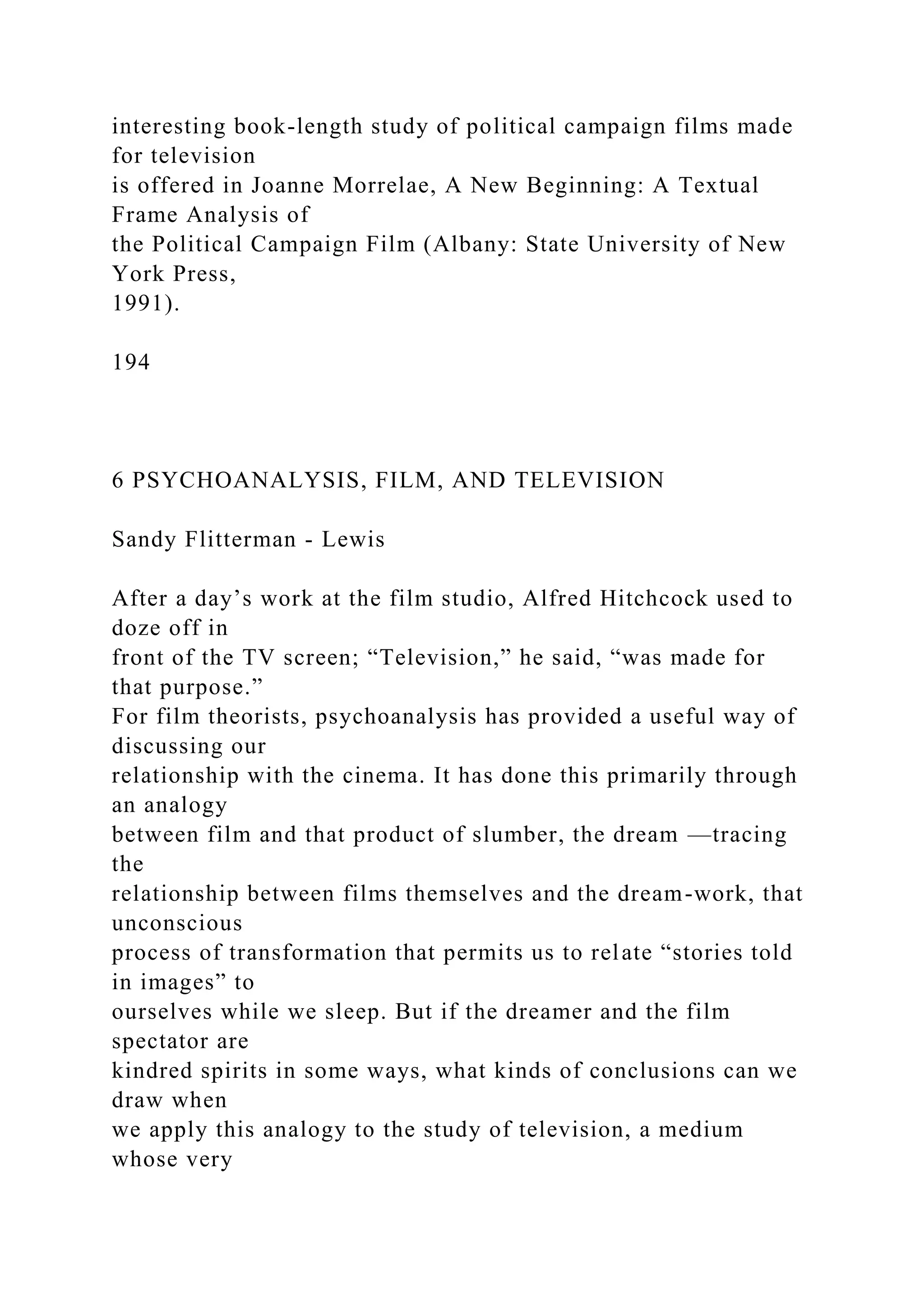

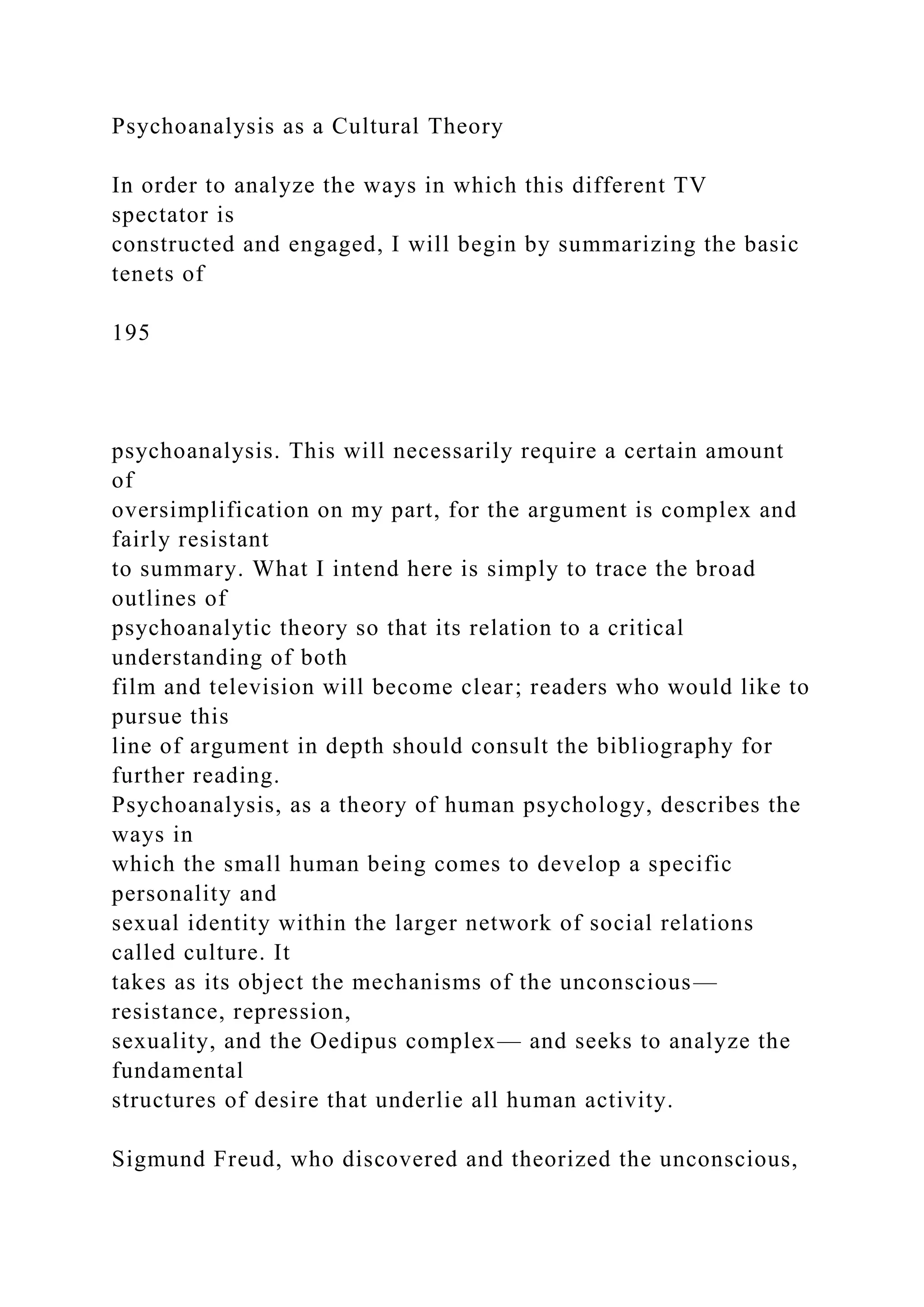

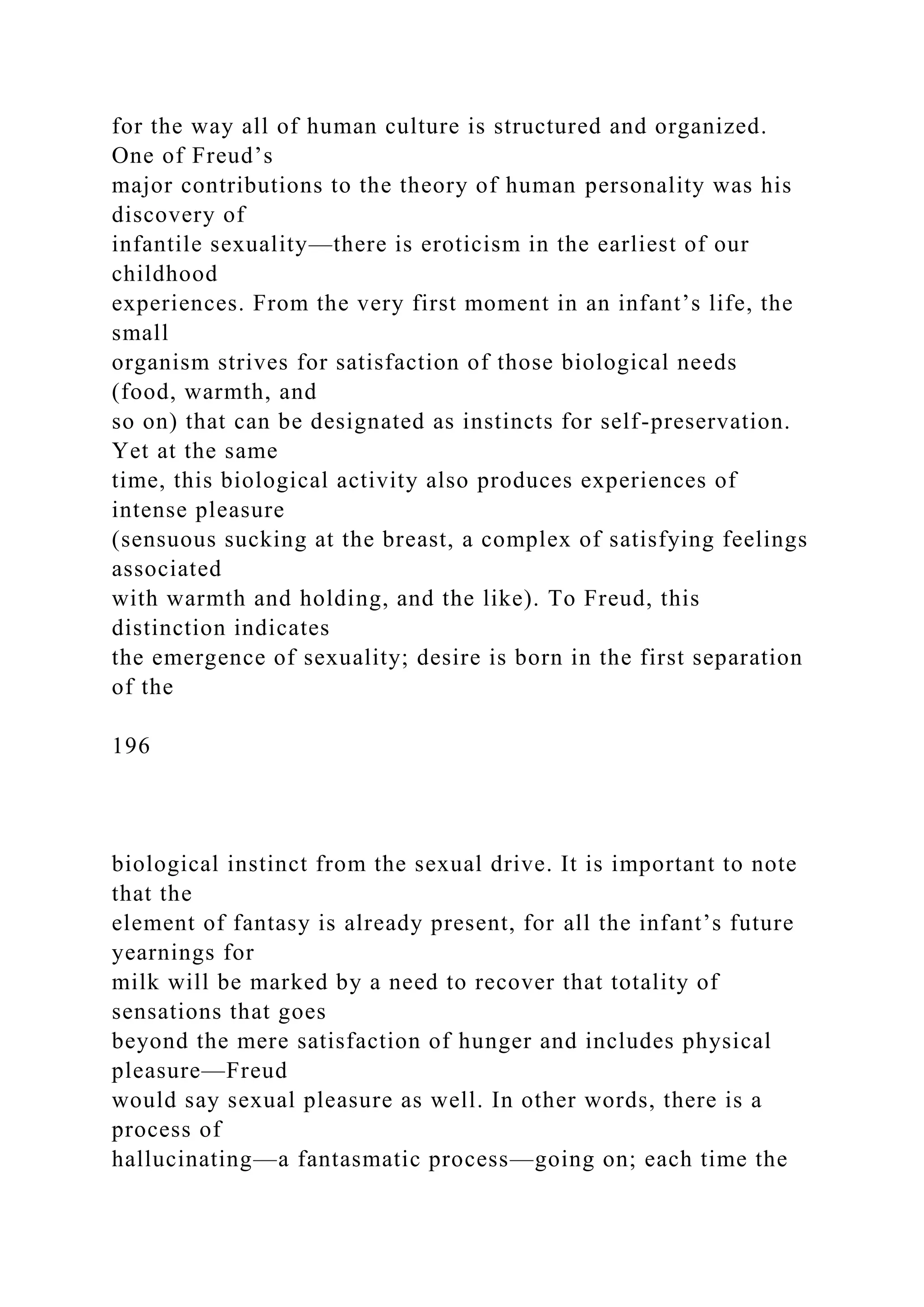
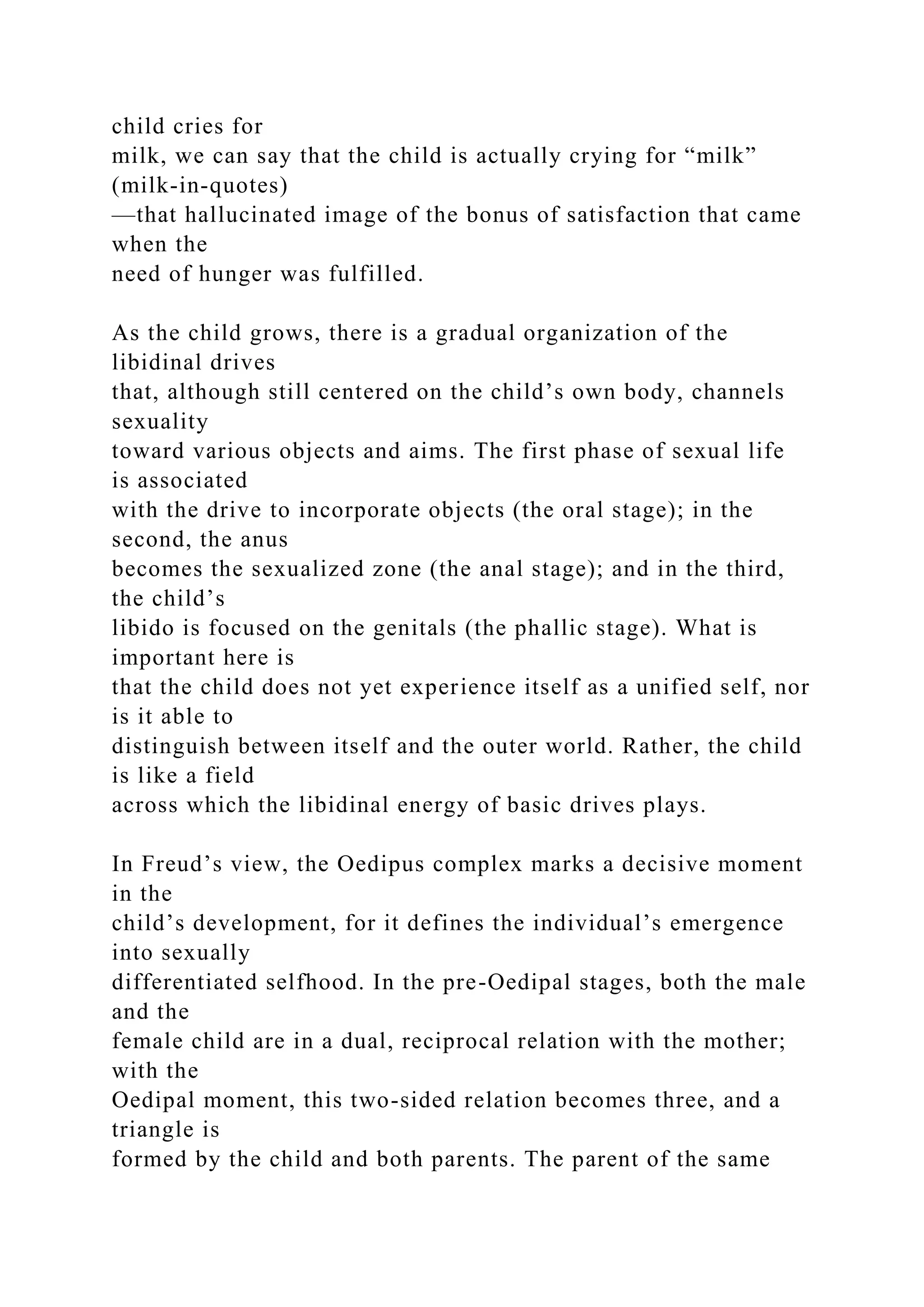

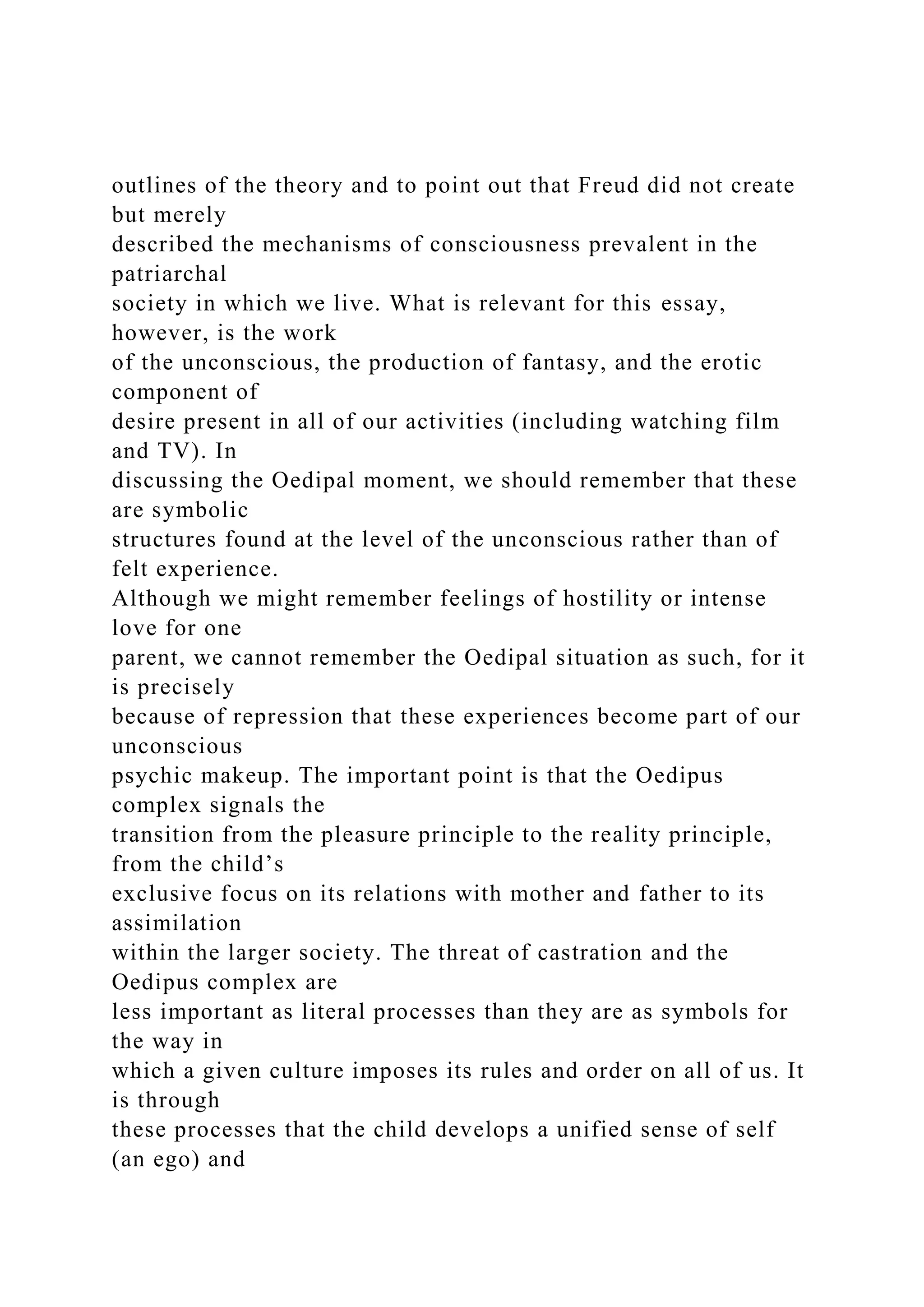
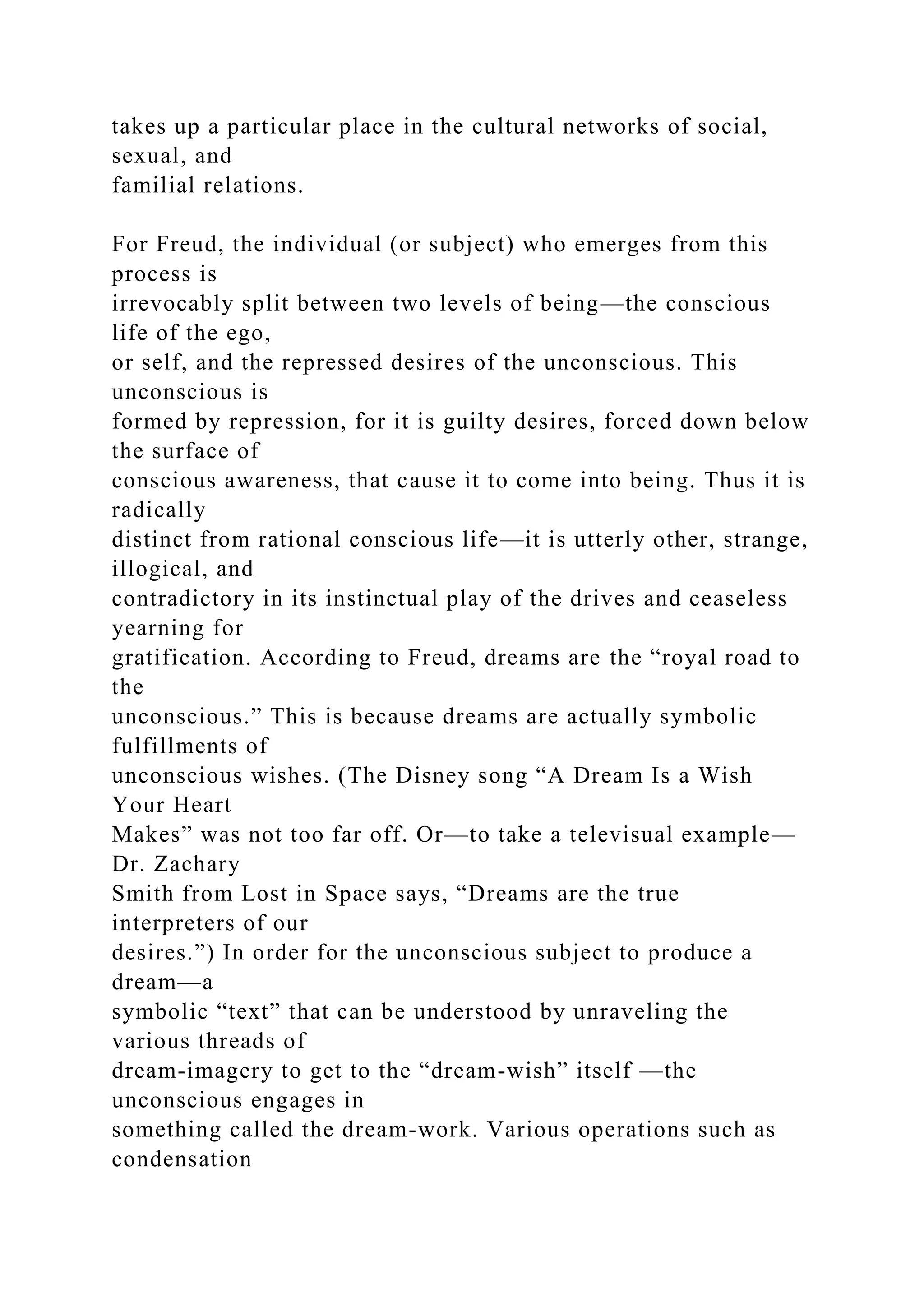
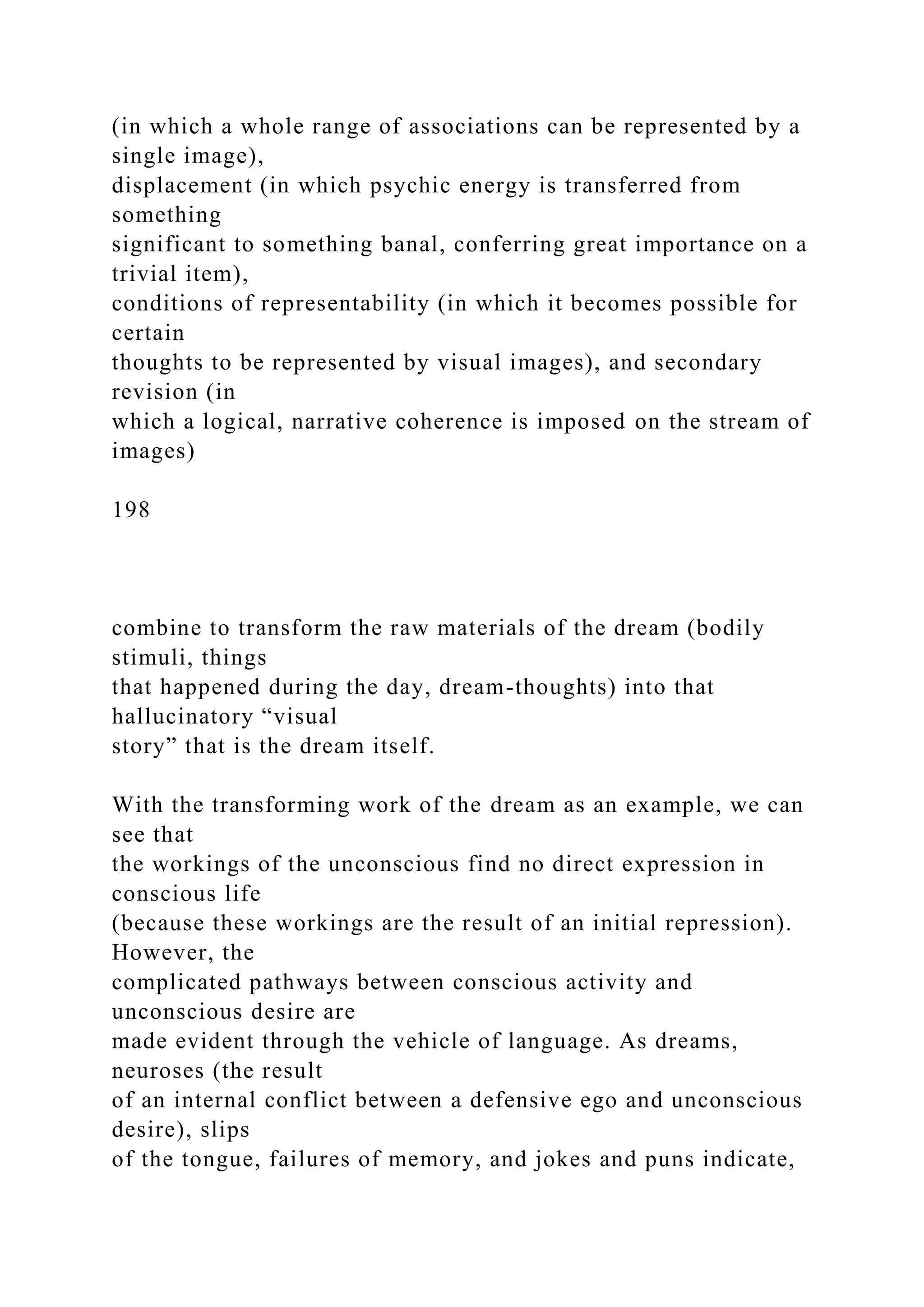
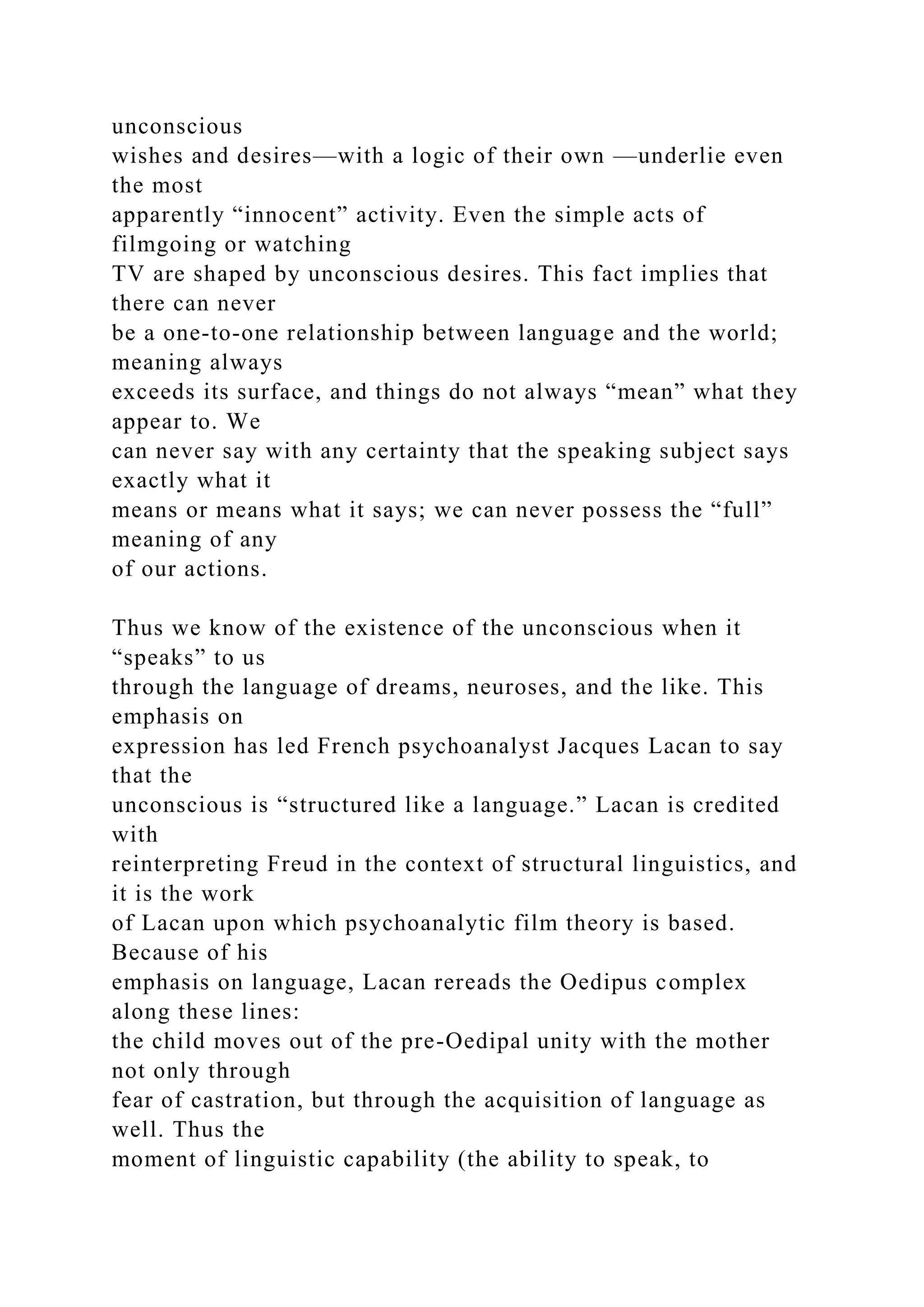
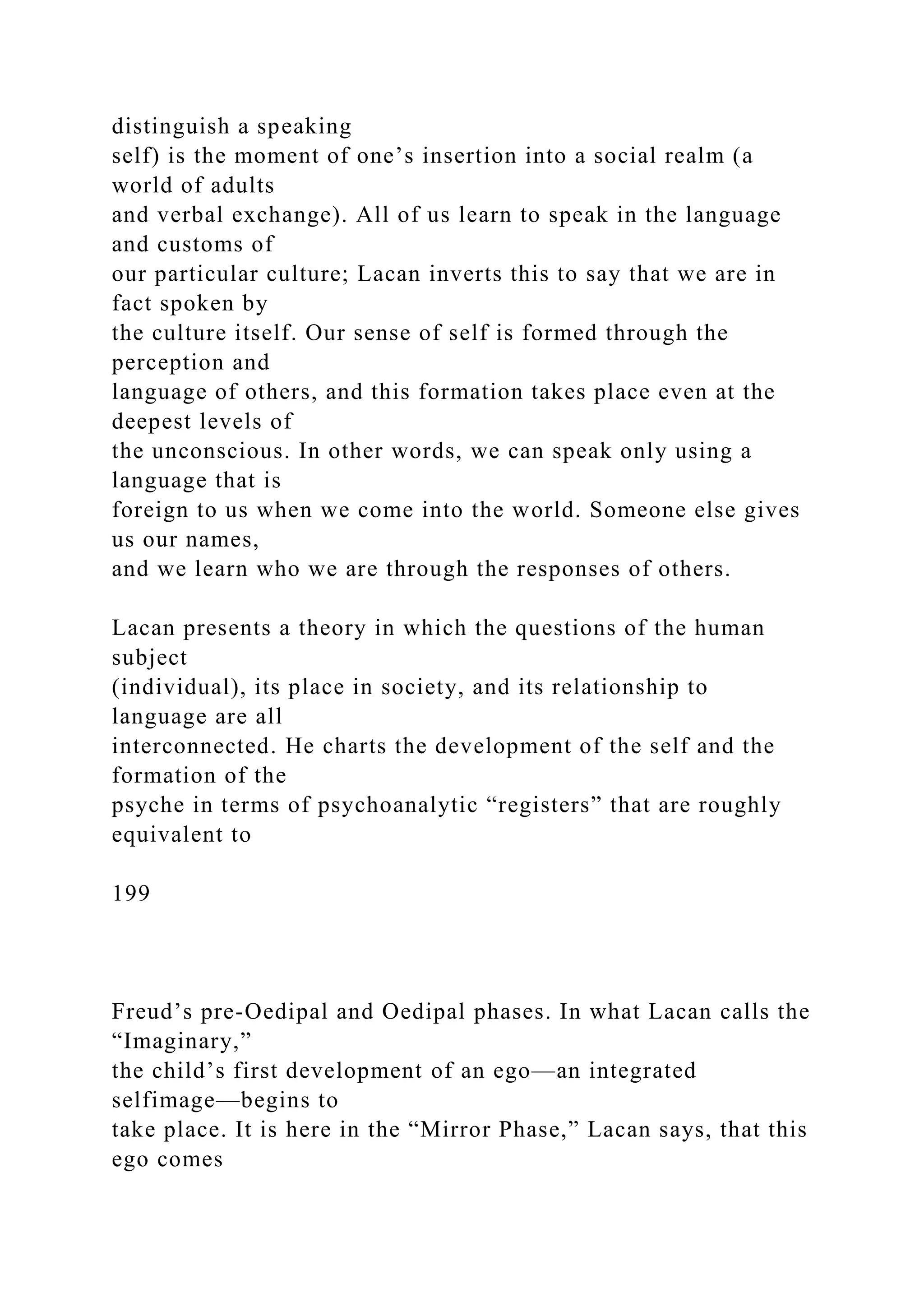
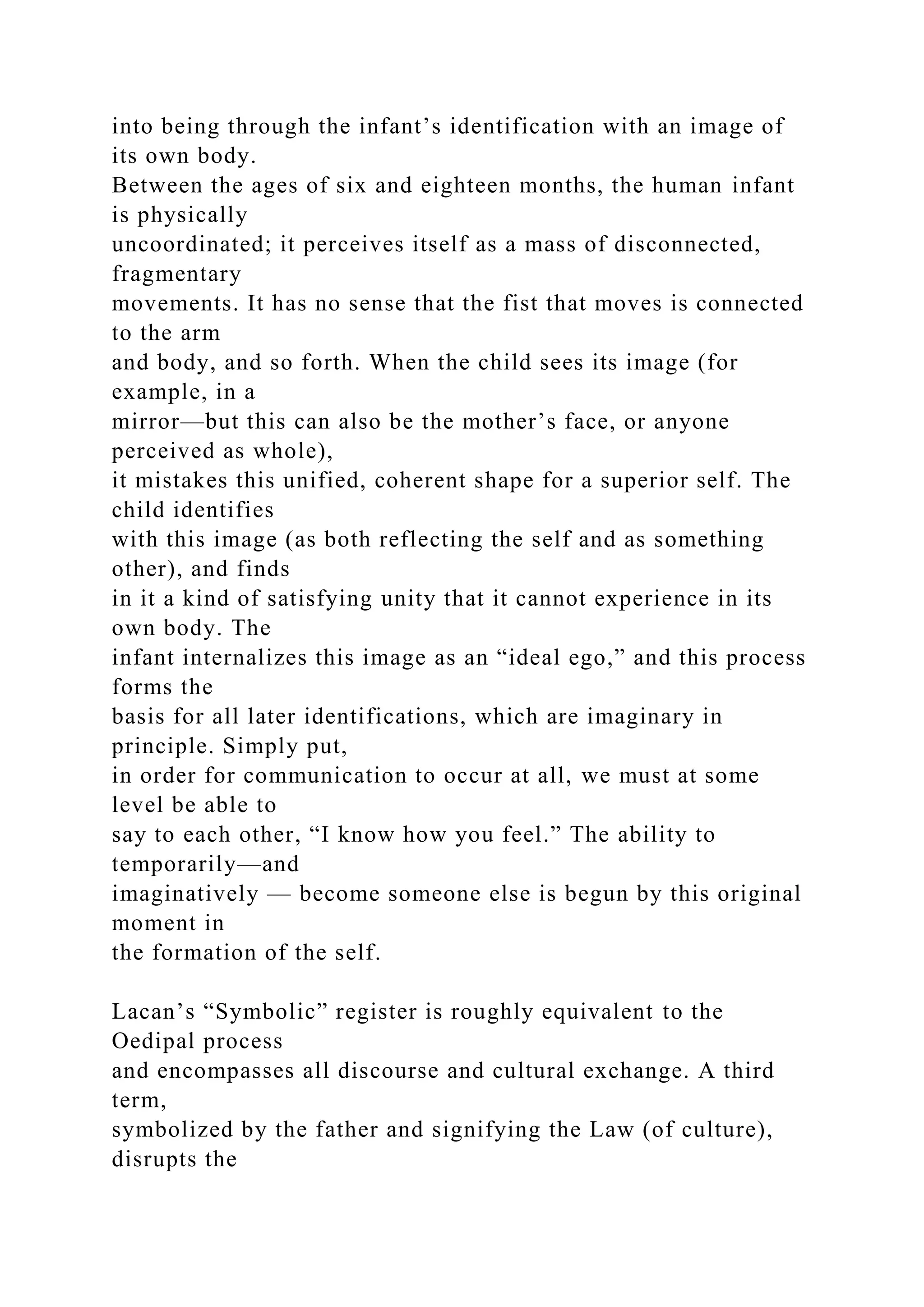
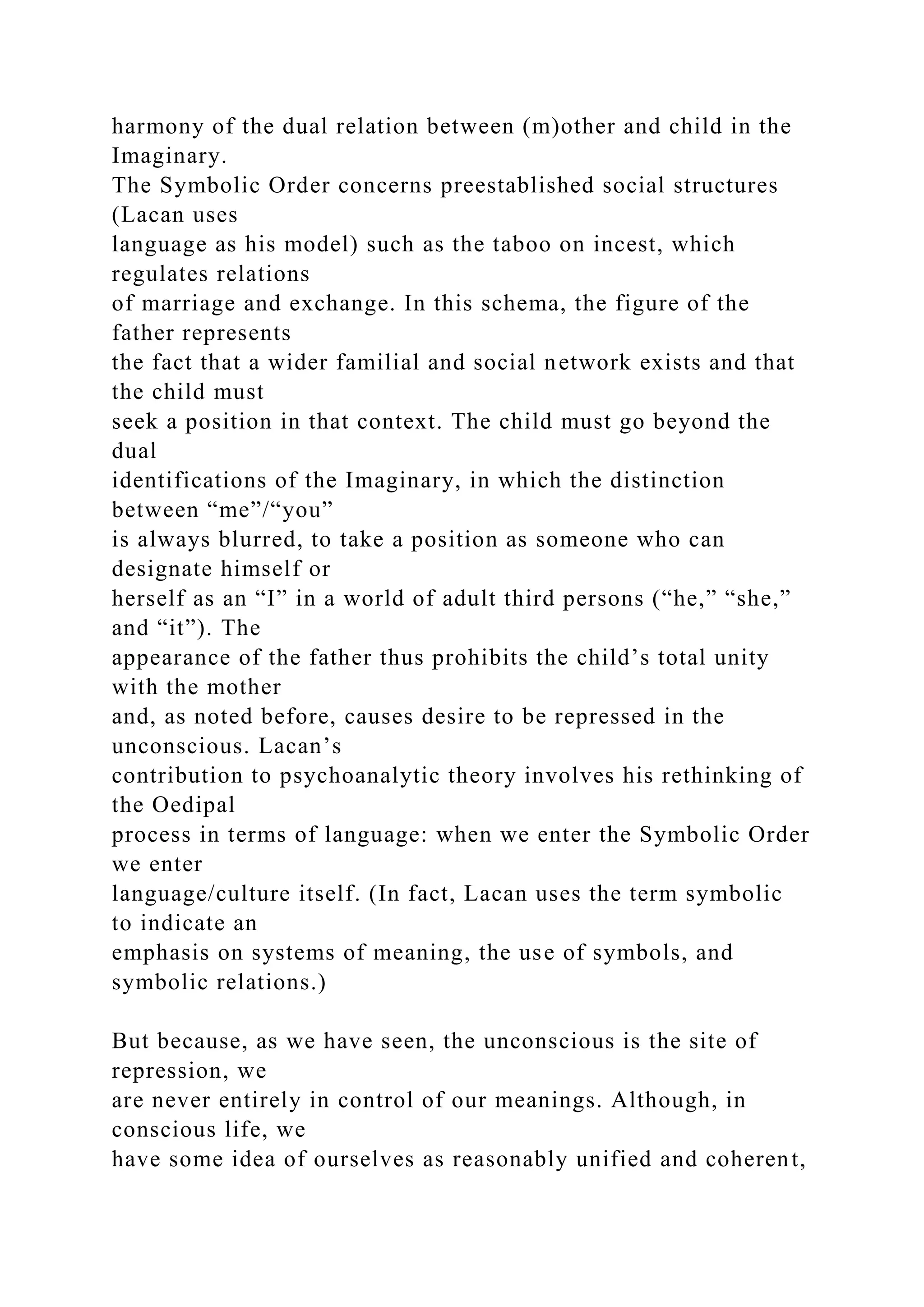
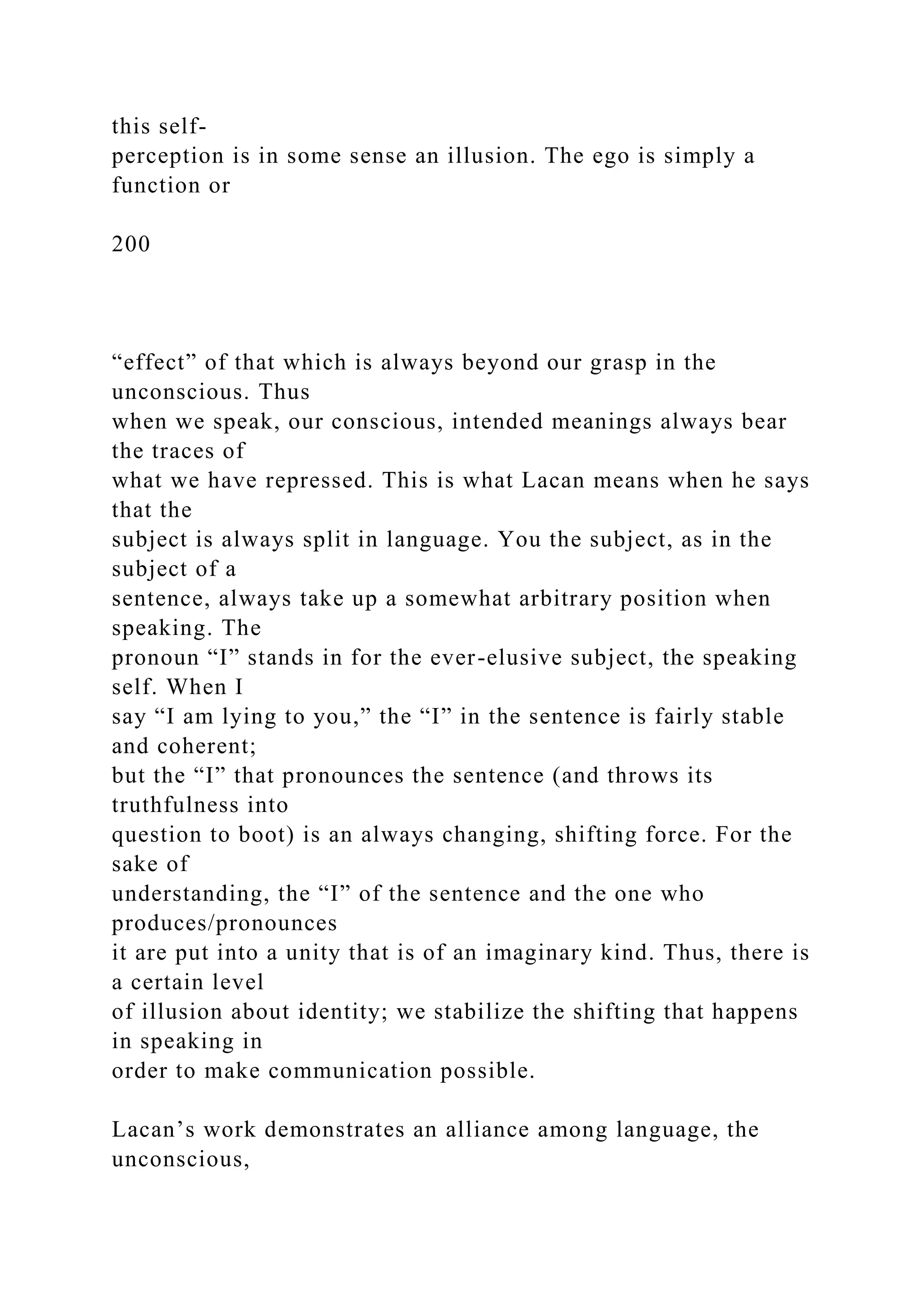
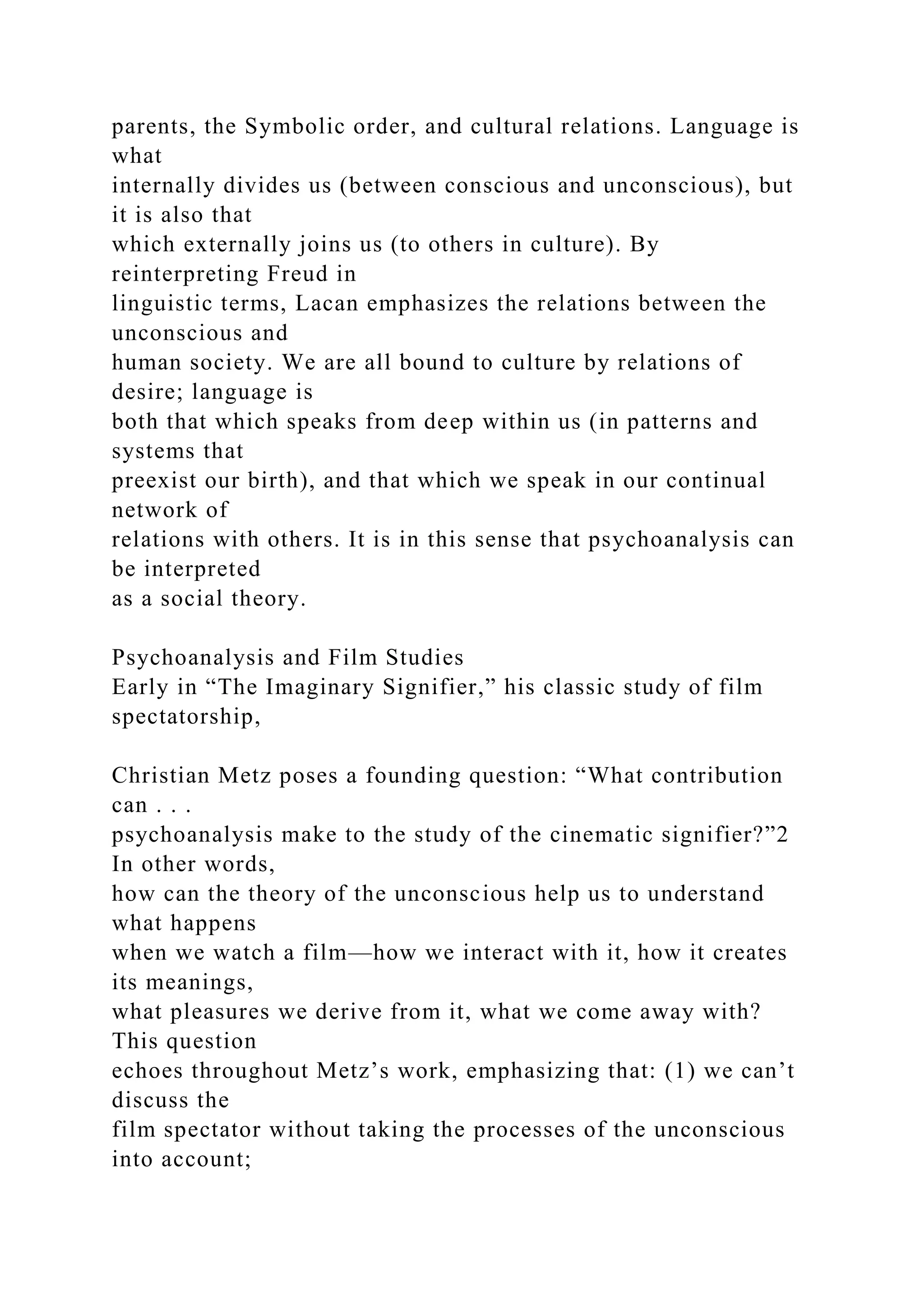
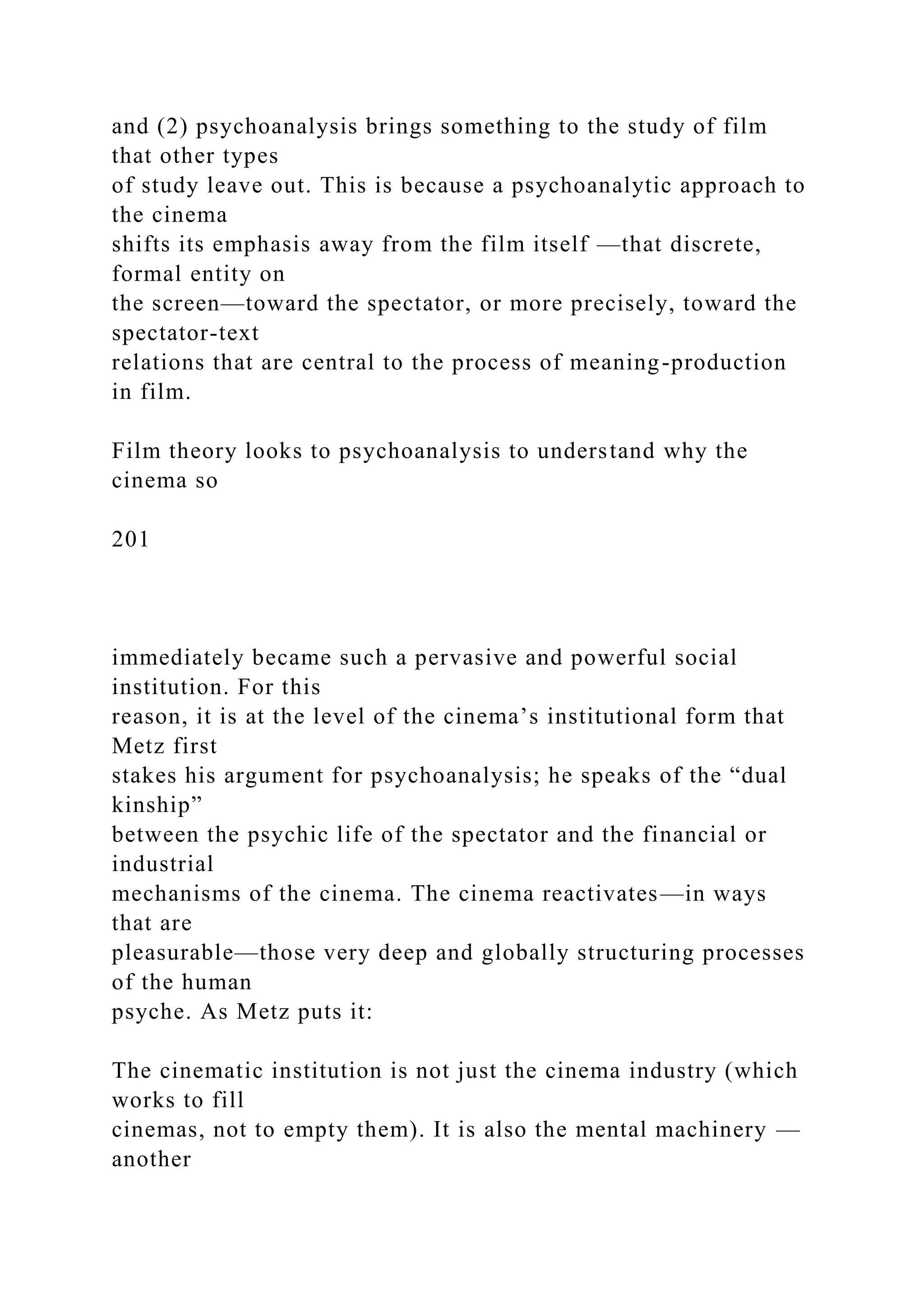
![industry—which spectators “accustomed to the cinema” have
internalized
historically, and which has adapted them to the consumption of
films. (The
institution is outside us and inside us, indistinctly collective and
intimate,
sociological and psychoanalytic, just as the general prohibition
of incest has
as its individual corollary the Oedipus complex… or perhaps. . .
different
psychical configurations which . . . imprint the institution in us
in their own
way.) The second machine, i.e., the social regulation of the
spectator’s
metapsychology, like the first, has as its function to set up good
object
relations with films. . . . The cinema is attended out of desire,
not reluctance,
in the hope that the film will please, not that it will displease. .
. . [T]he
institution as a whole has filmic pleasure alone as its aim.3
Differing from the models of mass audience offered by
empirical or
sociological approaches to the cinema (“real” people who go to
movies) and
the notion of a consciously aware viewer provided by formalist
approaches
(people have conscious artistic ideas about what they see),
psychoanalytic
film theory discusses film spectatorship in terms of the
circulation of desire.
That is, it considers both the viewing state and the film text
alike as in some
way mobilizing the structures of unconscious fantasy. More
than any other](https://image.slidesharecdn.com/channelsofdiscoursereassembled2channelsof-221018173716-6fc0655a/75/Channels-of-Discourse-Reassembled2Channels-of-docx-445-2048.jpg)
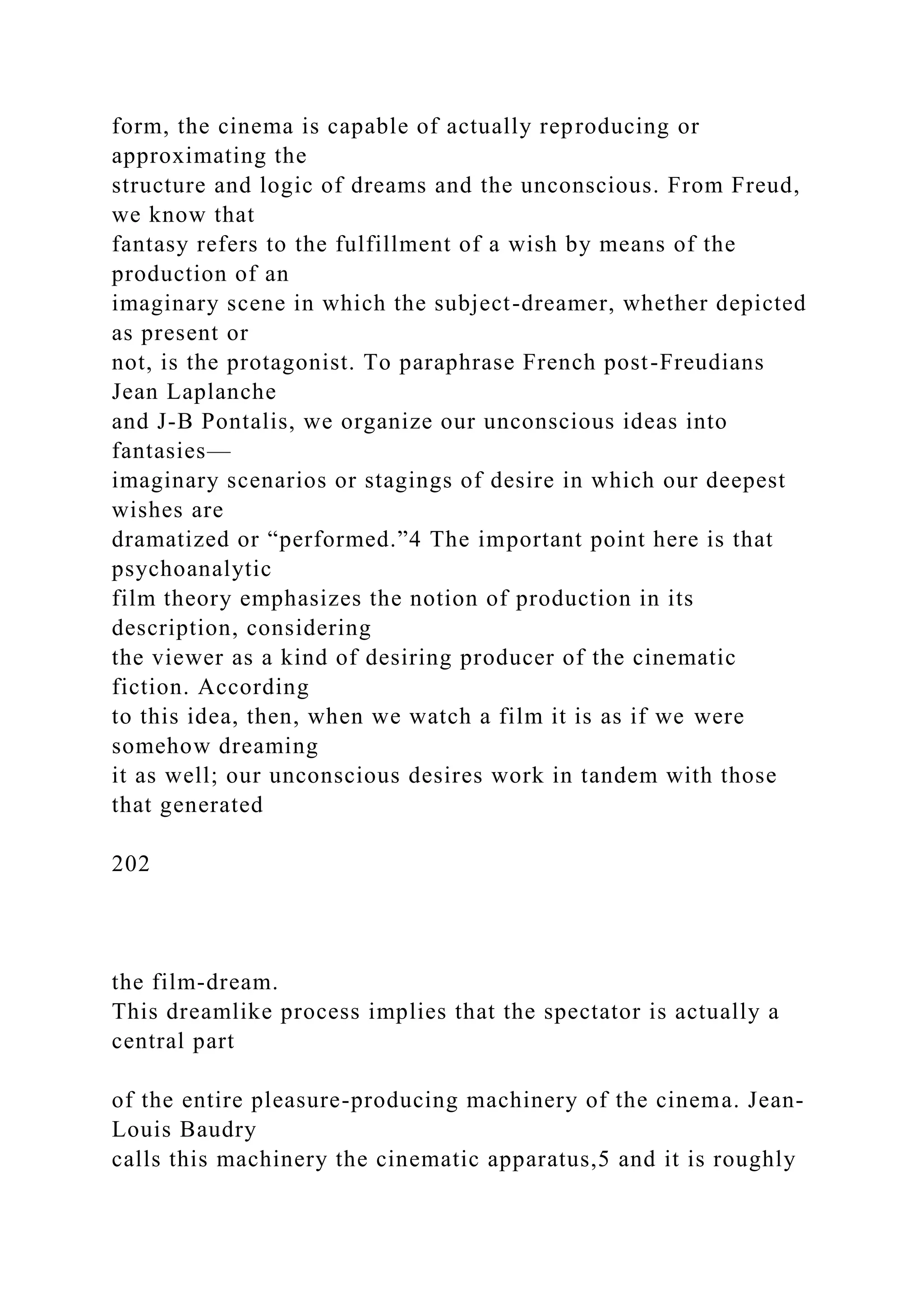
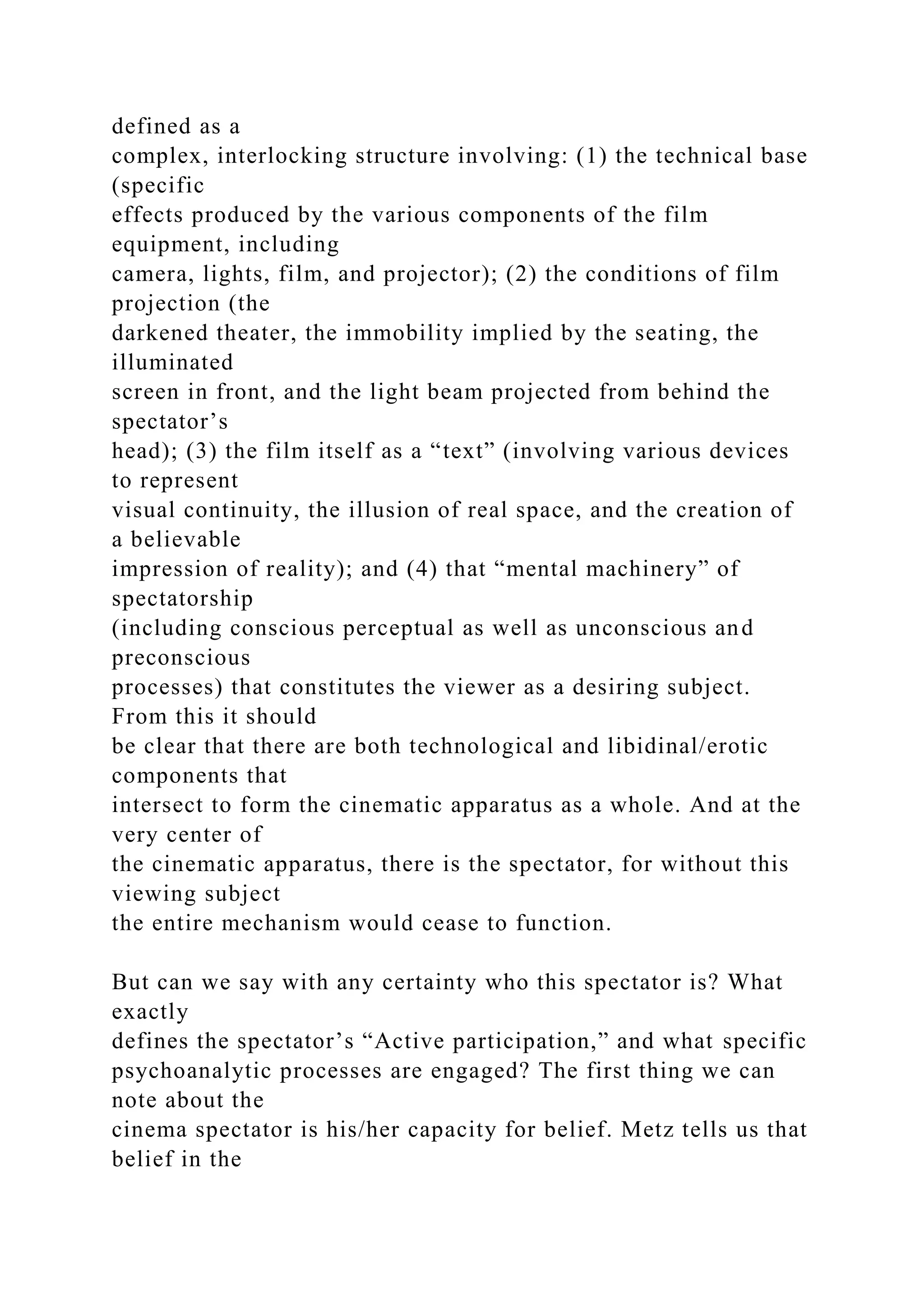

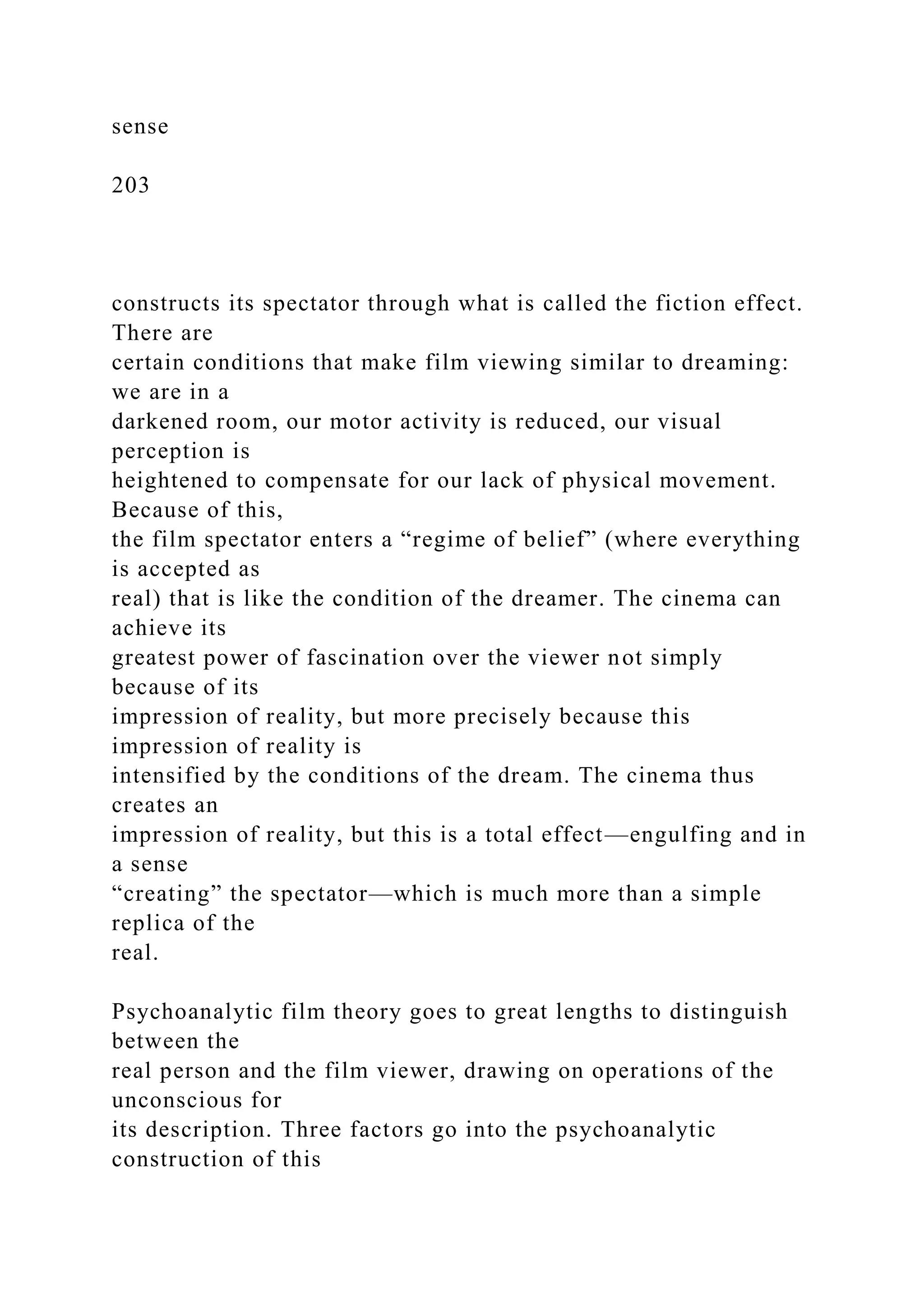
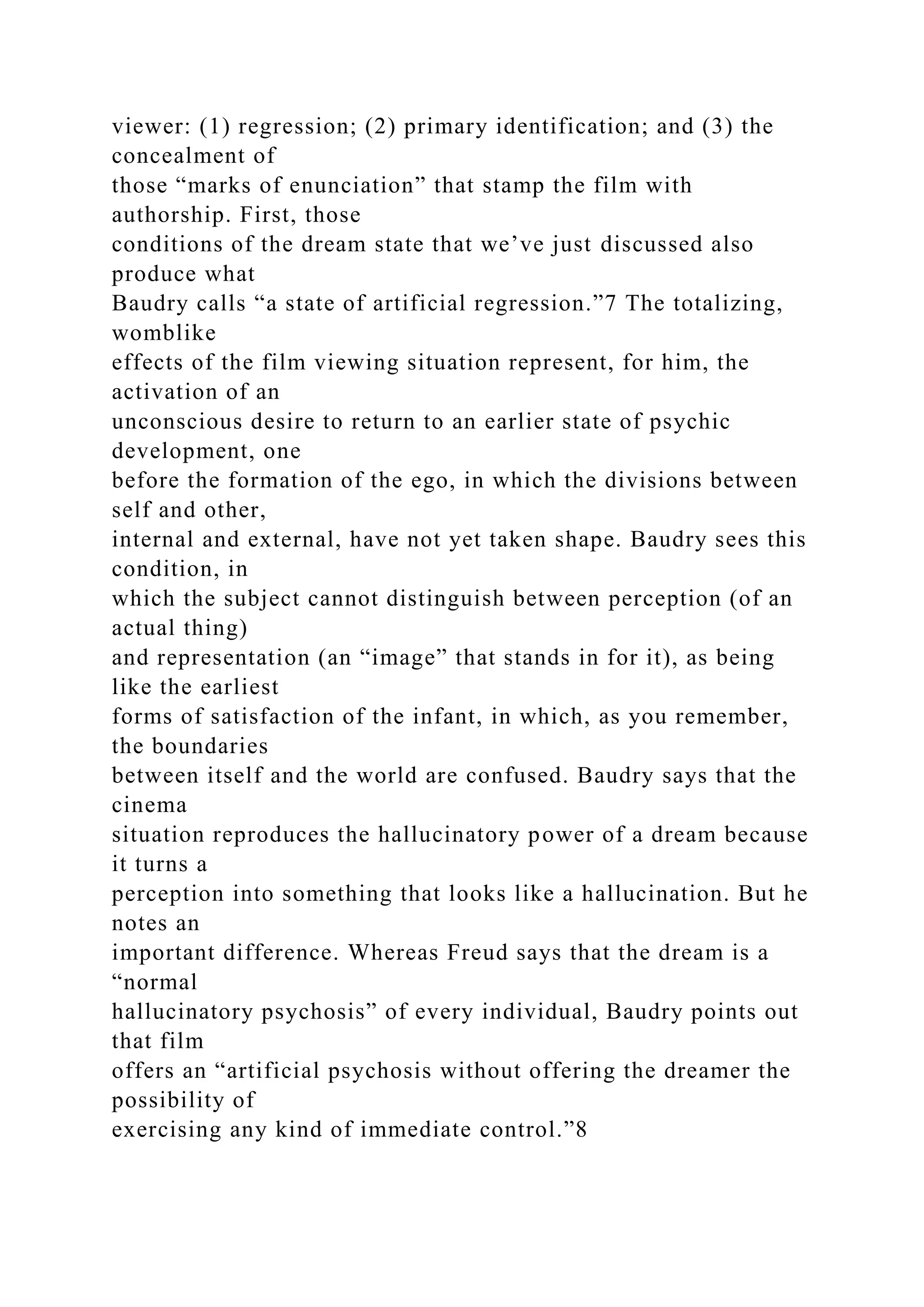
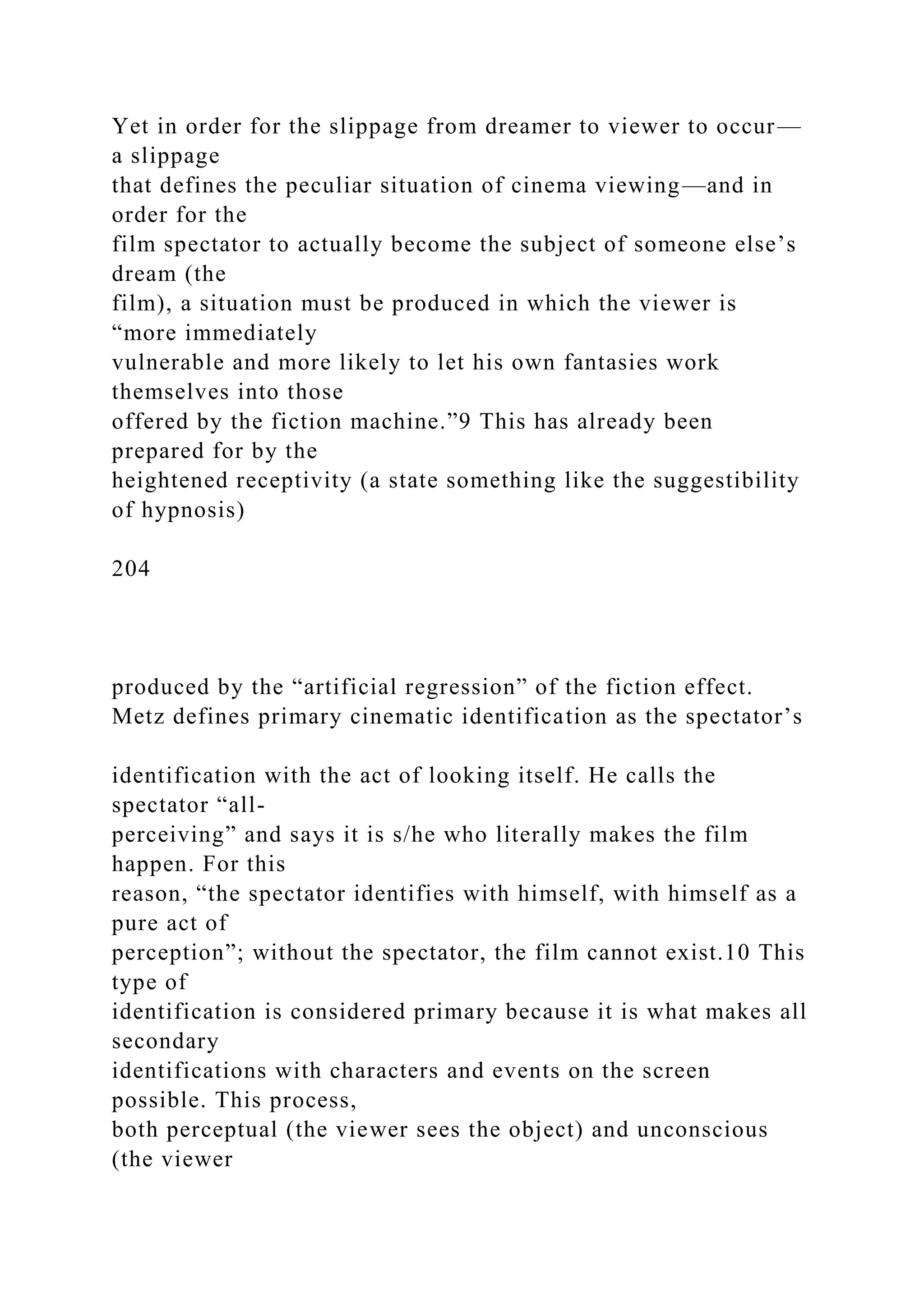
![participates in a fantasmatic or imaginary way), is at once
constructed and
directed by the look of the camera and its stand-in, the
projector. From a look
that seems to proceed from the back of the head (from the
projector behind us
in the theater)—“precisely where fantasy locates the ‘focus’ of
all vision”—
the spectator is given that illusory capacity to be everywhere at
once, that
power of vision for which the cinema is famous.11 Baudry
describes this
arrangement in a slightly more technological way: “[T]he
spectator identifies
less with what is represented, the spectacle itself, than with
what stages the
spectacle, makes it seen, obliging him to see what it sees; this is
exactly the
function taken over by the camera as a sort of relay.”12
Metz says that this type of identification is possible because the
viewer has
already undergone that formative psychic process called the
Mirror Phase
(discussed earlier). The film viewer’s fictional participation in
the unfolding
of events is made possible by this first experience of the
subject, that early
moment in the formation of the ego when the small infant
begins to
distinguish objects as different from itself. Just as the infant
sees in the mirror
an ideal image of itself, the film viewer sees on the movie
screen larger-than-
life, idealized characters with whom s/he is encouraged to
identify. Film](https://image.slidesharecdn.com/channelsofdiscoursereassembled2channelsof-221018173716-6fc0655a/75/Channels-of-Discourse-Reassembled2Channels-of-docx-452-2048.jpg)
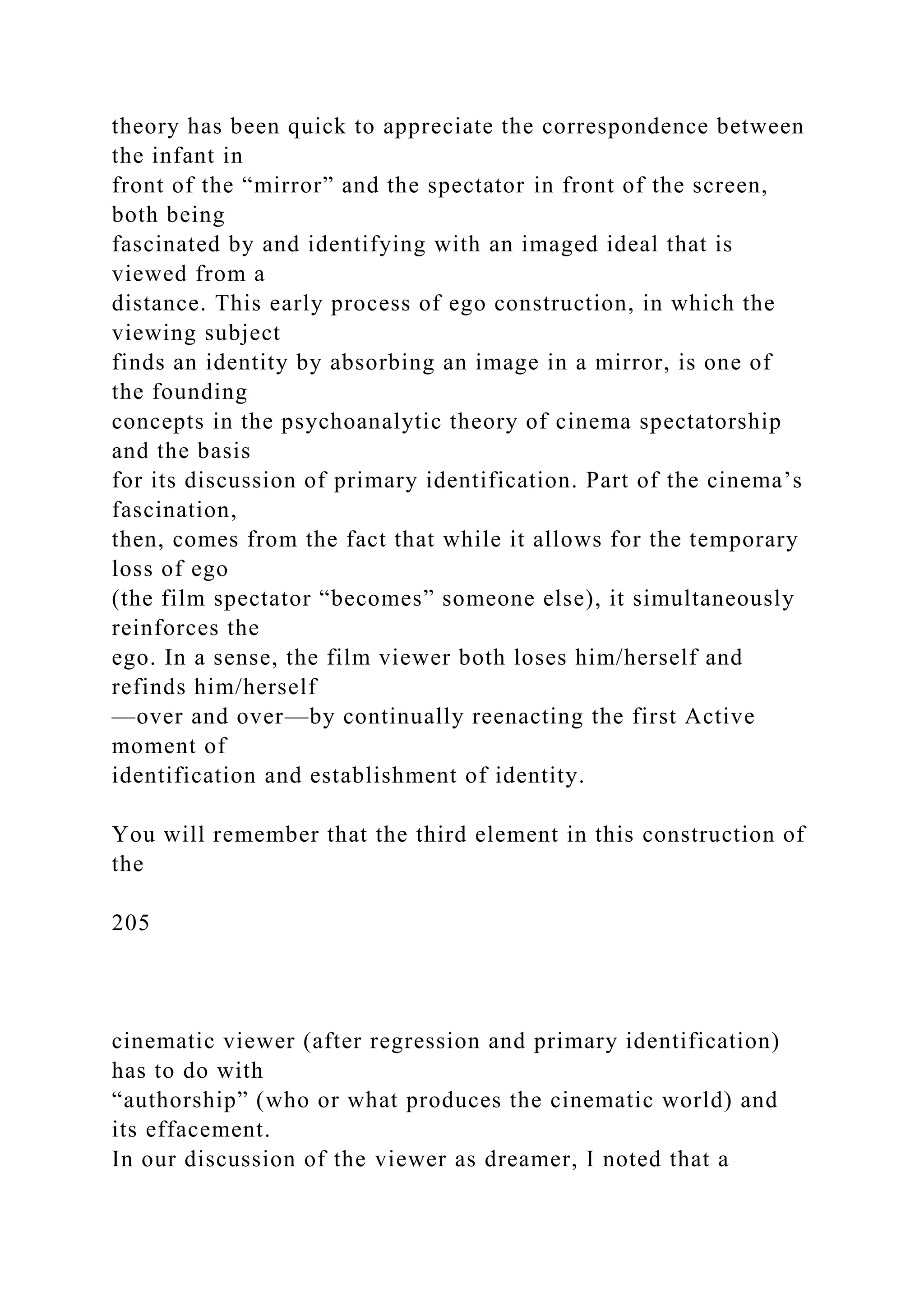
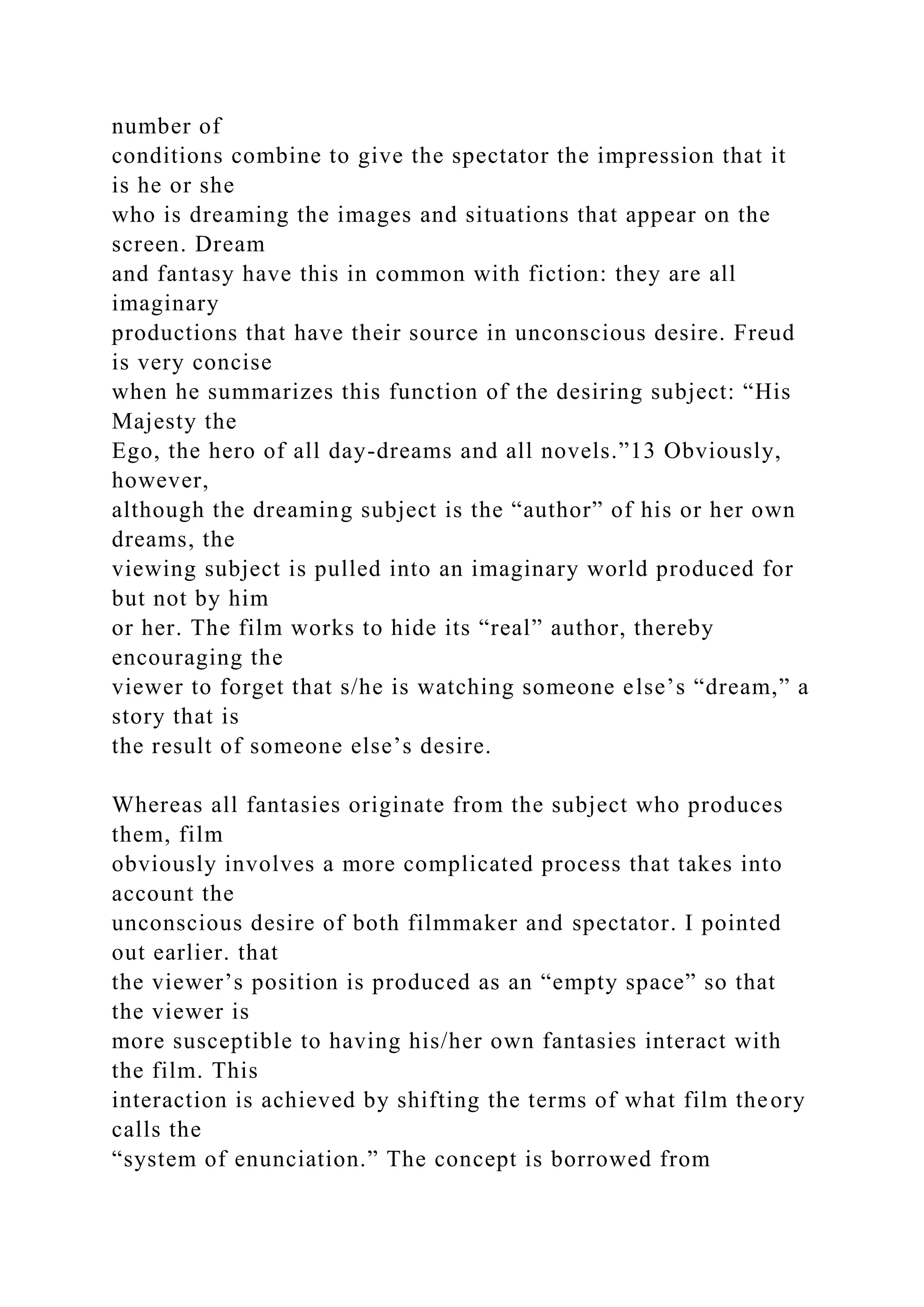
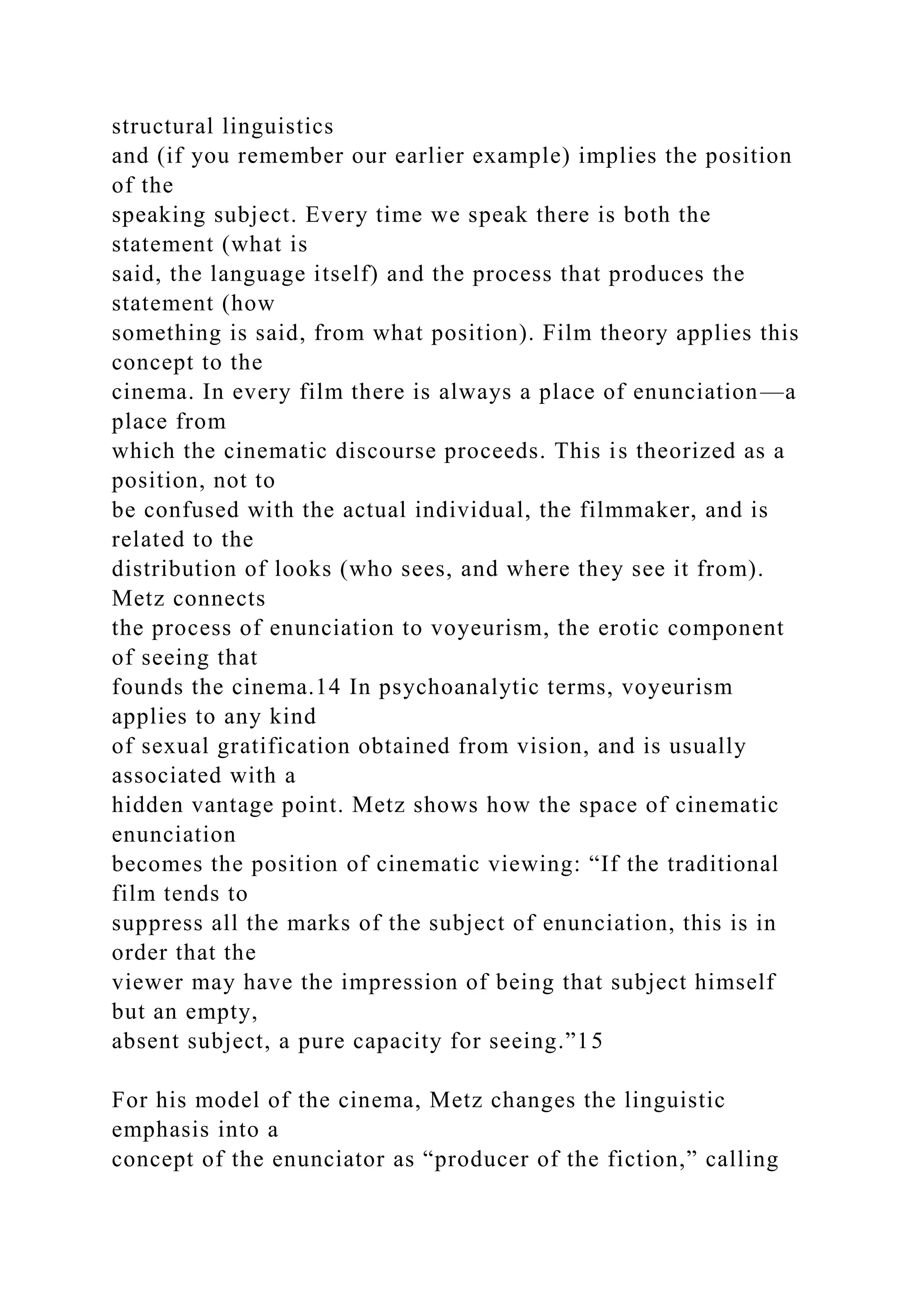
![attention to the
way that every filmmaker organizes the image flow, choosing
the series of
206
shots that make up the relay between the one who looks (the
camera, the
filmmaker) and what is being looked at (the scene of the
action). But this
organizing process must be hidden, and this is achieved by
disguising the
discourse (in which an enunciative source is present, its
reference point is the
present tense, and the pronouns “I” and “you” are engaged) in
order to present
itself as impersonal history [story] (in which the source of
enunciation is
suppressed, the verb tense is an indefinite past of already
completed events,
and the pronouns engaged are “he,” “she,” and “it”). Discourse
emphasizes
the relation between speaker and addressee, whereas in history
the address is
impersonal. For the spectator to have the impression that it is
his/her own
story being told, it must appear as if the fiction on the screen
comes from
nowhere. Since history is, by definition, “a story told from
nowhere, told by
nobody, but received by someone,” the invisible style that hides
the work of
the enunciator makes it seem like “it is . . . the receiver (or
rather the](https://image.slidesharecdn.com/channelsofdiscoursereassembled2channelsof-221018173716-6fc0655a/75/Channels-of-Discourse-Reassembled2Channels-of-docx-456-2048.jpg)
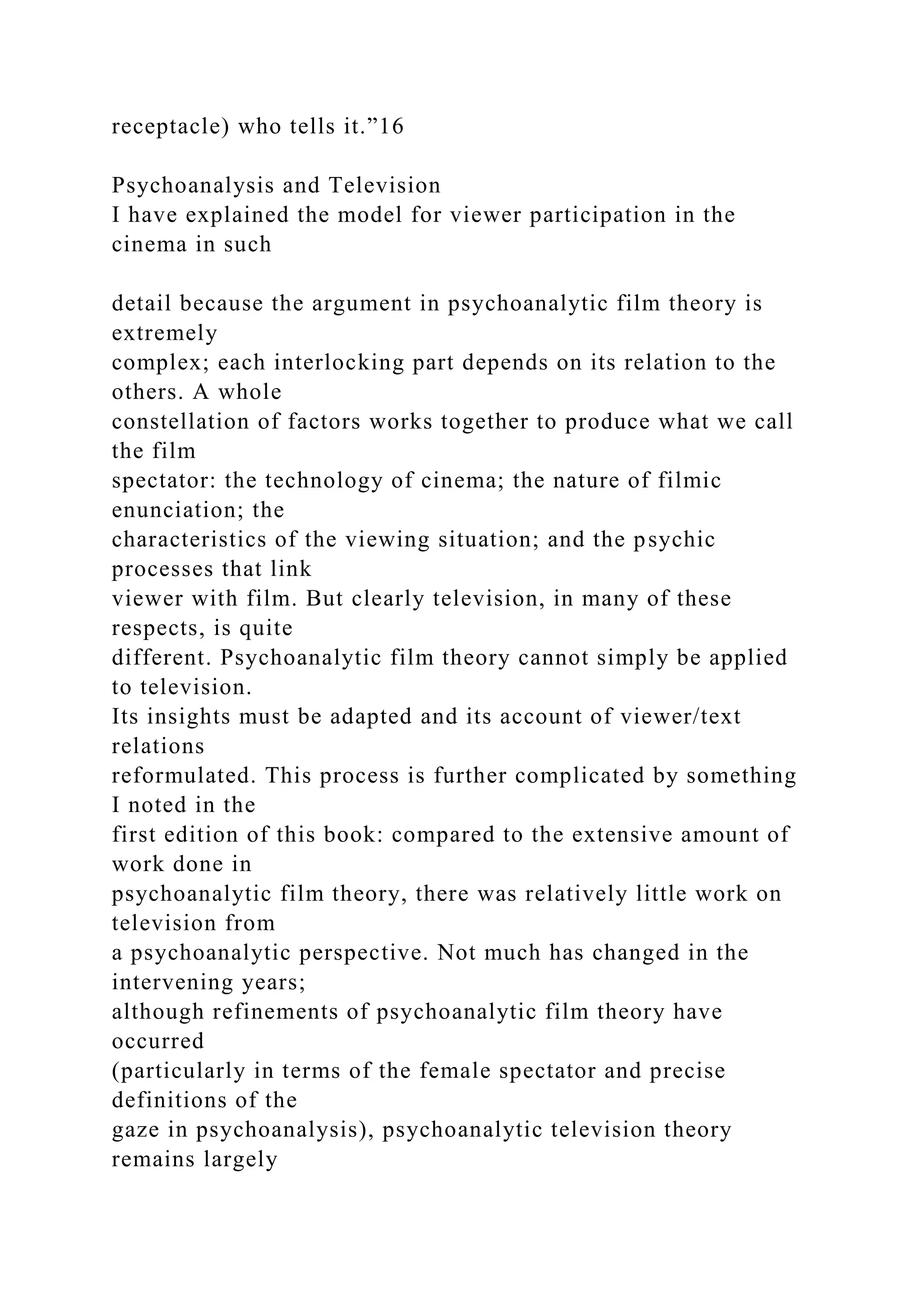
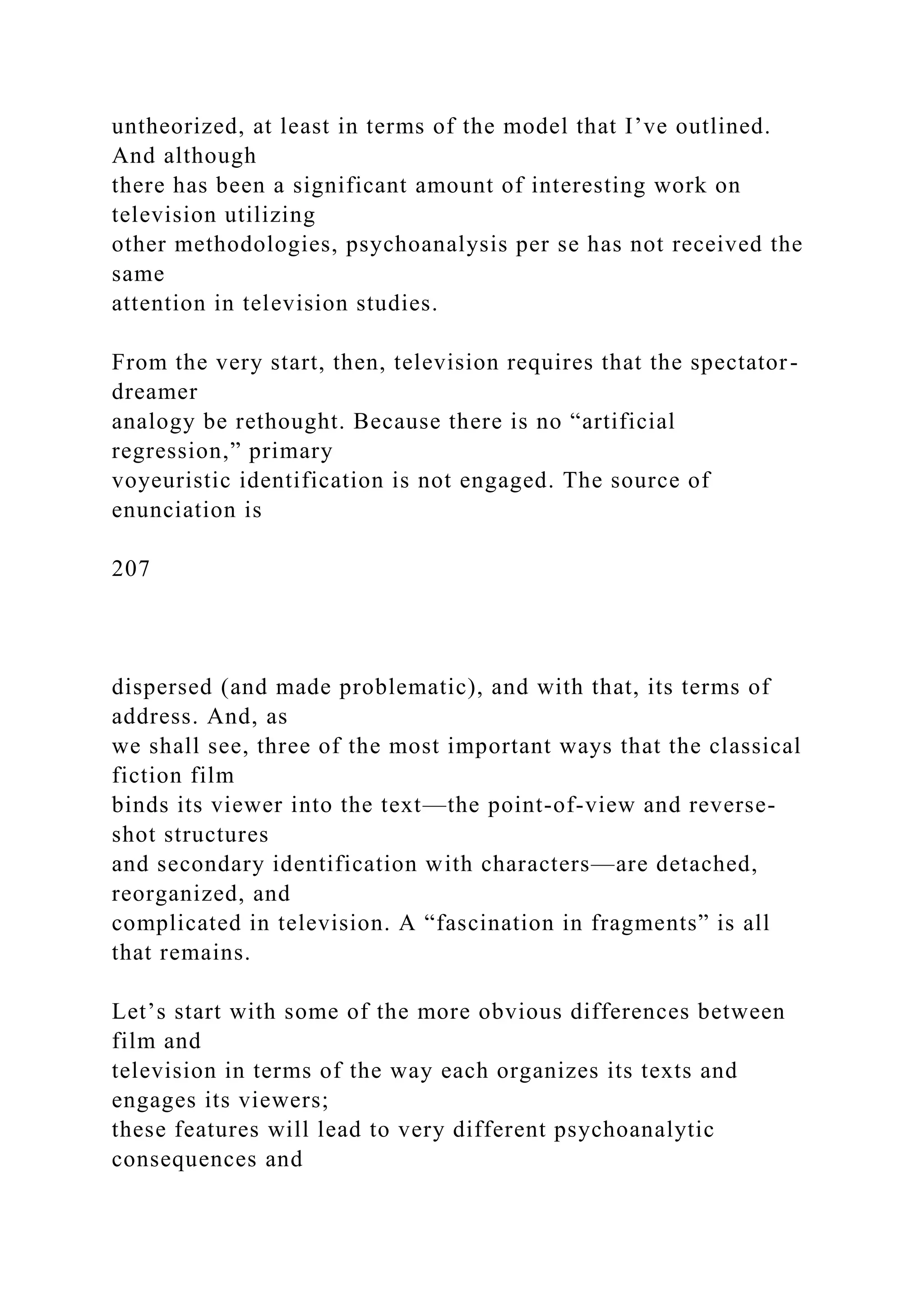
![effects. Films are seen in large, silent, darkened theaters, where
intense light
beams are projected from behind toward luminous surfaces in
front. There is
an enforced and anonymous collectivity of the audience
because, for any
screening, all viewers are physically present at the same time in
the relatively
enclosed space of the theater. In contrast to this cocoonlike,
enveloping
situation is the fragmentary, dispersed, and varied nature of
television
reception. The darkness is dissolved, the anonymity removed.
As Roland
Barthes has pointed out (in considering television to be “the
opposite
experience” of cinema), the site of television reception is the
home: “[T]he
space is familiar, organized (by furniture and familiar objects),
tamed. . . .
Television condemns us to the Family, whose household utensil
it has
become.”17
Cinema depends on the sustained and concentrated gaze of the
spectator
and the continuous, uninterrupted unfolding of its stories on the
screen.
Television, on the other hand, merely requires the glance of the
viewer.
Whereas the aura of cinema spectatorship produces hypnotic
fascination, the
atmosphere of television viewing enables just the opposite—
because the
lights are more likely to be on, one can get up and return, do
several things at](https://image.slidesharecdn.com/channelsofdiscoursereassembled2channelsof-221018173716-6fc0655a/75/Channels-of-Discourse-Reassembled2Channels-of-docx-459-2048.jpg)
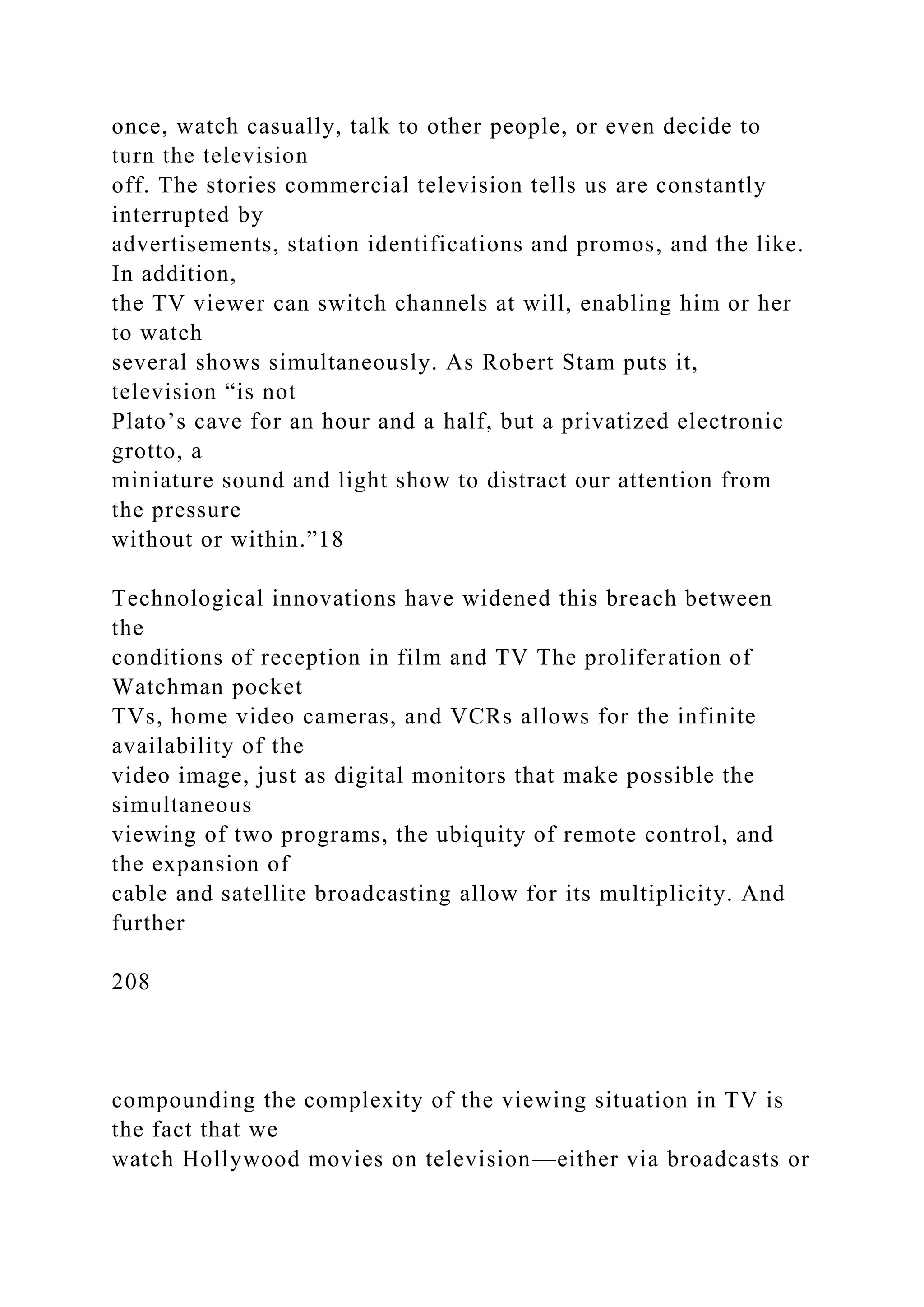
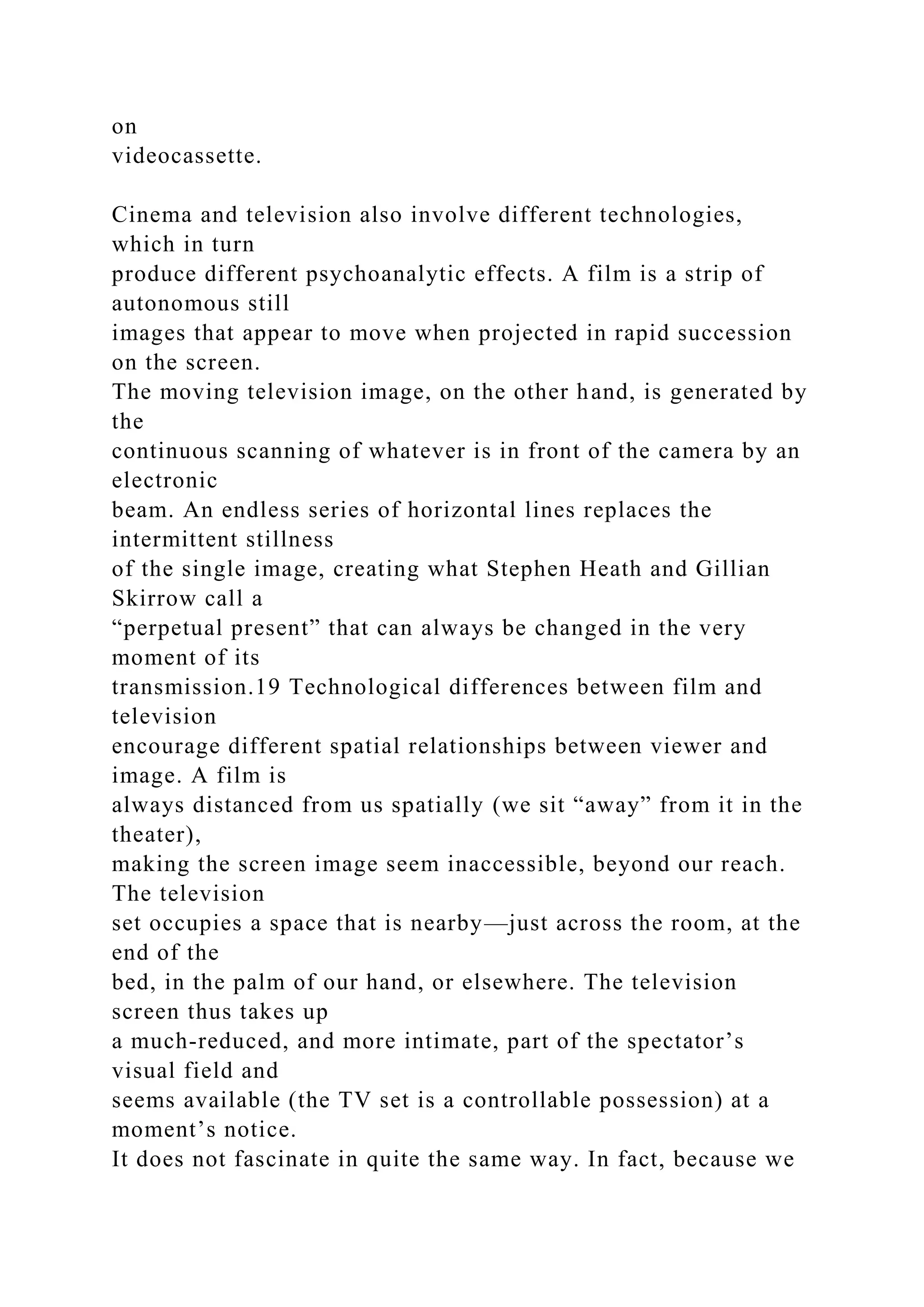
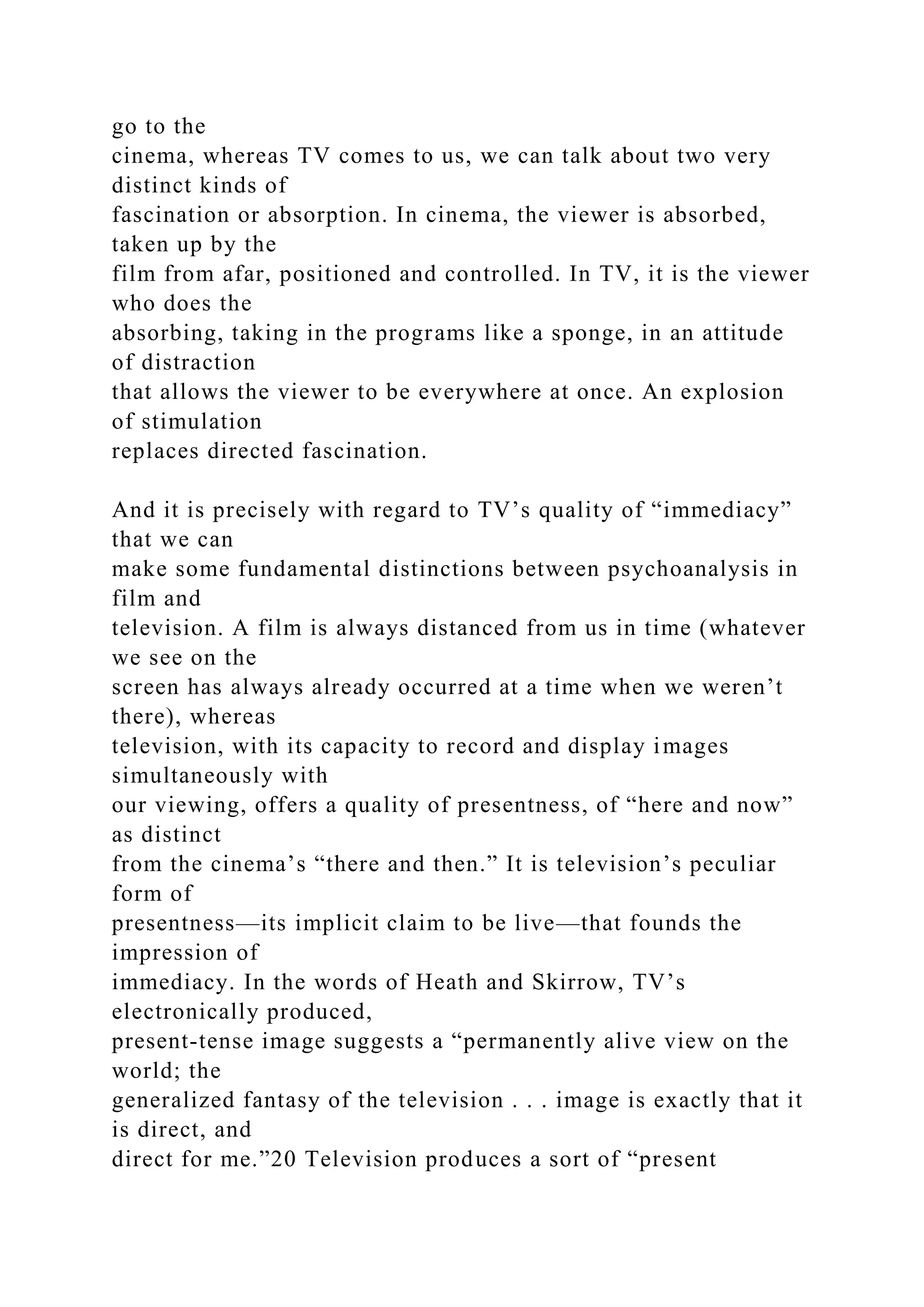
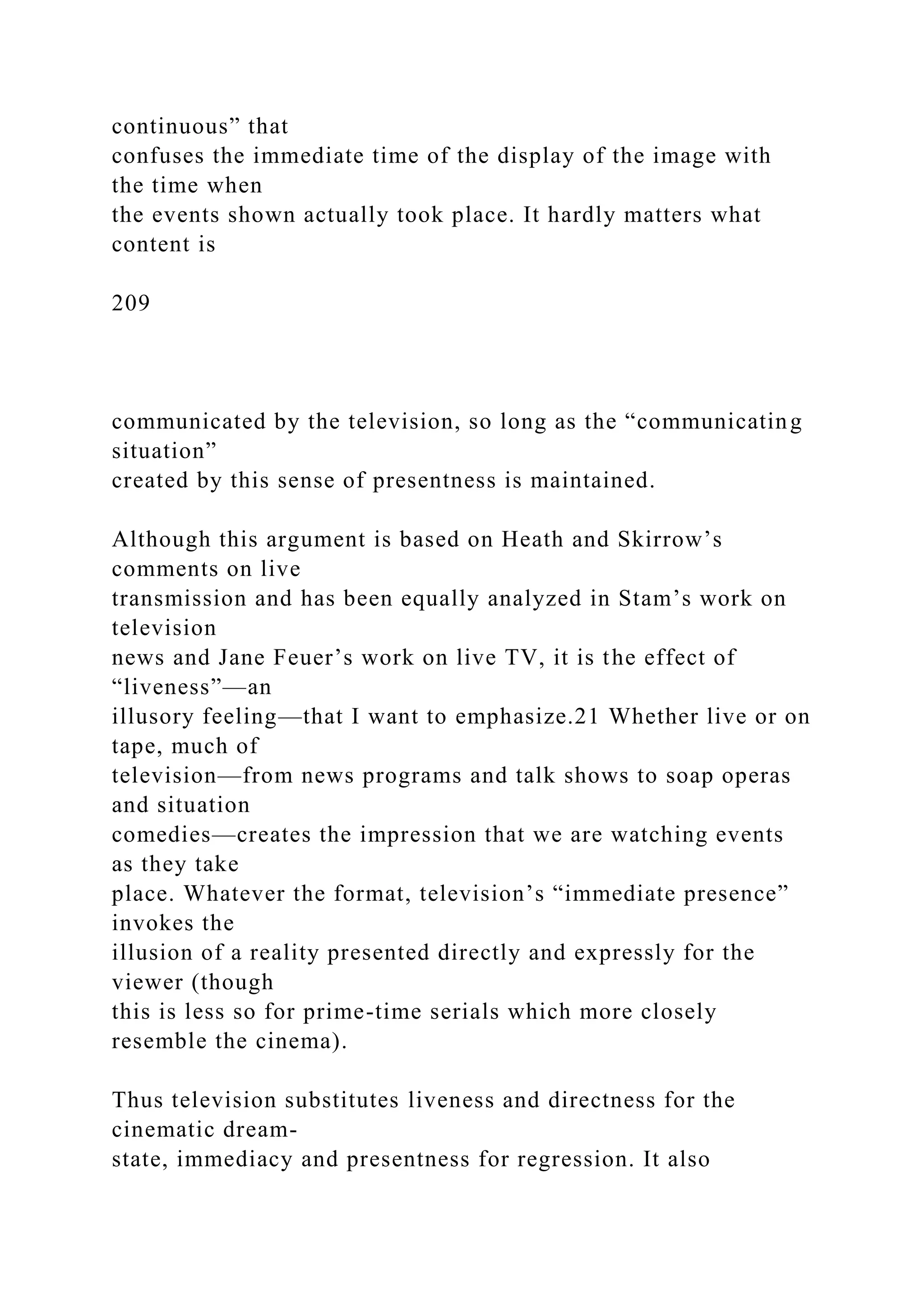
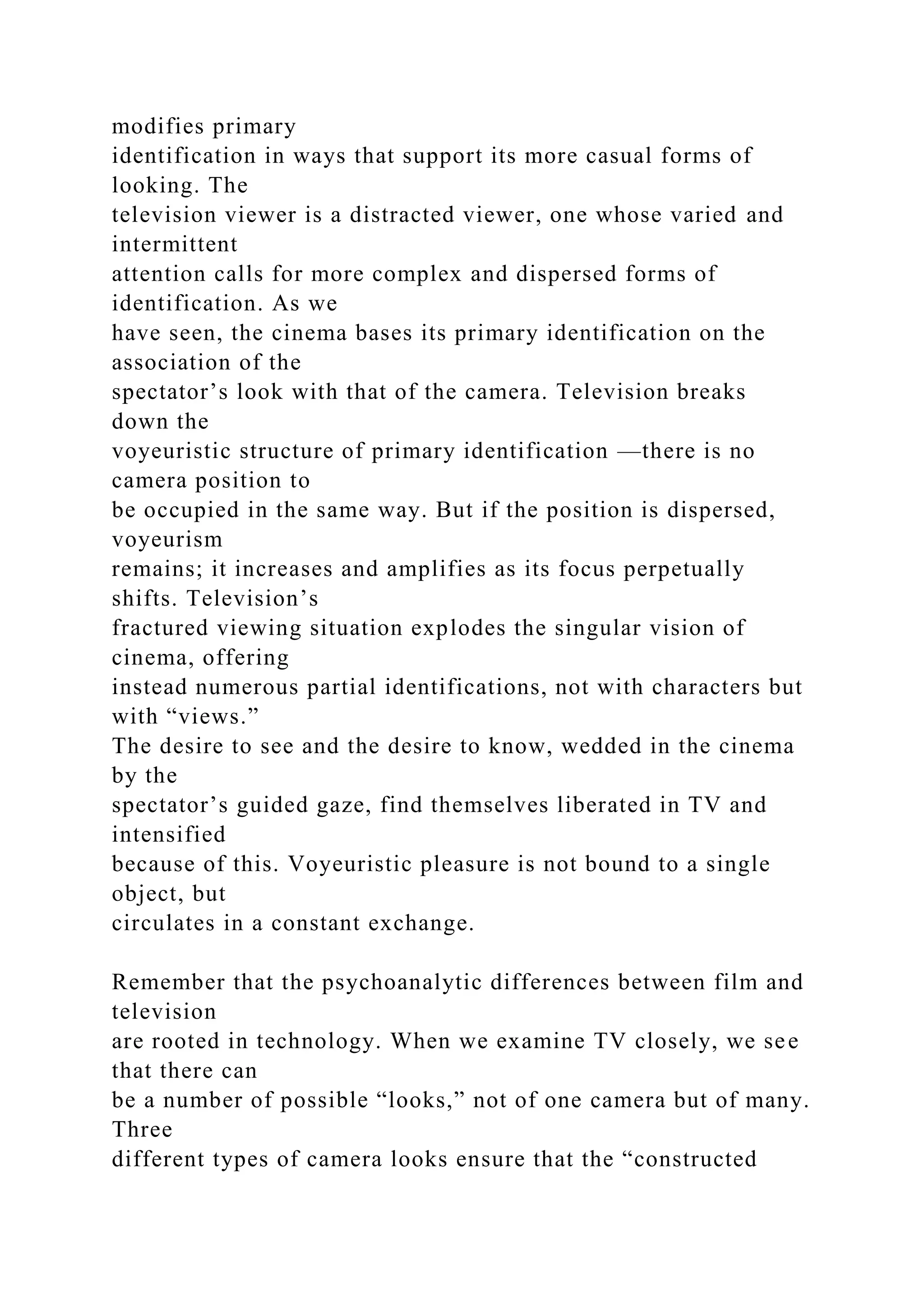
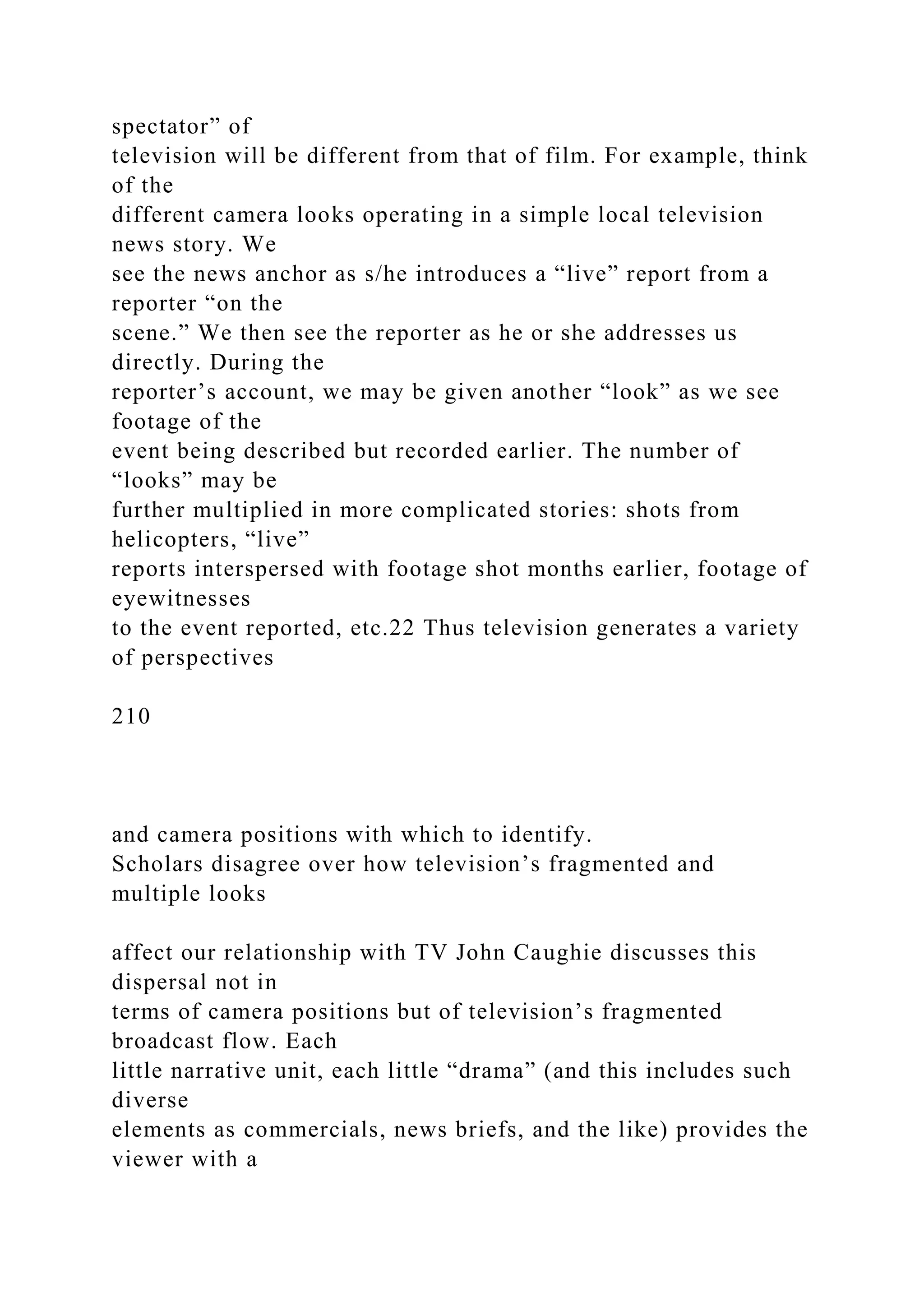

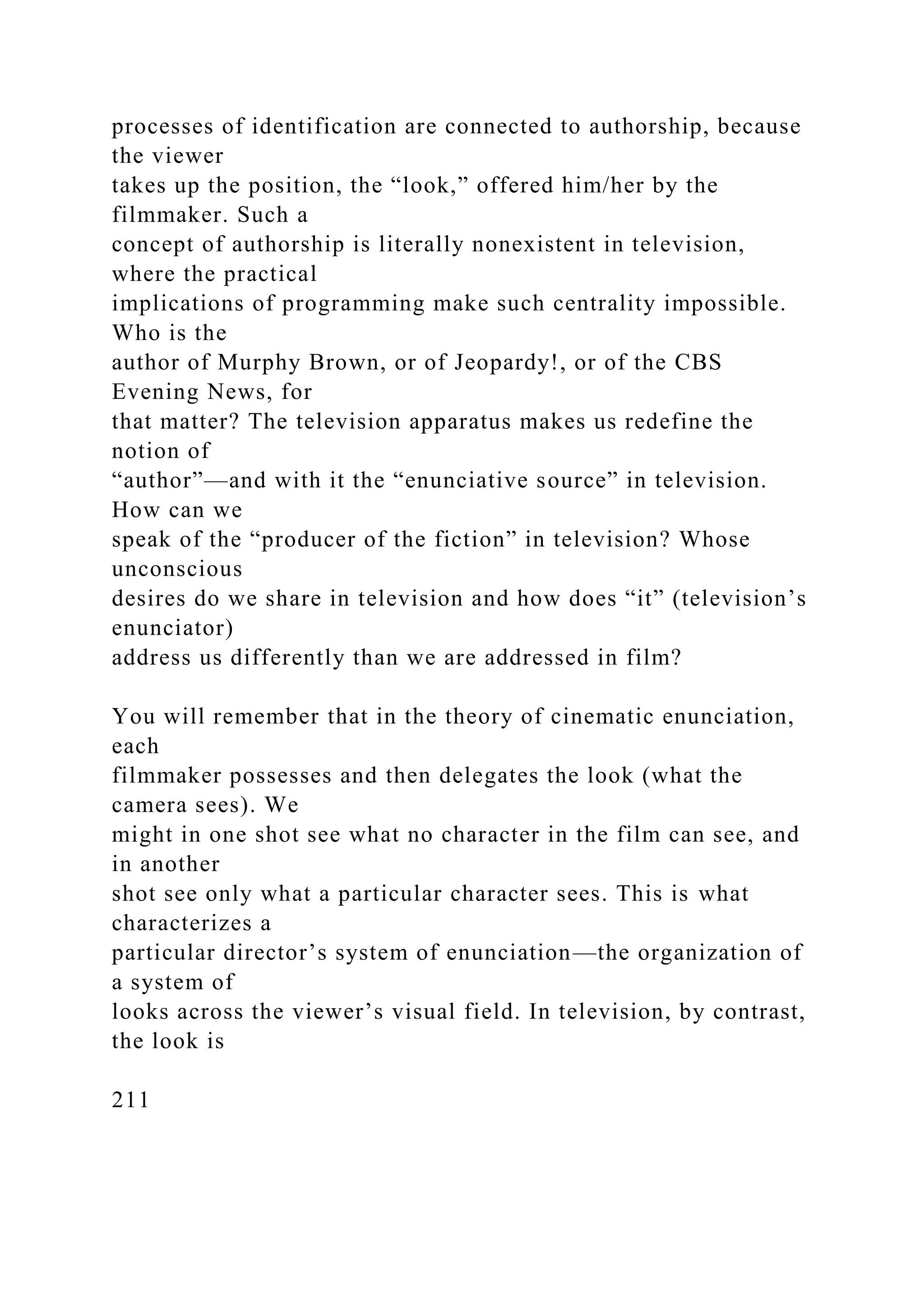
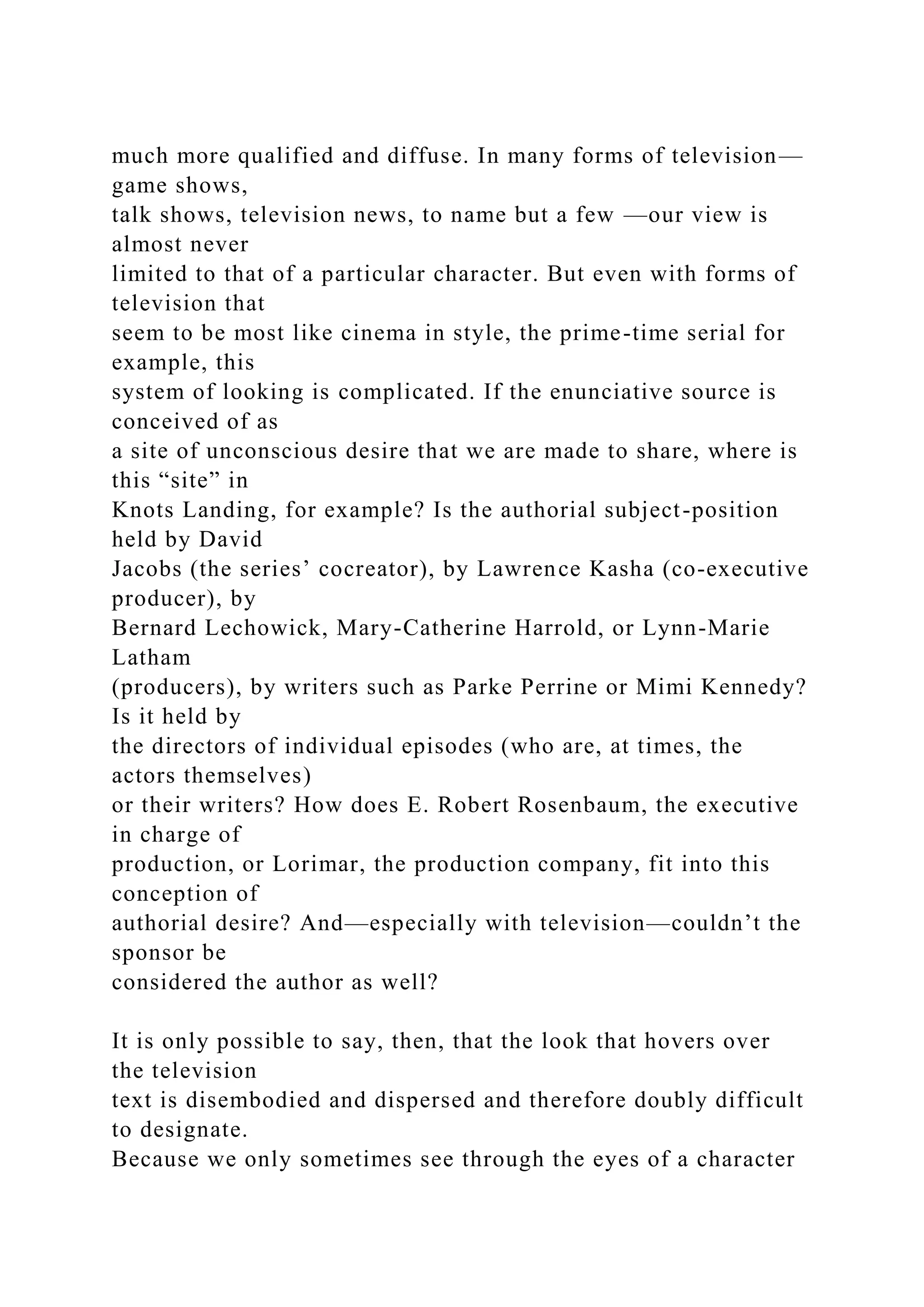
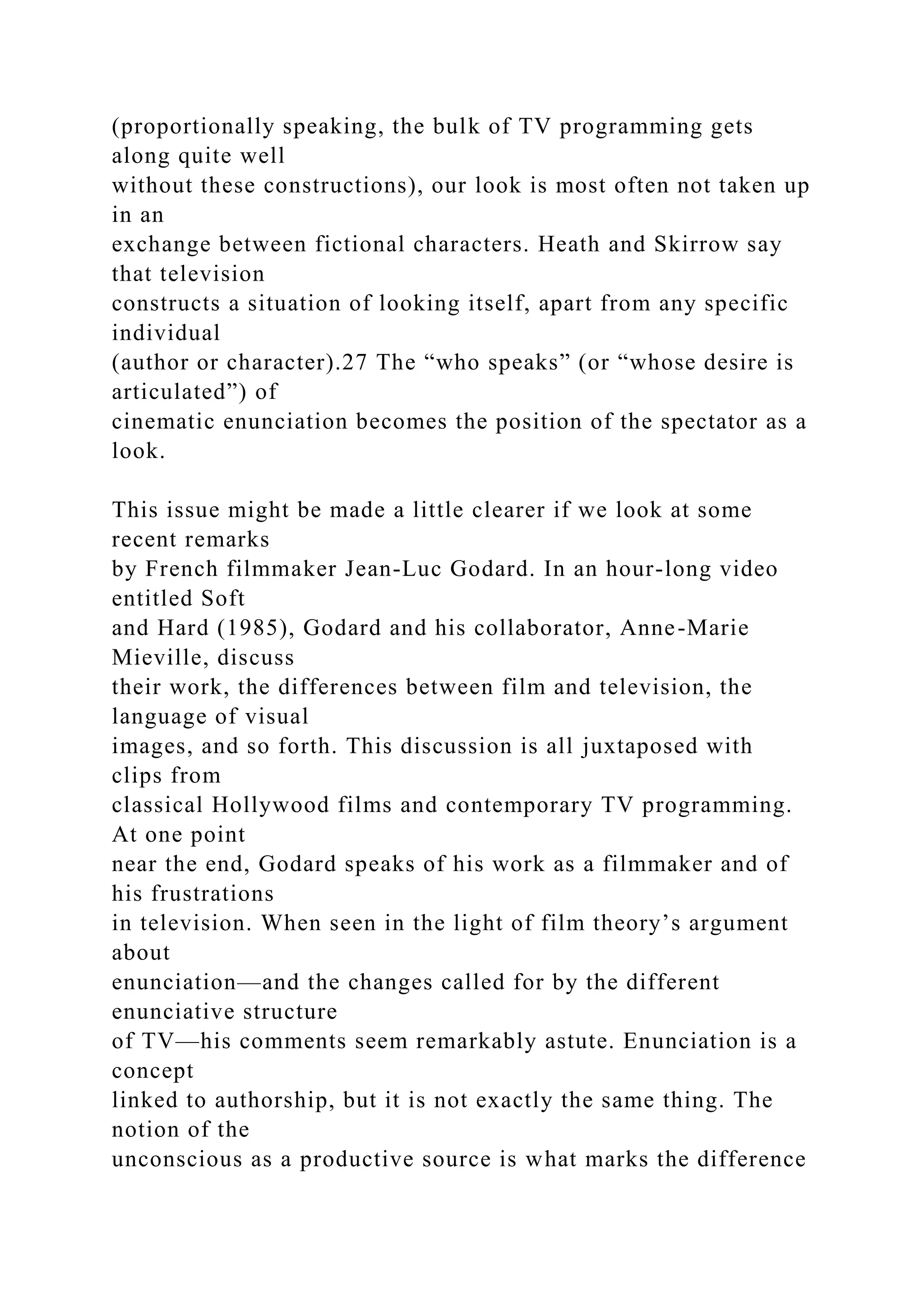
![between the
two. Godard says:
When one says “I,” you can see that. . . “I” projecting itself
towards others,
towards the world. . . . The cinema has shown that quite clearly,
more than all
212
other forms. . . . The “I” could be projected, enlarged, and could
get lost. But
its idea could be traced back. Television, on the other hand, can
project
nothing but us [elle nous projette], so you no longer know
where the subject
is. In cinema, in the very idea of the large screen, like in the
myth of Plato’s
cave, [we have] the idea of “project,” “projection,” which in
French, at least,
have the same roots. Project, projection, subject. With TV, on
the other hand,
you feel that you take it in [on la regoit]—you’re subjugated by
it, so to speak.
You become its subject. . . like the subject of a king.28
Another difference between film and television that is partly
related to this
issue of enunciation has to do with the television “text.” It
involves both the
form and content of the “classical cinema,” whose aim is the
construction of a
fictional world in which the illusion of reality is provided by
the fluid](https://image.slidesharecdn.com/channelsofdiscoursereassembled2channelsof-221018173716-6fc0655a/75/Channels-of-Discourse-Reassembled2Channels-of-docx-470-2048.jpg)
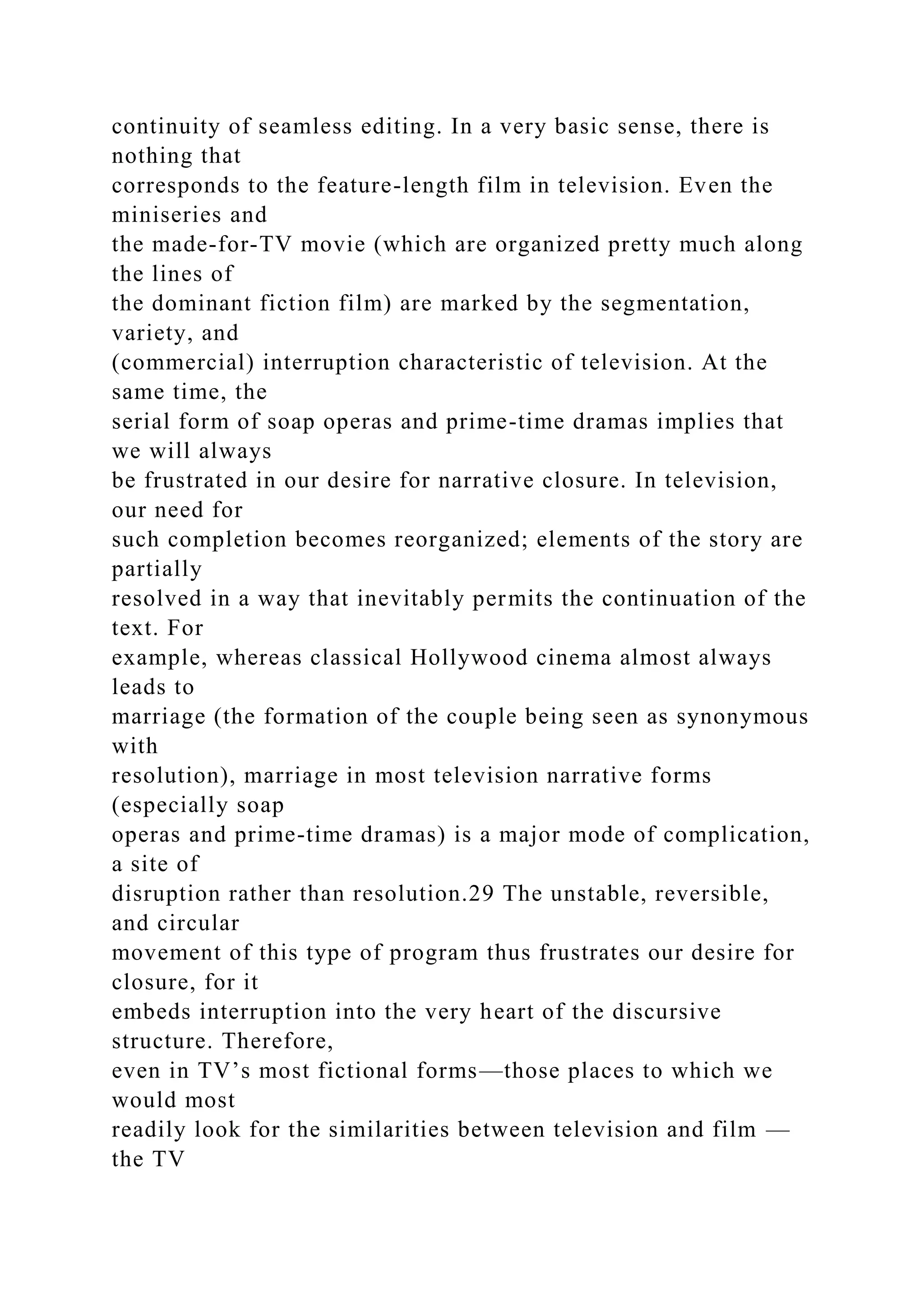
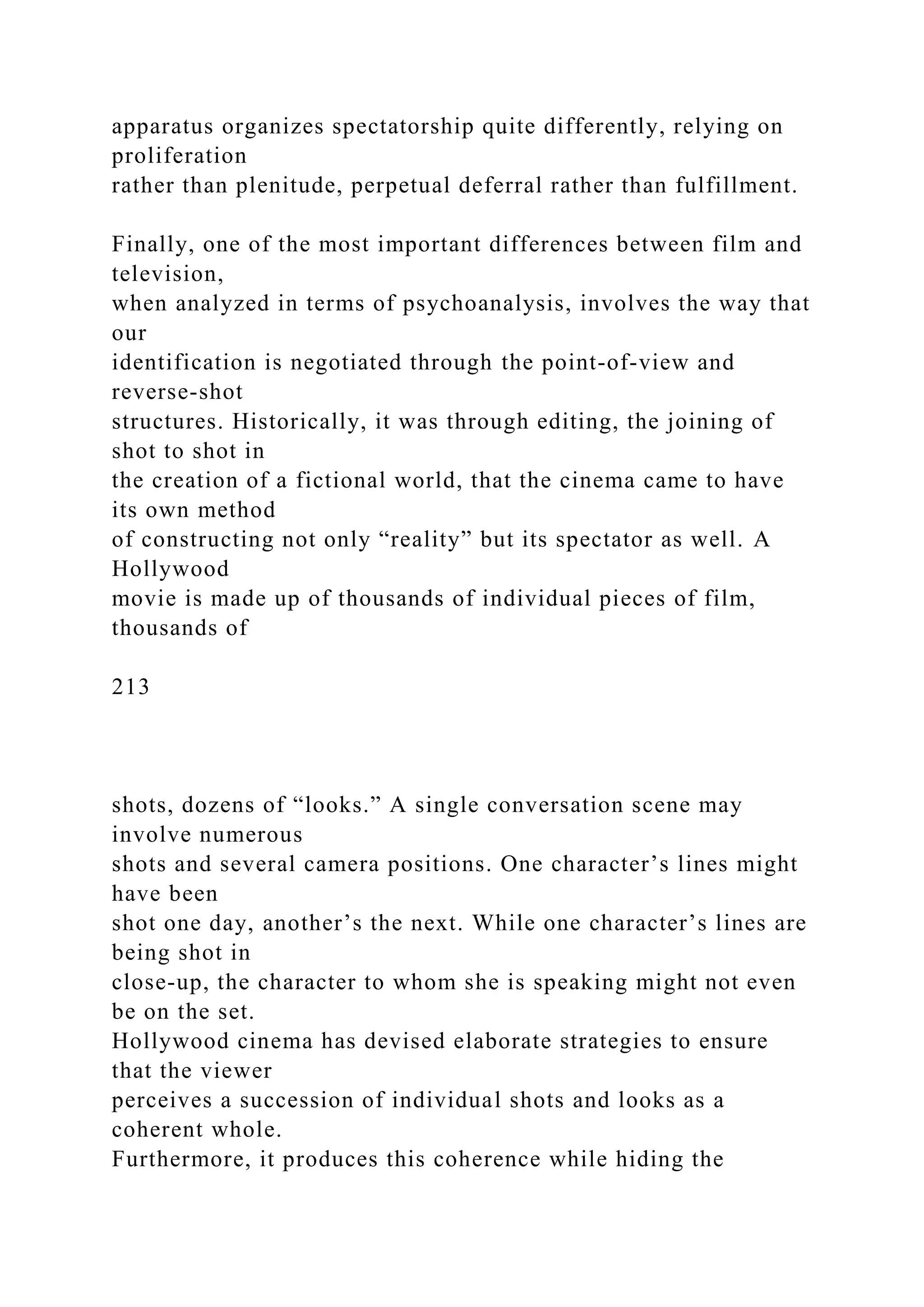

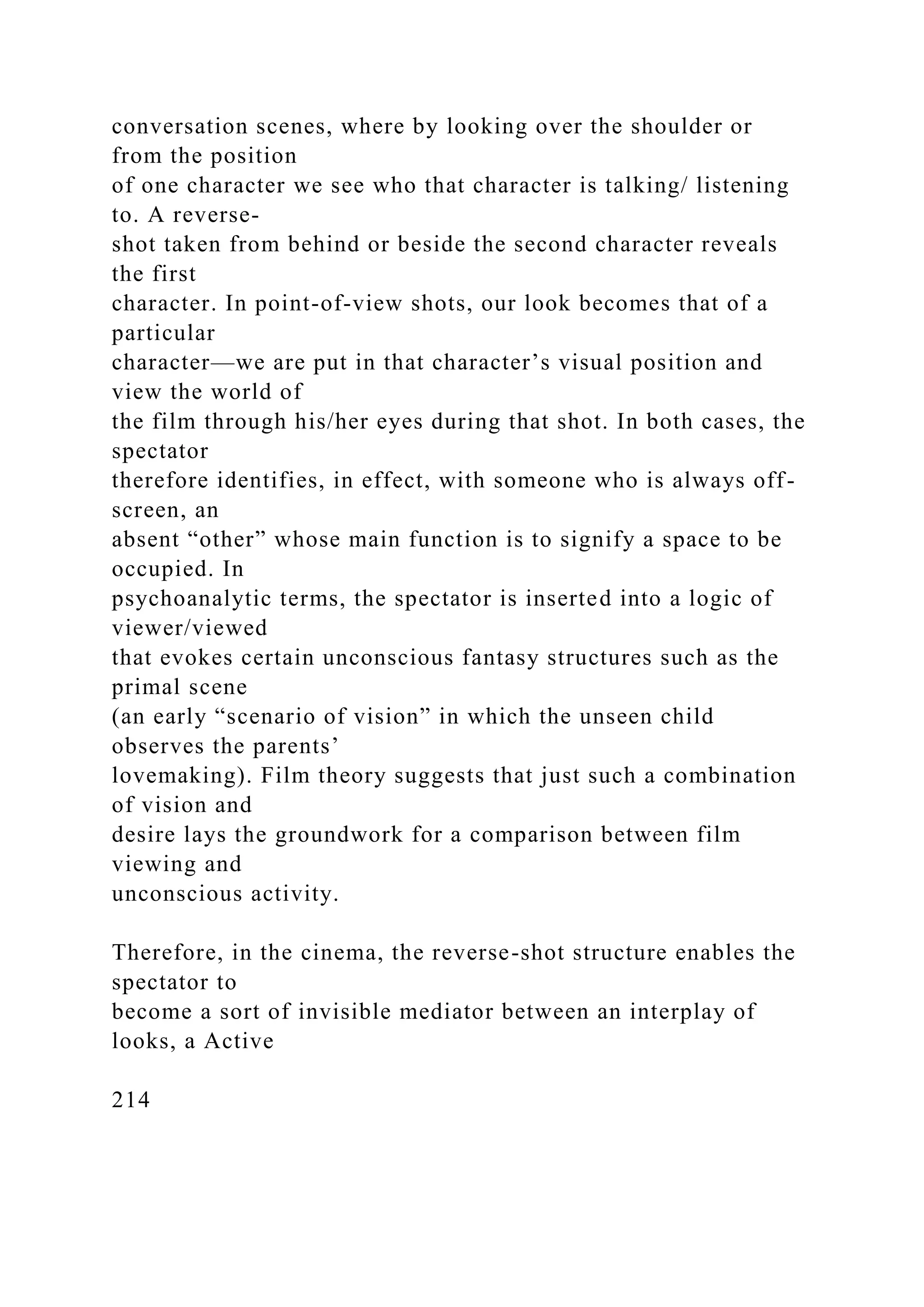
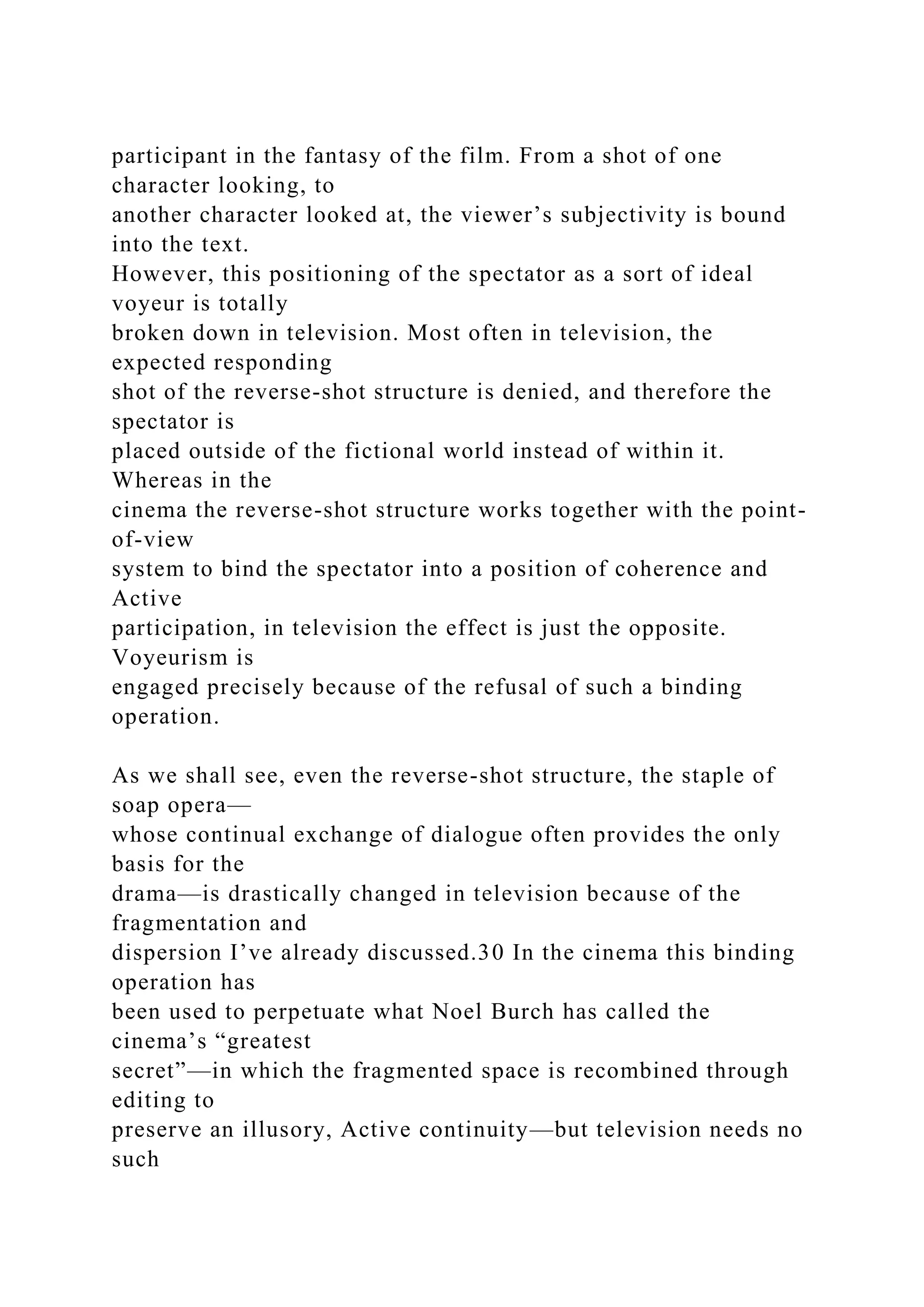

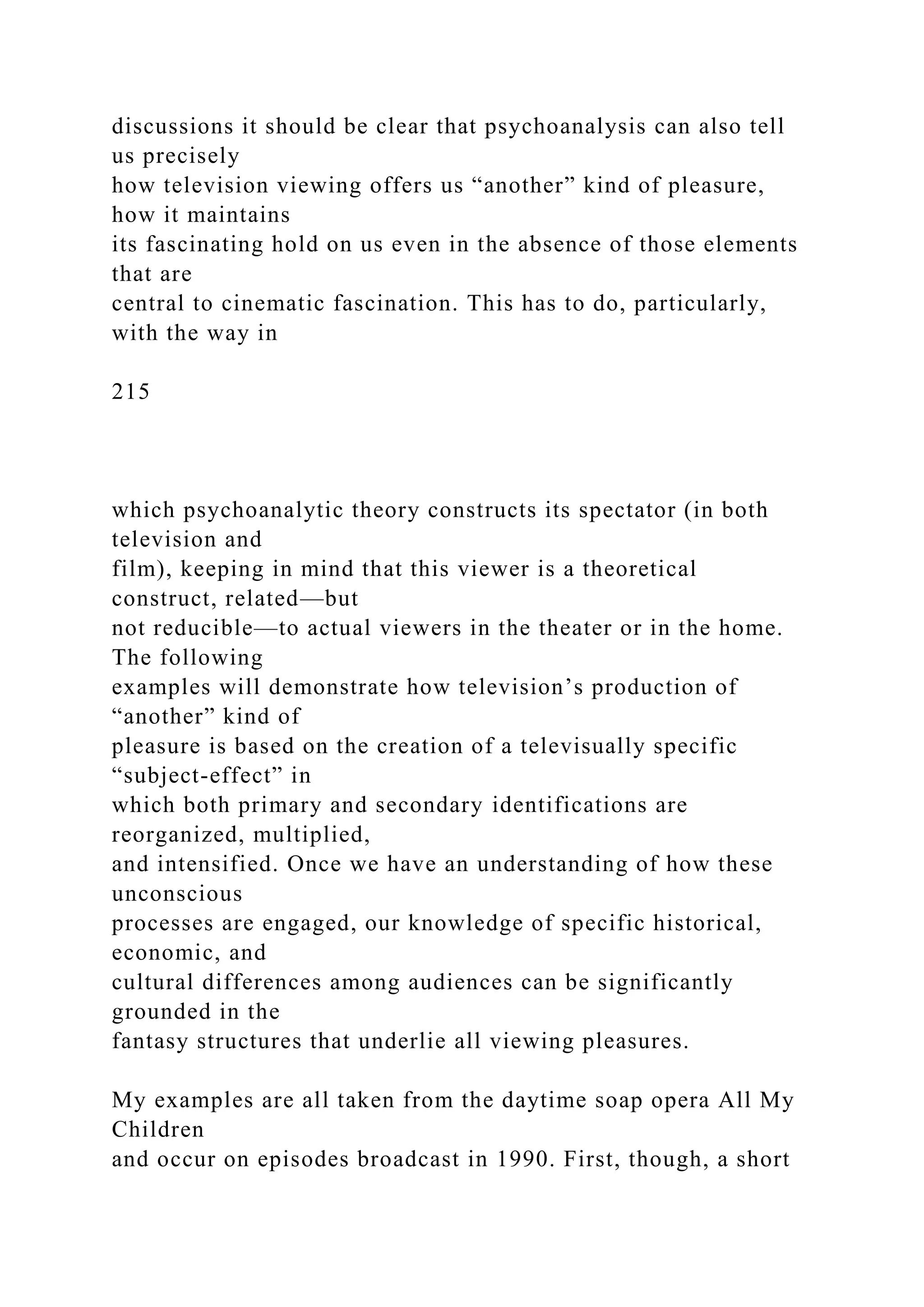
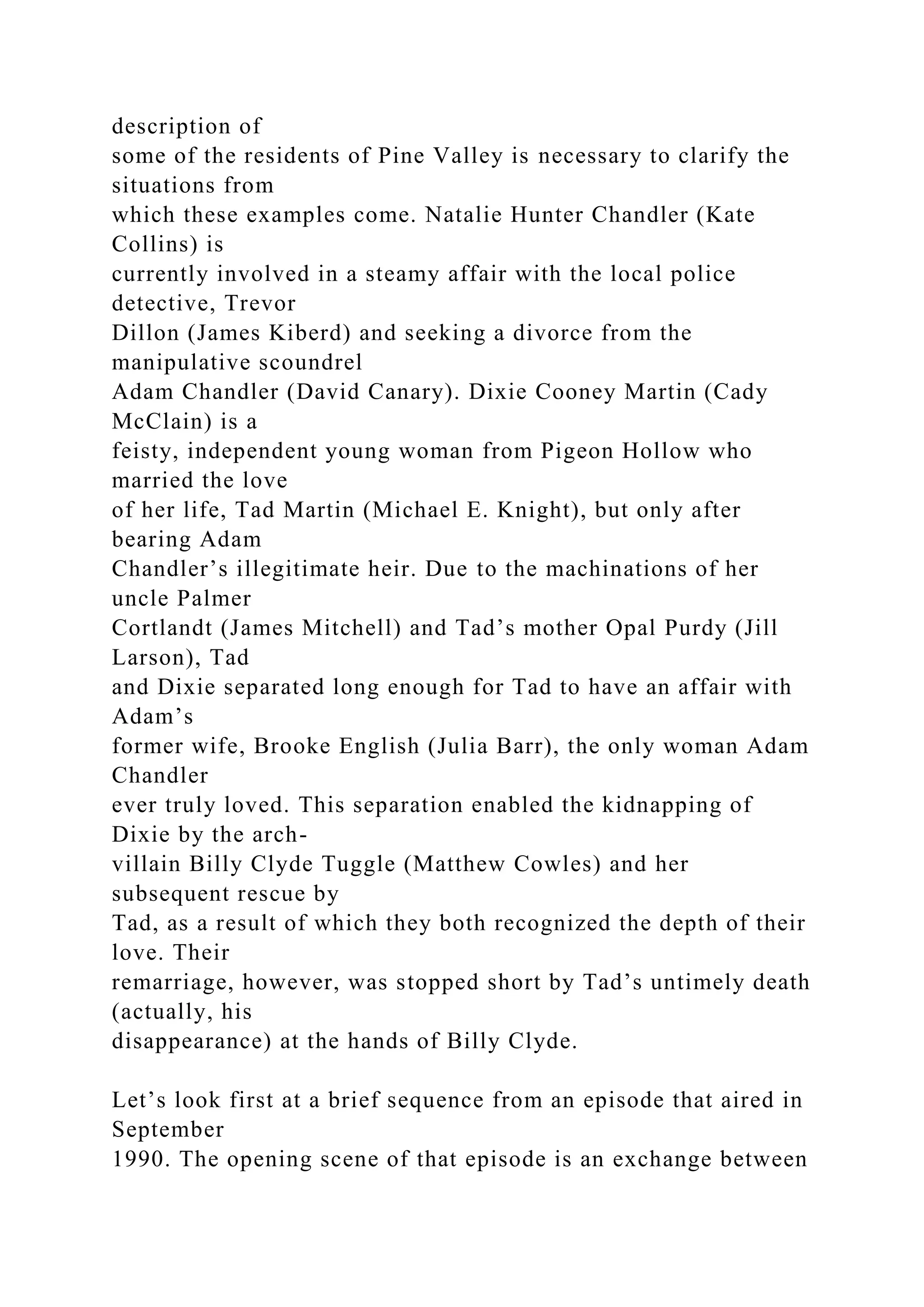
![Trevor,
Natalie, and Adam. Natalie, having suppressed her feelings for
Trevor, has
just made a marriage of (financial) convenience with Adam;
Trevor is trying
to convince her to follow her heart, get an annulment, and marry
him—the
only man who can make her “happier than [she’s] ever been in
[her] whole
life.” The scene is interrupted by the AMC title sequence,
dividing the action
into two large segments. The first section lasts 48 seconds and
is comprised of
15 shots, basically alternating between Trevor and Natalie (for
12 shots), then
Adam (arriving in the twelfth shot) alternating with Trevor &
Natalie
(together in the alternating shot). Trevor pleads with Natalie
(“We can be
married. Just say the word.”) until Adam bursts in (“All right,
Trevor. I want
216
you out of here. Now!”), and the segment ends on a zoom-in to
Natalie in
close-up (she spins around wide-eyed) while the first strains of
the AMC
theme song beat time. The section following the title sequence
is much longer
(1 minute and 14 seconds), but has roughly the same number of
shots (17). It
depicts Trevor and Adam arguing in the background, while in
the foreground](https://image.slidesharecdn.com/channelsofdiscoursereassembled2channelsof-221018173716-6fc0655a/75/Channels-of-Discourse-Reassembled2Channels-of-docx-479-2048.jpg)
![Natalie listens, increasingly frustrated. Finally, she turns and
tells them both
to shut up; then, saying that she’s made up her mind, she looks
ambiguous,
expectant, in close-up as the music punctuates the suspension of
the sequence.
The sixth shot, in which Natalie listens in the foreground to the
two men
arguing behind her, is the longest shot of the segment and the
most
“theatrical” (in that it is “staged” to permit us to watch
Natalie’s expression
while the two men argue). Yet it defies its theatricality by
having the camera
move, almost imperceptibly, closer in to Natalie as she listens.
This allows the
camera to amplify the subtle conflict playing across Natalie’s
face and
demonstrates, in a very striking way, the centrality of the close-
up to soap
opera style. As Jeremy Butler points out, “If soap opera sound
is structured
around dialogue, the image is predicated upon the importance of
the close-up .
. . [which] privileges facial signs of performance.”32 In fact,
the entire
sequence just discussed could be described as “the drama of
Natalie’s face,”
as minimal dialogue (for her) and maximum facial expression
intensify the
narrative significance of the moment.
But most important, for our purposes, is the way in which this
sequence](https://image.slidesharecdn.com/channelsofdiscoursereassembled2channelsof-221018173716-6fc0655a/75/Channels-of-Discourse-Reassembled2Channels-of-docx-480-2048.jpg)
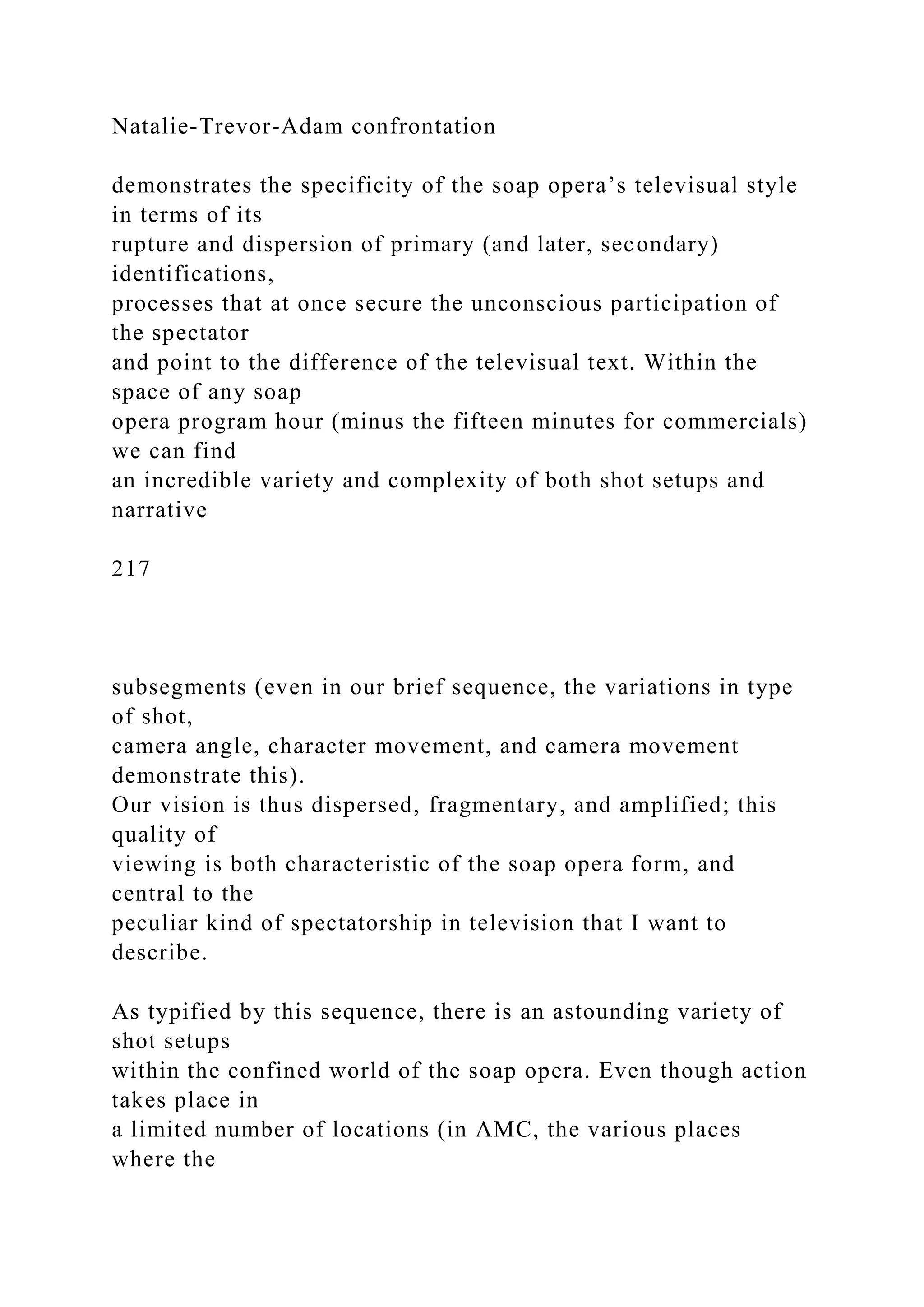
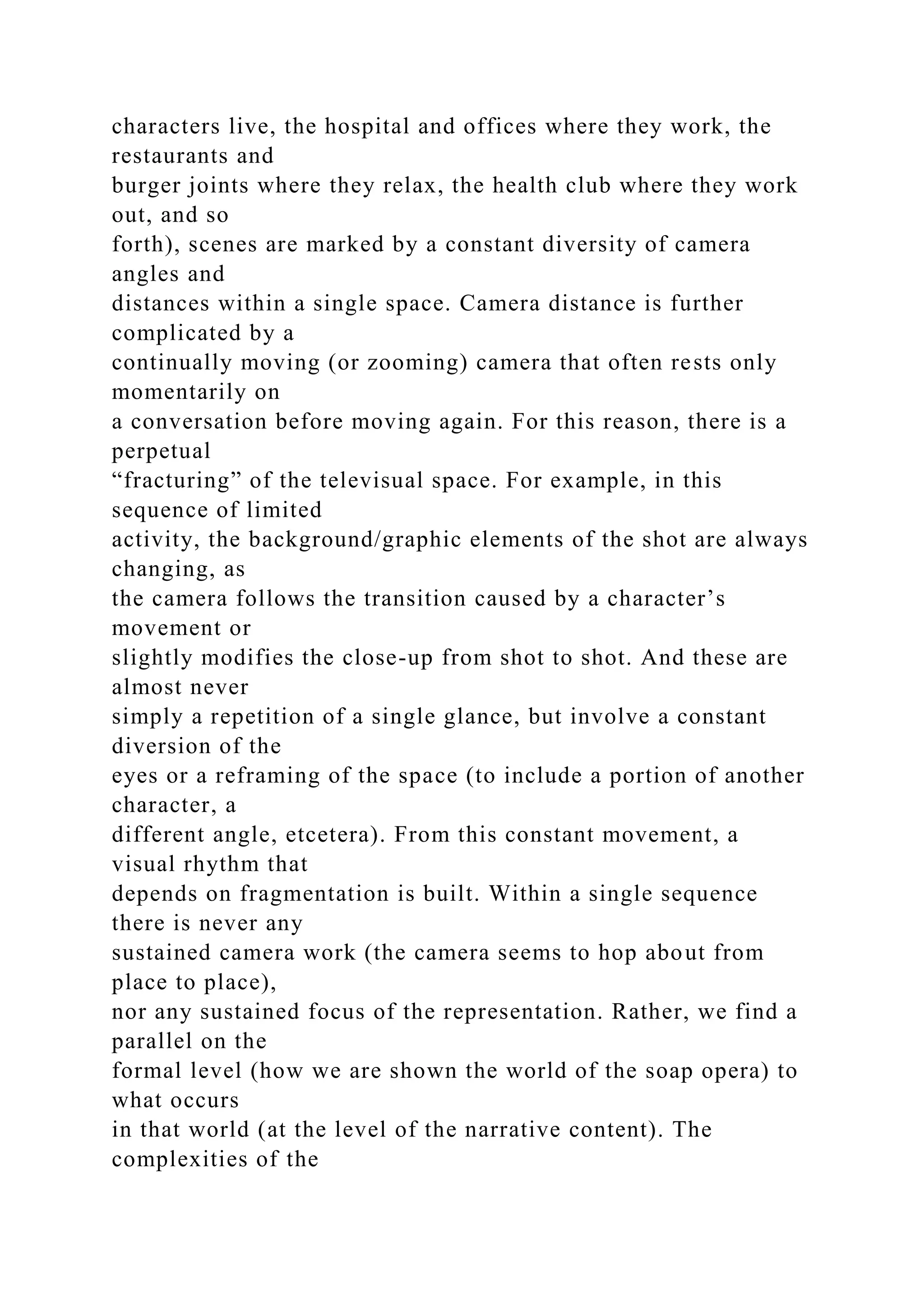
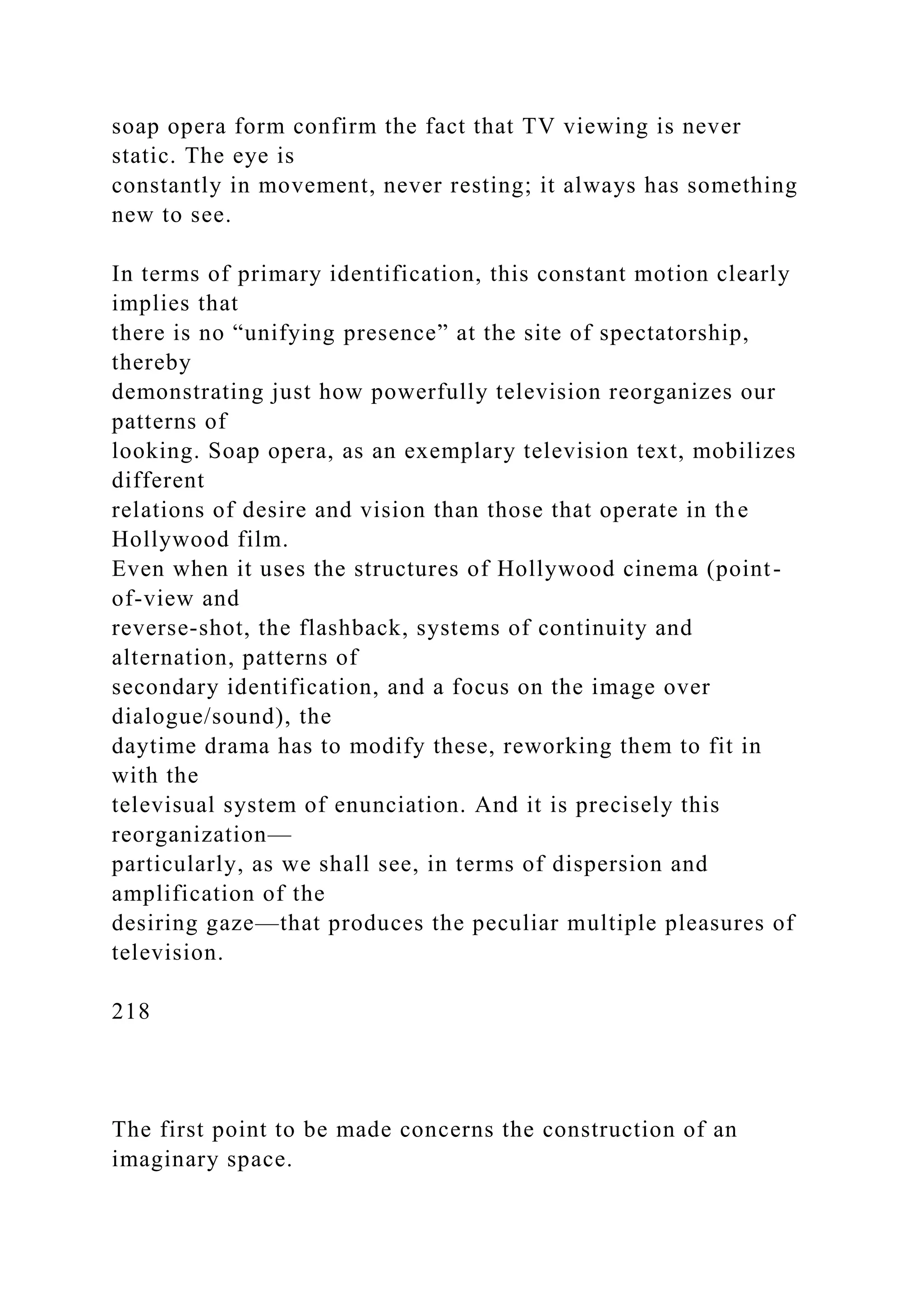

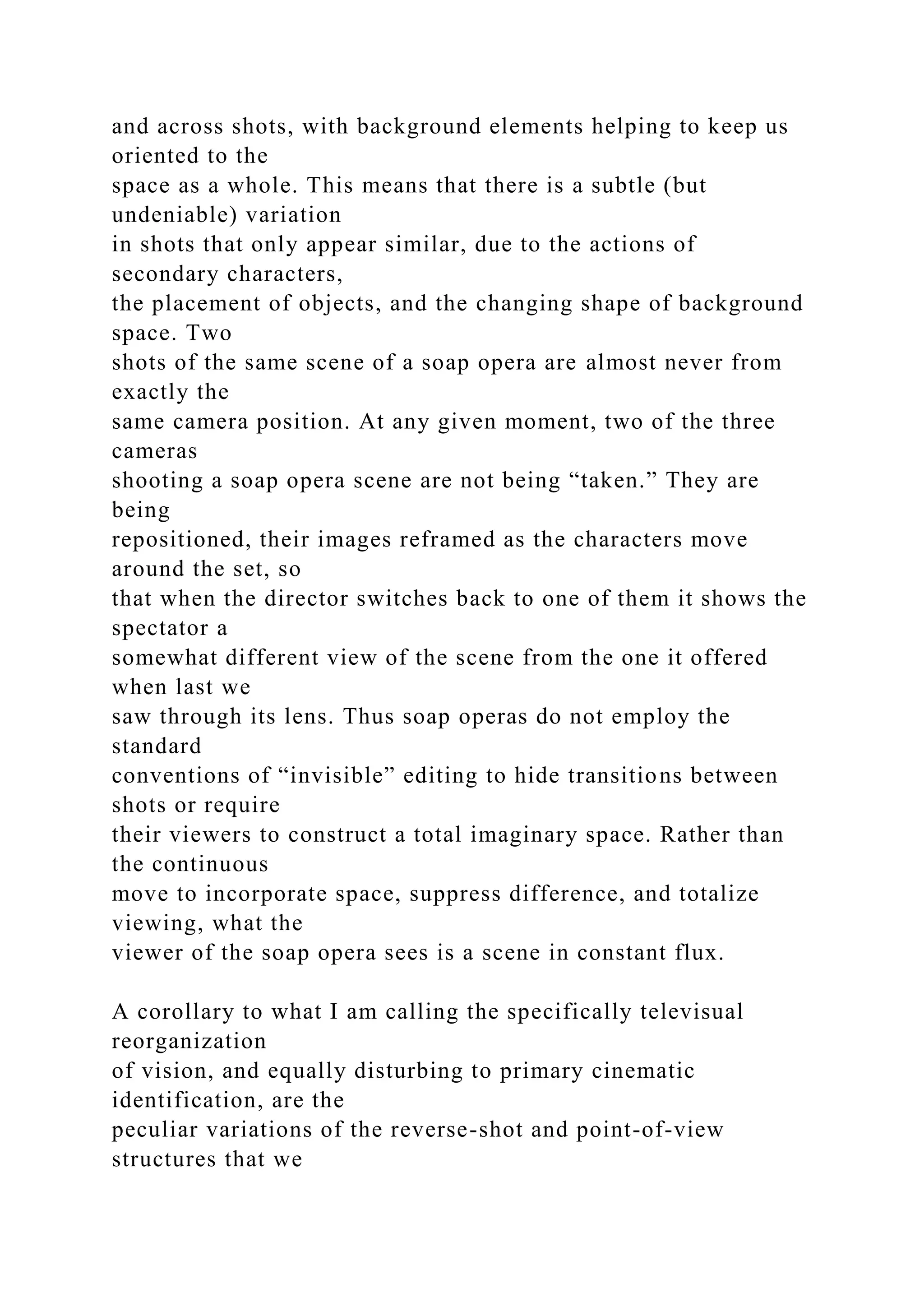
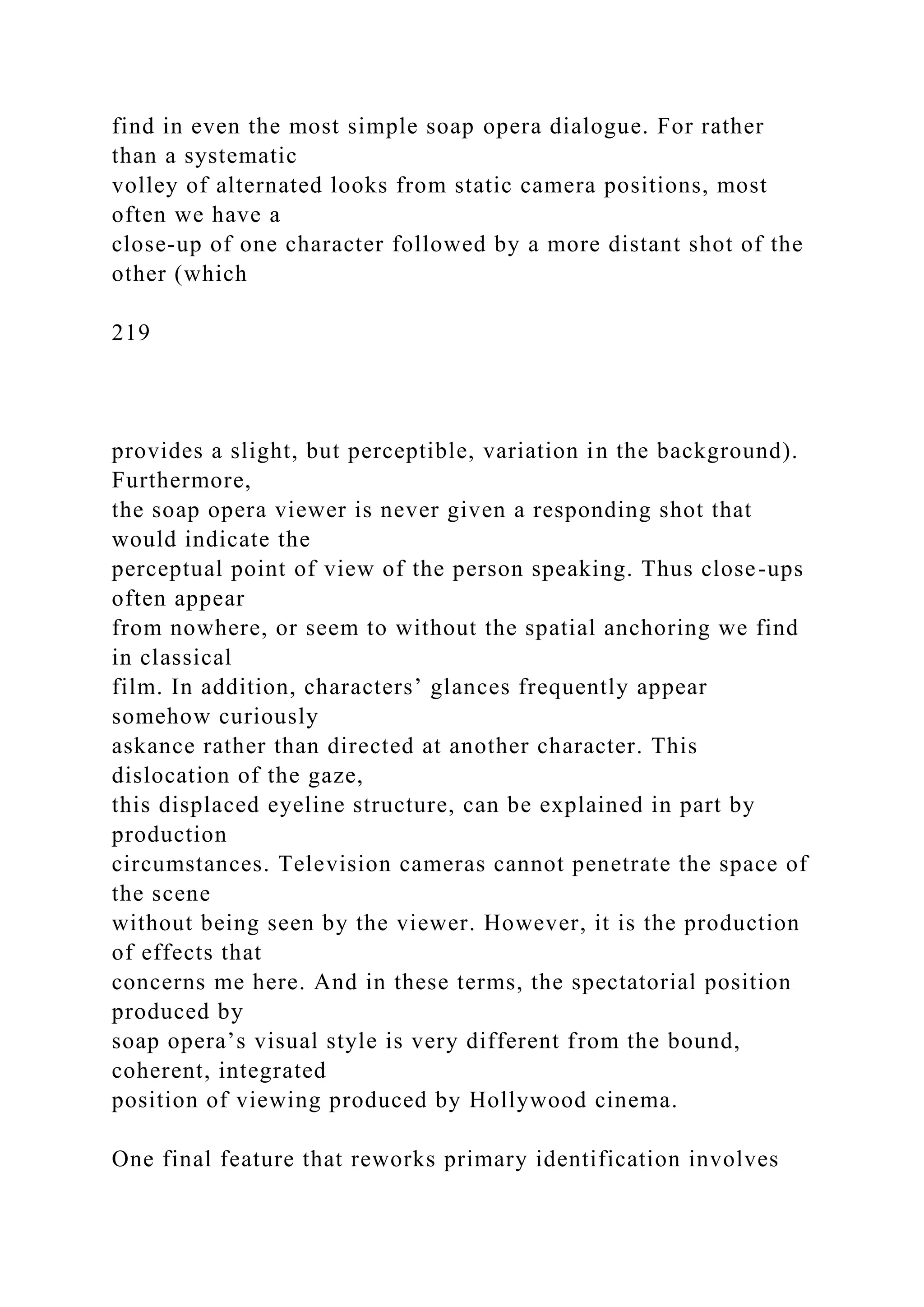

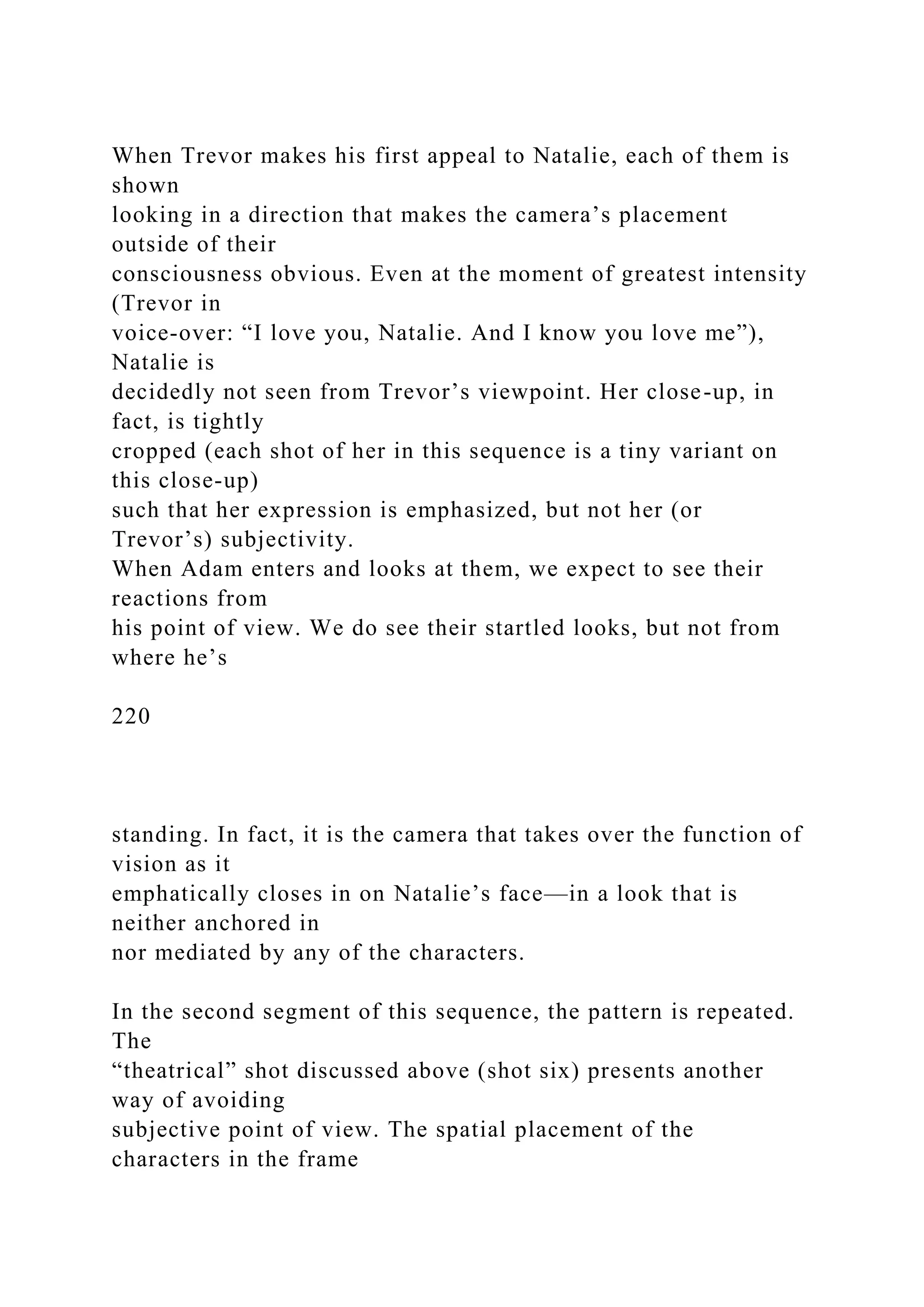
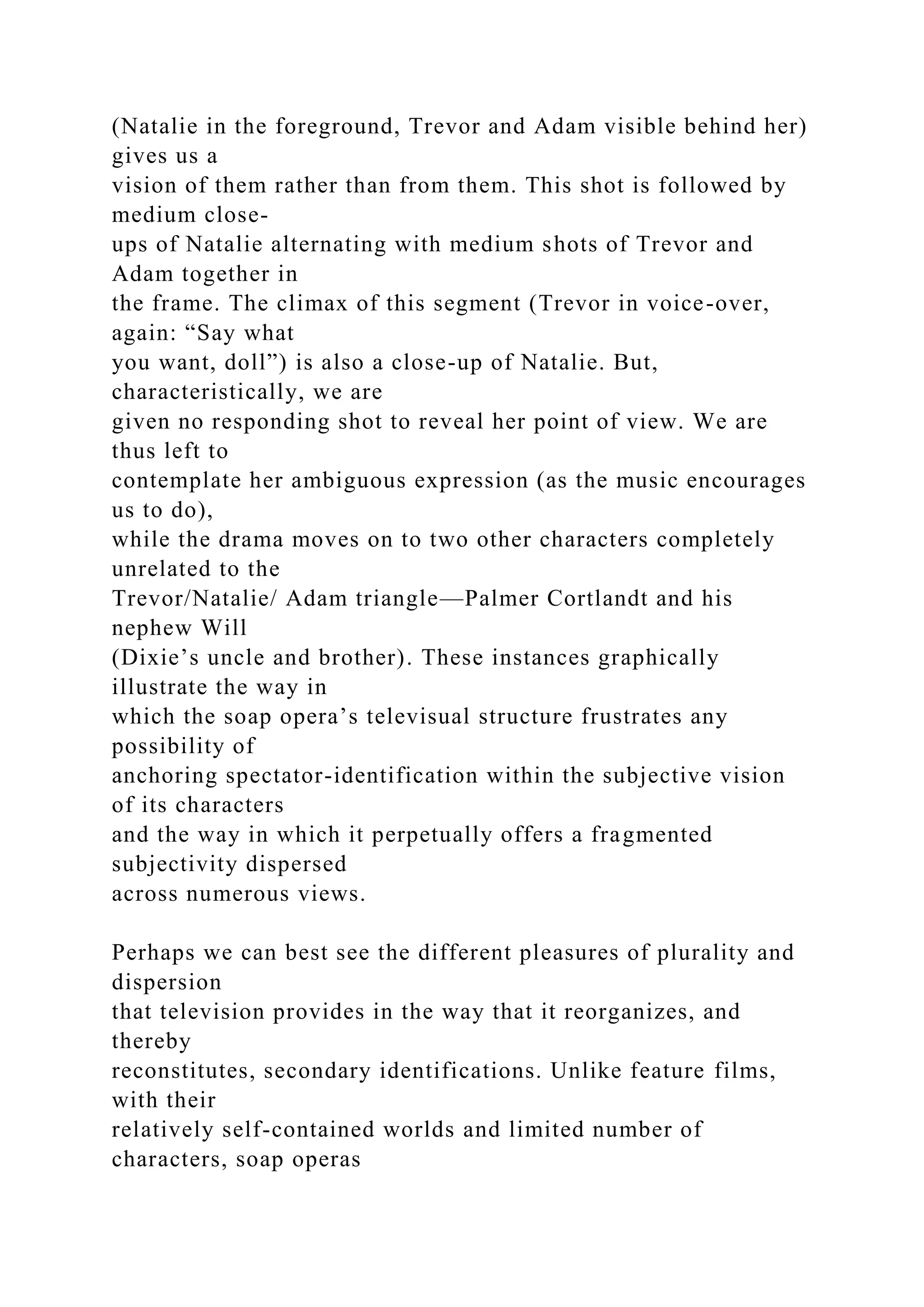
![typically present large communities of regularly appearing
characters. In fact,
as David Jacobs, cocreator of Knots Landing, contends, “The
story is just a
clothesline to hang the relationships on. It’s not about the
story—or plot—but
around the relationships between the characters [that the
interest develops].”34
And most critics who write about soaps agree. Emphasizing the
importance of
character interaction, Robert Allen asserts that our viewing
pleasure in the
soaps can be attributed as much to the relationships as to the
characters as
individuals.35 Jane Feuer relates this amplification to the
family, claiming that
the “implied spectator” for television is not the isolated
individual (as film
theory assumes), but rather a fully socialized family member.
She then
generalizes about the “familialised viewing subject” created by
the episodic
series and the continuing serial, showing how TV works to
break down any
barriers between the fictional world, the world of advertising,
and the actual
world of the viewing family.36 As Ann Kaplan notes in her
chapter, Tania
Modleski puts this “familialization” in a feminist context,
arguing that the
Utopian vision of the extended family generated by the soap
opera is a
221](https://image.slidesharecdn.com/channelsofdiscoursereassembled2channelsof-221018173716-6fc0655a/75/Channels-of-Discourse-Reassembled2Channels-of-docx-490-2048.jpg)
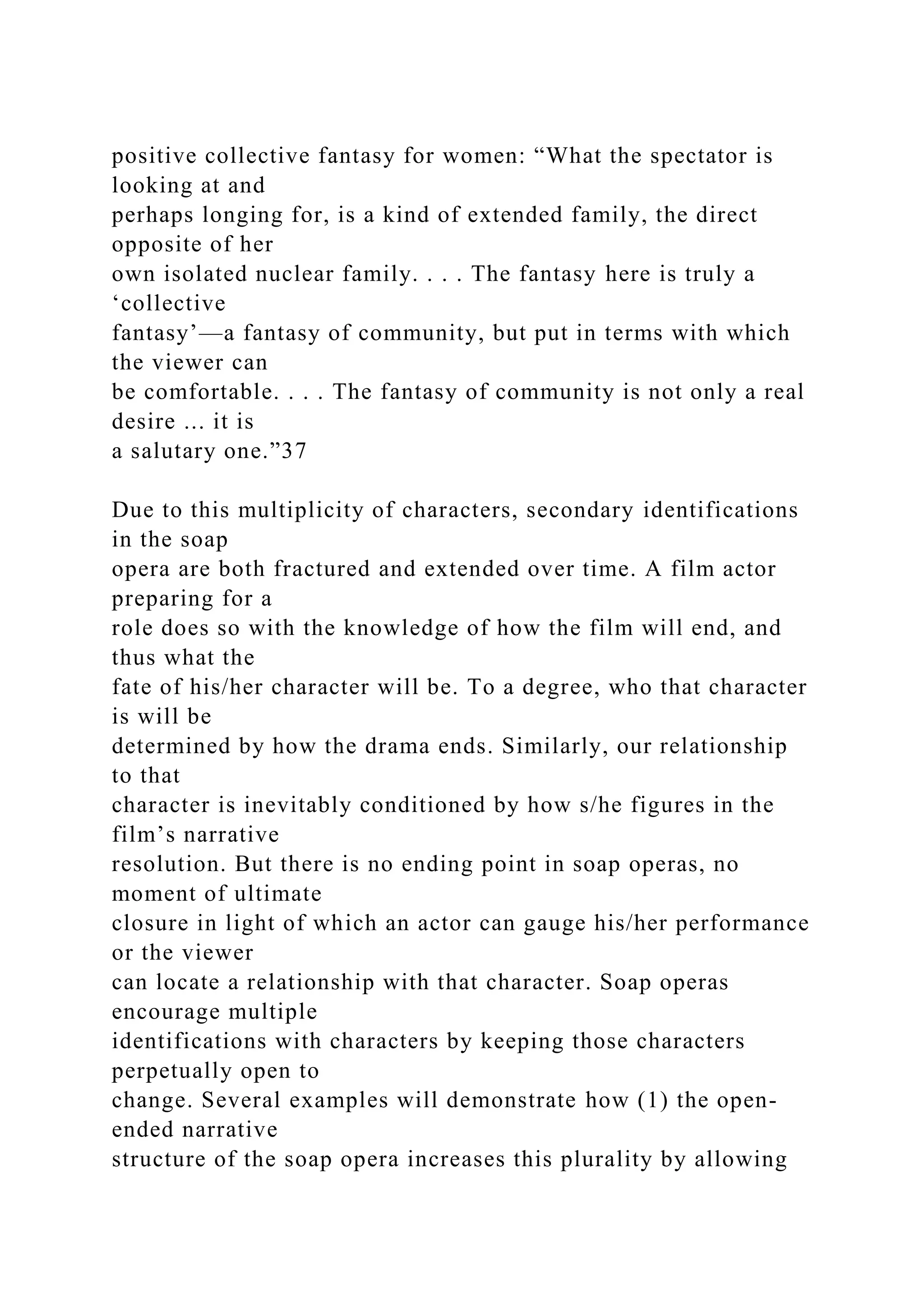
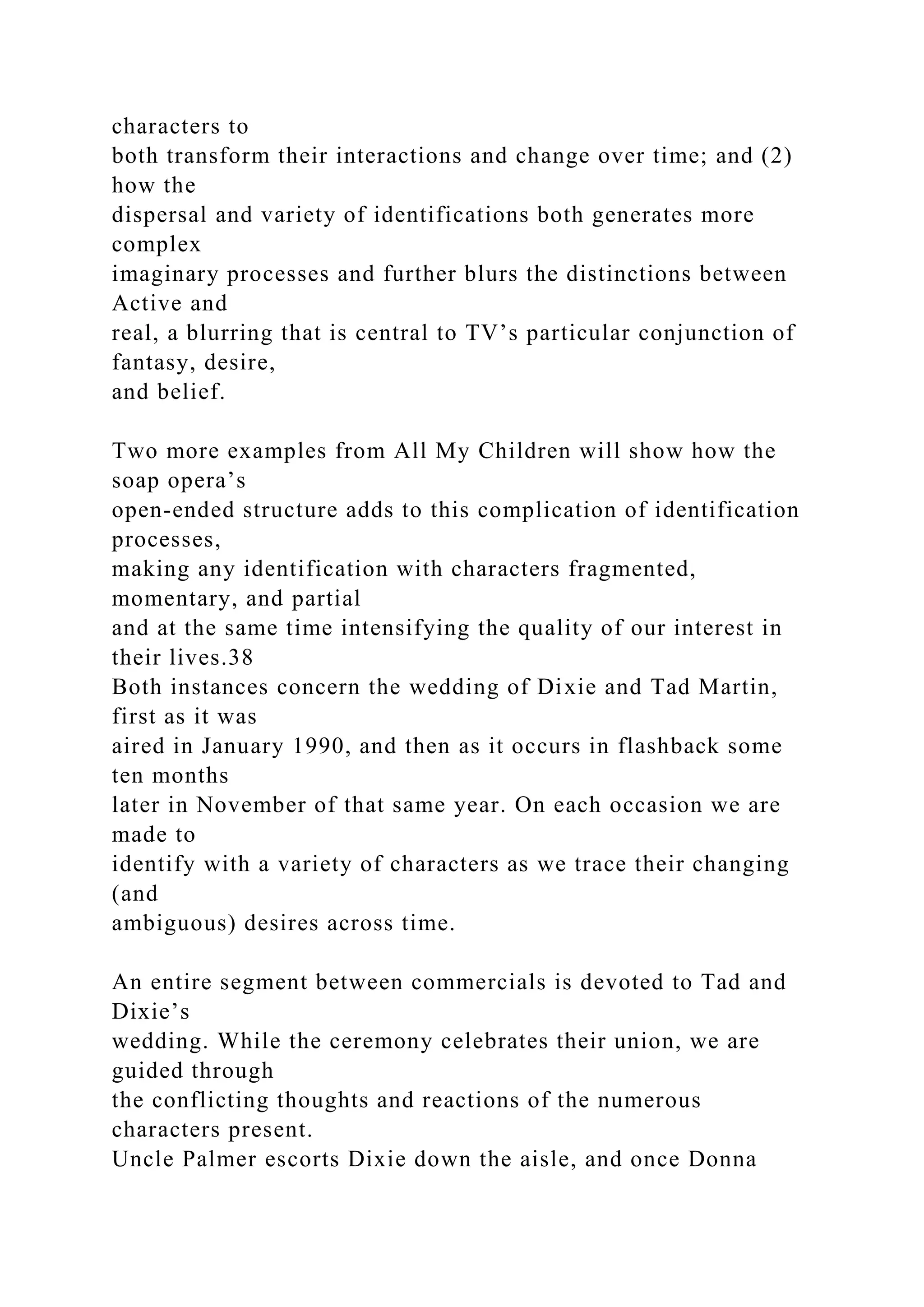
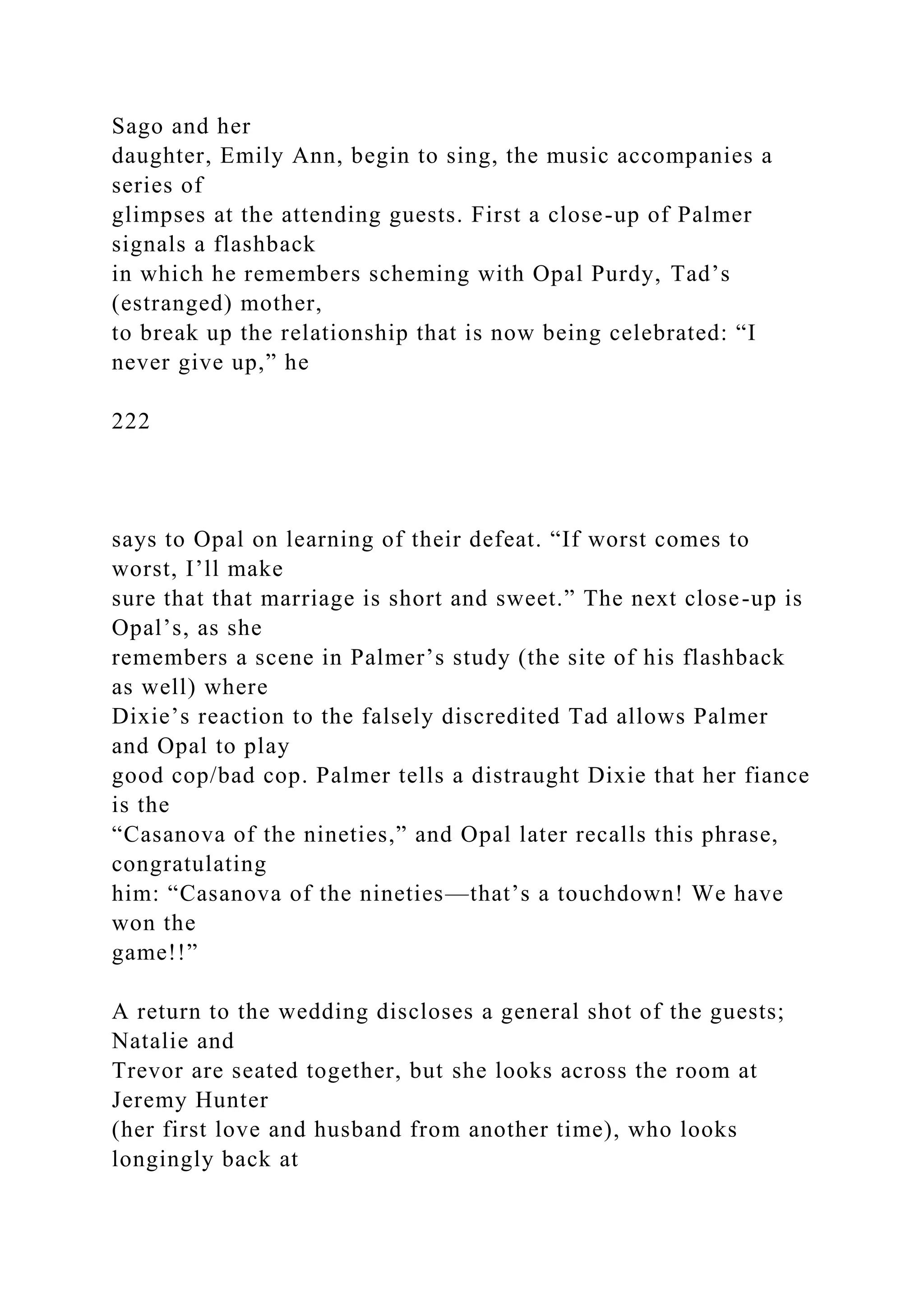

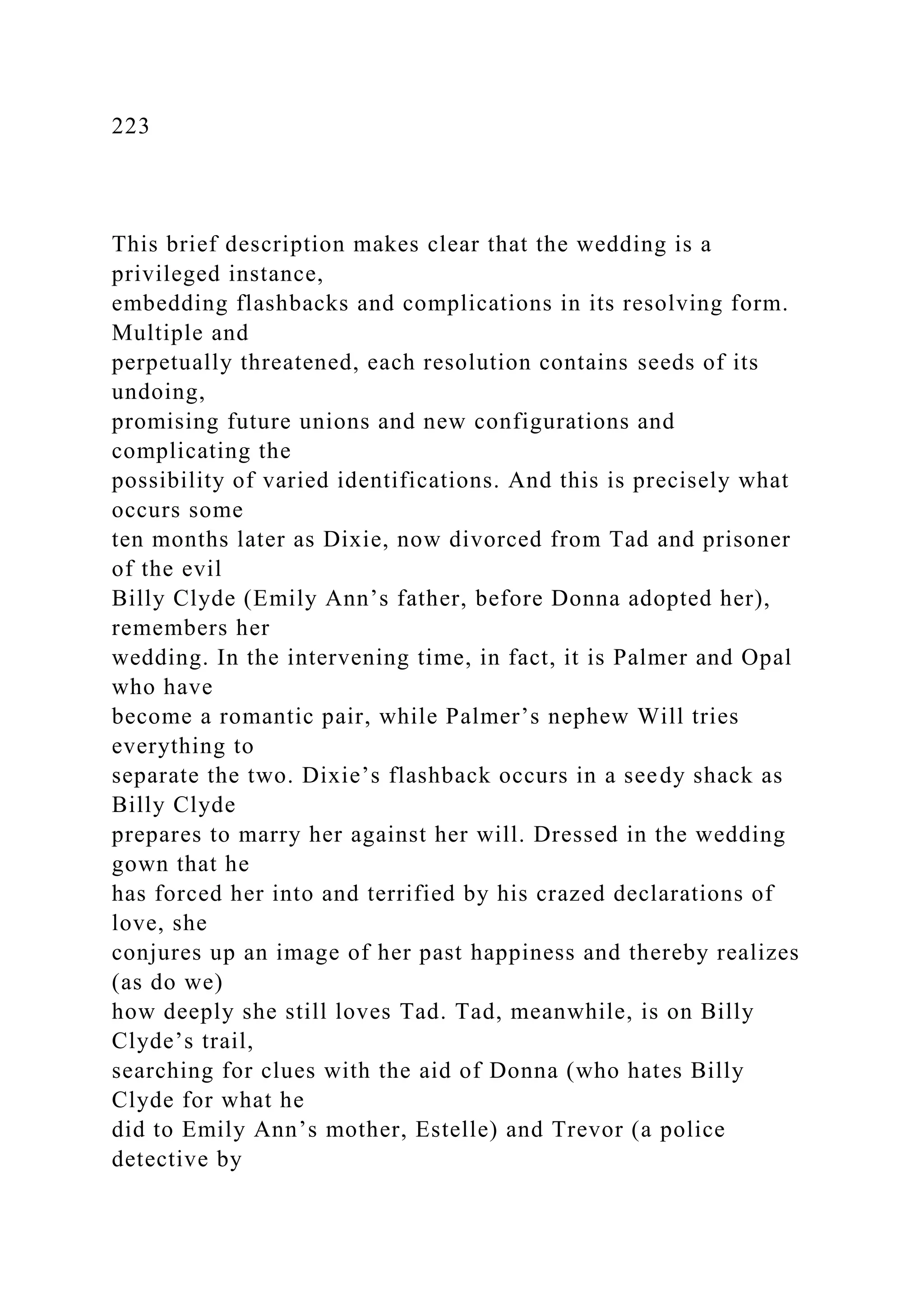

![wedding). Thus the displacement and transformation of the
flashbacks,
indicative of the infinitely variable and open-ended structure
224
Dixie’s flashback
of the soap, confirm the ever-shifting temporalities and
circumstances that
constantly vary our identifications with the characters. Our
attention is as
intense as it is partial, as we participate in the multiple and
changing fictions
that each character evokes.
In addition to these transformations over time, soap opera’s
characteristic
and constant plurality of secondary identifications intensifies
the viewer’s
imaginary activity, enabling the slide from Active to real in
order to solidify
the connections between the characters’ world and ours. As
Tania Modleski
asserts, “[Although] soap operas invite identification with
numerous
personalities . . . the spectator is never permitted to identify
with a character
completing an entire action. . . . [Therefore, they] present us
with numerous
limited egos, each in conflict with the others, and continually
thwarted in its
attempts to control events because of inadequate knowledge of
other people’s](https://image.slidesharecdn.com/channelsofdiscoursereassembled2channelsof-221018173716-6fc0655a/75/Channels-of-Discourse-Reassembled2Channels-of-docx-497-2048.jpg)
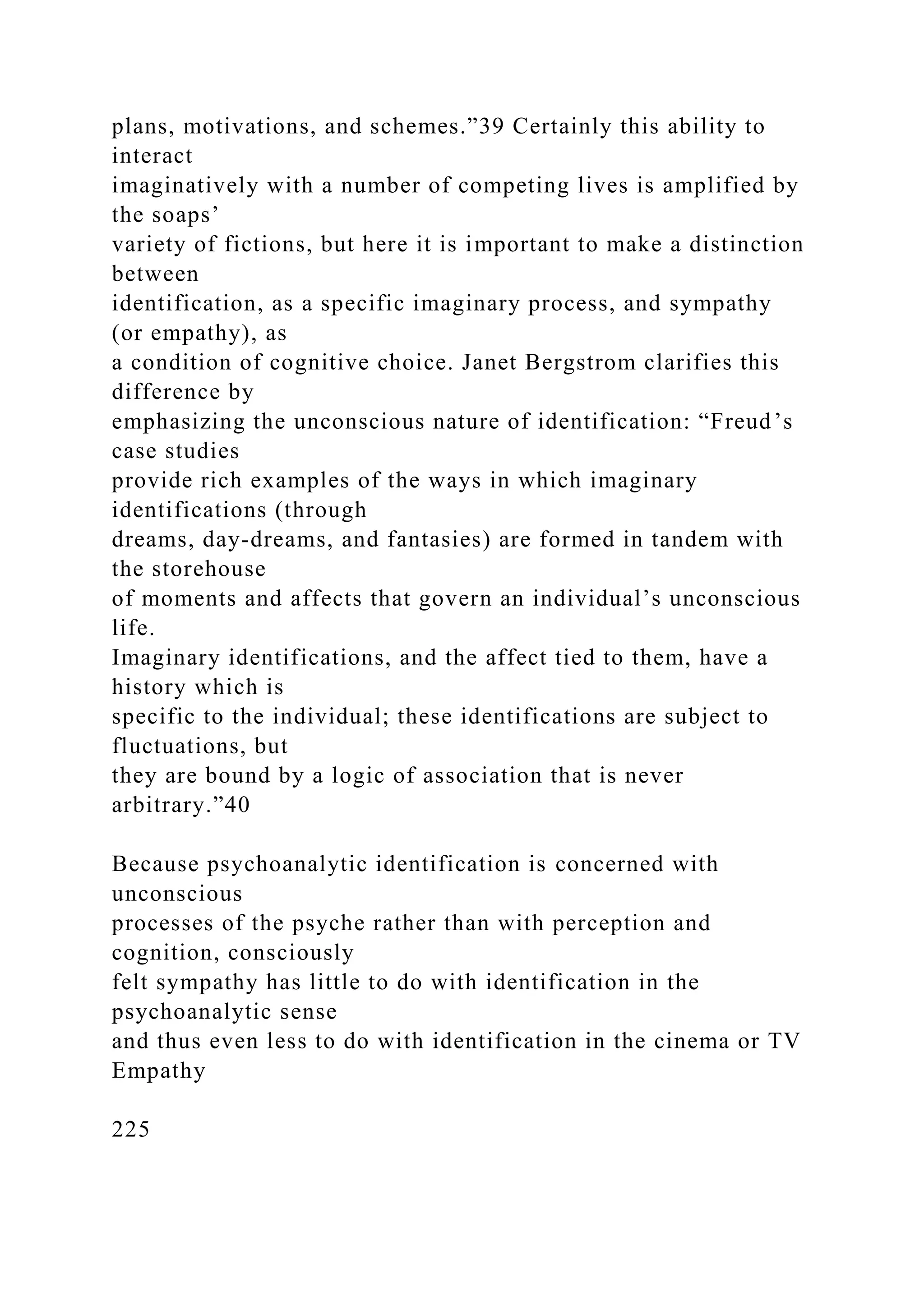
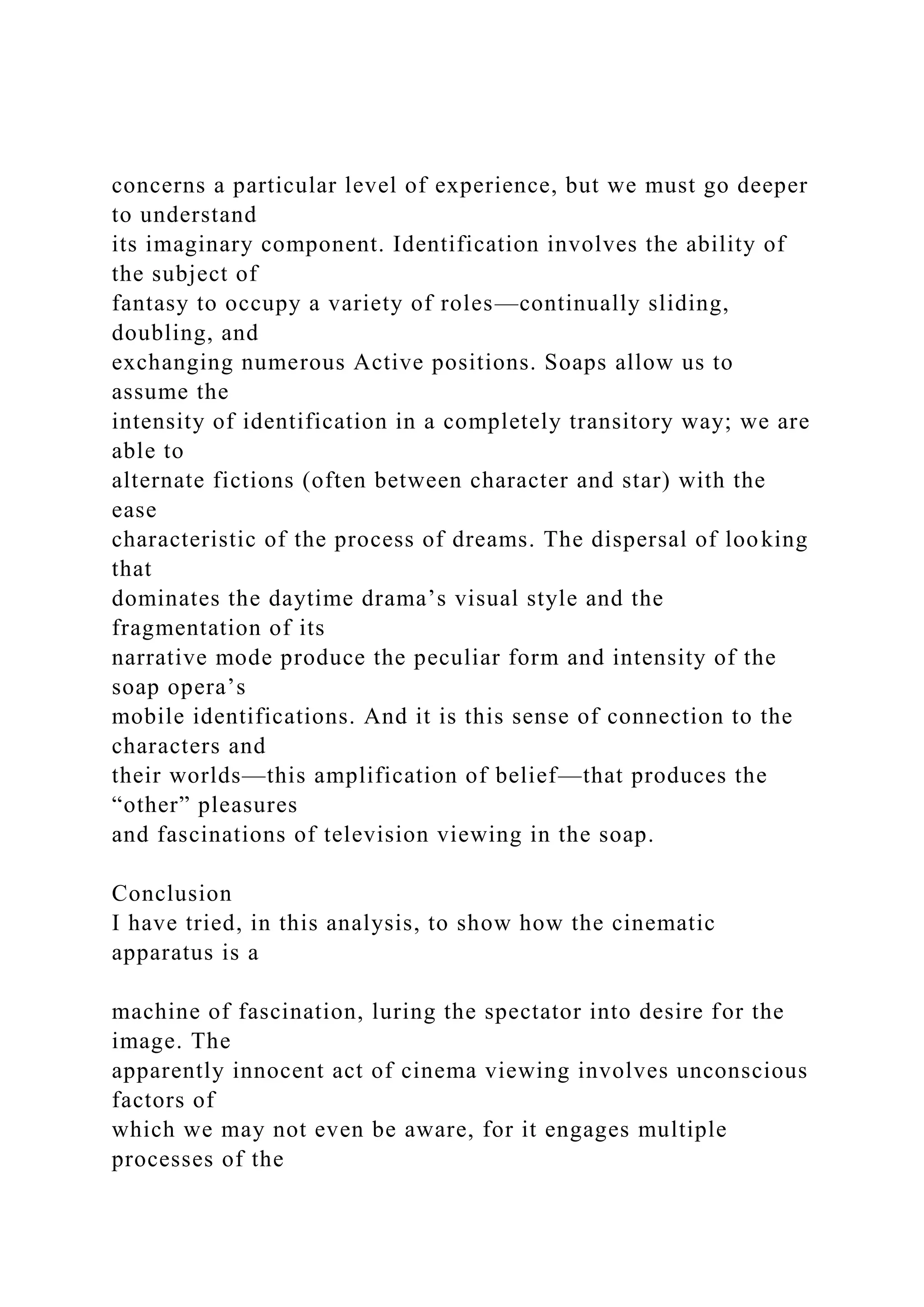
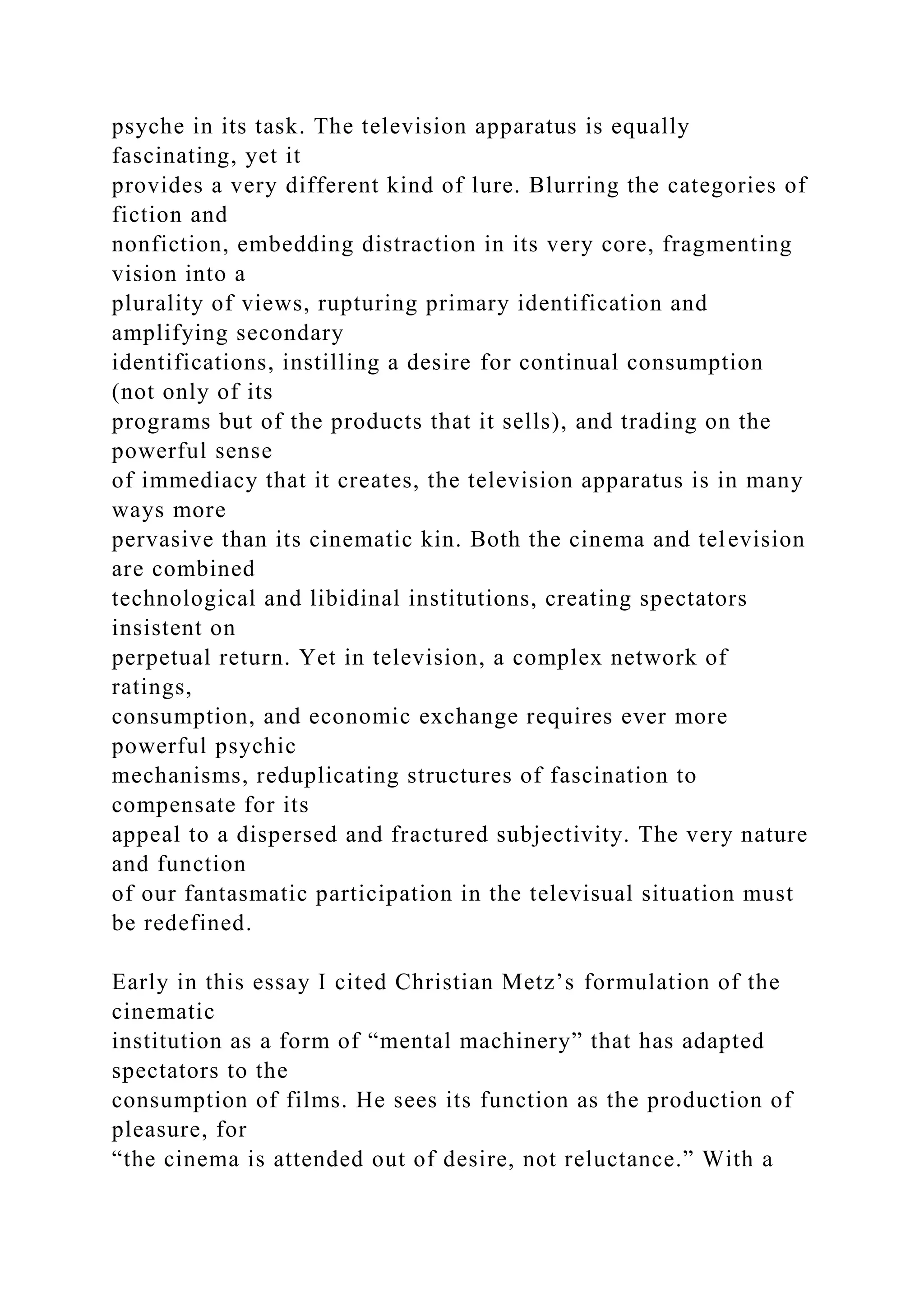
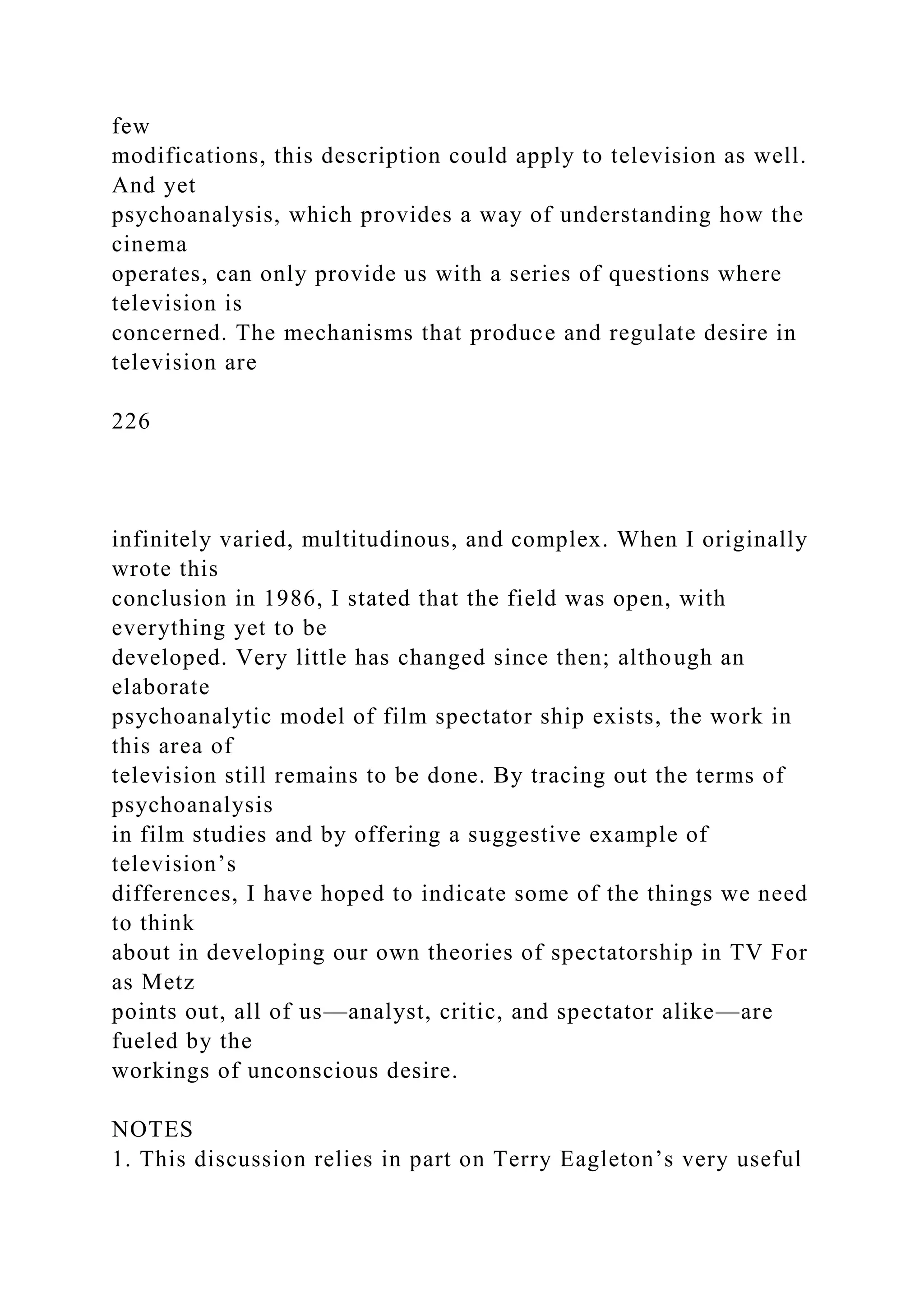
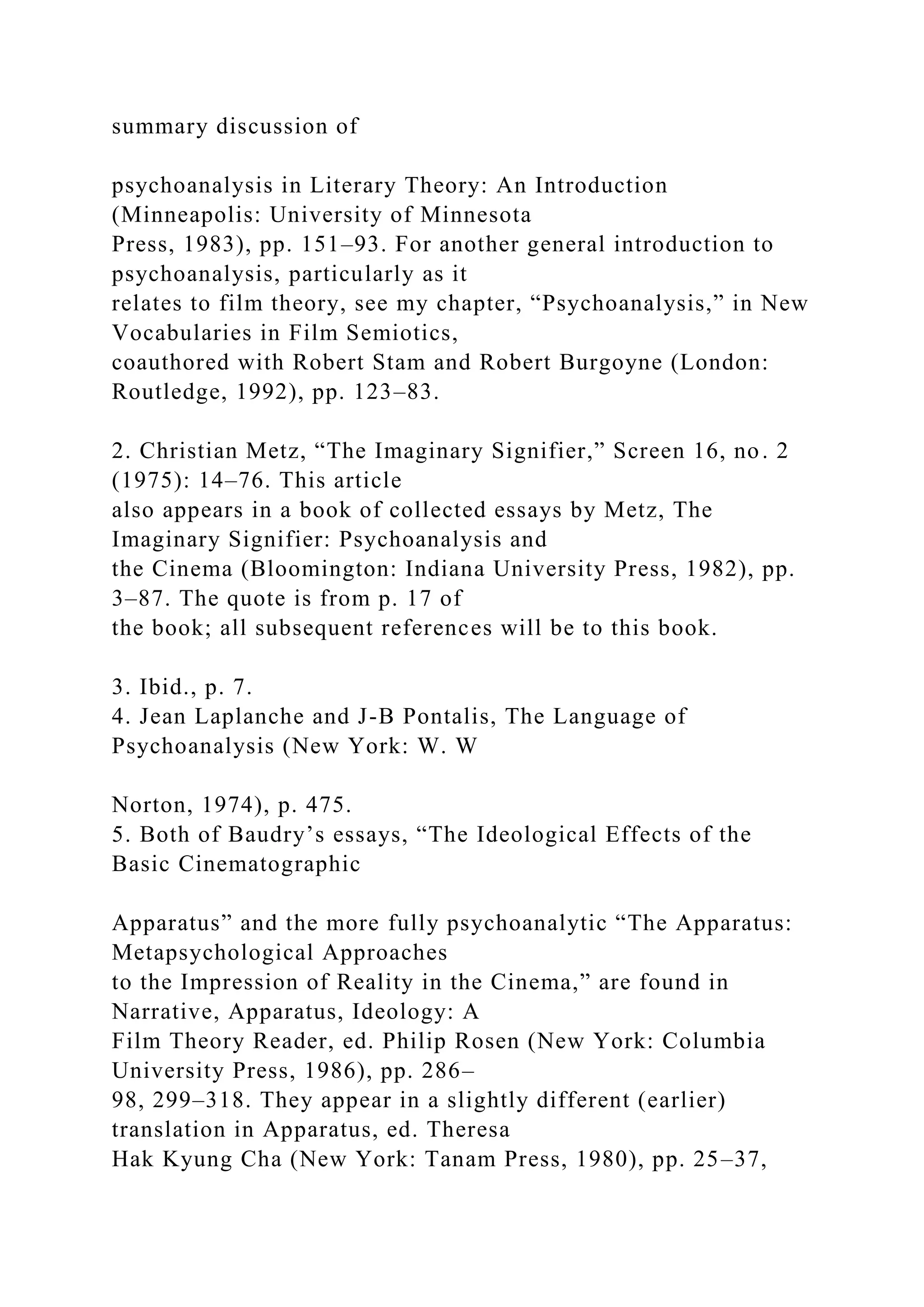
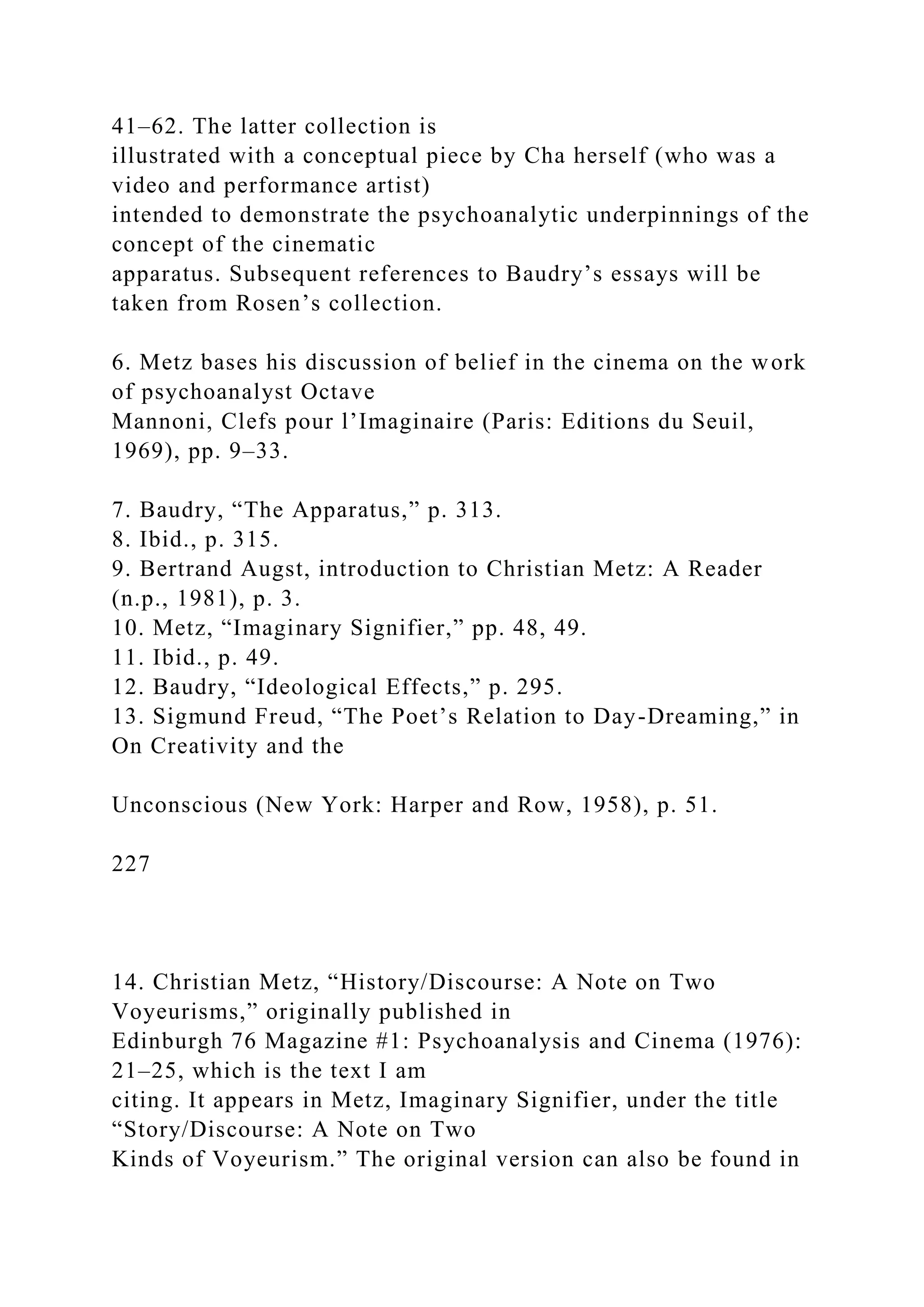
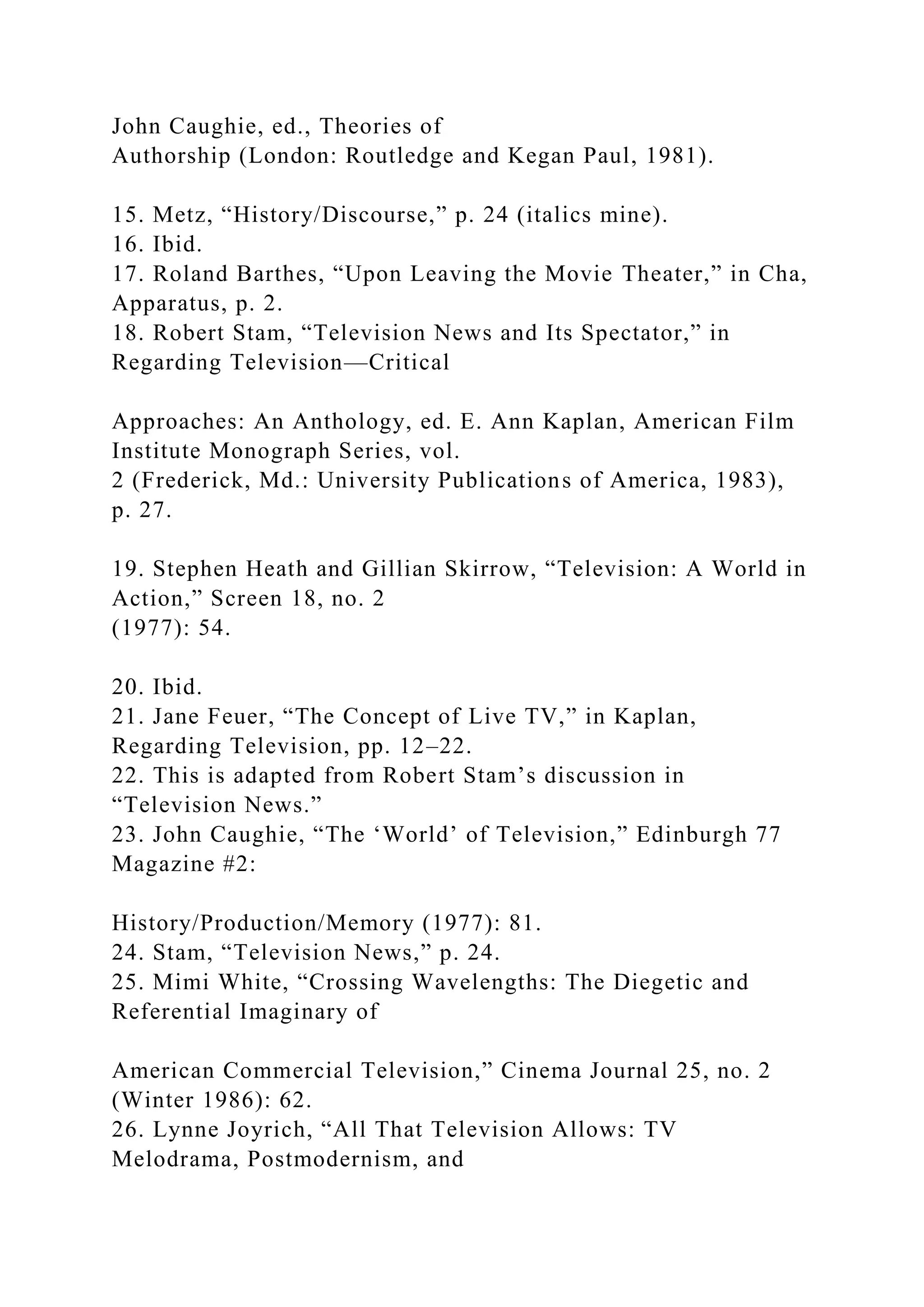
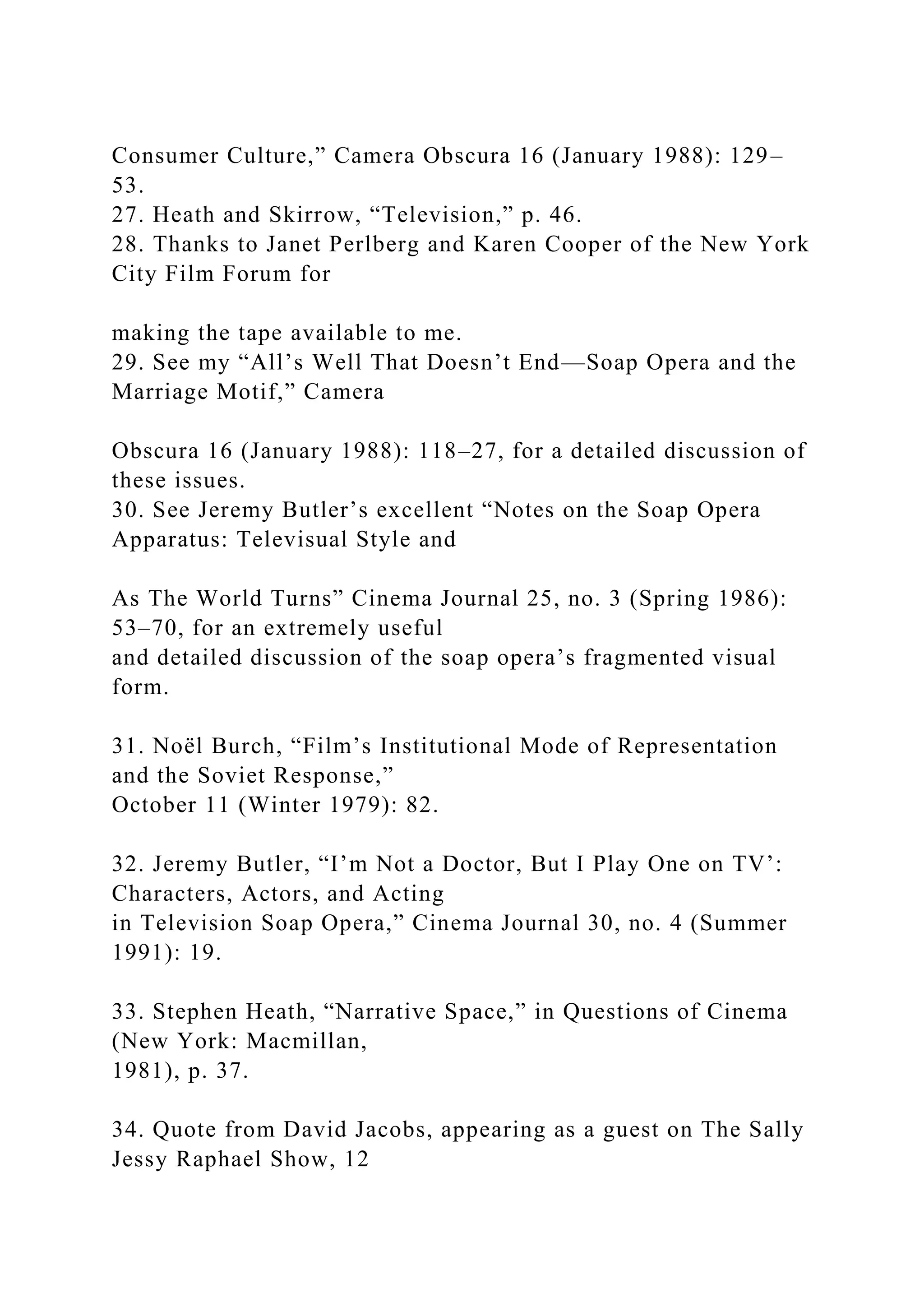
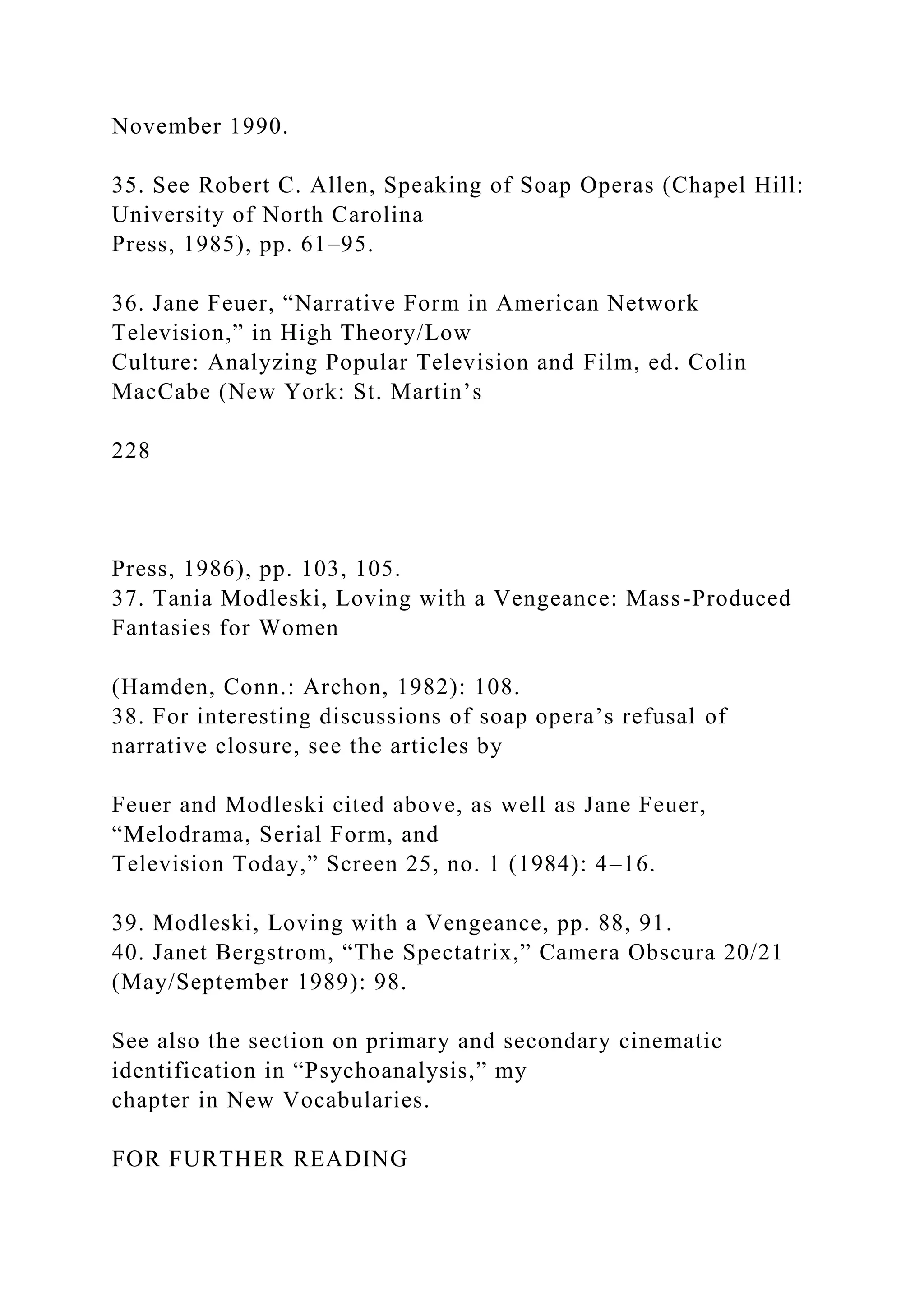
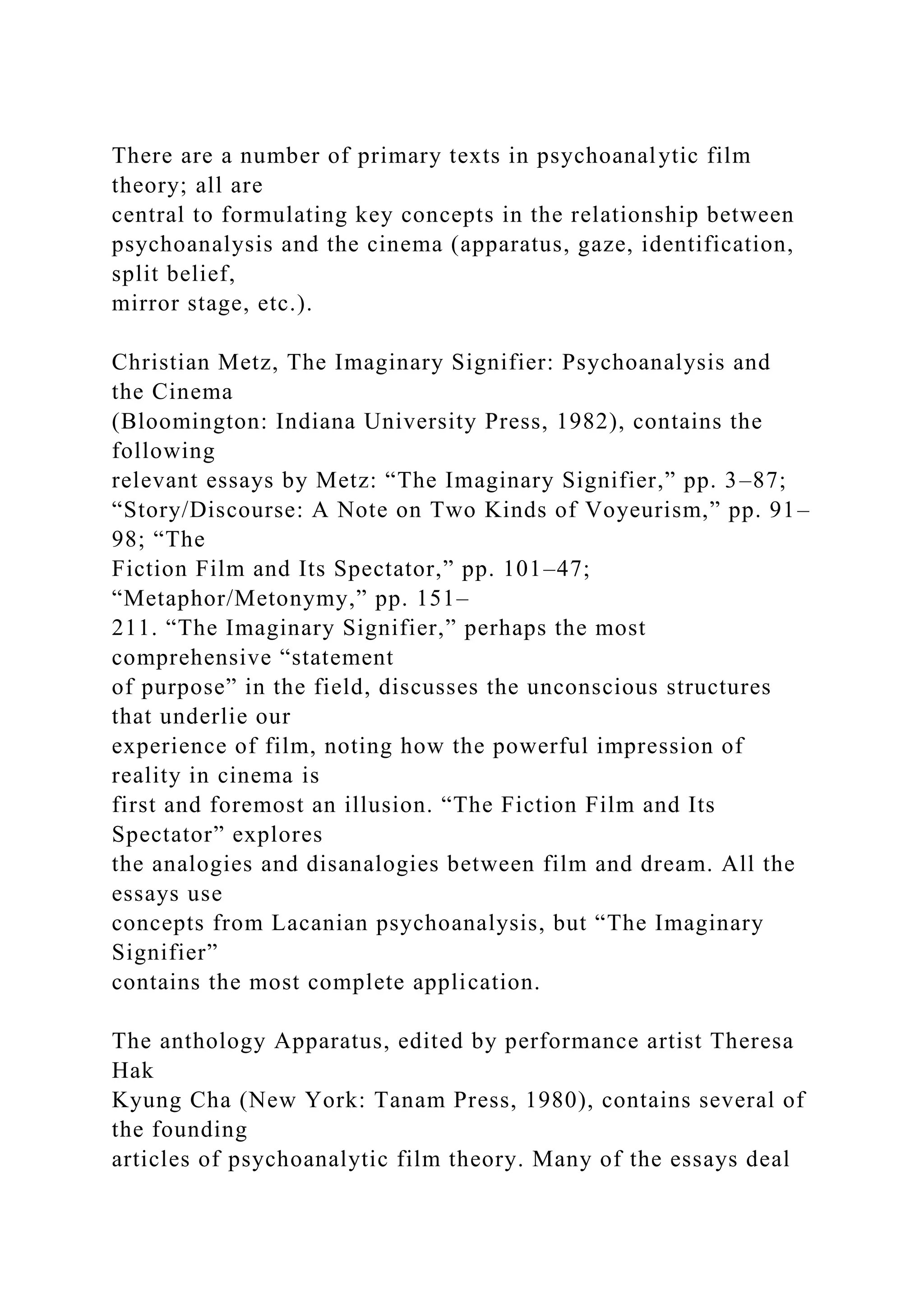
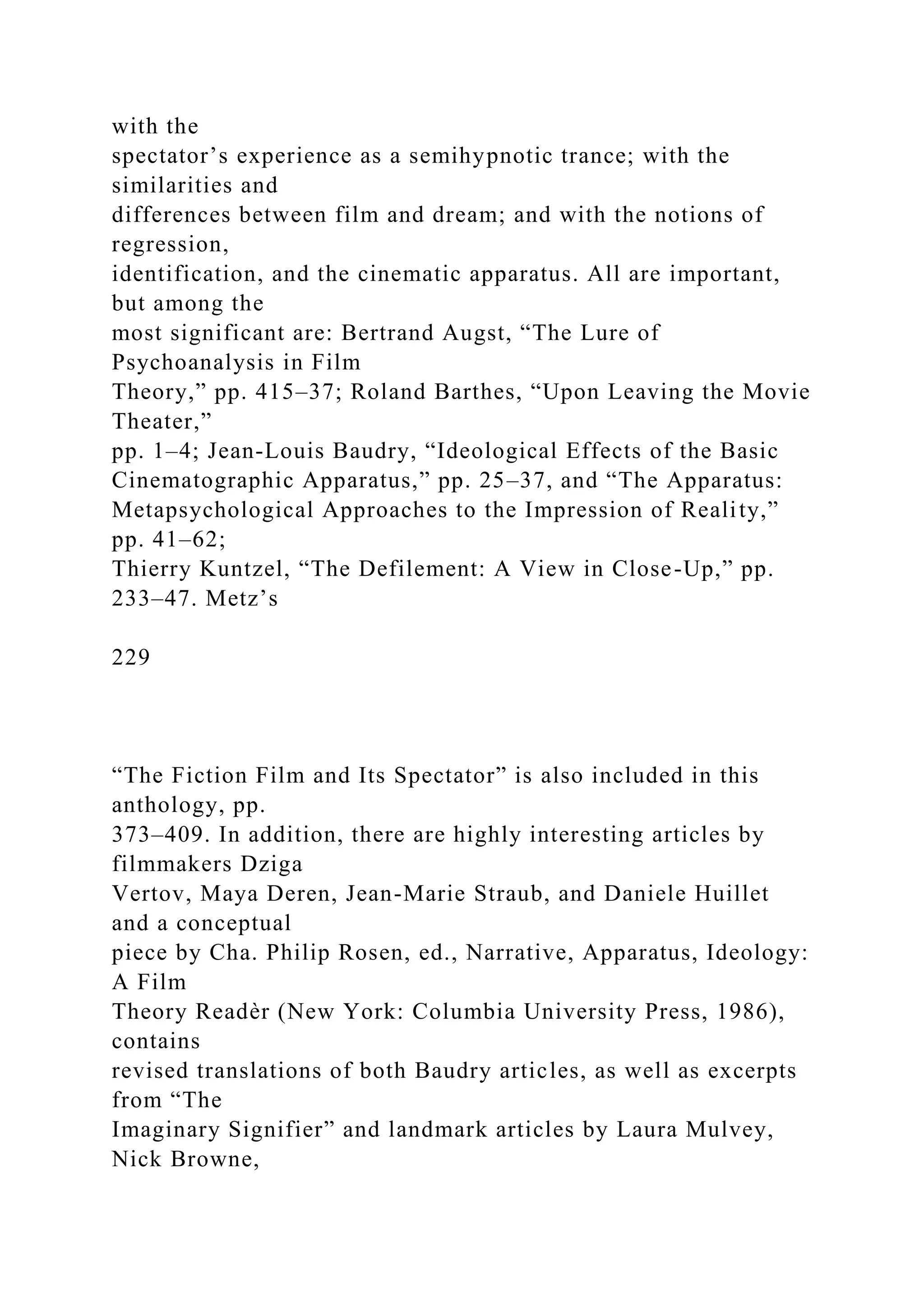
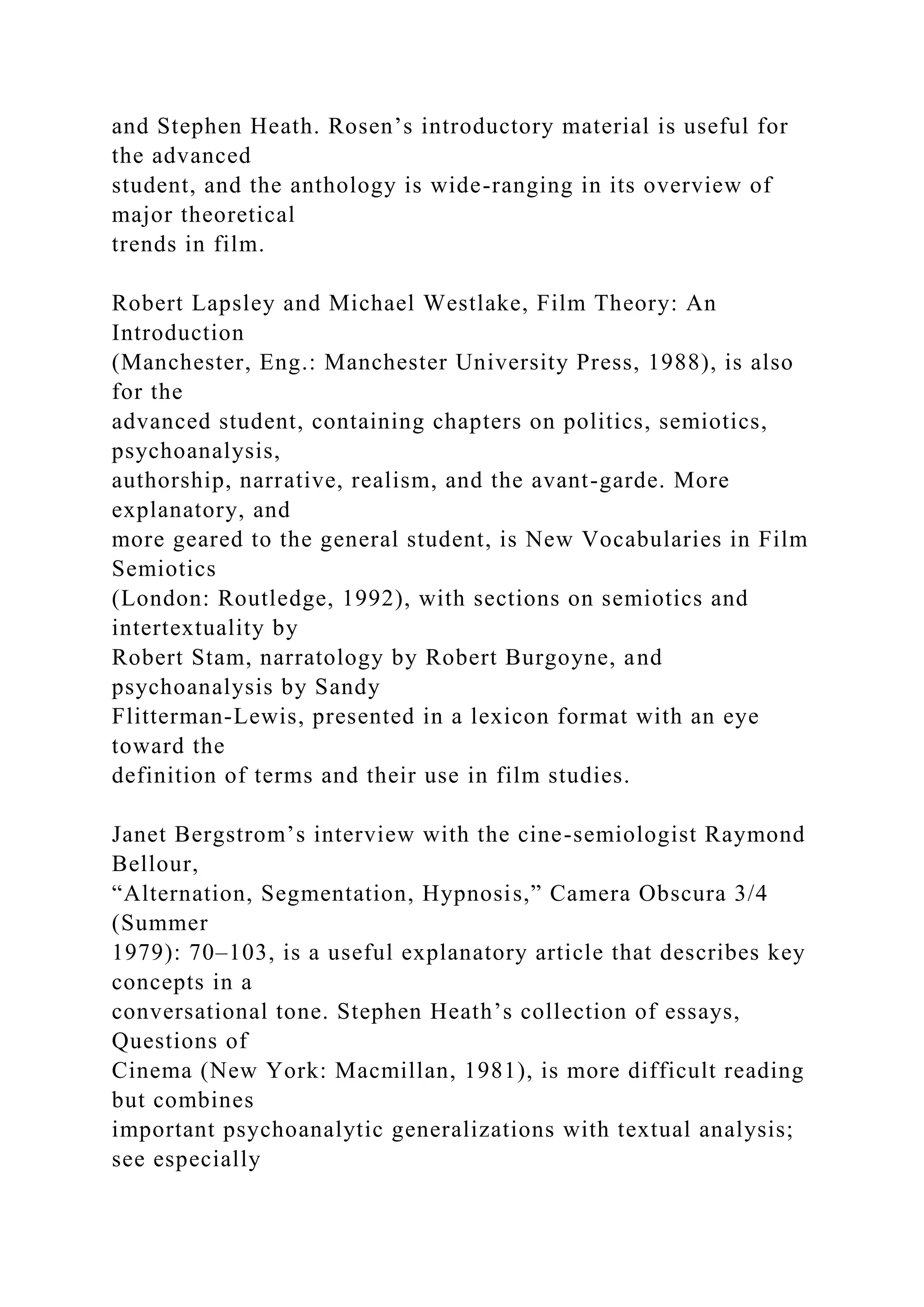
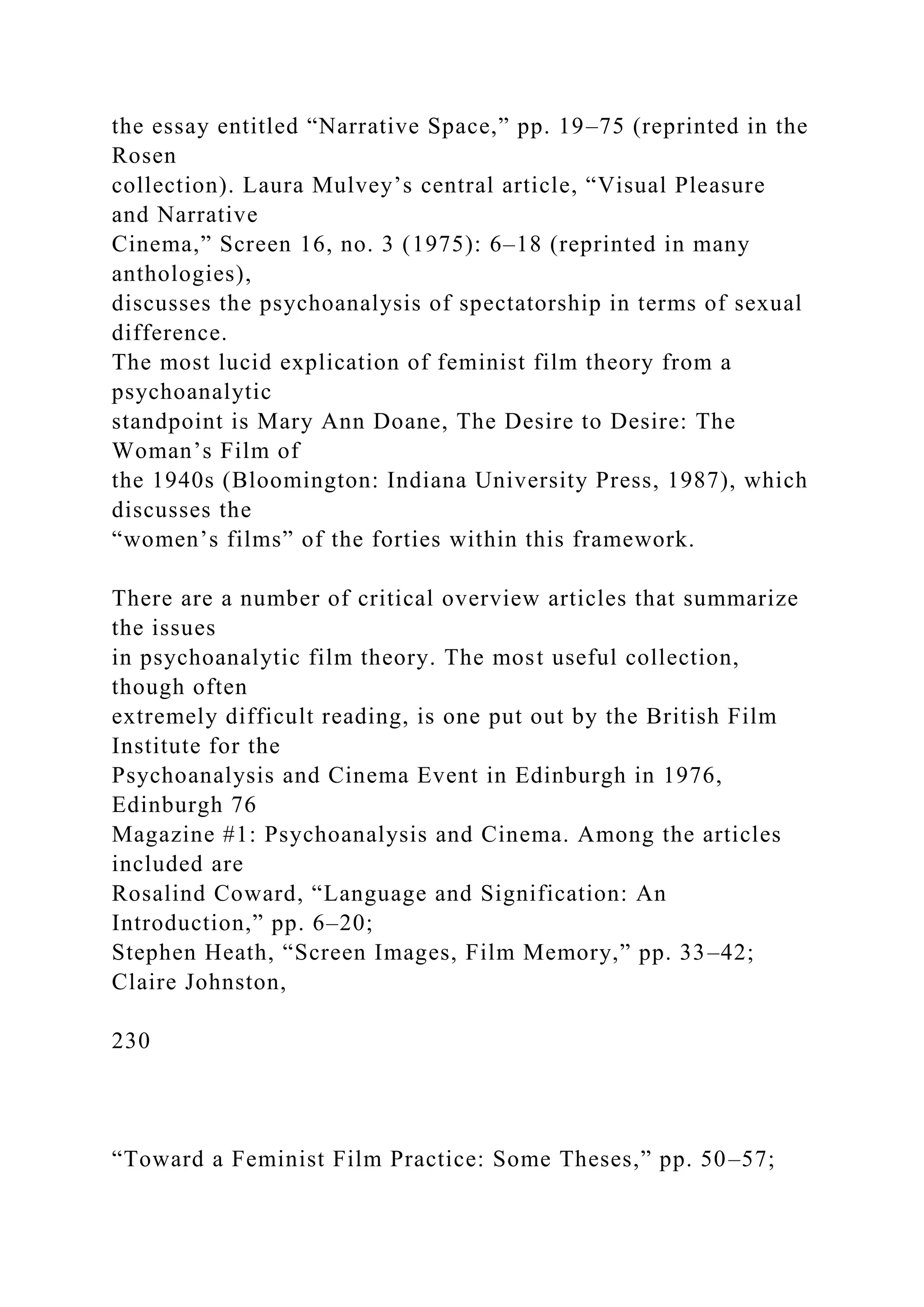
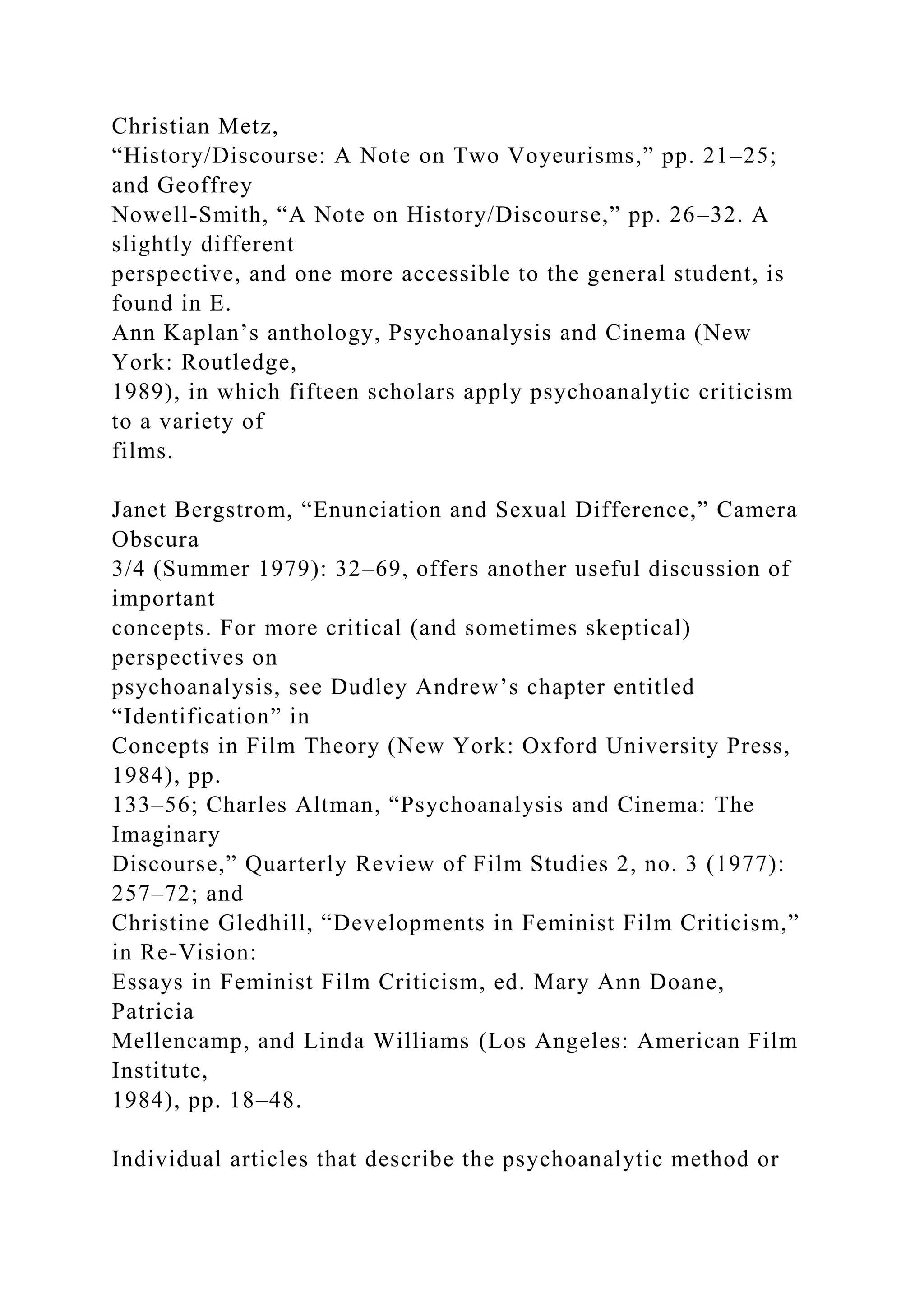
![concentrate
on particular textual analyses can be useful in clarifying the
major points.
Some of these are: Raymond Bellour, “Hitchcock: The
Enunciator,” Camera
Obscura 2 (Fall 1977): 66–91, and Sandy Flitterman, “Woman,
Desire, and
the Look: Feminism and the Enunciative Apparatus of Cinema,”
in Theories
of Authorship, ed. John Caughie (London: Routledge and Kegan
Paul, 1981),
pp. 242–50, which both discuss Hitchcock’s Marnie; two
articles by Thierry
Kuntzel that discuss The Most Dangerous Game (“The Film-
Work, 2,”
Camera Obscura 5 [Spring 1980]: 6–69, and “Sight, Insight, and
Power:
Allegory of a Cave,” Camera Obscura 6 [Fall 1980]: 90–110);
and Stephen
Heath’s detailed and complicated analysis of Welles’s Touch of
Evil (“Film
and System, Terms of Analysis,” Parts 1 and 2, Screen 16, nos.
1–2 [1975]:
7–77, 91–113). In “The Order of [Cinematographic] Discourse,”
Discourse #1
(1979): 39–57, Bertrand Augst applies Foucault to discussions
of the cinema.
Mary Ann Doane discusses identification in “Misrecognition
and Identity,”
Cine-tracts 11 (Fall 1980): 25–32; and Lesley Stern discusses
point of view in
“Point of View: The Blind Spot,” Film Reader, no. 4 (1979):
214–36.
I indicated in the original edition of this work that there had
been relatively](https://image.slidesharecdn.com/channelsofdiscoursereassembled2channelsof-221018173716-6fc0655a/75/Channels-of-Discourse-Reassembled2Channels-of-docx-512-2048.jpg)
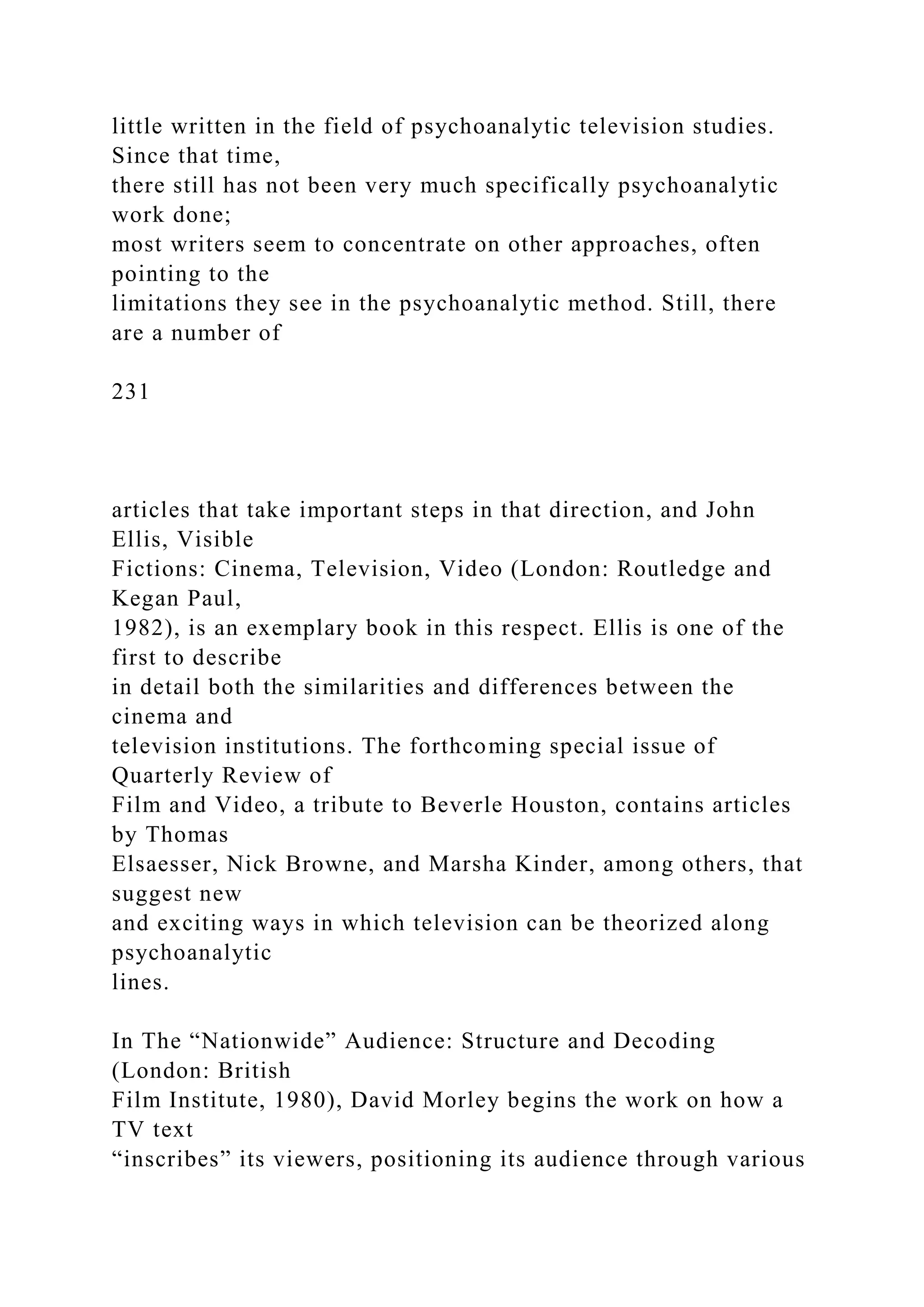
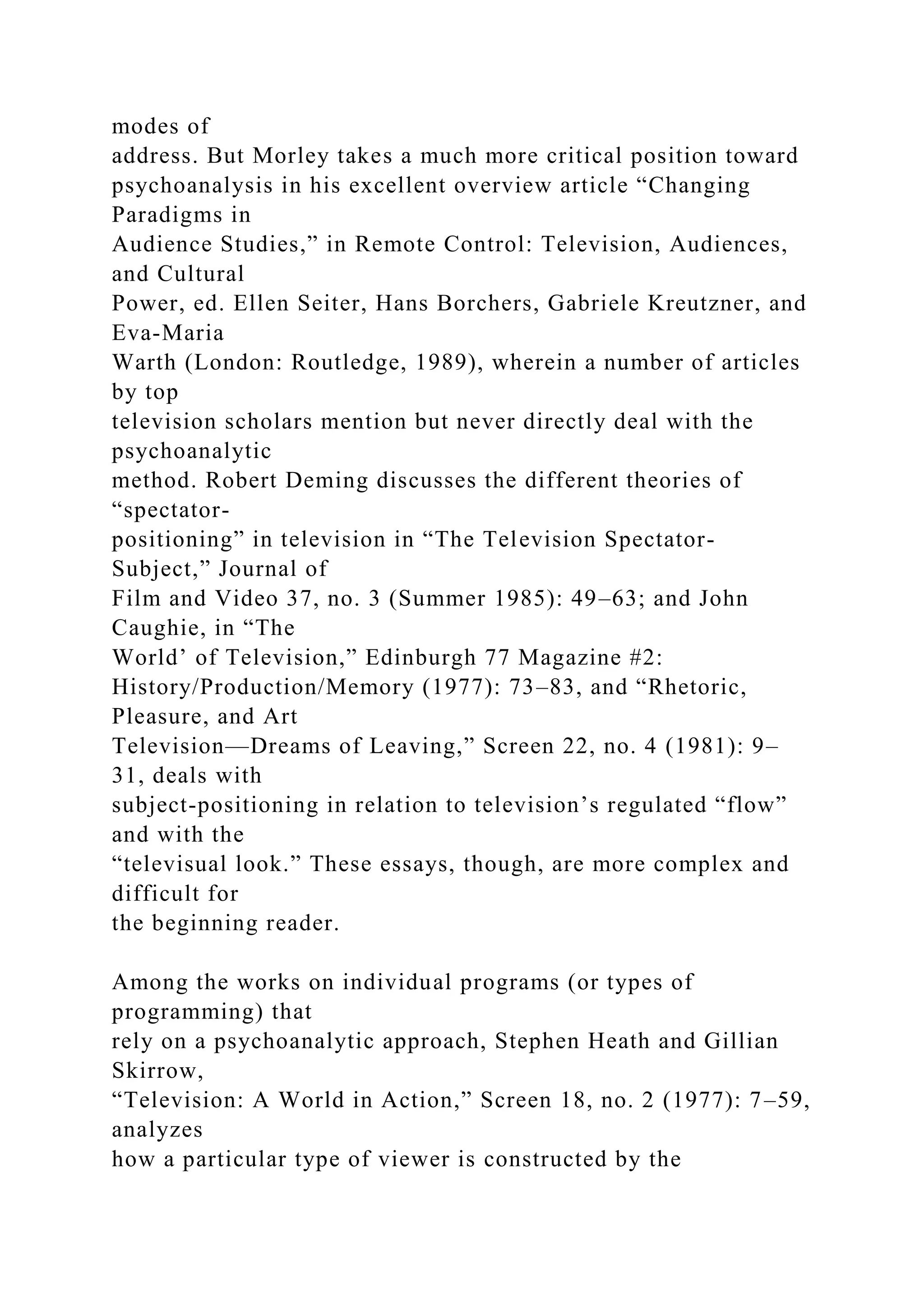
![documentary/interview
format. Margaret Morse and Sandy Flitterman discuss relations
of sexuality
and desire in televised sports (Morse, “Sport on Television:
Replay and
Display,” in Regarding Television—Critical Approaches: An
Anthology, ed.
E. Ann Kaplan, American Film Institute Monograph Series, vol.
2 [Frederick,
Md.: University Publications of America, 1983], pp. 44–66) and
in a
particular detective series (Flitterman, “Thighs and Whiskers:
The Fascination
of Magnum, P.I.,” Screen 26, no. 2 [1985]: 42–58). Robert
Stam’s excellent
article “Television News and Its Spectator,” also in Kaplan,
Regarding
Television, pp. 23–43, uses Metz’s “imaginary signifier” in a
detailed and
232
highly readable discussion of televised news. Both Stam’s and
Morse’s
articles are wonderful examples of the psychoanalytic method as
applied to
TV Another article by Morse, “Talk, Talk, Talk—the Space of
Discourse in
Television,” Screen 26, no. 2 (1985): 2–15, discusses TV news,
as well as
sportscasts and talk shows, in terms of the relations of
subjectivity and
discourse.](https://image.slidesharecdn.com/channelsofdiscoursereassembled2channelsof-221018173716-6fc0655a/75/Channels-of-Discourse-Reassembled2Channels-of-docx-515-2048.jpg)
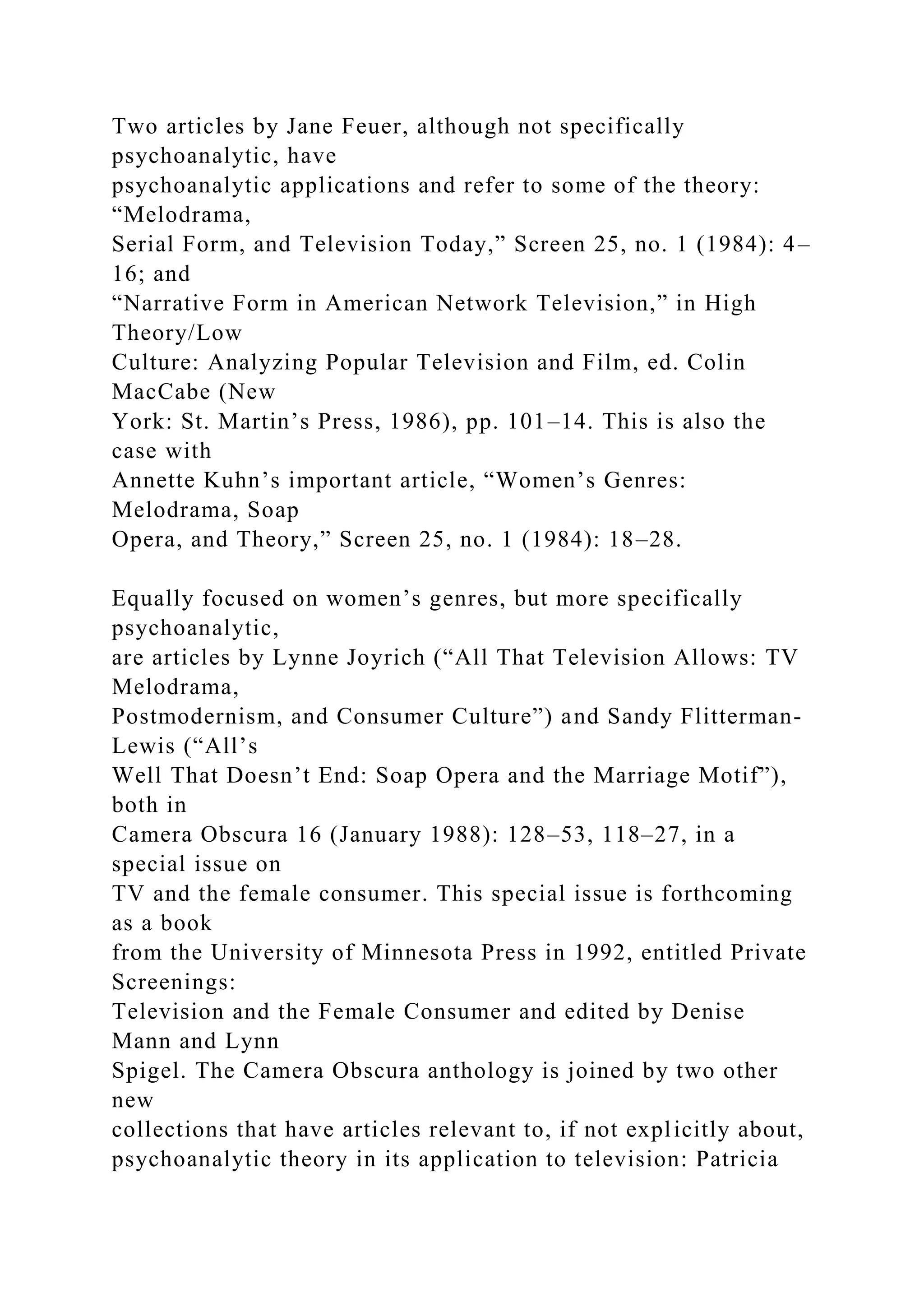
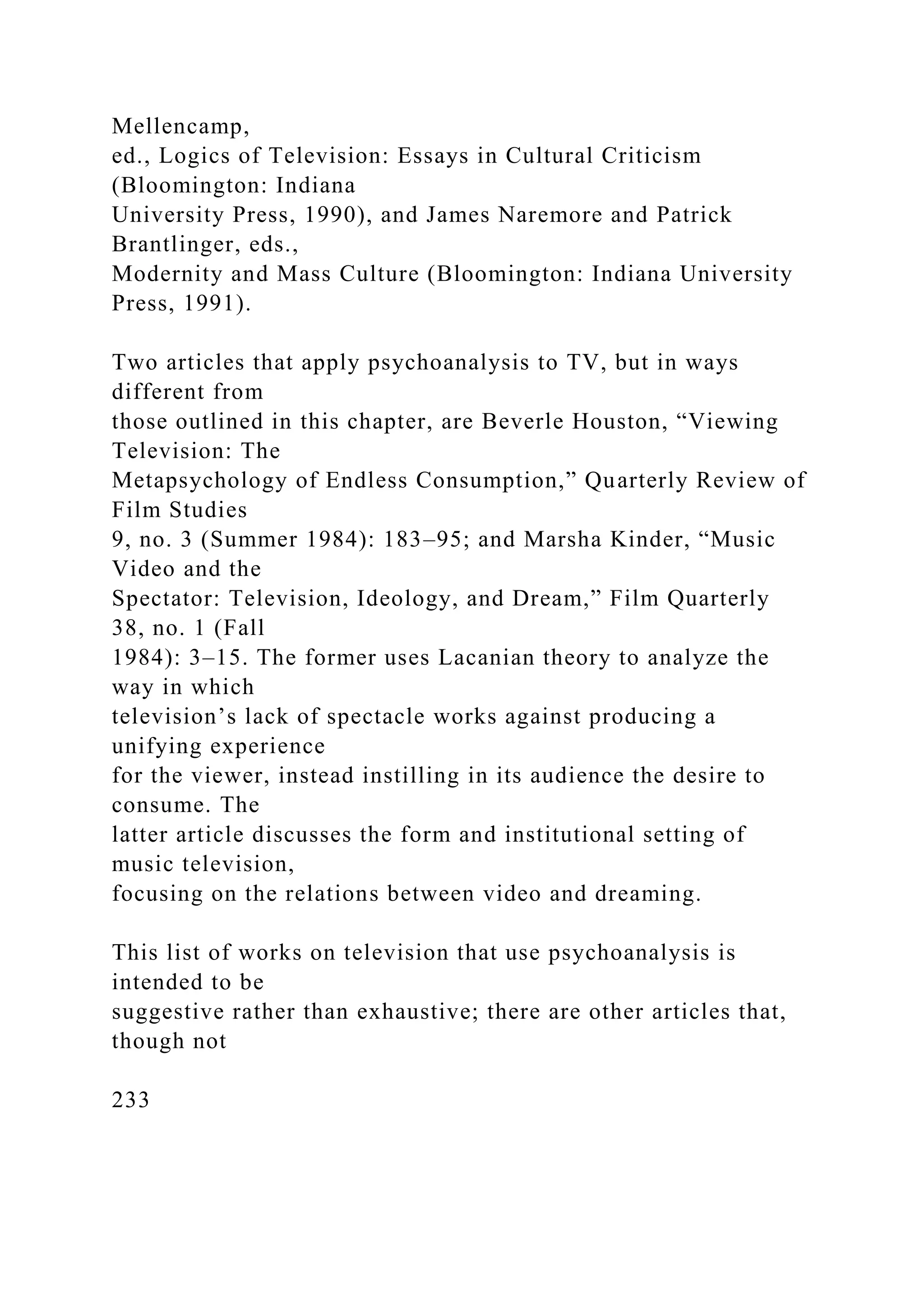
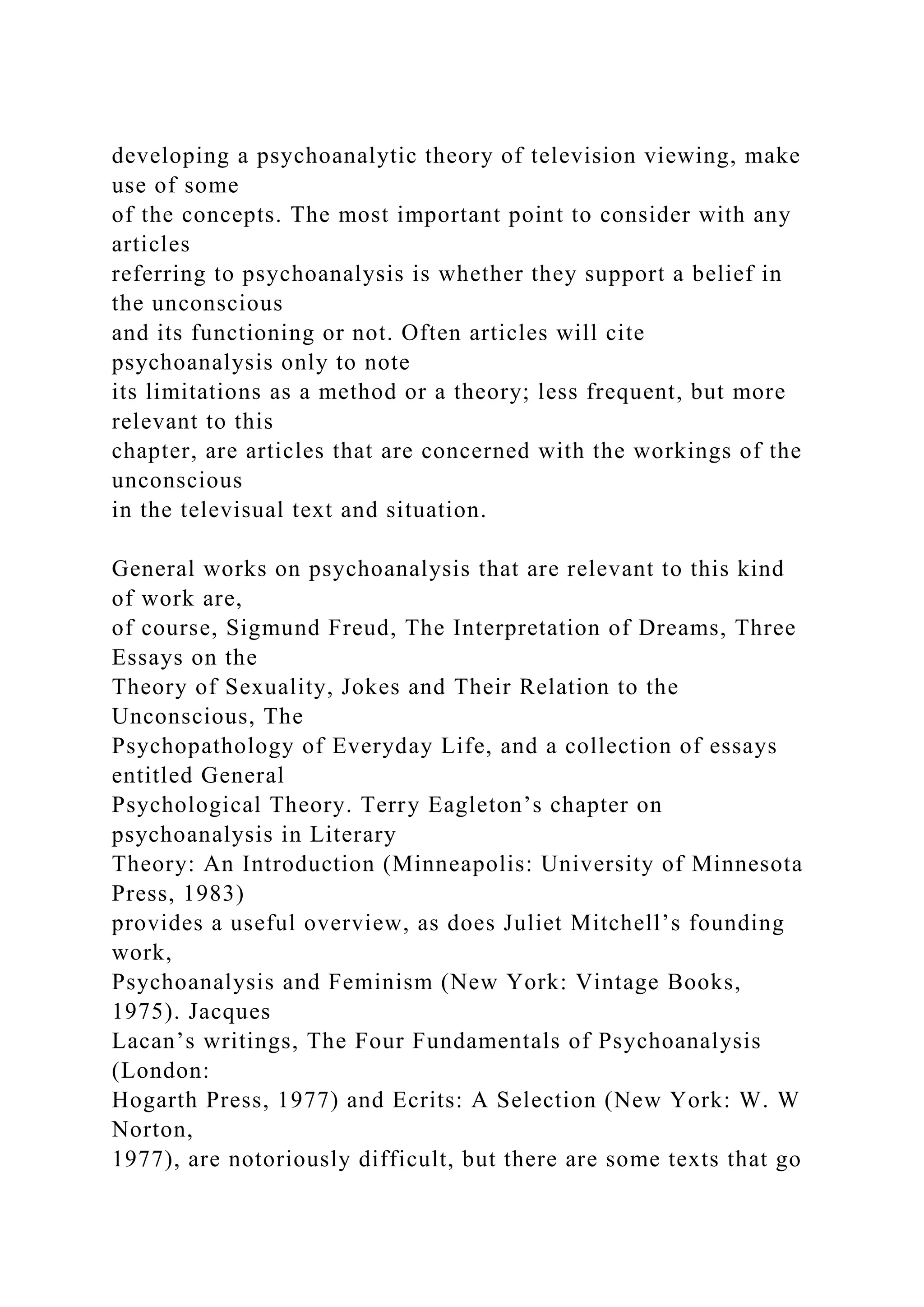
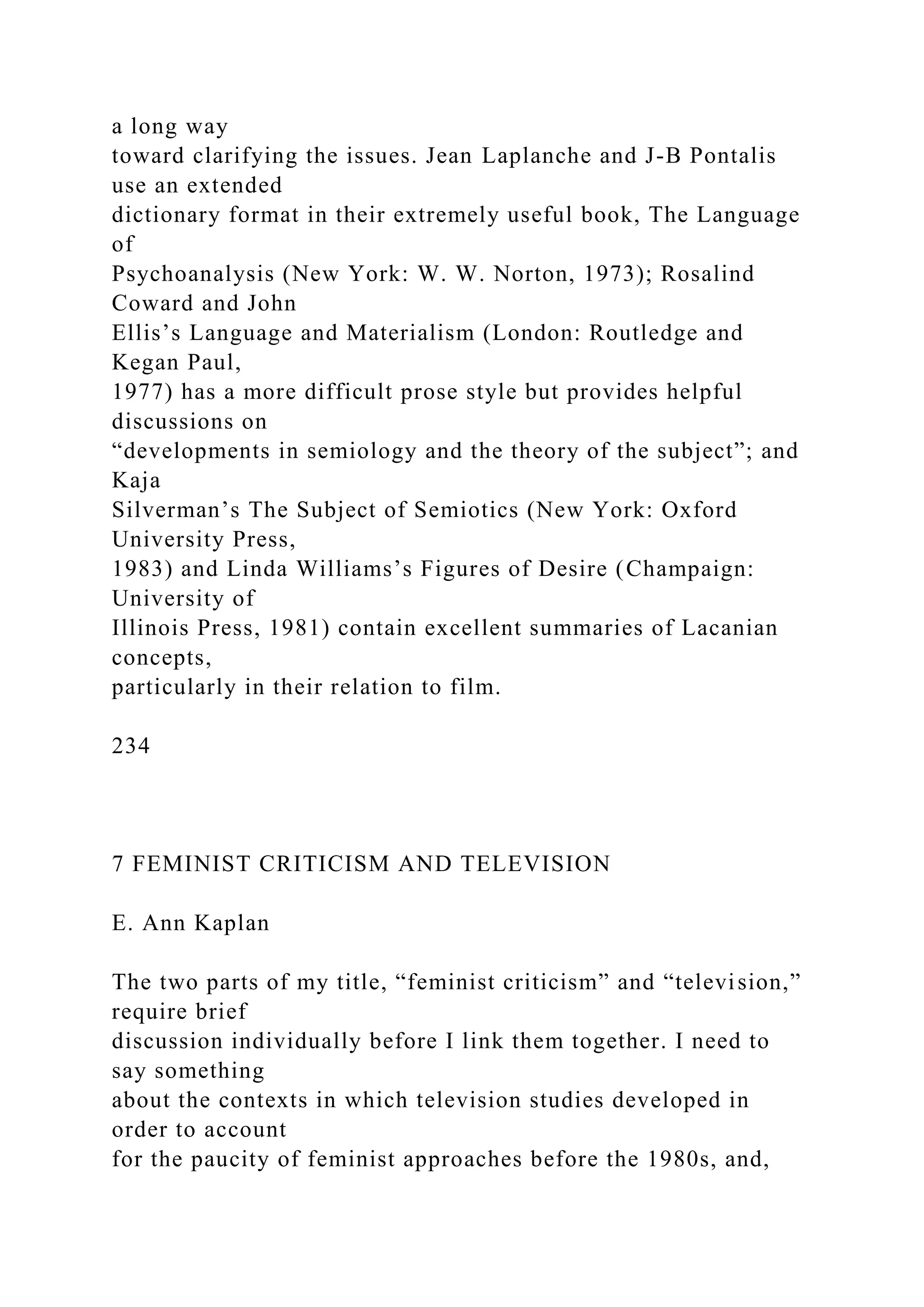

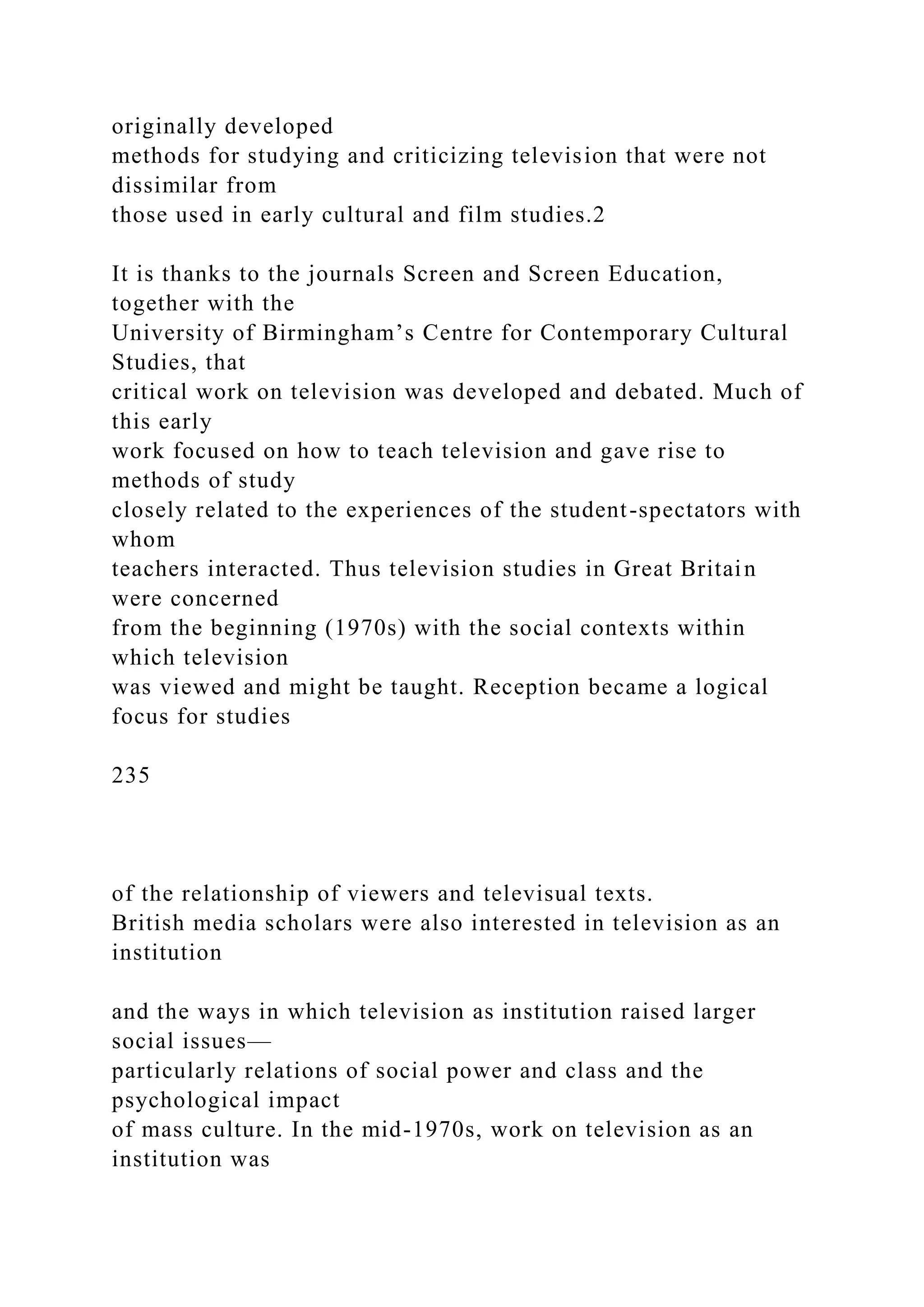
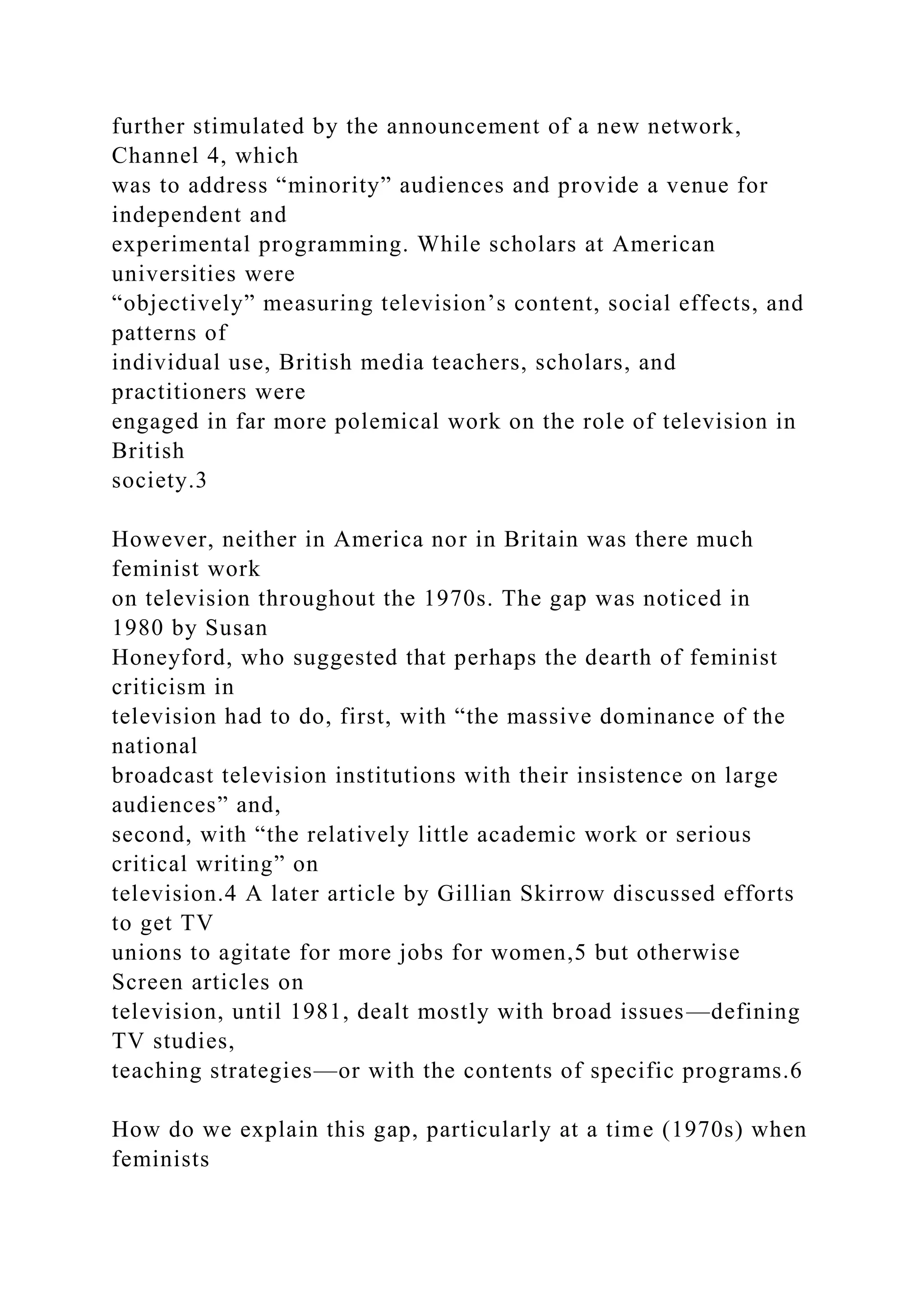
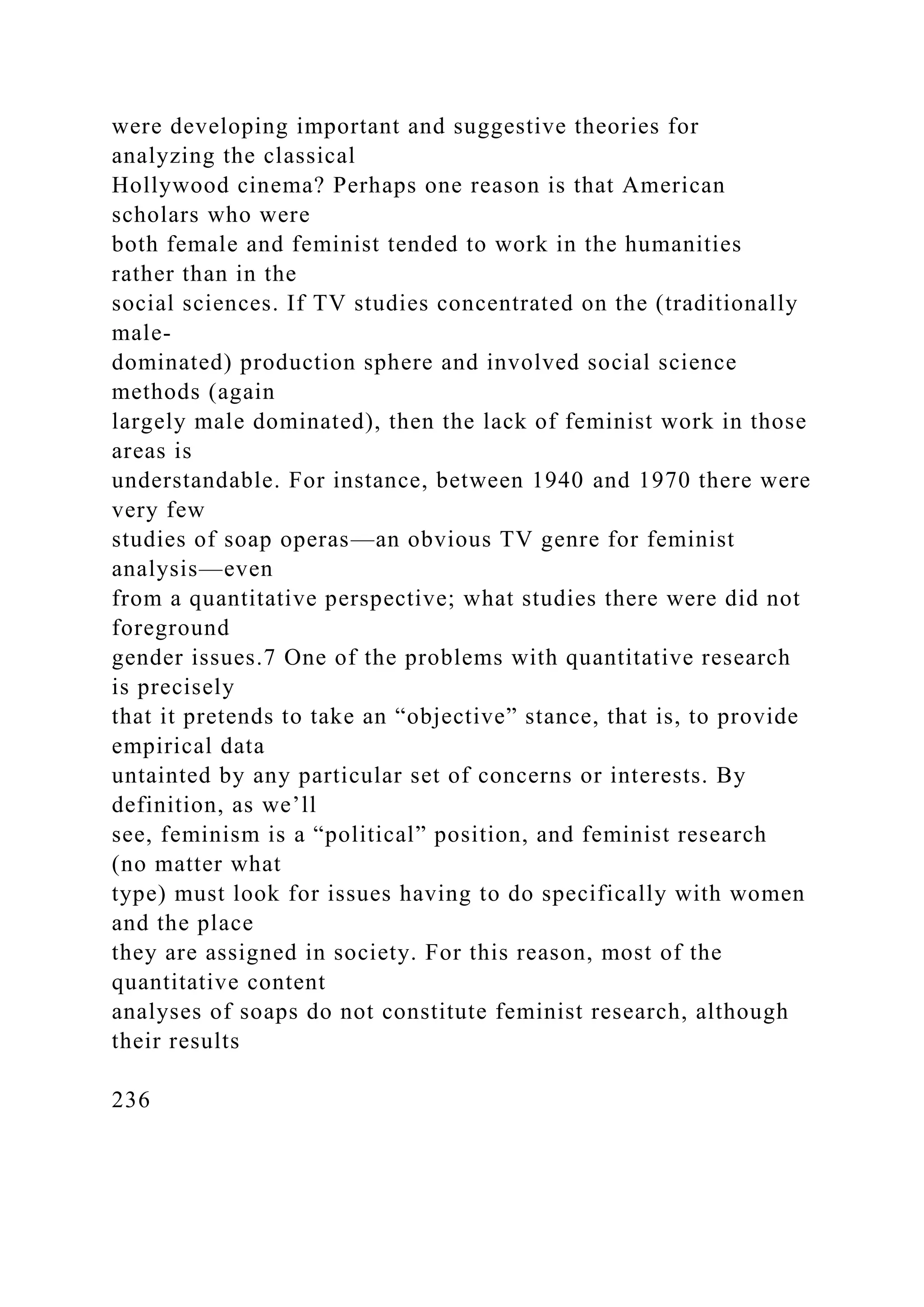
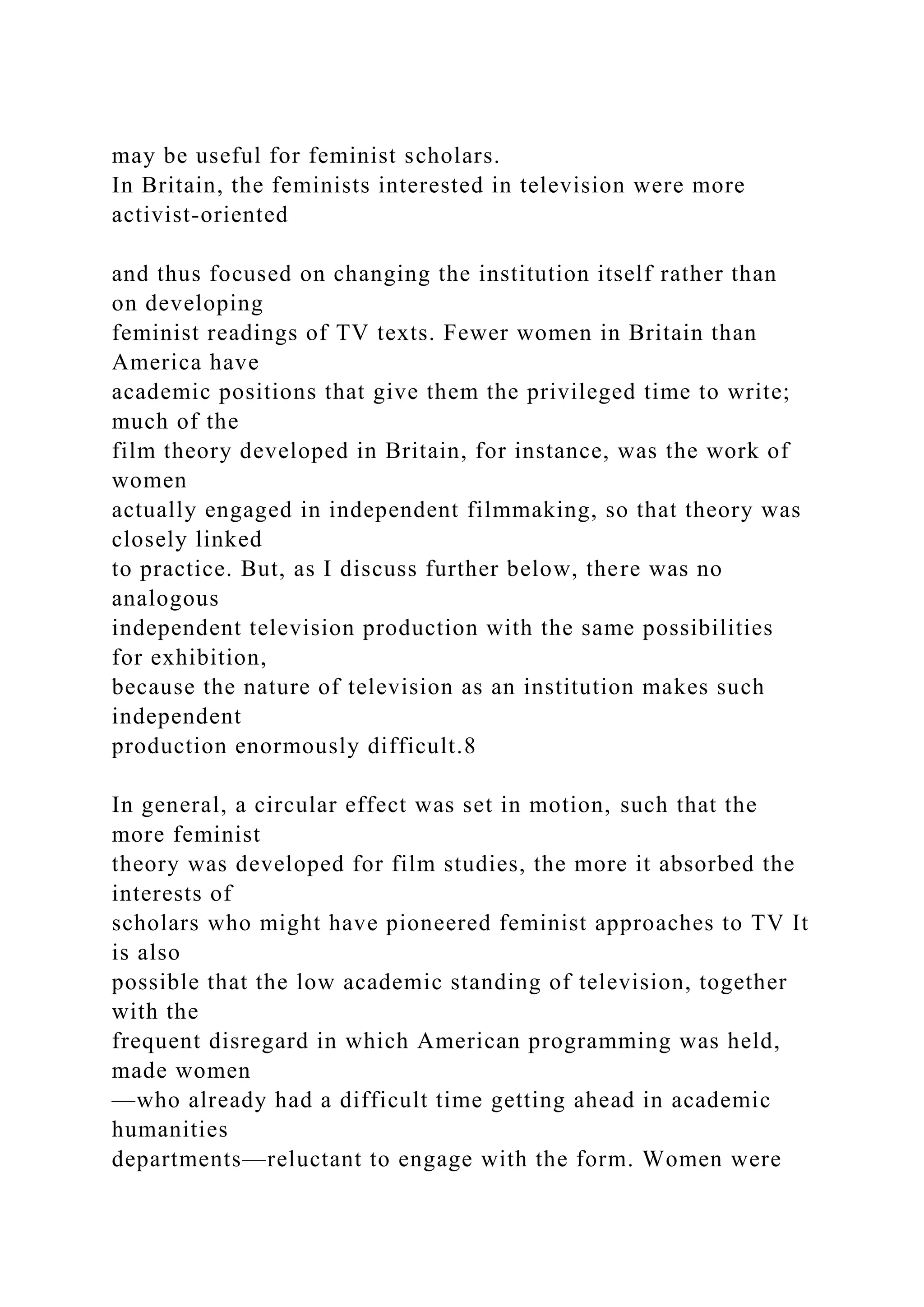
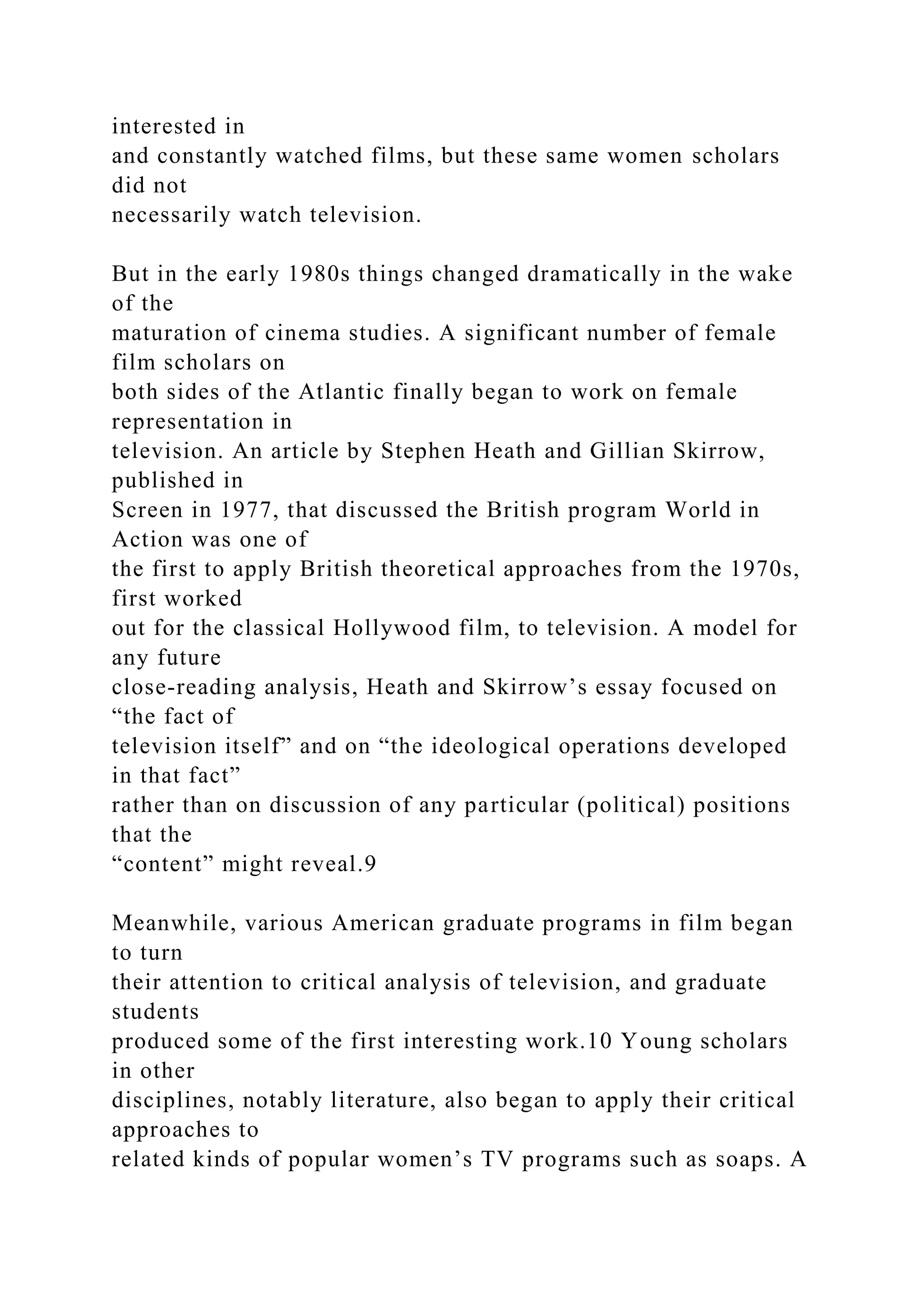


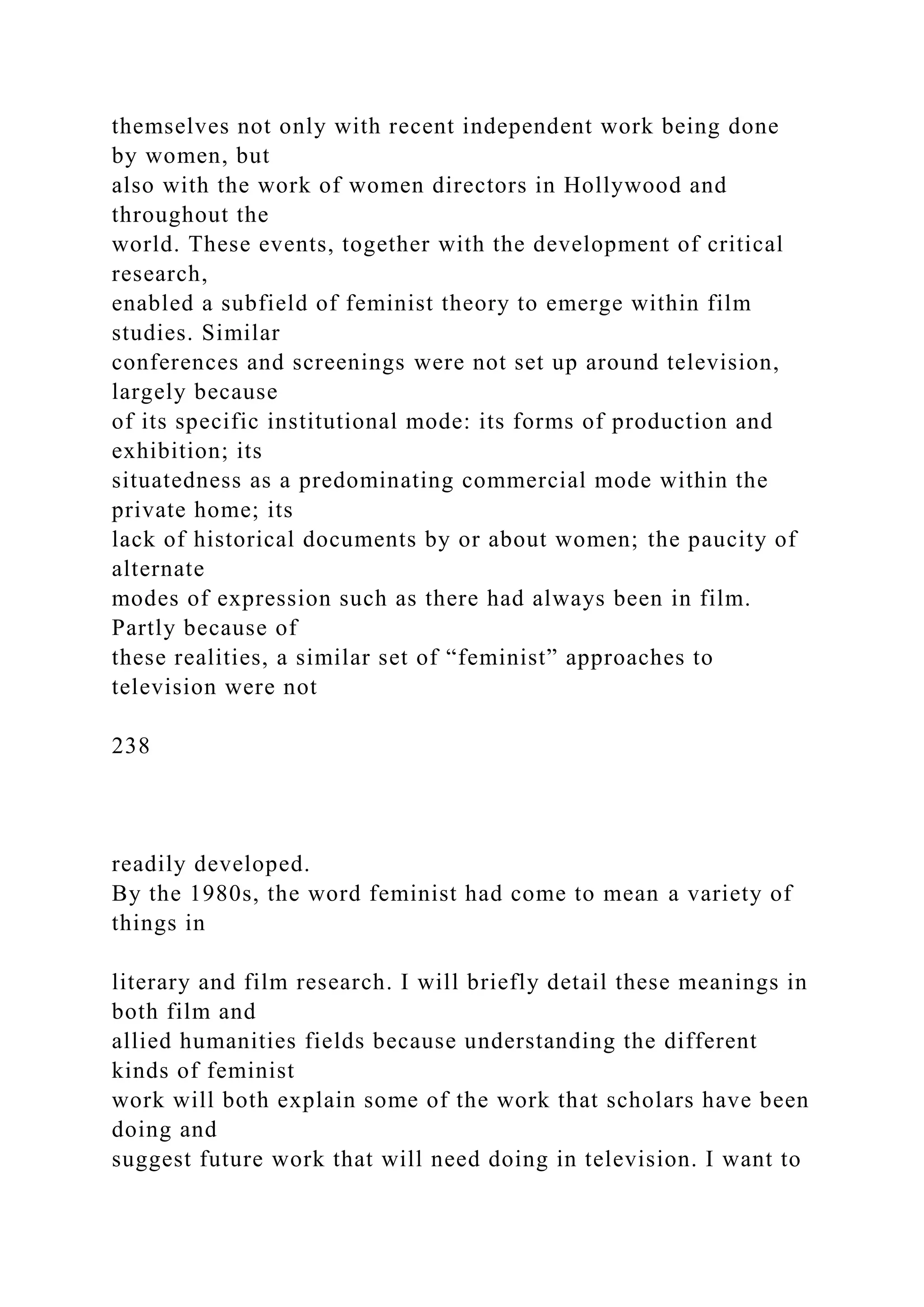
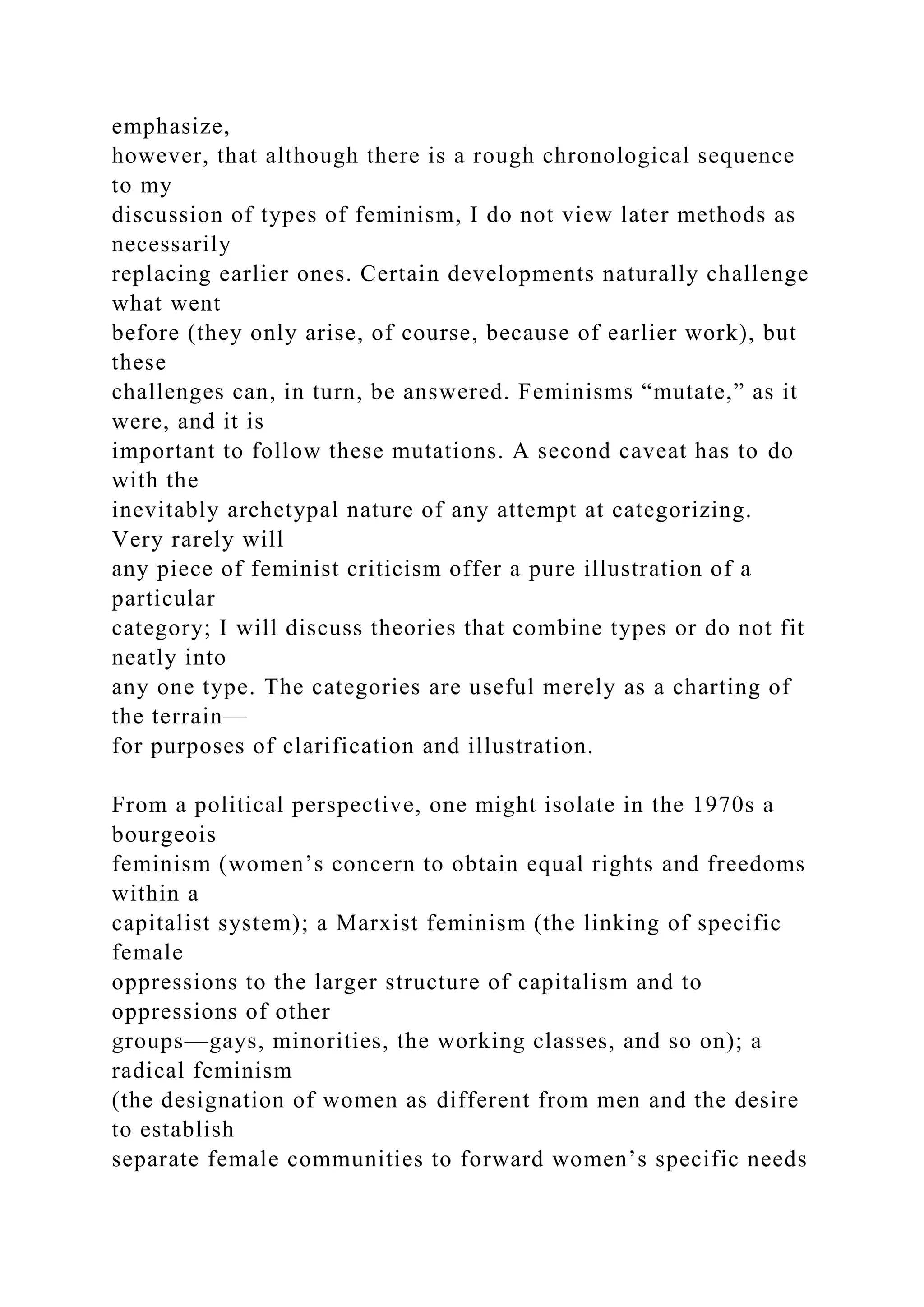
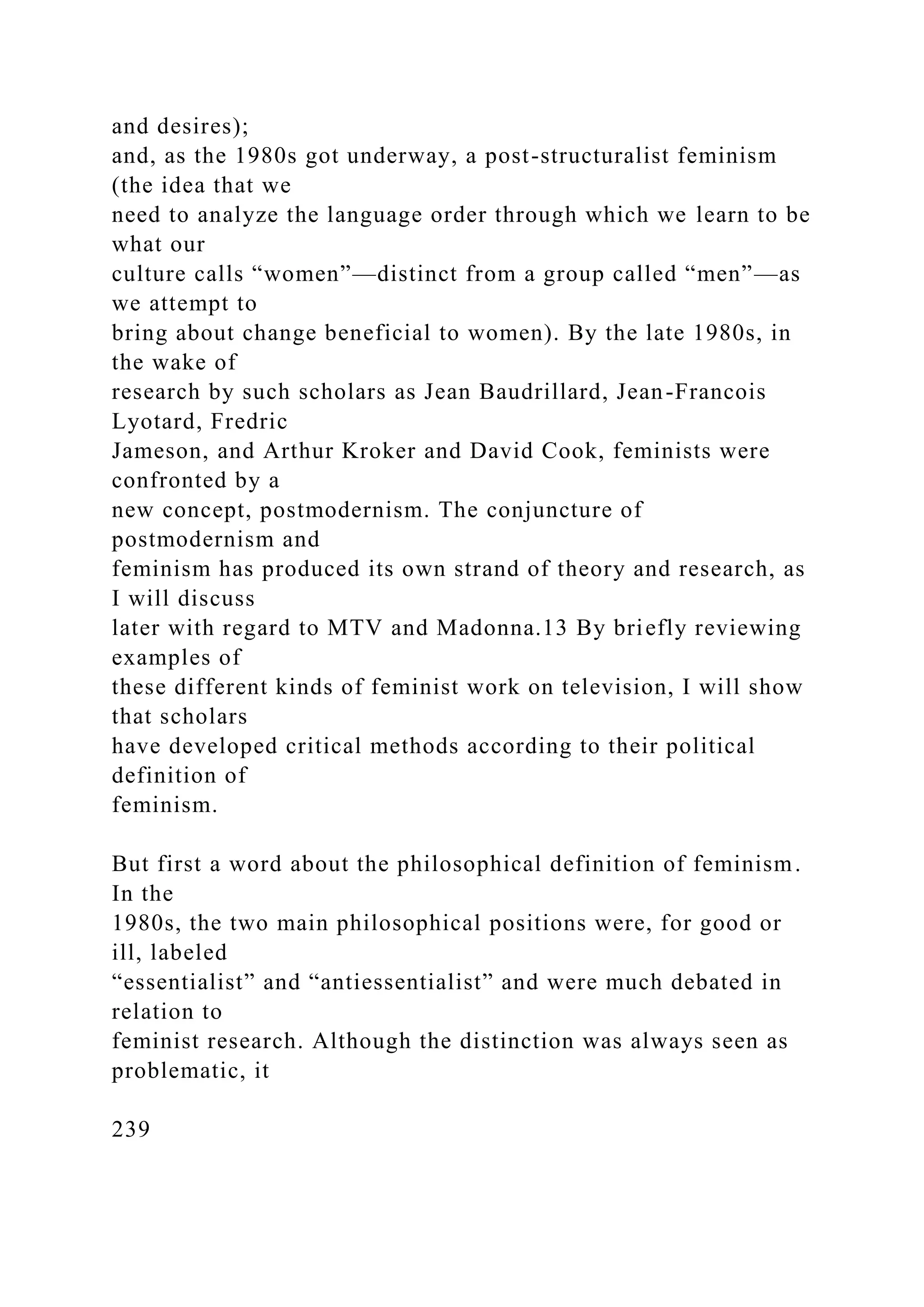
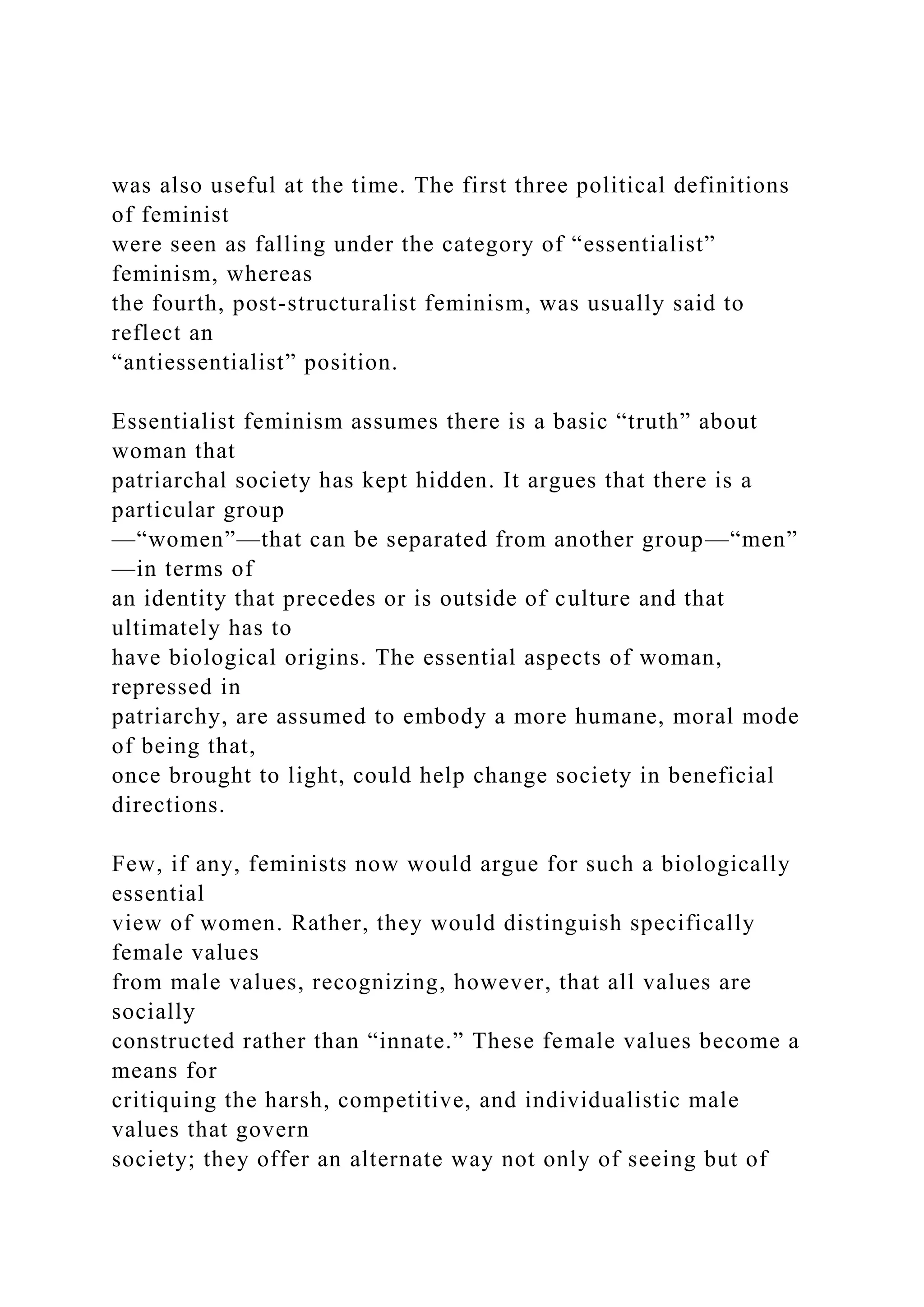

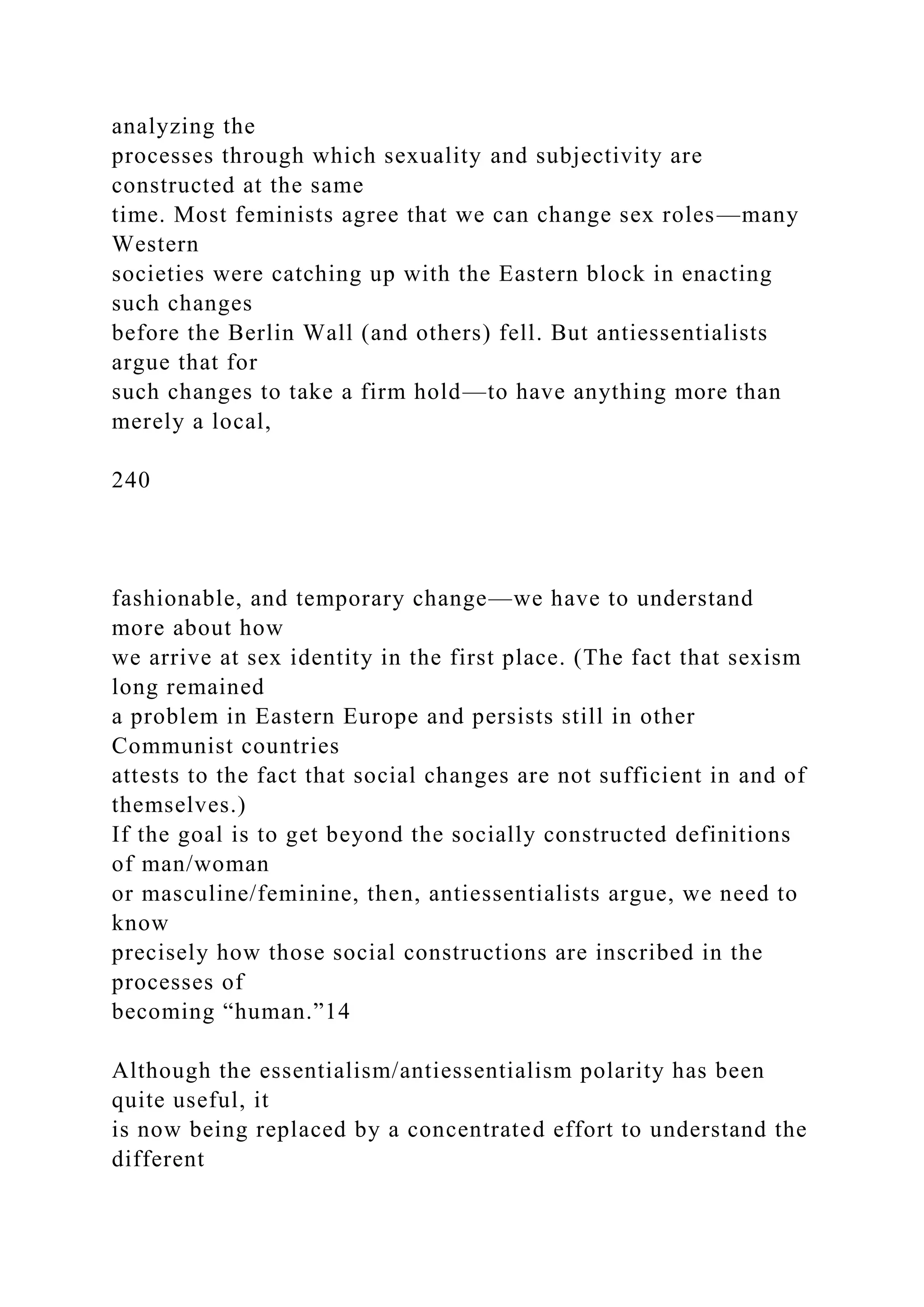
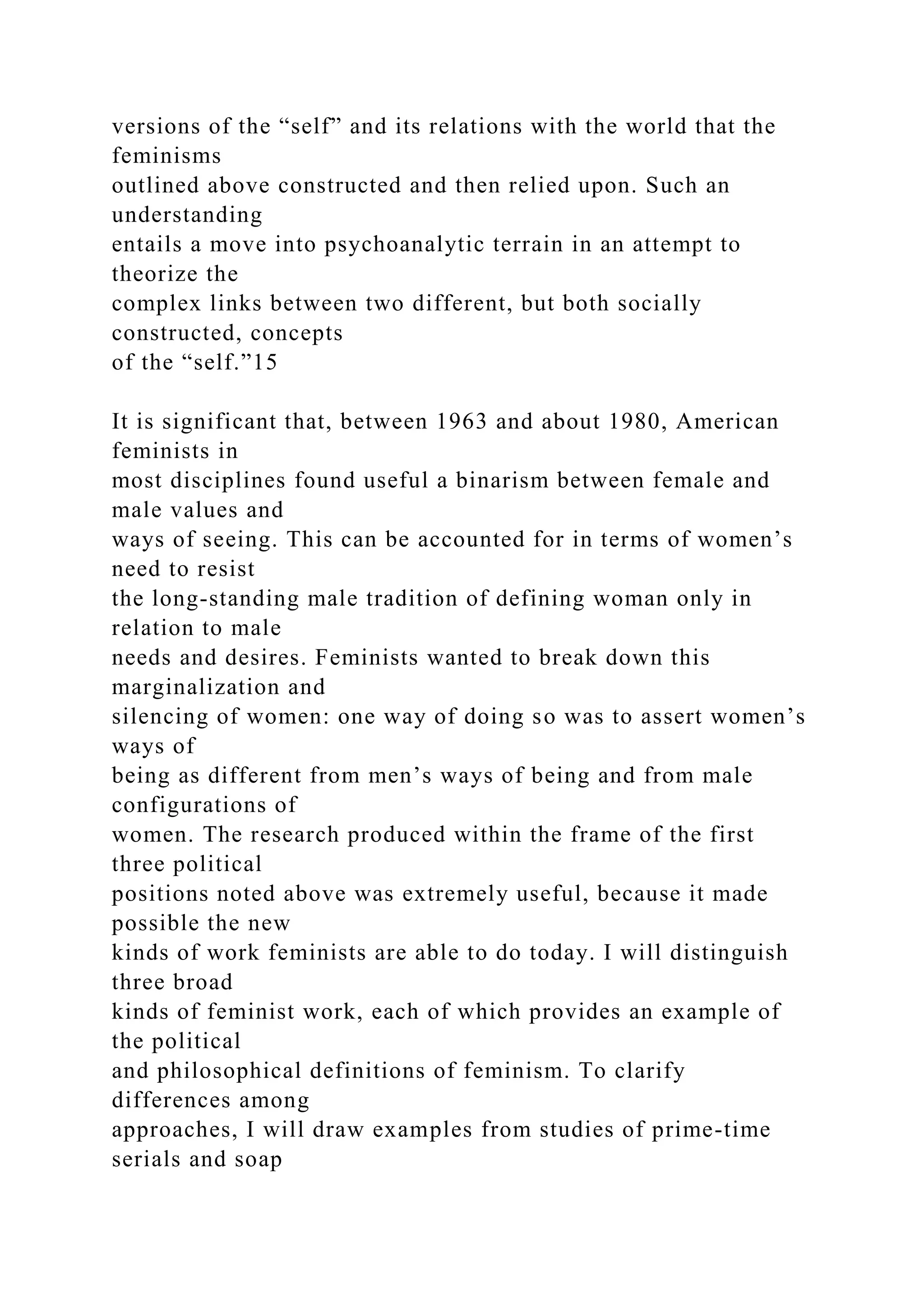
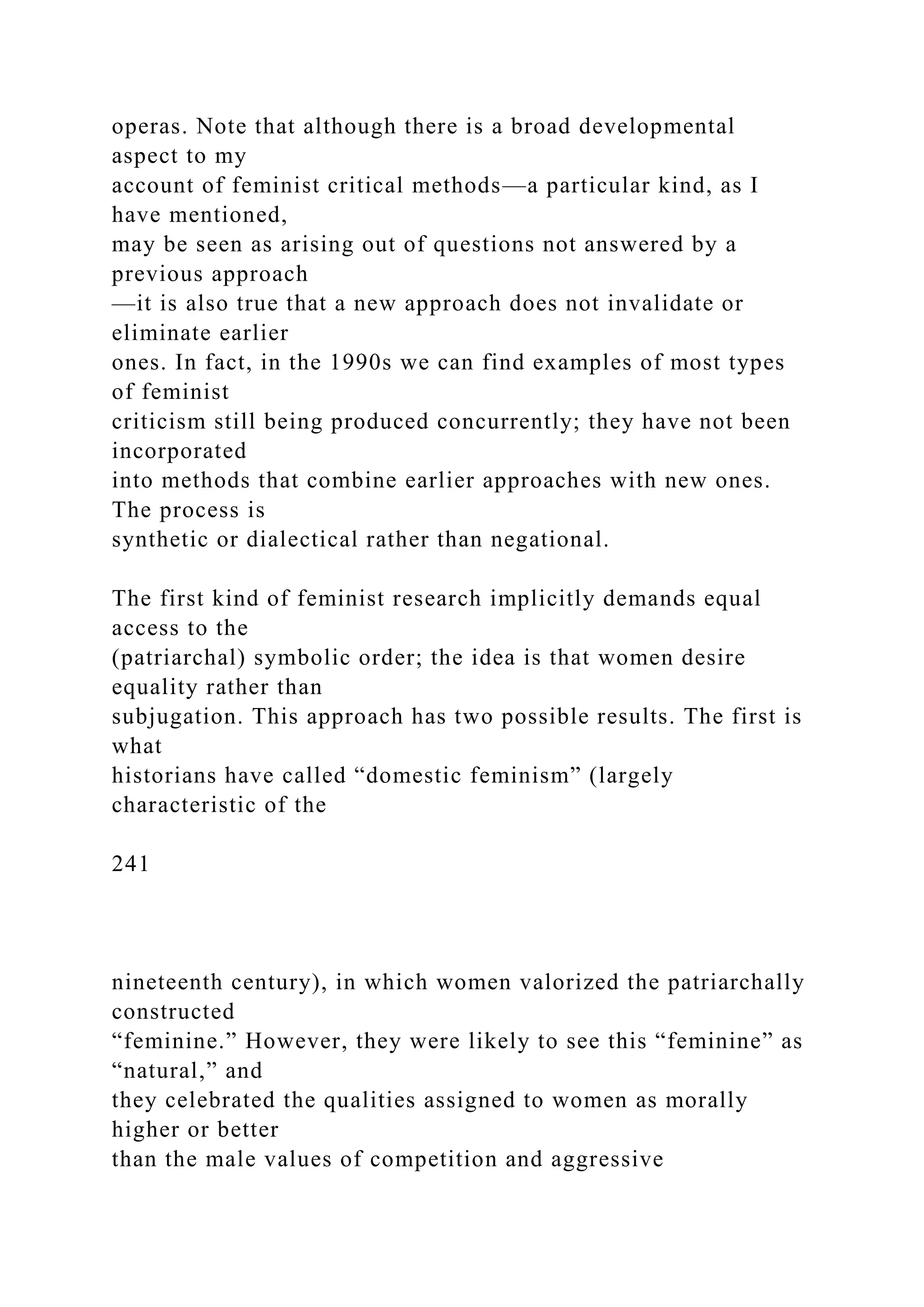
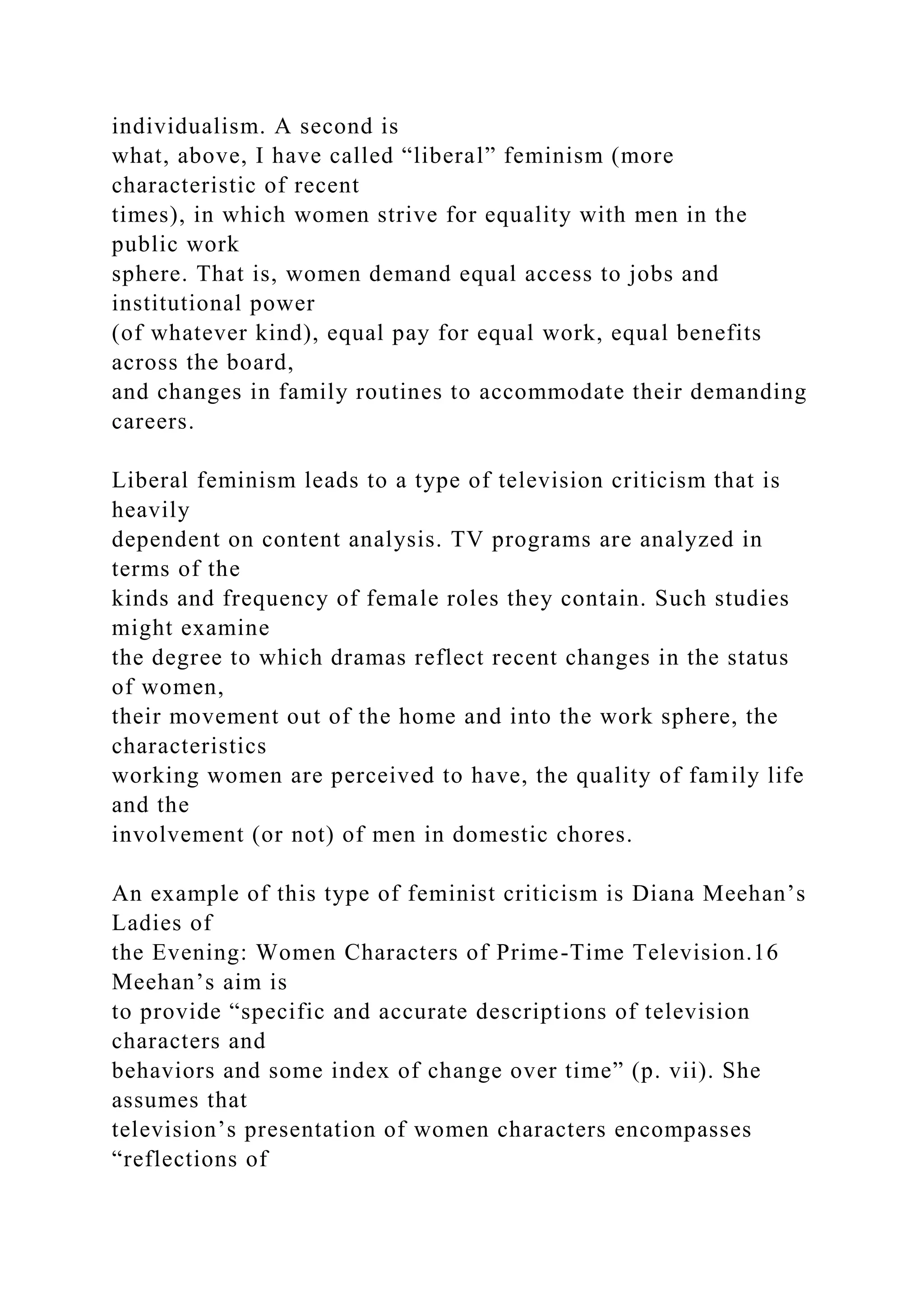
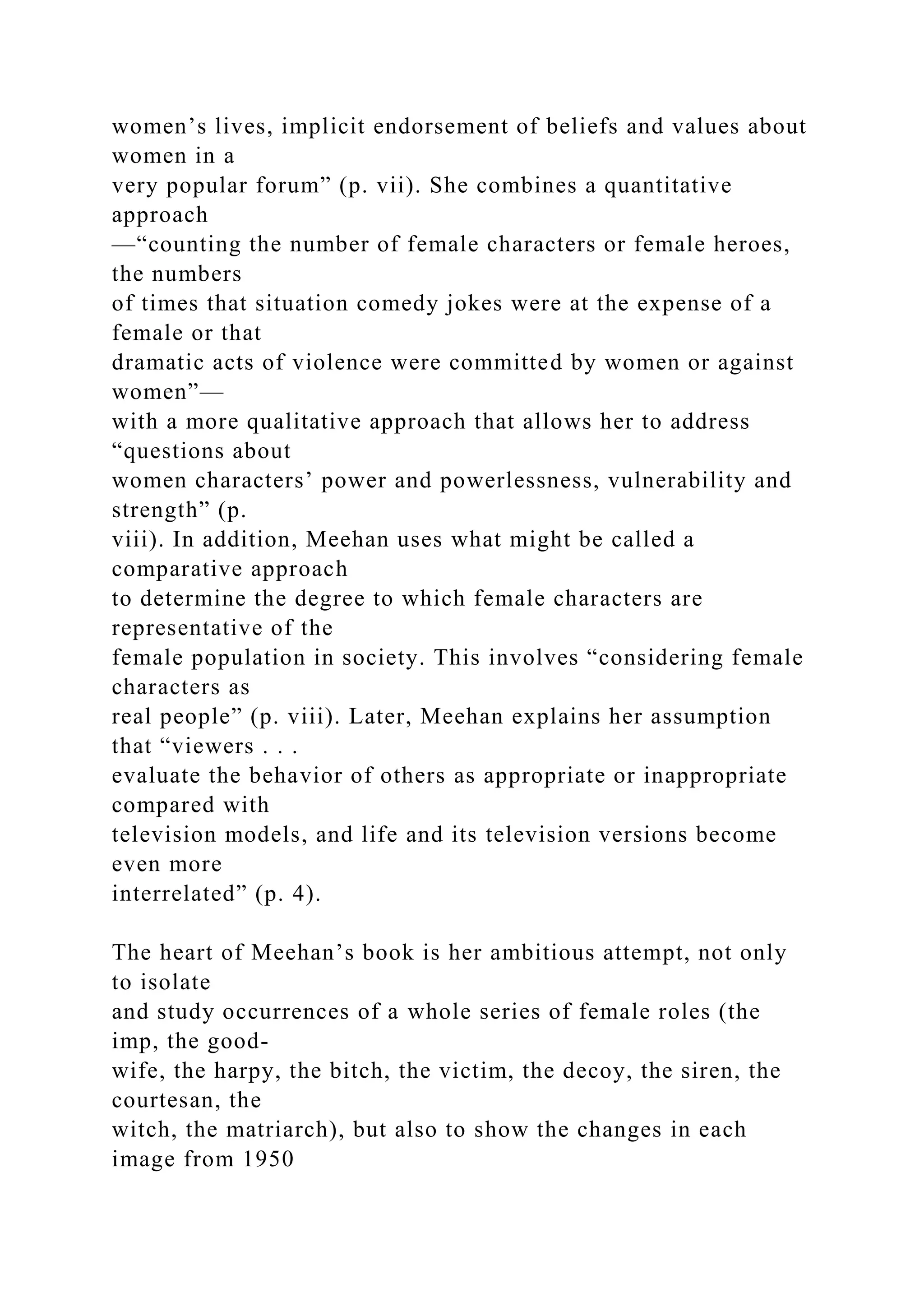
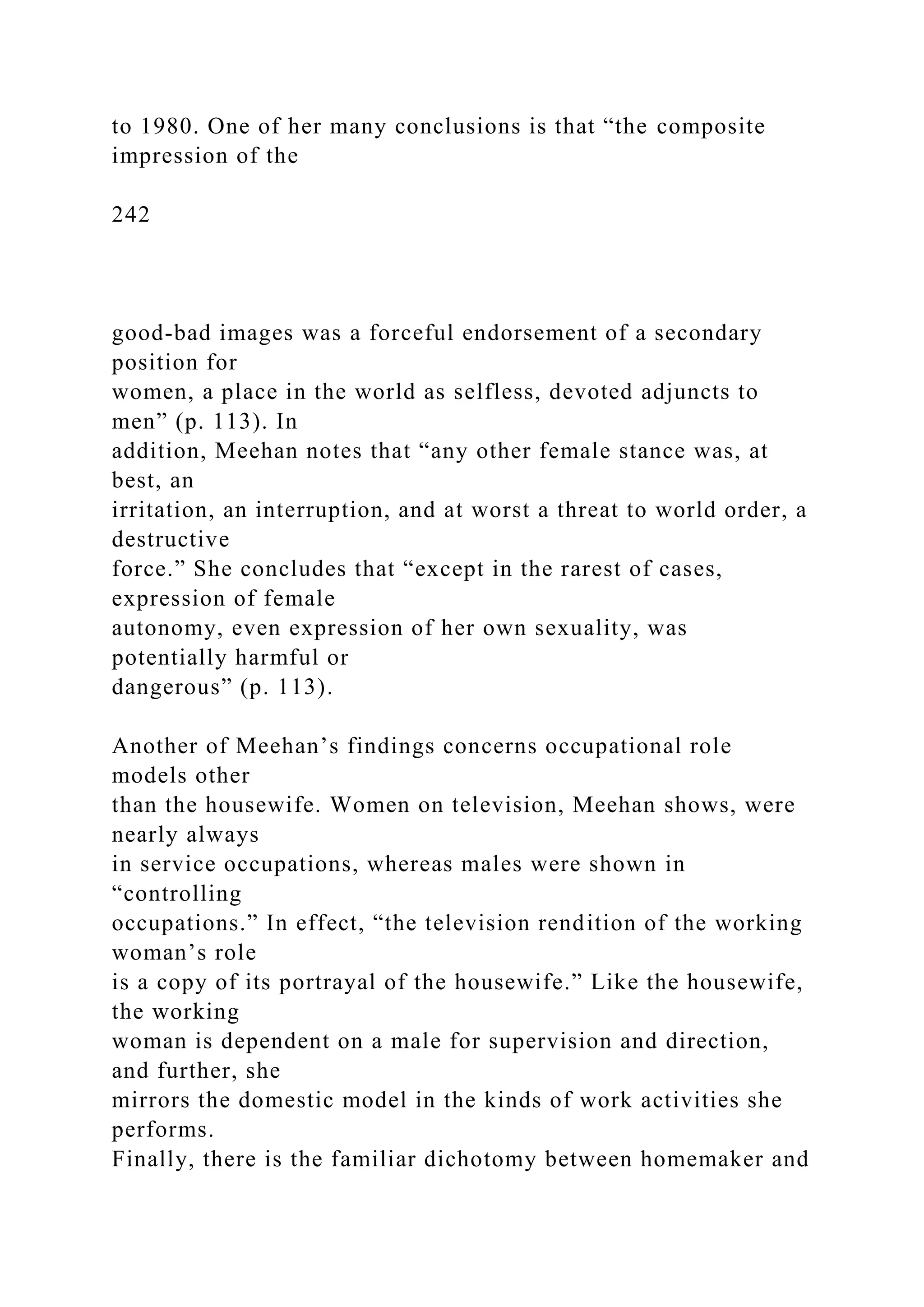


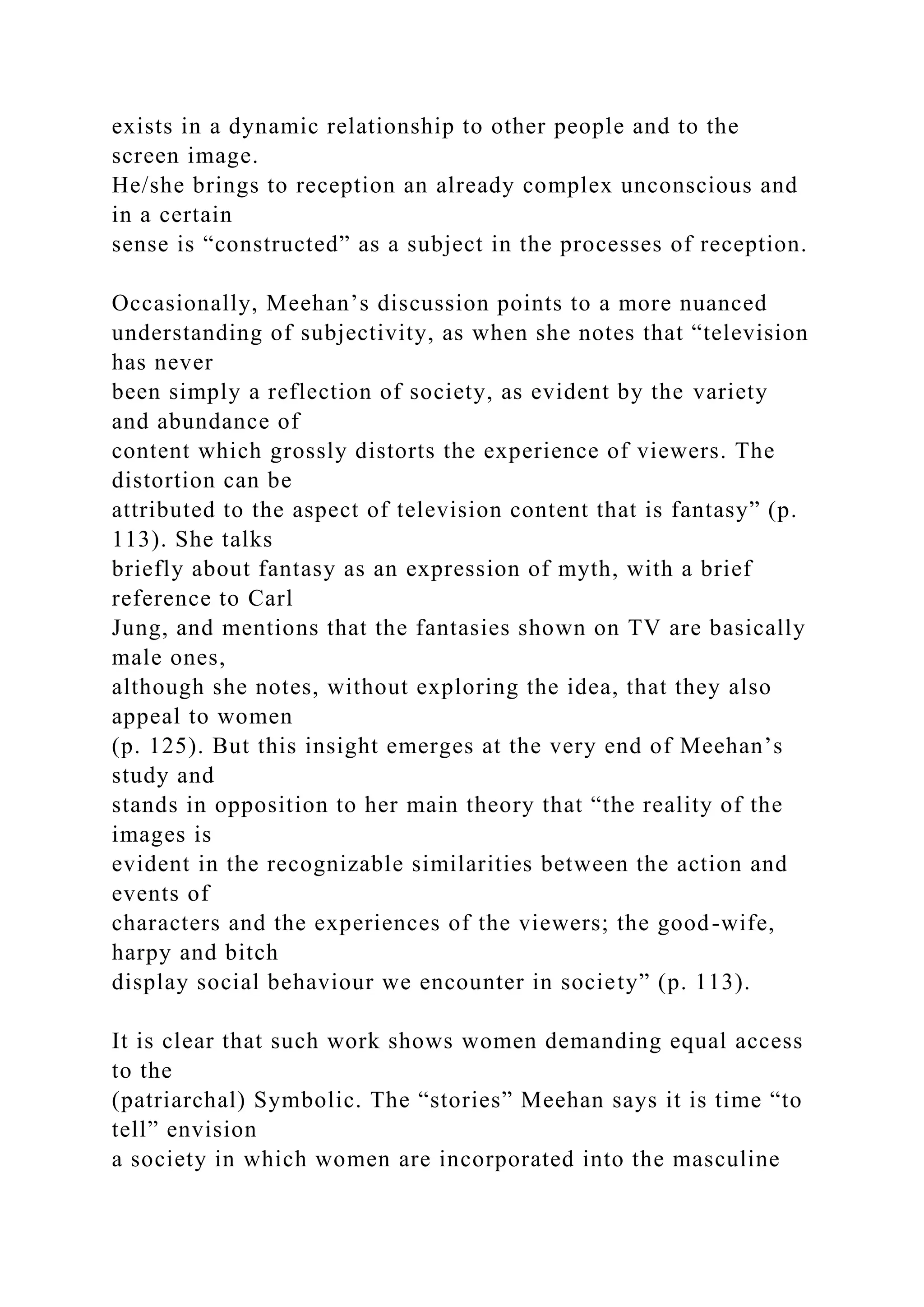
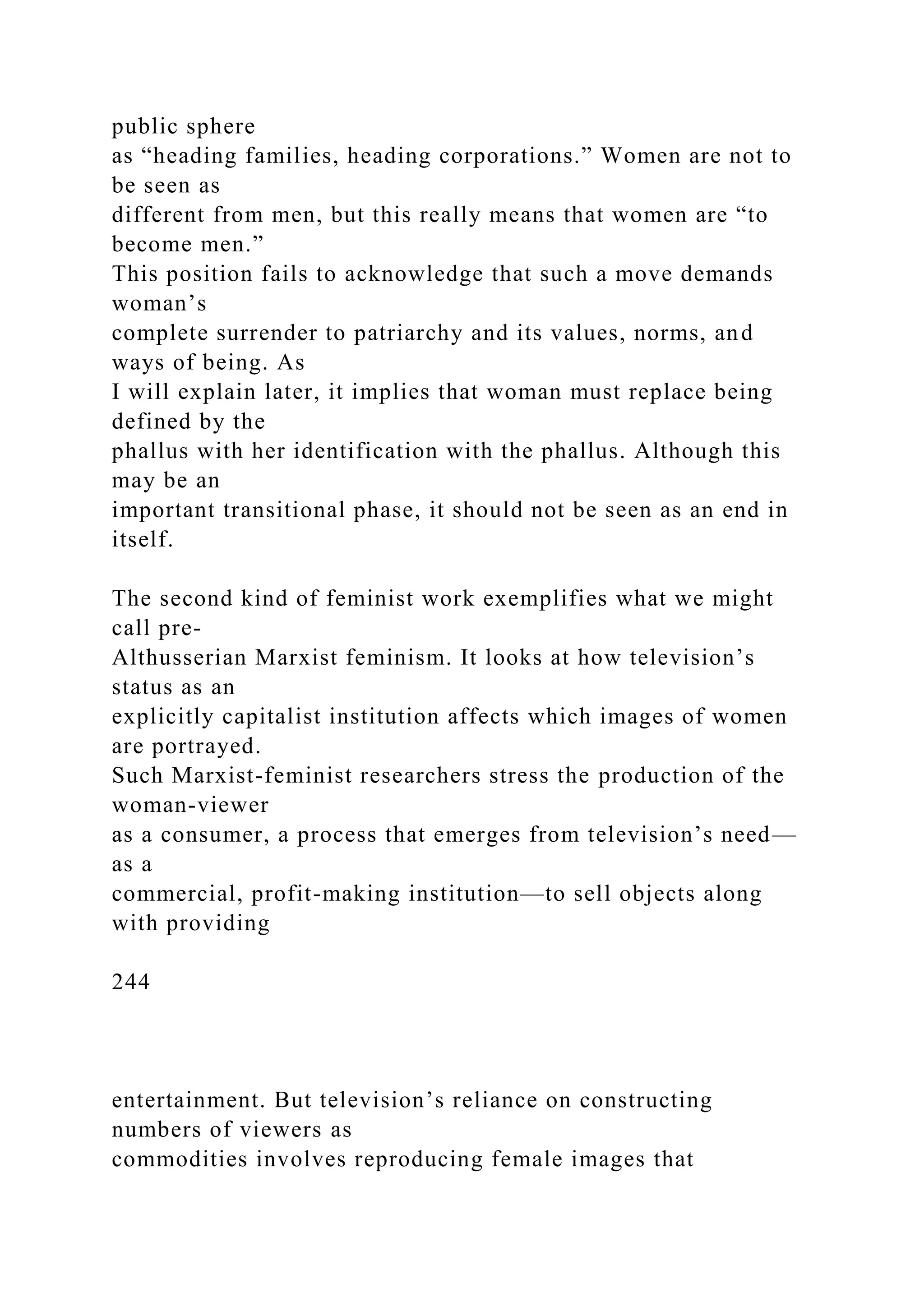
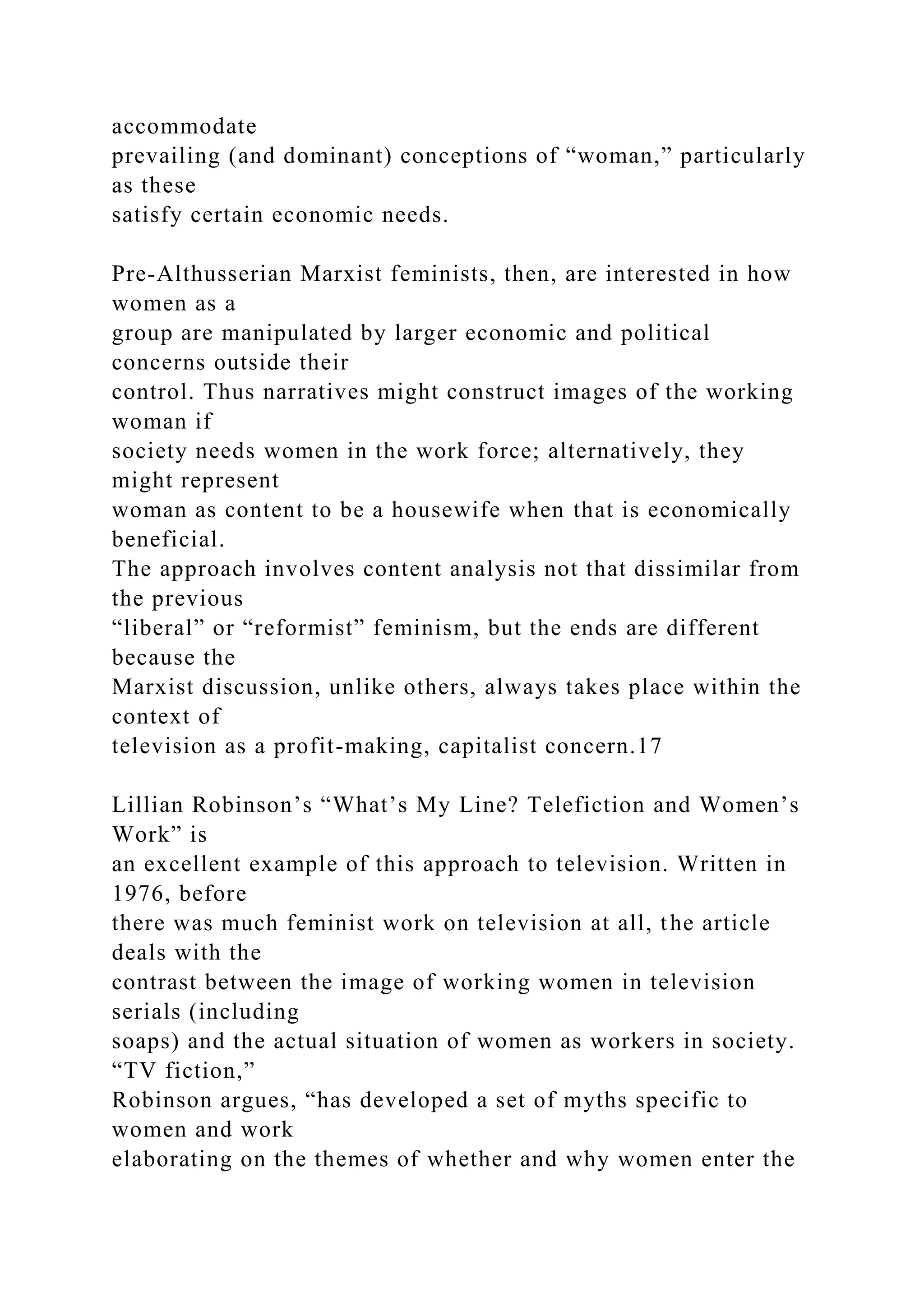
![job market,
what occupations they engage in, how they typically perform
there, how they
interact with the people with and for whom they work.”18
Turning, like
Meehan, to “actual working women” to “test” the images,
Robinson also finds
distortions; whereas TV images collapse women’s work identity
and situation
into sexuality, the real working woman sees herself as a person,
“both worker
and woman—with a job, a boss, a paycheck, and a set of
working conditions,
not a complex of sex roles involved in a workplace” (p. 312).
Unlike Meehan, however, Robinson accounts for these
distortions by
defining television as “a branch of something called the
entertainment
industry,” which, Robinson says, “implies [that] something is
manufactured
here, mass-produced by alienated labor for the consumers who
constitute its
mass audience” (p. 313). But Robinson refuses to fall into
Meehan’s trap of
conceiving her audience as completely vulnerable to the images
provided. She
argues, rather, that women do not necessarily accept what they
are shown, and
that the images are merely “one of the factors that influence the
consciousness
of women” but do not provide the whole story (p. 313).
Robinson contrasts the statistics relating to women’s work in
society with
TV images of working women. She finds that, despite the trend](https://image.slidesharecdn.com/channelsofdiscoursereassembled2channelsof-221018173716-6fc0655a/75/Channels-of-Discourse-Reassembled2Channels-of-docx-544-2048.jpg)

![general silliness of women’s reasons for working, women’s
jobs, and
women’s characteristic performance at them” (p. 324). Her
Marxist-feminist
point of view leads her to comment that TV shows carefully do
not
foreground the fact that these jobs “are normally unproductive
and often
socially useless” and “that most of them pay minimal wages . . .
those jobs
arranged through a temporary agency [creating] double
exploitation” (p. 324).
Robinson concludes by examining images of professional
women, and she
finds, interestingly, that such images are definitely there,
“larger than life size
and in far greater numbers than the real world, in which most of
us still work
as typists, waitresses, and saleswomen, would admit” (p. 335).
Robinson
assumes that the drastic fates that befall these TV professional
women are
meant as some kind of a warning to real women not to aim so
high. This
warning, she feels, is premature except insofar as it contributes
to three
interconnected myths: “that women enjoy a higher status than
we feminists
claim; that this status has been and may be achieved without
fundamental
social upheaval; and that having a career nonetheless poses a
very real threat
to female nature, to individual women’s stability, and to
institutions like the
family that are built on these twin foundations” (p. 335).](https://image.slidesharecdn.com/channelsofdiscoursereassembled2channelsof-221018173716-6fc0655a/75/Channels-of-Discourse-Reassembled2Channels-of-docx-546-2048.jpg)
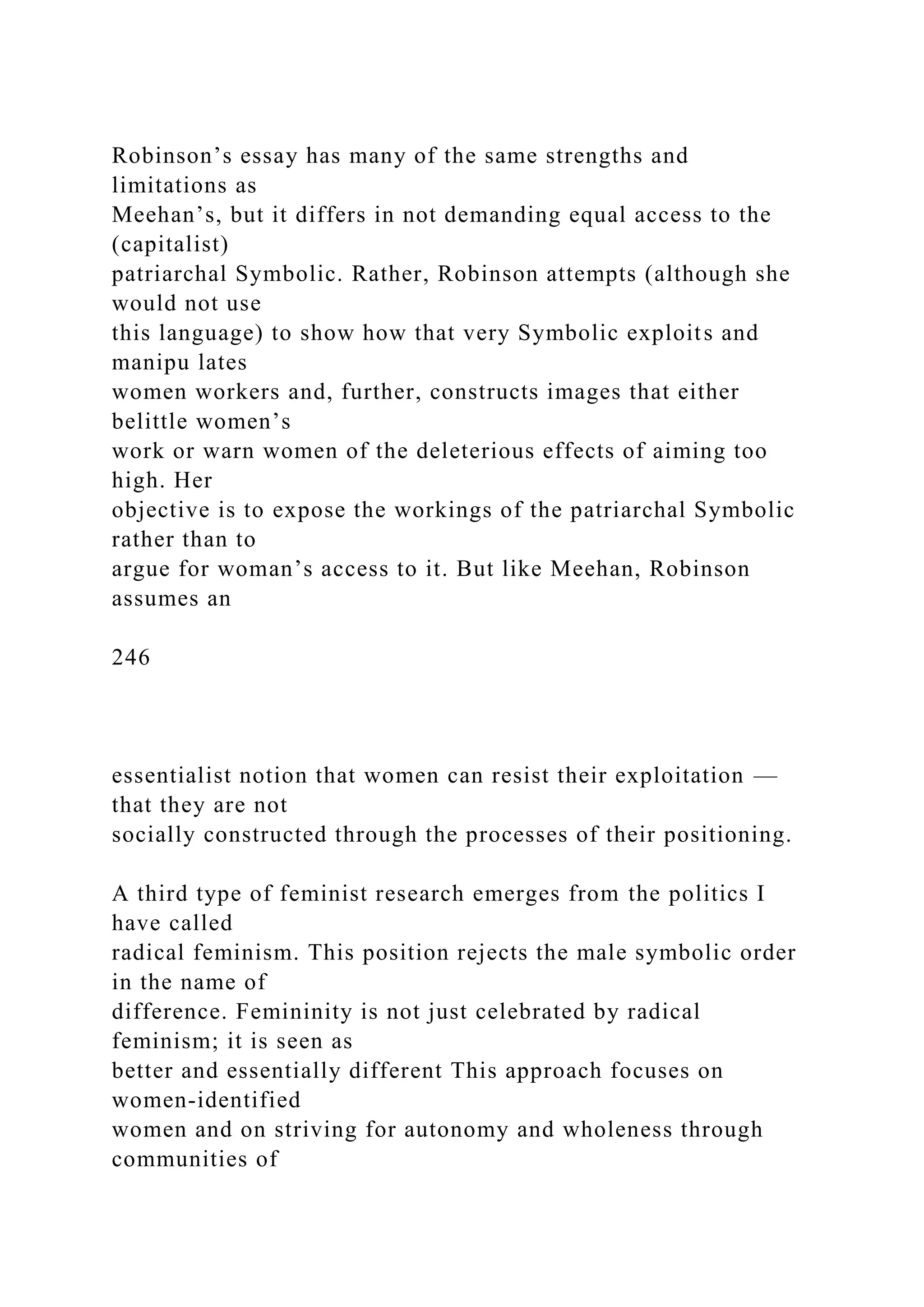
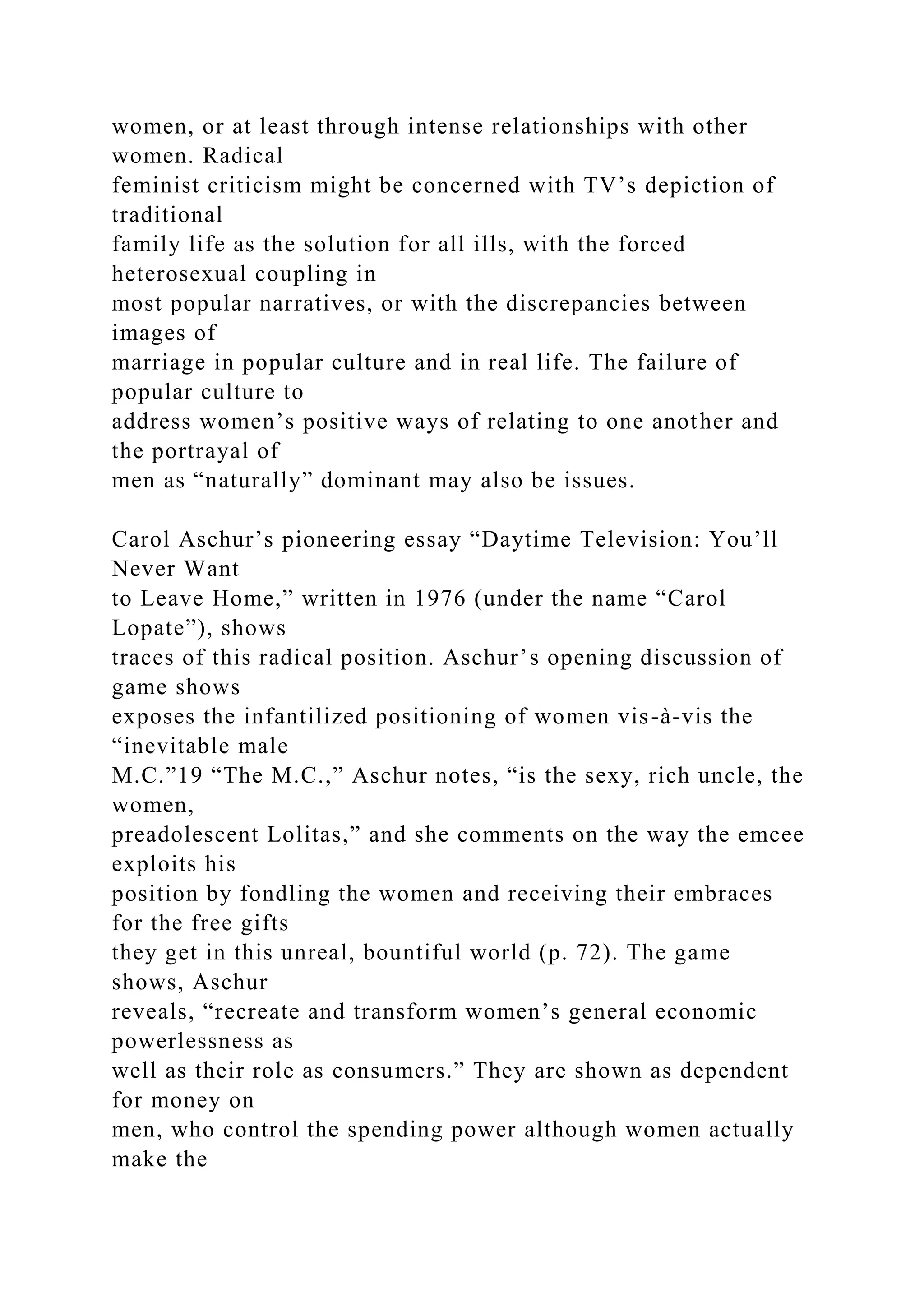
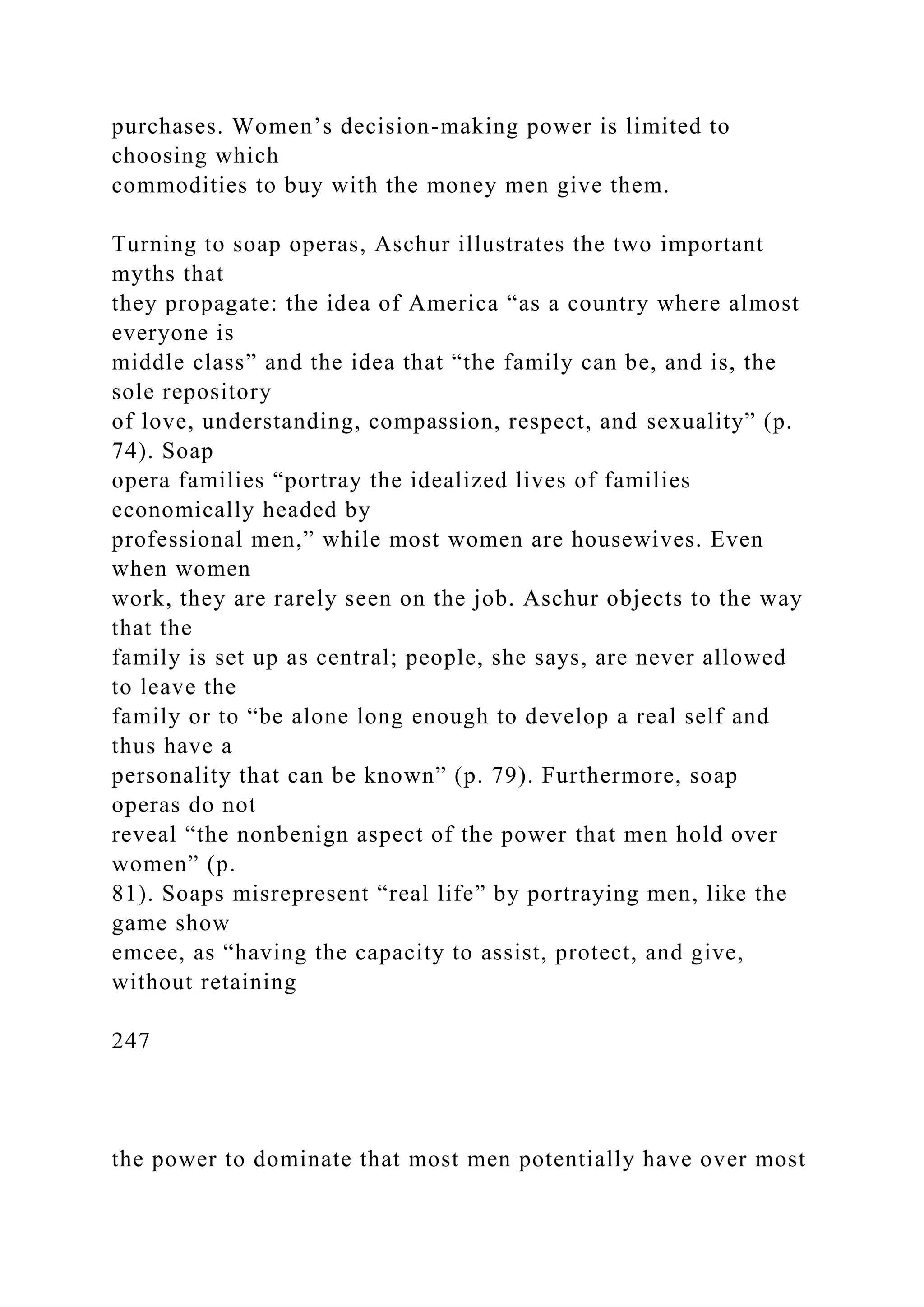
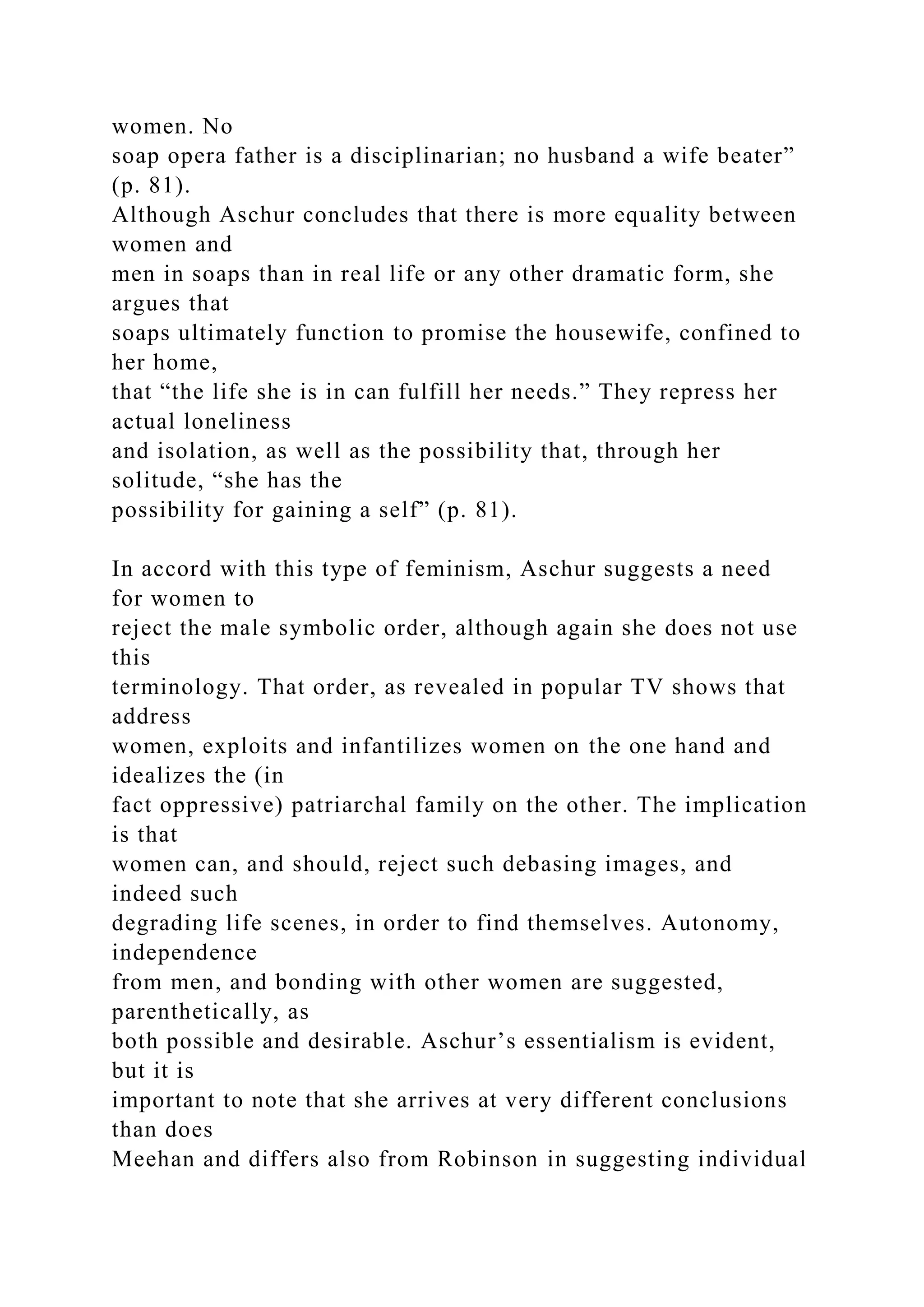
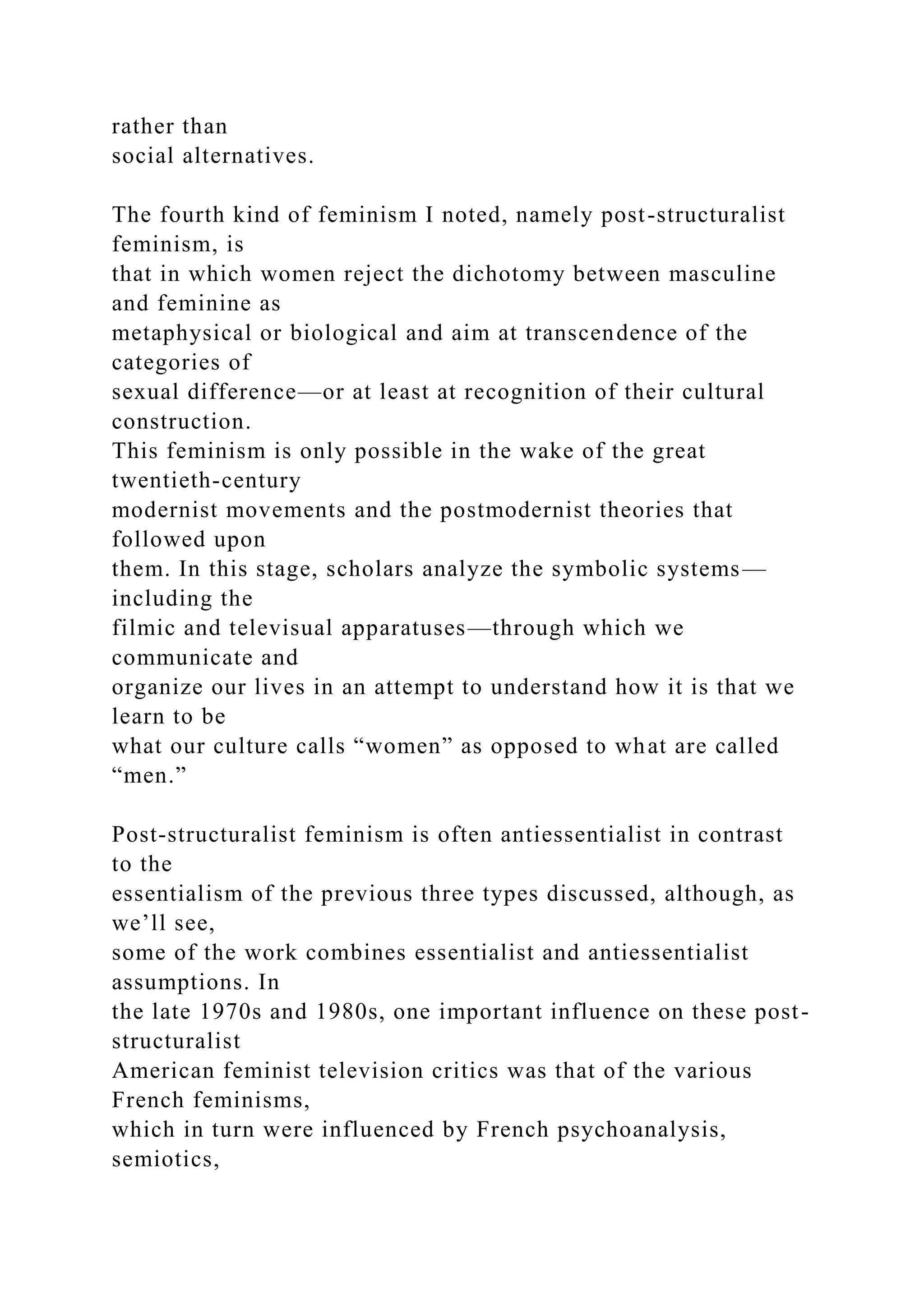
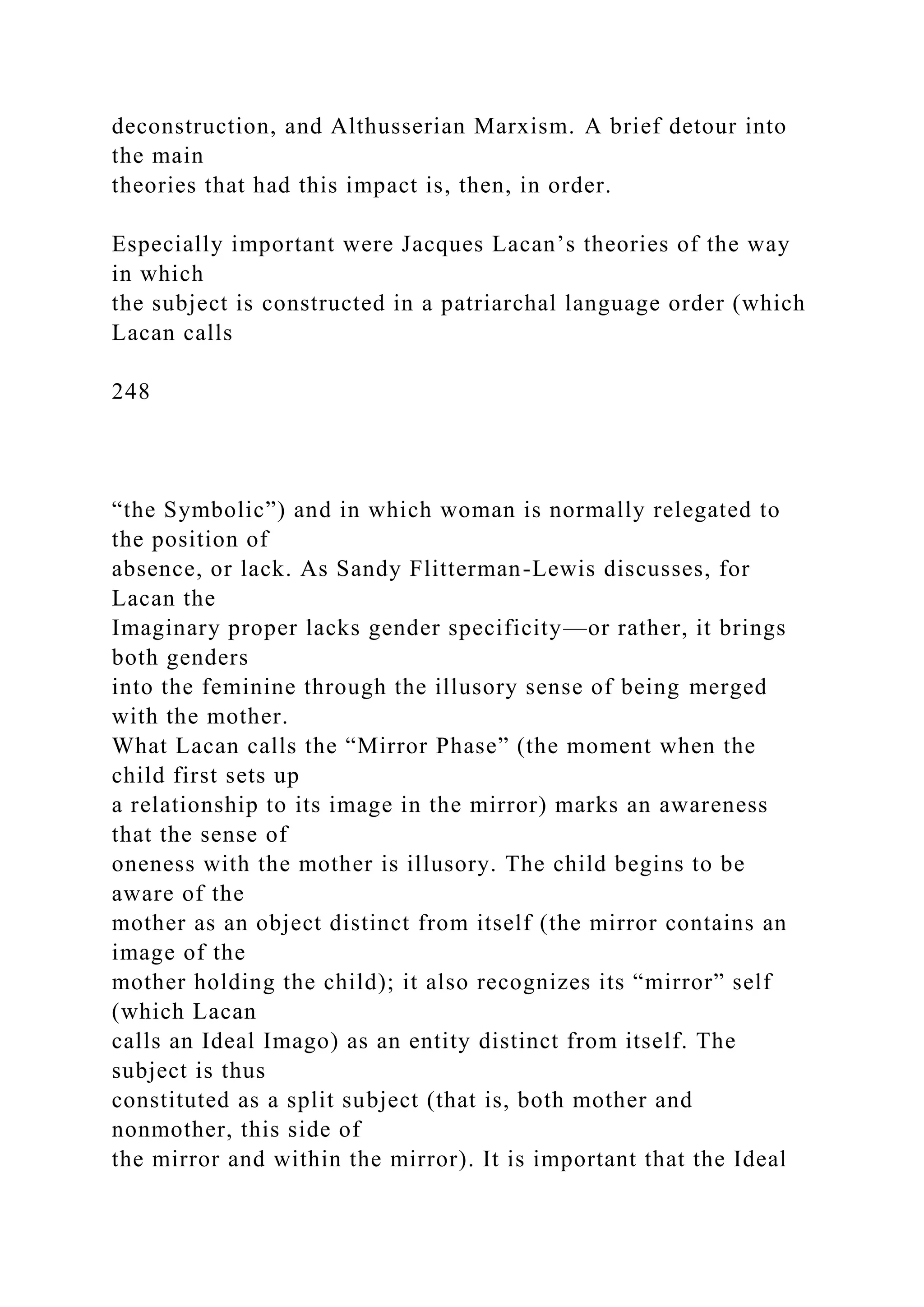
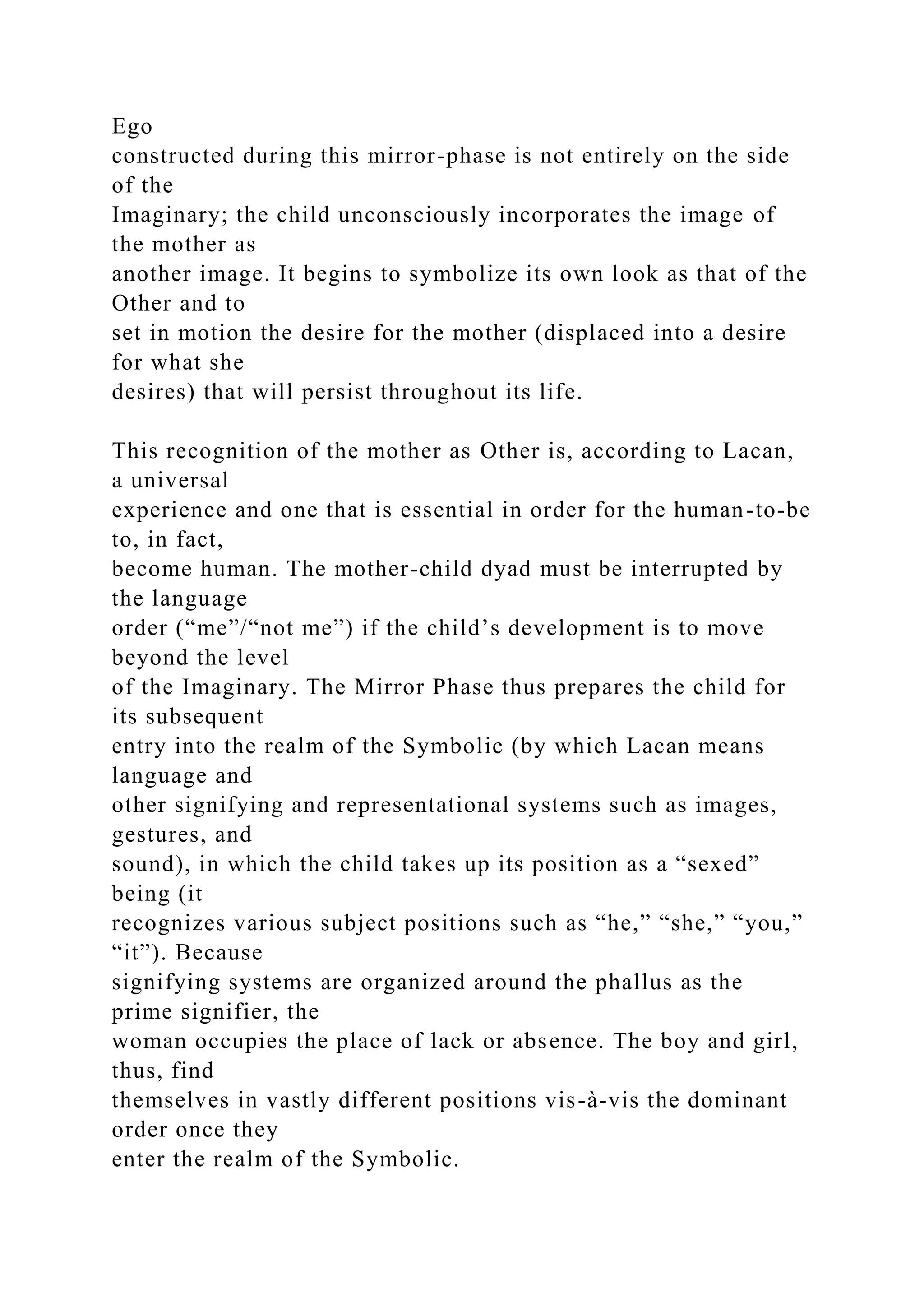

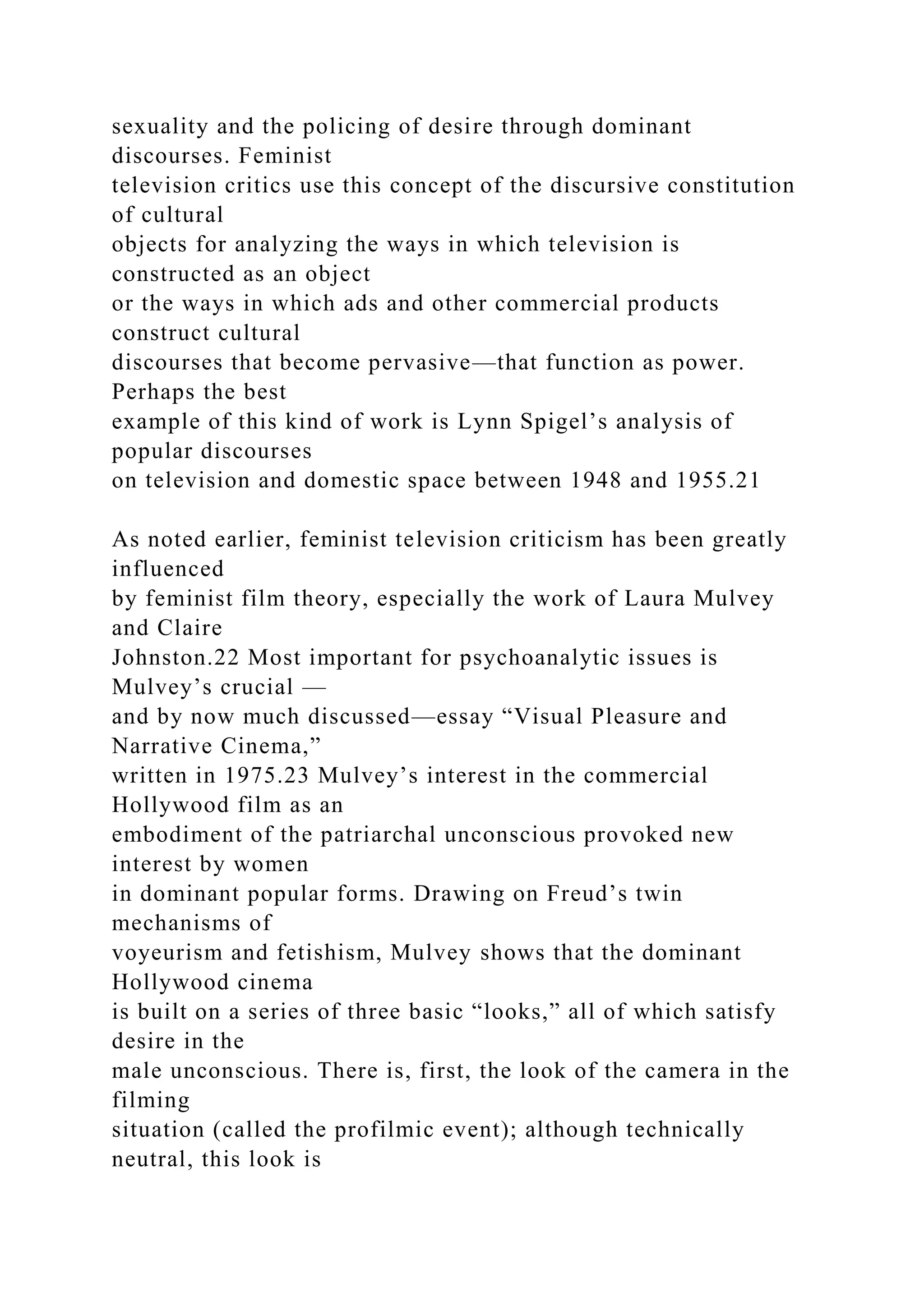
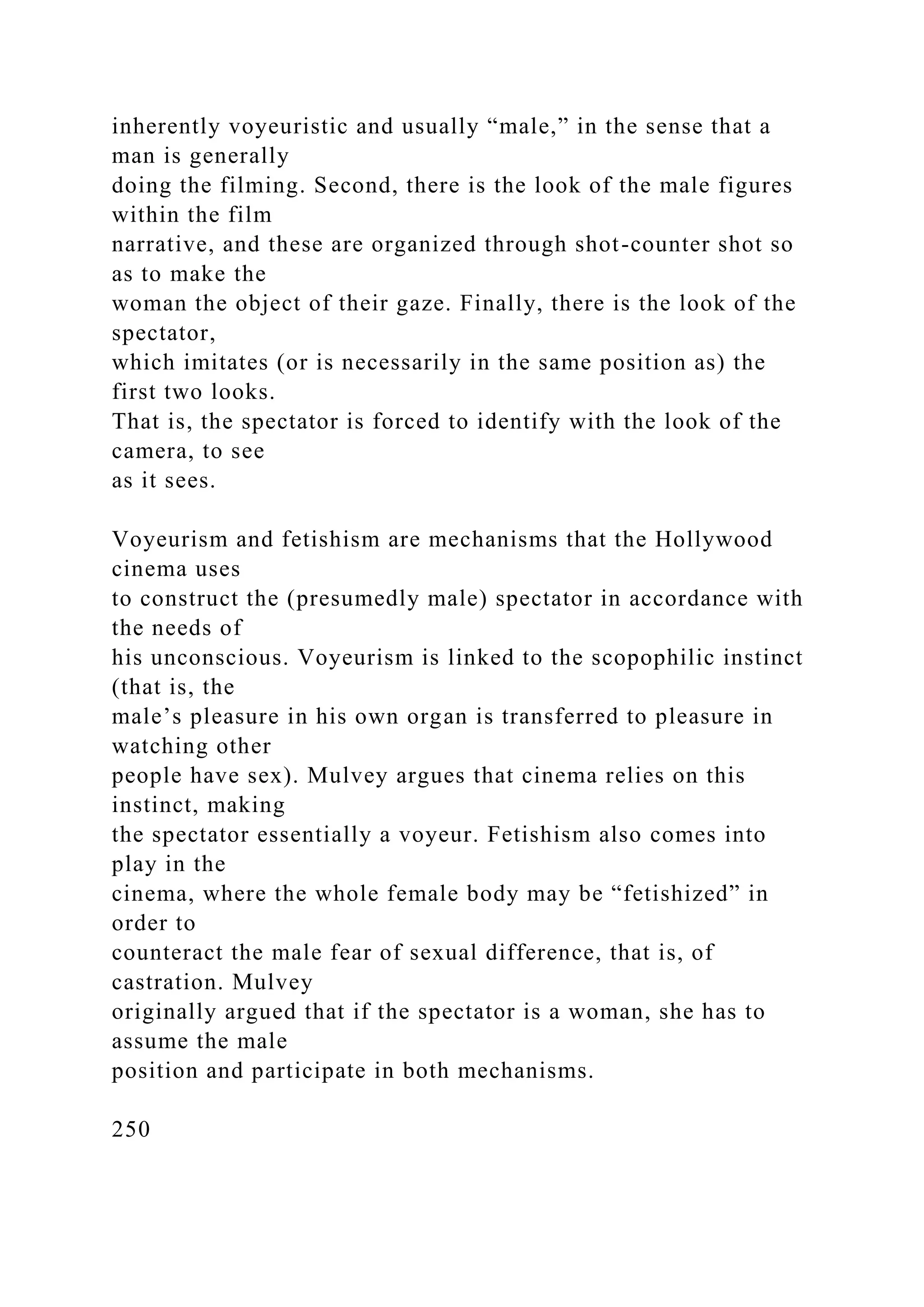
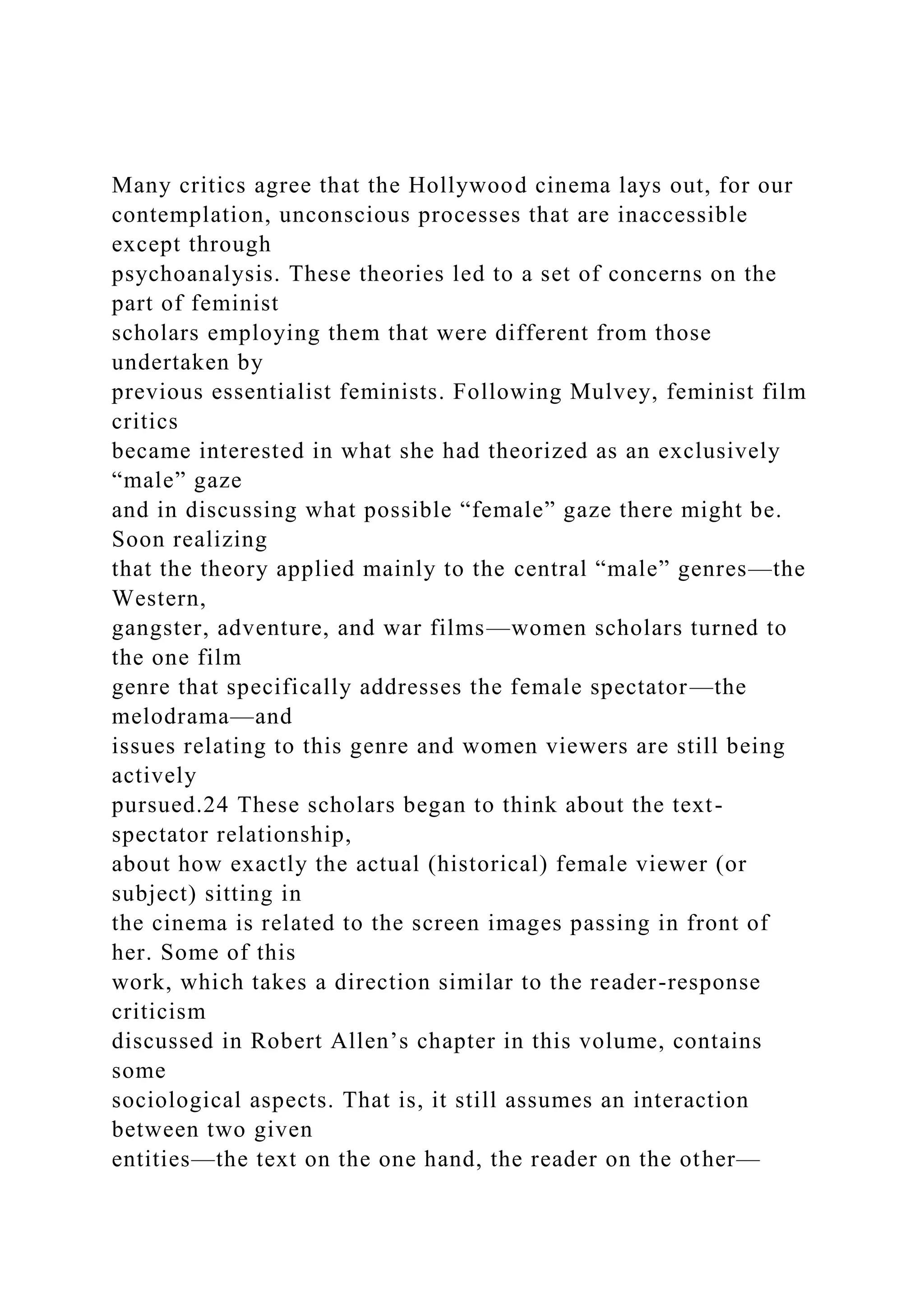
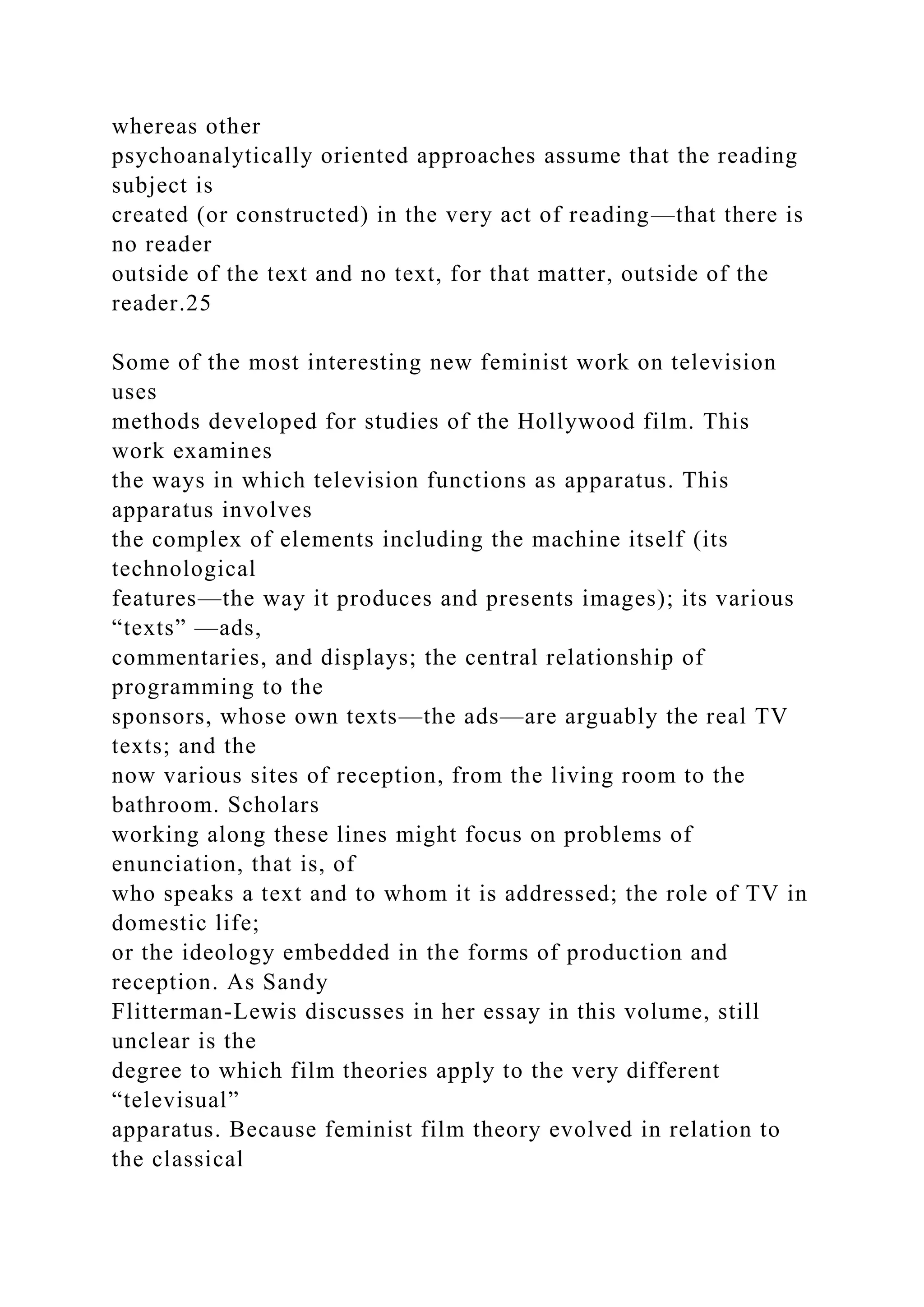
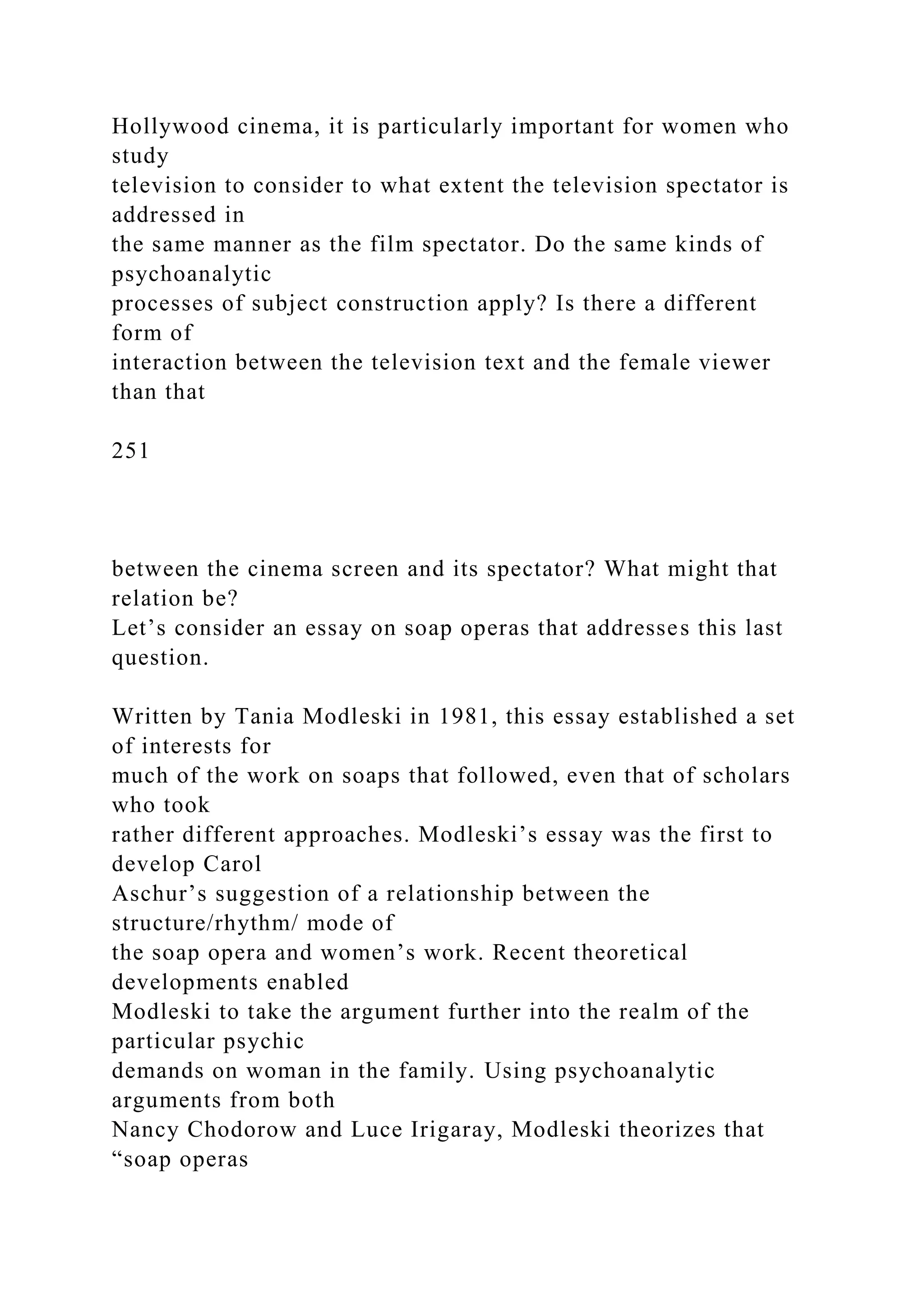
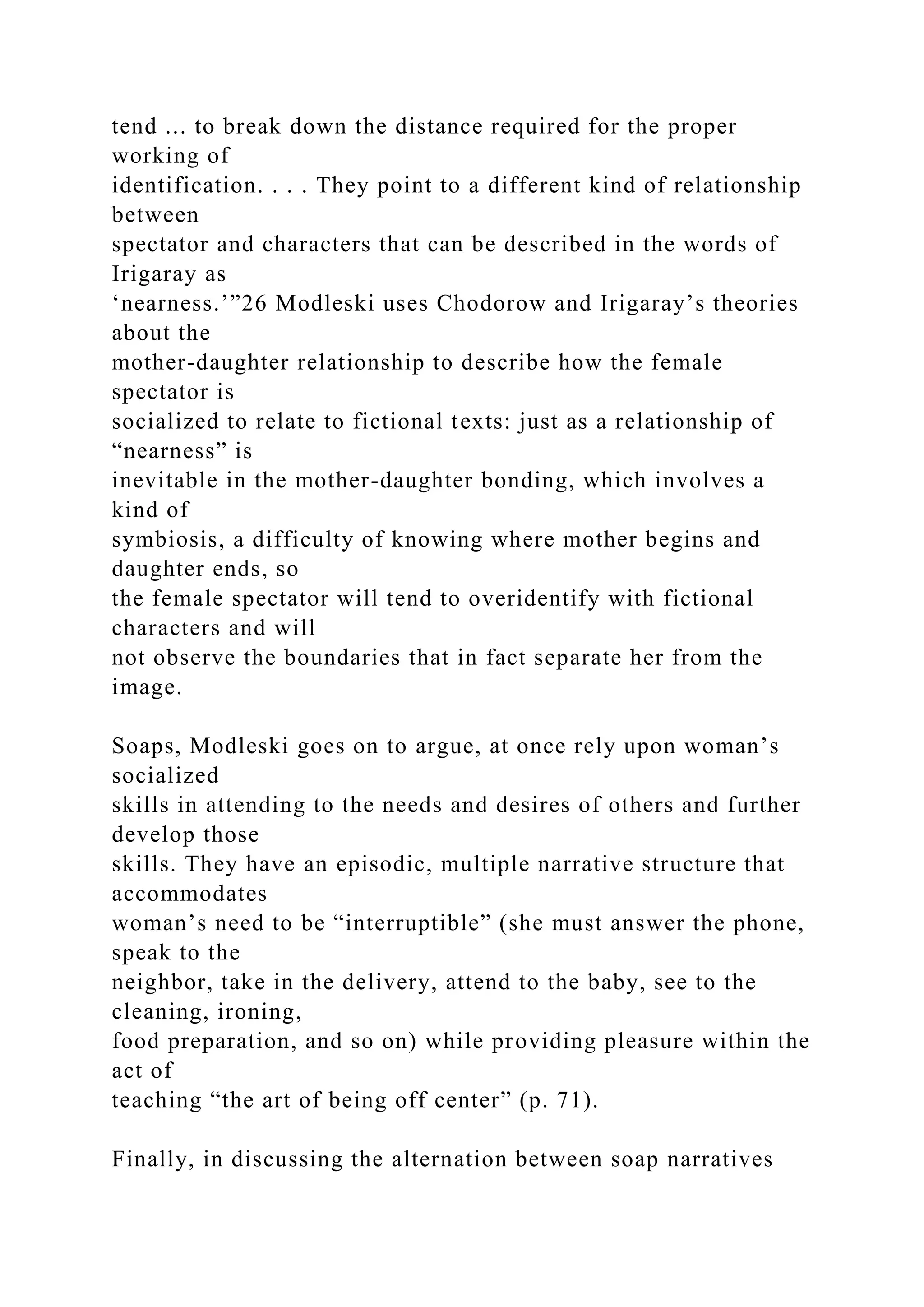
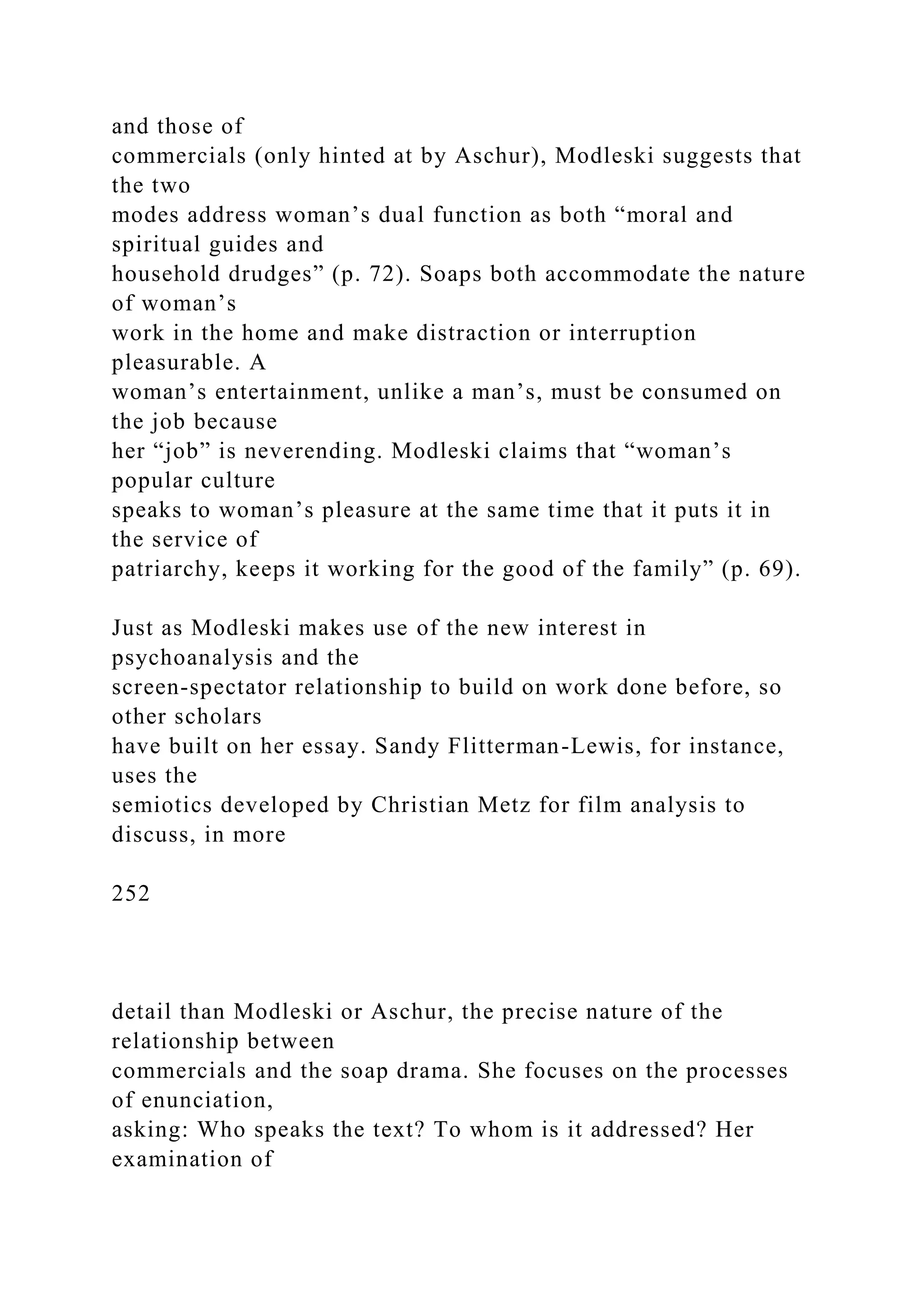
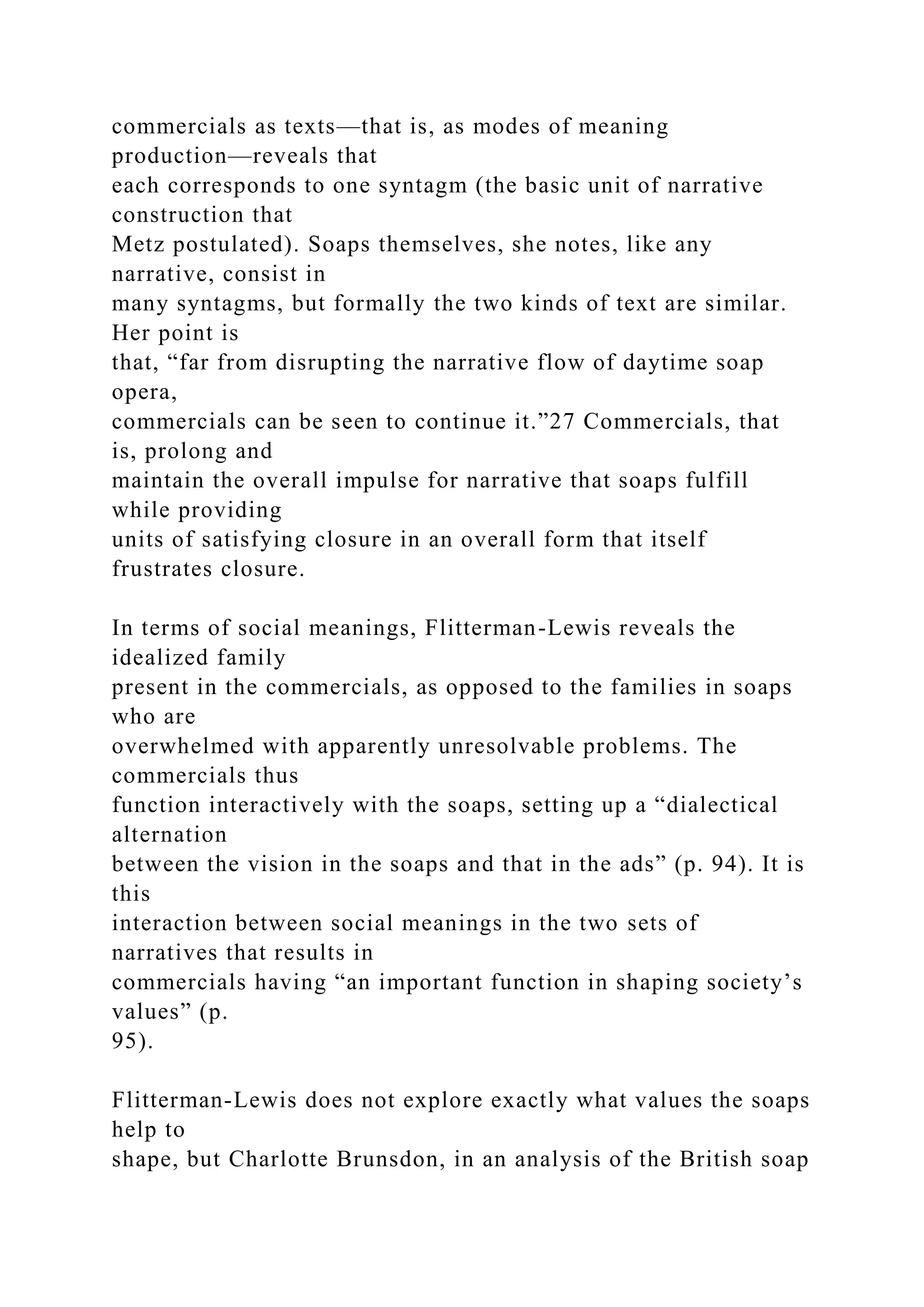
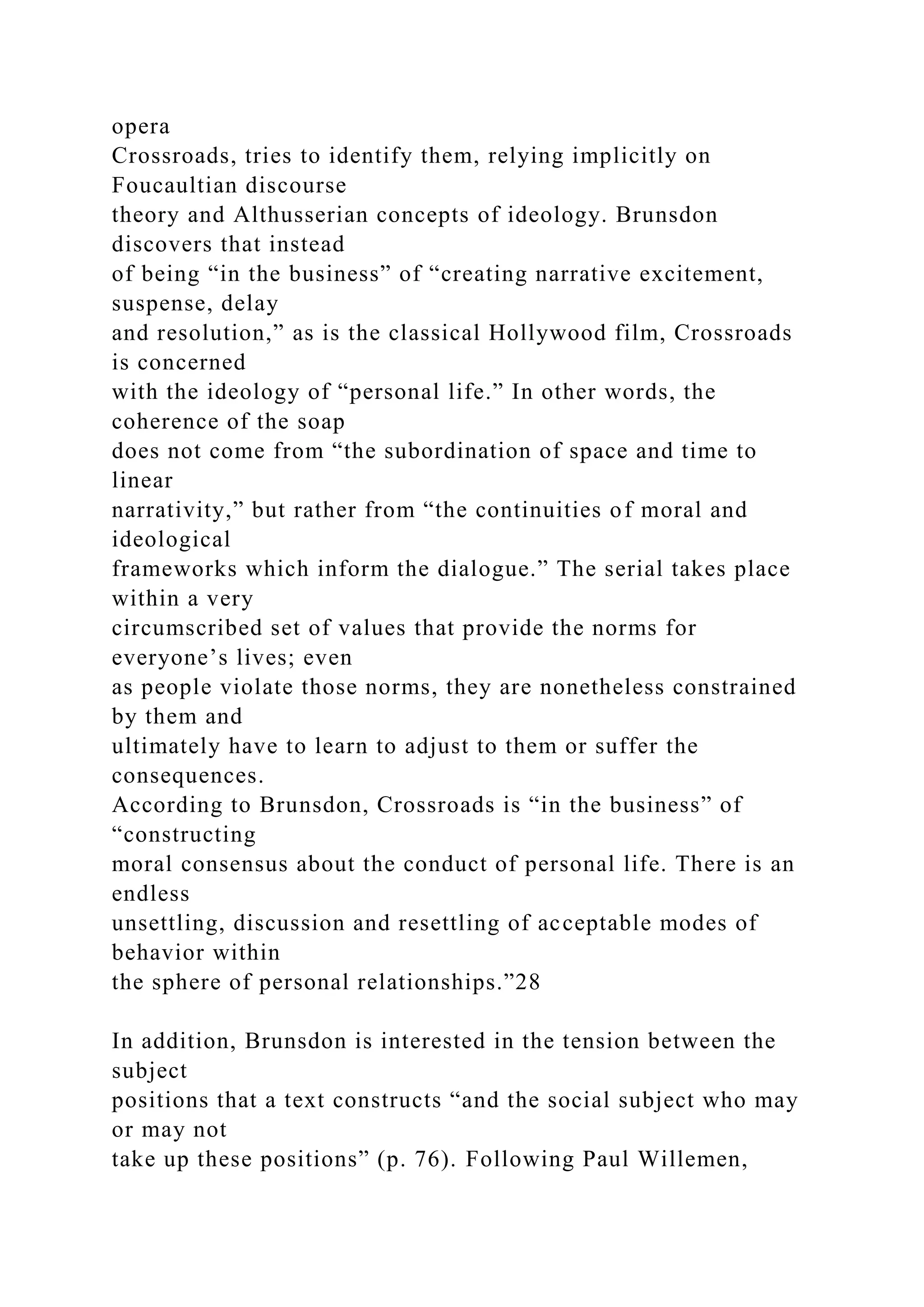
![David Morley, and
Steve Neale (and there are others, like Tony Bennett), Brunsdon
stresses that
253
the historical spectator is constructed by a whole range of other
discourses,
including motherhood, romance, and sexuality, that will
determine her
reactions to a text. Brunsdon shows that program publicity,
scheduling, and
ads all imply a female audience for Crossroads. She concludes
that the
address of the soaps is a gendered one that relies on “the
traditionally
feminine competencies associated with the responsibility for
‘managing’ the
sphere of personal life” (p. 81). Brunsdon is careful to avoid the
essentialist
trap of claiming that such competencies are “natural” to women;
rather, she
sees women as being socially constructed to possess such skills
through
inscription in “the ideological and moral frameworks [the rules]
of romance,
marriage and family life” (p. 81).
Brunsdon’s essay is important because it focuses explicitly on
the
difference in narrative conventions between soaps and the
classical
Hollywood cinema, and on the ideological implications of those
differences.](https://image.slidesharecdn.com/channelsofdiscoursereassembled2channelsof-221018173716-6fc0655a/75/Channels-of-Discourse-Reassembled2Channels-of-docx-564-2048.jpg)
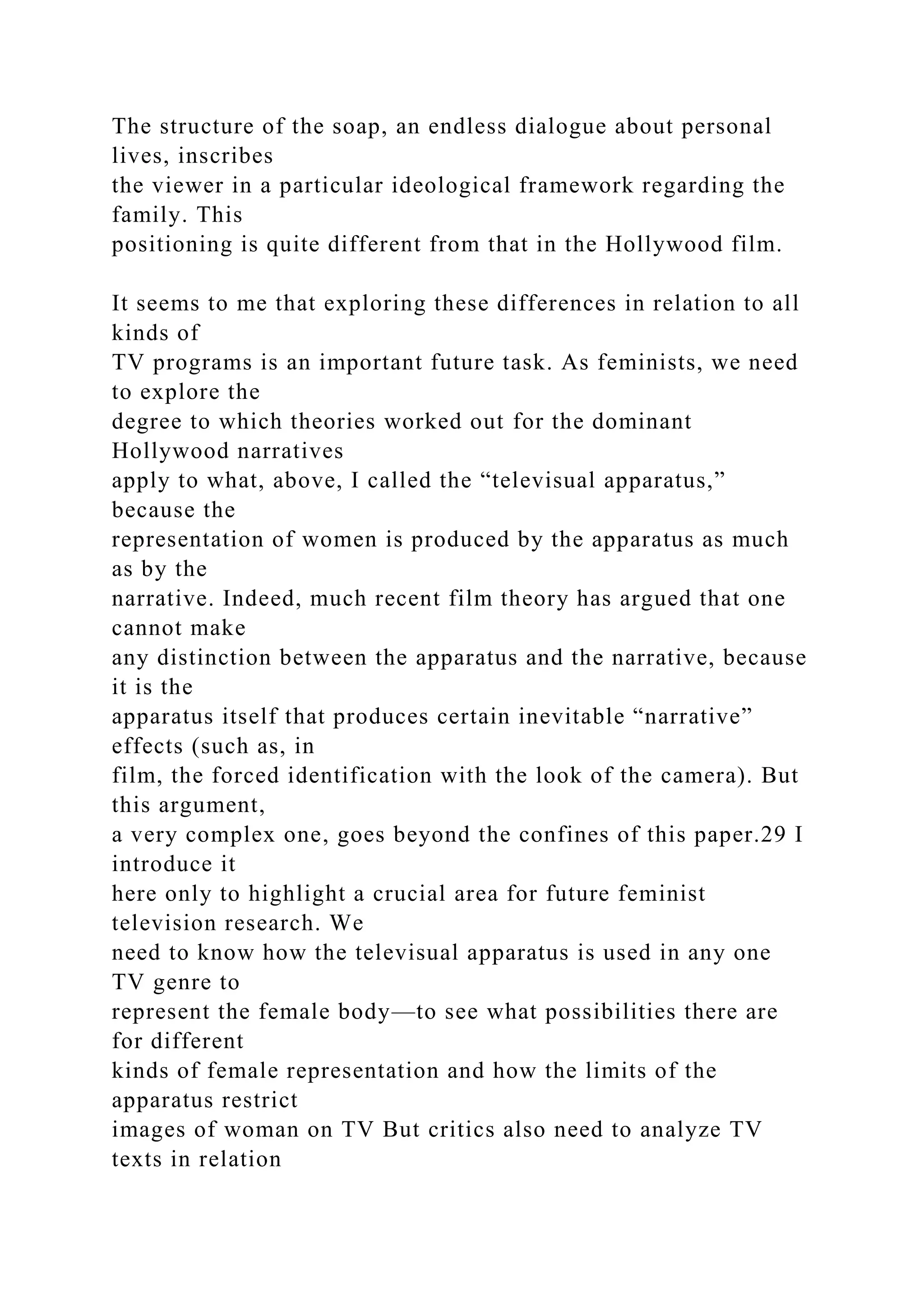
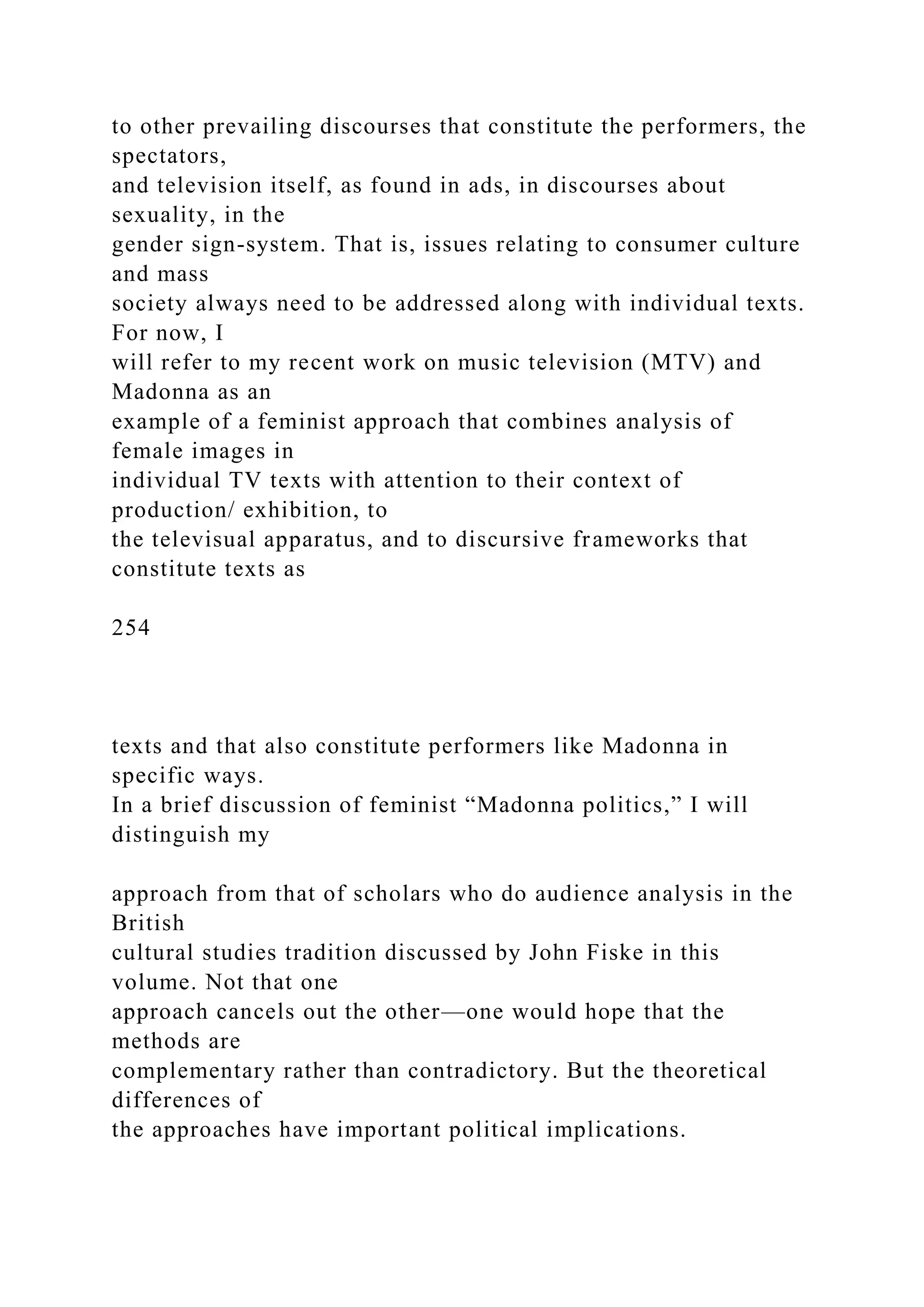
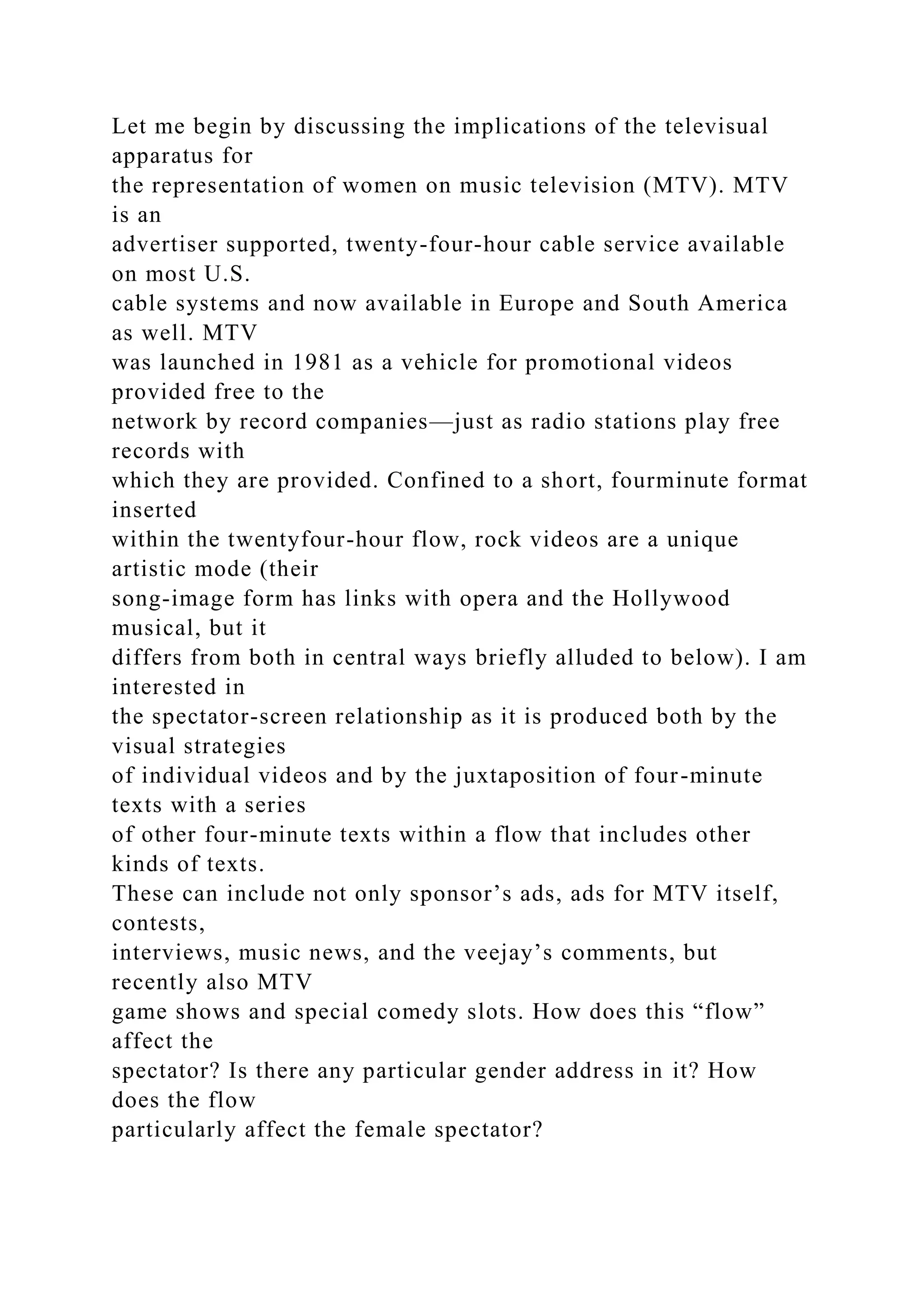
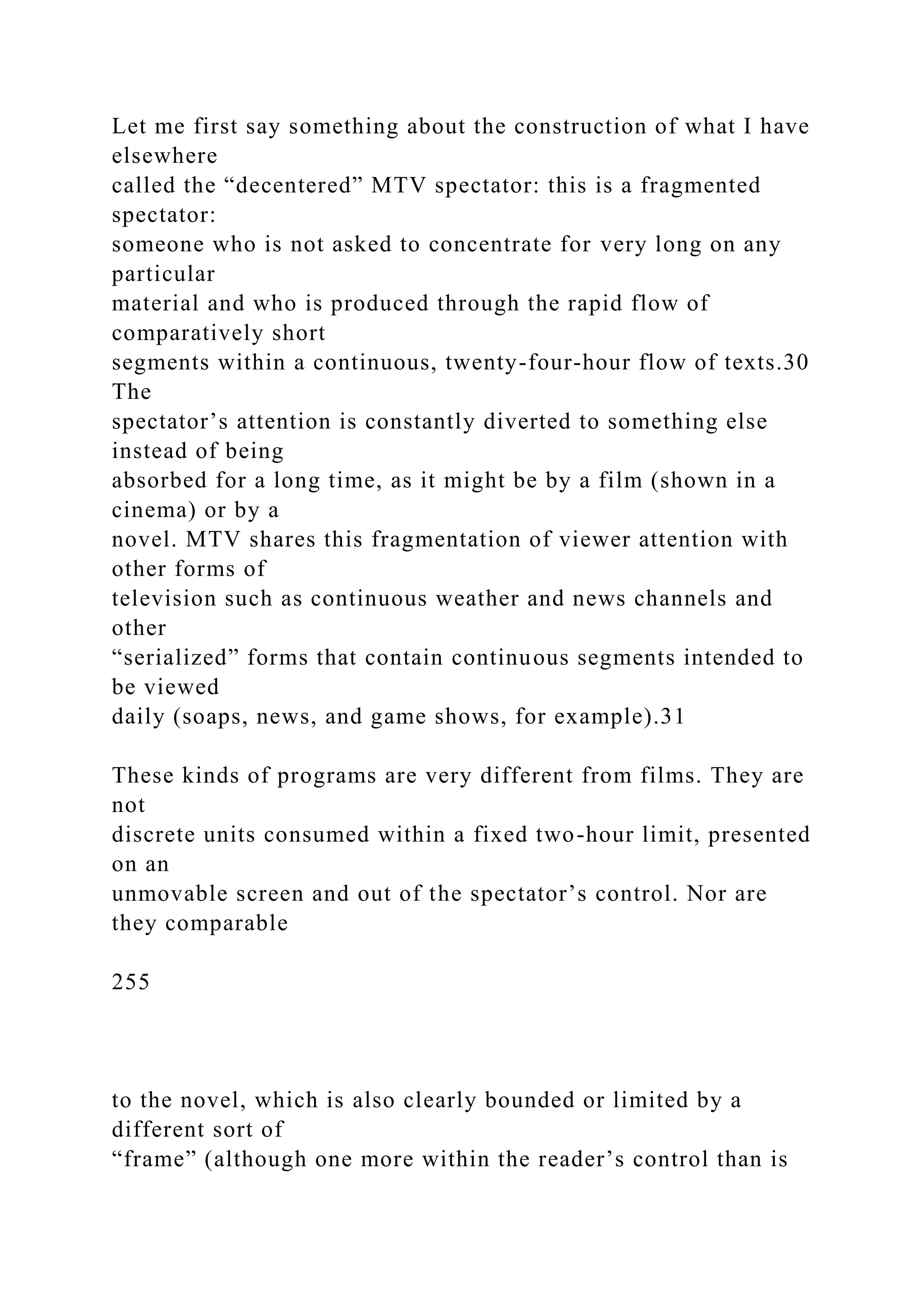

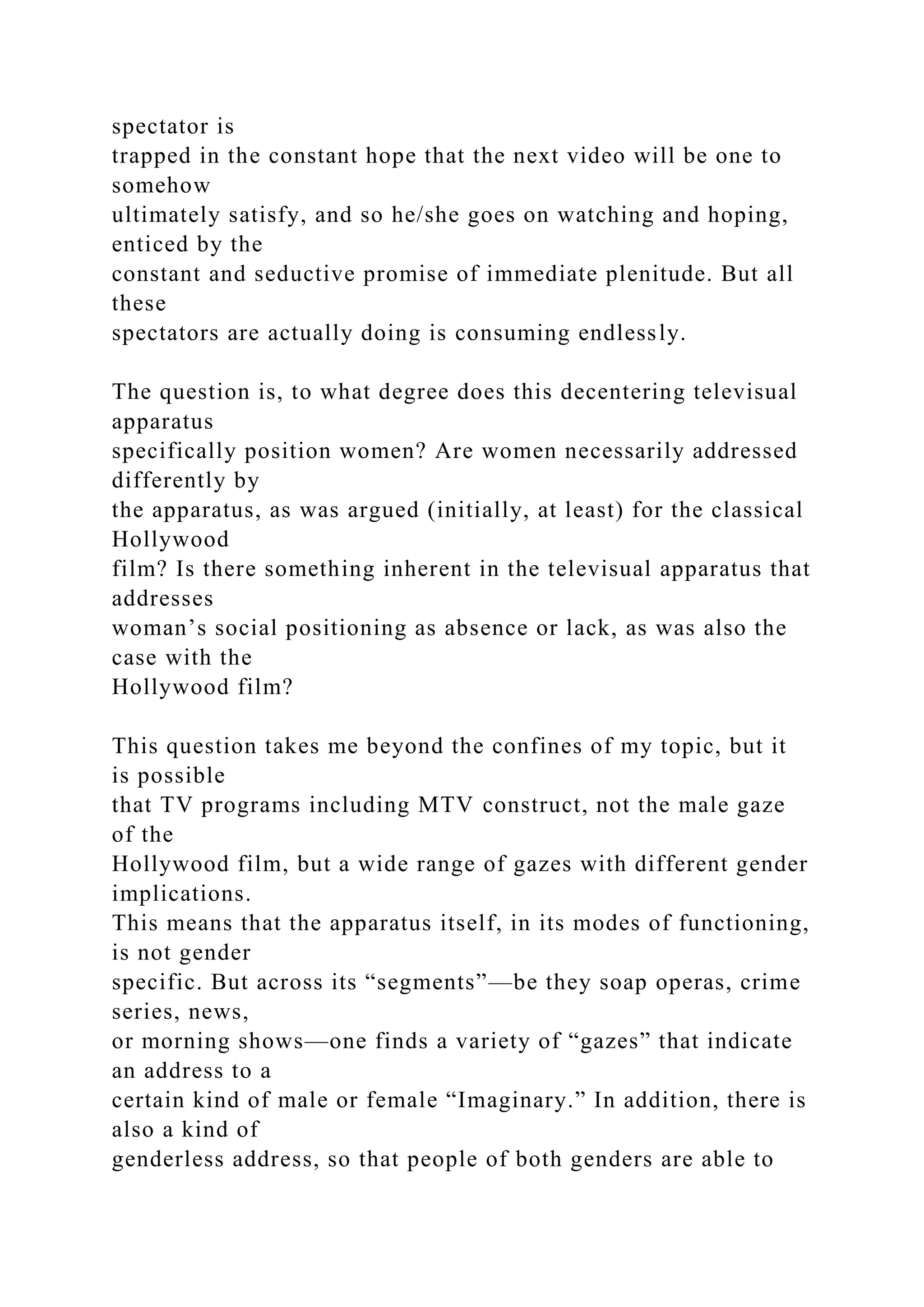
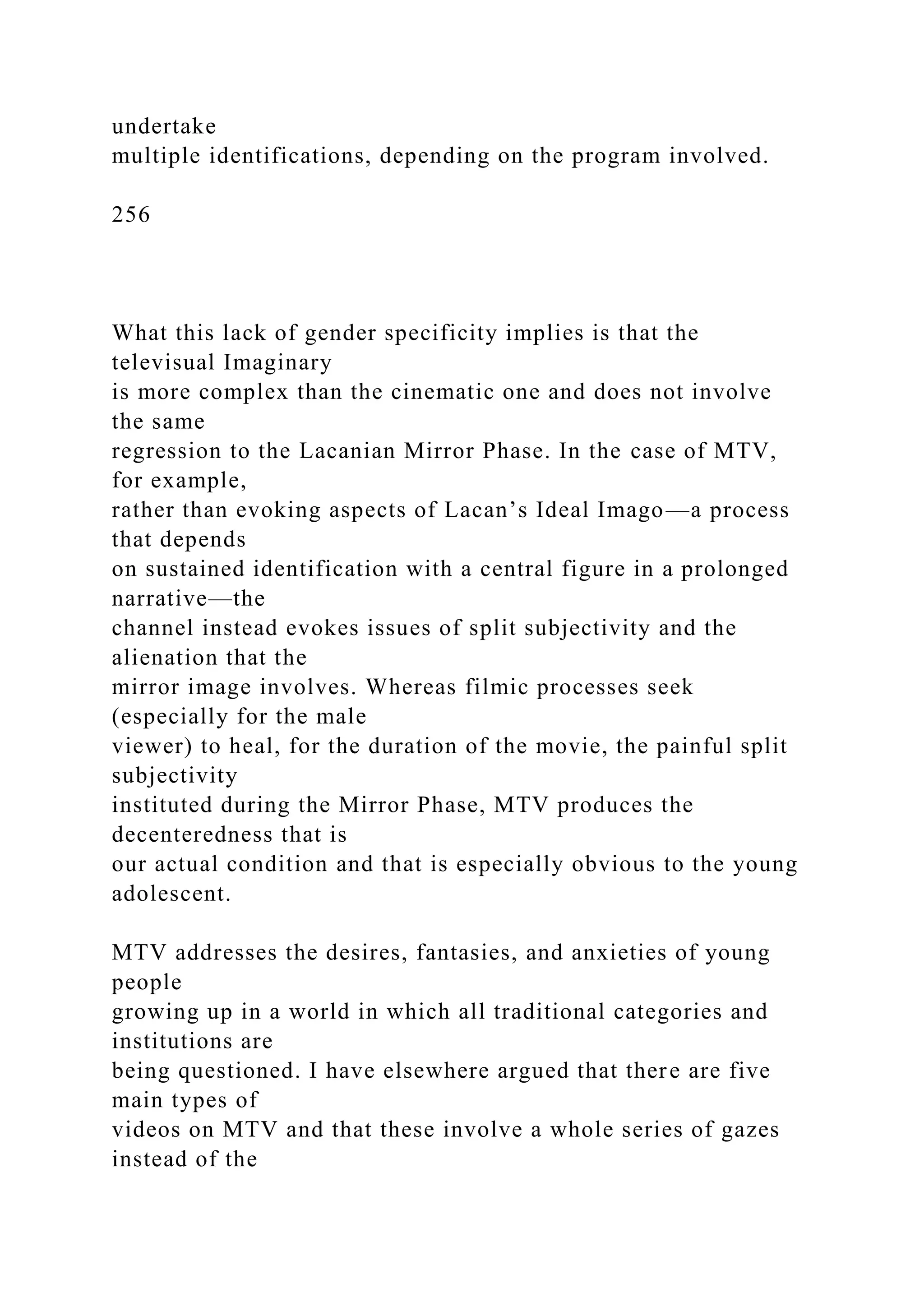
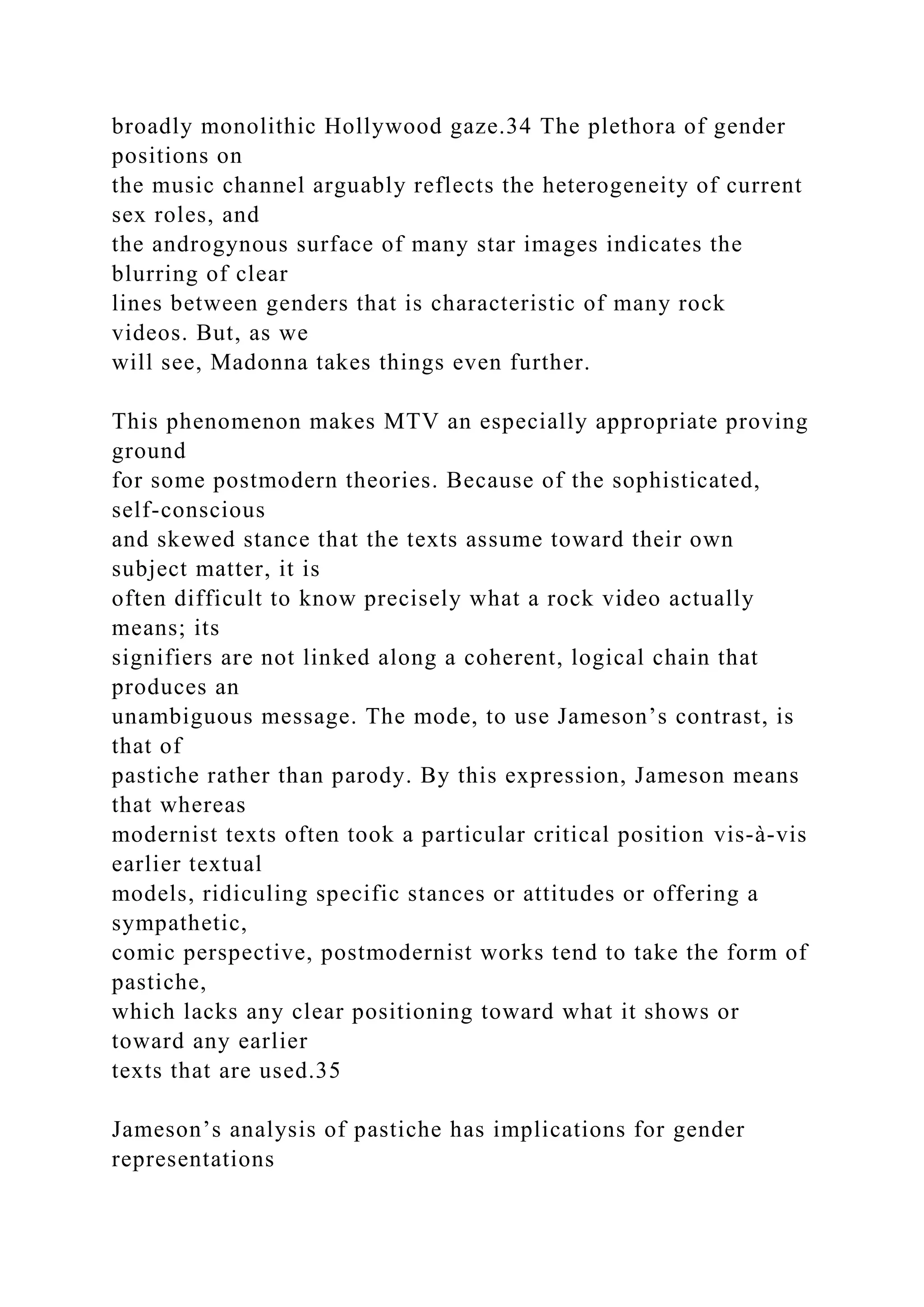

![grasp of the televisual world in which we live—of the medium’s
possibilities
for engaging spectators in diverse ways —that in part accounts
for her
success. She is the supreme television heroine.
Two main feminist approaches to the “Madonna phenomenon”
(henceforth
called the MP) may be characterized as representing, first, a
feminist identity
politics, and second, a feminist politics of the signifier. Each of
these
approaches harks back to 1970s and 1980s “feminisms” outlined
earlier in this
chapter. Now, however, the terms of the argument are more
self-consciously
located in implications of female subjectivity for political
strategies. The first
approach is linked to British cultural studies and audience
research, whereas
the second comes out of post-structuralist feminism and is
linked to a politics
that focuses on the body as text.
Because John Fiske’s essay in this volume more or less
exemplifies that
first approach, I will deal with it only briefly. As Fiske puts it,
“culture is a
process of making meanings in which people actively
participate. . . . [T]he
mass-produced text can only be made into a popular text by the
people, and
this transformation occurs when the various subcultures can
activate sets of
meanings and insert those meanings into their daily cultural
experience.”](https://image.slidesharecdn.com/channelsofdiscoursereassembled2channelsof-221018173716-6fc0655a/75/Channels-of-Discourse-Reassembled2Channels-of-docx-574-2048.jpg)
![Building on Angela McRobbie’s theory of “girl culture,” several
scholars
have examined Madonna as a fascinating example of, as Fiske
puts it, “the
permeability of the boundary between television and other
forms of cultural
experience.”37 Fiske argues that “[Madonna] enables girls to
see that the
meanings of feminine sexuality can be in their control, can be
made in their
interests, and that their subjectivities are not necessarily totally
determined by
the dominant patriarchy.” As Lisa Lewis has written, “Female
address videos
reclaim style for girls and richly articulate style as a symbolic
vehicle for
female expression.” In relation to Madonna specifically, Lewis
notes that “at
least part of the appeal of Madonna’s overtly sexual image for
adolescent girls
lies in the way it can be used to counter feminine ideals of
dependency and
reserve.”38
One of the values of an audience-centered approach like this
one is its
materiality—it keeps close to the experiences of the young
women who watch
258
Madonna or the fans who celebrate her. A problem is that it
leaves intact
given gender binarisms and notions of individual subjects.](https://image.slidesharecdn.com/channelsofdiscoursereassembled2channelsof-221018173716-6fc0655a/75/Channels-of-Discourse-Reassembled2Channels-of-docx-575-2048.jpg)
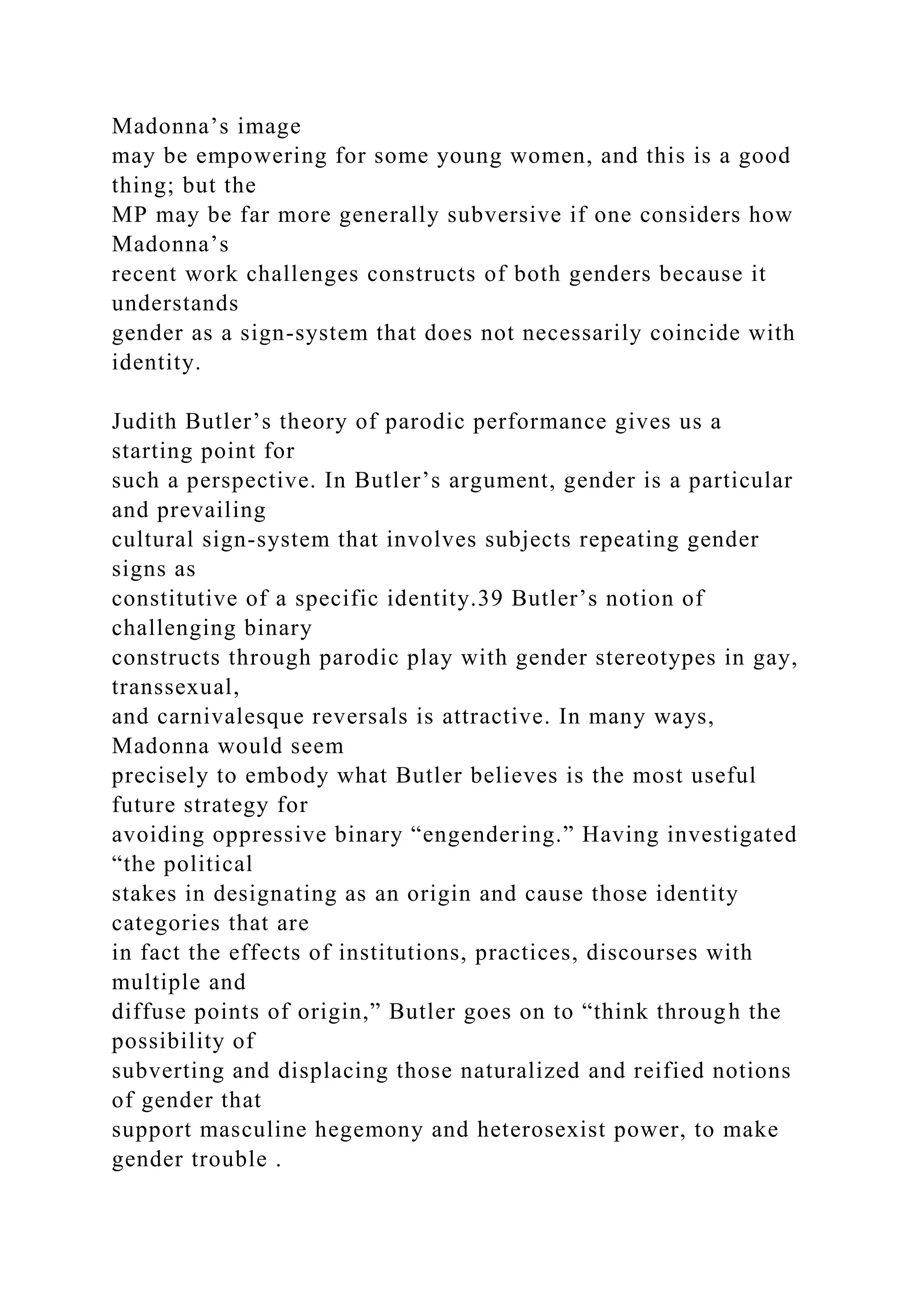
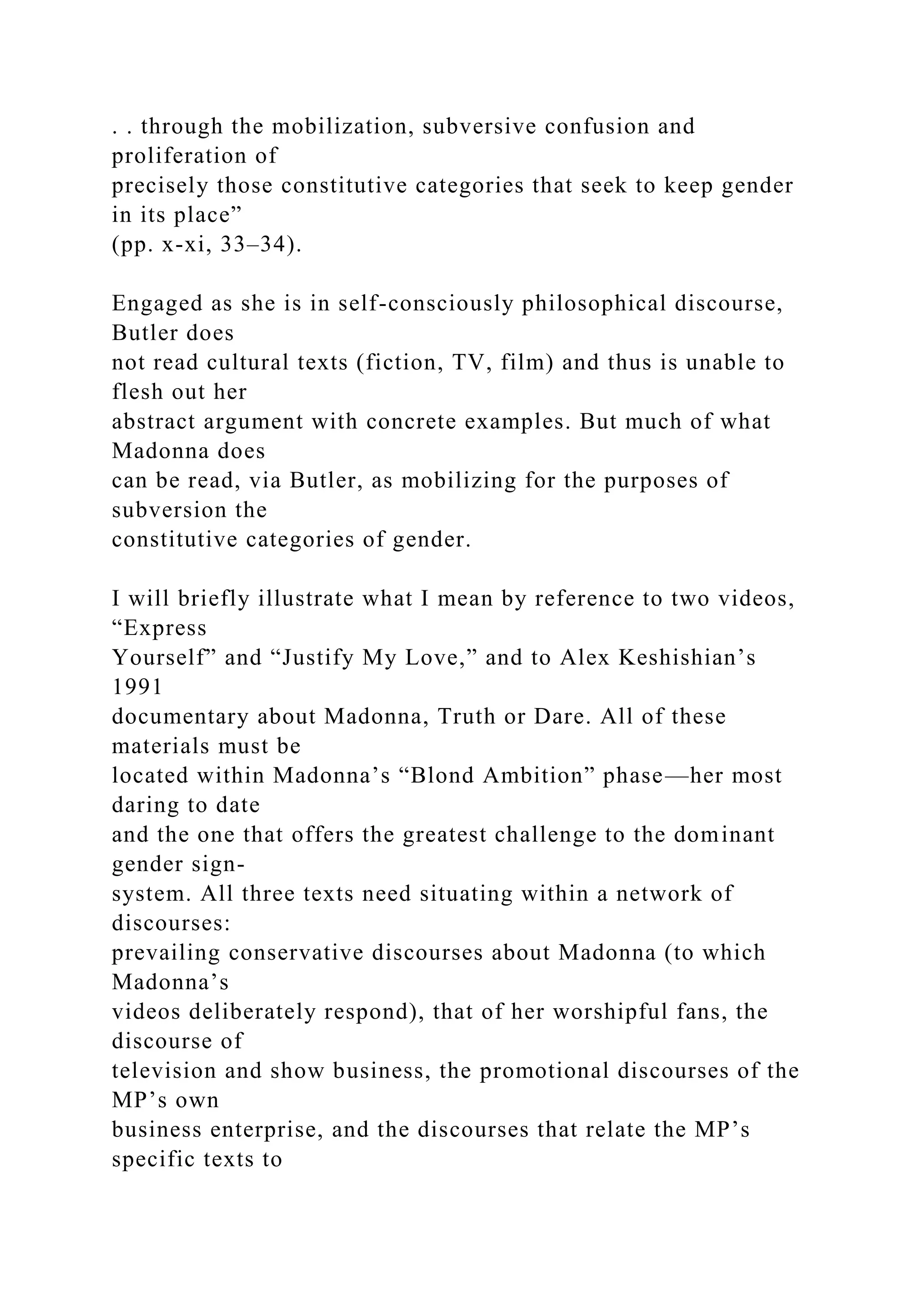
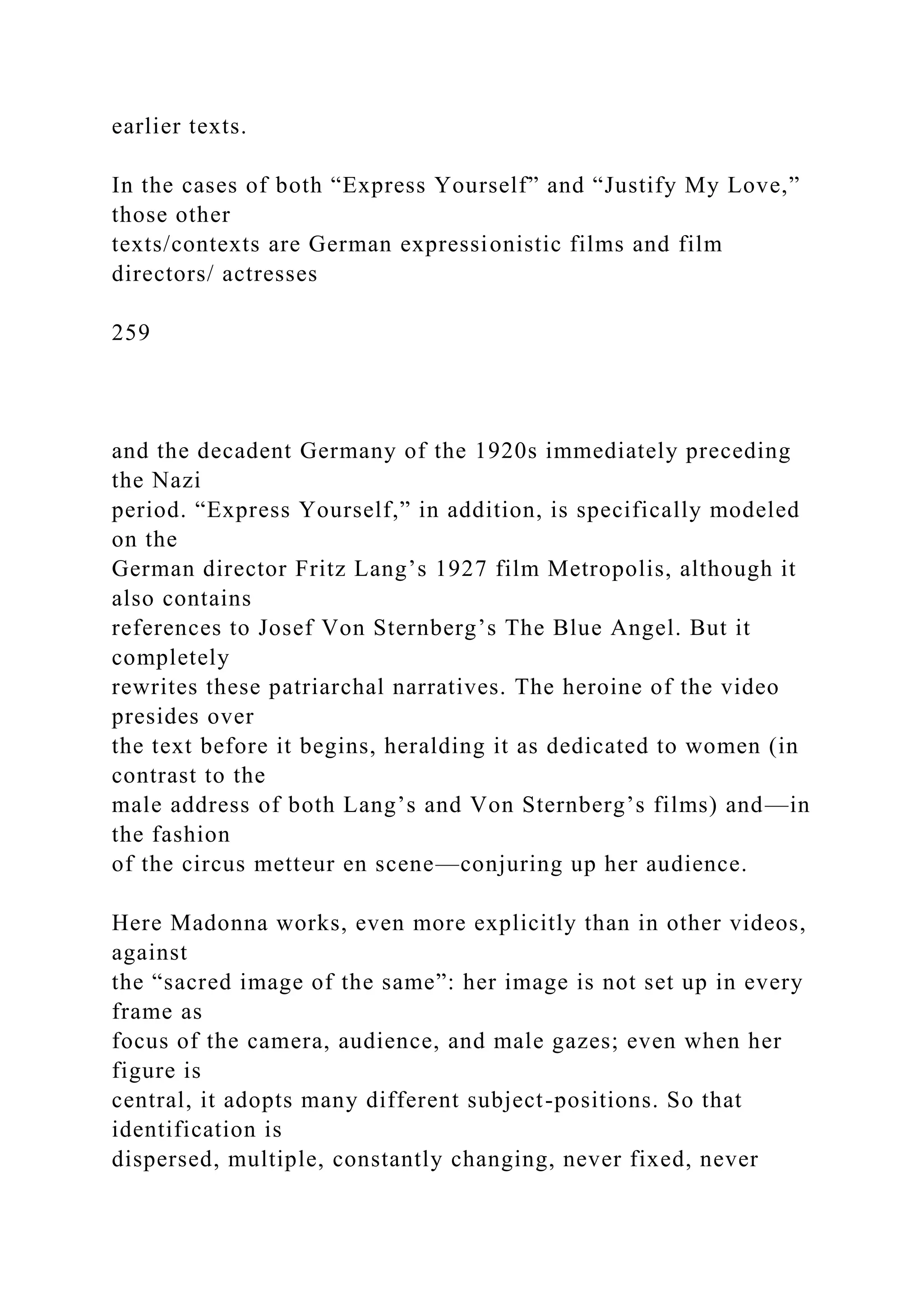
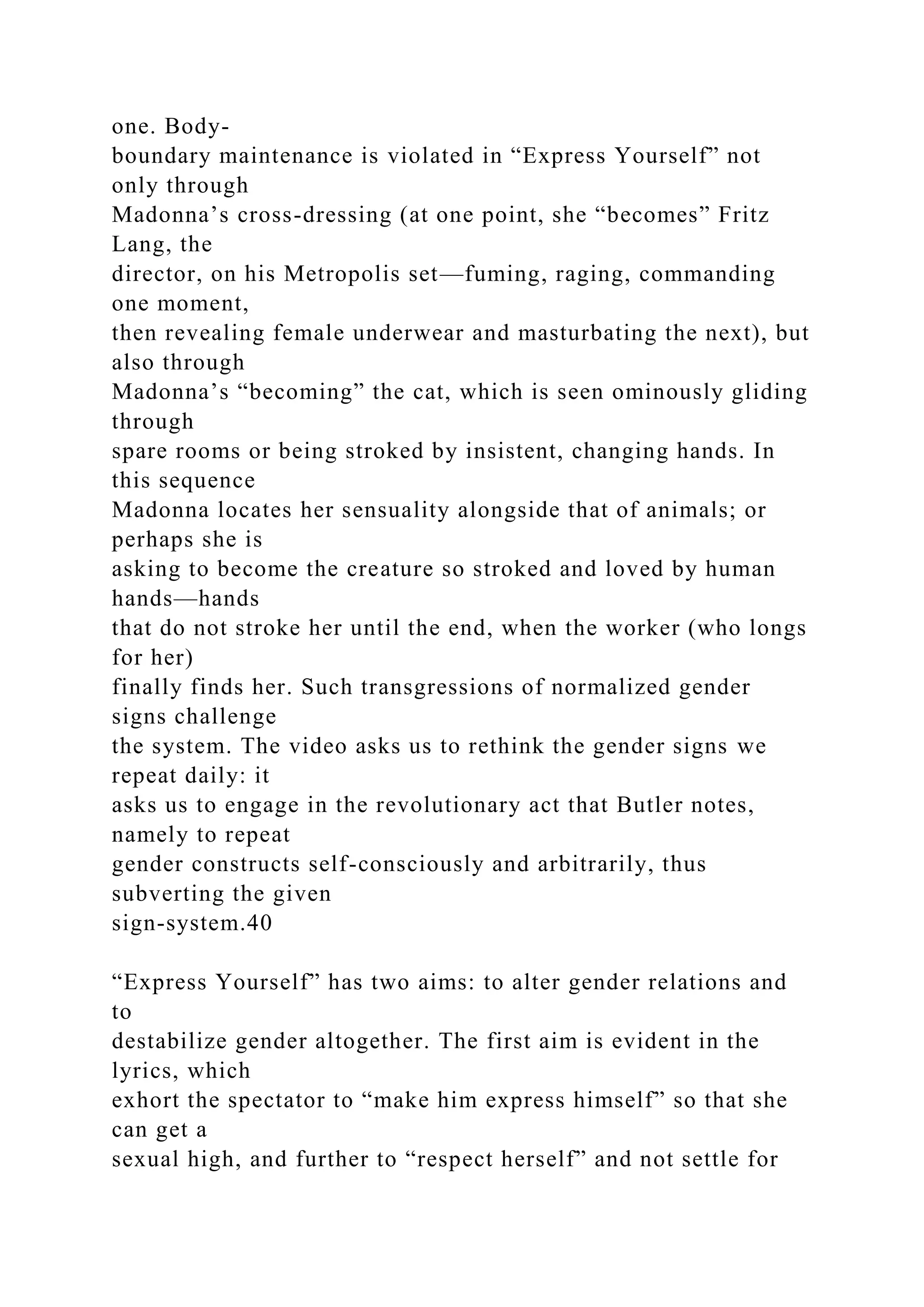
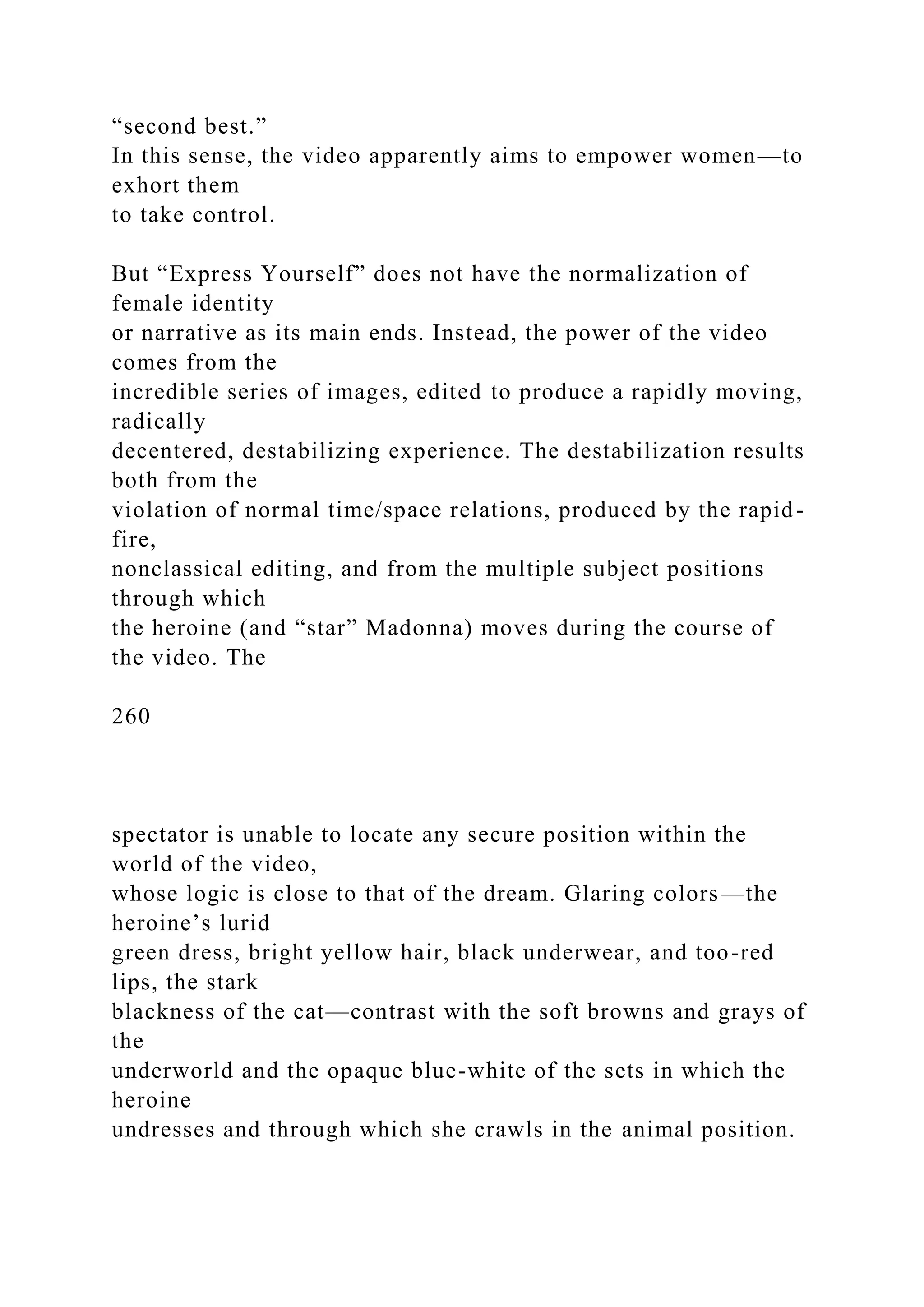

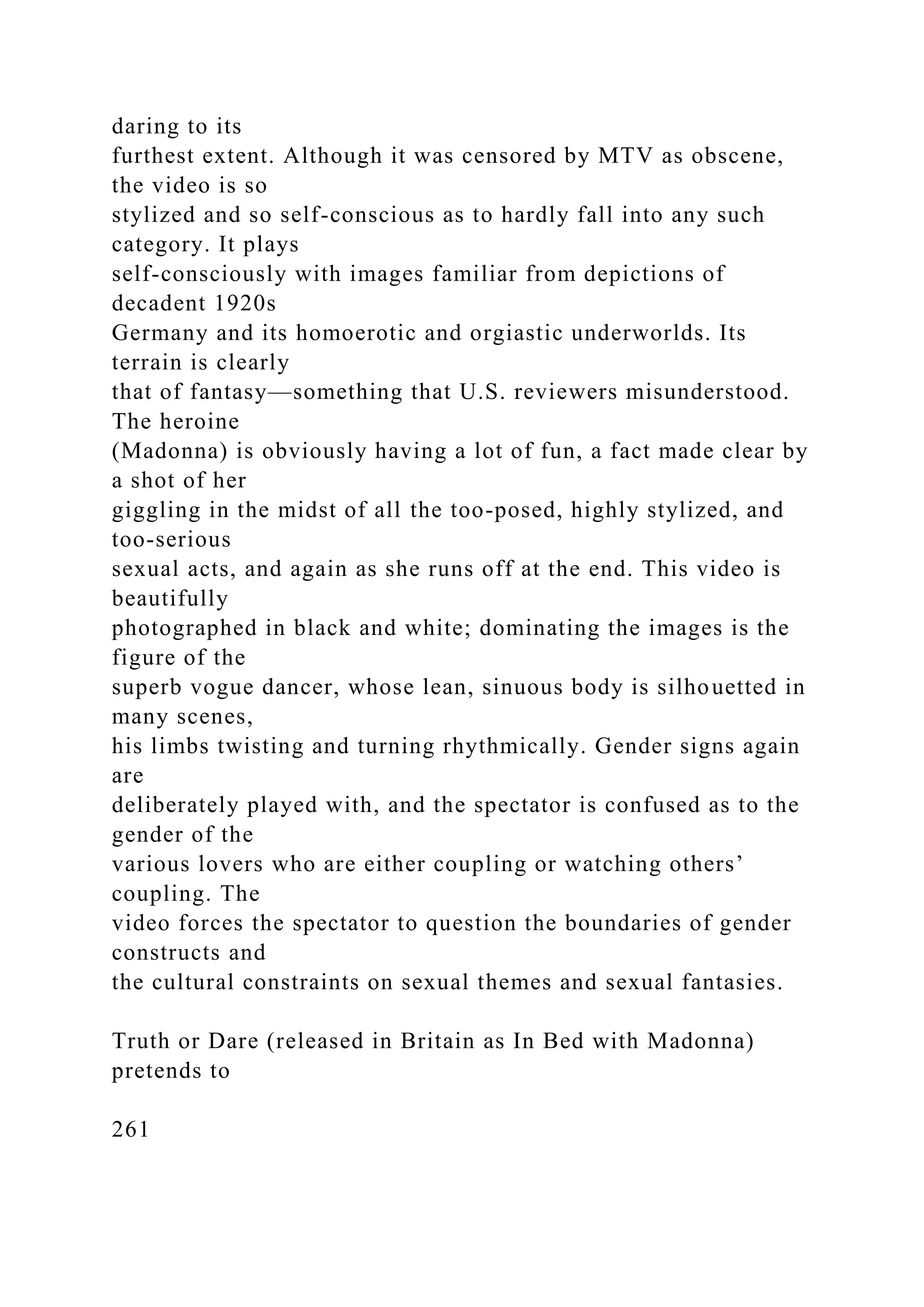
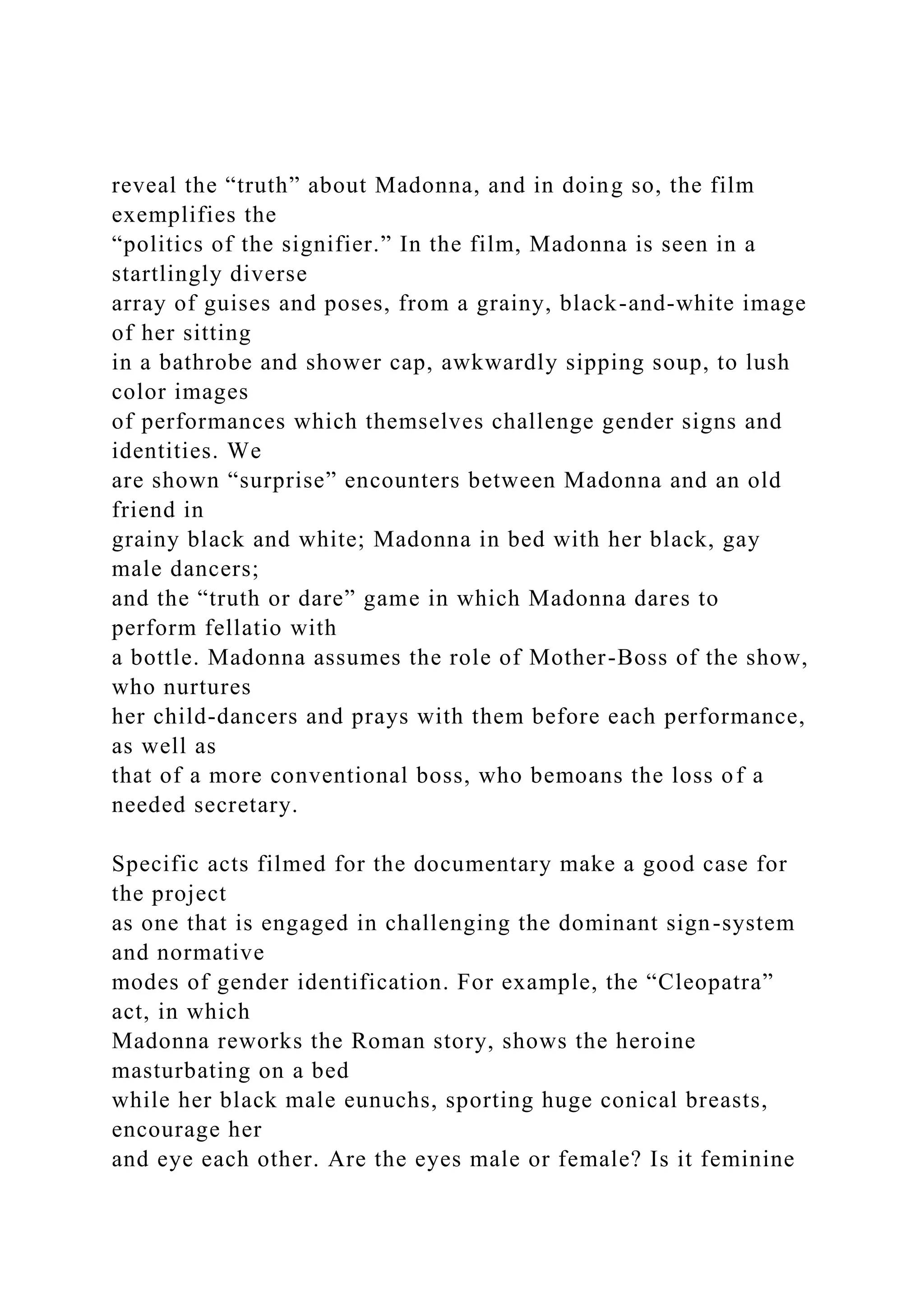
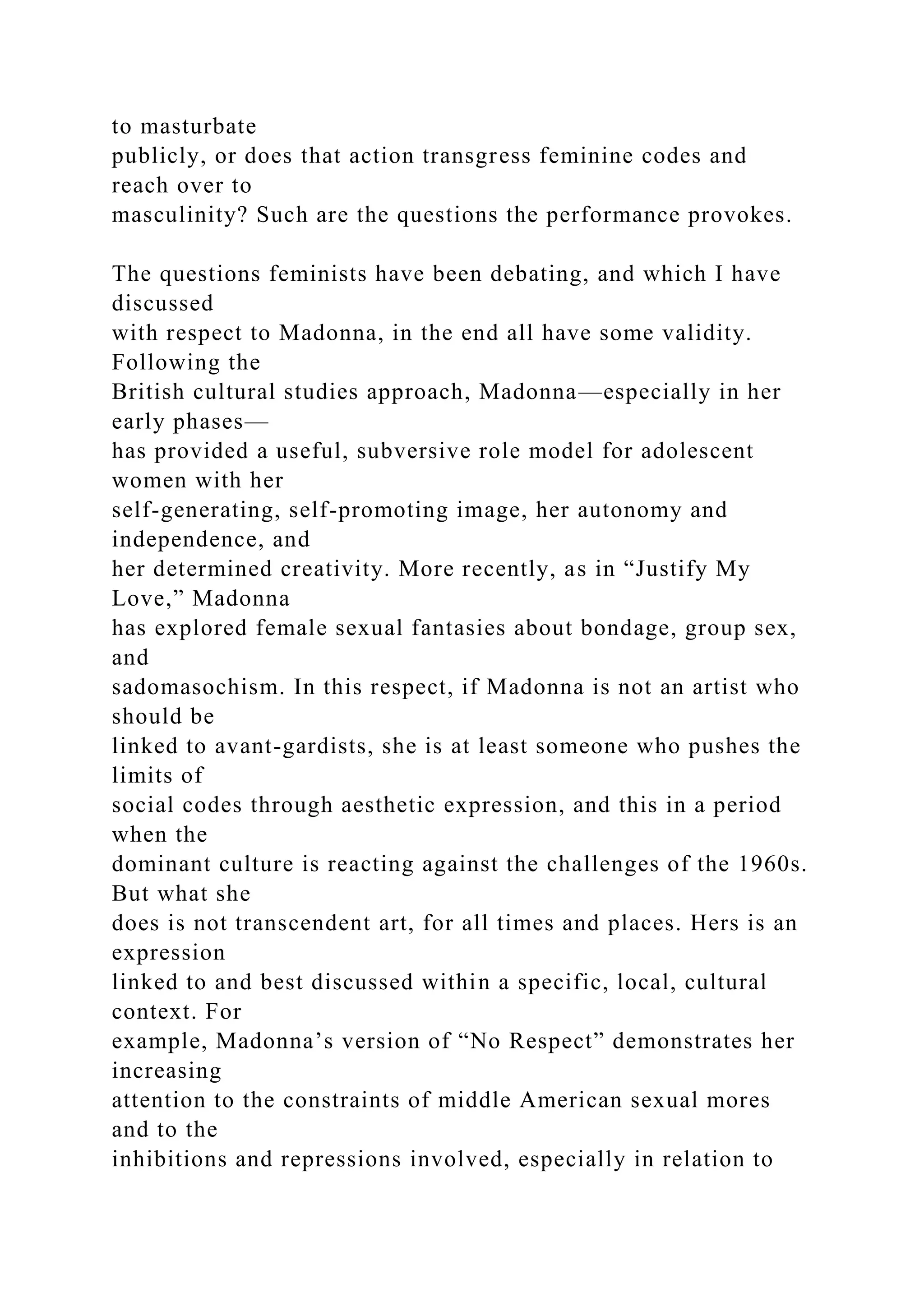

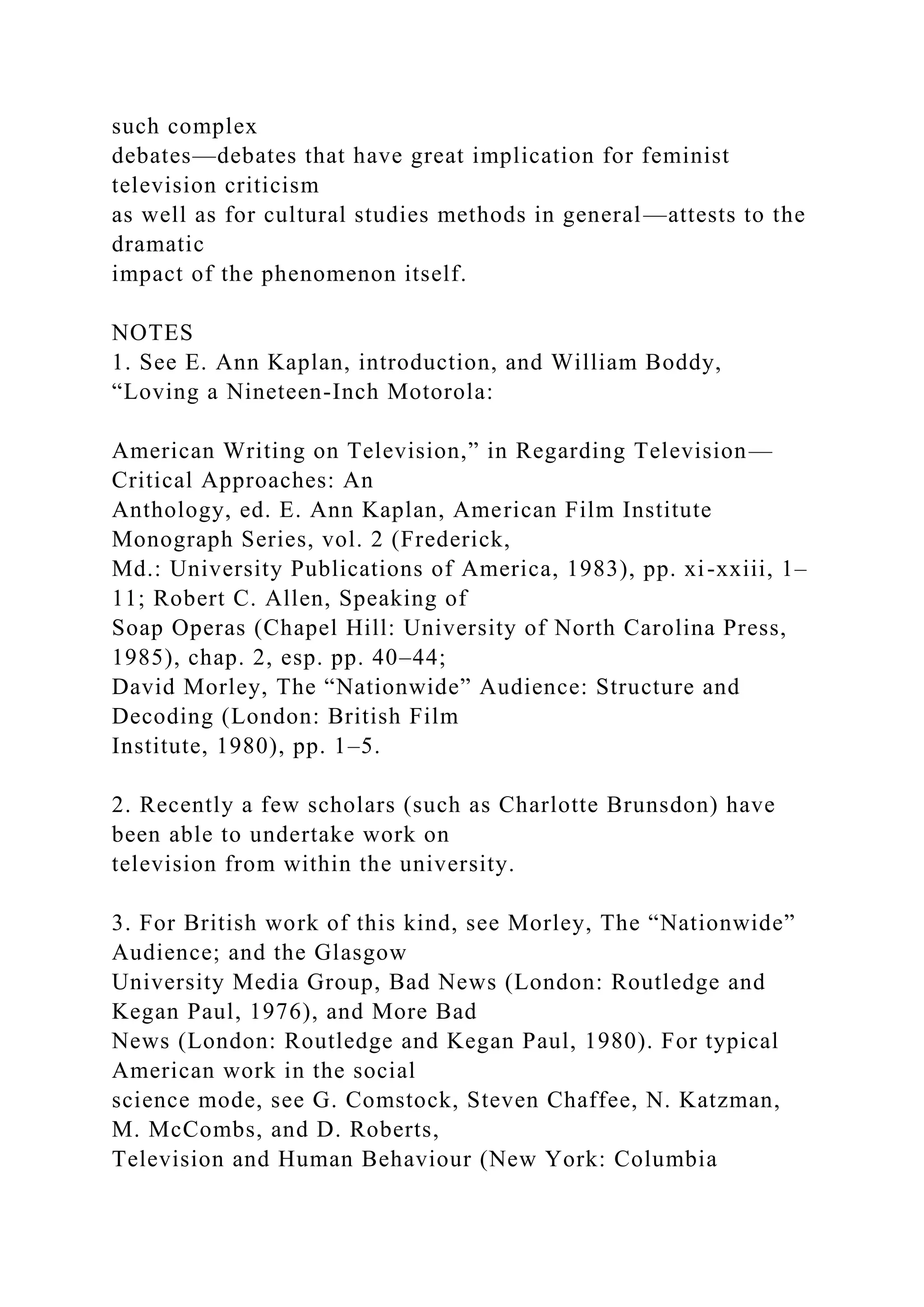
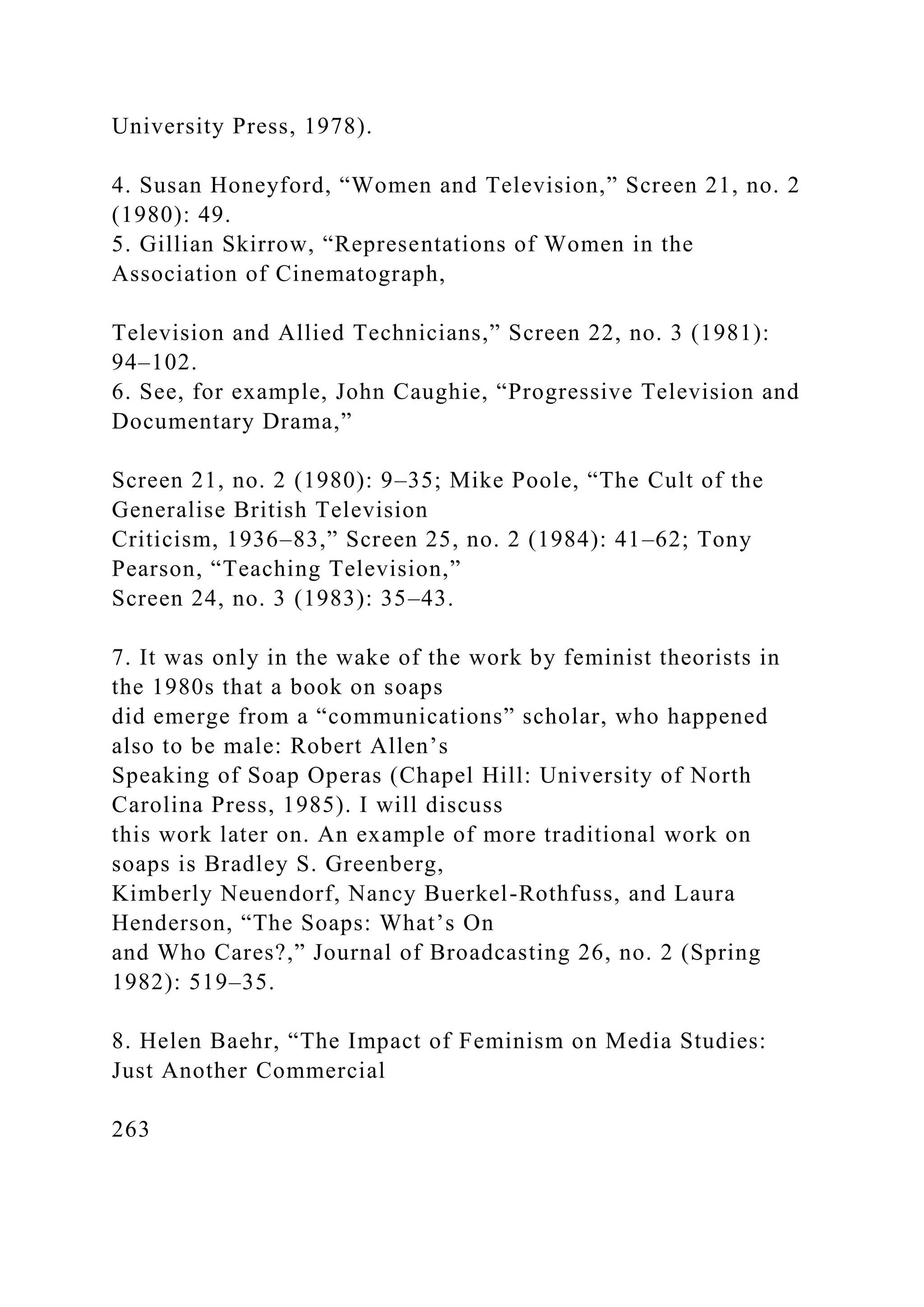
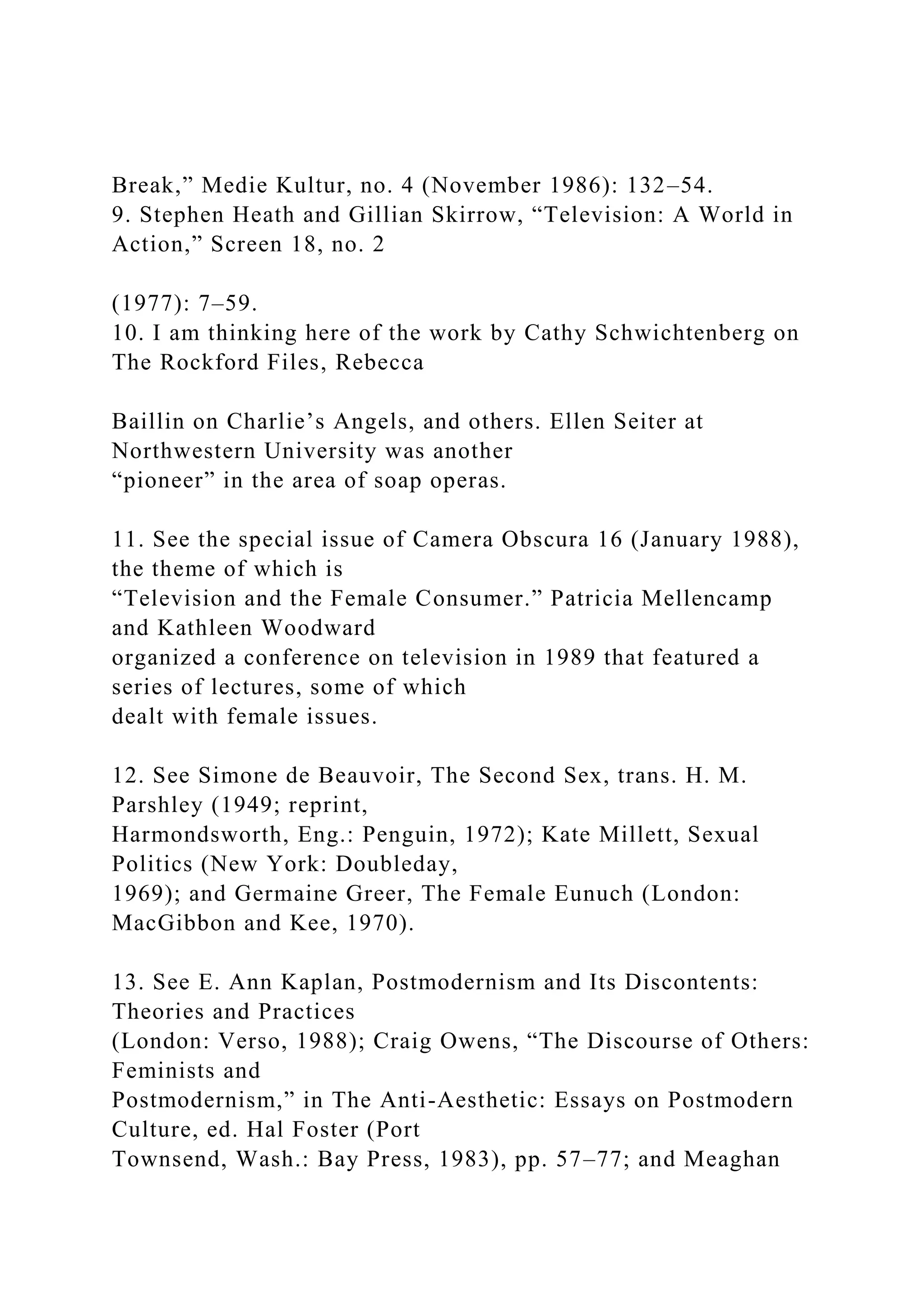
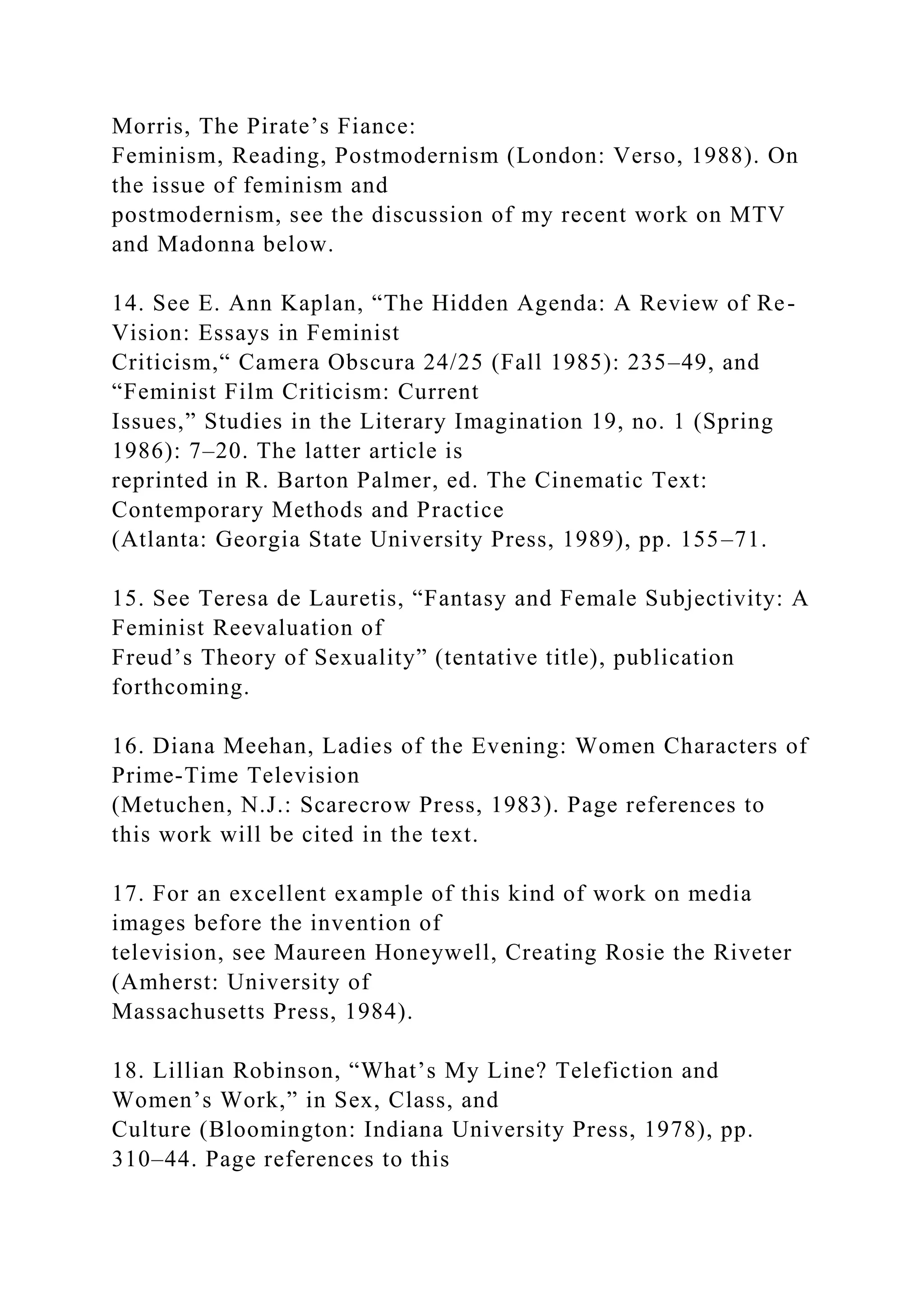
![work will be cited in the text.
19. Carol Lopate [Aschur], “Daytime Television: You’ll Never
Want to Leave Home,”
Feminist Studies 3, nos. 3/4 (Spring/Summer 1976): 69–82.
Page numbers in the text refer to this
version.
20. See Michel Foucault, The History of Sexuality, Volume 1:
An Introduction, trans. Robert
Hurley (New York: Vintage, 1980); The Order of Things: An
Archaeology of the Human
Sciences (New York: Vintage, 1973); and “Nietzsche,
Genealogy, History,” in Language,
Counter-Memory, Practice: Selected Essays and Interviews by
Michel Foucault, trans. Donald
F. Bouchard and Sherry Simon, ed. Donald F. Bouchard (Ithaca,
N.Y.: Cornell University Press,
1977). For discussions about Foucault, see Alan Sheridan,
Michel Foucault: The Will to Truth
(London: Tavistock, 1980); and Jonathan Arac, After Foucault:
Humanistic Knowledge,
Postmodern Challenges (New Brunswick, N.J.: Rutgers
University Press, 1988).
21. See Lynn Spigel, “Installing the Television Set: Popular
Discourses on Television and
264
Domestic Space, 1948–1955,” Camera Obscura 16 (January
1988): 11–46; see also Serafina
Kent Bathrick, “The True Woman and the Family Film: The
Industrial Production of Memory,”](https://image.slidesharecdn.com/channelsofdiscoursereassembled2channelsof-221018173716-6fc0655a/75/Channels-of-Discourse-Reassembled2Channels-of-docx-590-2048.jpg)

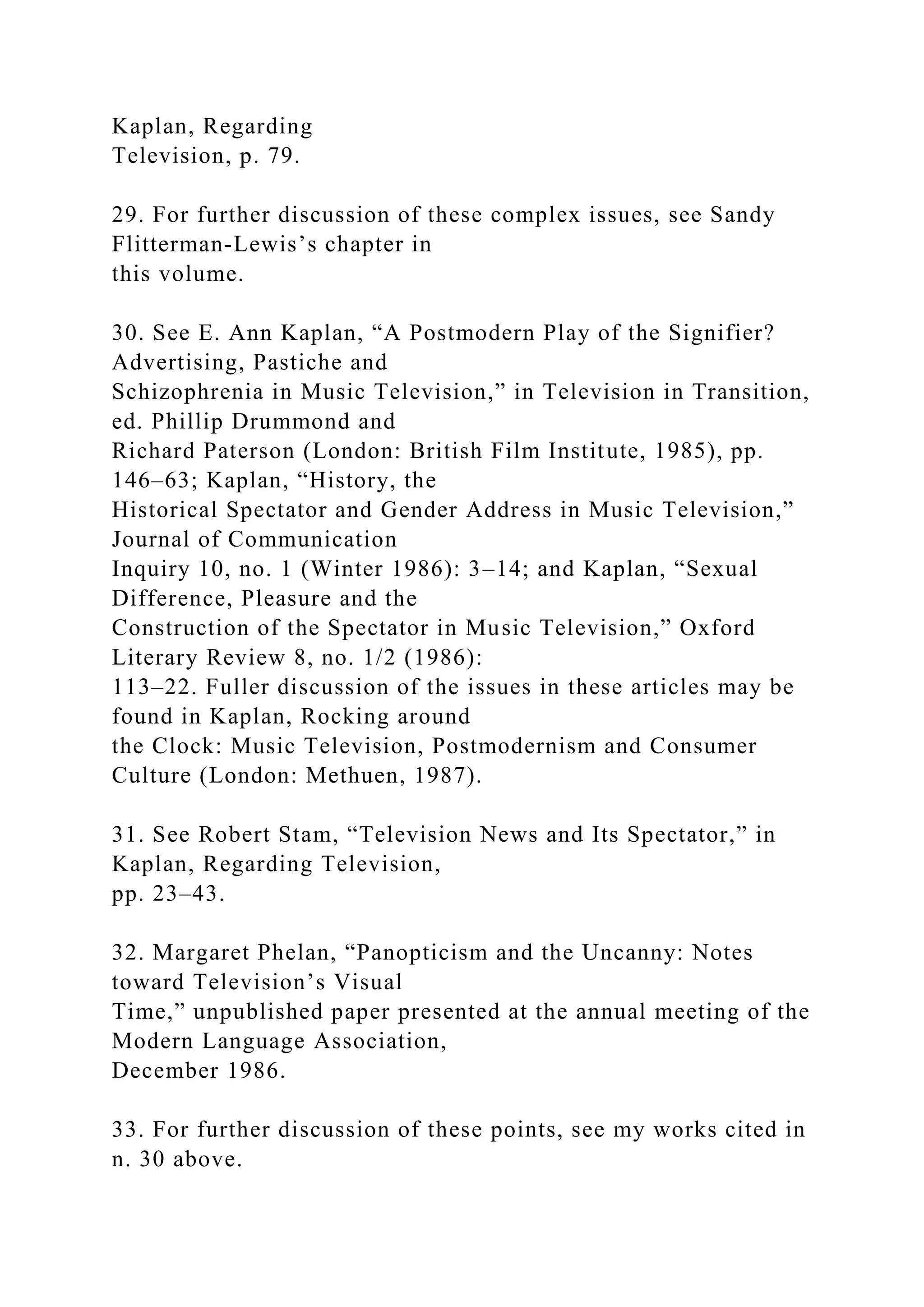
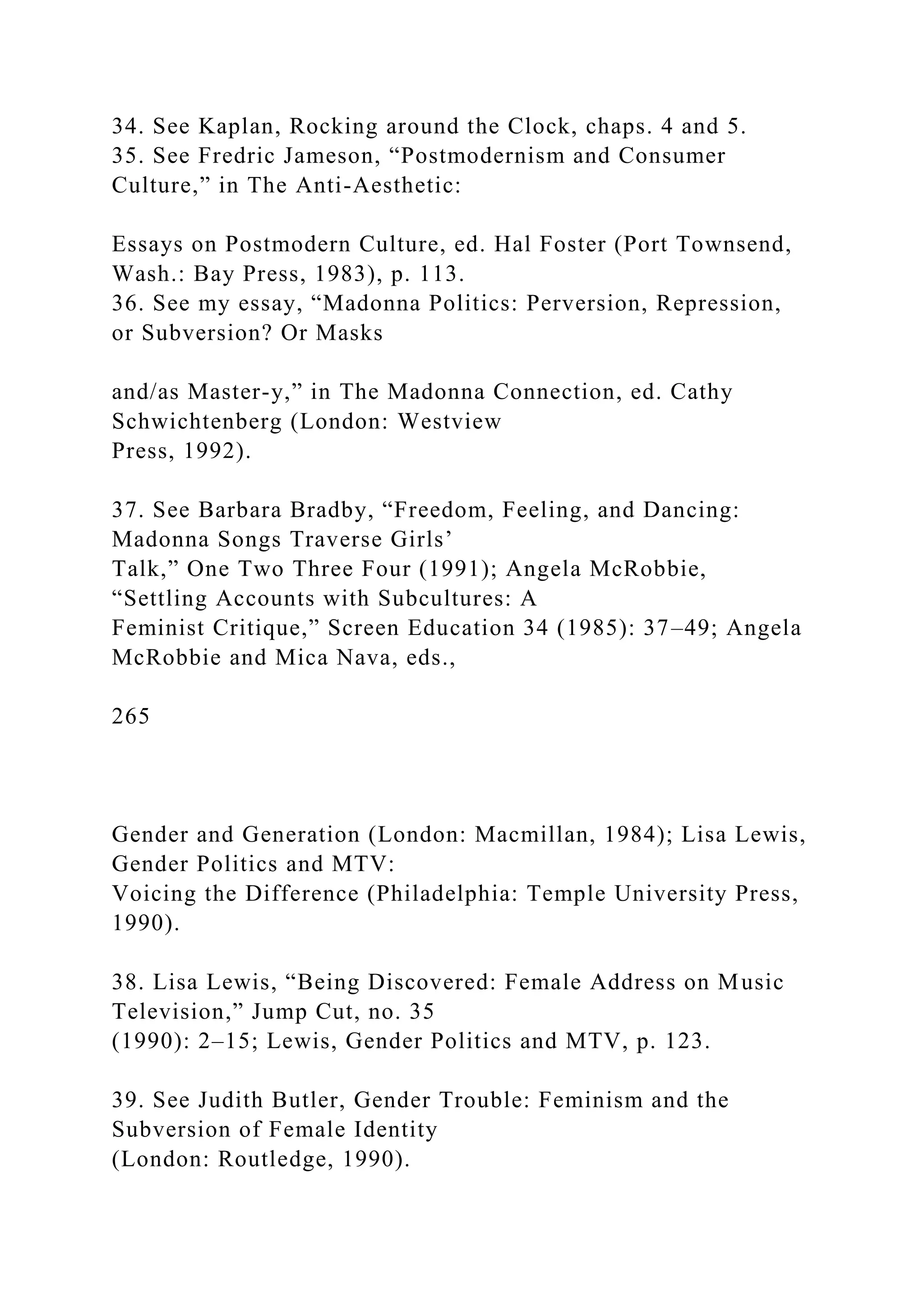
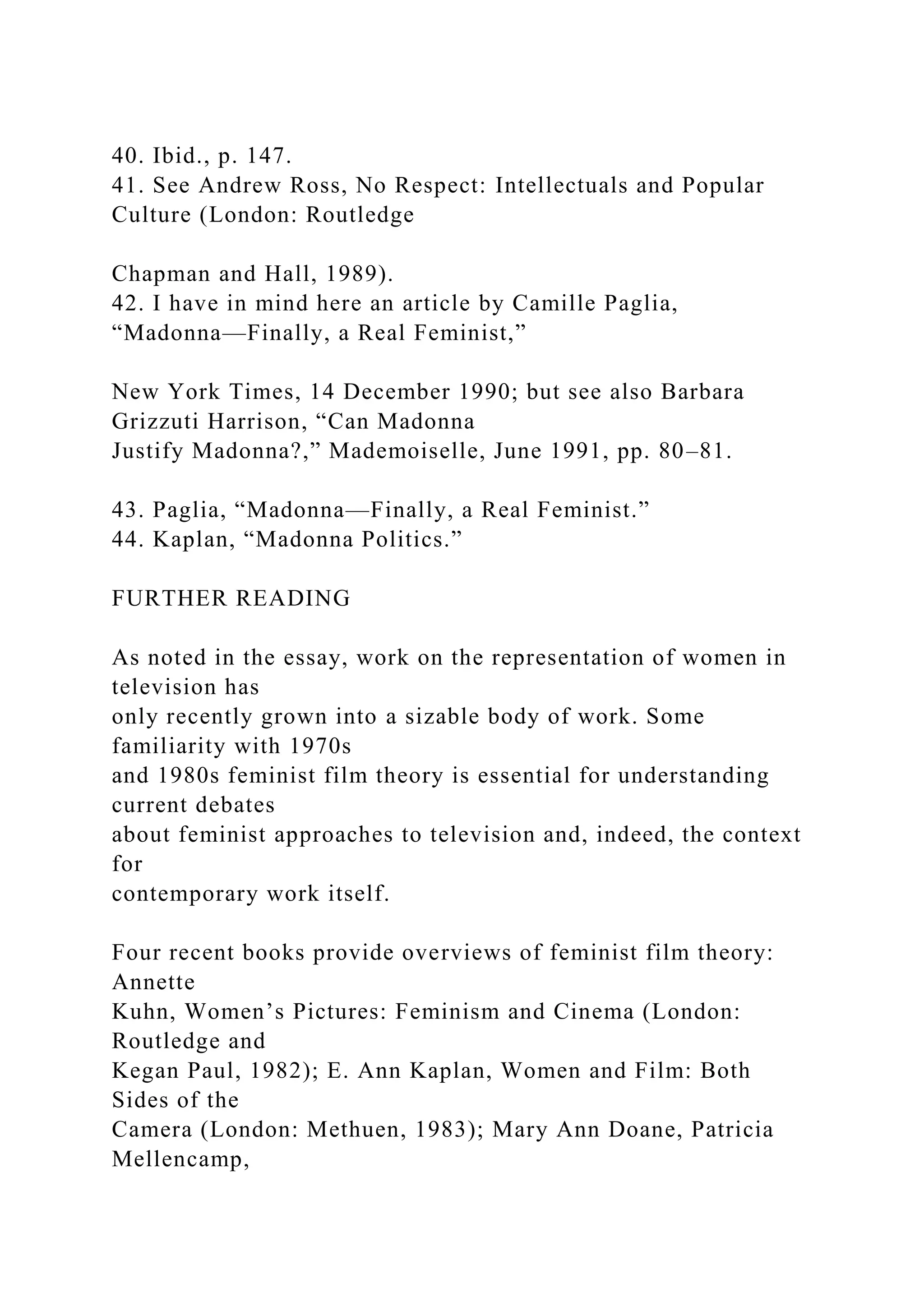
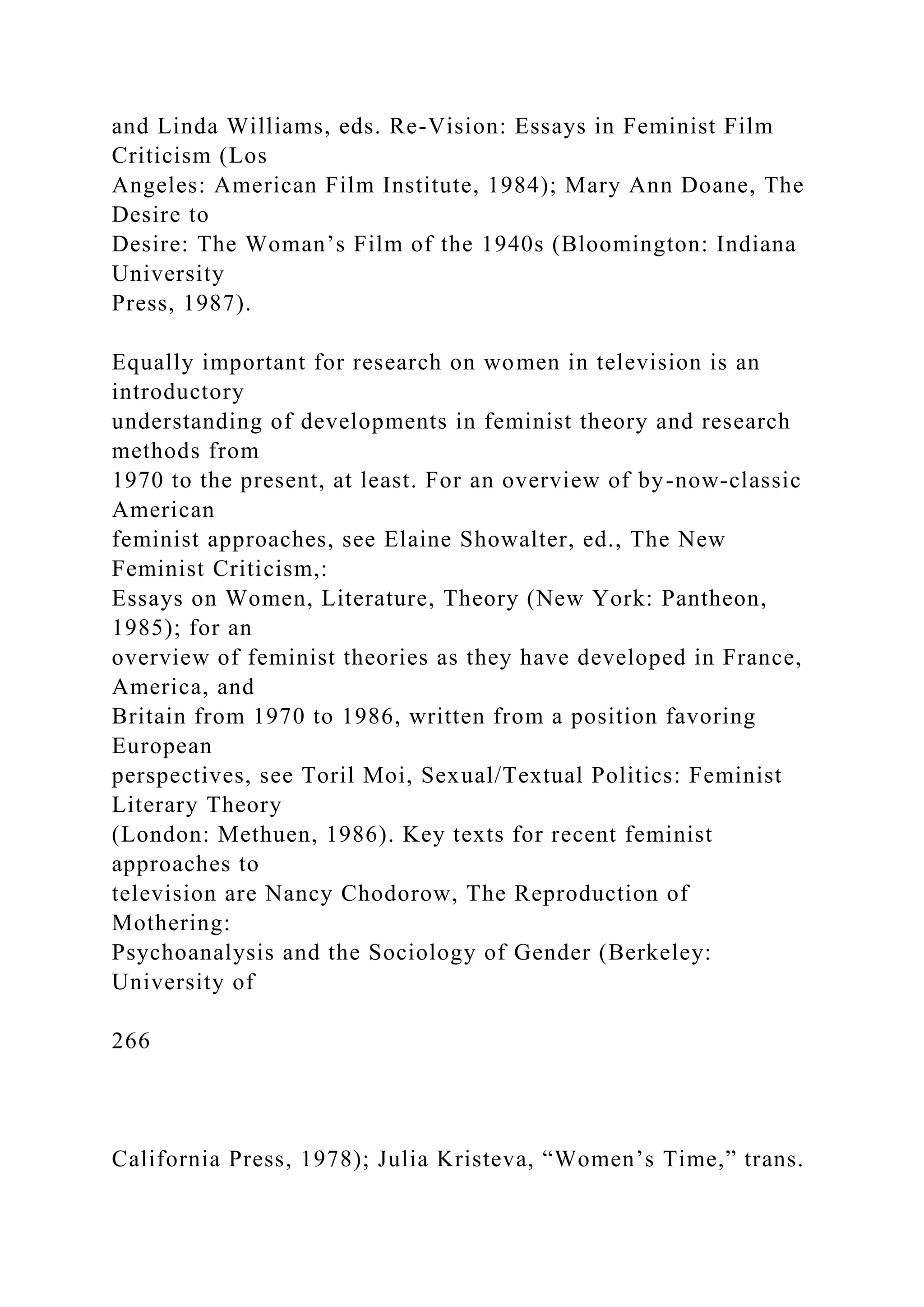
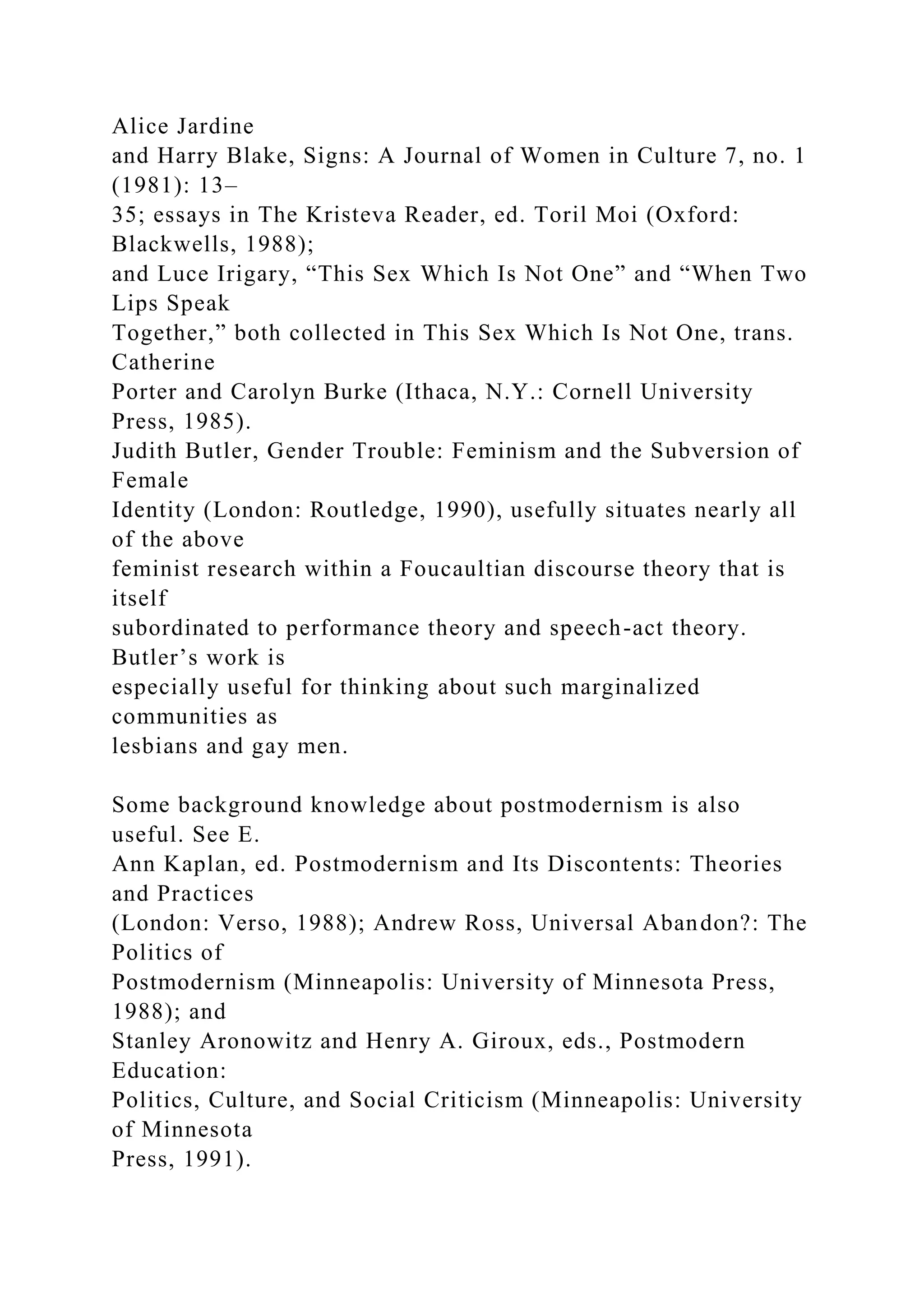


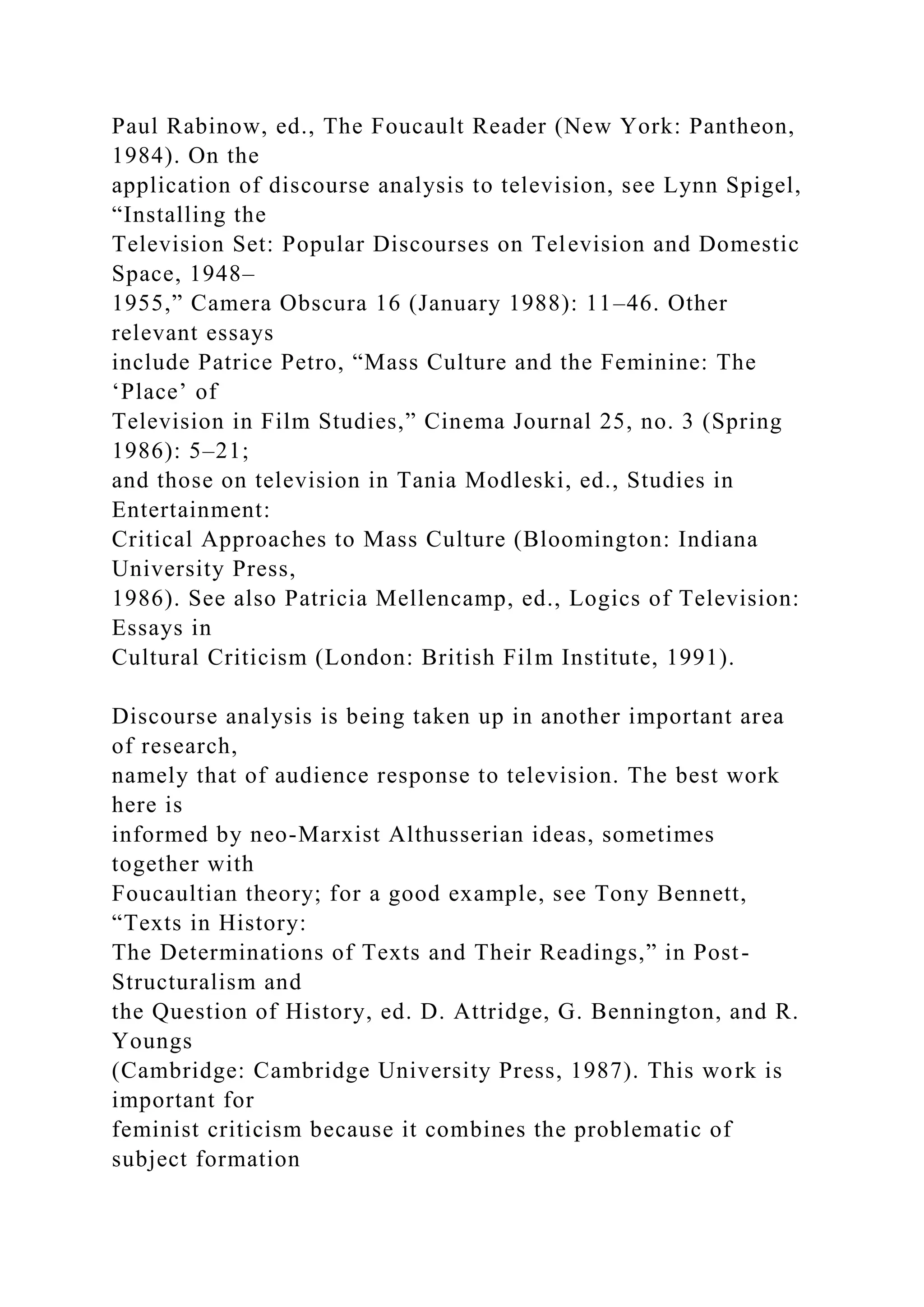


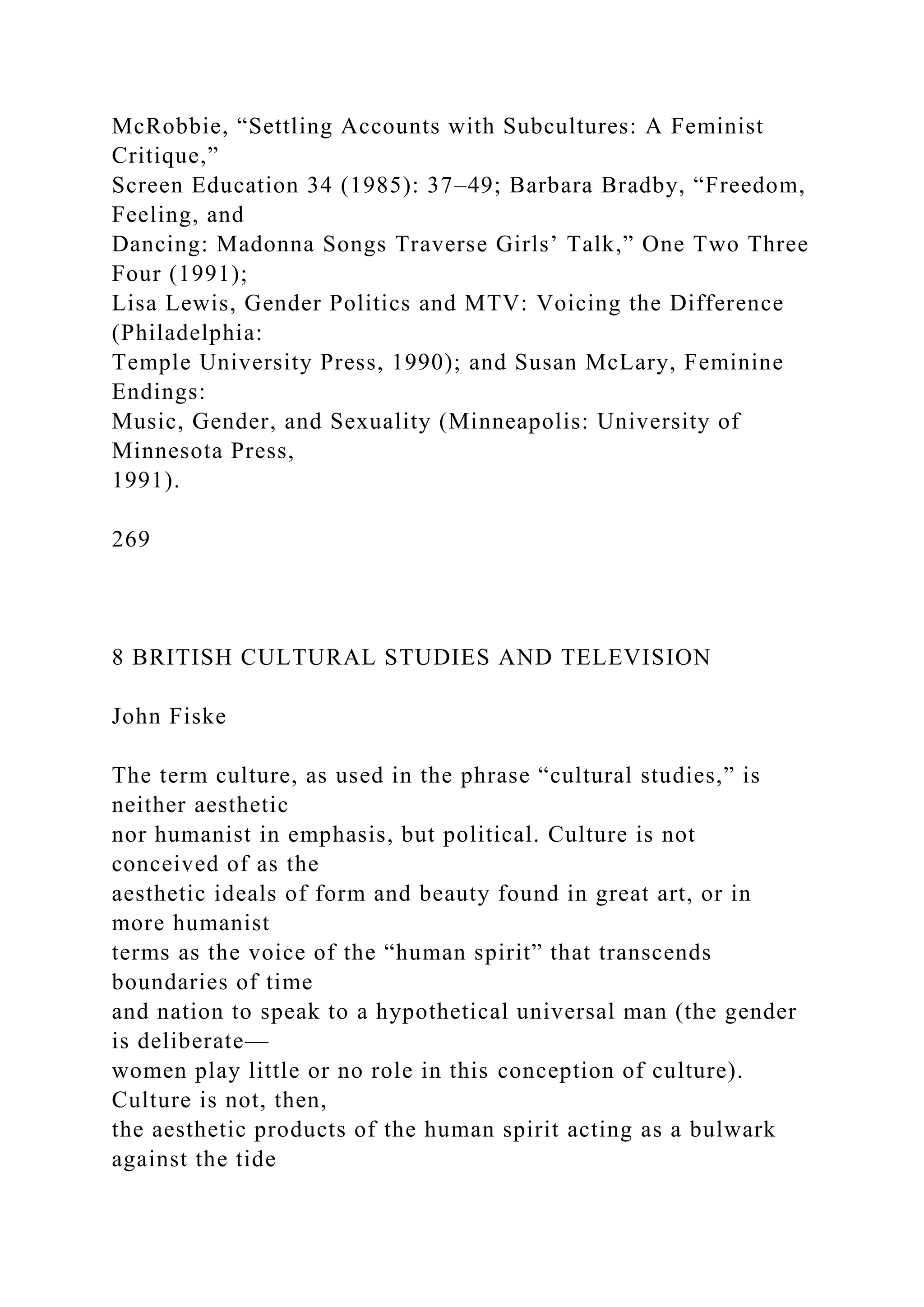
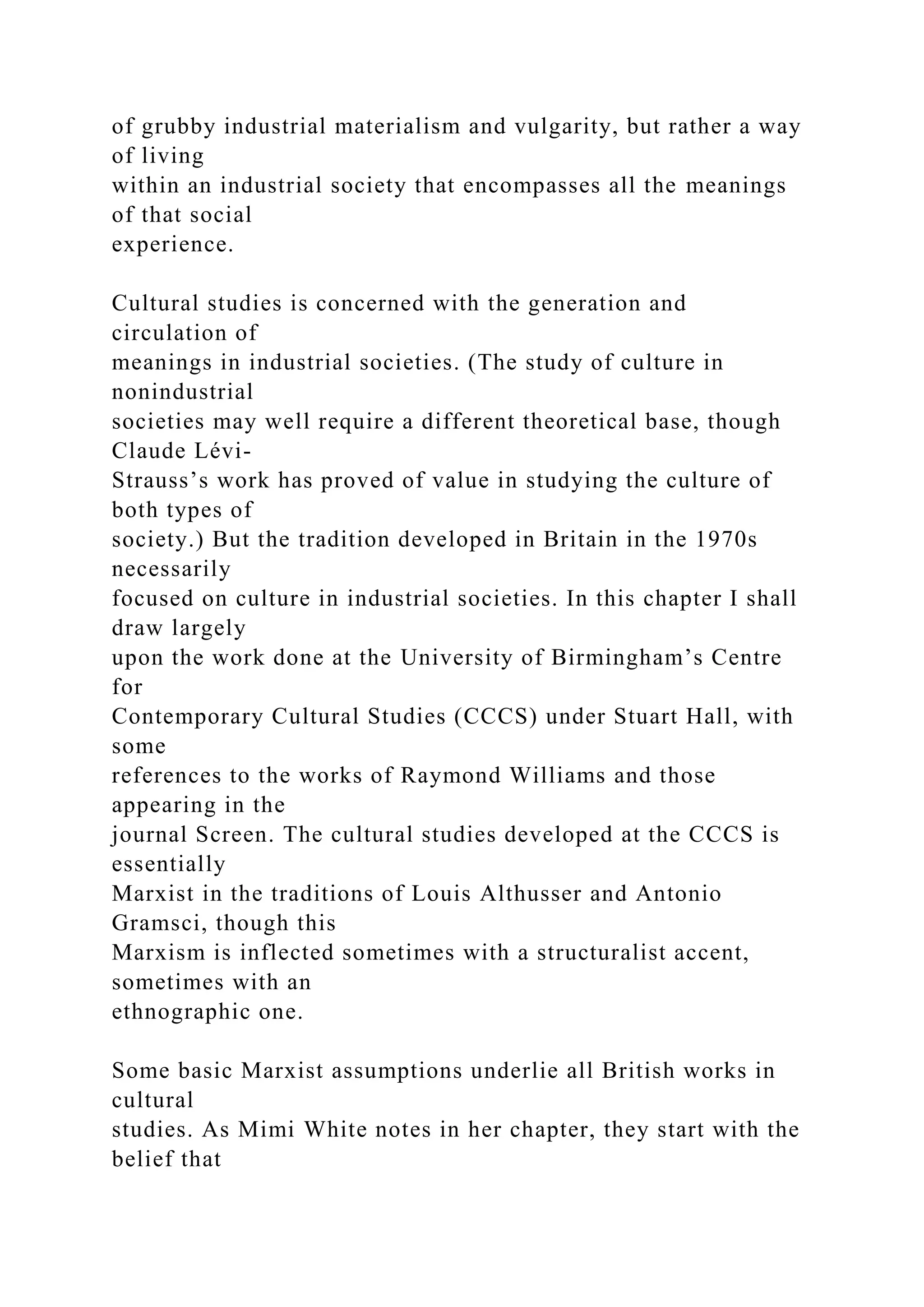
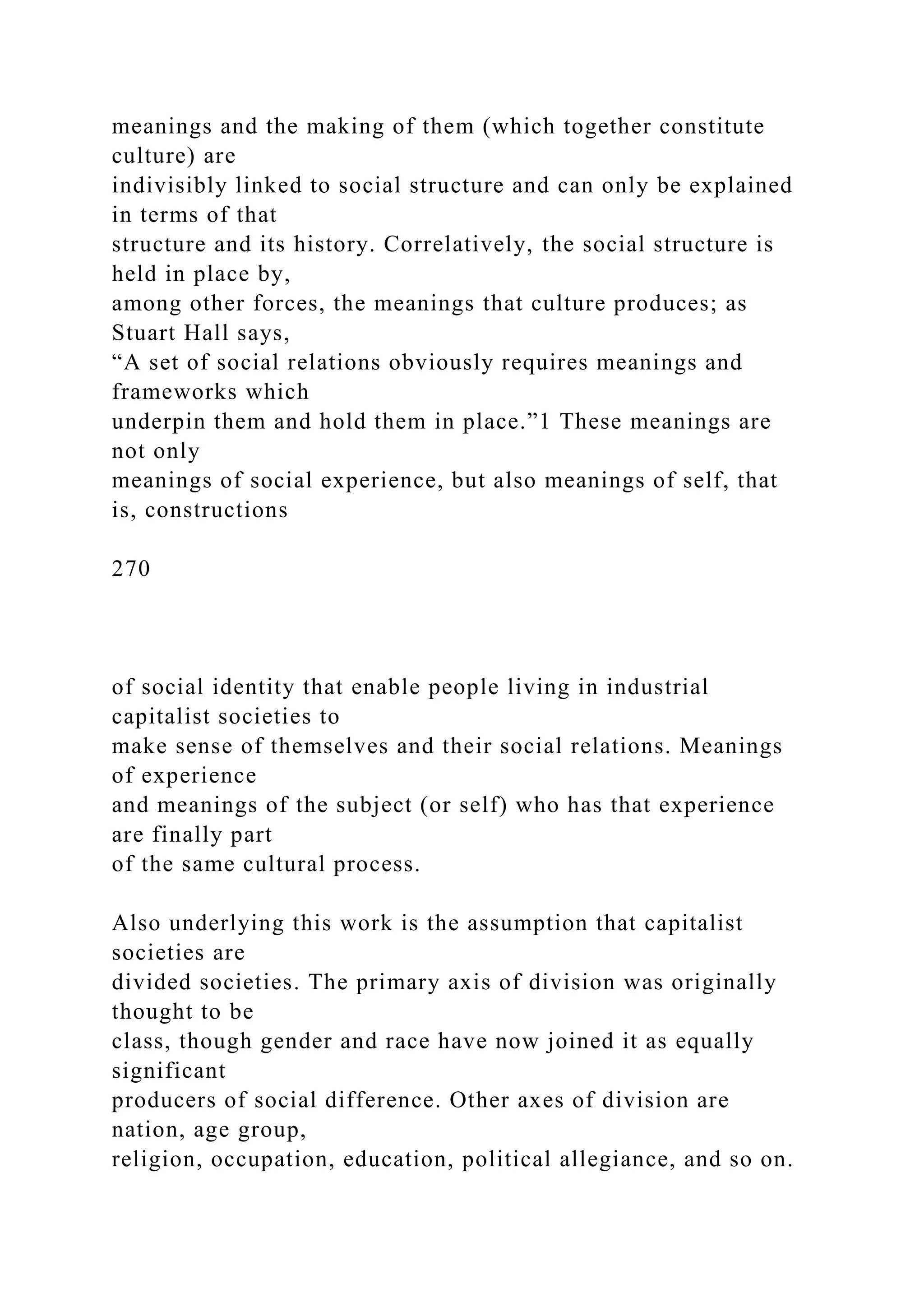
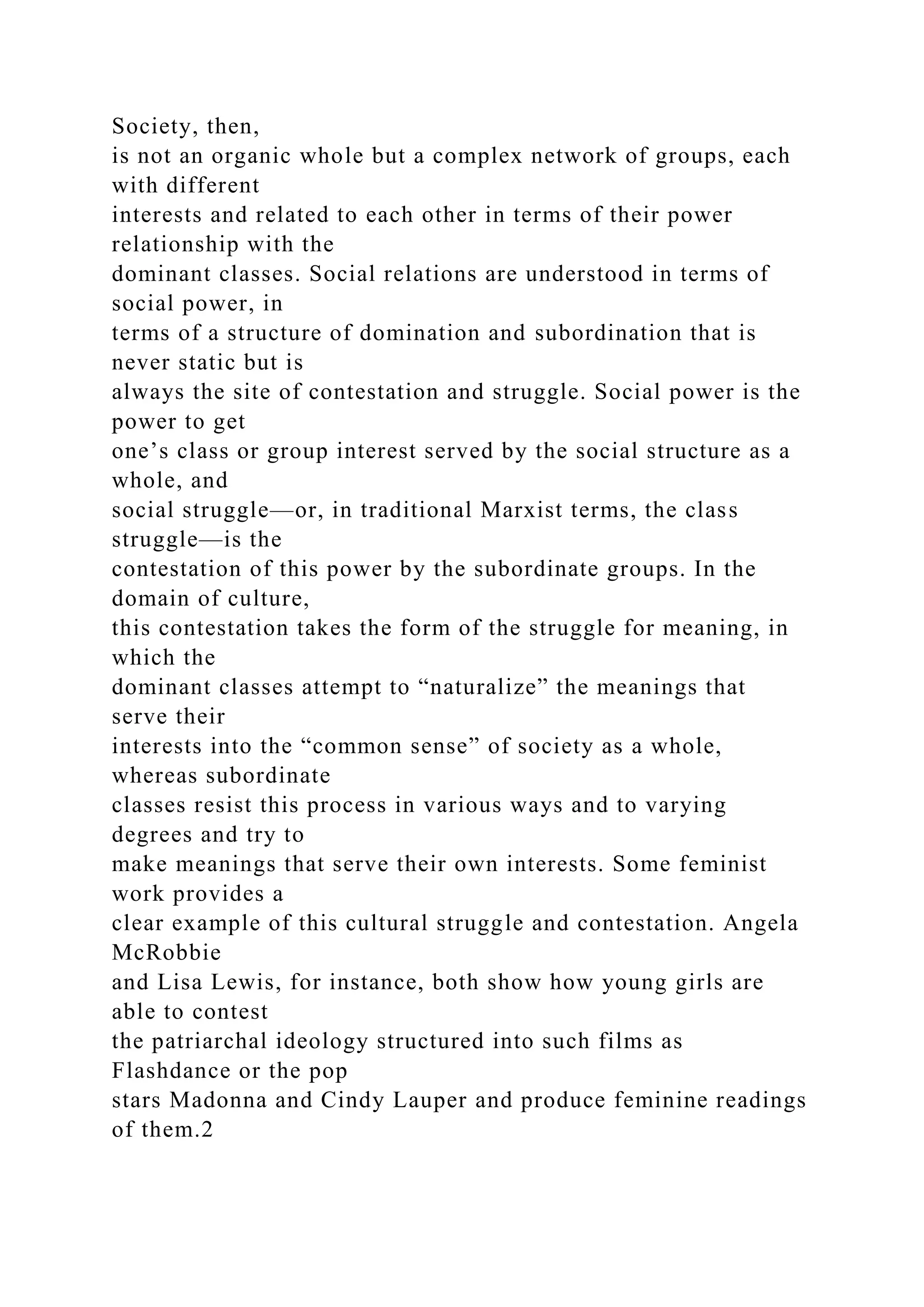
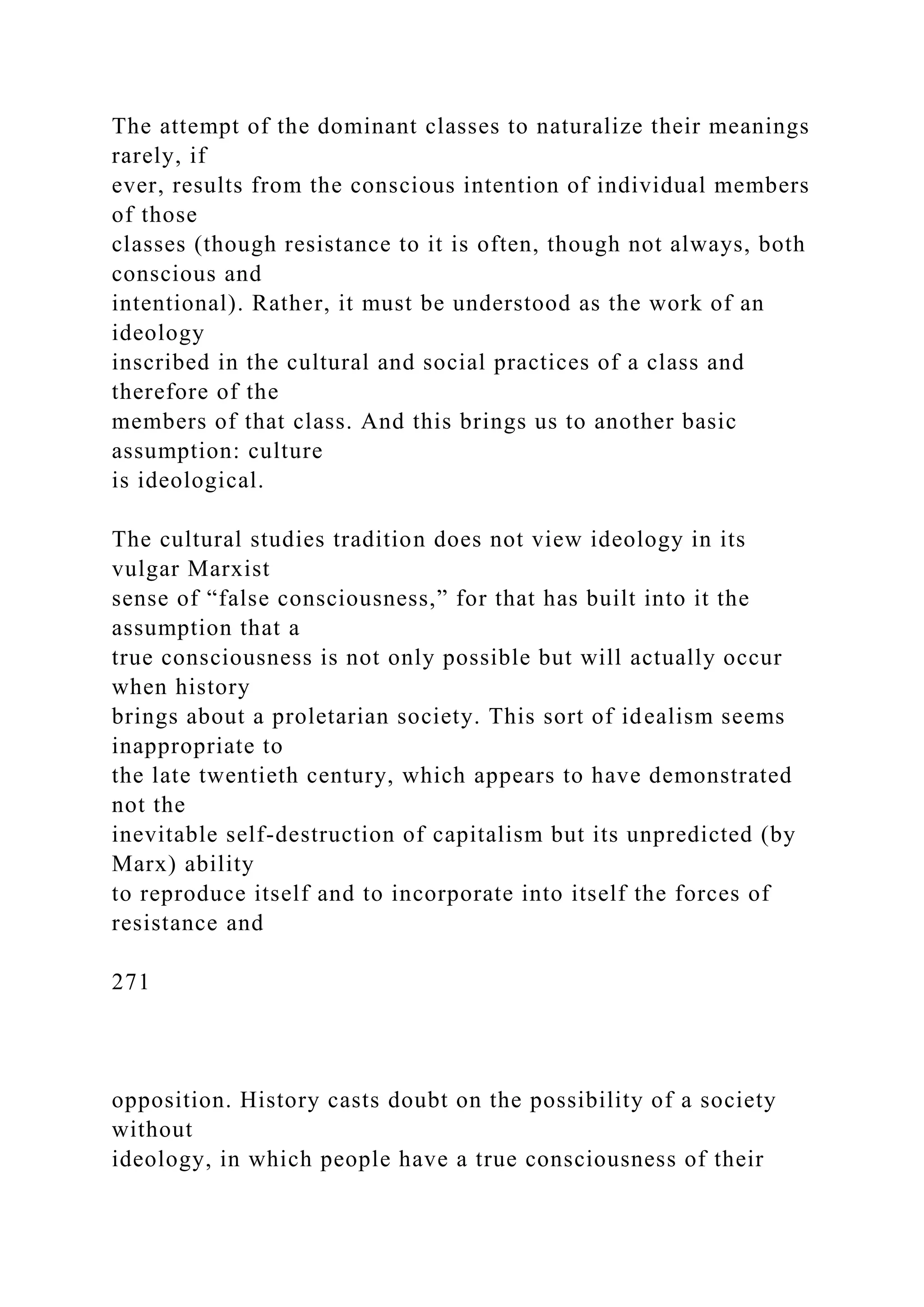
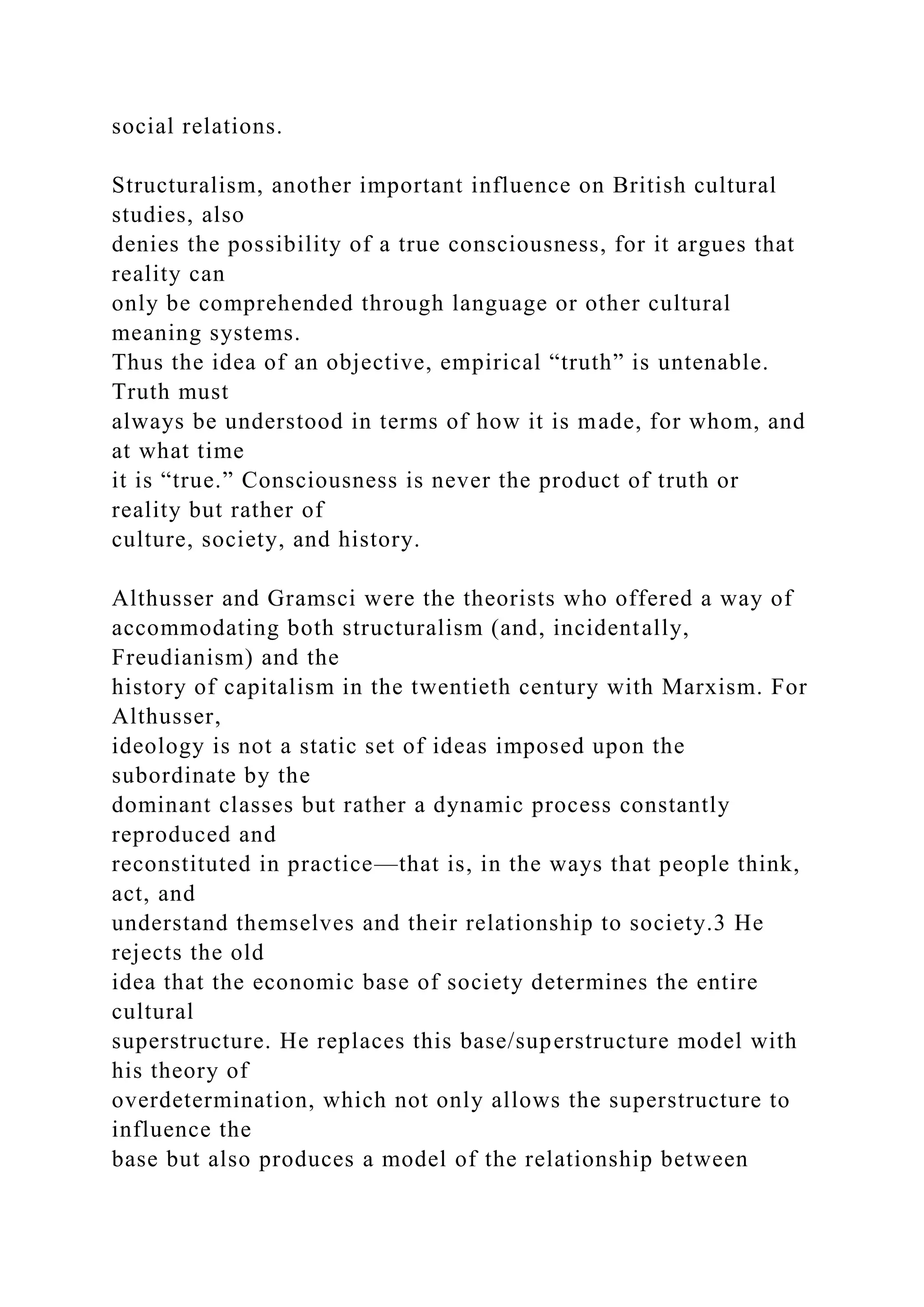
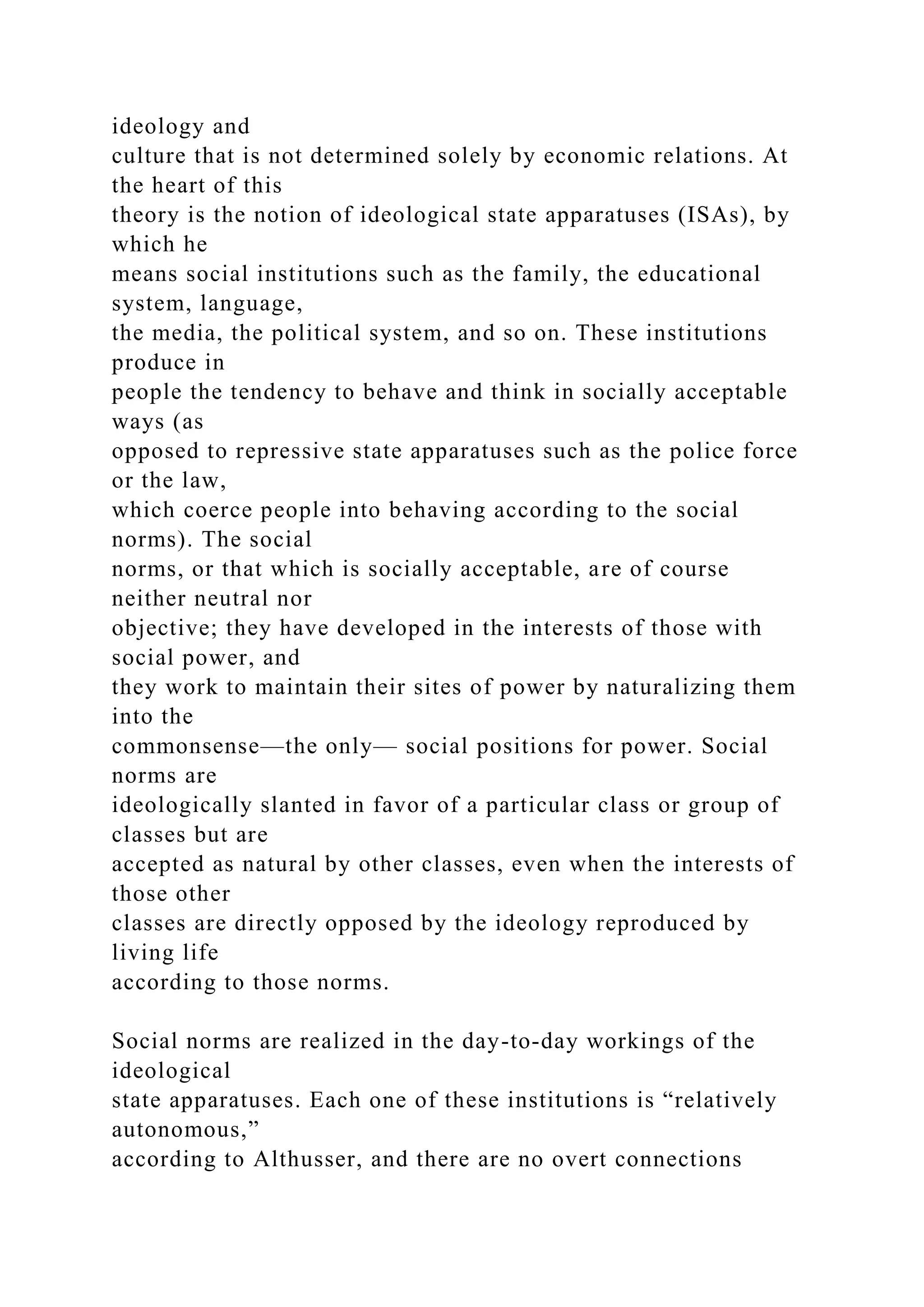

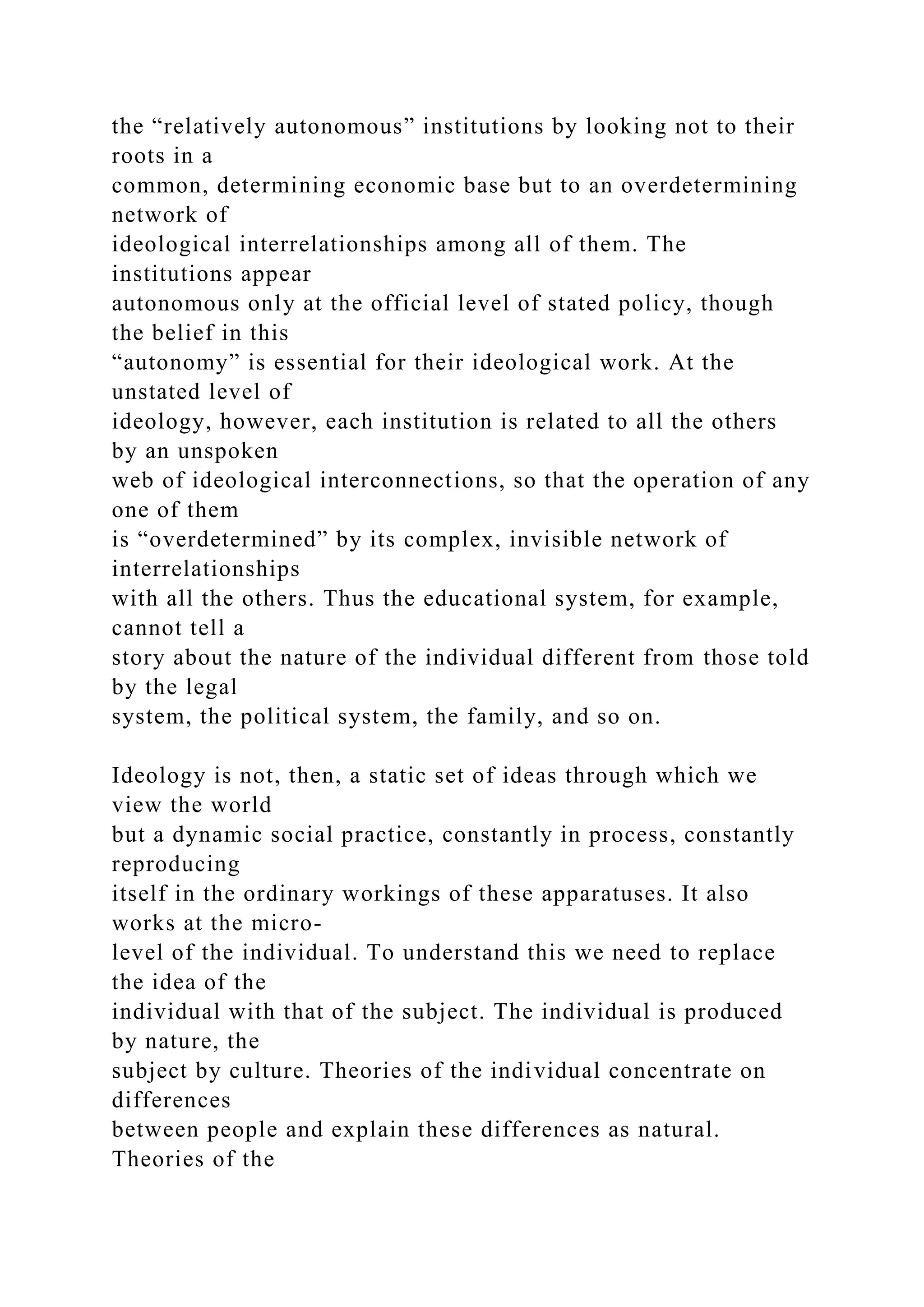
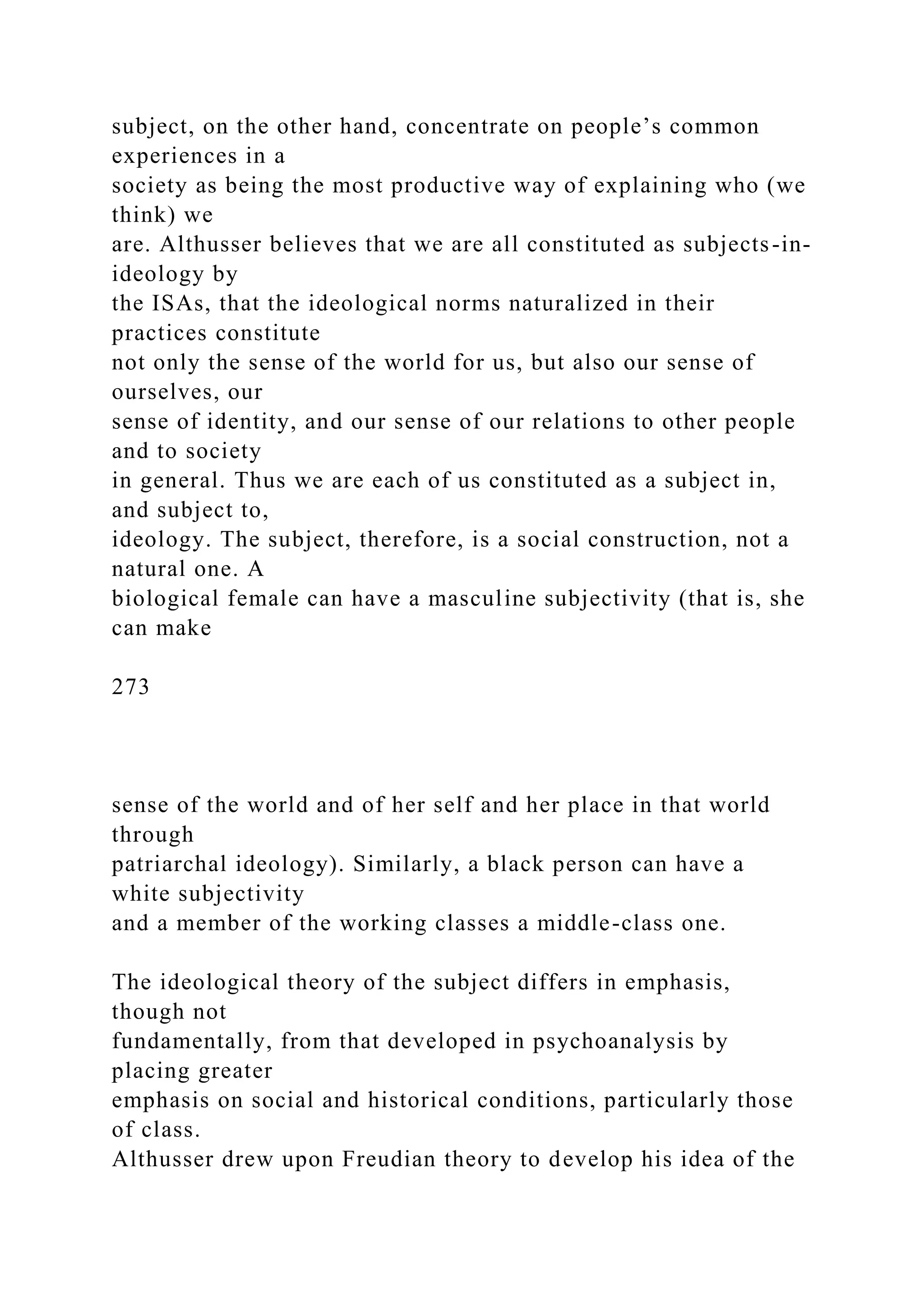
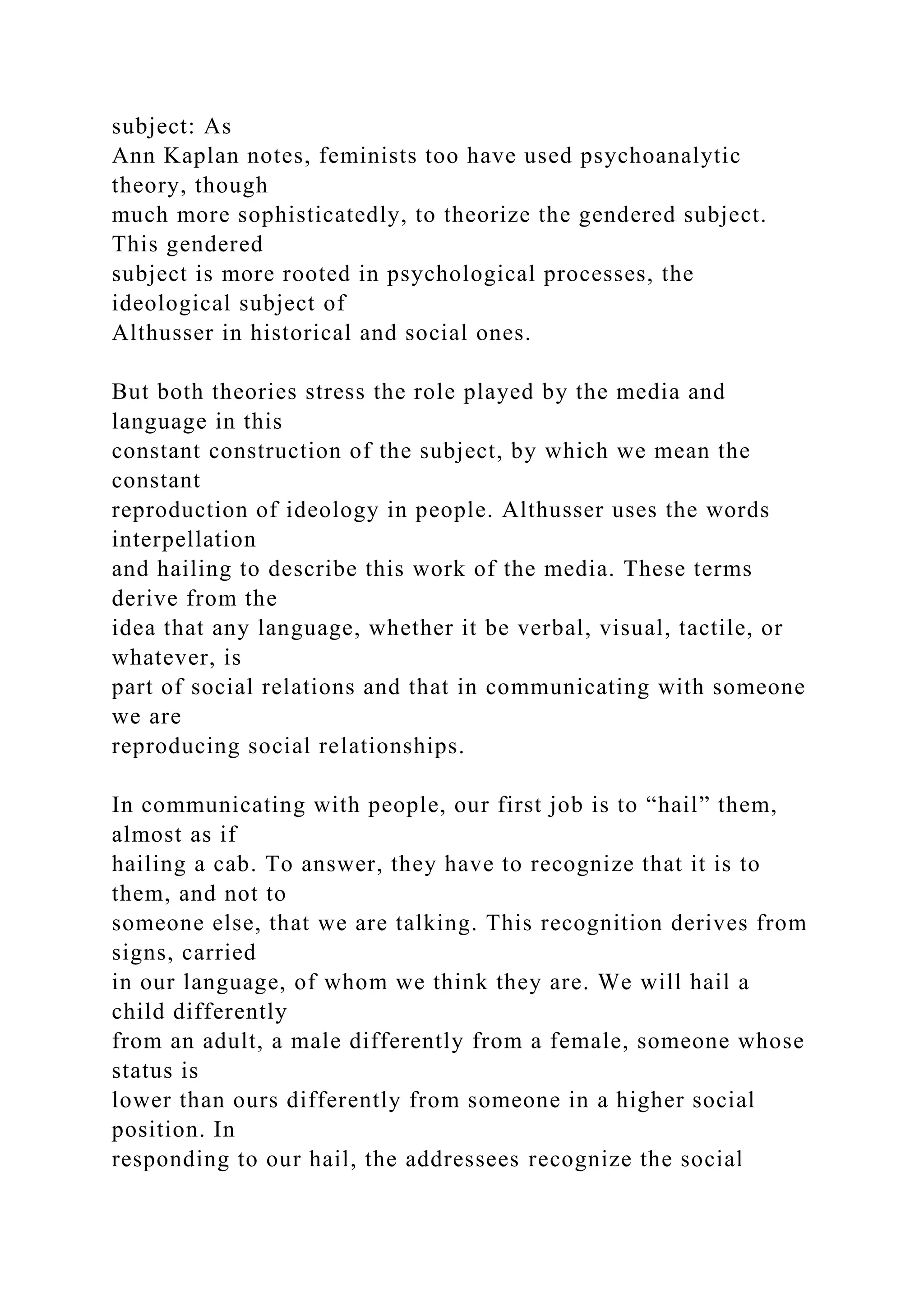

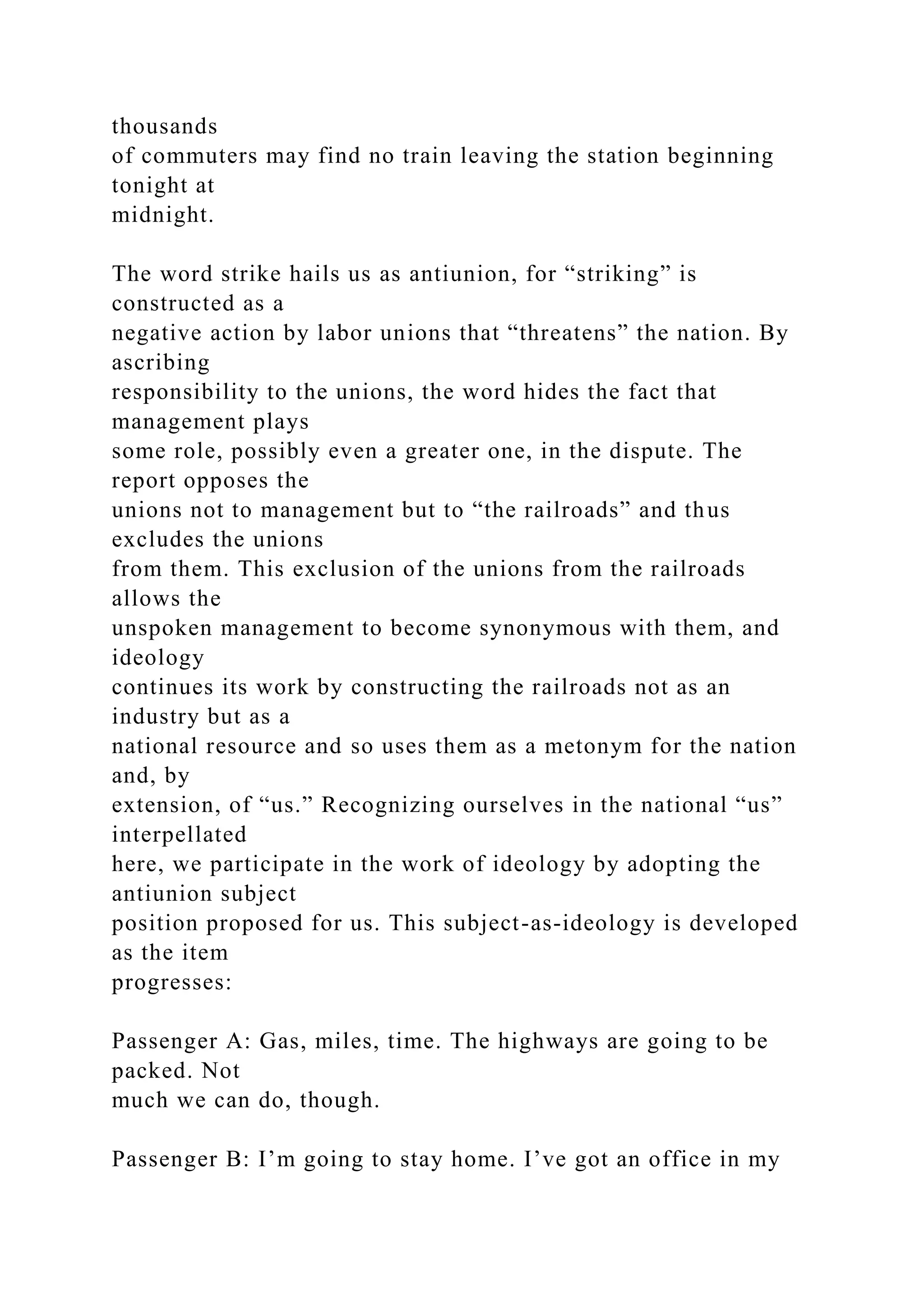
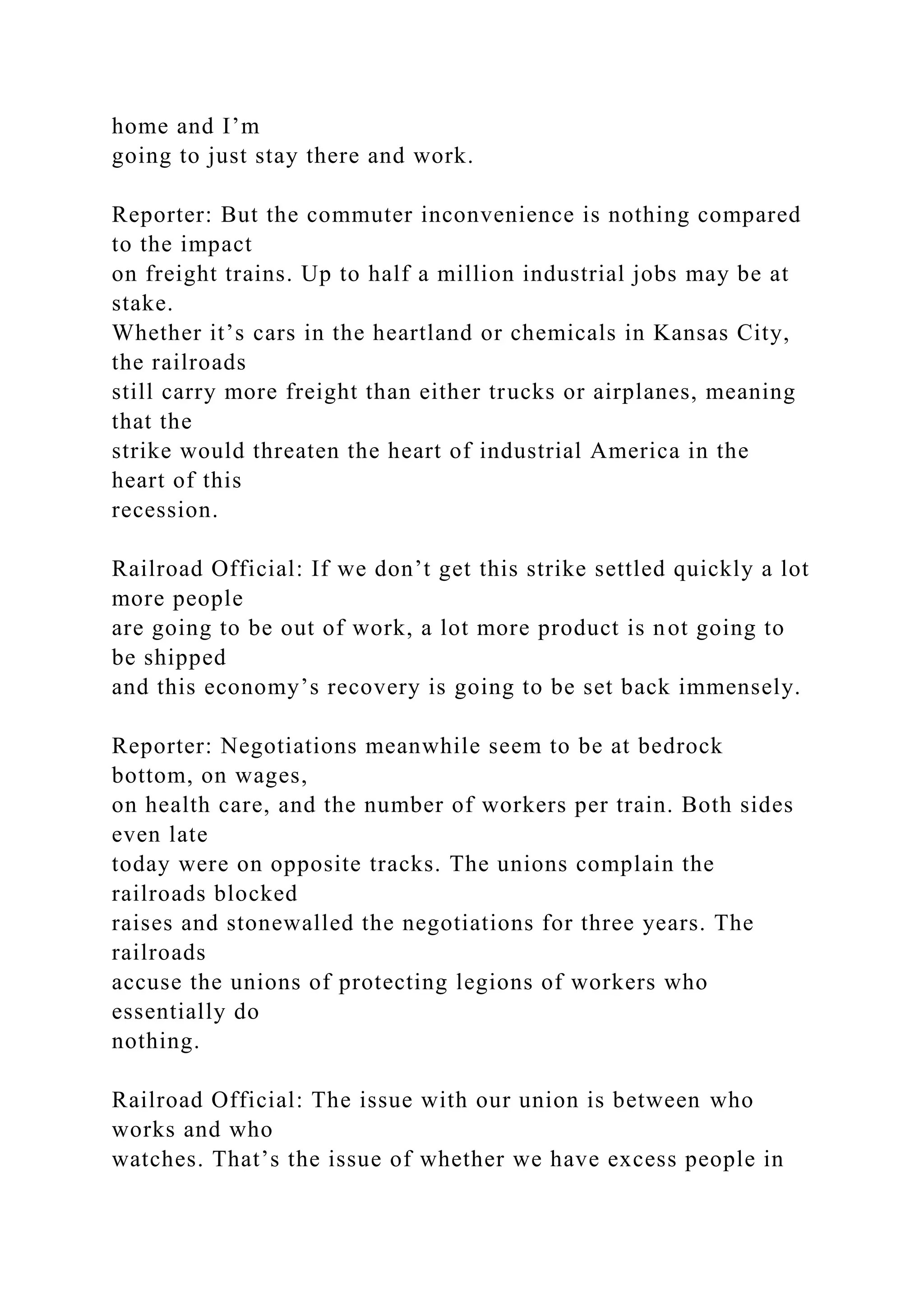
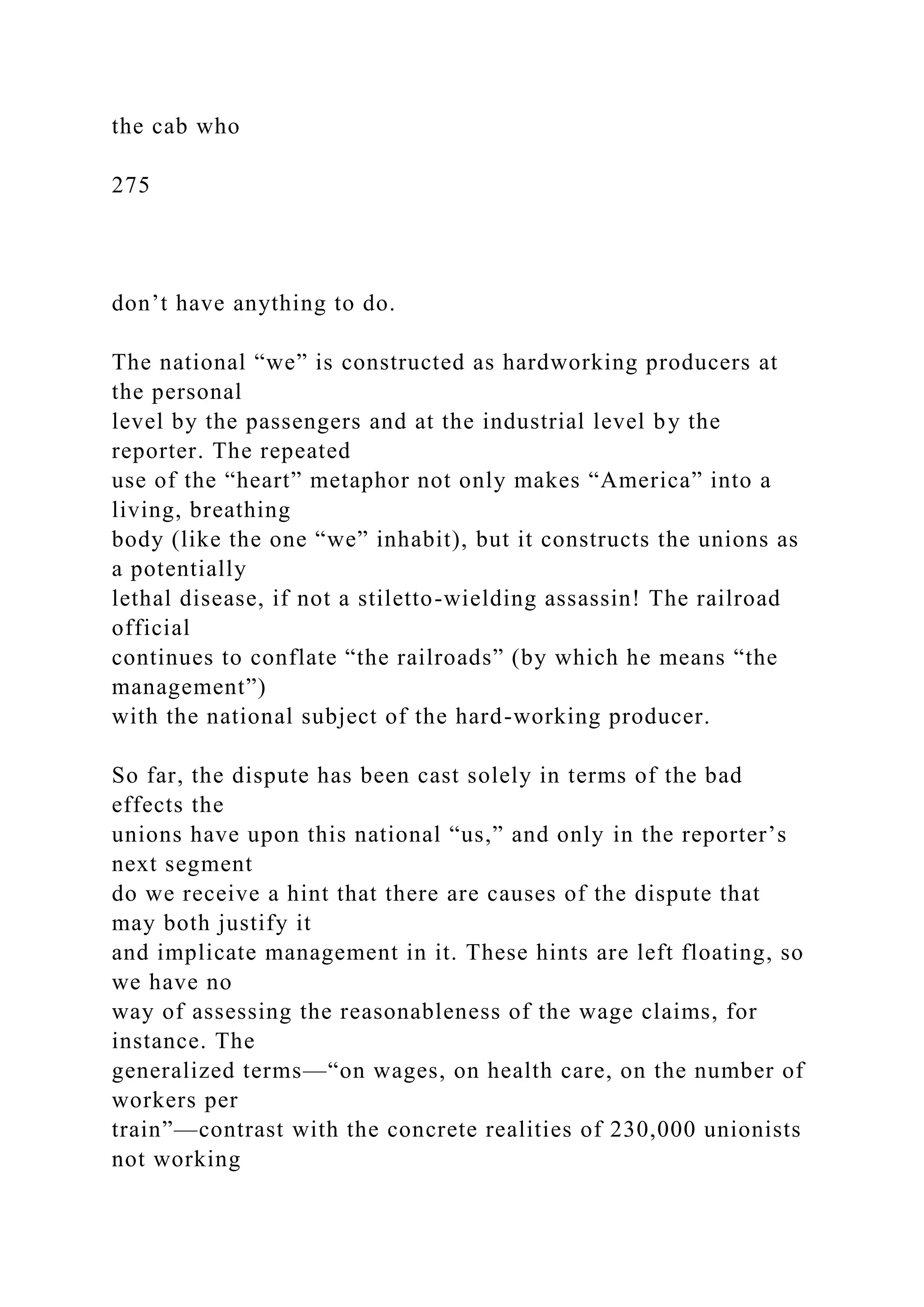

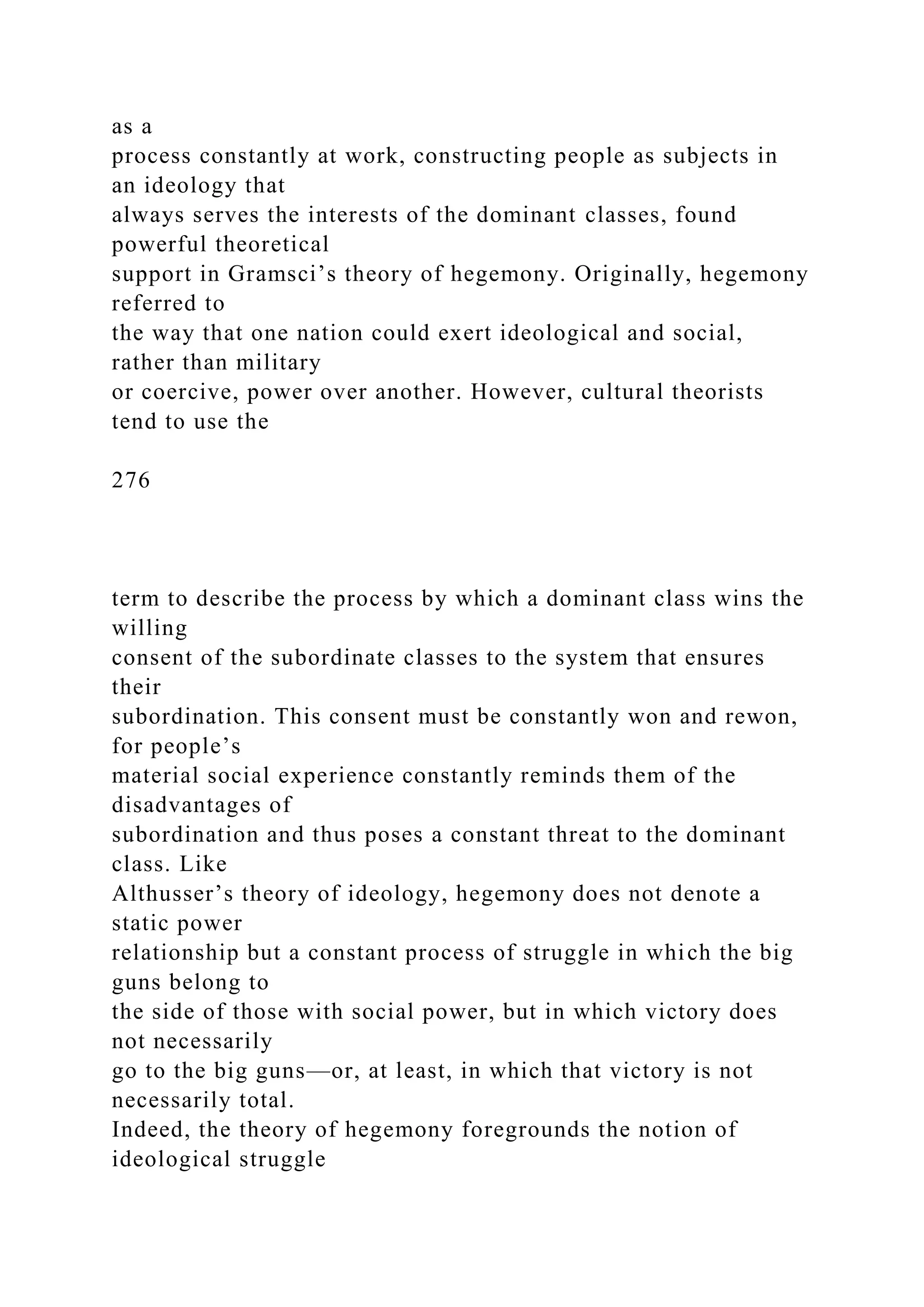
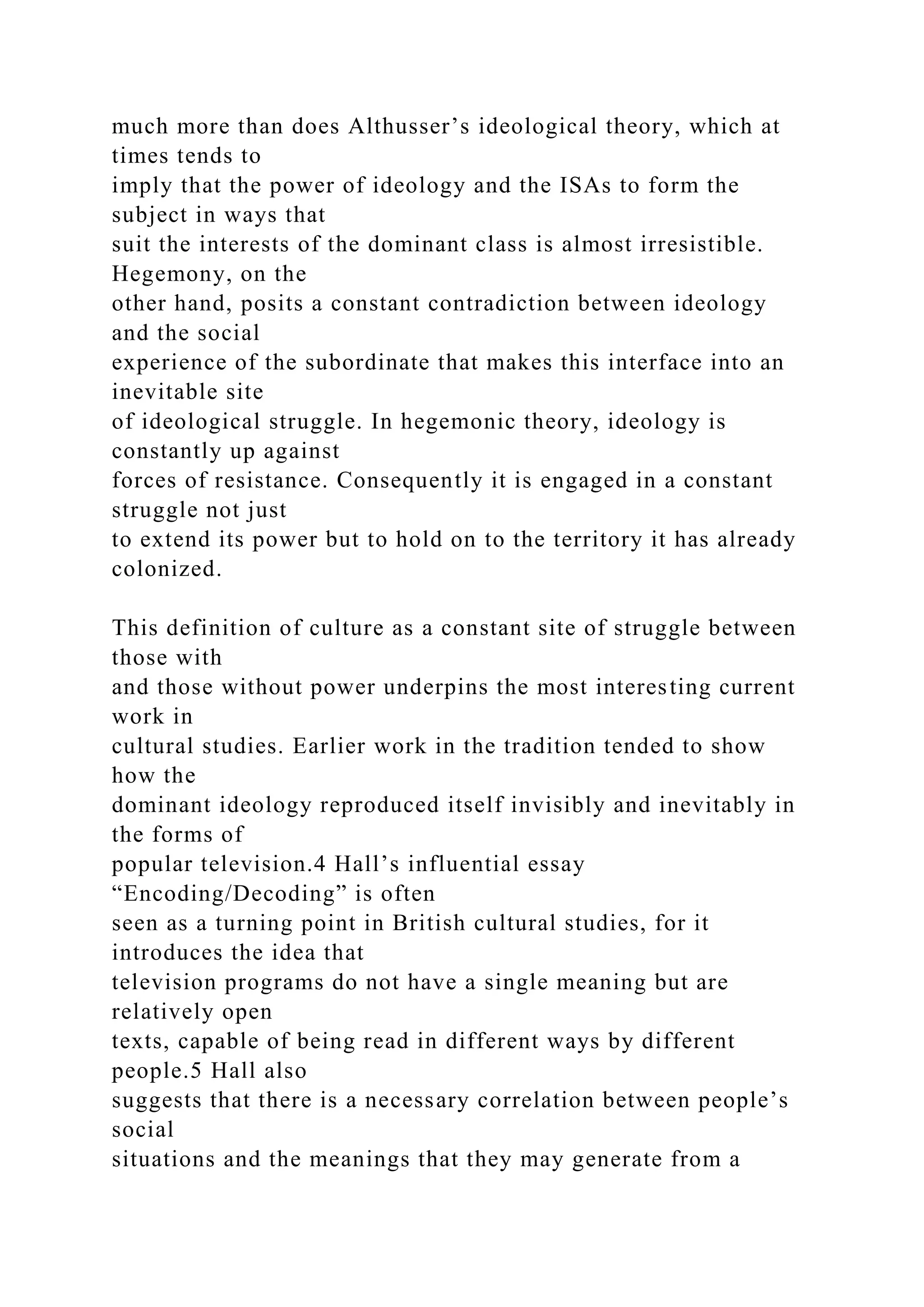
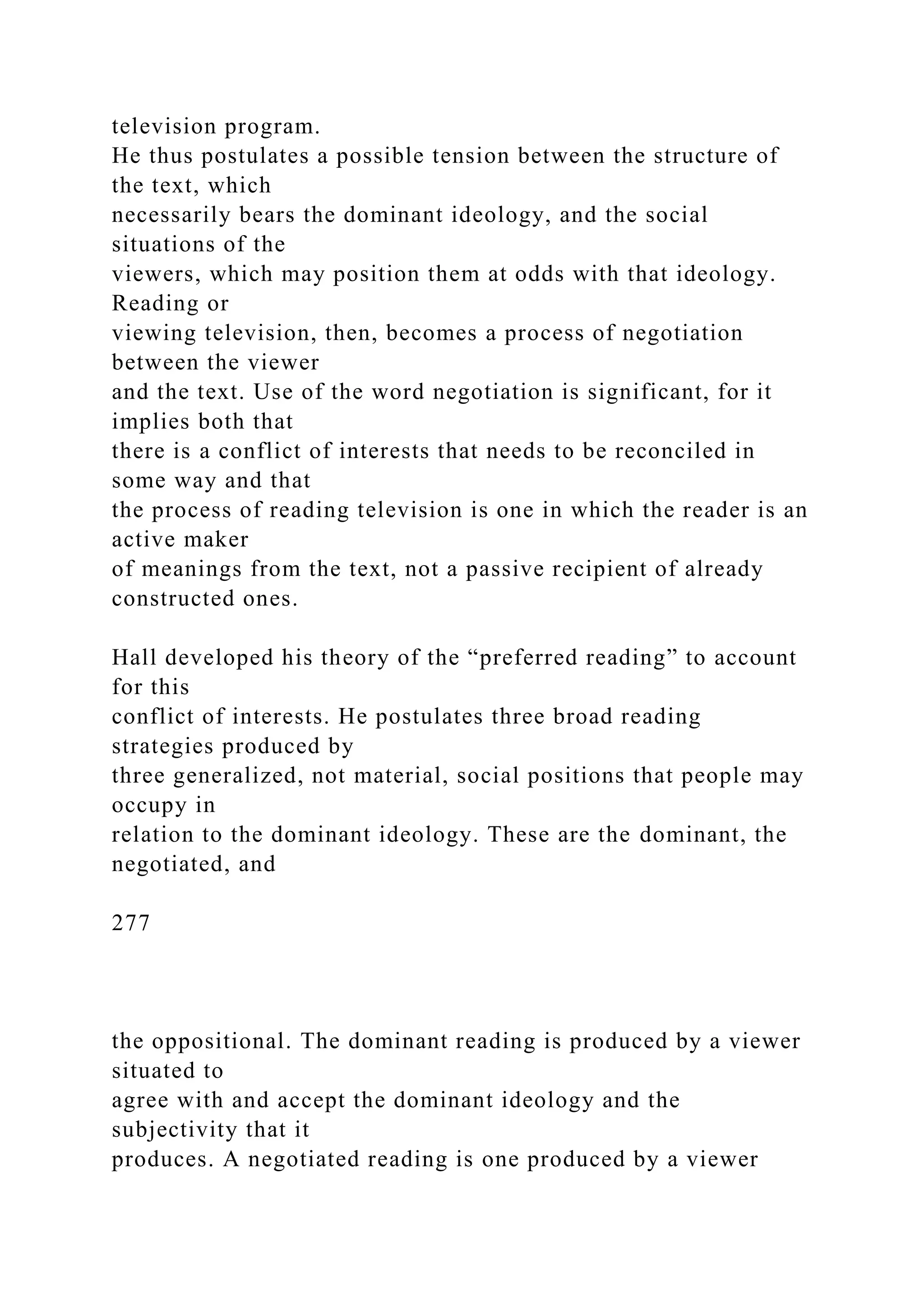
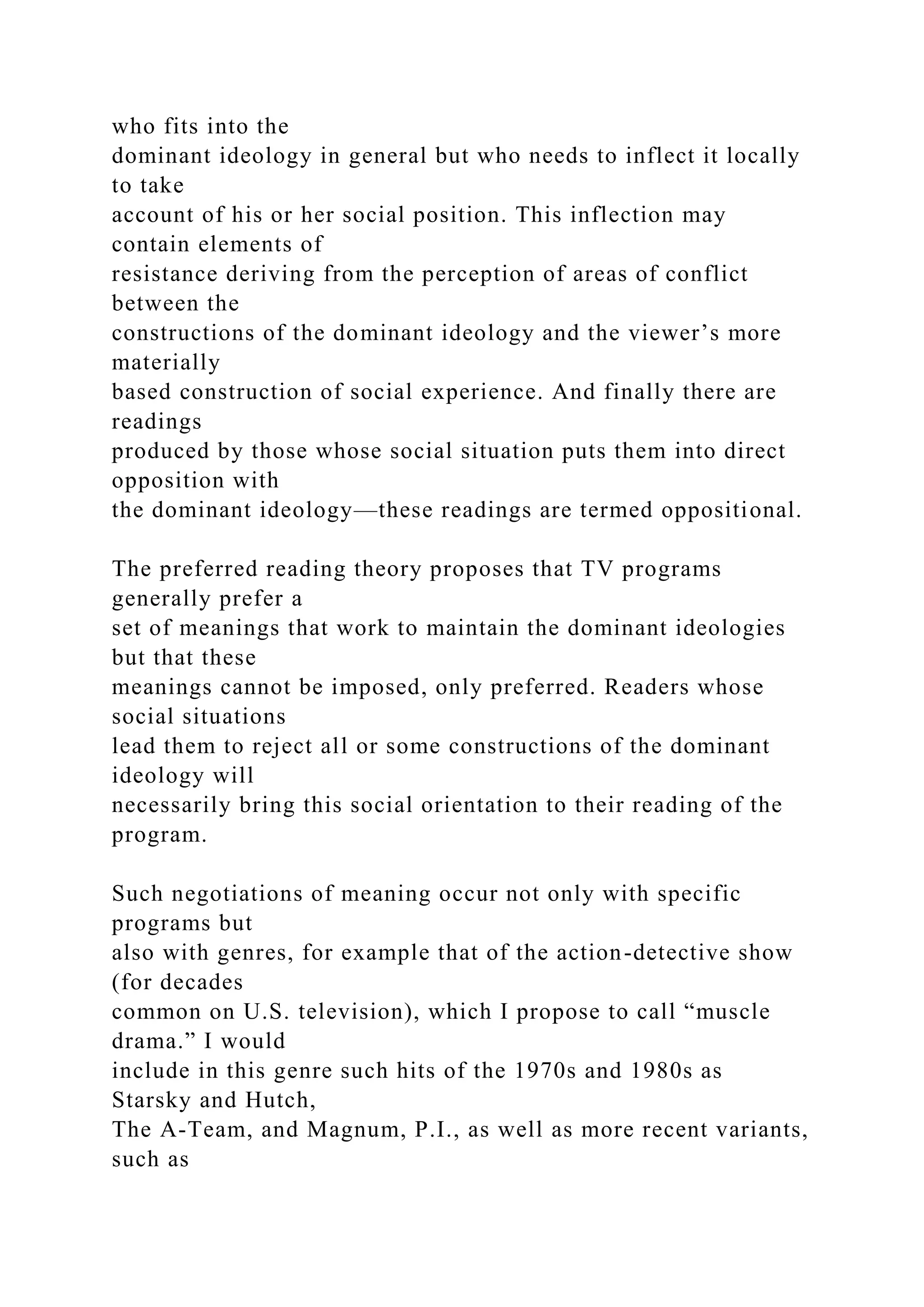
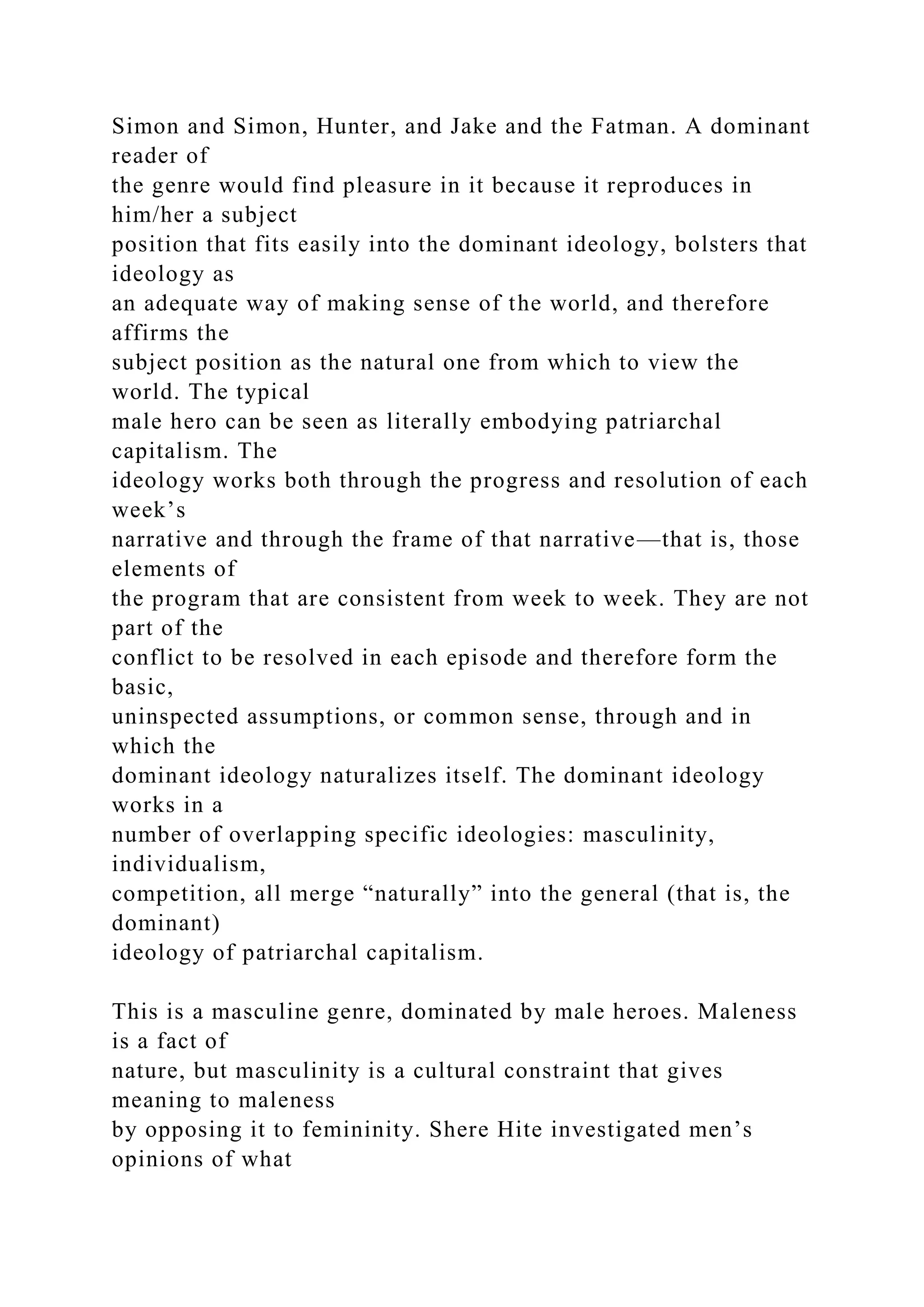
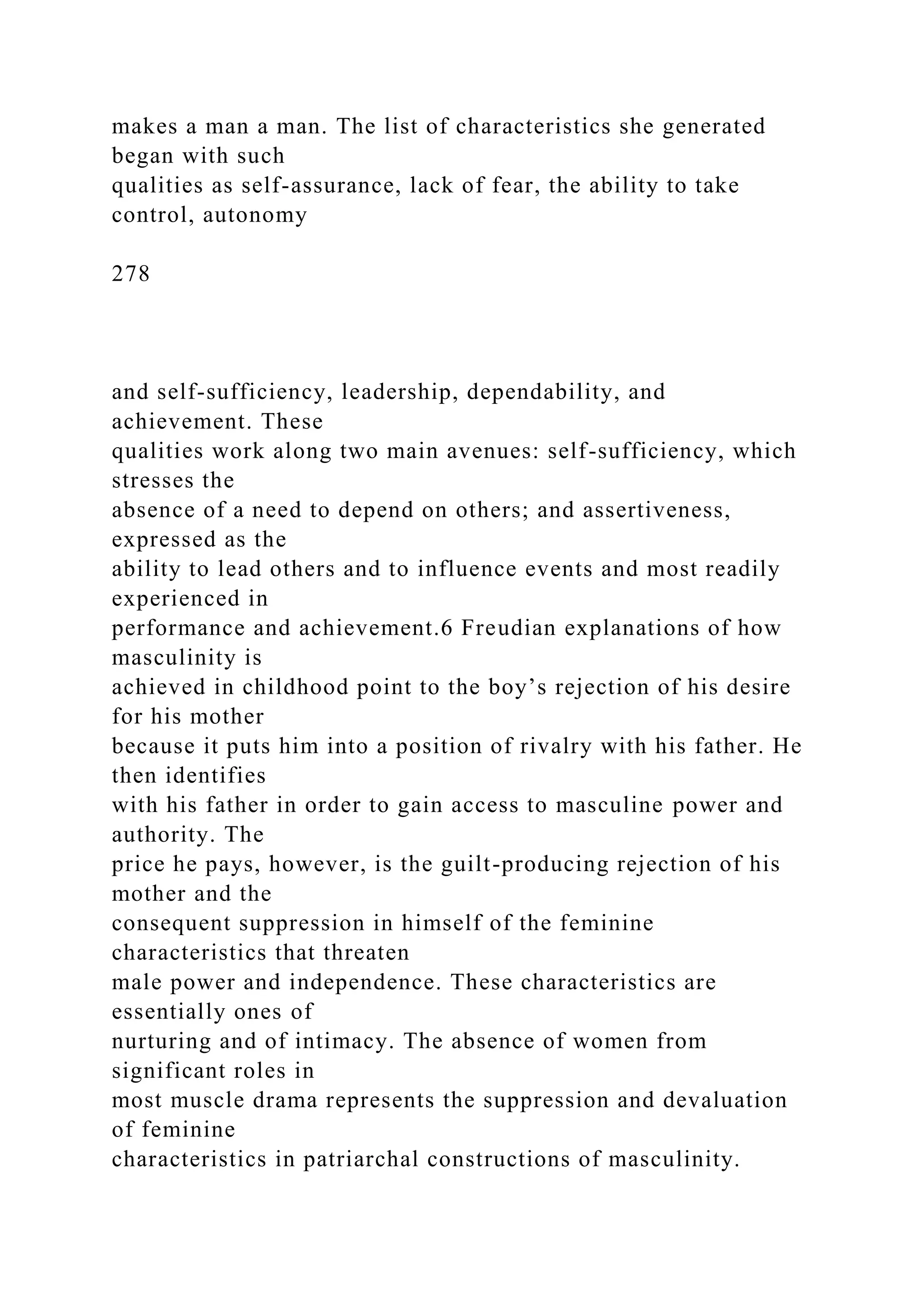
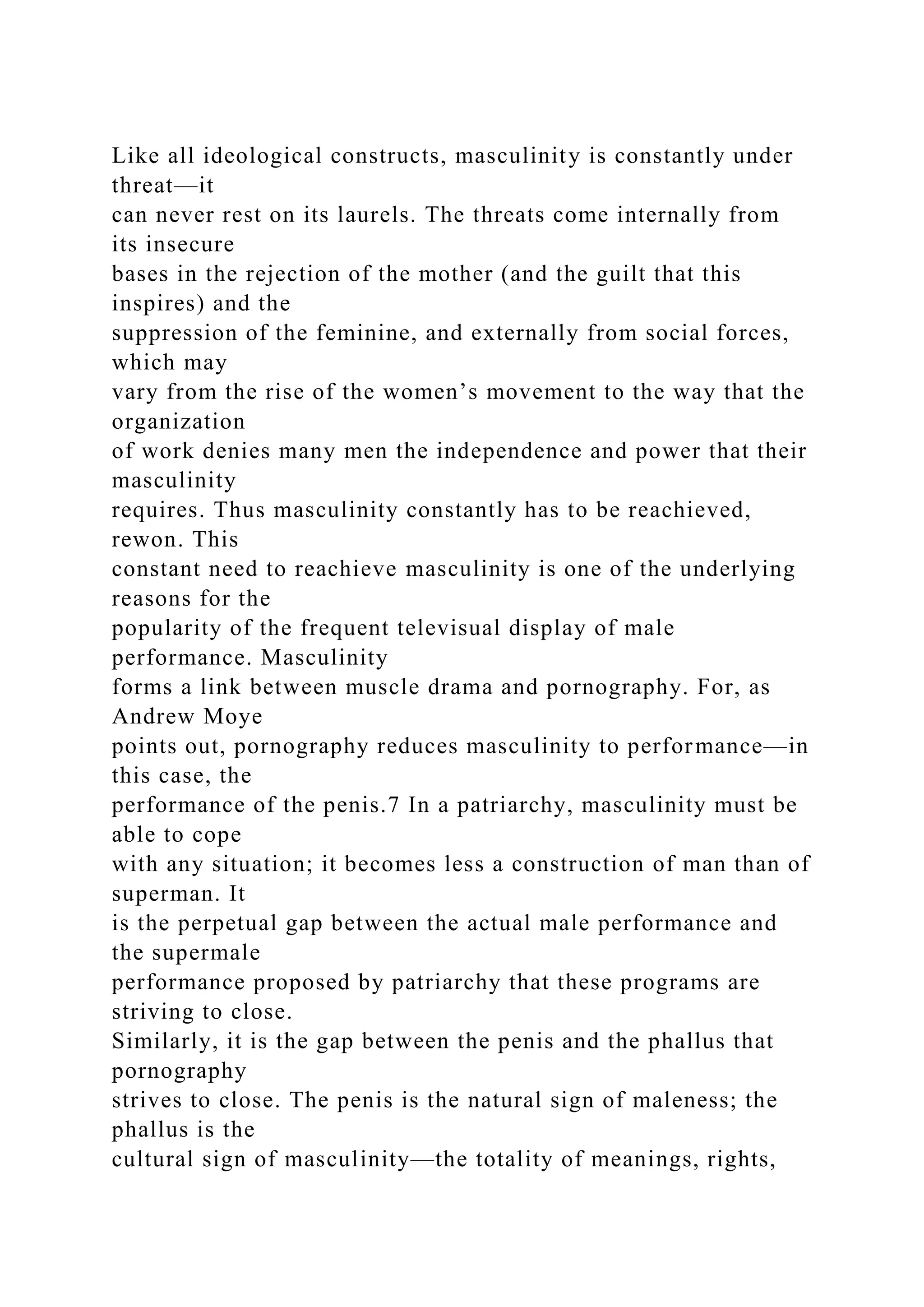
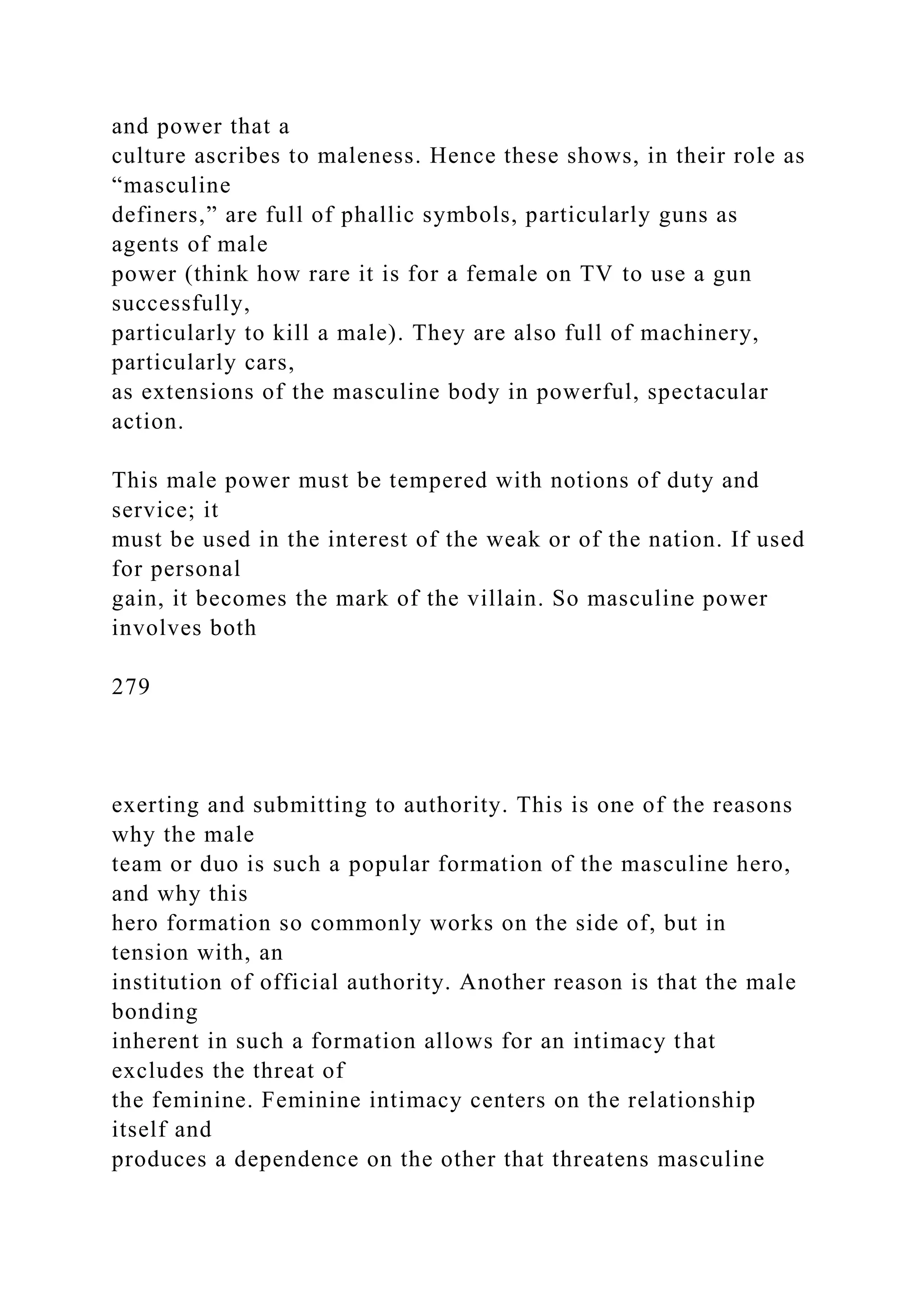
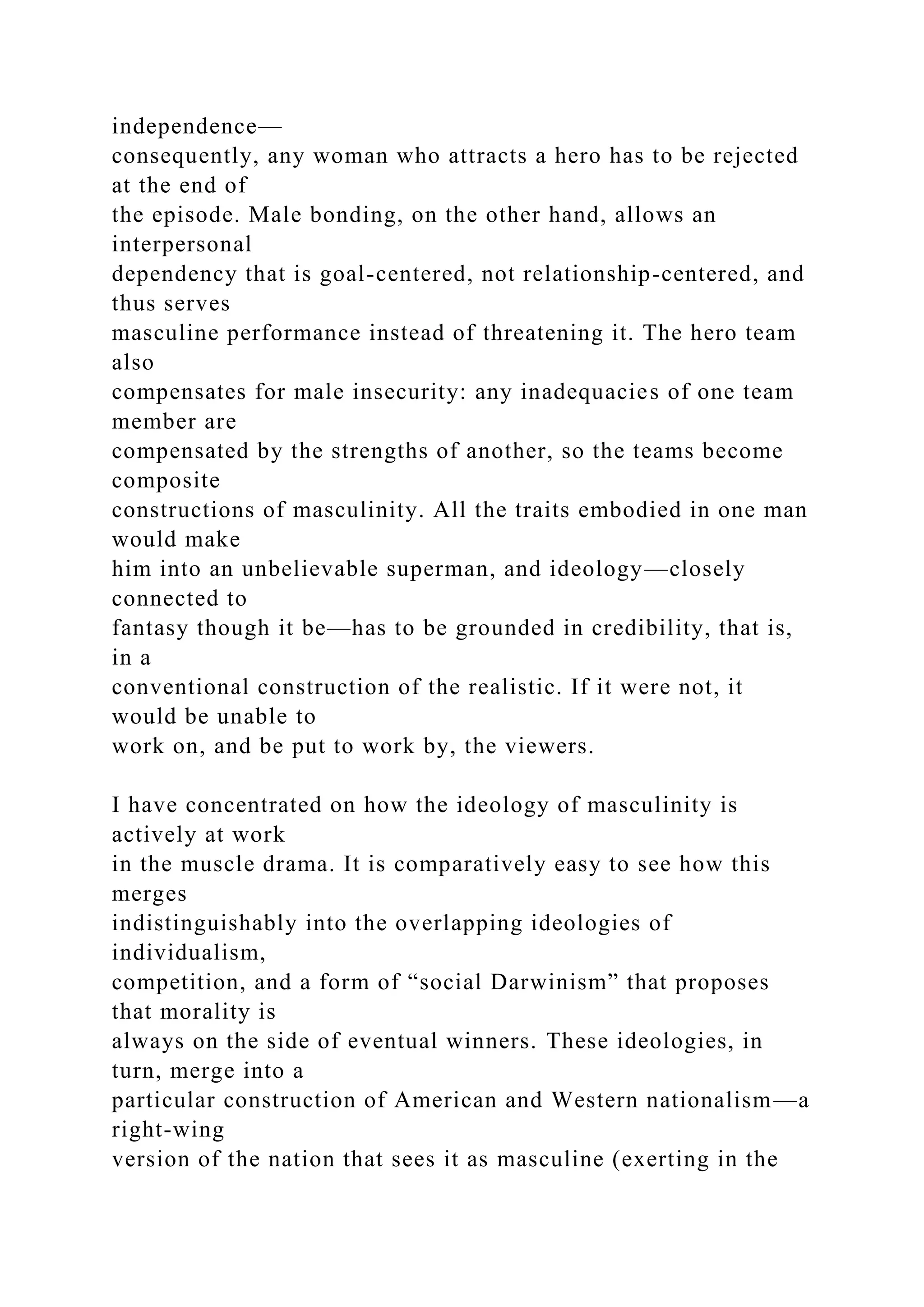

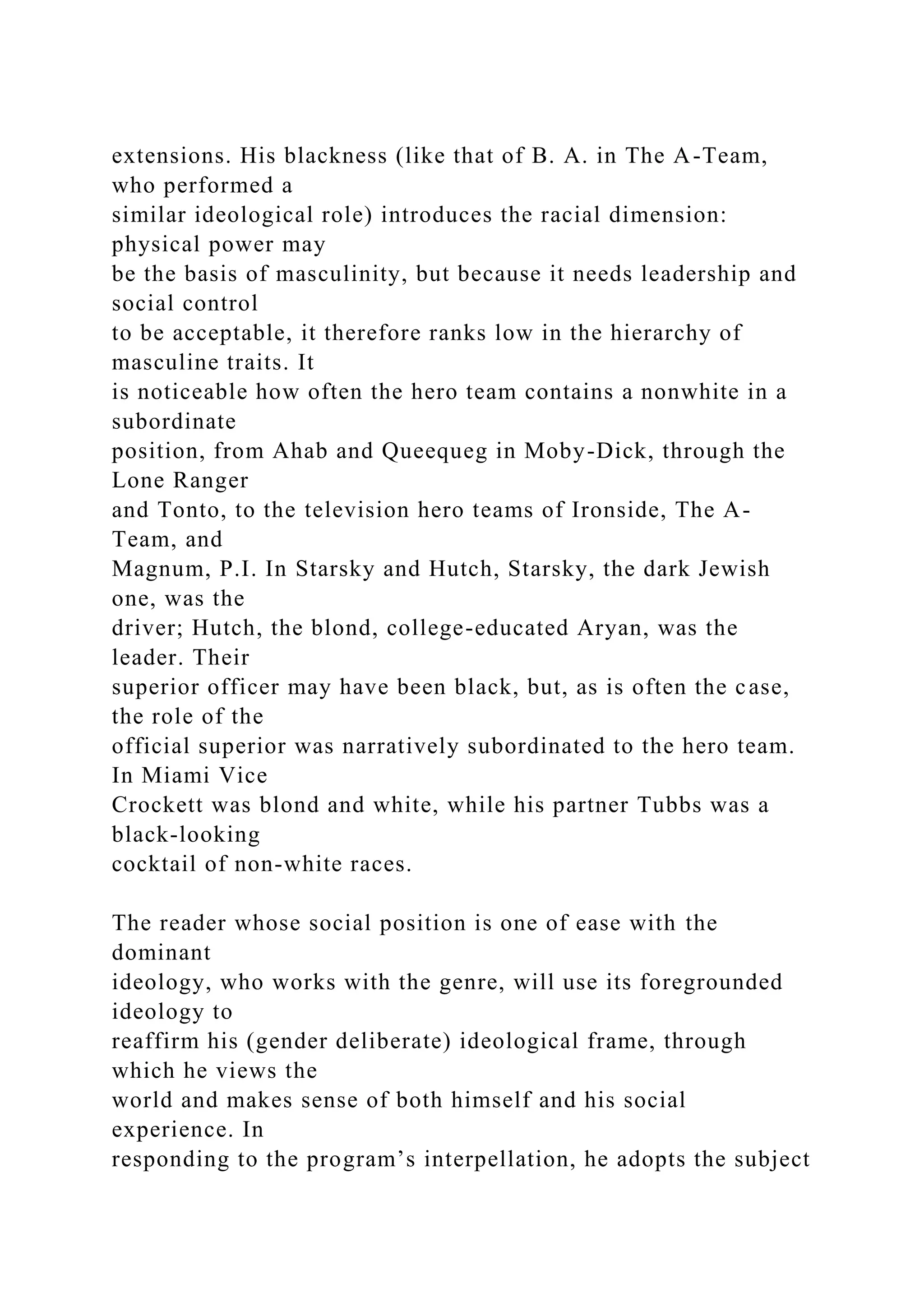
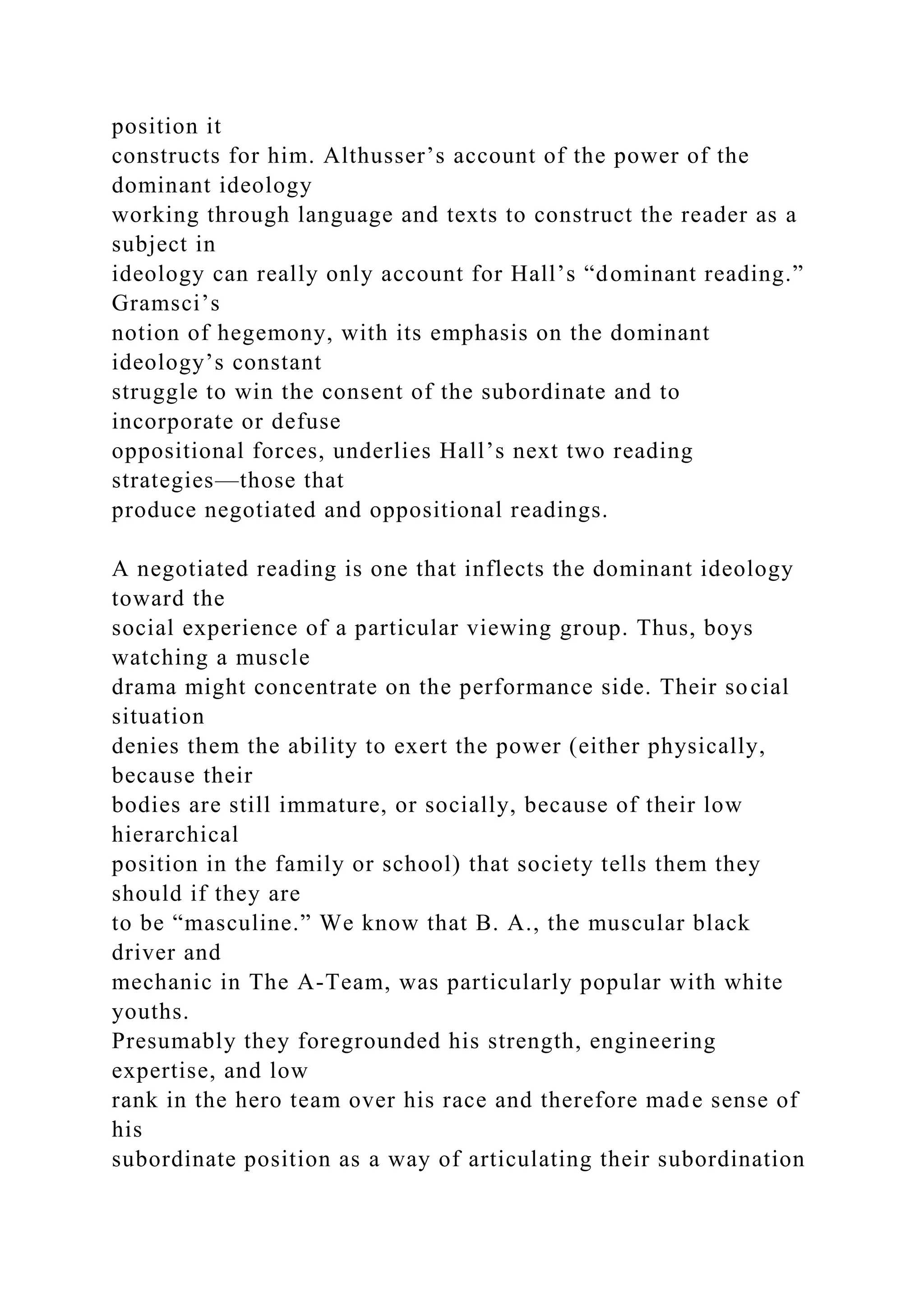
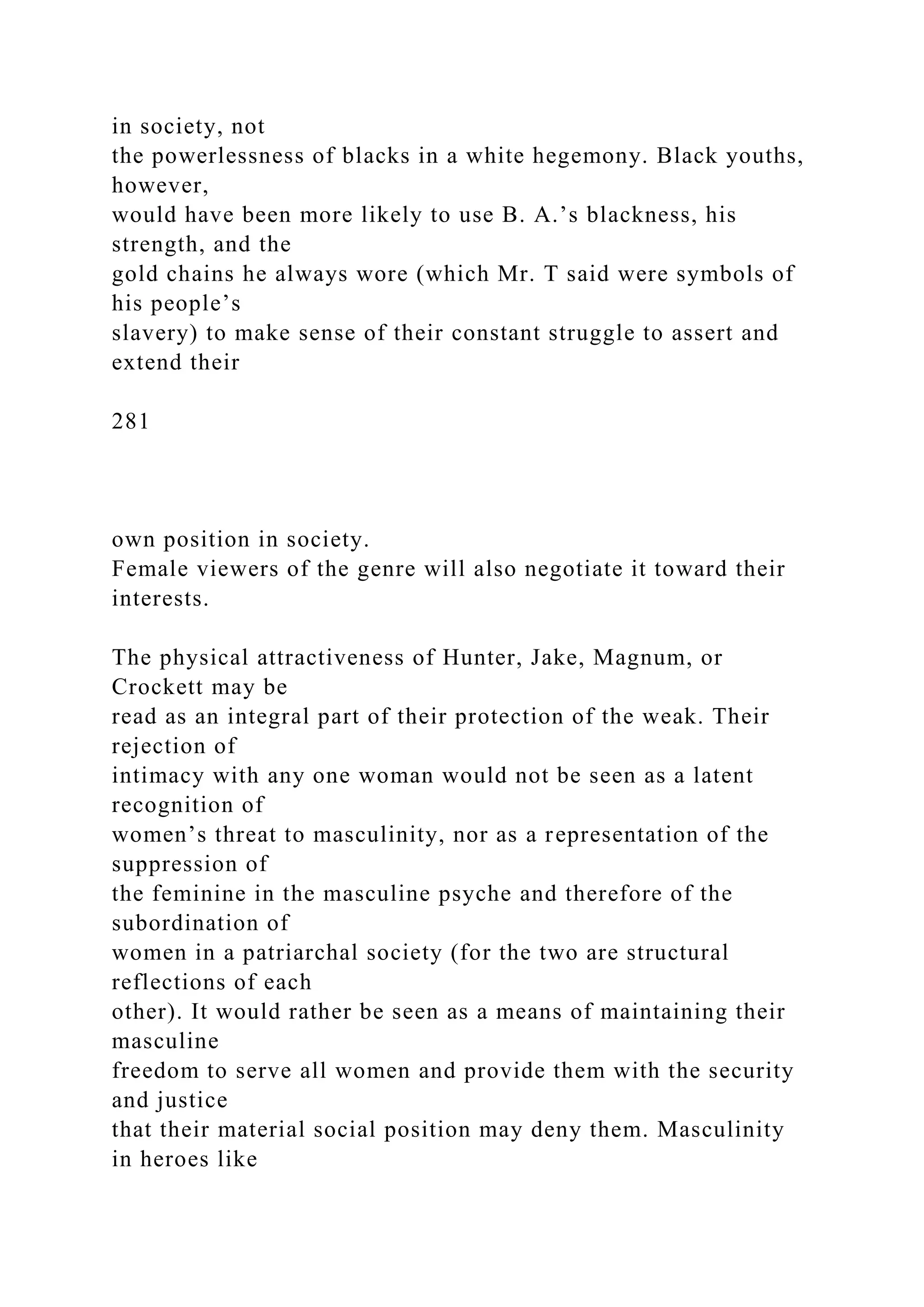
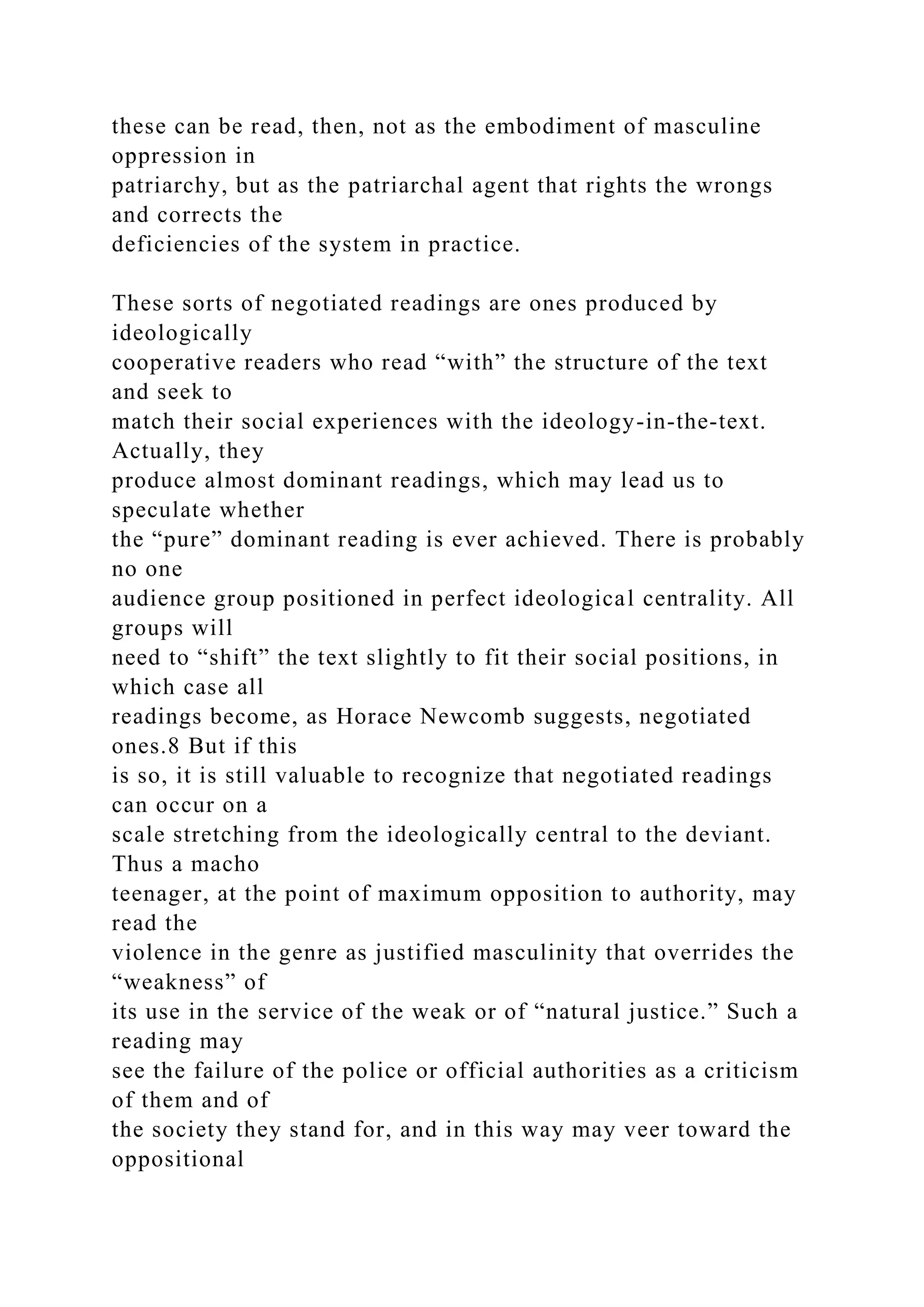
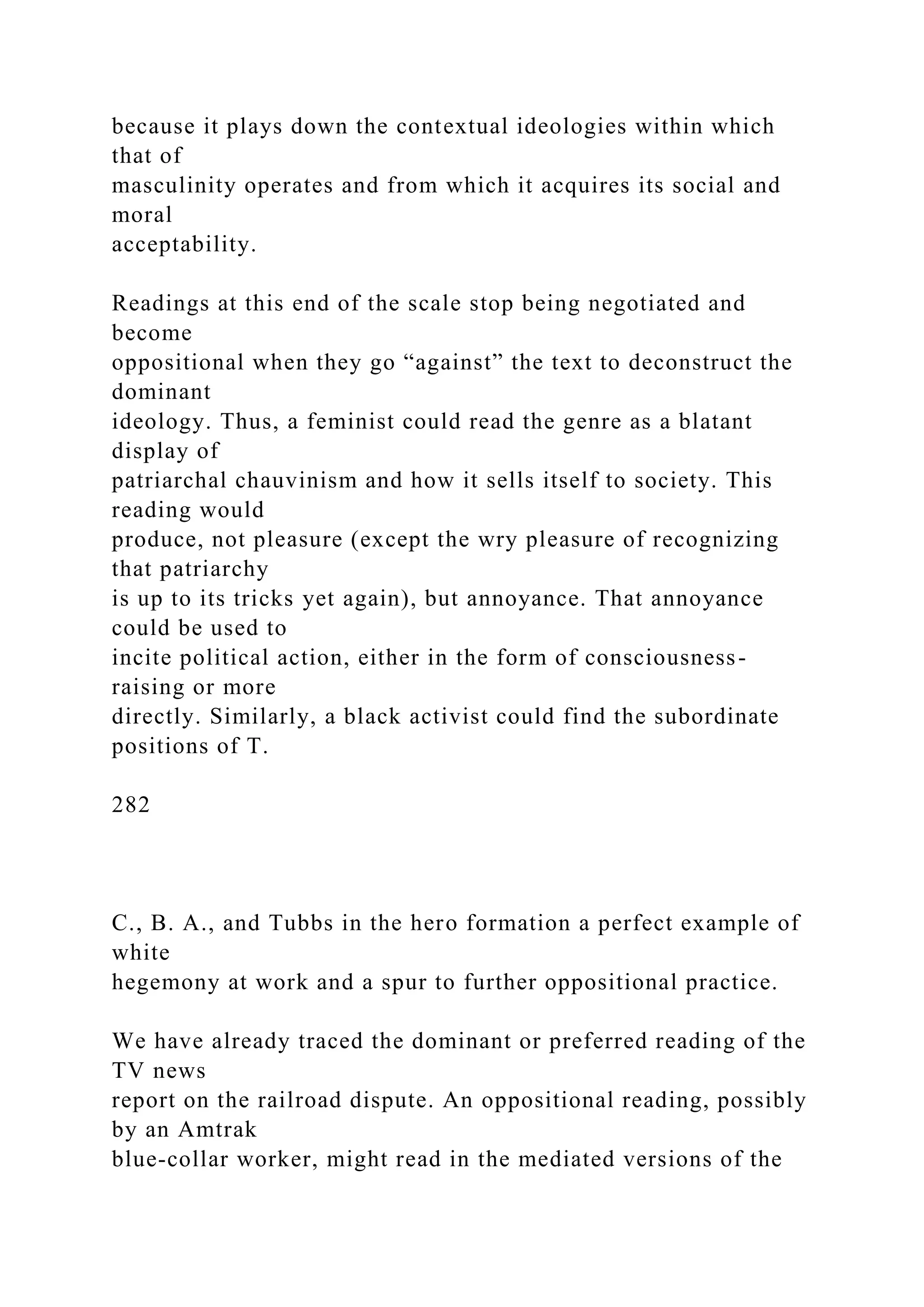
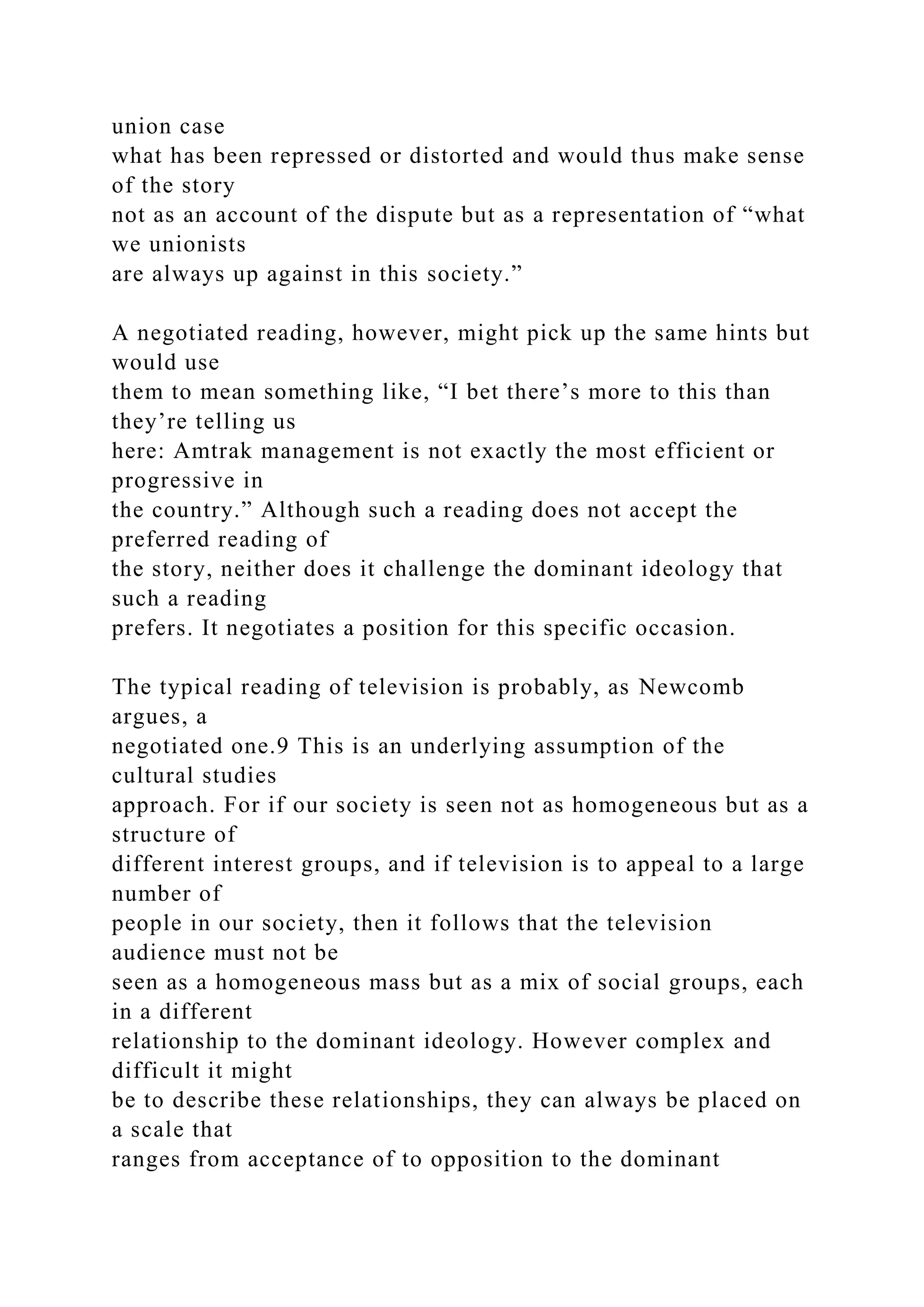
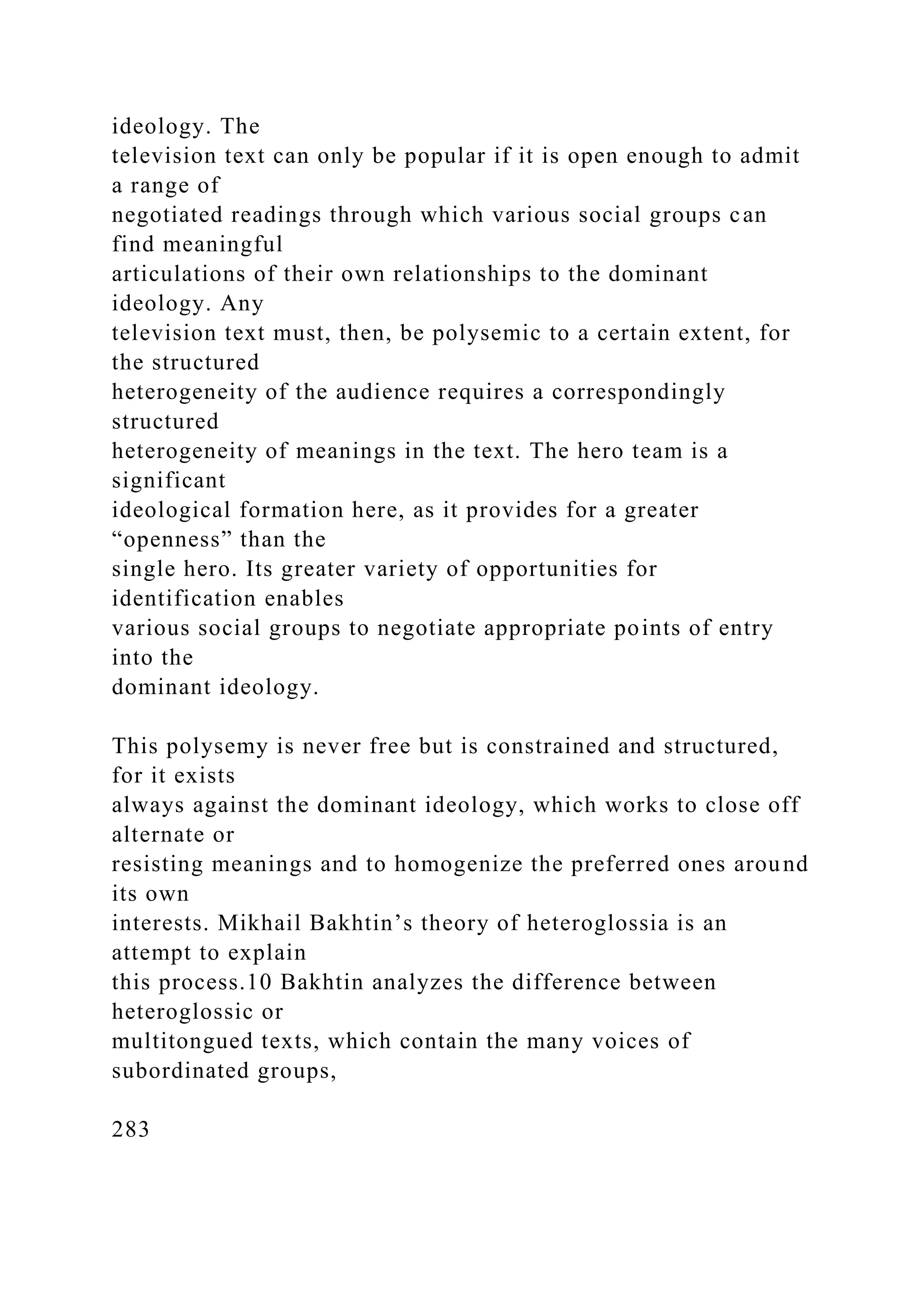
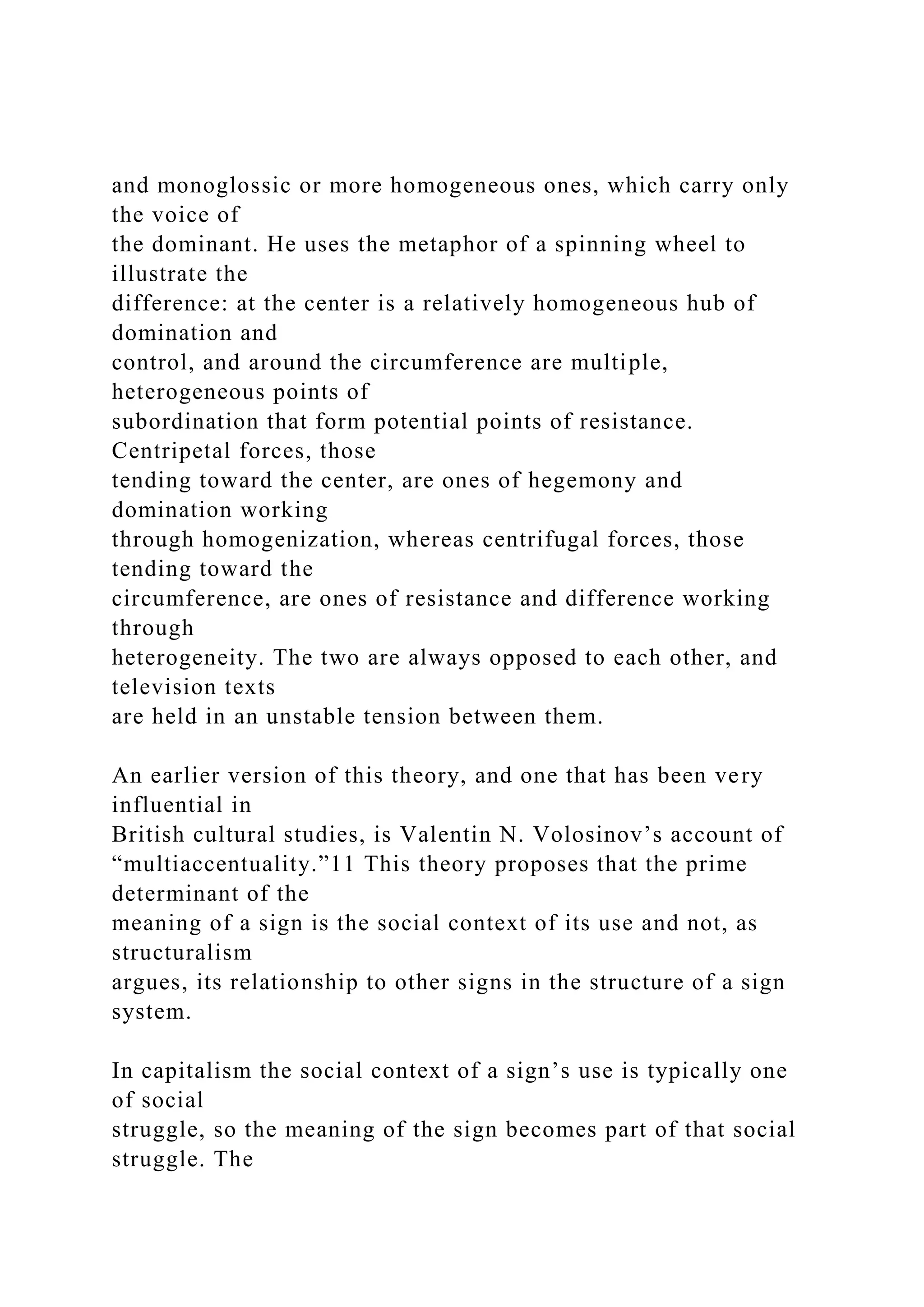
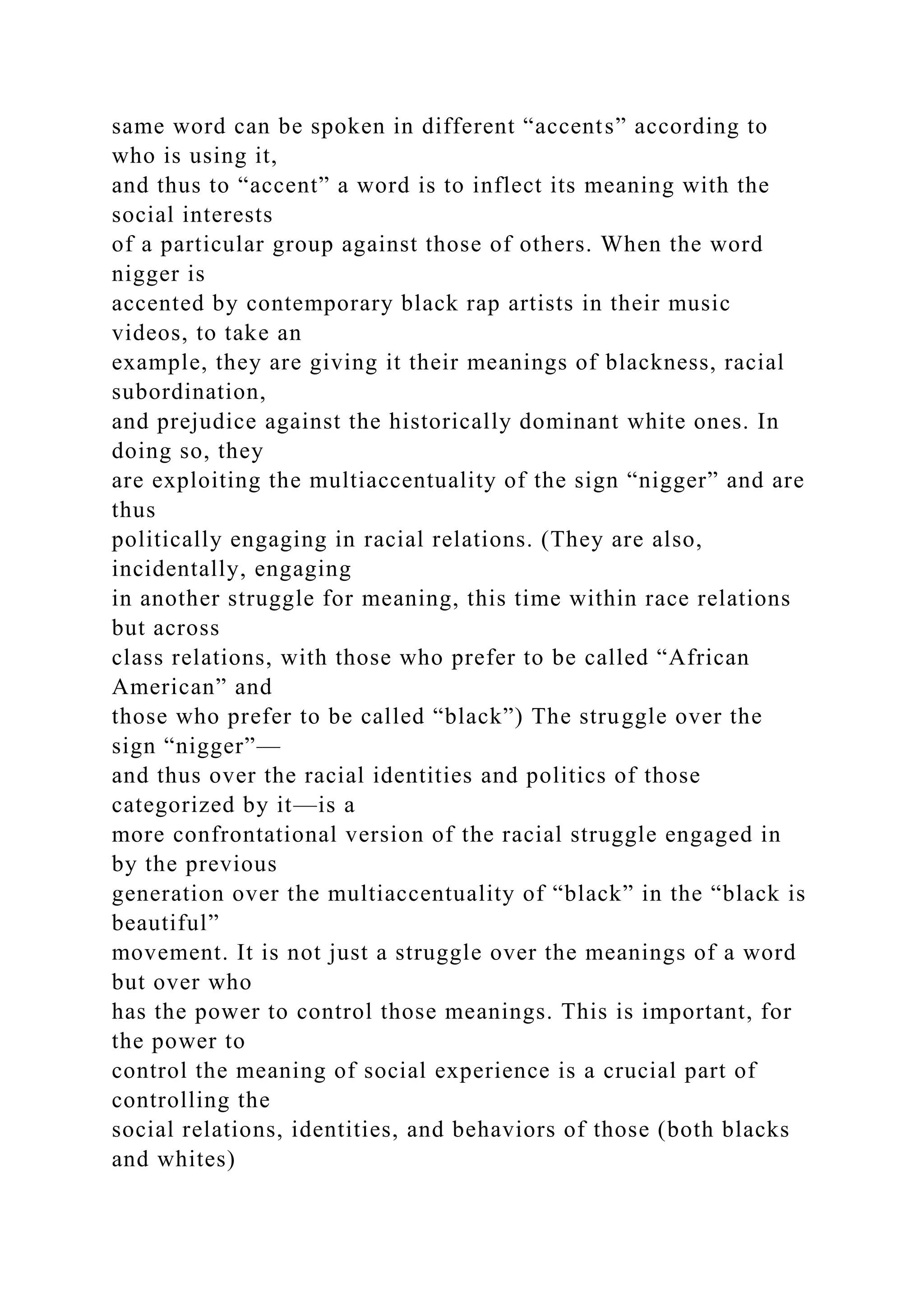
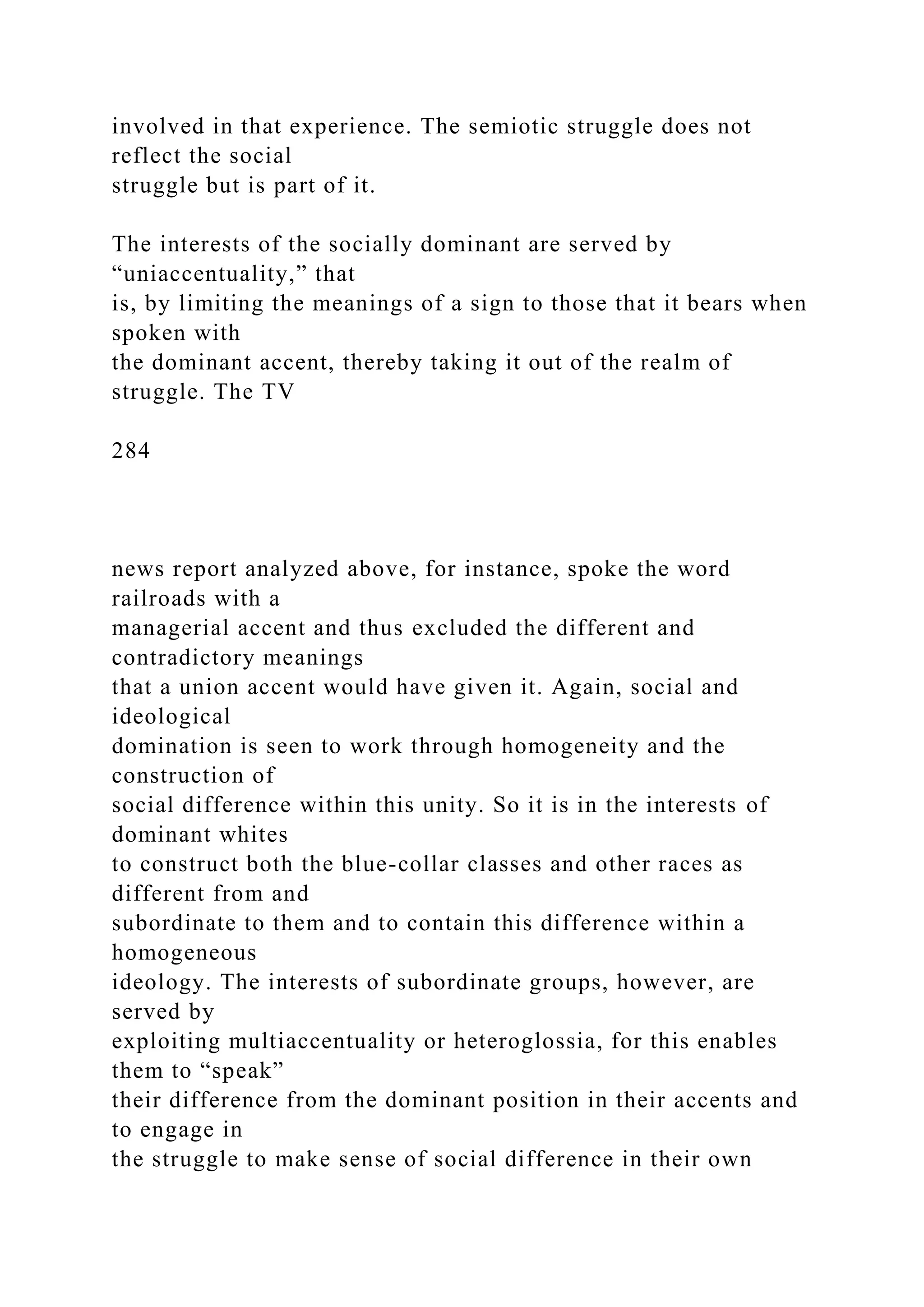
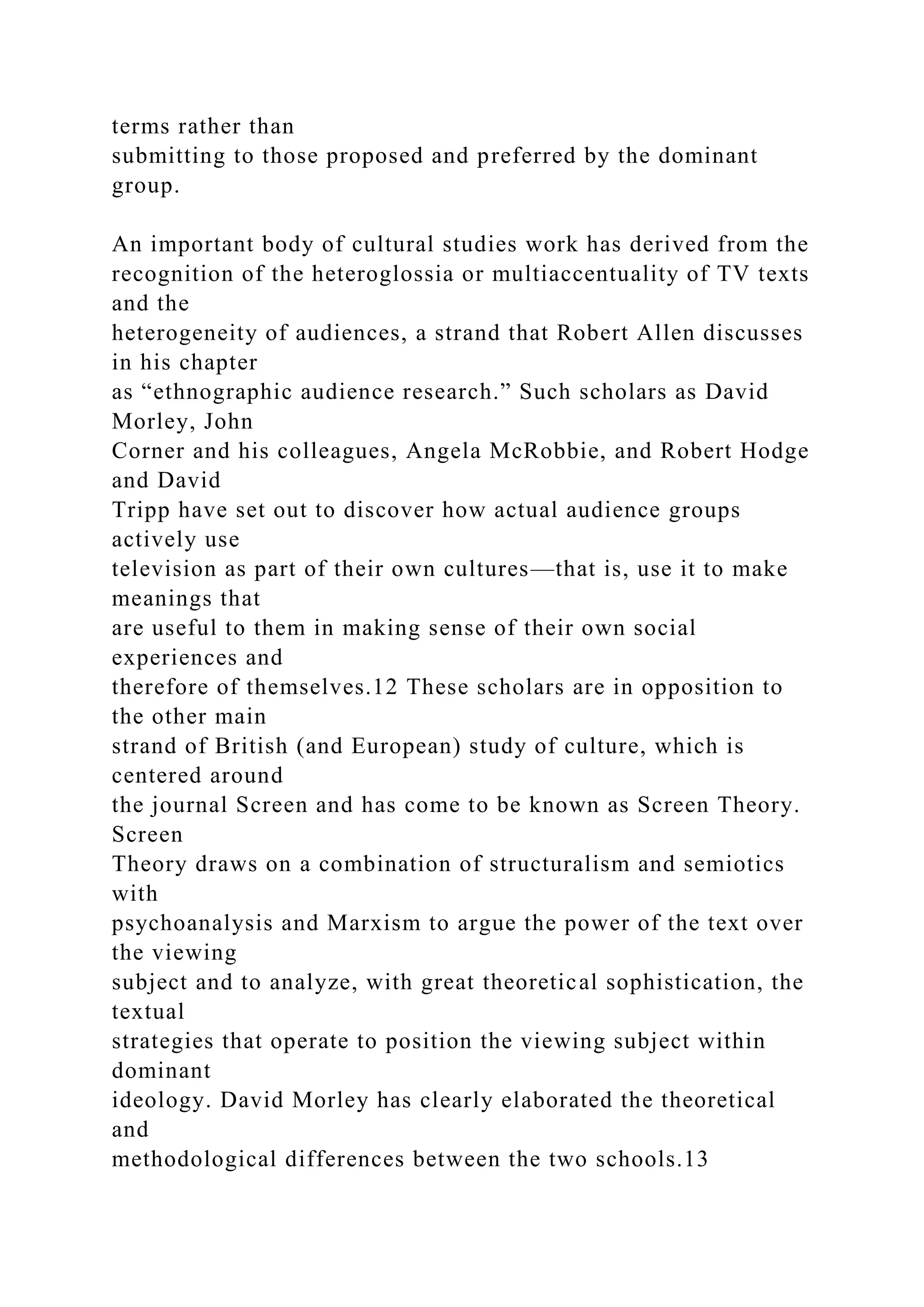
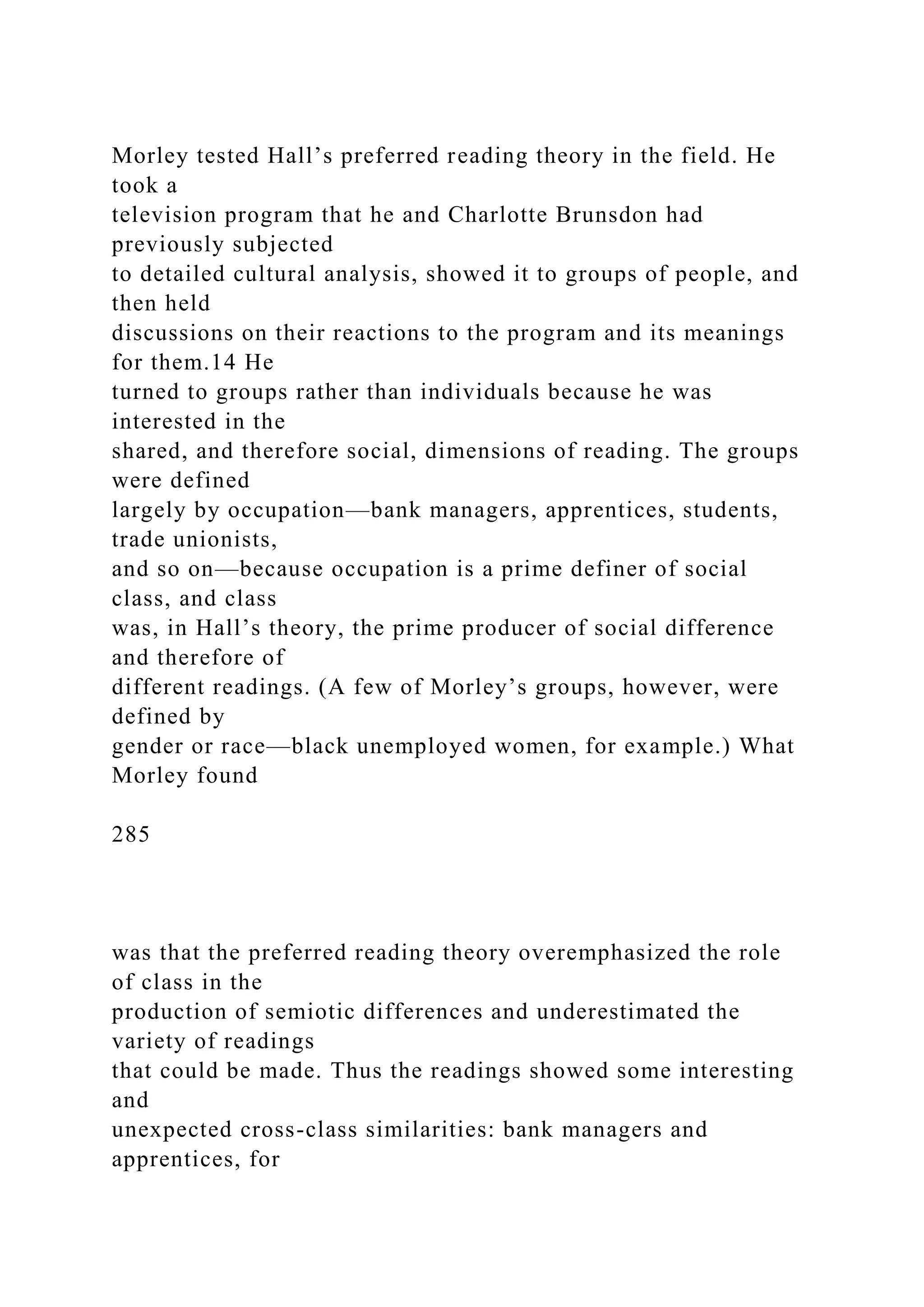
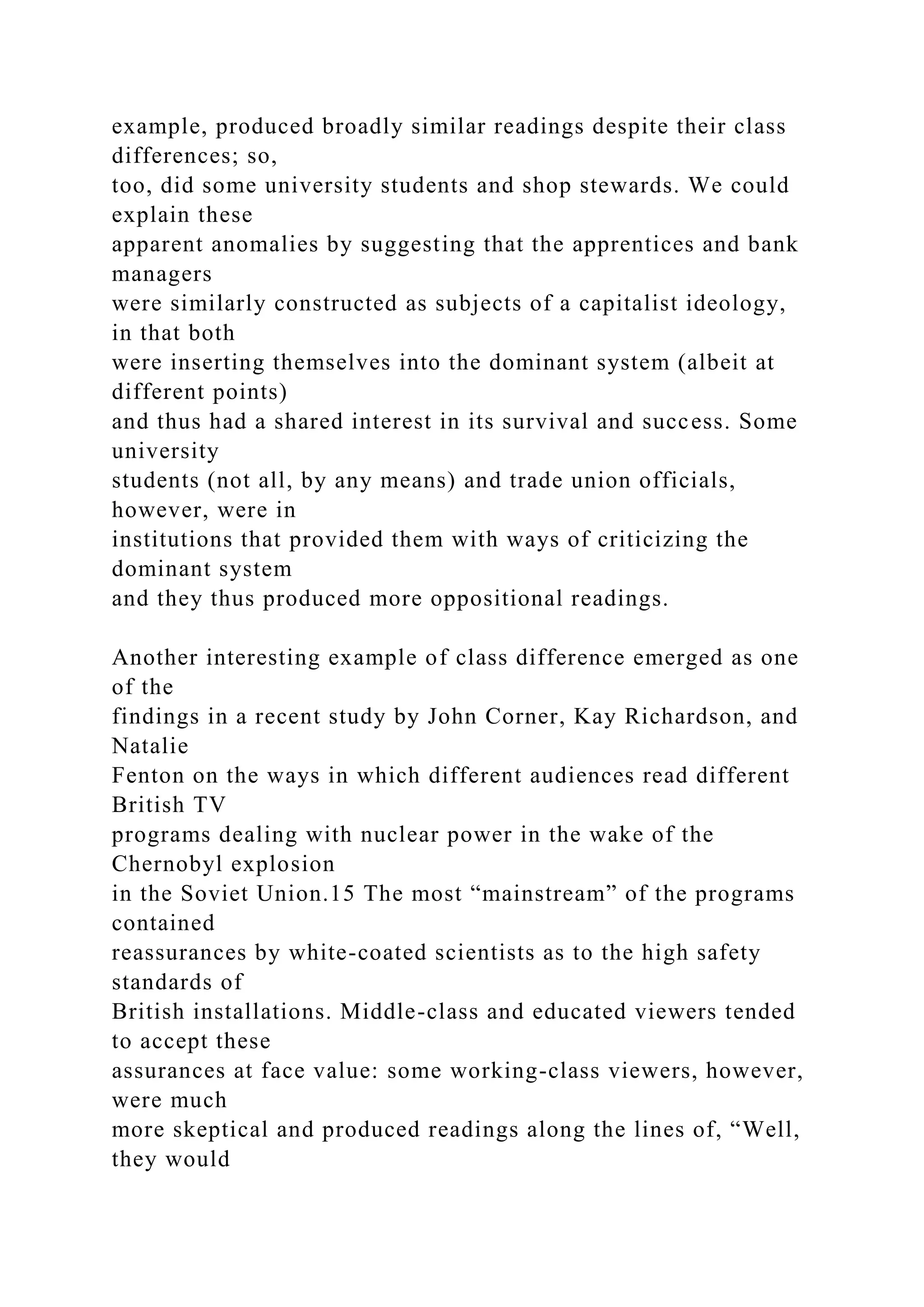
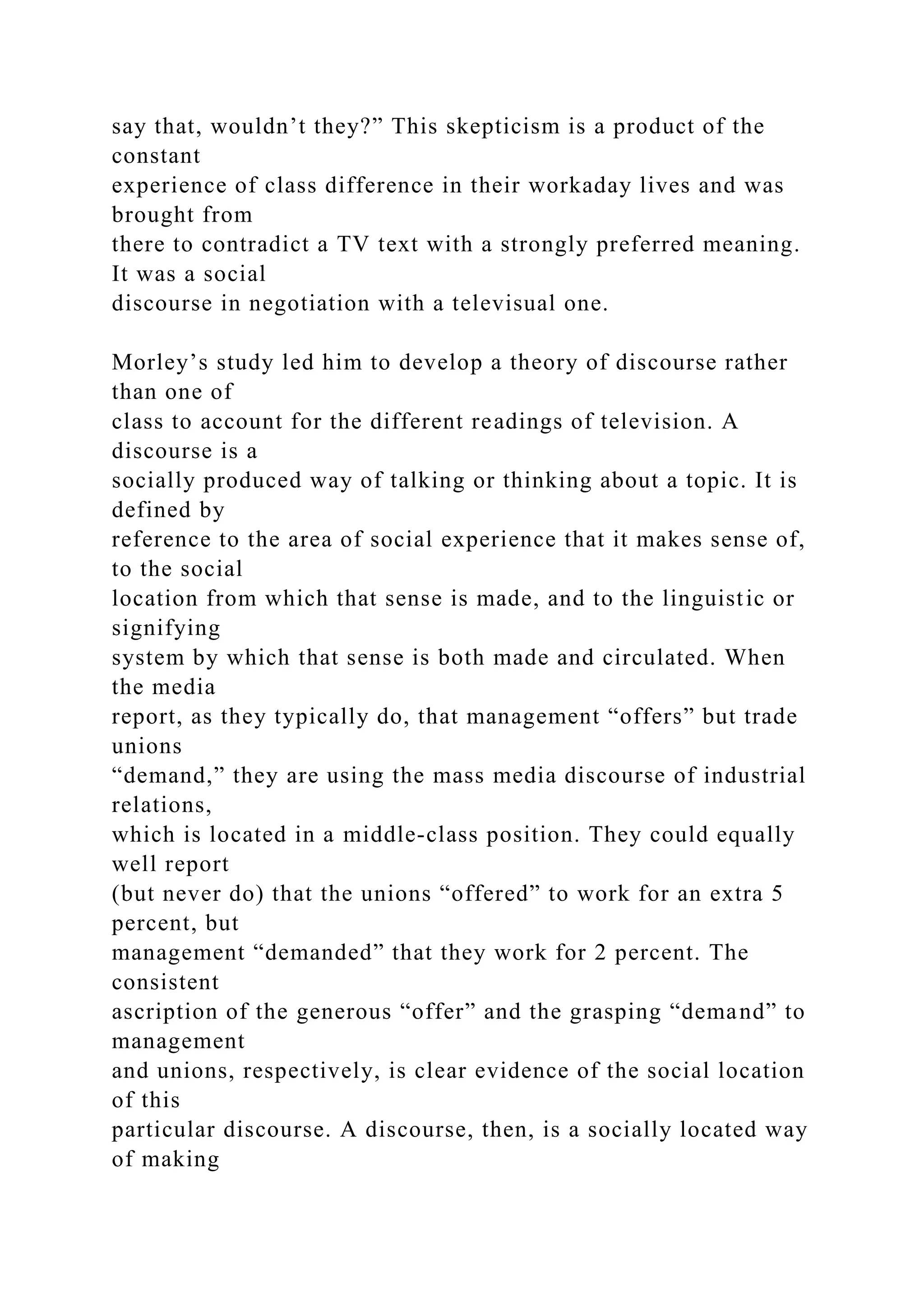
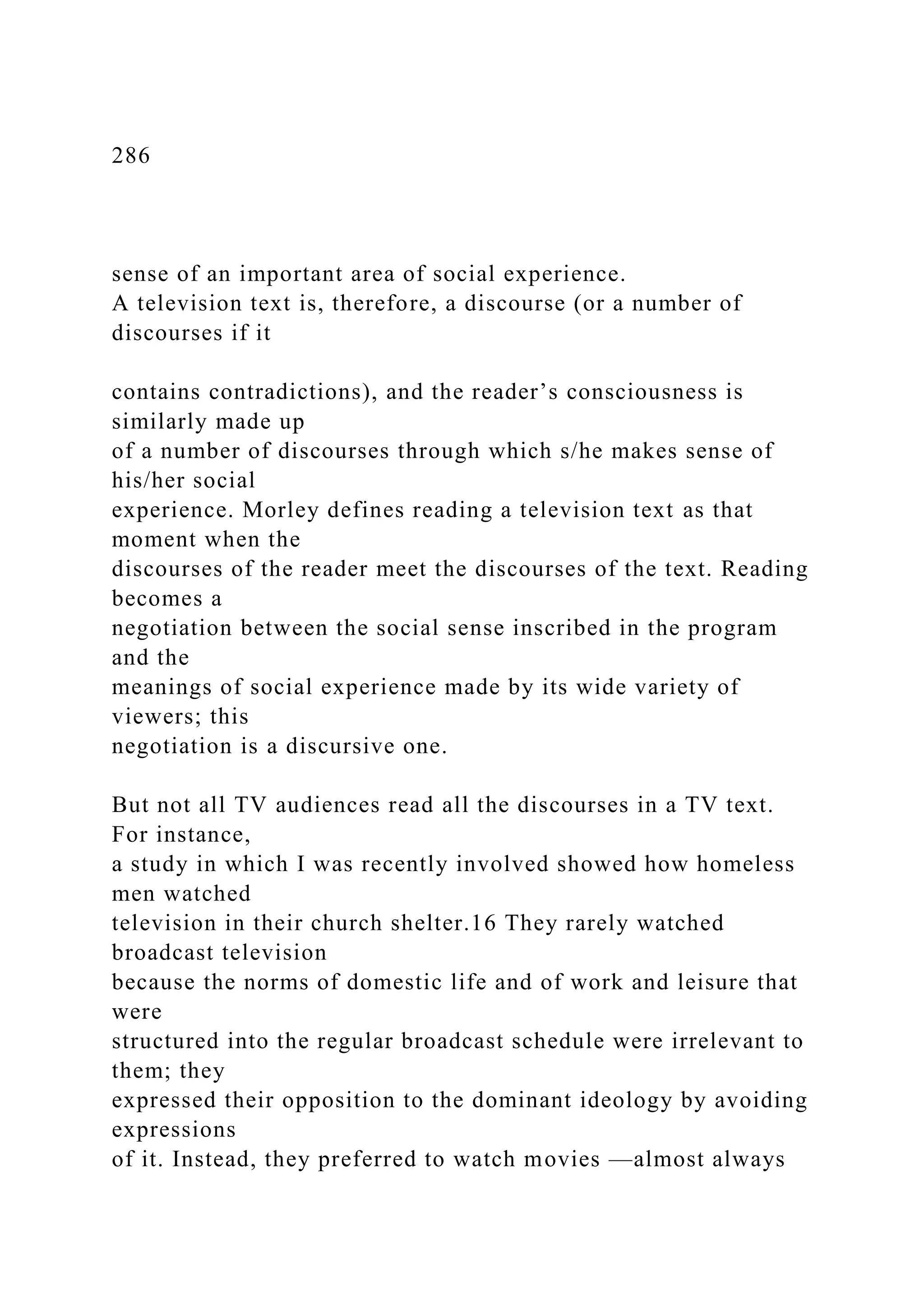
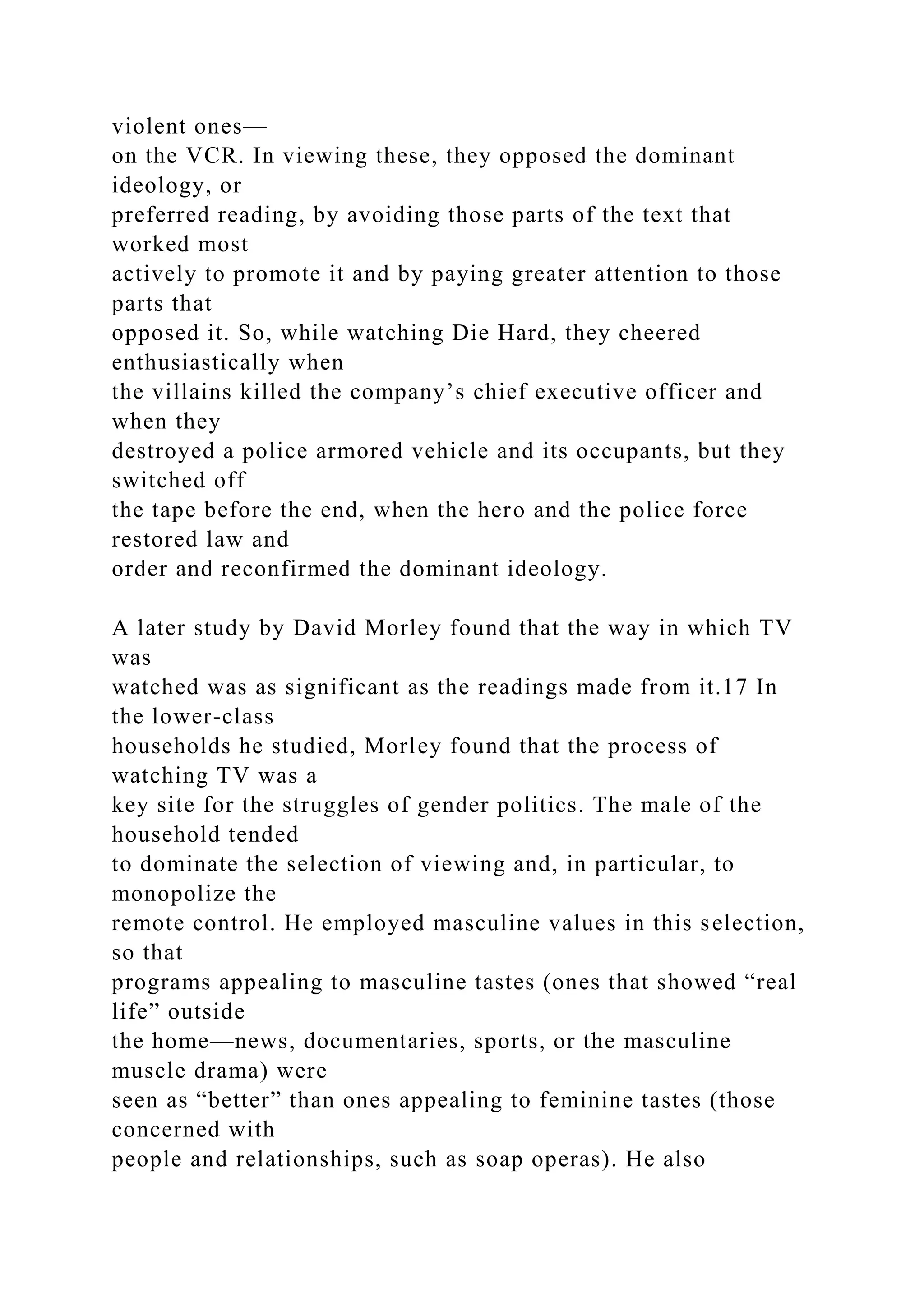
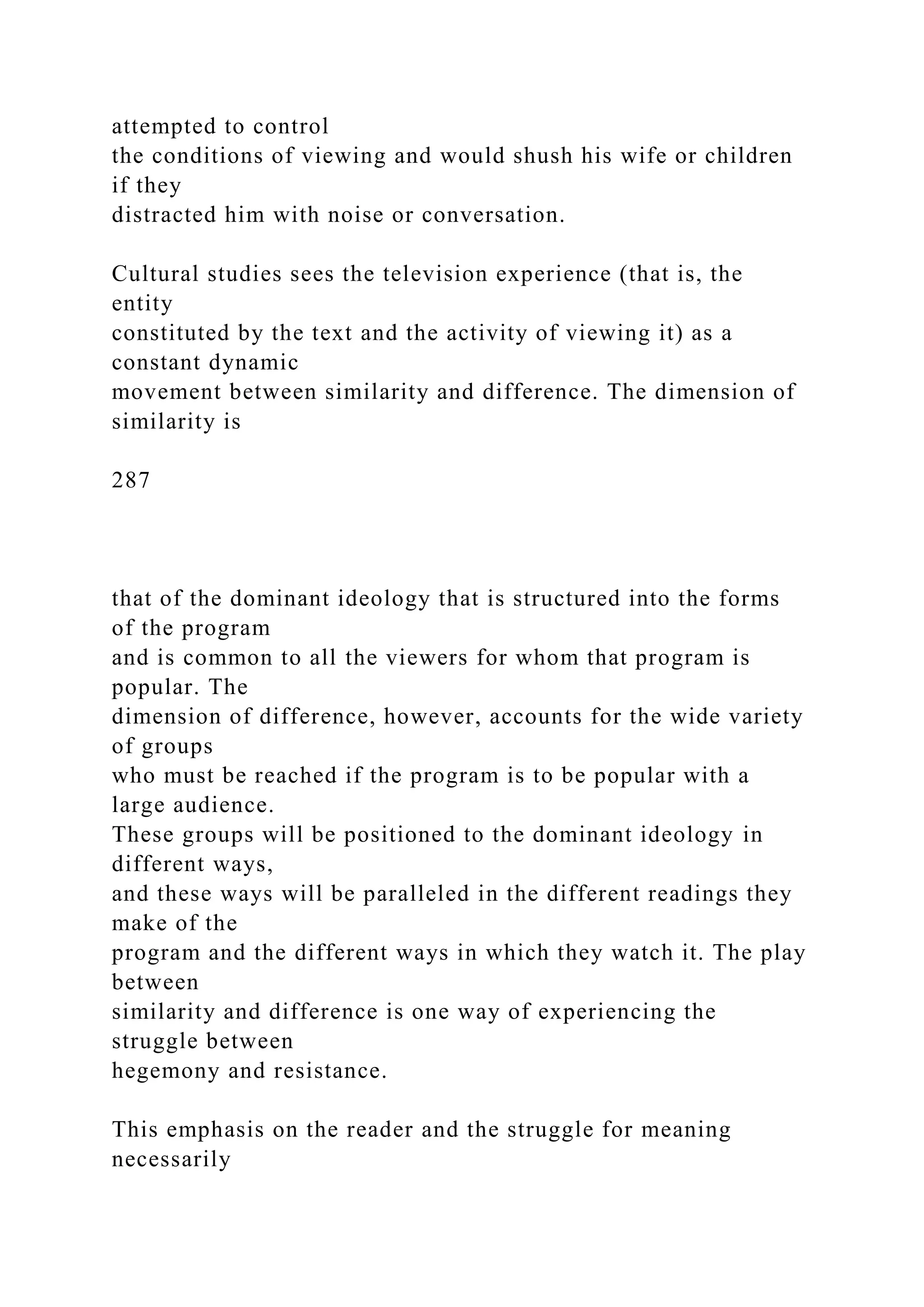
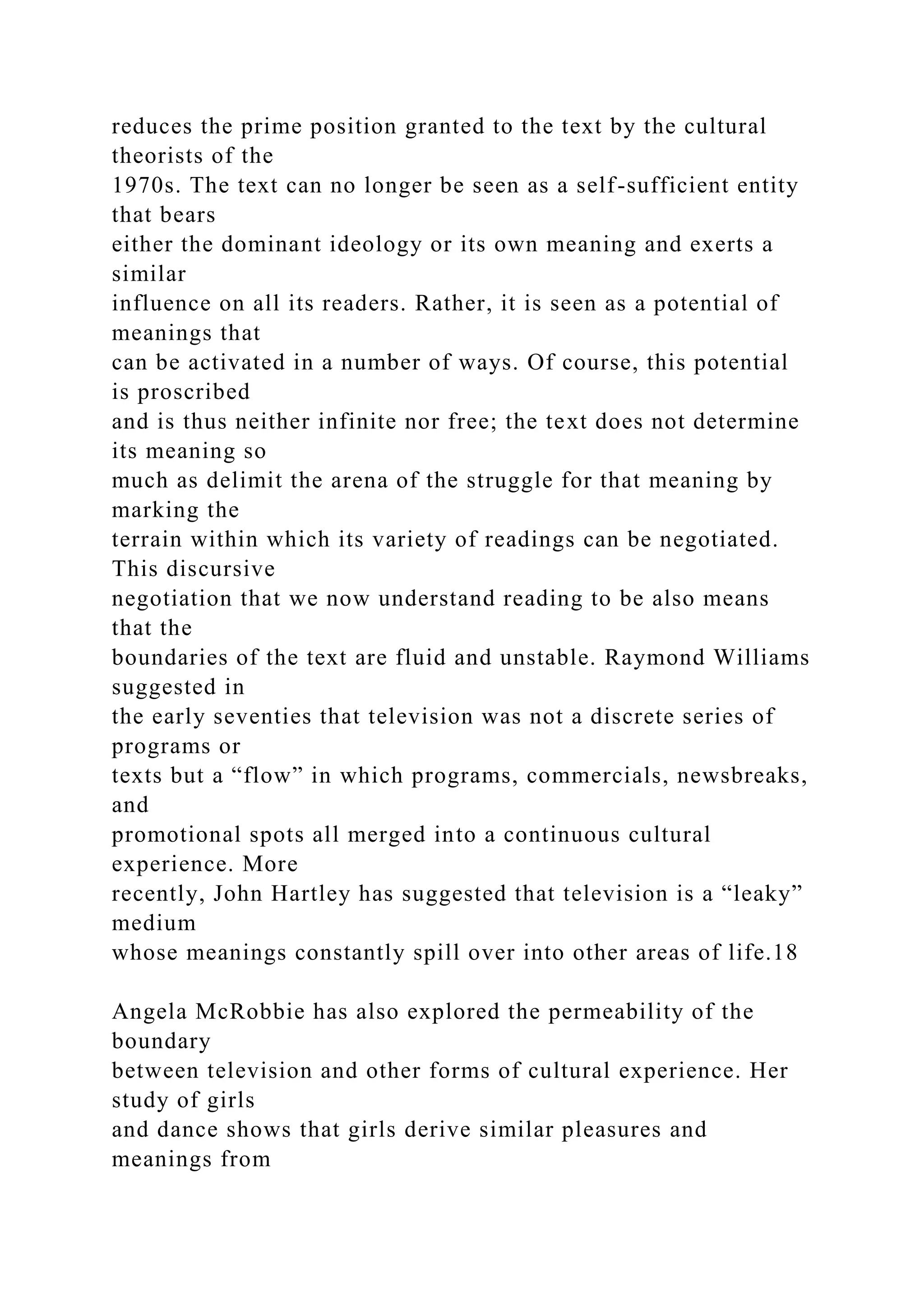
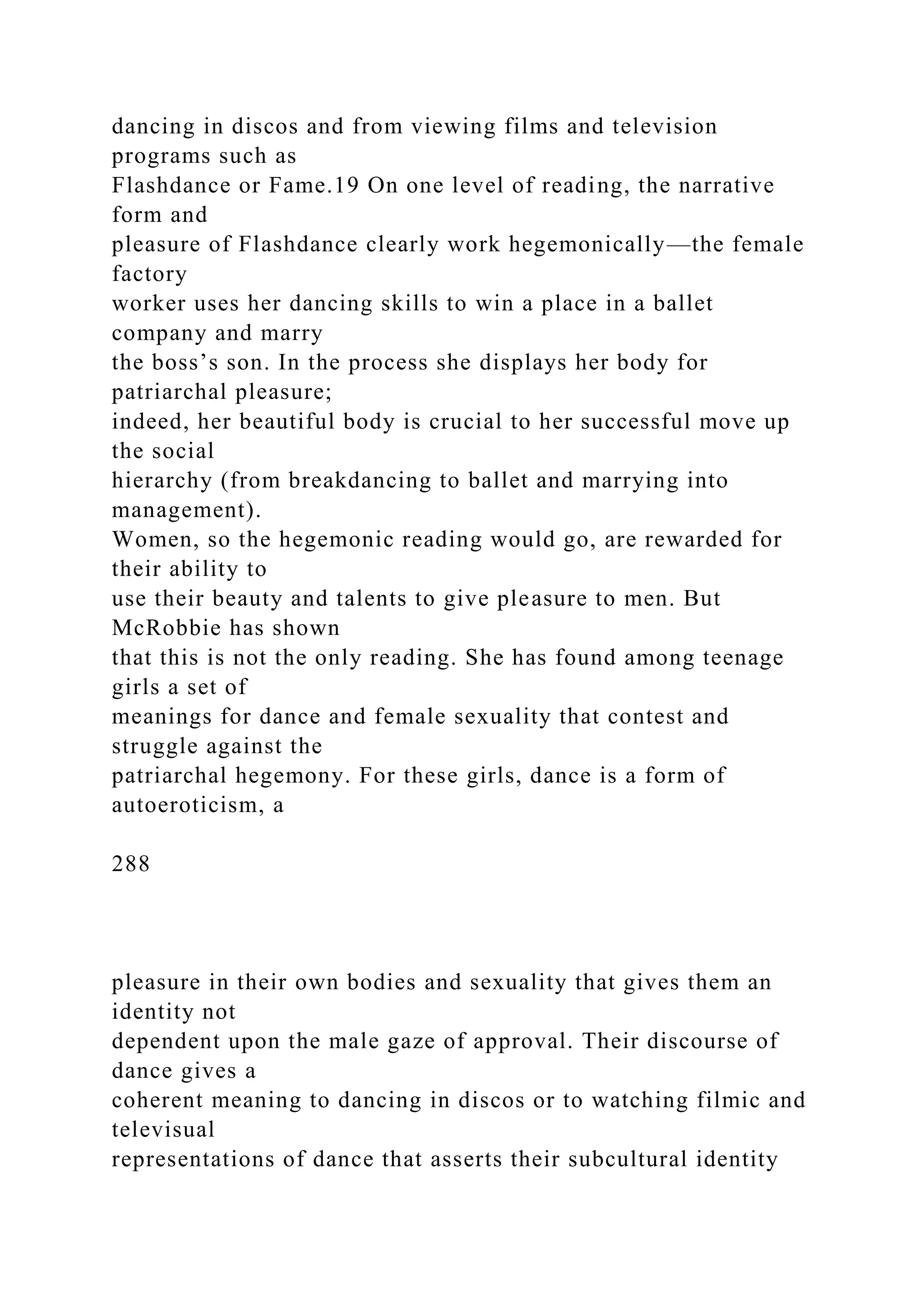
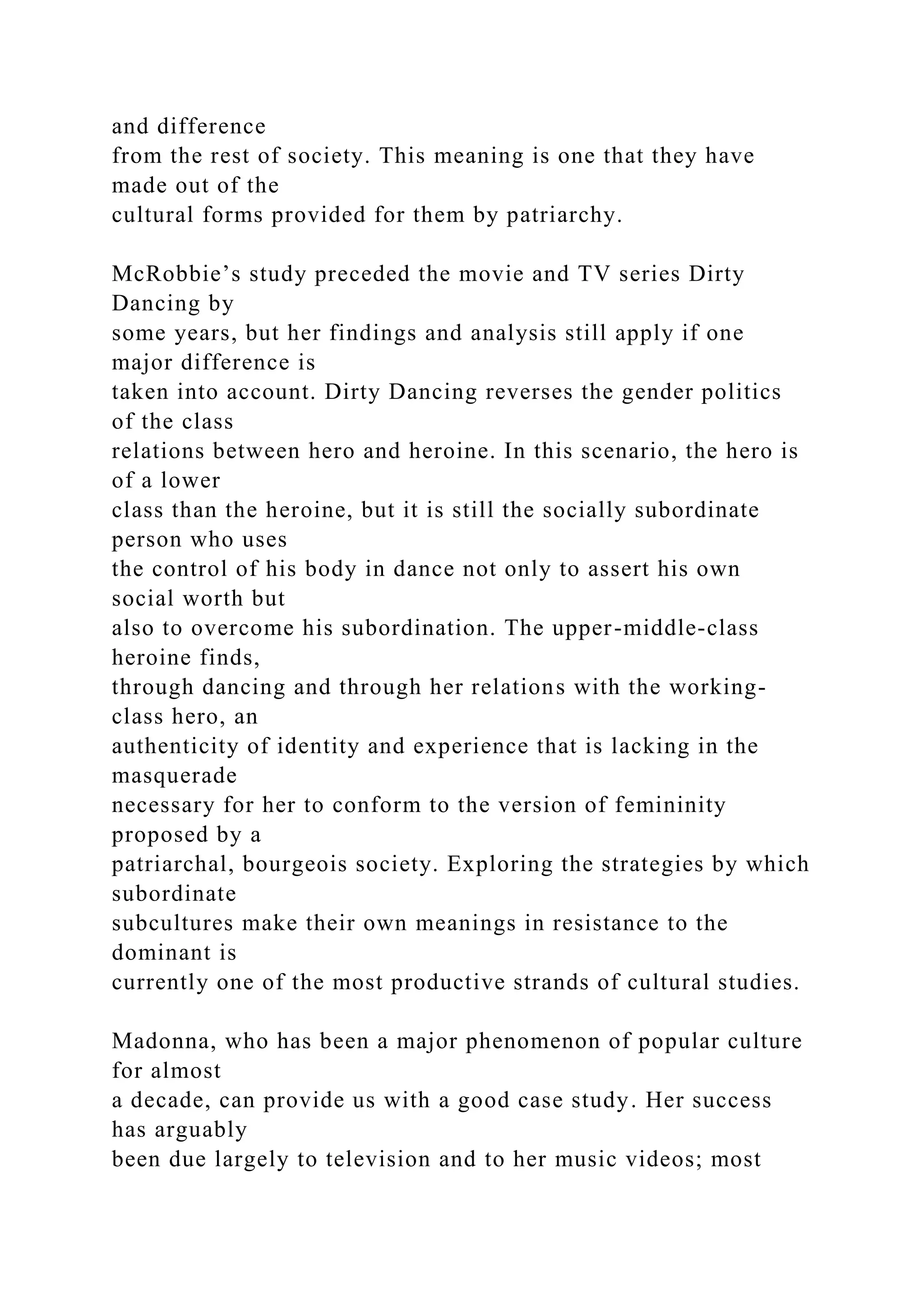
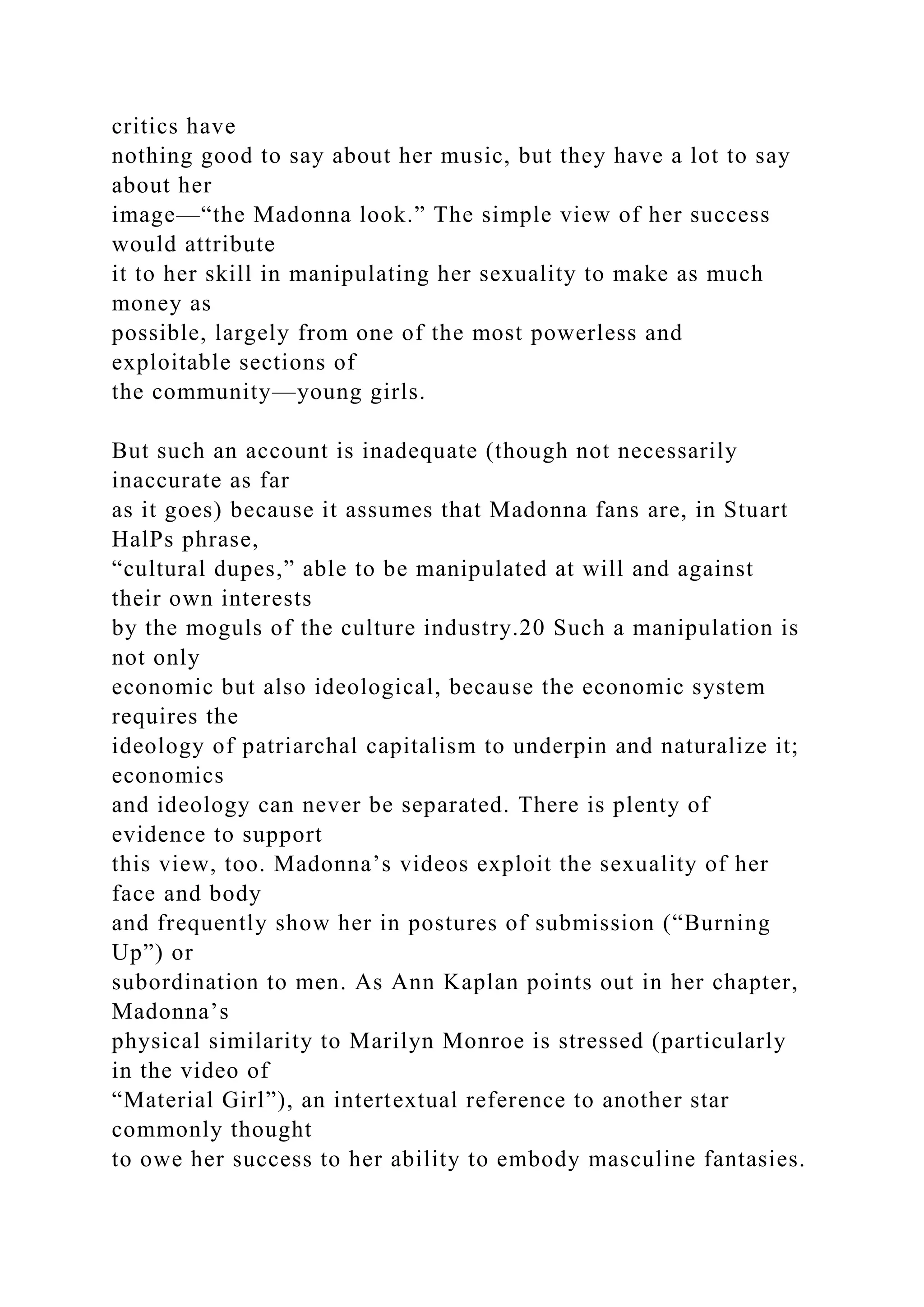
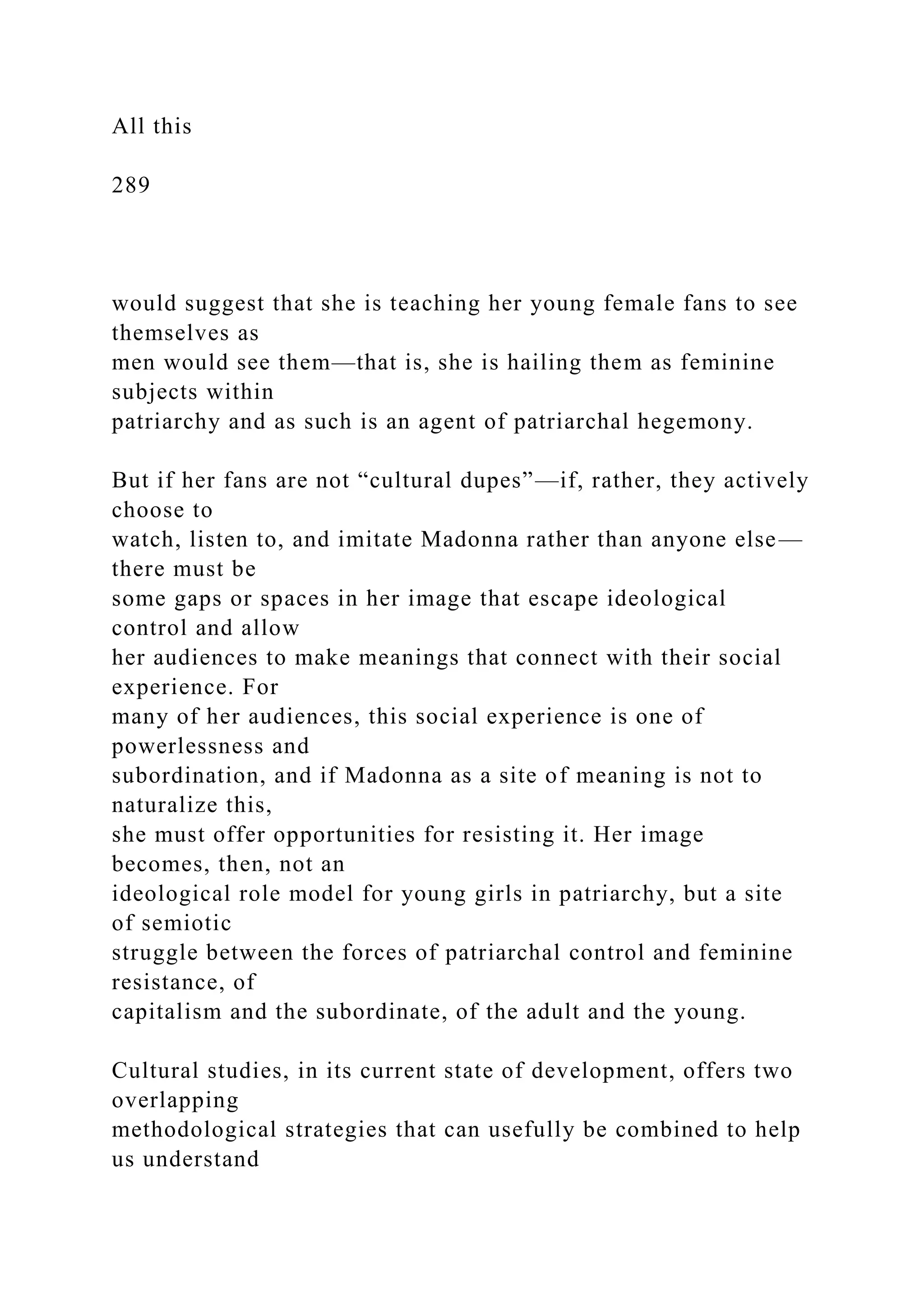
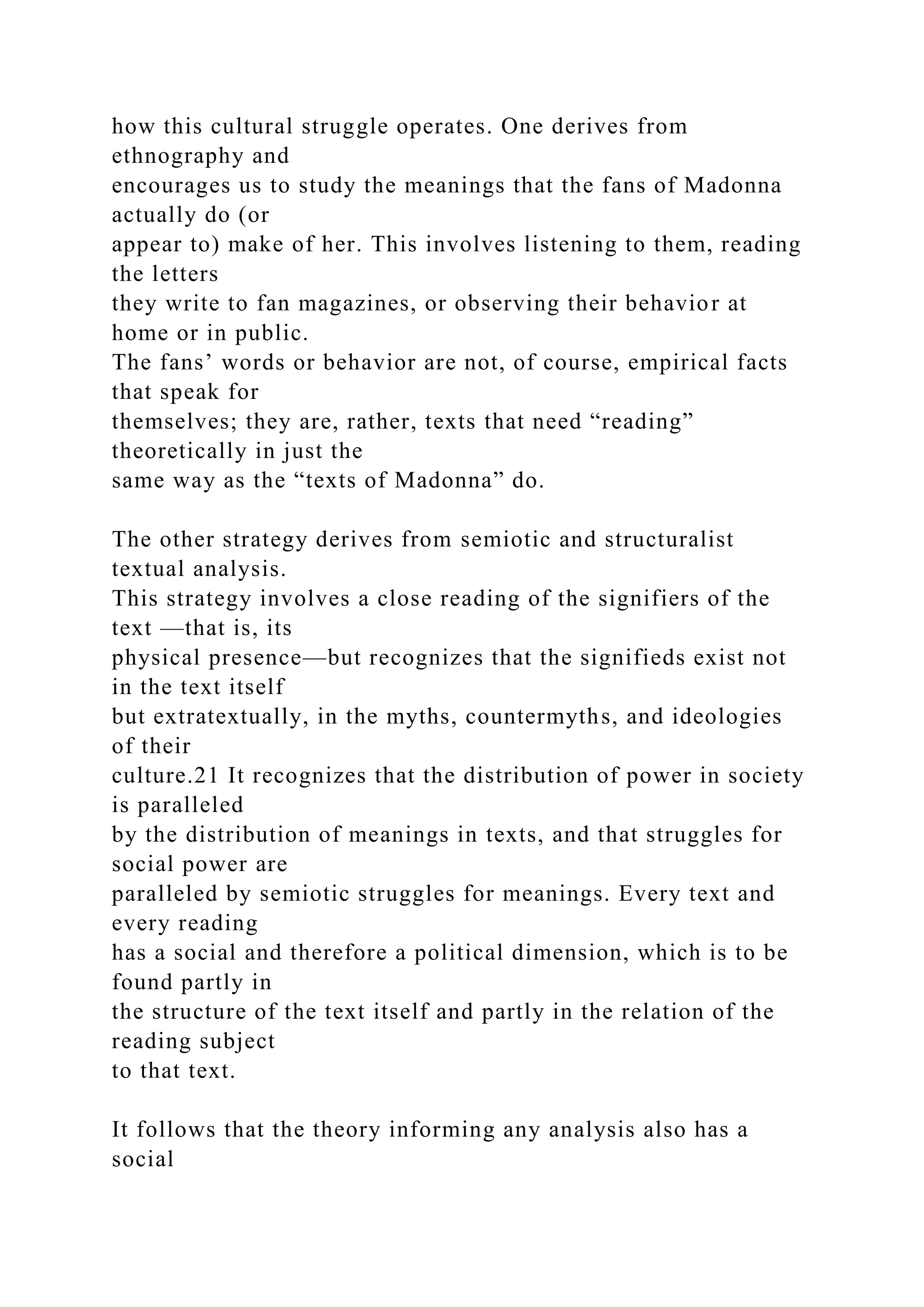
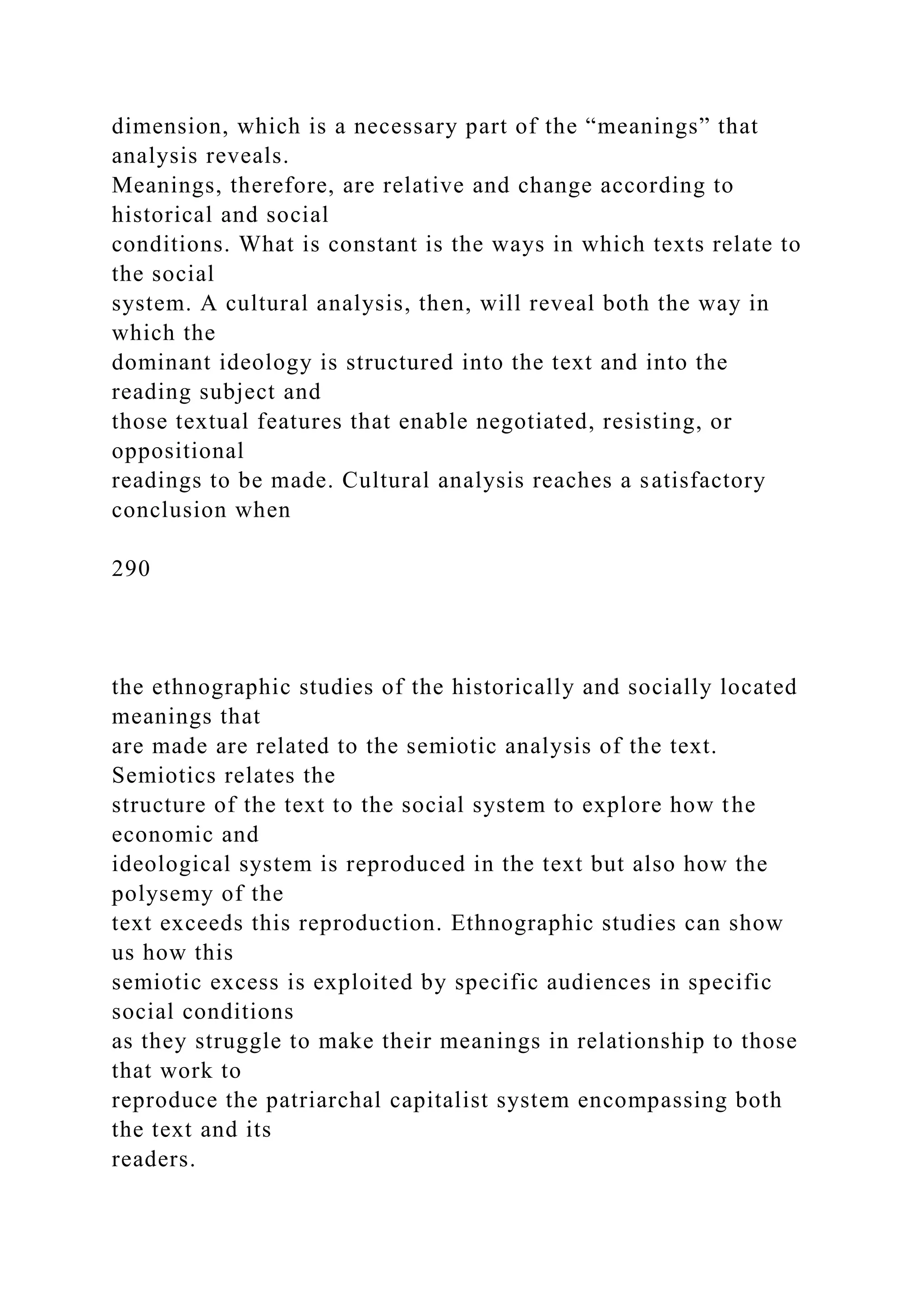
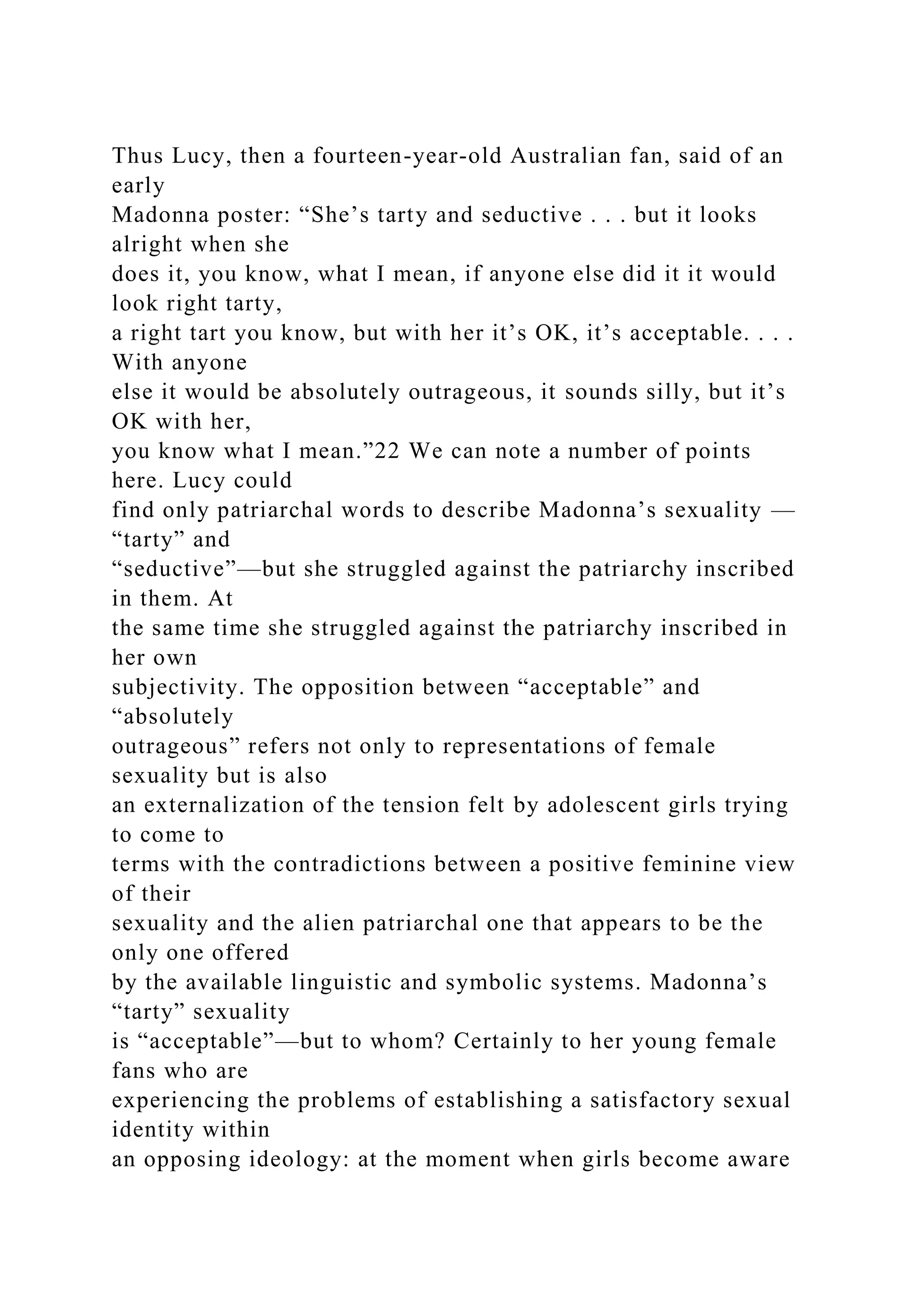
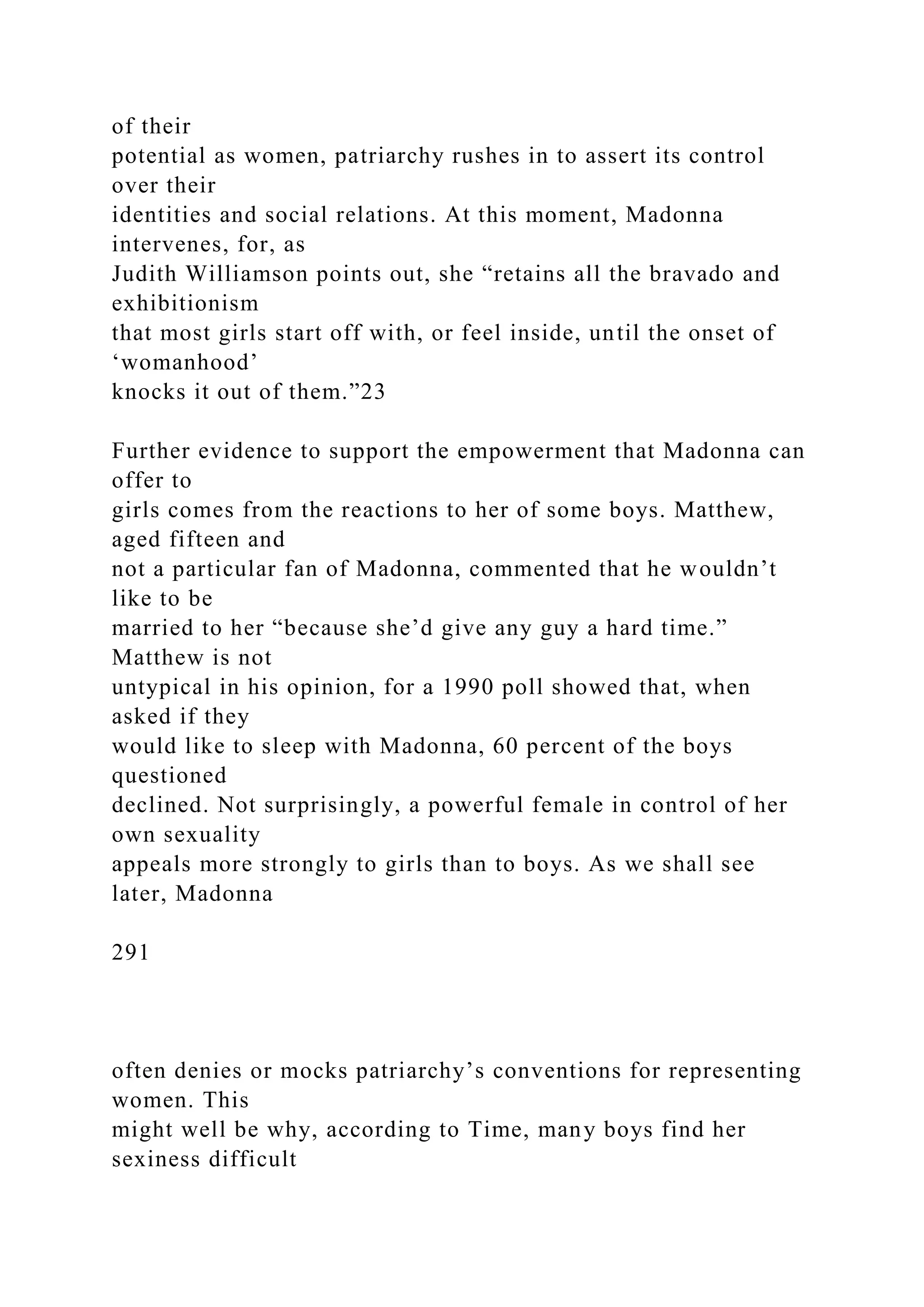
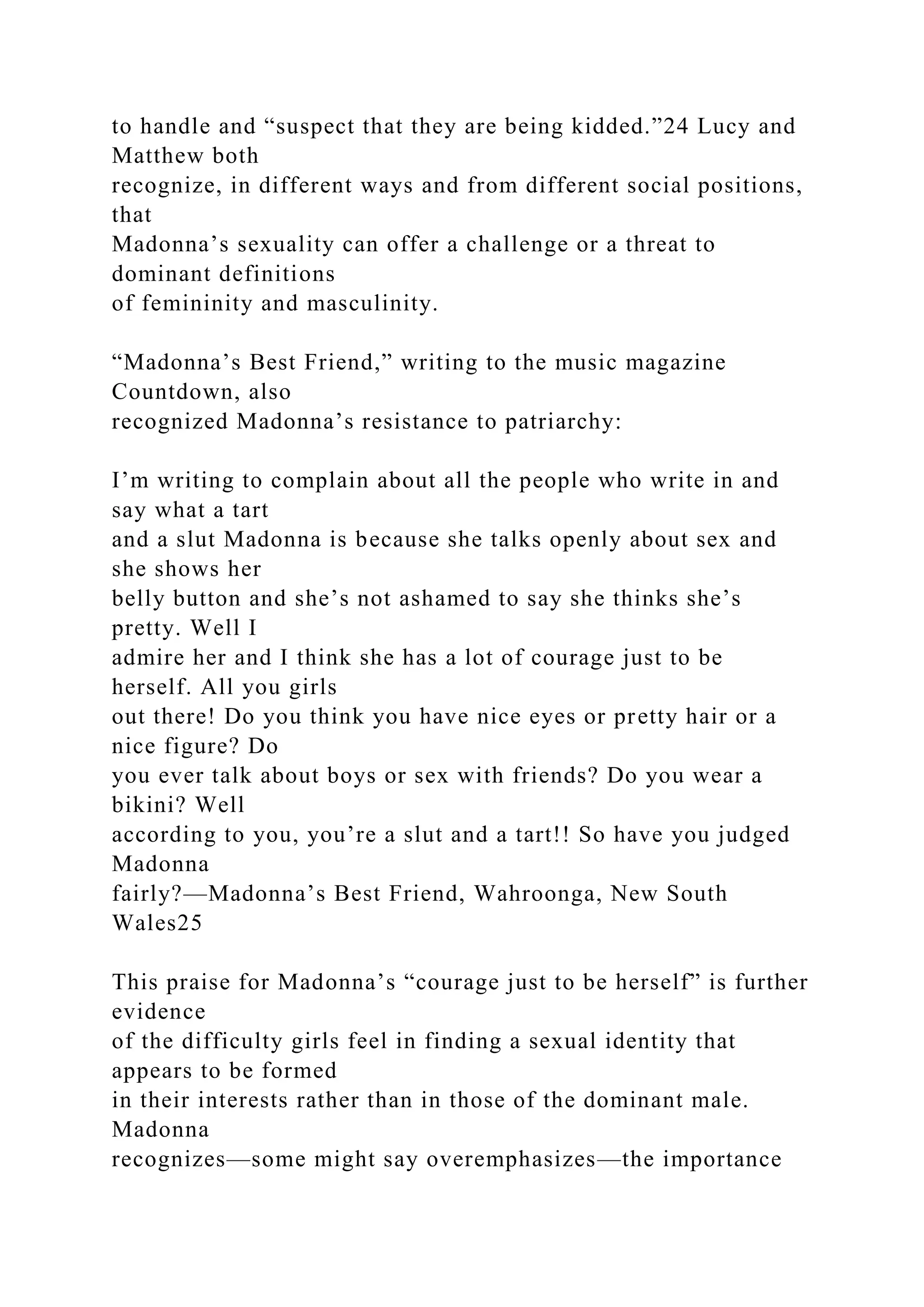
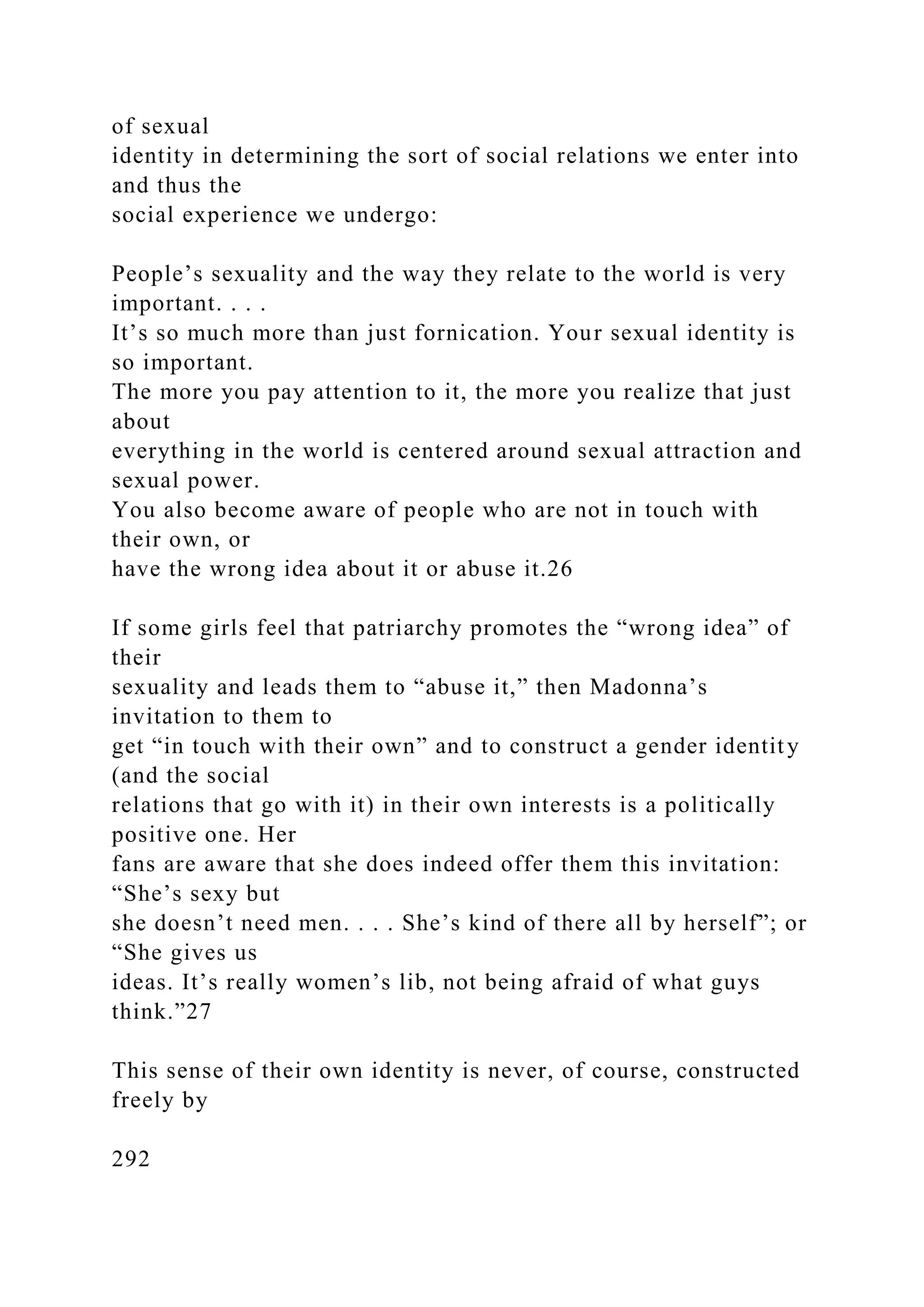
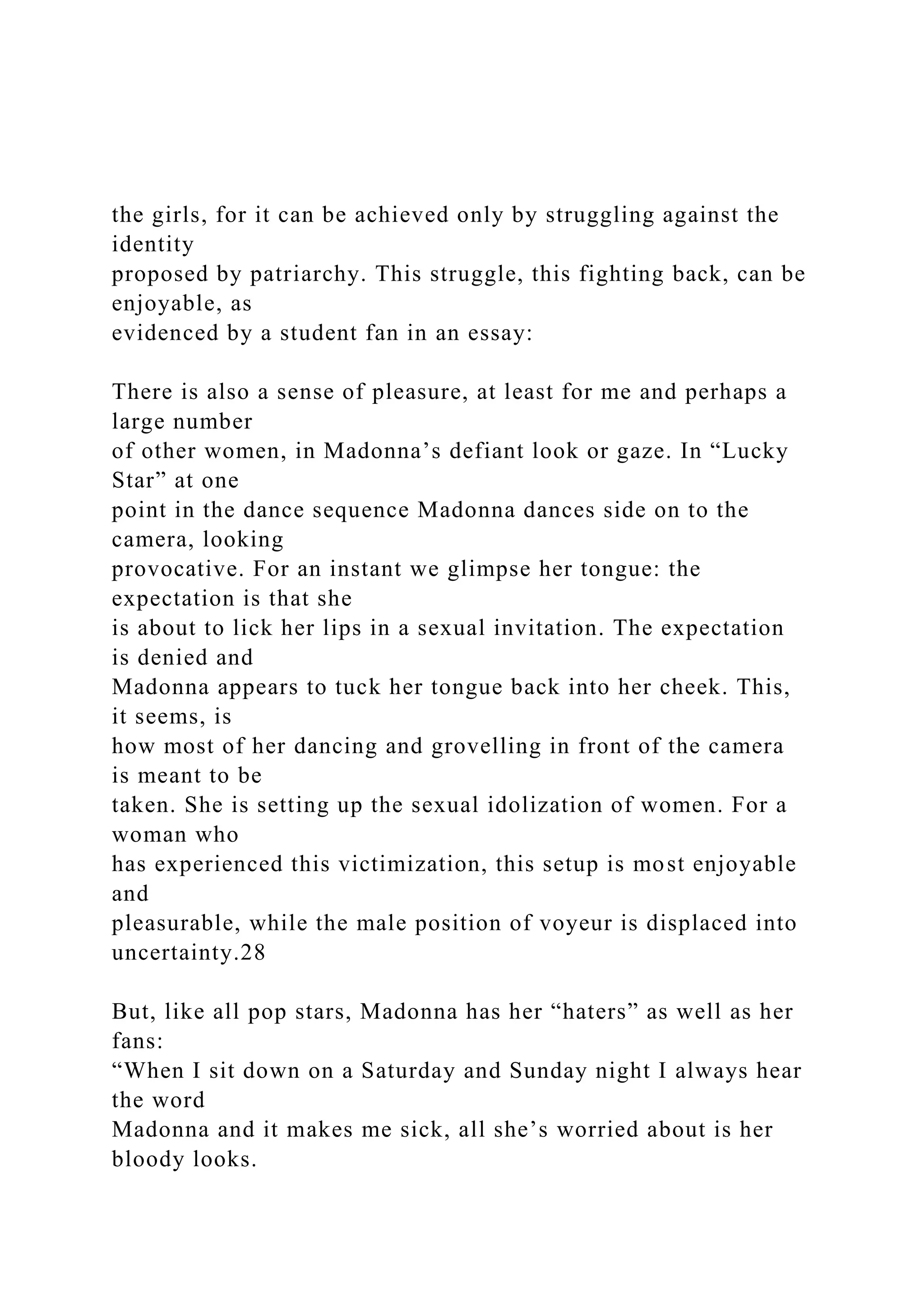
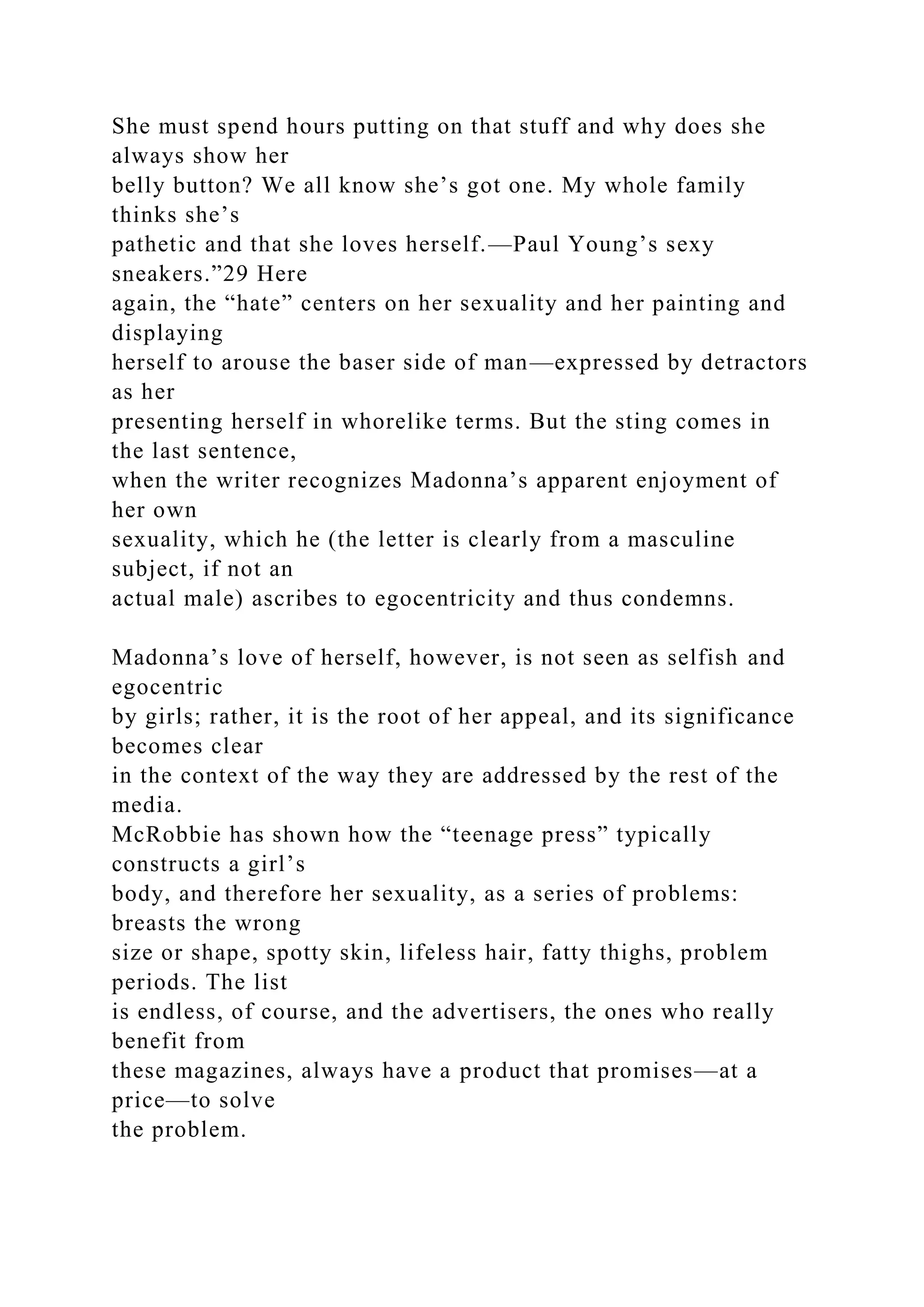
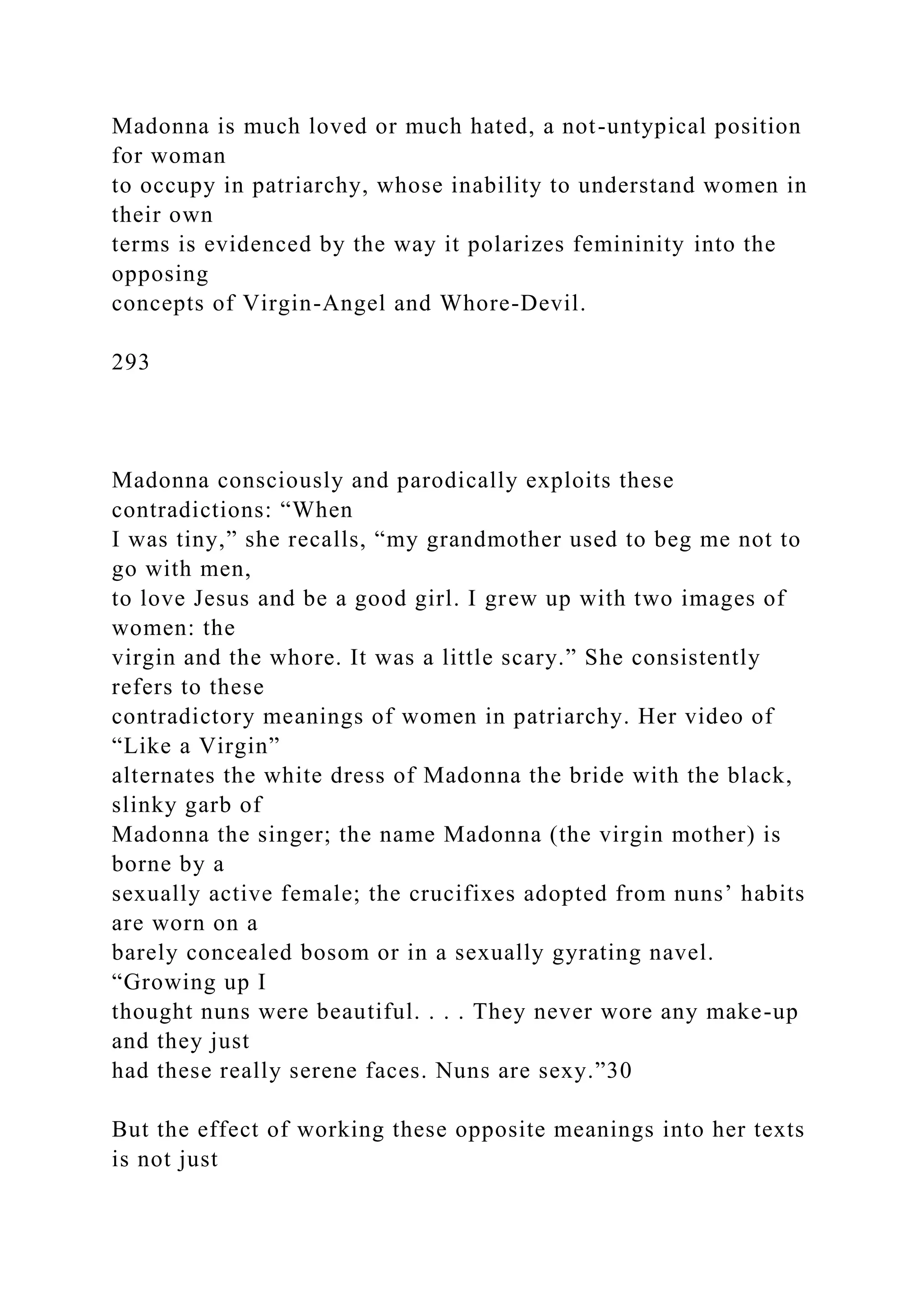
![to call attention to their role in male hegemony: woman may
either be
worshiped and adored by man or used and despised by him, but
she has
meaning only from a masculine subject position. Rather,
Madonna calls into
question the validity of these binary oppositions as a way of
conceptualizing
woman. Her use of religious iconography is neither religious
nor sacrilegious.
She intends to free it from this ideological opposition and to
enjoy it, use it,
for the meanings and pleasure it has for her and not for those of
the dominant
ideology and its simplistic binary thinking:
I have always carried around a few rosaries with me. One day I
decided to
wear [one] as a necklace. Everything I do is sort of tongue in
cheek. It’s a
strange blend—a beautiful sort of symbolism, the idea of
someone suffering,
which is what Jesus Christ on a crucifix stands for, and then not
taking it
seriously. Seeing it as an icon with no religiousness attached. It
isn’t
sacrilegious for me.31
The crucifix is neither religious nor sacrilegious, but beautiful:
“When I
went to Catholic schools I thought the huge crucifixes nuns
wore were really
beautiful.” In the same way, her adolescent fans find in
Madonna meanings of
femininity that have broken free from the ideological binary
opposition of](https://image.slidesharecdn.com/channelsofdiscoursereassembled2channelsof-221018173716-6fc0655a/75/Channels-of-Discourse-Reassembled2Channels-of-docx-659-2048.jpg)
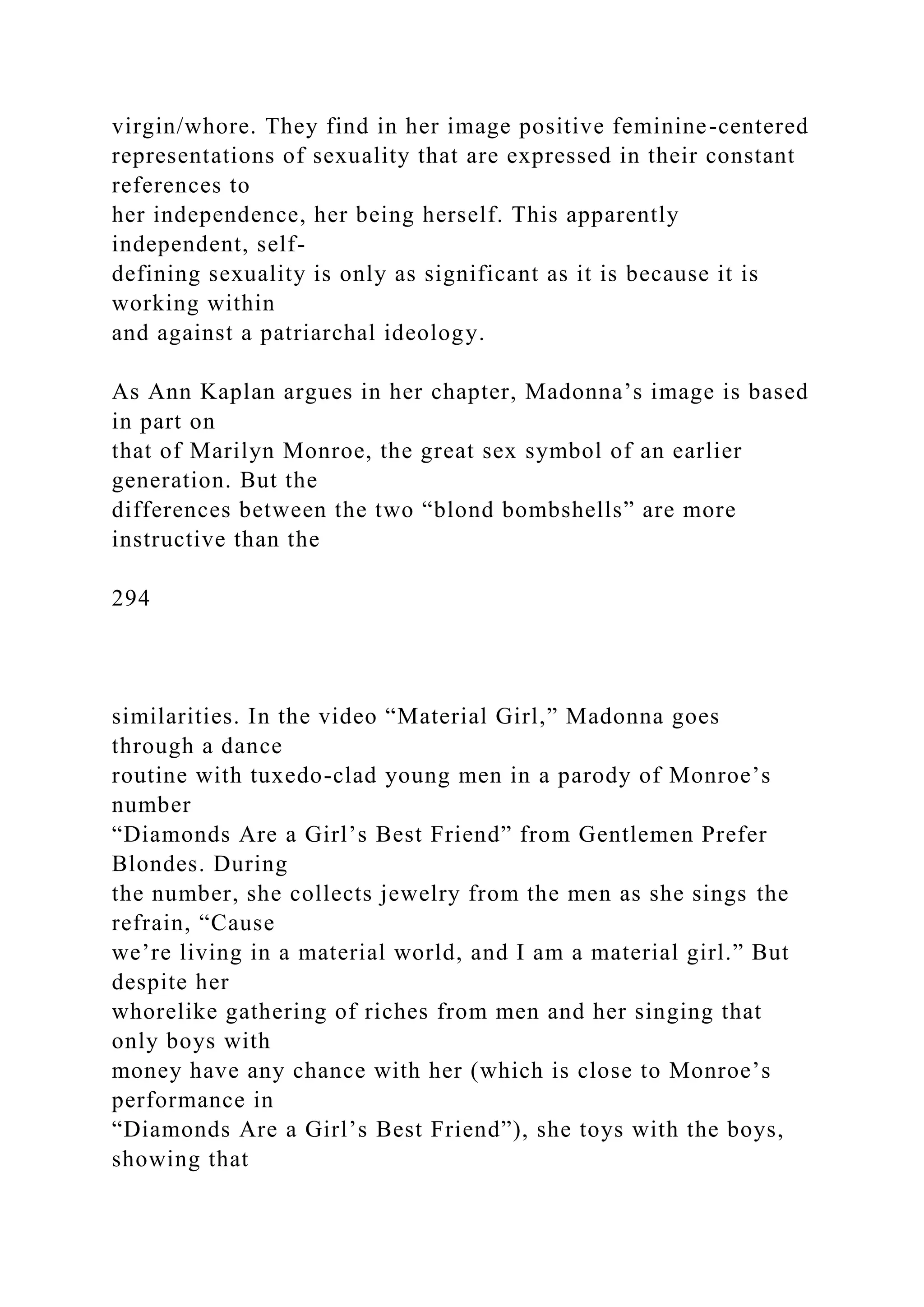

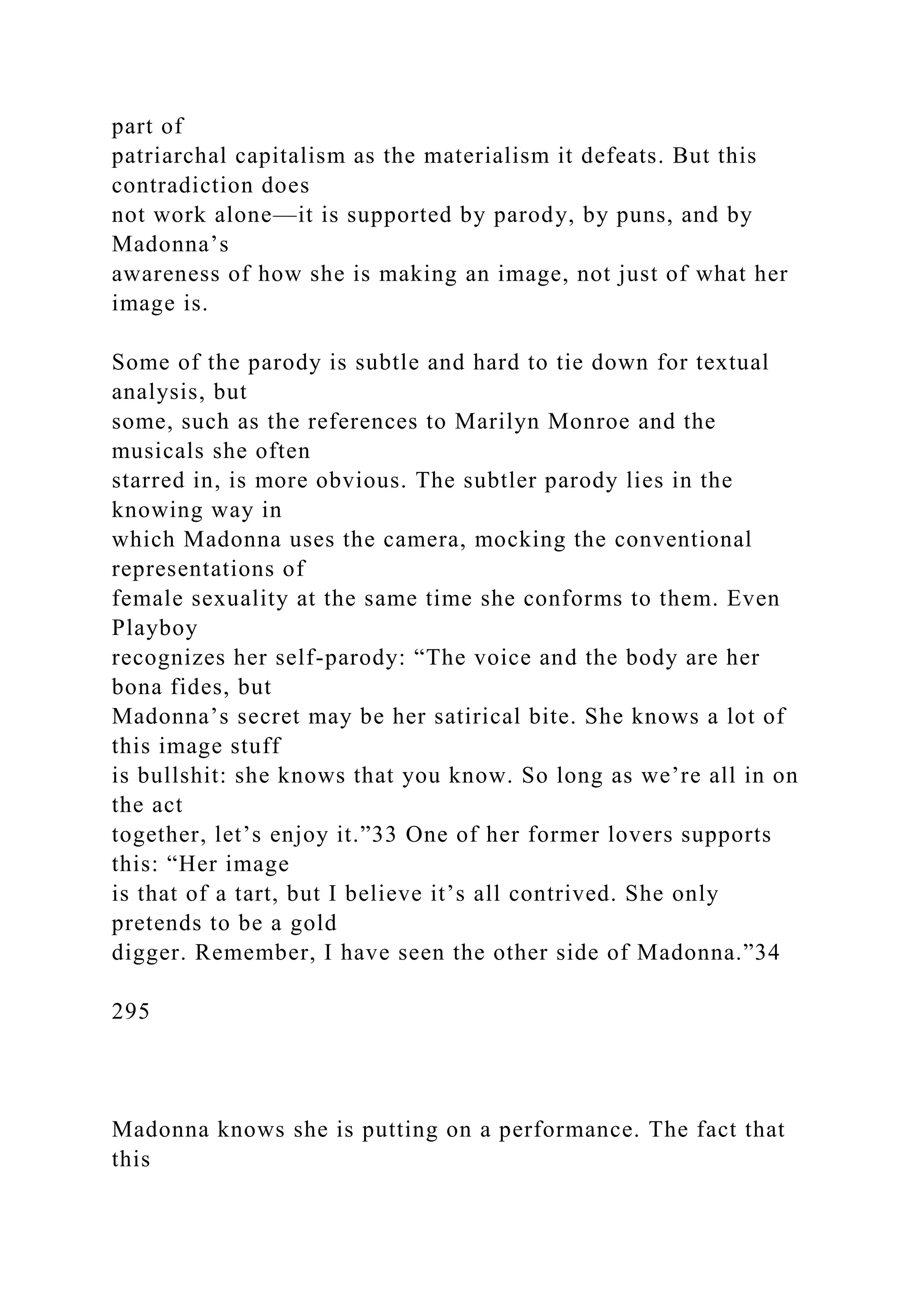
![knowingness is part of the performance enables the viewer to
respond to a
different interpellation from that proposed by the dominant
ideology and thus
to occupy a resisting subject position. The sensitive man
watching her
material girl performance knows as she does—as we might
also—that this is
only a performance. Those who take the performance at face
value, who miss
its self-parody, are hailed either as ideological subjects in
patriarchy or else
they reject the hailing, deny the pleasure, and refuse the
communication:
The National Enquirer, a weekly magazine devoted to prurient
gossip, quotes
two academic psychiatrists denouncing her for advocating
teenage
promiscuity, promoting a lust for money and materialism, and
contributing to
the deterioration of the family. Feminists accuse her of
revisionism, of
resurrecting the manipulative female who survives by coquetry
and artifice.
“Tell Gloria [Steinem] and the gang,” she retorts, “to lighten
up, get a sense of
humour. And look at my video that goes with Material Girl. The
guy who gets
me in the end is the sensitive one with no money.”35
Madonna consistently parodies conventional representations of
women,
and parody can be an effective device for interrogating the
dominant ideology.
It takes the defining features of its object, exaggerates and](https://image.slidesharecdn.com/channelsofdiscoursereassembled2channelsof-221018173716-6fc0655a/75/Channels-of-Discourse-Reassembled2Channels-of-docx-663-2048.jpg)
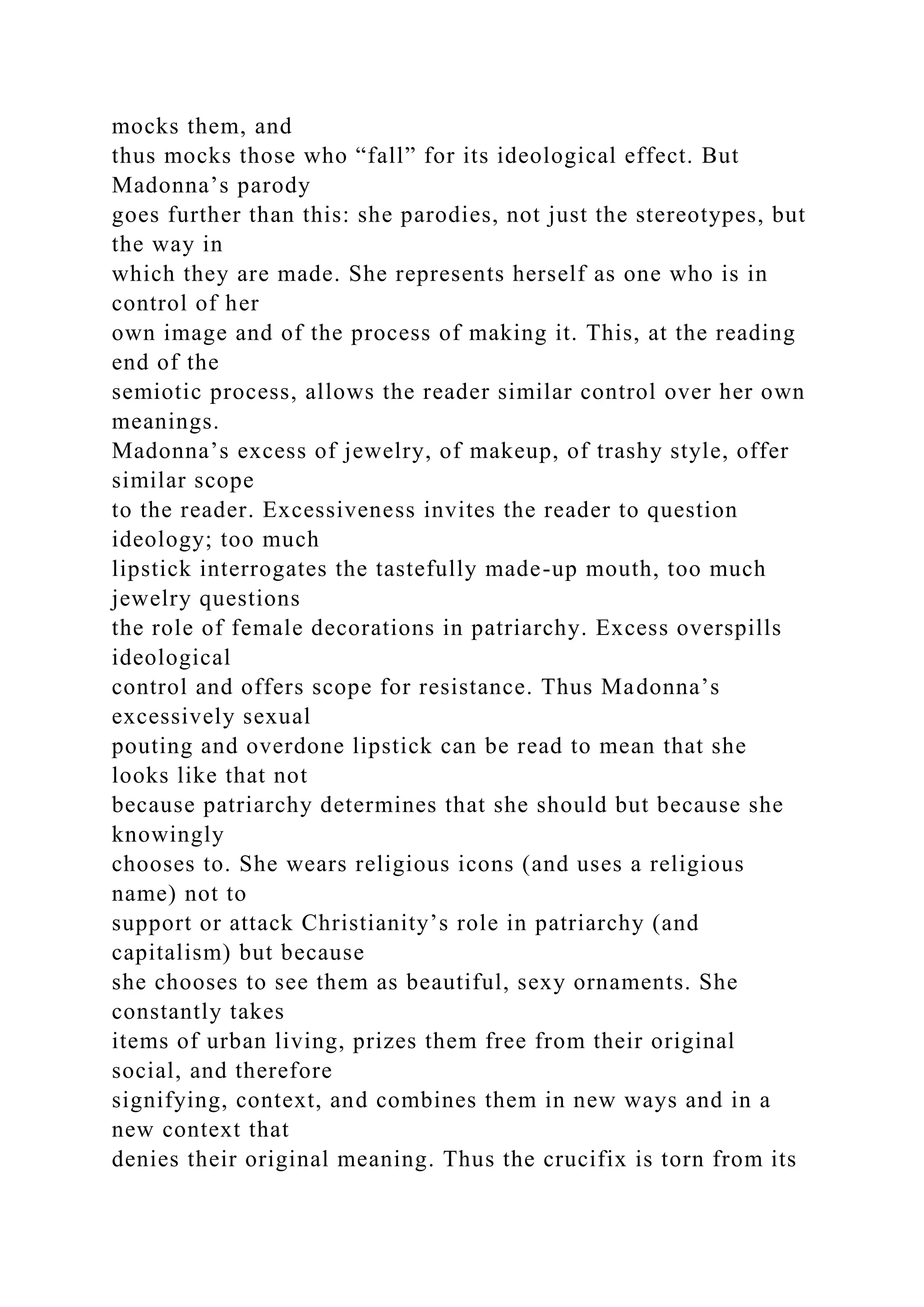
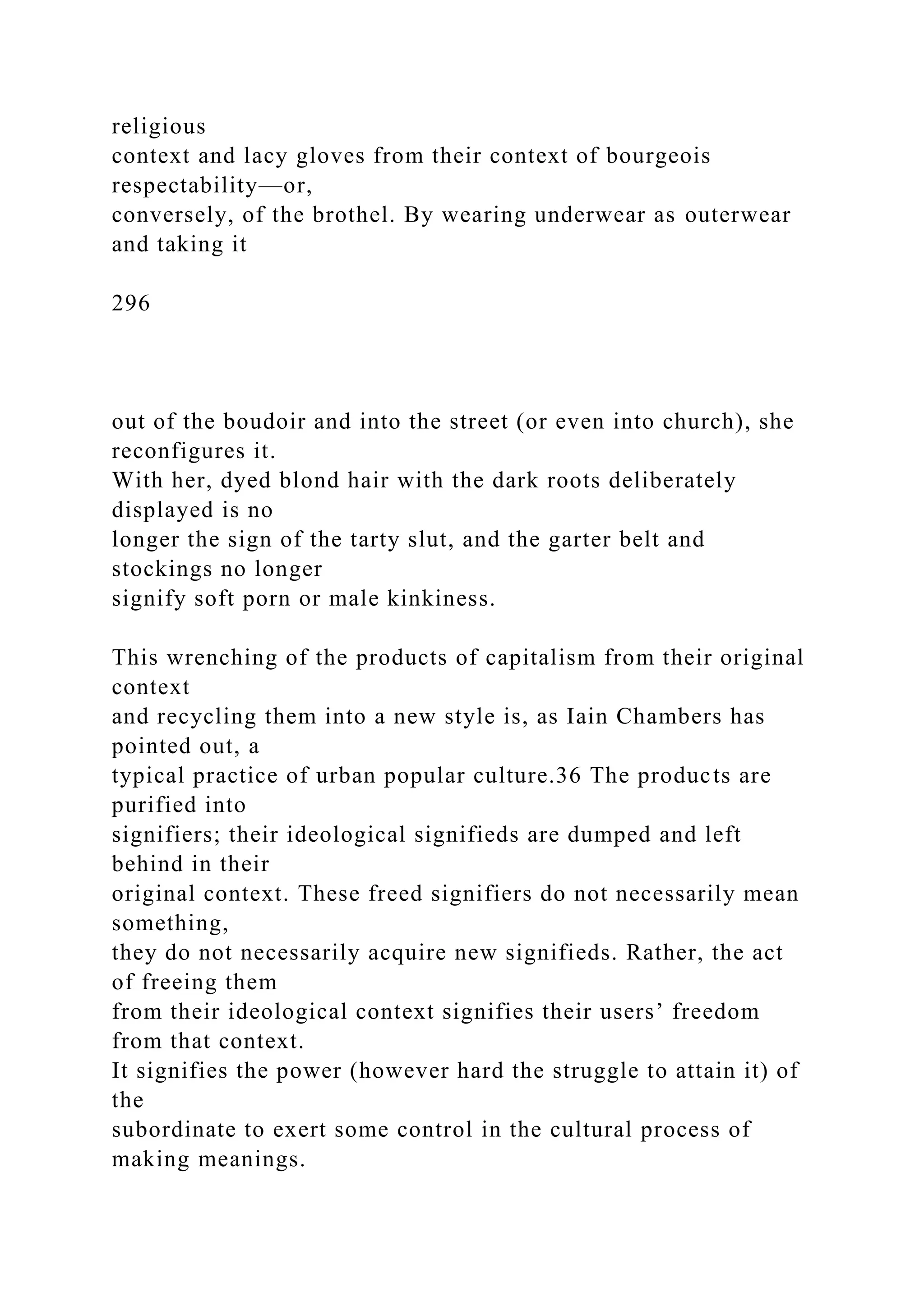


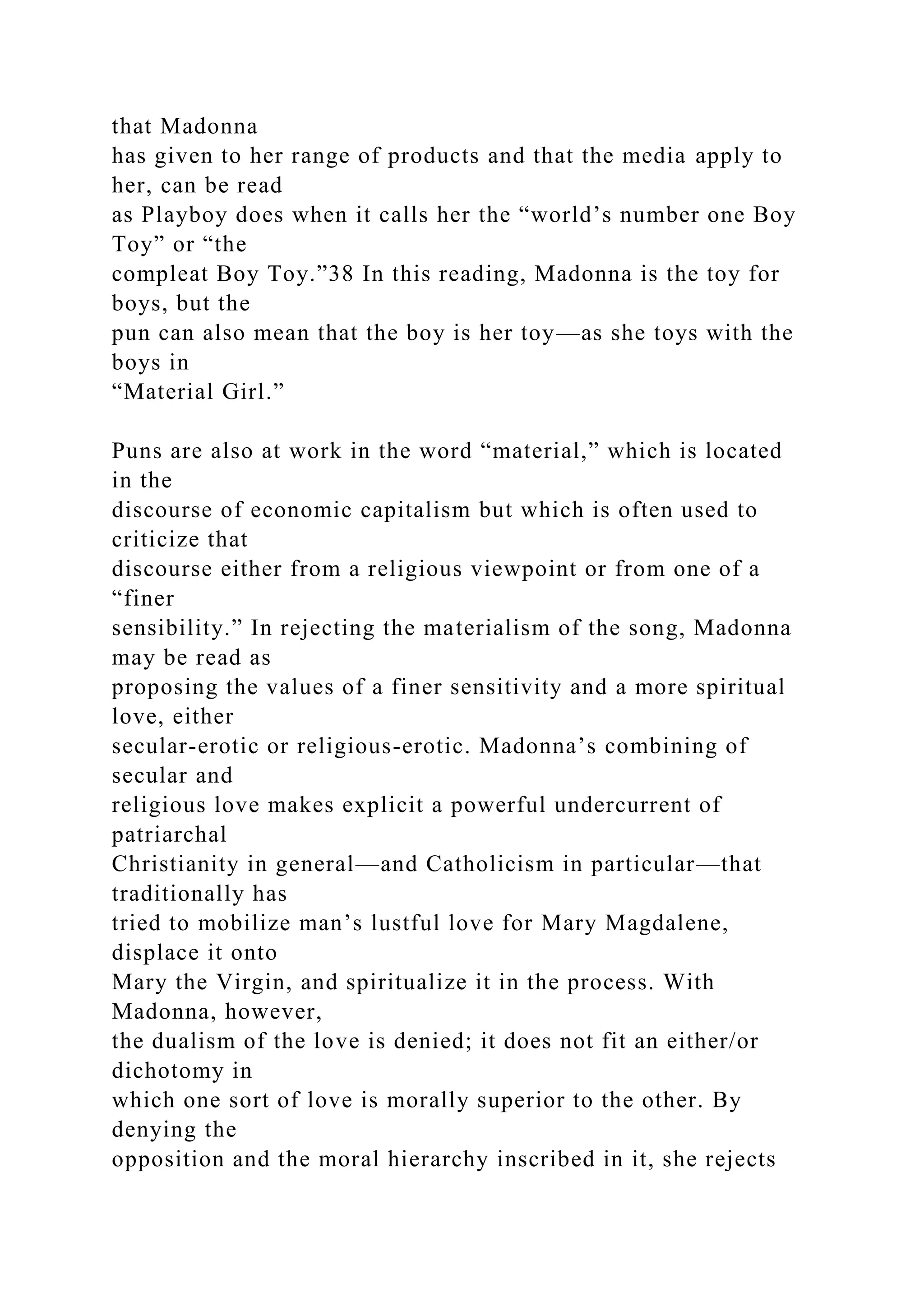
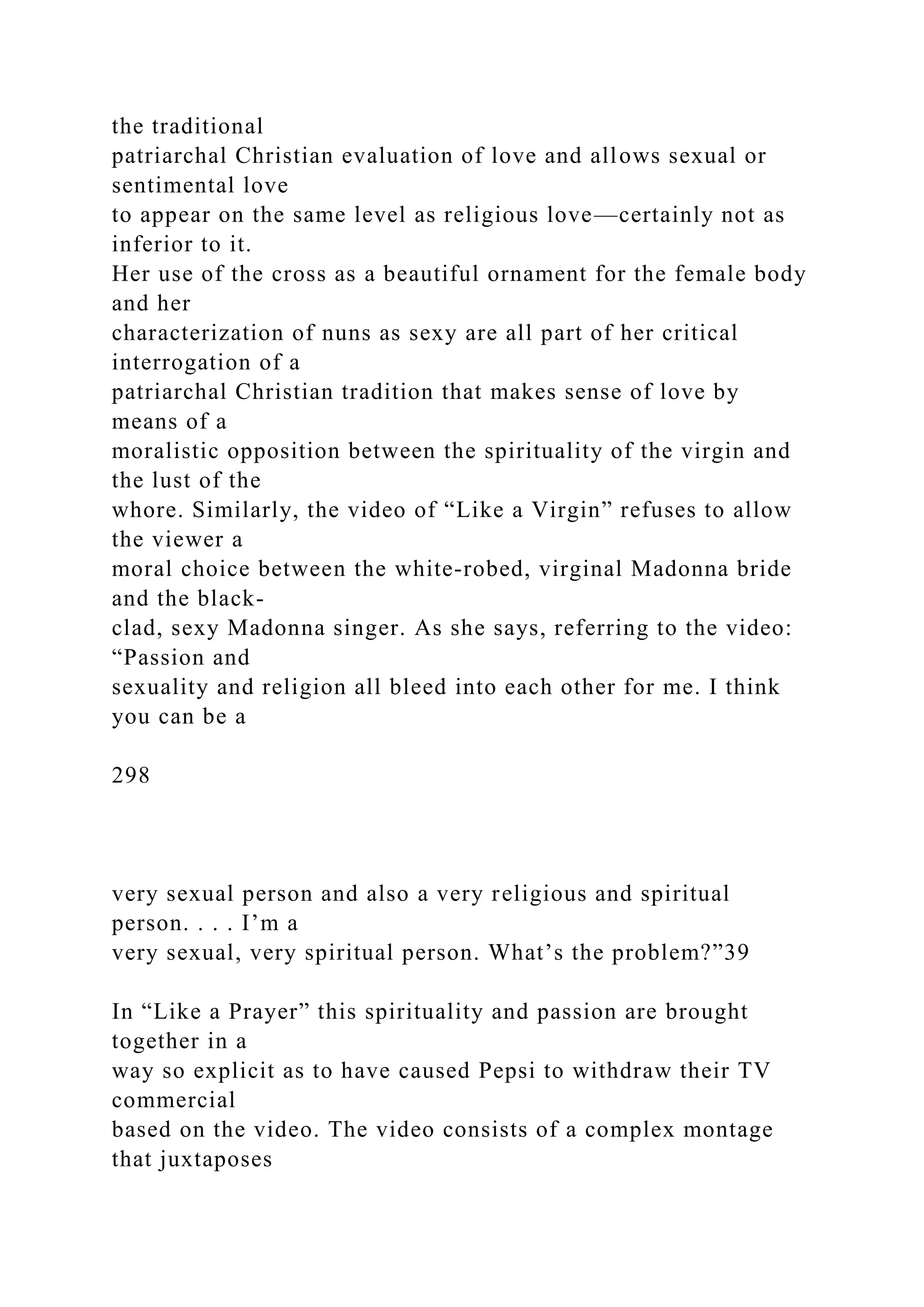
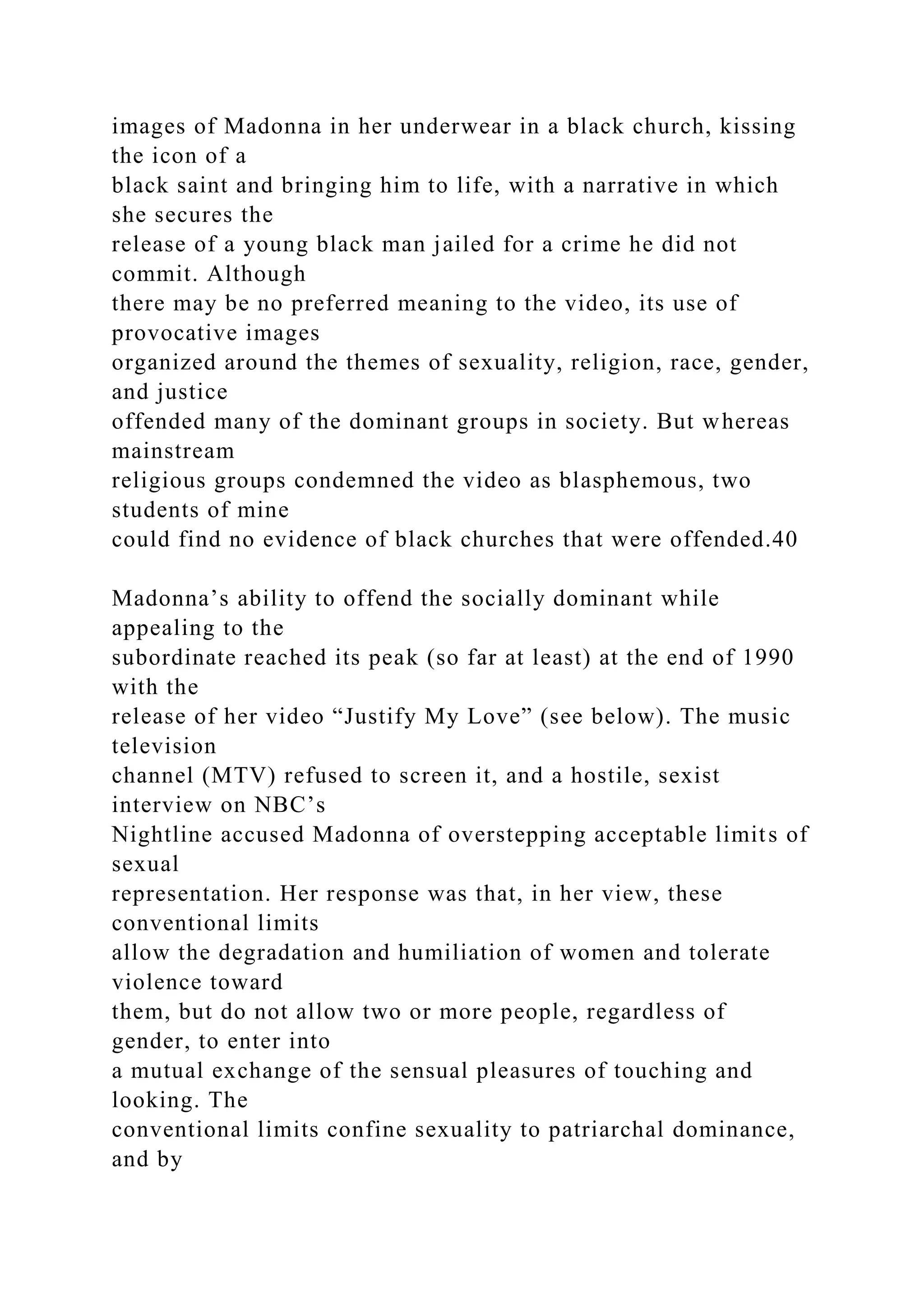
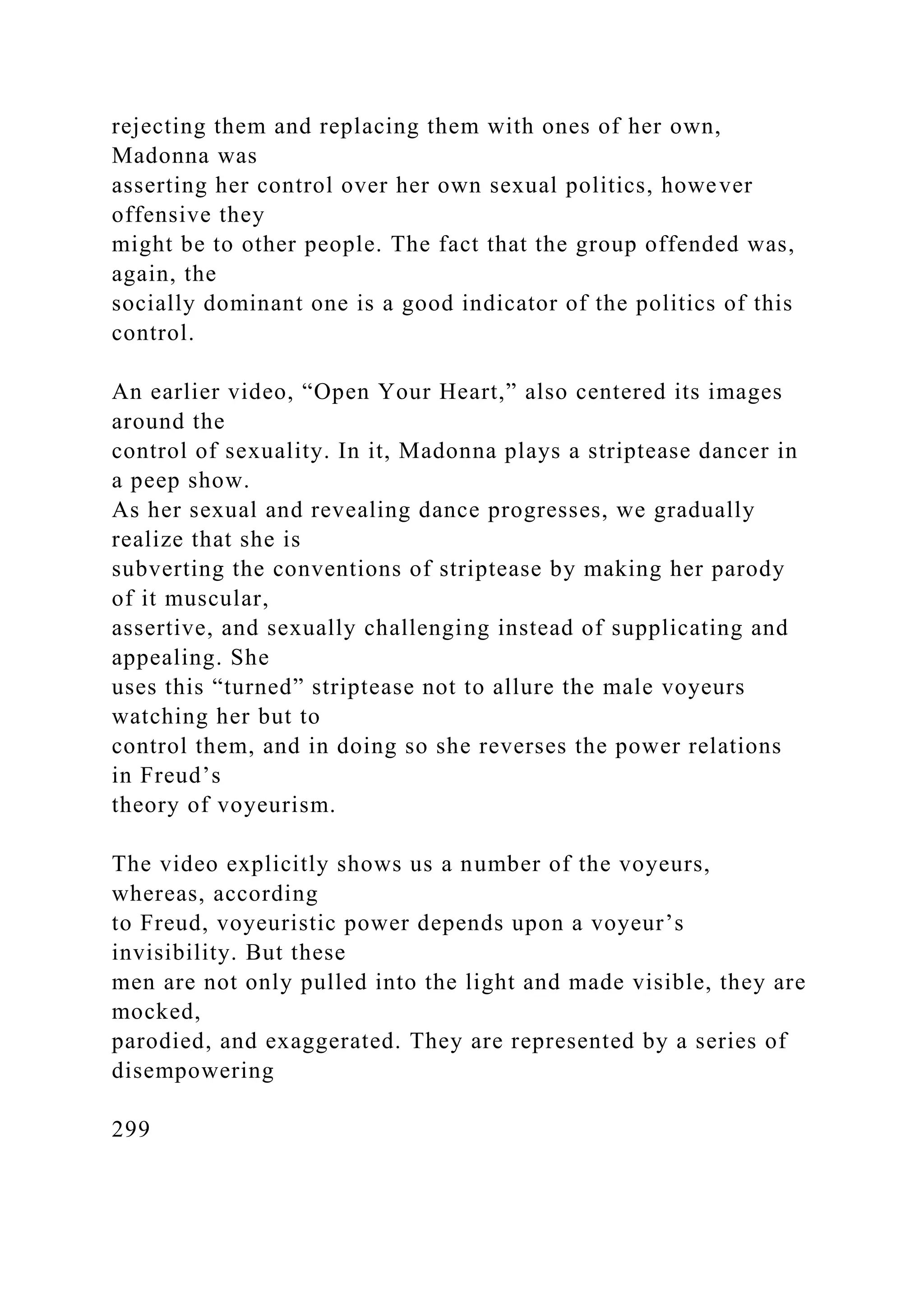
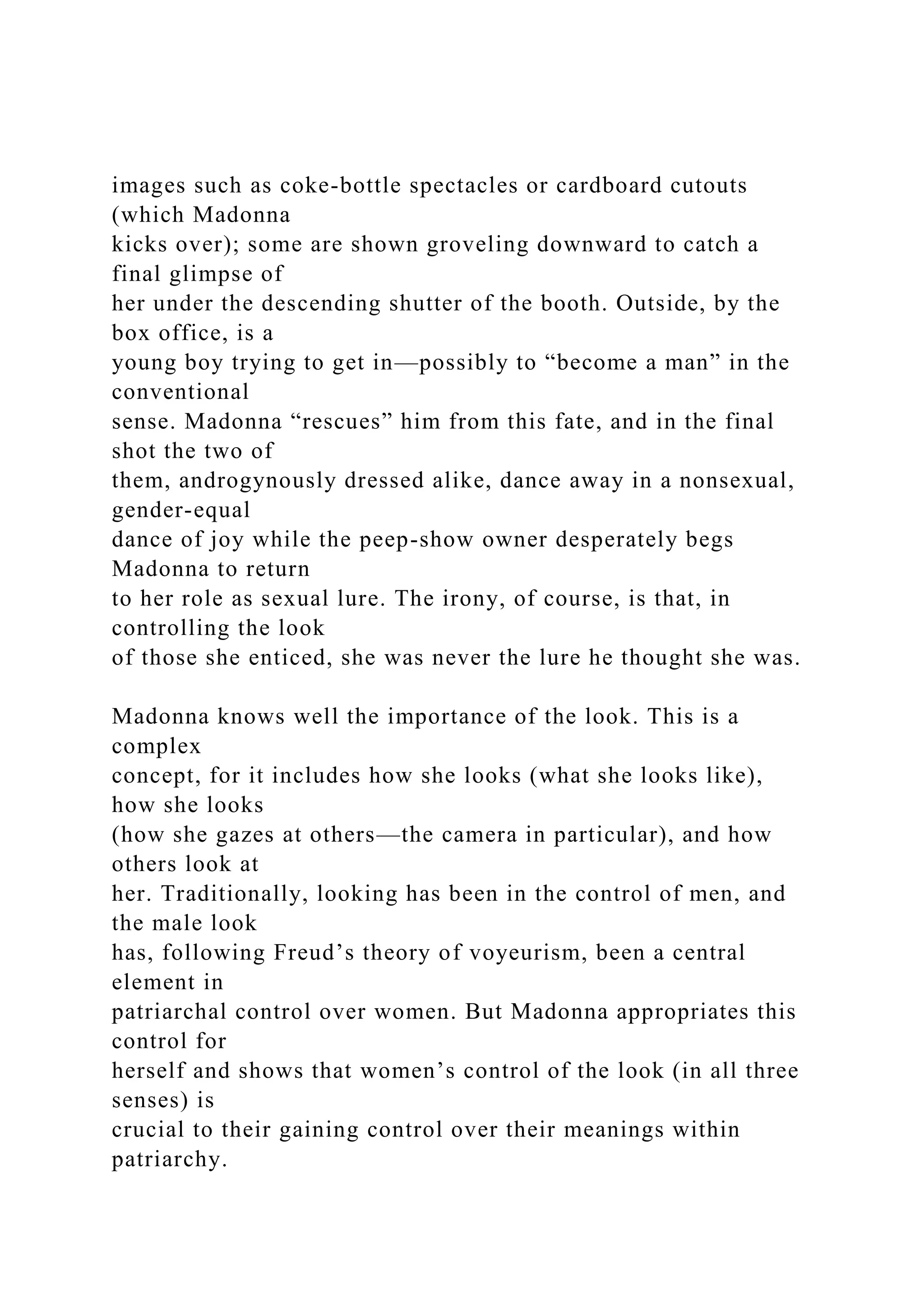
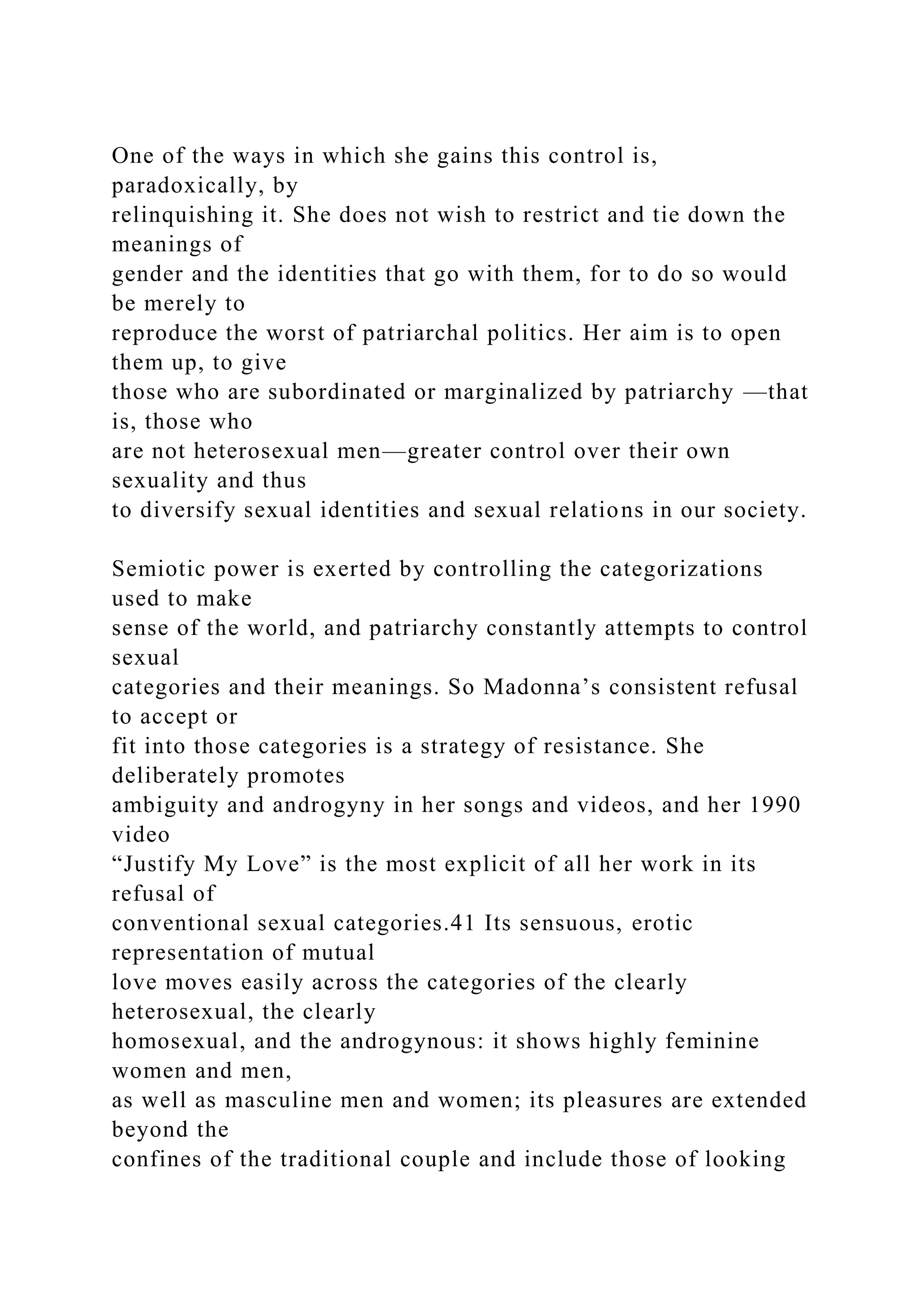

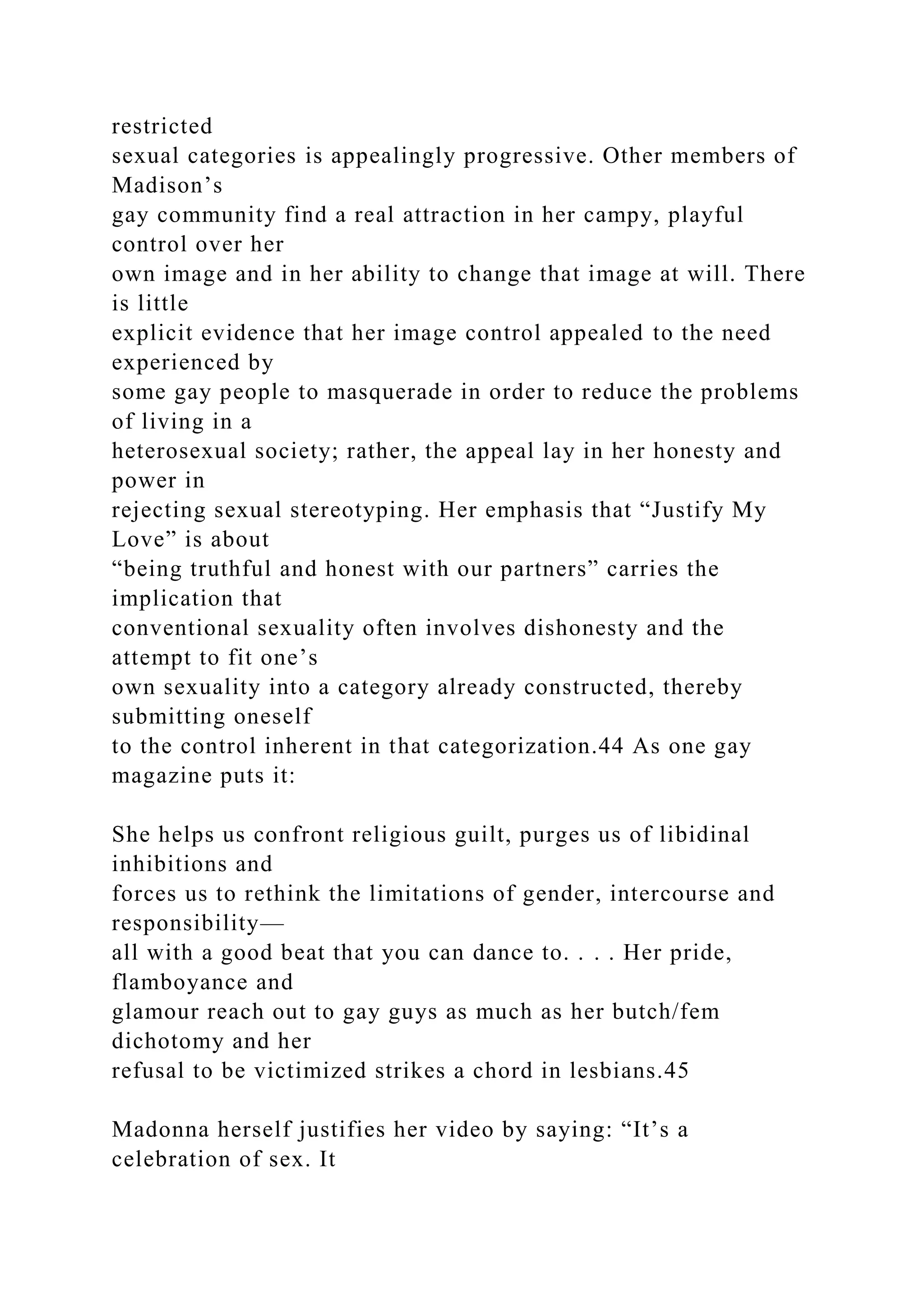
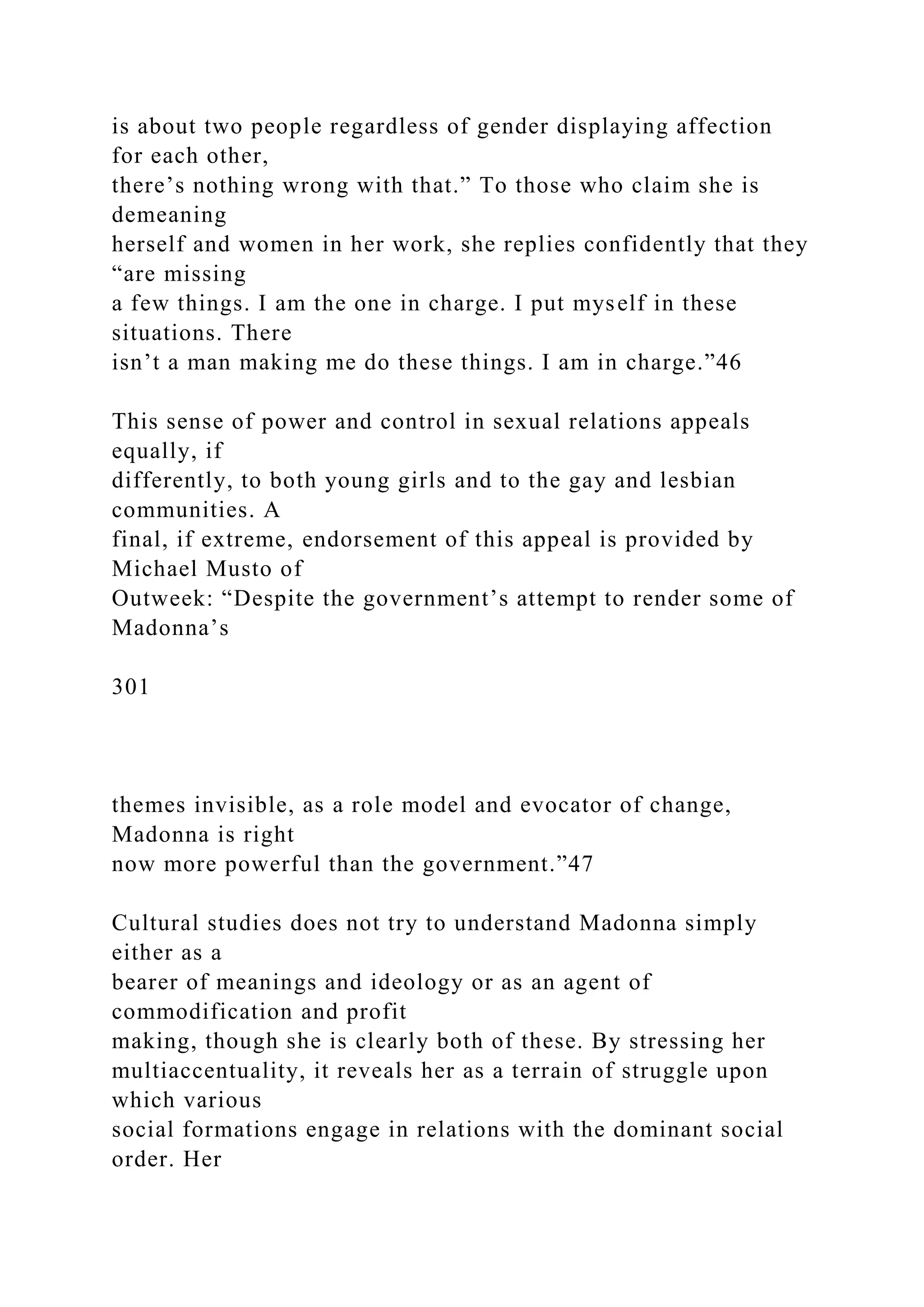
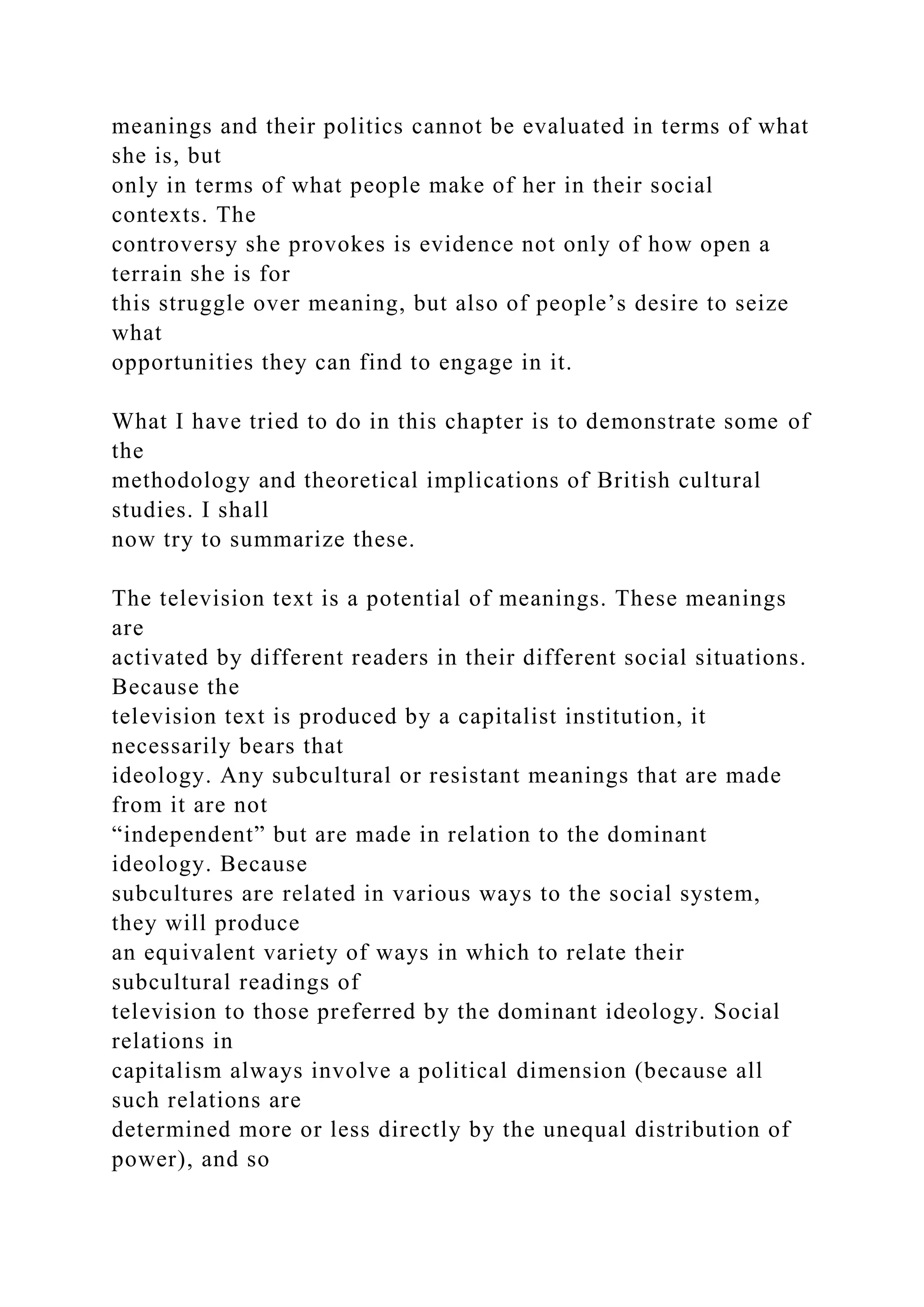
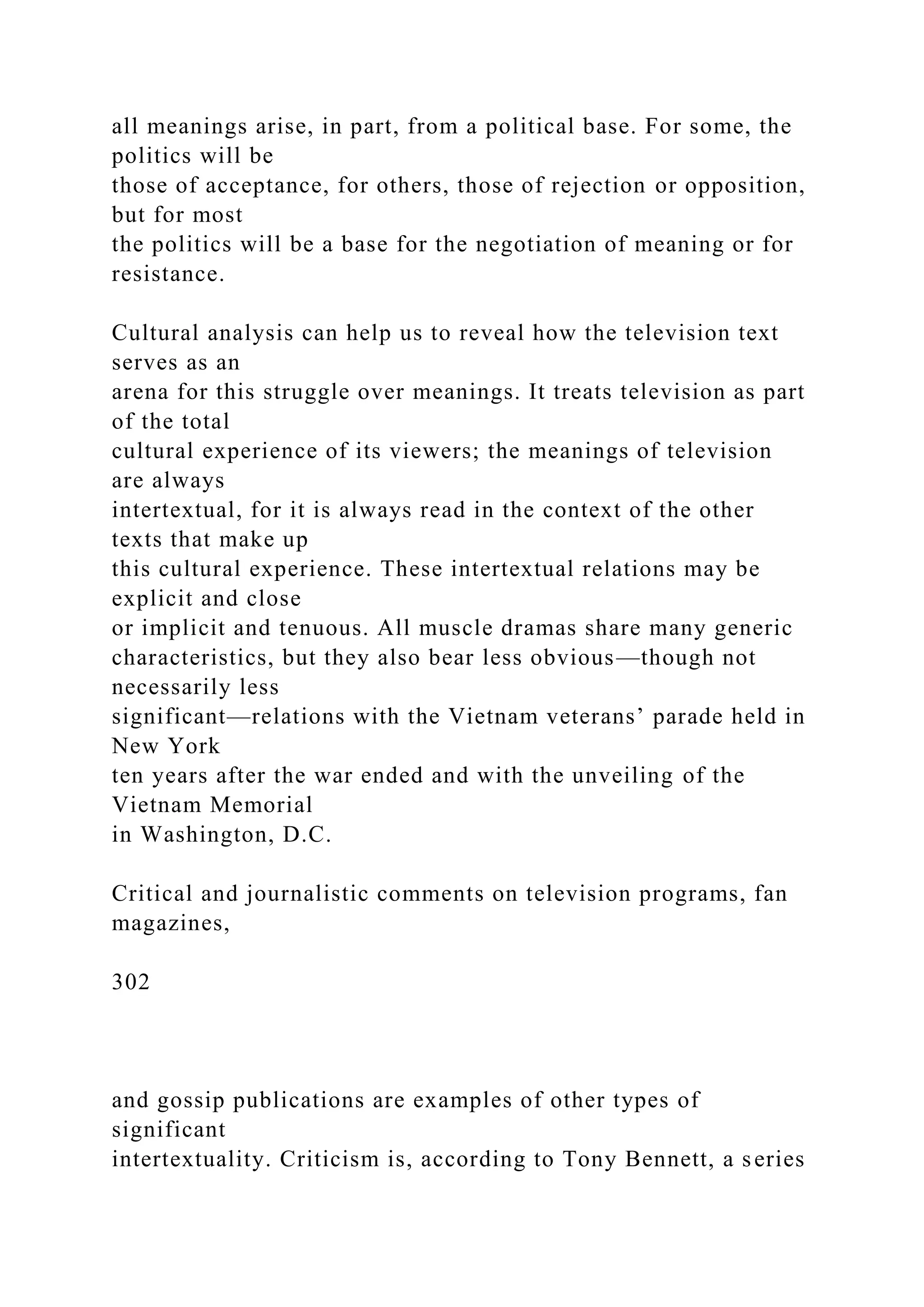
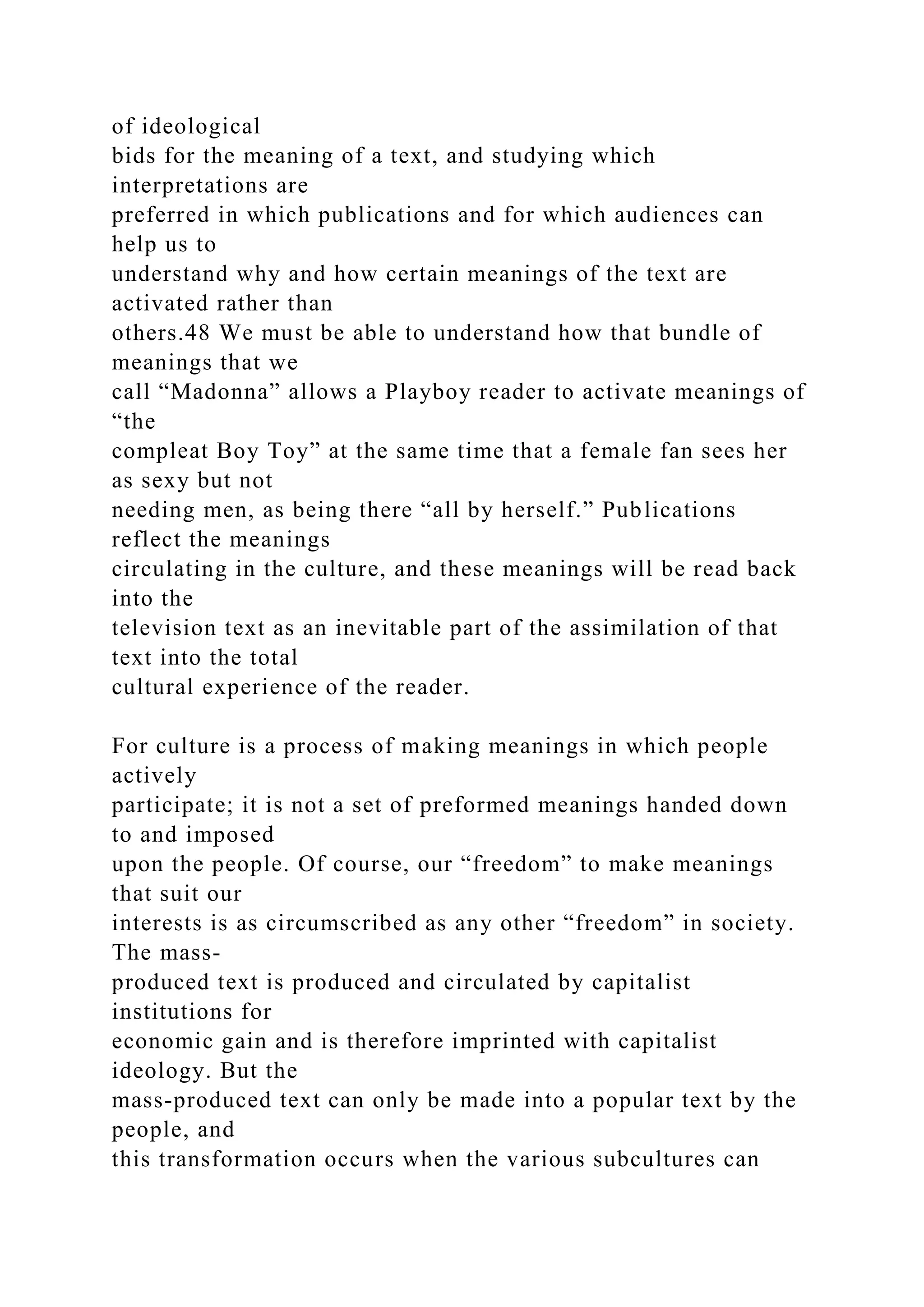
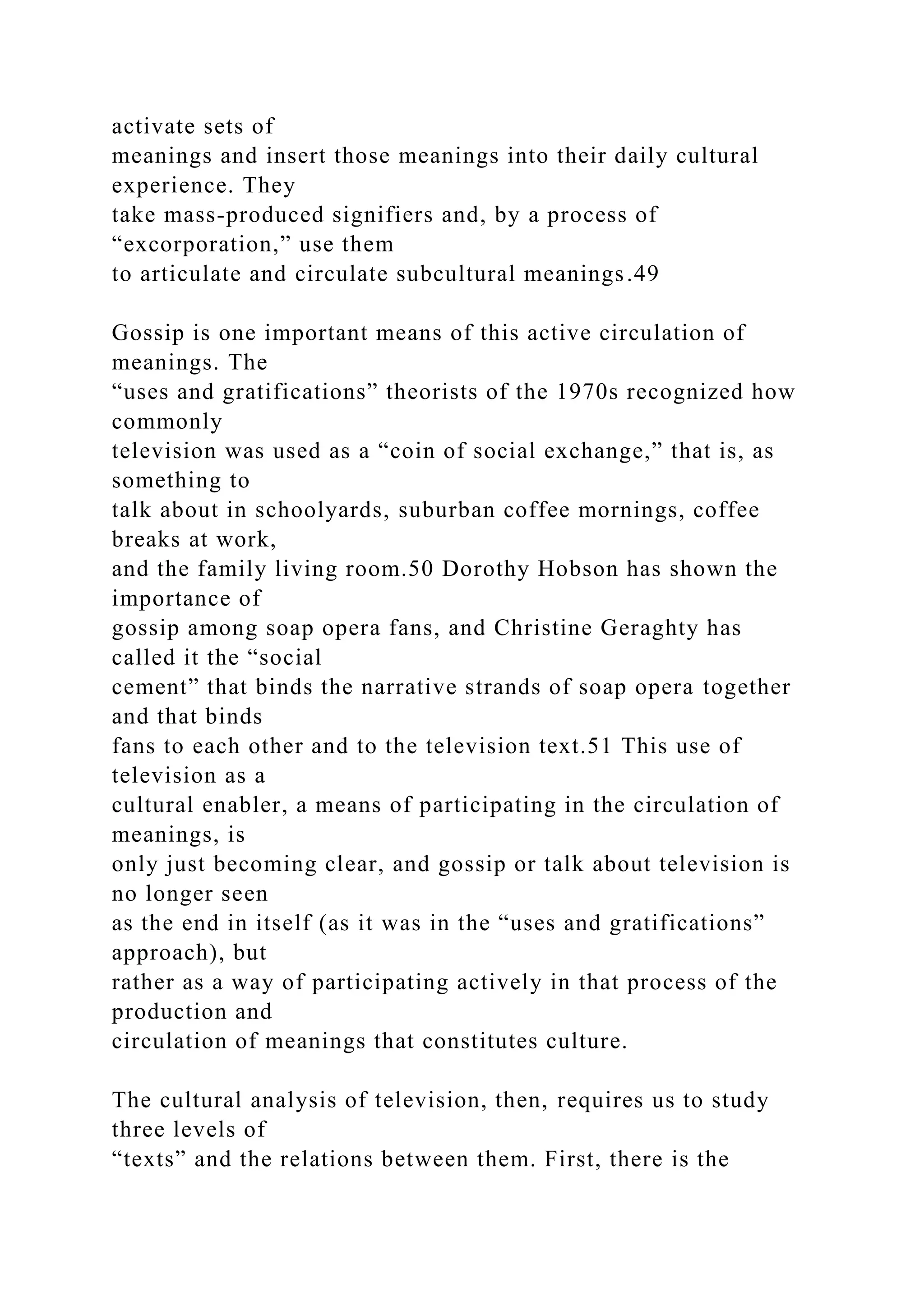
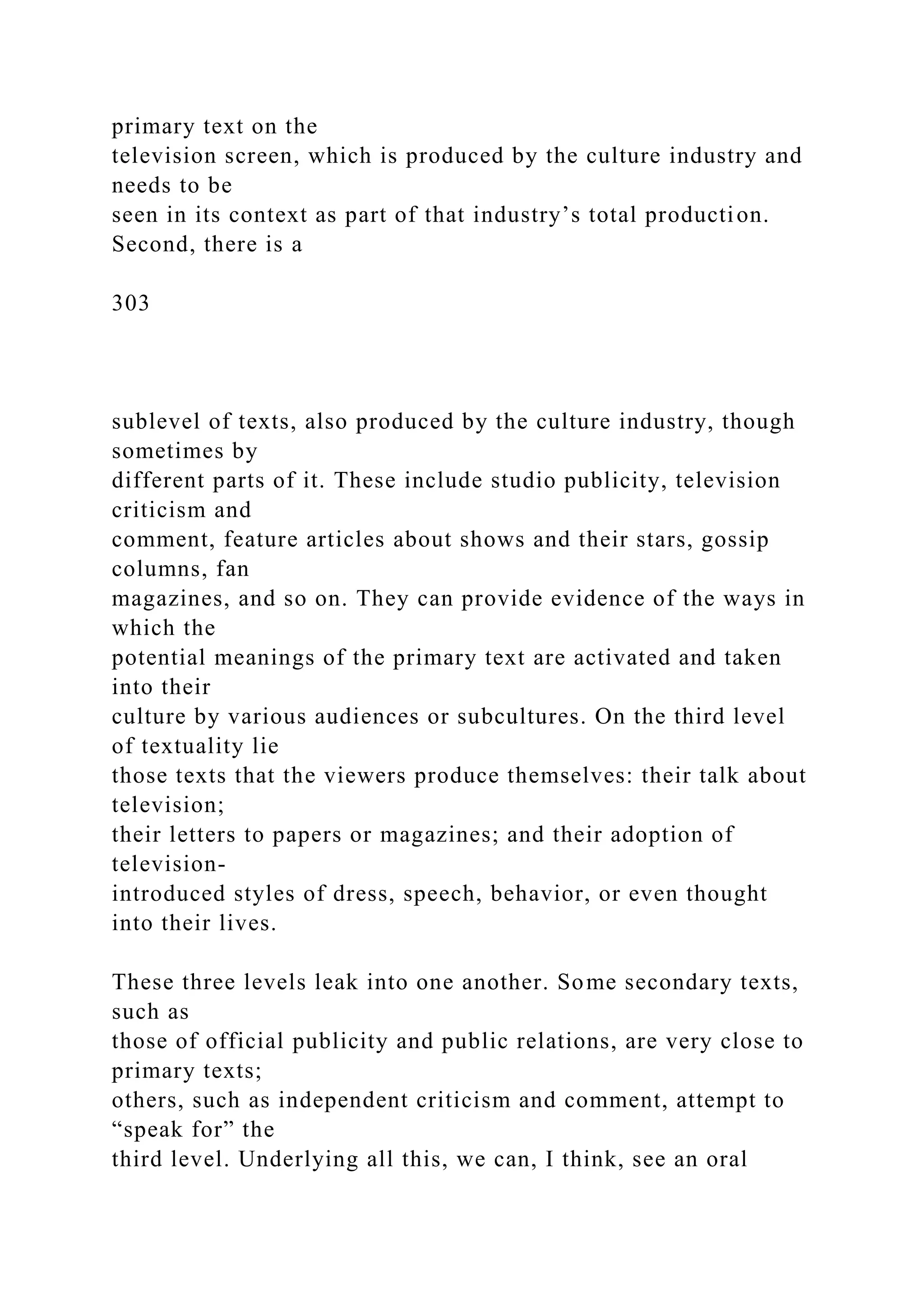
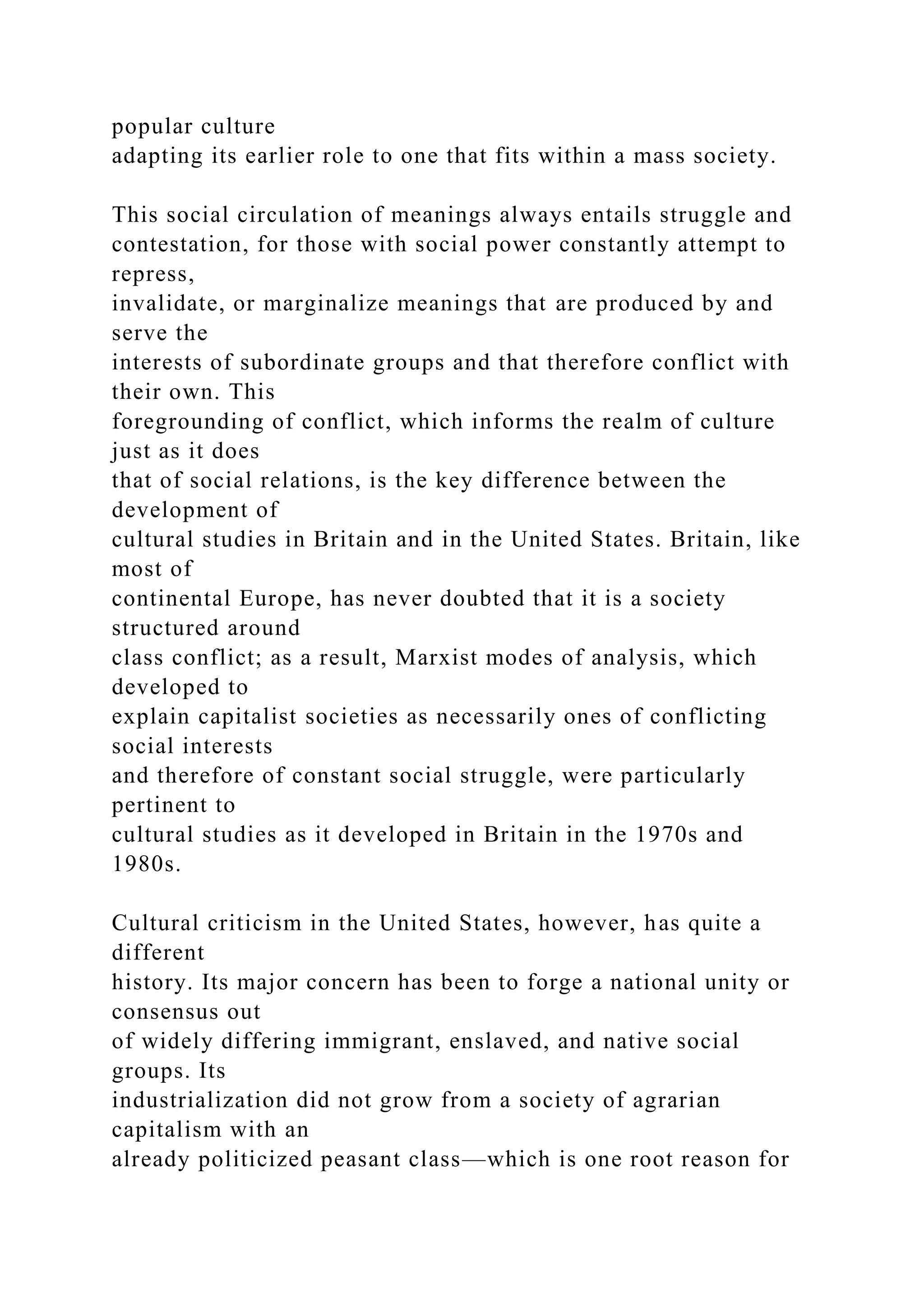
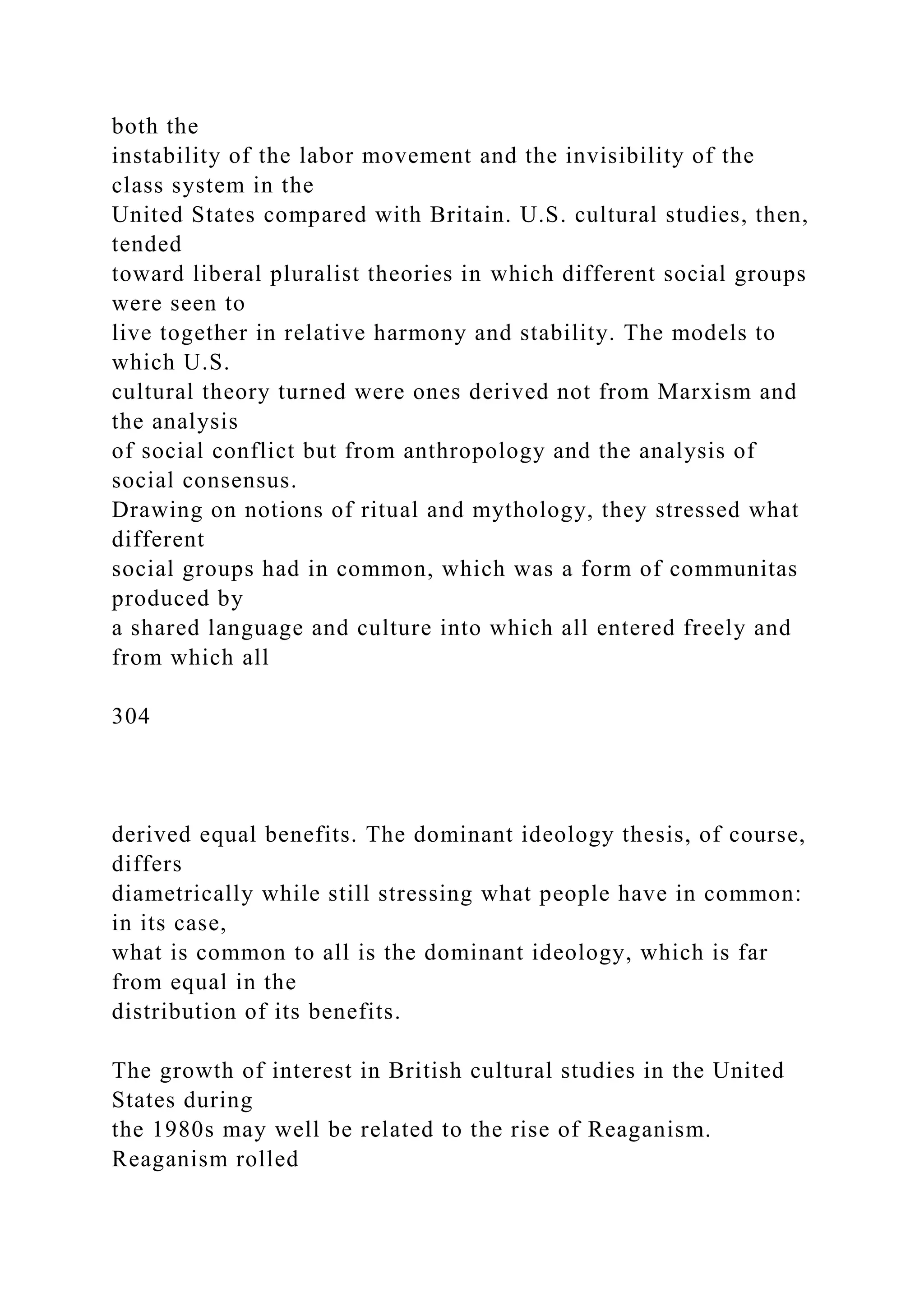
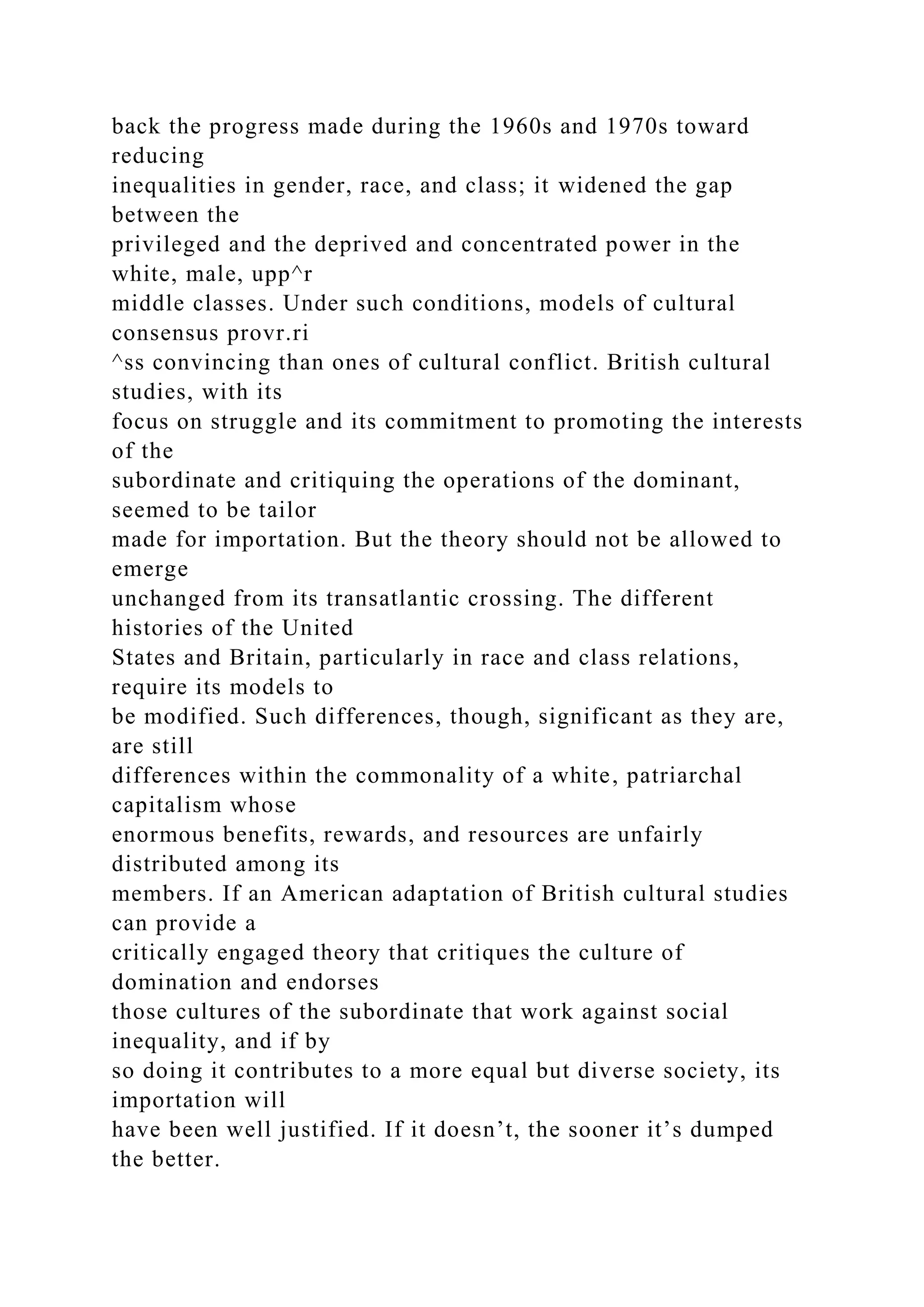

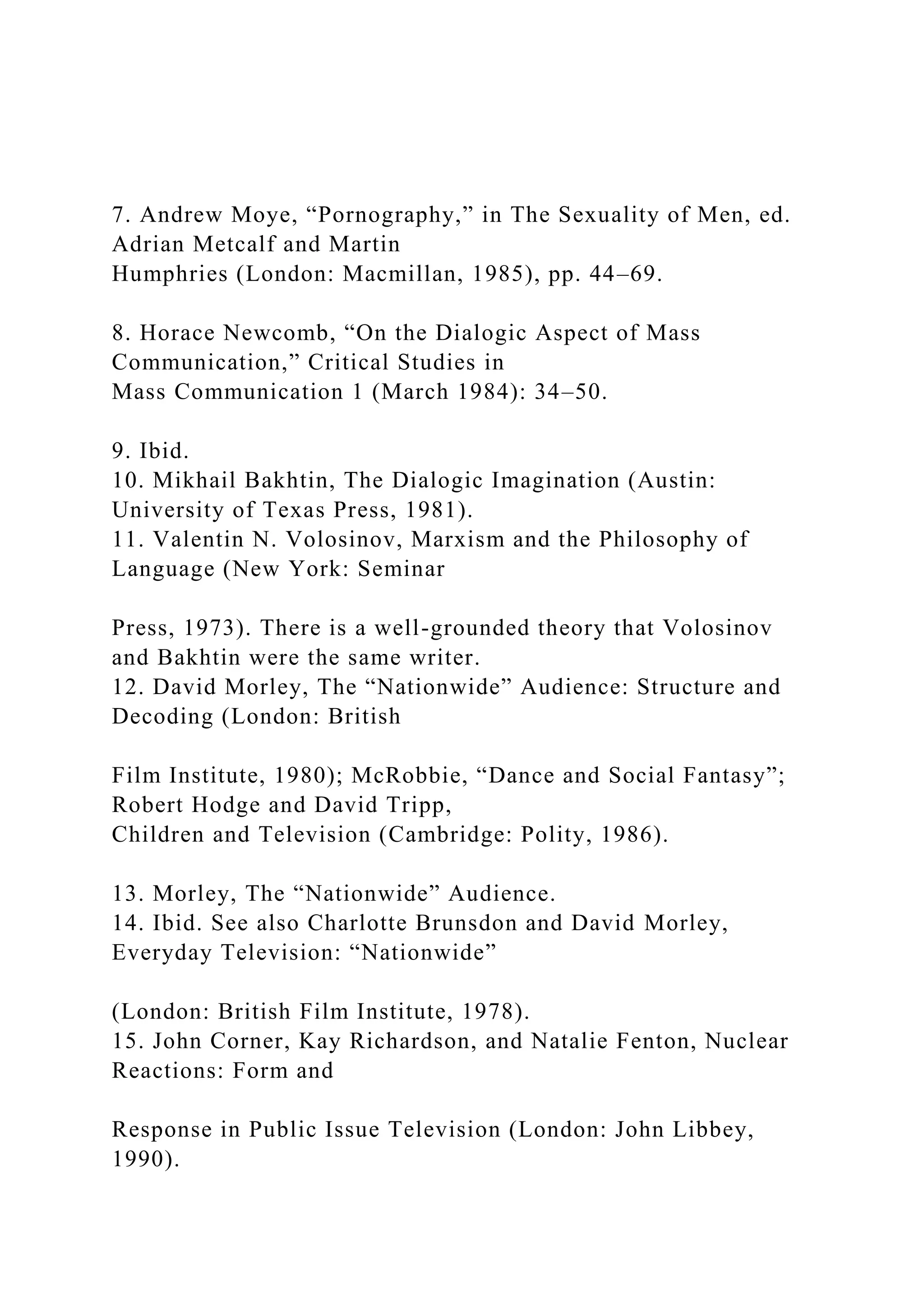
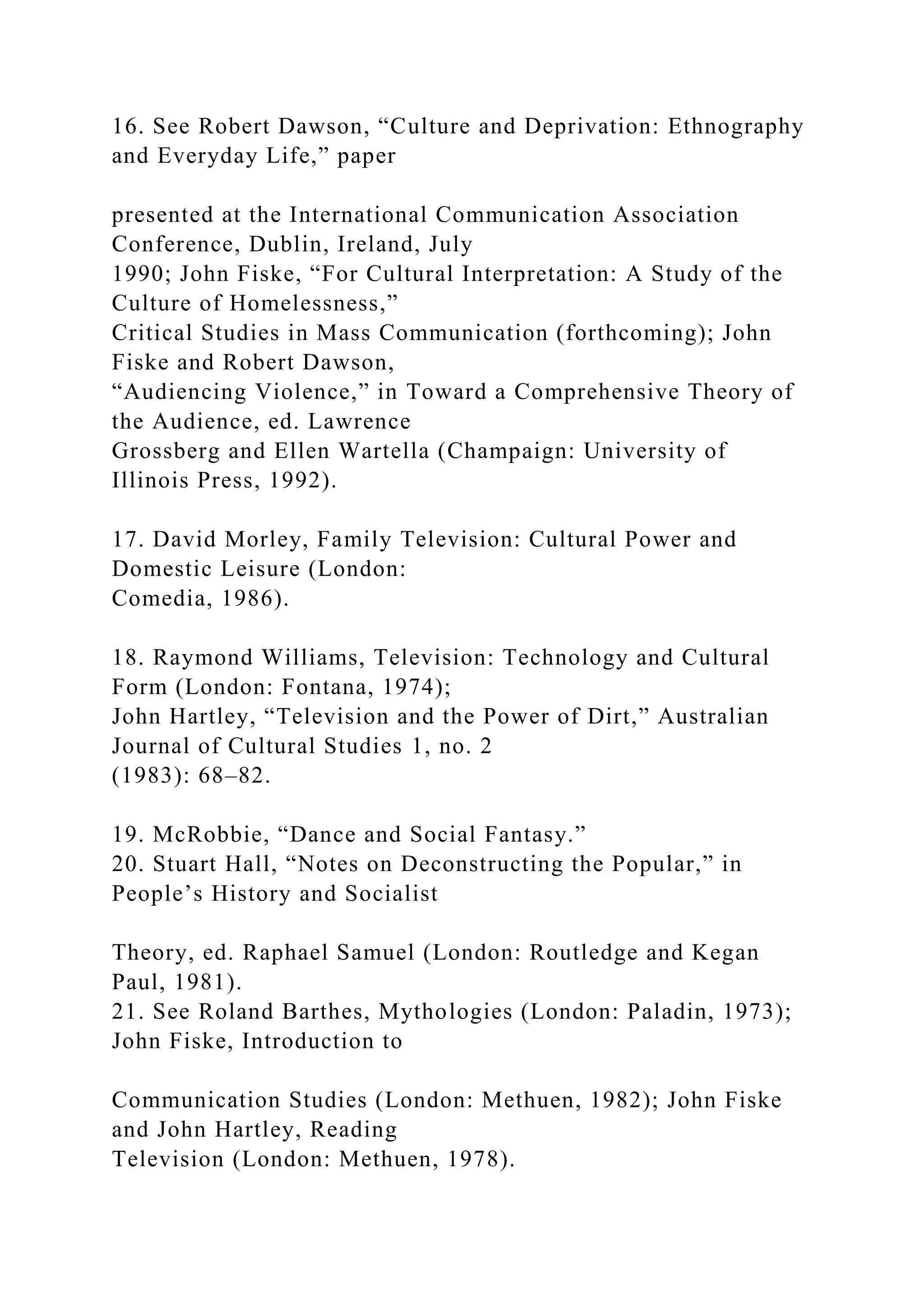
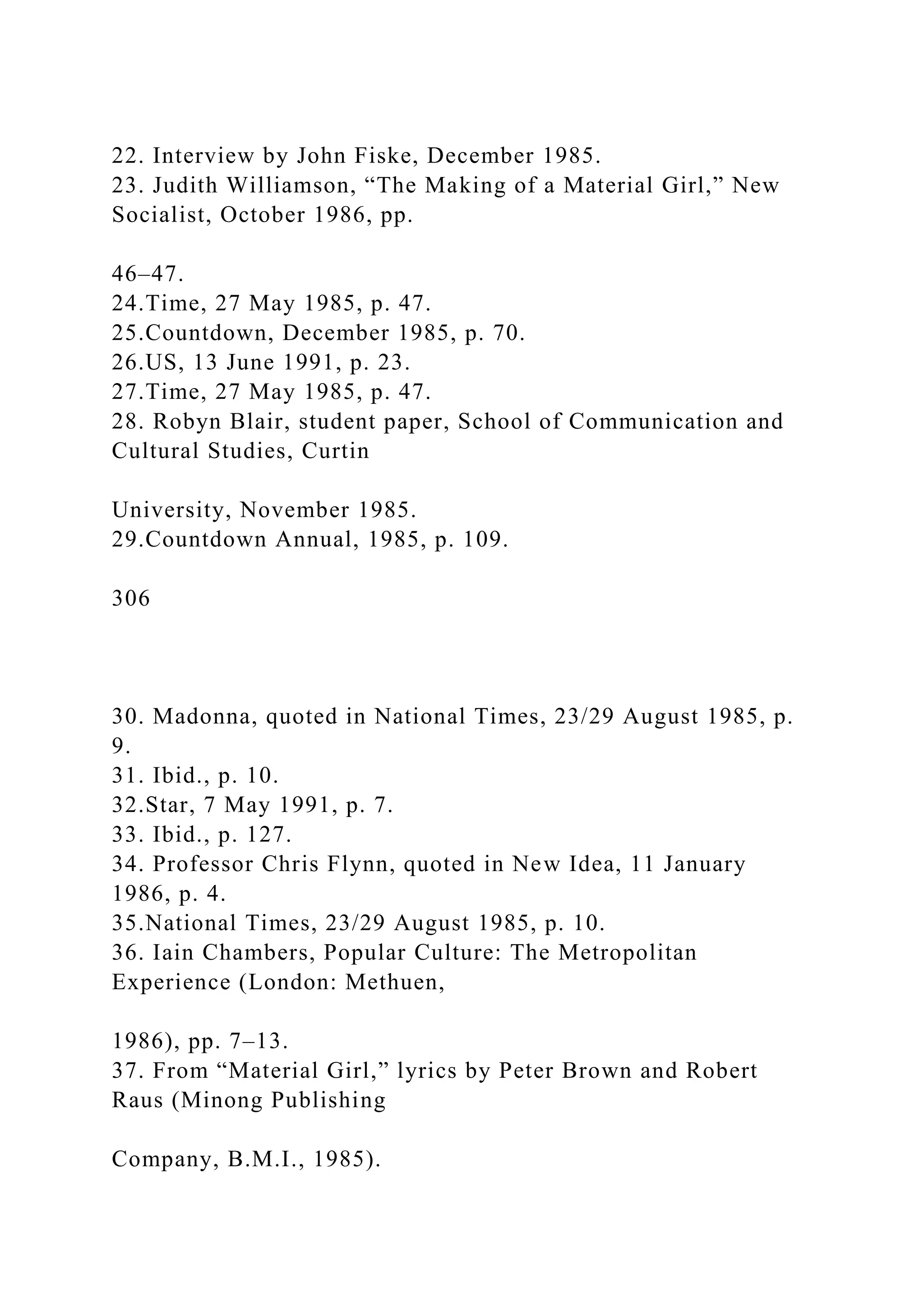
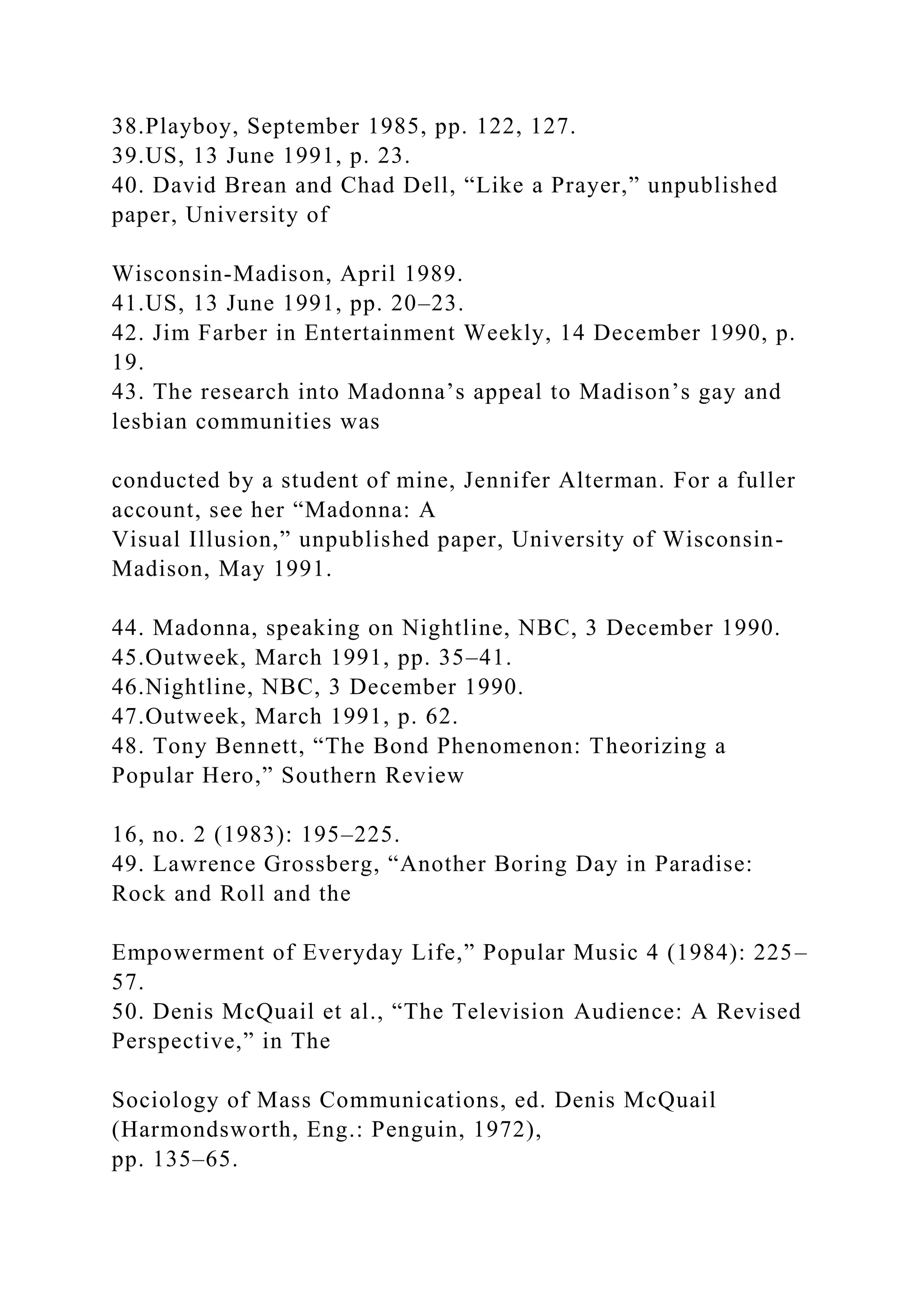
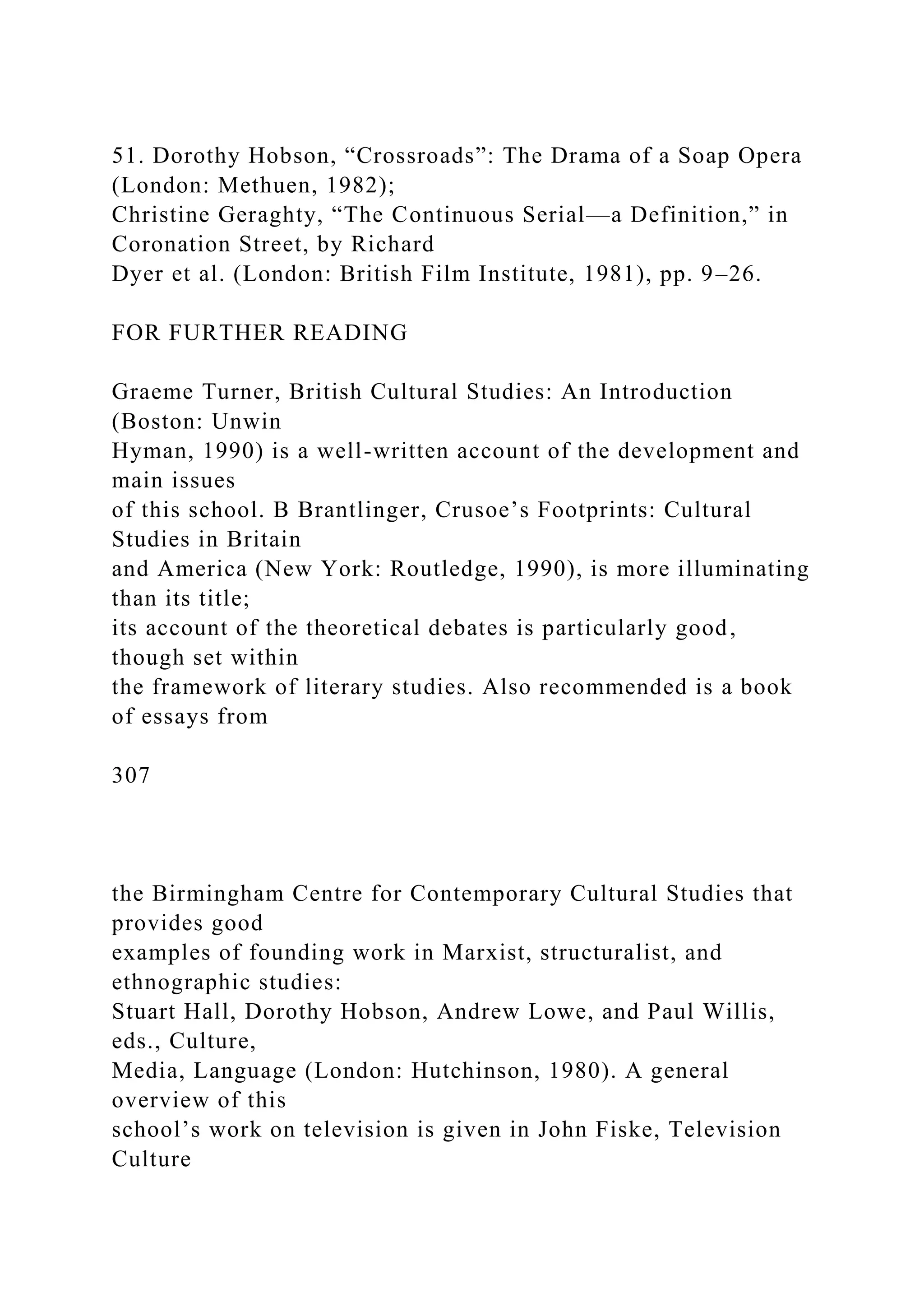

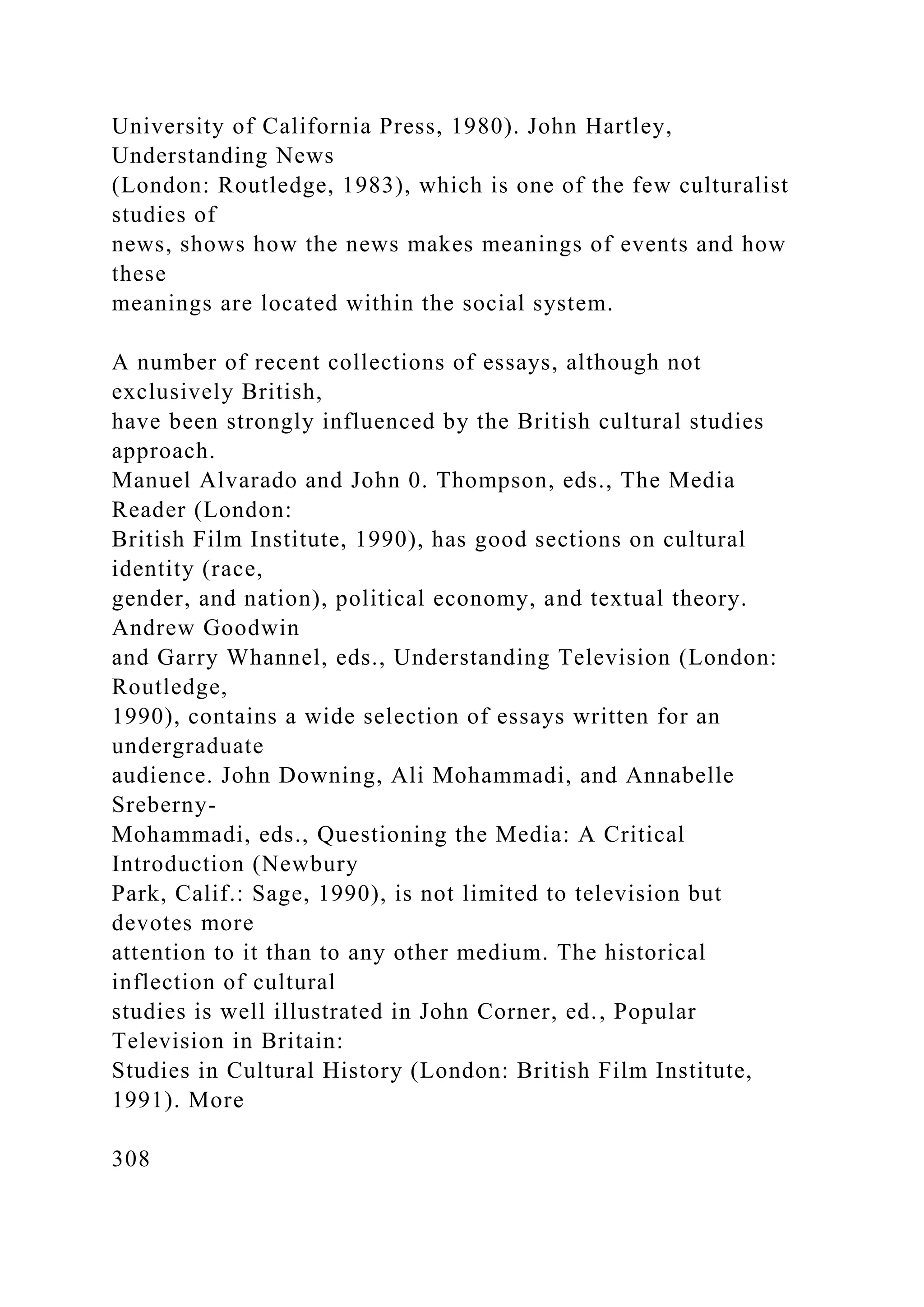
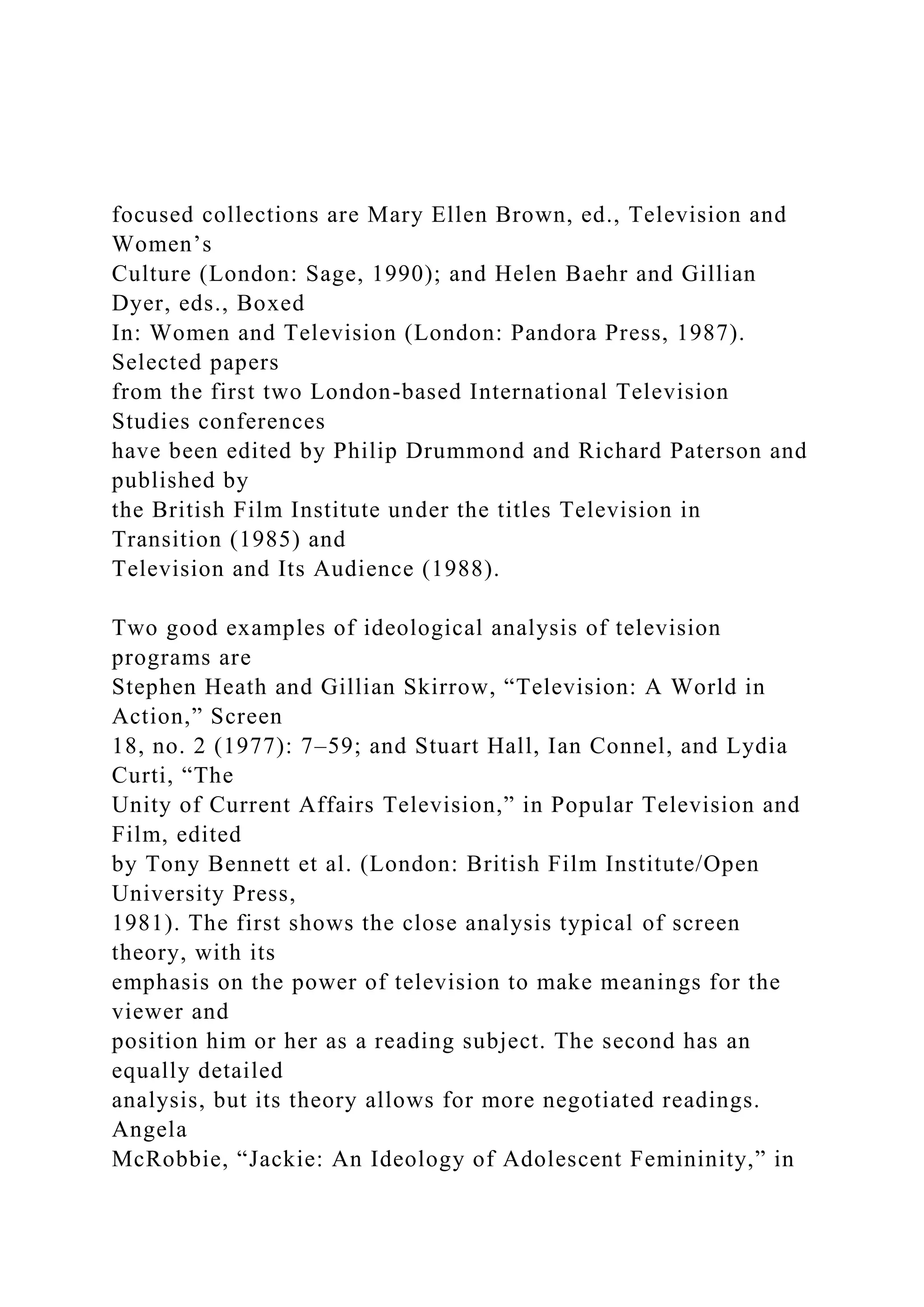
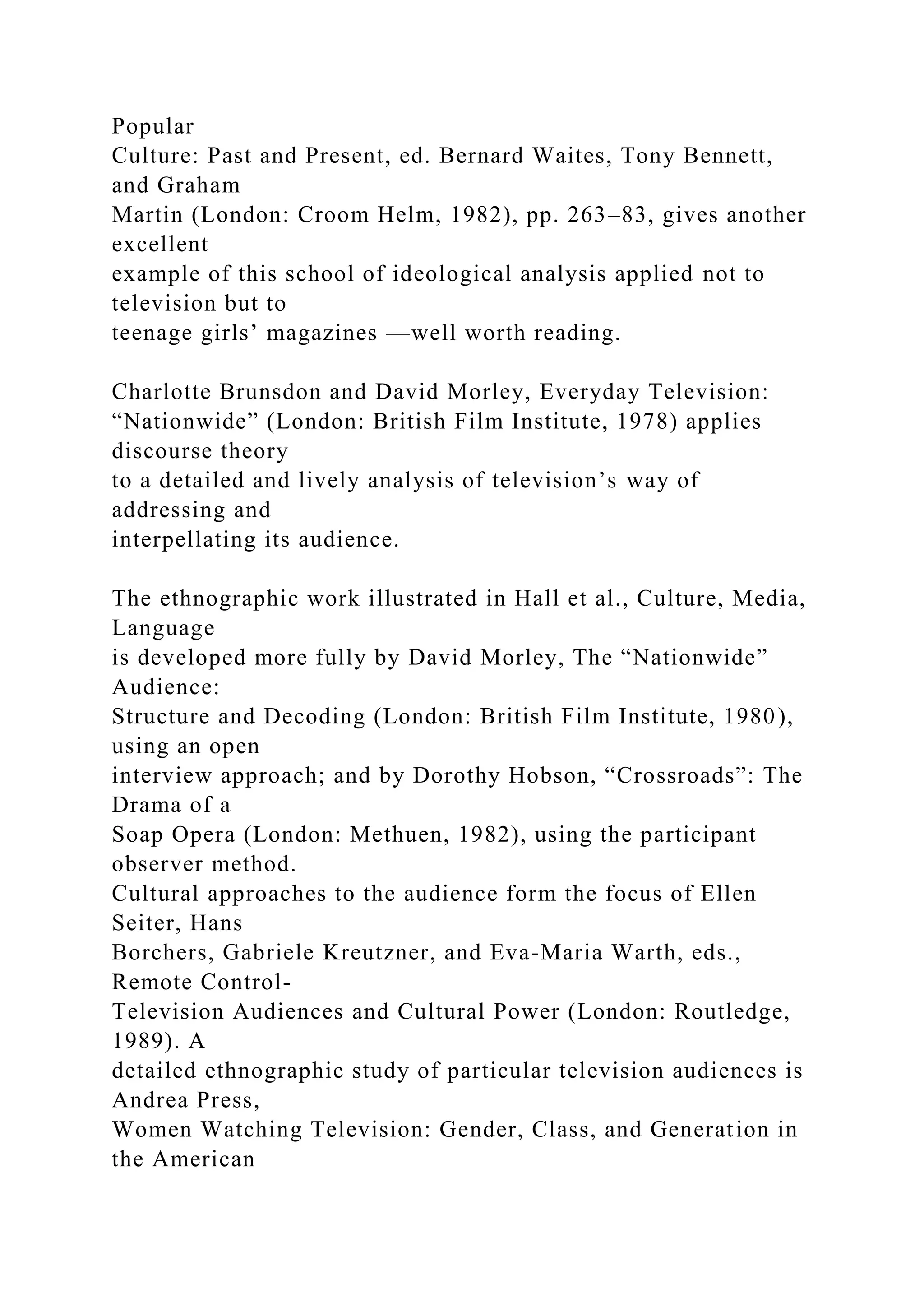
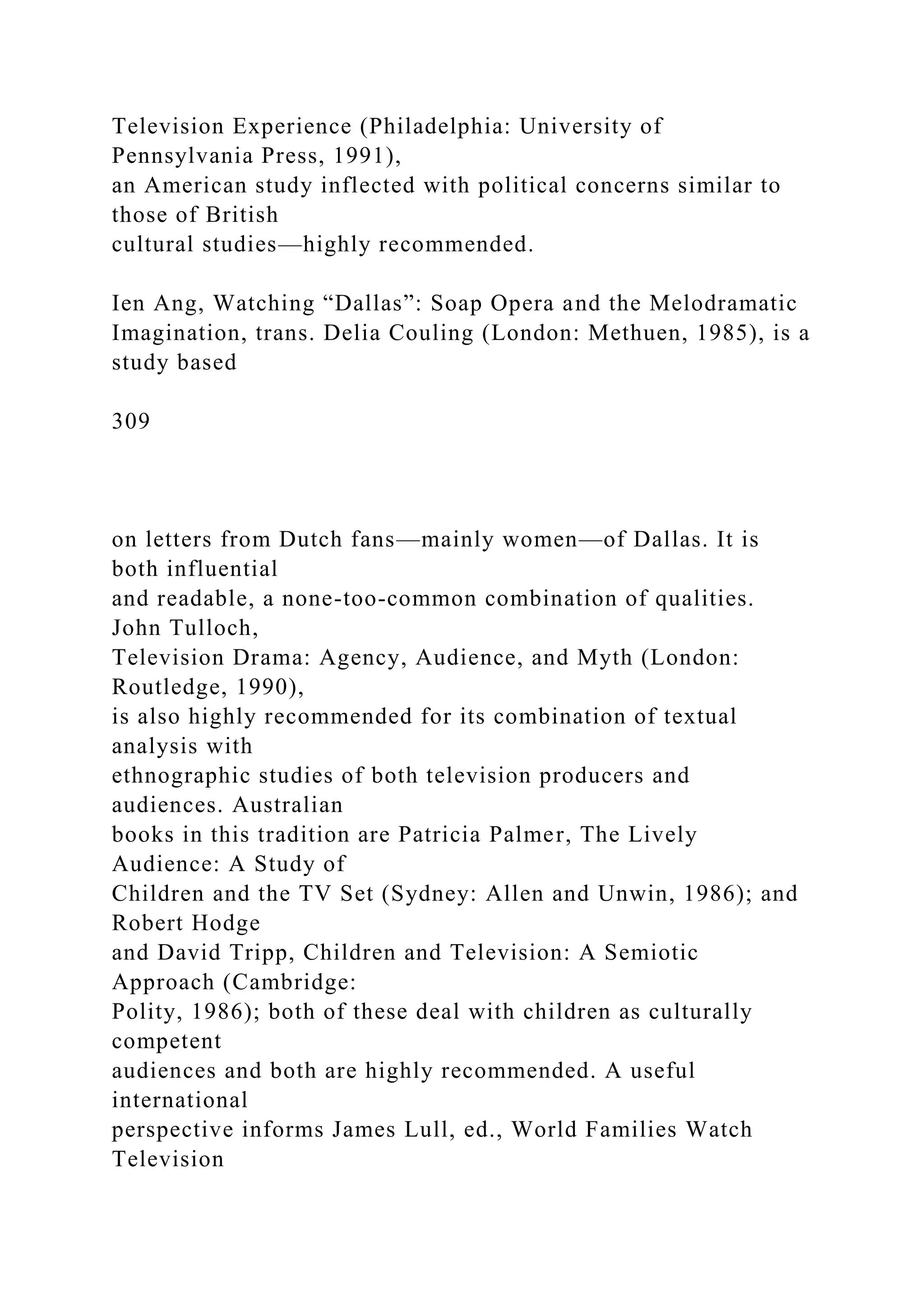
![(Newbury Park: Sage, 1988). Two other books, one Australian
and one
British, that combine ethnography with textual and production
studies are
John Tulloch and Albert Moran, “A Country Practice”: Quality
Soap
(Sydney: Currency Press, 1986); and David Buckingham, Public
Secrets:
“EastEnders” and Its Audience (London: British Film Institute,
1987).
The most influential Marxist theory is found in Louis Althusser,
“Ideology
and Ideological State Apparatuses,” in Lenin and Philosophy
and Other
Essays (London: New Left Books, 1971), pp. 127–86—a crucial
essay.
Antonio Gramsci’s work is published in the long “prison
notebooks,” which
are for the advanced student only (Gramsci, Selections from the
Prison
Notebooks, ed. and trans. Quentin Hoare and Geoffrey Nowell-
Smith [New
York: International Publishers, 1971]). A good selection is
available in Tony
Bennett, Graham Martin, Colin Mercer, and Janet Woollacott,
Culture,
Ideology and Social Process (London: Batsford/Open University
Press, 1981),
which contains essays commenting on and applying Gramsci’s
theory. The
book also has an excellent selection of essays on structuralist
and cultural
theory, though not applied specifically to television.
310](https://image.slidesharecdn.com/channelsofdiscoursereassembled2channelsof-221018173716-6fc0655a/75/Channels-of-Discourse-Reassembled2Channels-of-docx-696-2048.jpg)
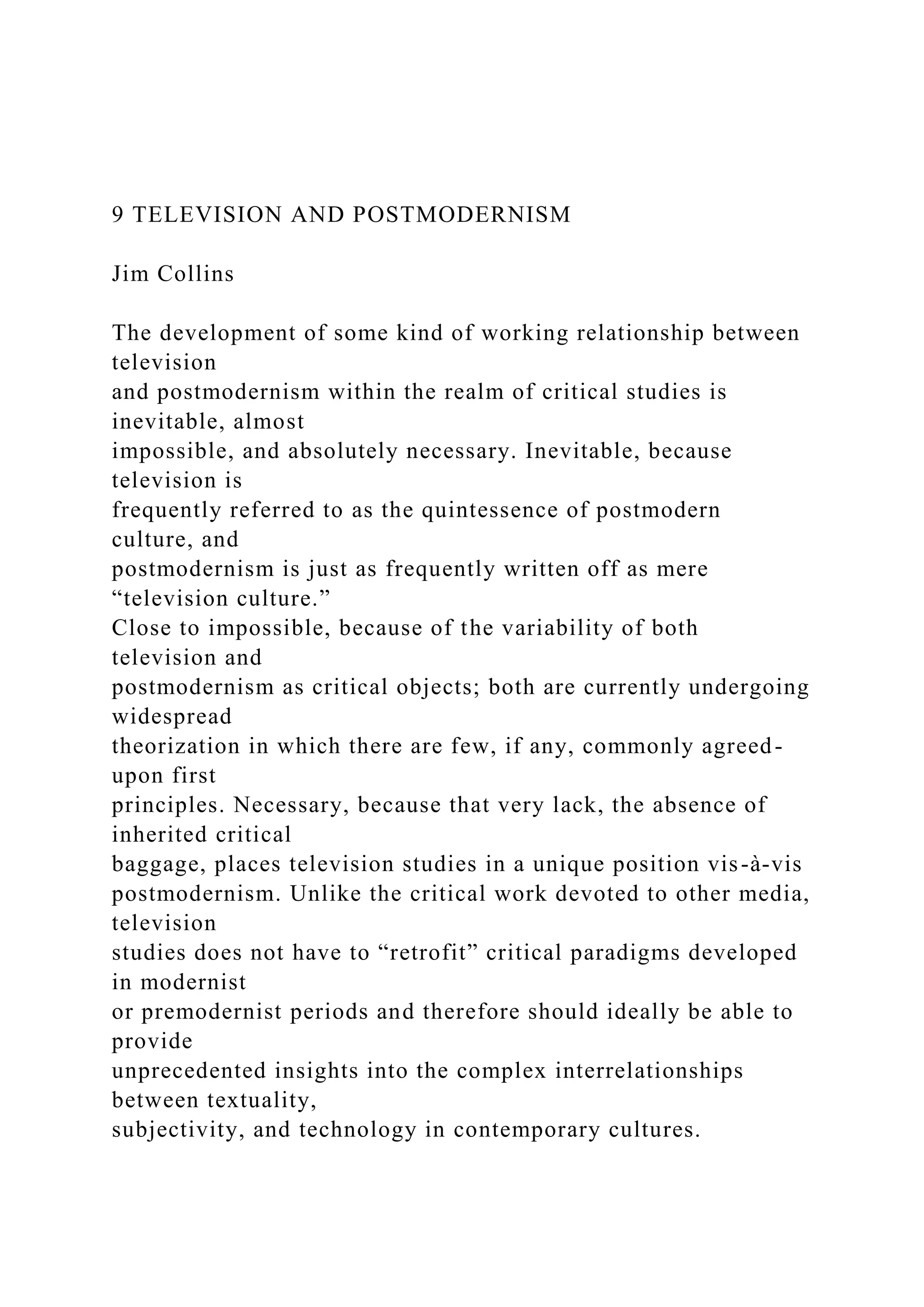
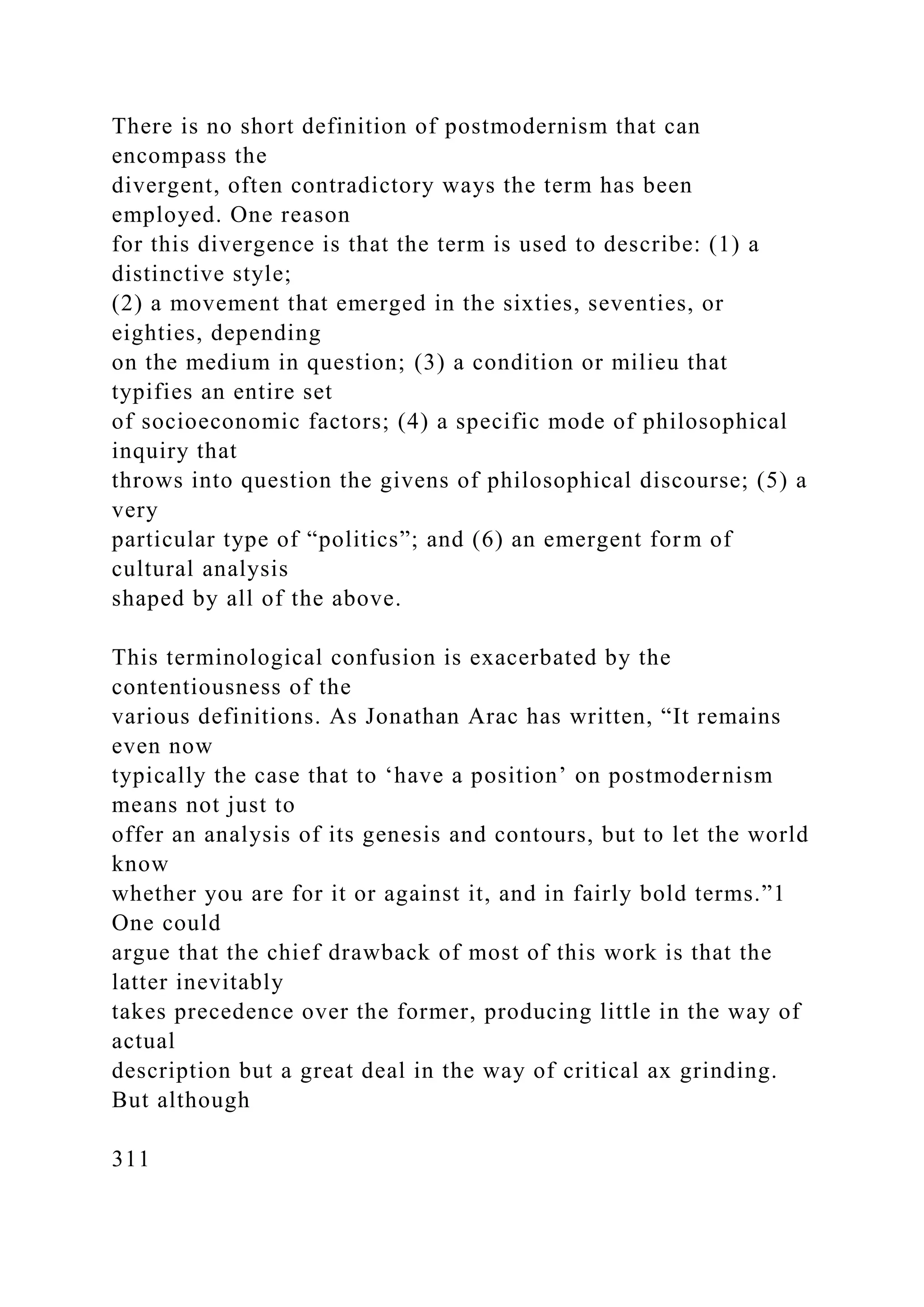
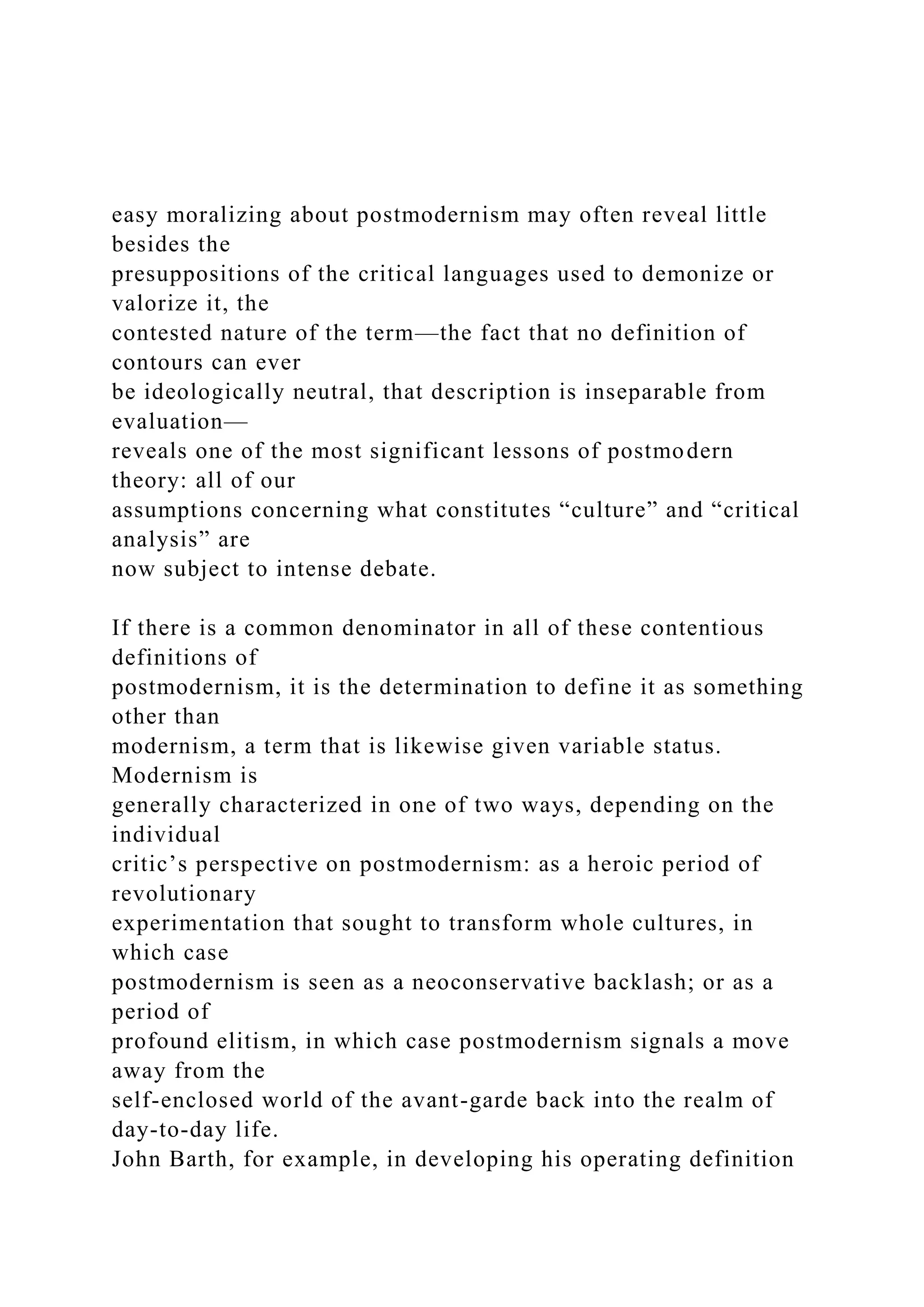
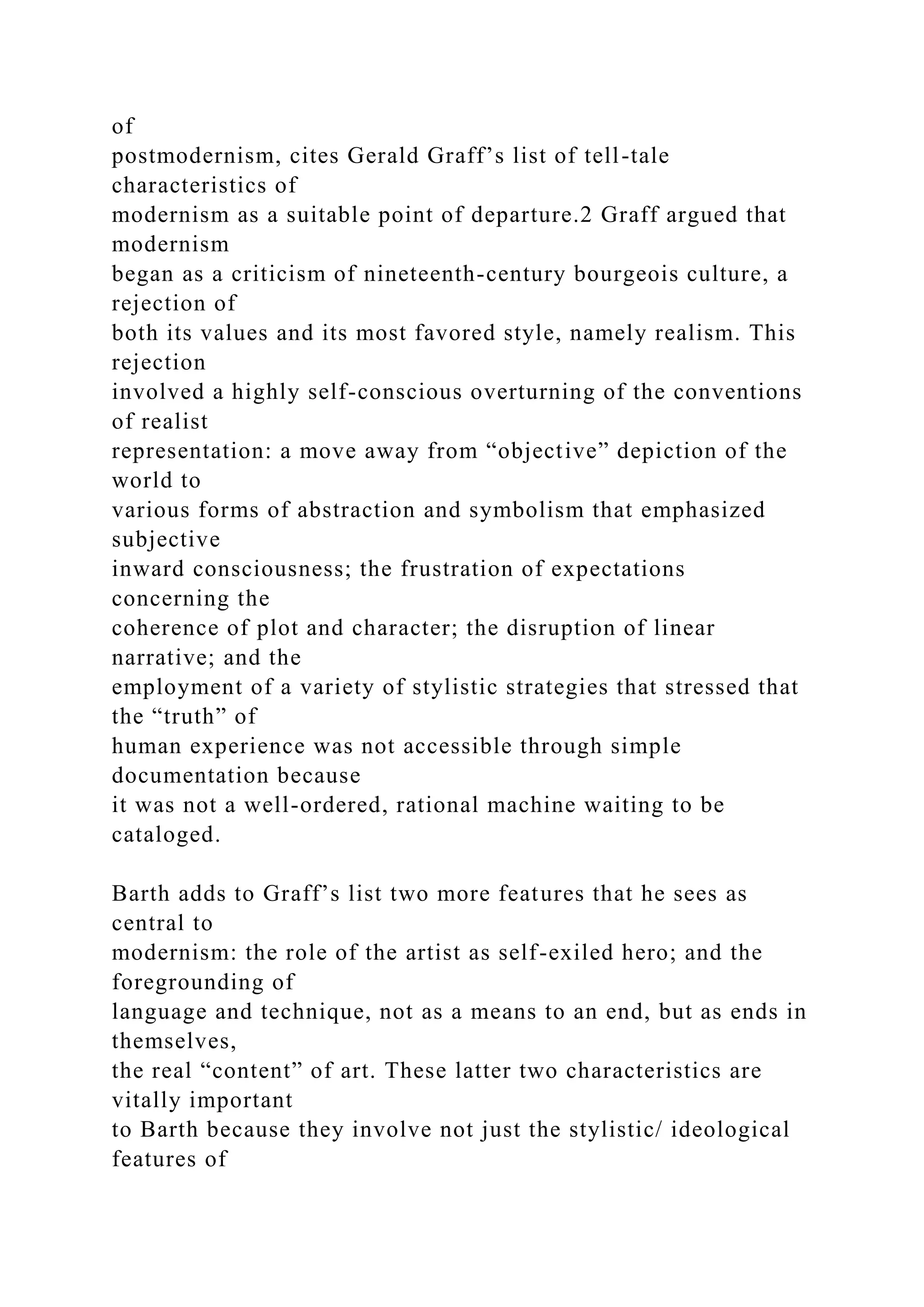
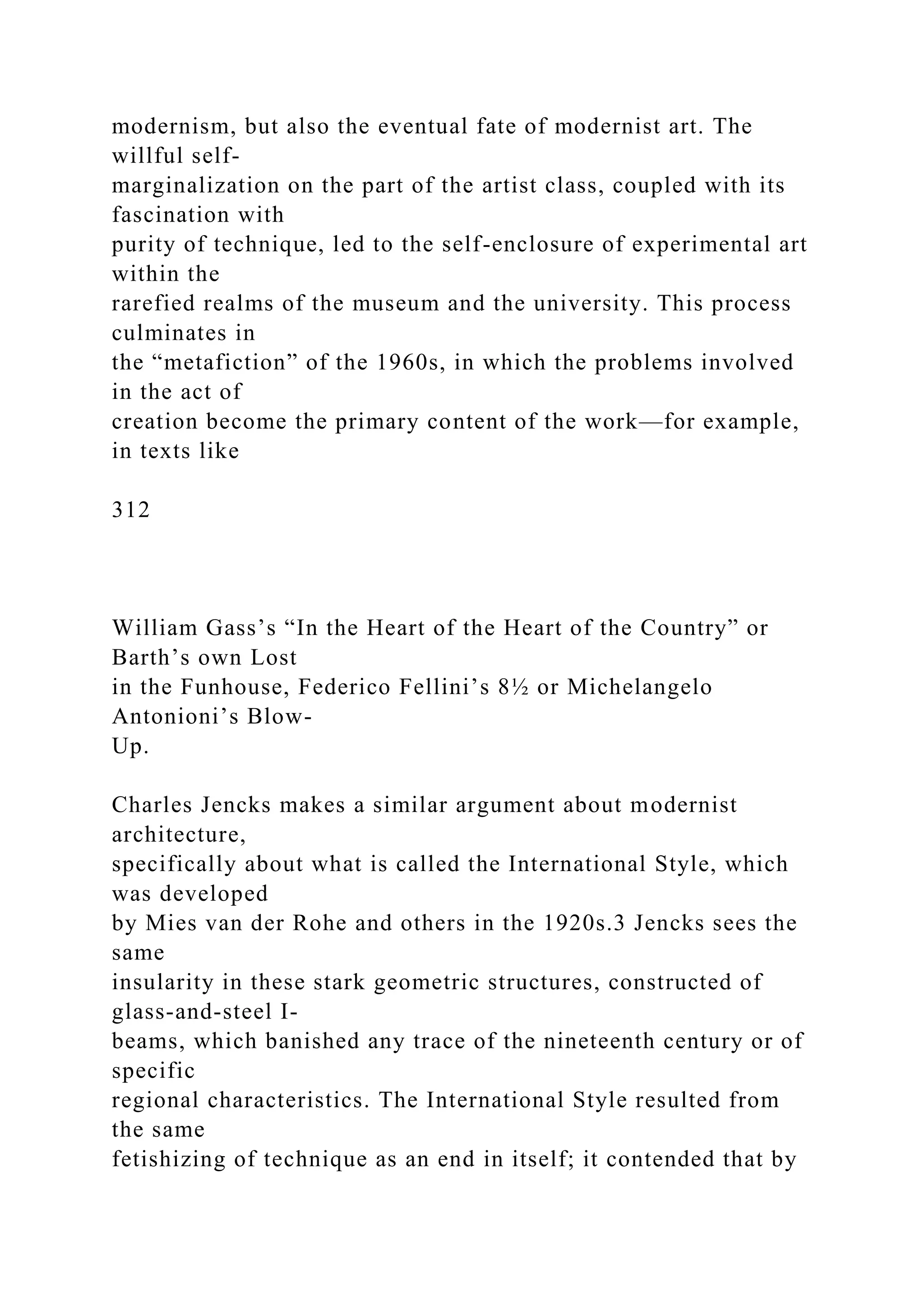

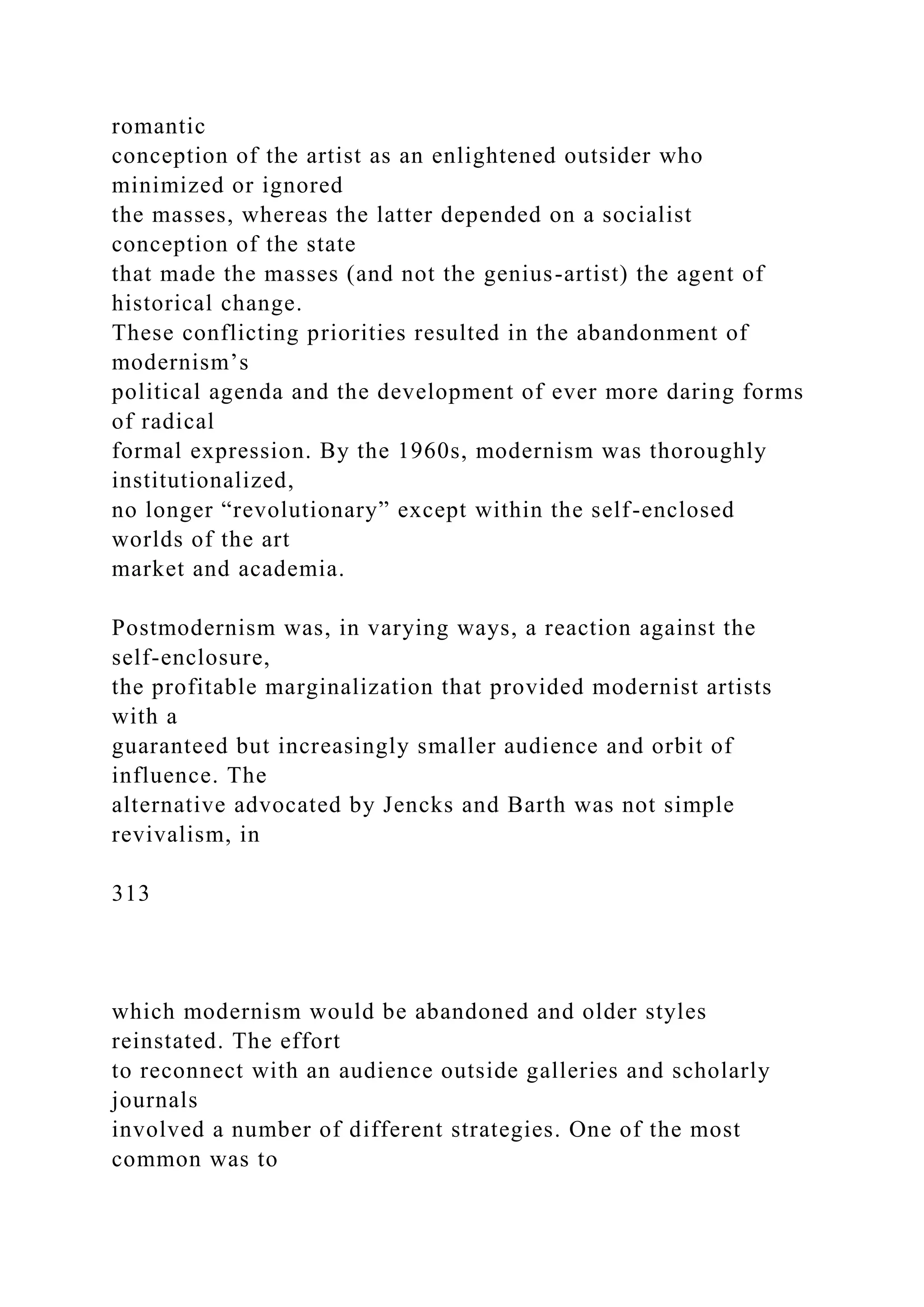
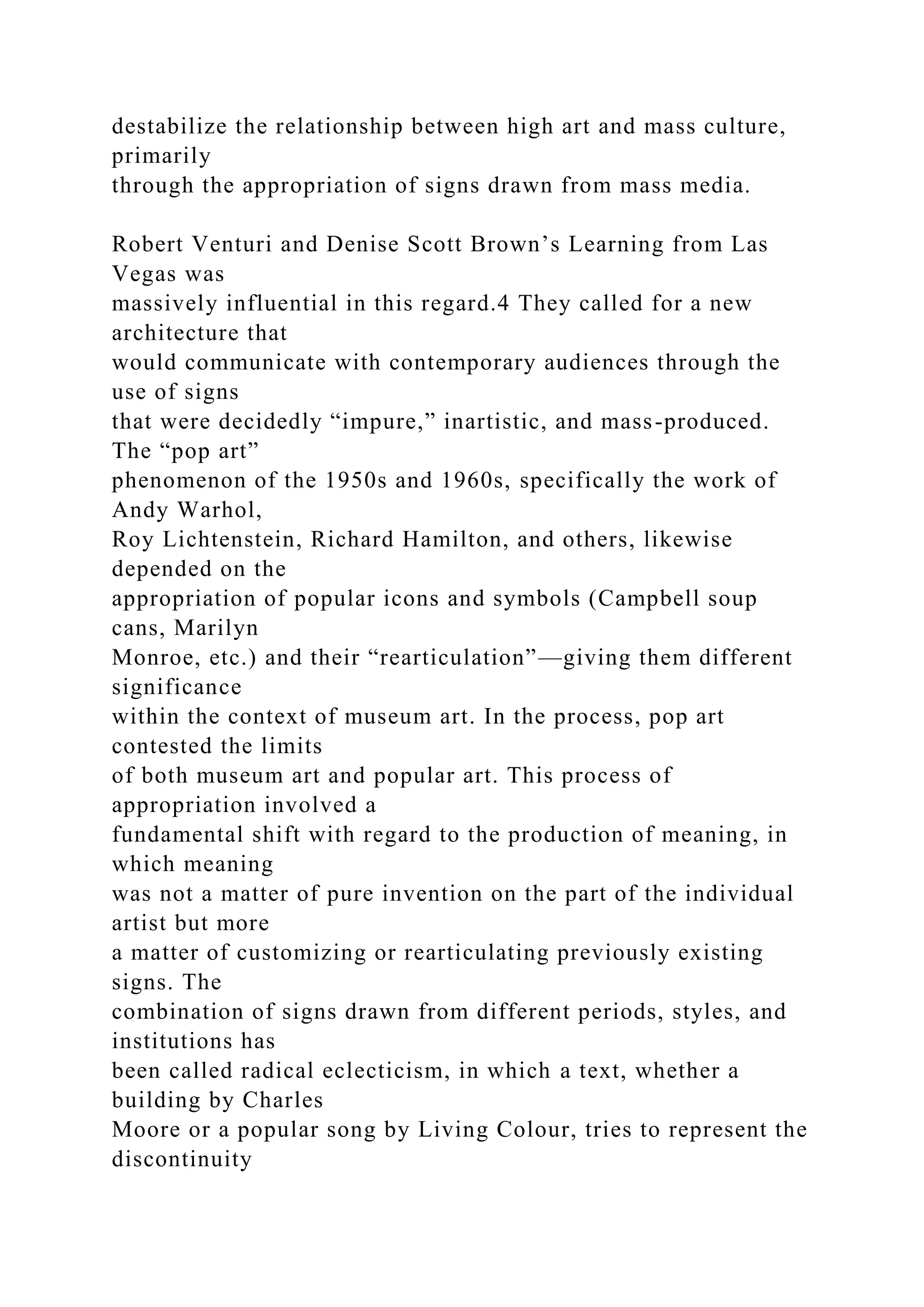
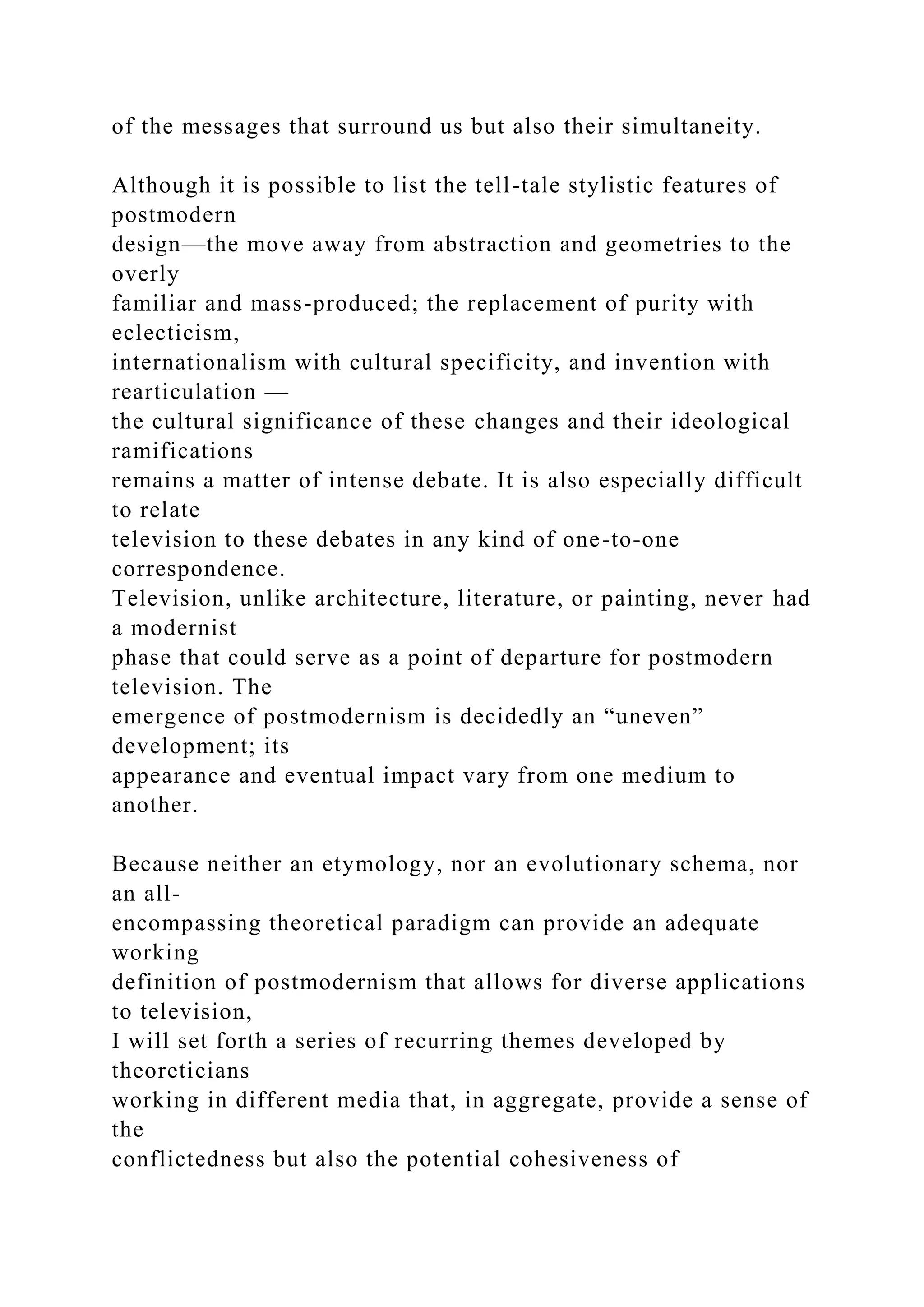

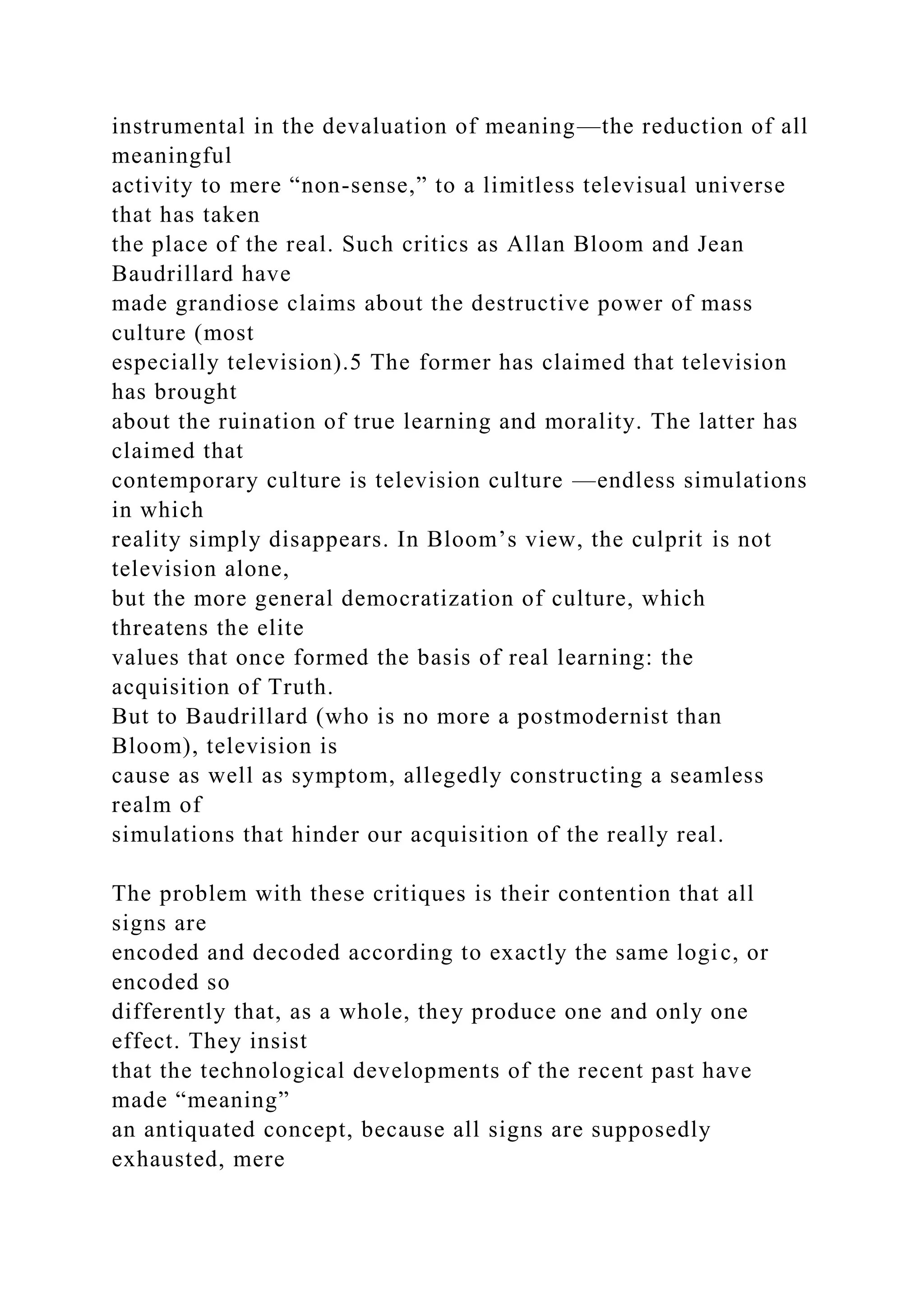
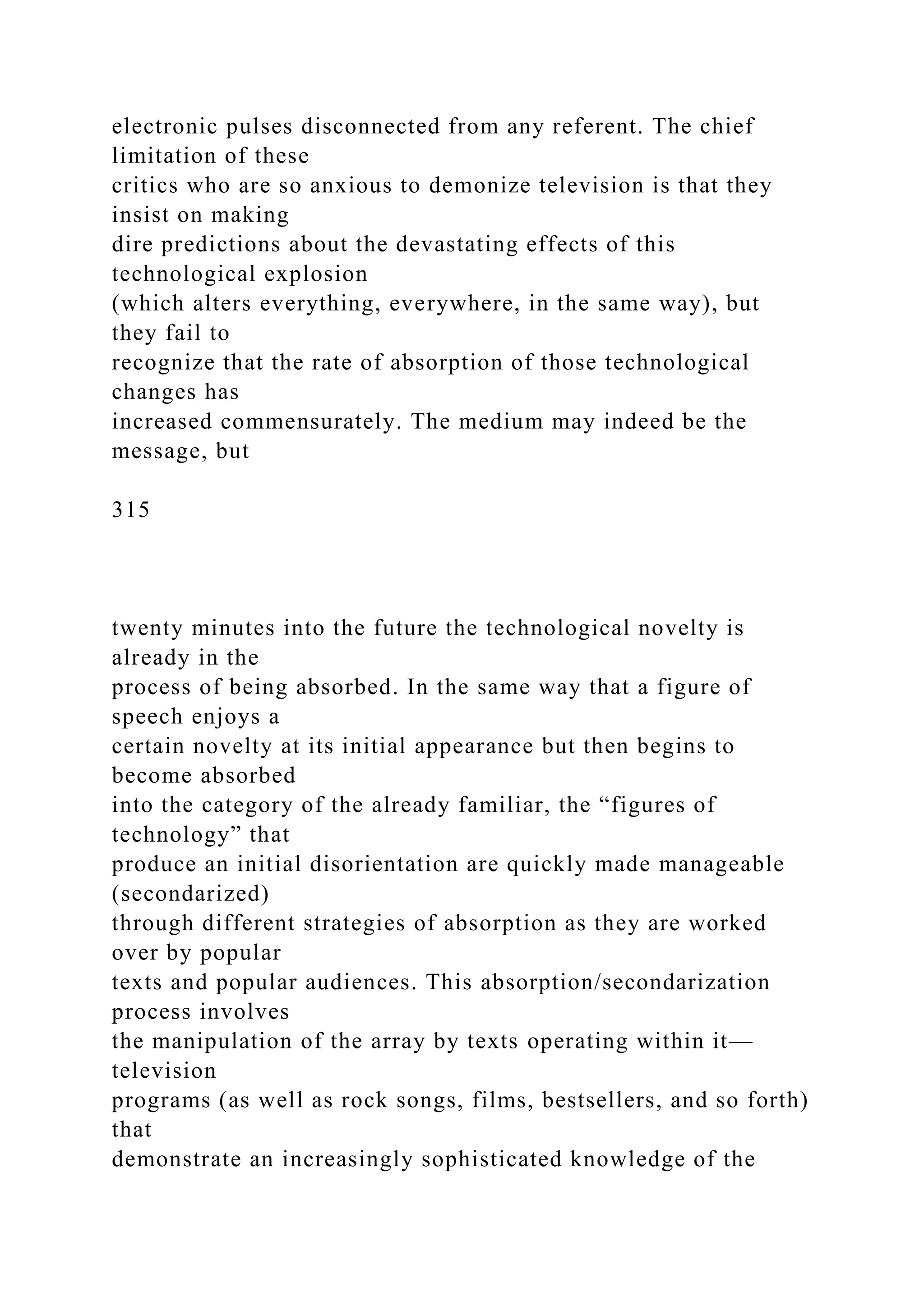
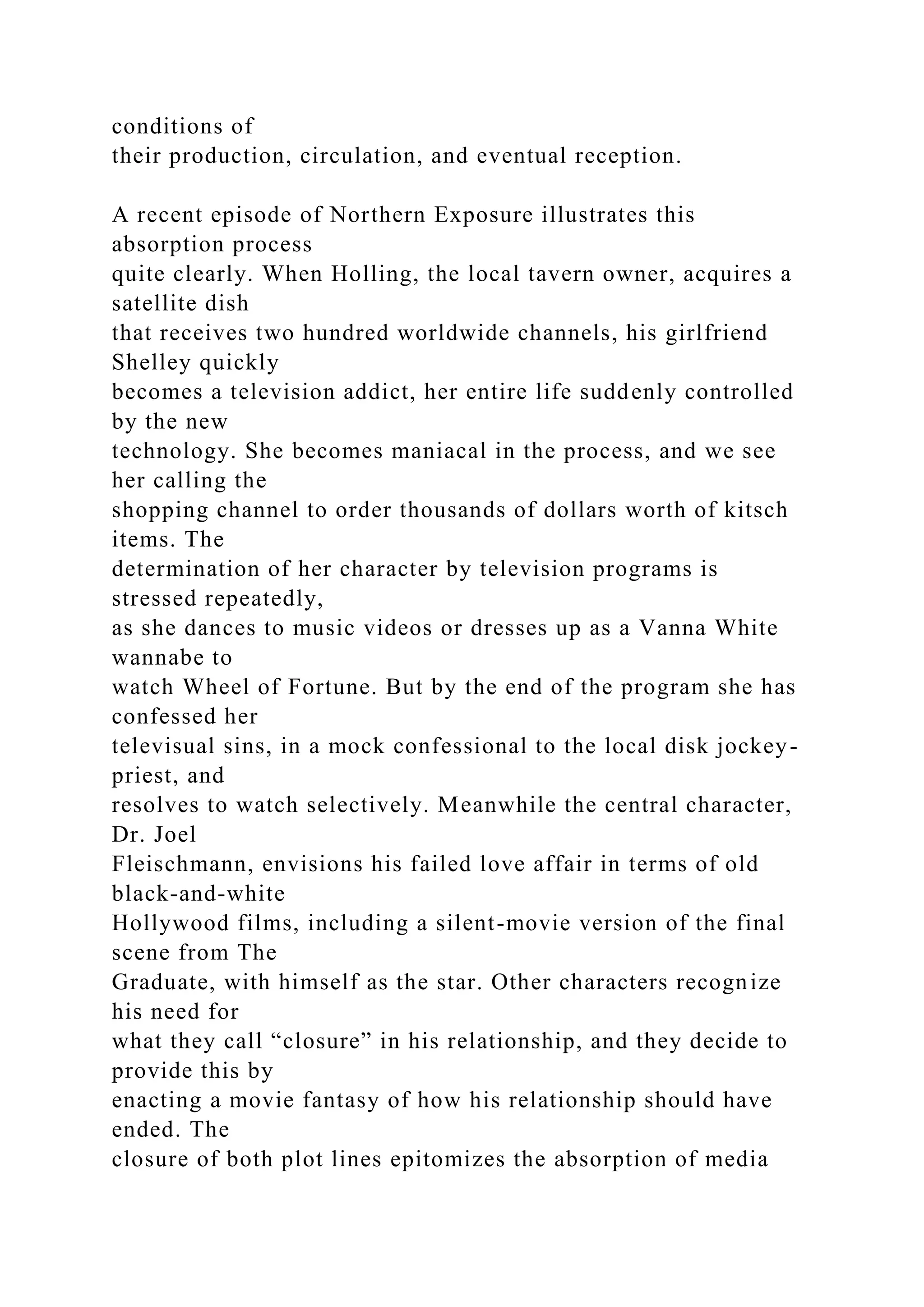

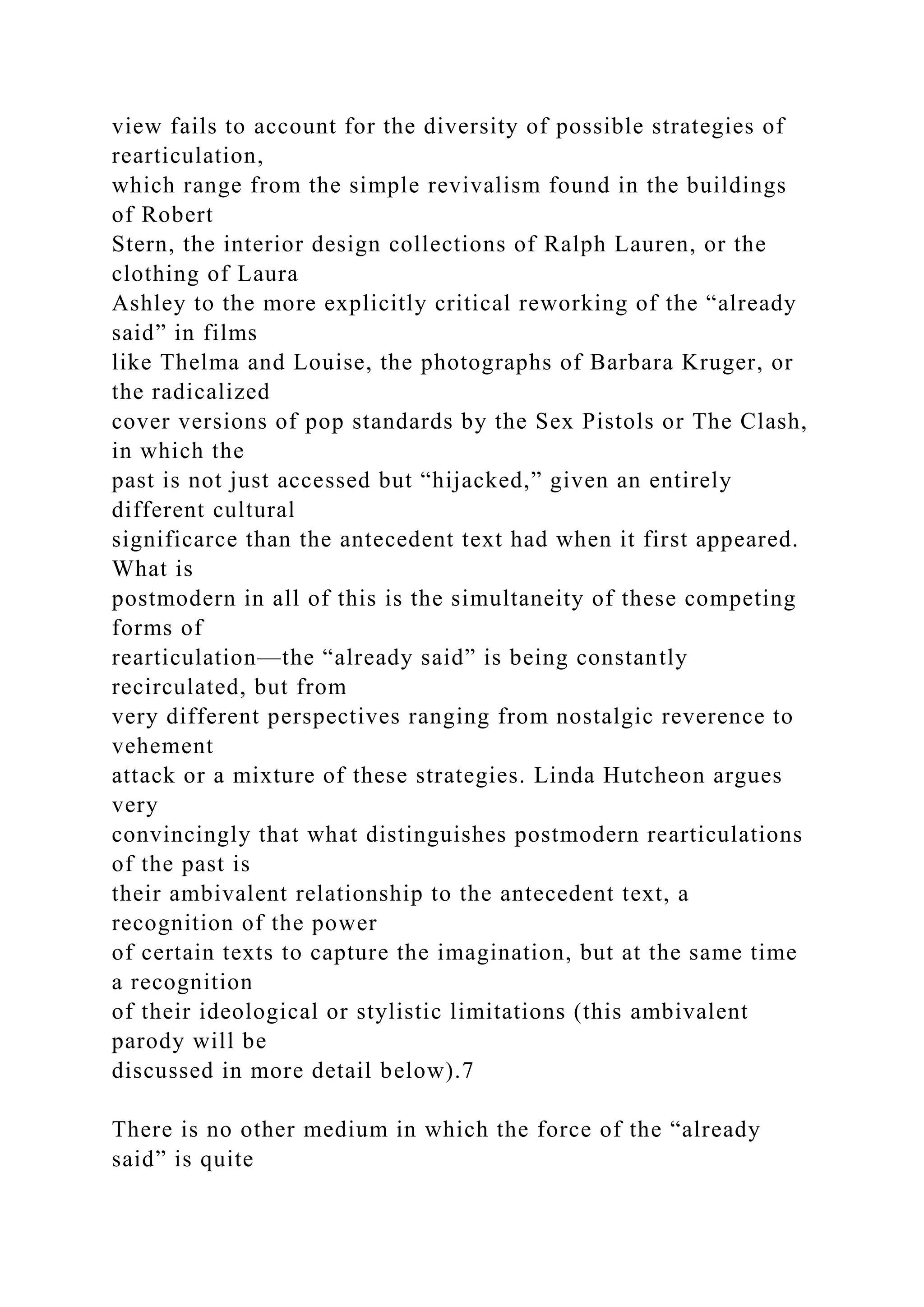
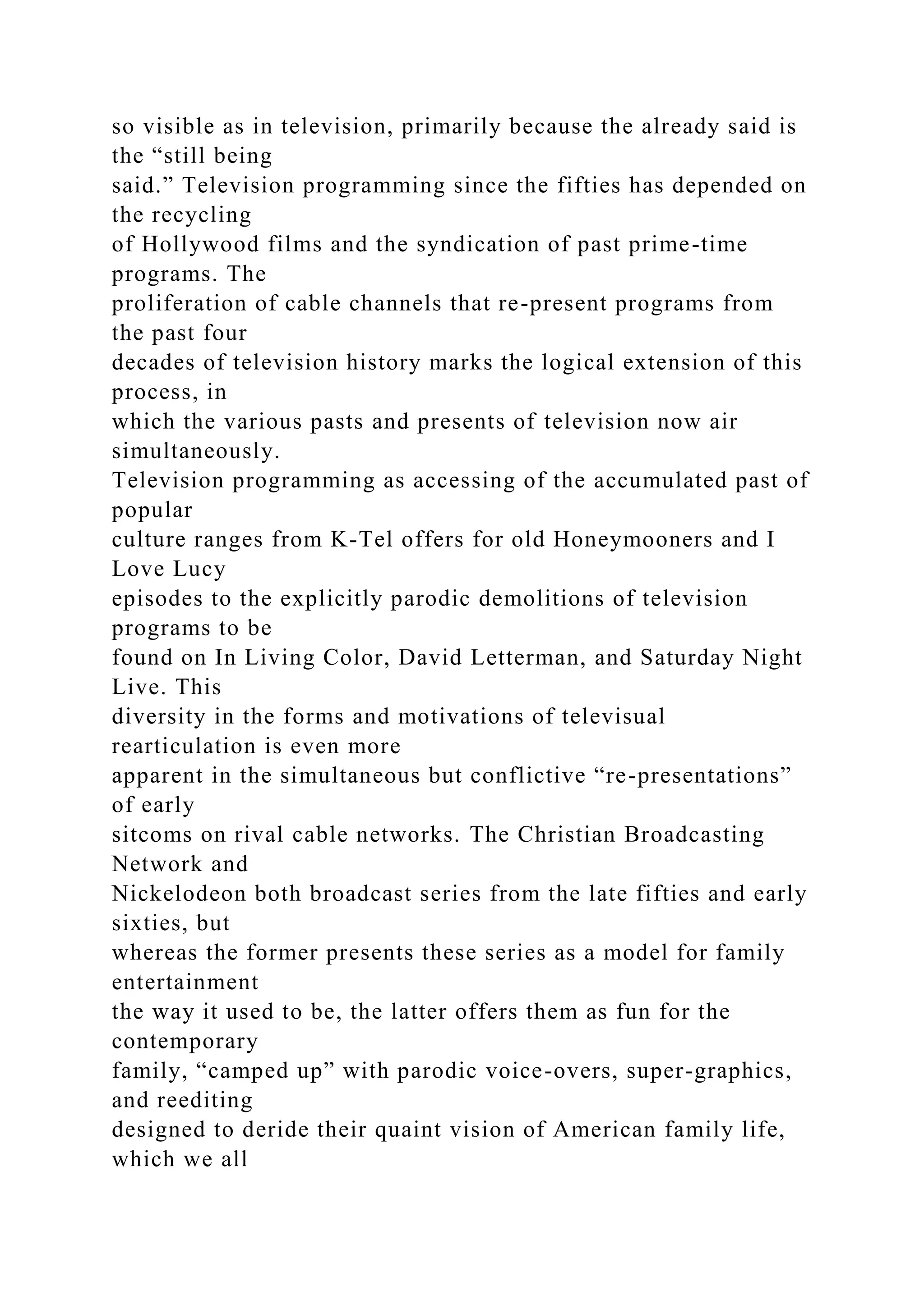
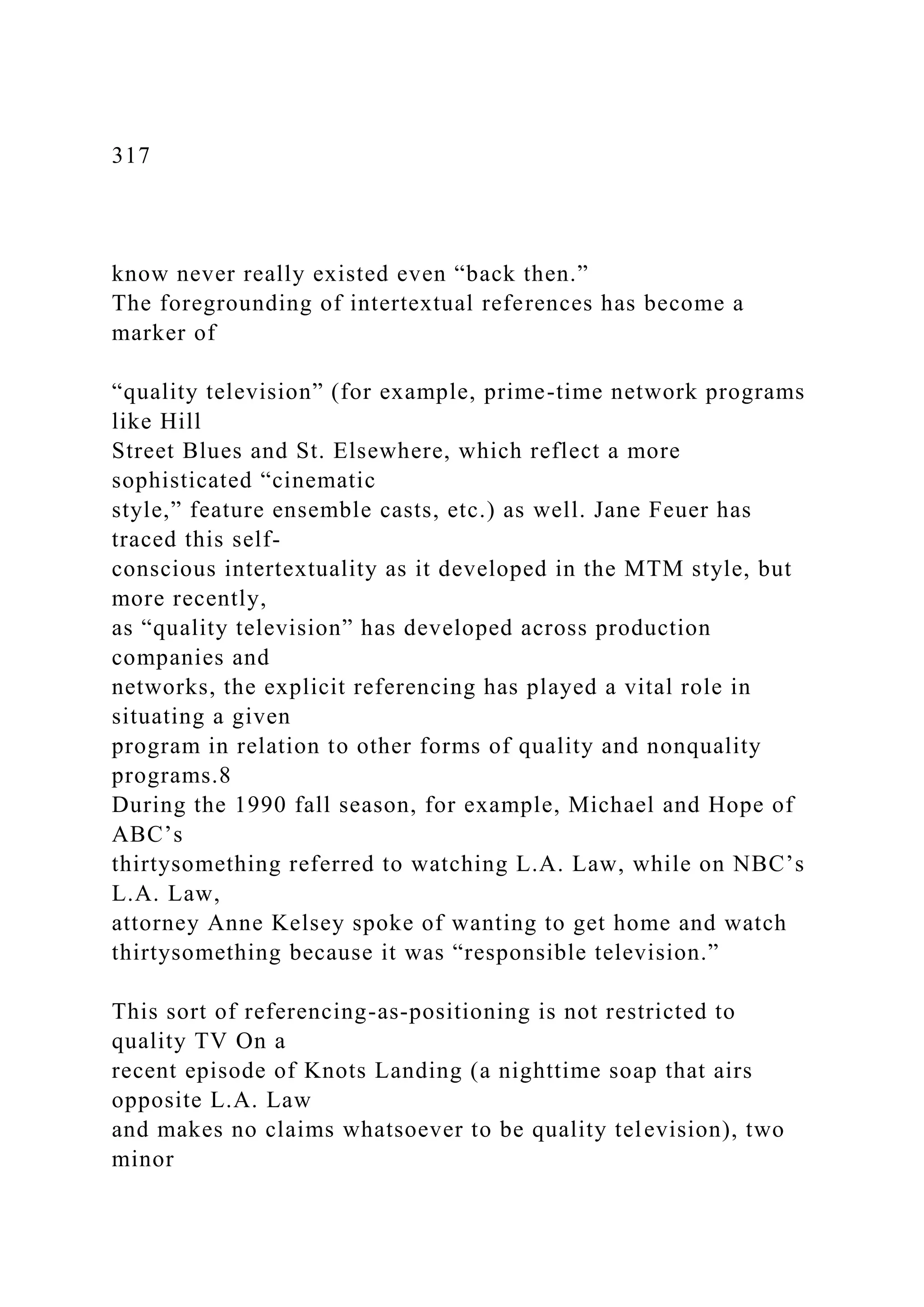
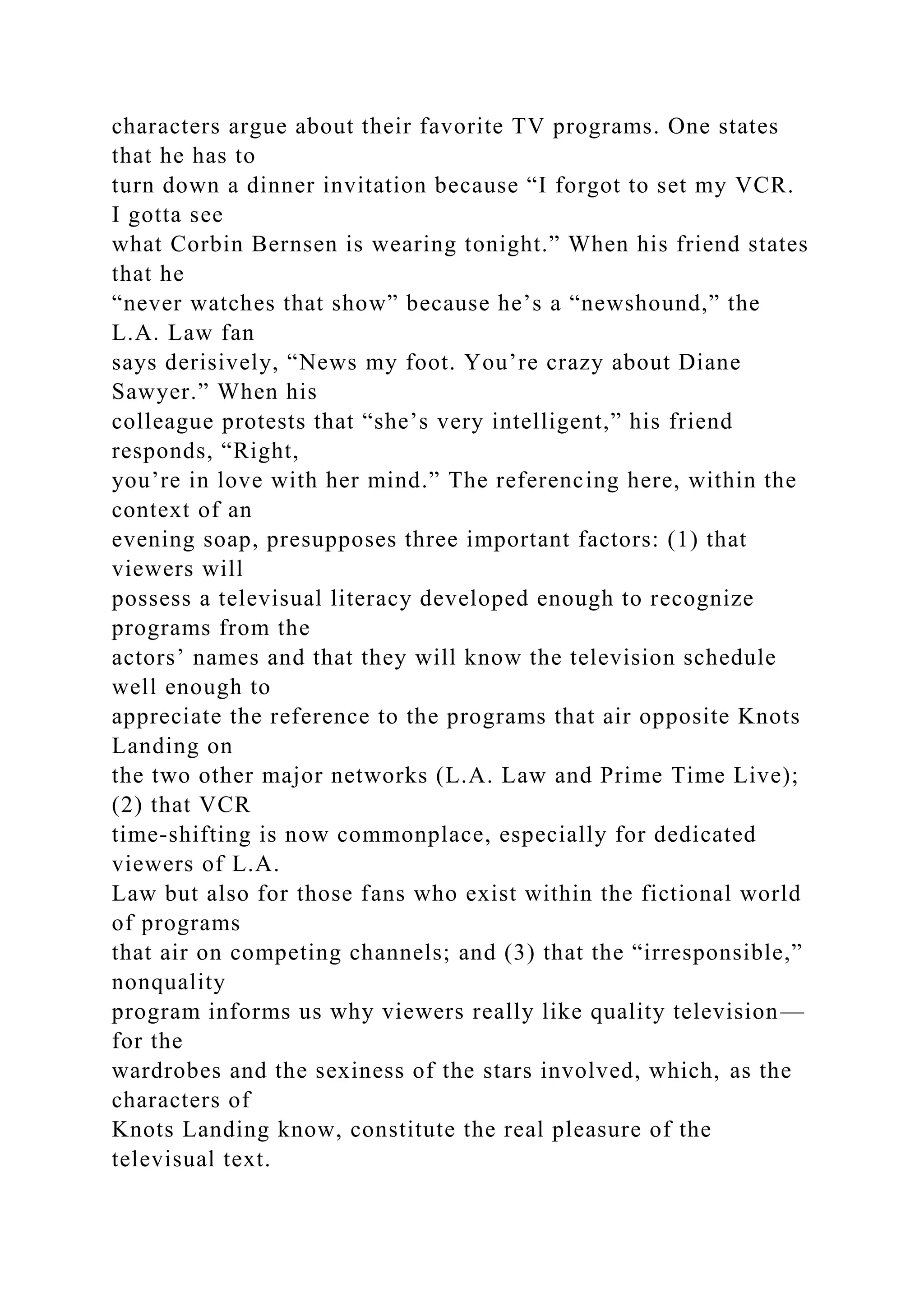
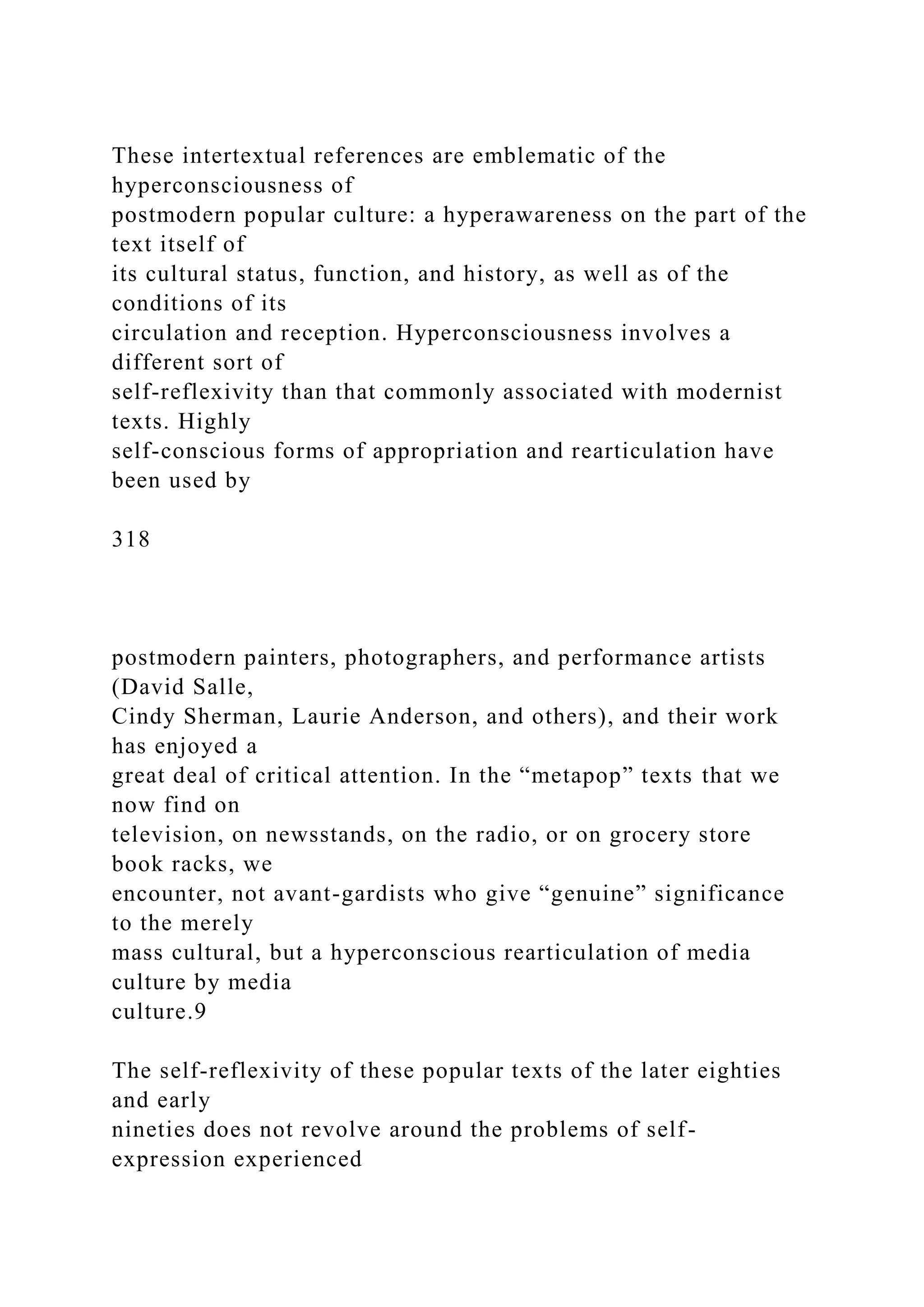
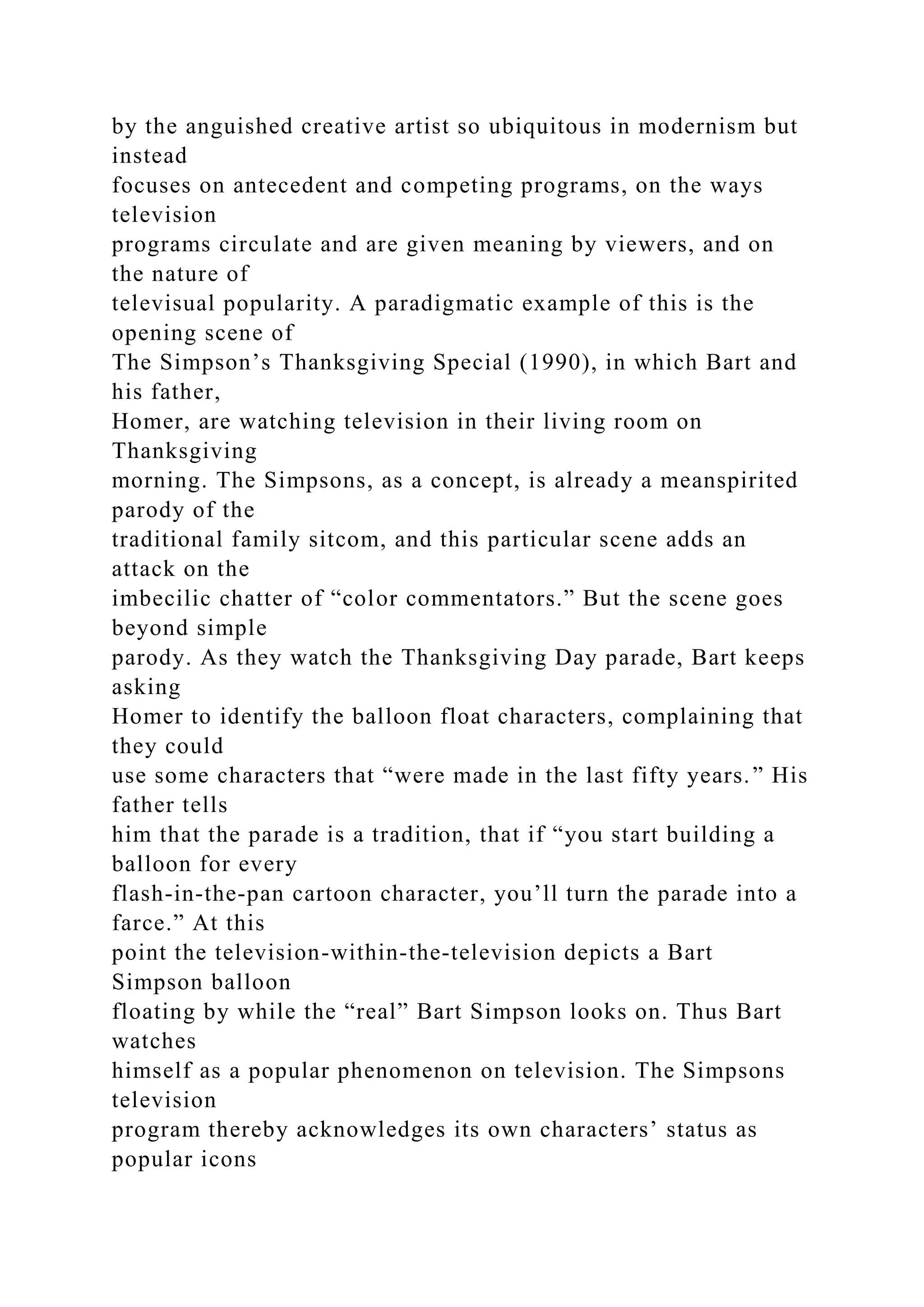
![whose circulation and reception are worked back into the “text”
itself.
Subjectivity, Bricolage, and Eclecticism
The “Bart watches Bart” example may be emblematic of a
postmodern
textuality, but what are the effects of this hyperconscious irony
on television
viewers? Is its ultimate effect emancipatory, leading to a
recognition that
television’s representations are social constructions rather than
valueneutral
reflections of the “real” world? Or does this irony produce a
disempowering
apathy, in which no image is taken at all seriously? John
Caughie has
described this problem very effectively:
The argument, then, is that television produces the conditions of
an ironic
knowingness, at least as a possibility . . . [which] may offer a
way of thinking
319
subjectivity free of subjection. . . . Most of all, it opens identity
to diversity,
and escapes the notion of cultural identity as a fixed volume. . .
. But if it does
all this, it does not do it in that Utopia of guaranteed resistance
which assumes
the progressiveness of naturally oppositional readers who will
get it right in](https://image.slidesharecdn.com/channelsofdiscoursereassembled2channelsof-221018173716-6fc0655a/75/Channels-of-Discourse-Reassembled2Channels-of-docx-717-2048.jpg)
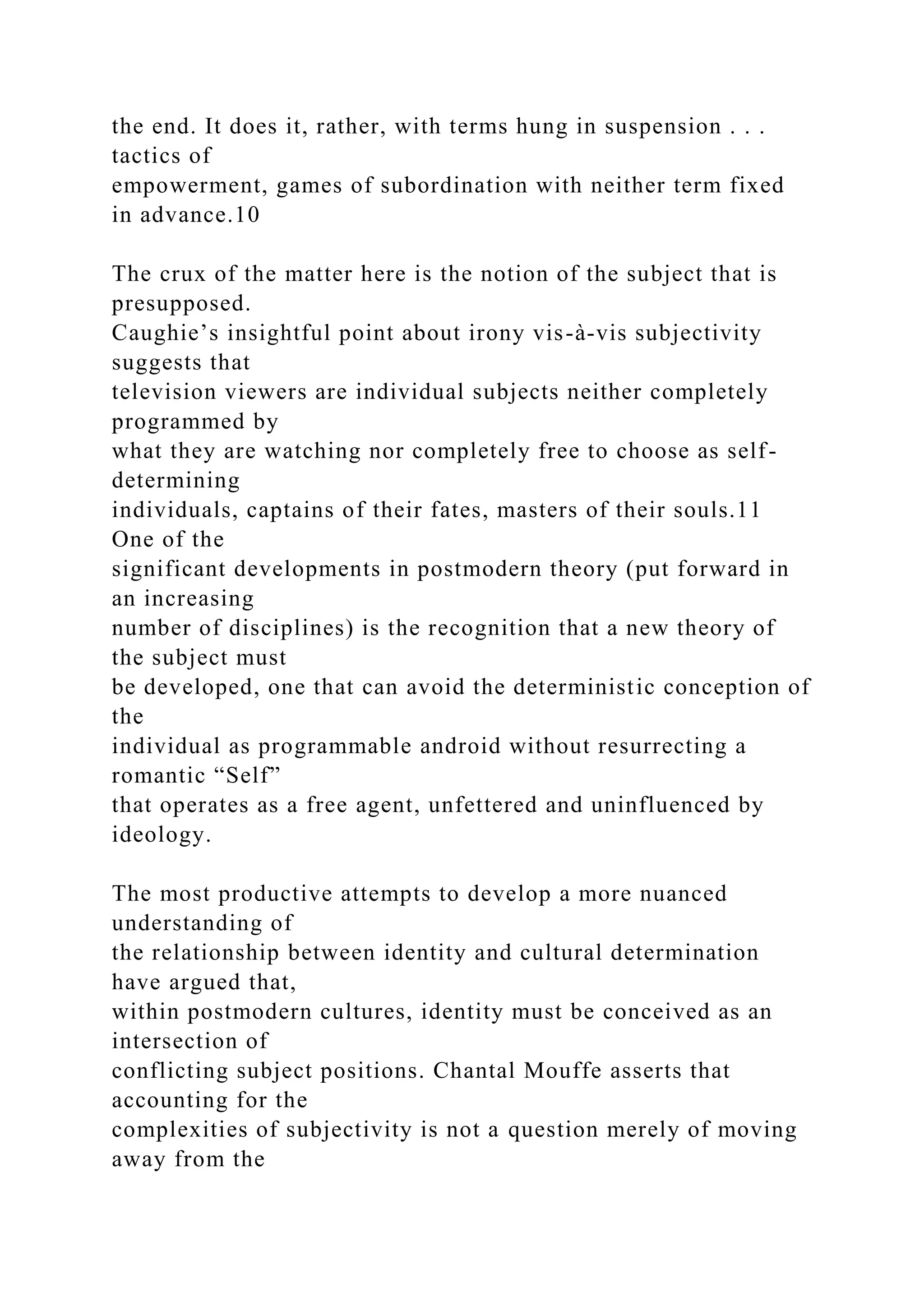
![notion of a unitary “free” self to a unitary determined self, but
rather “the
problem is the very idea of the unitary subject. . . . [W]e are in
fact always
multiple and contradictory subjects, inhabitants of a diversity of
communities
. . . constructed by a variety of discourses and precariously and
temporarily
sutured at the intersection of those subject positions.”12 The
emergence within
the past decade of “antiessentialist” or postmodern feminism
has played a key
role in these debates. Linda Nicholson and Nancy Fraser argue
that
“postmodern feminist theory would dispense with the idea of
the subject of
history. It would replace unitary notions of ‘women’ and
‘feminine gender
identity’ with plural and complexly constructed conceptions of
social identity,
treating gender as one relevant strand among others, attending
also to class,
race, ethnicity, age and sexual orientation.”13
The concept of the postmodern subject as multiple and
contradictory, acted
upon but also acting upon, has also led to reconsideration of the
“effects” that
popular culture, most especially television, has on its viewers.
The
hypodermic model of media effects (in which mass media
allegedly “injects”
values directly into passive viewers) has been challenged by
John Fiske, Ien
Ang, and others who share a cultural studies perspective.14
Many of them use](https://image.slidesharecdn.com/channelsofdiscoursereassembled2channelsof-221018173716-6fc0655a/75/Channels-of-Discourse-Reassembled2Channels-of-docx-719-2048.jpg)
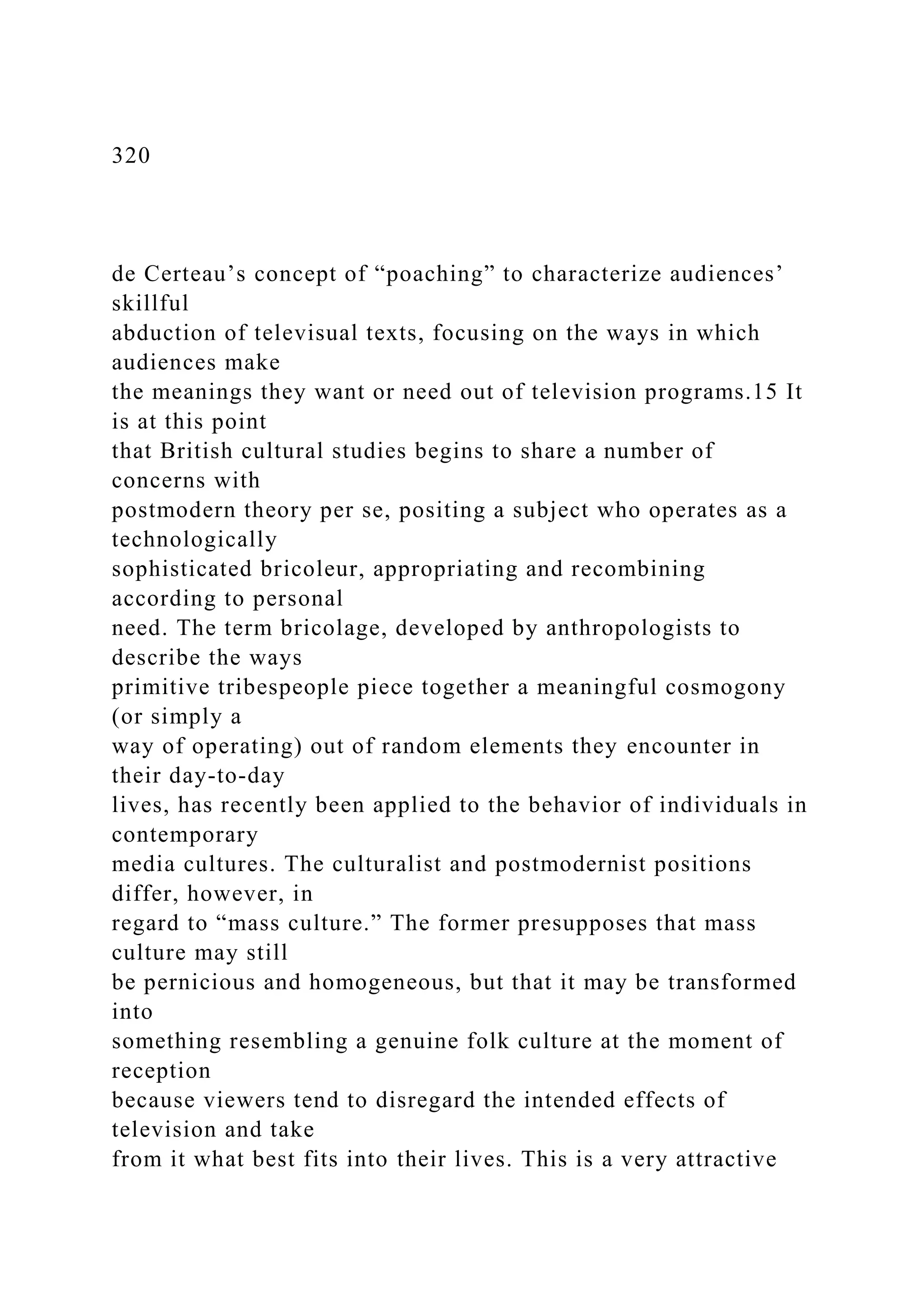

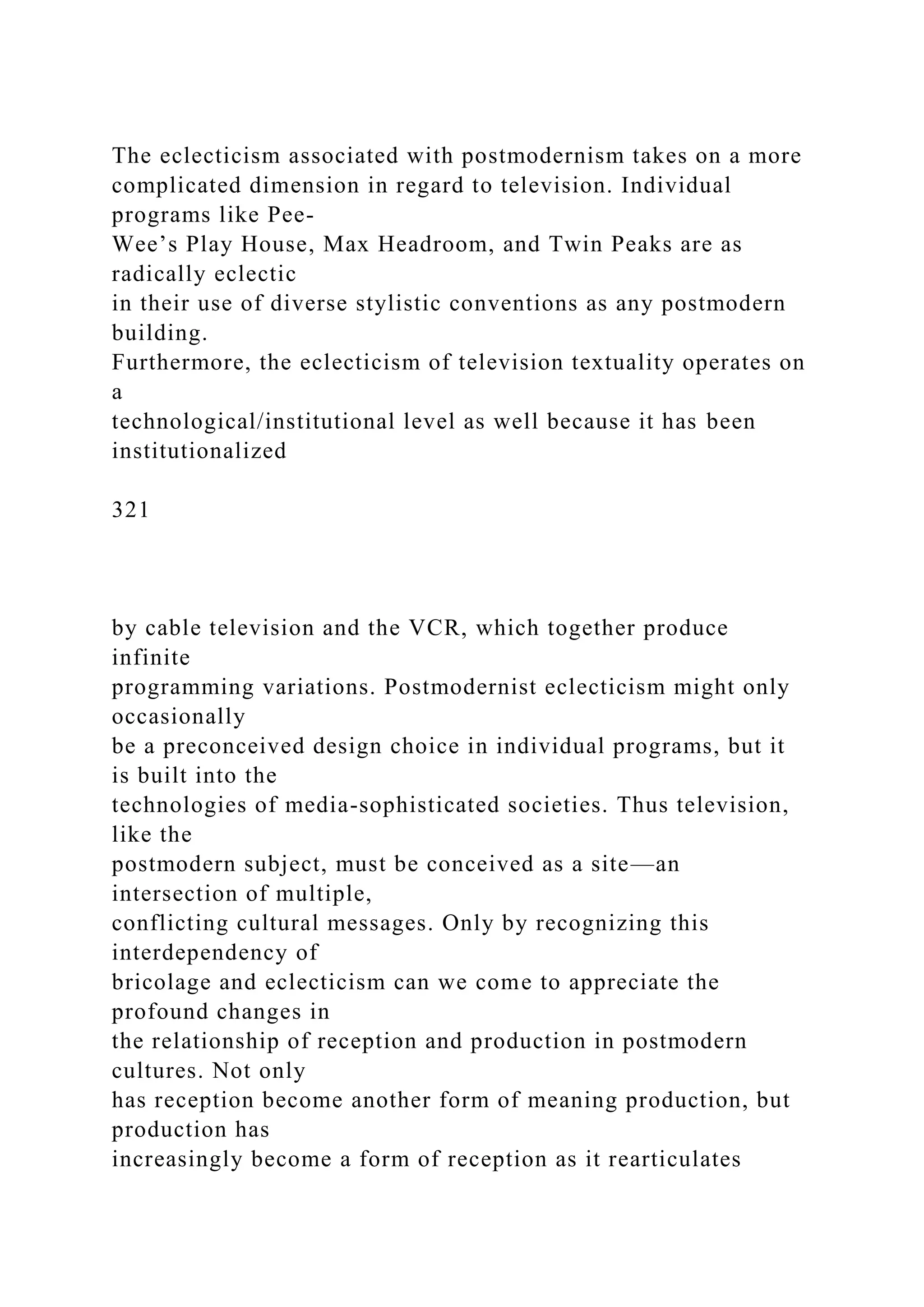
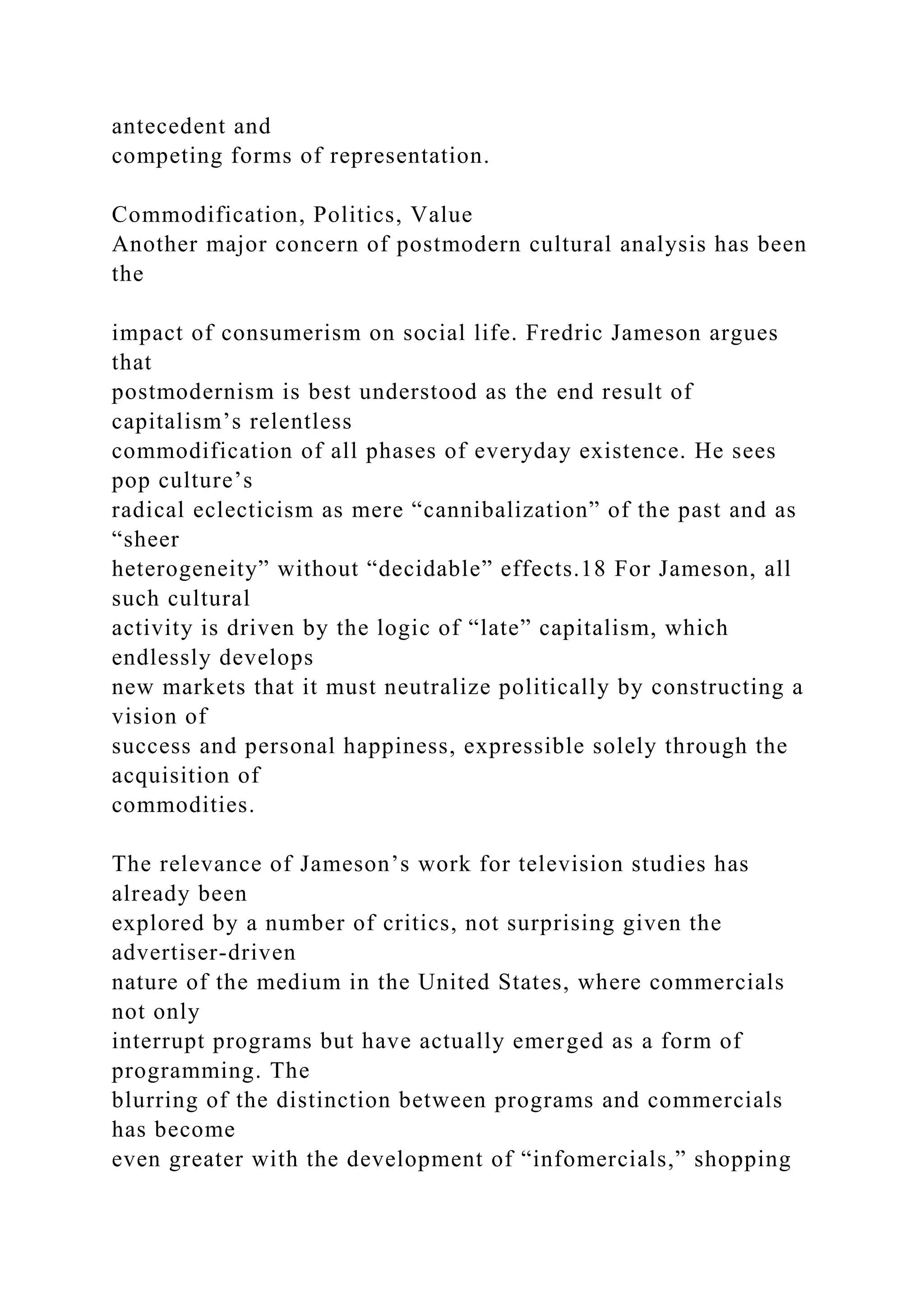
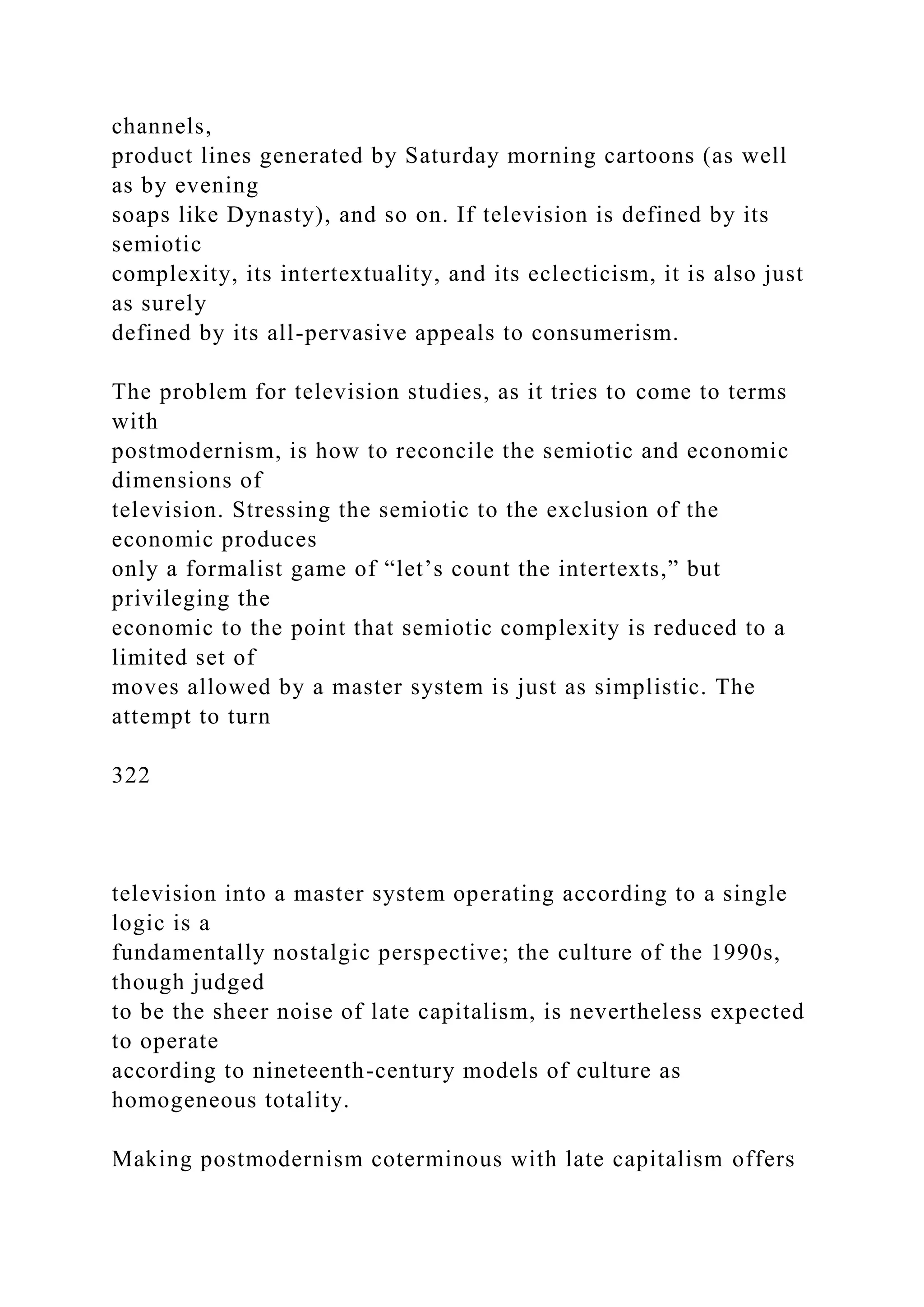
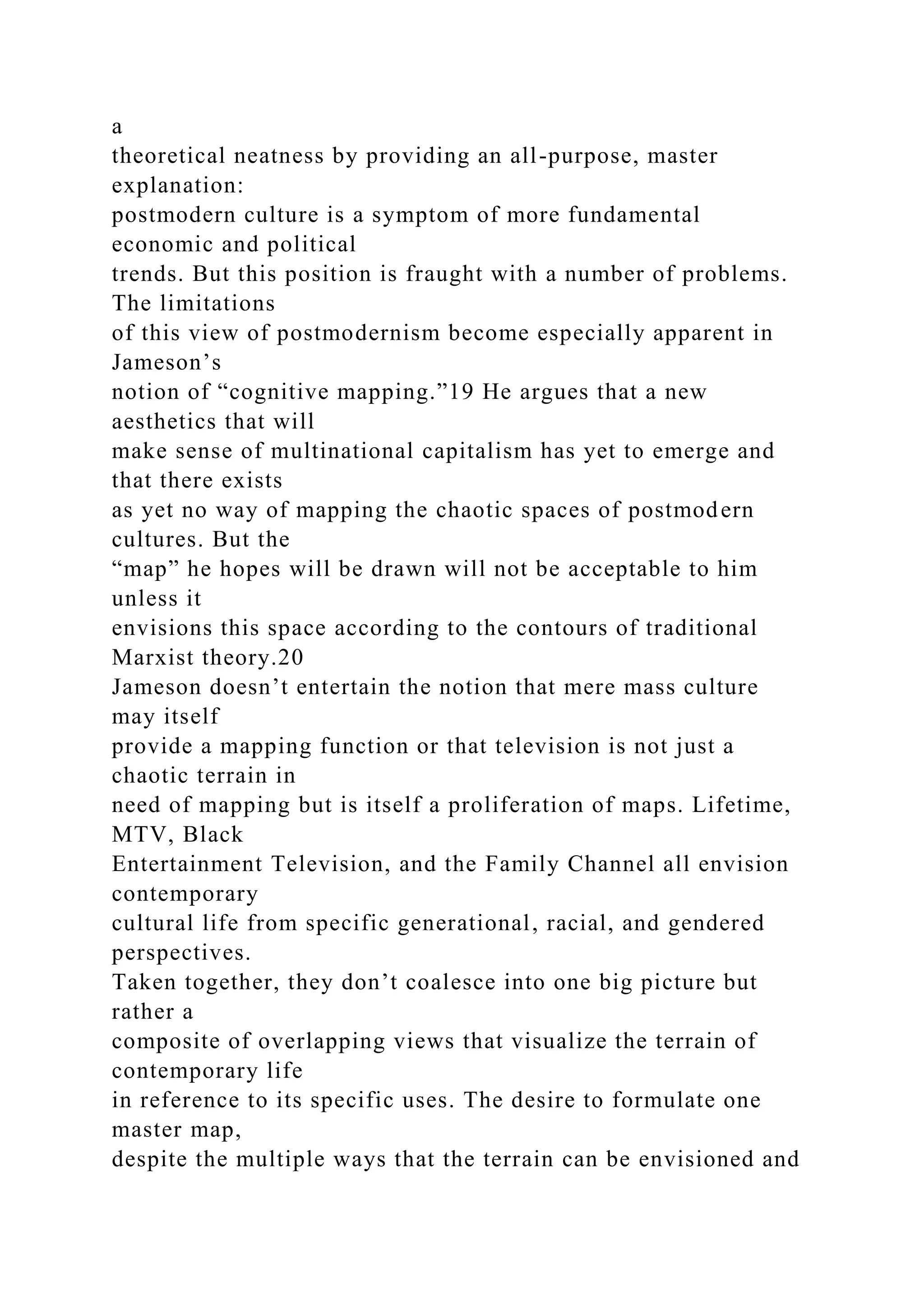

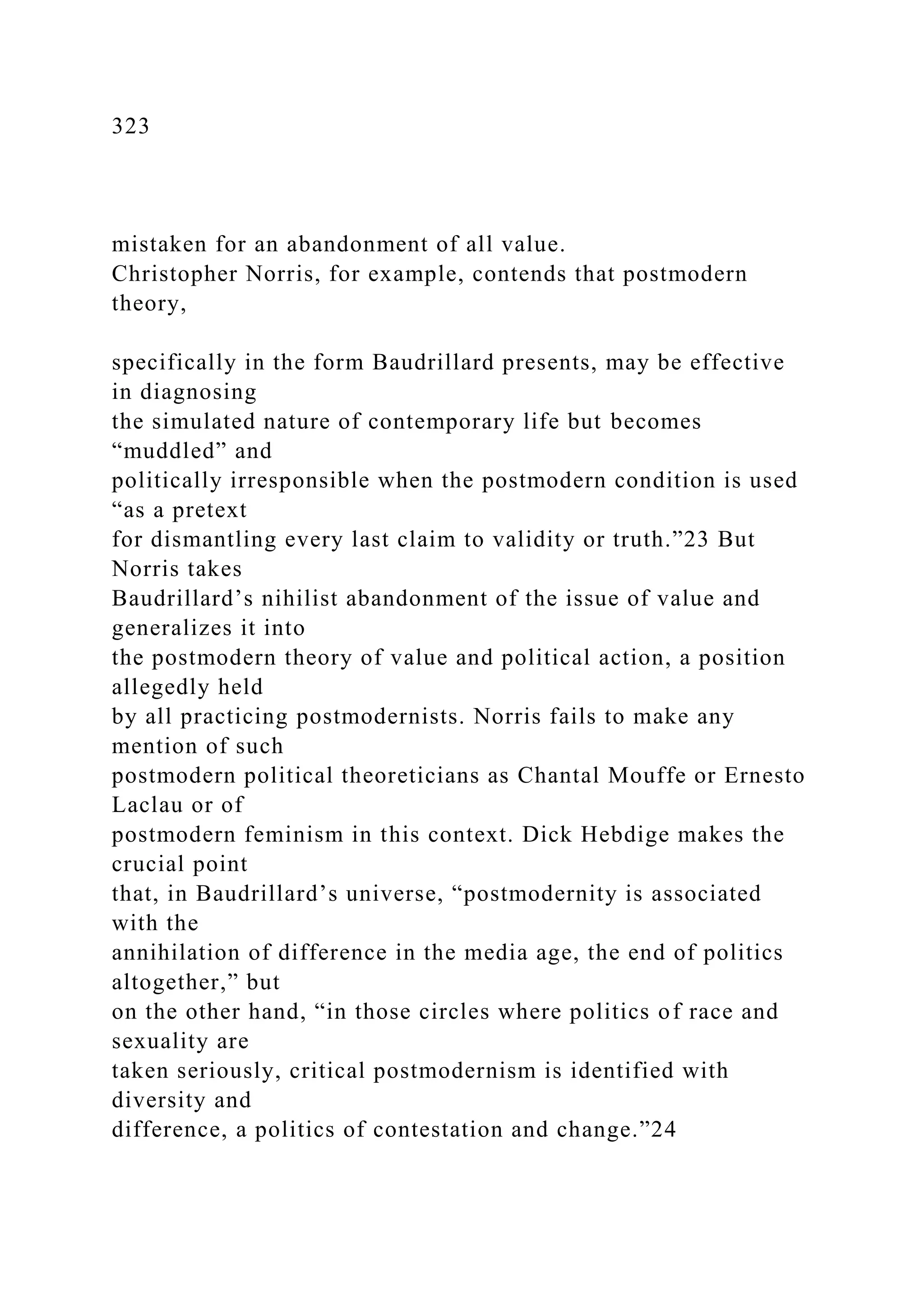


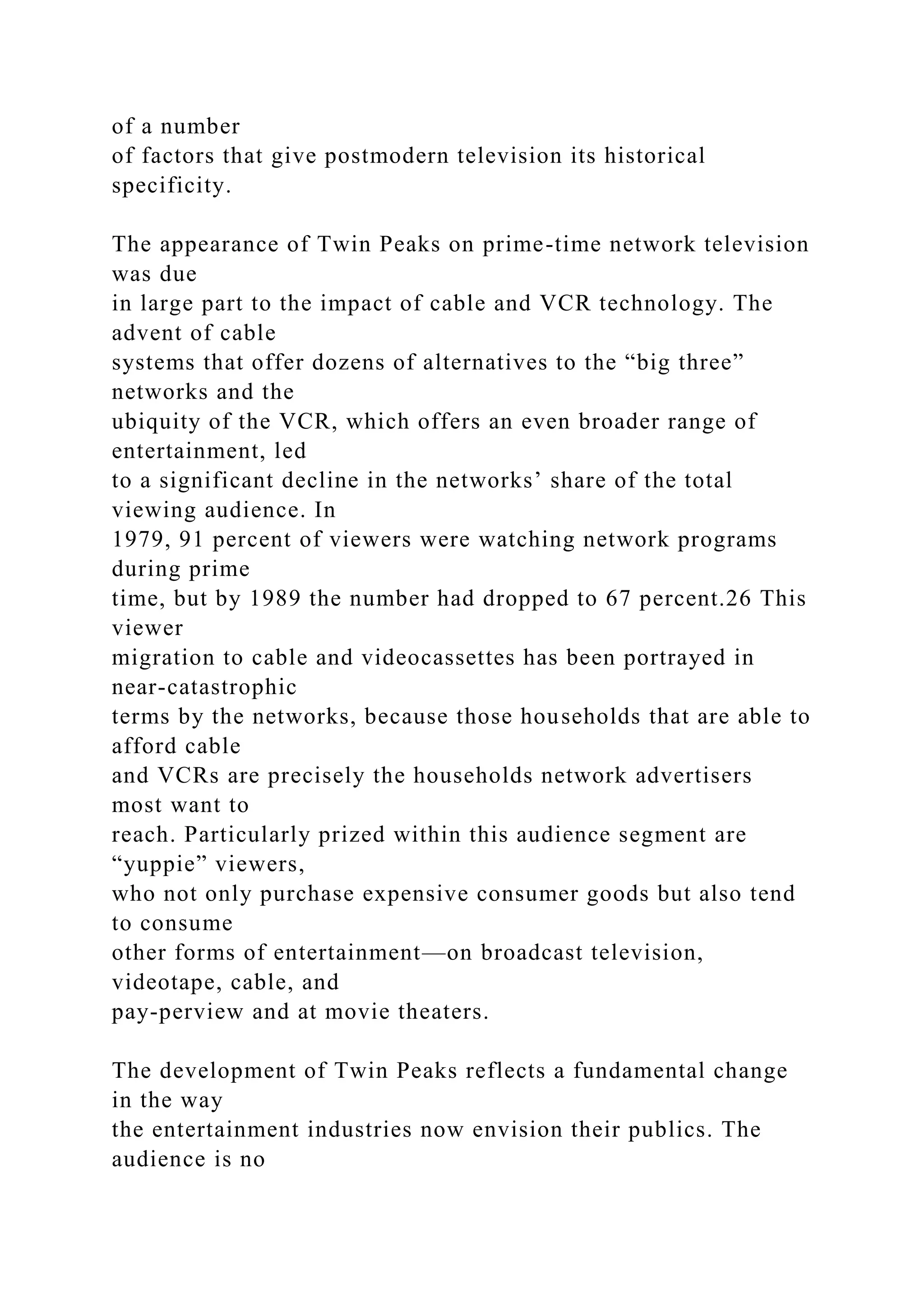
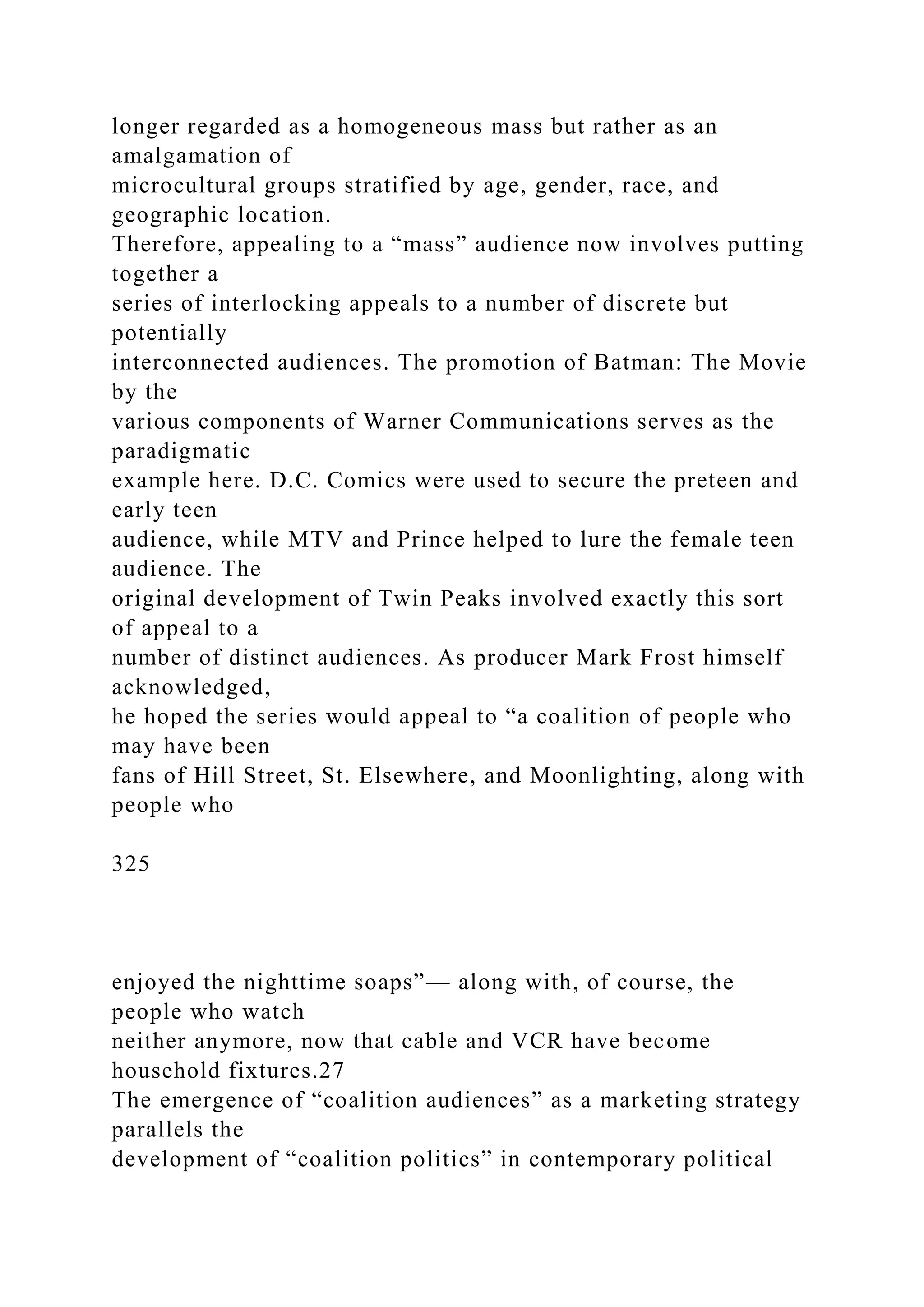
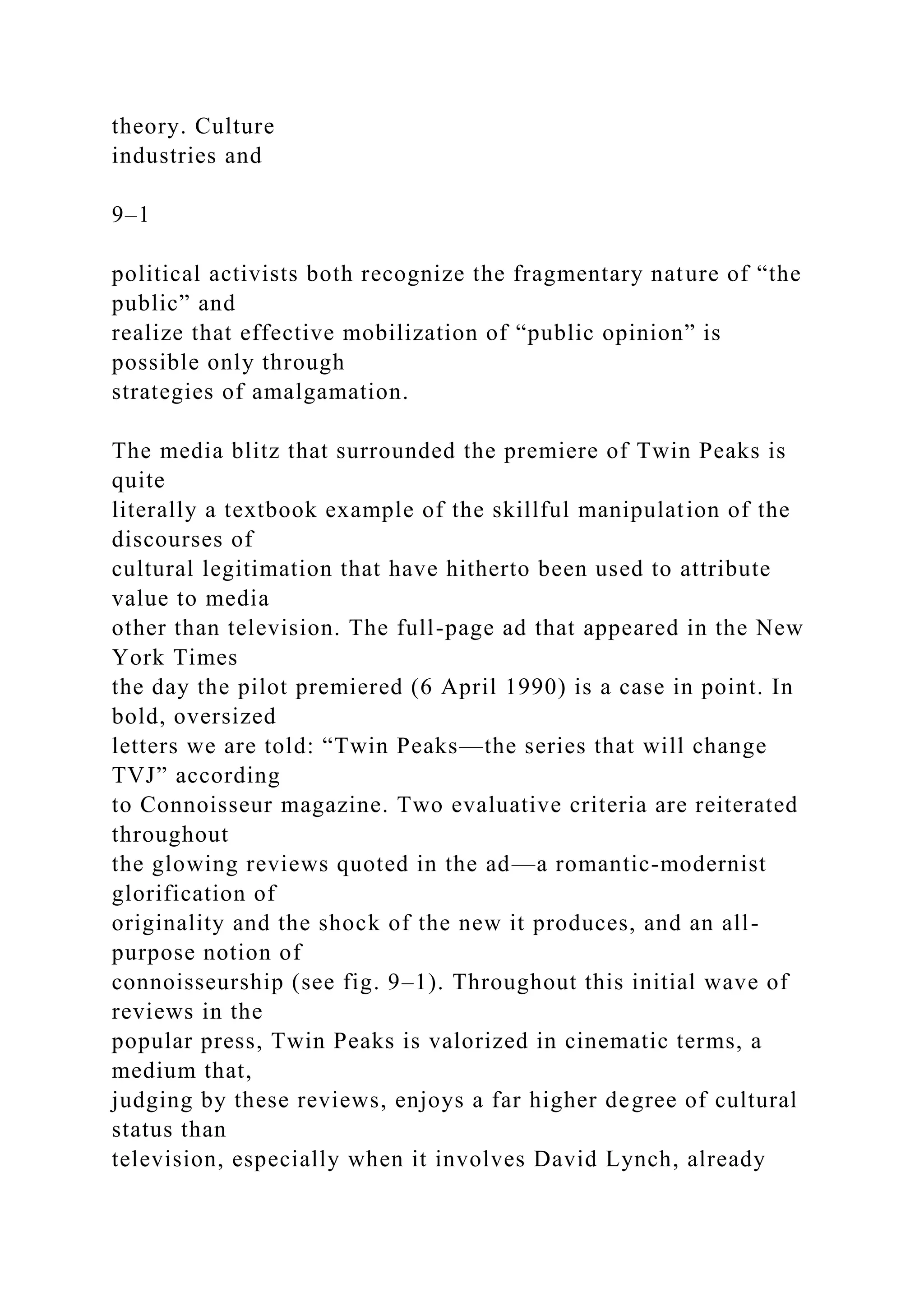
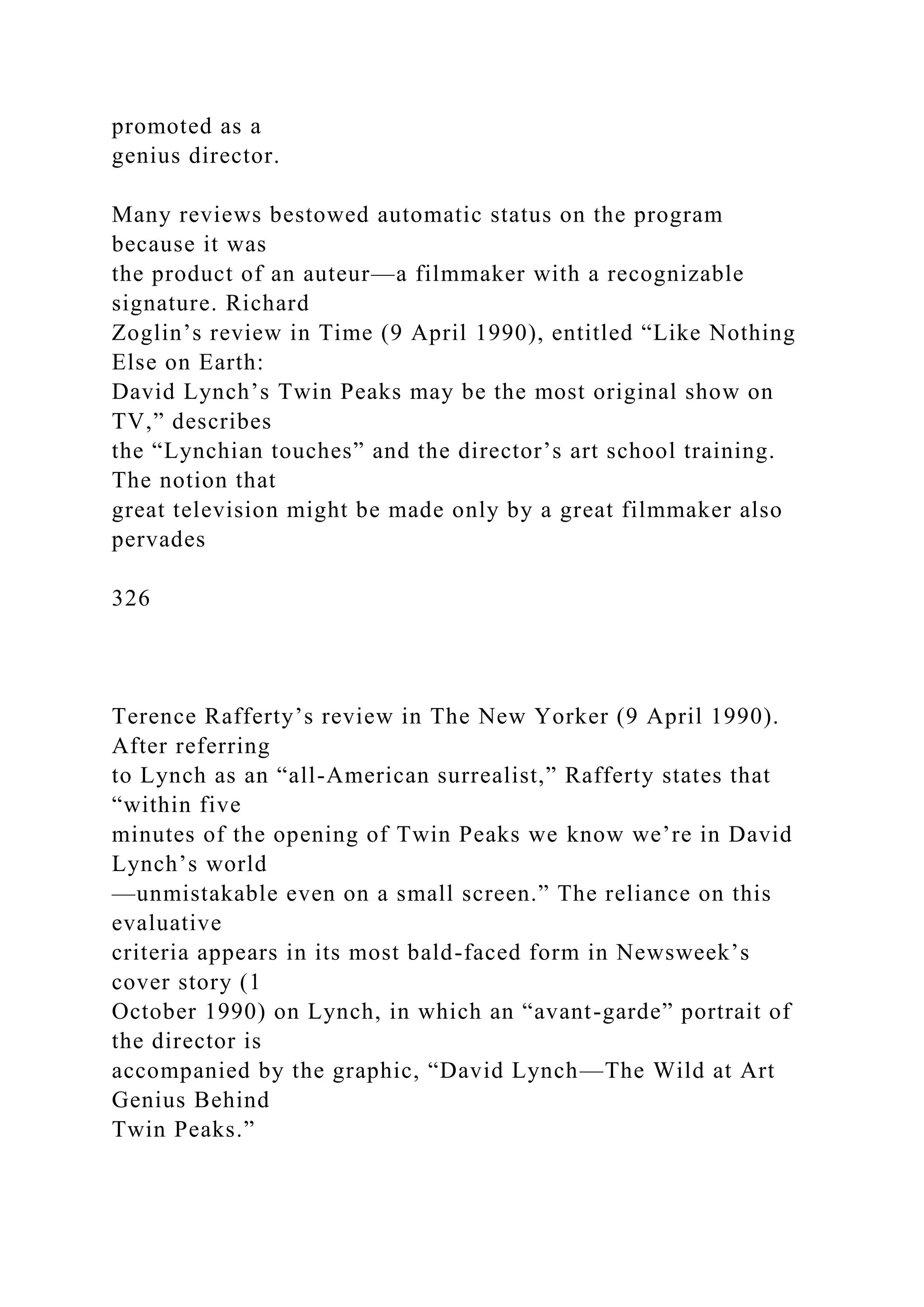
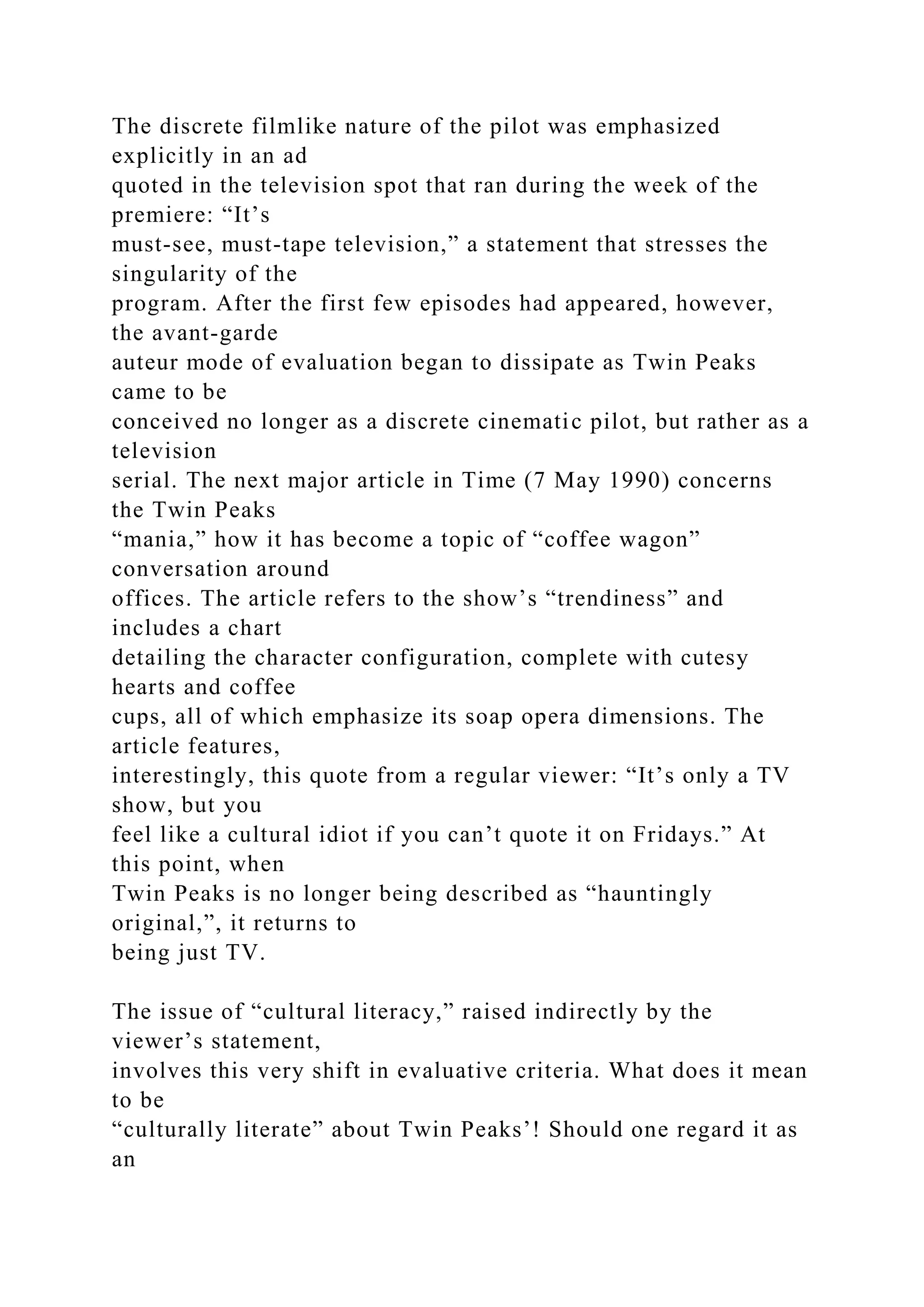
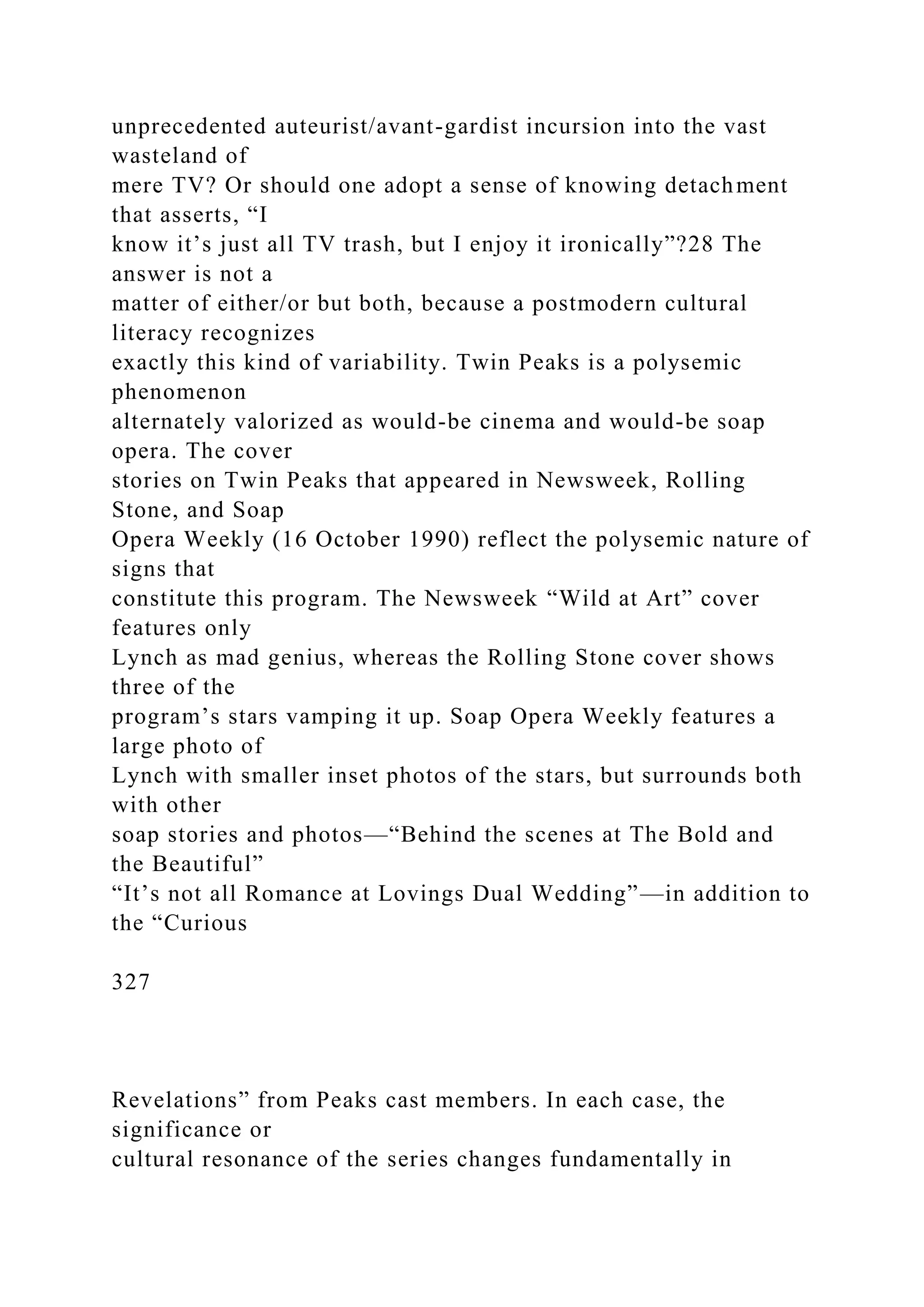
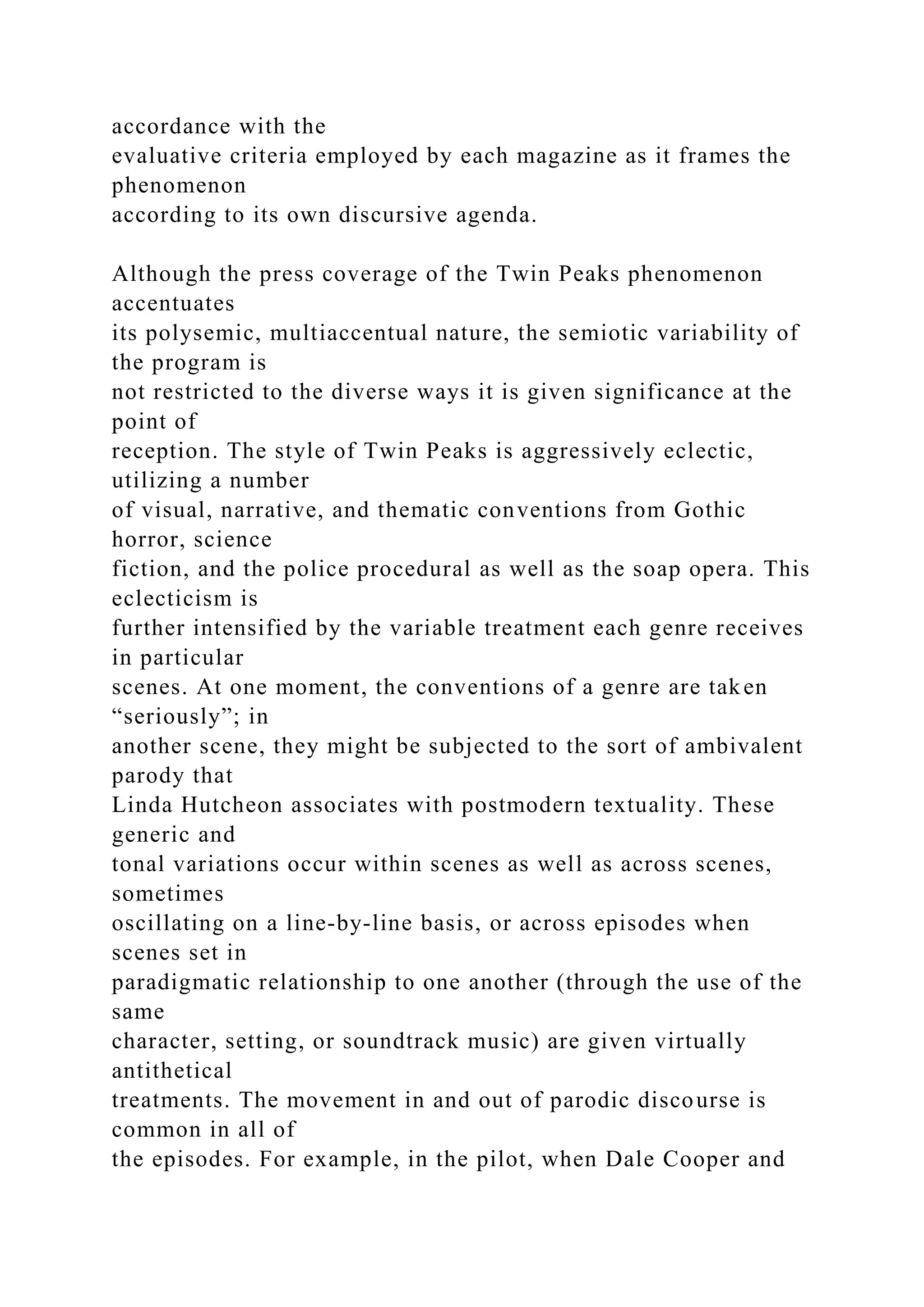
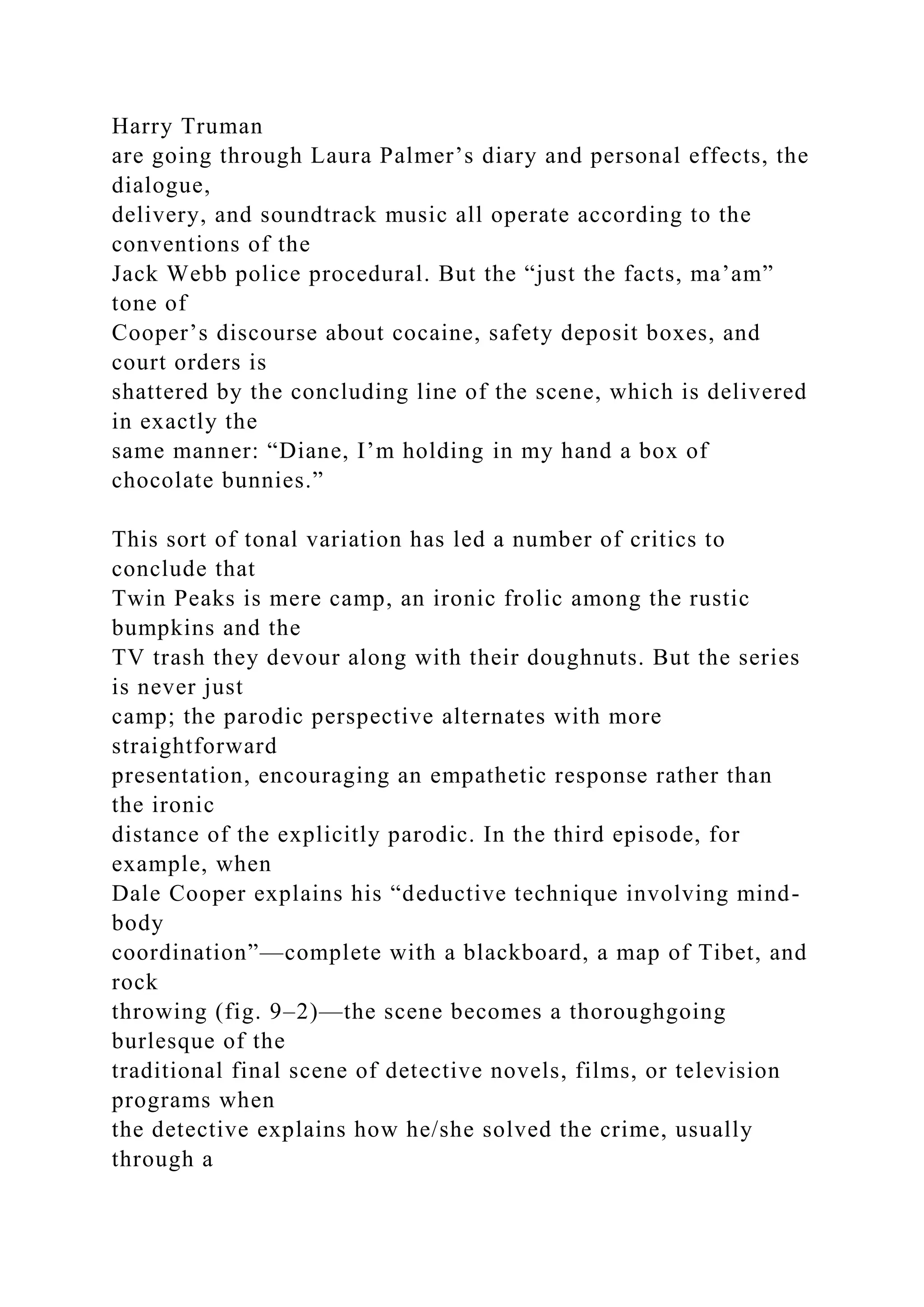
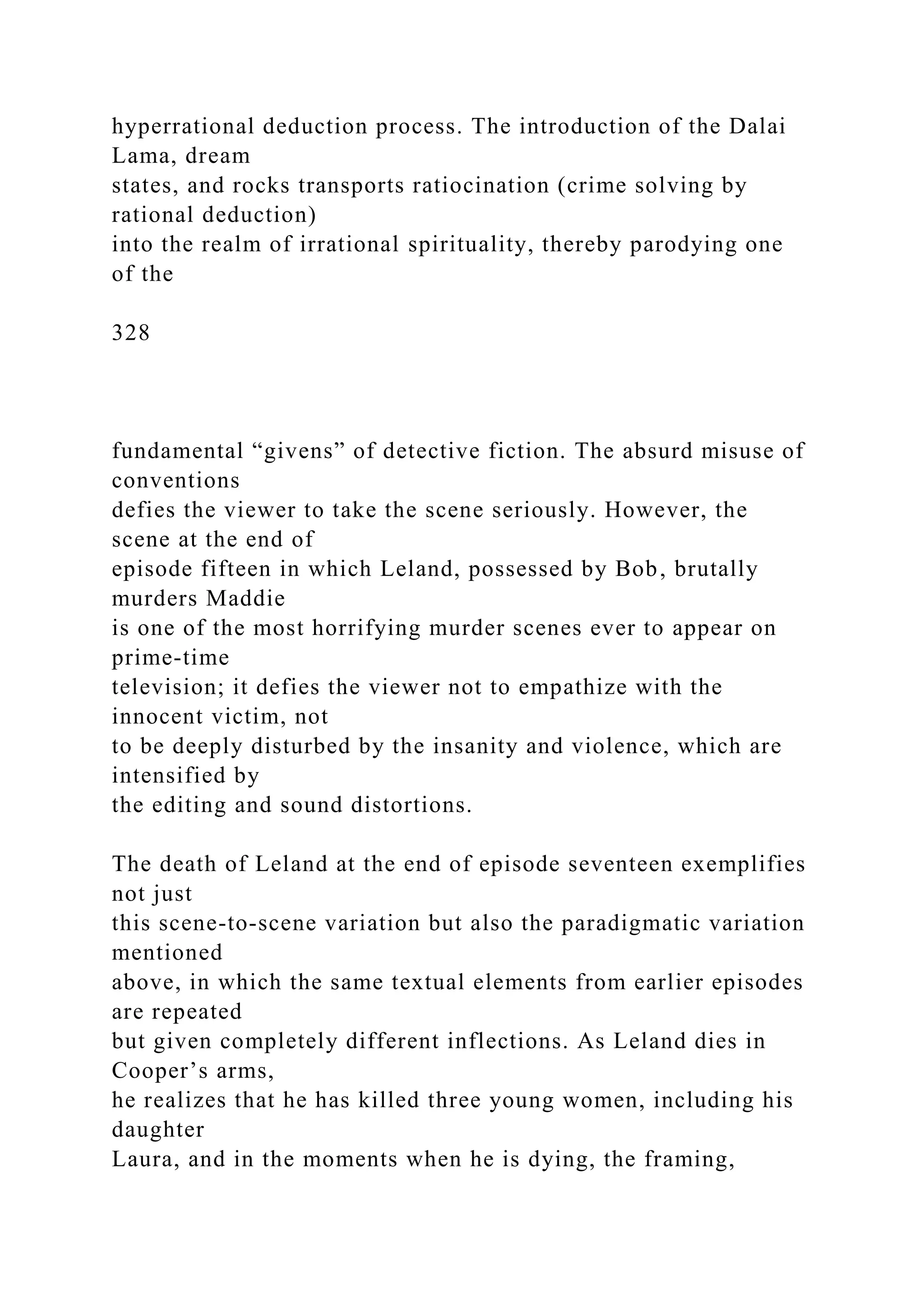
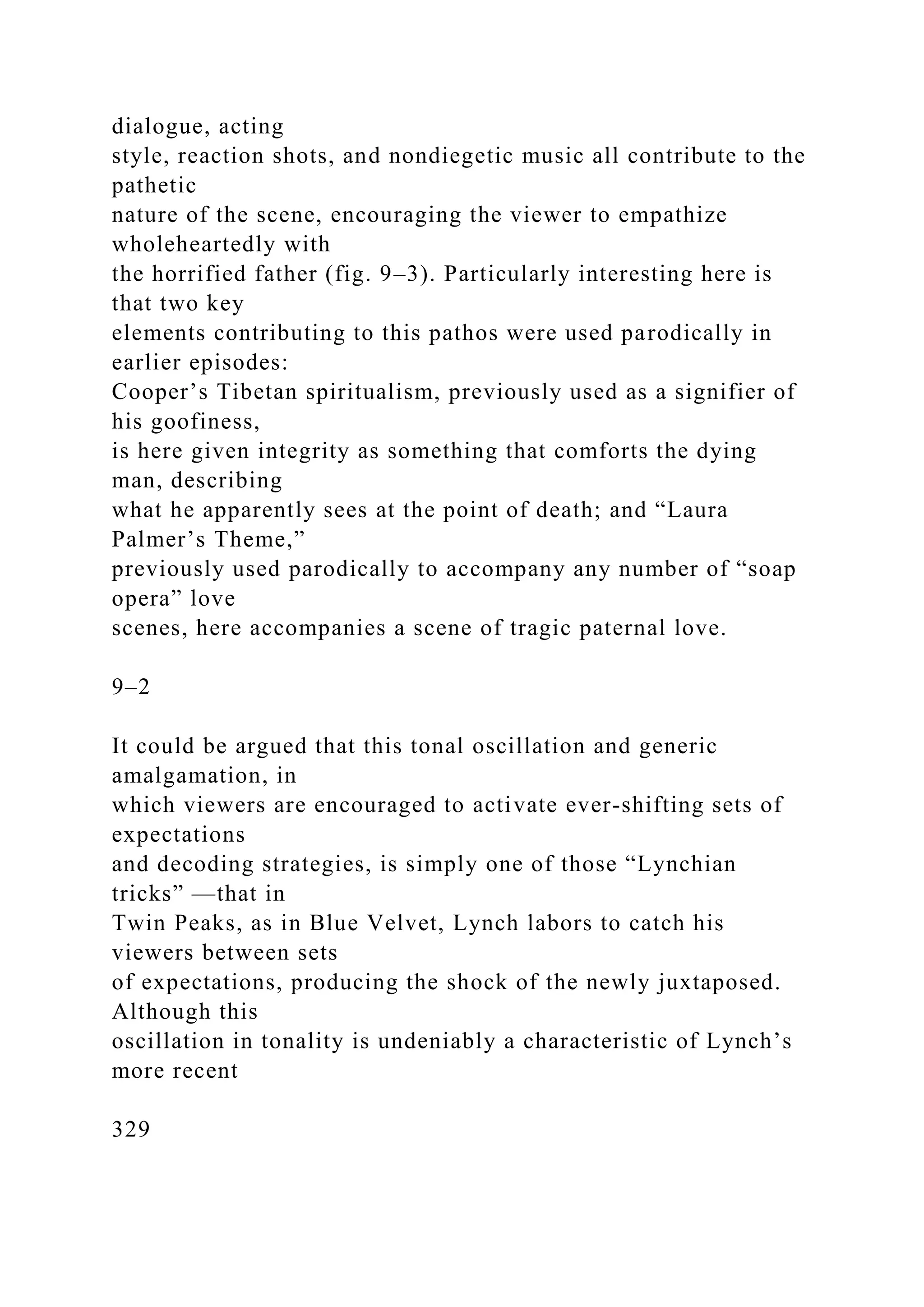


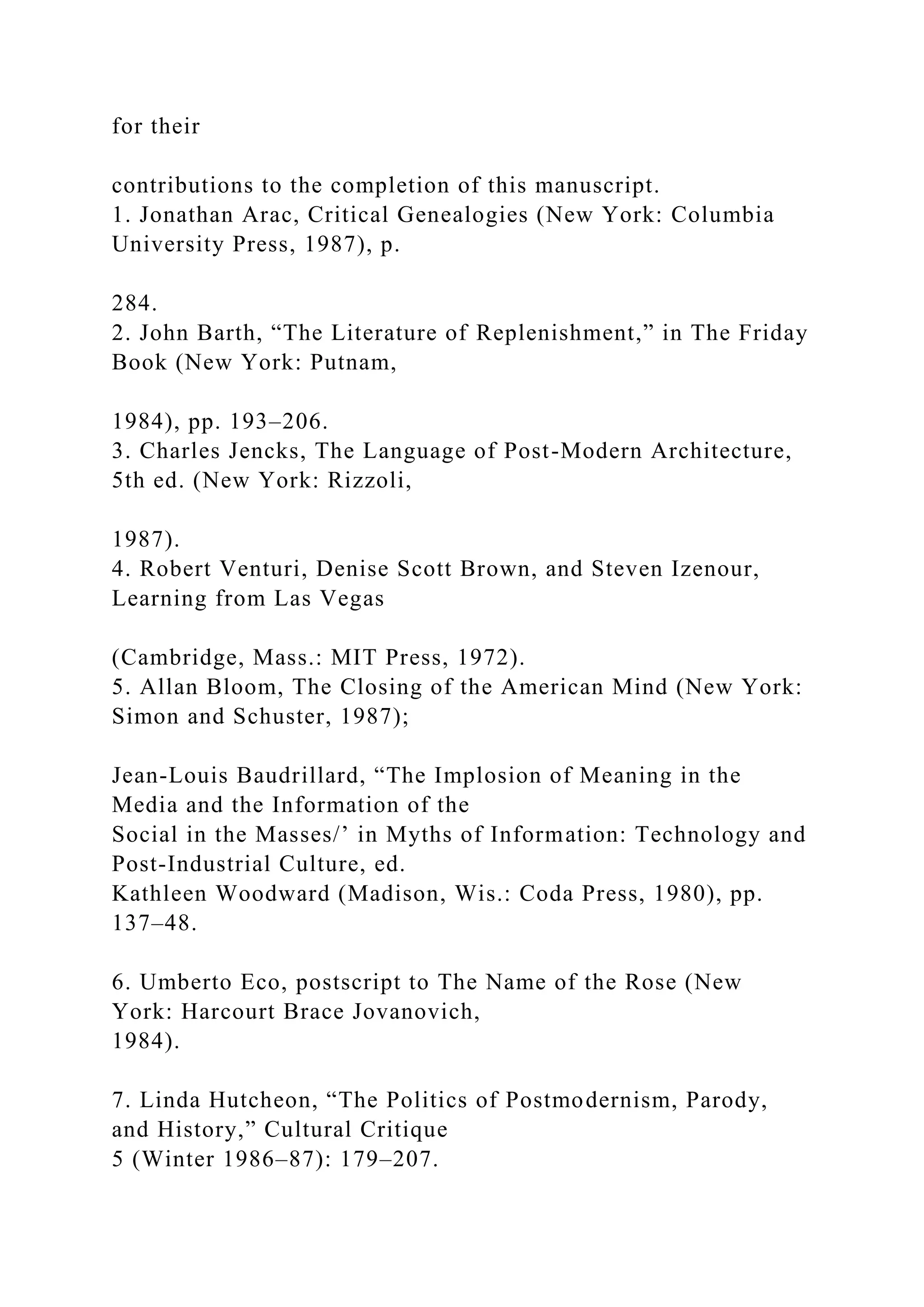

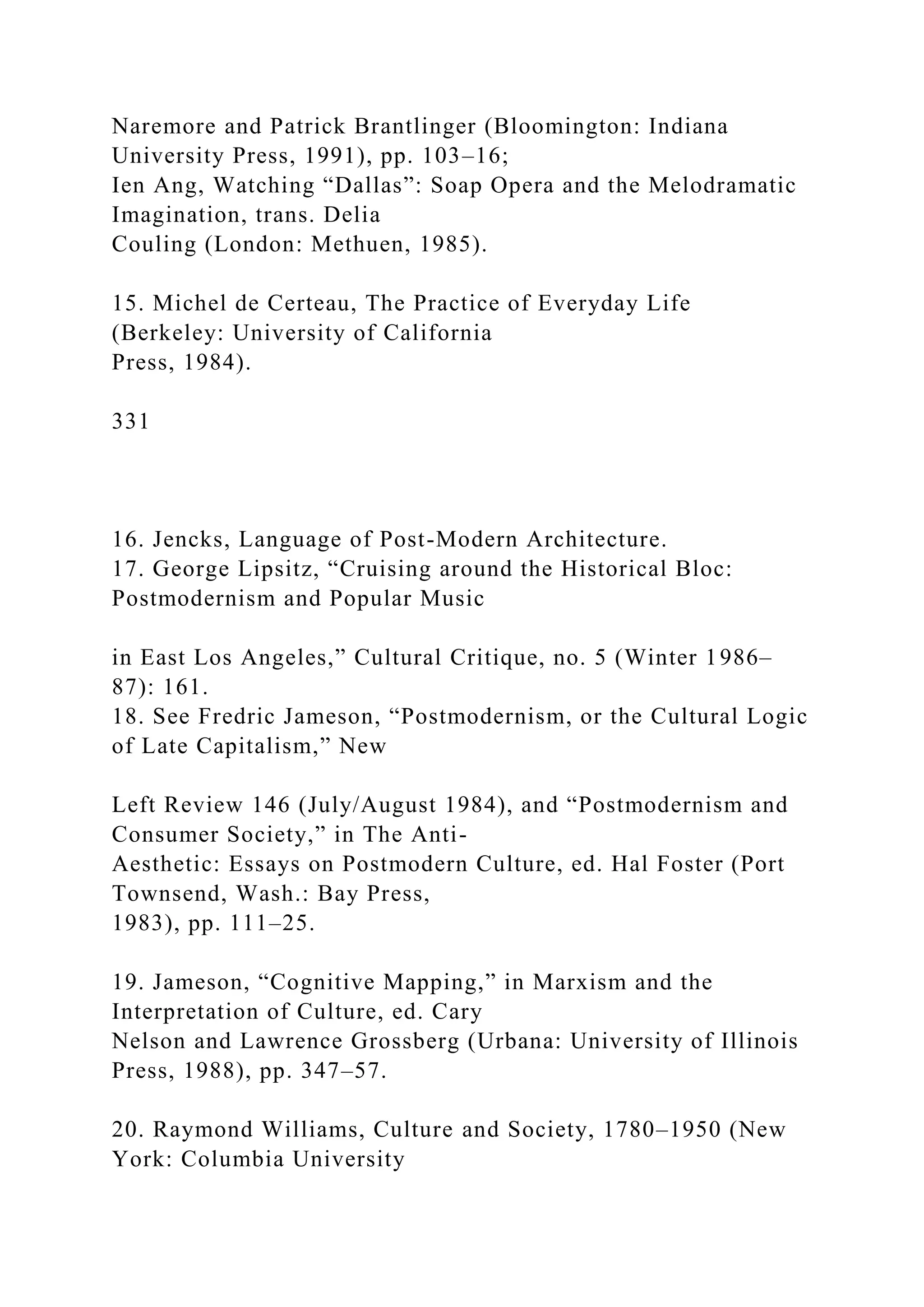
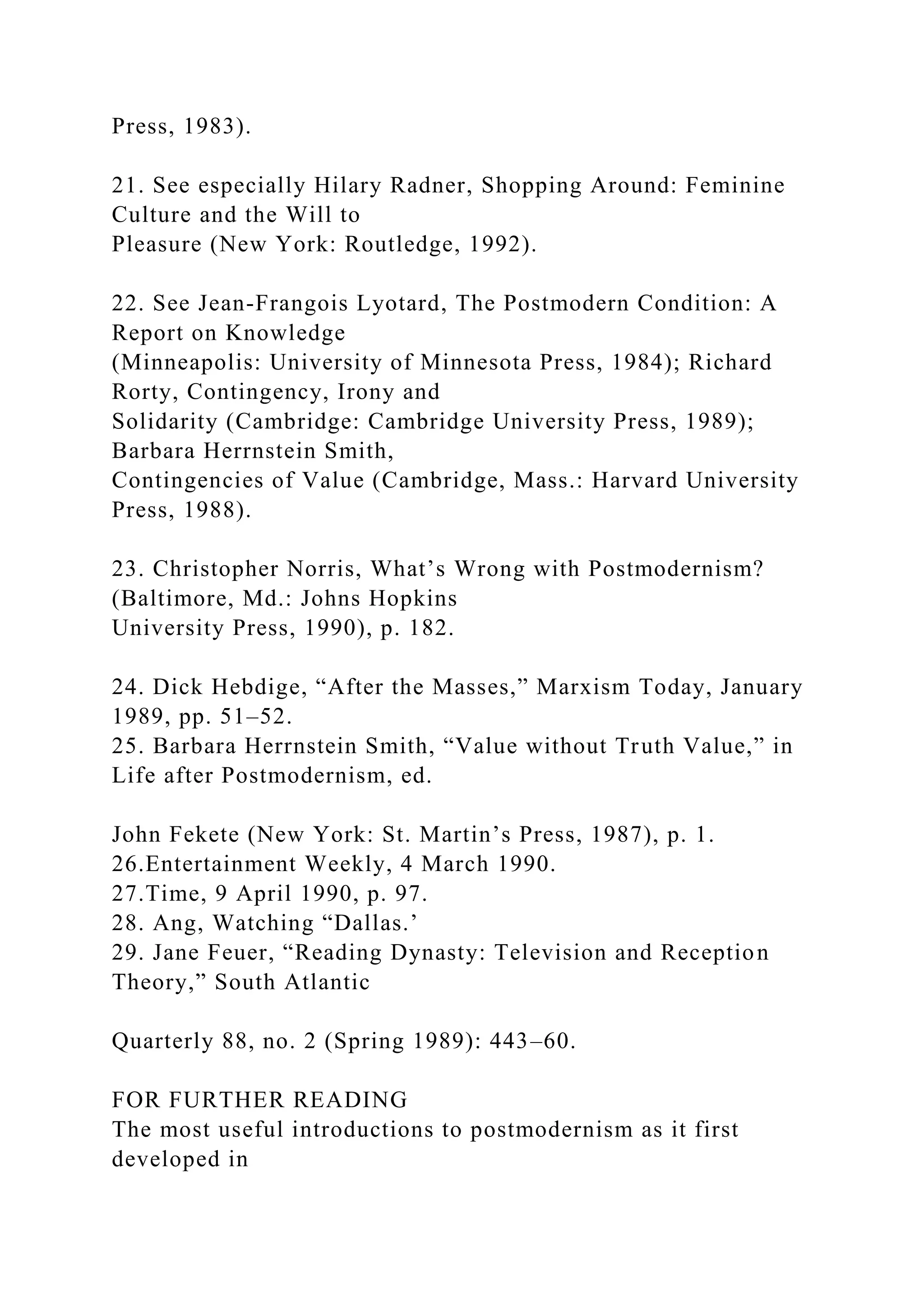
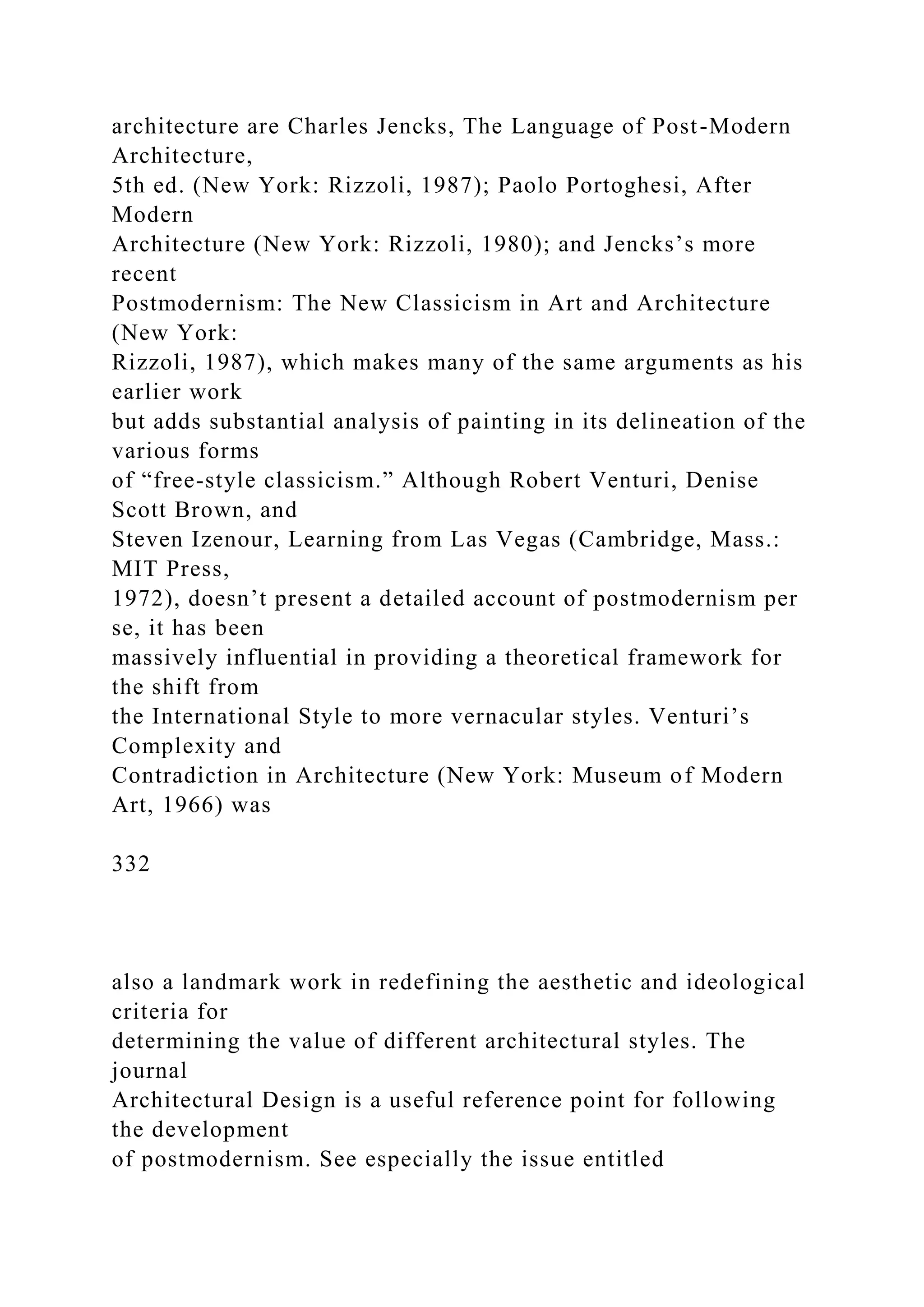




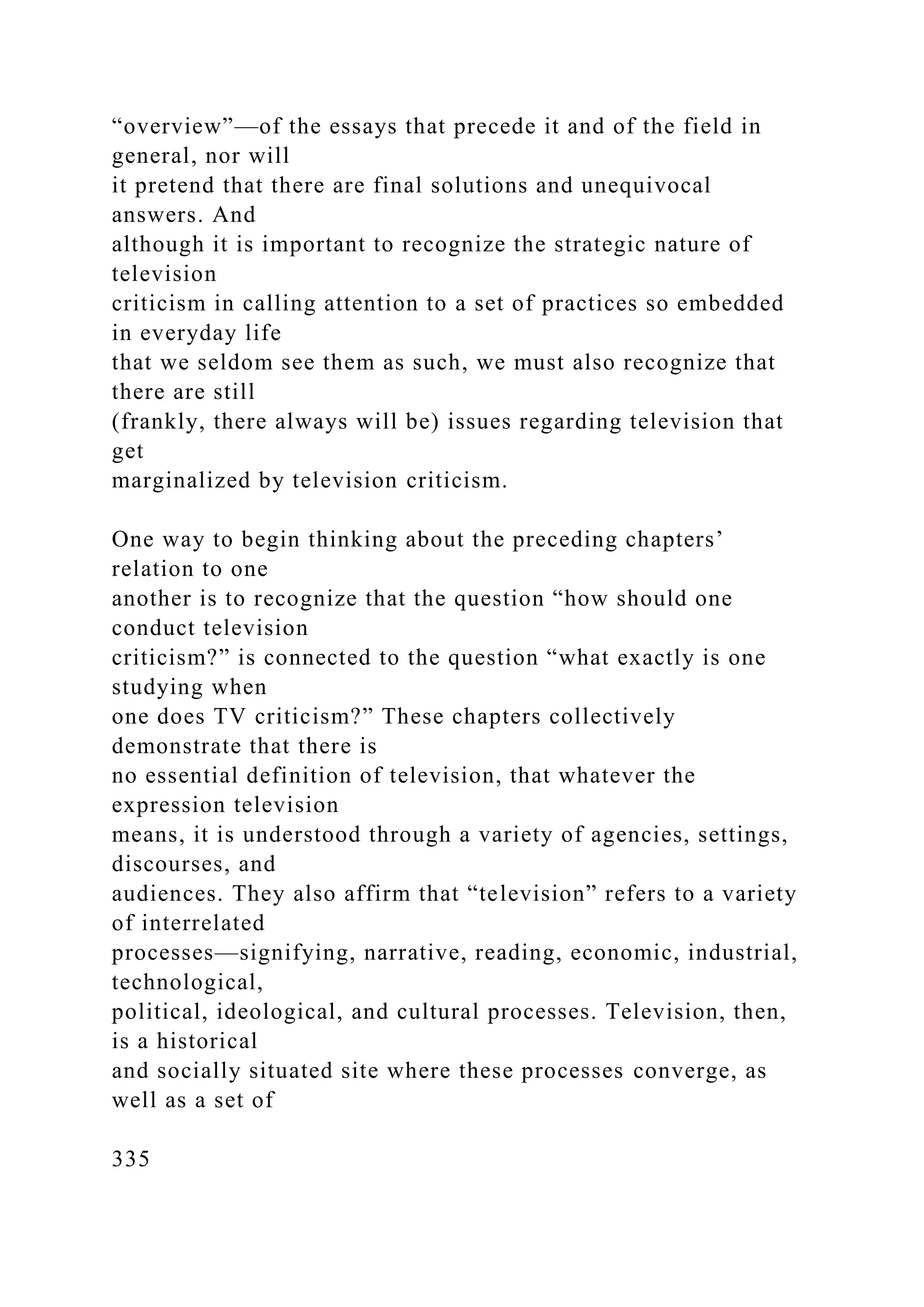
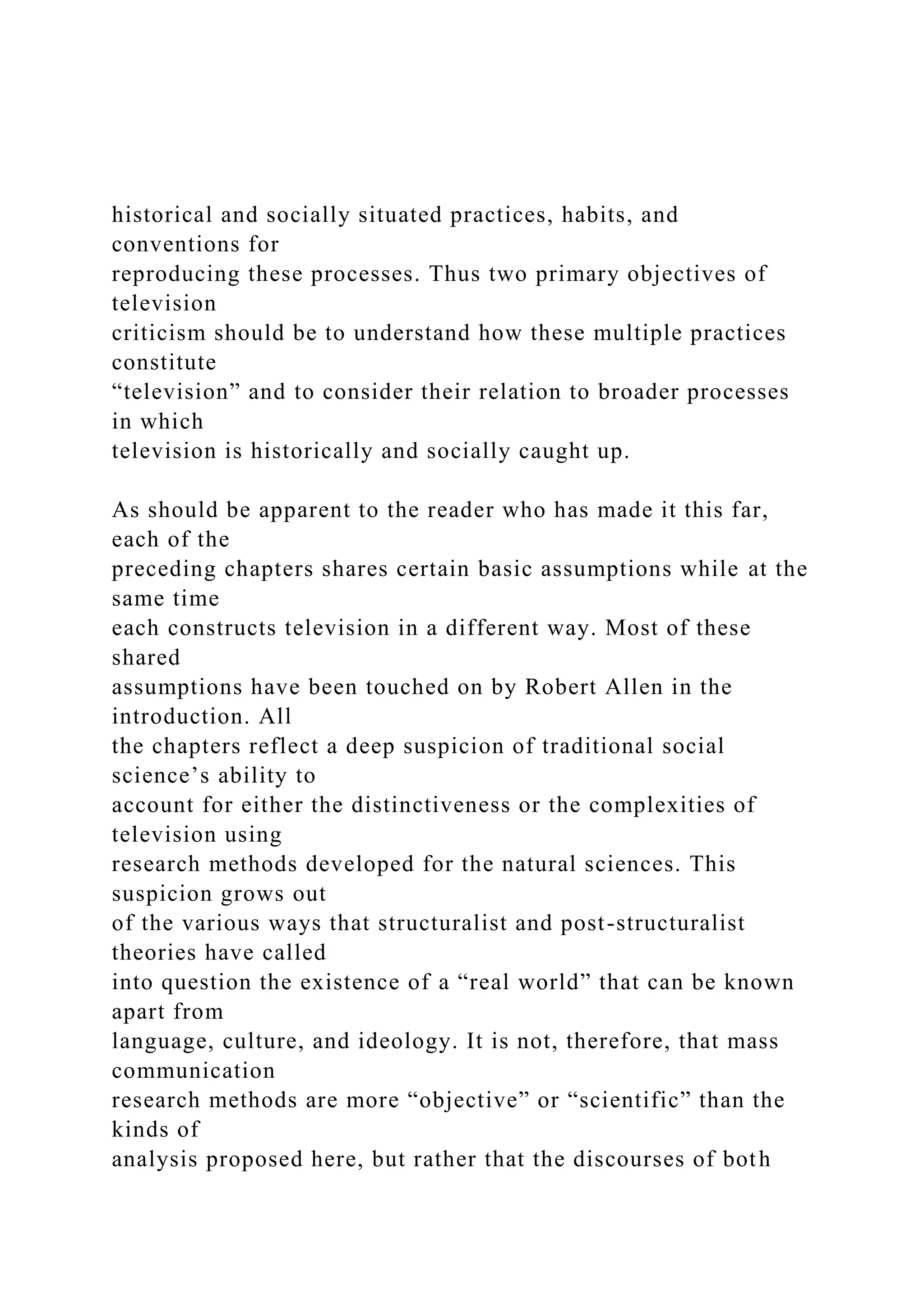
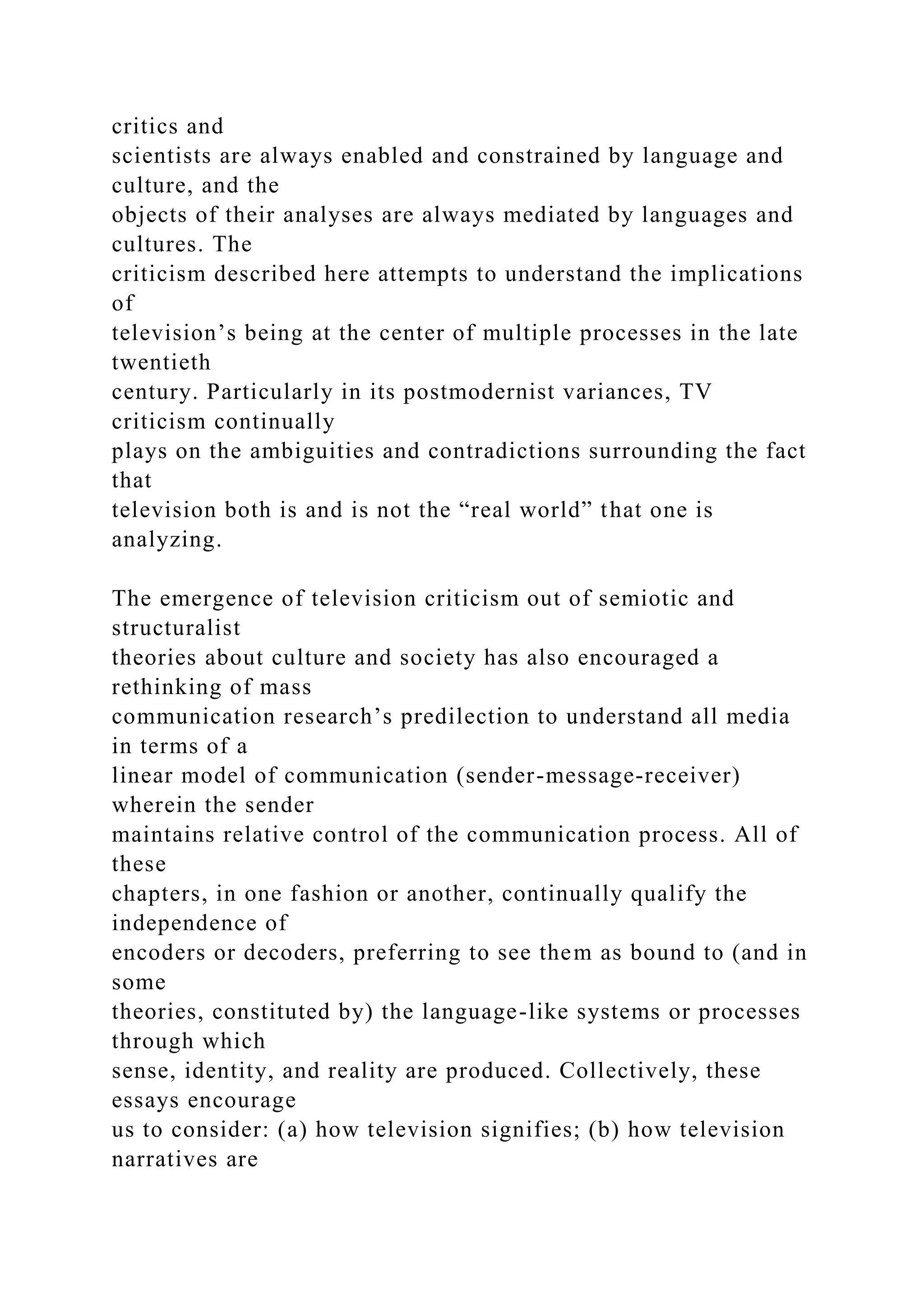
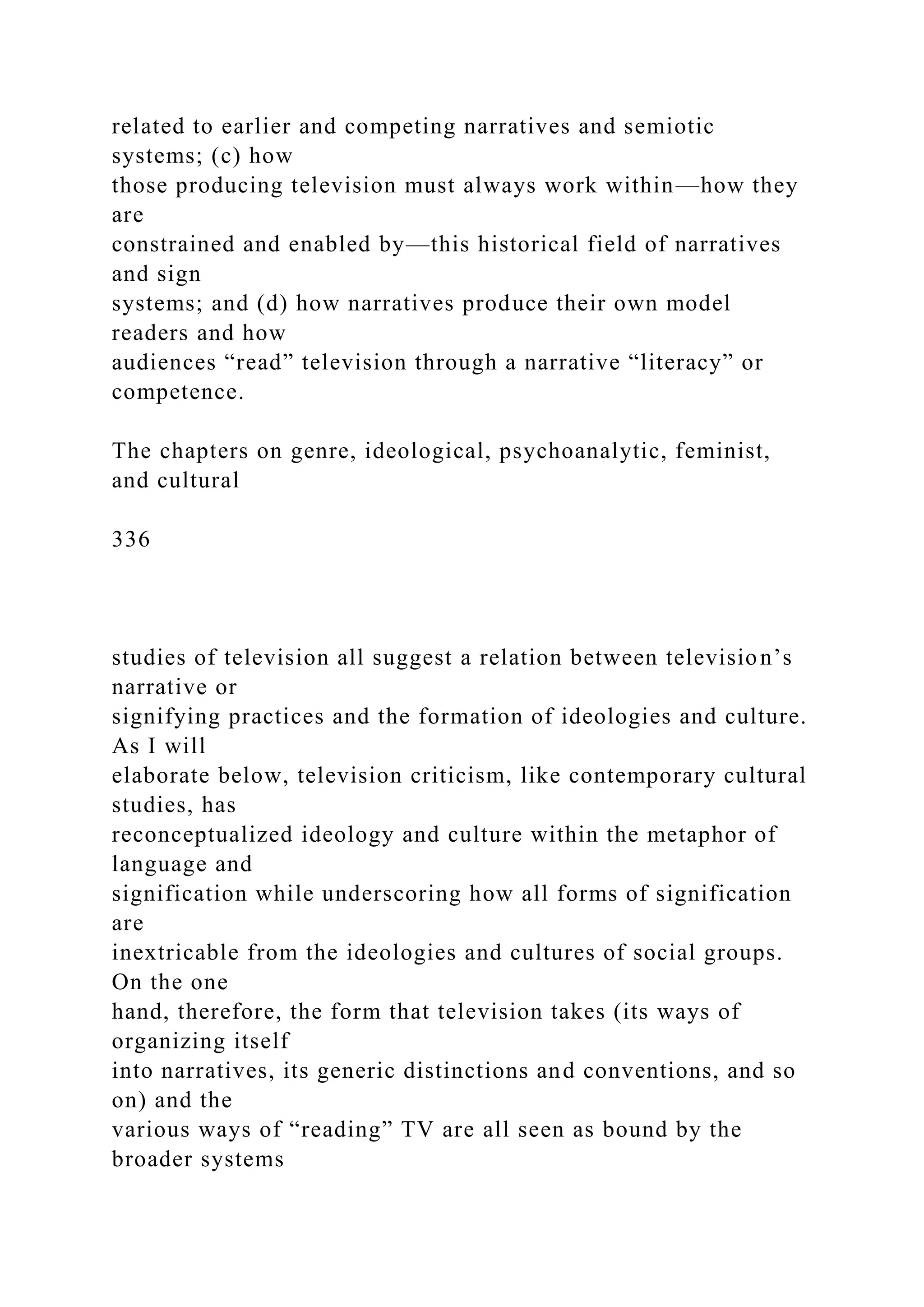
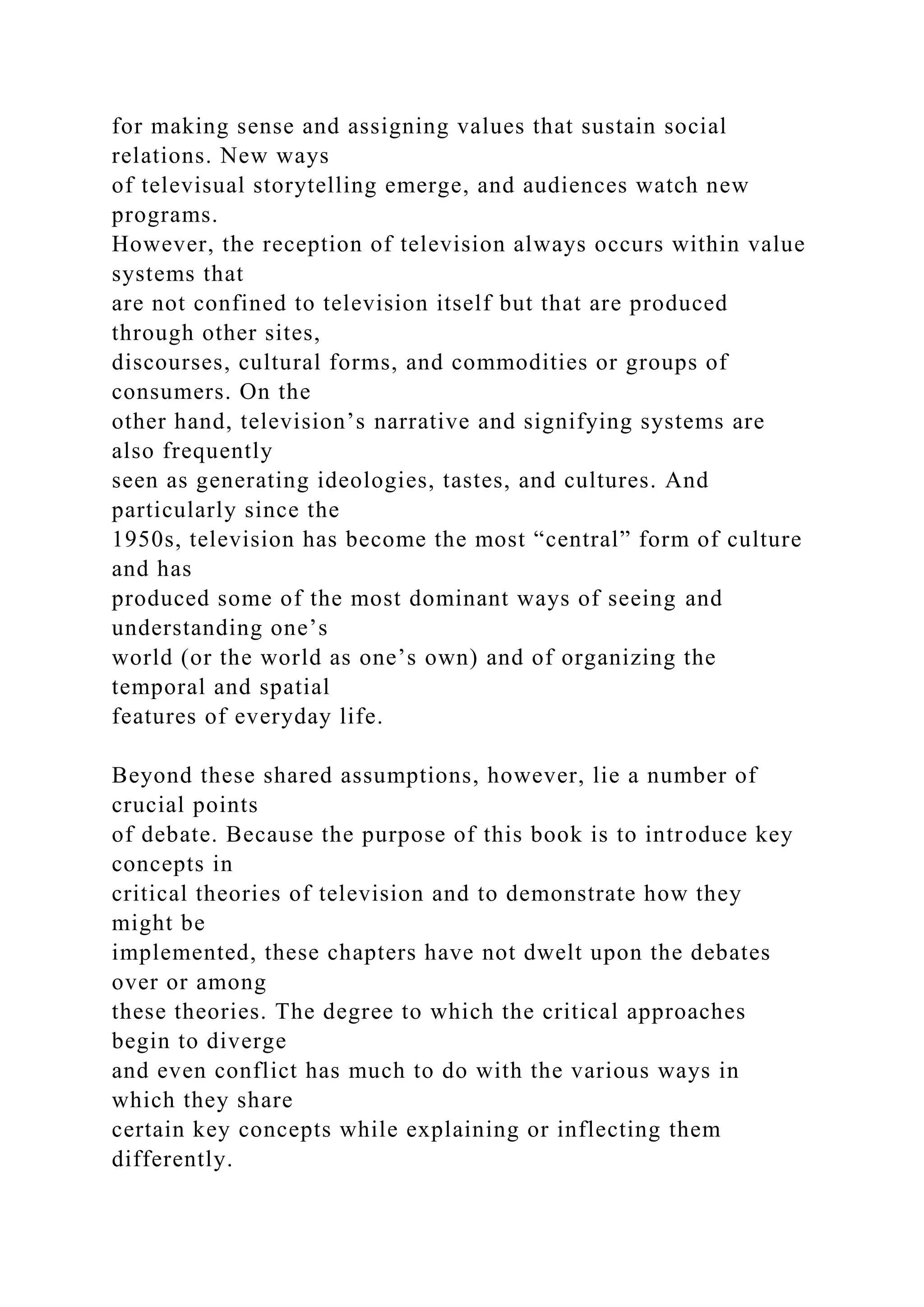
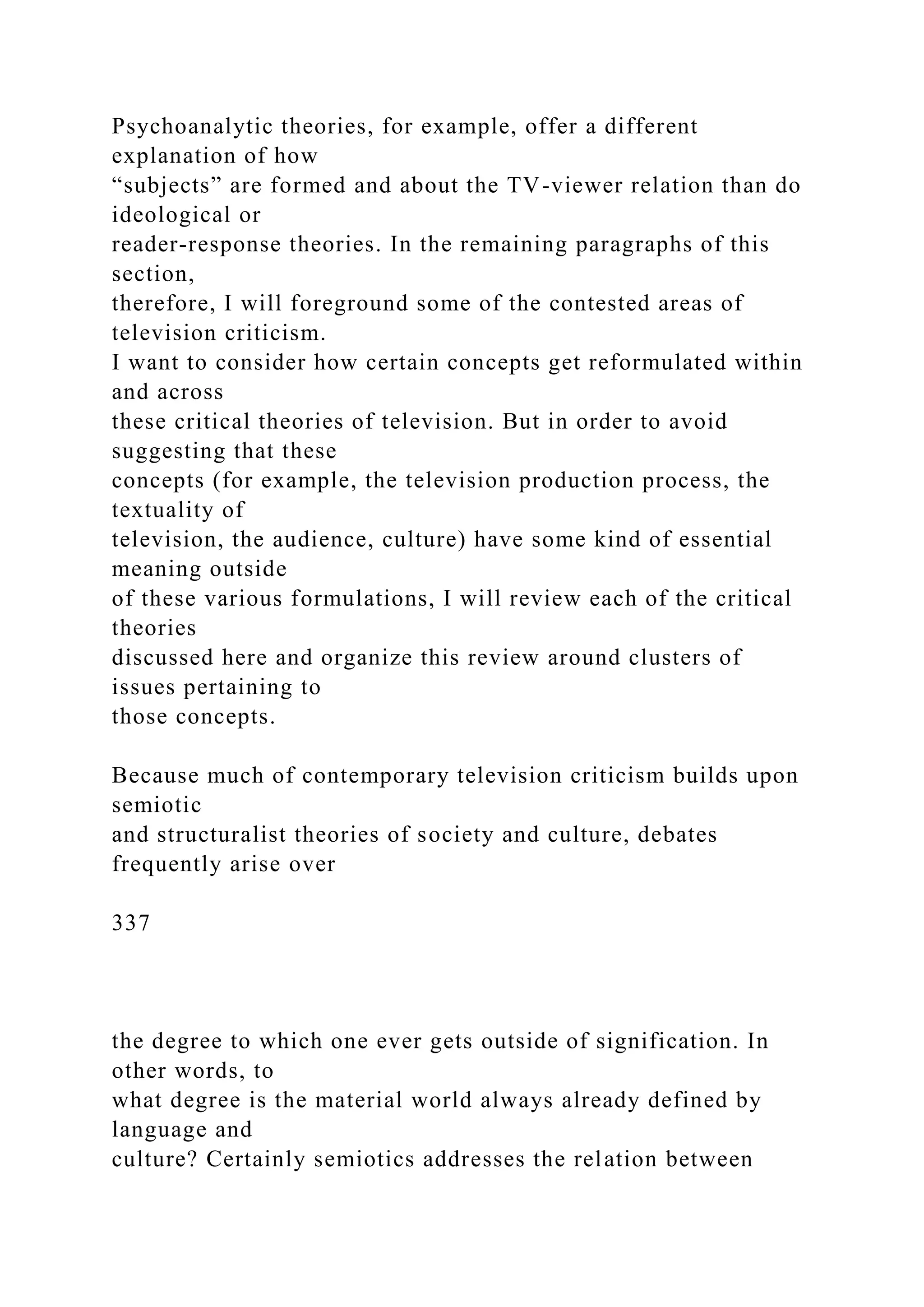
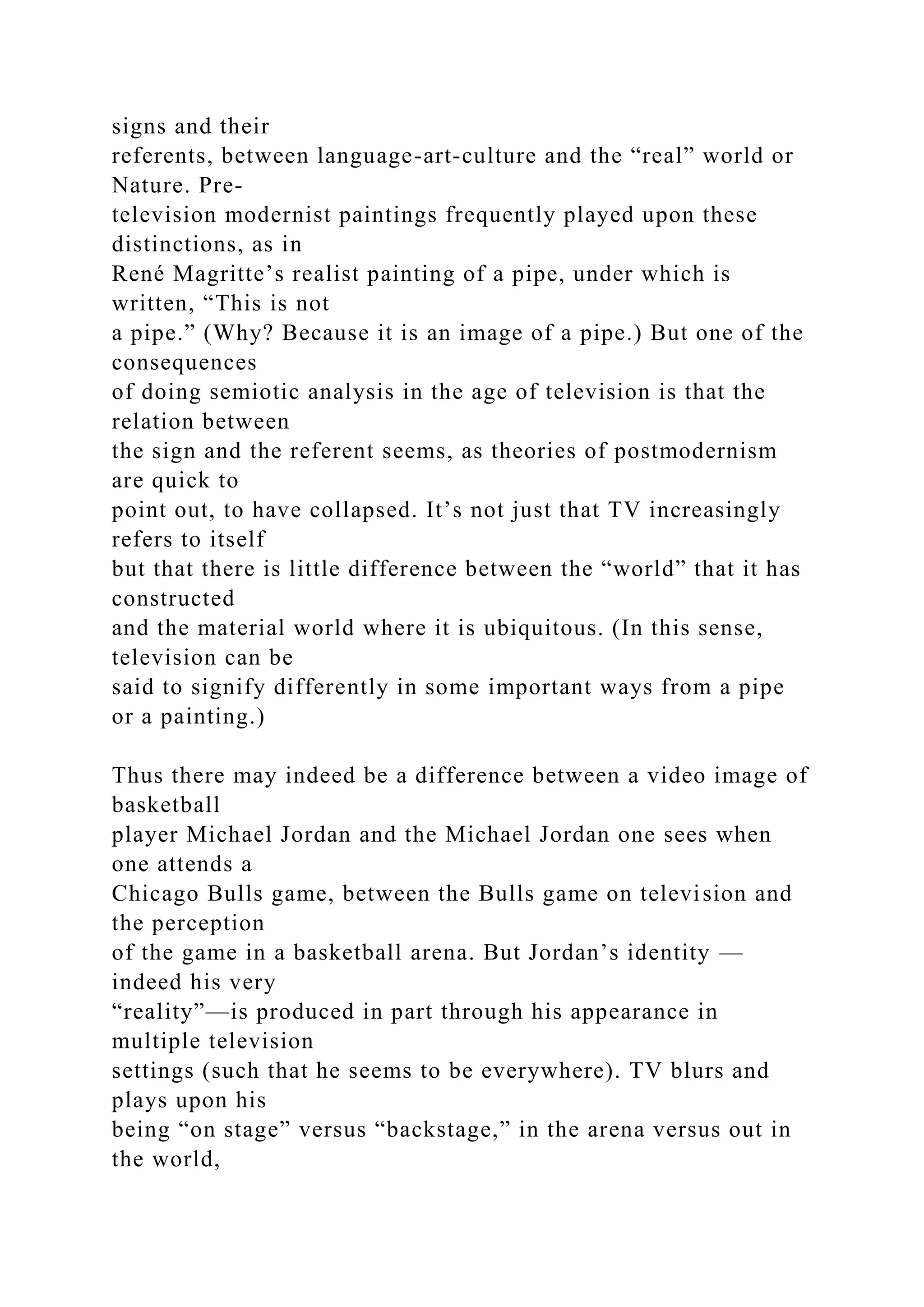
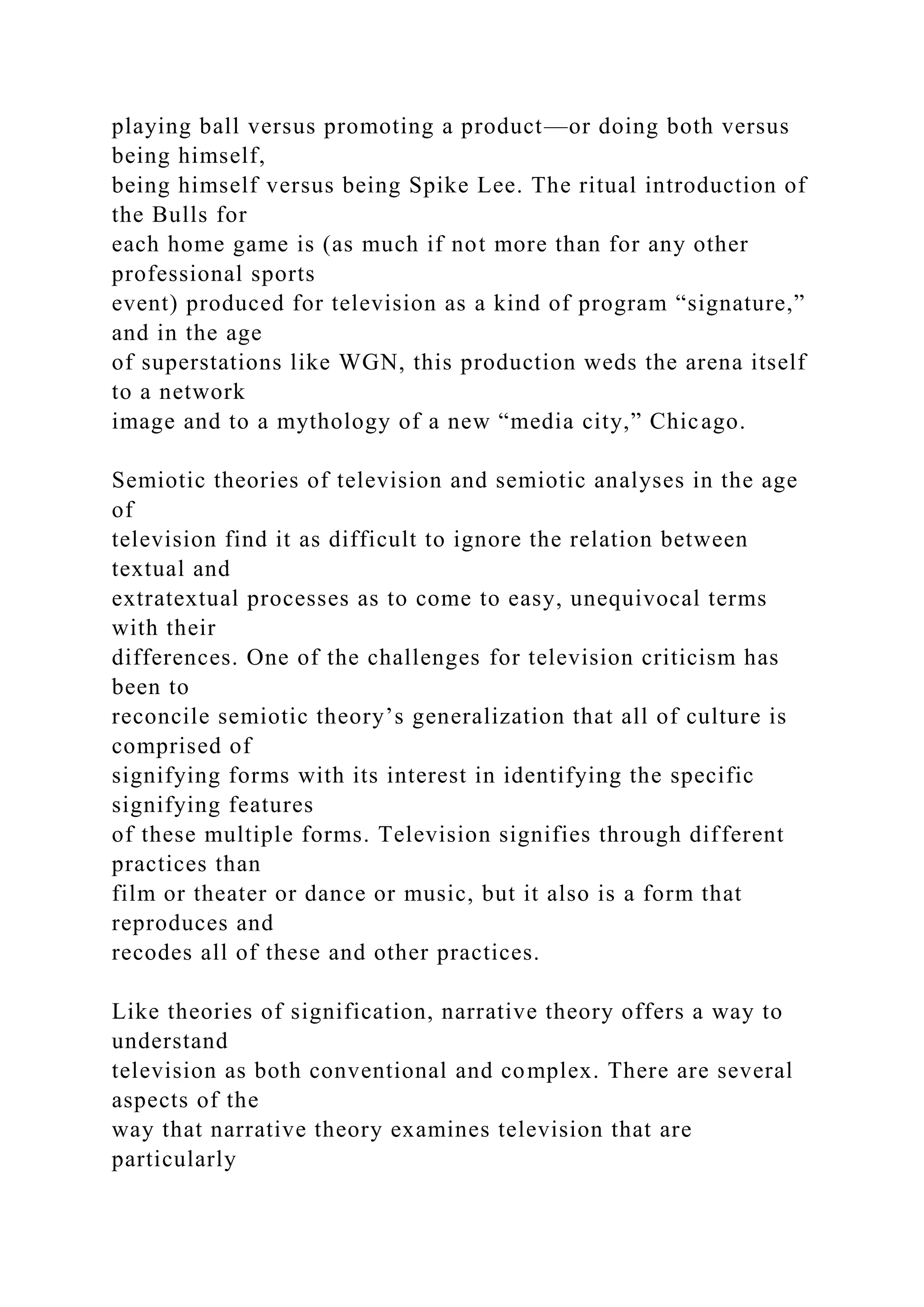
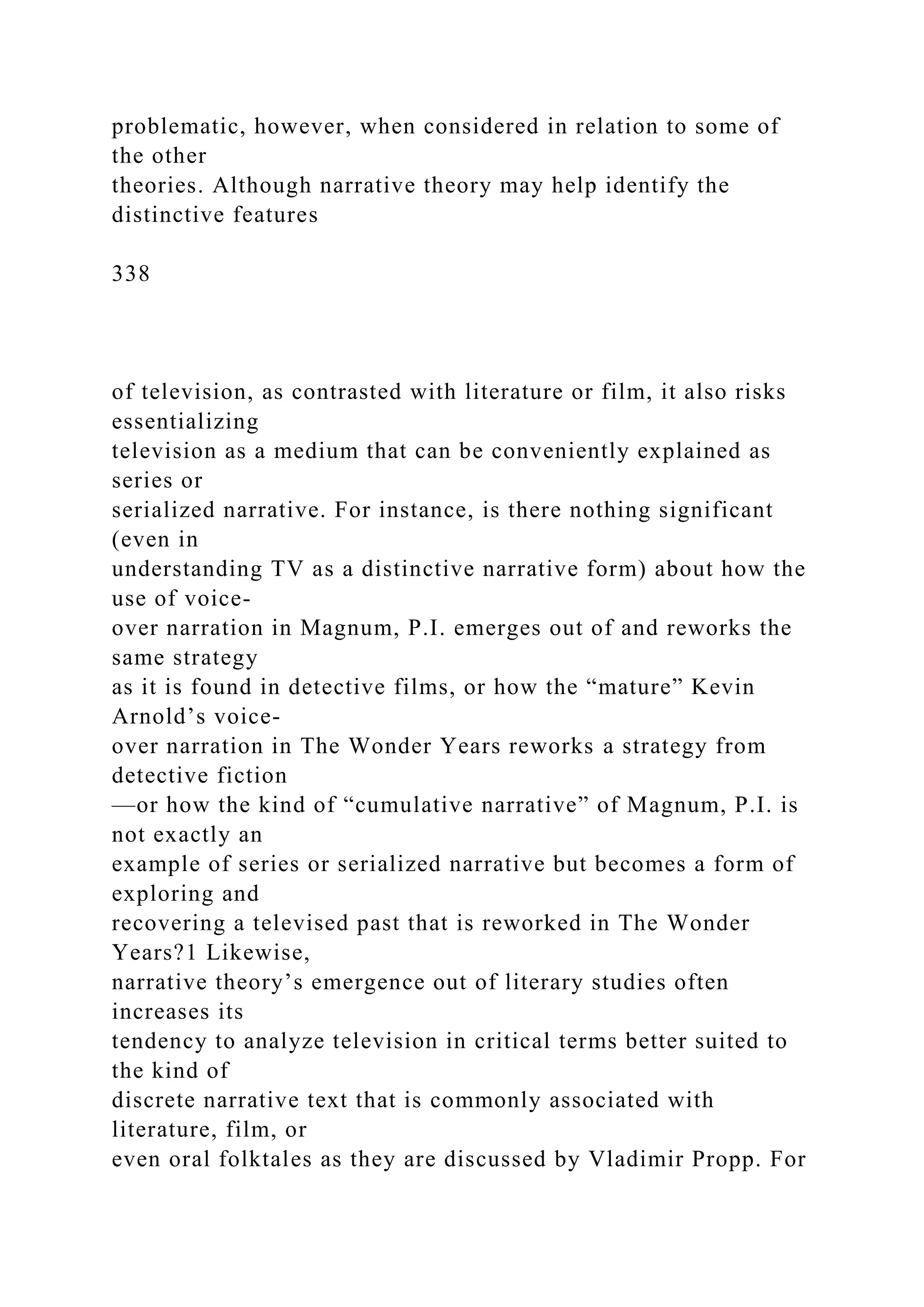
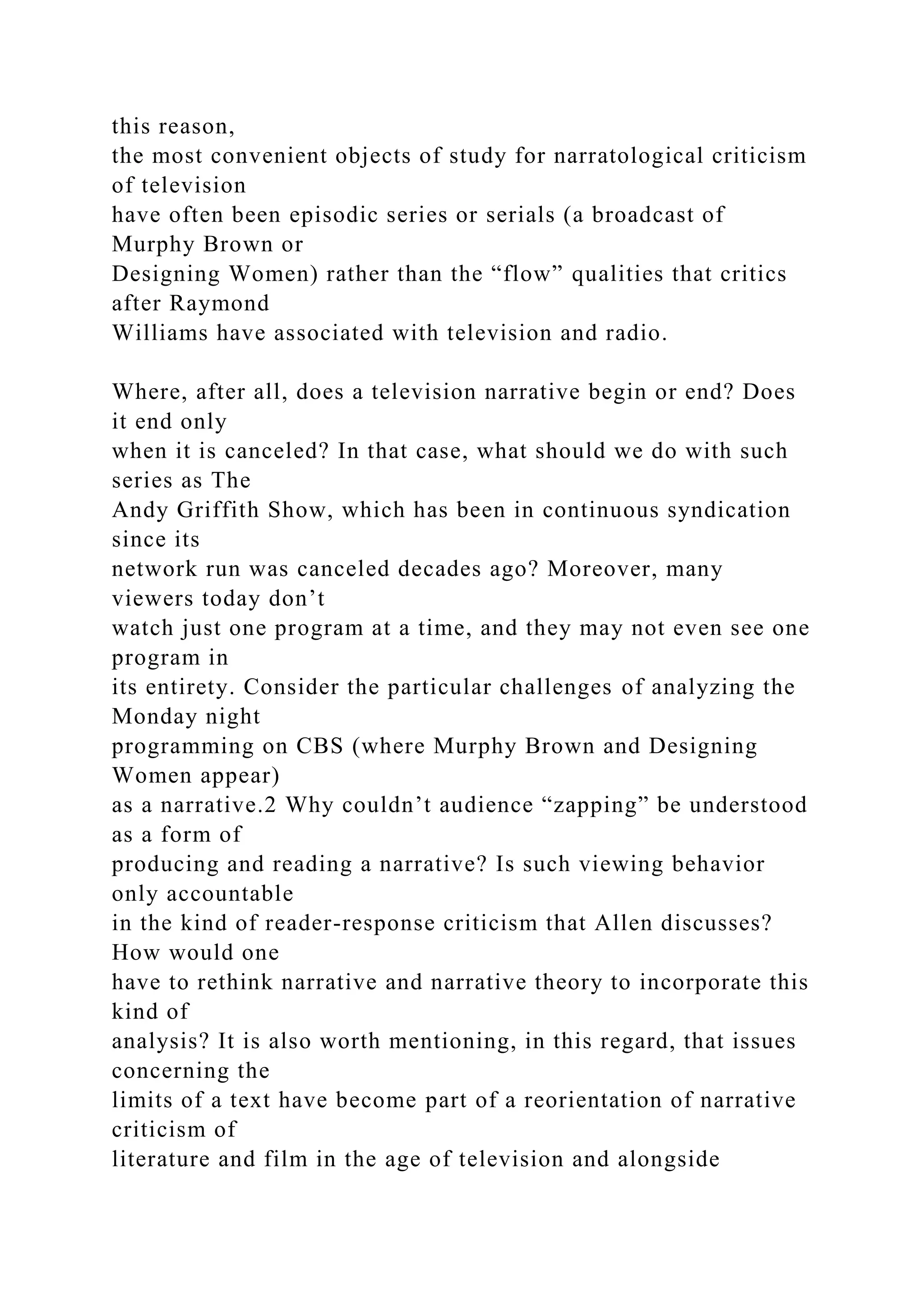
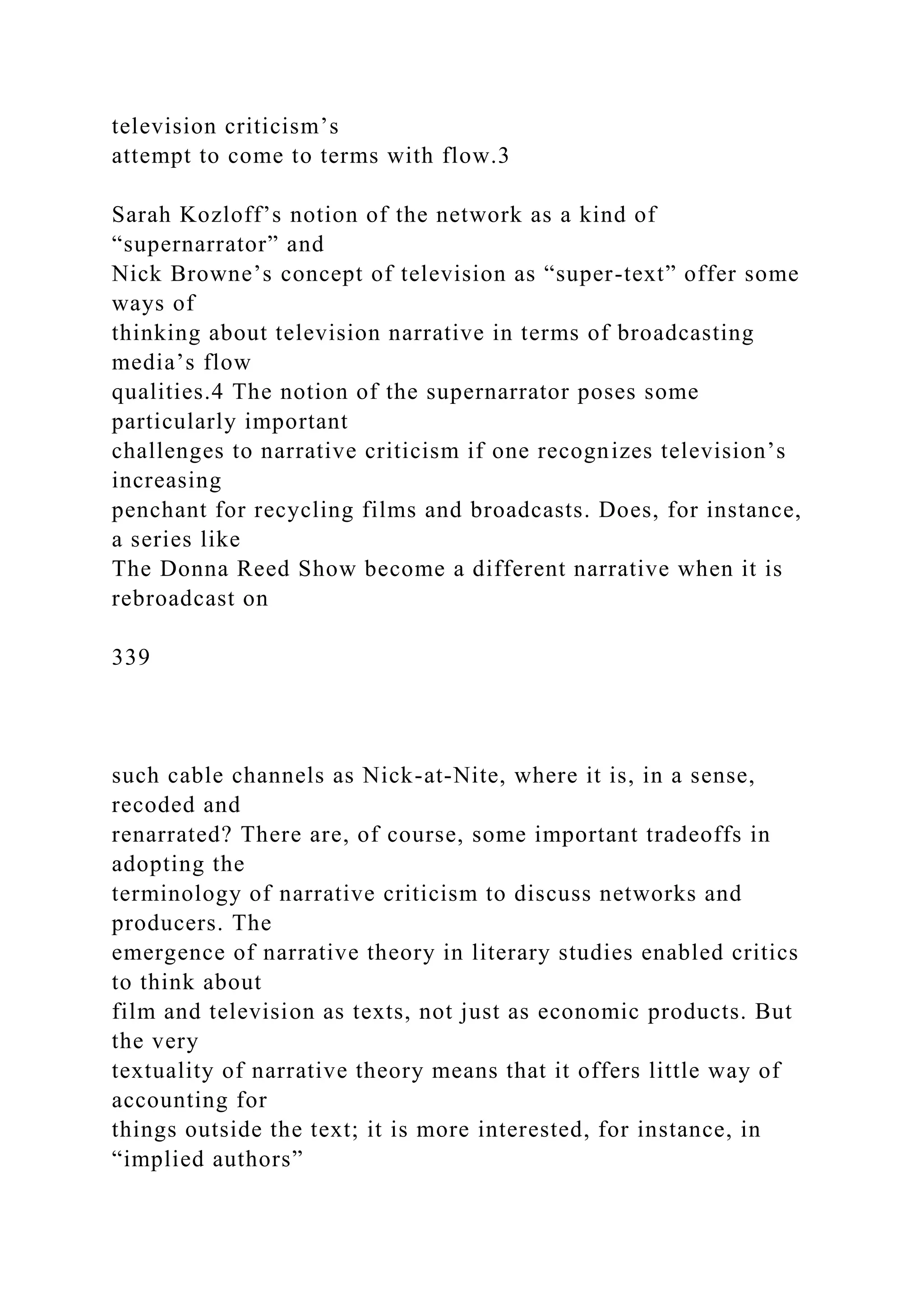
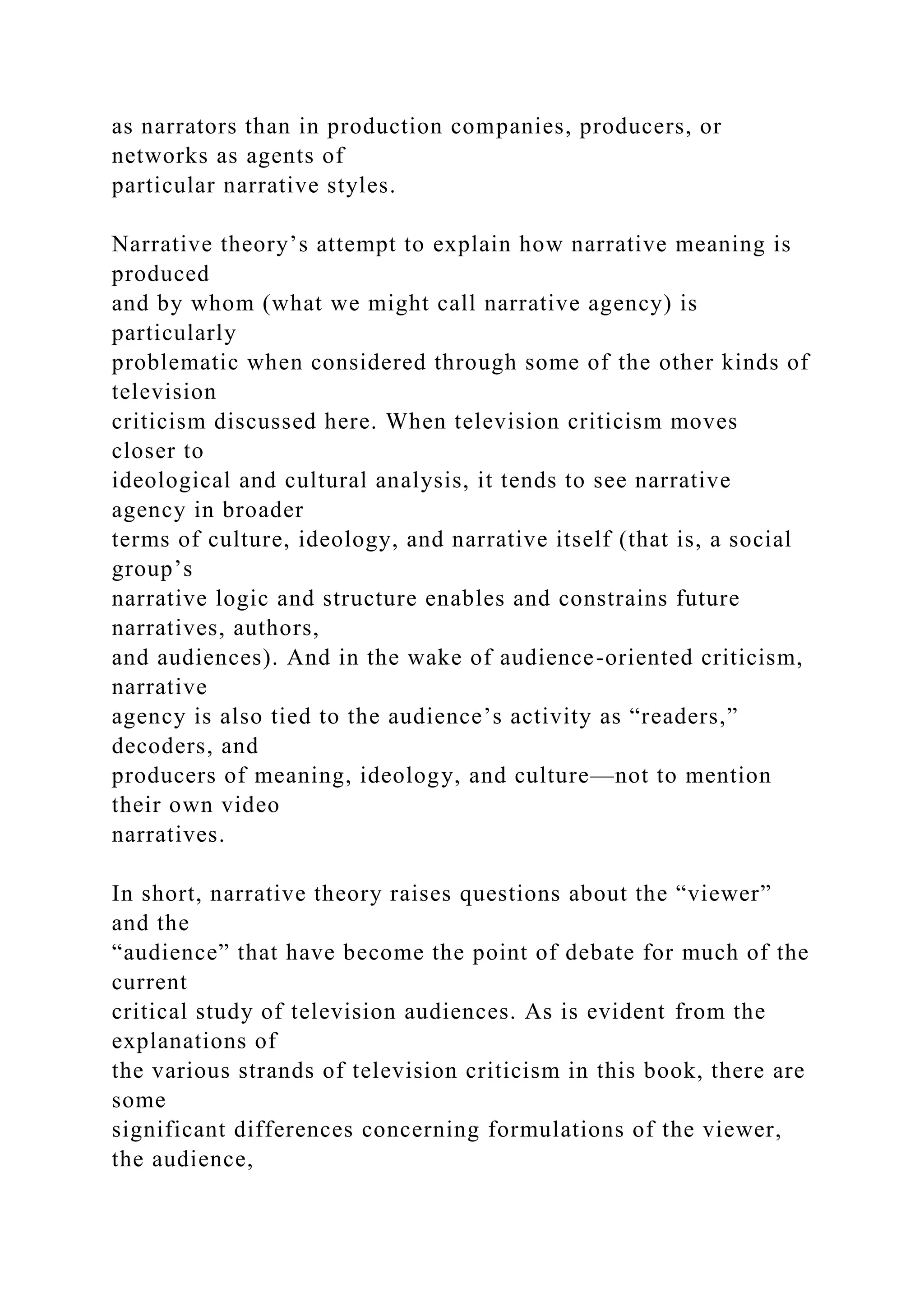

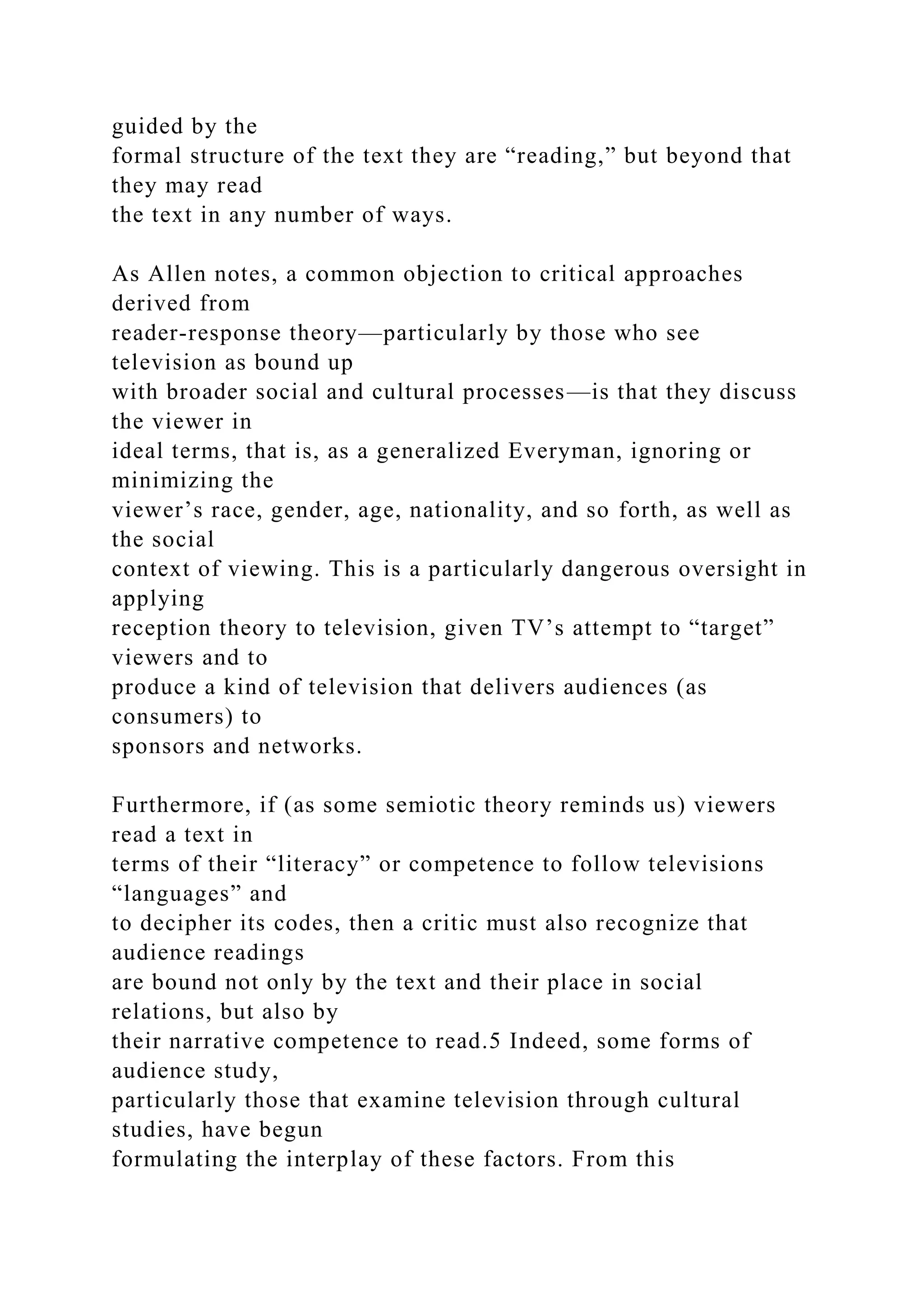
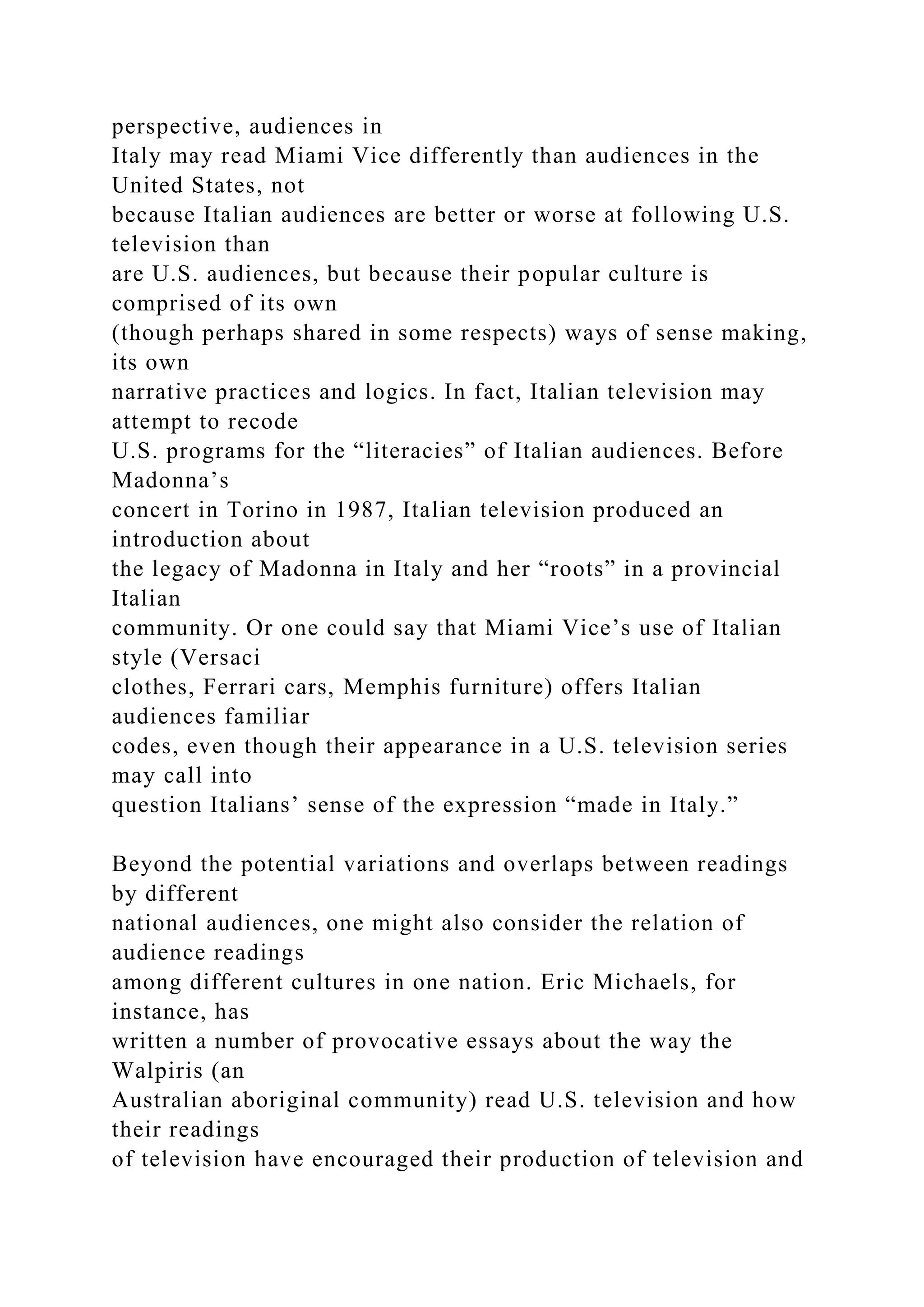
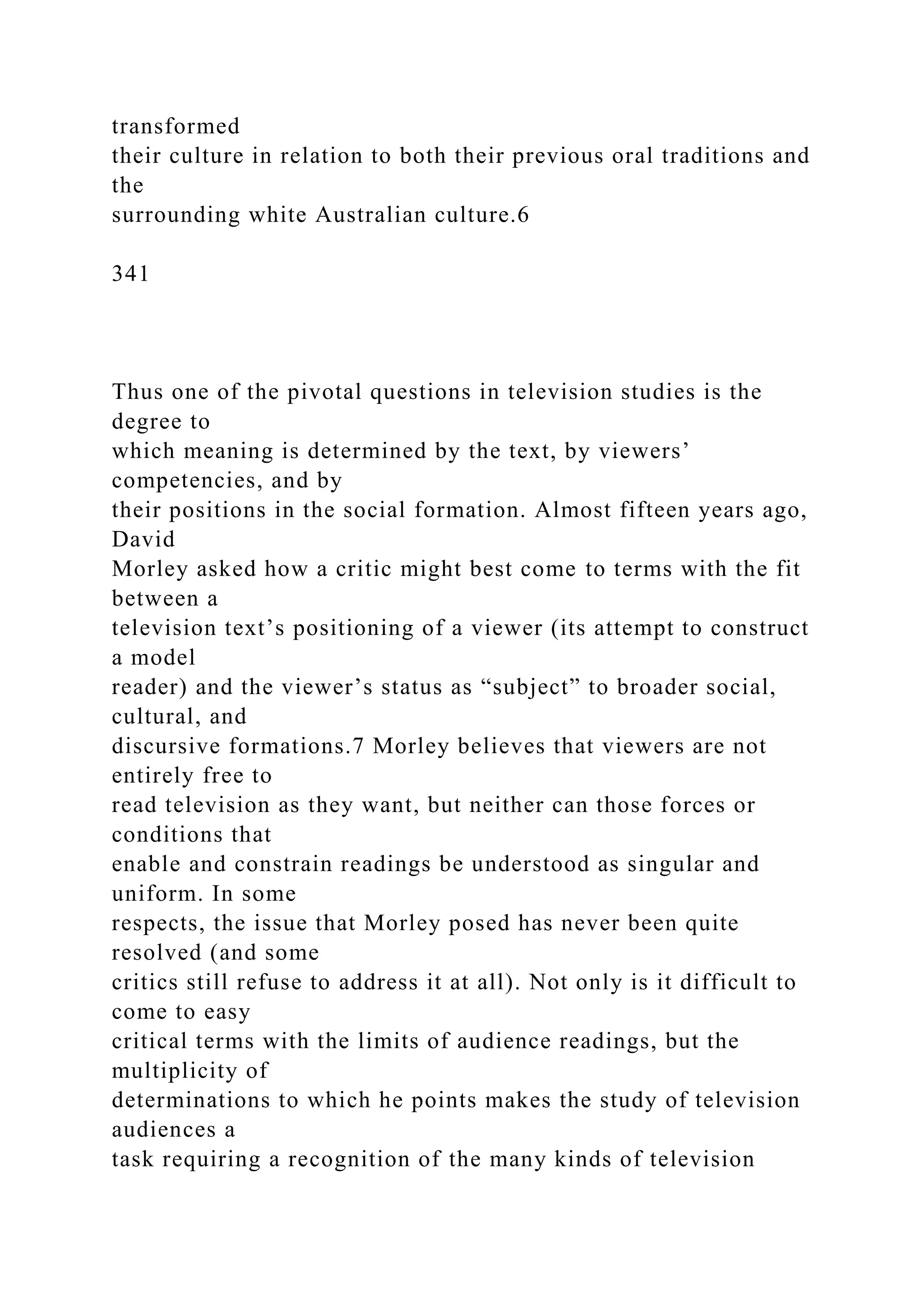

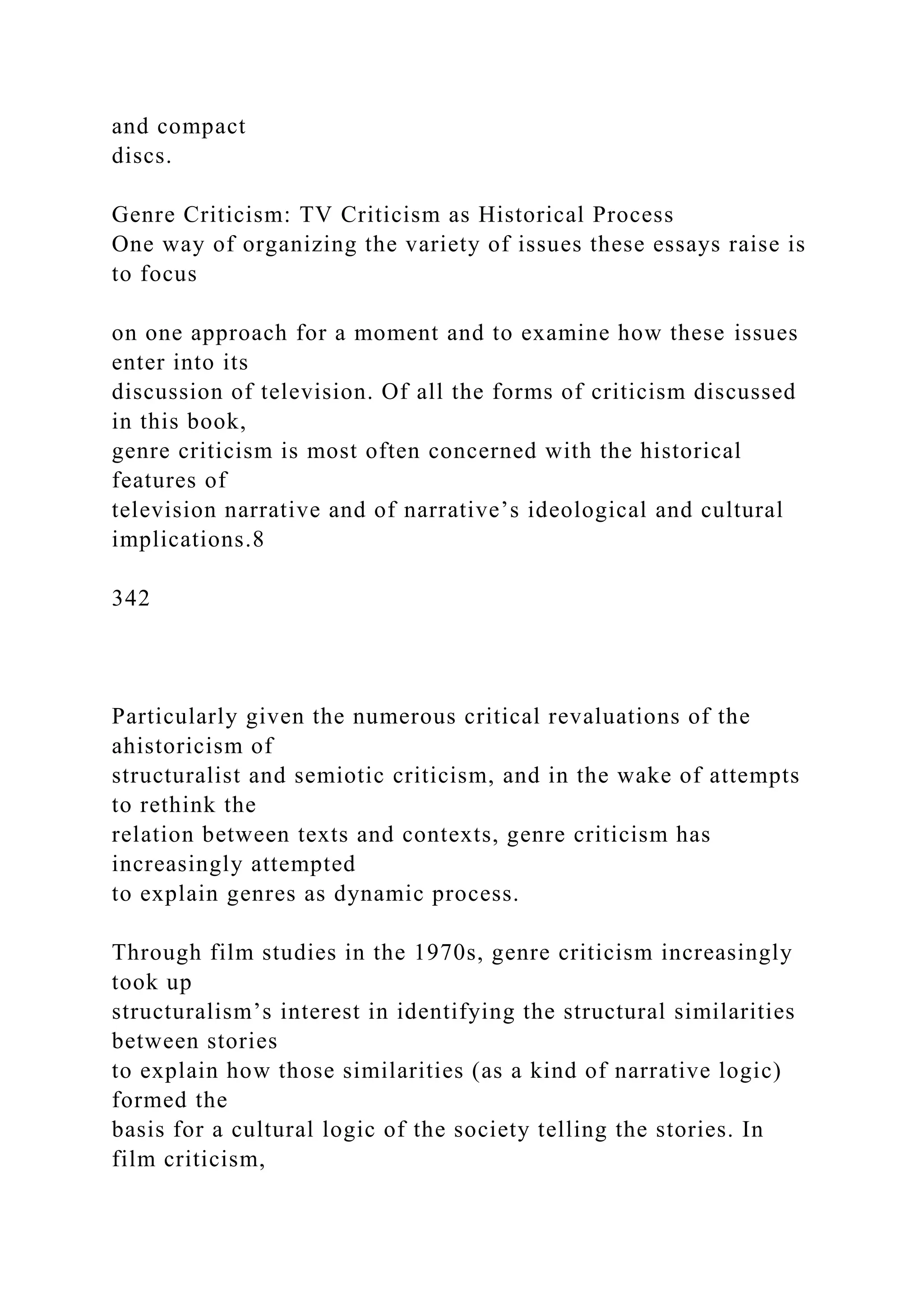
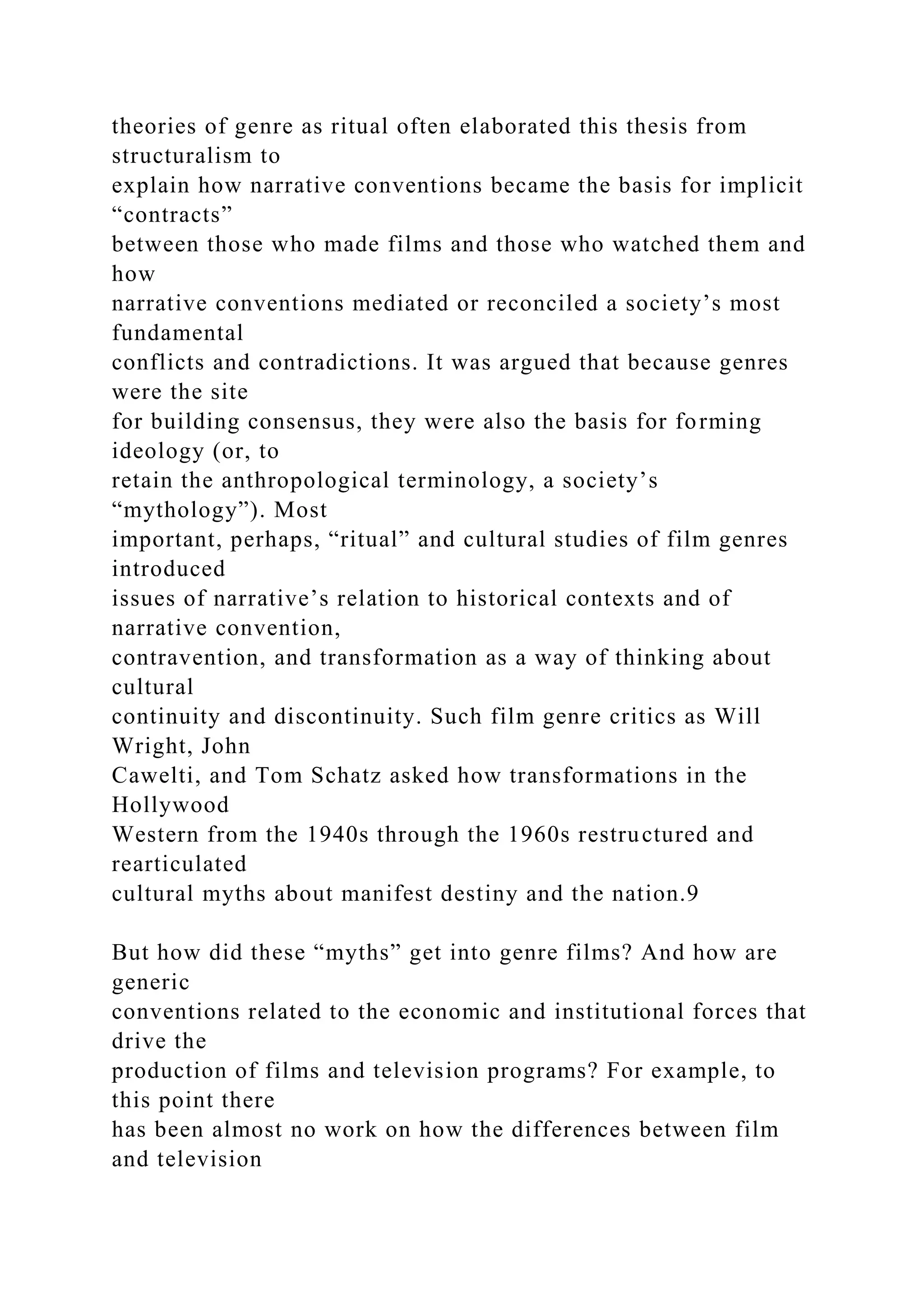
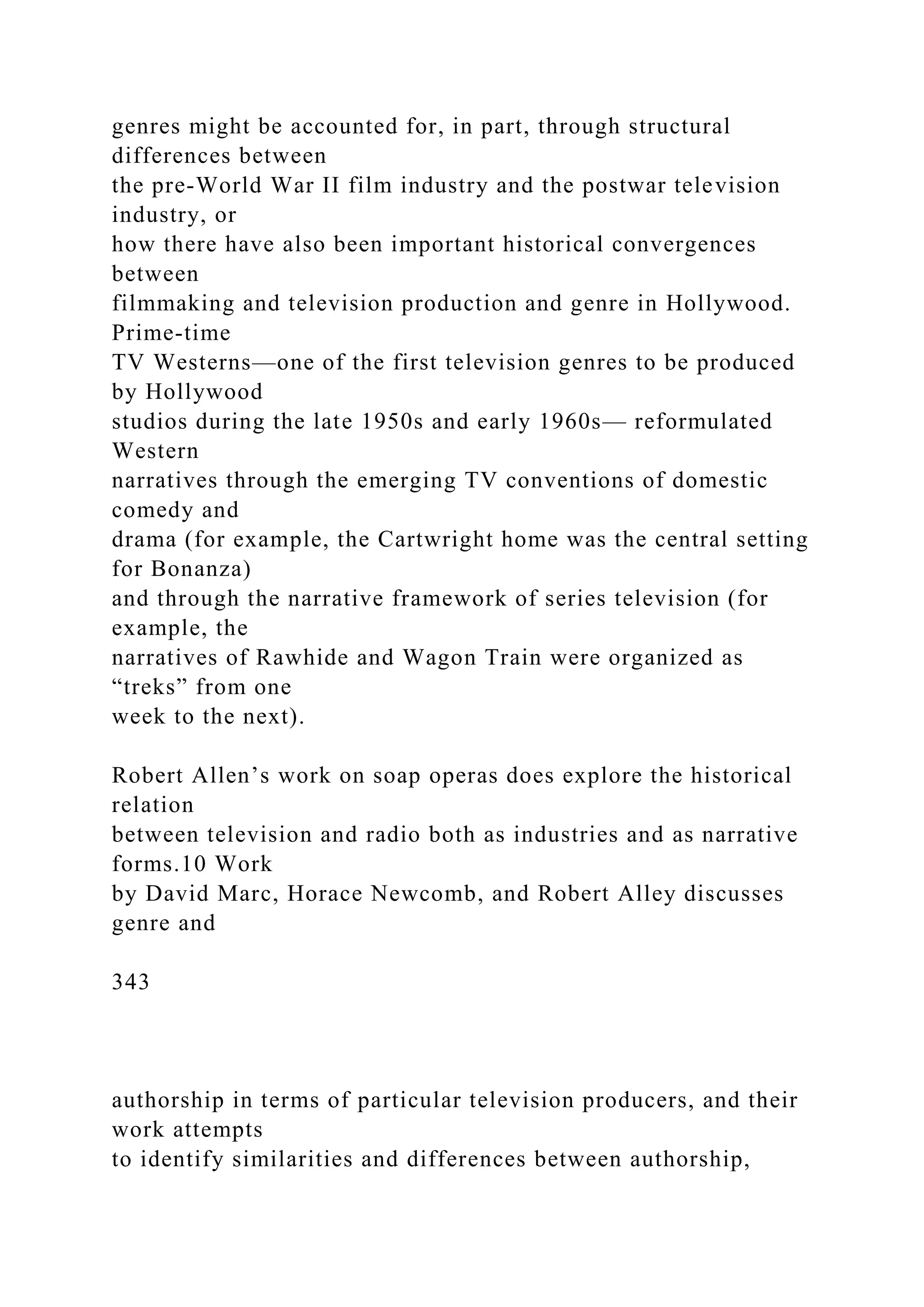
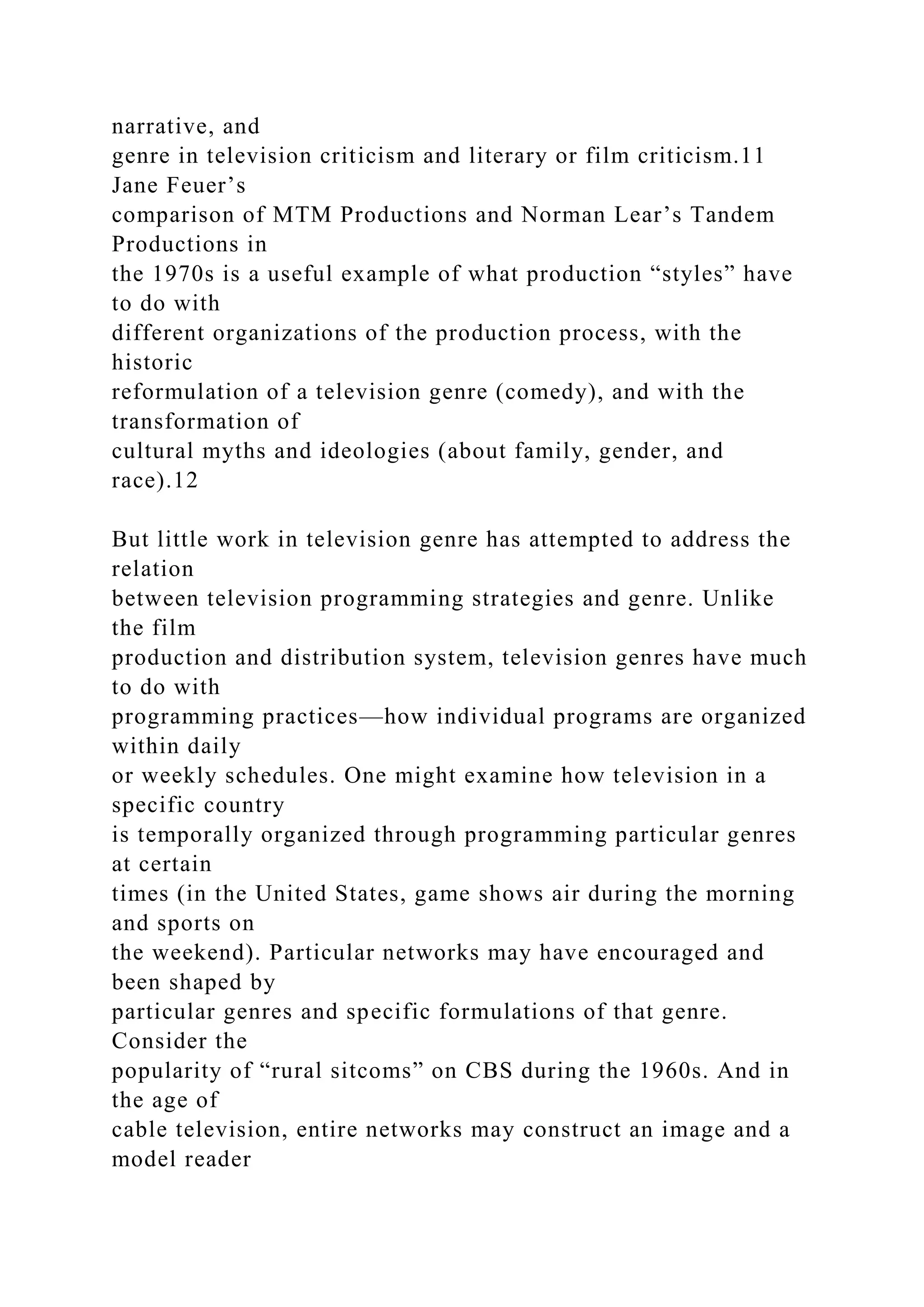
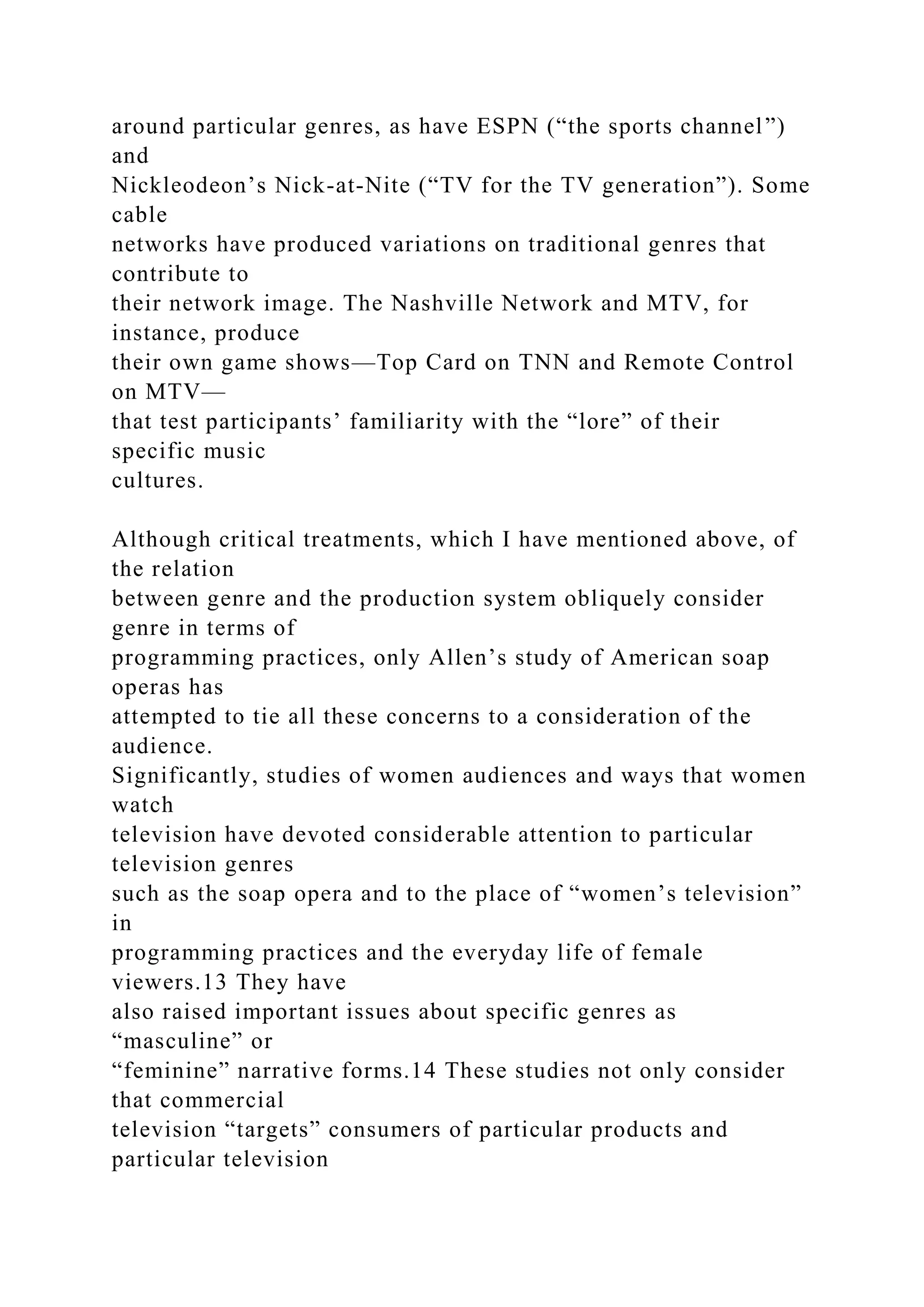
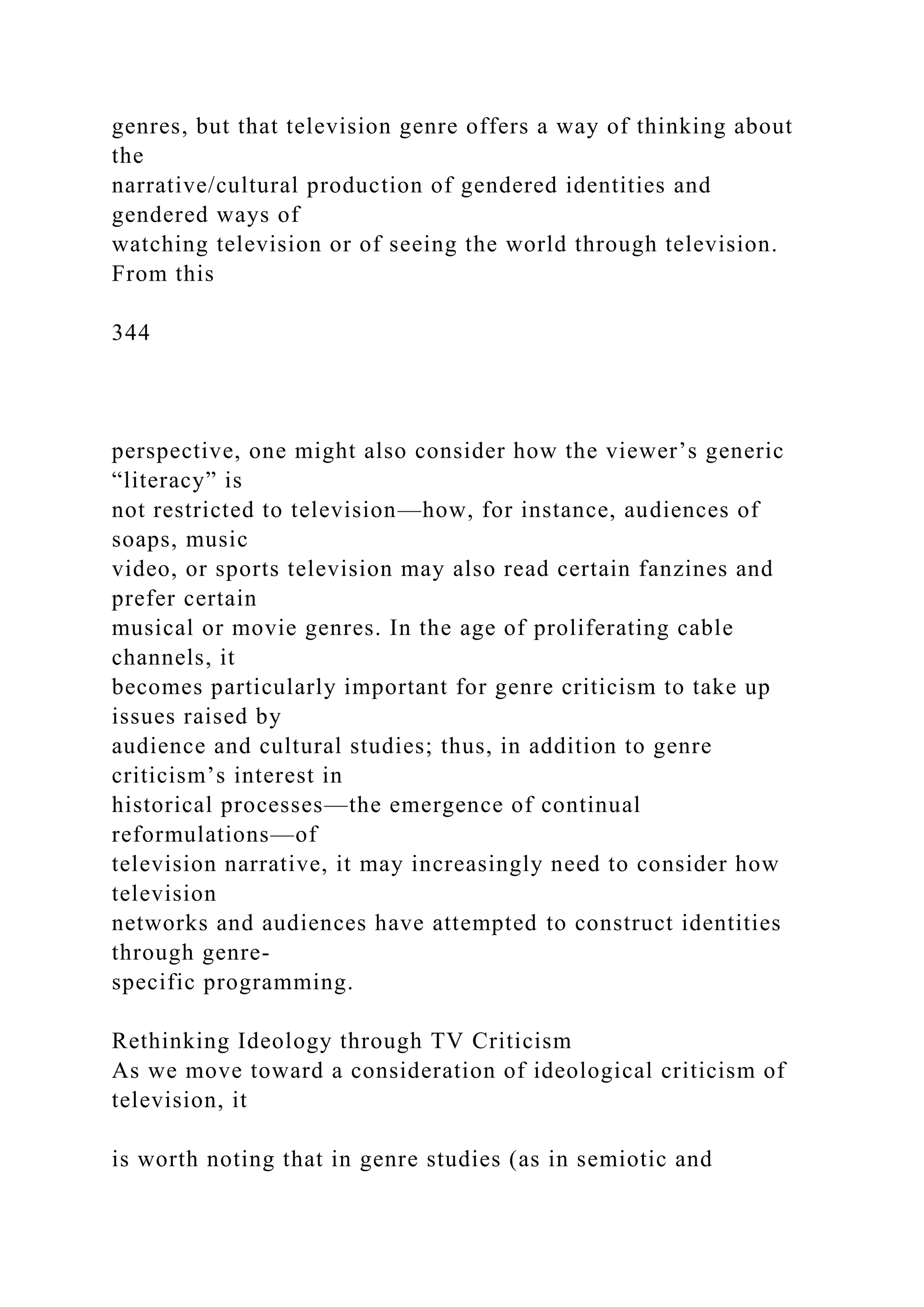

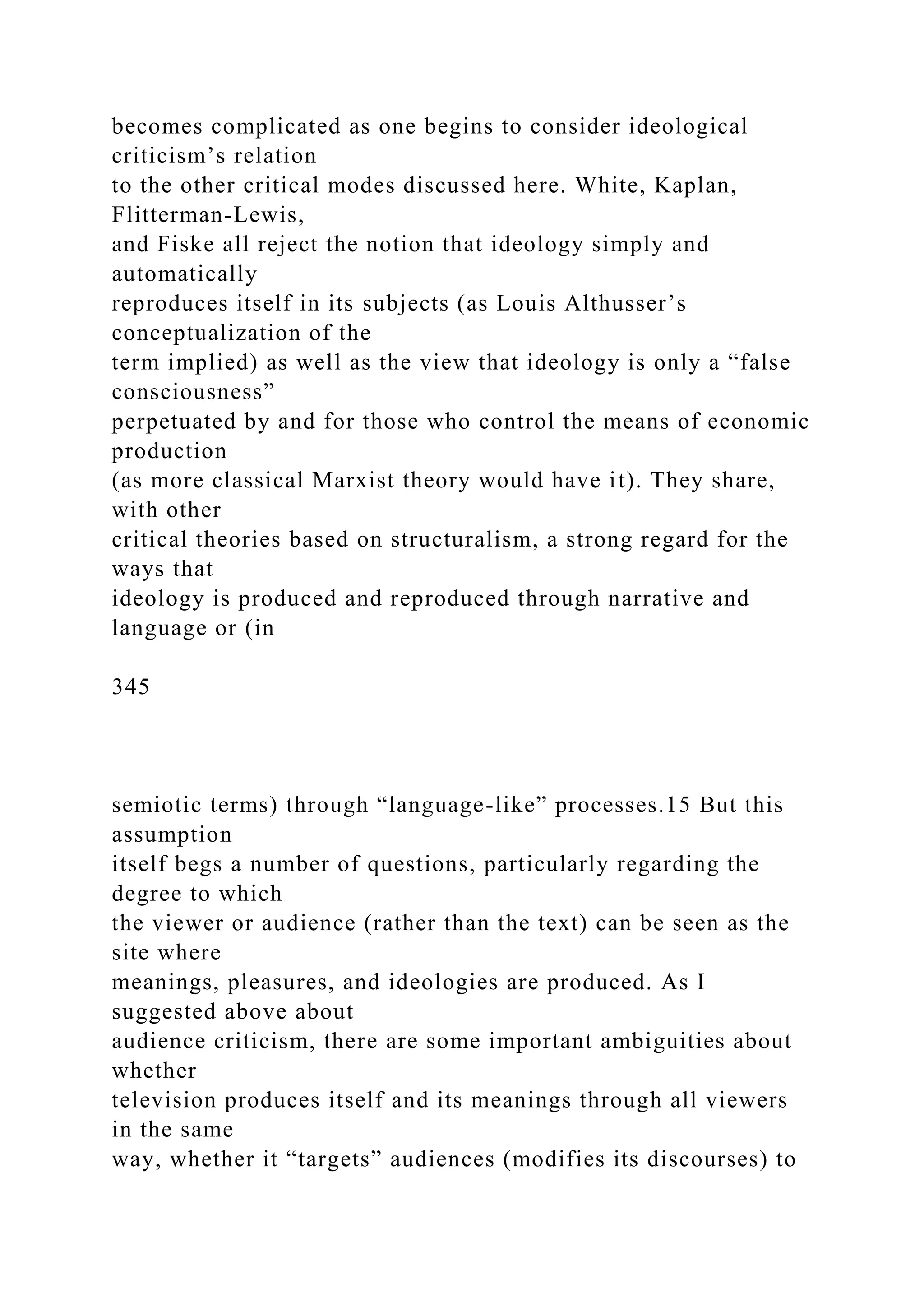
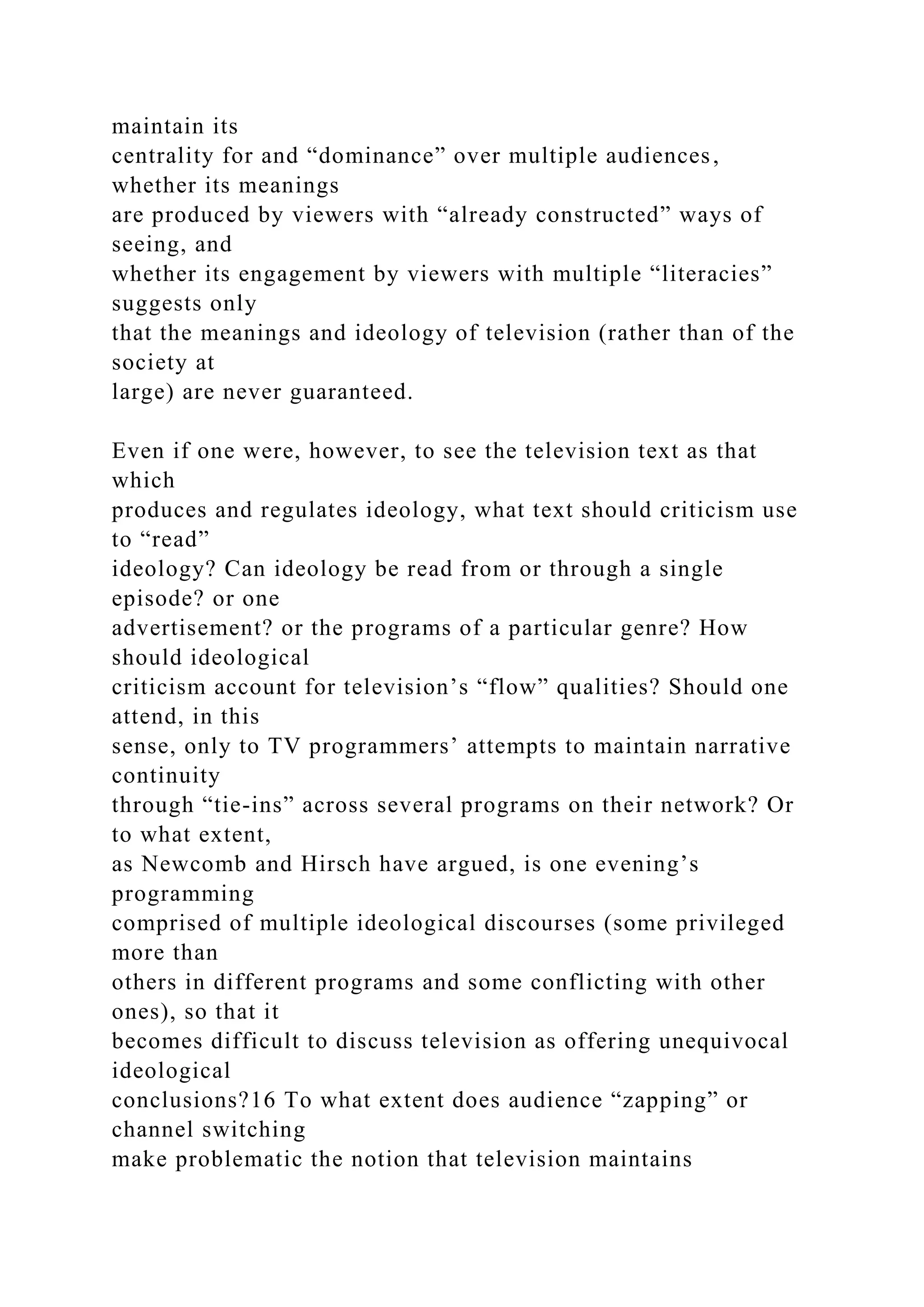

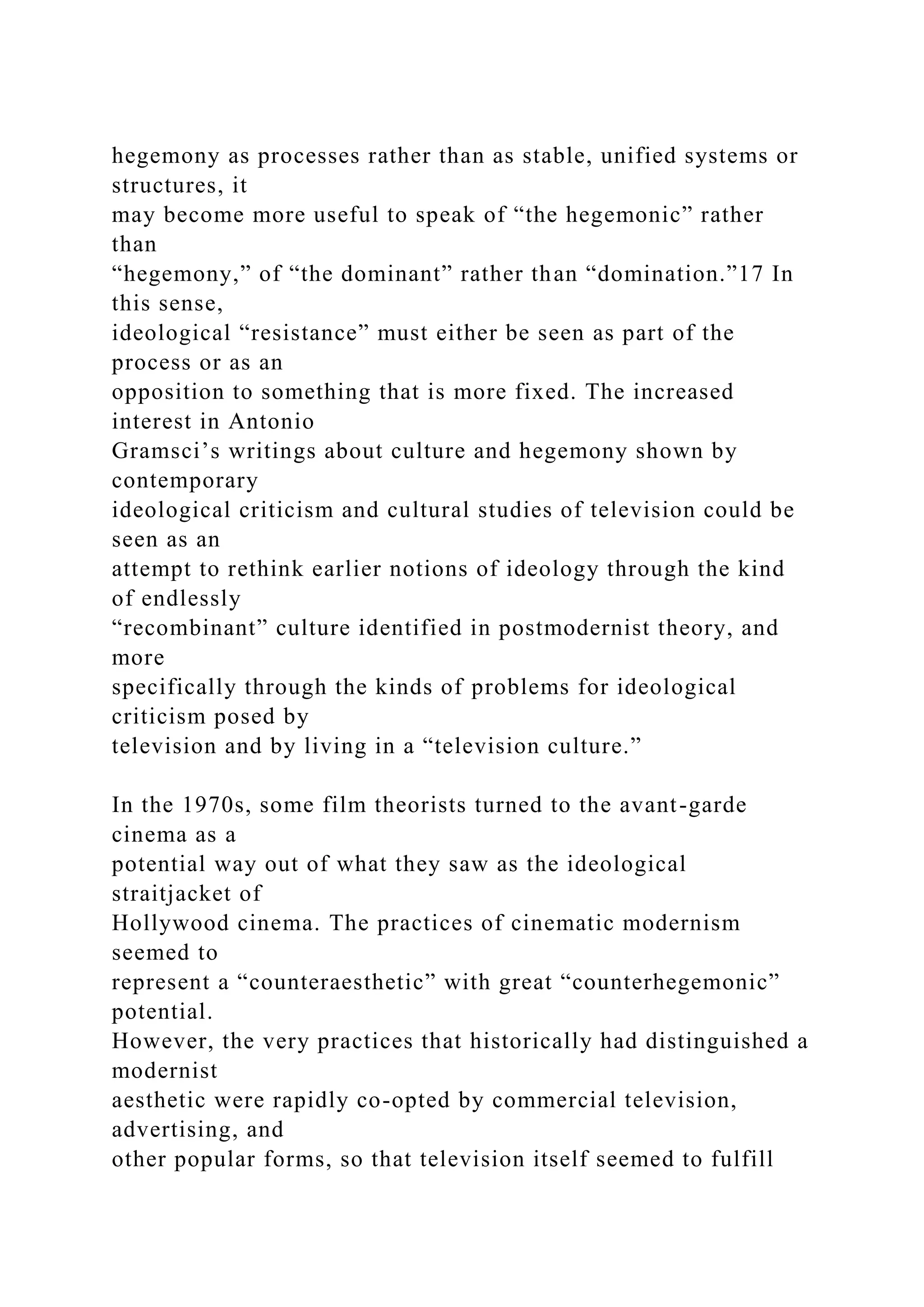
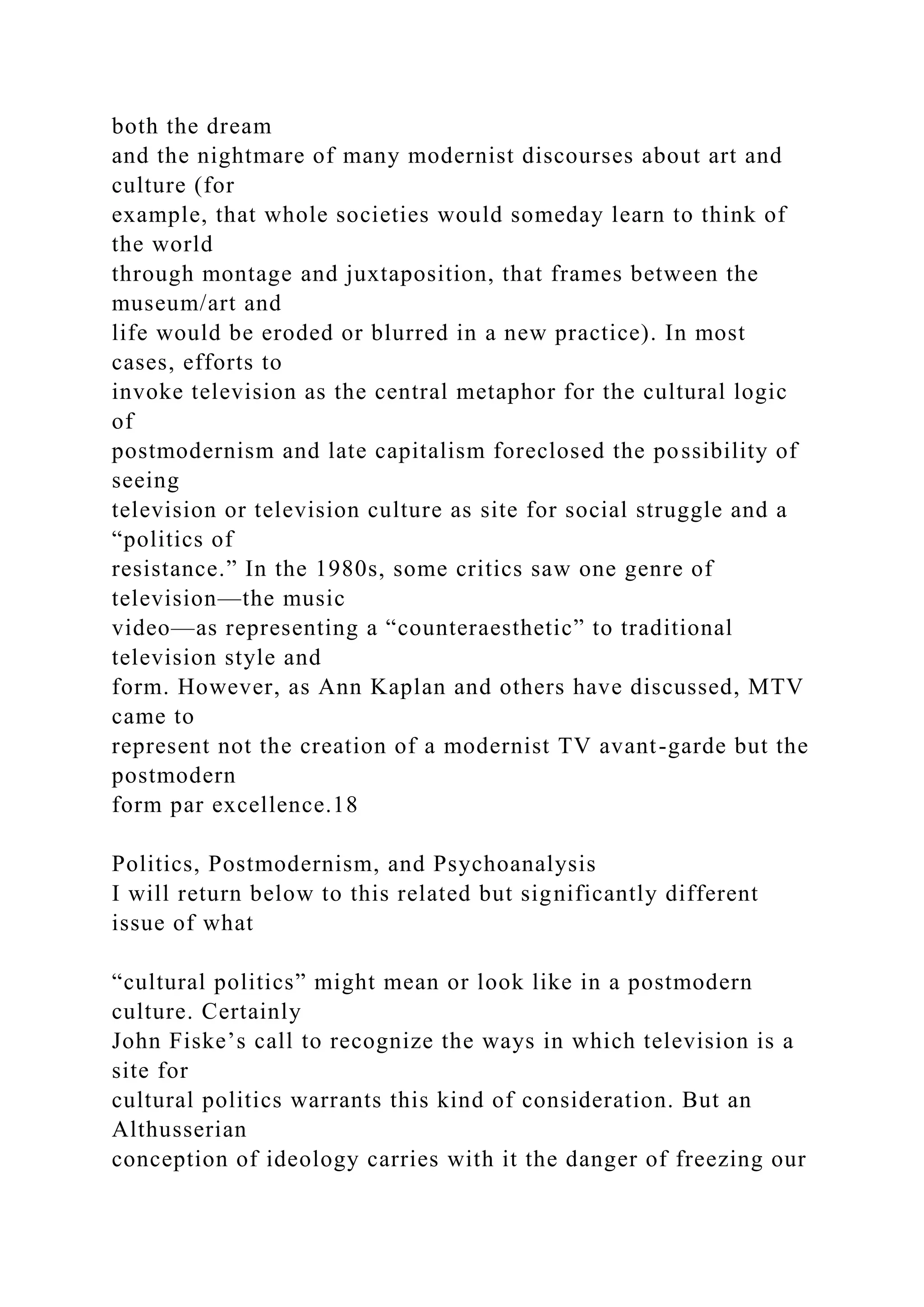
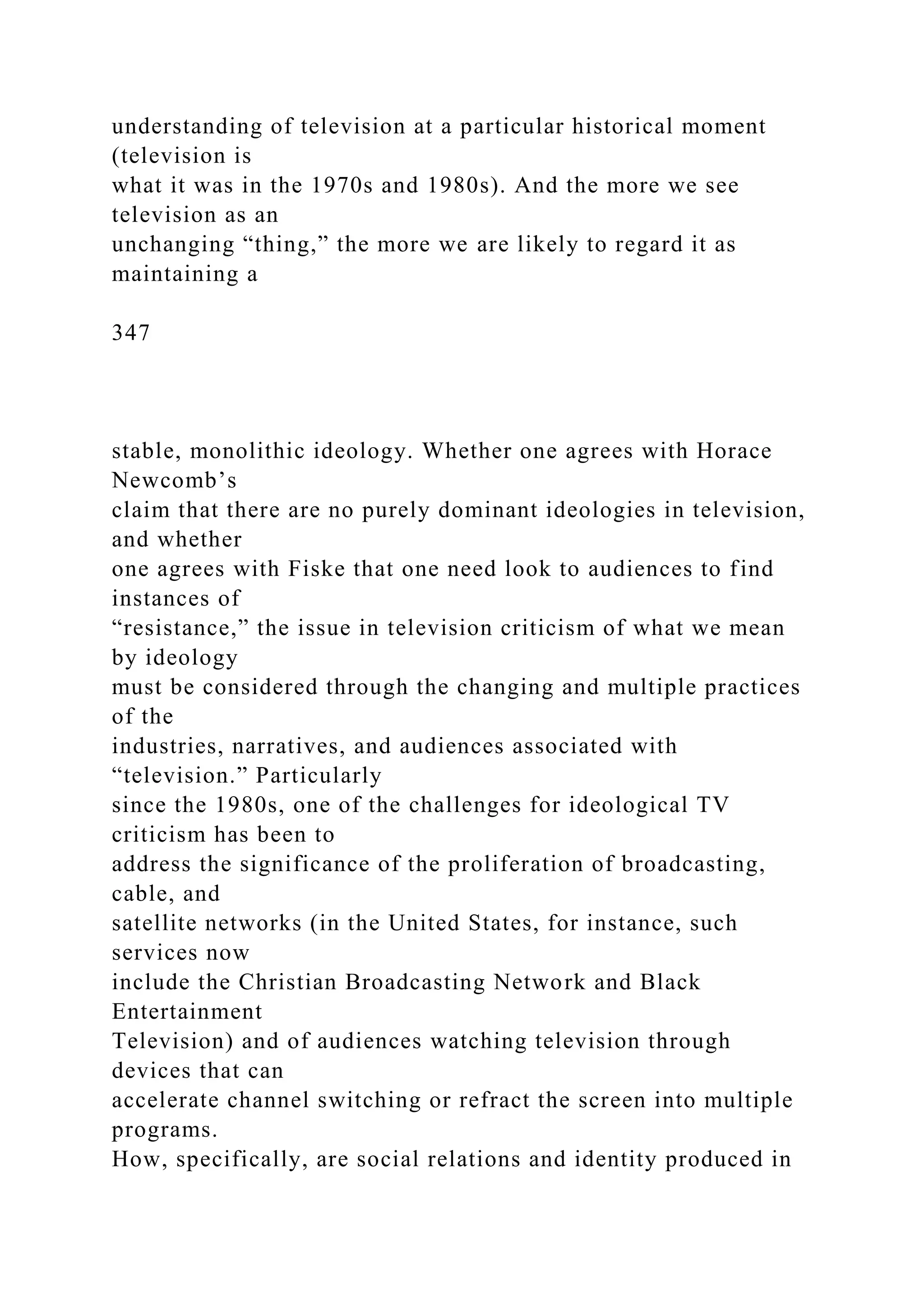
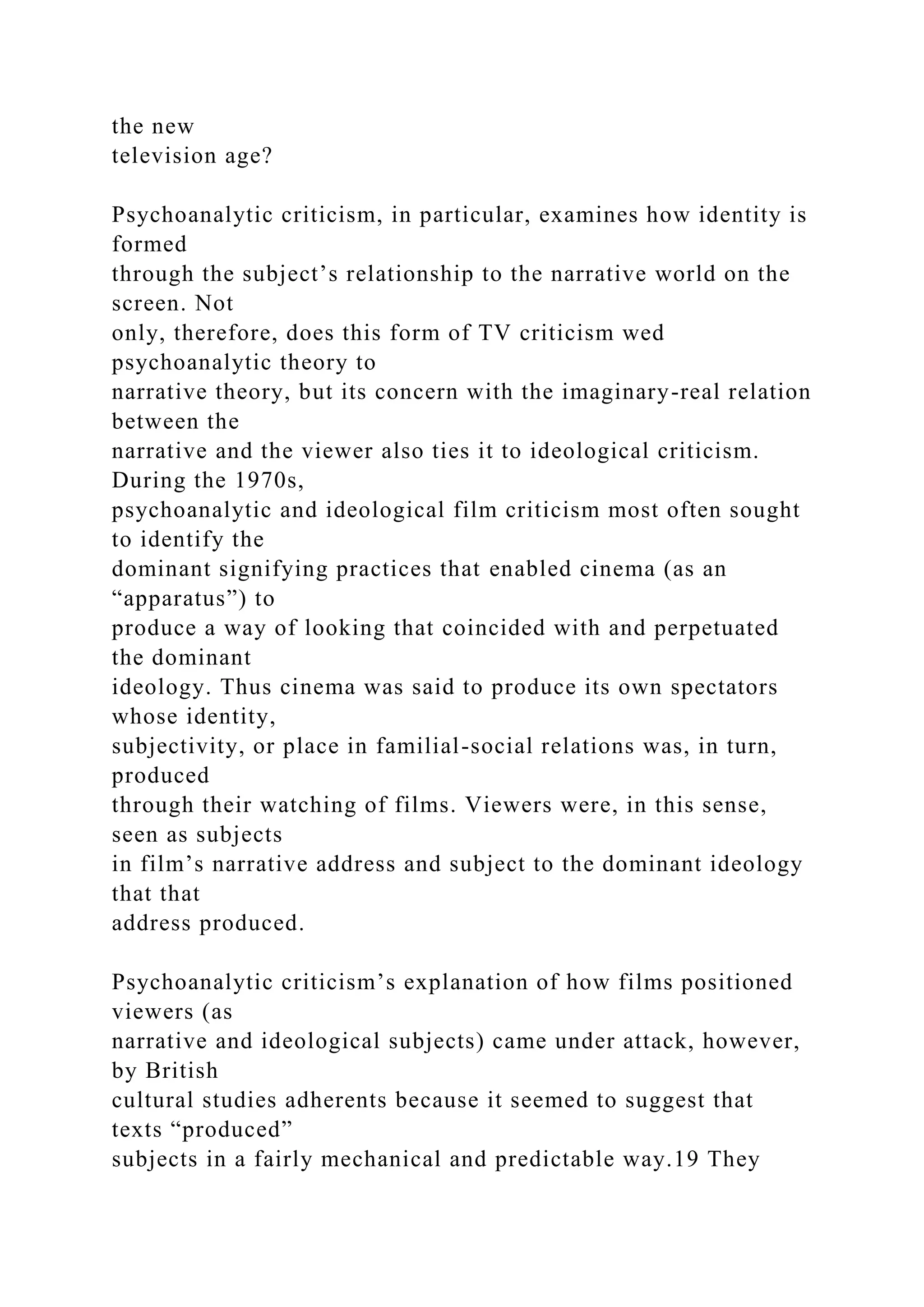

![an “infant
before the mirror.” As Flitterman-Lewis points out, one of the
reasons that
psychoanalytic film criticism has not gained the same hold on
television is
that these analogies are more difficult to sustain. I would add
that many of
them were predicated on metaphors of “looking” that tended to
privilege the
film image over sound. If Rick Altman and others are correct in
arguing that,
in television, sound functions to “hail” viewers, to maintain
continuity within
TV flow, and to the audience that “the TV image is
manufactured and
broadcast just for me [the viewer],” then can psychoanalytic
television
criticism modify those metaphors and analogies and still
maintain the
explanatory power of its theory?20 We might also ask how
psychoanalytic
criticism would address the rapidity with which the viewer may
(either
through “zapping” among channels or through one channel’s
flow of multiple
narrative fragments) continually re-form identifications through
fantasy Can
psychoanalytic film or literary criticism ever come to terms
with the fact that,
as Flitterman-Lewis notes, television doesn’t demand the
audience’s “gaze”
but rather may be “watched” (or even listened to) in a state of
distraction?
The most conspicuous legacy of psychoanalytic film criticism
for](https://image.slidesharecdn.com/channelsofdiscoursereassembled2channelsof-221018173716-6fc0655a/75/Channels-of-Discourse-Reassembled2Channels-of-docx-783-2048.jpg)


